COVID-19
description: a contagious disease caused by severe acute respiratory syndrome coronavirus 2 (SARS-CoV-2)
654 results

Aftershocks: Pandemic Politics and the End of the Old International Order
by
Colin Kahl
and
Thomas Wright
Published 23 Aug 2021
Department of Defense, Operation Inherent Resolve, 18; Hollie McKay, “ISIS Launched More Than 100 Attacks in Iraq in August, a Sharp Uptick from Previous Month,” Fox News, September 3, 2020, https://www.foxnews.com/world/isis-launches-more-than-100-attacks-in-iraq-throughout-august-a-sharp-uptick-from-previous-month. 49. “Amid COVID-19, ISIS Supporters Step Up Efforts to Reestablish Presence on Social Media,” Memri, May 15, 2020, https://www.memri.org/jttm/amid-covid-19-isis-supporters-step-efforts-reestablish-presence-social-media; Hollie McKay, “How ISIS Is Exploiting the Coronavirus Pandemic,” Fox News, May 20, 2020, https://www.foxnews.com/world/how-isis-is-exploiting-the-coronavirus-pandemic; David Choi, “Fake N95 Face Masks Were Being Sold on This ISIS-Linked Website—and It Shows How Terror Groups Are Using COVID-19 as a Propaganda Tool,” Business Insider, August 29, 2020, https://www.businessinsider.com/fake-face-mask-website-isis-2020-8. 50.
…
For a timeline of the various closures and actions between Russia and China during COVID-19, see Ivan Zuenko, “The Coronavirus Pandemic and the Russo-Chinese Border,” ASAN Forum, May 9, 2020, http://www.theasanforum.org/the-coronavirus-pandemic-and-the-russo-chinese-border/. 70. Gabrielle Tétrault-Farber, “China to Russia: End Discriminatory Coronavirus Measures Against Chinese,” Reuters, February 26, 2020, https://www.reuters.com/article/us-china-health-moscow-letter/china-to-russia-end-discriminatory-coronavirus-measures-against-chinese-idUSKCN20K1HU. 71. Tommy Yang, “Unease at the Border: Russia and China Seek to Downplay Covid-19 Outbreak in Suifenhe,” The Guardian, April 18, 2020, https://www.theguardian.com/world/2020/apr/18/unease-at-the-border-russia-and-china-seek-to-downplay-covid-19-outbreak-in-suifenhe. 72.
…
“Peru Records First Confirmed Case of Coronavirus, President Vizcarra Says,” Reuters, March 6, 2020, https://www.reuters.com/article/us-health-coronavirus-peru/peru-records-first-confirmed-case-of-coronavirus-president-vizcarra-says-idUSKBN20T1S9. 79. Linnea Sandin, “Covid-19 Exposes Latin America’s Inequality,” Center for Strategic and International Studies, April 6, 2020, https://www.csis.org/analysis/covid-19-exposes-latin-americas-inequality. 80. Will Feuer, “South America Is a ‘New Epicenter’ of the Coronavirus Pandemic, WHO Says,” CNBC, May 22, 2020, https://www.cnbc.com/2020/05/22/south-america-is-a-new-epicenter-of-the-coronavirus-pandemic-who-says.html. 81. Ryan Dube, “Coronavirus Hits Peru Hard Despite Strict Lockdown,” Wall Street Journal, June 14, 2020, https://www.wsj.com/articles/coronavirus-hits-peru-hard-despite-strict-lockdown-11592146800; Diego Quispe, “Decretan estado de emergencia para frenar el coronavirus” [State of emergency declared to stop the coronavirus], La República, March 16, 2020, https://larepublica.pe/sociedad/2020/03/16/coronavirus-en-peru-decretan-estado-de-emergencia-para-frenar-la-epidemia/; Marco Aquino, “Peru Calls Up 10,000 Army Reserves to Enforce Quarantine,” Reuters, April 1, 2020, https://www.reuters.com/article/us-health-coronavirus-peru-army/peru-calls-up-10000-army-reserves-to-enforce-quarantine-idUSKBN21J69A; Reuters Staff, “Peru Looks to Restart Economy After Months-Long Lockdown,” Reuters, July 1, 2020, https://www.reuters.com/article/us-health-coronavirus-peru/peru-looks-to-restart-economy-after-months-long-lockdown-idUSKBN2427CP. 82.
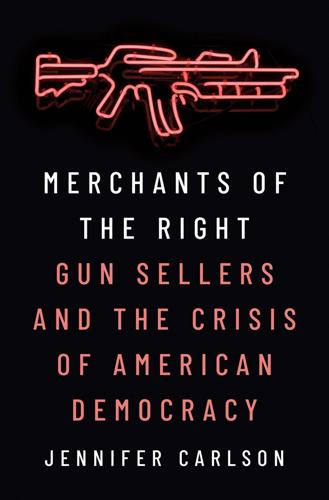
Merchants of the Right: Gun Sellers and the Crisis of American Democracy
by
Jennifer Carlson
Published 2 May 2023
The decision, praised by the National Shooting Sports Foundation as “recognizing the vital role our industry fulfills in our nation,”90 responded to government underreach by presenting an individualized solution—the gun—to the insecurities that could otherwise be addressed through the collective efficacy of the state. But the Department of Homeland Security’s decision also represented to gun rights advocates a victory against government overreach, made acute by the coronavirus pandemic. As the NRA noted, “The COVID-19 panic has been used by would-be state and local authoritarians as an excuse to keep Americans from exercising their right to keep and bear arms. Thankfully, American gun owners have a friend in the White House that [sic] has worked to protect their rights on the federal level by declaring the firearms industry to be critical infrastructure.”91 Critics, like president of Everytown for Gun Safety John Feinblatt, described the DHS advisory decision as “shameful” and “nonsensical”—an example of the “Trump administration … caving to the firearm industry by treating gun store workers just like the real frontline responders—police, doctors, nurses.”92 Gun sellers, of course, would take umbrage at the notion that they aren’t “frontline workers”; they saw themselves providing a vital good (guns) and protecting a vital right (gun rights)—services that became ever more urgent as threats from above and demand from below increased.
…
An Ammoland article surmised, illustrating the decades-old melding by gun rights advocates of fascists, communists, and gun confiscators:19 “If you’re a communist gun-grabber … you call for nationalizing industry and letting the same government that failed to protect anybody in this run everything. And ‘progressives’ call us the fascists.”20 In the early days of the coronavirus pandemic,21 however, the central perceived threat to gun access was not government agents going “door to door” looking to seize guns but rather government orders shuttering the doors of gun sellers as part of broader lockdown restrictions. While the world ground to a halt under the weight of the coronavirus pandemic, local, state, and federal officials in the United States had to consider a set of vexing questions: should gun stores be considered an essential business in times of crisis?
…
I learned that the last time I talked politics with my dad years ago, and I learned it again in 2020. July 2022 Tucson, Arizona MERCHANTS OF THE RIGHT Introduction: Democracy Disarmed In late May 2020, I placed a call to Robert (a pseudonym),1 a thirty-something white Florida gun store owner still reeling from the surge in gun sales amid the outbreak of the coronavirus pandemic. The surge had started some time in March, and it started suddenly. One day it was business as usual, and the next day sales were on fire, lines were out the door, shelves were cleared, and phone lines were ringing with people desperately looking for any gun—any handgun or shotgun—that they could get their hands on.
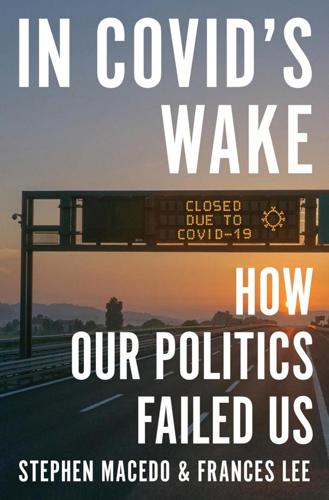
In Covid's Wake: How Our Politics Failed Us
by
Stephen Macedo
and
Frances Lee
Published 10 Mar 2025
H ouse Committee on Oversight and Accountability, “Investigating the Origins of COVID-19,” video of hearing of the Select Subcommittee on the Coronavirus Pandemic, March 8, 2023, https://oversight.house .gov/hearing/investigating-the-origins-of-covid-19/. 86. “Global Study on COVID-19 Origins Finds Lab Origin ‘Extremely Unlikely,’ ” China Today, April 1, 2021, http://www.chinatoday.com.cn/ctenglish/2018/commentaries/202104 /t20210401_800242144.html. 87. Jesse D. Bloom, Yujia Alina Chan, Ralph S. Baric et al., “Investigate the Origins of COVID-19,” Science 372 (6543, May 14, 2021): 694, https://w ww.science.org/doi/10.1126 352 not e s to ch a p t er 8 /science.abj0016.
…
Claudia Deane, Kim Parker, and John Gramlich, “A Year of U.S. Public Opinion on the Coronavirus Pandemic,” Pew Research Center, March 5, 2021, https://www.pewresearch.org /2021/03/05/a-year-of-u-s-public-opinion-on-the-coronavirus-pandemic/. 16. Deane, Parker, and Gramlich, “A Year of U.S. Public Opinion.” 17. Ballotpedia, “States That Issued Lockdown and Stay-at-Home Orders in Response to the Coronavirus (COVID-19) Pandemic, 2020,” January 5, 2021, https://ballotpedia.org/States_that _issued_lockdown_and_stay-at-home_orders_in_response_to_the_coronavirus_(COVID-19) _pandemic,_2020. 18.
…
Ferguson, Daniel Laydon, Gemma Nedjati-Gilani et al., “Impact of Non- pharmaceutical Interventions (NPIs) to Reduce COVID-19 Mortality and Healthcare Demand,” Report 9, Imperial College London, March 16, 2020, 16; https://doi.org/10.25561 /77482. 38. John A. Ioannidis, “A Fiasco in the Making? As the Coronavirus Pandemic Takes Hold, We Are Making Decisions without Reliable Data,” STAT, March 17, 2020, https://www.statnews .com/2020/03/17/a-fiasco-in-the-making-as-the-coronavirus-pandemic-takes-hold-we-are -making-decisions-without-reliable-data/. 39. See Lili Li, Araz Taeihag, and Si Ying Tan, “A Scoping Review of the Impacts of COVID-19 Physical Distancing Measures on Vulnerable Population Groups,” Nature Communications 14 (1, 2023): 599–618; and Kevin Bardosh, “How Did the COVID Pandemic Response Harm Society?
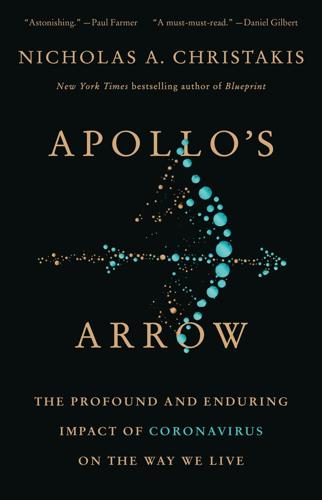
Apollo's Arrow: The Profound and Enduring Impact of Coronavirus on the Way We Live
by
Nicholas A. Christakis
Published 27 Oct 2020
Gilbert Welch, argued that we were probably previously treating too many minor issues—everything from mammographic irregularities (which might disappear on their own) to mild heart attacks (which often have better outcomes without medical care than with it—since patients are often subjected to risky procedures driven more by the financial exigencies of the hospitals and specialists than by the patients’ needs).50 The pandemic forced hospitals to increase the threshold for admitting sick patients so as to keep beds available for COVID-19 patients. Similarly, doctors order billions of dollars of unnecessary tests and procedures every year, but the coronavirus pandemic provided a lesson in their lack of utility. So, just like the pandemic gave us a glimpse of a world with less traffic, it also gave us a glimpse of a world with less medical injury. It’s a lesson the medical system is likely to internalize, because health-care workers certainly do not want to harm people. Once detailed studies of the vast natural experiment provided by COVID-19 are analyzed in the post-pandemic period, thresholds for the treatment of a host of conditions are likely to be reconsidered.
…
Out of the U.S. population of 330 million, about 3 million people die each year, for a crude death rate of 9.1 people per thousand. If, for the sake of argument, we assume that over a year, the coronavirus pandemic causes one million deaths in the United States, the crude death rate would rise to 12.1 per thousand. The average person’s absolute risk of dying from the virus would remain small—roughly a three-out-of-a-thousand chance (1,000,000 extra deaths from COVID-19 divided by 330,000,000 people). That seems low, but this level of mortality would still far surpass all of the threats to life an average person faced that year, making COVID-19 the number-one cause of death. One careful analysis of weekly mortality data from Sweden compared deaths per day in 2020 to prior years, quantifying the excess deaths and assessing the impact on mortality across all ages (using the method invented by William Farr in the nineteenth century, discussed in chapter 2).
…
Kindhauser, “Marburg Hemorrhagic Fever in Angola—Fighting Fear and a Lethal Pathogen,” New England Journal of Medicine 2005; 352: 2155–2157. 34 D. Cyranoski, “Profile of a Killer: The Complex Biology Powering the Coronavirus Pandemic,” Nature, May 4, 2020. 35 J. Howard, “Novel Coronavirus Can Be Spread by People Who Aren’t Exhibiting Symptoms, CDC Director Says,” CNN, February 13, 2020. 36 T. Subramaniam and V. Stracqualursi, “Fact Check: Georgia Governor Says We Only Just Learned People without Symptoms Could Spread Coronavirus. Experts Have Been Saying That for Months,” CNN, April 3, 2020. 37 Z. Du et al., “Serial Interval of COVID-19 among Publicly Reported Confirmed Cases,” Emerging Infectious Diseases 2020; 25: 1341–1343. 38 W.

Rule of the Robots: How Artificial Intelligence Will Transform Everything
by
Martin Ford
Published 13 Sep 2021
Google’s system was 94.4 percent accurate and “outperformed all six radiologists” in cases in which a prior CT scan for the patient was not available, and “was on-par with the same radiologists” when a previous image was available for comparison.45 Likewise, radiology AI systems were employed on an emergency basis in some cases as the coronavirus pandemic threatened to overwhelm hospitals. Amidst a shortage of tests for COVID-19, chest X-rays that showed evidence of the pneumonia often caused by the virus became an important alternative diagnostic technique. Some hospitals experienced backlogs resulting in delays of six hours or more as radiologists struggled to analyze the images.
…
Semantic Scholar offers AI-enabled search and information extraction across more than 186 million published research papers in virtually every scientific field of study.82 In March 2020, the Allen Institute joined with a consortium of other organizations including Microsoft, the National Library of Medicine, the White House Office of Science and Technology, Amazon’s AWS division and others to create the COVID-19 Open Research Dataset, a searchable database of scientific papers relating to the coronavirus pandemic.83 The technology enables scientists and healthcare providers to rapidly access answers to specific questions in a broad range of scientific areas, including the biochemistry of the virus, epidemiological models, and treatment of the disease. As of April 2021, the database contained more than 280,000 scientific papers and was being heavily used by scientists and doctors.84 Initiatives like these have enormous potential to be crucial tools in accelerating the generation of new ideas.
…
And as things have become ever more unequal, the mechanism that distributes the income that powers consumer demand is eroding, and that in turn is undermining economic growth and dampening down the sustained rise in productivity that is crucial to future prosperity. The pandemic has completely upended things and plunged us into an unprecedented economic crisis, but all these trends remain in place and will likely produce headwinds that will make it even more challenging to recover from our current predicament. POST COVID-19 AND RECOVERY The coronavirus pandemic has unleashed a global economic crisis of unprecedented ferocity. In the United States and in countries throughout the world, millions of jobs have been lost very nearly overnight, entire sectors have been virtually shut down and the economy has plunged into the deepest downturn since the Great Depression in the 1930s.

The Lonely Century: How Isolation Imperils Our Future
by
Noreena Hertz
Published 13 May 2020
With that definition in mind, ask yourself: when did you last feel disconnected from those around you, whether family, friends, neighbours or your fellow citizens? When did you last feel uncared for or unheard by your elected politicians, or that no one in a position of authority cared about your struggles? When did you last feel powerless or invisible at work? You are not alone. In the years preceding the coronavirus pandemic two-thirds of those living in democracies did not think their government acted in their interests.38 Eighty-five per cent of employees globally felt disconnected from their company and their work.39 And only 30% of Americans believed that most other people could be trusted, a very substantial drop since 1984, when around 50% did.40 When it comes to feeling disconnected from each other, can you remember a time when the world has felt this polarised, fractured and divided?
…
But we must go back further to fully understand how we became so disconnected, siloed and isolated. For the ideological under-pinnings of the twenty-first century’s loneliness crisis pre-date digital technology, the most recent wave of urbanisation, this century’s profound changes to the workplace and the 2008 financial crisis, as well as, of course, the coronavirus pandemic. They go back instead to the 1980s when a particularly harsh form of capitalism took hold: neoliberalism, an ideology with an overriding emphasis on freedom – ‘free’ choice, ‘free’ markets, ‘freedom’ from government or trade union interference. One that prized an idealised form of self-reliance, small government and a brutally competitive mindset that placed self-interest above community and the collective good.
…
The more intense it got, the more I started to feel very lonely and isolated … I would avoid going to the shops or getting the bus during rush hour because there were too many people … The longer it went on, the more it started to affect work, close relationships and friendships … so my social life has … well, I don’t really have one.’49 Even short periods of isolation, such as we collectively experienced during the coronavirus pandemic, can have a marked impact on mental health.50 Sometimes the effect is still apparent years down the line. Researchers found that healthcare workers in Beijing who had been quarantined during the 2003 SARS outbreak were more likely to be suffering serious depression three years later than those who had not been, even though SARS quarantine periods lasted typically less than a month, and often less than two weeks.51 Separate studies, also amongst hospital employees in Beijing, found that three years after the SARS outbreak alcoholism was higher amongst those who had been quarantined than those who were not, with significant numbers still suffering from post-traumatic stress syndrome, their symptoms including hyper-vigilance, nightmares and flashbacks.52 Such findings should be taken very seriously as we emerge from the Covid-19 pandemic.
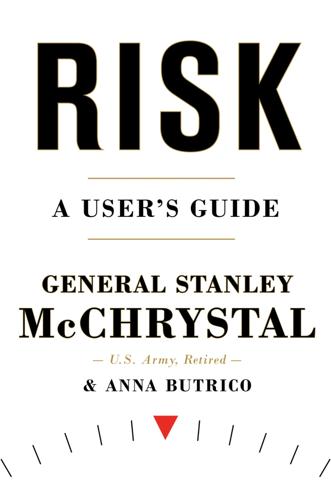
Risk: A User's Guide
by
Stanley McChrystal
and
Anna Butrico
Published 4 Oct 2021
The WHO requests verification: Bollyky and Patrick, “Improving Pandemic Preparedness,” 36, 38. China announces its first virus death: Taylor, “Timeline of the Coronavirus Pandemic.” first case outside of China in Thailand: “Archived: WHO Timeline—COVID-19,” April 27, 2020. United States confirms its first case: Taylor, “Timeline of the Coronavirus Pandemic.” infected more than 570: Taylor, “Timeline of the Coronavirus Pandemic.” global death toll reaches at least 360: Taylor, “Timeline of the Coronavirus Pandemic.” outside of China in the Philippines: “Novel Coronavirus (2019-nCoV) Situation Report—13,” World Health Organization, February 2, 2020, https://who.int/docs/default-source/coronaviruse/situation-reports/20200202-sitrep-13-ncov-v3.pdf?
…
no travel history to an outbreak area: Schumaker, “How Coronavirus Got Started”; Erin Schumaker, Morgan Winsor, and Ivan Pereira, “Latest American Infected with Coronavirus Has No Relevant Travel History: CDC,” ABC News, February 26, 2020, https://abcnews.go.com/International/us-military-coronavirus-patient-cases-surge-italy-south/story?id=69225004. reports its first COVID-19 death: Taylor, “Timeline of the Coronavirus Pandemic.” died from it earlier: Stephanie Soucheray, “Coroner: First US COVID-19 Death Occurred in Early February,” Center for Infectious Disease Research and Policy, April 22, 2020, https://cidrap.umn.edu/news-perspective/2020/04/coroner-first-us-covid-19-death-occurred-early-february. declares COVID-19 a “pandemic”: Chappell, “Coronavirus: COVID-19 Is Now Officially a Pandemic, WHO Says.” Thirty-eight Americans have died: “March 11 Coronavirus News,” CNN, March 12, 2020, https://cnn.com/world/live-news/coronavirus-outbreak-03-11-20-intl-hnk/index.html.
…
Here’s What It Really Knew and When,” Time, May 19, 2020, https://time.com/5826025/taiwan-who-trump-coronavirus-covid19/; “News Scan for Dec 31, 2019,” Center for Infectious Disease Research and Policy, accessed September 29, 2020, https://cidrap.umn.edu/news-perspective/2019/12/news-scan-dec-31-2019. first COVID-19 death: Derrick Bryson Taylor, “A Timeline of the Coronavirus Pandemic,” The New York Times, August 6, 2020, https://nytimes.com/article/coronavirus-timeline.html. no new cases since January 3: Bollyky and Patrick, “Improving Pandemic Preparedness,” 37. virus sprang up in Thailand: “Archived: WHO Timeline—COVID-19,” World Health Organization, April 27, 2020, https://www.who.int/news/item/27-04-2020-who-timeline---covid-19. spread to Japan and South Korea: “Coronavirus Timeline: Tracking the Critical Moments of COVID-19,” NBC News, accessed September 23, 2020, https://nbcnews.com/health/health-news/coronavirus-timeline-tracking-critical-moments-covid-19-n1154341.
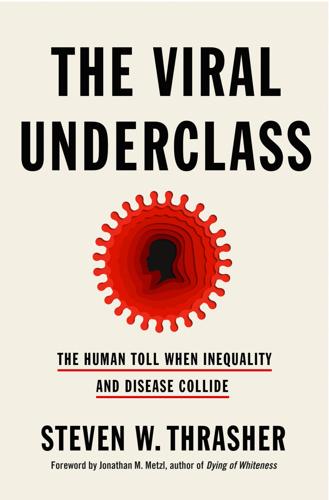
The Viral Underclass: The Human Toll When Inequality and Disease Collide
by
Steven W. Thrasher
Published 1 Aug 2022
And Lorena’s death was a reminder that the full measure of what she’d been enduring, and what she’d meant to her familia, had been obscured for some time. * * * In the first few months of the coronavirus pandemic, many writers understood that it was going to exacerbate the dangers that members of the underclass already faced with other pathogens. Even before any COVID-19 vaccine was in production, strains on the supply chain for medical resources like syringes were already affecting millions of people around the world living with tuberculosis, HIV, and malaria. Researchers estimated that the interruptions to HIV care caused by COVID-19 would result in an additional four hundred thousand AIDS deaths worldwide in 2020.
…
While Michelle Perdue says she can get “very creative” in helping such people, they might just give up. They might inject alone, or inject with unsterilized syringes—placing themselves and their social circle at higher risk for both viruses and overdose death. The coronavirus pandemic made all this worse. Perdue told me that in the six months after the COVID-19 lockdowns of 2020, the Cabell-Huntington Harm Reduction Program started seeing about half as many people as it had before the pandemic, and not because rates of addiction and drug use were decreasing—which likely means more risk of HIV and HCV transmission and overdose deaths.
…
By using cheaply paid, enslaved firefighters, California was saving one hundred million dollars a year, and Harris’s office argued that it would be too “dangerous” to let these firefighters go—not because they would pose a danger to their communities, but because it would be “a difficult fire season” without enslaved labor. California wasn’t the only state using enslaved labor during the coronavirus pandemic. During a shortage of hand sanitizer, New York governor Andrew Cuomo bragged about bottling it in Empire State prisons, and Texas paid incarcerated workers just two dollars an hour to move the corpses of people killed by COVID-19. When Harris accepted her nomination for the vice presidency the same week her home state burned, she said there was “no vaccine for racism.” This made me think about how, as attorney general, she could have released the kinds of prisoners who made excellent firefighters years before.
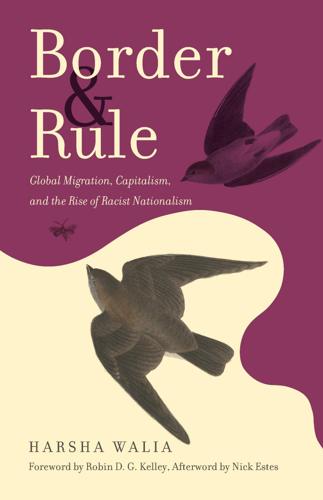
Border and Rule: Global Migration, Capitalism, and the Rise of Racist Nationalism
by
Harsha Walia
Published 9 Feb 2021
The UNHCR received some 174 reports from migrants and refugees who suffered sexual and gender-based violence in the island hotspots.51 The excruciating confinement and compounding traumas, which many refugees describe as “psychological war,” also severely impact mental health.52 MSF provides emergency care to an average of one person a day for attempted suicide and self-harm at the Lesbos hotspot.53 The crisis for refugees contained in the Greek island hotspots came to a head during the coronavirus pandemic, with conditions in the overloaded and unsanitary camps creating an ideal breeding ground for transmission of the virus. In the Vial camp on Chios Island, refugees set fire to parts of the camp’s administrative buildings to protest the death of an Iraqi woman whom they believed to have died of Covid-19.54 Along with the EU-designated hotspots, the EU–Turkey deal is a cornerstone of border policy along the eastern route and turns refugees into tradeable commodities.
…
Laster Pirtle, “Racial Capitalism: A Fundamental Cause of Novel Coronavirus (COVID-19) Pandemic Inequities in the United States,” Health Education and Behavior, April 26, 2020, https://doi.org/10.1177/1090198120922942. 15.Ruth Wilson Gilmore, “Making Abolition Geography in California’s Central Valley with Ruth Wilson Gilmore,” interview by Leopold Lambert, The Funambulist, February 2019, https://thefunambulist.net/making-abolition-geography-in-californias-central-valley-with-ruth-wilson-gilmore. 16.UN High Commissioner for Refugees, “Beware Long-Term Damage to Human Rights and Refugee Rights From the Coronavirus Pandemic: UNHCR,” April 22, 2020, www.unhcr.org/news/press/2020/4/5ea035ba4.html. 17.Chris Scicluna, “Malta Refuses to Let Ship Carrying 57 Rescued Migrants Dock,” Independent, May 1, 2020, www.independent.co.uk/news/world/europe/malta-migrant-rescue-ship-dock-eu-mediterranean-a9494536.html; Patrick Kingsley and Haley Willis, “Latest Tactic to Push Migrants from Europe?
…
Without valid social security numbers, many are ineligible for federal relief stimulus checks or adequate health insurance,25 trapped in the American dream of choosing to sell one’s labor for a wage under deadly conditions or death by unemployment and destitution. Meanwhile, the US billionaire class has experienced a wealth surge of $434 billion during the coronavirus pandemic.26 The horrific exploitation of migrant and undocumented workers and the cruel expulsion of migrants and refugees is justified through dehumanizing far-right rhetoric scapegoating racialized bodies as “infectious” and “diseased.” Trump referred to coronavirus as “the Chinese virus,” ignoring the web of capitalist industrial food production extending from China to the US; he also linked the need for a border wall to the threat of disease transmission from migrants.27 Trump’s racist fearmongering echoes a long and xenophobic history of vilifying Irish, African, and Asian people for outbreaks of cholera, Ebola, and SARS.

Work Won't Love You Back: How Devotion to Our Jobs Keeps Us Exploited, Exhausted, and Alone
by
Sarah Jaffe
Published 26 Jan 2021
It was one of those moments, just a reminder that they see me as somebody who is obviously doing this work. ” Those connections were especially valuable to her students in the middle of the Trump administration’s crackdown on immigrants, during the coronavirus pandemic, and in the upswell of protest after the police killings of George Floyd and Breonna Taylor in 2020. For her, all of these issues were intertwined, and they all underlined the question of sanctuary at school. When the schools shut down to prevent further spread of COVID-19, Jimenez’s school managed to distribute a number of laptops to students, but, she noted, it was still incredibly difficult to translate classroom teaching to virtual learning.
…
The popularity of the concept of “burnout”—for what is burnout but the feeling experienced when one’s labor of love is anything but—reminds us of this. Repeated cycles of layoffs, steady low wages, and cutbacks to the private sector have made jobs harder and harder to love. The conditions under which “essential” workers had to report to the job during the coronavirus pandemic revealed the coercion at the heart of the labor relation. We are being punished for all the choices we have made even as we have continued to do what we are told—racking up student debt, working longer hours, answering work emails on our phones from parties, funerals, and bed, and doing more, always, with less. 24 Neoliberalism relies on the labor of love ideology to cover up the coercion that was in fact required to push people into the workplace at the origin of capitalism.
…
In Part One, we will follow the labor of love as it moves from women’s unpaid work in the home through paid domestic work, teaching, retail work, and the nonprofit sector. Other forms of work that could just as easily have gone into this section include nursing, grocery store work, restaurant work, and call center jobs. It is worth noting that much of this work is the “essential” or “key” work of the coronavirus pandemic: these workers are the people expected to risk their lives to keep going to work in order for the rest of us to survive. In these jobs workers are expected to provide service with a smile or genuine, heartfelt care; they are expected to put themselves second to the feelings and needs of their customers or charges.
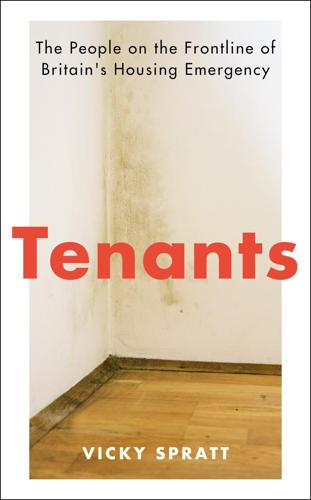
Tenants: The People on the Frontline of Britain's Housing Emergency
by
Vicky Spratt
Published 18 May 2022
But, as Scotland’s homelessness laws and changes to private tenancies in recent years show, a Housing First approach which encapsulates the right to housing is completely doable. No Going Back If this all sounds Pollyanna-ish, consider what happened in response to the coronavirus pandemic. The path from idealism to reality is neither as romantic nor as winding as we might have been led to believe. In early 2020, as Covid-19 spread, it reminded us that our society – for all the technological advancements of the last few centuries – was only the sum of its fleshy parts. Far from being invincible, we were still as susceptible to natural disasters as we ever were and, like us, our free market, capitalist economy and the structures we had built on it were fallible.
…
But home was not a safe place for everyone to be. We now know that poor housing likely led to deaths which could have been avoided (more on that in chapter 9). Historically, ruptures – pandemics, wars, revolutions – have encouraged humans to break with the past and reimagine their society. The coronavirus pandemic, wrote the Indian novelist and political campaigner Arundhati Roy, ‘is no different. It is a portal, a gateway between one world and the next.’ As lockdowns were imposed, all of us occupied a unique position. Janus-like, we were able to see forwards and backwards, assessing life before and after the rupture happened.
…
England’s small towns, they said, are set to swell with increasing numbers of elderly people as they reject city living amid a hidden housing crisis caused by a lack of appropriate homes for a rapidly ageing population. Bexhill in East Sussex, Corby in Northamptonshire and Denton in Greater Manchester were forecast to see the biggest increases in populations aged fifty-five and above during the next two decades. This will likely be an even bigger problem in the wake of the coronavirus pandemic, which has caused large numbers of people to relocate to less urban areas from cities like London, Liverpool, Birmingham and Edinburgh. Concern about what happens when Generation Rent grows up is increasing. This was echoed in a report published around the same time as the RIBA report by the All-Party Parliamentary Group (APPG) for Housing and Care for Older People, chaired by Lord Richard Best.

The London Problem: What Britain Gets Wrong About Its Capital City
by
Jack Brown
Published 14 Jul 2021
This book attempts to untangle some of these strands, however briefly, to try to better understand them. It begins with an overview of the facts, before undertaking a historical review of past attempts to address London’s perceived dominance within the UK. Next, it explores public perceptions and the relationship between rhetoric and reality. In closing, it considers the impact of the coronavirus pandemic, which arrived between this book’s conception and its delivery, and some possibilities for the future. This book This addition to Haus’s Curiosities series draws heavily on my research for a report entitled London, UK, conducted in 2018 for Centre for London. I am extremely grateful to Centre for London for the opportunity to spend time getting to know this subject and for its support – particularly that of Richard Brown (no relation).
…
While the reality is of course complex and multifaceted, a little more understanding about the capital itself – from its historical origins to its place in the UK economy today – is important. So, too, is an understanding of the much-maligned people who live there. Londoners At the start of 2020, before the coronavirus pandemic, London was home to nine million people, and this figure was expected only to increase. London’s growth has been driven primarily by ‘natural change’ (births exceeding deaths), but also by new arrivals from overseas. In terms of domestic migration (that is, movement within the UK), more people tend to leave London for elsewhere in the country than arrive each year, with over half moving to the neighbouring southeast or east of England regions, often when reaching their thirties, perhaps to start families outside the city.1 Somewhat relatedly, the average Londoner today is almost five years younger than the UK average, although the number of Londoners over the age of sixty-five is also increasing.2 Today’s Londoners are also incredibly diverse, in every sense of the word.
…
One leader of a northern city council described London to me as ‘a place, but it’s also a code word for a lot of things – parliament, judiciary, the media… it’s code for, in effect, the pillars of our state.’7 Regional politicians and commentators alike have repeatedly criticised national government as ‘London-centric’ in recent years; this criticism has only become more prevalent in response to the regional approach to the coronavirus pandemic in 2020. For others, ‘London’ can mean the national media. In early 2019, journalist Helen Pidd observed that ‘too many people who are making the news, and reporting on the news, live in London, and that really affects your world view. Sometimes it really does feel like a different country down there.’8 The idea that London-based institutions dominate national life is widespread, particularly in the arena of politics and policymaking but also in the national conversations that inform these processes.

The Corona Crash: How the Pandemic Will Change Capitalism
by
Grace Blakeley
Published 14 Oct 2020
From the structural adjustment programmes of the 1980s to modern-day Greece, the long arm of the imperial creditor has been used many times to subject peripheral states to the discipline of capital. The coronavirus pandemic will only deepen these relationships of imperial extraction. 4 Reconstruction It is often said that, in the midst of a crisis, everyone is a socialist. With massive state intervention now the only thing standing between economies battered by the coronavirus pandemic and global economic meltdown, few politicians or economists are calling on governments to step back, let businesses fail, banks go bust and homeowners default on their mortgages – even if some countries have attempted to extricate themselves from lockdown and return to ‘business as usual’ before getting the virus under control.1 In normal times, neoliberals have a knee-jerk reaction against any interference in the operation of supposedly free, competitive markets.
…
Some use anti-competitive practices designed to penalise their rivals, most use various accounting mechanisms to avoid taxation in order to boost their profits, and almost all have cosy relationships with local and national governments, which often allow them to access preferential treatment denied to their competitors.15 States stood by as these companies became ever more powerful, often providing them with subsidies, turning a blind eye to regulatory arbitrage and competing with one another to attract their investment. As the coronavirus pandemic has deepened, the big tech companies have emerged as some of the greatest beneficiaries. Microsoft, Apple, Alphabet, Amazon and Facebook now make up a fifth of the entire value of the S&P 500 Index, and Jeff Bezos is on track to become the world’s first trillionaire.16 Part of the reason these companies’ stocks are doing so well is that their business models, to varying extents, render them immune from the impact of the virus-induced lockdown.
…
Barry, ‘The Single Most Important Lesson From the 1918 Influenza’, New York Times, 17 March 2020. 2 Kim Moody, ‘How “Just-in-Time” Capitalism Spread COVID-19’, Spectre, 8 April 2020. 3 James Politi, ‘Fed’s Bullard Says Risk of Financial Crisis Remains’, Financial Times, 2 June 2020. 4 Stephen Morris, George Parker and Daniel Thomas, ‘UK Banks Warn 40%–50% of “Bounce Back” Borrowers Will Default’, Financial Times, 31 May 2020. 5 OBR, Fiscal sustainability report 2020, Office for Budget Responsibility, 2020. 6 Sergei Klebnikov, ‘How Bad Will Unemployment Get? Here’s What the Experts Predict’, Forbes, 31 March 2020. 7 Phillip Inman, ‘UK Economy Likely to Suffer Worst Covid-19 Damage, Says OECD’, Guardian, 10 June 2020. 8 International Labour Organization and Organisation for Economic Co-operation and Development, ‘The Labour Share in G20 Economies’, report prepared for the G20 Employment Working Group, Antalya, Turkey, 26–27 February 2015. 9 Shawn Donnan, ‘Globalisation in Retreat: Capital Flows Decline since Crisis’, Financial Times, 21 August 2017; Susan Lund, Eckart Windhagen, James Manyika, Philipp Härle, Jonathan Woetzel and Diana Goldshtein, ‘The New Dynamics of Financial Globalization’, McKinsey Global Institute, August 2017. 10 Chibuike Oguh and Alexandre Tanzi, ‘Global Debt of $244 Trillion Nears Record Despite Faster Growth’, Bloomberg, 15 January 2019. 11 For a discussion of these forecasts, see Grace Blakeley, ‘The Next Crash: Why the World Is Unprepared for the Economic Dangers Ahead’, New Statesman, 6 March 2019. 12 Ibid. 13 Tithi Bhattacharya and Gareth Dale, ‘Covid Capitalism: General tendencies and possible “leaps”’, Spectre, 23 April 2020. 14 See IMF, Policy Responses to Covid-19: Policy Tracker, Washington, DC: International Monetary Fund, 2020. 15 In full, the Commercial Paper Funding Facility, Primary Market Corporate Credit Facility, Secondary Market Corporate Credit Facility, Term Asset-Backed Securities Loan Facility, Primary Dealer Credit Facility and Municipal Liquidity Facility. 16 Scott Minerd, ‘We Are All Government-Sponsored Enterprises Now’, Global CIO Outlook, Guggenheim Investments, 10 May 2020. 17 Philip Turner, ‘Containing the Dollar Credit Crunch’, Project Syndicate, 18 May 2020. 18 Robert Brenner, ‘Escalating Plunder’, New Left Review 123, May-June 2020, p. 22. 1 The Last Days of Finance Capitalism 1 BEA, ‘GDP by State’, Suitland, MD: US Bureau of Economic Analysis, 2020, bea.gov. 2 Drew DeSilver, ‘For Most U.S.
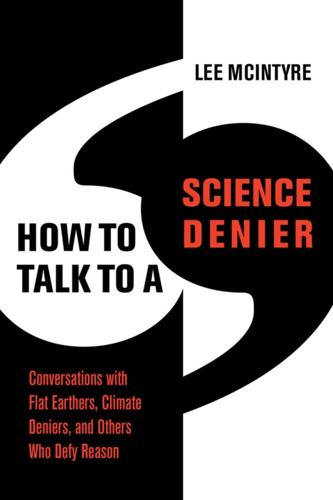
How to Talk to a Science Denier: Conversations With Flat Earthers, Climate Deniers, and Others Who Defy Reason
by
Lee McIntyre
Published 14 Sep 2021
Perhaps the pandemic will open the door to more of these efforts, on other denialist topics, in the future. Lessons from Coronavirus: Unify and Conquer One of the most fascinating aspects of the COVID-19 pandemic has been the chance to see what a denialist campaign looks like in real time, and learn what it may teach us about how to fight science denial in general. Many have noted, for instance, the startling parallels between COVID-19 denial and climate denial.41 In the coronavirus pandemic, we have a microcosm of the threat from global warming: it is an existential threat to the entire planet that portends fairly drastic economic impact and requires worldwide cooperation to address it.
…
Emphasizing scientific consensus works Empirical research by Stephan Lewandowsky, John Cook, Sander van der Linden, and others shows that appealing to the fact of a scientific consensus is one of the most compelling ways to get someone to change their mistaken empirical beliefs.49 Yes, of course there will be those who deny that there is a consensus. But research shows that even deniers—and, notably, especially conservative ones—can be compelled by scientific consensus.50 The work cited here was done before the coronavirus pandemic, and mostly involved the acceptance of consensus on climate change, but there is no reason to think that this would not also apply to COVID-19 and other forms of science denial. With COVID-19, we saw this play out in real time through Trump’s evolving view on wearing masks, one of the most effective public health measures for fighting the virus. On April 3, 2020, the CDC made its first recommendation to start wearing cloth face masks when out in public.
…
They needed someone to respect and listen to them—which in turn built trust—and as a result that trust was returned. Contrast this with the situation involving anti-maskers and other deniers around the coronavirus pandemic in the US. The political division and partisan context seems intractable, but is it? As Warzel points out, most people—even Republicans—still trust science.60 So what is the problem? Perhaps it lies not just with COVID-19 deniers but with the way we have been communicating with them. Consider the fact that this is a novel coronavirus. We’ve never seen it before, which means that we don’t know everything about it.
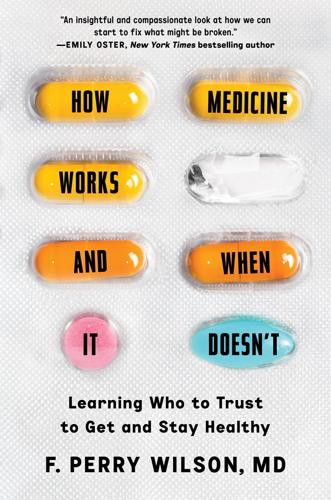
How Medicine Works and When It Doesn't: Learning Who to Trust to Get and Stay Healthy
by
F. Perry Wilson
Published 24 Jan 2023
Kellermann et al., “Gun Ownership as a Risk Factor for Homicide in the Home,” New England Journal of Medicine 329, no. 15 (October 7, 1993): 1084–91, https://doi.org/10.1056/NEJM199310073291506. 6 It was in 2003 that mRNA vaccines hit their stride: Yen-Der Li et al., “Coronavirus Vaccine Development: From SARS and MERS to COVID-19,” Journal of Biomedical Science 27, no. 1 (December 20, 2020): 104, https://doi.org/10.1186/s12929-020-00695-2. 7 But the facts most commonly misinterpreted: Vaccine Adverse Event Reporting System (VAERS), accessed February 16, 2022, https://vaers.hhs.gov. 8 This has resulted in some humorous: Harriet Hall, “Reality Is the Best Medicine: Diving into the VAERS Dumpster,” Skeptical Inquirer, November/December 2018, https://skepticalinquirer.org/2018/11/diving-into-the-vaers-dumpster-fake-news-about-vaccine-injuries. 9 As of June 13, 2022: United States Department of Health and Human Services (DHHS), Public Health Service (PHS), Centers for Disease Control (CDC) / Food and Drug Administration (FDA), Vaccine Adverse Event Reporting System (VAERS) 1990–06/03/2022, CDC WONDER Online Database, accessed at http://wonder.cdc.gov/vaers.html on June, 13, 2022, 1:12:10 PM. 10 But the political divide with regard to: Ashley Kirzinger et al., “KFF COVID-19 Vaccine Monitor: July 2021,” Kaiser Family Foundation, August 4, 2021, https://www.kff.org/coronavirus-covid-19/poll-finding/kff-covid-19-vaccine-monitor-july-2021. 11 As of this writing, these approaches: Matthew E. Oster et al., “Myocarditis Cases Reported After mRNA-Based COVID-19 Vaccination in the US from December 2020 to August 2021,” JAMA 327, no. 4 (January 25, 2022): 331–40, https://doi.org/10.1001/jama.2021.24110. 12 Compared to the risk of death from COVID-19: Anirban Basu, “Estimating the Infection Fatality Rate Among Symptomatic COVID-19 Cases in the United States,” Health Affairs 39, no. 7 (July 2020): 1229–36, https://doi.org/10.1377/hlthaff.2020.00455. 13 Doctors’ predictions were almost always: E.
…
If you feel that unrestricted gun purchasing poses a public health threat and encourages more violence, you are likely to interpret the link between gun ownership and homicide as strong evidence that guns cause people to hurt others. Same fact, different interpretation. That is motivated reasoning. Motivated reasoning about medical topics is nothing new, but in the summer of 2021, the death toll associated with it began to rise significantly. Motivated Reasoning and Vaccine Hesitancy The coronavirus pandemic had raged throughout 2020, keeping my hospital full and my colleagues and me in a near-constant panic around our own safety and that of our families. But by December 2020, the first vaccines received emergency use authorization by the FDA. I likened it, in a live CNN segment, to J. R. R.
…
If another loved one was admitted today and you asked the doctor when the aggressive fluid resuscitation would begin, they would tell you, “Well, it won’t.” This feels fickle. Examples abound of well-informed doctors changing their tunes. In the 1980s, if you asked a doctor how to lose weight, they would tell you to avoid eating fat. Today, they would be much more likely to tell you to avoid eating carbs. During the coronavirus pandemic, Anthony Fauci, director of the National Institute of Allergy and Infectious Diseases, was pilloried in the right-wing media for his changeable stance on mask wearing. Early in the pandemic, when hand-to-hand transmission was thought to be the main infection route, Fauci had argued that masks were not helpful.
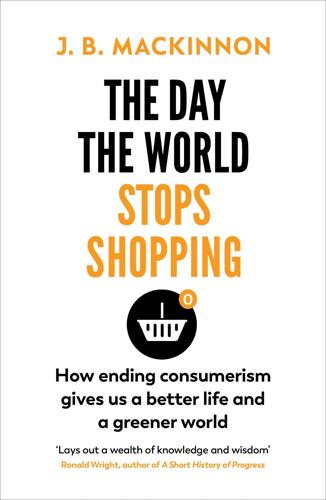
The Day the World Stops Shopping
by
J. B. MacKinnon
Published 14 May 2021
(Bush finally did tell Americans to “go shopping” in 2006, as the economy began to give hints of the coming Great Recession.) When the coronavirus pandemic in 2020 triggered the sharpest decline in consumer spending ever recorded, commentators were soon debating how many deaths might be acceptable to keep the economy “open.” By then, the idea that shopping is not just a pastime or a distraction, but the only thing standing between us and the fall of civilization, was perfectly ordinary to our ears. It also played out before our eyes: shuttered shopping districts, empty airports, boarded-up restaurants, millions of people out of work or facing bankruptcy. Equally undeniable during the Covid-19 lockdowns, though, were the shockingly blue skies over Los Angeles and London, the fresh air in Beijing and Delhi, and the steepest drop in greenhouse gas pollution ever recorded.
…
The Great Recession began in Elkhart more than a year early—at one point, recreational vehicle sales dropped 80 percent in a single week. When it comes to stopping shopping, motorhomes are the first to go. (As an aside that proves the point that what is dispensable in one case may be indispensable in another, sales of RVs and camperized “vanlife” vans, often costing a hundred thousand dollars or more, soared during the coronavirus pandemic among those who wanted to travel while avoiding shared spaces like restaurants, hotels and planes.) Alongside recreational vehicles as the most expendable purchases in the Great Recession were all-terrain vehicles. Next in line were sport utility vehicles and pickup trucks, which declined in sales by nearly a third, followed closely by “pleasure aircraft,” motorcycles and recreational boats.
…
As financial journalist David Pilling has pointed out, the GDP would rise if every mother shifted from breastfeeding her babies to buying formula to feed them—against the recommendations of nearly every pediatrician on the planet. Replacing the world’s volunteers with paid labour would be terrific for economic growth. During the coronavirus pandemic, the business of providing masks, ventilators, personal protective equipment, vaccines, liquor and virtual meet-up software were among the GDP bright spots, though all of them were markers of desperation or isolation. The moral bottom-feeders who hoarded vital supplies during the pandemic and then profiteered through price gouging were actually doing good works from the perspective of GDP growth.

Shutdown: How COVID Shook the World's Economy
by
Adam Tooze
Published 15 Nov 2021
Mathiesen, “How the EU’s Green Deal Survived the Coronavirus Pandemic,” Politico, December 17, 2020. 42. Oroschakoff and Mathiesen, “How the EU’s Green Deal Survived the Coronavirus Pandemic.” 43. “Investment Report 2020/2021,” European Investment Bank, 2020; www.eib.org/attachments/efs/economic_investment_report_2020_2021_en.pdf. ec.europa.eu/info/sites/info/files/economy-finance/assessment_of_economic_and_investment_needs.pdf. 44. S. Haroutunian, S. Hauptmeier, and S. Osterloh, “Draft Budgetary Plans for 2021: A Review in Times of the Covid-19 Crisis,” ECB Economic Bulletin, August 2020. 45.
…
“Editorial: Coronavirus Epidemic Poses Test for Rule of Law.” 44. Che, Du, and Chan, “Unequal Pain: A Sketch of the Impact of the Covid-19 Pandemic on Migrants’ Employment in China.” 45. R. McMorrow and N. Liu, “Chinese Shun People from Centre of Coronavirus Outbreak,” Financial Times, February 12, 2020. 46. S. Fan and F. Yingzhe, “Fewer Than a Third of China’s Nearly 300 Million Migrant Laborers Have Returned to Work,” Caixin, February 18, 2020. 47. M. Funke and A. Tsang, “The People’s Bank of China’s Response to the Coronavirus Pandemic: A Quantitative Assessment,” Economic Modeling 93 (2020): 465–73. 48. T. Mitchell, D.
…
It was the crisis that set the pace. In Germany itself, in May 2020 the crisis was driving a political shift, not in the direction of the court, but away from it, not putting European solidarity in question, but tending, instead, to reinforce it. * * * — As a near-universal experience, the coronavirus pandemic concentrated minds across the world on a single issue, inducing identification, comparison, and sympathy across borders—Chen’s convergence, linkage, induction, and amplification effects. European public opinion had been deeply stirred by the nightmarish images from Lombardy of exhausted nurses, overflowing morgues, and lonely funerals.

The War Below: Lithium, Copper, and the Global Battle to Power Our Lives
by
Ernest Scheyder
Published 30 Jan 2024
China threatened in 2019 to block its export to the United States, which has one rare earths mine but no processing facilities.32 No new mines for any of these metals have opened in the United States for decades, with the exception of a small Nevada copper facility in 2019.33 Yet multiple projects have been proposed that could produce enough copper to build more than 6 million EVs, enough lithium to build more than 2 million EVs, and enough nickel to build more than 60,000 EVs.34 In 2019—the last full year not affected by the coronavirus pandemic—nearly 250,000 EVs were sold in the United States.35 EV sales in the country were slightly above 400,000 in 202136 and 807,000 in 2022. That same year, total U.S. auto sales fell by 8 percent, hinting at Americans’ disillusionment with internal combustion engines.37 That rising EV demand will need to be met by a fresh supply of lithium and other metals.
…
While the Pentagon grew increasingly concerned at the dawn of the twenty-first century about China’s control of the industry that makes rare earths and other weapons-grade minerals, one of its divisions for years, under Democratic and Republican presidencies alike, sold domestic stockpiles of minerals considered strategic.54 Trump used the coronavirus pandemic to fast-track development of the Thacker Pass lithium project in Nevada, even while he killed the proposed Pebble Mine in Alaska, which would have been a large source of domestic copper.55, 56 Biden froze development of the controversial Resolution Copper mine in Arizona, even while his administration’s lawyers defended it in court.
…
And the controversy was making Darrin Lewis anxious. A tall, gangly man with a quiet demeanor, Lewis had flipped houses for years in Arizona before moving to Superior in early 2020.42 With the benefit of hindsight, his decision to buy the hardware store and its lumber yard in January of that year for $800,000 was ill-timed; the coronavirus pandemic quickly spread and shuttered the global economy. Sales plummeted, which surprised Lewis as he expected the opposite with his customers locked in their homes and many eyeing renovation projects. “Well, we didn’t see that,” he told me inside the 5,500-square-foot store. It had low-hung ceilings and shelves filled with a hodgepodge of construction equipment.

The Long Game: China's Grand Strategy to Displace American Order
by
Rush Doshi
Published 24 Jun 2021
[近期学界关于‘百年未有之大变局’研究综述].” 38“Xi Jinping’s First Mention of the ‘Two Guidances’ Has Profound Meaning [习近平首提‘两个引导’有深意].” 39Zhang Yuyan [张宇燕], “Understanding the Great Changes Unseen in a Century [理解百年未有之大变局].” 40Zhang Yunling [张蕴岭] et al., “How to Recognize and Understand the Century’s Great Changes [如何认识和理解百年大变局].” 41Ibid.Zhang Yunling [张蕴岭] et al. 42“Deeply Understand the Big Test of Epidemic Prevention and Control [深刻认识疫情防控这次大考],” People’s Daily [人民日报], April 23, 2020. 43Chen Qi [陈琪], “The Impact of the Global Coronavirus Pandemic on the Great Changes Unseen in a Century [全球新冠疫情对百年未有大变局的影响],” Ministry of Commerce of the People’s Republic of China [中华人民共和国商务部], April 22, 2020, http://chinawto.mofcom.gov.cn/article/br/bs/202004/20200402957839.shtml. 44“Peking University Center for American Studies Successfully Held an Online Seminar on U.S. and China Relations under the Global Pandemic [北京大学美国研究中心成功举办‘全球疫情下的美国与中美关系’线上研讨会],” School of International Studies, Peking University [北京大学国际关系学院], April 13, 2020, https://www.sis.pku.edu.cn/news64/1324227.htm. 45Chen Jimin, “COVID-19 Hits International System,” China-US Focus, April 27, 2020, https://www.chinausfocus.com/foreign-policy/covid-19-hits-international-system. 46Wu Baiyi, “American Illness.” 47“Deeply Understand the Big Test of Epidemic Prevention and Control [深刻认识疫情防控这次大考].” 48Yuan Peng [袁鹏], “The Coronavirus Pandemic and the Great Changes Unseen in a Century [新冠疫情与百年变局],” Contemporary International Relations [现代国际关系], no. 5 (June 2020): 1–6. 49Shi Zehua [史泽华], “Why Has American Populism Risen at This Time [美国民粹主义何以此时兴起],” U.S.
…
From China’s perspective—which is highly sensitive to changes in its perceptions of American power and threat—these two events were shocking. Beijing believed that the world’s most powerful democracies were withdrawing from the international order they had helped erect abroad and were struggling to govern themselves at home. The West’s subsequent response to the coronavirus pandemic in 2020, and then the storming of the US Capitol by extremists in 2021, reinforced a sense that “time and momentum are on our side,” as Xi Jinping put it shortly after those events.3 China’s leadership and foreign policy elite declared that a “period of historical opportunity” [历史机遇期] had emerged to expand the country’s strategic focus from Asia to the wider globe and its governance systems.
…
China’s second strategy of displacement (2008–2016) sought to build the foundation for regional hegemony in Asia, and it was launched after the Global Financial Crisis led Beijing to see US power as diminished and emboldened it to take a more confident approach. Now, with the invocation of “great changes unseen in a century” following Brexit, President Trump’s election, and the coronavirus pandemic, China is launching a third strategy of displacement, one that expands its blunting and building efforts worldwide to displace the United States as the global leader. In its final chapters, this book uses insights about China’s strategy to formulate an asymmetric US grand strategy in response—one that takes a page from China’s own book—and would seek to contest China’s regional and global ambitions without competing dollar-for-dollar, ship-for-ship, or loan-for-loan.
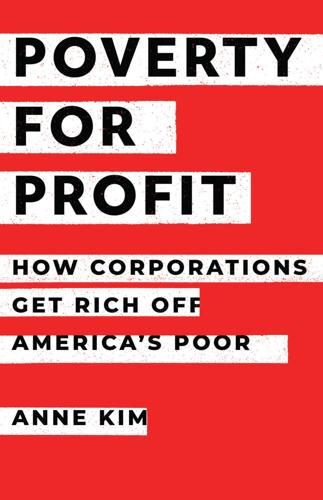
Poverty for Profit
by
Anne Kim
Johnson declared “unconditional war on poverty,” poverty remains stubbornly persistent, to the frustration of both policymakers and the public.20 At the end of 2022, the official national poverty rate was 11.5 percent—half of what it was in 1959 but far from LBJ’s goal “not only to relieve the symptom of poverty, but to cure it and, above all, to prevent it,” especially among the Americans most likely to be poor.21 Despite nearly $2 trillion in federal aid deployed during the coronavirus pandemic, roughly one in four households headed by single women (24.7 percent) lived in poverty in 2022.22 The overall Black poverty rate was more than half again that of whites (17.1 percent versus 10.5 percent), while Hispanic poverty stood at 16.9 percent.23 Children under eighteen were also half again as likely to be in poverty compared to seniors over age sixty-five (15.0 percent versus 10.2 percent).
…
Cash assistance, once a pillar of the safety net, now reaches just a fraction of households in poverty and is meager gruel to boot. Caseloads plummeted in the aftermath of welfare reform, from 12.6 million recipients in 1996 to 4.3 million by 2001.118 In 2022, TANF served just 1.9 million Americans.119 Despite the unparalleled hardship brought on by the coronavirus pandemic—which should have swelled the rolls as unemployment surged—participation fell to historic lows in 2020, according to the Center on Budget and Policy Priorities (CBPP). The program reached just 21 percent of families living in poverty in 2020, compared to 68 percent in 1996.120 In fourteen states, says the CBPP, TANF reached less than 10 percent of impoverished households.
…
One secret to its staying power has been the small group of contractors that has managed the program through successive presidential administrations, defeating efforts at reform—but at the expense of young people who might have benefited from more effective programs. The Tragedy of Job Corps The coronavirus pandemic that began the spring of 2020 has exacted an incalculable and ongoing social, economic, and human toll. But among the groups hit hardest were young adults caught in the transition to independence when the world shut down. Young adults on the front lines of the economy in sectors like retail, hospitality, and food service lost jobs in cataclysmic numbers; unemployment among eighteen- to twenty-four-year-olds soared from 10 percent in March 2020 to 28 percent by July, according to the Urban Alliance, with Black and Latinx youth suffering the highest rates of joblessness.88 College attendance also plummeted, with enrollment down by 1.4 million students from the spring of 2020 through the spring of 2022.89 From 2019 to 2021, the number of young adults ages eighteen to twenty-four neither working nor in school surged by more than 1 million, according to the labor market research firm Lightcast.90 All told, an estimated 4.7 million young adults—or one in six—were disconnected from the mainstream economy, and the damage could linger for decades.

Our Lives in Their Portfolios: Why Asset Managers Own the World
by
Brett Chistophers
Published 25 Apr 2023
It subsequently stopped disclosing its unit holdings, but one recent independent report stated that, in 2020, Blackstone owned some 117,000 units just in Europe, of which approximately 40,000 were in Spain.58 As we have seen, our best estimate is that Blackstone funds today control housing globally worth more than $100 billion. Indeed, it bought housing assets worth in excess of $20 billion in the period of the coronavirus pandemic alone.59 Another result of Blackstone’s rapid assembly of a formidable global housing portfolio, however, has been a torrent of criticism. Fairly or not, Blackstone has over the past decade become a lightning rod for a wider critique of the growing participation of financial investment institutions of various kinds in home ownership.
…
Tenants of the Pretium Partners–backed Progress Residential have similarly complained of ‘unfair rent hikes, shoddy maintenance and excessive fees’: one lease seen by the Washington Post stipulated fees such as ‘10 per cent of the rent if the payment is more than five days late; $7.95 a month for a firm picked by Progress to collect utility payments; $9.95 a month for failing to buy renter’s insurance; and a $35 “convenience fee” each time rent is paid with a credit card’ – not to mention a $200 ‘administration’ fee in the event of Progress filing for eviction.69 Comparable claims have recently surfaced with regard to Greystar Investment Management’s rental operations, too.70 Indeed, such concerns reached a new pitch during the coronavirus pandemic. No less than three separate congressional committees undertook investigations of the pandemic-era business practices of US corporate residential landlords, focusing in particular on their eviction practices, and landlords controlled by asset managers such as the Amherst Group, Cerberus Capital Management and the aforementioned Pretium were squarely in the spotlight.71 Eviction moratoria introduced by federal and local governments during the pandemic evidently did not stop landlords from filing and completing evictions, which were concentrated in communities of colour.
…
6 The Future Problems, Problems … The identification of ‘problems’ always depends on perspective: what looks like a significant concern to some will seem a minor irritant to others, and perhaps an opportunity to others still. So it was that, in 2021, as peoples and institutions the world over struggled to come to terms with the continuation of the coronavirus pandemic and to adapt their lives and activities to the new realities it had created, those people and institutions identified problems of widely varying kinds. Many saw the pre-eminent problem as a lack of investment, and in particular a lack of investment in precisely the kinds of assets we have been examining in this book: housing and other critical infrastructures of socioeconomic production and reproduction.

Billionaire, Nerd, Savior, King: Bill Gates and His Quest to Shape Our World
by
Anupreeta Das
Published 12 Aug 2024
Contributions flowed into nonprofits when the superstorm Sandy flooded lower Manhattan in 2012 and again when the coronavirus pandemic hit in 2020. Abortion clinics received an influx of dollars in 2022 after the Supreme Court struck down the constitutional right to an abortion. Nonprofits working on gender equality and sexual abuse saw a jump in donations after Donald Trump was elected president in 2016. Jeannie Infante Sager, the former director of the Women’s Philanthropy Institute at Indiana University, said such “rage giving” was mostly made up of small-dollar donations from women. At the height of the coronavirus pandemic, when the stock market soared and the healthcare system was overwhelmed, philanthropic gifts broke new records.
…
There was no convenient label to affix to the relationship between Gates and Epstein, and no label would have hidden the smudges that began to blur the clear, unsullied outlines of the technology billionaire’s do-gooder image. The photograph, which surfaced in 2019, accompanied a story by The New York Times detailing multiple meetings between the two men. Two years later, in the middle of the coronavirus pandemic, Melinda Gates, his wife of 27 years, would divorce him. Theirs had sometimes been a difficult marriage; for years, talk of Gates’s womanizing had whirred in the background among those who worked with the former couple. But the public airing of his relationship with Epstein contributed to their breakup.
…
(For context, there are around 100 publicly traded companies in the S&P 500 stock index with market values of $100 billion or more.) If the average American family saved every cent of its $68,000 annual income, it would take more than 14,000 years to build a fortune of just one billion dollars. During the coronavirus pandemic, the rising stock market lifted the collective net worth of billionaires by 40 percent, even as millions of small businesses and livelihoods were decimated, and others were saved only because of government help. An individual billionaire might represent the promise of capitalism, but their growing numbers and wealth represent its cruelty.

Uncontrolled Spread: Why COVID-19 Crushed Us and How We Can Defeat the Next Pandemic
by
Scott Gottlieb
Published 20 Sep 2021
Jenkins, “Wuhan Lab Theory a Dark Cloud on China,” Wall Street Journal, March 9, 2021. 42.US Centers for Disease Control and Prevention, “Biosafety in Microbiological and Biomedical Laboratories, 6th Edition,” June 2020, https://www.cdc.gov/labs/BMBL.html; and Nicoletta Lanese, “Only One Lab in China Can Safely Handle the New Coronavirus,” Live Science, January 22, 2020. 43.Ping Liu, Wu Chen, and Jin-Ping Chen, “Viral Metagenomics Revealed Sendai Virus and Coronavirus Infection of Malayan Pangolins (Manis javanica),” Viruses 11, no. 11 (2019): 979. 44.David Quammen, “Did Pangolin Trafficking Cause the Coronavirus Pandemic? The Elusive Animals’ Possible Involvement in the Origins of COVID-19 Gives Them a Weird Ambivalence: Threatened and, Perhaps, Dangerous,” New Yorker, August 24, 2020. 45.Kangpeng Xiao et al., “Isolation of SARS-CoV-2-Related Coronavirus from Malayan Pangolins,” Nature 583, no. 7815 (2020): 286–9; Tao Zhang, Qunfu Wu, and Zhigang Zhang, “Probable Pangolin Origin of SARS-CoV-2 Associated with the COVID-19 Outbreak,” Current Opinions in Biology 30, no. 7 (2020): 1346–51; Lam, Jia, and Cao, “Identifying SARS-CoV-2-Related Coronaviruses in Malayan Pangolins”; and Quammen, “Did Pangolin Trafficking Cause the Coronavirus Pandemic?”
…
Most of the five Americans who were relocated were focused on HIV. 2.James Bandler et al., “Inside the Fall of the CDC,” ProPublica, October 15, 2020. 3.Chaolin Huang et al., “Clinical Features of Patients Infected with 2019 Novel Coronavirus in Wuhan, China,” Lancet 395, no. 10223 (2020): 497–506. 4.Abutaleb et al., “The U.S. Was Beset by Denial and Dysfunction as the Coronavirus Raged.” 5.Michael Shear et al., “The Lost Month: How a Failure to Test Blinded the U.S. to Covid-19,” New York Times, April 1, 2020. 6.Bandler et al., “Inside the Fall of the CDC.” 7.Ibid. 8.Jennifer Hansler, Curt Merrill, and Isaac Yee, “The Many Times Trump Has Praised China’s Handling of the Coronavirus Pandemic,” CNN, May 19, 2020. That same day, I published an op-ed for CNBC stating that “the epidemic in China is likely much broader than official statistics currently suggest. A lot of mild cases probably remain unrecognized.
…
Here’s What That Means,” STAT, March 13, 2020. 4.Abutaleb et al., “The Inside Story of How Trump’s Denial, Mismanagement and Magical Thinking Led to the Pandemic’s Dark Winter.” 5.Dareh Gregorian, “Brazilian Official Who Met Trump at Mar-a-Lago Tests Positive for Coronavirus,” NBC, March 12, 2020; and Yasmeen Abutaleb and Damian Paletta, Nightmare Scenario: Inside the Trump Administration’s Response to the Pandemic That Changed History. 6.Lisandra Paraguassu and Anthony Boadle, “As Bolsonaro Flouts Warnings, Coronavirus Spreads in Brazil,” Reuters, March 24, 2020. 7.Robert Costa and Philip Rucker, “Woodward Book: Trump Says He Knew Coronavirus Was ‘Deadly’ and Worse than the Flu While Intentionally Misleading Americans,” Washington Post, September 9, 2020. 8.CBS News, “Transcript: Scott Gottlieb on ‘Face the Nation,’ March 8, 2020,” March 8, 2020. 9.Facher, “President Trump Just Declared the Coronavirus Pandemic a National Emergency.” 10.Meridith McGraw and Caitlin Oprysko, “Inside the White House During ‘15 Days to Slow the Spread,’” Politico, March 29, 2020. 11.Lawrence Gostin and Lindsay Wiley, “Governmental Public Health Powers During the COVID-19 Pandemic: Stay-at-Home Orders, Business Closures, and Travel Restrictions,” JAMA 323, no. 21 (2020): 2137–8. 12.President’s Coronavirus Guidelines for America, “15 Days to Slow the Spread,” US Department of Justice, March 15, 2020, https://www.justice.gov/doj/page/file/1258511/download. 13.Ibid. 14.Jeff Mason and Steve Holland, “Trump Urges U.S. to Halt Most Social Activity in Virus Fight, Warns of Recession,” Reuters, March 16, 2020. 15.Benjamin Siegel, “How Anesthesia Machines Can Help Hospitals with Ventilator Shortages Fight Coronavirus,” ABC News, March 27, 2020; and Kathleen Moore, “Local Anesthesiologists Converting Machines to Ventilators,” Post Star, March 26, 2020. 16.Jessie Yeung et al., “Pence Announces 4,000 Ventilators Will Be Shipped to New York,” CNN, March 24, 2020. 17.Sean O’Kane, “How GM and Ford Switched Out Pickup Trucks for Breathing Machines,” Verge, April 15, 2020. 18.Kirsten Korosec, “GM, Ford Wrap Up Ventilator Production and Shift Back to Auto Business,” Tech Crunch, September 1, 2020. 19.Tamara Keith et al., “How 15 Days Became 45: Trump Extends Guidelines to Slow Coronavirus,” National Public Radio, March 30, 2020. 20.Foege commented, “In retrospect it seems clear—we didn’t know how to eradicate smallpox when we started.

Essential: How the Pandemic Transformed the Long Fight for Worker Justice
by
Jamie K. McCallum
Published 15 Nov 2022
The government defines an “unemployed” person as someone who has actively looked for work in the previous four weeks, but this definition excluded many throughout the pandemic, including over four million workers who reported in February 2021 that they did not look for work “because of the coronavirus pandemic” and over seven hundred thousand workers who were absent from their job “because their employer closed or lost business due to the coronavirus pandemic.” All told, by the summer of 2021, nearly ten million children had lived in a home where one or more adults had lost paid work because of the pandemic.41 This overwhelming wave of pandemic unemployment came with dire consequences.
…
Lantz, and Renuka Tipirneni, “Association of Social and Demographic Factors with COVID-19 Incidence and Death Rates in the US,” JAMA Network Open 4, no. 1 (January 29, 2021): e2036462, https://doi.org/10.1001/jamanetworkopen.2020.36462. 9. Sojourner and Yang, “Effects of Union Certification.” 10. Chen, Chevalier, and Long, “Nursing Home Staff Networks and COVID-19.” 11. Centers for Medicare and Medicaid Services, “COVID-19 Nursing Home Data,” March 8, 2022, https://data.cms.gov/covid-19/covid-19-nursing-home-data; “AARP Nursing Home COVID-19 Dashboard,” AARP Public Policy Institute, www.aarp.org/ppi/issues/caregiving/info-2020/nursing-home-covid-dashboard.html. 12.
…
Center on Budget and Policy Priorities, Tracking the COVID-19 Economy’s Effects on Food, Housing, and Employment Hardships, August 9, 2021, www.cbpp.org/research/poverty-and-inequality/tracking-the-covid-19-recessions-effects-on-food-housing-and. 42. Mathieu Despard et al., “COVID-19 Job and Income Loss Leading to More Hunger and Financial Hardship,” Up Front (blog), Brookings, July 13, 2020, www.brookings.edu/blog/up-front/2020/07/13/covid-19-job-and-income-loss-leading-to-more-hunger-and-financial-hardship/. 43. Stefani Milovanska-Farrington, Job Loss and Food Insecurity During the COVID-19 Pandemic, IZA Institute of Labor Economics, April 2021, www.iza.org/publications/dp/14273/job-loss-and-food-insecurity-during-the-covid-19-pandemic. 44.

The Data Detective: Ten Easy Rules to Make Sense of Statistics
by
Tim Harford
Published 2 Feb 2021
But think about it for a moment and you realize that the distinction between a baby and a fetus is anything but simple—it’s a deep ethical question that underlies one of the most acrimonious divides in US politics. The statisticians have to draw the line somewhere. If we want to understand what is going on, we need to understand where they drew it. The coronavirus pandemic has raised similar questions. As I write these words, on April 9, 2020, the media are reporting that in the past twenty-four hours, 887 people died with COVID-19 on the British mainland—but I happen to know that number is wrong. Data detective work from the Scottish statistician Sheila Bird tells me that the true figure is more likely to be about 1,500.5 Why such a huge disparity?
…
We would find that behind each claim—true, false, or borderline—was a fascinating world to explore and explain. Whether we were evaluating the prevalence of strokes, the evidence that debt damages economic growth, or even the number of times in The Hobbit that the word “she” is used, the numbers could illuminate the world as well as obscure it. As the coronavirus pandemic has so starkly illustrated, we depend on reliable numbers to shape our decisions—as individuals, as organizations, and as a society. And just as with coronavirus, the statistics have often been gathered only when we’ve been faced with a crisis. Consider the unemployment rate—a measure of how many people want jobs but do not have them.
…
For a long time, researchers into muscle-derived stem cells were baffled by why they sometimes regenerated and sometimes didn’t. It seemed entirely arbitrary, until it occurred to someone to check whether the cells came from males or females. Mystery solved: it turned out the cells from females regenerated, while those from males did not. The gender blind-spot has yet to be banished. A few weeks into the coronavirus pandemic, researchers started to realize that men might be more susceptible than women, both to infection and to death. Was that because of a difference in behavior, in diligent handwashing, in the prevalence of smoking, or perhaps a deep difference in the biology of the male and female immune systems?
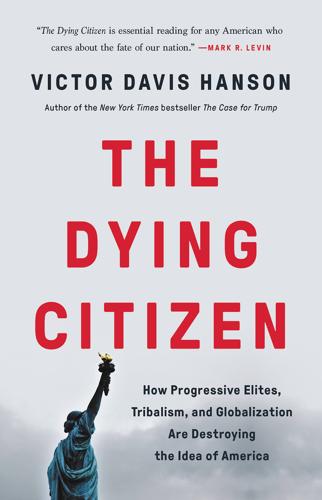
The Dying Citizen: How Progressive Elites, Tribalism, and Globalization Are Destroying the Idea of America
by
Victor Davis Hanson
Published 15 Nov 2021
Sometimes they can galvanize the public brilliantly to avoid catastrophes, as in the mobilization during World War II against sudden existential enemies after December 7, 1941, or during the post-Sputnik space program of the 1960s, or during the same decade when the government and larger culture mobilized to address the threat of smoking, or in spring 2020 during the coronavirus pandemic when the United States recalibrated entire industries to meet medical supply demands and successfully created a commercial landscape to hasten a viable COVID-19 vaccination in less than a year. Sometimes, the speed at which 51 percent consensus is reached and minority views are discredited is also frightening. Transgenderism, climate change, females in frontline combat units, and gay marriage, between 2008 and 2020, were transformed from topics of legitimate discussion and debate into rigid, politically correct orthodoxies—often more by regulators than legislators.
…
An allegiance to the world, in the zero-sum game of fidelity and time, implies some diminishment of commitment to one’s particular homeland. During the COVID-19 outbreak, both former First Ladies Michelle Obama and Laura Bush spoke at an international symposium titled “One World: Together at Home,” a well-meaning global-citizen effort designed to support and help fund the World Health Organization. But WHO is a United Nations–affiliated health group that from the beginning of the coronavirus pandemic mouthed Chinese propaganda that the virus was not transmissible between humans, that China had already contained it, and that national travel bans were unnecessary.
…
Certainly, eastern European countries such as the Czech Republic, Hungary, Poland, Romania, and Slovakia have had a different sort of historical experience with ethnic tensions and immigration than has western Europe. Eastern European countries especially currently favor border enforcement rather than the abolition of European national border controls under the protocols of the 1990 Schengen Agreement, which, in fact, was suspended for a time during the coronavirus pandemic of 2020.10 America, which survived a gory civil war among political and geographical factions, has become so far one of history’s few exceptions. The ultimate rationale of America’s unique Constitution led Americans eventually to define themselves by their shared values, not by their inconsequential appearances.
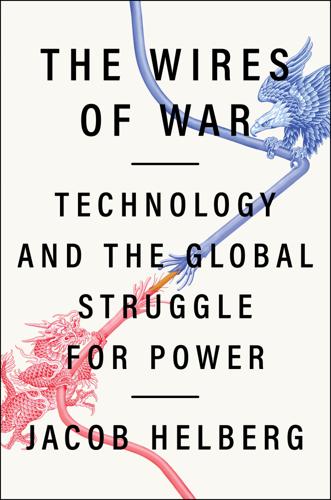
The Wires of War: Technology and the Global Struggle for Power
by
Jacob Helberg
Published 11 Oct 2021
Petersburg.94 Through this process of information laundering, what started as an utterly noncredible allegation has now gained wider traction. A partisan operative may tweet, “Did Hillary commit child molestation?” A cable pundit wonders, “Is there any truth to the rumors that the American military originated the coronavirus pandemic?” Before you know it, a message hatched in the troll farms of St. Petersburg or the intelligence agencies of Tehran has migrated from the fever swamps of the Internet to the nightly news, legitimizing insidious narratives crafted to divide Americans and discredit democracy. It’s frightening to watch.
…
Chinese assets have included Candace Claiborne, a former State Department employee who passed internal documents to Chinese intelligence, and Dongfan Chung, a former Rockwell and Boeing engineer who became the first American ever convicted of economic espionage. Chapter 5 THE HILL AND THE VALLEY Mr. Bezos, I believe you’re on mute.”1 It was July 29, 2020, and Congress was in session. Remotely, that is. Due to the coronavirus pandemic, the hotly anticipated hearing into the antitrust practices of the tech industry was taking place partly by videoconference. On one coast sat the solons of Congress. On the other, the titans of tech—Google’s Sundar Pichai, Apple’s Tim Cook, Facebook’s Mark Zuckerberg, and Amazon’s Jeff Bezos.
…
Republicans, convinced that tech was secretly censoring and “shadow banning” conservative voices, began holding contentious hearings, featuring sinister names like Stifling Free Speech: Technological Censorship and the Public Discourse.34 Devin Nunes, then the chairman of the House intelligence committee, sued Twitter for defamation.35 Several Republican senators demanded that the Federal Trade Commission look into social media companies’ content decisions.36 In mid-2020, after Twitter had the temerity—for the first time—to affix a gentle fact-check to a tweet from Donald Trump, the president issued a legally questionable executive order threatening to revoke legal protections for social media companies.37 By the summer of that year, amid the coronavirus pandemic and nationwide protests for racial justice, a poll found that more than half of Americans had “very little” confidence in social media platforms. Positive opinions of these companies even ranked below Congress, typically one of the least admired bodies in America.38 Ahead of those antitrust hearings in July, the Washington Post’s Tony Romm compared the showdown to past congressional battles with the big banks and Big Tobacco.39 Tech, once the darling of DC, was now spoken of in the same breath as the peddlers of pulmonary poison.

Age of the City: Why Our Future Will Be Won or Lost Together
by
Ian Goldin
and
Tom Lee-Devlin
Published 21 Jun 2023
Chapter 8 – The Spectre of Disease 1 Jedwab, R., et al., 2019, ‘Pandemics, places, and populations: evidence from the Black Death’, CESifo Working Paper. 2 Roos, D., 2020, ‘Social distancing and quarantine were used in medieval times to fight the Black Death’, History.com. 3 Jedwab, et al., ‘Pandemics, places, and populations’. 4 Eyewitness to History, ‘The Black Death, 1348’ (eyewitnesstohistory.com). 5 Bray, R., 2020, Armies of Pestilence: The Impact of Pandemics on History (Lutterworth Press). 6 Ibid. 7 Ibid. 8 Ibid. 9 Kenny, C., 2021, The Plague Cycle (Simon & Schuster). 10 Greger, M., 2007, ‘The human/animal interface: emergence and resurgence of zoonotic infectious diseases’, Critical Review in Biology, Vol. 33, No. 4. 11 The Economist, 2021, ‘The pandemic’s true death toll’. 12 For a full discussion of the impact of the Covid-19 pandemic, see Goldin, I., 2022, Rescue: From Global Crisis to a Better World (Sceptre). 13 Kharas, H. and Dooley, M., 2021, ‘Long-run impacts of Covid-19 on extreme poverty’, Brookings Institution (brookings.edu). 14 Sánchez-Páramo, C., et al., 2021, ‘Covid-19 leaves a legacy of rising poverty and widening inequality’, World Bank (worldbank.org). 15 Kharas and Dooley, ‘Long-run impacts of Covid-19 on extreme poverty’. 16 UN Women, 2022, Ukraine and the food and fuel crisis: 4 things to know, unwomen.org. 17 Hayward, E., 2021, ‘Covid-19’s toll on mental health’, Boston College (bc.edu). 18 The Economist, 2022, ‘Covid learning loss has been a global disaster’. 19 World Bank, UNESCO and UNICEF, 2021, ‘The state of the global education crisis: a path to recovery’ (worldbank.org). 20 The Economist, ‘Covid learning loss has been a global disaster’. 21 Ibid. 22 Harper, K. and Armelagos, G., 2010, ‘The changing disease-scape in the third epidemiological transition’, International Journal of Environmental Research and Public Health, Vol. 7, No. 2. 23 Kenny, The Plague Cycle, p. 177. 24 World Bank Data, 2022, ‘Air transport, passengers carried’ (data.worldbank.org). 25 Davenport, R., 2020, ‘Urbanization and mortality in Britain, c. 1800–50’, The Economic History Review, Vol. 73, No. 2. 26 O’Neill, A., 2022, ‘Child mortality rate (under five years old) in the United Kingdom from 1800 to 2020’, Statista (statista.com). 27 Kenny, The Plague Cycle. 28 Ibid. 29 Ibid. 30 Jones, K., et al., 2008, ‘Global trends in emerging infectious diseases’, Nature, Vol. 451. 31 Morand, S. and Walther, B., 2020, ‘The accelerated infectious disease risk in the Anthropocene: more outbreaks and wider global spread’, Working paper. 32 Centers for Disease Control and Prevention, 2021, ‘Zoonoses’ (cdc.gov). 33 Greger, ‘The human/animal interface’. 34 Ibid. 35 UNFAO, 2022, ‘State of the world’s forests’ (fao.org). 36 Young, R., 2014, ‘Take bushmeat off the menu before humans are served another Ebola’, The Conversation (theconversation.com). 37 Cawthorn, D-M. and Hoffman, L., 2015, The bushmeat and food security nexus: A global account of the contributions, conundrums and ethical collisions, Food Research International, Vol. 76. 38 Maxmen, A., 2022, ‘Wuhan market was epicentre of pandemic’s start, studies suggest’, Nature.com. 39 Kenny, The Plague Cycle. 40 Smitham, E. and Glassman, A., 2021, ‘The next pandemic could come sooner and be deadlier’, Center for Global Development (cgdev.org). 41 Barnes, O., 2022, ‘Just where and when will the next pandemic strike?’
…
We next widen our aperture, in Chapter 7, to consider cities in poorer countries, including the unique challenges that arise from the speed with which they are growing, and the risk of urbanization without prosperity as the traditional manufacturing-led development path becomes increasingly difficult to follow in light of the accelerating pace of automation. Finally, we consider two existential risks confronting humanity – infectious diseases and climate change – and what they mean for cities. In Chapter 8, we look back at the relationship between infectious diseases and cities through history, reflect on the learnings from the coronavirus pandemic and define how cities can help make us more resilient against future pandemics. In Chapter 9, we explore the potential disruption that cities will face from climate change in the decades ahead, the actions that need to be taken to protect populations from the rising impact and frequency of flood, drought and heat extremes, and the role that cities must play in helping to accelerate decarbonization and slow climate change.
…
Still, for all its flaws, the London system is far superior to car-centric cities in the US like Los Angeles or Atlanta, where a distinctive lack of public transit options acts as a poverty trap for any resident unable to afford a car. In the next chapter, we ask if and how this story might change as a result of the surge in remote working following the coronavirus pandemic. Are we at the start of a new cyclical process of well-off workers fleeing urban centres for greener pastures? 5 Remote Work: The Threat to Cities Enthusiasm for the idea of remote working is nothing new. The first to systematically explore its potential in the modern world was the US physicist Jack Nilles, who in 1976 published a book titled The Telecommunications–Transportation Tradeoff.1 Writing against a backdrop of soaring oil prices and growing excitement about the personal computer, Nilles argued that society was approaching a tipping point.
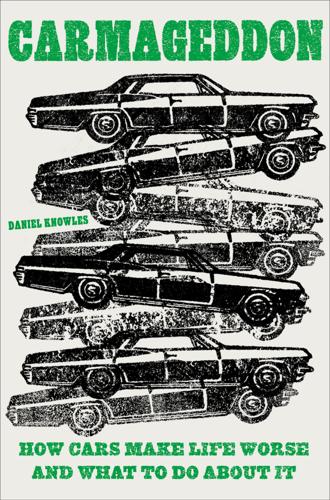
Carmageddon: How Cars Make Life Worse and What to Do About It
by
Daniel Knowles
Published 27 Mar 2023
Big numbers can be difficult to process, but for comparison, according to my employer, The Economist, which developed a tracker of “excess deaths,” roughly eighteen million people were probably killed worldwide in total by the coronavirus pandemic in 2020 and 2021. So outdoor air pollution kills half as many people each year as coronavirus did—year in and year out—and yet we shut down our economies to prevent COVID-19 from spreading, but with air pollution we often carry on as though it is normal—an acceptable risk. The reason is partly that the vast majority of deaths happen in the poorest countries. A map of PMI 2.5 levels worldwide—that is, the tiniest sort of soot particles that can penetrate deeply into a human being’s lungs—shows that they are highest almost entirely in the poorest countries.
…
From 2010 to 2018, the number of people using bikes daily to get around Paris, including in the suburbs, increased by 30 percent. In the past twenty years, the proportion of Parisian households (in the city proper) who own a car has fallen from 60 percent to 35 percent. Air pollution, which peaked in 2016, has been gradually falling. And since the start of the coronavirus pandemic, the transformation has accelerated dramatically. When the city shut down in March 2020, Hidalgo quickly realized that with public transport off limits for safety reasons, the city needed to make sure that Parisians did not all get back into their cars. Pretty much overnight, it installed 60 kilometers of new bicycle lanes, quickly nicknamed coronapistes by locals.
…
The reason bikes are so common in Amsterdam or Copenhagen “is not a question of genetics, or the fact that they are flat cities,” Najdovski told me. “It is that at a time in the 1970s and 1980s, these cities gave priority to active mobility instead of giving space to motorized traffic.” In Copenhagen, as in Paris with the coronavirus pandemic, it took a crisis. In 1973, in the wake of the Yom Kippur War, the Arab oil-producing states introduced an embargo on oil shipments in protest of American and European support for Israel. The price of a barrel of oil quadrupled from $2.90 to more than $11. With it, the price of gasoline shot up, and the world plunged into an economic crisis.
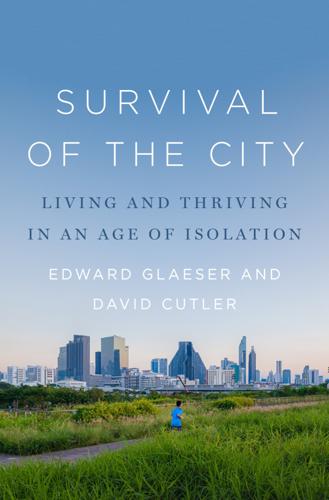
The Survival of the City: Human Flourishing in an Age of Isolation
by
Edward Glaeser
and
David Cutler
Published 14 Sep 2021
Neither Merkel nor: “Why Germany’s Low COVID-19 Death Rate Might Be a Mirage,” CBC News. On March 22: Posaner, “Germany’s Merkel Bans Meetings of More Than 2 People to Slow Coronavirus.” Germany had a testing system: “Combating the Coronavirus Pandemic: Bosch Develops Rapid Test for COVID-19,” Bosch Global. Robert Koch Institute: Robert Koch Institute, “Navigation and Service.” spending growth has slowed: McWilliams et al., “Medicare Spending after 3 Years of the Medicare Shared Savings Program.” The COVID pandemic created: Goldstein, “Trump Administration Says It Will Pay Hospitals for Treating Uninsured Covid-19 Patients.”
…
Library & Information History 33, no 2 (April 2017): 123–42. https://doi.org/10.1080/17583489.2017.1299427. Collins, Sean. “The Anger behind the Protests, Explained in 4 Charts.” Vox, May 31, 2020. www.vox.com/2020/5/31/21276004/anger-police-killing-george-floyd-protests. “Combating the Coronavirus Pandemic: Bosch Develops Rapid Test for COVID-19.” Bosch Global. Accessed December 25, 2020. www.bosch.com/stories/vivalytic-rapid-test-for-covid-19. “Common Core Math Fails to Prepare Students for STEM.” Pioneer Institute, October 1, 2013. https://pioneerinstitute.org/news/lowering-the-bar-how-common-core-math-fails-to-prepare-students-for-stem. Common Core State Standards Initiative.
…
Birds are thought: World Health Organization, “Influenza (Avian and Other Zoonotic).” Smallpox was circulating: Spinney, “Smallpox and Other Viruses Plagued Humans Much Earlier Than Suspected.” AIDS emerged in the Congo: Sample, “HIV Pandemic Originated in Kinshasa in the 1920s, Say Scientists.” COVID-19 had only: Taylor, “The Coronavirus Pandemic: A Timeline.” Domesticated animals are generally: “Eastern Equine Encephalitis Virus (EEEV): The Role of Diagnostics,” American Society for Microbiology. The Northeast of the US: Levine et al., “Mice as Reservoirs of the Lyme Disease Spirochete.” US Centers for Disease Control and Prevention, “Lyme Disease.”
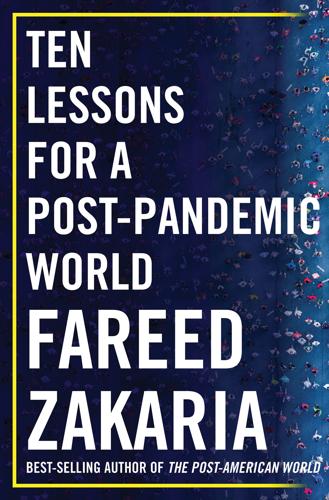
Ten Lessons for a Post-Pandemic World
by
Fareed Zakaria
Published 5 Oct 2020
Pepinsky, “Partisanship, Health Behavior, and Policy Attitudes in the Early Stages of the COVID-19 Pandemic,” SSRN, March 30, 2020, https://ssrn.com/abstract=3562796. (Note: This study, and those by Painter and Qiu and Allcott et al. below, has not been peer-reviewed.) 86 less likely to shelter in place: Marcus Painter and Tian Qiu, “Political Beliefs Affect Compliance with COVID-19 Social Distancing Orders,” SSRN, July 3, 2020, https://ssrn.com/abstract=3569098; Hunt Allcott, Levi Boxell, Jacob Conway, Matthew Gentzkow, Michael Thaler, and David Y. Yang, “Polarization and Public Health: Partisan Differences in Social Distancing During the Coronavirus Pandemic,” SSRN, June 2020, https://ssrn.com/abstract=3574415. 86 thirty incidents of arson or vandalism: Adam Satariano and Davey Alba, “Burning Cell Towers, out of Baseless Fear They Spread the Virus,” New York Times, April 10, 2020. 86 “motivated reasoning”: Jonathan Haidt, The Righteous Mind: Why Good People Are Divided by Politics and Religion (New York: Vintage Books, 2013), 98, 104. 87 “high-information voters”: Ezra Klein, “Why the Most Informed Voters Are Often the Most Badly Misled,” Vox, June 8, 2015. 87 “rationalizing voters”: Christopher H.
…
Azar II, “Secretary Azar Delivers Remarks on Declaration of Public Health Emergency for 2019 Novel Coronavirus,” White House, January 31, 2020, https://www.hhs.gov/about/leadership/secretary/speeches/2020-speeches/secretary-azar-delivers-remarks-on-declaration-of-public-health-emergency-2019-novel-coronavirus.html. 79 stop performing non-urgent care: Alice Park and Jeffrey Kluger, “The Coronavirus Pandemic Is Forcing U.S. Doctors to Ration Care for All Patients,” Time, April 22, 2020. 79 heart attack patients: S. J. Lange, M. D. Ritchey, A. B. Goodman et al., “Potential Indirect Effects of the COVID-19 Pandemic on Use of Emergency Departments for Acute Life-Threatening Conditions—United States, January–May 2020,” Centers for Disease Control and Prevention, MMWR Morb Mortal Weekly Report 69 (2020):795–800; and Will Feuer, “Doctors Worry the Coronavirus Is Keeping Patients Away from US Hospitals as ER Visits Drop: ‘Heart Attacks Don’t Stop,’ ” CNBC, April 14, 2020. 80 swine flu could kill 65,000 in Britain . . . some 450 Britons died: Jonathan Ford, “The Battle at the Heart of British Science over Coronavirus,” Financial Times, April 15, 2020; David D.
…
Price, “A Coronavirus Quarantine in America Could Be a Giant Legal Mess,” Atlantic, February 16, 2020. 46 90,126 units: Editorial Board, “Federalism Explains Varied COVID-19 Responses,” Columbus Dispatch, May 8, 2020, https://www.dispatch.com/opinion/20200508/editorial-federalism-explains-varied-covid-19-responses. 47 and even fax: For inadequacies of America’s Covid-19 test reporting, see Sarah Kliff and Margot Sanger-Katz, “Choke Point for U.S. Coronavirus Response: The Fax Machine,” New York Times, July 13, 2020. 47“health cards”: On Taiwan’s near-real-time “health cards”: tracking of Covid-19 patient data, see Jackie Drees, “What the US Can Learn from Taiwan’s EHR System and COVID-19 Response,” Becker’s Hospital Review, July 1, 2020, https://www.beckershospitalreview.com/ehrs/what-the-us-can-learn-from-taiwan-s-ehr-system-and-covid-19-response.html; and Ezekiel Emanuel in conversation with Fareed Zakaria, Fareed Zakaria GPS: Global Public Square, CNN, July 12, 2020, https://www.cnn.com/videos/tv/2020/07/12/exp-gps-0712-emanuel-on-us-covid-19-response.cnn. 47 18,000 separate police departments: Duren Banks et al., “National Sources of Law Enforcement Employment Data,” US Department of Justice, October 4, 2016, https://www.bjs.gov/content/pub/pdf/nsleed.pdf. 48 former British colonies: Michael Bernhard, Christopher Reenock, and Timothy Nordstrom, “The Legacy of Western Overseas Colonialism on Democratic Survival,” International Studies Quarterly 48, no. 1 (March 2004): 225–50, https://academic.oup.com/isq/article-abstract/48/1/225/2963246. 49 seventeen “layers” of appointees: Paul Light, “People on People on People: The Continued Thickening of Government,” The Volcker Alliance, October 2017, https://www.volckeralliance.org/sites/default/files/attachments/Issue%20Paper_People%20on%20People.pdf. 49 long blog post: Marc Andreessen, “It’s Time to Build,” Andreessen Horowitz, https://a16z.com/2020/04/18/its-time-to-build/. 50 Pennsylvania Station: Marc J.

Limitless: The Federal Reserve Takes on a New Age of Crisis
by
Jeanna Smialek
Published 27 Feb 2023
A Year of Uncomfortable Questions Epilogue Acknowledgments Bibliography Notes Index _142549205_ INTRODUCTION The interviewer on the April 9, 2020, webcast had a simple question for the chair of the Federal Reserve: How much support could the central bank provide to businesses and households using its emergency powers? Markets were flailing and people were suddenly losing their jobs as the coronavirus pandemic swept the nation and the world. America was looking to Jerome Powell for help. “There is no limit on how much of that we can do,” Powell sternly explained, dark eyebrows knitted below his silver hair. “Other than that it must meet the test under the law.” Central banking doesn’t offer a lot of mic-drop moments, but that was one.
…
But after tense days in which the corporate bond market had been essentially shut, it was a headline-grabbing miracle that a handful of America’s largest companies had managed to issue at all. “The opportunities to bring new offerings have been few and often far between,” Bloomberg reported. The coronavirus pandemic had made investors take a warier look at the massive debt pile sitting on corporate balance sheets. Even for the companies with the highest ratings and the lowest chance of default, spreads—the premium corporations were paying to borrow relative to rates on government bonds—had roughly doubled since the start of March.
…
He negotiated massive tax cuts, began to defang financial oversight, and brought his former OneWest colleagues into other top government and regulatory positions. He failed to hire a full staff for Treasury, but he nevertheless managed to work his way through a sort of libertarian wish list. Now the coronavirus pandemic threatened the very growth he had pledged to unleash. Mnuchin had scrambled to come up with a package that would protect the administration’s prized economy. Once the legislation passed, he was dead set on being seen as a good steward of the cash. Elizabeth Warren had made a habit of calling the pot of money for the Fed a “slush fund,” miffing many at Treasury.

Survival of the Richest: Escape Fantasies of the Tech Billionaires
by
Douglas Rushkoff
Published 7 Sep 2022
(New York: Viking Penguin, 1987), 251. 38 “we’re way closer … people’s brains” : Matthew Gault, “Billionaires See VR as a Way to Avoid Radical Social Change,” Wired , February 15, 2021, https:// www .wired .com /story /billionaires -use -vr -avoid -social -change /. 38 “It is not possible … you wanted” : Gault, “Billionaires See VR as a Way to Avoid Radical Social Change.” 39 “Yes, we are in a pandemic” : David Zweig, “$25,000 Pod Schools: How Well-to-Do Children Will Weather the Pandemic,” New York Times , July 30, 2020, https:// www .nytimes .com /2020 /07 /30 /nyregion /pod -schools -hastings -on -hudson .html. 41 legions of Amazon workers : Joey Hadden, “Amazon Delivery Drivers Share What It’s Like to Be on the Front Lines of the Coronavirus Pandemic, Including Not Having Time to Wash Their Hands and Uncleaned Vans,” Business Insider , April 2, 2020, https:// www .businessinsider .com /why -amazon -delivery -workers -feel -exposed -and -vulnerable -to -coronavirus -2020 -3. 41 Amazon avoids taxes : Matthew Gardner, “Amazon Has Record-Breaking Profits in 2020, Avoids $2.3 Billion in Federal Income Taxes,” Institute on Taxation and Economic Policy, February 3, 2021, https:// itep .org /amazon -has -record -breaking -profits -in -2020 -avoids -2 -3 -billion -in -federal -income -taxes /. 41 anti-competitive practices : Mark Chandler, “Amazon Accused of Anti-Competitive Practices by US Subcommittee,” Bookseller , October 8, 2020, https:// www .thebookseller .com /news /amazon -accused -anti -competitive -practices -us -subcommittee -1222115. 41 abuses labor : Jodi Kantor, Karen Weise, and Grace Ashford, “Power and Peril: 5 Takeaways on Amazon’s Employment Machine,” New York Times , June 15, 2021, https:// www .nytimes .com /2021 /06 /15 /us /politics /amazon -warehouse -workers .html; Casey Newton, “Amazon’s Poor Treatment of Workers Is Catching up to It during the Coronavirus Crisis,” Verge , April 1, 2020, https:// www .theverge .com /interface /2020 /4 /1 /21201162 /amazon -delivery -delays -coronavirus -worker -strikes. 42 more people opened online trading : Annie Massa, “Pandemic-Fueled Day Trading Is Overwhelming Online Brokers—and the Traders Are Fuming,” Fortune , December 9, 2020, https:// fortune .com /2020 /12 /08 /day -trading -online -brokers -tech -failure -crashes -outages /. 42 Shares of Zoom went up : Shanhong Liu, “Price of Zoom shares traded on Nasdaq Stock Market in 2020 and 2021,” Statista , August 9, 2021, https:// www .statista .com /statistics /1106104 /stock -price -zoom /. 42 Jeff Bezos’s fortune rose : Chase Peterson-Withorn, “How Much Money America’s Billionaires Have Made During the Covid-19 Pandemic,” Forbes , April 30, 2021, https:// www .forbes .com /sites /chasewithorn /2021 /04 /30 /american -billionaires -have -gotten -12 -trillion -richer -during -the -pandemic. 42 five biggest U.S. tech companies : The staff of the Wall Street Journal , “How Big Tech Got Even Bigger,” Wall Street Journal , February 6, 2021, https:// www .wsj .com /articles /how -big -tech -got -even -bigger -11612587632. 42 Netflix’s share price : Jonathan Ponciano, “5 Big Numbers That Show Netflix’s Massive Growth Continues during the Coronavirus Pandemic,” Forbes , October 20, 2020, https:// www .forbes .com /sites /jonathanponciano /2020 /10 /19 /netflix -earnings -5 -numbers -growth -continues -during -the -coronavirus -pandemic /. 43 “Many creatives, startups, and techies” : Jen Murphy, “Remote Workers Flee to $70,000-a-Month Resorts While Awaiting Vaccines,” Bloomberg , February 15, 2021, https:// www .bloomberg .com /news /articles /2021 -02 -15 /remote -workers -flee -to -luxury -beach -resorts -while -awaiting -vaccines. 43 “It’s been great here” : Julie Satow, “Turning a Second Home into a Primary Home,” New York Times , July 24, 2020, https:// www .nytimes .com /2020 /07 /24 /realestate /coronavirus -second -homes - .html. 43 Each 1 percent increase : Mary Van Beusekom, “Race, Income Inequality Fuel COVID Disparities in US Counties,” Center for Infectious Disease Research and Policy, University of Minnesota, January 20, 2021, https:// www .cidrap .umn .edu /news -perspective /2021 /01 /race -income -inequality -fuel -covid -disparities -us -counties; Tim F.
…
(New York: Viking Penguin, 1987), 251. 38 “we’re way closer … people’s brains” : Matthew Gault, “Billionaires See VR as a Way to Avoid Radical Social Change,” Wired , February 15, 2021, https:// www .wired .com /story /billionaires -use -vr -avoid -social -change /. 38 “It is not possible … you wanted” : Gault, “Billionaires See VR as a Way to Avoid Radical Social Change.” 39 “Yes, we are in a pandemic” : David Zweig, “$25,000 Pod Schools: How Well-to-Do Children Will Weather the Pandemic,” New York Times , July 30, 2020, https:// www .nytimes .com /2020 /07 /30 /nyregion /pod -schools -hastings -on -hudson .html. 41 legions of Amazon workers : Joey Hadden, “Amazon Delivery Drivers Share What It’s Like to Be on the Front Lines of the Coronavirus Pandemic, Including Not Having Time to Wash Their Hands and Uncleaned Vans,” Business Insider , April 2, 2020, https:// www .businessinsider .com /why -amazon -delivery -workers -feel -exposed -and -vulnerable -to -coronavirus -2020 -3. 41 Amazon avoids taxes : Matthew Gardner, “Amazon Has Record-Breaking Profits in 2020, Avoids $2.3 Billion in Federal Income Taxes,” Institute on Taxation and Economic Policy, February 3, 2021, https:// itep .org /amazon -has -record -breaking -profits -in -2020 -avoids -2 -3 -billion -in -federal -income -taxes /. 41 anti-competitive practices : Mark Chandler, “Amazon Accused of Anti-Competitive Practices by US Subcommittee,” Bookseller , October 8, 2020, https:// www .thebookseller .com /news /amazon -accused -anti -competitive -practices -us -subcommittee -1222115. 41 abuses labor : Jodi Kantor, Karen Weise, and Grace Ashford, “Power and Peril: 5 Takeaways on Amazon’s Employment Machine,” New York Times , June 15, 2021, https:// www .nytimes .com /2021 /06 /15 /us /politics /amazon -warehouse -workers .html; Casey Newton, “Amazon’s Poor Treatment of Workers Is Catching up to It during the Coronavirus Crisis,” Verge , April 1, 2020, https:// www .theverge .com /interface /2020 /4 /1 /21201162 /amazon -delivery -delays -coronavirus -worker -strikes. 42 more people opened online trading : Annie Massa, “Pandemic-Fueled Day Trading Is Overwhelming Online Brokers—and the Traders Are Fuming,” Fortune , December 9, 2020, https:// fortune .com /2020 /12 /08 /day -trading -online -brokers -tech -failure -crashes -outages /. 42 Shares of Zoom went up : Shanhong Liu, “Price of Zoom shares traded on Nasdaq Stock Market in 2020 and 2021,” Statista , August 9, 2021, https:// www .statista .com /statistics /1106104 /stock -price -zoom /. 42 Jeff Bezos’s fortune rose : Chase Peterson-Withorn, “How Much Money America’s Billionaires Have Made During the Covid-19 Pandemic,” Forbes , April 30, 2021, https:// www .forbes .com /sites /chasewithorn /2021 /04 /30 /american -billionaires -have -gotten -12 -trillion -richer -during -the -pandemic. 42 five biggest U.S. tech companies : The staff of the Wall Street Journal , “How Big Tech Got Even Bigger,” Wall Street Journal , February 6, 2021, https:// www .wsj .com /articles /how -big -tech -got -even -bigger -11612587632. 42 Netflix’s share price : Jonathan Ponciano, “5 Big Numbers That Show Netflix’s Massive Growth Continues during the Coronavirus Pandemic,” Forbes , October 20, 2020, https:// www .forbes .com /sites /jonathanponciano /2020 /10 /19 /netflix -earnings -5 -numbers -growth -continues -during -the -coronavirus -pandemic /. 43 “Many creatives, startups, and techies” : Jen Murphy, “Remote Workers Flee to $70,000-a-Month Resorts While Awaiting Vaccines,” Bloomberg , February 15, 2021, https:// www .bloomberg .com /news /articles /2021 -02 -15 /remote -workers -flee -to -luxury -beach -resorts -while -awaiting -vaccines. 43 “It’s been great here” : Julie Satow, “Turning a Second Home into a Primary Home,” New York Times , July 24, 2020, https:// www .nytimes .com /2020 /07 /24 /realestate /coronavirus -second -homes - .html. 43 Each 1 percent increase : Mary Van Beusekom, “Race, Income Inequality Fuel COVID Disparities in US Counties,” Center for Infectious Disease Research and Policy, University of Minnesota, January 20, 2021, https:// www .cidrap .umn .edu /news -perspective /2021 /01 /race -income -inequality -fuel -covid -disparities -us -counties; Tim F.
…
(New York: Viking Penguin, 1987), 251. 38 “we’re way closer … people’s brains” : Matthew Gault, “Billionaires See VR as a Way to Avoid Radical Social Change,” Wired , February 15, 2021, https:// www .wired .com /story /billionaires -use -vr -avoid -social -change /. 38 “It is not possible … you wanted” : Gault, “Billionaires See VR as a Way to Avoid Radical Social Change.” 39 “Yes, we are in a pandemic” : David Zweig, “$25,000 Pod Schools: How Well-to-Do Children Will Weather the Pandemic,” New York Times , July 30, 2020, https:// www .nytimes .com /2020 /07 /30 /nyregion /pod -schools -hastings -on -hudson .html. 41 legions of Amazon workers : Joey Hadden, “Amazon Delivery Drivers Share What It’s Like to Be on the Front Lines of the Coronavirus Pandemic, Including Not Having Time to Wash Their Hands and Uncleaned Vans,” Business Insider , April 2, 2020, https:// www .businessinsider .com /why -amazon -delivery -workers -feel -exposed -and -vulnerable -to -coronavirus -2020 -3. 41 Amazon avoids taxes : Matthew Gardner, “Amazon Has Record-Breaking Profits in 2020, Avoids $2.3 Billion in Federal Income Taxes,” Institute on Taxation and Economic Policy, February 3, 2021, https:// itep .org /amazon -has -record -breaking -profits -in -2020 -avoids -2 -3 -billion -in -federal -income -taxes /. 41 anti-competitive practices : Mark Chandler, “Amazon Accused of Anti-Competitive Practices by US Subcommittee,” Bookseller , October 8, 2020, https:// www .thebookseller .com /news /amazon -accused -anti -competitive -practices -us -subcommittee -1222115. 41 abuses labor : Jodi Kantor, Karen Weise, and Grace Ashford, “Power and Peril: 5 Takeaways on Amazon’s Employment Machine,” New York Times , June 15, 2021, https:// www .nytimes .com /2021 /06 /15 /us /politics /amazon -warehouse -workers .html; Casey Newton, “Amazon’s Poor Treatment of Workers Is Catching up to It during the Coronavirus Crisis,” Verge , April 1, 2020, https:// www .theverge .com /interface /2020 /4 /1 /21201162 /amazon -delivery -delays -coronavirus -worker -strikes. 42 more people opened online trading : Annie Massa, “Pandemic-Fueled Day Trading Is Overwhelming Online Brokers—and the Traders Are Fuming,” Fortune , December 9, 2020, https:// fortune .com /2020 /12 /08 /day -trading -online -brokers -tech -failure -crashes -outages /. 42 Shares of Zoom went up : Shanhong Liu, “Price of Zoom shares traded on Nasdaq Stock Market in 2020 and 2021,” Statista , August 9, 2021, https:// www .statista .com /statistics /1106104 /stock -price -zoom /. 42 Jeff Bezos’s fortune rose : Chase Peterson-Withorn, “How Much Money America’s Billionaires Have Made During the Covid-19 Pandemic,” Forbes , April 30, 2021, https:// www .forbes .com /sites /chasewithorn /2021 /04 /30 /american -billionaires -have -gotten -12 -trillion -richer -during -the -pandemic. 42 five biggest U.S. tech companies : The staff of the Wall Street Journal , “How Big Tech Got Even Bigger,” Wall Street Journal , February 6, 2021, https:// www .wsj .com /articles /how -big -tech -got -even -bigger -11612587632. 42 Netflix’s share price : Jonathan Ponciano, “5 Big Numbers That Show Netflix’s Massive Growth Continues during the Coronavirus Pandemic,” Forbes , October 20, 2020, https:// www .forbes .com /sites /jonathanponciano /2020 /10 /19 /netflix -earnings -5 -numbers -growth -continues -during -the -coronavirus -pandemic /. 43 “Many creatives, startups, and techies” : Jen Murphy, “Remote Workers Flee to $70,000-a-Month Resorts While Awaiting Vaccines,” Bloomberg , February 15, 2021, https:// www .bloomberg .com /news /articles /2021 -02 -15 /remote -workers -flee -to -luxury -beach -resorts -while -awaiting -vaccines. 43 “It’s been great here” : Julie Satow, “Turning a Second Home into a Primary Home,” New York Times , July 24, 2020, https:// www .nytimes .com /2020 /07 /24 /realestate /coronavirus -second -homes - .html. 43 Each 1 percent increase : Mary Van Beusekom, “Race, Income Inequality Fuel COVID Disparities in US Counties,” Center for Infectious Disease Research and Policy, University of Minnesota, January 20, 2021, https:// www .cidrap .umn .edu /news -perspective /2021 /01 /race -income -inequality -fuel -covid -disparities -us -counties; Tim F.
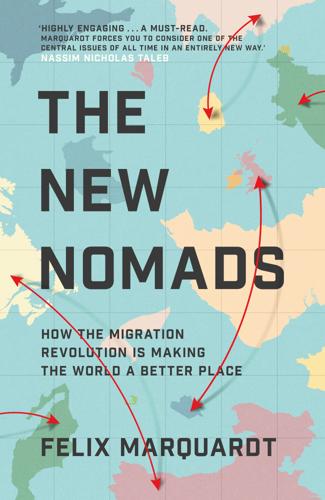
The New Nomads: How the Migration Revolution Is Making the World a Better Place
by
Felix Marquardt
Published 7 Jul 2021
We would not have developed farms, cities, nation states, multinational companies, without this ability to define and maintain a group. Self-realisation, the scientific revolution and indeed modernity are all premised on it. But it has served its purpose and now become a problem. The time has come to leave it behind. How? Just as it has brought the world to a halt, the coronavirus pandemic is an opportunity to pause and take stock of the complexities of our present and the causal link between phenomena – specifically economic growth, energy consumption, (im)mobility, (in)equality, environmental degradation, the rise of religious extremism, nationalism and populism. And to recognise that the prosperity and open-minded, pro-immigration stance of the relatively mobile few is predicated on the relative lack of prosperity and mobility of the many,8 rather than on moral virtue.
…
The clue is in the ‘digital’ – these workers tend to be highly skilled and part of the knowledge economy. Though it might be technically possible, there are no YouTube channels promoting the benefits of moving around the world working from a factory in China one day, and one in Brazil the next. During the coronavirus pandemic, a new kind of passport privilege has emerged. For most of 2020, as a US citizen, it was very hard to travel out of the country. But if you were a dual citizen, you could simply use your other passport to get out, which had many Americans scrambling to try to get a different passport based on foreign ancestry (countries like Ireland with rich histories of migration to the US actually suspended the process which allowed Americans to use their Irish heritage to claim citizenship).
…
But it comes at a cost: you might end up with a parody of diversity around the table; a lack of willingness to talk about the real issues at hand; as a consequence, the consensus you reach may be weak and meaningless, and can end up alienating human societies at large. This is precisely what has happened to Davos and the UN. In March of 2020, as we sat in confinement in the first months of the coronavirus pandemic, Abdi and I got together on Zoom. We brought in many other new nomads, too, and started talking about that phrase we’ve all heard so many times since the beginning of the pandemic it has almost lost its meaning: ‘This changes everything.’ We had both read articles and essays by the great minds of our time along those lines, and in the months that followed, we realised that this literature didn’t age well.

Failures of State: The Inside Story of Britain's Battle With Coronavirus
by
Jonathan Calvert
and
George Arbuthnott
Published 18 Mar 2021
Abrahamson, Elkan 402, 403 Academy of Medical Sciences 237, 336, 338, 353 action plan, UK government (‘contain, delay, research, mitigate’ strategy) 152–66 All-Party Parliamentary Group on Coronavirus 396, 398 ambulance service 95, 190, 224, 237, 243, 247, 264, 265–7, 268, 269, 270, 273, 274–5, 282, 294, 290, 291, 392, 416 Arcuri, Jennifer 127–31, 310–11 Ardern, Jacinda 153–4, 308, 337 Ashton, John 100, 190 Ashworth, Jon 74–5, 143, 286 asymptomatic spread, Covid-19 135, 142, 144, 237–8, 332–3 Attwood, Peter 51–2, 55 austerity policies, UK government 7, 87, 88, 101, 104, 105 Austin, Raymond 243–6, 247, 249, 252, 296 Australia 18, 155, 180, 230, 231, 302, 308, 325, 337–8, 365, 394 Blair, Tony 77, 78, 87, 128 Bradshaw, Ben 316–17 Brexit 4, 5, 10, 76, 78, 81, 87, 90, 91, 101, 115–16, 138, 148, 153, 172, 230, 261, 383, 391, 397; Boris Johnson/UK government fixation with and appreciation of danger posed by Covid-19 4, 5, 6, 8, 15–16, 56–7, 64–5, 71–5, 76, 78, 87, 110–12, 115–16, 122–4, 132, 153, 383, 397; Brexit day 71–2; Cummings and 72, 111–13; Hancock and 68–9; Leave Campaign 57, 112, 213; lockdown and 61, 74, 302, 390–1; ministers’ approach to views of scientists and 103–4; no-deal 8, 78, 87, 90, 110, 111, 113, 390; pandemic planning/preparation and 6, 7–8, 15–16, 56–7, 64–5, 68, 72–3, 87, 90, 91, 101, 103–4, 105, 122, 123–4, 132; withdrawal treaty 5, 57 Brown, Gordon 78–9, 88 Buckland, Jane 51, 52 Cain, Lee 184, 213 Cameron, David 66, 77–8, 88, 155, 199, 200–1, 213 care homes/sector 7, 10, 105, 203, 214, 269, 280–4, 366, 384; Boris Johnson lays blame for crisis in on workers 332–3; death toll within 238–9, 263–4, 267, 284, 290; government advice to in early days of pandemic 141, 161; House of Commons’ public accounts committee report into care home crisis 333; lockdown and 280–1; patients discharged from hospital into 90, 203–4, 280–2; residents rejected for hospital admission 269, 282–4; staff 96, 141, 281–2, 290, 291, 310, 332–3 Charles, Prince 230 Cheltenham Festival 167, 168–71, 172, 183, 417 Chequers 115, 149, 151, 199, 216, 277, 295, 329 China 7, 8, 385; Covid-19 death toll in 70, 308–9; Covid-19 imported into UK from 63–4, 70, 72–3, 142; Covid-19 origins in 9, 15–29, 15; Covid-19 outbreak in and cover-up of 9, 30–52, 30, 56–7, 58, 59, 61, 62–3, 70, 75; economy, swift lockdown policy and 308–9; personal protective equipment (PPE) and 71, 85, 86, 122–3, 145; Sars (Sars-CoV-1) pandemic (2002) and 16, 17–20, 21; success of dealing with Covid-19 401; see also Wuhan Chinese Centre for Disease Control and Prevention 22, 34 Churchill, Winston 2, 4, 397 Cobra (national crisis committee) 8, 55–6, 58, 59, 61, 62, 64, 65, 70, 71, 75–80, 89, 99, 102, 106, 107, 124, 126, 127, 147, 148–9, 152, 153, 154, 174, 190, 196, 199–200, 212–13, 214, 220, 285, 286, 384; Boris Johnson fails to attend first five meetings of during Covid crisis 8, 55–6, 58, 59, 61, 62, 64, 70, 71, 75–80, 102, 106, 107, 124, 126, 127, 147, 148–9, 285, 286, 384 Conservative Party 60, 65–6, 84, 88, 106, 110, 112, 113, 115, 117, 118, 119, 120, 143, 249, 288; austerity policies 7, 87, 88, 101, 104, 105; Black and White Ball 119, 134–5, 137, 138, 141, 142, 150; Brexit and 4, 110, 111–12; general election victory (2019) 4, 57, 71–2, 76, 111–12, 116, 138, 319; leadership contest (2019) 68–9, 111, 189, 203, 401; lockdown and 296, 302, 319, 322, 329, 339, 340, 359 Conte, Giuseppe 192–3 Corbyn, Jeremy 76, 127, 137, 138, 240 Coronavirus Act (2020) 226–7 Coronavirus Clinical Characterisation Consortium 396 Cosford, Paul 64, 109 Costello, Anthony 181, 369 Covid-19 (Sars-CoV-2): asymptomatic spread of 135, 142, 144, 237–8, 332–3; first British deaths 51–2, 55, 159–60; first recorded cases in Britain 50–2, 55, 64, 72, 81–3, 107, 108–9, 140–1, 148, 150–1, 165; infectivity rate 60–1, 62, 71, 74, 109, 146, 287, 393, 394; long Covid 365; name 16; origins 15–29, 15; outbreak and cover-up of in China 30–52, 30; reproduction (R) rate 60–1, 139, 296–7, 303, 304, 306, 320, 325, 335, 336–7, 338, 339, 340, 346, 350–1, 354, 359, 363, 365, 387, 400, 403; second wave 11, 176, 183, 184, 310, 328, 330–1, 336, 338, 340–1, 344, 347, 350, 352, 353, 355, 359, 360, 363, 364, 366, 373–4, 376, 402–3, 417; vaccines 11, 27, 106, 178, 349, 353, 357, 387, 391, 393, 394; variants 144, 335, 386, 389, 393 Covid-19 Bereaved Families for Justice UK group 402 Covid-19 Clinical Information Network (Co-Cin) 249–50 Covid Symptom Study app 50 Crabtree, David 281, 282, 283 Cummings, Dominic 72, 106, 111–14, 120, 126, 138, 139, 140, 153, 171, 195–6, 208, 209–10; Boris Johnson, breakdown of relationship with 363; Covid infection 234–5, 277–8; flouts lockdown rules 234–6, 277–8, 311–16; lockdown measures, becomes believer in swift and decisive (‘Domoscene conversion’) 195–6, 363, 399 Cygnus pandemic rehearsal (2016) 88–90, 95, 104 Daszak, Peter 27–8, 29, 41–2, 45–6 Davey, Ed 149, 299, 322 Davies, Nicholas 140, 184–5, 349, 370, 373 Davis, David 112, 115, 261 De Angelis, Daniela 160, 219, 366, 373 deaths, UK Covid-related 6, 7, 9–10, 11, 59, 61–2, 70, 73, 88, 89, 114, 133, 136, 140, 142, 148, 150, 154, 155, 161, 164–5, 169, 170, 175, 177, 178, 185, 187–8, 191–2, 193, 195, 196, 197, 201, 206, 211, 231–2, 256, 276, 277, 278–9, 280, 284, 287–8, 295, 297, 301–2, 305, 306, 324, 336, 337, 352, 356, 357, 359, 360, 361, 365, 366, 368, 369, 372–3, 376, 378, 385, 386, 391, 394–5, 401–2, 404, 405; deaths at home 263–73, 264, 290, 291; death rate/lethal potential of Covid-19 55, 75, 191–2, 378; European record high death rate 220, 287, 301–2, 305, 320, 307–8, 395, 396; first UK deaths 51–2, 55, 159–60; late lockdown in UK and 9–10, 220, 287–8, 307–10, 320–1, 358, 364–6, 379, 394–5, 397, 401, 404 Department of Health 71, 85, 92, 95, 100, 105, 149, 151, 155, 174, 180, 196, 260, 281 Diamond Princess 83–4, 124–5, 140, 148 Doctors’ Association UK 208, 217, 241, 261, 379 Dorries, Nadine 156, 180, 196–8, 226, 287, 347 Eat Out to Help Out scheme 333–4, 339, 344–5, 349, 375 Ebola 18, 26, 90, 92, 96, 189 Ebright, Richard 43–4, 47–9 economy, UK 4–5, 399; annual borrowing 306–7; Brexit and 4, 73–4, 148, 391; budget (2020) 105, 180–1; Eat Out to Help Out 333–4, 339, 344–5, 349, 375; false dichotomy between health of the nation and that of the economy, UK government offers 340, 379, 400–1; financial markets 146–7, 148, 172, 210; ‘furlough’ scheme 99, 105, 214, 306, 333; G7 group of developed nations, UK economy suffers more than any other 10, 333, 396; GDP, fall in 307–10, 395–6, 401; herd immunity and 177; lifting of lockdown measures and 279, 306–7, 319–20, 328–9, 333–8, 339, 340, 343–5, 371, 398, 399, 400–1; lockdown measures and 9, 61, 74, 156–7, 161, 177–8, 199, 204, 279, 296–7, 304–5, 306–10, 319, 333, 343, 350–1, 352–3, 354, 355–6, 337–8, 359, 360, 364–5, 368, 371, 372, 374, 376, 377, 379, 396, 398, 399, 400–1, 403; pandemic planning and 87, 88, 89, 96, 105, 114; return to offices, government encourages 335–6, 343–4; Sunak and, see Sunak, Rishi; total cost of combating effects of the pandemic 306–7; Treasury support packages 181, 204–5, 214, 306–7, 333–4, 339, 344–5, 350; unemployment 279, 319, 333, 350; World Bank: ‘The Sooner, the Better: The Early Economic Impact of Non-Pharmaceutical Interventions during the COVID-19 Pandemic’ report 307, 360, 368 Edmunds, John 132, 139, 140, 159, 160, 184–5, 327, 357–8, 362, 363–4 Edwardes, Charlotte 119–20 Elizabeth II, Queen 210, 230, 240, 241, 256, 295, 298 European Union (EU) 4, 5, 57, 65, 71, 72, 85, 90, 103, 124, 126, 309, 333, 391 facemasks 8, 10, 22, 84, 86, 94–5, 122, 123, 141, 145, 177, 179, 180, 182, 208, 276, 281, 334, 335–6, 374 Farrar, Sir Jeremy 63, 102, 108, 139, 220 Ferguson, Neil 59, 61, 71, 139, 159, 185, 205, 220, 300–1, 320, 321 Fetzer, Thiemo 344–5 financial crisis (2007–08) 88, 172 financial markets 146–7, 148, 172, 210 ‘following the science’, UK government claims to be 7, 153, 157–8, 163, 174, 181–2, 183, 194, 213 foot and mouth disease 79, 80, 167 France 1–2, 9, 33, 83, 86, 144, 149–50, 166, 191, 194, 195, 198, 209, 212, 217, 219, 297, 303, 310, 344, 376, 390 ‘gain-of-function’ experiments 26–7, 48 Gallagher, Mick 290–1 Germany 4, 9, 70, 90, 93, 98, 99, 162, 194, 198, 217, 219, 224, 297, 302, 307, 310, 364, 376 Ghebreyesus, Tedros Adhanom 70, 71, 83–4, 133 Good Morning Britain 104, 301, 315 Gove, Michael 78, 110, 212–13, 236, 256, 285–6, 339, 353, 358, 368, 376, 377, 399 Greater London Authority (GLA) 129, 130, 311 Grove, Betty 272–3 Gupta, Sunetra 254–5 Halpern, David 184, 192 Hammond, Philip 76, 110, 113 Hancock, Matt 55, 61–2, 65–6, 198–9, 249; background 65–7; big claims, propensity for making 141, 198, 238–9; Boris Johnson Covid infection and 256; Brexit and 68–9; care homes and 280; Christmas restrictions and 388; circuit breaker lockdown and 353, 368; Cobra committee and 106; contact tracing app and 325; Covid infection 233, 238; Covid variants and 389; Eat Out to Help Out and 339; Edwardes and 120; government decisions presented to public as if based on scientific advice, role in 157; herd immunity and 193, 198; hospital capacity and 203, 252–3; Italian travellers/airports and 142–4; late lockdown, on 220; masks and 336; Nightingale hospitals and 227; 100,000 tests per day target 239, 288, 298–9, 317; Operation Cygnus and 104–5; Operation Moonshot and 349–50; personal protective equipment (PPE) and 84–5, 93, 96; procurement practice and allegations of cronyism 288; restrictions to limit the spread of the virus, pushes for 363, 368, 398; testing and 97, 99, 239, 288, 298–9, 317 Hanks, Tom 180, 230 Harries, Jenny 181–3, 186, 214, 312, 317, 336 Heneghan, Carl 355–6, 359 herd immunity 106, 156, 164–5, 171, 174–9, 183–5, 187, 191–3, 194–5, 196–8, 200, 302, 354, 355, 356–7, 365, 394 Hibberd, Martin 43, 46, 47, 48, 63, 98–9, 101, 102–3, 287 High Consequence Infectious Disease (HCID) 207–8 Hillier, Meg 105, 333 Horton, Richard 62, 101, 102, 225–6, 286–7 Imperial College London 9, 42, 59, 61, 108, 109, 131, 132, 136, 139, 149, 154, 156, 159, 160, 170, 176, 184, 185, 186, 193, 199, 200, 205, 211, 216, 242, 297, 300, 322, 346, 361, 377, 386, 393 Independent Office for Police Conduct (IOPC) 128, 130–1, 310–11 Iran 58, 136, 137, 153 Ireland 165, 187, 188, 191, 305 Italy 9, 33, 64, 70, 119, 131, 132, 135–6, 142–5, 148, 151, 153, 161, 162, 165, 171, 172–3, 178, 187–8, 190, 191, 192–3, 194, 195, 200, 205–6, 210, 217, 219, 224, 225, 297, 301–2, 310, 344 Japan 59, 70, 125, 132, 178, 364 Javid, Sajid 72, 111, 112, 113, 119, 138 Jenrick, Robert 208, 289, 301 Johnson, Boris: action plan (‘contain, delay, research, mitigate’ strategy’) and 152–66; Arcuri and 127–31, 310–11; Brexit fixation and appreciation of danger posed by Covid-19 4, 5, 6, 8, 15–16, 56–7, 64–5, 71–5, 76, 78, 87, 110–12, 115–16, 122–4, 132, 153, 383, 397; cabinet reshuffle (2020) 110–11, 113–15; care workers, blames for crisis in care sector 332–3; Chevening and 114–15, 117, 121, 122, 123, 124, 125–7, 131, 137; child (Wilfred Lawrie Nicholas) 298; childhood 2; China and 56–7, 123–4; Christmas restrictions and 387–90, 404; circuit breaker lockdown and 352–80, 386; civil claims for negligence and violation of human rights against UK government, responsibility for 402–3; Cobra meetings, chairs 148–9, 152, 153, 154, 174, 196, 199–200, 212–13, 214, 220; Cobra meetings, fails to attend first five meetings of during Covid crisis 8, 55–6, 58, 59, 61, 62, 64, 70, 71, 75–80, 102, 106, 107, 124, 126, 127, 147, 148–9, 285, 286, 384; Conservative leadership contest and 68–9, 111, 189, 401; Covid infection and illness 10, 233–4, 235–6, 239–40, 241, 244, 247, 254–5, 262–3, 276–7, 295–7, 403; Cummings and 112, 113, 114, 235–6, 311–16, 363–4, 369, 370; EU, misses chance to pool resources with 126; ‘following the science’, UK government claims to be and 7, 153, 157–8, 163, 174, 181–2, 183, 194, 213; foreign newspapers criticise 302; general election victory (2019) 4, 57, 71–2, 116, 138; government decisions presented to public as if they were entirely based on scientific advice 157; Harries Twitter broadcast 181–3; herd immunity concept and 164–5, 174–6, 183–4, 187, 192–3, 194–5; holidays 57–8, 76, 109, 110, 114–17, 121, 122, 123, 124, 125–7, 131, 135, 137, 341, 342, 383; ‘irrational’ panic of Covid-19, dismissive of 4, 107–9, 204; lockdown measures and, see lockdowns, UK Covid-19; love affairs and children 116–121, 127–31; marriage 117, 118–19, 120–1; Mothers’ Day mixed message 214–15, 216; NHS surcharge for foreign health and social care workers and 310; Old Royal Naval College, Greenwich speech (2020) 5–6, 73–4, 84, 147, 204; popularity/public confidence in 6, 7, 284, 310, 315, 324–5; prorogues parliament (2019) 68, 69; public gatherings, attitude towards 165–6, 167–8, 181, 187; rewriting of timeline of Covid crisis 102; school closures and, see school closures; school meal vouchers and 323–4, 344–5; scientific advisers, split with 360–4; scientists, lays blame for crisis with 148, 321–2; shaking hands, proudly refuses to stop 162–4, 166, 175, 233; ‘Stay at home, protect the NHS, save lives’ plan launched 213–15, 216, 305; Storm Dennis and 126–7; Storm Jorge and 171–2; Symonds and, see Symonds, Carrie; This Morning, appearance on 163–5, 175; travel corridors and 334–5; vaccines and 349 Johnson, Stanley 123, 262, 263 Kerslake, Lord 77–8, 154–5 Khan, Sadiq 200, 208–10, 213, 214, 217 King, Sir David 77, 155, 170–1, 219, 400–1 Labour Party 57, 66, 74–5, 76, 87, 105, 111–12, 127, 137, 143, 216, 240, 289–90, 316, 325, 329, 338, 368, 371, 389 Lancet, The 34, 55, 62, 101, 225–6, 286, 364 Lee, Phillip 89–90, 200–1 Li Wenliang 34–5, 81 Liu Xiaoming 56–7, 123, 124 lockdowns, UK Covid-19: behavioural fatigue concept and 201–2; Christmas and New Year restrictions (2020–21) 356, 385–95, 404; curfews 362–3, 369; dither and delay over, UK government/Boris Johnson 4–5, 9–10, 152–7, 160–1, 167–220, 218, 223, 224, 260, 261, 263, 287, 296–310, 319–21, 323, 325–7, 333, 334–5, 342, 345, 346, 348, 349, 350–1, 352–80, 387, 388–9, 390, 391, 393, 394, 396, 397–8, 400, 404–5; economic costs of, see economy; first (20 March 2020) 2–4, 8, 9, 10, 217–18, 223–327; first, discussed within government 61, 139–40; first, lifting of (4 July 2020) 325–51; Johnson lockdown speech (23 March 2020) 2–4, 9, 10, 217–18; local lockdowns 327, 338–9, 367–8; London lockdown first discussed 208–10, 217; public gatherings and 3–4, 149, 156–7, 159, 164–6, 167–70, 171, 174–5, 181, 182–3, 187, 189, 199, 213, 218, 327, 335, 348; second/circuit breaker begins (16 December 2020) 377–80, 386; second/circuit breaker, UK government delays 352–80; ‘Stay alert, control the virus, save lives’ advice 305; ‘Stay at home, protect the NHS, save lives’ advice 213–15, 305; third (6 January 2021) 386, 393–4, 398, 404–5; tier system of restrictions 369–70, 371, 386, 388–9, 390, 393–4 London: Covid-19 in 108–9, 190, 200, 205–6, 236, 237, 246–8, 254, 256, 265, 266, 267–8, 272, 274–5, 283, 385–6, 388, 389, 390, 391–2, 393, 394; first lockdown and 205–6, 208–10, 212, 217 London Ambulance Service 190, 237, 265 London School of Hygiene & Tropical Medicine (LSHTM) 43, 63, 71, 97, 98, 101, 132, 139, 140, 158, 159, 160, 184–5, 287, 349, 364 long Covid 365 Macintyre, Helen 118, 130 Macron, Emmanuel 212 May, Theresa 68, 76, 79, 88, 115, 199 Medley, Graham 63, 139, 146, 160, 163, 174, 372 Michie, Susan 163, 171, 188–9, 234 Middle East Respiratory Syndrome 16 Military World Games, Wuhan (2019) 32 modelling, Covid-19 9, 59, 61, 63, 71, 92, 103, 108, 131–2, 136, 139, 140–1, 146, 151, 154, 155, 158–61, 163–5, 170, 175, 176, 177–8, 184–5, 186, 193, 194, 195, 199, 205, 211, 216, 219, 220, 240, 297, 300, 321, 327, 336, 342, 343, 348–9, 366, 370, 372, 373, 376 Montgomerie, Tim 113–14, 121 Montgomery, Hugh 392 Montgomery, Sir Jonathan 211, 228, 229 Moral and Ethical Advisory Group (Meag) 211–12, 227, 228, 242, 243, 258 Morrison, Vivien 243, 244, 245–6, 247 Mostyn-Owen, Allegra 117 Nagpaul, Chaand 265, 273, 274, 275–6 National Health Service (NHS) 7; candle-lit vigil held by staff outside Downing Street 331–2; clapping for 10, 231, 239, 247, 275; critical care capacity figures, publication of suspended 225; Hancock and, see Hancock, Matthew; hospital capacity 84, 89–90, 145–6, 150, 151, 155–6, 161–2, 173–4, 177, 186, 192, 195, 196–8, 201, 202, 203–4, 206–7, 208, 211, 225, 226, 227–8, 241–54, 251, 252, 256–7, 258, 261, 265, 267, 268, 273–4, 280–1, 297, 337, 373–5, 377, 378–9, 391–2, 394, 396–7, 398, 401–2, 403–5; intensive care capacity/selection of patients for 3, 140, 145–6, 173–4, 195, 199, 211–12, 224–5, 227–9, 241–61, 251, 252, 256–7, 262–91, 296, 396–7; national pandemic stockpile 93–5; NHS England 85, 269; Nightingale hospitals 227, 246–7, 280, 377; pandemic planning/preparedness and 7, 8, 62, 74–5, 84–97, 122–3, 145, 285; personal protective equipment (PPE), see personal protective equipment (PPE); procurement practice 288–9; secrecy culture imposed on during Covid crisis 224–5, 227–9, 247–9, 260–1, 284, 373–4; staff deaths 290–1, 331–2; staff sickness and shortages 236, 237, 374; staff testing for virus 206–7, 236–9, 288; surcharge for foreign health workers 310; triaging dilemmas 173–4, 211–12, 224–5, 227–9, 241–61, 262–91, 373–5, 392, 396–7; ventilators and 3, 89, 126, 136, 146, 169, 200–1, 246, 255, 263, 274, 286, 296, 392, 397 Nature 26, 39–40, 42, 49, 50, 89 New and Emerging Respiratory Virus Threats Advisory Group (Nervtag) 71, 95, 132, 161, 201 New Zealand 153–4, 155, 277, 308, 319, 337–8, 364, 365, 394, 395 News2 265, 266 Noon, Brian 270–2, 273 Northwick Park Hospital, Harrow 206, 289 No. 10 Downing Street, Covid-19 within 226, 232–3 Openshaw, Peter 132, 201 Osborne, George 65, 149 Oxford University 9, 65, 70, 108, 109, 131, 136, 144, 149, 154, 156, 158, 170, 186, 193, 199, 202, 203, 205, 211, 216, 237, 387, 391 Pagel, Christina 173–4, 254 pandemic planning 7–8, 84–101, 104, 122, 182, 208, 285, 290; Brexit and 6, 7–8, 15–16, 56–7, 64–5, 68, 72–3, 87, 90, 91, 101, 103–4, 105, 122, 123–4, 132; Cygnus pandemic rehearsal (2016) 88–90, 95, 104; stockpile, national pandemic 7–8, 87, 88, 93–6, 122, 182, 208, 285; Winter Willow pandemic rehearsal (2007) 87–8 parliament, UK 61, 66, 68, 69, 71, 72, 84, 85, 96, 105, 109, 110, 112, 115, 116, 180, 181, 203, 204, 205, 210, 220, 225–6, 234, 237, 262, 281, 282, 289, 290, 315, 317–18, 321, 332, 333, 340, 351, 368, 390, 396, 398 Parmar, Rinesh 217, 261, 379 Patel, Priti 110, 399–400 personal protective equipment (PPE) 7, 8, 63, 71, 85–91, 92, 93–7, 100–1, 104, 105, 122–3, 145, 169, 179, 181, 182, 207–8, 214, 217, 219, 226, 232, 247, 248, 249, 276, 281, 284, 285–6, 288, 290, 291, 297, 333, 336, 384; donation of to China from UK stockpile 101, 122–3, 285–6 Pillay, Deenan 27, 43 Powis, Stephen 139, 237, 238, 260–1, 397 public gatherings, UK government attitudes towards 3–4, 149, 156–7, 159, 164–6, 167–70, 171, 174–5, 181, 182–3, 187, 189, 199, 213, 218, 327, 335, 348 Public Health England (PHE) 64, 72, 83, 88, 94–5, 98, 99–100, 109, 122, 131, 132, 139, 141, 149, 150–1, 182, 187, 207, 238, 313 public inquiry, UK Covid-19 crisis 102, 189, 340, 379, 395, 402–3 quarantine 64, 70, 73, 97, 125, 142, 197, 226, 278, 316, 335, 399 Queen’s Medical Centre, Nottingham 248–9 Raab, Dominic 104, 110, 115, 254–6, 279, 286, 287, 289–90, 297, 303, 307, 322 Rashford, Marcus 324 reproduction (R) rate, Covid-19 60–1, 139, 296–7, 303, 304, 306, 320, 325, 335, 336–7, 338, 339, 340, 346, 350–1, 354, 359, 363, 365, 387, 400, 403 Ricciardi, Walter 136, 205–6 Riley, Steven 176–9, 343 Ross, David 116, 135 Scally, Gabriel 100, 180, 186, 192 school closures 83, 139, 140, 143–4, 145, 156, 159, 164, 181, 187, 188, 189, 191, 205, 304, 316, 318, 323–4, 339, 341–2, 343, 344–5, 346–7, 350, 353, 356, 372, 375, 384, 392–3, 394, 404 school meals, free 323–4, 344–5 Scientific Advisory Group for Emergencies (Sage) 42, 59–60, 61, 63, 71, 75, 92, 102, 108, 131, 138–40, 141, 146, 151, 158–9, 160, 162, 163, 164, 165, 171, 175, 176, 179–80, 184, 185, 189, 193, 201, 202, 205, 220, 232, 237, 249–50, 278, 300, 309, 321, 322, 323, 327, 331, 333, 334, 336, 338, 339–40, 345, 350, 352, 356, 357, 358, 359, 360, 360, 362, 369, 370, 372, 374, 392–3, 396–7, 398, 416 Scotland 89, 142, 166, 191, 213, 230, 258, 305, 315, 330, 335, 341, 365–6, 367, 388, 393 second wave, Covid-19 11, 176, 183, 184, 310, 328, 330–1, 336, 338, 340–1, 344, 347, 350, 352, 353, 355, 359, 360, 363, 364, 366, 373–4, 376, 402–3, 417 Second World War 2, 4, 68, 110, 225, 226, 240, 284, 307, 394 Sedwill, Sir Mark 58, 196, 233–4, 256 self-isolation 83, 140, 142, 143, 153, 154, 174, 180, 201, 205, 207, 230, 232, 233, 235, 236, 237, 291, 325, 374 Severe Acute Respiratory Syndrome (Sars) (Sars-CoV-1) pandemic (2002) 16–17, 18, 19, 20, 21, 22, 23, 24, 26, 27, 28, 33, 34, 35, 40, 43, 45, 49, 63, 75, 106, 156 Shapps, Grant 78, 312 Shi Zhengli (‘Bat Woman’) 17–18, 19, 20, 22, 23, 25, 26, 27–8, 29, 30–1, 34, 37, 39–40, 41, 42–3, 49, 50 Singapore 63, 82, 83, 102–3, 109, 132, 139, 156, 178, 190, 325, 364 social distancing 72, 139, 140, 142, 159, 188, 194, 201, 204, 205, 214, 216, 226, 230, 233, 234, 261, 296, 301, 303, 313, 318, 323, 326, 327, 329, 330, 335, 337, 341, 348, 369, 387 Soleimani, General Qasem 58, 137 South Korea 98, 154, 155, 156, 178, 189, 191, 202, 308, 319, 364 Spain 9, 83, 144, 170, 194, 195, 198, 217, 219, 225, 297, 310, 335, 344, 364, 366 Spanish flu pandemic (1918) 15, 55, 61, 287, 330, 344 Spectator, The 69, 117, 120, 260, 277, 278 Spi-B (behavioural group) 92, 162, 188 Spi-M (modelling committee) 63, 92, 140–1, 154, 160, 176, 219, 343, 348–9, 366, 370, 372, 373, 376 Sridhar, Devi 58–9, 136, 186, 192, 316, 330–1, 335, 347 Starmer, Keir 240, 289–90, 305, 306, 325, 338, 368, 370–1, 388–9 Stevens, Sir Simon 202–3, 260, 376–7 Stewart, Rory 110, 189–90, 401 Storm Dennis 122, 126–7 Storm Jorge 152, 171–2 Sturgeon, Nicola 213, 214, 305, 367, 388 Sunak, Rishi 113, 135, 180–1, 204–5, 213–14, 256, 279, 287, 306, 319, 323, 328, 329–30, 333, 334, 344, 353–4, 355, 357, 359, 368, 371, 372, 376, 398, 400 Sunday Times, The 6–7, 8, 40–1, 49, 67, 77, 81, 85, 101, 102, 122–3, 126, 127–31, 196, 225, 260, 285, 286, 322, 353, 378, 399–400 superspreaders 82–3, 107, 144, 186–7, 238, 333 Sweden 309, 356–7 Symonds, Carrie 72, 114, 116, 117, 119, 121, 150, 199, 216, 236, 256, 262, 277, 298, 329, 341, 342 testing, Covid-19 63, 93, 109, 122, 157, 185–6; airport 64, 143, 151, 190; antibody 19–20, 43; capacity 63, 92, 93, 97–100, 103, 109, 122, 156, 157, 179, 185–7, 191, 198, 203, 206–7, 211, 219, 226, 232, 236–9, 260, 273, 280, 281, 283, 284, 288–9, 296–9, 320, 321, 333, 346–7, 349–50, 384, 386; care sector and 203, 237, 280, 281, 283, 333; contact tracing 97, 98, 99–100, 103, 108, 109, 131–2, 152, 156, 159, 174, 175, 185–7, 199, 206, 211, 238, 316–17, 325, 346–7; contact tracing app 325; diagnostic kits 97; Gove blames shortage of chemical agents 236–7; medical staff and 206–7, 236–9, 288; 100,000 tests per day target 239, 288, 298–9; Operation Moonshot 349–50; pandemic planning and 92, 93; self-isolation and 83, 140, 142, 143, 153, 154, 174, 180, 201, 205, 207, 230, 232, 233, 235, 236, 237, 291, 325, 374; widespread testing dropped by UK government 185–7, 191, 232 travel: airports and 64, 141–5, 151, 226–7; French border with UK 1–2, 390–1; Italy, travellers to UK from 131–2, 142–5, 151, 153–4; travel bans 226–7, 390–1; travel corridors 334–5, 343; UK borders kept open 131–2, 142–5, 151, 153–4, 226–7 Treasury, UK 105, 111, 112, 113, 204–5, 213, 279, 306, 328–9 Trump, Donald 44, 58, 70–1, 233, 256, 262, 295, 302, 324–5 universities 339, 346, 350, 366–7, 375 vaccines, Covid-19 11, 27, 106, 178, 349, 353, 357, 387, 391, 393, 394 Vallance, Sir Patrick 59, 60, 139, 155, 157, 158, 161, 167–8, 176, 187, 191, 192, 196, 205, 220, 320, 321, 322, 326, 329, 336, 346, 348, 352, 353, 360–2, 370, 373, 399 variants, Covid-19 144, 335, 386, 389, 393 ventilators 3, 89, 126, 136, 146, 169, 200–1, 246, 255, 263, 274, 286, 296, 392, 397 Vernon, Martin 203, 269 Wakefield, Mary 120, 277 Walsh, Steve 82–3, 97, 107, 238, 333 Wang Yanyi 34, 42, 47 Wellcome Trust 63, 139 Wheeler, Marina 117, 118–19, 120–1 Whitty, Chris 59, 62, 71, 81–2, 91–2, 106, 139, 147, 155, 157, 158–9, 161, 174, 185–6, 187, 188, 189, 196, 202, 211, 227, 228, 233, 243, 282, 321, 322, 326, 329, 339, 342–3, 348, 352, 360, 361, 362, 370, 388, 399 Williamson, Gavin 318, 342 Winter Willow pandemic rehearsal (2007) 87–8 World Bank: ‘The Sooner, the Better: The Early Economic Impact of Non-Pharmaceutical Interventions during the COVID-19 Pandemic’ report 307, 360, 368, 398 World Health Organization (WHO) 17, 35, 38, 39, 57, 70–1, 77, 83–4, 133, 136–7, 178, 181, 185, 322, 364, 369 Wuhan, China 9, 15, 17–18, 19, 22, 23, 24–9, 30–49, 30, 50, 55, 58, 59, 61, 62, 64, 70, 72, 73, 82, 85, 91, 92, 98, 102, 139, 142, 154, 158, 160, 164, 225, 227, 285, 390, 395 Wuhan Centre for Disease Control and Prevention (WCDCP) 34, 47 Wuhan Institute of Virology 17, 18, 19, 22, 23, 24, 25–9, 38, 39, 40, 41–4, 45, 46–7, 48–9 Wyatt, Petronella 117–18, 341 Xi Jinping 56, 123 About the Publisher Australia HarperCollins Publishers (Australia) Pty.
…
One of the key arguments in Johnson’s biography is that Adolf Hitler would have won the war and Nazism would have prevailed throughout Europe had it not been for his hero prime minister. This was now Johnson’s moment to rally the nation in its darkest hour. Could he summon his inner Churchill and save Britain from the threat of the coronavirus pandemic? Twenty-eight million people tuned in to watch Johnson’s address from Downing Street that evening. The camera had framed the doorway of the White Drawing Room – the great state reception overlooking the No. 10 gardens, which has hosted US presidents from Ronald Reagan to Barack Obama and was once used by Churchill himself as his bedroom.
…
‘Therefore, you stockpile, you prepare, you refresh that stockpile and you have incredibly good health care logistics. So, you put the stuff that’s getting to expiry back into the NHS sector and then you buy again.’ The UK’s national pandemic stockpile had been established in 2009 following the swine flu outbreak, with around £500m being spent on protective equipment. By the time the coronavirus pandemic began, the stockpile was mostly housed in a 370,000-square-foot distribution centre in Merseyside that had been built specifically for the purpose. But supplies had been allowed to significantly dwindle over the intervening years. An analysis of official financial data by the Guardian found that the value of the stockpile reduced from £831m in 2013 to £506m by March 2019 – a drop of almost 40 per cent.4 Leaked lists of the stocks showed that by 30 January 2020 the stockpile held 10 per cent fewer respirators, 19 per cent fewer surgical masks and 28 per cent fewer needles and syringes than it had in 2009.5 The remaining stock had not been replenished and was in a worrying state of decay.

Imaginable: How to See the Future Coming and Feel Ready for Anything―Even Things That Seem Impossible Today
by
Jane McGonigal
Published 22 Mar 2022
Shamay-Tsoory, Judith Aharon-Peretz, and Daniella Perry, “Two Systems for Empathy: A Double Dissociation between Emotional and Cognitive Empathy in Inferior Frontal Gyrus versus Ventromedial Prefrontal Lesions,” Brain 132, no. 3 (March 2009): 617–27, https://doi.org/10.1093/brain/awn279. 6 Andrew Reiljan, “ ‘Fear and Loathing across Party Lines’ (Also) in Europe: Affective Polarisation in European Party Systems,” European Journal of Political Research 59, no. 2 (May 2020): 376–96, https://doi.org/10.1111/1475-6765.12351; Shanto Iyengar et al., “The Origins and Consequences of Affective Polarization in the United States,” Annual Review of Political Science 22 (2019): 129–46, https://doi.org/10.1146/annurev-polisci-051117-073034; Shanto Iyengar, Gaurav Sood, and Yphtach Lelkes, “Affect, Not Ideology: A Social Identity Perspective on Polarization,” Public Opinion Quarterly 76, no. 3 (September 2012): 405–31, https://doi.org/10.1093/poq/nfs038. 7 Levi Boxell et al., “Affective Polarization Did Not Increase during the Coronavirus Pandemic,” working paper no. 28036 (October 2020), National Bureau of Economic Research, https://doi.org/10.3386/w28036. 8 Sebastian Jungkunz, “Political Polarization During the COVID-19 Pandemic,” Frontiers in Political Science 3 (March 2021): 622512, https://doi.org/10.3389/fpos.2021.622512; Hunt Allcott et al., “Polarization and Public Health: Partisan Differences in Social Distancing During the Coronavirus Pandemic,” Journal of Public Economics 191 (November 2020): 104254, https://doi.org/10.1016/j.jpubeco.2020.104254; Christos Makridis and Jonathan T.
…
Wittmann, “Reward and Novelty Enhance Imagination of Future Events in a Motivational-Episodic Network,” PLoS ONE 10, no. 11 (November 2015): e0143477, https://doi.org/10.1371/journal.pone.0143477. 13 Pema Chödrön, “Smile at Fear,” The Best Buddhist Writing 2012 (Boulder, Colorado: Shambhala, 2012). 14 Ibid. 15 National Intelligence Council, Global Trends 2040: A More Contested World, March 2021, https://www.dni.gov/files/ODNI/documents/assessments/GlobalTrends_2040.pdf. 16 Recommendations for learning more about these future forces: Antonio Regalado, “The Next Act for Messenger RNA Could Be Bigger Than COVID Vaccines,” MIT Technology Review, February 5, 2021, https://www.technologyreview.com/2021/02/05/1017366/messenger-rna-vaccines-COVID-hiv/; Bill McKibben, “Renewable Energy Is Suddenly Startlingly Cheap,” New Yorker, April 28, 2021, https://www.newyorker.com/news/annals-of-a-warming-planet/renewable-energy-is-suddenly-startlingly-cheap; Kaitlin Love, “Majority Favors Social Progress over Economic Growth in the Wake of the Coronavirus Pandemic,” Ipsos, September 10, 2020, https://www.ipsos.com/en-us/news-polls/Majority-Favors-Social-Progress-over-Economic-Growth-in-the-Wake-of-the-Coronavirus-Pandemic; Matthew Shaer, “Soon, Your Doctor Could Print a Human Organ on Demand,” Smithsonian Magazine, May 2015, https://www.smithsonianmag.com/innovation/soon-doctor-print-human-organ-on-demand-180954951/; Amos Zeeberg, “Bricks Alive!
…
Jobs Recovery,” Bloomberg News, May 7, 2021, https://www.bloomberg.com/news/articles/2021-05-07/women-leaving-workforce-again-shows-uneven-u-s-jobs-recovery. 13 Till von Wachter, “Lost Generations: Long-Term Effects of the COVID-19 Crisis on Job Losers and Labour Market Entrants, and Options for Policy,” Fiscal Studies 41, no. 3 (September 2020): 549–90, https://doi.org/10.1111/1475-5890.12247; Kenneth Burdett, Carlos Carrillo-Tudela, and Melvyn Coles, “The Cost of Job Loss,” Review of Economic Studies 87, no. 4 (July 2020): 1757–98, https://doi.org/10.1093/restud/rdaa014. 14 “The Impact of COVID-19 on Student Equity and Inclusion: Supporting Vulnerable Students during School Closures and School Re-openings,” OECD, November 19, 2020, https://www.oecd.org/coronavirus/policy-responses/the-impact-of-COVID-19-on-student-equity-and-inclusion-supporting-vulnerable-students-during-school-closures-and-school-re-openings-d593b5c8/. 15 “UN Report Finds COVID-19 Is Reversing Decades of Progress on Poverty, Healthcare and Education,” United Nations Department of Economic and Social Affairs, July 7, 2020, https://www.un.org/development/desa/en/news/sustainable/sustainable-development-goals-report-2020.html; “America’s Huge Stimulus Is Having Surprising Effects on the Poor,” Economist, July 6, 2020, https://www.economist.com/united-states/2020/07/06/americas-huge-stimulus-is-having-surprising-effects-on-the-poor; Ian Goldin and Robert Muggah, “COVID-19 Is Increasing Multiple Kinds of Inequality. Here’s What We Can Do about It,” World Economic Forum, October 9, 2020, https://www.weforum.org/agenda/2020/10/covid-19-is-increasing-multiple-kinds-of-inequality-here-s-what-we-can-do-about-it/. 16 Davide Furceri et al., “COVID-19 Will Raise Inequality If Past Pandemics Are a Guide,” VoxEu, Centre for Economic Policy Research, May 8, 2020, https://voxeu.org/article/COVID-19-will-raise-inequality-if-past-pandemics-are-guide. 17 Goldin and Muggah, “COVID-19 Is Increasing Multiple Kinds of Inequality,” https://www.weforum.org/agenda/2020/10/covid-19-is-increasing-multiple-kinds-of-inequality-here-s-what-we-can-do-about-it/. 18 Jack P.
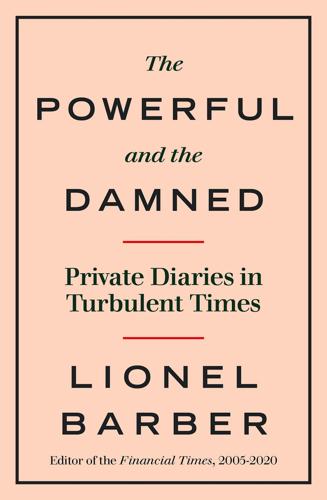
The Powerful and the Damned: Private Diaries in Turbulent Times
by
Lionel Barber
Published 5 Nov 2020
Finally, just as the first reports of coronavirus appeared, I ended my editorship with an interview with Chancellor Angela Merkel in Berlin, a political testament of the greatest defender of the old liberal order. Within weeks, the world was gripped by the coronavirus pandemic. This once-in-a-century phenomenon seems to draw an even heavier line under the years 2005–20, adding an even greater unpredictable element to a world already in disarray, to borrow the phrase of Richard Haass, the scholar, diplomat and president of the Council on Foreign Relations. I have therefore written an epilogue which attempts to assess Covid-19’s impact on the way we live now, and how it will reshape the world in future. Beyond the speculation, it is surely safe to say that Acheson’s world is over.
…
Seven weeks later, the coronavirus pandemic brought the world to a stop. This was not just a bookend to my editorship; it was an emphatic exclamation mark. The fragility of the modern economy and its finely tuned global supply chains was exposed brutally. To be sure, between 2005 and 2020, there were signs that globalisation was in trouble. The financial crisis, mass migration, the rise of national populism and President Trump’s weaponisation of trade tariffs: all these trends threatened the free flow of goods, people and ideas which represented the benign face of globalisation. Covid-19 reinforced the negative trends underway.
…
SoftBank’s Vision Fund reportedly raised $100bn, thanks in part to Saudi money and the personal backing of MBS. They were the new power in the world’s venture capital market, able to amass and deploy funds so colossal that they ended up distorting the whole VC market. But investments like WeWork gradually turned sour and SoftBank itself was forced to dispose of assets – a trend exacerbated by the coronavirus pandemic. MONDAY, 11 JUNE Finally, we’ve nailed the story of Martin Sorrell’s downfall. For the past week, I’ve been editing more than ten drafts of the 4,500-word story co-written by Madison Marriage and Matt Garrahan, a dramatic narrative of how Britain’s most famous advertising tycoon was toppled by hubris, allegations of personal misconduct and a sharp decline in his business.
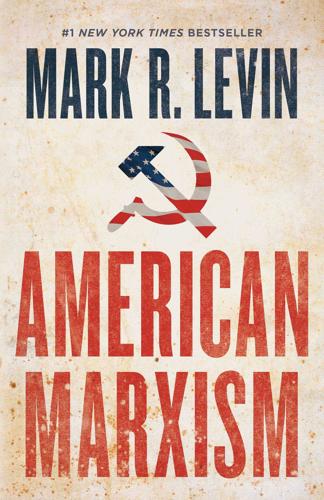
American Marxism
by
Mark R. Levin
Published 12 Jul 2021
Only now they will employ more expansive rhetoric, acknowledging grievances among their constituents that are ordinarily ignored or naming and thus perhaps fueling the aspirations that are only beginning to emerge. Even the threat of defections that jeopardize a majority can prompt electoral leaders to make the pronouncements that contribute to the climate of change and possibility that nourish movements.”61 Indeed, the coronavirus pandemic and the shutting down of our economy, schools, and social activities, and the collective economic and psychological effects on our society, created an environment ripe for exploitation. And that exploitation has occurred both in the halls of power, with far-reaching legislative and executive actions, and in the streets, where organized violence is becoming all too common.
…
Moreover, since the institution of the federal income tax over a century ago, at the birth of American progressivism, redistribution of wealth through the heavy taxation of labor, income, and wealth, supported by Marxist-like class-warfare political propaganda, is a central objective of the Democratic Party. Unfortunately, it resonates today with a significant portion of the population. Indeed, under the guise of the coronavirus pandemic, the Democratic Party has widely expanded the scope and reach of the welfare state, not only doling out trillions of dollars to shore up its political and ideological base, but also ensnaring an ever-larger pool of individuals to government subsidies and transfer payments. The educational transformation has led, in many ways, to the societal transformation intended by the early progressive intellectuals.
…
A hard lesson has been learned, particularly in the last year, that Big Tech is, in fact, an oligopoly of its own, in which a few billionaires censor, suspend, ban, and edit the postings, videos, and comments that offend or challenge the orthodoxy of the Democratic Party, the various Marxist movements, the coronavirus pandemic authoritarians, etc. Facebook billionaire Mark Zuckerberg even contributed hundreds of millions of dollars in grants during the last election to increase turnout in Democratic Party strongholds in key battleground states.21 What can be done about these assaults on our liberty, families, and country?
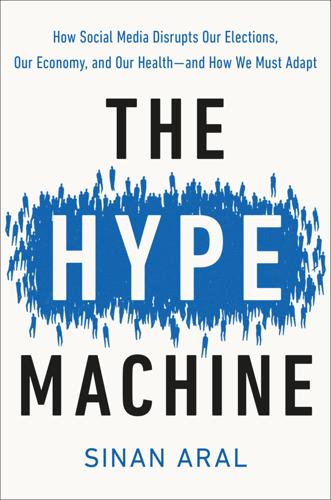
The Hype Machine: How Social Media Disrupts Our Elections, Our Economy, and Our Health--And How We Must Adapt
by
Sinan Aral
Published 14 Sep 2020
Sullivan, adapted for ebook Cover design: Will Brown ep_prh_5.6.0_c0_r1 Contents Cover Title Page Copyright Preface: Pandemics, Promise, and Peril Chapter 1: The New Social Age Chapter 2: The End of Reality Chapter 3: The Hype Machine Chapter 4: Your Brain on Social Media Chapter 5: A Network’s Gravity Is Proportional to Its Mass Chapter 6: Personalized Mass Persuasion Chapter 7: Hypersocialization Chapter 8: Strategies for a Hypersocialized World Chapter 9: The Attention Economy and the Tyranny of Trends Chapter 10: The Wisdom and Madness of Crowds Chapter 11: Social Media’s Promise Is Also Its Peril Chapter 12: Building a Better Hype Machine Dedication Acknowledgments Notes Illustration Sources About the Author The coronavirus pandemic of 2020 was a “black swan” event, the repercussions of which were felt throughout the world’s health systems, economy, and the very fabric of everyday life. Everyone on earth remembers where they quarantined, who they longed to see, and how they coped with the tremendous mental and physical strain the virus exacted. But another dramatic, albeit subtler, consequence of COVID-19 was the rather abrupt shock it delivered to the world’s global communication system—the central nervous system of digital connections that links our planet.
…
It wouldn’t be hard for foreign adversaries to seed false material into the American social media ecosystem, made to seem like real material from the successful Burisma hack, to create a scandal designed to derail the Biden campaign before anyone can debunk it. As we’ve seen, this is the signature of a fake news crisis: it spreads faster than it can be corrected, so it’s hard to clean up, even with a healthy dose of the truth. The threat of election manipulation in 2020 is even higher due to the chaos caused by the coronavirus pandemic. With uncertainty around the viability of in-person voting, questions about voting by mail, and calls to delay the election, there can be no doubt that foreign actors will look to leverage the confusion caused by the coronavirus to disrupt our democratic process. While some claim fake news is benign, during protests and confusion, amid the smoke, fire, and foreign interference, months from the most consequential election of our time, it is a real threat—not only to the election, but to the sanctity and peace of the election process.
…
The weaponization of misinformation and the spread of fake news are problems for democracies worldwide. Fake News as Public Health Crisis In March 2020, a deliberate misinformation campaign spread fear among the American public by propagating the false story that a nationwide quarantine to contain the coronavirus pandemic was imminent. The National Security Council had to publicly disavow the story. And that wasn’t the only fake news spreading about the virus. The Chinese government spread false conspiracy theories blaming the U.S. military for starting the pandemic. Several false coronavirus “cures” killed hundreds of people who drank chlorine or excessive alcohol to rid themselves of the virus.

The Code Breaker: Jennifer Doudna, Gene Editing, and the Future of the Human Race
by
Walter Isaacson
Published 9 Mar 2021
The most common are viruses, bacteria, fungi, and protozoa. Stanley Qi Nathan and Cameron Myhrvold CHAPTER 54 CRISPR Cures The development of vaccines—both the conventional sort and those employing RNA—would eventually help to beat back the coronavirus pandemic. But they are not a perfect solution. They rely on stimulating a person’s immune system, always a risky thing to do. (Most deaths from COVID-19 came from organ inflammation due to unwanted immune-system responses.)1 As vaccine makers have repeatedly discovered, the multilayered human immune system is very tricky to control. In it lurk mysteries. It contains no simple on-off switches, but instead works through the interaction of complicated molecules that are not easy to calibrate.2 The use of antibodies from the blood plasma of recovering patients or made synthetically also helped fight the COVID plague.
…
Before he decided to edit the gene for HIV receptors in the CRISPR babies he created, He Jiankui was studying ways to use CRISPR to make germline edits in the PCSK9 gene of embryos to produce designer babies with far less risk of having heart disease.13 At the beginning of 2020, there were two dozen clinical trials for various uses of CRISPR-Cas9 in the pipeline. They included potential treatments for angioedema (a hereditary disease that causes severe swelling), acute myeloid leukemia, super-high cholesterol, and male pattern baldness.14 In March of that year, however, most academic research labs were temporarily shut down because of the coronavirus pandemic. An exception was made for labs that were engaged in fighting the virus. Many CRISPR researchers, Doudna foremost among them, would shift their focus to creating detection tools and treatments for the disease, some of them making use of the tricks they had learned from studying how bacteria developed an immune response to ward off new viruses.
…
* * * By pondering the question of height, we can make another distinction that is useful: the difference between an absolute improvement and a positional improvement. In the first category are enhancements that are beneficial to you even if everyone else gets them. Imagine there was a way to improve your memory or your resistance to virus infections. You’d be better off with it, even if others got the same enhancement. In fact, as the coronavirus pandemic shows, you would be better off especially if others had that enhancement as well. But the advantages of increased height are more positional. Let’s call it the standing-on-tiptoes problem. You’re in the middle of a crowded room. To see what’s going on in the front, you stand on your tiptoes.
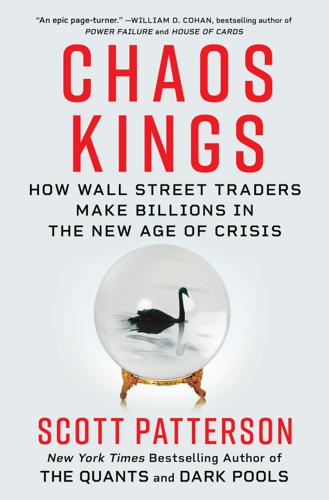
Chaos Kings: How Wall Street Traders Make Billions in the New Age of Crisis
by
Scott Patterson
Published 5 Jun 2023
In the fourteen years before the book was published, black swan appeared 16,569 times in a Factiva search (usually in reference to a piece of choreography in Tchaikovsky’s ballet Swan Lake called “the Black Swan pas de deux”). In the fourteen years after its publication, it appeared 92,561 times. Black Swans filled the skies. In the wake of Covid-19, Lloyd’s of London proposed a Black Swan insurance plan for governments to protect themselves against pandemics and other extreme events. “Despite rampant uncertainty in 2020 stemming from the Black Swan effects of the coronavirus pandemic, U.S. ferrous scrap pricing finished the year strong,” Platts Daily Briefing opined. “Trump was a classic black swan event,” Lionel Shriver observed in the Telegraph. There’s a Black Swan wine, a Black Swan publisher, Black Swan yoga, even an exceedingly eccentric comic strip called Black Swan Man that portrays Taleb as a muscle-bound, costumed figure battling the evils of bitcoin and the Federal Reserve and tossing off advice such as “We must always be vigilant against the problem of induction.”
…
On January 20, 2022, the Bulletin of the Atomic Scientists set the Doomsday Clock at one hundred seconds to midnight—exactly where it had stood since ticking closer to Armageddon in January 2020 as the Covid-19 pandemic exploded across the planet. While the election of Joe Biden as U.S. president had eased tensions, it wasn’t enough to reverse civilization’s death dance with catastrophe, the atomic scientists said. Tense relations between the U.S., China, and Russia, North Korea’s nuclear expansion, the frightful military standoff on the border of Ukraine, the expanding pursuit of biological weapons, the coronavirus pandemic and the threat of future pandemics, unchecked emissions of greenhouse gases that caused global warming, a plague of toxic disinformation on the Internet that had persuaded millions of Americans that the 2020 U.S. presidential election was fraudulent, among a host of other existential risks—all put the world on the edge of a cliff.
…
—occurred in a different world, a world without widespread international air travel, without United Airlines and Lufthansa, without multiple highly congested urban centers of tens of millions. Today’s über-networked global society makes the extreme risk of the ruin problem more of a threat than ever. All hope is not lost, if humanity learns the lesson of the coronavirus pandemic, according to Taleb and his coauthors. In future outbreaks, the response needs to match the threat. The world needs to act as if everything is on the line. That means applying the “precautionary principle,” which, according to the memo, “delineates conditions where actions must be taken to reduce the risk of ruin, and traditional cost-benefit analyses must not be used.”

Investing to Save the Planet: How Your Money Can Make a Difference
by
Alice Ross
Published 19 Nov 2020
In all these thematic chapters we’ll look at some of the high-profile investors backing these ideas, the entrepreneurs coming up with the solutions, and ways that you can get involved, depending on your appetite for risk. Finally, in the conclusion, we’ll look at what still needs to be done by regulators and governments to make it easier for investors both big and small to support climate change solutions. We’ll also look at how sustainable investments have held up during the coronavirus pandemic, and examine the case for building back better. A note before we begin: it’s important to say that this book isn’t trying to tell you what to do. It assumes that you want to know more about how to invest with climate change in mind, but it also aims to help you understand the potential risks involved and make informed decisions.
…
One of the directors sent her something from the communications department that had ‘very debatable’ ideas in it. ‘Obviously my aspirations are for them to go a lot further and faster and deeper but the dialogue is open,’ she says. Interestingly, Jenny was speaking before Shell announced in April 2020 that it was introducing a net zero emissions target even amid huge financial pressures from the coronavirus pandemic. Emboldened, Jenny then went to the Marks & Spencer annual general meeting. AGMs are notorious for having a certain class of retired investor rock up to hear their own opinions and sample the free tea and biscuits. She knew that a long line of these regulars would want to get their questions in first – which tend to be the same every year – and the directors took their time answering.
…
Sales of meat-free food grew 40 per cent over the five years to 2020, and Mintel expects UK sales to rise by another 34 per cent at least by 2024. The proportion of meat-eaters who reduced or limited the amount of meat they consumed rose from 28 per cent in 2017 to 39 per cent in 2019. There were also signs that the coronavirus pandemic would prove a boon for plant-based alternatives. With meatpacking factories shut down across the US and labour shortages affecting production, plant-based factories, where production is more automated, saw less disruption in their supply chains. US sales of plant-based meat substitutes jumped by 265 per cent over an eight-week period, according to consumer data group Nielsen, compared with rises of just 39 per cent for fresh meat.
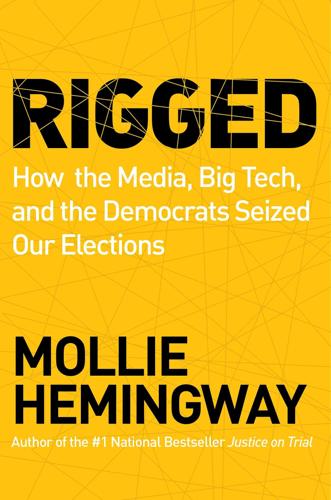
Rigged: How the Media, Big Tech, and the Democrats Seized Our Elections
by
Mollie Hemingway
Published 11 Oct 2021
Official biographers and historians have claimed one or both states would have been won by Nixon in a fair election.14 If concerns about election integrity were valid from at least 1960 through 2016, then surely those concerns were even more valid in 2020, an election year unlike any other in American history. In the lead-up to the election, thanks in part to the coronavirus pandemic that gripped the world, wide-ranging electoral reforms were implemented. Across the country at the state, local, and federal levels, political actors rammed through hundreds of structural changes to the manner and oversight of elections, resulting in what Time magazine would later call “a revolution in how people vote.”15 Some of these changes were enacted by state legislatures, some by courts, and others by state and county election officials.
…
The area has a mix of recent college graduates and senior citizens, such as those in the large retirement community The Villages. It has immigrants from different countries and migrants from the north. Seniors were a serious worry for the Trump campaign, as polling showed them to be the most susceptible to the Biden team’s focus on the approaching “dark winter” for Americans, thanks to the coronavirus pandemic. Momentum had shifted, though, and the Trump team felt confident. Sure enough, the I-4 results came in great. Trump was doing well with seniors, with women, and with non-Cuban Hispanics, too. In 2016, Trump had won Florida by 1.2 percent, the first of many races that went his way.95 Republicans in Florida had won statewide in 2018, but much more narrowly.
…
Marc Elias, “We Are Not Counting Every Vote,” Medium, January 13, 2020, https://medium.com/@marceelias/we-are-not-counting-every-vote-e3b91b4a96f1. 79. Marc Elias, “How to Fix Our Voting Rules before November,” The Atlantic, April 5, 2020, https://www.theatlantic.com/ideas/archive/2020/04/how-fix-voting-right-now/609454/. 80. Ibid. 81. Ibid. 82. Ibid. 83. Quinn Scanlan, “Here’s How States Have Changed the Rules around Voting amid the Coronavirus Pandemic,” ABC News, September 22, 2020, https://abcnews.go.com/Politics/states-changed-rules-voting-amid-coronavirus-pandemic/story?id=72309089. 84. Ibid. 85. Ronna McDaniel, “RNC Chairwoman: Democrats Don’t Want to Play by the Same Voting Rules,” Washington Post, August 27, 2020, https://www.washingtonpost.com/opinions/2020/08/27/ronna-mcdaniel-rnc-chairwoman-poll-watchers-voting/. 86.
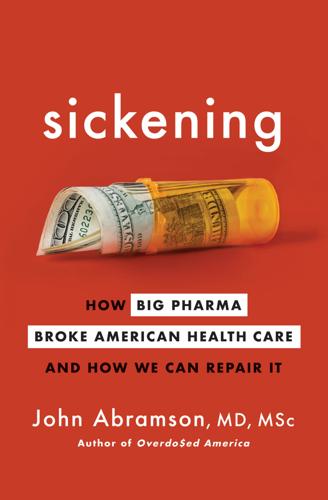
Sickening: How Big Pharma Broke American Health Care and How We Can Repair It
by
John Abramson
Published 15 Dec 2022
The Limits of Obamacare 10. The Key to Meaningful Reform: Fix the Knowledge Problem 11. Reform from the Bottom Up Afterword Acknowledgments Notes Index About the Author Copyright About the Publisher Introduction Tragically, during the first year of the coronavirus pandemic, an average of fourteen hundred Americans lost their lives to COVID-19 every day. Far more tragically, but with far less public awareness, Americans have been dying unnecessarily at almost the same rate for two decades.* This invisible tragedy is occurring not because of a once-in-a-century pandemic, but rather because, compared to citizens of other wealthy nations, we in the United States have such inferior health and health care.
…
Big Pharma does not set out to purposely harm Americans’ health, but its primary job has become the exploitation of each situation as a unique opportunity to maximize profits, regardless of the overall impact on society. The COVID-19 vaccines, touted as highly effective (they are) and free (they are decidedly not), provide a striking example. Historically, vaccine development in the face of acute viral threats — like Zika and SARS — has not panned out financially for manufacturers, so, early in the coronavirus pandemic, they were not enthusiastic about developing and testing vaccines. Three months into the pandemic, as the gravity of the situation became impossible to ignore, the U.S. government launched Operation Warp Speed, an administrative mechanism to create financial incentives rich enough to motivate potential vaccine makers to develop, test, and manufacture vaccines quickly and in large quantity.
…
CEO salaries skyrocketed from “only” 30 times more than that of their average employees in 1976 to 276 times greater in 2017, more than twice as much as in thirteen other wealthy countries. Lest this be considered old news, by 2019 the ratio of CEO to average worker compensation had grown to 320. And then, as ordinary Americans struggled economically during the first thirteen months of the coronavirus pandemic, American billionaires’ net worth increased by an astounding 55 percent. The United States had fully entered the era of gloves-off capitalism. As part of the pharmaceutical industry’s strategy to maximize profits, since 1998 it has spent almost 50 percent more on lobbying in the United States than any other industry.* In the year and a half preceding the 2016 election, the pharmaceutical industry spent an average of $450,000 on lobbying for each of the 535 members of Congress.
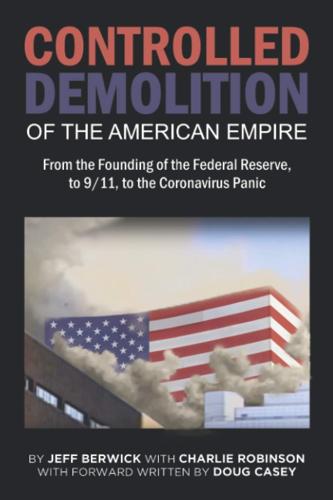
The Controlled Demolition of the American Empire
by
Jeff Berwick
and
Charlie Robinson
Published 14 Apr 2020
Deagel’s proposal, on the other hand, proposed the collapse of the United States through the implosion of the financial markets and the destruction of the medical system, two areas that could be seen as not just possible but probable. A dark analysis and one few people took seriously – until January 2020 revealed the Wuhan bats and rats virus, and the world went crazy. Arguably, the onset of the Coronavirus pandemic has announced the beginning of the end of the American Empire, as well as the Old Word Order. The public have been so brainwashed with Zombie Apocalypse preprogramming through television and movies that it is the end of the world as we know it but we feel fine. Move along everyone, nothing to see here.
…
Think of the Romans, the Russians, the Brits; there is little sympathy for those that were harmed because the observer sees the signs clearly and assumes that the people must have been willfully ignorant to their impending doom. The end of the American Empire has launched a long time ago. It is not an accident and it was not left to random chance. The Coronavirus pandemic is merely the final trigger for the pre-planned explosion. In the end, those that review how it all ended will feel the same way, have the same lack of empathy, and wonder the same things: how did they not see it coming, the signs were everywhere – starting with the flashing neon red arrows pointing out rogue governments all over the world.
…
The censorship of these thoughts has migrated from the real world into the cyber world, as internet censorship has been ramped up in recent years because the controlling power structure has noticed that most people are moving online to source their news and information. It does beg the question, do flat-Earthers believe in globalism? Internet Censorship Never before have Americans seen the internet censorship in action as much as during the Coronavirus pandemic. Facebook, YouTube, even the comments sections on news sites have blocked and removed anything that opposes their mainstream paid-for narrative with alarming alacrity. Censorship is what happens when powerful people get nervous, so the rise in online censorship is both a good thing and a horrible thing.

We're Not Broken: Changing the Autism Conversation
by
Eric Garcia
Published 2 Aug 2021
Public policy has also begun to move in favor of parent advocates like Lutz and Solotaroff. In 2017, CMS under the Trump administration gave states until 2022 to show they are complying with the new rule when they were initially meant to comply in 2019. In 2020, CMS again extended the compliance deadline until March 17, 2023, amid the coronavirus pandemic. Then in 2019, CMS released new guidance on the settings rule. While it kept the rule in place, it changed the criteria—which it claimed it streamlined—for settings that isolate and removed the list of specific settings that isolate. Most notably, it also said, “Settings located in rural areas are not automatically presumed to have qualities of an institution, and more specifically, are not considered by CMS as automatically isolating to HCBS beneficiaries.”
…
For example, if I get excited talking about a subject, I worry I am dumping all the information I know on my partner (and if it’s a topic on which my date is an expert, I absolutely do not want to condescend to her by overexplaining). If we are seated across from each other, I worry she will take offense at me not making eye contact. Online dating during the coronavirus pandemic had definitely sucked, but one good thing about it was that it made eye contact almost a nonissue and I could fidget with my keys or a pen as a stim. In short, masking and blending my autism makes dating difficult. I am used to hearing people say, “You don’t seem autistic.” When I was younger, I took it as a compliment.
…
But his approach did support phasing out subminimum-wage labor and asking the U.S. Justice Department to review guardianship laws and promote alternatives like supported decision-making. Biden also released an entirely separate platform specifically focused on people with disabilities during the coronavirus pandemic. But at the same time, when Biden—who has been known for making verbal gaffes that range from the benign to the outright nonsensical—was rolling out his disability plan, he said that “everybody has some form of disability,” which is patently not true. While it is true that disability affects everyone’s lives (disability rights advocates often say that it’s one of the few minority groups you can join), saying everyone has some form of disability flattens the experiences of people whose disabilities prevent them from living their lives.

The Lords of Easy Money: How the Federal Reserve Broke the American Economy
by
Christopher Leonard
Published 11 Jan 2022
Mnuchin knew how to manage sensitive situations and how to deal with problematic investors and clients. He also had a preternatural ability to blend into the background of the Trump administration while also retaining influence. Mnuchin could do this, in part, because he excelled at doing what Trump hated doing most, which was getting involved in details. When the coronavirus pandemic crushed the American economy, it was Mnuchin, not Donald Trump, who took the lead role in negotiating with Congress on behalf of the White House. This was a delicate job, since the House was controlled by Democrats and the Senate controlled by Republicans. Mnuchin talked frequently with Nancy Pelosi, the Democratic Speaker of the House, building a bridge between the White House and the opposition party.
…
“The day we jointly announced that transaction—and the commitment to it—that unlocked the entire corporate bond market,” Mnuchin later said. These actions, as dramatic as they were, directly benefited only a small group of people: those who owned assets or those who made a living trading them. But the financial crisis the Fed was fighting was a different thing than the much broader crisis of the coronavirus pandemic. The virus was inflicting incalculable damage across American society, in areas the Fed could not address. The hospital system was overwhelmed. Emergency room nurses wore improvised protective gear made out of garbage bags. The virus spread more quickly because many workers who got sick did not have paid sick leave, so they stayed on the job and infected others.
…
That view was outdated, she suggested, in part because the financial system had become so dominated by hedge funds, private equity firms, or other entities that were sometimes referred to as the “shadow” banking system. The Fed was there to back them all up, in times of crisis. “This is why the Fed was invented and this is what they’re doing now,” Yellen said. She portrayed the coronavirus pandemic as something like a bank panic that went beyond the banks and affected the entire American economy. The Fed was now the lender of last resort for everyone. “When [the coronavirus] came along and people realized how very serious it was going to be, there was just a huge, broad-based flight from risky assets of every type.
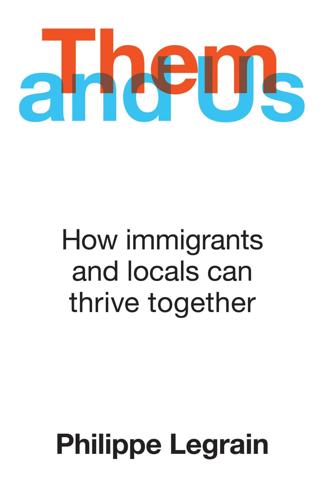
Them and Us: How Immigrants and Locals Can Thrive Together
by
Philippe Legrain
Published 14 Oct 2020
Some of you may have read my first, Immigrants: Your Country Needs Them, which was published in 2007.28 If so, thank you; I’m hugely grateful to all of you who have read my four previous tomes. If not, thank you for taking a chance with this book; I hope you find it stimulating and useful. Why, though, do I need to write another book on immigration? For a start, the political context has changed so much since 2007. The financial bubble has burst, the coronavirus pandemic has struck, nationalists are on the march and liberals are on the back foot. A silver lining of the increased controversy about immigration is that it has stimulated plenty of new academic research, providing better insights into its impacts. While Them and Us is aimed at a much wider audience, it draws on this deep well of knowledge and scholarship.
…
By some measures, that makes me a temporary migrant. Yet my shortest stay in the country was only two days. Does that really make me an immigrant? What if I stayed for a few weeks as a consultant assisting local businesses? Or was seconded to a local organisation for several months? Where does one draw the line? While the coronavirus pandemic has brought most of the world to a halt, mobility will resume once it passes. Until recently, more people were on the move than ever before – and no doubt many will soon be moving again. Most move temporarily, often for only a few months. But official statistics count as migrants only those who stay longer than a year.
…
Even though many people could work remotely and sometimes do, people still tend to cluster together in offices and big cities, where they spark off each other and engage in office politics to try to get ahead. There is also much more to university than lectures, not least mixing with other students. While the coronavirus pandemic has accelerated the adoption of digital working, it has scarcely extinguished the desire for human contact. Moreover, all sorts of services will continue to need to be delivered locally for the foreseeable future. Old people cannot be cared for from afar. Offices and hotel rooms have to be cleaned on the spot.

Binge Times: Inside Hollywood's Furious Billion-Dollar Battle to Take Down Netflix
by
Dade Hayes
and
Dawn Chmielewski
Published 18 Apr 2022
The crowd in the United Palace roared its approval. Moviegoing, one of the oldest rituals in American cultural life, had officially returned after the depths and deprivations of the coronavirus pandemic. The atmosphere in the theater turned celebratory, even giddy, a mood uncannily matched by the high-spirited film itself. The premiere of In the Heights was kicking off the twentieth annual Tribeca Film Festival, the first festival in North America to feature in-person screenings since COVID-19 hit in early 2020. “Before COVID,” Tribeca cofounder De Niro said before the lights went down, “the simple act of going out to a movie theater was something that you would take for granted.
…
Working with other execs with traditional backgrounds, among them indie film veteran Ted Hope, Berney tried to carve out a path for Amazon in which it would marry its tech muscle and resources with old-fashioned cinematic tastemaking. It worked well for a time, but then the hot streak cooled. The company paid lavish sums to acquire festival titles like Late Night and Brittany Runs a Marathon, which fizzled in commercial release but performed well in streaming, the company said. Even before the coronavirus pandemic made specialty theatrical releases a major question mark, Amazon began to adjust course and started to favor bigger, splashier titles that could make waves even without theaters. Annette, a not-entirely-coherent musical directed by an auteur’s auteur, Leos Carax, which starred Adam Driver and Marianne Cotillard and had opened the 2021 Cannes Film Festival, was acquired for North America by Amazon Studios.
…
He immediately seized on its potential, and then took our black-and-white 4:3 idea and showed us how it could be rendered in full CinemaScope. We are forever grateful for his vision, guidance, and friendship. The home Daniel found for the book, William Morrow, turned out to be ideal. Our sage, shrewd, and companionable editor, Mauro DiPreto, retained every bit of his original enthusiasm for the project even as the coronavirus pandemic blew it—and publishing, and civilization—sideways. We benefited at every step from his equanimity and wisdom. Grazie mille, Mauro! Our sincere thanks also go to Morrow’s Vedika Khanna for keeping the many editorial elements on track, and to Aja Pollock, our sharp-eyed copy editor, whose thoroughness and flair for culture high and not-so-high are an exceedingly rare combination.
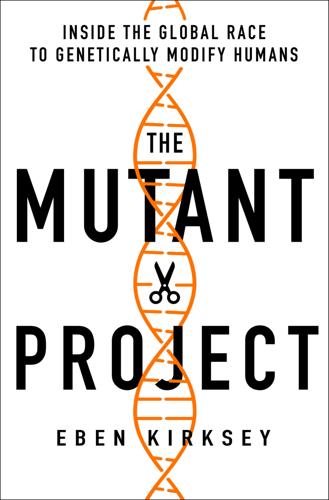
The Mutant Project: Inside the Global Race to Genetically Modify Humans
by
Eben Kirksey
Published 10 Nov 2020
By the time I was finally able to step back from it all, and seriously reflect on my international journey in the world of genetic medicine, these cutting-edge medical technologies were losing luster. Public sentiments about high-tech medicine and biotech futures had undergone a historic shift. I was corresponding with Donna Haraway about CRISPR ventures at a moment when the coronavirus pandemic had just upended the modern world. I was experiencing what seemed like mild COVID-19 symptoms myself, but even in my position of relative privilege I was unable to access a test through normal channels—like millions of other Americans. “I see CRISPR technologies inside capitalist and individualist medicine that distracts healers (and investment) from the medicine we need,” Donna Haraway wrote.
…
“Under other conditions, I can imagine CRISPR technologies enhancing collective well being and even as tools of personal experimentation,” she added. But, she concluded, “genetic modifications should get a demotion in ideology and take their mundane place among flawed tools for coping with aspects of well being and suffering.” The coronavirus pandemic was making it clear that humanity needed robust public health services, not exorbitantly priced genetic medicine. As millions were infected with the novel virus, the desire for a cure was strong. “The world is clamoring for fine-tuned vaccines and mass-produced genetic as well as serological tests,” Haraway observed.
…
“All these require the latest innovations in genetic medicine—the machines, the workers, the ways of knowing, the habits of trust in science.” We are still in Haraway’s world of the cyborg, full of potent and ironic contradictions. On Facebook, some people joked about CRISPR rescuing us from the coronavirus pandemic. One friend made a post on my wall about ACE2, the receptor that the virus uses to get into cells. “We just need to get rid of ACE2 receptors!!!” she wrote. “Why didn’t they tell us this before!? Life saver! I’ll go cut mine off now!” During the pandemic, the American public watched as the latest scientific knowledge and technological devices failed to protect them.

How to Work Without Losing Your Mind
by
Cate Sevilla
Published 14 Jan 2021
But it would be naive and, quite frankly, silly of us to give a celebratory Mary Tyler Moore beret-toss when we know that, actually, things are still unequal. We shouldn’t exactly be grateful that we’re no longer only relegated to secretary or assistant positions, or thrilled that we’re even ‘allowed’ to be at work. In fact, during the coronavirus pandemic, it became alarmingly clear that women are indeed the backbone of our economy and what keeps our societies functioning. The New York Times reported in April 2020 that while normally men make up the majority of the American workforce, during the pandemic when everything was stripped back to the bare necessities – one in three jobs held by a woman was designated as essential.6 From nurses and pharmacy technicians to supermarket cashiers, the New York Times wrote that this ‘unseen labor force’ whose work is often ‘underpaid and undervalued’ is actually what ‘keeps the country running and takes care of those most in need, whether or not there is a pandemic’.
…
What I’m trying to say is that none of that is authentic – it’s performative and even reductive. Because at the heart of the troubles many of us have with ‘adulting’ is a real, generational issue. It’s not laziness, sensitivity or a deficiency – it’s a symptom of a wider cultural problem. Our culture of burnout and over-productivity was laid bare as the coronavirus pandemic progressed. ‘We’re not working from home in a pandemic,’ we were told by different people in various ways, ‘You’re at home, in a pandemic, trying to work.’ Instead of hustling, the popular thing to do was to encourage others to look after themselves, to remind us all that self-care mattered more than ever, and that rest was important too.
…
You shouldn’t be left on your own to just figure it out and hope your next rating is better. You should also never feel that, if someone goes to your manager with some gossipy tittle-tattle, they will take it as gospel and put you in a position of having to defend yourself. Managing in a crisis As the coronavirus pandemic gathered pace, the businesses and companies impacted were sent very quickly into full-blown crisis mode across every aspect of their business. From ill members of staff to remote working to IT issues with everyone working remotely to furloughing or laying off staff and closing entire departments or completely shutting down – managers and those in leadership positions were very quickly forced to deal with issues and situations that most had never had to tackle before – and certainly not all at once, during something as intense and as threatening as a global pandemic and threatened economic collapse.

Deadly Quiet City: True Stories From Wuhan
by
Murong Xuecun
Published 7 Mar 2023
Australia’s proposal for an international inquiry into the origins and responses to the coronavirus pandemic is gathering international support, with the EU collecting signatures for a motion establishing an inquiry at the meeting of the World Health Authority. The performance of the WHO will also be investigated. More than 100 million residents of north-east Chinese province Jilin are put into lockdown after outbreaks of COVID-19. On 19 May, the World Health Assembly adopts without opposition a resolution to establish an inquiry into the origins and responses to the coronavirus pandemic. COVID-19 cases exceed five million globally, with 340,000 dead.
…
Everyone has a personal QR code which is required to prove you are legal and uninfected just to be able to take subway journeys, enter restaurants, or shop at supermarkets. No one cares anymore about privacy or rights because they disappeared long ago in China. In the foreseeable future, COVID-19 prevention policies that treat people with contempt will continue. When the day comes that COVID-19 is no longer a pandemic, Xi Jinping will not relinquish ruling by QR code. It will shackle China for a long time to come because the QR codes report people’s movements; and when required it can be changed to ensure that ‘petitioners’ and dissidents, as well house church congregants, have no options to seek justice.
…
You will hear the inner voices of people who were unable or too scared to speak out. You will share their torments. But bear in mind that these tragedies are just the beginning of an even greater tragedy. * On 27 July 2022, while living in Australia, I became infected with COVID-19, but unlike my compatriots I did not feel fear or concern. Instead, I felt relieved. I wrote a book about Wuhan, detailing many stories about COVID-19 but I had not actually experienced the illness myself. That had been on my conscience. ‘It’s all right,’ I could now whisper to myself. ‘I finally know what it’s like.’ My symptoms were very mild, like a light cold with a slight fever and aching muscles.
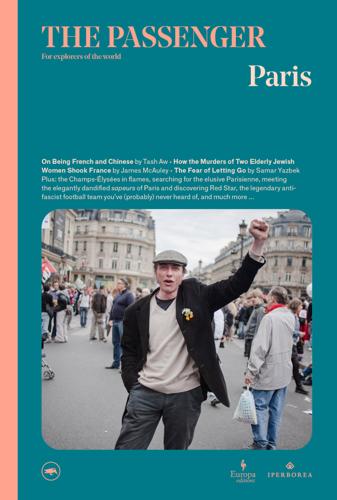
The Passenger: Paris
by
AA.VV.
Published 26 Jun 2021
The glare of the City of Light can be blinding, even for tourists: when faced with the reality of a city so different from the cherished image portrayed in films and books, some even develop a kind of culture shock known as Paris Syndrome. But the shadows seem to be lengthening, too: the Bataclan terrorist attacks, the protests of the gilets jaunes, unrest in the banlieues, Notre-Dame in flames, record heatwaves, unaffordable housing and the Coronavirus pandemic. This is not just a series of unfortunate events, these are phenomena – from overcrowding to climate change, from immigration to the repercussions of globalisation and geopolitics – that all the world’s major cities must face. Despite these challenges, the current mood in Paris remains one of renewal rather than defeat; this we can see in a new approach to environmentalism and urban planning – the dream of a city made up of numerous little centres, ultimately all interconnected – a younger generation of chefs fighting against the Michelin-star ‘class system’, the children of immigrants protesting on the streets for the right to be accepted as French and women casting off the stereotypes created for them by the world of fashion.
…
Yes, Paris and its art, its lights and its many layers that I had willingly and consciously chosen is what rekindled this excitement for me, without attempting to deceive me about what was taking place on its other, less agreeable face, one that most large and great cities also possess. Lately, and during the quarantine that followed the Coronavirus pandemic, as residents of Paris we were allowed to walk around the city only for a specific length of time over limited distances, I would go out for a walk wearing a mask for an hour in the morning and an hour in the evening. I saw the museums, the Eiffel Tower and the famous squares with their statues all deserted as if we were awaiting the Day of Judgement.
…
While Kassovitz hails from central Paris, Ladj Ly, director of the more recent Les Misérables, was born in Mali and raised in Montfermeil, the home of Victor Hugo’s original misérables and the location for his film. Ly became the first black director to win a César for best film. These productions emphasise the harshest realities of the department, which, particularly since the 2005 banlieue riots, has been synonymous with urban poverty and inequality, as is further illustrated by its higher incidence of Covid-19 than the rest of the country. The 93 is the department with the highest unemployment rate in the whole of France (with levels of 50 per cent among young people). It is also the department with the highest concentration of immigrants (two-thirds of the children born in 2015 had at least one parent born abroad), many of them from the former colonies of North and West Africa.

Buy Now, Pay Later: The Extraordinary Story of Afterpay
by
Jonathan Shapiro
and
James Eyers
Published 2 Aug 2021
Allen & Unwin 83 Alexander Street Crows Nest NSW 2065 Australia Phone: (61 2) 8425 0100 Email: info@allenandunwin.com Web: www.allenandunwin.com ISBN 978 1 76087 946 4 eISBN 978 1 76106 236 0 Index by Puddingburn Internal design by Midland Typesetters Set by Midland Typesetters, Australia Cover design: Philip Campbell Design Cover photographs: Shutterstock (headphones, bag); iStock (shoes) CONTENTS Prologue 1 Rags to Riches 2 Asset Strippers 3 Lay-by 4 Touch Point 5 Little King 6 Going Public 7 The Unsuspected Secret 8 Mickey Mouse and Marijuana 9 Broker Wars 10 Short on Time 11 House of Cards 12 Taking Credit 13 The Cub Club 14 Going Viral 15 Standing Down 16 Trending 17 Once in a Lifetime Epilogue Acknowledgements Notes Bibliography Index PROLOGUE ‘TREPIDATION’ IS THE word we both had scrawled and underlined in our notepads after a half-hour Zoom call with Anthony Eisen and Nick Molnar, the founders of Afterpay. The call was held on Tuesday, 19 January 2021, when most of Australia was enjoying a summer holiday after a traumatic 2020, which had seen the world ravaged by the coronavirus pandemic. Nick dialled in from ‘Nicko’s iPhone’. He was unshaven and crouched under a staircase in his holiday house in Byron Bay. The scheduled time of 1 pm coincided with the nap time of his second child, who was only a few months old. Anthony logged on from his desk at Afterpay’s Melbourne office, in a Collins Street tower with views of the city in the background.
…
Many big brands—not to mention the share market—had come to appreciate that. By the end of 2020, the combined share-market value of Scentre Group, which operates the Westfield shopping centres in Australia and New Zealand, and Unibail Westfield, which owns its US and UK malls, was roughly equal to that of Afterpay at $30 billion. The coronavirus pandemic had moved the scales: at the start of the year, the malls had been worth $50 billion, while Afterpay was valued at $8 billion. With the virus receding, Sydney was opening up for business and events, and Australian fashion was getting the spring back in its step. It had survived the worst of the pandemic, and before that the hordes of foreign, ‘fast fashion’ invaders such as Zara, H&M and Uniqlo, which had opened stores in iconic locations in a challenge to local brands.
…
Long-term bond rates were rising, not falling, and the pace at which they headed higher was accelerating. The US ten-year bond rate—the discount rate for almost every asset—lingered at around 0.8 per cent at the start of 2021. It gradually drifted north, but in February it accelerated to 1.7 per cent. The reason was that the rollout of vaccines to tackle the coronavirus pandemic meant it was only a matter of time before economies reopened at full capacity. Already the data pointed towards a better-than-expected recovery. The consequence of that was that workers’ wages across the economy would eventually rise, and prices for goods and services would begin to rise.
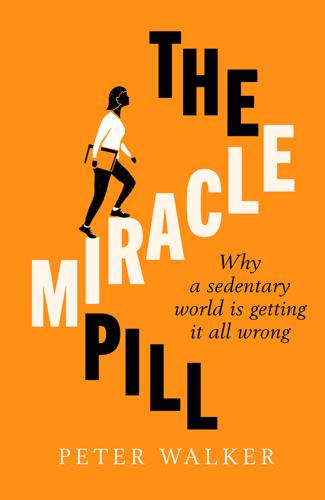
The Miracle Pill
by
Peter Walker
Published 21 Jan 2021
Calculating an overall economic cost is hugely difficult, but one study by the London-based World Obesity Forum, which gathers scientific expertise on the subject, estimated that by 2025 the total global bill connected to obesity would be around £950 billion.20 The association of excess weight with generally poorer health outcomes has been highlighted anew by the coronavirus pandemic. To reiterate, this book is being written during the period of its peak in the UK, and many of the public health lessons are only emerging. But one repeated feature of studies both in China and Europe has been the greater probability of obese patients to require hospital treatment for the Covid-19 virus, and also to die. The energy balance How did the world get to this point? The answer in its broadest terms was expressed with great eloquence more than sixty years ago by one of the first experts to warn about the then-nascent obesity crisis.
…
Even though its consequences have been well known for decades, inactivity is what you might call a normalised catastrophe. Governments rarely pass laws, or hold urgent press conferences to pledge action, instead focusing on generally ineffective public information campaigns. Until now, perhaps. By coincidence, this book is being written while the UK and many other countries are in lockdown due to the coronavirus pandemic. And here, as the world has seen, a swift and coherent response to health emergencies is very much politically feasible. Ministers have not hesitated to close whole sections of their national economies and severely restrict individual freedoms to save lives. For the most part, at time of writing, the public have supported these actions.
…
Does this mean countries like the UK are condemned to limp on with an ever-growing personal and societal burden connected to immobile living? For all Pukka Peska might dismiss the idea of the Finns being special, can other countries change? The answer for now is that we don’t know. But one thing is clear: other countries have shown they are able to act decisively. A lesson from the coronavirus pandemic has been that when it comes to governments interfering directly in the lives of their populations to keep them healthy, things can change very quickly indeed. Next steps: If a lot of countries, like the UK, are not as motion-friendly as Finland or Slovenia, that can in part be because MPs and councillors don’t really consider it an issue.

The Price Is Wrong: Why Capitalism Won't Save the Planet
by
Brett Christophers
Published 12 Mar 2024
If this represented an energy crisis, it was generally not one for electricity generators, still less for renewables generators more specifically, except perhaps to the extent that lockdowns impinged on the ability of contractors to start, progress or complete new renewable energy developments. No: the COVID-19 energy crisis, such as it was, was a crisis, or so it appeared, for fossil fuels. As demand for oil and gas plunged, in particular in the transport sector, so also did oil and gas prices. From around $70 per barrel at the beginning of 2020, the oil price had collapsed to less than $30 by March, and it would remain below $50 for the rest of the year. ‘Broken and in survival mode’, then, was how the Guardian, for instance, described the state of the global fossil fuel industry in April 2020, as a result of ‘plunging demand for oil wrought by the coronavirus pandemic combined with a savage price war’.16 Citing industry experts, the newspaper said that the industry faced ‘the gravest challenge in its 100-year history’ and confidently predicted that it would emerge from the crisis permanently altered.
…
Will Mathis and colleagues recently wrote an excellent, illuminating article about this for Bloomberg.18 Governments’ selective scaling back of subsidies to renewables generators in the second half of the 2010s, they noted, put pressure on generators’ profits that those generators were partly able to pass upstream to their technology suppliers through reductions in equipment prices. The resulting squeeze on manufacturers’ profits, compounded by the rise in costs of raw materials such as iron and silicon as the world reeled from the coronavirus pandemic, eventually saw the manufacturers respond. Vestas, one of the world’s largest turbine makers, for example, raised the price of its turbines by on average more than 20 per cent in 2021. The effect? A squeezing of generators’ profits. Meanwhile, the book’s argument that such squeezed profits represent a clear and present threat to ongoing investment in new renewable generating capacity should not be interpreted as a refutation of the significance of other obstacles to the decarbonization of electricity.
…
Massive growth in installations of solar capacity in 2019–20 in response to generous government incentives was succeeded in short order by the all-too-familiar bust in the form of ‘oversupply’, ‘wasteful curtailment’ – ‘a big burden for projects’ IRR’ – and generators ‘unable to pay bank debts on time’. A creaking transmission system with limited capacity that had not been upgraded in line with burgeoning generating potential was bad enough. The savaging of demand by the coronavirus pandemic temporarily made matters worse: in October 2021, daily electricity consumption only accounted for up to 40 per cent of installed generating capacity nationwide. This translated into epic curtailment rates.42 Meanwhile, a very different approach to curtailment has been taken in countries such as the UK, which have actively eschewed the Darwinianism of their Indian and Vietnamese counterparts.

The Land of Hope and Fear: Israel's Battle for Its Inner Soul
by
Isabel Kershner
Published 16 May 2023
At the crossroads of Western, Mediterranean, and Middle Eastern civilizations, the fusion that invigorated Israel’s vibrant new cuisine and pop culture did not always translate so easily into the political realm and worldviews. In these parts, Netanyahu’s popularity appeared to defy the laws of gravity. The deeper he sank in graft allegations, the more his political stock went up. Even as his trial got underway and the coronavirus pandemic ravaged the economy, his political wizardry kept confounding his rivals. In Kiryat Malachi, another inland city of some 25,000 residents, north of Netivot, there was a similar consensus. “We are all Bibi,” said Erez Madar, a fashionable hairdresser in his early thirties who ran a salon off the city square.
…
Even Nahal Oz, the kibbutz within Palestinian mortar range on the border with the Gaza Strip, quickly found sixteen families to replace those who had left the kibbutz in trauma after the fifty-day war in the summer of 2014. Some kibbutzim, like Maayan Zvi, were selling plots to outsiders who built homes there and paid for kibbutz services but had no stake in the community assets. Others took in new blood as full kibbutz members. The coronavirus pandemic only added to the demand, with low infection rates inside the kibbutzim, which offered a respite from urban restrictions and lockdowns. Some registered a 100 percent increase in inquiries. The only thing preventing even greater expansion, according to Meir, the Kibbutz Movement secretary, were limits placed by the government on new zoning and building permits
…
Somewhat unorthodoxly, he subscribed to The New York Times, The Washington Post, and the British Daily Mail, the latter, he said, being the best at dishing up the dirt. His Twitter banner at the time read “Gevalt,” a Yiddish cry of alarm and protest that was often used during panicked political campaigns to rally voters during elections and translated as “Oy vey,” but with a weightier sense of doom. We met during the first wave of the coronavirus pandemic, at the peak of fear. The infection was raging through Israel’s ultra-Orthodox community, fueled by the typically crowded living conditions as large families crammed into small, airless apartments and by the Haredi way of life that revolved around communal prayers and gatherings, coupled with a misplaced faith in some rabbis who put the community’s spiritual welfare above physical well-being.

Revenge of the Tipping Point: Overstories, Superspreaders, and the Rise of Social Engineering
by
Malcolm Gladwell
Published 1 Oct 2024
See “Air Quality Is Getting Worse in Denver” by Alayna Alvarez, Alex Fitzpatrick, and Kavya Beheraj (Axios, May 5, 2023): https://www.axios.com/local/denver/2023/05/05/denver-air-quality-ozone-pollution For William Ristenpart’s research on the airborne nature of COVID, see “The coronavirus pandemic and aerosols: Does COVID-19 transmit via expiratory particles?,” a report he cowrote with Sima Asadi, Nicole Bouvier, and Anthony S. Wexler for Aerosol Science and Technology 54, no. 6 (April 2020): 635–38. https://www.ncbi.nlm.nih.gov/pmc/articles/PMC7157964/ Some of the World Health Organization’s social-media posts insisting that COVID-19 is not airborne appear at https://x.com/WHO/status/1243972193169616898?lang=en, https://www.facebook.com/WHO/posts/fact-covid-19-is-not-airborne-the-coronavirus-is-mainly-transmitted-through-drop/3019704278074935/, and https://www.instagram.com/p/B-UieTUD42A/?
…
Their paper was published at the beginning of April 2020, alongside an article headlined “Humidity, density, and inlet aspiration efficiency correction improve accuracy of a low-cost sensor during field calibration at a suburban site in the North-Western Indo-Gangetic plain.” The paper was entitled “The coronavirus pandemic and aerosols: does COVID-19 transmit via expiratory particles?” It’s safe to say that few people outside the aerosol world read it—which is a shame, because Aerosol Science and Technology was one of the first major scientific publications to correctly describe the COVID epidemic. The instigator of the paper was William Ristenpart, who teaches at UC Davis, in northern California.
…
igshid=177u2acyfs7oy For the study about the alpha variant’s rapid leveling up in aerosol production, see the paper “Infectious Severe Acute Respiratory Syndrome Coronavirus 2 (SARS-CoV-2) in Exhaled Aerosols and Efficacy of Masks During Early Mild Infection,” published in Clinical Infectious Diseases 75, no. 1 (July 2022): e241–e248. https://www.ncbi.nlm.nih.gov/pmc/articles/PMC8522431/#:~:text=The%20alpha%20variant%20was%20associated,swabs%2C%20and%20other%20potential%20confounders The WHO eventually did concede that COVID-19 is airborne, as documented on its FAQ page, “Coronavirus disease (COVID-19): How is it transmitted?,” which is marked as having last been updated on December 23, 2021: https://www.who.int/news-room/questions-and-answers/item/coronavirus-disease-covid-19-how-is-it-transmitted The 1970s study of the highly infectious little girl with measles in Rochester is from E. C. Riley, G. Murphy, and R. L. Riley’s “Airborne Spread of Measles in a Suburban Elementary School” in the American Journal of Epidemiology 107, no. 5.
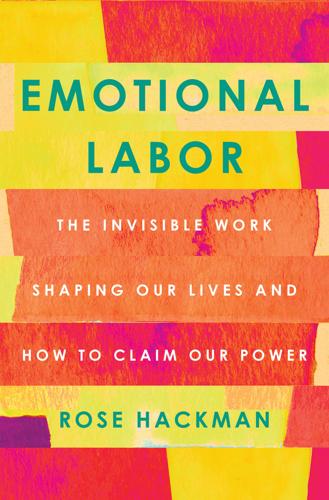
Emotional Labor: The Invisible Work Shaping Our Lives and How to Claim Our Power
by
Rose Hackman
Published 27 Mar 2023
It is the only country among the world’s twenty wealthiest to not provide affordable universal health care to its citizens.8 Among forty-one developed nations, the United States is the only country to still not guarantee its citizens—mothers or fathers—any paid parental leave at all.9 In March 2021, after a year of economic crisis during which unemployment doubled because of the coronavirus pandemic that by then had killed half a million people in the United States, President Joe Biden signed into effect a $1.9 trillion COVID-19 relief package that was set to create the largest expansion to the social safety net in a generation. Among the policies introduced was an expanded child tax credit that would provide families up to $3,600 a year per child.
…
The effects of this draining emotional labor seep into her private life, where she is trying to complete a graduate degree while providing a steady, loving environment for her sixteen-year-old daughter. “People say whatever happens at work stays at work. That doesn’t work with me,” she says of the supposed clear separation between work life and private life, a complaint that became nearly universal to working women with families during the initial years of the coronavirus pandemic. At home, as a single mother of a dark-skinned Black female teenager, Bri, Ashley doesn’t just juggle all of the domestic duties and bills; she is also sole counselor to and champion for her daughter, whose basic needs she feels the system is failing. After some boys started bullying her for her looks, Ashley noticed her young daughter internalizing more and more negative messages about herself.
…
“Men Have Now Recouped Their Pandemic-Related Labor Force Losses While Women Lag Behind,” National Women’s Law Center, February 4, 2022, accessed February 12, 2022, https://nwlc.org/resource/men-recouped-losses-women-lag-behind/. 15. “Low-Paid Women Workers on the Front Lines of COVID-19 Are at High Risk of Living in Poverty, Even When Working Full-Time,” National Women’s Law Center, April 2, 2022, accessed February 13, 2022, https://nwlc.org/press-release/low-paid-women-workers-on-the-front-lines-of-covid-19-are-at-high-risk-of-living-in-poverty-even-when-working-full-time/. 16. Gus Wezerek and Kristen R. Ghodsee, “Women’s Unpaid Labor Is Worth $10,900,000,000,000,” The New York Times, March 5, 2020, https://www.nytimes.com/interactive/2020/03/04/opinion/women-unpaid-labor.html. 17.
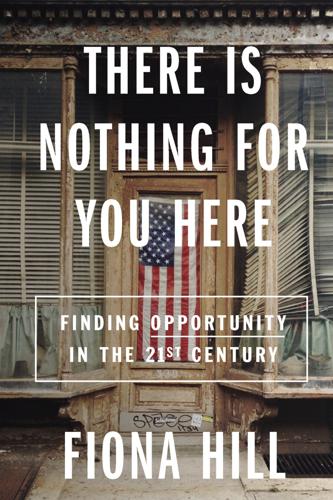
There Is Nothing for You Here: Finding Opportunity in the Twenty-First Century
by
Fiona Hill
Published 4 Oct 2021
ad hoc manner: Julian Borger, “ ‘Trump thought I was a secretary’: Fiona Hill on the president, Putin and populism,” Guardian, June 12, 2020, https://www.theguardian.com/us-news/2020/jun/12/fiona-hill-trump-putin-populism-interview. four hundred thousand Americans: “COVID-19 United States Cases by County,” Johns Hopkins University and Medicine Coronavirus Resource Center, accessed April 29, 2021, https://coronavirus.jhu.edu/us-map. close to two hundred thousand: “Coronavirus in the U.S.: Latest Map and Case Count,” New York Times, updated April 29, 2021, https://www.nytimes.com/interactive/2021/us/covid-cases.html. Urgent action: Joe Davidson, “GAO report slams Trump administration response to the coronavirus pandemic,” Washington Post, February 3, 2021, https://www.washingtonpost.com/politics/gao-trump-covid-biden/2021/02/02/38f0a0a8-65a4-11eb-bf81-c618c88ed605_story.html.
…
In the United States, the political agenda for developing the economy is usually initiated at the federal level. As a result, it changes with every new administration. But state and local problems remain the same—their development issues persist irrespective of who is in the White House. To create and restore the infrastructure of opportunity after the coronavirus pandemic, the United States will have to balance a place-based and local- and state-driven development agenda with national-level programs. America’s towns and cities and rural areas need continuity of policy. And this modest goal is within their reach. After four years of the Trump administration, the government agencies dealing with economic development issues were hollowed out and their career staffs demonized like other public servants.
…
America has long been a world leader in individual philanthropy. In December 2020, for example, MacKenzie Scott, the former wife of Amazon founder Jeff Bezos, donated more than $4 billion to a wide range of long-established but underresourced entities in direct response to the ravages of the coronavirus pandemic. These included historically Black universities and colleges and nonprofits with programs targeted at working-class Americans, alleviating economic hardship and promoting upward mobility. Ms. Scott’s focus was on “no strings attached” philanthropy. Although she and others acknowledged that her donations could not substitute for government funding, they would make a significant difference.
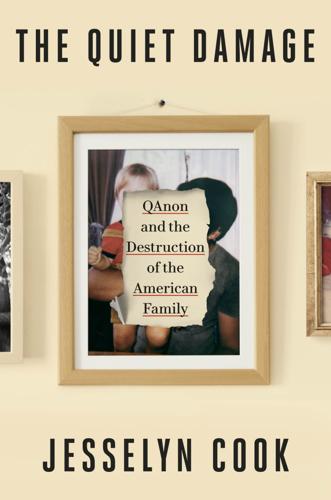
The Quiet Damage: QAnon and the Destruction of the American Family
by
Jesselyn Cook
Published 22 Jul 2024
Some suggested that she was really in hiding. One wrote a four-thousand-word blog post implying that she’d been assassinated. But as the world battled a new virus called SARS-CoV-2, most agreed on what must have killed her: the vaccine. * * * — Dale and Doris were already nearing a crisis point by the time the coronavirus pandemic hit. Though his hair was mostly gone, save for a thinning white combover, Dale was still the same gentle soul who’d fallen in love in the fall of 1968: a man who literally stopped to smell the roses, and used words like swell and golly. It was Doris who’d changed. As in The Notebook, where an elderly Noah attempted day after day to wrest his dear wife from the grips of dementia, Dale found himself spending his twilight years desperately trying to pry Doris from a spell of delusion.
…
Hope, “Study Shows Greater Increase in Depression and Anxiety in Minorities During the Pandemic,” UAB News, May 9, 2022, https://www.uab.edu/news/health/item/12841-study-shows-greater-increase-in-depression-and-anxiety-in-minorities-during-the-pandemic. GO TO NOTE REFERENCE IN TEXT significant declines in traits related to socializing: A. R. Sutin et al., “Differential Personality Change Earlier and Later in the Coronavirus Pandemic in a Longitudinal Sample of Adults in the United States,” PLOS ONE 17, no. 9 (2022): e0274542, https://doi.org/10.1371/journal.pone.0274542. GO TO NOTE REFERENCE IN TEXT after Covid protections and assistance came to an abrupt end: M. Potts, “Rents Are Still Higher Than Before the Pandemic—and Assistance Programs Are Drying Up,” FiveThirtyEight (blog), January 9, 2023, https://fivethirtyeight.com/features/rents-are-still-higher-than-before-the-pandemic-and-assistance-programs-are-drying-up/; M.
…
GO TO NOTE REFERENCE IN TEXT More than a quarter of Americans: L. Sanders, “The Difference Between What Republicans and Democrats Believe to Be True About COVID-19,” YouGov, May 26, 2020, https://today.yougov.com/politics/articles/29917-republicans-democrats-misinformation?redirect_from=%2Ftopics%2Fpolitics%2Farticles-reports%2F2020%2F05%2F26%2Frepublicans-democrats-misinformation. GO TO NOTE REFERENCE IN TEXT “purposely created and released”: J. E. Uscinski et al., “Why Do People Believe COVID-19 Conspiracy Theories?,” Harvard Kennedy School Misinformation Review 1, no. 3 (2020), https://doi.org/10.37016/mr-2020-015.

Forward: Notes on the Future of Our Democracy
by
Andrew Yang
Published 15 Nov 2021
Here are some of the indicators Katherine Gehl and Michael Porter, The Politics Industry: How Political Innovation Can Break Partisan Gridlock and Save Our Democracy (Boston: Harvard Business Review Press, 2020), 81. Economists estimate that 42 percent Jose Maria Barrero, Nicholas Bloom, and Steven J. Davis, “COVID-19 Is Also a Reallocation Shock,” National Bureau of Economic Research, May 2020. One in six Americans Megan Leonhardt, “1 in 10 Americans Are Struggling to Afford Enough Food amid the Pandemic,” CNBC, Sept. 10, 2020; Claire Hansen, “1 in 5 Young Children Don’t Have Enough to Eat During the Coronavirus Pandemic,” U.S. News & World Report, May 6, 2020. Thirty percent of Americans missed Igor Popov, Chris Salviati, and Rob Warnok, “Missed Payments Stabilize in June—at Alarming Levels,” Apartment List, June 9, 2020.
…
One in six Americans struggled to get enough food to eat in 2020. Thirty percent of Americans missed their housing payments in June 2020. By the summer, the economy became a significant source of stress for 70 percent of Americans. Thirty-three percent of Americans experienced clinical signs of anxiety, depression, or both after the coronavirus pandemic began. Meanwhile, companies have used the pandemic as a catalyst to invest in more automation. Half of companies indicated that they were going to increase their investments in labor-replacing technologies due to the pandemic. News reports have cited everything from Google’s AI replacing call center workers to robot janitors in Sam’s Club locations to robot butchers at Tyson Foods processing plants.
…
Let’s move this country of ours—the one we love and will leave to our children—Forward. AFTERWORD I wrote this book while I was deciding to run for mayor of New York City. It was both an easy and a hard decision. Seeing New York City hollowed out by the COVID-19 pandemic was heartbreaking. Thousands of restaurants and small businesses closed, Fifth Avenue was partially boarded up, and Broadway’s lights went out. More than 30,000 New Yorkers died from COVID-19, and, according to one estimate, more than 200,000 left the city’s metro area in 2020. The coronavirus devastated New York and made living among millions of other people a drawback instead of a strength.

Exponential: How Accelerating Technology Is Leaving Us Behind and What to Do About It
by
Azeem Azhar
Published 6 Sep 2021
Around 50 preprint services now work to accelerate the diffusion of academic knowledge.40 These preprint servers are so powerful because they remove the boundaries to academic research. They let ordinary people access cutting-edge ideas for free. And that widens the groups who can participate in the scientific process. This was never truer than in the response to the coronavirus pandemic. The first academic paper on the virus was published on a preprint server on 24 January 2020. By November 2020, more than 84,000 papers about Covid across disciplines were available on preprint servers and other open-access sources.41 And Laura O’Sullivan is another example of the power of the preprint server in speeding up the spread of new ideas.
…
Exponential technologies also facilitate the local production of energy and food, in a way that would have been prohibitively expensive until recently. And new technologies, and the businesses built on them, often need large numbers of people interacting with each other in close proximity – something only cities can offer. As the twenty-first century unfolds, the localising potential of technology will only become more powerful. The coronavirus pandemic which began in 2020 showed how fragile global supply chains could be. But if it was a virus in 2020, it could be war or extreme weather – exacerbated by anthropogenic climate change – in the future. The result is an era in which, once again, geography matters – with economic activity set to become increasingly local.
…
Howard, The Global Disinformation Order: 2019 Global Inventory of Organised Social Media Manipulation, Working Paper 3 (Oxford, UK: Project on Computational Propaganda, 2019) <https://comprop.oii.ox.ac.uk/research/posts/the-global-disinformation-order-2019-global-inventory-of-organised-social-media-manipulation/#continue> [accessed 2 January 2021]. 35 Diego Martin et al., Trends in Online Influence Efforts (Empirical Studies of Conflict Project, 2020) <https://esoc.princeton.edu/publications/trends-online-influence-efforts> [accessed 2 January 2021]. 36 Gregory Winger, ‘China’s Disinformation Campaign in the Philippines’, The Diplomat, 6 October 2020 <https://thediplomat.com/2020/10/chinas-disinformation-campaign-in-the-philippines/> [accessed 3 January 2021]. 37 Jack Stubbs and Christopher Bing, ‘Facebook, Twitter Dismantle Global Array of Disinformation Networks’, Reuters, 8 October 2020 <https://www.reuters.com/article/cyber-disinformation-facebook-twitter-idINKBN26T2XF> [accessed 24 March 2021]. 38 Lorenzo Franceschi-Bicchierai, ‘Russian Facebook Trolls Got Two Groups of People to Protest Each Other In Texas’, VICE, 1 November 2017 <https://www.vice.com/en/article/3kvvz3/russian-facebook-trolls-got-people-to-protest-against-each-other-in-texas> [accessed 2 January 2021]. 39 ‘How Covid-19 Is Revealing the Impact of Disinformation on Society’, King’s College London, 25 August 2020 <https://www.kcl.ac.uk/news/how-covid-19-is-revealing-the-impact-of-disinformation-on-society> [accessed 3 January 2021]. 40 ‘Coronavirus: “Murder Threats” to Telecoms Engineers over 5G’, BBC News, 23 April 2020 <https://www.bbc.com/news/newsbeat-52395771> [accessed 2 January 2021]. 41 Wesley R. Moy and Kacper Gradon, ‘COVID-19 Effects and Russian Disinformation Campaigns’, Homeland Security Affairs, December 2020 <https://www.hsaj.org/articles/16533> [accessed 23 April 2021]. 42 Simon Lewis, ‘U.S.
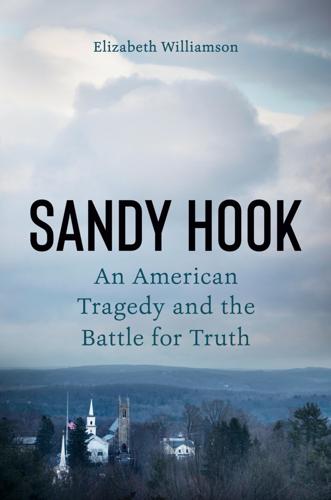
Sandy Hook: An American Tragedy and the Battle for Truth
by
Elizabeth Williamson
Published 8 Mar 2022
“Then it was like five articles a day,” appearing in the media about the phenomenon, he told me. “Then you get to 2016, and it’s between fifty and one hundred a day.” Even as president, Trump inspired conspiracy-minded distrust of the government he led. His handling of the coronavirus pandemic provided just one example. Every day for months, he minimized the coronavirus pandemic, promoted quack cures, and politicized the government’s response, until its every aspect drew skepticism and partisan resistance. As deaths mounted, he used his online platform to blame the machinations of an imagined “Deep State” for the leadership failures that led voters to reject him for a second term.
…
In April 2020, Jaselskis was sentenced to four years in federal prison.[11] Burning along the same social media fuse, and sparking on new platforms, Pizzagate begat QAnon, a new, more virulent mass delusion. QAnon, some of whose adherents see Trump as an avenging hero in a child-trafficking scheme led by Democratic politicians and Hollywood liberals, first appeared on 4chan around 2017, grew steadily, then surged during the coronavirus pandemic. In 2020, Times technology columnist Kevin Roose described lurking[12] in QAnon Facebook groups and watching them “swell to hundreds of thousands of members,” spreading misinformation about the coronavirus along with the claim that Hillary Clinton and liberals drink the blood of children.
…
Welch had just been released, and Alefantis thought he was still living in North Carolina. “I don’t think he’s coming back to Washington,” Alefantis told me in a tone suggesting he hoped he was right. We sat in the parking lot behind Comet, which Alefantis and his staff had transformed during the coronavirus pandemic into an outdoor dining area, with a bar and firepit, picnic tables for families, and an arbor space for quieter groups. Alefantis told me he had chosen not to live his life in fear. But at one point during our conversation, two men sat down nearby and Alefantis, eyeing them, asked that we move out of earshot.
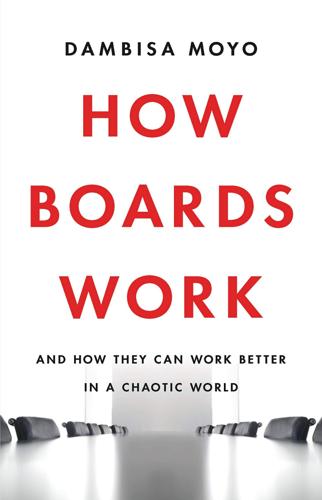
How Boards Work: And How They Can Work Better in a Chaotic World
by
Dambisa Moyo
Published 3 May 2021
To reframe this in a crude way, someone interested in gaining a place on a corporate board must ask themselves: Who from the management team would call me for advice, and when and why? Diversity is just one of the many major issues facing boards today. I conceived this book, and wrote most of it, well before the coronavirus pandemic of 2020. But the first months of the pandemic only reinforced my conclusions about the importance of functional, decisive, and wisely run boards. The coronavirus may have amplified the challenges facing today’s global companies, but I believe now more than ever in the positive role these corporations—and their boards—can play in society.
…
Leaving a good legacy is becoming harder, however, as the corporate board’s oversight role becomes ever more challenging and baseline notions about shareholder value and social responsibility shift with the changing times. Twenty-first-century companies are buffeted by unprecedented economic headwinds. Particularly after the onset of the coronavirus pandemic, the global economy is facing a deep and protracted recession, adding to already slowing long-term economic growth trends. Furthermore, de-globalization—in the form of new trade tariffs, capital controls, and increased barriers to immigration—threatens to harm global commerce and limit investment flows and the movement of labor, thereby worsening an already dire economic outlook.
…
According to a forecast by the Congressional Budget Office, the United States will face increasing challenges over the next decade due to rapidly expanding health-care and social security entitlement obligations. The US deficit, which as of this writing is projected to hit $1 trillion in 2020, is forecast to reach $1.3 trillion in 2030. US public debt, meanwhile, is expected to rise from 81 percent of GDP in 2020 to 98 percent in 2030—its highest level since 1946. In the wake of COVID-19, advanced economies were revising their debt-to-GDP ratios to surpass 100 percent in 2020. In this scenario, it seems inevitable that US political leadership in the coming years, Democrat or Republican, will have to seriously consider raising taxes on corporations. The smartest boards are already looking at the implications of such a scenario for their businesses.
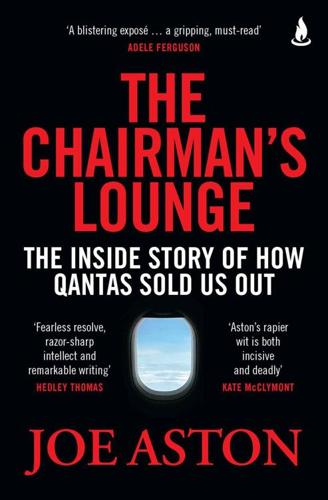
The Chairman's Lounge: The inside story of how Qantas sold us out
by
Joe Aston
Published 27 Oct 2024
The same month, a Senate committee threatened to throw him in jail. Having fled the Australian mob, he hid out with his elderly mother in Dublin, where he was chased to the local shops by paparazzi.5 What happened in those four years is the focus of this book. Of course, nobody in their wildest imaginings could have foreseen the coronavirus pandemic that would paralyse the global aviation industry just weeks after Qantas’ December 2019 high, let alone predict Joyce’s response to it and the spectacular unravelling of Qantas as it emerged from the pandemic in 2022 and 2023. In a bizarre accident of timing, Joyce sat for the cover story of the March 2020 issue of the Australian Financial Review Magazine, published as the virus first seeped into the country.
…
Finance minister Mathias Cormann, a key figure on the expenditure review committee of cabinet, told the ABC on 31 March, ‘It is not our plan to take a stake in an airline.’ Privately, Cormann had argued vehemently against lending to a company which, he observed publicly, already ‘had serious challenges prior to the coronavirus pandemic’. Qantas was straight out of the blocks the same day, insisting that if Virgin got $1.4 billion, Qantas would need a $4.2 billion loan of its own.35 By lunchtime, Virgin was forced by the ASX to confirm The Australian’s report. According to Scurrah, ‘The government and Qantas were both using the same language, which was that the government “shouldn’t pick winners and losers”.
…
Abbott, Tony, 274 Abbott government, 156, 201 Aer Lingus, 259 ABC, 197, 200 7:30, 246–9 ABC News, 200 ABC Radio, 278 AM, 273 Media Watch, 16, 204, 310 Radio National, 258–9 The Age, 201, 276 Air New Zealand, 14, 42 post-COVID seat sales, 129 RepTrak rank, 180 Virgin Australia stake, 155 Airbus, 150 A220, 151 A320, 93, 151, 320 A320neo, 151, 161–2 A321, 151 A321LR, 151 A321XLR, 151, 164 A330, 12, 119, 129, 152, 154–5, 161, 163, 206–8, 239 A350, 150, 154, 271 A350-1000ULR, 19, 150 A380, 11, 43, 94, 97, 119, 129, 152–5, 161, 163, 170, 271 non-aviation component manufacturing, 120 aircraft see also by manufacturer biggest unfulfilled order, 150–2 deferred defects, 120 depreciation, 158–9 fuel costs, 172 major heavy maintenance checks schedule, 163 ‘minimum equipment list’, 120 Airline Partners Australia (APA), 7–8 Aitken, Angus, 245 Al Baker, Akbar, 219, 234–6, 271, 291 Al Meer, Badr Mohammed, 311 Albanese, Anthony, 19, 61, 260 Australian Open attendance, 300 big business, relationship with, 300 Dutton’s criticism, 255 flight and club membership benefits, 229–31, 243–4, 250 government stake in Virgin, 39 Hamad Airport incident, 223, 273 Indigenous Voice to Parliament, 240–1 Joyce and, 61, 189, 216, 221–2, 240, 257–8, 266–7, 272, 286, 290–1, 300 King, support of, 242 net favourability rating, 241 Qantas, support of, 189–90, 240, 270, 298 Qantas-Emirates tie-up, support of, 234 Qatar Airways air rights stance, 5, 221–2, 234, 257–8, 270–2, 311 Rex, opinion on, 311 Albanese, Nathan, 225, 231, 240, 242–4, 250 Albanese government, 108, 217, 219, 224 airline competition, approach to, 257, 271 Aviation Green Paper, 257, 272–3 Qantas lobbying, 216, 272, 285–6 Qatar Airways decision, 219, 298 support of Qantas, 224, 260–1, 267 Allco Finance, 7 Alliance Airlines, 207 Allsop, James, 297 Amadeus ticketing system, 306 American Airlines, 130, 154, 236 Andrews, Daniel, 89 Ansett, 31, 59, 82, 154 Managers Lounge, 226 The Australian, 38, 199–200, 239 Australian Airlines, 10, 226 Australian and International Pilots Association (AIPA), 94, 280 Australian Competition and Consumer Commission (ACCC) airfares, 169, 216 Airline Competition Taskforce, 215–17, 256–7 airline monitoring powers, 45, 259–260 cartel conduct authorisation, 233 complaints about Qantas, 86, 224 COVID-19 flight credits, 249 domestic aviation industry, observations on, 216, 224, 312 ‘ghost flight’ lawsuit, 128, 214, 258–60, 277, 293, 296–7, 305–6 Joyce’s opinion, 215 Qantas flight credit email, 122 Virgin complaint, 34 Australian Council of Superannuation Investors (ACSI), 261, 275, 278, 293 Australian Council of Trade Unions (ACTU), 108–9 Australian Financial Review (AFR) AFR Magazine, 16, 20 airline competition, 273 Chairman’s Lounge and, 20, 204, 225, 315 Chanticleer column, 21, 26, 43, 95, 136–7 Clark interview, 300 commercial deal, 200 complaint by Joyce and Goyder, 184, 190–1, 316 corporate heads’ contact, 173 COVID-19 flight credit manipulation, 126, 249, 252–4 Goyder and, 145, 147 Hudson and, 176–8, 182, 188, 199, 246 Joyce and, 143, 169–70, 259, 261 Oldmeadow interview, 59 PwC tax leaks scandal, 242 Qantas aging fleet, 163 Qantas boycott, 200–4 Qantas culture and management dynamic, 315–16 Qantas customer complaints, 219 Qantas’ opinion, 192 Qatar Airways air rights campaign, 223 Sharp’s op ed, 84, 86 symbiosis with Qantas, 14–15 Tully and, 130–1 Australian Football League (AFL), 192–3 CEO candidates, 193–7 Gather Round, 190, 194 Australian Grand Prix, 21, 112 Australian Licensed Aircraft Engineers’ Association, 89, 106 Australian Open, 299–300 Australian Securities Exchange (ASX), 26, 38, 82 Australian Services Union (ASU), 104, 115 Australian Shareholders’ Association, 293 AviationKeeper, 117, 137, 175 Bailey, Fran, 5 Bain Capital, 40–1, 45, 82, 90, 220 Baird, Bruce, 3–5, 8 Baird, Lucas, 131 Barron, John, 204 Bates, Stephen, 291 Bensan, Sondal, 147 Benson, Simon, 31–2 Berejiklian government, 89 The Betoota Advocate, 174–5 BGH Capital, 35, 39–40 Biden, Joe, 266 bin Khalifa Al Thani, Sheikh Khalifa, 222 bin Rashid Al Maktoum, Sheikh Mohammed, 6 bin Saeed Al Maktoum, Sheikh Ahmed, 6–7 Birmingham, Simon, 90, 288 Bishop, Robin, 35, 39 Boeing 717, 151, 312 737, 117, 151, 154, 163–4, 170, 312 747, 12 747-400, 153 777, 271 777X, 19 787-9 Dreamliner, 16, 19, 24–5, 27–8, 97, 152–4, 161–3, 206 non-aviation component manufacturing, 120 Bonza, 217, 224, 311–12 Borden, Jenny, 59, 262 Borghetti, John Qantas CEO candidate, 9–11, 22 resignation, 11 Virgin Blue CEO, 155, 202 Bornstein, Josh Oldmeadow, impression of, 59, 62 outsourcing disputes, 78 Qantas, opinion of, 54 TWU v Qantas and, 63, 65, 70, 75, 77, 80 union representation, 54 Boyd, Tony, 136 Boyle, Jane, 14–15 Brandis, George, 56 Branson, Richard, 23, 155 Brenner, Maxine Qantas directorship, 262, 282, 293 Qantas travel benefits, 284–5 questioning of Joyce, 283 retirement, 292 Telstra election, 293 British Airways, 132, 236, 238 Bromberg, Justice Mordy, 106–7 Bromwich, Justice Robert, 106–7 Bureau of Infrastructure and Transport Research Economics, 114 Burke, Tony, 109, 239 Business Council of Australia, 109–10 Byron, Stephen, 217, 256, 313 CAE, 94 Callachor, Damian, 220 Canavan, Matt, 239 Caon, David, 16 Carter, Colin, 314 Cass-Gottlieb, Gina airline sector ombudsman, call for, 217 domestic aviation market description, 216, 224 Qantas ghost flight penalty, 258–9, 297, 305 Cathay Pacific, 129, 236–7 Certis, 112–13 Chalmers, Jim, 256–7, 260 Chenoweth, Neil, 242 Chessell, James, 200, 203, 243 Chief executive officer (CEO) see also by name appointment practices, misconceived, 195–6 celebrity status, 18, 317 Fysh’s guiding principles, 267–8 CHOICE Shonky Award, 178 Civil Aviation Safety Authority, 120, 227 Clark, Tim, 7, 235–7, 300 Classic Reward redemptions, 30 Cleary, Andrew, 15 Clifford, Leigh appointment of Joyce, 158 capital considerations, 162 Chairman’s Lounge, appraisal of, 228 Joyce’s share sale, 215 mentorship, 166 opinion of Joyce, 9, 19, 145, 158 ConnectionSaver software, 164 Cook, Roger, 270 Cormann, Mathias, 38, 40 Coronavirus pandemic see COVID-19 pandemic Corporate Confidence Index (CCI), 143–4, 148 Costello, Peter, 8, 11, 256 Cottee, Annabelle, 16 COVID-19 pandemic ‘11 weeks’ narrative, 27–9, 131–2 see also ‘eleven weeks’ narrative airport security agents, 113 airport staff shortages, 113–14 aviation industry’s recovery modelling, 42–3 AviationKeeper, 117, 137 baggage mishandling, 116, 128, 132, 135, 142 border closures, 23, 27, 82–3 border openings, 97–8 close contact rule exemption, 114 ‘eleven weeks’ narrative, 27–9, 131–2 see also ‘11 weeks’ narrative engineering backlog, 120 European governments’ support, 266 exploitation by Qantas, 43–4, 81 first confirmed Australian infection, 20 flight cancellations, 22, 24, 28, 30, 82, 86, 98, 114, 122–3, 126, 128, 132, 306 Great COVID Reopening of 2022, 30 impact on travel industry, 98, 264 infection rates, 97–8 international travel, resumption of, 134 JobKeeper scheme, 28, 36–40, 50–3, 83, 90, 113–17, 139, 175, 177, 266, 304 Joyce’s observations on passengers, 113 Joyce’s responses, 22, 46–7, 95–6, 98, 101, 135–6 lockdowns, 46, 96 mandatory testing for international travel, 101 Morrison government aviation industry support, 23, 83 on-time performance, 114–17, 127–8, 132, 142 passenger demand for flights, 98 Qantas brand, impact on, 130–1, 134, 136, 268 Qantas carriage contract, flight cancellations and, 22, 24 Qantas cash reserve, 27, 84–5, 99 Qantas domestic capacity, increase in, 133 Qantas executive bonuses, 21, 99 Qantas financial status, 96, 99, 127, 137 Qantas flight credits, 24, 45–6, 82, 85, 122–7, 182, 245–53, 259, 306, 307 Qantas flight grounding, 21–2, 27, 42 Qantas GMC demeanour, 167 Qantas ground handling layoff, 55 Qantas ground handling outsourcing, 78, 133–4, 293 Qantas inflight service, 118 Qantas international flight relaunch, 97 Qantas operational reliability, 113–15 Qantas recovery and retention plan, 99–101 Qantas rescue flights, 20–1 Qantas seat cut, 22, 98 Qantas staff bonuses, 105 Qantas staff cuts, 101–2, 115, 139, 181 Qantas staff training, impact on, 117–18 Qantas ‘underlying/adjusted’ profit, 47–8 Qantas workforce stand-down, 23–4, 27–8, 96, 101, 184 Qatar Airways’ flight continuity, 220, 237, 258, 290 quarantine for overseas passengers, 22 repatriation flights, 21, 51–2, 101, 103–4, 220 resumption of services, 95, 117 ‘revenge travel’, 101, 129 Rex online refund portal, 85 seat capacity, recovery of, 128–30, 210 self-quarantine, 21–2 skilled labour loss, 117 tourism industry support package, 83 United States governments support, 266 vaccination rollout, 95–7 Virgin Australia nationalisation proposal, 32–4 Virgin Australia seat cut, 98 WHO designation, 21 Cromwell Group, 88 Crosby, Lynton, 8 Culbert, Geoff COVID-19 comment, 21 domestic airline competition, 224 post-COVID-19 travel chaos, 112–13 Qatar inquiry evidence, 277 Daily Mail, 319 Daily Telegraph ‘CON AIR’ headline, 260 COVID-19 flight credits, 255 David and, 25, 131–3 Qatar Airways, 234 ‘Re-Joyce’ pun, 14, 263 Dash 8 Q-400 turboprops, 312 David, Andrew criticism of Joyce and, 185 defence of COVID-19 operations, 25, 131–4 docking, 318 inflight incidents, 170 international travel conditions, 211 JobKeeper stance, 50 La Spina’s duties, absorption of, 49 Oldmeadow’s relationship with Qantas, 58 request to Joyce to shorten trip, 135 sacking of staff, 318 TWU v Qantas evidence, 64, 66–7, 70–1, 75–8, 80, 107, 247 Davidson, Louise, 278, 294 de Kretser, Ayesha, 223 de Rome, Belinda, 11 Deloitte, 39–41, 45, 287 Delta, 164 Department of Foreign Affairs and Trade (DFAT), 21, 103, 290, 298 Department of Infrastructure and Transport, 221 Devine, Miranda, 15–16 Diamond Princess, 21 Dick, Cameron, 89 Dillon, Andrew, 190, 197 Dixon, Geoff advertising, 52 AFR aviation reporters and, 15 aircraft orders, 152, 154 Baird and, 3 child, 9 Clark’s recollection, 300 ‘constant shock syndrome’, 21 engineers’ pay increase, 11 meeting with Mullen, 302 politicians and, 3, 7–8 pre-tax profits, 155 privatisation and efficiency, 264 purchase of 737-800s, 154 Qantas leveraged buyout, 7 retirement, 14 Singapore Airlines’ market bid, 6 speechwriter, 10 succession and, 9 two-brand strategy, 313 Doyle, Rohan, 71–3, 304–5 Dubinsky, Rick, 60 Dutton, Peter, 255, 273, 313 Earnings Before Interest Tax (EBIT), 210 Echo Law, 248–9, 259 Eddington, Rod, 237–8, 266 Elliott, Shayne, 256 Embraer, 207 Emirates, 6 A380 fleet, 153 Adelaide flights, 258 adviser, 7 event sponsorship, 6, 300 increased access grant, 299 in-flight wi-fi, 164 post-COVID seat sales, 129 Qantas alliance, 7, 156, 229, 233–7 Qatar Airways, relationship with, 233, 236, 300 Wolgan Valley development, 6–7 Enterprise bargaining agreement (EBA) ground crew, 61–2 long-haul cabin crew, 101–5, 108, 110 pilot, 119 short-haul cabin crew, 110 Epstein, David, 11 Etihad Airways cabin crew training facility flight allocation use, post-COVID, 277 Qatar Airways, competition with, 233 seat sales, post-COVID, 129 state subsidisation, 220 UAE frequencies for use, 299 Virgin Australia alliance, 14–15, 23, 155 Evans, Gareth, 51 EY, 65–6 Fair Work Commission, 61, 65, 102, 110 Fairfax Media, 201–2 Farrell, Don, 224, 290 Farrow, John, 111 Ferguson, Adele, 201 Ferguson, Sarah, 246–9 Finch, Andrew ACCCC claim, defence to, 296–7 allegation against TWU, 50 power of attorney delegation, 76, 303 Qatar inquiry, 285–9, 309 resignation, 309 Saar review, 318 TWU v Qantas evidence, 67–77, 104–8, 276, 309 Find My Credit online portal, 248 Finnair, 206–8, 239 Flanagan, Maurice, 6 Flight Attendants’ Association of Australia (FAAA), 101–3, 108–11 Flight Centre, 20, 128, 270 Follett, Matthew, 73 Forager Funds, 147 Freshwater Strategy, 241 Frydenberg, Josh ACCC airline monitoring power, 45 aviation support package, 23 domestic aviation market competition, 45, 215 JobKeeper announcement, 36 Rex support, 40, 83 Virgin takeover, 38–9 Future Fund, 293 Fysh, Hudson, 267–8, 307–8 Gaske, Emeline, 104, 115, 121–2 Ghoshal, Sumantra, 165 Gibian, Mark TWU v Qantas hearing, 68–75 union representation, 55 Gillard government, 61 Gissing, John, 79–80, 185, 262 Glass Lewis, 293 Global Financial Crisis, 155, 165 Goodwin, James, 60, 224 Goyder, Janine, 145 Goyder, Richard AFR op ed, 145–6 AIPA assessment, 280 CCI reference, 143, 148 CEO naming gaffe, 200 character, 19, 275, 315 complaint against AFR, 184, 187–91, 218, 316 COVID-19 position, 96 decision-making style, 192–4, 196 defence of Joyce, 187 defence of Qantas, 278, 292, 294 dynamic with Joyce, 167, 186, 189, 199 exchanges with author, 190–1, 218–19 executive appointments, 34, 144, 167, 193, 319 Hudson, support for, 185–6 investor relations, 278–9, 291–2 Joyce and, vii, 1, 143–5, 148, 187, 262–3, 274, 317–19 Joyce’s bonus ‘claw-back’ claim, 277–8 ‘mistakes were made’ acknowledgement, 292–3 ‘Over to you, Gil’ nickname, 193 preservation of role, 274 Qantas board ‘fully engaged’ claim, 261–2 Qantas board tenure, 281 Qantas reliability pronouncement, 169 Qantas share buy-back, defence of, 146–7 Qatar inquiry, 285, 288–9 remuneration, 285 reputational damage, 321 response to criticism, 276 retirement, 292, 319 sale of Joyce shares, 214, 279 scepticism of ability, 167 Simon the Likeable comparison, 194 successor, 292, 301 survivability of football codes and COVID-19, 34 travel benefits, 285 work without pay election, 21 GQ, 18 Grant, Martin, 16 Gray, Ben, 8, 35, 39–40 Gregg, Peter, 9, 11 Gregory, Sean, 242 The Guardian, 198, 245 Gurney, Rob, 236 Hamad International Airport (Doha), 222–5, 273 Harbison, Peter, 26 Harcourt, Tansy, 14–15 Harle, Simon, 8, 35 Harris, Peter, 224 Harris review, 256, 273 Haydon, Jodie, 231 Hazzard, Brad, 114 Hehir, Grant, 36 Henry, Ken, 256 Herald Sun, 260 Herbert Smith Freehills, 55–6, 71–3, –7, 303 Hewitt, Angus, 245 Hey, Jacqueline, 282–3, 292, 301 HNA Group, 23 Hockey, Joe, 9, 11, 156 Hogan, James, 14 Hogg, Kate, 13 Holdforth, Lucinda, 10, 13–14 Howard, John, 11 Howard government, 5, 7–9 Howes, Paul, 15 Hrdlicka, Jayne, 322 Qatar air rights concerns, 221–3, 232–3, 255–6, 270–1, 300 resignation, 309 Tennis Australia role, 299–300 Hudson, Vanessa AFR tax op ed, 176–8, 182, 188, 310 apology to customers, 279, 286, 306 approach, 308–10 bonus for cost reduction, 280 booking and change fee amendment, 307 commencement at Qantas, 59 customer complaints, dismissal of, 199 customer improvements, 264, 279 docking, 318 domestic market, comment on, 312–13 ‘Feel the Difference’ mantra, 309 flight credit manipulation, 249 flight credit rule change, 307 investor presentation, 210–12 Joyce’s opinion, 182, 186 Keighery hiring, 14 loan arrangements, 24–7 ‘low speak up’ culture and, 318 Marcolina appointment, 309–10 media queries, responses to, 197–8, 245 Mullen and, 320 promotion to chief financial officer, 19 Qantas board changes and, 296 Qantas CEO appointment, 197, 200 Qantas CEO candidacy, 185–6 Qantas performance claims, 244, 265 Qantas property footprint review, 87–91 Qatar inquiry, 285–90 scepticism, 309 trading update announcement, 279–80 Yangoyan promotion, 104 Hughes, Colin, 63–6, 77 Hume, Jane, 250, 256 Hutchinson, Belinda, 282, 294 Hywood, Greg, 201–2, 204 ‘I Still Call Australia Home’ commercial, 19, 52, 133 Iberia, 236 Indigenous Voice to Parliament, 240–1, 260, 316–17 Industrial relations cabin crew pay deal, 102–3 cabin crew reduction, 117, 238–9 EBAs see Enterprise bargaining agreement (EBA) industrial action, 59–62, 106, 110–11 Jetstar ground crew, 62 Jobs and Skills Summit, changes arising from, 108–9 Joyce’s stance, 18, 62, 109 licensed aircraft engineers, 11–12, 106, 121 pilots’ strike, 59 Qantas’ approach and attitude, 12, 54, 104–10 Qantas flight grounding, 59–62, 110 Qantas staff ‘fragmentation’, 109 right to strike, 63–4, 103, 105 Seremetidis stand down, 297–8, 315 shutdown, 60–1 TWU and see Transport Workers’ Union (TWU) wage policies, 61–2, 105–6, 184 International Air Transport Association (ATA), 43, 211, 311 Isom, Robert, 236 ISS, 275, 293 Jackson, Margaret, 5–10 Jacques, Jean-Sébastien, 191 Jetstar ‘380 million airfares for under $100’ claim, 253 A320, 93, 151 A320neo, 161 COVID-19 flight credits, 22, 122, 248, 252–4, 260 domestic market capacity, 82, 312 fleet management, 43, 151–2 forced divestment, 313 flight cancellations, 22, 132 government assistance, 51 ground crew strike, 62 growth, 55, 152–3 head office consolidation, 87–8 international market share, 152, 156 Joyce’s role, 9, 55 on-time performance, 114, 116, 128, 132, 142, 169 outsourcing, 49, 116 pilot training, 206 recruitment post-COVID-19, 121 resumption of domestic aircraft service, 95 seat availability post-COVID-19, 129 staff cuts, 50 TWU pay deals, 60 undercutting, 312 Jobs and Skills Summit, 108–9 Jones, Paul CEO candidacy, 309 Lee J’s findings, 247, 309 TWU v Qantas evidence, 58, 64, 71, 77, 81, 247, 309 Jones, Stephen, 257 Joyce, Alan 7:30 interview, 246–9 ‘11 weeks’ narrative, 25–8 see also ‘eleven weeks’ narrative 787-9 Dreamliner inaugural flight, 16 A330 freighter conversion, justification of, 207–8 ACCC concerns, dismissal of, 215, 217 acknowledgement of criticism, 169–70 Aer Lingus flight booking model, 259 AFR advertising boycott, 200, 203–4 AFR businessperson of the year, 18 age at appointment, 166 airfare prices, 171–3 Albanese and, 61, 189, 216, 221–2, 240, 257–8, 266–7, 272, 286, 290–1, 300 ‘announceables’, 181–2 annus mirabilis, 18 apology to frequent flyers, 137 argument with Devine, 15 The Betoota Advocate satire, 174–5 board supervision of, 317 celebrity status, 18, 166 CEO designate, naming as, 11 CEO role, perception of, 140 Chairman’s Lounge and see Qantas Chairman’s Lounge challenges to, 1, 19–20, 29, 166–7, 283, 315–16 character assessment, 87, 91, 140–1, 158, 166–7, 185, 192, 199–205, 208–10, 215, 247, 251–2, 263, 268 Clark’s support, 300 Clifford’s opinion, 9, 19, 145, 158 ‘command-and-control structure’, adoption of, 167, 315, 320 Companion of the Order of Australia, 18 compartmental thinking, 205 complaint against AFR, 184, 187–8, 192, 316 concession on decline in standards, 136 cost reduction program, 44, 121, 155, 217–18, 264 COVID-19 situation, optimisation of, 43–4, 95 criticism by corporate heads, 136 customer service, attitude towards, 169, 265–6, 268 decision-making authority, 69–70 delayed capital expenditure, benefits of, 164–5 delegation of authority, 70, 76, 142, 303 ‘democratisation of air travel’ claim, 253 depreciation of aircraft, interpretation of, 159 ‘efficiency’ rationale for record profit, 217 egging of mansion, 131, 212 ‘eleven weeks’ narrative, 25–8 see also ‘11 weeks’ narrative email to staff on COVID-19 ‘challenges’, 135–6 engineer recruitment announcement, 180–1 Fairfax Media coverage, 201–2 final financial results announcement, 244 Finnair wet-lease, explanation of, 208 fleet management, 150–5, 160–4, 246, 264–5 flight credit manipulation, 127, 247–9, 259–60 flight grounding, 21, 110 flight training centre dedication, 206 Fysh, comparison with, 267–8 ‘giant wave of international airline capacity’ lament, 156 government assistance to Virgin Australia, stance on, 32–5 Goyder and, vii, 1, 143–5, 148, 187, 262–3, 274, 279, 316–19 GQ man of the year, 18 growth of Jetstar, 152–3 hiring, 9 ‘holy trinity’ achievement, 148 identity as CEO, 205 illusory truth effect and, 26 impact and influence, 10, 91, 165–6, 263, 266–9, 275, 315 industrial relations stance, 18, 62, 109–10 investment minimisation tactic, 166 investors and, 215, 275–6, 278 JobKeeper scheme, 36–7 King meeting, 221, 238 ‘kitchen-sinking’, 158 leadership style, 1, 167, 185, 315, 317, 320 legacy mode, adoption of, 199 liability, 184 marriage, 18 marriage equality campaign, 18, 166, 316–17 McManus’ impression, 110, 268 media questioning, 344–5 mentor, 166 net favourability rating, 241 O’Brien meeting, 263 post-COVID holiday, 131, 135, 140 power, 19, 209–10 praise for Hudson, 182, 186 profit inflation, 155, 159–60 property portfolio, 131, 212–13 public approval, value of, 205 public figure, renunciation as, 140–1, 181, 208 public scrutiny, 204 Qantas board, relationship with, 283 Qantas financial status, assertions on, 26–9, 139, 157–8, 244, 264–5 Qantas headquarters relocation, 93 Qantas post-COVID performance claims, 145–6, 169, 171–2, 197 Qantas share buy-back, motivation behind, 146–7 Qantas shareholding, 45, 96, 100, 137–8, 148, 160, 212–13, 244–6, 261, 264 Qantas workforce stand-down, 24 Qatar inquiry, 286 relationship with Oldmeadow, 59, 62 remuneration and bonuses, 1, 18, 96, 100–1, 108, 137–8, 148, 159, 160, 183–4, 213, 246, 251–2, 261–3, 275–6, 277–8, 282, 293, 318 ‘reprioritisation of capital’, 161 reputation, 19–20, 49, 179, 181, 215, 260–1, 265 resignation, 20, 261–2, 267, 272 resignation requests, 141, 143 retirement, 26, 213, 262 revenue optimisation practices, 259 review of media coverage, 185 Rex, opinion on, 84–7 sale of shares, 212–14, 244–5, 279, 316 Senate questioning see Senate inquiry into Qatar decision (Qatar inquiry; Senate Select Committee on the Cost of Living shrinking of Qantas International fleet, 152–3 stripping of bonus, 1, 318 successor, 19, 185, 197 Sydney Theatre Company chair, 180 tenure, extension of, 45, 199 trade unions, opinion on, 142 TWU v Qantas response, 107–8 ‘very little government support’ remark, 138–40 Virgin Australia complaint against, 34, 140 workforce rationalisation, 43, 142 zero-profit flights, promotion of, 51–2 Joyce, Anthony, 259 Joyce, Geoff, 8 ‘Joyced’, 131 JWS Research, 18 Kaine, Michael call for Joyce’s resignation, 50 impression of EBA, 105 Joyce’s industrial relations decision, 61–2 Oldmeadow advice, view on, 57 Oldmeadow’s impression, 305 opinion of Oldmeadow, 58–60 outsourcing decision, advice on, 54–5 Qantas’ reliability during COVID-19, 115 Sheldon briefing, 239 TWU v Qantas analysis, 65, 70, 73–4, 76, 80 Keighery, Danielle, 14 Keltner, Dacher, 209 Kidon, Filip, 292 King, Catherine, 36, 241–2, 257 ACCC monitoring of Qantas, 216 Qantas Chairman’s Lounge and, 289 Qatar Airways air rights decision, 221–5, 238, 241, 250, 256–7, 271–3, 286, 298–9, 311 Qatar inquiry response, 276–7 slot system action, 312 Turner’s labelling, 299 King & Wood Mallesons, 314 Kirkland, Alan, 256 KLM, 132 Knight, Elizabeth, 145 Koch, David, 322 KPMG, 157 La Spina, Tino, 49, 67, 92, 161 Labor Party, 36, 260–1 see also by politician name Lane, Sabra, 273 Lee, Michael appointment of mediator, 297 Brandis’ esteem, 56 outsourcing proposal, characterisation of, 303 TWU case and see Transport Worker’s Union of Australia v Qantas (TWU v Qantas) Leigh, Andrew, 257 L’Estrange, Michael, 191, 281, 285 Levine, Michele, 179, 242, 265 Liberal Party, 8 see also by name Littleproud, David, 313 Lloyd, Shane, 18, 212–13 LOGOS, 93–4 Lucas, Tony facility ownership and control, view on, 94 Finnair wet-lease, opinion on, 207 Qantas decision-making, assessment of, 280–1 Qantas fleet purchase, opinion of, 154–5 Qantas pilot training, 119–20 Qantas staffing during COVID-19, concerns about, 116–18, 128 ‘raise’ process analogy, 281 Lufthansa, 132 McCormack, Michael, 35–6, 40–1, 220, 271 Macquarie AirFinance, 39 Macquarie Bank, 7–8 McGinnes, Andrew AFR advertising boycott, 203 AFR articles meeting, 187 air turn-backs and diversions letter, 171 description of author, 173 flight increase announcement, 206 Hudson and, 296 Joyce’s resignation, 262 Qantas tax argument, 177 Qatar inquiry, 286 resignation, 309 Rex dispatch, 86–7 Saar review, 318 Senate inquiry responses, 250, 252, 254 tone of press releases, 91, 131, 146 McGowan, Mark, 98 McKenzie, Bridget competition in aviation, 313 COVID-era bonus query, 261 Qatar inquiry role, 251, 286–8 McLachlan, Gillon, 144–5, 192–7, 276 McManus, Angela, 111 McManus, Sally Joyce’s legacy, opinion of, 260–1 Qantas job cuts, scrutiny of, 239 Qantas’ role in law reform, 109–110 strength of Qantas brand, 268 Mader, Wayne, 61–2 Malinauskas, Peter, 190, 194, 258, 270 Marc Newson Skybeds, 161 Marcolina, Rob, 309–10 Marles, Richard, 260 Maurice Blackburn, 54 Miles, Steven, 270 Millen, Sonia industrial negotiations and, 111 Reed’s opinion, 104–5 TWU v Qantas evidence, 70–2, 104 Miller, Michael, 204 Minns, Stephen, 314 Minogue, Kylie, 189 Moody’s, 156 Moore-Wilton, Max, 234 Morrison, Scott Benson and, 31–2 domestic travel, promotion of, 83 Dreamliner reception, 19 Hamad Airport incident description, 222 Hawaiian holiday, 141 JobKeeper announcement, 36 predecessor, 3 self-appointment to ministries, 40 Virgin support, 38–40 Morrison government COVID-19 management and see COVID-19 pandemic job losses as threat, 83 Qatar flight doubling grant, 220–1 Movember, 317 Mullen, Jacqui, 300 Mullen, John chairman appointment, 301 company directorships, 319–20 corporate activism, take on, 316–17 Joyce, opinion on, 1, 318–19 media approach, 310 removal of AFR, opinion on, 315 vision, 320 Munger, Charlie, 37, 285 Murdoch, Lachlan, 15, 145 Murdoch, Sarah, 15 Murray, Crispin see also Pendal conversations with Goyder, 292 Joyce, opinion of, 17–18, 165–7, 265 Joyce’s share sale, 214–15 Project Sunrise, view on, 18 Qantas’ focus, criticism of, 127 Qantas investment, opinion of, 162 Qantas share buy-back, support of, 148 Rio Tinto analogy, 274–5, 292 Nanshan Group, 23 National Party, 36, 40–1 National Press Club, 8, 300 Nationalisation, 32 Net promotor score (NPS), 198 News Corp Australia, 15, 200, 204, 296 Newson, Marc, 16 Nicholas, Paul, 64, 77 Nine Entertainment Co., 200, 203 O’Brien, Kerry, 263, 269 O’Connor, Brendan, 180 Offshoring heavy maintenance, 44, 94 Oldmeadow, Ian creation of QGS, 60 industrial relations career, 58–9 Joyce and, 62 O’Toole meeting, 110–11 outsourcing advice, 58, 81, 105, 303–5 Qantas mass sacking concerns, 62 Qantas pay deals, 61 Oldmeadow, Justine, 58–9, 81, 111, 303–4 Oldmeadow Consulting, 57–9 O’Neil, Michele, 239 O’Neill, Meg, 144, 193 oneworld alliance, 235–6 O’Sullivan, Matt, 201 O’Toole, Teri bargaining agreement negotiations, view on, 102–3, 108–11 Qantas outsourcing and sackings, opinion on, 115, 121 Outsourcing call centres, impact on, 115, 122 flying, 207 ground handling, 49–50, 54–8, 65, 107, 133, 142, 146, 293 in-house bid (IHB), 65–7, 70 Joyce’s fight with unions, 142 Lee J’s summation, 303 pilot training, 94, 206 proposal meeting, 303 risks, 304–5 savings, 80 TWU case see Transport Workers’ Union Of Australia v Qantas (TWU v Qantas) Ownership Matters, 293 Paatsch, Dean, 167, 209 Parker, Andrew, 7 Parker, Doug, 262, 281 Parker & Partners, 7 Payne, Marise, 222 Pendal see also Murray, Crispin Clifford, praise for, 166 defence of Qantas, 147–8 Goyder and, 274 Joyce, view on, 17–18, 44, 166 Joyce share sale, concern about, 214 vote against Sampson, 294 Perrottet, Dominic, 89 Perry, Neil, 16, 189, 239 Pocock, Barbara, 291 Pocock, David, 289–91 Points Plus Pay option, 30 Popple, Brad, 72 Project Rubicon, 88 Project Sunrise, 18, 93, 150, 163, 211 Project Winton, 151 Prostate Cancer Foundation, 317 Purvinas, Steve inflight incidents, 170 Joyce, opinion of, 62 parts availability, concern about, 120 pay rise offer, characterisation of, 105–6 Qantas heavy maintenance facility proposal, 89 Qantas recruiting practice, 121 ‘slow-bake’ pledge, 60 PwC, 93, 242–3, 290 Qantas 2023 AGM, 281, 292–5 2023 annual report, 277–8 ACCC actions see Australian Competition and Consumer Commission (ACCC) activism, 316–17 advantage over Virgin, 313–14 advertising boycott, 202–4 AFR feud, 200–4 AFR symbiosis, 14–15 airfare pricing, 105, 127–9, 168, 171–2, 210, 216–17, 219, 233, 265, 283, 296 Albanese’s praise, 189–90 anti-competitiveness, 6, 216, 224, 268, 271, 300 app capabilities, 164 asset write-down, 157–9 Australian jobs and, 238–9 board member benefits, 284–5 booking fee changes, 307 brand damage, 130–1, 134, 136, 268, 281, 296 call centres, 25, 115, 122, 124, 164 capacity forecasts, 101, 110 capital expenditure, delayed, 148, 160–5 capital-intensive business, 161–2 Cass-Gottlieb’s description, 305 centenary celebrations, 189–90 CEO hiring practice, 9 commercial advantages, 32 commercial deals with media, 200–2 commercial objective, 266 Commonwealth government spending, 227–8 communications to customers, 136 company tax, 175–8, 284, 310 comparative adequacy mantra, 133 compensation mentality, 92 complexity of company, 140 conflict-avoidance of board, 316 connection time, management of, 164 contract execution policy, 68–9 ‘corporate welfare-seeking’, 90 COVID-19, operations during see COVID-19 pandemic credit rating downgrade, 156 culture, 10, 75, 91, 133, 166, 205, 310, 315–17, 320–1 customer expectations, absolute, 127, 132–3 customer experience, 148, 164, 198–9 customer improvements, 264, 279–80 customer satisfaction, 44–6, 123, 126, 130–1, 136, 142–3, 147, 172, 182, 199, 219, 224, 268, 308 customer loyalty strategies, 307, 314 debt financing, 25, 29, 44–5 delivery of A380s, 11 delusion, 209 denialism, 115, 133 domestic market dominance, 82, 216, 312–14 economic efficiency, 90 Emirates alliance, 7, 156, 229–36 employees see Qantas staff engineering and spare parts backlog, 120 executive versus staff, disparity of treatment, 104–5 external communications, tone of, 315, 318 ‘final frontier’ of aviation, 18 financial interests, prioritisation of, 1, 30, 127, 148, 178, 246, 315 financial liability, 30, 127 fleet see Qantas fleet flight credit class action, 248–9, 259 flight simulators, 91–5, 119 foreign ownership cap, 33 fuel costs, 172, 279–80 Fysh’s ideals and guiding principles, 267–8, 307–8 ‘ghost flights’ lawsuit see Australian Competition and Consumer Commission (ACCC) government lobbying, 216, 272, 285–6 government subsidies and support, 50–3, 89, 92–3, 137, 139, 156, 174–8, 242, 246, 256, 264, 266 head office, 10, 87, 88 ‘holy trinity’, 17 Indigenous Voice to Parliament support, 240, 260, 316–17 inflation rates, contribution to, 168 inflight catering, 28, 94, 130, 169, 198–9 inflight incidents, 12–13, 170–1 influence, 5 insolvency, 29, 31 institutional investors, 147–8 integrated operations centre (IOC), 12 international market share reduction, 152 investment inadequacies, 154, 156, 161–4 investor sentiment, 278–9 Labor government support, 260–1, 267 labour hire agencies and, 54, 239 ‘lazy’ capital, unlocking of, 94 media influence, 310–11 Miller’s criticism, 204 monopoly, 39, 314 national carrier status, 24, 105, 127, 133, 141–3, 266, 270, 290 national property footprint, review of, 87–93 nature pre-Joyce, 10 NPS, 198 on-time performance, 142, 169, 198 ‘operational transformation’ priorities, 63 powerlessness over price notion, 173 pre-tax annual loss record, 157 privatisation, 133, 264 ‘productivity improvement’ rationalisation, 43 profit, 17, 106, 148–9, 157, 159, 172, 174, 178, 210, 217, 244, 280, 308 profitless revenue growth, 52 public sentiment, 134, 174, 179, 189, 197, 204, 225, 242, 247, 255, 260, 283, 314–15 Qatar Airways, schism with, 220–1, 233, 236 relativism, financial and moral, 184 repayment of debt, 50, 128, 177–8, 246, 256 RepTrak rankings, 136, 179–80, 296, 308 reputational damage, 179, 192, 198 request for approval (RFA), 70–5 Rio Tinto analogy, 191, 274–5, 281, 292 risk management policy, 67–8 Saar review, 314–18 safety reputation, 12, 91, 133 sale of surplus land, 93–4 share buy-back, 138, 146–8, 159, 197, 210, 214 share prices, 17, 21, 25, 27, 95, 147, 157–60, 213, 308 shareholder engagement, 294–5 shareholder gratification ‘within reason’, 162 shareholder presentation, 210–12 Sharp’s opinion, 84–5, 172, 256 Shonky Award, 178 Singapore Airlines, competition with, 237 skirmish with Rex, 83–4 slot hoarding practice, 224, 256, 260 ‘Spirit of Australia’ tagline, 133 ‘structural uplift’ in domestic revenue, 218 sustainability credentials, 162 Sydney Airport tenancy, 92 technology spending, 164 trading updates, 97, 150, 159, 210, 279–80 ‘transformation costs’, 48 travel agent commission, slashing of, 95 TWU v Qantas decision, impact of, 276 ‘underlying/adjusted’ profit, 47–9, 53, 150, 306 undertakings, nature of, 93 Virgin Australia collapse, role in, 33, 38–40, 140 website problems, 164 wi-fi, in-flight, 164 Qantas Airports, 55 Qantas Airways Limited (QAL), 59–65, 109 Qantas Cabin Crew Australia (QCCA), 102, 109 Qantas Chairman’s Lounge, 169, 260 AFR courtesy copies, 200, 204, 315 benefits for Qantas, 227–9 establishment, 226 inducement, nature of, 232 invitation-only status, 2 Joyce’s influence, 228, 231–2 membership, 4, 227–8, 231–2, 289, 291, 302 Mullen and, 302 network, 226 opacity, 229 perks, 226–7 Pocock queries, 289 politicians and, 4, 225, 229–32, 242 status credits, 228 Sydney Morning Herald poll, 291 symbolism, 2, 204, 227 Qantas Domestic EBIT margin, 210 fleet, 154 market share, 155–6, 216 Qantas Drive, 89–92 Qantas fleet see also by manufacturer age, 154, 160, 163–4, 314 capability gap, 207 delivery post-Joyce, 165 disinvestment, 163, 264–5 extended retirement age claim, 163 flying hours, increase in, 163–4 Joyce’s management, 150–5, 160–4, 246, 264–5 refurbishment, 314 renewal, 149–55, 160–2 selection, 152 wet-lease, 206–7 Qantas Freight, 95, 207–8 Qantas Frequent Flyer program accrual on government travel, end of, 228 apology, 137 COVID-19 flight credit bookings, 248 COVID-19 points balances, 129 major overhaul, 307 membership, 139, 314 redemption seats, 136, 198, 280 Qantas Ground Services (QGS) employment conditions, QAL compared, 63, 109 limit on workforce, 61 motive for establishment, 60 Qantas Group, 60, 152, 160–1, 252 Qantas Group Engineering Academy, 180 Qantas Group Management Committee (GMC) ‘black hat’/chief challenger role, 167 Carter bonus inquiry, 314 Jones’ cost savings document, 64 nature of, 80 Oldmeadow attendance, 58 ‘operational transformation’ documents, 63 outsourcing decision, 67–70, 304 Qantas International COVID-19 grounding, 42 EBIT margin, 210 fleet write-down, 159 pilot stand down, 118 post-COVID-19 fleet, 94, 129 relaunch, push back of, 95 shrinking, 152–3, 155 Qantas Loyalty, 95 ‘Qantas News’, 14 Qantas Pass, 125–6 Qantas pilots COVID-19 and, 118–19 EBA, 119 Finnair wet-leasing, 206–8, 239 Joyce’s fleet management, impression of, 208 New Zealand, 239 preservation program, 118 promotion, 119 seniority by aircraft system, 119 training, 91, 94, 118–20 training centre, 91–5, 118, 206 Qantas staff adequacy, insistence on, 121–2 baggage handlers, grounding of, 60–2 ‘bargaining chips’ for subsidies, 91 condemnation of treatment, 64, 80, 107, 146–7, 211, 240, 247, 266, 279–80, 293, 297–8 cost reduction, 55, 60, 64, 80, 118, 121, 155–6, 172, 264 COVID-19 impact see COVID-19 pandemic culture, 10 disaggregation, 59–60 ‘discretionary bonuses’, exclusion of, 48 division strategy, 60 head office, 87–91 identity, 104 industrial relations issues see Industrial relations JobKeeper payments, 37–8, 50–1, 139, 177, 304 legacy, 59–63, 102, 104 long-haul flight attendants, 101–4, 108, 110 loyalty, 104, 266 licensed aircraft mechanical engineers, 106, 121, 180–1 New Zealand cabin crew, 239 outsourcing see Outsourcing part-time majority, 121 pilots see Qantas pilots Qantas share offer, 100 Qantas’ treatment, 104 QCCA see Qantas Cabin Crew Australia (QCCA) QGS see Qantas Ground Services (QGS) rationalisation, 43, 142, 181 recruitment post-COVID-19, 121, 135, 180–1, 238 redundancies and sacking, 43, 49, 62, 88, 95, 115–16, 121, 180, 184, 240, 247, 264, 297 relocation, 88, 92–3 short-haul crew, 110–11, 169 specialists, 88, 117 training, 117–18 QantasLink, 79, 104, 151, 207 Qatar Airways, 5, 42 Australian air rights campaign, 219, 220–4, 236–7, 241–2, 250, 255–60, 270–2, 290, 299, 311 continuity during COVID-19, 220, 237, 258, 290 economic benefits of increased flights, 233 ‘fair competition’ lobbying, 220 fleet age and capability, 225 growth, 234–5 Hamad Airport incident and, 222–5, 273 Israel evacuation, 298 post-COVID seat sales, 129 profit, 241 Qantas’ concerns, 220–1, 236 Senate inquiry see Senate inquiry into Qatar decision (Qatar inquiry) Virgin Australia alliance, 220–1, 233, 311 QFuture, 155 Rangiah, Justice Darryl, 106–7 Reed, Steven, 102–5, 117 Regional Express (Rex) administration, 311–12 expansion, 217 government support, 35–6, 83 Joyce’s opinion, 86–7 National Party choice, 40 online refund portal, 85–6 Qantas size compared, 87 refund portal, 85–6 skirmish with Qantas, 83 slot hoarding, impact of, 224 RepTrak advice to Qantas, 181–2 confidential briefing pack, 179–80 Qantas rankings, 136, 296, 308 Rio Tinto Juukan Gorge disaster, 191, 274–5, 281, 292 Robb, Andrew, 256 Roy Morgan, 17, 136–7, 179, 242 Rudd, Kevin, 11 Russell, David, 298 Ryan, Monique, 291 Saar, Tom, 314 review, 314–18 Samaras, Kos, 241, 300 Same Job, Same Pay legislation, 109, 305 Sampson, Todd, 282, 293–4 Sams, Peter, 102 Sayers, Luke, 322 Scheinkestel, Nora, 301 Scherer, Christian, 150–1, 154, 163 Schneider, William, 292 Scriven, Jon, 167 Scurrah, Paul, 22, 31–4, 36, 38–40 Senate inquiry into Qatar decision (Qatar inquiry), 270, 276, 285–6 Finch’s assertions, 287–8 Hrdlicka’s evidence, 221, 223 Hudson’s responses, 286–90 Joyce and, 258, 286 King’s response, 276–7 outcome, 290 Qantas Chairman’s Lounge queries, 289–90 Qantas’ written responses, 289 Senate Select Committee on the Cost of Living, 239–40, 247, 250 COVID-19 flight credits, 251–5, 260 Joyce’s remuneration and bonuses, 251 McGinnes responses, 252 parties, 250 Qantas’ credibility, 255 Seremetidis, Theo, 297–8, 315 Sharp, John, 36, 83–6, 172, 256 Sheldon, Tony evidence gathering, 249 Finch, impression of, 288–9 Joyce and, 205, 239–40, 302 ‘Joyced’ reputation of Qantas, 131 meetings with Albanese, 61 Mullen, impression of, 301–2 Qantas, relationship with, 11–12 Qantas’ progressive political stances, view on, 317 Sampson, opinion of, 294 Senate Select Committee questions, 250, 252–5 senator office, 110 Shorten, Bill, 239, 276 Sims, Rod competition policy review, 256–7, 273 COVID-19 flight credits, 46 Virgin complaint against Qantas, 34–5 Singapore Airlines air rights request, 5, 7 competition with Qantas, 237 continuity during COVID-19, 42 in-flight wi-fi, 164 ownership, 5 post-COVID seat sales, 129 Qantas financial position compared, 139 Skytrax ranking, 219 Virgin Australia stake, 23, 155 Sky News, 27, 32–3, 219, 245, 265 Skytrax World Airline Awards, 219, 311 slot hoarding, 224, 256, 260, 312 Smith, Heather, 281 ‘Snakes on a Plane’ incident, 12–13 Sodhi, Gaurav, 147 Standard & Poor’s, 156 Stefanovic, Karl, 218, 260 Strawbridge, Vaughan, 40 Strong, James, 59, 152, 264 Stutchbury, Michael AFR boycott, opinion on, 202–4 AFR coverage meeting, 173, 187–8 Albanese Chairman’s Lounge membership, 231, 243 Hudson op ed, publication of, 176 Joyce’s leadership, assessment of, 202–3 Qatar Airways air rights campaign, 273 Sukkar, Michael, 35 Sumers, Brian, 19 Svensson, Markus, 169, 179, 198, 203, 236 Swan, Wayne, 270 Swissport, 297, 304 Sydney Airport, 21, 88–9, 112, 224 Sydney Gateway Project, 91 Sydney Morning Herald Goyder’s ‘best CEO in Australia’ claim, 143 Joyce op ed, 171 Joyce share sale, questions on, 244–5 Joyce’s extended tenure, 199 Joyce’s management, coverage of, 201–2 Qantas AFR boycott article, 200–1, 203 Qantas Chairman’s Lounge poll, 291 Qantas headquarters, NSW government offer regarding, 93 Qatar Airways air rights campaign, 223–4 Sydney Night Patrol, 112 Sydney Theatre Company, 180 Tadros, Edmund, 242 Tanner, Lindsay, 228 Tebbutt, Carmel, 231 Telstra, 293 Texas Pacific Group (TPG), 7–8 Tonagh, Peter, 15 Transport Workers’ Union (TWU), 11–12, 50 call for Joyce’s resignation, 50 flight attendants’ pay deal, 102–3 ground handling pay deals, 60 IHB for ground handling workforce, 65–7 Joyce’s impression, 76 membership, 63 Transport Workers’ Union of Australia v Qantas Airways Limited (TWU v Qantas) accounting implications, 108 evidence and analysis, 62–79 facts in dispute, 56 Federal Court judgment, 78, 106–7, 247, 276, 303–4, 309 High Court judgment, 276, 293 media coverage, 75–6 mediation, 297, 302 parties, 55–6 Qantas appeal, 106, 108 Qantas press releases, 78–80, 107 settlement, 297, 302–3 Treacher, Karl, 130 Trivers, Robert, 209 Troubled Asset Relief Program (TARP) (US), 35 Trump, Donald, 21, 79, 266 Tully, Stephanie, 130, 250, 252–4 Turkish Airlines, 299 Turner, Graham ‘Skroo’, 20, 223, 256, 299 Tyler, Tony, 262 Ukraine invasion, 206–7 United Airlines, 5, 42, 60, 164 United Arab Emirates, 6, 234–5 Universal Air Travel Plan (UATP), 125–6 Vaile, Mark, 6–7 Velocity Frequent Flyer program, 23 Virgin Australia administration, 42–3 airline stakes, 155 baggage handling, in-sourcing, 134, 297 baggage tracking, in-app, 164 collapse, 31, 33, 38–41, 263–4 Commonwealth government spending, 228 complaint against Qantas, 34–5 corporate travel account loss, 82 COVID-19 job losses, 83 COVID-19 seat cuts, 98 debt, 22–3 domestic ground handling, 116 domestic market share, 155–6, 216 Etihad Alliance, 14–15 Fairfax Media deal, 202 government support, 33–9, 90 Jetstar undercutting, 312 JobKeeper, impact of, 37–8 Joyce’s view on nationalisation, 32 loan proposal, 38 long-haul operation, 129 on-time performance, 114, 116, 127–8, 142, 169, 198 Qantas compared, 90, 313–14 Qatar alliance, 220–1, 233, 311 rebranding, 155 redundancies, 50 RepTrak ranking, 308 restructuring, 41, 45 sale to Bain Capital, 40, 45, 82 slot hoarding practice, 224 unionised staff hire, 297 Virgin Beyond, 231, 291 Virgin Blue, 11, 60, 155 Virgin Group, 23, 155 Walker, Bret, 106 Wallace, Cam, 14 Waterhouse, Rachel, 295 Watson-Brown, Elizabeth, 291 Watson-Wheeler, Kylie, 194–6 Webber, Tony competition in aviation, 271 government-funded airfares, opinion of, 83 Qatar air rights campaign, 233–4, 277 Webster, Alison, 19 The Weekend Australian, 139 Westacott, Jennifer, 32, 109–10 Western Sydney Airport, 87–8 White, Linda, 110 Whittaker, Paul, 15 Wirth, Olivia CEO candidate, 185, 200 Frequent Flyer overhaul, 307 Howes and, 15 Joyce and, 11, 262 Oldmeadow meeting, 59 resignation, 296 Wong, Penny, 272 Wood, Danielle, 256–7 Woodward, Richard, 61 World Health Organization (WHO), 21 Yangoyan, Rachel, 104 Yates, Peter, 8 Young, Neil, 55–6, 67–8, 73 First published in Australia in 2024 by Scribner, an imprint of Simon & Schuster (Australia) Pty Limited Level 4, 32 York St, Sydney NSW 2000 Simon & Schuster: Celebrating 100 Years of Publishing in 2024.
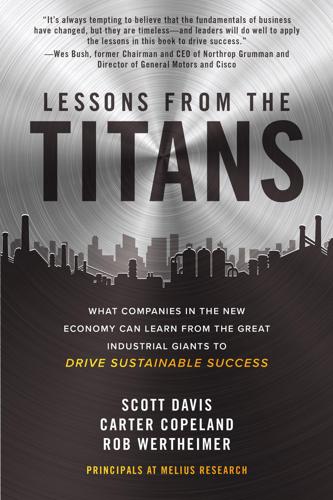
Lessons from the Titans: What Companies in the New Economy Can Learn from the Great Industrial Giants to Drive Sustainable Success
by
Scott Davis
,
Carter Copeland
and
Rob Wertheimer
Published 13 Jul 2020
He is also indebted to his mentor, Joseph Campbell Jr., whose training on how to be a humble but curious analyst, doting father, and thoughtful human being helped shape him into the person that he is today. Rob is grateful for the support of his family throughout the project. Weekend editing sessions provided an opportunity to show the kids that the process of writing, rewriting, and doing it all again is not just something taught in school. INTRODUCTION Even before the coronavirus pandemic exposed flaws in government planning and tested the limits of modern medicine, the world had already become frighteningly out of balance. Tweets had taken over from substantive conversation and “news” had become unapologetically biased. High debt levels and rising leverage risk was something only old people talked about.
…
The most common explanation by the pundits is disruption, which is exceedingly hard to predict and most likely a convenient excuse. The reality is more complex and humbling. Companies usually fail because of the incompetence and arrogance of a complacent management team, not because they struggled to predict the future. Predicting the future may itself just be an exercise in futility. The coronavirus pandemic is a clear example of the random walk we take each day. And this is not a new phenomenon. When we were growing up in the 1980s, futurists predicted the widespread adoption of electric cars by the late 1990s. In fact, GM launched a concept electric car with the EV1 all the way back in 1996.
…
Sadly, these actions were lost in the noise of the COVID-19 global pandemic, which only two months into Calhoun’s tenure called the company’s future into question. To continue to produce MAX aircraft during the grounding, Boeing took on billions of dollars in debt and swung from a position of net cash to a position of net debt for the first time since the 787 crisis earlier in the decade. Funds supported ongoing MAX production in the supply chain and payments to customers for delivery delays. The company essentially made a bet that when recertification occurred, cash would quickly begin to flow and debt could be repaid. The COVID-19 outbreak put unprecedented pressure on global air travel.

Ageless: The New Science of Getting Older Without Getting Old
by
Andrew Steele
Published 24 Dec 2020
By alleviating mortality in childhood and young adults, many of us now live long enough to experience the immune decline of ageing, and more than 90 per cent of deaths from infectious disease are in people over the age of 60. The substantial extra risk to older people from infectious disease has been laid bare by the coronavirus pandemic, whose toll in terms of hospitalisation and death is much higher among the elderly. While dying from flu or COVID-19 isn’t ageing per se, the massively increased risk with age means that ageing bears ultimate responsibility for most of these deaths. What’s worse is that a key tool of modern medicine – vaccination – is less effective in the elderly because vaccines rely on the failing immune system for their effectiveness.
…
It’s also worth following standard advice to avoid infections: wash your hands thoroughly and regularly, cook food thoroughly and take time off work if you’re unwell – this won’t just improve your colleagues’ healthy lifespans, but could have a much wider impact if it stops them passing the disease on to others, and so on. Of course, there could be no better example of the importance of basic hygiene and nipping transmission chains in the bud than the coronavirus pandemic. It might even be worth avoiding infections to optimise your ageing more generally. There’s evidence that historical progress fighting infectious diseases in youth had additional, indirect effects on life expectancy, with children who faced fewer infections growing up being at less risk of diseases like cancer and heart disease in old age.
…
The company is also trialling the drug for other age-related diseases, including Parkinson’s and, at the time of writing, a new study of RTB101 has just been announced to test whether it can reduce the severity of COVID-19 in nursing home residents. Given that there are several at various stages from development to trials, and that many of these are natural compounds or existing drugs repurposed, DR mimetics are racing senolytics to be the first actual anti-ageing treatment deployed in clinical care. (If metformin or RTB101 prove effective against coronavirus, they may win!) In common with senolytics, these drugs will probably first be used to treat a particular condition, whether that be COVID-19, or diseases where loss of autophagy is particularly relevant – neurodegenerative conditions seem a likely contender.
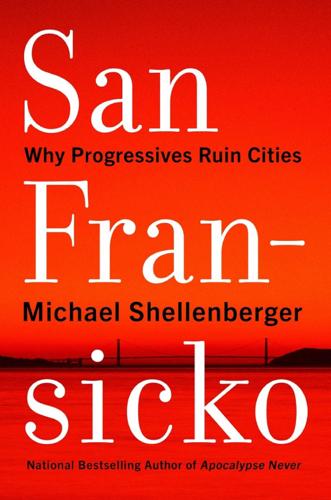
San Fransicko: Why Progressives Ruin Cities
by
Michael Shellenberger
Published 11 Oct 2021
In Philadelphia between 1948 and 1952, scholars found black men died from homicide at twelve times the rate of white men.63 A national survey found the same difference in 1950.64 Today, black Americans are seven to eight times more likely to die from homicide than white Americans.65 In 2019, the homicide rate for white people was 2.3 per 100,000 whereas it was 17.4 for black people.66 And in 2020, in the wake of summer protests against police violence, the homicide rate increased on average by more than one-third in America’s 57 largest cities. Homicides rose in 51 cities and declined in just 6 of them. Homicides rose 35 percent in Los Angeles, 31 percent in Oakland, 74 percent in Seattle, 63 percent in Portland, 60 percent in Chicago, and 47 percent in New York City.67 The coronavirus pandemic may have played a role. “Gangs are built around structure and lack thereof,” noted a Fresno, California, police officer. “With schools being closed and a lot of different businesses being closed, the people that normally would have been involved in positive structures in their lives aren’t there.”68 But there had been a similar spike in homicides in 2015 when there was no coronavirus pandemic.
…
In response, the leadership of the legislature, where Democrats hold a supermajority, moved Wiener out of any leadership role on housing legislation. A group of seven legislators formed a moderate alternative to Wiener and the YIMBYs on one side and NIMBY legislators on the other. The goal was to build consensus around policy that could pass in 2020. YIMBY leaders were optimistic in spring 2020, even after the coronavirus pandemic had begun, that they would pass legislation. “COVID has revealed the fragility of housing scarcity and has made it more urgent for us to not exacerbate it,” a pro-housing leader who asked to remain anonymous told me. “Something inspired by [Wiener’s legislation] SB50 will ram through.”62 But nothing of significance did.
…
Newsom appeared to make good on his commitment in April 2020 by helping San Francisco and other California cities use federal stimulus funding to rent hotel rooms for the homeless to shelter in place during the COVID-19 pandemic, an initiative called Project Roomkey. Doing so was an obvious win-win-win for hotel owners who could have been bankrupted by the pandemic, for the homeless who were uniquely vulnerable to the spread of COVID-19, and for the public. Jennifer Friedenbach of the San Francisco Coalition on Homelessness praised Newsom, whom she had criticized fiercely over the years, telling National Public Radio, “I’m a big believer in redemption.”6 Newsom appears to understand that addiction and mental illness are core drivers of homelessness, and to genuinely care about the problem and the people impacted by it.

Brexit Unfolded: How No One Got What They Want (And Why They Were Never Going To)
by
Chris Grey
Published 22 Jun 2021
But just as they were about to begin, something entirely unexpected and unprecedented was emerging which was to push Brexit from the headlines and to colour the entire negotiating proceedings: the global pandemic of a new and deadly virus. THE CORONAVIRUS PANDEMIC AND BREXIT There is no doubt a book to be written just on the way that the coronavirus – or Covid-19 – pandemic and Brexit intersected. For one thing, it meant that the future terms negotiations often took place by video conference, rather than face to face, which may have inflected them differently. It also meant that, at key times, members of the negotiating teams were in isolation and for a while the British Prime Minister was actually hospitalised.
…
That meant that the inevitably adverse consequences of a trade deal (compared with EU membership) could more easily be concealed. On the other hand, it potentially made a no-deal Brexit more politically viable. However, neither was risk-free since both meant a double hit from Brexit and from coronavirus. At all events, from March onwards the Brexit process and the coronavirus pandemic became inextricably intertwined. THE QUESTION OF TRANSITION PERIOD EXTENSION Rationally, the pandemic ought to have caused the government to extend the transition period, which was already considered by most experts to be too short to undertake a negotiation of such complexity. And, after all, its end date was only an artefact of the original Theresa May deal, struck at the time when the leaving date was still set as 29 March 2019.
…
It also seems likely that for some time to come the identities of ‘remainer’ and ‘leaver’ will continue to be significant features of the political and cultural landscape, very possibly inflecting traditional voting patterns as, to an extent, happened in the 2019 election. The bigger legacy of that would seem likely to be a moving culture war, taking in new issues apart from Brexit but always reflecting the divisions that Brexit both laid bare and magnified. That could already be seen in the way that, during the coronavirus pandemic, overlaps emerged between ‘lockdown sceptics’ and Brexiters, as discussed in Chapter Six. Indeed, Nigel Farage pivoted from making Brexit his main preoccupation to criticising the coronavirus restrictions (as well as treading his familiar territory of stoking panic about asylum seekers).

Korea--Culture Smart!
by
Culture Smart!
Published 15 Jun 201
He is an Associate Fellow at the Royal Institute of International Affairs (Chatham House), and an Honorary Research Associate, Centre of Korean Studies, School of Oriental and African Studies, University of London. He is a past president of the Royal Asiatic Society, Korea Branch, and of the British Association for Korean Studies. COVID-19 The coronavirus pandemic of 2020 affected millions of people around the world, causing unprecedented social and economic disruption. As the impact of this global crisis continues to unfold, in many countries social norms are being challenged, and enduring changes will be reflected in future editions of Culture Smart!
…
Sanitary towels may be available but it is unlikely that tampons will be found. In case of serious injury or accident, medical evacuation may be necessary, so comprehensive travel insurance is essential. Tap water is not safe. Bottled water is widely available. Avoid uncooked food. COVID-19 Given the proximity of China, where COVID-19 first emerged in December 2019, it was not surprising that the pandemic quickly spread to the Korean Peninsula. In South Korea, the first case was reported on 20 January. In late February a massive program of testing and quarantine began, with restrictions on travelers from affected countries, and an effective tracing program was introduced.
…
However, there were soon major spikes of infection linked to nightclubs and places of worship. The government’s response was swift and, despite the setbacks, its handling of the crisis was widely viewed as exemplary. It also led to a surge in support for President Moon. North Korea’s initial claims that it had no cases of COVID-19 were viewed with scepticism by many outsiders. As with past epidemics, the country adopted drastic preventative measures in January, including widespread quarantine, with the closure of schools and colleges, and an almost total ban on travel, including to and from China. In both countries tourism came to a complete halt.

The Impossible City: A Hong Kong Memoir
by
Karen Cheung
Published 15 Feb 2022
But two neighborhoods down from the bookstore, in a little alley not far from the business district in Central, it’s past last call for drinks at Club 71. Audaciously named after the half-million-strong protest march on July 1, 2003, the bar welcomed scores of activists, journalists, and artists but eventually succumbed to unaffordable rents during the coronavirus pandemic. It was my favorite watering hole. “Financially, I really couldn’t hang on,” owner Grace Ma said in an interview. “It’s time to move on, I want to do something else.” In its last month of operation, the bar was so packed that patrons had to stand in the park outside, sloshing down the foaming beers.
…
This was not a mutually abusive romantic relationship I could leave, or a depression that could be fixed by developing habits such as waking up earlier, exercising regularly, or getting more sun. This was my home and I could not opt out of caring about its future. The protests eventually died down with the arrival of the coronavirus pandemic, but the crackdown continued in more insidious ways: In mid-2020, China passed a law that would outlaw all dissent. The street battles are gone, but my insomnia persists. There is a heaviness in my system, remnants from those days that I cannot purge. But there was also a surge of more people in my community speaking about mental health than before.
…
Feng shui books fly off the shelf. A fortune-teller-influencer’s m-shaped forehead and ponytail is ubiquitous at this time of the year, smiling grimly at me on subway ads. A lion dances through my office building to offer luck, and we are given lettuce scraps to stuff into our red packets. This is just before the Covid-19 pandemic hits, although we are already wearing masks. No one here has forgotten the devastation of SARS. I’ve been avoiding new year celebrations since Gran died. Everywhere in the city, I see traces of this holiday that is meant to symbolize family harmony. Our family has been broken ever since we lost Gran.

Moon Prague, Vienna & Budapest: Palaces & Castles, Art & Music, Coffeehouses & Beer Gardens
by
Jennifer D Walker
,
Auburn Scallon
and
Moon Travel Guides
Published 15 Oct 2024
Direct flights take around 8.5 hours. Before the coronavirus pandemic, there were also direct flights to Los Angeles and Miami, which may return in the future. Budapest Budapest has no direct flight connections from the US. If you fly in from any of the major US cities, you will need to change planes somewhere like London, Frankfurt, Munich, or even Reykjavik. In 2018, LOT Airlines (www.lot.com) launched new routes from Budapest Ferenc Liszt Airport with direct flights between New York and Chicago with flight times lasting around 10-11 hours, but this route stopped during the coronavirus pandemic. FROM EUROPE The great thing about traveling in Central Europe is you have an abundant selection when it comes to which mode of transport to pick.
…
Ruin bars also host cultural events, like farmers markets, movie screenings, or charitable cooking drives. You’ll find most of these bars concentrated around the heart of the Jewish Quarter, but there are a few beyond it, too. In recent years the expanding gentrification in the Jewish Quarter and beyond has closed many of these bars down—a situation exacerbated by the coronavirus pandemic. Only a handful remain, along with a few new inauthentic “ruin bars” that have been artificially gutted to mimic the aesthetic. Even the original VII District ruin bars have turned into a tourist attraction and are eschewed by locals as tourist traps. I do recommend you visit Szimpla on your first visit to Budapest as the place is truly spectacular, capturing a unique piece of history in Budapest’s cultural scene, and over the past few years has really pushed to keep its original countercultural and artistic spirit alive.
…
-Sat. 10am-2am, Sun. 10am-10pm; metro 1, 2, 3, tram 47, 48, 49: Deák Ferenc tér You can spot Telep by the stickers plastered all over the windows and the hip crowd spilling into the street outside. Part art gallery, part bar, Telep has become one of Budapest’s core urban meeting points. It’s your chance to hang out with the cool crowd in Budapest. Alfresco Drinks Even before the coronavirus pandemic, much of Budapest’s spirited nightlife existed outdoors, on terraces and “kerts” (gardens) around the city. Some of the city’s best spots for an alfresco drink include: RIVER-VIEW TERRACES • PONTOON (click here), located on a boat next to Chain Bridge, has great views overlooking the Danube.
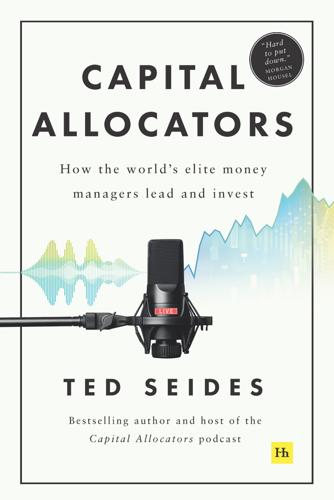
Capital Allocators: How the World’s Elite Money Managers Lead and Invest
by
Ted Seides
Published 23 Mar 2021
However, the biggest risk to portfolios is an unforeseen tail event. As the late Peter L. Bernstein said, “risk means you don’t know what will happen.” Financial setbacks over my career, which started a few years after the crash in 1987, included the dot.com bubble in 2000, the Global Financial Crisis in 2008, the coronavirus pandemic in 2020, and many smaller sell-offs along the way. Each of these were shocks to the system. Doctors referred to SARS-CoV-2 as a “novel” coronavirus. The sudden stop to economies around the world was indeed novel – it had never happened before. Each tail event reminds CIOs of the problems of assumptions that underpin models.
…
Part 2 discusses the frameworks modern CIOs employ in managing the money entrusted to them. The sequence from high level to the ground is as follows: Governance Investment strategy Investment process Technological innovation The section closes with a case study on how CIOs handled the uncertainty presented by the Covid-19 pandemic in 2020. Chapter 6: Governance “You can’t have investment success with a bad governance structure.” – Karl Scheer A few years ago, a money manager I knew was preparing for its sixth meeting with a major endowment. They had met junior analysts, asset class specialists, and senior staff at the endowment’s office and their office, and they had spent a full day visiting portfolio companies together.
…
To learn more Podcasts Capital Allocators: Steve Galbraith – In the Boardroom (Ep.48) White Papers Best Governance Practices for Investment Committees, Greenwich Roundtable37 Principles of Investment Stewardship for Nonprofit Organizations, Commonfund Institute38 * * * 33. The timing of the removal of the hedge just before the Covid-19 crisis in March 2020 looked horrible. Six months later with the market fully recovered, Meng’s rationale of the undue cost of a hedge over the long term would have sounded a lot better. 34. “CalPERS board wrestling with how to delegate,” Pensions & Investments, September 21, 2020. 35.
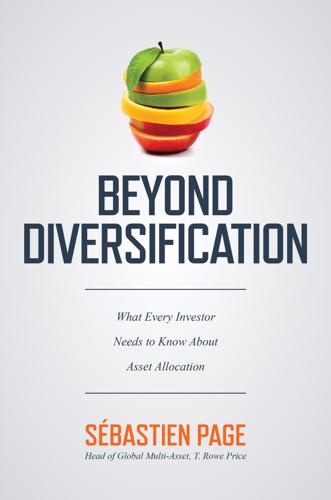
Beyond Diversification: What Every Investor Needs to Know About Asset Allocation
by
Sebastien Page
Published 4 Nov 2020
See Jack Treynor (1961), Bill Sharpe (1964), John Lintner (1965), and Jan Mossin (1966). 2. “Professor William Sharpe Shares Nobel Prize for Economics,” gsb.stanford .edu. 3. As I finalize this book at the end of March 2020, equity markets have suffered one of their worst and fastest sell-offs in history due to the coronavirus pandemic, combined with a major oil shock. The Federal Reserve has aggressively lowered rates, and the three-month US Treasury bill is at zero. These are unusual circumstances. In this context, expected returns across asset classes should be about 1–2% lower due to lower rates, compared with those of 2018.
…
There was a bubble in cryptocurrencies, but it’s been deflating somewhat slowly and, so far, without systemic consequences. However, we do worry about latent risks such as the unprecedented levels of government debt and 0% interest rates outside the United States. As the events related to the coronavirus pandemic of 2020 continue to unfold, pundits like to compare this crisis with the 2008 financial crisis. Yet there are important differences. The 2008 crisis involved a speculative bubble in real estate. Systemic risk was high, in great part because banks owned structured products linked to this bubble.
…
Sector weights for industrials and materials have gone down over this period as well.5 Therefore, not only will the next crisis be different (as crises always are), but the sensitivity of US stocks to that new crisis will be different as well. They should be more resilient to an economic downturn that affects mostly cyclicals. Recent market performance during the coronavirus pandemic proves this point. Large technology companies have protected the S&P 500 from the much larger drawdown it would have experienced if it still had a 31% weight in financials and energy. These changes in sector weights also make time series analyses of valuation ratios on the S&P 500 less reliable.
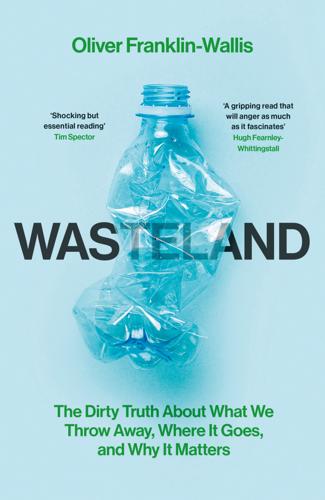
Wasteland: The Dirty Truth About What We Throw Away, Where It Goes, and Why It Matters
by
Oliver Franklin-Wallis
Published 21 Jun 2023
In Britain, as in Europe, landfills have a lousy reputation as being archaic, foul and polluting. As a result, waste companies, always keen to show off their latest recycling facilities, are reluctant to let anyone on a landfill, and particularly not a journalist. In fact, for more than a year, every waste company that I ask refuses to grant me access to one, citing either the coronavirus pandemic or unspecified safety concerns (while at the same time, insisting that landfills are perfectly safe). SUEZ, the French waste and sanitation giant named for its involvement in digging the Suez Canal, is the one exception. It is more than happy to show me around. In the office, I meet my chaperones: Victoria Pritchard, SUEZ’s regional manager for the North East of England, and Jamie McTighe, the regional operations manager.
…
When clothes leave exporters like Pink Elephant bound for West Africa, this is where the lion’s share will end up. From here, the clothes will spread across Ghana and across borders, into Côte D’Ivoire, Togo, Niger, Benin and beyond. ‘Obroni!’ ‘Hey, Obroni!’ Foreigner! White person! The traders laugh and gossip, offering greetings and high fives. The coronavirus pandemic has meant fewer tourists passing through Accra for a while, and so our group stands out. I am being accompanied by Sena Mpeko, a British-Ghanaian journalist helping me in Accra; we in turn are being shown around by Yayra Agbofah and Kwamena Dadzie Boison, the co-founders of The Revival, a Ghanaian fashion brand that specialises in upcycling second-hand clothing.
…
Sewage, like trash, can tell you a lot about a city’s population: its eating habits, its flushing habits, and even its health. Several cities around the world monitor sewage to detect diseases, including cholera; shit will normally tell you about an emerging outbreak before hospital admissions do. During the coronavirus pandemic, London, like many cities, began testing the viral load in their sewage in real time to track cases and detect the emergence of new variants. In 2022, sewage testers detected polio virus in the city’s sewage, triggering a hurried vaccination drive – shit as early-warning system. We walk along the lanes.
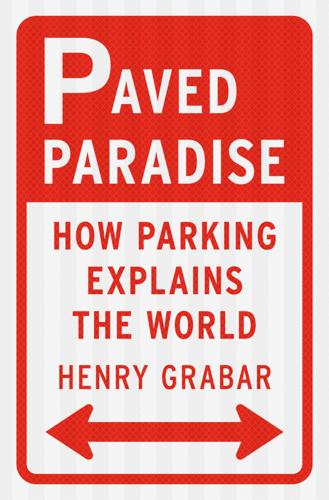
Paved Paradise: How Parking Explains the World
by
Henry Grabar
Published 8 May 2023
Before you know it, the parking lot belongs to the birds and the bugs. It was a Pizza Hut; now it’s all covered in daisies. I wished for others to share my epiphany, to recognize the tremendous potential of all the land that lay hidden beneath the chassis of a thousand parked cars. And then the monkey’s paw part: As I began to write this book, the coronavirus pandemic shut down half the world. But for the ambulances, traffic vanished, and the air cleared. Some lucky few had fled to the country, but most urbanites were left with the unsettling experience of an empty city. The cramped feeling of an apartment without public life; the silence of streets without cars.
…
Other excellent histories that helped inform my perspective on the development of the American city include Crabgrass Frontier by Kenneth Jackson, Building Suburbia by Dolores Hayden, Mall Maker by Jeffrey Hardwick, Down the Asphalt Path by Clay McShane, Voices of Decline by Robert Beauregard, The Drive-In, the Supermarket, and the Transformation of Commercial Space in Los Angeles by Richard Longstreth, The Big Roads by Earl Swift, Dingbat 2.0, edited by Therman Grant and Joshua Stein, and The Politics of Place: A History of Zoning in Chicago by Dana Caspall and Joseph Schwieterman. The first place I ever read a critical word about parking lots was, of course, in the chapter on “border vacuums” in The Death and Life of Great American Cities. I did the reporting during the coronavirus pandemic and I am especially grateful to everyone who took the time to share some of their time in person: Ginger Hitzke, José Trinidad Castañeda, Nathan Carter, John Hammerschlag, Mark Lawrence, Lori Droste, Michael Manville, Mott Smith, John Van Horn, Sam Schwartz, Jane Wilberding, Lindsay Bayley, Chrissy Mancini Nichols, Mark Vallianatos, Victor Pontis, Howard Yarus, Christophe Najdovski, Clay Grubb, Matt Parkerson, Susan Holgren, Greg Anderson, and others.
…
Chapter 13 How Americans Wound Up Living in the Garage At the start of 2020, José Trinidad Castañeda was living with his mom. Reluctant to drain his savings in a rental market where a one-bedroom apartment went for north of $1,500 a month, Trinidad Castañeda shared a small house with his mother and two sisters. This made him typical of his generation: Even before COVID-19, 46 percent of eighteen-to-twenty-nine-year-olds lived with their parents. After COVID-19, that figure rose to 52 percent—the highest mark since the Great Depression. What made José atypical was that the hypothetical apartment that was out of his reach was not one in Boulder, Colorado, or Washington, DC, or Cambridge, Massachusetts, to name just a few cities where high rent has forced young people into cramped, shared quarters.
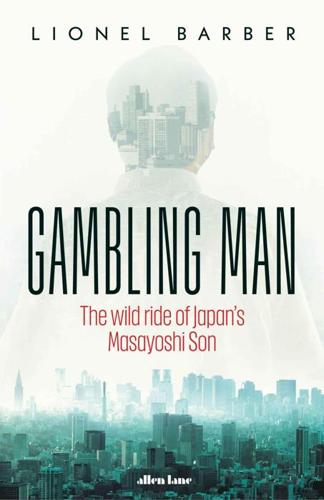
Gambling Man
by
Lionel Barber
Published 3 Oct 2024
Like Alexander the Great and Napoleon, he said, without a trace of irony, he had the luxury of having no serious competitors.1 When Masa made that hubristic claim, he was still top dog. He’d raised the biggest venture capital fund the world had ever seen. Everyone wanted to meet him; no one could afford to turn down his money. Then, in the blink of an eye, came the collapse of WeWork, the coronavirus pandemic and SoftBank’s brush with corporate death. Twelve months on, Masa was desperate to mount yet another comeback. His plan was to shift into public markets with a focus on Big Tech stocks such as Amazon, Facebook, Google, Microsoft and Netflix. He was at least seven years late to the party; but the fact that the man he chose to lead his new investment venture was Akshay Naheta, one of the least trusted people inside SoftBank, was an even greater surprise.
…
‘He was largely [author italics] making transactions based on my direction. So if anybody should be criticized it’s me … They were just executing my strategy and my strategy was bad with the timing and so on.’6 As the Northstar strategy unravelled, Masa spoke of a winter storm enveloping SoftBank and the global economy. The coronavirus pandemic disrupted global supply chains, reminding the West about the dangers of dependency on China, where many believed the virus had originated. For more than a quarter of a century, SoftBank had been a leading beneficiary of China’s opening to the rest of the world. Alibaba was the golden goose which had laid a multitude of eggs.
…
At an earnings presentation, on that day, Masa ignored the threat and talked up SoftBank’s prospects. The tide is turning, he declared, as he stood next to a slide with a crashing wave drawing from the famed Hokusai woodcut. That same day, the World Health Organization announced it had a name for the new virus strain: Covid-19. On 10 March, Masa broke a three-year Twitter silence to say he was ‘worried’ about Covid-19. He promised to offer one million free tests for the virus. People could take a nasal swab at home and mail it to a lab, which would test the specimen and send back the results. The plan was dropped after criticism that Masa was interfering in public health provision,fn1 but, as during the Fukushima accident, Masa was ever keen to ride to the rescue in the wake of a natural disaster.

Belgium - Culture Smart!: The Essential Guide to Customs & Culture
by
Bernadett Varga
Published 14 Aug 2022
Despite the fact that most households own a car, online shopping is very popular for both personal and household items. On average people in the Charleroi area have a higher preference for shopping by car and favor hypermarkets such as Cora or the other big supermarket-chains. Others in the Louvain/Leuven area also prefer shopping by car and tend to patronize smaller chains such as Delhaize. The coronavirus pandemic, however, has changed the shopping behavior of many—a quarter of Belgians have been prompted to use a different retailer, store, or Web site, and approximately 60 percent have tried something new when shopping. Cash payment is still available in most stores; however, card payment is well established in every supermarket and store.
…
However, it is a polarized city, containing both the richest and the poorest districts in all Belgium, and has higher unemployment than either Flanders or Wallonia. The COVID Pandemic COVID-19 arrived in Belgium in the middle of the period of political stasis. The first cases were reported in February 2020 and transmission within the country was confirmed in early March, by which time Belgium had the third-highest number of COVID-19 deaths per head of population in the world. Later in March the authorities ordered the closure of schools, cafés, and restaurants and canceled all public gatherings for sporting or cultural purposes.
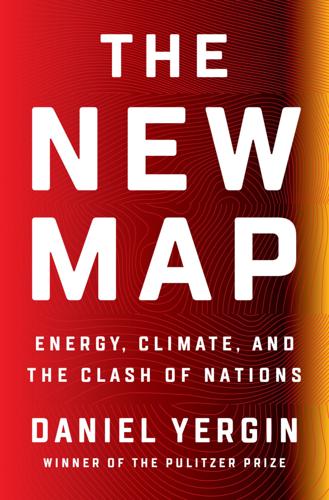
The New Map: Energy, Climate, and the Clash of Nations
by
Daniel Yergin
Published 14 Sep 2020
He succeeded in reforming the bankrupt pension system, which allowed government employees to retire early—in some circumstances, at fifty-six for men and fifty-three for women—and further opened up Brazil to the global economy and international investment. These developments restored confidence in Brazil’s prospects. But further reforms of the energy sector have been hampered by turbulent politics and a congress with more than twenty political parties. The coronavirus pandemic in 2020 hit Brazil hard, adding further to the political turbulence. Still, substantial new investment has been going into Brazil’s highly prospective offshore, and those waters are now one of the most active areas in the global oil industry.3 AMLO and Bolsonaro, coming to the presidencies of the two largest Latin American countries within a few weeks of each other, are leading their nations in opposite directions.
…
Yet, even with the slowdown, the United States had become the world’s number one oil producer. By February 2020, it had reached the highest level of production ever—thirteen million barrels per day—more than Saudi Arabia and Russia and on the way to tripling the level of 2008. At that moment struck the calamity of 2020—the coronavirus pandemic and the shutdown of the globalized world economy, which slammed shale as it did most industries. As a result of a drastic cutback in investment, shale output will go in reverse and decline. When growth returns, it will be at a slower pace. But, whatever the trajectory, shale is now established as a formidable resource
…
What was thought would be over in weeks, if not months, became a long war. The conflict has killed many civilians, displaced millions of people, put even more at risk of starvation, disrupted basic services like water and electricity as well as the medical system, precipitated cholera and diphtheria epidemics, and then COVID-19—altogether adding up to what the United Nations has described as a major humanitarian crisis.23 The Saudi-led air campaign has been criticized for indiscriminate targeting that was killing civilians, a critique extended to the United States, which has been supplying ordnance to the Saudis. For their part, the Houthis have been brutal and repressive in Yemen.
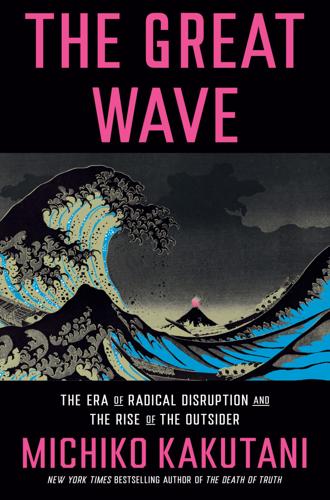
The Great Wave: The Era of Radical Disruption and the Rise of the Outsider
by
Michiko Kakutani
Published 20 Feb 2024
GO TO NOTE REFERENCE IN TEXT The public posting of the COVID-19 genome: Charlie Campbell, “Exclusive: The Chinese Scientist Who Sequenced the First COVID-19 Genome Speaks Out About the Controversies Surrounding His Work,” Time, Aug. 24, 2020, time.com/5882918/zhang-yongzhen-interview-china-coronavirus-genome/; Victoria Gill, “Coronavirus: Virus Provides Leaps in Scientific Understanding,” BBC News, Jan. 10, 2021, bbc.com/news/science-environment-55565284; Jon Gertner, “Unlocking the Covid Code,” The New York Times Magazine, Mar. 25, 2021, nytimes.com/interactive/2021/03/25/magazine/genome-sequencing-covid-variants.html; Mark Zastrow, “Open Science Takes on the Coronavirus Pandemic,” Nature, Apr. 24, 2020, nature.com/articles/d41586-020-01246-3.
…
GO TO NOTE REFERENCE IN TEXT by the end of 2020: Claire Klobucista, “A Guide to Global COVID-19 Vaccine Efforts,” Center on Foreign Relations, Dec. 5, 2022, cfr.org/backgrounder/guide-global-covid-19-vaccine-efforts; World Health Organization, “COVAX Announces Additional Deals to Access Promising COVID-19 Vaccine Candidates; Plans Global Rollout Starting Q1 2021,” news release, Dec. 18, 2020, who.int/news/item/18-12-2020-covax-announces-additional-deals-to-access-promising-covid-19-vaccine-candidates-plans-global-rollout-starting-q1-2021. GO TO NOTE REFERENCE IN TEXT The public posting of the COVID-19 genome: Charlie Campbell, “Exclusive: The Chinese Scientist Who Sequenced the First COVID-19 Genome Speaks Out About the Controversies Surrounding His Work,” Time, Aug. 24, 2020, time.com/5882918/zhang-yongzhen-interview-china-coronavirus-genome/; Victoria Gill, “Coronavirus: Virus Provides Leaps in Scientific Understanding,” BBC News, Jan. 10, 2021, bbc.com/news/science-environment-55565284; Jon Gertner, “Unlocking the Covid Code,” The New York Times Magazine, Mar. 25, 2021, nytimes.com/interactive/2021/03/25/magazine/genome-sequencing-covid-variants.html; Mark Zastrow, “Open Science Takes on the Coronavirus Pandemic,” Nature, Apr. 24, 2020, nature.com/articles/d41586-020-01246-3.
…
GO TO NOTE REFERENCE IN TEXT The public posting of the COVID-19 genome: Charlie Campbell, “Exclusive: The Chinese Scientist Who Sequenced the First COVID-19 Genome Speaks Out About the Controversies Surrounding His Work,” Time, Aug. 24, 2020, time.com/5882918/zhang-yongzhen-interview-china-coronavirus-genome/; Victoria Gill, “Coronavirus: Virus Provides Leaps in Scientific Understanding,” BBC News, Jan. 10, 2021, bbc.com/news/science-environment-55565284; Jon Gertner, “Unlocking the Covid Code,” The New York Times Magazine, Mar. 25, 2021, nytimes.com/interactive/2021/03/25/magazine/genome-sequencing-covid-variants.html; Mark Zastrow, “Open Science Takes on the Coronavirus Pandemic,” Nature, Apr. 24, 2020, nature.com/articles/d41586-020-01246-3. GO TO NOTE REFERENCE IN TEXT Meanwhile, open sourcing during the pandemic: “Open Source Project Hubs for COVID-19,” New America, newamerica.org/digital-impact-governance-initiative/reports/building-and-reusing-open-source-tools-government/open-source-project-hubs-for-covid-19/. GO TO NOTE REFERENCE IN TEXT Taiwan, for instance, made some: Erin Hale, “How Taiwan Used Simple Tech to Help Contain Covid-19,” BBC News, Feb. 25, 2022, bbc.com/news/business-60461732; Eric Jaffe, “How Open Data and Civic Participation Helped Taiwan Slow Covid,” Sidewalk Talk (blog), Mar. 27, 2020, medium.com/sidewalk-talk/how-open-data-and-civic-participation-helped-taiwan-slow-covid-b1449bab5841.

Tomorrow's Capitalist: My Search for the Soul of Business
by
Alan Murray
Published 15 Dec 2022
Mark Cuban has always been a showman and is a popular media personality on the highly rated Shark Tank. He’s also a billionaire, an effective entrepreneur, and owner of the Dallas Mavericks. He dabbles in politics and has been mentioned on occasion as a potential presidential candidate. One thing I know about Cuban. He understands the big gesture. When I interviewed him early in the coronavirus pandemic, he had just announced that he was paying all hourly employees of the Dallas Mavericks their normal wages, even though the Mavericks’ home arena was closed, and the NBA was shut down for the foreseeable future. He explained, “It’s not going to cost me nearly as much as it would cost the hourly employees to go without.”5 He added that he was rich and could afford it.
…
The serious contenders, in my view, were the companies who were actually trying to make a measurable difference, either for their employees or in the COVID-19 fight. Target announced an investment of more than $300 million in added wages, paid leave, and backup childcare. Allstate offered free coverage to those who were using their vehicles to deliver food and medicine. MassMutual offered free life insurance to frontline health care workers. Jack Dorsey dedicated $1 billion in Square stock for coronavirus relief. The list went on. COVID-19 has presented an opportunity for CEOs to do more than pay lip service to change. Paul Polman, who became CEO of consumer goods giant Unilever back in 2009 (retiring in 2019 and handing the reins to Alan Jope) and steered it toward a new kind of capitalism, expressed the view of many: “Governments in this world right now have a little bit of a hard time, and global governance is broken,” he said.6 “Populism, xenophobia, nationalism… all these things are going in the wrong direction.
…
Classification: LCC HD58.8 .M874 2022 | DDC 658.4/06—dc23/eng/20211116 LC record available at https://lccn.loc.gov/2021047539 ISBNs: 9781541789081 (hardcover); 9781541789104 (e-book) E3-20220314-JV-NF-ORI CONTENTS Cover Title Page Copyright Dedication Foreword: The Redesign Is Underway Prologue: God and Manna Part One: Raising the Stakes Chapter 1: The Big Change Chapter 2: The Bastion Shakes Chapter 3: Whiplash Chapter 4: The COVID-19 Redemption Part Two: What Do Stakeholders Want? Chapter 5: An Empowered Workforce Chapter 6: Innovation from Diversity Chapter 7: Climate Commitment Chapter 8: What’s Good for the Community Part Three: The Soul of a Corporation Chapter 9: The Activist CEO Chapter 10: The Purpose of Business Chapter 11: The Accountable Era Chapter 12: Confronting the Skeptics and the Critics Acknowledgments Discover More About the Author Notes Praise for Tomorrow’s Capitalist To the women who gave me life and gave my life meaning: My mother, Catherine; my daughters, Lucyann and Amanda; and my life’s partner, Lori.

Other Pandemic: How QAnon Contaminated the World
by
James Ball
Published 19 Jul 2023
: the dynamics of COVID-19/5G conspiracy theories on Facebook’, www.ncbi.nlm.nih.gov, November 2020. 8. Nina Burleigh, ‘How The Covid-19 Vaccine Injected Billions Into Big Pharma—And Made Its Executives Very Rich’, www.forbes.com, 14 May 2021. 9. As discussed in earlier chapters, even Facebook’s own internal research highlighted this issue for the world’s largest social network. This is a good YouTube example: Katie Dowd, ‘We ran a YouTube test. The results horrified us’, www.sfgate.com, 21 May 2021. 10. Or people who identified as journalists, at least. 11. ‘The Truth Behind the Coronavirus Pandemic, Covid-19 Lockdown & the Economic Crash – David Icke’, https://freedomplatform.tv, 18 March 2020. 12.
…
The far-right shock jock Rush Limbaugh said in February 2020 that Covid-19 was the common cold, ‘weaponised’ by the media and others to bring down Donald Trump40 – a view Trump himself then endorsed.41 QAnon influencers resolved that Covid-19 had been deliberately made in a lab and released, possibly as part of an effort by China to prevent Trump’s re-election (why China would first release the pathogen in their own country is left unexplained). Other pro-Trump conspiracists suggested that Britain might be behind the plot to take down Trump’s ‘roaring economy’.42 As Covid-19 spread in the US, conspiracists ended up focusing on one man in particular: the wizened seventy-nine-year-old director of the National Institute of Allergy and Infectious Diseases, Anthony Fauci.
…
In the US, a poll taken by YouGov as early as May 2020 found that 44 per cent of Republican voters believed Bill Gates was plotting to use Covid-19 as a pretext to plant tracking microchips in billions of people around the world. Only 26 per cent disagreed with the statement.67 The pandemic also provided many more avenues in conspiratorialism. Previously relatively mainstream figures like Russell Brand or Joe Rogan would promote Covid-19 conspiracies to their large followership, while celebrities including Jim Carrey, Lisa Bonet and tennis pro Novak Djokovic all received coverage for their refusal to take the Covid-19 vaccine. By July 2021, when the vaccine was a reality and adult Americans were being urged to get their free jab, a further YouGov survey found that 51 per cent of people who had refused the vaccine believed it contained a microchip.

Not the End of the World
by
Hannah Ritchie
Published 9 Jan 2024
‘Flygskam’ or ‘flight shame’ was born as an environmental movement in Sweden in 2018. But people have been talking about flying less for as long as I can remember. It’s a very reasonable position to take: most people in the world have never flown. It’s a luxury of the few. Some people had got used to hopping on a plane to attend a one-hour meeting. If the coronavirus pandemic taught us anything, it’s that most of these meetings can be done just as well online. It’s perfectly sensible that those who do fly should cut back. But aviation has given the world too much to cut it out completely. It has offered people the opportunity to migrate from one country to another.
…
It’s only then – when the image of ‘environmentally friendly’ behaviours line up with the effective ones – that being a good environmentalist might stop feeling so bad. (2) Systemic change is the key The reality is that we will not fix our environmental problems through individual behaviour change alone. This became obvious during the coronavirus pandemic. The world spent most of 2020 at home, at a huge cost to the quality of life for millions of people. Our lives were stripped back to the bare minimum. There were hardly any cars on the roads or planes in the sky. Shopping malls and entertainment venues were shut. Economies across the world tanked.
…
Per capita measures will peak first, then it’s a tug-of-war over whether our impacts per person will fall more quickly than the population is growing. We are very close. Emissions increased rapidly in the 1960s and 70s, then again in the 1990s and early 2000s. But in recent years this growth has slowed down a lot. Emissions barely increased at all from 2018 to 2019. And they actually fell in 2020 as a result of the Covid-19 pandemic. I’m optimistic we can peak global emissions in the 2020s. Global per capita CO2 emissions have peaked; total emissions will peak soon too Carbon dioxide emissions from fossil fuels and industry. Land-use change isn’t included. Who emits the most greenhouse gases? If we want to peak then reduce our emissions, we need to know where they’re coming from.
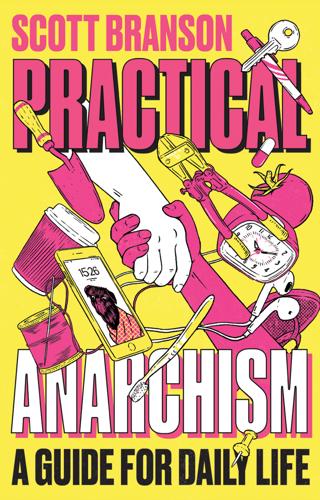
Practical Anarchism: A Guide for Daily Life
by
Scott. Branson
Published 14 Jun 2022
Our labor conditions may not be the tipping point to ending the complex systems of oppression, though arguably being out of work—and being involved in mutual aid—does seem to connect to the willingness to risk more when the racist violence becomes intolerable. For many, the pandemic precarity wasn’t new, just a solidified version of a long-term experience: tinder that needed a spark. On a hopeful note, the authors of the essay, “The Interregnum: The George Floyd Uprising, the Coronavirus Pandemic, and the Emerging Social Revolution,” argue that the phenomena after the uprising of the “Great Resignation,” which they rename the “Great Refusal,” of people giving up their low-paid, pointless jobs, was a furthering of the revolutionary fervor of the rebellion into more aspects of our daily life.
…
Therefore, the image of the violent anarchist serves as a distraction from the fact that the state and capitalism are conducting an ongoing social war on everyone, the whole planet, and all that lives on it, with particular people bearing the brunt of its most explicit violence. Perhaps many people who have been previously sheltered from this realization may see it more explicitly in the willingness of most states to sacrifice significant numbers of their population for the sake of the market in the recent Covid-19 pandemic. When this social war has become so evidently clear, we can confidently say that now is the best time to start practicing anarchism. Recently, the term anarchist has come back into fashion, along with domestic terrorist and outside agitator, as a way for the mainstream news and politicians to discredit movements in the street.
…
Globally, there have been more and more grassroots movements with significant anarchist participation or anarchistic tendencies, from Chile to Hong Kong, from France to India, from Sudan to Greece, and more. Moreover, this period also saw the incredible spread of mutual aid projects to help communities afflicted by climate catastrophes like hurricanes, flooding, and wildfires. I wrote this book in the immediate wake of the Covid-19 pandemic and George Floyd rebellions, which have further built up anarchist practices of direct action and world-building and helped form a new generation of people looking to non-state, mundane ways of finding freedom—spreading globally from the USA outward through international solidarity. We are still in this moment, where the legacy of protest movements is entangled with occupations, and there are ongoing mutual aid projects across the world providing people with resources in the face of failed state efforts.
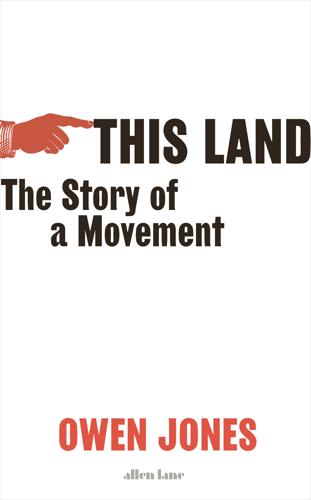
This Land: The Struggle for the Left
by
Owen Jones
Published 23 Sep 2020
It’s 4 March 2020, and Britain is in the midst of an increasingly unsettling interlude: less than three months since Jeremy Corbyn’s Labour party suffered electoral obliteration at the hands of Boris Johnson’s Brexit populists, and less than three weeks before Johnson’s government, belatedly recognizing the threat of the coronavirus pandemic, would impose a national lockdown. As I cycled to Mandelson’s offices, England’s chief medical officer, Professor Chris Whitty, was warning journalists that ‘some deaths’ were likely. A storm was coming, but as yet it remained rumblings of thunder in the distance. The old world was still intact, and it was ruled by a Conservative government drunk on triumphalism, rolling around in its newly acquired power, seemingly oblivious to everything else.
…
It nurtured a new ecosystem of think tanks, economists and intellectuals who are seriously engaged in debating what a new world could look like, brimming with ideas such as the four-day working week, a Green Industrial Revolution, and the democratization of the workplace and the economy. Just over three months after the 2019 election, British society was shut down in response to the coronavirus pandemic. ‘Boris must embrace socialism immediately to save the liberal free market,’ boomed the Telegraph, as the age of coronavirus dawned. Undoubtedly, the Conservative government had no choice but to enact the most dramatic expansion of the state in peacetime, which included paying the wages of half the country’s workforce.
…
Today, many of Corbyn’s opponents remain conceptually frozen in the late 1990s, when Tony Blair triumphed in Britain alongside like-minded political torchbearers in Western Europe and the United States. Simply through the process of laying claim to the mantle of Blairism, they believe both that they inherit a magical election-winning political formula, and that Blairism is an answer to today’s challenges. Even before the Covid-19 pandemic detonated like a bomb at the heart of the global economic system, the late 1990s felt like a different, faraway political universe – and a fantasy one at that. One in which the bubble of financialized capitalism seemed to guarantee an eternity of economic growth and living standards; or, so the mantra went, a rising tide that would lift all boats.
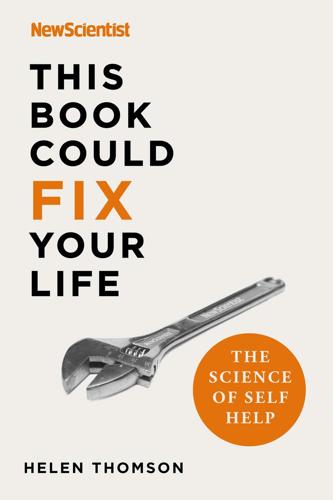
This Book Could Fix Your Life: The Science of Self Help
by
New Scientist
and
Helen Thomson
Published 7 Jan 2021
It might seem like some new-age mumbo-jumbo, but this simple act is backed by plenty of studies that show how writing about good experiences increases people’s life satisfaction, with the benefits lingering for at least two weeks after the task.4 It doesn’t have to be a long diary entry. During the coronavirus pandemic, this was the first tool I turned to, using Instagram to write about one positive thing that I experienced each day with the hashtag #littlebitoflovely. It not only helped me feel happier while I was posting, but I also felt it had an influence on my general well-being throughout the day, making me more mindful of the good aspects of my life as they were occurring.
…
The WHO goes so far as to class it as a group 1 carcinogen, because of a strong link between alcohol consumption and cancer, and says there is no safe level of consumption. And, of course, excessive alcohol consumption increases the risk of death from accidents and violence. While there seems to be a downward trend in drinking among younger people in the UK, we may expect to see fluctuations in this pattern as a result of the coronavirus pandemic and its economic fallout. Deaths from liver disease rose in the United States after the 2008 financial crisis, with a particularly sharp rise in alcohol-related cirrhosis among young people, a reverse of the previous decade where deaths from cirrhosis were falling. Because of the timing of the upswing in deaths, the researchers suspected it could be connected to unemployment and other economic factors resulting from the financial crisis.
…
HOW TO STOP OVEREATING If you feel like your diet has completely gone to pot during a year of coronavirus lockdowns in which you’ve struggled to find your regular food, and been stressed and bored – known risk factors for overeating – then you’re not alone. Emerging evidence suggests that many people, in the UK at least, are struggling to resist the comforts of food more than ever. Weight gain and its negative impact on our health might be an unforeseen consequence of the coronavirus pandemic. An unhealthy diet is often blamed on poor choices and a lack of willpower. We’ve already looked in Chapter 6 at some ways you can train your brain into choosing healthier foods. But new research reveals another line of attack specifically if you find that you are consistently overeating.

A Hacker's Mind: How the Powerful Bend Society's Rules, and How to Bend Them Back
by
Bruce Schneier
Published 7 Feb 2023
If you find a hack—a way of following the letter of the law that seems to violate the spirit—it’s not your fault that the law wasn’t well written. This is the sort of argument that you hear from tax avoidance proponents everywhere. And laws are hacked everywhere. In 2020, the Federal Reserve implemented an emergency loan program for companies affected by the coronavirus pandemic. Even though only US companies were officially allowed to participate, foreign companies figured out how to turn themselves into US companies and hack the regulation. The Pacific Investment Management Company, based in Newport Beach, California, runs a hedge fund registered in the Cayman Islands to avoid paying US taxes.
…
Basically, that sentence extended by two years another piece of legislation that benefited students still in teacher training programs, including Teach For America recruits. In 2020, Congress passed the $2 trillion CARES Act, a COVID-19 stimulus bill. On page 203 of the 880-page bill, there was a change in how real estate investors could offset their losses. This tax break profited real estate moguls, such as then president Donald Trump, $17 billion annually—$17 billion in potential tax revenue. It didn’t matter that the provision had nothing to do with COVID-19, or that the retroactive tax break covered a period long before COVID-19 arrived. Speed and stealth aided in sneaking this passage through. The text of that bill was finalized less than an hour before the vote, and Republican staffers added the provision at the last second to the final text of the bill.
…
One prevents the host cell from sending out signals to the immune system that it’s under attack. Another encourages the host cell to release the newly created virions. And a third helps the virus resist the host cell’s innate immunity. The result is the disease that has dominated our lives since 2020: COVID-19. COVID-19 is a hacker. Like all viruses, SARS-CoV-2 is a clever exploitation of our body’s immune system, subverting the normal operation of that system at the expense of our general health and the lives of over 6 million people worldwide. HIV is another hacker. It infects T-helper white blood cells in our body, inserting its own DNA into the cell’s normal DNA, and then replicating inside the cell.
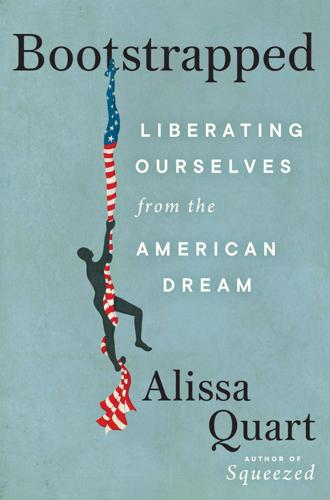
Bootstrapped: Liberating Ourselves From the American Dream
by
Alissa Quart
Published 14 Mar 2023
Instacart’s bootstrapping owner, Apoorva Mehta, was often admiringly cited in the press as an “immigrant founder” who provides “essential services,” giving “jobs and a lifeline to many,” but the astronomical valuation of his company contrasted sharply with how pinched the contractors’ personal budgets were. Mehta, “the serial entrepreneur” behind Instacart, was, by June 2020, according to Forbes, “leading a $13.7 billion unicorn after demand for grocery delivery skyrocketed during the coronavirus pandemic,” writing approvingly that Mehta’s grocery delivery service was tamping down the efforts of “rebellious workers.” The CFOs and CEOs had their individualistic mantras, yet in truth these potentates depended on masses of people like her. Bain, when I first spoke to her, was working a gig job that is sometimes referred to as a “hustle,” or a “side hustle,” if it takes up a smaller slice of a person’s overall hours.
…
One study published in March 2022 in the Review of Economics and Statistics found that the more individualistic counties in the United States, many of them formerly frontier areas, engaged less in social distancing and were also less willing to receive COVID-19 vaccines. In another paper entitled “Rugged Individualism and Collective (In)action During the COVID-19 Pandemic,” from 2020, by a different set of researchers, economist Samuel Bazzi among them, also found that counties “with greater total frontier experience (TFE) during the era of westward expansion” had a “weak collective response to public health risks.” The researchers concluded, “Frontier culture hampered the response to the COVID-19 pandemic.” This data made it even harder to accept the romanticization of the rugged individualism of the past.
…
“These words have gained a strange kind of prestige from downwardly mobile, college-educated tech workers”: John Patrick Leary, Keywords: The New Language of Capitalism (Chicago: Haymarket Books, 2019). 30 percent of Americans who do something else for pay in addition to their full-time jobs, according to an NPR/Marist survey: “A Close-Up Look at Contract Workers,” NPR, January 22, 2018, https://www.npr.org/2018/01/22/579629353/a-close-up-look-at-contract-workers. according to a survey conducted in 2020 by the Pew Research Center: Kim Parker, Juliana Menasce Horowitz, and Anna Brown, “About Half of Lower-Income Americans Report Household Job or Wage Loss Due to COVID-19,” Pew Research Center, April 21, 2020, https://www.pewresearch.org/social-trends/2020/04/21/about-half-of-lower-income-americans-report-household-job-or-wage-loss-due-to-covid-19/#many-adults-have-rainy-day-funds-but-shares-differ-widely-by-race-education-and-income. “a knot in your stomach, a rash on your skin, are losing sleep, and losing touch with your wife and kids”: Nitasha Tiku, “The Gospel of Hard Work, According to Silicon Valley,” Wired, June 2017, https://www.wired.com/2017/06/silicon-valley-still-doesnt-care-work-life-balance/.
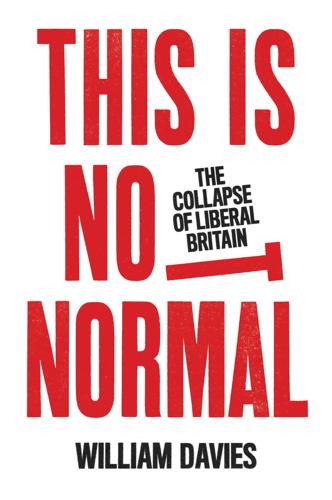
This Is Not Normal: The Collapse of Liberal Britain
by
William Davies
Published 28 Sep 2020
The Windrush scandal of 2018, which saw black British citizens being terrorised by government bureaucracy and threatened with deportation (an effect of the ‘Hostile Environment’ immigration policy introduced in 2014), revealed a disregard for judicial norms that few had imagined the British state was capable of, at least within its own borders. Within two months of Britain’s departure from the European Union, the political establishment had been engulfed in the unprecedented chaos and horrors of the coronavirus pandemic. Johnson was forced to rein in his jocular nationalism, in an effort to look statesmanlike, serious and deferential to experts. But even then, the government couldn’t resist resorting to deceptive communications tactics, as the prime minister struggled to adopt the necessary gravitas. While the crisis emerged with little warning, ultimately to do far more economic damage to Britain than Brexit, it arrived at a time when trust in the media and politicians was already at a dangerously low ebb.
…
At the same time that small businesses were disappearing at a terrifying speed, Amazon took on tens of thousands of new workers. Social life became even more dependent on the social infrastructure of platform capitalism. The same platforms that were destabilising social and political life prior to the appearance of COVID-19 became virtually preconditions of society, placing a kind of wide-ranging constitutional power in the hands of private corporations. These are just some of the ways in which the credit derivative and the platform have transformed our political world in the twenty-first century. But there is more to it than this: they share a common logic, which eats away at integrity of public institutions.
…
Considerable uncertainty hovered around Johnson’s domestic agenda and his own political vision, which appeared to change depending on what was the easiest or most entertaining line to take from one moment to the next. In the event, Johnson enjoyed the shortest of honeymoons before an even bigger crisis than Brexit appeared in March 2020. Things were about to get a lot less normal. Once the scale and implications of the COVID-19 pandemic had become clear, the tone of the Johnson leadership became dramatically different. The bluster, recklessness, humour and optimism which his supporters adored were suddenly absent. At the very historical juncture when Britain had witnessed a popular revenge against unelected technocrats and liberal institutions, an emergency arrived that placed huge public demands on scientists and administrators, throwing statistics into the media spotlight for weeks on end.

Working Identity, Updated Edition, With a New Preface: Unconventional Strategies for Reinventing Your Career
by
Herminia Ibarra
Published 17 Oct 2023
Lots: arts boards, philanthropy, a dog, a great marriage, a Jewish faith, Pilates, dance class … Windows of Opportunity Of course, sabbaticals can create their own problems because they are rarely long enough for us to figure out what we want to do next and then land an opportunity that fits the bill. The same goes for unexpected events or shocks—like the coronavirus pandemic—that create fertile conditions for major life and career changes by sparking reflection about our desires and priorities. Enough transpires during the time-out period to make us keenly aware of what we no longer want. But the problem is this: more appealing, feasible alternatives have yet to materialize.
…
Most can articulate clearly what they don’t want or what no longer works for them. What’s less clear is what to do instead—and how to make the change. Across the world, the numbers of people taking the leap to something different have risen significantly since this book was first published—even before the Covid-19 pandemic made people everywhere rethink their work lives—and continue to grow. But, no matter how common career change has become, no one has figured out how to avoid the turmoil, the tumult of straying from the linear path. Most people experience the transition to a new working life as a time of confusion, loss, insecurity, and struggle.
…
At the same time, what we want and expect from a job has evolved: once our basic needs are met, people of all ages want more than just a paycheck. Passion, purpose, self-expression, meaning, and life balance are top of list, not “nice to haves” that can be deferred for later. In the midst of the Covid-19 pandemic—if ever there was an event that caused worldwide existential “what’s important to me,” “what makes me happy” questioning, this was it—I conducted a public online session for people in the throes of asking themselves questions about what’s next. I called the session “How to Change Careers in Your 30s, 40s, and 50s+.”

Badvertising
by
Andrew Simms
These enormous vehicles, ostensibly built for rural, off-road work, are mostly being bought by people in towns and cities. The part of the UK where the largest and most powerful four-wheel-drive SUVs – so-called ‘Chelsea Tractors’ – are most popular is indeed the inner London borough of Kensington & Chelsea, where there are no opportunities for off-roading.8 Public awareness of this incongruity grew during the coronavirus pandemic, when we needed as much space on our streets as possible for pedestrians and cyclists to get around and commute to work safely. Many urban centres are struggling to provide functional transit systems based on majority public transport or active travel because our infrastructure is drowning in unmanageable volumes of private cars.
…
Reuters (2021) Fossil fuel pollution causes one in five premature deaths globally: study. 9 February. www.reuters.com/article/us-health-pollution-fossil/fossil-fuel-pollutioncauses-one-in-five-premature-deaths-globally-study-idUSKBN2A90UB 30. New Scientist (2020) Air pollution linked to greater risk of dying from covid-19 in the US. 4 November. www.newscientist.com/article/2258774-air-pollution-linked-to-greaterrisk-of-dying-from-covid-19-in-the-us/ 31. New Weather Institute (2023) Dangerous driving – why sport should drop sponsorship from major polluters: the cases of Toyota and BMW. London. 32. Misoyannis, A. (2023) Toyota remained world’s biggest car maker in 2022. Drive, 31 January. www.drive.com.au/news/toyota-remains-worlds-biggest-car-maker-in-2022/ 33.
…
A World Without Advertising Acknowledgements Notes Index List of Figures 6.1 The figure of Icarus flying towards the sun was used for the International Civil Aviation Organization’s 40th anniversary poster, and later was regularly used by ICAO as cover art for its documents 6.2 This 1925 advert by Imperial Airways (‘Air travel is safe – the principal life assurance offices have recognised the safety of travel by Imperial Airways’) 6.3 ‘A picture of a man in a hurry’, sleeping in his airline seat (Capital Airlines, 1961) 6.4 Pacific Southwest Airlines stewardess, 1970s 6.5 United Airlines, 2021 7.1 Land Rover advertised its large, heavily polluting Defender during the Covid-19 pandemic, exploiting sentiments about health-related restrictions, and implying that their cars could be driven without restriction in sensitive natural woodland 7.2 EasyJet’s advert made the kind of vague, unsupported environmental promise that regulators belatedly are clamping down on 7.3 HSBC was found guilty of greenwash when challenged, for leaving out key information about their large-scale investments in fossil fuels 7.4 Arla Swedish dairy milk bottle with a misleading ‘Net Zero Climate Footprint’ label 7.5 Shell’s ‘Drive Carbon Neutral’ advert spotted at a petrol station in October 2021 7.6 ‘Ekologisk’ in Swedish translates as both ‘ecological’ and ‘organic’ so Jeep is offering ecological and organic mobility with a hybrid vehicle still dependent on fossil fuels 8.1–8.6 Public health and climate emergency information campaigns by the Ministry for the Climate Emergency Preface Why did we create a campaign called Badvertising (apart from entertaining ourselves with the name), and why have we written a book about it with the help of some wonderful colleagues?
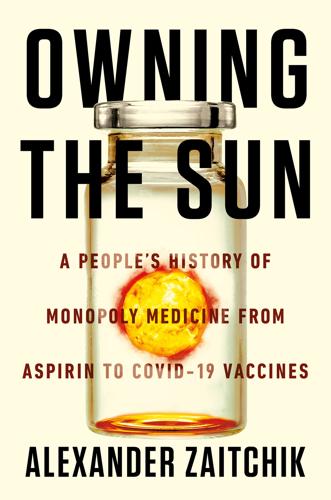
Owning the Sun
by
Alexander Zaitchik
Published 7 Jan 2022
The report urges these countries to reassess and “take account of the importance of voluntary and mutually agreed commercial partnerships or arrangements.” The coronavirus pandemic is a chance to interrogate the meaning of “voluntary and mutual” in a monopoly system. The countries that imposed TRIPS on the world and maintain TRIPS Plus define these words differently than their weaker counterparts in “commercial partnerships or arrangements.” The COVID-19 vaccine economy also serves as a reminder that often there is no partnership or arrangement to begin with, because one side cannot afford the monopoly price or because the monopolist does not consider some markets as worth their time, effort, and proprietary technology.
…
When Gilead Sciences quietly tried to extend its monopoly on remdesivir in mid-March, after the drug developed with federal funds showed promise as a treatment for severe COVID-19, public pressure forced the company to rescind the application. Two days after Gilead’s retreat, on March 25, the Swiss drug giant Roche announced a similar surrender to public outrage in the Netherlands, where it had initially refused an emergency request by the Dutch government to share its proprietary ingredients and specifications for a COVID-19 test. When Israel announced plans to order generic versions of an AbbVie Inc. HIV drug that showed promise in treating severe COVID-19, despite ongoing patent protections that limit its noncommercial distribution in that country, there was no talk of lawsuits or “Special 301.”
…
The history of drugs is full of accidental discoveries resulting from screening candidates organized by a long series of numbers. Albert Hofmann discovered LSD-25 through a chance mishandling of the twenty-fifth molecule in a series of experimental treatments for uterine bleeding during childbirth. In the first months of COVID-19, it was a government screening of Gilead’s molecular vault that led NIH scientists to flag GS-5734, later named remdesivir and trademarked as Veklury, as a possible therapy for COVID-19. The postwar years witnessed a growing sophistication in molecular chemistry that resulted in greater opportunities for this kind of collaboration. The NIH conducted research and hired drug companies to help classify and identify promising molecules.
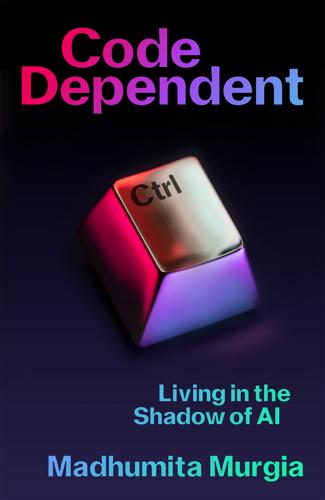
Code Dependent: Living in the Shadow of AI
by
Madhumita Murgia
Published 20 Mar 2024
In a makeshift factory built in the middle of a field of rubble, a dozen women and girls sew footballs by hand – a business funded with a Sama grant. Employees have launched herbal beauty products, opened M-PESA or digital wallet shops, raised chickens for slaughter and founded girls’ football clubs in the settlements they come from. In early 2020, just before the coronavirus pandemic swept in, Leila died of epithelioid sarcoma, aged thirty-six. Her mission and the visible passion for the community of East African youth she had built up made me curious. Was Leila’s idealized view of things close to reality? Did Sama workers like Ian and Benja feel truly empowered by the work?
…
Qure.ai can now help diagnose diseases including Covid-19, tuberculosis, head trauma and lung cancer. They operate at more than 600 sites in sixty countries across the world, from slums in the Philippines, to cities in Malawi, Peru and Mexico.3 In Mumbai’s state hospitals, the diagnosis of tuberculosis went up 35 per cent because of the AI screen.4 The company has raised more than $60m in funding from foreign investors like blue-chip Silicon Valley venture firm Sequoia Capital and pharmaceutical giant Merck.5 In the spring of 2021, Chinchpada was hit by a fresh tsunami of cases of a new variant of Covid-19. This second wave of the pandemic in India killed 100,000 people in weeks, bringing the healthcare system to its knees and forcing people to dispose of their dead in the streets.6 Having escaped the first wave relatively unscathed, the country – my country – became the epicentre of the global pandemic.
…
When she was brought in on the back of a bullock cart, Ashita immediately noted her symptoms with dread. Her X-ray didn’t look particularly like Covid-19 to Ashita, but her oxygen saturation was a dangerous 92 per cent and Jainabai was on the borderline for needing urgent intervention. When faced with coronavirus at that point, there were a few key decisions a doctor could take to save a life. They could treat with steroids, for instance, or put the patient on a ventilator. Jainabai was the kind of patient who would benefit from steroids, if she had Covid-19. But Ashita was hesitant, because in Jainabai’s case, the treatment could also kill her. The steroids would cause her blood sugar to shoot up from already life-threatening levels, caused by Jainabai not taking her diabetes medication in recent weeks.
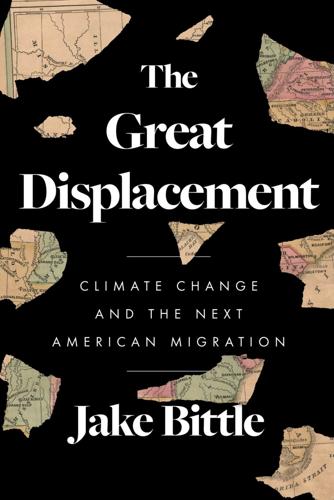
The Great Displacement: Climate Change and the Next American Migration
by
Jake Bittle
Published 21 Feb 2023
Columba, and by the time they returned to the Keys it was clear that housing would be the defining challenge of the next few years. “Everybody’s house was destroyed,” she told me. “That’s what people would need the most.” We were speaking in the church’s open-air pavilion, where Maconaughey had been delivering outdoor sermons even before the coronavirus pandemic. Irma had weakened the timbers that supported the roof of the chapel, forcing the church to move outside. In the first week Maconaughey was back, she helped transform St. Columba’s campus into a massive shelter for boaters who had lost their homes in the storm, cramming two dozen air mattresses into a loft that had previously been used for an after-school program.
…
This time firefighters controlled the blaze before it reached the city itself, but the fire still took out close to two hundred homes in the suburbs of Healdsburg and Geyserville, putting additional pressure on the housing market. Around the same time, a large homeless encampment emerged on a bike trail in central Santa Rosa, becoming a sanctuary where people who had been unhoused for years slept alongside those who had lost their homes during the scramble that followed the fires. When the coronavirus pandemic began the following spring, and white-collar remote workers beat a retreat from San Francisco, rents in the area surged even higher, pushing more low-income families out of the housing market. A few months later, yet another fire gnawed away at the region’s already depleted housing stock: the Glass Fire shot the gap between the burn scars of two previous blazes, destroying more than six hundred homes in a section of the hills that had been spared by the Tubbs event.
…
The couple no longer had their mortgage payment to worry about, but they had emptied their savings on the flood recovery, so they couldn’t even afford to get a lease on a new apartment, let alone a house that would accommodate the twins and the dogs. They stuck it out at Becca’s mother’s house for another six months, and then another year, and then another two years, praying that Sergio’s franchise would start to gain some momentum. The coronavirus pandemic pulled the rug out from under them once more as Sergio’s clients vanished and his usual sales route turned into a ghost town. Becca picked up a little money from an independent yoga practice, but it wasn’t enough to make up the difference. Four years after the storm, Becca and Sergio were no closer to finding a permanent home.

How to Spend a Trillion Dollars
by
Rowan Hooper
Published 15 Jan 2020
What I have found warming, and sustaining, is talking to some the thousands of scientists and economists and activists around the world who are working for a better world. There are millions of people in this team, in this project to change the world. They are devoting their lives to it. The novelist and political activist Arundhati Roy said that the coronavirus pandemic is a portal, a gateway between one world and the next.6 We are choosing at the moment to step through the portal into a world where ecosystem collapse is a likelihood. We have to choose, now, to make a different world. Global wealth is greater by far than at any point in human history. Philanthropy is growing.
…
Invest in girls’ education’. www.brookings.edu/opinions/want-to-save-the-planet-invest-in-girls-education/ 23 See ‘Sector summary: health and education’ at drawdown.org/sectors/health-and-education CHAPTER 2: CURE ALL DISEASE 1 David Cutler and Lawrence Summers (2020) ‘The COVID-19 pandemic and the $16 trillion virus’. JAMA Network. DOI: 10.1001/jama.2020.19759 2 Patrick Walker et al. (2020) ‘Report 12 – the global impact of COVID-19 and strategies for mitigation and suppression’. www.imperial.ac.uk/mrc-global-infectious-disease-analysis/Covid-19/report-12-global-impact-Covid-19/ 3 Cardiovascular disease: www.who.int/news-room/fact-sheets/detail/cardiovascular-diseases-(cvds); neurological: www.thelancet.com/journals/laneur/article/PIIS1474-4422(19)30029-8/fulltext; cancer: www.who.int/news-room/fact-sheets/detail/cancer; infectious disease: www.who.int/whr/1996/media_centre/press_release/en/ 4 Matthew Young et al. (2018) ‘Single-cell transcriptomes from human kidneys reveal the cellular identity of renal tumors’.
…
His team were able to design and start testing a vaccine in record time. It might not end up being the vaccine that works (there are more than 170 Covid-19 vaccines in development), but our investment would support CEPI in being able to provide successful vaccines fairly and affordably. $ $ $ WE CAN HELP BOOST VACCINATION RATES around the world, but we can also change the dial at a basic, research level. The development of vaccines is still largely based on a 200-year-old technology, and we have vaccines for fewer than 30 diseases. As well as Covid-19, effective vaccines against HIV, malaria and TB would be transformational. Then there are the more than 320 emerging infectious diseases that have been identified just since the 1940s.
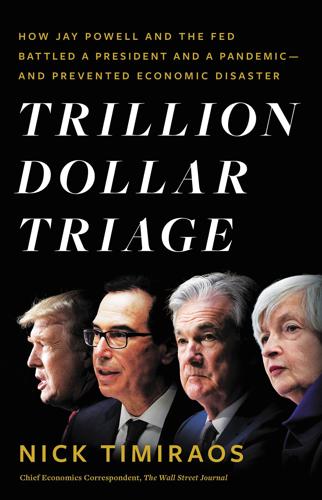
Trillion Dollar Triage: How Jay Powell and the Fed Battled a President and a Pandemic---And Prevented Economic Disaster
by
Nick Timiraos
Published 1 Mar 2022
“The Federal Reserve would prefer that the full suite of emergency facilities established during the coronavirus pandemic continue to serve their important role as a backstop for our still-strained and vulnerable economy,” it read. The Fed and the Treasury rarely quarreled in public. Such fights didn’t inspire confidence in global markets. But Powell didn’t want anyone to mistake Mnuchin’s decision as a signal that the Fed thought the economy was out of the woods or that it might soon pull back its other stimulus. Date 2020 Covid-19 Cases Covid-19 Deaths Dow Jones Average VIX Fear Index Thursday, November 19 11,726,284 244,180 29,483 (↑ 45) 23.11 (↓0.73) Democrats called on Powell to stiff Mnuchin’s request for returning the unspent funds, which Powell rejected out of hand.
…
Rajan, “Central Banks Are the Fall Guys,” Project Syndicate, July 31, 2019. https://www.project-syndicate.org/commentary/central-bank-fall-guys-by-raghuram-rajan-2019-07 7. Author’s interview. 8. Author’s interview. 9. Author’s interview. 10. Orla McCaffrey and Shane Shifflett, “During Covid-19, Most Americans Got Ahead—Especially the Rich,” The Wall Street Journal, June 27, 2021. https://www.wsj.com/articles/during-covid-19-most-americans-got-richer-especially-the-rich-11624791602 11. Author’s interview. 12. Transcript of Federal Reserve Board “Fed Listens” Event: How Is Covid-19 Affecting Your Community? May 21, 2020, 43. https://www.federalreserve.gov/mediacenter/files/fed-listens-transcript-20200521.pdf 13. Transcript, Fed Chairman Jerome Powell at the WSJ Jobs Summit. https://www.wsj.com/articles/transcript-fed-chairman-jerome-powell-at-the-wsj-jobs-summit-11614889342
…
For weeks, markets had paid close attention to daily case counts in Wuhan, but otherwise brushed off worries about the virus. Starting in late February, however, a simple dashboard of daily reports illustrated how investors were rapidly bracing for a global event that would be far more menacing: Date 2020 Covid-19 Cases Covid-19 Deaths Dow Jones Average VIX Fear Index Tuesday, February 25 10 0 27,081 (↓879) 27.85 (↑ 2.82) At a press conference the next night, Trump announced that Vice President Mike Pence would head up the administration’s coronavirus task force. But if this was an effort to project level-headed composure, the president quickly walked all over that message.

100 Years of Identity Crisis: Culture War Over Socialisation
by
Frank Furedi
Published 6 Sep 2021
It seeks to justify itself on the basis of expertise and process rather than political vision. It self-consciously eschews politics and attempts to de-politicise controversial issues by outsourcing their management and decision making to expert institutions, courts and international bodies such as the International Monetary Fund. Except in unusual circumstances, such as during the coronavirus pandemic, when politicians explicitly gave way to scientists, technocratic governance rarely exists in a pure form. And with good reason: on its own, technocratic governance cannot motivate or inspire people. This is why a technocracy relies for its credibility on policies and ideals that are external to itself.
…
Their leaders advocate ‘technoscientific means to achieve happiness, a total control of emotions, and an improvement of human character’.755 Moral neuroenhancement, unlike previous forms of moral engineering, ‘operates by altering brain states or processes directly’, through the application of drugs or the use of brain modulation techniques.756 Although occasionally there are outcries against the influence and power of experts, technocratic and therapeutic governance itself is rarely a focus of political dispute. During the coronavirus pandemic the different sides of the argument over the efficacy of lockdown and quarantine measures sought to legitimate their argument by justifying it on the ground of their mental health impact. All sides of the debate appeared to have internalised the fundamentals of the therapeutic ethos but drew different political conclusions from it.
…
Technocrats are constantly asking the question ‘which nudging techniques can we use to further increase awareness?’764 They believe that through psychological manipulation they can create public awareness that ensures that ‘very large numbers of people form powerful groupings, like a “swarm”, to produce massive social outcomes’.765 The extensive use of nudging and behavioural economics during the coronavirus pandemic illustrates how the engineering of people’s ‘decision making’ rapidly displaced open politically informed guidance and leadership. The ethos and practice of raising awareness is based on the unstated and often unacknowledged assumption that behavioural change is important for both the individual and for society.

Can We Talk About Israel?: A Guide for the Curious, Confused, and Conflicted
by
Daniel Sokatch
Published 18 Oct 2021
Tag Meir hosts solidarity meetings and events that bring Jews and Arabs together: marches, candle lighting during Chanukah, and joint iftars.* We operate student chapters at several universities. The students engage in Tag Meir activities, like giving out dates to break the Ramadan fast, helping out families of foreign workers, and assisting elderly people during the coronavirus pandemic. During the first COVID-19 lockdown, we handed out tens of thousands of masks in Bnei Brak.** Our representatives visit sites of hate crimes as promptly as possible to stand in solidarity with the victims and to offer emotional, financial, and moral support. For example, in Sakhnin, in northern Israel, two large Christmas trees outside one of the largest churches in the city were set on fire.
…
-facilitated normalization of relations with two tiny, wealthy, not particularly democratic Persian Gulf states, the United Arab Emirates and Bahrain. In March 2020, after yet another inconclusive election, Netanyahu once again managed to remain prime minister (and, he hoped, avoid criminal prosecution while in office) by forming a coalition government with his chief rival, the centrist Blue and White Party, ostensibly to combat the coronavirus pandemic. Bibi’s political wizardry is unmatched in Israeli history. But all this has come at a price—and the price has been the quality and character of Israel’s democracy. For the last decade or so, the Economist Intelligence Unit’s “Democracy Index” has consistently ranked Israel as a “flawed democracy,” not a full one.
…
A few months later, in January 2020, the Trump administration released its “Peace to Prosperity” plan for Israel and the Palestinians, which seemed to offer Israel a green light to annex territory on the West Bank. In March 2020, Israel held a third inconclusive election. Once again, Bibi pledged that, if elected, he would begin to annex. In April 2020, Netanyahu and opposition leader Benny Gantz announced their intention, in the face of the coronavirus pandemic sweeping the world, to form a unity government, with the two men rotating the prime ministership; they would be committed to working together on just two issues: fighting the virus and beginning to annex land in the West Bank. In August, the United Arab Emirates, a tiny, oil-rich Gulf state, and Israel announced that they would normalize relations; this announcement was followed by the news that Bahrain, another small, oil-rich Gulf state, would follow suit.
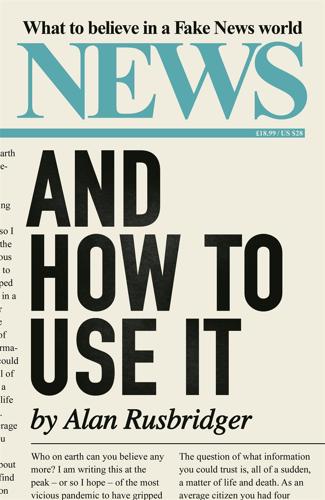
News and How to Use It: What to Believe in a Fake News World
by
Alan Rusbridger
Published 26 Nov 2020
Both developments mirrored long-established practices in the supposedly more open White House press room, where the TV cameras are quickly switched off and the named briefer magically turns into ‘a senior administration official speaking on conditions of anonymity’. But such is the scale of mistrust in an age of partisan and populist politics that by 2020 traditional White House briefings had almost ceased to exist until the coronavirus pandemic left Donald Trump and his officials no choice but to deal again with the ‘fake media’ they had ruthlessly denigrated. A similar Covid-19 adjustment was required in Downing Street, where Boris Johnson’s Svengali, Dominic Cummings, had started to follow Trump’s aggressive media marginalisation, to the point of hiring No. 10 its own photographer and TV crew, who were able to provide tame ‘interviews’ with no awkward questions.
…
<Hannah-Jones, Nikole. ‘The Problem We All Live With – Part One.’ This American Life podcast, 31 July 2015. <https://www.thisamericanlife.org/562/the-problem-we-all-live-with-part-one> Harris, John. ‘The experts are back in fashion as Covid-19’s reality bites’. The Guardian, 15 March 2020. <https://www.theguardian.com/commentisfree/2020/mar/15/experts-fashion-covid-19-reality-bites-trump-johnson> Hasan, Mehdi. ‘Dear Bashar Al-Assad Apologists: Your Hero Is a War Criminal Even If He Didn’t Gas Syrians’. The Intercept, 19 April 2018. <https://theintercept.com/2018/04/19/dear-bashar-al-assad-apologists-your-hero-is-a-war-criminal-even-if-he-didnt-gas-syrians/> Hastings, Max.
…
Some news outlets – initially, at least – seemed unable to imagine the scale of what was happening: it was easier to report on what videos Boris Johnson was watching in his hospital bed than on the hundreds dying every day all around. The newsrooms that had jettisoned their health or science correspondents struggled. The idiots who suggested that 5G phone masts could be spreading the disease encouraged arson and trashed their own brand. So, it was a mixed picture. Covid-19 could not have announced itself at a worse time in terms of the question about whom to believe. Survey after survey has shown unprecedented confusion over where to place trust. Nearly two-thirds of adults polled by Edelman in 2018 said they could no longer tell a responsible source of news from the opposite.

Arriving Today: From Factory to Front Door -- Why Everything Has Changed About How and What We Buy
by
Christopher Mims
Published 13 Sep 2021
almost all of them in China: “Coronavirus Disease 2019 (COVID-19) Situation Report—43,” World Health Organization, March 3, 2020, https://www.who.int/docs/default-source/coronaviruse/situation-reports/20200303-sitrep-43-covid-19.pdf. “risk to most Americans is low”: “An Emerging Disease Threat: How the U.S. Is Responding to COVID-19, the Novel Coronavirus,” Centers for Disease Control and Prevention, March 3, 2020, https://www.cdc.gov/washington/testimony/2020/t20200303.htm. effective against Covid-19: “List N: Disinfectants for Coronavirus (COVID-19),” United States Environmental Protection Agency, https://www.epa.gov/pesticide-registration/list-n-disinfectants-coronavirus-covid-19.
…
I thought I was there to write about an obscure but, to me, important topic: how things get from the factory, mostly in Asia, to the front doors of the homes and offices in the biggest consumer economies in the world, and specifically my own country, the United States. But why go to Southeast Asia and not China, which is still, by volume, the number one producer of countless goods? Long before the coronavirus pandemic swept the globe, suppliers to Apple, Nike, and dozens of other multinationals had set up factories in Vietnam that are copies of their factories in China. Their reasoning, as one shipper confided to me, was simple: if tariffs or a shooting war suddenly made it impossible to get goods out of China, these companies need to be able to shift their manufacturing within days.
…
along with globalization: Matthew C. Klein and Michael Pettis, Trade Wars Are Class Wars: How Rising Inequality Distorts the Global Economy and Threatens International Peace (New Haven: Yale University Press, 2020). polarization of wealth and wages: Christopher Mims, “Covid-19 Is Dividing the American Worker,” Wall Street Journal, August 22, 2020, https://www.wsj.com/articles/covid-19-is-dividing-the-american-worker-11598068859. “Hopefully automation kicks in”: Margot Roosevelt, “As L.A. Ports Automate, Some Workers Are Cheering on the Robots,” Los Angeles Times, November 7, 2019, https://www.latimes.com/business/story/2019-11-07/port-automation-dockworkers-vs-truckers.

The Power of Geography: Ten Maps That Reveal the Future of Our World
by
Tim Marshall
Published 14 Oct 2021
They pour reinforcements into a certain area for, say, twelve hours, then overwhelm a government army outpost, before disappearing again.’ One of the worst cases came in December 2019, when an attack on an army base in Niger killed seventy-one soldiers. In January 2020 another eighty-nine were killed, and then in late March, as the world’s attention fixated on the coronavirus pandemic, Boko Haram ambushed a military encampment of Chadian soldiers near Lake Chad. In a seven-hour battle they killed at least ninety-two heavily armed troops, making it the deadliest attack ever suffered by the Chadian military. Questions began to be asked about how the country can hold together.
…
Battle has commenced. Australia is the largest aid donor to the Pacific Islands, but China has been increasing financial aid and loans and, as it did elsewhere, was quick to move in when the Covid-19 virus struck. In April 2020 a Royal Australian Air Force plane carrying aid to the island of Vanuatu was approaching Port Vila airport when it spotted a Chinese plane on the single runway which had arrived carrying PPE and other Covid-19-related equipment. Despite being cleared to land, it turned round and flew the 2,000 kilometres back home. Everyone argues about whether it was, or was not, safe to land, but the point remained – the Chinese were on the ground.
…
Australia is still a long way from anyone who might come to its physical assistance but technologically the world has moved closer. Covid-19 made Australia more aware of the limitations of the ‘just in time’ economic system, and, like many countries, has hardened its attitude towards being China-dependent and allowing China into critical infrastructure projects, freezing out China’s Huawei company from Australia’s 5G network – a bold move. The relationship can be fragile. In the summer of 2020, when Prime Minister Morrison called for an international inquiry into the origins of the Covid-19 virus, this was seen in Beijing as an attack on China. Within days Chinese customs officials noticed ‘issues’ with the labelling on some imported Australian beef products and imposed a ban on supplies.
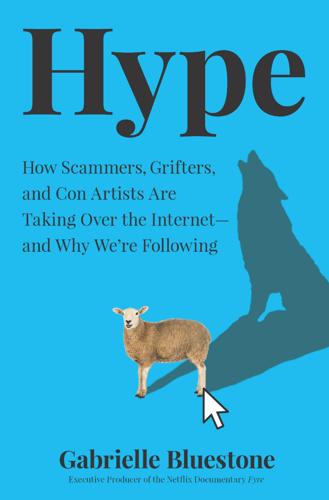
Hype: How Scammers, Grifters, and Con Artists Are Taking Over the Internet―and Why We're Following
by
Gabrielle Bluestone
Published 5 Apr 2021
In September 2019, he was busted with a smuggled recording device, an infraction for which he was placed in solitary confinement for three months and then transferred to a low-security prison in Ohio. From time to time I’ll get an email or a call from someone claiming to be his cellmate offering me information about him, but other than that it’s been pretty quiet. But then his name started popping up again in early April 2020 as the coronavirus pandemic swept across the United States. According to the New York Post, McFarland had started a project from behind bars to crowdfund money to cover the fees associated with making phone calls in prison. He was calling it Project-315. To announce the initiative, McFarland published a twelve-paragraph letter, ten of which were dedicated to a discussion of his own personal growth as a man and as a CEO.232 “I’d like you to know that I know how badly I messed up,” he wrote.
…
Prosecutors also pointed out that not only had McFarland never mentioned health problems before, but in a recent medical exam, he indicated he had no allergies or respiratory or cardiovascular problems. But Elkton, the Ohio prison to which McFarland had been transferred, reportedly had an outbreak of COVID-19 so bad the National Guard had to be called in. On July 4, McFarland tested positive for coronavirus. “Tested positive for COVID today,” McFarland told a New York Post reporter. “Being put in isolation in a big room with 160 other people who have it at this jail.”234 Like many things after COVID-19, McFarland’s status was no longer funny. But for such a serious ordeal, it would seem not much was learned. In October, McFarland was sent back to solitary confinement, this time for launching a podcast from prison, which had been recorded over the phone.
…
Rebecca Rosenberg, "Fyre Fest’s Billy McFarland Shouldn’t Be Freed Amid Outbreak: Prosecutors," Page Six, April 28, 2020, https://pagesix.com/2020/04/28/billy-mcfarland-shouldnt-be-freed-amid-coronavirus-prosecutors/. 234. Doree Lewak, "Fyre Fest Fraudster Billy McFarland Contracts COVID-19 in Prison," New York Post, July 4, 2020, https://nypost.com/2020/07/04/fyre-fest-fraudster-billy-mcfarland-contracts-covid-19-in-prison. 235.Sarah Tulloch, "Jamie Dornan Addresses Backlash Over ‘Cringeworthy’ Celebrity Cover of John Lennon’s Imagine," Belfast Telegraph, April 8, 2020, https://www.belfasttelegraph.co.uk/entertainment/news/jamie-dornan-addresses-backlash-over-cringeworthy-celebrity-cover-of-john-lennons-imagine-39113711.html.
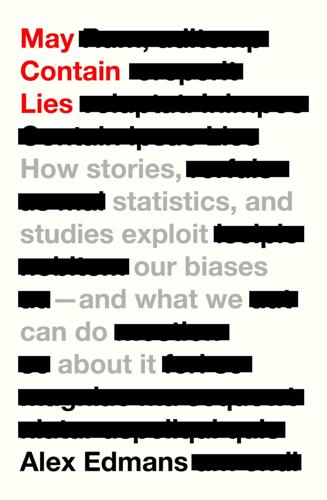
May Contain Lies: How Stories, Statistics, and Studies Exploit Our Biases—And What We Can Do About It
by
Alex Edmans
Published 13 May 2024
And information is far broader than research – our news feeds are bombarded not only with ‘New study finds that . . .’ but also anecdotes like ‘How daily journalling boosted my mental health’, hunches such as ‘Five tips to ace your job interview’, and speculation like ‘Why we’ll colonize Mars by 2050’.10 Blindly following this advice, you could find yourself sicker, poorer and unemployed. In some cases, misinformation can be fatal. In March 2020, as the coronavirus pandemic was breaking out, US President Donald Trump tweeted that hydroxychloroquine might be a cure, proclaiming it ‘one of the biggest game changers in the history of medicine’. One woman noticed ‘chloroquine’ on the label of her fish-tank cleaner; as she told NBC News, ‘I saw it sitting on the back shelf and thought “Hey, isn’t that the stuff they’re talking about on TV?”
…
It might measure something quite different, miss a big piece of the picture, be self-reported or be circular. As an example of where the data measures something different, after George Floyd’s murder in May 2020 there were numerous Black Lives Matter protests to fight for racial justice. Some worried that mass protests might increase the spread of COVID-19, but a study claimed that ‘cities which had protests saw an increase in social distancing’.8 It was widely covered by the media, because their readers wanted this result to be true. Yet the researchers didn’t measure social distancing but the amount of time spent at home (captured by mobile-phone location).
…
Almost every study investigates how an input affects an output – whether the death penalty deters crime, water improves marathon performance, or junk food bans curb obesity.## Sometimes the input and output measure pretty much the same thing, so any relationship is automatic. A 2020 McKinsey report on company responses to COVID-19 found that resilient companies outperformed – their sales and profits held steady, while nonresilient ones saw them drop off a cliff.13 How did McKinsey define the resilient companies? Not by CEOs rolling up their sleeves and mucking in, nor by a gritty corporate culture, but as the ones whose share price performance was in the top 20%.

The Ransomware Hunting Team: A Band of Misfits' Improbable Crusade to Save the World From Cybercrime
by
Renee Dudley
and
Daniel Golden
Published 24 Oct 2022
About 150 students ages five to ten attend the school, which was built more than a century ago in the Victorian style, with a brick facade and high arched windows. A modest playground adjoins a church. Many of the parents are on public assistance—or, as the English say, on the dole—and the free lunch and midmorning snack that the school provides are often their children’s only meals. Even as the coronavirus pandemic ravaged the area in 2020, blitzing through public housing and terraced apartments where students’ families slept four to a room, the school stayed open, its masked teachers rearranging chairs to preserve as much social distance as possible. On a shoestring budget, in a building that’s showing its age, the school gives the children a solid education and helps them adjust to English life and culture.
…
For example, they continued to target manufacturers of medicines and equipment vital to treating COVID-19 patients. They rejected Lawrence’s request for a cease-fire on drugmakers, whom they scorned as profiteers exploiting the crisis. “[Pharma] earns lot of extra on panic nowdays, we have no any wish to support them,” DoppelPaymer said. DoppelPaymer, which had been the first gang to accept Lawrence’s proposal, attacked Boyce Technologies, Inc., a company producing three hundred ventilators a day for desperately ill COVID-19 patients in New York hospitals. The gang encrypted Boyce’s files and posted stolen documents such as purchase orders.
…
But in recent years, hundreds of strains, with odd names like Bad Rabbit and LockerGoga, have paralyzed the computer systems of millions of companies, government offices, nonprofit organizations, and individuals. Exploiting society’s near-total dependence on computers, criminal hackers demand thousands, millions, or even tens of millions of dollars to restore operations. During the COVID-19 pandemic, a wave of cyberextortion crippled hospitals and other vital services, shuttered businesses and schools, and further isolated people from relatives, friends, and coworkers. Matthew saw a parallel between the two epidemics. “It was kind of ironic, the computer virus at the same time as the real virus,” Matthew said.
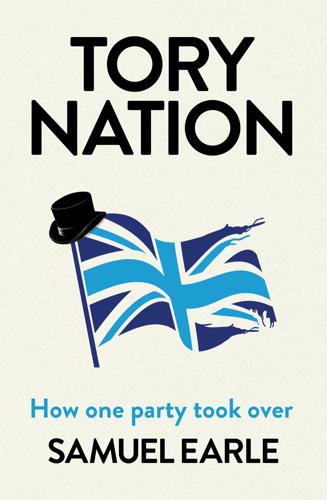
Tory Nation: The Dark Legacy of the World's Most Successful Political Party
by
Samuel Earle
Published 3 May 2023
The Labour figures who preferred a Conservative win to Corbyn extending his stay as party leader achieved their ambition. ‘People might ask me in 30 years, “what did you achieve in your time in politics?”’ Gavin Shuker, a former Labour MP who left to join Change UK and now works as the CEO of a credit card company, reflected a few months after the election, as the coronavirus pandemic was unfolding. ‘I will be able to say I helped prevent Jeremy Corbyn from leading us through a huge national crisis. And to be honest, I’ll take that.’32 * * * Johnson’s boosterish bravado, coupled with his indifference to the details, made him an ideal leader for Britain in the age of Brexit – a realm of fantasy where the details, with all their real-world consequences, were swept aside, and all the nation needed was a bit of self-belief.
…
Punchlines could take the place of policy, raising spirits if not wages. Johnson would set Britain free. But a very literal type of containment awaited Britain, putting the purported captivity of EU membership in perspective. On 31 January 2020, as Britain formally left the EU, it quietly recorded its first two cases of Covid-19. On 11 March, the World Health Organization declared a global pandemic. While it is hard to imagine a cause more suited to Johnson’s strengths than Brexit – twin forces that disguise narrow self-interest in national renewal – it is hard to imagine a cause less suited to Johnson than a pandemic. The need to follow restrictions, to listen to experts, to lead by example, combined with the life-or-death stakes, are all antithetical to his character.
…
But history had decided: Britain’s self-proclaimed liberator would have to be the one to lock the nation down. For a fatal few months Johnson utterly failed to adjust to his new role. He seemed structurally incapable of accepting the seriousness of the virus. He boasted about shaking hands with Covid-19 patients and, according to Dominic Cummings, wanted to have himself injected with the virus live on television, to show the nation that there was nothing to worry about. He pushed a policy of herd immunity, which really meant no policy at all: the idea, as Johnson explained on national television, was that ‘you take it all in one go, and allow the disease to move through the population’.

This Is How They Tell Me the World Ends: The Cyberweapons Arms Race
by
Nicole Perlroth
Published 9 Feb 2021
When a mobile app Democrats used to report results from their Iowa primary caucus imploded in public view in February, I watched as Russian trolls retweeted and stoked Americans who falsely believed the app was a ploy by Hillary Clinton’s inner circle to wrest the election from Bernie Sanders. When the coronavirus pandemic took hold, I watched those same Russian accounts retweet Americans who surmised Covid-19 was an American-made bioweapon or an insidious plot by Bill Gates to profit off the eventual vaccine. And as the world stood still waiting for that vaccine, Russian trolls worked overtime to legitimize the vaccination debate, just as they had during the worst of Ukraine’s measles outbreak one year earlier. They retweeted Americans who challenged official Covid-19 statistics, protested the lockdowns, and doubted the benefits of wearing a mask.
…
We’ve caught Iranian hackers rifling through our dams. Our hospitals, towns, cities, and, more recently, our gas pipelines have been held hostage with ransomware. We have caught foreign allies repeatedly using cyber means to spy on and harass innocent civilians, including Americans. And over the course of the coronavirus pandemic, the usual suspects, like China and Iran, and newer players, like Vietnam and South Korea, are targeting the institutions leading our response. The pandemic is global, but the response has been anything but. Allies and adversaries alike are resorting to cyberespionage to glean whatever they can about each country’s containment, treatments, and response.
…
Ukraine’s outbreak was already spreading back to the States, where Russian trolls were now pushing anti-vaxxer memes on Americans. American officials seemed at a loss for how to contain it. (And they were no better prepared when, one year later, Russians seized on the pandemic to push conspiracy theories that Covid-19 was an American-made bioweapon, or a sinister plot by Bill Gates to profit off vaccines.) There seemed no bottom to the lengths Russia was willing to go to divide and conquer. But that winter of 2019, most agreed that NotPetya was the Kremlin’s boldest work to date. There was not a single person I met in Kyiv over the course of those two weeks who did not remember the attack.
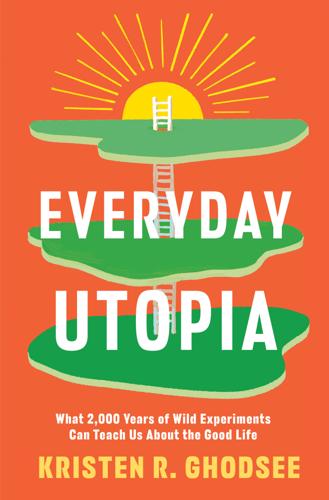
Everyday Utopia: What 2,000 Years of Wild Experiments Can Teach Us About the Good Life
by
Kristen R. Ghodsee
Published 16 May 2023
How is it then that in the year 2023 our domestic lives—what we do inside our homes, with our families, and in our interactions with friends, neighbors, and members of our wider communities—are still very much shaped by decidedly inegalitarian and sexist traditions? When I began writing this book a few months into the coronavirus pandemic, the sudden school shutdowns revealed how much we rely on unpaid labor in the home to keep our nations functioning. Parents—especially mothers—were overwhelmed and exhausted. Women around the globe woke up and realized that decades of feminism had done little to reverse the social expectation that mothers, sisters, wives, and daughters should provide care for young children, elderly parents, and sick relatives, as well as perform the emotional labors that hold families together in times of crisis: planning Zoom birthday parties, organizing virtual funerals, or lending a sympathetic ear to support the psychological health of loved ones far and near.
…
1 Kate Sproul, “California’s Response to Domestic Violence,” California Senate Office of Research, June 2003, https://www.sor.senate.ca.gov/sites/sor.senate.ca.gov/files/Californiaspercent20Responsepercent20topercent20Domesticpercent20Violence.pdf. 2 Brad Boserup, Mark McKenney, and Edel Elkbuli, “Alarming Trends in US Domestic Violence During the COVID-19 Pandemic,” American Journal of Emergency Medicine 38, no. 12 (December 2020): 2753–55; “UN Women Raises Awareness of the Shadow Pandemic of Violence Against Women During COVID-19,” press release, UN Women, May 27, 2020, https://www.unwomen.org/en/news/stories/2020/5/press-release-the-shadow-pandemic-of-violence-against-women-during-covid-19; B. Gosangi et al., “Exacerbation of Physical Intimate Partner Violence During COVID-19 Pandemic,” Radiology 298, no. 1 (January 2021): E38–E45. 3 S. G. Smith, X. Zhang, K.
…
Founded in 1783, it sustains itself through tourism and the production of specialty foods, crafts, bowls, baskets, and chairs. When I visited Sabbathday Lake in March 2022, the whole village was still closed to outside visitors because of COVID-19. I met Brother Arnold briefly as he made his way to the barn and got his permission to wander around the village and take some photos, but the place felt abandoned: Brother Arnold and Sister June were the last two Shakers living in the community. Figure 5.1. The Sabbathday Lake Shaker Village closed for COVID-19. Another contemporary religious community that owns all of its property in common is the Bruderhof. Originating in Germany in 1920, the Bruderhof colonies are self-sustaining, growing most of their own food and maintaining small manufacturing enterprises.

Invention: A Life
by
James Dyson
Published 6 Sep 2021
The Corrale uses battery power, so users are free to style their hair without needing to be near a power socket, convenient at home but also in the car, at work, or perhaps glamping. Although batteries do add weight and cost, there is not the tugging weight of the power cord. I was about to launch the Dyson Corrale straightener in New York in early March 2020. The venue was ready but then the coronavirus pandemic struck. Since I was in Paris at the time, the next day I did an online launch at our new Paris store facing the exuberant Paris Opéra. A camera followed me inside the shop while I explained how the Dyson Corrale straightener worked by gathering the tress and providing even tension, and how it worked using a much lower temperature than existing hair straighteners.
…
Now, it will be a headquarters open all hours for Dyson engineers and scientists to focus on power electronics, energy storage, sensors, vision systems, embedded software, robotics, AI, machine learning, and connected devices. St James Power Station Architect’s drawing, Maple Tree Construction work on the power station slowed during the 2020 Covid-19 lockdowns, delaying our move. Our factories had to stop work, too, and our stock around the world ran down rapidly. We first saw the effects of lockdown in China as early as late January 2020 and could see the recession looming large on the horizon. We knew what we had to do: change everything. Over the past three years we had already been striving to sell more products direct to customers ourselves, either online or through Dyson Demo stores.
…
Since we are now selling direct and are not dependent on the retail buyers, we can offer special products. Online we can do one-on-one demonstrations. In a Dyson Demo store, you can see special demonstrations, buy special versions, and even have your hair styled for free. In early February 2020, therefore, when shops around the world were closing as a result of Covid-19, we accelerated direct sales on our websites and continued to open Dyson Demo stores. Early on with the Sea Truck, I found it fascinating to explain and discuss products, their technology and their performance with potential customers, and ones using them. That is why I enjoy doing product launches so much, as does Jake.

Ask Your Developer: How to Harness the Power of Software Developers and Win in the 21st Century
by
Jeff Lawson
Published 12 Jan 2021
Die means recruiting great developers, but more important, putting faith in those developers, turning to them not just for code but for creative problem-solving. In other words, Ask Your Developer. As I was finishing the book something happened that made this transformation far more urgent. The coronavirus pandemic that struck in early 2020 forced the world to reconfigure itself in real time as cities shut down, children learned at home, companies sent workers home, hospitals were overwhelmed with patients, and more. Suddenly digital transformation projects slated to take place over several years were happening in days or weeks.
…
Like everyone else, Twilio sent our employees home and kept the company running with everyone working remotely. That was especially challenging because our business didn’t drop off during the global shutdown. Our customers asked their developers to invent solutions to the onslaught of problems that COVID-19 brought them. Instead of taking it easy, our three thousand–plus Twilions were running harder than ever to handle a surge of demand from our existing customers and thousands of new customers who needed help—right away. From our front-row seat, we saw innovation that demonstrated so many of the principles I’ve written about in this book.
…
The experience left me humbled—and grateful to have such amazing colleagues. To every single Twilion I cannot say this enough: thank you. These quick rollouts also taught us a few things. First was how great things can happen when people stop worrying about making mistakes or not getting everything perfect the first time around. During the COVID-19 crisis, change was free. There were no alternatives, no office politics, and no fear of mistakes—because the alternatives were far worse. It’s what happens when management doesn’t have time to hold a bunch of meetings, to send requests and approvals up and down the chain of command or to insist on huge master plans that never end up being what you build anyway.
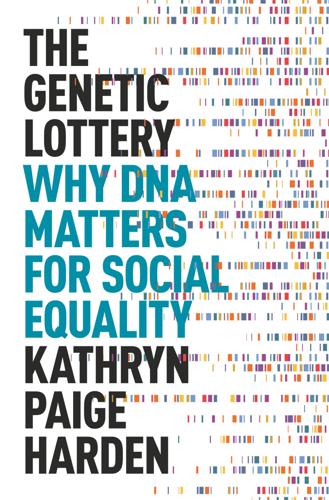
The Genetic Lottery: Why DNA Matters for Social Equality
by
Kathryn Paige Harden
Published 20 Sep 2021
Even before the novel coronavirus pandemic, life spans for White7 Americans without a college degree were actually getting shorter.8 This historically unusual decline in life span, unique among high-income countries, was driven by an epidemic of “deaths of despair,” including overdoses from opioid drugs, complications from alcoholism, and suicides.9 The coronavirus pandemic made things worse. In the US, people with a college education are more likely to have jobs that can be done remotely from home, where they are more protected from exposure to a virus—and more protected from layoffs.10 In addition to living longer and healthier lives, the educated also make more money.
…
Households (SHED),” Board of Governors of the Federal Reserve System, accessed July 24, 2020, https://www.federalreserve.gov/publications/2020-economic-well-being-of-us-households-in-2019-financial-repercussions-from-covid-19.htm; “Hispanic Women, Immigrants, Young Adults, Those with Less Education Hit Hardest by COVID-19 Job Losses,” Pew Research Center (blog), accessed July 13, 2020, https://www.pewresearch.org/fact-tank/2020/06/09/hispanic-women-immigrants-young-adults-those-with-less-education-hit-hardest-by-covid-19-job-losses/. 11. David H. Autor, “Skills, Education, and the Rise of Earnings Inequality among the ‘Other 99 Percent,’ ” Science 344, no. 6186 (May 23, 2014): 843–51, https://doi.org/10.1126/science.1251868. 12.
…
Now, take the Rawlsian thought experiment about the veil of ignorance seriously, and consider: What sort of society would you want if you didn’t know what the outcome of the genetic lottery was going to be? Conclusion As I write the last chapter of this book, my university and my children’s school have shut down, in an attempt to slow the transmission of the COVID-19 virus. Sarah Bessey, an author and pastor, summarized the various recommendations given by public health officials as all being versions of the same message: “Love the vulnerable with your choices.” As a physically healthy woman in her thirties, with good access to medical care in a highly resourced urban area, I might not be particularly vulnerable to serious illness from coronavirus.

Chokepoint Capitalism
by
Rebecca Giblin
and
Cory Doctorow
Published 26 Sep 2022
One 2018 analysis estimated a full guarantee for US workers would cost $543 billion per year, or 3 percent of GDP.28 In exchange, we’d have everyone who wanted a job but couldn’t otherwise get one working to make society better, adding to community stability and purpose. To put that into context, US government spending in response to just the first few months of the coronavirus pandemic in 2020 is estimated at over $6 trillion,29 about twelve times as much, of which substantial portions are going straight into billionaires’ pockets via stock buybacks, special dividends, executive bonuses, and service on debt that’s held by the company’s investors, who borrowed from the company to pay themselves dividends that will worsen inequality at the public’s expense.
…
Libraries, meanwhile, have seen mounting costs and onerous conditions for the electronic materials they buy from major publishers, even as electronic materials account for an ever larger share of their collections. Amazon long refused to license the titles it publishes to libraries on any terms at all. In 2020, however, as the COVID-19 pandemic spotlighted the crucial importance of remote access to books, some US states passed legislation to require publishers to license titles to libraries on reasonable terms, and Amazon was finally forced to bend. Some publishers, like Hachette, make their books available to North American libraries but refuse to license them to libraries throughout the UK, Australia, and New Zealand on any terms at all.
…
The answer is that we want to convince you that the resulting chokepoints are problematic even if antitrust regulators disagree, and that there are a whole bunch of remedies outside of antitrust that can and should help widen them out. That’s what the whole second half of this book is about. We’ve seen how impossible the current economics of streaming are for all but the most popular acts. Artists have been told not to worry, though, because they can always make a living from gigs! When COVID-19 canceled everything we saw that event income actually cannot be relied on. And even before that, such airy assurances elided the brutal grind of touring life—the physical toll of performing, regular adrenaline crashes, poor food and sleep, long-term separations from family and community. Still, pre-pandemic, it was not uncommon for musicians to make 95 percent of their income from live events.

New Laws of Robotics: Defending Human Expertise in the Age of AI
by
Frank Pasquale
Published 14 May 2020
The business case for service robots is obvious—they do not need to be paid, to sleep, or to be motivated to stay on task. So long as there are tourists looking for a bargain or business travel departments looking to cut down expenses, hoteliers will want robot cleaners, receptionists, doormen, and concierges. All those jobs may become as obsolete as elevator operators. The coronavirus pandemic has created even more pressures to reduce human interactions in service industries. Lockdowns of indefinite duration made the case for robotics better than any business guru. When warehouse operators, meat packers, and farmworkers fear catching a deadly virus at work, robotization of their roles may appear outright humanitarian (if paired with some plausible promise of basic income provision and future jobs).
…
See also unions colleges and universities: aims of, 63–64; for caregivers, 192; citizens entitled to four years of, 175; content of (intrinsic vs. instrumental), 178–179; costs of, 85, 87; evaluation in, 141–142; for-profit, 134; free, 135; making students “robot-proof,” 173–174; online, 84–86; STEM training at, 173. See also student debt conspiracy theories, 94, 98, 113 consumer protection, 15, 58, 201; and deceptive marketing, 102 contact tracing, 11 content moderation, 91, 95, 96, 107, 117–118 copyright infringement, 165 coronaviruses. See COVID-19 pandemic; pandemics “cost disease,” 171–172, 186–190, 196, 198, 299n68 COVID-19 pandemic, 100, 166, 191, 194; and data deficiencies, 243n3; and essential workers, 172–173; preparedness for, 159–160, 184–185; and recovery of jobs, 185–186, 195; and universities, 62 Crary, Jonathan, 217 credit and credit scoring, 10, 30, 131–136, 140, 282n83.
…
By focusing the technology on routine questions, Goel and his team are committing to a human-respecting near term, where software primarily aids existing educators.5 On the other hand, whatever the intentions of computer scientists, strong political and economic currents will push innovations like JW in another direction—toward replacing teachers and constant monitoring of students. Georgia was one of many states to slash funding for public education in the wake of the Great Recession. The COVID-19 crisis has pressured universities to cut costs further and put more material online. Powerful players in education policy, ranging from globally influential foundations to top level bureaucrats in Washington and Brussels are also fixated on cost cutting. Instead of raising taxes to expand existing universities, California in 2016 deployed a poorly thought out set of online courses to make up for a lack of slots in its colleges.6 AI (to teach) and robotics (to monitor testing) are a plausible next step, given the need for such courses to monitor students in order to prevent cheating and discipline inattention.
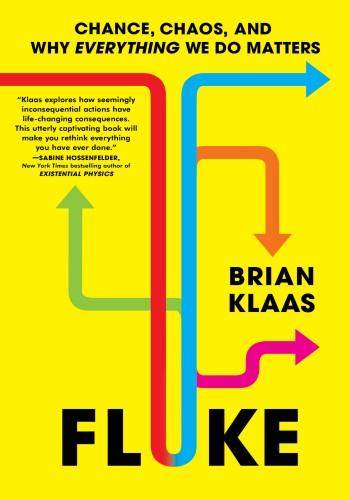
Fluke: Chance, Chaos, and Why Everything We Do Matters
by
Brian Klaas
Published 23 Jan 2024
Consider this apparently straightforward question: “Do pandemics reduce productivity?” Answering it relies on the implicit assumption that pandemics, across time and space, generally are the same, and you can apply the lessons from one to the other. During the COVID-19 pandemic, a surprising amount could be accomplished by office workers Zooming in their pajamas. Could you then infer, based on the coronavirus pandemic, how pandemics generally affect productivity? The answer becomes plain if you consider what might have happened if a novel coronavirus had spread in 1990 instead of 2020. Without personal computers, video conferencing, or the internet in most households, widespread working from home would’ve been impossible.
…
Modern society is now so intertwined that ordinary individuals, not just kings and popes and generals, can redirect the entire human swarm. Consider this question: Who has been the most influential person of the twenty-first century so far? Some might say Xi Jinping, or Vladimir Putin, or Donald Trump. I disagree. My nomination would be an unnamed person. The COVID-19 pandemic likely started with a single person, in a single event, in Wuhan, China.VIII The lives of literally billions of people were drastically changed, for years, by one virus infecting one individual. Never in human history have the daily lives of so many people been so drastically affected, for so long, by one small, contingent event.
…
For example, Jean Carlson, a physicist and pioneer of complex systems at UC Santa Barbara, has convincingly argued that many real-world systems are better described by a theory she has developed, called highly optimized tolerance, which may better predict the behavior of biological and man-made complex systems. VIII. The debate over the origin story of COVID-19 is beyond the scope of this book. Whether it started from a zoonotic infection or an accidental “lab leak,” both explanations are contingent on a single act involving one person. CHAPTER 6 HERACLITUS RULES The limits of probability in a complex, ever-changing world Sentient beings, including humans, are prediction machines.

The Power Law: Venture Capital and the Making of the New Future
by
Sebastian Mallaby
Published 1 Feb 2022
This is certainly true sometimes: Impossible Foods is an example. On the other hand, video games and social media promote screen addiction and fake news, even as they entertain, inform, and allow Grandma to admire pictures of her distant grandchildren. The gap between VC rhetoric and VC practice is easily mocked. In April 2020, in the throes of the coronavirus pandemic, the venture capitalist Marc Andreessen proclaimed that it was “time to build.” “Where are the high-speed trains, the soaring monorails, the hyperloops, and yes, the flying cars?” he demanded.[37] The following month Andreessen’s partnership invested in Clubhouse, an invitation-only social-media app.
…
Toward the end of the 2010s, Sequoia began to lay on workshops for entrepreneurs: an event called Base Camp gathered founders for weekends in the mountains, featuring campfires, wigwam tents, and speakers on everything from technology to architecture. Another offering called the Company Design Program featured courses taught by the firm’s partners. Amid the coronavirus pandemic of 2020, the partnership launched a founders’ app called Ampersand. Sequoia-backed entrepreneurs used it to stay in touch with one another and test management ideas. Should they adjust compensation when workers went remote? How to help team members whose mental health deteriorated?[25] Three years after Goetz and Botha had been informally promoted, at the start of 2012, Leone got a strange message from Moritz.
…
The recent bankruptcy of a hardware-based communications software company, Avaya, suggested that the cloud’s moment was arriving. The hedge funders duly made three cloud-communications bets: Twilio, RingCentral, and the videoconferencing company Zoom. The first two generated 4x and 5x over the next two years. Assisted by the coronavirus pandemic, Zoom emerged as one of the breakout tech companies of 2020, generating 9x. Meanwhile, Sequoia’s hedge fund was short legacy telecom companies that would lose out from the transition to the cloud. One thematic insight had generated multiple winning positions. By the beginning of 2021, Sequoia Capital Global Equities had $10 billion under management.
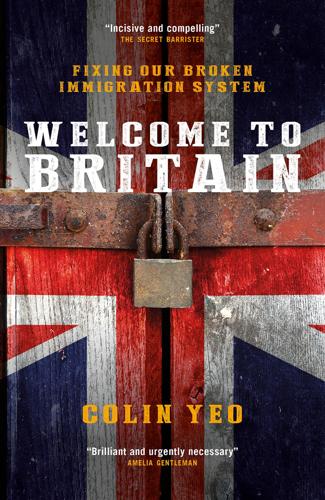
Welcome to Britain: Fixing Our Broken Immigration System
by
Colin Yeo;
Published 15 Feb 2020
Because of the net migration target discussed in Chapter 2, and by means of the hostile environment policies discussed in Chapter 3, we have seen the introduction of a raft of policies actively encouraging race discrimination in day-to-day life. Meanwhile, other aspects of immigration policy discussed in this book have deliberately dampened the life outcomes for migrants who settle here, in a vain attempt to deter them from coming in the first place. The twin shocks of Brexit and the coronavirus pandemic that was taking hold as this book went to press give us an opportunity to change direction and embrace a more equal, fair and respectful approach to those migrants who make this country their home. NOTES 1 See Winder, Bloody Foreigners, pp. 279–81 and ‘Nicholas Winton, Rescuer of 669 Children from Holocaust, Dies at 106’, New York Times, 1 July 2015. 2 See for example Randell Hansen, Citizenship and Immigration in Post-War Britain (Oxford: Oxford University Press, 2000) and Goodfellow, Hostile Environment. 3 See Will Somerville, Immigration under New Labour (Bristol: Policy Press, 2007), p. 14 and Winder, Bloody Foreigners, pp. 330–31. 4 ‘Papers released under 30-year rule reveal full force of Thatcher’s fury’, The Guardian, 30 December 2009. 5 Winder, Bloody Foreigners. 6 Hansen, Citizenship and Immigration in Post-War Britain, pp. 57, 59. 7 Ibid. 8 Gary Freeman, writing in Cornelius, Tsuda, Martin and Hollifield (eds), Controlling Immigration: A Global Perspective (Stanford: Stanford University Press, 1994). 9 See for example ‘Dutch woman with two British children told to leave UK after 24 years’, The Guardian, 28 December 2016.
…
For the past twenty years, the discussion of economic migration has centred around skilled migration. However, with the end of European Union free movement rules following Brexit, the next twenty years may focus more on how to meet the needs of the British economy for unskilled labour. At the time of writing, just as the coronavirus pandemic was starting, the unemployment rate was approaching an historic low of just 3.8 per cent. With workers therefore in short supply, failing to provide a lawful source of labour to fill low-skilled vacancies could result in driving up wages (and therefore prices) or increasing productivity or both.
…
The decision was reversed some six weeks later after a media outcry, but she died a year afterwards.49 There are also reports of very ill patients wrongly being turned away by hospitals and pregnant women being afraid to seek antenatal care for fear of the immigration consequences, with obvious risks to their own health and the health of their babies.50 As has been starkly illustrated by the coronavirus crisis, other illnesses are contagious and have wider public health implications. It is critically important that vaccination rates are very high amongst the public, for example, and that transmissible conditions such as HIV, tuberculosis or new diseases like Covid-19 are identified and treated. By denying healthcare to afflicted people and making them scared of going to the doctor, it can be argued that the hostile environment represents a risk not just to individuals but to public health in general. Inculcating a fear of the authorities is problematic in policing, as well as in public health.
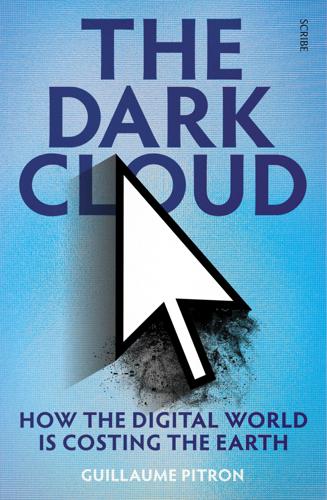
The Dark Cloud: How the Digital World Is Costing the Earth
by
Guillaume Pitron
Published 14 Jun 2023
Interview with Pierre-Marie Théveniaud, president of the French non-profit Robin des Toits, 2020. 22 See ‘White Paper: The Road to 5G is Paved with Fiber’, The Fiber Broadband Association, 12 December 2017, and ‘Fiber Broadband Association: 1.4M Fiber Miles Needed for 5G in Top 25 U.S. Metros’, IEEE Communications Society, 19 December 2017. 23 ‘5G’s rollout speeds along faster than expected, even with the coronavirus pandemic raging’, CNET, 30 November 2020. 24 ‘Canalys: 278 million 5G smartphones to be sold in 2020’, GSM Arena, 10 September 2020. 25 Keynote by Michèle Rivasi, Member of European Parliament with Europe Écologie les Verts, at the conference La 5G: avancée technologique, recul écologique?
…
An application on your smartphone to monitor your sleep cycles makes sleeping a digital action; the same applies to praying once you download a meditation from any of the online spiritual communities out there; an ISIS solider waging war in Syria also exists in the digital world, as the US stores the geolocation of his mobile phone as part of its ‘Gallant Phoenix’ project aimed at turning data into justice; and even playing with your cat becomes a digital action once you post clips of its adorable antics on social media.3 In short, our every move in the real world is now duplicated in the virtual realm — a process of digitalisation that Covid-19 has accelerated. The global pandemic irrefutably made us more reliant on digital tools for working from home, buying books online, or having a virtual get-together with friends. In fact, the online world is expanding so fast that its players sometimes struggle to keep up: in 2020, several operators were forced to downgrade the quality of their online video services to keep the networks from saturating; PlayStation and personal computer sales skyrocketed; and connected-car manufacturers are still contending with a computer chip shortage.4 This virtualisation of the perceptible world is only in its infancy.
…
No one knows, but it seems logical that China’s military presence will expand so long as the crises — namely, terrorist attacks — justify it. In what form? It’s a difficult question. The Chinese army lacks qualified personnel, as well as skills in the operational command of armed forces.52 Then there’s the matter of the country’s reputation, at a time when the Covid-19 crisis cast China in a poor light internationally. On the other hand, Beijing has access to a pool of three million professionals employed in 5,000 private security companies. A handful of them currently have agency outside China’s borders: the China Cityguard Security Service, active in Pakistan; the China Overseas Security Group; and, most notably, the Frontier Services Group.
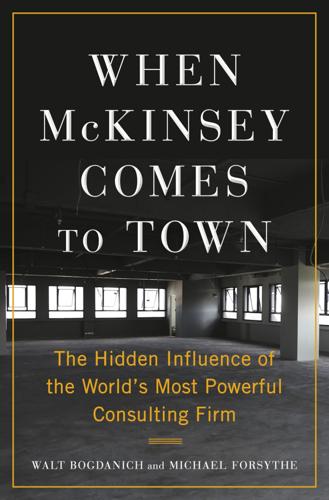
When McKinsey Comes to Town: The Hidden Influence of the World's Most Powerful Consulting Firm
by
Walt Bogdanich
and
Michael Forsythe
Published 3 Oct 2022
McKinsey hastened to add that the conference had nothing to do with contract procurement, “so we hope it will be fine.” * * * — McKinsey closed out the last year of the Trump administration capitalizing on a dire health-care emergency—the coronavirus pandemic that as of March 2022 had killed more than 900,000 Americans. With the country convulsing from the pandemic, protests over police violence, and a bitter presidential election, McKinsey sought to stay in the spotlight by relentlessly churning out COVID-19 position papers, focusing less on how people should protect themselves and more on how companies could use lessons from the pandemic to improve their competitive standing.
…
But the takeover was a fait accompli. The COVID-19 epidemic provided a major test of the country’s retooled health-care system. Prime Minister Boris Johnson entrusted the all-important test-and-trace effort to the former McKinsey consultant Dido Harding, now Baroness Harding. She and the country’s top health officials turned to private companies, not the NHS, to run the program. McKinsey alone charged £563,400 to provide a “vision, purpose and narrative” of the Harding-led program. Test and trace was a disaster. More than a quarter of people exposed to COVID-19 were not aware that they needed to self-quarantine, a serious shortcoming that contributed to the country’s failure to control the spread of the coronavirus.
…
GO TO NOTE REFERENCE IN TEXT killed more than 900,000: “Coronavirus in the U.S.: Latest Map and Case Count,” New York Times, April 7, 2022. GO TO NOTE REFERENCE IN TEXT “From surviving to thriving”: Kevin Sneader and Bob Sternfels, “From Surviving to Thriving: Reimagining the Post-COVID-19 Return,” McKinsey & Company, May 1, 2020. GO TO NOTE REFERENCE IN TEXT his five Rs: Ibid. GO TO NOTE REFERENCE IN TEXT Within months of the pandemic’s arrival: Ian MacDougall, “How McKinsey Is Making $100 Million (and Counting) Advising on the Government’s Bumbling Coronavirus Response,” ProPublica, July 15, 2020.
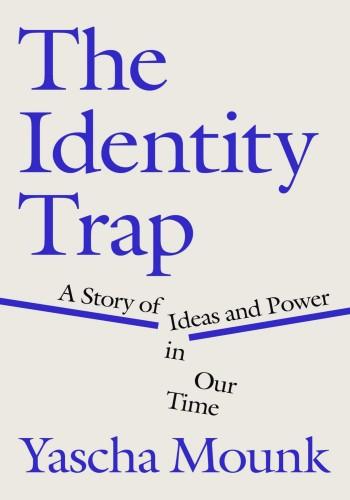
The Identity Trap: A Story of Ideas and Power in Our Time
by
Yascha Mounk
Published 26 Sep 2023
A better solution to the persistent problem of segregation is a redoubled commitment to integration. The goal must be to create more contexts and opportunities in which people from different groups can interact and cooperate. Chapter 12 THE PATH TO EQUALITY When an earthquake hits, doctors have to decide whom to treat first. In the early stages of the coronavirus pandemic, hospitals in Italy and some parts of the United States were forced to make heartrending choices about the distribution of ventilators. And when a long-awaited vaccine finally promised to deliver the world from its suffering, public health authorities needed to determine who should be first in line to access its scarce doses.
…
GO TO NOTE REFERENCE IN TEXT New York State Department of Health: Though the ostensible justification for this policy was to prioritize ethnic groups that had experienced higher mortality rates from COVID, this group included Asian Americans, who had been dying from COVID at lower rates than other ethnic groups since the beginning of the pandemic. See, for example, Latoya Hill and Samanta Artiga, “COVID-19 Cases and Deaths by Race/Ethnicity: Current Data and Changes over Time,” KFF, Aug. 22, 2022, www.kff.org/coronavirus-covid-19/issue-brief/covid-19-cases-and-deaths-by-race-ethnicity-current-data-and-changes-over-time/. GO TO NOTE REFERENCE IN TEXT Otherwise identical New Yorkers: “COVID-19 Oral Antiviral Treatments Authorized and Severe Shortage of Oral Antiviral and Monoclonal Antibody Treatment Products,” New York Department of Health, Dec. 27, 2021, www.mssnyenews.org/wp-content/uploads/2021/12/122821_Notification_107774.pdf.
…
GO TO NOTE REFERENCE IN TEXT doctors and nurses: In most places, residents of long-term care facilities were also part of the first priority group because a large share of deaths from COVID-19 occurred in these settings. GO TO NOTE REFERENCE IN TEXT likelihood of dying: “Since the start of the pandemic, people 65 and older have been at greatest risk of hospitalization and death due to COVID-19 compared to other age groups, and represent nearly 80% of all COVID-19 deaths as of September 29, 2021, similar to the rate observed in a July 2020 KFF analysis.” Meredith Freed, Juliette Cubanski, and Tricia Neuman, “COVID-19 Deaths Among Older Adults During the Delta Surge Were Higher in States with Lower Vaccination Rates,” KFF, Oct. 1, 2021, www.kff.org/policy-watch/covid-19-deaths-among-older-adults-during-the-delta-surge-were-higher-in-states-with-lower-vaccination-rates/.
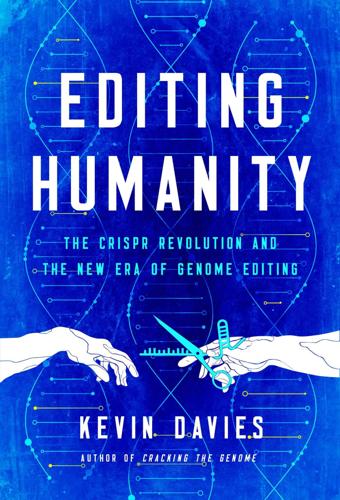
Editing Humanity: The CRISPR Revolution and the New Era of Genome Editing
by
Kevin Davies
Published 5 Oct 2020
Darrell Etherington, “Pinterest CEO and a team of leading scientists launch a self-reporting COVID-19 tracking app,” TechCrunch, April 2, 2020, https://techcrunch.com/2020/04/02/pinterest-ceo-and-a-team-of-leading-scientists-launch-a-self-reporting-covid-19-tracking-app/. 16. Rob Copeland, “The Secret Group of Scientists and Billionaires Pushing a Manhattan Project for Covid-19,” Wall Street Journal, April 27, 2020, https://www.straitstimes.com/world/united-states/scientists-and-billionaires-drive-manhattan-project-seeking-to-combat-covid-19. 17. Alex Philippidis, “COVID-19 Drug & Vaccine Candidate Tracker,” Genetic Engineering & Biotechnology News, May 18, 2020, https://www.genengnews.com/covid-19-candidates/covid-19-drug-and-vaccine-tracker/. 18.
…
Her whistleblower experience inspired a play, The King of Hell’s Palace, which premiered in London. Wang publicly called out the pressure placed on her family in China from authorities to call off the production. Twenty-five years later, China again showed its disdain to the medical whistleblowers of the coronavirus pandemic. II. Also my birthplace, it should be noted. CHAPTER 16 BREAKING THE GLASS In March 2016, Michael Deem visited Shenzhen to speak at a small symposium on “Biodynamical Systems.” In the official group photo, Deem stands tall in the center of the group. His smiling protegé, He Jiankui, is easily recognizable.
…
Alex Philippidis, “COVID-19 Drug & Vaccine Candidate Tracker,” Genetic Engineering & Biotechnology News, May 18, 2020, https://www.genengnews.com/covid-19-candidates/covid-19-drug-and-vaccine-tracker/. 18. T. R. Abbott et al., “Development of CRISPR as a prophylactic strategy to combat novel coronavirus and influenza,” bioRxiv, March 14, 2020, https://www.biorxiv.org/content/10.1101/2020.03.13.991307v1. 19. Jennifer Doudna, “Biochemist Explains How CRISPR Can Be Used to Fight COVID-19,” Amanpour, March 30, 2020, http://www.pbs.org/wnet/amanpour-and-company/video/biochemist-explains-how-crispr-can-be-used-to-fight-covid-19/. 20. Lorrie Moore, “Bioperversity,” New Yorker, May 12, 2003, https://www.newyorker.com/magazine/2003/05/19/bioperversity. 21.
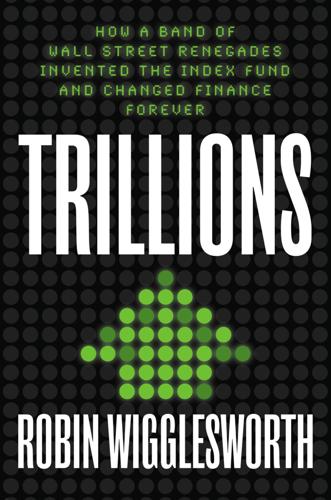
Trillions: How a Band of Wall Street Renegades Invented the Index Fund and Changed Finance Forever
by
Robin Wigglesworth
Published 11 Oct 2021
Regardless, it is abundantly clear that for the foreseeable future, the gushing inflows into traditional index funds and ETFs are going to continue—even though the impact on markets, the investment management business, and the finance industry as a whole is also becoming more apparent. Chapter 16 THE NEW CAPTAINS OF CAPITAL TESLA’S STOCK WENT ON A wild ride in 2020, powered by the devotion of the electric car company’s army of ordinary investors, who were suddenly stuck at home and day-trading their stimulus checks to pass time while the coronavirus pandemic raged. But in November, the rally received another huge jolt that would help make Elon Musk’s company one of the most valuable in the world. Despite its dramatic stock market gains over the past decade, S&P Dow Jones Indices—one of the biggest providers of financial benchmarks—had long refrained from adding Tesla to its flagship index, the S&P 500, for one simple reason: To be included, a company has to be consistently profitable, a requirement that Tesla had struggled to meet.
…
BlackRock, fearful that the debacle might harm the image of the broader ETF universe, put out an unusually bluntly worded statement: “Inverse and leveraged exchange-traded products are not ETFs, and they don’t perform like ETFs under stress. That’s why iShares does not offer them.”10 Many inverse, leveraged, and otherwise derivatives-based ETPs suffered another blow in the market mayhem that followed the COVID-19 pandemic. Over forty—most of which linked to commodity indices—were quickly aborted by their sponsors, while others had their wings clipped, but not before causing some ructions.11 For example, USO, an ETF that invests in oil derivatives, contributed to the remarkable sight of US crude prices in April 2020 briefly falling into negative territory for the first time in history.
…
Most major tracts of industry real estate are now utterly and likely permanently controlled by a handful of big players, chiefly BlackRock, Vanguard, and State Street. Most major and minor niches likewise. There will undoubtedly be more product innovation in the index fund industry, of varying usefulness and value. Yet it is revealing that there has been a steady uptick in ETF closures in recent years. The shakeout caused by COVID-19 has lifted the population of the ETP graveyard to well over the thousand-casualties mark. More are undoubtedly coming. Some industry insiders are therefore more excited by what they think could be the next big iteration in the indexing revolution: direct indexing. Netzly is not alone in wanting more customizable index funds—for example, ones that screen out coal companies or arms manufacturers.

Insight Guides Iceland
by
Insight Guides
Published 6 Dec 2024
Doctors say that the reasons include an unpolluted environment, a healthy fish-based diet and exemplary public health care. Infant mortality in Iceland is, at 2.7 deaths per 1,000 children, among the lowest in the world, and certain aspects of preventative medicine, such as early detection of female cancers, are unmatched. Iceland was not spared by the coronavirus pandemic which swept the world in 2020, although it fared reasonably well compared to many other European countries. In total, there were just over 200,000 cases in Iceland, but only 229 deaths. Moments of acclaim In the last decade or so, Iceland has been hitting world headlines for all the wrong reasons, but it does have its quiet moments of acclaim.
…
These issues arguably became even more pertinent after deCODE was purchased by biopharmaceutical giant Amgen in late 2012, who formed a spin-off company around deCODE’s juicy genetics systems and database, which it then sold in 2015 to the Chinese biopharmaceutical company WuXi PharmaTech. During the coronavirus pandemic in 2020, deCODE worked closely with Iceland’s Directorate of Health in their successful approach to dealing with the virus. Looking to foreign shores One of the many paradoxes typical of Icelanders is that along with being insular, they are insatiably curious about the outside world, even to the most obscure detail.
…
Iceland’s national football team are the surprise package at Euro 2016, eliminating England en route to the quarter finals and inspiring the nation in the process. 2018 Icelanders endure the wettest summer in 100 years: in July, excessive rain causes the biggest landslide in Icelandic history. Killing of a rare blue-whale/fin-whale hybrid by Icelandic company Hvalur causes international outrage. Parts of the final season of Game of Thrones are filmed around Iceland. 2020 Iceland garners international praise for its response to the Covid-19 crisis, managing to maintain a comparatively low death rate while keeping borders open for much of the pandemic. 2021 At the head of a Left-Green coalition, Katrin Jakobsdottir returns as prime minister with a progressive agenda – including investing in social housing and extending parental leave. 2023 A volcanic eruption on the Reykjanes Peninsula in December prompts the evacuation of 4,000 people.
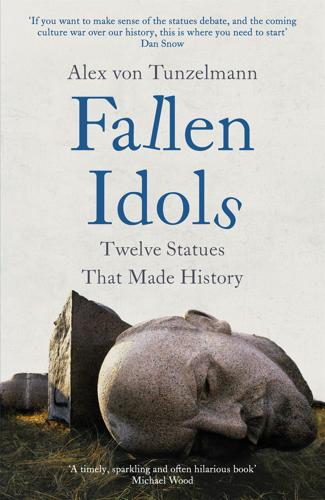
Fallen Idols: Twelve Statues That Made History
by
Alex von Tunzelmann
Published 7 Jul 2021
In 2011, artist Jesse Hemmons felt that the statue of fictional boxer Rocky Balboa outside the Philadelphia Museum of Art was too touristy, so she knitted him a pink sweater emblazoned with the words: ‘Go see the art’. The same year, a graffiti artist transformed a bas-relief of soldiers on the Soviet Army memorial in Sofia, Bulgaria, into painted figures of Superman, Father Christmas and Ronald McDonald. Hundreds of statues around the world were adorned with face masks in 2020 and 2021, during the coronavirus pandemic, while a projection on Rio de Janeiro’s enormous Christ the Redeemer statue transformed it into a doctor with a stethoscope. A fallen statue is a powerful symbol, and can be kept that way. The French conceptual artist Daniel Buren once asked whether ‘a statue lying flat – for example, one that is knocked down during a revolution – automatically becomes a sculpture’.2 After the 1966 coup that overthrew Ghana’s first prime minister, Kwame Nkrumah, his image and works were banned, and his statue in Accra was beheaded.
…
It is the story of a community’s long and bitter fight over civic identity and who gets to control it. As 2020 began, a novel coronavirus spread across the world. On 11 March, the World Health Organization declared it a pandemic. In early April, in Minneapolis, Minnesota, George Perry Floyd Jr – African American, forty-six years old, a father of three – came down with the symptoms of COVID-19, the disease caused by the coronavirus. He was ill for several weeks, and was laid off from his job as a restaurant doorman.1 On 25 May 2020, just before 8 p.m., Floyd walked into a grocery store and bought a pack of cigarettes with a $20 bill. The cashier believed the bill was fake. The police were called.
…
W. 199 Breker, Arno 15 Bristol 175, 176 Colston statue 1, 174, 179–190 Reid statue 189–90 Bristol City Council 189 British Empire Film Institute 141 British South Africa Company 136–7, 137 Brooks, Rayshard, killing of 196 Brown, Michael, killing of 167 Brown, Thomas J. 172 Brownstein, Rhonda 168 Bruce, Tammy 17 Brumidi, Constantino 194 Brussels 93–4, 98–9, 100, 101, 215 Budapest Memento Park 52–3, 114 shoes sculpture 214 Stalin Statue 45–51 Stalin’s boots statue 52–3 Buddhas of Bamiyan, Afghanistan 9 Buren, Daniel 212 Bush, George W. 119–20, 130, 131–2 Bush, George Washington 198 Butzmann, Manfred 212 Cabot Lodge, Henry 194, 201 Calvino, Italo 14 Cape Town, Rhodes Memorial Monument 141 Cape Town, University of, Rhodes statue 134–5, 142, 143, 145–7 Carlyle, Thomas 13, 133 Cassá, Roberto 67, 68 Cassidy, John 182 Castro, Fidel 61, 62 Cattier, Felicien 91 Chakaredza, Lawrence 144 Charlottesville, Virginia, Lee statue 170, 171–2 Cheere, John 32–3, 34 Cheere, Henry 32–3 Chernobyl Exclusion Zone, Lenin statue 116 Chigudu, Simukai 144, 147, 148, 150 China 14, 16–17 Christ the Redeemer, Rio de Janeiro 212 Churchill, Winston 1, 17, 76, 211, 215 Citizens for a Decolonized Public Space 99 citizenship, sense of 207 civic identity 173, 181 classical style statuary 11–12 Clive, Robert 72, 211 Coe, Alexis 192 Coe, Henry Waldo 195–6 Colombino, Carlos 212 Colossus of Rhodes 133–4 Colston, Edward 173–90 Man of His Time argument 210 statue inauguration 182 statue plaques 184–6 statue proposal 179, 180–3 statue toppled 1, 174, 186–9, 190 statue vandalism 183–4 Columbus, Christopher 1, 197 commemoration 13, 213–14 Commission for the Immortalization of Lenin’s Memory 108, 109 Commonwealth Relations Office 81–2 Communism, fall of 52 Confederate Veteran (magazine) 163 Congo, Democratic Republic of the 87, 96–8, 101–2 Congo, Republic of 94, 94–6 Congo Free State 87, 88, 89–93, 95 Conrad, Joseph, Heart of Darkness 89–90 Copenhagen, Denmark, Little Mermaid 1–2 Coppini, Pompeo 195 Covid 19 pandemic 173, 212 creative interventions 212 Cuba 61, 62, 63 Culloden, Battle of 29, 30, 31, 32, 35 cultural vandalism 18 culture wars 3, 4–5, 216–17 Cumberland, William, Duke of 29–39 atrocities 30, 30–1, 31–2, 33 first statue 30 London statue 34–7 Parsonstown statue 33, 37–8 soap statue, 2012 38–9 Curzon, Lord 74, 134, 135 Davis, Jefferson 153, 157–8, 163, 168, 170, 171, 195 Davis, Robert 39 De Stoeten Ostendenoare 98 debate 211, 217–18 Degas, Edgar 13 Demnig, Gunter 214 destroying statues, arguments against 16–20, 216–8 Domínguez-Trujillo, Ramfis 61–4, 68–9 Dominican Republic 55–70 Donatello 12 Douglass, Frederick, Rochester statue toppled 1–2 Dublin 33, 81 Dzerzhinsky, Felix 108, 111–12, 216 Eddy, Richard 184–5, 188 Edward VII, King 73, 80–1 Eiffel Tower 215 eikons 11, 14 Eisenhower, Dwight D. 62, 78–9 Ekeren, Belgium, Leopold II statue 88, 98 El Socialista (newspaper) 61 Eleöd, Ákos 52–3 equestrian statues 12, 22–3, 121, 141 Erasure of History argument 16–17, 27–8, 64–6, 67–70, 81–2, 148, 171–2, 188, 209, 210 Evans, Richard J. 207 Fenner, Charles E. 154, 160, 160–1, 162, 164 First World War 93, 141, 142 Floyd, George Perry 173–4, 177, 190, 196 Forward Statue, Madison, Wisconsin, toppled 1 French Revolution 1, 9–10, 106 Gagarin, Yuri 12 Gandhi, Mohandas K. 76, 78, 80, 83, 83–4, 142 Garrison, William Lloyd 193, 205 Gateshead, Angel of the North 215 George II, King 30, 31, 33 George III, King, New York statue 21–8, 33, 35 George III, King, London statue 27 George IV, King 35 George V, King, statue, New Delhi controversy 77–8, 79 decay 71, 83 dedication 75–6 origins 72–5 relocation 81–2 size 76, 84 Germany, Nazi 14–15, 68 Ghana 212–13 Ghent, Leopold II statue covered in paint 1 Giraud, Théophile de 98–9 Gobert, Sébastien 116 Godse, Nathuram 84 GoldenEye (film) 113 Gone With the Wind (film) 157 González Castillo, Luis 56 Good Bye, Lenin!
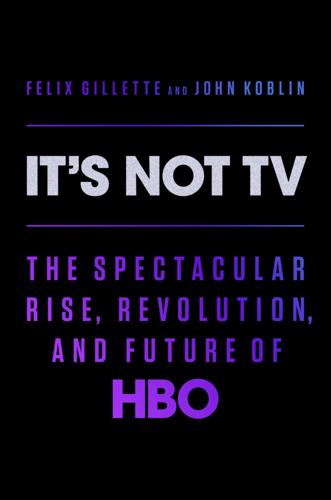
It's Not TV: The Spectacular Rise, Revolution, and Future of HBO
by
Felix Gillette
and
John Koblin
Published 1 Nov 2022
In the years that followed, Hehir would go on to direct a series of award-winning sport documentaries for ESPN’s 30 for 30 franchise. And in 2020, he would create The Last Dance, a multipart series about the Chicago Bulls for ESPN and Netflix, which would become the most watched documentary in ESPN’s history—and one of the biggest cultural hits in America during the early months of the coronavirus pandemic. For years, first under Bewkes, then Albrecht, HBO Sports had grown less and less central to the network’s mission. Now, thoroughly marginalized, HBO Sports was driving a budding star into the arms of a rival. “HBO Sports was at the time the antithesis of forward-thinking HBO,” Hehir says.
…
Fellow members of the tribe offered their congratulations. “Scary for us to have you there,” Netflix’s Hastings wrote on Twitter. “But great for the world that HBO will be strong.” On May 1, 2020, Kilar took the reins of WarnerMedia at a particularly challenging time. Much of the country was in pandemic lockdown, hoping to slow the spread of COVID-19. Most of WarnerMedia’s thirty thousand–plus employees were working from home. Movie theaters were shuttered. Production of films and TV shows were at a standstill. Sports leagues were on hiatus. And HBO Max was set to debut before the end of the month. That spring, WarnerMedia launched a new advertising campaign to try to clarify the coming changes to the reformulated, hypermaximized HBO.
…
Six months earlier, when Disney had uncorked its long-awaited streaming service Disney+, the new entrant enticed subscribers with an original new big-budget sci-fi series called The Mandalorian, which was yet another spin-off from the beloved Star Wars franchise. Right out of the gate, subscriptions to Disney+ soared. For the past year, WarnerMedia executives had been pinning their hopes on the Friends reunion special. But then COVID-19 disrupted the production, and it wasn’t ready to go. Without it, there wasn’t any major new attraction to woo curious customers to check out the service. With HBO Max’s lack of “quality noise,” sign-ups were sluggish, confusion about how to sign up ran rampant, and market watchers were underwhelmed.

How to Survive a Pandemic
by
Michael Greger, M.D., FACLM
“From my perspective,” Osterholm said, “we pray, plan, and practice … We have to plan as if this will happen tonight.”3226 Just as past experience with SARS may have helped countries like Singapore and Taiwan better deal with COVID-19, hard lessons from the coronavirus pandemic will hopefully translate into global readiness for the next one. Pandemic planning needs to be on the agenda of every institution, including every school board, every food distributor, every mortuary, every town hall, and every legislature.3227 The corporate world seemed to have been the first to have awakened to the pandemic threat long before COVID-19 erupted. Corporations from Boeing to Microsoft to Starbucks started mobilizing continuity plans back in 2005,3228 though details were considered “privileged company information.”3229 Microsoft reportedly distributed bottles of hand sanitizers to all of its sixty-three thousand employees worldwide.3230 The national U.S. preparedness plan, however, still remained to be employed across the country.
…
Of the home’s 130 or so residents, 101 became infected, and more than a third lost their lives.2755 On autopsy, the respiratory surface of the lung under a microscope appears obliterated by scar tissue.2756 Pulmonary fibrosis (lung scarring) is expected to become one of the long-term complications among survivors of serious COVID-19 infection.2757 A six-month follow-up of SARS survivors found about one in three showed evidence of scarring on chest x-rays, and one in six suffered a significant impairment in lung function.2758 Death from COVID-19 comes from progressive “consolidation” of the lung, meaning your lungs start filling up with something other than air. In the case of regular pneumonia, it’s largely pus. In COVID-19 pneumonia, postmortems show you drown in lungs that are “filled with clear liquid jelly.”2759 How to Treat COVID-19 At the time I am writing this in April 2020, there is no specific, proven therapy for COVID-19.
…
Walker PGT, Whittaker C, Watson O, Baguelin M, Ainslie KEC, Bhatia S, Bhatt S, Boonyasiri A, Boyd O, Cattarino L, et al. 2020 Mar 26. Report 12. The global impact of COVID-19 and strategies for mitigation and suppression. MRC Centre for Global Infectious Disease Analysis, Imperial College London. [accessed 2020 Apr 8]. https://www.imperial.ac.uk/mrc-global-infectious-disease-analysis/covid-19/report-12-global-impact-covid-19/ 138. American Hospital Association. 2020 Feb 20. Coronavirus update: register for AHA members-only webinars on Feb. 21 and Feb. 26 related to novel coronavirus (COVID-19). Chicago: AHA; [accessed 2020 Mar 30]. https://www.aha.org/advisory/2020-02-20-coronavirus-update-register-aha-members-only-webinars-feb-21-and-feb-26-related. 139.
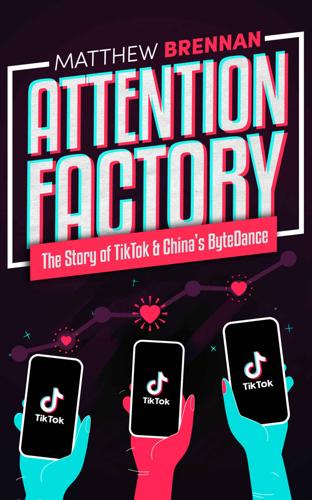
Attention Factory: The Story of TikTok and China's ByteDance
by
Matthew Brennan
Published 9 Oct 2020
ByteDance would be able to partially allocate advertising inventory to its own suite of products, accurately targeting and acquiring new users across the globe with speed and minimal cost without having to hand over money and data to the online advertising duopoly gatekeepers of Facebook and Google. As the coronavirus pandemic spread across the world in early 2020, people found themselves quarantined inside their homes for weeks, leading into months. While airlines, hotels, and restaurants went bankrupt, demand for online entertainment skyrocketed, causing downloads of TikTok to hit all-time highs. The app was the perfect fix for those desperate for distraction, locked inside suffering from the cruel combination of stress and boredom.
…
active_status=all&ad_type=political_and_issue_ads&country=ALL&impression_search_field=has_impressions_lifetime&q=tiktok&view_all_page_id=153080620724&sort_data[direction]=desc&sort_data[mode]=relevancy_monthly_grouped What a difference a year makes . The world in which I began writing this book and the world we find ourselves in today seem so very distant. The COVID-19 pandemic has turned our lives upside down. Working from home, travel bans, and mask-wearing became a part of daily life. A military border clash between India and China led to the deaths of 20 Indian soldiers. 59 Chinese apps, including TikTok found themselves subsequently removed from Indian app stores.

Under a White Sky: The Nature of the Future
by
Elizabeth Kolbert
Published 15 Mar 2021
Lackner and Christophe Jospe, “Climate Change Is a Waste Management Problem,” Issues in Science and Technology, 33 (2017), issues.org/climate-change-is-a-waste-management-problem/. “Such a moral stance”: Lackner and Jospe, “Climate Change Is a Waste Management Problem.” global CO2 emissions were down: Chris Mooney, Brady Dennis, and John Muyskens, “Global Emissions Plunged an Unprecedented 17 Percent during the Coronavirus Pandemic,” The Washington Post (May 19, 2020), washingtonpost.com/climate-environment/2020/05/19/greenhouse-emissions-coronavirus/?arc404=true. How long, exactly, is a complicated question: Individual carbon molecules are constantly cycling between atmosphere and oceans and between both of these and the world’s vegetation.
…
They all developed writing and they all developed religion and they all built cities, all at the same time, because the climate was stable. I think that if the climate would have been stable fifty thousand years ago, it would have started then. But they had no chance.” * * * — I was contemplating another trip to Greenland, where Steffensen and his colleagues were drilling a new ice core, when COVID-19 hit. Suddenly everyone’s plans were upended, including my own. As borders closed and flights were canceled, travel to the ice sheet—or, for that matter, pretty much anywhere—became impractical. Here I was, trying to finish a book about the world spinning out of control, only to find the world spinning so far out of control that I couldn’t finish the book.

Fortune's Bazaar: the Making of Hong Kong: The Making of Hong Kong
by
Vaudine England
Published 16 May 2023
Only when a tiny group attacked the legislature physically did the government agree to drop the planned bill. By then it was too late, and through a long, hot, wet summer the movement grew. The more its demands were ignored, the more it grew and the more violence ensued. Finally, the early-2020 arrival of the coronavirus pandemic cleared the streets, and a crackdown followed, bolstered by the imposition of a new National Security Law. It was all a heady reminder of the spirit of a Hong Kong that refuses to bow down. Or it was the last foolishness of people who should have known better than to be so very provocative.
…
One five-generation Hong Kong family’s matriarch says, Well, so long as we are making money here, we don’t care; our children will go to boarding school anyway. A gracious China coast aristocrat laughed sadly at the failure of democratic dreams in Hong Kong, knowing, from her family’s flight from Shanghai in the 1940s, what little chance there had been. And then came Covid-19. Suddenly medical science supported the banning of any gathering of more than two people. Jokes in the early days about what “Wu-flu” might mean—a name coined from the origin of the coronavirus in China’s huge city of Wuhan—soon fell flat. Political life was closed down along with the schools and universities, the bars and shops and restaurants within which communities would usually gather.
…
They were peacefully angry at the perceived loss of those freedoms, and the breaking of promises to allow a free choice of leaders. 41 The growing pro-democracy movement took a new turn through the summer of 2019, when the government’s attempt to legislate extradition of Hong Kongers into China’s opaque legal system backfired. One million people marched against the government one week; two million marched the next. The marchers kept coming, rain or shine, until quashed by a now far less popular police force. 42 The Covid-19 pandemic inspired the government to ever greater heights of surveillance. It was impossible to do as it was told by Beijing—achieve zero transmission through heavy social distancing and quarantine regimes—and keep the city alive. So the city started to die: hundreds of thousands of its bright, educated people, including those now fearful for their future following the national security crackdown, simply left.
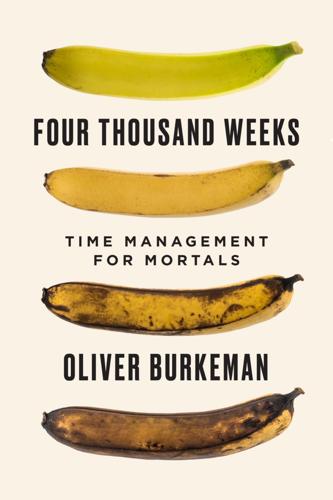
Four Thousand Weeks: Time Management for Mortals
by
Oliver Burkeman
Published 9 Aug 2021
It’s hard to imagine a crueler arrangement: not only are our four thousand weeks constantly running out, but the fewer of them we have left, the faster we seem to lose them. And if our relationship to our limited time has always been a difficult one, recent events have brought matters to a head. In 2020, in lockdown during the coronavirus pandemic, with our normal routines suspended, many people reported feeling that time was disintegrating completely, giving rise to the disorienting impression that their days were somehow simultaneously racing by and dragging on interminably. Time divided us, even more than it had before: for those with jobs and small children at home, there wasn’t enough of it; for those furloughed or unemployed, there was too much.
…
This is a perspective from which you can finally ask the most fundamental question of time management: What would it mean to spend the only time you ever get in a way that truly feels as though you are making it count? The Great Pause Sometimes this perceptual jolt affects a whole society at once. I wrote the first draft of this chapter under lockdown in New York City, during the coronavirus pandemic, when, amid the grief and anxiety, it became normal to hear people express a sort of bittersweet gratitude for what they were experiencing: that even though they were furloughed and losing sleep about the rent, it was a genuine joy to see more of their children, or to rediscover the pleasures of planting flowers or baking bread.
…
From this new perspective, it becomes possible to see that preparing nutritious meals for your children might matter as much as anything could ever matter, even if you won’t be winning any cooking awards; or that your novel’s worth writing if it moves or entertains a handful of your contemporaries, even though you know you’re no Tolstoy. Or that virtually any career might be a worthwhile way to spend a working life, if it makes things slightly better for those it serves. Furthermore, it means that if what we learn from the experience of the coronavirus pandemic is to become just a little more attuned to the needs of our neighbors, we’ll have learned something valuable as a result of the “Great Pause,” no matter how far off the root-and-branch transformation of society remains. Cosmic insignificance therapy is an invitation to face the truth about your irrelevance in the grand scheme of things.

Not Working: Where Have All the Good Jobs Gone?
by
David G. Blanchflower
Published 12 Apr 2021
Second, searches ticked up in the United States from the start of November. The COVID rise in unemployment, just like the change in well-being, is much larger in the Great Pandemic than during the Great Recession. In the UK, the Office of National Statistics asked respondents between September 16 and 20, 2020, how difficult it had been before the coronavirus pandemic for them to pay their usual household bills; 7 percent said “difficult” or “very difficult.” When asked since the pandemic, 16 percent said this. When asked if their household could afford to pay an unexpected but necessary expense of £850, or around $1,000, 35 percent said no.7 In the UK, the Trussell Trust, which runs more than one thousand food banks, reports that nearly one hundred thousand recipients needed help with food for the first time during the lockdown.
…
Dhaval, D., A. I. Friedson, D. McNichols, and J. J. Sabia. 2020. The Contagion Externality of a Superspreading Event: The Sturgis Motorcycle Rally and COVID-19. Bonn: IZA Institute of Labor Economics, Discussion Paper No. 13670. Trussell Trust. 2020. Lockdown, Lifelines, and the Long Haul Ahead: The Impact of Covid-19 on Food Banks in the Trussell Trust Network. https://www.trusselltrust.org/wp-content/uploads/sites/2/2020/09/the-impact-of-covid-19-on-food-banks-report.pdf. Notes 1. Jerome Powell, “New Economic Challenges and the Fed’s Monetary Policy Review,” presented at “Navigating the Decade Ahead: Implications for Monetary Policy,” an economic policy symposium sponsored by the Federal Reserve Bank of Kansas City, Jackson Hole, WY, August 27, 2020. 2.
…
In 2020, Dhaval, Friedson, McNichols, and Sabia used cell phone data to examine the impact of the Sturgis Motorcycle Rally, which brought around half a million participants to South Dakota. They used anonymized data from SafeGraph and found that counties that contributed the highest inflows of rally attendees experienced a 7.0 to 12.5 percent increase in COVID-19 cases relative to counties that did not contribute inflows. For the state of South Dakota as a whole they found the Sturgis event increased COVID-19 cases by over 35 percent. In response, the governor of South Dakota, Kristi Noem, who permitted the rally to go ahead without masks, tweeted: “This report isn’t science. It’s fiction. Under the guise of academic research, it’s nothing short of an attack on those who exercised their personal freedom to attend Sturgis.”
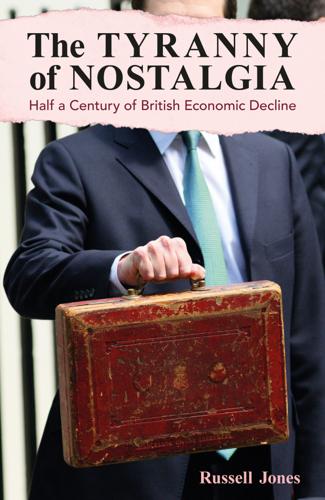
The Tyranny of Nostalgia: Half a Century of British Economic Decline
by
Russell Jones
Published 15 Jan 2023
A major implication of this history of the post-war period is that macro forecasting errors divide into a large number of comparatively small errors, made in the years when fluctuations were modest, and a few large errors, made following shocks that were both sizeable and novel. In this context, the only viable approach to understanding, and thence forecasting, the effects of a large shock such as the coronavirus pandemic is to take from past shocks anything that may be relevant – discarding all that which is not − and put together a composite analysis. And where there is no relevant evidence, one must fall back on a priori reasoning. Therefore, even if some quantitative assessment of the outlook is worthwhile, it should be the account of the forecast that matters most, rather than the numbers.
…
After 1990 successive downturns were caused, or exacerbated, by instability in asset prices and related balance sheet adjustment – in particular, a requirement to reduce excess indebtedness. This pattern extended from the collapse of the Japanese ‘bubble economy’ to the East Asian crisis, the ‘dot-com bust’ and, of course, the global financial crisis. Latterly, the Covid-19 pandemic has delivered another unfamiliar and very damaging kind of shock, again embodying both demand-side and supply-side effects. The only previous example to draw on over the modern era was the Spanish flu pandemic of 1918–21, but unfortunately this episode preceded the collection of national accounts and other important economic statistics.
…
The only previous example to draw on over the modern era was the Spanish flu pandemic of 1918–21, but unfortunately this episode preceded the collection of national accounts and other important economic statistics. Moreover, the effects of Spanish flu were obscured by the impact of demobilization and the return of economies to a peacetime footing at the end of World War I. It can therefore provide few insights, beyond the most general. And the impact of the Covid-19 pandemic was itself complicated both by the sharp rise in energy prices that went hand in hand with war in Ukraine and, in the UK’s case, by Brexit, both of which also represent significant negative supply shocks. Over recent years economists and policymakers have therefore essentially been flying blind.
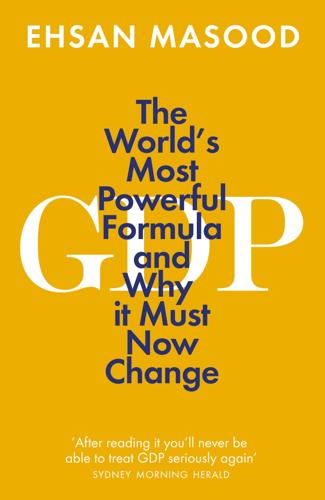
GDP: The World’s Most Powerful Formula and Why It Must Now Change
by
Ehsan Masood
Published 4 Mar 2021
Strong Seven: “As Vulgar as GDP” Eight: Exporting Shangri-La Nine: $33 Trillion Man Ten: Stern Lessons Eleven: “Nothing Is More Destructive of Democracy” Epilogue: Unfinished Revolution A Note on Symbols Acknowledgments Bibliography Index About the Author Copyright PREFACE TO THE SECOND EDITION The world of 2021 seems barely recognizable from 2016 when the first edition of this book (under its original title The Great Invention), was published in the United States. As I write this (at the start of 2021), the coronavirus pandemic has taken close to 2 million lives and infected nearly 100 million people, and continues to decimate economies. Most of the world, with the exception of East Asia, is in some form of lockdown. Hundreds of millions, especially the lowest-paid workers in service industries, have become jobless.
…
The industrialization of the past few centuries has pumped enough carbon dioxide into the atmosphere to put the world on track to dangerous global warming. At the same time, a sixth mass extinction3 is becoming more likely as humans continue to encroach into nature to build more homes, new railways, and entire new cities—simultaneously increasing the risks of zoonotic diseases such as COVID-19.4 All of this means that economic recovery needs to be greener if climate change, biodiversity loss and future pandemics are to be avoided. But the problem with measuring economic activity using GDP is that it rewards traditional, fossil fuel-powered economic development. In contrast, greener development takes longer and cannot be achieved in the time it takes for governments to sanction what are called ‘shovel-ready’ projects that can deliver faster growth.

Dangerous Ideas: A Brief History of Censorship in the West, From the Ancients to Fake News
by
Eric Berkowitz
Published 3 May 2021
While most of the comments were forgotten, they and some very tangible actions against his perceived media enemies have collectively “dangerously undermined truth” and chilled critical reporting, as a 2020 report by the Committee to Protect Journalists concludes.36 According to a lawsuit filed by PEN America, a nonprofit association of writers and media professionals, about one-third of its members avoided reporting on certain topics out of concern over potential retaliation, and more than half believed criticism of the administration would put them at risk.37 Disfavored reporters such as CNN’s Jim Acosta were barred from the White House; threats to revoke the broadcast licenses of TV networks were made for airing an ad that highlighted the deficiencies of Trump’s response to the coronavirus pandemic; actions were taken to raise postal rates to target Amazon, whose CEO, Jeff Bezos, is the majority shareholder of the Washington Post; and an antitrust action was filed to challenge a merger between AT&T and Time Warner, whose subsidiary is CNN. The full impact of such efforts will take time to gauge.
…
A 2018 Reuters investigation found that despite Facebook’s commitment to combat hate speech against the Rohingya minority in Myanmar, hundreds of such items remained, some of which called them dogs, maggots, or rapists, and suggested they be exterminated.66 When far-right American extremists used Facebook to exploit the coronavirus pandemic to promote a race war, Facebook was unable to prevent such pages from proliferating.67 This is not surprising, given that as of January 2020, Facebook’s third-party fact checkers were reviewing a paltry two hundred to three hundred articles in the US per month out of millions posted each day.68 Its other content moderators, who number in the thousands worldwide, are often poorly trained to enforce Facebook’s porous and opaque standards, which result in much hateful content remaining on the platform.
…
There is little chance the law will not be used to suppress dissent—not in a country Reporters Without Borders ranks 151st out of 180 countries in terms of press freedom. Human Rights Watch called the law a “disaster for online expression by ordinary Singaporeans, and a hammer blow against the independence of many online news portals.”90 The Egyptian law was again put to use during the early stages of the coronavirus pandemic, when the government arrested foreign and domestic journalists for spreading “false” rumors—that is, correct reports—about the virus’s spread. Egypt isn’t alone in its use of such laws. Turkish authorities arrested at least eight journalists for “spreading misinformation” about the virus, while a Cambodian teen was arrested for her fearful social media posts about the virus in her area, and a Thai man was threatened with five years in prison for complaining online about inadequate preventive measures at Bangkok’s airport.

Make Your Own Job: How the Entrepreneurial Work Ethic Exhausted America
by
Erik Baker
Published 13 Jan 2025
The sad fact, however, was that entrepreneurship was simply “not a feasible reality for a vast majority of people.”46 These Redditors are not the only disaffected workers who have come to see entrepreneurship as a way to escape from a toxic, oppressive mainstream work culture. The resignation boom, it turns out, was accompanied by a similarly unprecedented spike in applications for new businesses. “‘The Great Resignation’ is creating more entrepreneurs,” Yahoo’s news service trumpeted. NBC was even more emphatic: “The coronavirus pandemic has created a landscape in which entrepreneurs and startups can thrive and new innovations can break ground.” While cautioning that not every pandemic startup would succeed, Jax Kirtley of the Wharton School still deemed pandemic entrepreneurship to be “fantastic in a lot of ways.” Quitters were not simply fed up with work, Kirtley argued, but in many cases had chosen to “embrace this opportunity to do something different.”47 Such celebrations of Covid’s unexpected entrepreneurial side effects often failed to mention that much of the spike in new business applications could be attributed to an influx of workers into the gig economy, because full-time “independent contractors” are required to obtain a business license in many states.
…
Growth rates showed signs of revitalization for a brief period in the early 2000s on the back of a new bubble in housing, fueled by financial deregulation and a climate of historically low interest rates engineered by Alan Greenspan’s Federal Reserve. But that bubble burst, too, and in its aftermath came one of the slowest, most protracted recoveries in the history of the modern American economy. Nearly fifteen years after the 2007–2008 financial crisis, on the eve of the Covid-19 pandemic, the US economy was still growing at just over half the rate attained in the heady atmosphere at the end of the 1990s. Even more portentously, the civilian labor force participation rate—roughly, the percentage of the adult population employed or actively looking for work—remains significantly depressed relative to the period before the Great Recession, which in turn lagged well behind the high-water mark set at the peak of the New Economy.
…
At the same time, a renewed interest in feminism and its intellectual tradition in the 2010s, while part of the backdrop for the emergence of the girlboss in the first place, had the long-run effect of raising the profile of older currents of class-conscious feminism that helped to diminish the appeal to many young women of bossing as a form of “empowerment.”43 In short, the demise of the girlboss ideal was a consequence of its standard-bearers’ success in consolidating their position in the upper echelons of the mainstream world of work at a time when that establishment was becoming intensely unpopular—among Americans of all genders and races. As the Covid-19 pandemic wreaked its devastation in the early 2020s, it seemed for a moment that Americans were losing their will to work altogether. In the spring of 2021, US workers began to quit their jobs in droves. A whopping four million Americans resigned in July 2021, even as the official unemployment rate remained significantly elevated above pre-crisis levels.

Lonely Planet Belgium & Luxembourg
by
Lonely Planet
Expected to stay out of the limelight, Wilmès instead found herself grappling with the nation’s greatest crisis since WWII when the coronavirus pandemic claimed thousands of lives and the economy cratered – with GDP shrinking by 6.2% in 2020. Wilmès herself contracted the disease and spent nearly a week in intensive care. The political fighting finally came to an end in October 2020, when the 44-year-old Flemish Liberal Alexander De Croo became prime minister. The same day De Croo was sworn in, Belgium crossed the harrowing milestone of 10,000 COVID-19 deaths – then one of the highest per capita mortality rates in the world. The complicated arrangement that secured De Croo’s position is called the Vivaldi Coalition, named after Antoni Vivaldi and, more importantly, his composition the Four Seasons, which symbolises the four different viewpoints of coalition members: the socialists, liberals, greens and Christian democrats.
…
Belgium & Luxembourg Contents Plan Your Trip Welcome to Belgium & Luxembourg Belgium & Luxembourg’s Top Experiences Need to Know First Time Belgium & Luxembourg Month by Month Itineraries Family Travel Regions at a Glance On The Road Brussels Sights Tours Sleeping Eating Drinking & Nightlife Entertainment Shopping Information Getting There & Away Getting Around Bruges, Ghent & Northwest Belgium Bruges Damme Belgian Coast Knokke-Heist De Haan Bredene Zeebrugge & Lissewege Ostend (Oostende) Nieuwpoort Oostduinkerke De Panne Beer Country Veurne Diksmuide Poperinge Ypres (Ieper) Ypres Salient Kortrijk Oudenaarde Geraardsbergen Ghent Antwerp & Northeast Belgium Antwerp (Antwerpen) Around Antwerp Westmalle Turnhout Lier Mechelen Leuven Hageland Diest Hasselt Haspengouw Tienen Zoutleeuw Sint-Truiden Tongeren Wallonia Western Wallonia Tournai Pipaix Aubechies Ath Lessines Enghien Mons Binche Nivelles Waterloo Battlefield Louvain-la-Neuve Charleroi Thuin Aulne Botte de Hainaut Philippeville Mariembourg & Nismes Chimay The Ardennes Namur Crupet Dinant Han-sur-Lesse Rochefort St-Hubert Bouillon Orval Arlon Bastogne Achouffe La Roche-en-Ardenne Durbuy Huy Liège Verviers Spa Coo Stavelot The Eastern Cantons Luxembourg Luxembourg City Moselle Valley Schengen & Remerschen Müllerthal Region Larochette Echternach Beaufort Éislek Bourscheid Diekirch Vianden Esch-sur-Sûre Wiltz Clervaux UNDERSTAND Understand Belgium & Luxembourg History Belgian Beer Arts & Architecture The Belgian People Creative Cuisine SURVIVAL GUIDE Directory A-Z Accessible Travel Accommodation Activities Climate Customs Regulations Discount Cards Electricity Food Health Insurance Internet Access Legal Matters LGBTIQ+ Travellers Money Opening Hours Post Public Holidays Safe Travel Telephone Time Toilets Tourist Information Visas Work Transport Getting There & Away Air Land Sea getting AROUND Air Bicycle Boat Bus Car & Motorcycle Hitching & Ride Sharing Local Transport Train Language Behind the Scenes Our Writers COVID-19 We have re-checked every business in this book before publication to ensure that it is still open after the COVID-19 outbreak. However, the economic and social impacts of COVID-19 will continue to be felt long after the outbreak has been contained, and many businesses, services and events referenced in this guide may experience ongoing restrictions. Some businesses may be temporarily closed, have changed their opening hours and services, or require bookings; some unfortunately could have closed permanently.

The Great Demographic Reversal: Ageing Societies, Waning Inequality, and an Inflation Revival
by
Charles Goodhart
and
Manoj Pradhan
Published 8 Aug 2020
A combination of Trump-type policies, populism, barriers to migration and now the coronavirus pandemic has now defanged that threat to workers. The balance of bargaining power is now swinging back to workers, away from employers; current, more socialist, political trends are reinforcing that. Following the recovery, whenever that happens, wage trends will change. The likelihood is that wage demands will then match, or even perhaps exceed, current inflation, despite the inevitable pleas for moderation in the context of a ‘temporary blip’ in inflation. The coronavirus pandemic, and the supply shock that it has induced, will mark the dividing line between the deflationary forces of the last 30/40 years, and the resurgent inflation of the next two decades.
…
Our main thesis is that such demographic and globalisation factors were largely responsible for the deflationary pressures of the last three decades, but that such forces are now reversing, so that the world’s main economies will, once again, face inflationary pressures over the next three, or so, decades. The question, which we have been most frequently asked, is ‘Just when will the point of inflexion from deflation to inflation occur?’ When we were writing this book in 2019, we had to answer that we did not know to within five years, or so. That was, of course, before the coronavirus pandemic hit in early 2020; the occurrence of such a pandemic being a ‘known unknown’. The overall impact of the pandemic will be to accelerate the trends we have outlined in this book. China will become more inward-looking and less deflationary globally, and inflation itself will rise much earlier and faster than we had anticipated.
…
In practice, it has not been so much the medical implications, serious though they were, but rather the (necessary and correct) policy responses that has had the major, even if hopefully short-run, impact on our economies. Indeed, if one was a cold-hearted economist, whose sole aim was to maximise GDP, or even better GDP per head, then one’s advice on the best way to respond to the coronavirus pandemic would have been to do absolutely nothing, to ignore it entirely and let it take its course. It primarily affects the elderly; the average age of death so far in the UK has been about 80; and even then the younger deaths are mainly amongst those with other severe medical problems, co-morbidity in the jargon.

The Politics Industry: How Political Innovation Can Break Partisan Gridlock and Save Our Democracy
by
Katherine M. Gehl
and
Michael E. Porter
Published 14 Sep 2020
The threat of the next binary election continues to outweigh at times the pressing concerns of the day when it comes to proactive lawmaking in Congress. Finally, as with the Cold War, 9/11, and the Great Recession, there will be American children who remember where they were when the news of the coronavirus pandemic first broke and what happened to their families during the nation’s response to it. The pandemic and its aftermath will define generations. But it could also redefine our politics. When a new normal comes, there will be a moment; a window for big, sweeping change. For the good of all Americans, and to honor those we will have lost and the sacrifices made by so many, we pray that enough of us will put country over party and invest in the political innovation that can revivify our politics with healthy competition—and make sure we don’t get caught unprepared again.
…
We’re excited about the possibilities. This book arrives not a moment too soon. Please engage—we owe it to our extraordinary country to do so. Authors’ Note Pandemic 2020 As publishing deadlines pass for The Politics Industry, the world is racing to beat back a nationless, faceless, dangerous adversary: the coronavirus (COVID-19) pandemic. Currently, one in four Americans have been ordered to “shelter in place.”1 Metropolitan hospitals are becoming overwhelmed, medical supplies are running short, and getting infected appears to be easier than getting tested. Many predict a trailing economic depression, with impacts that could be more painful for our country than those of the virus itself.2 It is surreal.

The Aristocracy of Talent: How Meritocracy Made the Modern World
by
Adrian Wooldridge
Published 2 Jun 2021
A Pew poll in 2019, for example, found that 73 per cent of Americans, including 62 per cent of African-Americans, say that colleges should refrain from taking race or ethnicity into account when making decisions about student admissions.5 Meritocracy straddles the East–West divide. In his address to the National Congress of the Communist Party of China in 2017 President Xi urged the Party to select officials ‘on the basis of merit regardless of social background’.6 His acolytes never miss an opportunity to point out that China’s relative success in fighting the Coronavirus pandemic compared with the West is proof of its superior ability to choose its leaders. Singapore pays top civil servants more than $1 million a year in salary and performance bonuses. South Koreans worship the American Ivy League even more fervently than Americans do themselves. And the divide between the public and private sectors too: successful civil services the world over have introduced elite streams and merit-based promotion; successful firms, such as McKinsey and Goldman Sachs, sell themselves on the basis of their brain power; the tech industry regards itself as meritocracy incarnate.
…
They have also spent lavishly on hiring the best teachers and providing the best facilities: schools such as Eton and Marlborough boast Olympic-sized swimming pools, brand-new laboratories, professional-quality theatres, Mandarin teachers and learning-disabilities specialists. During the pandemic several public schools purchased £35,000 Covid-19 testing machines so that they could continue with elite-preparation as normal. They pour some of these additional resources into gaming the system. They are more successful than state schools in gaining additional time in exams for their pupils to compensate for dyslexia and other learning difficulties.
…
In Britain, Michael Gove unleashed a tide of educated fury when he said, on 21 June 2016, that ‘Britons have had enough of experts.’ He later led government criticism of civil servants and leading lawyers on the grounds that they were all members of a London-based elite who – whatever their brainpower and qualifications – viewed the world through the same metropolitan filter. THE FUTURE OF POPULISM The Covid-19 crisis destroyed Trump’s chances of re-election not just because it slowed the previously roaring US economy but because it highlighted his incompetence. Trump ignored the advice of medical experts and eventually sacked his chief medical adviser, Anthony Fauci. He sidelined global institutions and withdrew America from the World Health Organization.
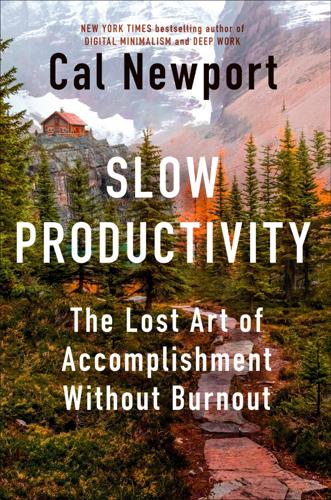
Slow Productivity: The Lost Art of Accomplishment Without Burnout
by
Cal Newport
Published 5 Mar 2024
It couldn’t have existed, however, without McPhee’s willingness to put everything else on hold, and just lie on his back, gazing upward toward the sky, thinking hard about how to create something wonderful. * * * — I came across this story of John McPhee’s unhurried approach during the early days of the coronavirus pandemic, which was, to put it mildly, a complicated time for knowledge workers. As that anxious spring unfolded, a long-simmering unease with the demands of productivity among those who toil in offices and at computer screens for a living began to boil over under the strain of pandemic-related disruptions.
…
Steinbeck told his literary agent, Elizabeth Otis, that he would escape this waterfront paradise to instead write on his fishing boat, balancing a notebook on a portable desk. I originally told these stories of eccentric writing spaces in an essay I published in the spring of 2021. At the time, the coronavirus pandemic was shifting beyond its acute emergency phase, and business communities were starting to wonder if remote work would become something more than just a short-term response to a health crisis. I meant my essay to serve as a warning relevant to this latter possibility. Professional writers, in some sense, were the original remote workers, and what you find when you study their habits, I noted, is that they often go way out of their way to find somewhere—anywhere—to work that’s not inside their own homes.
…
We’ve tried the fast approach for at least the past seventy years. It isn’t working. The time has come to try something slower. ACKNOWLEDGMENTS I cannot pinpoint the exact moment at which the phrase slow productivity entered my lexicon. The philosophy seems to have emerged somewhat spontaneously during the first year of the coronavirus pandemic, a period in which I began an intense and immensely fruitful dialogue about work, productivity, and meaning with my audience. I want to thank them first and foremost for their essential role in pushing me and my thinking forward. Once these ideas were formed, it was then my literary agent, Laurie Abkemeier, who helped me organize them into a coherent book project.

Lonely Planet Peru
by
Lonely Planet
He avoided impeachment due to a lack of votes – despite later evidence which showed his supporters were buying votes to save his presidency. He resigned prior to a second scheduled impeachment vote and was replaced by Vice President Martin Vizcarra in 2018. Scandals continued into 2020 compounded by the emergence of the coronavirus pandemic that hit Peru early and hard. With GDP falling 30% and the country logging a higher death rate per million than any other South American nation except Brazil, problems quickly mounted. President Vizcarra was impeached twice in 2020 on charges of ‘influence peddling’ and ‘moral incapacity’.
…
c 850 The Chimú begin development of Chan Chan, outside present-day Trujillo, a sprawling adobe urban center. 1100–1200 The Incas emerge as a presence in Cuzco; according to legend, they were led to the area by a divine figure known as Manco Cápac and his sister Mama Ocllo. 1438–71 The reign of Inca Yupanqui – also known as Pachacutec – represents a period of aggressive empire-building for the Incas; during this time, Machu Picchu and Saqsaywamán are built. 1492 Funded by the Spanish Crown, Genoa-born Christopher Columbus arrives in the Americas. 1493 Inca Huayna Cápac begins his reign, pushing the empire north to Colombia; his untimely death in 1525 – probably from smallpox – leaves the kingdom fatally divided. 1532 Atahualpa wins a protracted struggle for control over Inca territories; at virtually the same time, the Spanish land in Peru – in less than a year, Atahualpa is dead, executed by Francisco Pizarro. 1572 Túpac Amaru, the monarch who had established an Inca state independent of the Spanish at Vilcabamba, is captured and beheaded by colonial authorities. 1609 Mestizo writer and thinker El Inca Garcilaso de la Vega publishes Los comentarios reales (The Royal Commentaries), a celebrated narrative of Inca life before and after the conquest. 1611 Diego Quispe Tito, one of the most renowned painters of the so-called ‘Cuzco School’ movement of religious painting, is born in the southern highlands. 1613 Guamán Poma de Ayala pens a 1200-page missive to the Spanish king detailing poor treatment of indigenous people; it lies forgotten until 1908, when it’s discovered in a Danish archive. 1671 Santa Rosa de Lima, the patron saint of Peru and the Americas, is canonized by Pope Clement X. 1717 The Spanish Crown establishes the Viceroyalty of New Granada, covering modern-day Ecuador, Colombia and Panama – reducing the Peruvian viceroyalty’s power and reach. 1781 Inca noble Túpac Amaru II (born José Gabriel Condorcanqui) is executed by the Spanish in Cuzco after leading an unsuccessful indigenous rebellion. 1810 Painter Pancho Fierro, a watercolorist known for recording daily life, is born in Lima; his paintings helped define a uniquely Peruvian identity. 1821 José de San Martín declares Peru independent, but true sovereignty doesn’t come until Simón Bolívar’s forces vanquish the Spanish in battles at Junín and Ayacucho three years later. 1826 The last of the Spanish military forces depart from Callao, after which the country descends into a period of anarchy. 1845 Ramón Castilla begins the first of four nonconsecutive presidential terms, bringing some degree of stability to Peru. 1872 Scholar Ricardo Palma publishes the first of a series of books – known as the Tradiciones peruanas – that chronicle a distinctly criollo (Creole) folklore. 1879–83 Chile wages war against Peru and Bolivia over nitrate-rich lands in the Atacama Desert; Peru loses the conflict – in addition to its southernmost region of Tarapacá. 1892 Poet César Vallejo is born in the highlands; he lives for only 46 years, but his spare phrasing and socially conscious themes make him one of the continent’s transformative literary figures. 1895 Nicolás de Piérola is elected president, beginning a period of relative stability buoyed by a booming world economy. 1911 US historian Hiram Bingham arrives at the ruins of Machu Picchu; his ‘discovery’ of the ancient city is chronicled in National Geographic. 1924 Northern political leader Víctor Raúl Haya de la Torre founds APRA, a populist, anti-imperialist political party that is immediately declared illegal. 1928 Journalist and thinker José Carlos Mariátegui publishes the Seven Interpretive Essays on Peruvian Reality, which heavily critiques the feudal nature of his country’s society. 1932 More than 1000 APRA party followers are executed by the military at the ancient ruins of Chan Chan, following an uprising in Trujillo. 1948 General Manuel Odría assumes power for eight years, encouraging foreign investment and cracking down on the APRA movement. 1962 Mario Vargas Llosa publishes La ciudad y los perros (The Time of the Hero), an experimental novel set at a military academy in Lima. 1968 General Juan Velasco Alvarado takes power in a coup d’état; in his seven years in office, he promulgates a populist agenda that involves ‘Peruvianization’ of all industry. 1970 A 7.7-magnitude earthquake in northern Peru kills almost 80,000 people, and leaves 140,000 injured and another 500,000 homeless. 1980 Guerrilla group Sendero Luminoso (Shining Path) takes its first violent action – burning ballot boxes – in the Ayacucho region; the incident draws little notice from the press. 1980 Fernando Belaúnde Terry becomes the first democratically elected president after a 12-year military dictatorship, but his term is plagued by economic instability and violence in the Andes. 1983 In one of the more high-profile massacres of the internal conflict, eight journalists are murdered in the Andean town of Uchuraccay. 1985 Alan García becomes president, but his term is marked by hyperinflation and increased attacks by terrorist groups; he flees the country in 1992, plagued by allegations of embezzlement. 1987 Archaeologists working near Lambayeque uncover a rare, undisturbed tomb of a Moche warrior-priest known as El Señor de Sipán. 1990 Alberto Fujimori is elected president; his authoritarian rule leads to improvements in the economy, but charges of corruption plague his administration. 1992 Sendero Luminoso detonates truck bombs in Miraflores, Lima, killing 25 and wounding scores more; following this act, public opinion turns decisively against the guerrillas. 1992 Abimael Guzmán, the founder of Sendero Luminoso, is captured in Lima after he is found hiding out above a dance studio in the well-to-do neighborhood of Surco. 1994 Chef Gastón Acurio opens Astrid y Gastón in the Lima neighborhood of Miraflores; the restaurant helps catapult Peruvian cuisine to international levels. 1996 Guerrillas from the Movimiento Revolucionario Túpac Amaru (MRTA) storm the Japanese ambassador’s residence in Lima and hold 72 hostages for four months. 2000 Fujimori flees to Japan after videos surface showing his intelligence chief bribing officials and the media; the Peruvian legislature votes him out of office. 2001 Alejandro Toledo becomes the first indigenous person to govern an Andean country. 2003 The country’s Truth and Reconciliation Commission releases its final report on Peru’s internal conflict; estimates of the dead reach 70,000. 2005 Construction of the Interoceánica (Transoceanic Hwy), which opens an overland trade route between Peru and Brazil, begins in the southern Amazon Basin. 2009 Fujimori is convicted of embezzlement; this is in addition to prior convictions for authorizing an illegal search and ordering military death squads to carry out extrajudicial killings. 2011 Populist former army officer Ollanta Humala assumes the presidency after winning a tight run-off election against Fujimori’s daughter Keiko. 2011 A state of emergency is declared in four provinces following massive protests against mining projects, due to environmental concerns. 2016 Economist Pedro Pablo Kuczynski wins the presidential race against Keiko Fujimori. 2018 Facing scandals and impeachment, President Kuczynski resigns from office and is succeeded by Vice President Martín Vizcarra. 2020 Political crises, violent protests and the coronavirus pandemic see Peru getting through three presidents in less than two weeks. Peru’s Cuisine In Peru, fusion is a natural part of everyday cooking. Over the past 400 years, Andean stews have mingled with Asian stir-fries, and Spanish rice dishes have absorbed Amazonian flavors, to produce the country’s famed criollo cooking.
…
Peru Contents Plan Your Trip Welcome to Peru Peru’s Top Experiences Need to Know First Time Peru What’s New Month by Month Itineraries Peru Outdoors Trekking the Inca Trail Family Travel Regions at a Glance On The Road LIMA Sights Activities Courses Tours Festivals & Events Sleeping Eating Drinking & Nightlife Entertainment Shopping Around Lima Pachacamac Southern Beaches Carretera Central SOUTH COAST Cerro Azul Lunahuaná Chincha Pisco Paracas (El Chaco) Ica Huacachina Nazca & Around Chala Mollendo Moquegua Ilo Tacna AREQUIPA & CANYON COUNTRY Arequipa Canyon Country Reserva Nacional Salinas y Aguada Blanca Cañón del Colca El Valle de los Volcanes Cañón del Cotahuasi LAKE TITICACA Juliaca Lampa Pucará Puno Around Puno Lake Titicaca’s Islands Capachica Peninsula & Around South-Shore Towns Bolivian Shore CUZCO & THE SACRED VALLEY Cuzco Around Cuzco Saqsaywamán Q’enqo Pukapukara Tambomachay The Sacred Valley Pisac Pisac to Urubamba Urubamba Salineras de Maras Chinchero Moray & Maras Ollantaytambo Machu Picchu & the Inca Trail Aguas Calientes Machu Picchu The Inca Trail Cuzco to Puno Andahuaylillas Raqchi Cuzco to the Jungle Cuzco to Ivochote Cuzco to Puerto Maldonado Cuzco to the Central Highlands Cuzco to Abancay Cachora Choquequirao Abancay CENTRAL HIGHLANDS The North Canta & Obrajillo Cerro de Pasco Huánuco La Unión Tingo María Lima to Tarma San Pedro de Casta & Marcahuasi Tarma Río Mantaro Valley Jauja Concepción Huancayo The Southern Valleys Huancavelica Ayacucho Andahuaylas NORTH COAST Barranca Casma Chimbote Trujillo Around Trujillo Huanchaco Puerto Chicama (Puerto Malabrigo) Pacasmayo Chiclayo Around Chiclayo Piura Playa Lobitos Cabo Blanco Máncora Punta Sal Zorritos Tumbes Puerto Pizarro HUARAZ & THE CORDILLERAS Huaraz The Cordilleras Cordillera Blanca Cordillera Huayhuash Cordillera Negra North of Huaraz Monterrey Carhuaz Yungay Caraz South of Huaraz Chiquián Llamac Callejón de Conchucos Chavín de Huántar Huari Chacas NORTHERN HIGHLANDS Cajamarca Around Cajamarca Celendín Chachapoyas Yalape Gocta Gran Vilaya Karajía La Jalca (Jalca Grande) Revash Kuélap Leimebamba Pedro Ruíz Jaén Moyobamba Tarapoto AMAZON BASIN Southern Amazon Puerto Maldonado Around Puerto Maldonado Río Tambopata Río Madre de Dios Lago Sandoval Lago Valencia Río Heath Manu Area Cuzco to Manu Parque Nacional Manu Central Amazon San Ramón & La Merced Oxapampa Pucallpa Yarinacocha Northern Amazon Yurimaguas Lagunas Iquitos Around Iquitos UNDERSTAND History Peru’s Cuisine Ancient Peru Indigenous Peru The Natural World SURVIVAL GUIDE Directory A–Z Accessible Travel Accommodations Customs Regulations Electricity Embassies & Consulates Insurance Internet Access Language Courses Legal Matters LGBT+ Travelers Maps Money Post Public Holidays Safe Travel Telephone Time Toilets Tourist Information Visas Volunteering Women Travelers Work Transportation GETTING THERE & AWAY Entering the Country Air Land & River Tours GETTING AROUND Air Bicycle Boat Bus Car & Motorcycle Hitchhiking Local Transportation Train Health Language Behind the Scenes Our Writers COVID-19 We have re-checked every business in this book before publication to ensure that it is still open after the COVID-19 outbreak. However, the economic and social impacts of COVID-19 will continue to be felt long after the outbreak has been contained, and many businesses, services and events referenced in this guide may experience ongoing restrictions. Some businesses may be temporarily closed, have changed their opening hours and services, or require bookings; some unfortunately could have closed permanently.

Capitalism and Its Critics: A History: From the Industrial Revolution to AI
by
John Cassidy
Published 12 May 2025
Although Keynesian policies are out of fashion today, they invariably reappear whenever capitalism is under serious threat. In 2020, as many countries shuttered large parts of their economies to control the coronavirus pandemic, global GDP fell by 2.7 percent, according to the IMF. This was first worldwide recession since 2009 and the deepest since World War II. But in 2021, after many Western governments introduced large stimulus packages and scientists discovered vaccines for Covid-19, global GDP rebounded strongly, rising 6.5 percent. In 2022 and 2023, it grew by 3.5 and 3.2 percent, respectively, confirming the recovery from the pandemic.15 For the second time in a decade and a half, governments had stepped in to save global capitalism.
…
If you looked at the volume of trade in goods relative to the size of the world economy as a whole, rather than in dollar terms, it peaked in 2008, at about 50 percent, then fell back to about 42 percent in 2020.46 According to the OECD, the level of foreign direct investment—cross-border purchases of ownership stakes in companies or projects—relative to world GDP was lower in 2023 than it was in 2013.47 During the same period, rising threats of protectionism and the coronavirus pandemic’s exposure of the fragility of international supply chains had led to a wave of “onshoring,” in which multinational companies moved production or input sourcing closer to home. According to Barclays investment bank, the number of companies mentioning onshoring in their communications quadrupled between 2020 and 2022.48 The political pressures that were driving this turnaround showed no signs of relenting.
…
In July 2023, dozens of them, including Jeb Bush, Karl Rove, and representatives of the Mont Pelerin Society, the American Enterprise Institute, and the Capitalist League, issued a statement of principles proclaiming, “The free enterprise system is the foundation of prosperity.”59 During the 1930s American conservatives had issued similar arguments when they opposed FDR’s New Deal. In the early 1940s, Hayek issued his famous warning that the shift toward collectivism could lead to serfdom. More recently, some conservatives had argued that the government response to the coronavirus pandemic, which included large stimulus programs, had been overweening. It wasn’t perfect, but it had succeeded in heading off a lengthy economic slump, and, in some of its particulars, it was highly illuminating. The American Rescue Act converted an existing program of tax credits for low-paid workers with children into a monthly universal cash benefit of $300 per child.

Cogs and Monsters: What Economics Is, and What It Should Be
by
Diane Coyle
Published 11 Oct 2021
Although building on a number of public lectures given between 2012 and 2020, the material has been updated and set in a narrative arc illustrating the significant changes in economics that have occurred during the past decade. The book is aimed at general readers, not just economists. This is not only to focus attention on real challenges for economics rather than the straw man critiques, but also because the public appetite to understand the economy is intense. This is an extraordinary time in world history. The coronavirus pandemic means that people in every country have been experiencing an unprecedented economic shock, more sudden and severe than the Great Depression. It has galvanised the economics community, prompting a vast amount of new research and policy analysis, and stimulating many economists to engage with epidemiology and the biomedical sciences (Coyle 2020a).
…
Current events make this a pressing question. Is the disruptive technological transformation we are all living through helping or hindering human progress, taking into account both the tremendous convenience of online services and the evident dark side of social media? What might ‘building back better’, a common slogan, after the coronavirus pandemic mean? The economic consequences of the pandemic and the subsequent lockdowns exposed the fractures and pathologies of society—the inequalities, the poor working conditions in so many jobs, underfunded public services, institutional weaknesses in responding to the emergency, so many people’s lack of access to parks for the balm of green space or to unpolluted air to breathe.
…
Political economy is reawakening: an analytically robust, empirically grounded, historically aware, outward-looking and engaged discipline, making a positive contribution to society—as all social sciences should. This is what so many of us wanted economics to be when we chose to study it. There are some promising signs, in addition to the change that has already taken place within economics. The profession’s response to the coronavirus pandemic has been extraordinarily fast and constructive. This includes in the UK the creation of the Economics Observatory, ECO, which synthesises all the research evidence (and gaps) relating to questions policy-makers and the public ask about the pandemic. From first discussions in April, it was launched on 1 June and had posted 100 articles summarising a vast amount of old research and new Covid19-related research by mid-August.
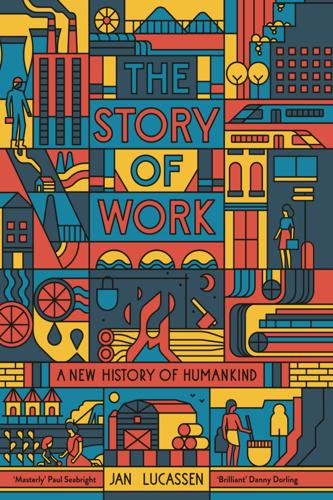
The Story of Work: A New History of Humankind
by
Jan Lucassen
Published 26 Jul 2021
Nevertheless, during the last two centuries, we may discern a great wave in the North Atlantic and its offshoots, and in the last half-century also increasingly beyond – from regulation and corporation (households, estates, guilds and so on) in the ancien régime, to deregulation and decorporation in the first half of the nineteenth century, to reregulation and recorporation in the century thereafter and, finally, to another period of deregulation and decorporation since the end of the twentieth century.109 Prepared by the banking crisis of 2008, the pendulum may now be swinging in the opposite direction, influenced by the coronavirus pandemic, although it is unclear for how long. Incidentally, the development of decorporation warrants an observation with respect to households, where we do not find any recorporation from the late nineteenth century. As a nuclear work unit, the household eventually and definitively lost power.
…
The stagnation of remuneration and job security in especially the rich countries in recent decades (summarized in concepts such as flexibilization and precarization) can also be counted as types of reactions.2 Or, in that context, the recent massive Keynesian state aid to companies and working people following the outbreak of the coronavirus pandemic – something that prior to this seemed absolutely unthinkable. Secondly – and previous examples already point in this direction – the nature and vehemence of these reactions are not easy to predict; at least, not as easy as, say, a strike resulting from a massive cut in wages. Take, for example, the contradiction between the emergence of the workers’ movement, which peaked one hundred years ago, and the current lack of successful collective actions to improve working conditions.
…
This is in contrast to ‘the trust-starved climate of modern business [which] spells trouble and has recently made many people deeply unhappy by wiping out their savings’.37 One of the causes of this lack of trust are the long lines between management and the people who actually do the work, examples of which we have already seen. In this regard, whether that person is a wage worker or a lone freelancer no longer matters. The large experimental medical and social science laboratory that we have all been living in since the outbreak of the coronavirus pandemic has meant that many more people, including those with better labour contracts, have experienced this deeply. Grateful for the opportunity that digital resources provide to work from home, and by turning households into workplaces again after more than a century (think of the abuses of the ‘sweating industry’), we are now becoming ‘zoombies’, according to the organizational behaviourist Gianpiero Petriglieri: ‘any professional used to working face to face is deprived of subtle cues that they have learnt to process implicitly.
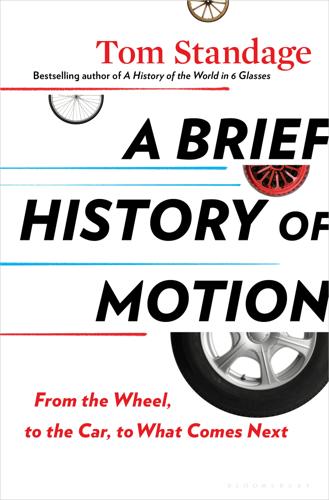
A Brief History of Motion: From the Wheel, to the Car, to What Comes Next
by
Tom Standage
Published 16 Aug 2021
But then population growth rates in America’s suburbs started outpacing those in cities again. “The ‘back to the city’ trend seen at the beginning of the decade has reversed,” noted William Frey of the Brookings Institution in 2019. In retrospect the global financial crisis of 2007–9 may simply have delayed some young Americans’ entry into the housing market. The coronavirus pandemic has also increased the appeal of suburbs relative to city centers. One of the chief drawbacks of suburbs—the need to commute—goes away if you can work from home, which about half of American workers can. And staying at home is more pleasant if you have more space. A shift toward working remotely, some if not all of the time, is likely to be an enduring legacy of the pandemic.
…
Even some people within the industry now acknowledge that the world is now at, or has passed, “peak car”—the point at which car ownership and use level off and start to decline. Car production may never exceed its level in 2017. “It could well be that we passed the peak in global automotive production,” said Volkmar Denner, chief executive of Robert Bosch, the world’s largest maker of car parts, in January 2020. And that was before the coronavirus pandemic whacked car sales. China has been the driver of car sales in the early twenty-first century, with the number of vehicles sold rising from 5 million in 2004 to 29 million in 2017. But sales have since slowed, spurred in part by a switch to ride hailing, which is an enormous industry in China.
…
Travel-planning apps also make public transport a more attractive option, by showing when buses, trains, or trams will arrive, and how to combine them to complete a journey. But the arrival of those alternatives seems merely to have accelerated what was, in Western countries at least, an existing trend that had been going on for some years. The coronavirus pandemic seems likely, on balance, to accelerate it further. Fear of contagion has discouraged use of public transport and prompted some people to commute by car instead. But this seems unlikely to herald a global boom in car sales. Evidence from Asia suggests that the risk of transmission on public transport can be managed with appropriate use of masks, thermal scanners, and staggering of journeys to reduce crowding.
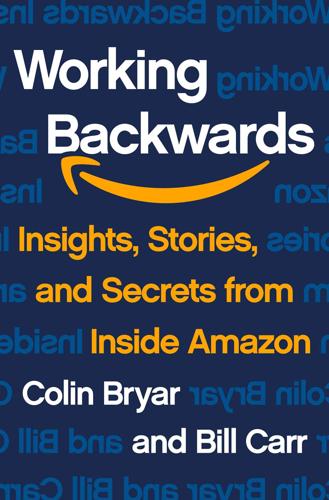
Working Backwards: Insights, Stories, and Secrets From Inside Amazon
by
Colin Bryar
and
Bill Carr
Published 9 Feb 2021
Classification: LCC HF5548.32 .B795 2021 | DDC 381/.14206573—dc23 LC record available at https://lccn.loc.gov/2020037477 eISBN 9781250267603 Our ebooks may be purchased in bulk for promotional, educational, or business use. Please contact the Macmillan Corporate and Premium Sales Department at 1-800-221-7945, extension 5442, or by email at MacmillanSpecialMarkets@macmillan.com. First Edition: 2021 * In his shareholder letter of April 16, 2020, shortly after the outbreak of the coronavirus pandemic, Jeff Bezos did address Amazon’s impact on multiple fronts. He described the company’s efforts to answer the increased demand on Amazon’s services by people in lockdown. He described safety measures at fulfillment centers, an accelerated Amazon program to ramp up testing, and the partnership of Amazon Web Services with the WHO and other health organizations.
…
Unless you have a regular process to independently validate the metric, assume that over time something will cause it to drift and skew the numbers. If the metric is important, find out a way to do a separate measurement or gather customer anecdotes and see if the information trues up with the metric you’re looking at. So, a recent example would be testing for COVID-19 by region. It is not enough to look at the number of positive tests in your region as compared to another region with a population of a similar size. You must also look at the number of tests per capita performed in each region. Since both the number of positive tests and the number of tests per capita in each location will keep changing, you will need to keep updating your audit of the measurements.* Analyze This stage has been given many different labels by different teams—reducing variance, making the process predictable, getting the process under control, to name a few.

Cathedrals of Steam: How London’s Great Stations Were Built – and How They Transformed the City
by
Christian Wolmar
Published 5 Nov 2020
Hardback ISBN: 978-1-78649-920-2 E-book ISBN: 978-1-78649-921-9 Paperback ISBN: 978-1-78649-922-6 Map artwork by Jeff Edwards Endpaper image: Detail from The Railway Station by William Powell Frith, 1862. (Photo 12/Alamy Stock Photo) Printed in Great Britain Atlantic Books An imprint of Atlantic Books Ltd Ormond House 26–27 Boswell Street London WC1N 3JZ www.atlantic-books.co.uk Dedicated to my wife, Deborah Maby, with whom I was in lockdown during the coronavirus pandemic for nearly the whole period of writing this book, and who put up with me dodging the housework. Also to Sir John Betjeman, whose writing I sadly cannot match, but whose enthusiasm I can. CONTENTS List of Illustrations Maps Acknowledgements Introduction 1. Starting slowly 2.
…
Instead, by and large – with the odd exception – London’s terminuses have been greatly enhanced, even much unloved London Bridge, by refurbishments and additions, most notably the new side entrance to King’s Cross. This has been a happy book to write, a positive story for these hard times and one that John Betjeman, who features strongly in the last chapter, would greatly appreciate. The prospects for the future have only been darkened by the coronavirus pandemic sweeping through the country as I write. The effect on the railways has been devastating, with the government and the railway companies urging people not to use the railways, which until then had enjoyed more than two decades of almost uninterrupted growth, reaching record passenger numbers.
…
APPENDIX I Timeline for the opening of London’s terminus stations: London Bridge 1836 Euston 1837 Fenchurch Street 1840 Waterloo 1848 King’s Cross 1852 Paddington 1854 Victoria 1860 Charing Cross 1864 Cannon Street 1866 St Pancras 1868 Liverpool Street 1874 Marylebone 1899 APPENDIX II Passenger numbers in the year to 31 March 2019 at the London terminuses (before the coronavirus pandemic): (millions) Waterloo 94 Victoria 75 Liverpool Street 69 London Bridge 61 Euston 46 Paddington 38 St Pancras 36 King’s Cross 35 Charing Cross 30 Cannon Street 21 Fenchurch Street 19 Marylebone 16 Source: Office of Road and Rail SELECT BIBLIOGRAPHY THIS IS A highly selective bibliography focusing on the London terminus stations rather than on the capital’s railway system generally, on which there is a vast bibliography.
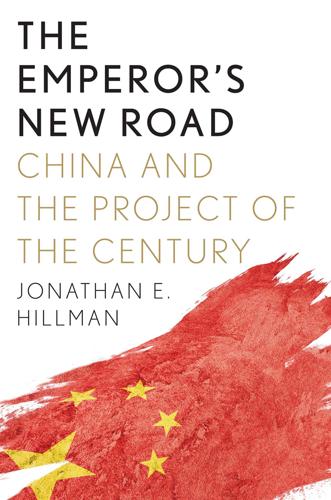
The Emperor's New Road: How China's New Silk Road Is Remaking the World
by
Jonathan Hillman
Published 28 Sep 2020
The question is whether the BRI will add to China’s power or detract from it. That hinges on China having the discipline to choose the right projects and walk away from the wrong ones. In the BRI’s first six years, its mission has not merely creeped but cascaded. Mistakes were surfacing even before the coronavirus pandemic paralyzed the global economy in 2020, exacerbating the BRI’s preexisting conditions and revealing how the very connections it aims to strengthen carry both promise and peril. As the following chapters show, the BRI is an imperial project in the rewards that China could reap as well as in the risks it faces.
…
If the BRI was magically paused and no more projects were announced, its current footprint would still take years to unfold. Ultimately, China’s economy will determine how long the BRI continues and in what form. China’s foreign reserves have dropped substantially since the BRI was launched, and it faces rising costs and shrinking revenues at home. Even before the coronavirus pandemic, there were indications of a pullback on BRI-related projects, suggesting that project announcements could be slimmed down in the coming years. That is bad news for China’s massive state-owned firms, but scarcity may also make oversight easier and encourage Beijing to increase the quality of its projects.
…
Early mistakes along the BRI occurred in a relatively forgiving global economy, and as Warren Buffet is fond of saying, “you only find out who is swimming naked when the tide goes out.”33 The risks are probably greater than Chinese officials appreciate. Most infrastructure booms have gone bust. The coronavirus pandemic is laying bare the BRI’s flaws, even as it creates new needs that China could exploit. Developing and emerging economies that borrowed heavily are being pushed beyond the brink. The same instinct for secrecy that hides the terms of China’s deals along the BRI concealed the outbreak. Most troubling for Xi’s vision, China shared the virus with the world through the very connections the BRI aims to strengthen.
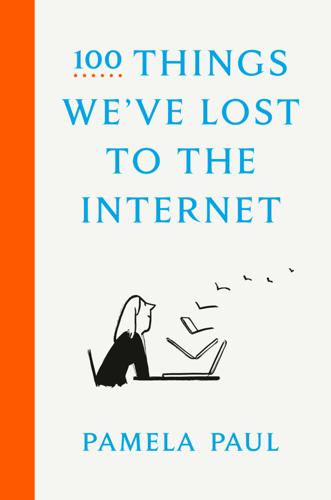
100 Things We've Lost to the Internet
by
Pamela Paul
Published 14 Oct 2021
We know too well the Internet’s trickle-down effects on our daily existence, from the screen we tap rather than the button we press when we wake in the morning; from what we do upon rising from bed to what we worry about as we drift off at night; from the particulars of our commute and what happens once we get to work and how we gather as a family when we return home. The ways in which we negotiate the school day and the summer vacation. How we see ourselves and treat one another; how we grow up and how we grow old. All this we know. Less remarked upon is what we used to do instead. I started writing this book well before the coronavirus pandemic hit, already feeling the ways the Internet was navigating where my brain wandered, occasionally startled and at other times lulled by what didn’t always feel like a choice, yet unaware how much deeper the quarantine would plunge me—like everyone else—into a world that was “online only.” And thank goodness the Internet was there!
…
You can sync and seamlessly integrate personal and professional agendas. Everyone knows where you are and where you will be, when you’re available and when you’re not. In other words, your personal agenda is no longer strictly personal. I, for one, would rather live a life of a thousand missed appointments. Only during the coronavirus pandemic did I find myself sending Google invites of necessity, attending prearranged Zooms. All was nonetheless double entered into my companion Levenger. My new one. Of course I went and bought another one—online—right away. Few retail shops sell such items anymore. In 2020, the mega-chain Papyrus went bankrupt.
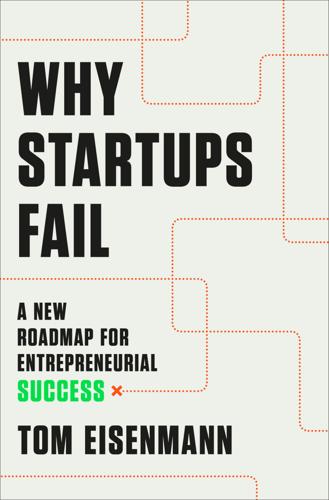
Why Startups Fail: A New Roadmap for Entrepreneurial Success
by
Tom Eisenmann
Published 29 Mar 2021
Measuring Performance My measure of performance was the change in the value of equity raised in a startup’s first major funding round: Did the value of this equity increase, stay roughly the same, or decrease—at the extreme, going to zero? Specifically, the founder/CEOs of startups still operating were asked, “As of December 31, 2019, before news of the coronavirus pandemic became widespread, how much would someone have paid for your startup’s first round equity/convertible notes?” The multiple-choice options were 1) >150 percent of the amount originally invested; 2) 50 percent to 150 percent; or 3) <50 percent. Respondents were also told, “We know that first round equity and convertible notes cannot normally be sold—but imagine that they could.
…
When a venture fails, our first instinct is generally to try to figure out what mistakes were made and who made them. But failures can usually be attributed to some combination of misfortunes that were outside the control of responsible parties and mistakes made by those parties. Misfortune: Sometimes, a startup’s demise is due mostly to misfortunes, rather than mistakes. When Covid-19 started paralyzing the U.S. economy, thousands of otherwise healthy new ventures couldn’t raise funds and saw sales dry up; the same thing happened during the Great Recession of 2008. Other misfortunes are less universal, impacting only a single industry sector. During the 2000s, for example, clean tech startups were often predicated on rising fossil fuel costs, but the unexpected growth of fracking and the commensurate decline in fuel costs derailed many of those ventures.
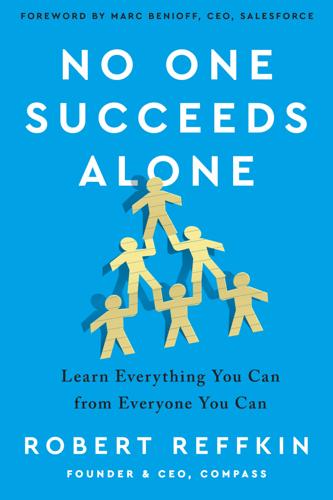
No One Succeeds Alone
by
Robert Reffkin
Published 4 May 2021
Be grateful for: The ways that the struggles and challenges you’ve faced have shaped you into the person you are and have made you stronger Every bit of luck, circumstance, and privilege that you’ve benefited from in your life that have enabled you to have the time to learn, read, and grow Living now rather than at any other time when violence, poverty, disease, and injustice were even worse than they are today and when so many marvels of science and progress, however unequally distributed, didn’t even exist yet The miraculous, improbable, impossible blessing that is human existence—the result of billions of years of evolution And don’t stop there. Gratefulness is like love: the more you give, the more you get. The more gratitude you feel in a day, the more you’ll have to be grateful for. Always look for the positive even when it’s hard to see The lessons I learned leading during the coronavirus pandemic When the coronavirus pandemic first hit, I was going to work every day in Compass’s eleven-story office building in Manhattan, riding elevators, meeting with hundreds of people a week, flying to Seattle twice a month to meet with the leaders of our West Coast technology hub, and visiting other Compass offices in other cities.

Empty Vessel: The Story of the Global Economy in One Barge
by
Ian Kumekawa
Published 6 May 2025
To make matters worse, while the effects of the oil crisis were cascading around the world, the United States was tightening its monetary policy in an effort to face down mounting inflation. Under Paul Volcker, the Federal Reserve raised short-term interest rates to levels that today seem hard to believe. In May 1981, they topped out at over 16 percent. By comparison, when the Fed raised interest rates to fight inflation after the coronavirus pandemic, the short-term interest rate stayed well under 6 percent. For relatively poor and cash-strapped countries like Argentina—countries then commonly deemed “developing”—the one-two punch of skyrocketing oil prices and high global interest rates was devastating. Countries in eastern Europe and Latin America had little choice but to pay higher prices for imported oil, but they lacked the economic resources to do so.
…
Doing so avoids the costs of having to store surplus material or finished products; it allows the most efficient use of labor and capital. It also lowers interest costs by reducing short-term debt used to purchase inventory supplies. As the world’s consumers discovered during the early months of the COVID-19 pandemic, just-in-time manufacturing also can result in supply chains collapsing when one supplier hits a snag. A chain is only as strong as its weakest link. Without surplus products, even a small disruption can snowball into a large one. For Volkswagen in the late 1980s, however, the just-in-time system was both a technological marvel and an integral part of the process that launched Passats into overseas markets.
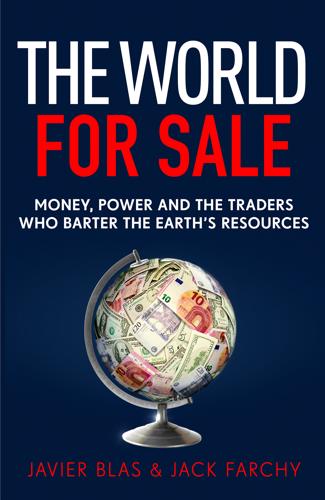
The World for Sale: Money, Power and the Traders Who Barter the Earth’s Resources
by
Javier Blas
and
Jack Farchy
Published 25 Feb 2021
What’s more, much of the time, commodity markets are either over- or under-supplied. The traders, ever nimble and flexible, are always ready to take a commodity off a producer’s hands as long as the price is right, or to supply it if a consumer is willing to pay. For an example of how that works in practice, look no further than the oil price crash of 2020. As the coronavirus pandemic spread across the world, grounding flights and forcing people to stay at home, the price of oil spiralled lower and lower, briefly trading below zero for the first time ever. And so the traders stepped in, buying oil at dirt-cheap prices, and then storing it until demand recovered. Some even bought a few barrels at negative prices, meaning that producers had to pay them to take it off their hands.
…
As commodity demand tumbled in the wake of the financial crisis, oil traders like Vitol made a killing buying up unwanted oil and storing it – doing a version of the deals that Andy Hall had done nearly twenty years earlier. It was a trade they would repeat to great profit every time the market was oversupplied – not least in 2020, when the coronavirus pandemic struck. Aluminium traders were also cashing in enormous profits by funnelling surplus metal into warehouses. ‘We milked the cow every day,’ recalls one top aluminium trader of his profits in that period. 20 The commodity traders were enjoying a bounty, but for a world that was suffering from hunger and recession, their success was an affront.
…
The industry is still able to turn a healthy profit – many traders made a killing as oil prices plunged in 2020 – but it’s becoming clearer and clearer that another meaningful step up in profitability is out of reach. In part that’s because the great engine of the commodity boom, China, is slowing down. The Chinese economy, which was growing at a rate of more than 14% in 2007, had slowed down to just 6% even before the coronavirus pandemic knocked it further off course. Commodity prices have fallen sharply from the records many hit in 2007–2011. The profits of the trading industry as a whole have flatlined. But the economic slowdown in China is only part of the reason why commodity traders’ earnings are no longer growing.

Less Is More: How Degrowth Will Save the World
by
Jason Hickel
Published 12 Aug 2020
We want our governments to face up to the reality of the crisis at hand. But then we have to figure out just how we change everything to create a better society that works for people and planet. XR is a recognition of emergency. We have learned a lot about emergencies over the past year, with the rise of the coronavirus pandemic. The pandemic joined us in a mass of shared vulnerability, and we had to move quickly and make difficult decisions in order to protect humanity – to protect life. The fact that most countries managed to do this is a fairly hopeful sign. It shows what we can achieve when we take a crisis seriously.
…
Rather than assuming that all sectors must grow, for ever, regardless of whether or not we actually need them, let’s talk about what we want our economy to deliver. What industries are already big enough and shouldn’t grow any larger? What industries could be usefully scaled down? What industries do we still need to expand? We have never asked these questions. During the coronavirus pandemic in 2020, we all learned the difference between ‘essential’ industries and superfluous ones; it quickly became apparent which industries are organised around use-value, and which ones are mostly about exchange-value. We can build on those lessons. * This is not meant to be an exhaustive list.

Who Will Defend Europe?: An Awakened Russia and a Sleeping Continent
by
Keir Giles
Published 24 Oct 2024
Parts for Spitfires could be fabricated in bicycle factories. The same cannot be said of an F-35. Rearmament has also been held back because the need for it comes at a financially inconvenient moment. Many European governments are already coping with high levels of public debt following the emergency spending during the coronavirus pandemic. And their economies, like their societies, have transformed rapidly, leaving far less scope for government-mandated reinvestment in defence than in previous decades. But that obscures the fact that countries like the United Kingdom have previously rearmed at times when their financial position was much worse – not only when emerging from the economic trauma of the early 1930s, but also in the early 1950s when the country was still crippled with debt from the Second World War.
…
That objective depended, like so much else, on eroding Russia’s military forces faster than they can be regenerated. Estonia calculated that the cost of maintaining the necessary level of attrition was within 0.25% of GDP for each NATO member – a figure far less than that already spent by Estonia and other leading backers of Ukraine, and vastly less than the sums spent by the EU on tackling the coronavirus pandemic or even on targeted relief for high energy bills. Crucially, the plan’s backers observed, the price tag would be infinitely smaller than the cost of the strategic loss of Ukraine in this war – and Europe would bear that cost if Ukraine fell. Overall, Europe’s smaller nations have assumed leadership roles based not on their economic capacity, but rather their willingness to recognise the urgency of the moment and take steps to meet it.

2034: A Novel of the Next World War
by
Elliot Ackerman
and
James Admiral Stavridis
Published 15 Mar 2021
Before Chowdhury could reach any conclusions, Lin Bao was again on the line. “Have you considered our offer?” Chowdhury thought of his own larger questions. Ever since the mid-2020s, when Iran had signed onto the Chinese “Belt and Road” global development initiative to prevent financial collapse after the coronavirus pandemic, they had helped project Chinese economic and military interests; but what was the scope of this seemingly new Sino-Iranian alliance? And who else was a party to it? Chowdhury didn’t have the authority to trade an F-35 for what would seem to be a Chinese spy ship. The president herself would decide whether such a swap was in the offing.
…
Like a child who can tell whether he is in trouble from the inflection of a parent’s voice, Chowdhury could tell immediately that Wisecarver was upset with him for speaking out of turn in the meeting. Chowdhury began to equivocate, apologizing for his outburst and making assurances that it wouldn’t happen again. More than a decade before, Wisecarver’s young son had perished in the coronavirus pandemic, an event many attributed to Wisecarver’s hawkish political awakening and that made him adept at projecting fatherly guilt onto those subordinates he treated as surrogate children. “Sandy,” repeated Wisecarver, though his voice was different now, a bit softer and more conciliatory. “Take a break.
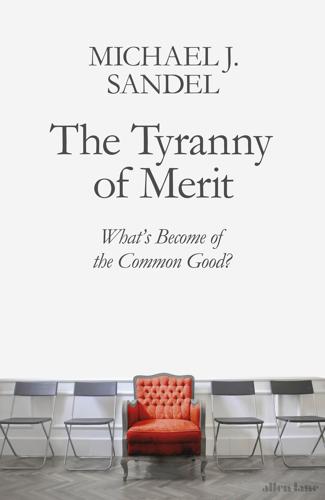
The Tyranny of Merit: What’s Become of the Common Good?
by
Michael J. Sandel
Published 9 Sep 2020
SANDEL Liberalism and the Limits of Justice Liberalism and Its Critics (editor) Democracy’s Discontent: America in Search of a Public Philosophy Public Philosophy: Essays on Morality in Politics The Case Against Perfection: Ethics in the Age of Genetic Engineering Justice: A Reader (editor) Justice: What’s the Right Thing to Do? What Money Can’t Buy: The Moral Limits of Markets Encountering China: Michael Sandel and Chinese Philosophy (co-editor) For Kiku, with love Prologue When the coronavirus pandemic hit in 2020, the United States, like many other countries, was unprepared. Despite warnings the previous year from public health experts about the risk of a global viral contagion, and even as China contended with its outbreak in January, the United States lacked the ability to conduct the widespread testing that might have contained the disease.
…
Rather than deduct a certain amount of each worker’s earnings, the government would contribute a certain amount, in hopes of enabling low-income workers to make a decent living even if they lack the skills to command a substantial market wage. 51 A dramatic version of the wage subsidy proposal was enacted by a number of European countries when the coronavirus pandemic of 2020 locked down their economies. Rather than offer unemployment insurance to workers who lost their jobs during the pandemic, as the U.S. government did, Britain, Denmark, and the Netherlands covered 75 to 90 percent of wages for companies that did not lay off workers. The advantage of the wage subsidy is that it enables employers to retain workers on their payroll during the emergency, rather than fire them and force them to rely on unemployment insurance.
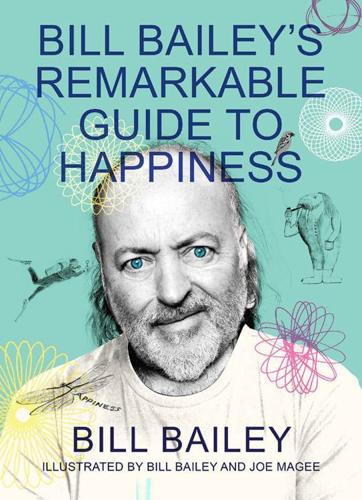
Bill Bailey's Remarkable Guide to Happiness: THE FEELGOOD BOOK OF THE YEAR
by
Bill Bailey
Published 14 Oct 2020
To my family and friends, and all those who have shared in these adventures CONTENTS Foreword 1 Crazy Golf 2 A Clear-out 3 Wild Swimming 4 Little Things 5 Music 6 Caring for Plants 7 Restraint 8 Singing 9 Sport 10 Art 11 Personal Reflection 12 Swearing 13 The Unexpected 14 Playing the Gamelan 15 Laughing 16 Equations 17 Paddleboarding 18 Reading 19 Trees 20 Confronting Your Fears (Part 1) 21 Dogs 22 Confronting Your Fears (Part 2) 23 Birdsong 24 Dancing 25 Pleasure 26 Jogging 27 Cycling 28 Being Someone to Rely On 29 Walking 30 Letter Writing 31 Generosity 32 Belonging 33 Being in Nature 34 Speaking Another Language 35 Simplicity 36 Love About Bill Bailey Thank you FOREWORD This book was written during the coronavirus pandemic, largely while we were in lockdown. During this unexpected quiet time at home, I finally got around to archiving my comedy shows, and I was struck, firstly by how much longer my hair was back in the day, and secondly by how much happiness has been a subject that I have explored in my sketches and gigs over many years, to the point that it appears as a constant thread running through it all.
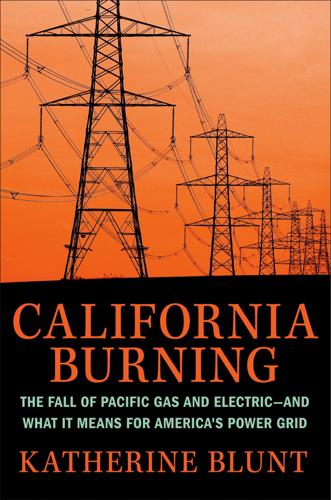
California Burning: The Fall of Pacific Gas and Electric--And What It Means for America's Power Grid
by
Katherine Blunt
Published 29 Aug 2022
In that case, PG&E would either have to go back to the drawing board or persuade Montali to approve the plan anyway, something he would have been disinclined to do. “It’s not the voting day for you and thousands of other people,” Montali said. “And if they vote the plan down, there are consequences.” * * * By mid-March, circumstances had changed in a way few could have foreseen. The coronavirus pandemic had closed the courthouse and upended the stock market. Shares in PG&E fell from about seventeen to seven dollars and plateaued from there. Its value had rarely been lower. By then, PG&E had come up with a $59 billion plan to finance its exit from bankruptcy. It would emerge with $38 billion in debt, up from $22 billion when it first appeared in front of Montali, a remarkable use of the restructuring process.
…
One prominent law firm that had once supported the deal decided that it could no longer do so. It advised its clients—several thousand victims—to shoot it down. “Unfortunately, the hedge funds that have hijacked these bankruptcy proceedings (all to their significant financial benefit), did not care about your concerns BEFORE the coronavirus pandemic, nor do they care about them now,” the firm wrote in a letter to clients. “Your concerns MUST be kept in the forefront of this case.” * * * Watts, meanwhile, was leading a relentless campaign pushing his sixteen thousand clients—and anyone else within earshot—to vote in favor of the settlement.
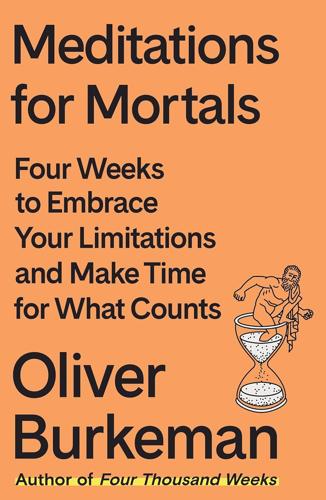
Meditations for Mortals: Four Weeks to Embrace Your Limitations and Make Time for What Counts
by
Oliver Burkeman
Published 8 Oct 2024
It’s entirely possible, Loomans notes, ‘to give someone your undivided attention while telling them you don’t have time right now,’ and far more pleasant for all involved than attempting to keep part of your focus on whatever it was you were just doing. When you try that, ‘you get tense and the other person doesn’t feel heard. They might even stay longer and keep pressing their point.’ And speaking of children bursting into rooms: at the time of writing, almost 60 million people have watched the moment during the coronavirus pandemic when the two small children of Robert Kelly, an expert on Korean politics based in Busan in South Korea, entered the study where he was giving a live interview to the BBC and capered wildly for several seconds, before his wife acrobatically managed to extract them. Is anyone seriously going to claim this interruption turned out to be a bad thing?
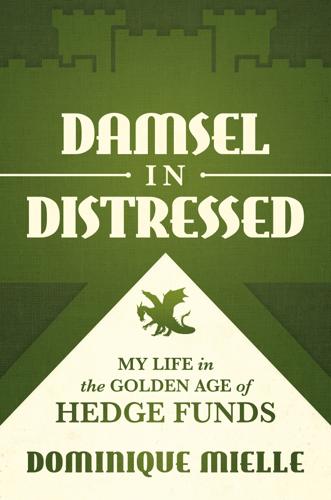
Damsel in Distressed: My Life in the Golden Age of Hedge Funds
by
Dominique Mielle
Published 6 Sep 2021
If the sum of the parts, in their estimation, is greater than the whole, activists will force management to split the company. In ACE’s case, management was proactively seeking to disassemble the pieces, starting by spinning off Aeroplan in 2005, then moving on to Jazz airlines. Have I mentioned that nothing is ever new on Wall Street? In 2020, gravely hit by the coronavirus pandemic, cash flow-bleeding airlines around the world raced to raise money in the capital markets and borrowed from the government. Mileage programs became, once again, a source of value once forgotten and unneeded as a distinct asset from the business of flying. Not anymore. In June 2020, United, American, and Spirit Airlines mortgaged their loyalty schemes as collateral for new debt.

Covid by Numbers
by
David Spiegelhalter
and
Anthony Masters
Published 28 Oct 2021
7 How many people have been infected with SARS-CoV-2? DISEASE AND ILLNESS 8 How ill do people get with Covid-19? 9 What happened in hospitals? 10 How good are the treatments for Covid-19? DEATH 11 How many people have died from Covid-19? 12 How lethal is SARS-CoV-2? 13 Who has been most at risk from Covid-19? 14 How do we compare countries? 15 How does the impact of Covid-19 compare with other historical harms? INTERVENTIONS AND REACTIONS 16 What is the effect of measures against the spread of SARS-CoV-2? 17 What have been the collateral effects of the measures against Covid-19? 18 How has behaviour changed during the pandemic?
…
The great majority of these people had their lives shortened by a somewhat greater extent; analysis suggests that, on average, around 10 years of life are lost from Covid-19 deaths in the UK,14 and 16 years globally.15 Have people been dying because of Covid-19, or just with it? Up to 28 August 2020, for most deaths (93%) where Covid-19 was mentioned on the death certificate the disease was stated as the underlying cause of mortality.16 People were not just dying with Covid-19, they were dying because of Covid-19. That changed when the virus became rarer, with the proportion dying ‘with’ Covid-19 rising to 32% in late April 2021.17 Why was this? We’ve seen that when the virus was less prevalent, there was a smaller proportion of ‘strong’ positives, and cases tended to be less severe.
…
We’ve seen that when the virus was less prevalent, there was a smaller proportion of ‘strong’ positives, and cases tended to be less severe. Those registering deaths may not have regarded Covid-19 as the underlying cause, even though the infection was present and considered to have contributed to the death in some way. It is rare for there to be only one primary cause of death, and Covid-19 is no exception. In the first wave, in 91% of deaths involving Covid-19 there were pre-existing conditions,18 with dementia and Alzheimer’s disease present in a quarter of them. So while Covid-19 is the underlying cause of the vast majority of Covid-19 deaths, Covid-19 is very rarely the sole cause. Figure 11–3 Excess deaths in England and Wales by place of death and week of death registration, from March 2020 to April 2021, compared to the 2015–19 rates for each week.
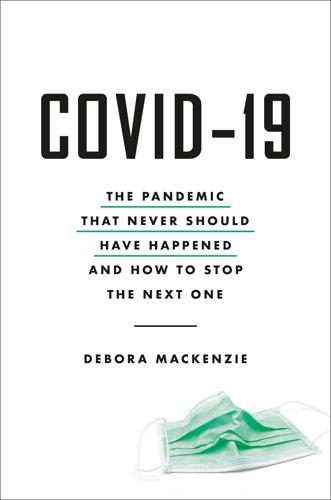
Covid-19: The Pandemic That Never Should Have Happened and How to Stop the Next One
by
Debora MacKenzie
Published 13 Jul 2020
If so, the world’s reaction to the swine flu pandemic did us all a disservice when Covid-19 arrived. The WHO was also worried that governments would somehow conflate pandemic and flu. That’s one reason flu matters so much to the story of Covid-19. When Covid-19 hit, most governments with pandemic plans had based them around flu: many are actually entitled “influenza pandemic plan.” Covid-19 is not flu, and that caused problems. Containment, where you isolate cases and trace and quarantine their contacts, was the WHO’s main recommendation for Covid-19 early in the pandemic. But that is not possible with flu because the virus spreads faster than Covid-19, so it wasn’t a part of these pandemic plans.
…
Until then, horrific as it has sometimes been, we can be grateful it hasn’t been worse. Covid-19 does not have a massive death rate—best guesses as I write this are that it’s less deadly than we initially feared, but still maybe ten times more deadly than ordinary flu. SARS was ten times deadlier than that. Fortunately, it never learned to spread like Covid-19—and, with luck, Covid-19 will never learn to kill like SARS. Think about what this pandemic would have been like with ten times the death rate. And as many of us have painfully learned, Covid-19 mostly kills older people. Speaking as one myself, I don’t wish to be cavalier about this, but the brutal fact is that losing people in old age does not cause as much economic or social disruption as losing people of working and childbearing age.
…
By August 2014, when the WHO declared an emergency, the epidemic curve was exponentially headed for unthinkable heights. Finally, the world—and the WHO, with a revamped effort led by Bruce Aylward, who later led its Covid-19 mission to China—responded and contained the epidemic with the same tools used for Covid-19: isolation, contact tracing, and quarantine. Also, as with Covid-19, changes in ordinary people’s behavior were crucial. Friends stopped embracing, and families stopped touching virus-laden corpses at funerals. As with Covid-19, there were no drugs or vaccines for Ebola. After the US anthrax scare in 2001, there was some funding to develop them, as Ebola was considered a potential bioweapon.
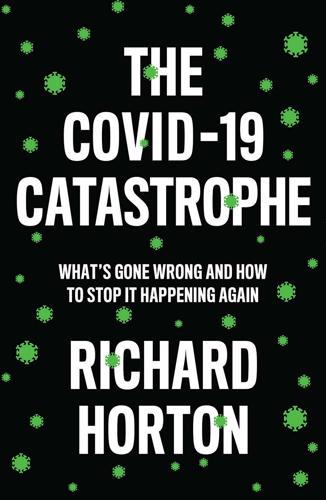
The COVID-19 Catastrophe: What's Gone Wrong and How to Stop It Happening Again
by
Richard Horton
Published 31 May 2020
As a group of Chinese doctors involved in the organisation and delivery of care to patients with COVID-19 noted, ‘By embracing Fangcang shelter hospitals, many countries and communities worldwide could boost their response to the current COVID-19 pandemic as well as future epidemics and disasters.’ Sadly, many countries afflicted by COVID-19 were unable to respond in such agile and creative ways. * While the epicentre of the pandemic was Wuhan, the virus quickly spread to other Asian nations. Singapore confirmed its first imported case of COVID-19 on 23 January. Inbound flights to the city-state were banned. Several clusters of disease were identified and close contacts were quarantined.
…
Contents Cover Dedication Title Page Copyright Preface Acknowledgements 1 From Wuhan to the World Notes 2 Why Were We Not Prepared? Notes 3 Science: The Paradox of Success and Failure Notes 4 First Lines of Defence Notes 5 The Politics of COVID-19 Notes 6 The Risk Society Revisited Notes 7 Towards the Next Pandemic Notes End User License Agreement Dedication For those whose lives were lost to COVID-19 The COVID-19 Catastrophe What’s Gone Wrong and How to Stop it Happening Again Richard Horton polity Copyright © Richard Horton 2020 The right of Richard Horton to be identified as Author of this Work has been asserted in accordance with the UK Copyright, Designs and Patents Act 1988.
…
First, much attention was given to the celebrities who contracted SARS-CoV-2 – Marianne Faithful, Tom Hanks and Rita Wilson, Idris Elba, Sophie Trudeau, Prince Albert of Monaco and Prince Charles in the UK. It was easy to think the virus was a threat to everyone equally. But that was not the case. COVID-19 overwhelmingly affected those who were poorer, less able and sicker. There was a steep social gradient to this disease. And it seemed to affect black and minority ethnic communities especially badly. Those on the frontlines of care were particularly vulnerable and often unprotected. COVID-19 exploited and worsened already existing inequalities in society. Second, before COVID-19, the idea of a ‘key worker’ was probably a rather obscure notion in the public’s mind. No longer. Just as ‘first responders’ after 9/11 – firefighters, police officers and emergency medical workers – became heroic symbols of a country under terrorist attack, so key workers came to embody the commitment of those without whom society really would have collapsed.
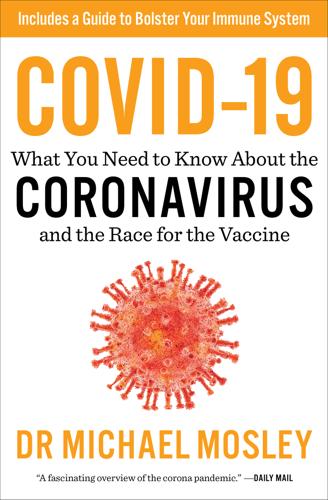
COVID-19: Everything You Need to Know About the Corona Virus and the Race for the Vaccine
by
Michael Mosley
Published 1 Jun 2020
It is adults over the age of 65 and children under the age of five who are at the greatest risk of developing severe complications from the flu, being hospitalized, and dying. You don’t see this with Covid-19. In fact, unless you have a preexisting condition, the odds of dying from Covid-19 if you are under 30 are less than 1000 to one. One of the most striking things about Covid-19 is that, unlike the flu, or most other infectious diseases, there have been remarkably few cases of children with Covid-19 getting sick. That said, there have been reports of a new life-threatening inflammatory condition that appears to be linked to Covid-19 and that has, understandably, been worrying a lot of families. Children with this condition develop a fever, pain in the stomach, and often a rash.
…
Below is a comparison between intensive care patients in an average flu year and Covid-19.7 Covid-19 Flu (2017–2019) Average age 59 years 58 years White 66% 88% Biracial 2% 1% Asian 15% 6% Black 11% 3% Other 6% 2% What is striking is that while the percentage of white, black, and Asian patients who end up in intensive care during a flu epidemic reflects their percentages in the UK population, things are very different when it comes to Covid-19. If you come from a black or Asian ethnic background you are much more likely to end up in intensive care if you get Covid-19 than if you are white. Why? Although people from a BAME background are more likely to live in poor, crowded housing and have worse health (higher rates of hypertension and type 2 diabetes), that does not explain why Covid-19 impacts this group so much worse than the flu does. A study by the UK Office of National Statistics, which looked at the ethnic background of those who died from Covid-19, came to similar puzzling conclusions.8 They found that men and women from a black ethnic background are four times more likely to die from Covid-19 than those who are white.
…
Since then scientists have identified four types of coronaviruses that can cause a mild cold, and three types that are deadly—those that cause SARS and MERS, and now Covid-19. How Is This New Virus Different from the Coronaviruses That Cause SARS or MERS? One of the key differences is that when you get infected with Covid-19 you can soon be shedding lots of viruses without knowing you are infected. Viral shedding seems to occur early on in an infection (typically two to three days after getting infected), and most people (roughly 80 percent) get such mild symptoms that they ignore it. At least 40 percent of people who get Covid-19 have no symptoms at all. That is what allowed Covid-19 to spread so far and so fast. Early on in the pandemic there were a lot of people getting on planes and going out to work blissfully unaware that they were infected.

Cabin Fever: The Harrowing Journey of a Cruise Ship at the Dawn of a Pandemic
by
Michael Smith
and
Jonathan Franklin
Published 14 Jul 2022
Intense negotiations were under way in Sydney, Bangkok, Tokyo, San Francisco, and Washington. Although his team had been tracking COVID-19 outbreaks for eight weeks, Dr. Tarling rarely used the C-word in public communications. In one of his five-minute-long videos, he did mention COVID-19. Within days, the video was edited down to three minutes, and all mention of COVID-19 was gone. Some crew aboard the Zaandam, especially those with access to medical decision makers, began to question whether the big bosses back in the United States were trying not to detect COVID-19. “We had crew that were deathly ill and none of them got tested. I don’t think they were trying to find it.
…
She was sure Holland America had warned in an email that it would be examining every passenger’s passport to see where each person had traveled. COVID-19 was spreading massively in China and more recently in Italy. Surely, they would want to flag people who had been to those places recently, at least for a tougher medical screening. “Yes,” Jorge replied. “They didn’t even go through the pages.” The couple had worried about COVID-19, even thought about canceling the trip. Jorge tracked the Zaandam online, and he was relieved to see the ship had been in South America since the fall. Together, they watched the news, and prior to leaving their home in California, they noted with calm that just one COVID-19 case had been logged in Brazil, and it was someone who had traveled through Italy.
…
Internal emails show that Tarling had followed the disease’s deadly advance closely for months, even disseminating detailed “Instructional Notices” with the latest science and advice on preventing and controlling COVID-19 aboard the corporation’s huge fleet of ships. Tarling was well aware of how vulnerable cruise ships were to a deadly and contagious virus like COVID-19. In 2017, he coauthored a study in the Journal of Travel Medicine that demonstrated how difficult it is to prevent and combat viruses in the close quarters of a cruise ship. On January 20, 2020, when Tarling informed Carnival CEO Arnold Donald of his concern, the two talked. Tarling warned that COVID-19 was spreading fast and could be transmitted from person to person, emails show.
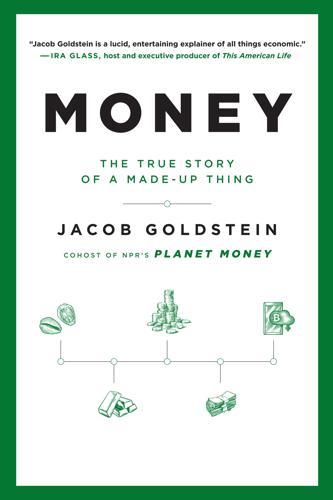
Money: The True Story of a Made-Up Thing
by
Jacob Goldstein
Published 14 Aug 2020
But funds for ordinary investors still use the same accounting methods to show a constant dollar value for investors. People can still write checks on their accounts. Money-market funds are not regulated like banks, but for most people money in a money fund still feels like money in the bank. In the spring of 2020, as the coronavirus pandemic spread around the world, people once again started frantically pulling billions of dollars out of money-market funds. And the US government once again rushed to protect the funds. “It’s just frustrating that we never really fixed this stuff to begin with,” Sheila Bair, a former regulator, said.
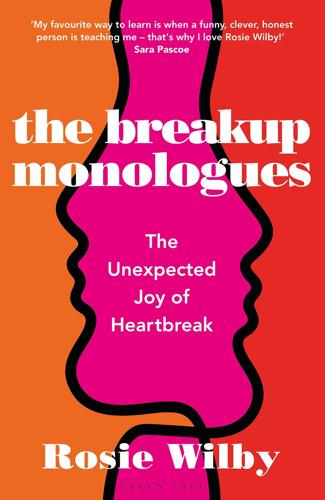
The Breakup Monologues: The Unexpected Joy of Heartbreak
by
Rosie Wilby
Published 26 May 2021
I’m not getting paid.’ ‘Oh, I know. But it’s good to just give it a go.’ ‘Yes, I suppose it might get my creative juices flowing.’ ‘Yeah…that…and it’ll mean that you’ll wash your hair and put makeup on.’ During my final months of writing this book, the UK is plunged into lockdown due to the coronavirus pandemic. The changes to society and how we can interact are unprecedented. Early suggestions from sociologists are that the pandemic has completely reshaped our close relationships. In every country that has had a lockdown, divorce rates have surged. Perhaps that is no surprise. Divorces normally peak just after holiday seasons at Christmas and summertime when people have had no escape from one another.
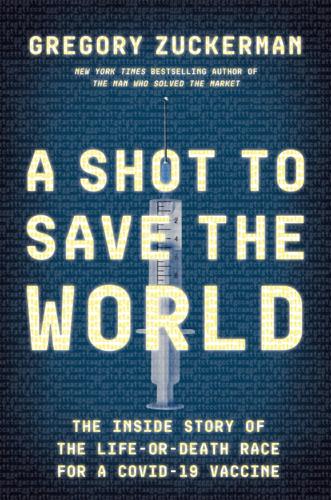
A Shot to Save the World: The Inside Story of the Life-Or-Death Race for a COVID-19 Vaccine
by
Gregory Zuckerman
Published 25 Oct 2021
Sharon LaFraniere et al., “Politics, Science and the Remarkable Race for a Coronavirus Vaccine,” New York Times, November 21, 2020, https://www.nytimes.com/2020/11/21/us/politics/coronavirus-vaccine.html. 4. “Pushing Boundaries to Deliver COVID-19 Vaccine Across the Globe,” AstraZeneca, February 2021, https://www.astrazeneca.com/what-science-can-do/topics/technologies/pushing-boundaries-to-deliver-covid-19-vaccine-accross-the-globe.html. 5. Jenny Strasburg and Joseph Walker, “Astra-Zeneca-Oxford Covid-19 Vaccine Up to 90% Effective in Late-Stage Trials,” Wall Street Journal, November 23, 2020, https://www.wsj.com/articles/astrazeneca-oxford-covid-19-vaccine-up-to-90-effective-in-late-stage-trials-11606116047. 6. Ludwig Burger, Kate Kelland, and Alistair Smout, “Decades of Work, and Half a Dose of Fortune, Drove Oxford Vaccine Success,” Reuters, November 23, 2020, https://www.reuters.com/article/us-health-coronavirus-astrazeneca-oxford/decades-of-work-and-half-a-dose-of-fortune-drove-oxford-vaccine-success-idUKKBN2832NC?
…
Jenny Strasburg, “AstraZeneca’s Covid-19 Vaccine Is Safe, 79% Effective in Late-Stage U.S. Trials,” Wall Street Journal, March 22, 2021, https://www.wsj.com/articles/astrazeneca-covid-19-vaccine-is-79-effective-in-late-stage-u-s-trials-11616397735. 8. Nick Triggle, “Covid: Under-30s Offered Alternative to Oxford-AstraZeneca Jab,” BBC, April 7, 2021, https://www.bbc.com/news/health-56665517; “Pushing Boundaries to Deliver COVID-19 Vaccine Across the Globe,” AstraZeneca, February 2021, https://www.astrazeneca.com/what-science-can-do/topics/technologies/pushing-boundaries-to-deliver-covid-19-vaccine-accross-the-globe.html. 9.
…
Francis Elliot and Tom Whipple, “Malaria Vaccine Another Success Story for Jenner Institute Team Behind Covid Jab,” Times (London), December 5, 2020, https://www.thetimes.co.uk/article/malaria-vaccine-another-success-story-for-jenner-institute-team-behind-covid-jab-9r55m7jj3. 12. Thomas M. Burton and Peter Loftus, “J&J Covid-19 Vaccine Authorized for Use in U.S.,” Wall Street Journal, February 27, 2021, https://www.wsj.com/articles/j-j-covid-19-vaccine-authorized-for-use-in-u-s-11614467922. 13. Burton and Loftus, “J&J Covid-19 Vaccine Authorized for Use in U.S.” 14. @sigh__oh, Twitter post, April 13, 2021, 8:35 a.m., https://twitter.com/sigh__oh/status/1381949214574448640?lang=en. 15. Parmy Olson and Jenny Strasburg, “J&J, AstraZeneca Explore Covid-19 Vaccine Modification in Response to Rare Blood Clots,” Wall Street Journal, July 13, 2021, https://www.wsj.com/articles/j-j-astrazeneca-explore-covid-19-vaccine-modification-in-response-to-rare-blood-clots-11626173015. 16.
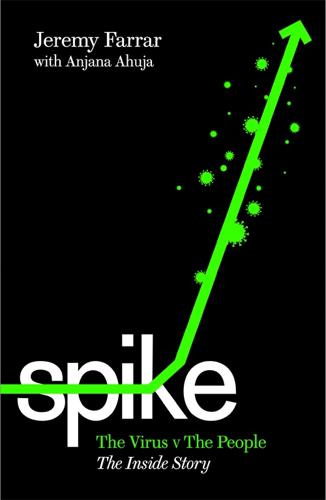
Spike: The Virus vs The People - The Inside Story
by
Jeremy Farrar
and
Anjana Ahuja
Published 15 Jan 2021
Coronaviruses are named after their crownlike appearance under powerful microscopes; the virus particles are studded with protein ‘spikes’. COVAX Covid-19 Vaccines Global Access Facility Covid-19 Covid-19 stands for ‘coronavirus disease 2019’, the disease caused by SARS-CoV-2. dexamethasone A cheap steroid that improves the chances of survival of the sickest Covid-19 patients. DHSC Department of Health and Social Care Ebola Can refer to the Ebola virus or the disease it causes (Ebola virus disease). The virus, first identified in 1976, is transmitted from animals (such as fruit bats or non-human primates) to people and can spread from person to person through bodily fluids.
…
Bloom et al., ‘Investigate the Origins of COVID-19’. Science, 372(6543), 14 May 2021. https://science.sciencemag.org/content/372/6543/694.1 p. 78 ‘On 5 February 2020, the Diamond Princess …’ Kenji Mizumoto et al., ‘Estimating the Asymptomatic Proportion of Coronavirus Disease 2019 (COVID-19) Cases on Board the Diamond Princess Cruise Ship, Yokohama, Japan, 2020’. Eurosurveillance, 25(10), 12 March 2020. www.eurosurveillance.org/content/10.2807/1560-7917.ES.2020.25.10.2000180 p. 85 ‘Researchers would later count more than 1,300 separate occasions .. Hannah Devlin, ‘No “Patient Zero” as Covid-19 Came into UK at Least 1,300 Times’.
…
New York Times, 17 March 2020. www.nytimes.com/2020/03/17/world/europe/coronavirus-imperial-college-johnson.html p. 134 ‘Instead, when Boris Johnson appeared on TV …’ ‘Coronavirus: PM Says Everyone Should Avoid Office, Pubs and Travelling’. BBC News, 16 March 2020. www.bbc.co.uk/news/uk-51917562 CHAPTER 6 p. 135 ‘Known global cases: 167,515’ ‘Coronavirus Disease 2019 (COVID-19): Situation Report – 56’, 16 March 2020. www.who.int/docs/default-source/coronaviruse/situation-reports/20200316-sitrep-56-Covid-19.pdf?sfvrsn=9fda7db2_6 p. 136 ‘Behavioural fatigue seems to have been a peripheral idea …’ Elisabeth Mahase, ‘COVID-19: Was the Decision to Delay the UK’s Lockdown Over Fears of “Behavioural Fatigue” Based on Evidence?’ British Medical Journal, 7 August 2020. www.bmj.com/content/370/bmj.m3166 p. 137 ‘As London was ahead of other regions in its number of infections …’ George Parker et al., ‘Inside Westminster’s Coronavirus Blame Game’.
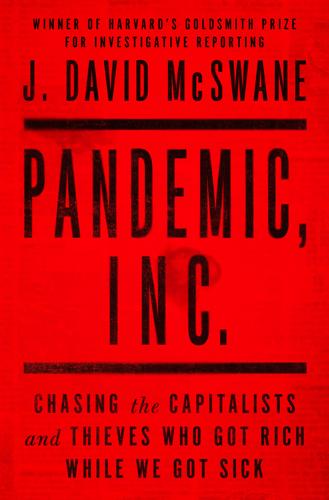
Pandemic, Inc.: Chasing the Capitalists and Thieves Who Got Rich While We Got Sick
by
J. David McSwane
Published 11 Apr 2022
Moderna would have owed taxpayers Samanth Subramanian, “In the Push for New Vaccines, Taxpayers Keep Paying and Paying,” Quartz, May 12, 2021, https://qz.com/2006390/taxpayers-are-paying-twice-or-more-for-the-covid-19-vaccine/. Moderna isn’t the only company Operation Warp Speed Contracts for COVID-19 Vaccines and Ancillary Vaccination Materials, 2021. It did help that the government promised Valverde, “How Pfizer’s and Moderna’s COVID-19 Vaccines Are Tied to Operation Warp Speed.” The boom in biotech and healthcare stocks Giacomo Tognini, “Meet the 40 New Billionaires Who Got Rich Fighting Covid-19,” Forbes, April 7, 2021, https://www.forbes.com/sites/giacomotognini/2021/04/06/meet-the-40-new-billionaires-who-got-rich-fighting-covid-19/?sh=25efda0f17e5. 22. The Death Pits More than 80 of his fellow residents COVID-19 Long-Term Care Facilities Data for Pennsylvania, Pennsylvania Department of Health, https://www.health.pa.gov/topics/disease/coronavirus/Pages/LTCF-Data.aspx, accessed December 2, 2021.
…
On March 11, the WHO made it official “WHO Director-General’s Opening Remarks at the Media Briefing on COVID-19—11 March 2020,” World Health Organization, March 11, 2020, https://www.who.int/director-general/speeches/detail/who-director-general-s-opening-remarks-at-the-media-briefing-on-covid-19—11-march-2020. On March 13, Trump declared a national emergency “Proclamation on Declaring a National Emergency Concerning the Novel Coronavirus Disease (COVID-19) Outbreak,” White House, March 13, 2020, https://trumpwhitehouse.archives.gov/presidential-actions/proclamation-declaring-national-emergency-concerning-novel-coronavirus-disease-covid-19-outbreak/ “I don’t take responsibility at all” Caitlin Oprysko, “ ‘I Don’t Take Responsibility at All’: Trump Deflects Blame for Coronavirus Testing Fumble,” Politico, March 13, 2020, https://www.politico.com/news/2020/03/13/trump-coronavirus-testing-128971. 5.
…
On December 18 “Moderna Announces FDA Authorization of Moderna Covid-19 Vaccine in U.S.,” Moderna press release, December 18, 2020, https://investors.modernatx.com/news-releases/news-release-details/moderna-announces-fda-authorization-moderna-covid-19-vaccine-us. The federal government would order 300 million doses Operation Warp Speed Contracts for COVID-19 Vaccines and Ancillary Vaccination Materials, 2021. By February 2021, roughly a year Inti Pacheco, “Insiders at Covid-19 Vaccine Makers Sold Nearly $500 Million of Stock Last Year,” Wall Street Journal, February 17, 2021, https://www.wsj.com/articles/insiders-at-covid-19-vaccine-makers-sold-nearly-500-million-of-stock-last-year-11613557801. the company’s valuation ballooned Matthew Frankel, “Could Moderna Justify Its $129 Billion Valuation?”
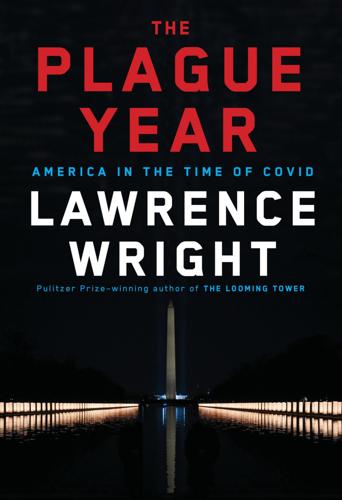
The Plague Year: America in the Time of Covid
by
Lawrence Wright
Published 7 Jun 2021
“negative serial interval”: Zhanwei Du, Xiaoke Xu, Uye Wu, Lin Wang, Benjamin J. Cowling, and Lauren Ancel Meyers, “The serial interval of COVID-19 from publicly reported confirmed cases,” medRxiv preprint, March 20, 2020. A German study: Valentina O. Puntmann, M. Ludovica Carej, and Imke Wieters, “Outcomes of Cardiovascular Magnetic Resonance Imaging in Patients Recently Recovered From Coronavirus Disease 2019 (COVID-19),” JAMA, July 27, 2020. 3. SPIKE horse farms: Interview with Barney Graham. not Covid-19: Stacy Kuebelbeck Paulsen, “Study finds no link between COVID-19, Guillain-Barré syndrome,” CIDRAP, Dec. 14, 2020. may have been misdiagnosed: Armond S.
…
Grand Princess: “Grand Princess Updates,” April 7, 2020. a single infected passenger: Smriti Mallapaty, “What the cruise-ship outbreaks reveal about COVID-19,” Nature, March 26, 2020; Expert Taskforce for the COVID-19 Cruise Ship Outbreak, “Epidemiology of COVID-19 Outbreak on Cruise Ship Quarantined at Yokohama, Japan, February 2020,” Emerging Infectious Diseases, Nov. 2020. through aerosol droplets: Parham Azimi, et al., “Mechanistic Transmission Modeling of COVID-19 on the Diamond Princess Cruise Ship Demonstrates the Importance of Aerosol Transmission,” medRxiv, July 15, 2020. put at 19.2 percent: Interview with Martin Cetron.
…
actively discouraged their use: “Media Statement: the role and need of masks during COVID-19 outbreak,” World Health Organization, Mar. 6, 2020. Also, see the statement: “We don’t generally recommend the wearing of masks in public by otherwise well individuals, because it has not been up to now associated with any particular benefit,” “FULL TRANSCRIPT: WHO Press Briefing COVID-19,” Mar. 30, 2020. “If it’s not fitted”: Jeremy Reynolds, “Are homemade face masks effective in protection against COVID-19?” Pittsburgh Post-Gazette, April 24, 2020. “Right now in the United States”: “Dr. Anthony Fauci Talks with Dr. Jon Lapook about COVID-19,” 60 Minutes Overtime, March 8, 2020.

Nothing but Net: 10 Timeless Stock-Picking Lessons From One of Wall Street’s Top Tech Analysts
by
Mark Mahaney
Published 9 Nov 2021
But some of the leading tech companies—Amazon, Facebook, Netflix, Shopify—were able to sustain 20%+ growth in 2020, and that growth made them even more attractive to investors. So what do you do with high-growth tech stocks in a Covid-19 recovery world? This book offers stock-picking lessons, not specific stock advice. But two key points from those lessons are directly relevant to thinking about high-growth tech stocks in a Covid-19 recovery and then in a hopefully post-Covid-19 world. First, comps will be an unusually material issue for almost all tech companies in 2021—either materially challenging for the WFH/LFH companies or materially easy for the companies that suffered severe demand hits during the Covid-19 pandemic. We should expect to see major growth deceleration with the first group, and major acceleration or recovery with the second.
…
The WFH/LFH basket of stocks contained some great outperformers in 2020, but the most dramatic part of the outperformance for most of the stocks occurred in a tight three-to-six-month period. Making predictions is dangerous, but my strong guess is that the Covid-19 recovery trade will last about as long as the Covid-19 crisis trade did (three to six months). After that, the market will focus on the sustainability of companies’ fundamentals into 2022 and beyond. Perhaps the most important action question is: Did the Covid-19 crisis and the Covid-19 recovery cause a company to become structurally stronger or weaker for the long term? That’s the key question that investors should focus on. ADDRESSING THE RELEVANCY CRITICS So let me get this right.
…
The blockbuster Airbnb IPO was particularly noteworthy because it occurred while the company was still recording—thanks to the Covid-19 crisis—30% year-over-year declines in its bookings and revenue. Growth companies are typically expected to be, well, growing when they stage their IPOs. Airbnb was declining. And it still pulled off a highly successful IPO. Wow! Reflects a lot of trust and hope by investors in Airbnb’s secular growth opportunity post-Covid-19. A lot. And imagine how much interest there would be were TikTok—one of the fastest-growing Internet apps of all time—to announce its IPO intentions! The Covid-19 crisis made some of these Internet companies indispensable.
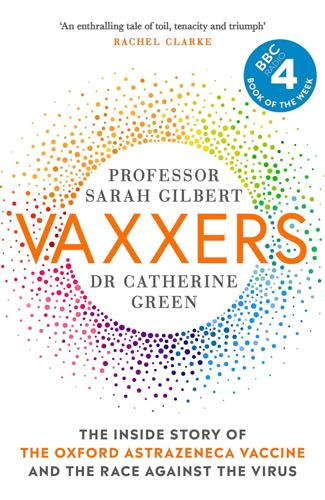
Vaxxers: The Inside Story of the Oxford AstraZeneca Vaccine and the Race Against the Virus
by
Sarah Gilbert
and
Catherine Green
Published 7 Jul 2021
Ibid., and https://www.npr.org/sections/latest-updates-trump-covid-19-results/2020/10/03/919898777/timeline-what-we-know-of-president-trumps-covid-19-diagnosis. 20. DOI:https://doi.org/10.1016/S0140-6736(20)31022-9. 21. https://www.npr.org/sections/latest-updates-trump-covid-19-results/2020/10/03/919898777/timeline-what-we-know-of-president-trumps-covid-19-diagnosis. 22. Ibid. 23. https://www.medrxiv.org/content/10.1101/2020.06.22.20137273v1. 24. https://www.fda.gov/news-events/press-announcements/coronavirus-covid-19-update-fda-authorizes-monoclonal-antibodies-treatment-covid-19. 25. https://www.bbc.co.uk/news/world-europe-55409693.
…
More information For more detail on the effectiveness of the vaccines against SARS-CoV-2 see: https://www.gov.uk/government/publications/phe-monitoring-of-the-effectiveness-of-covid-19-vaccination https://publichealthscotland.scot/news/2021/february/vaccine-linked-to-reduction-in-risk-of-covid-19-admissions-to-hospitals/ For more detail about safety reporting through the Yellow Card scheme in the UK see: https://www.gov.uk/government/publications/coronavirus-covid-19-vaccine-adverse-reactions For a wide range of general information on Covid vaccines see: https://www.who.int/news-room/q-a-detail/coronavirus-disease-(covid-19)-vaccines http://vk.ovg.ox.ac.uk Chapter 1 1. The Times: ‘This is a remarkable achievement for British science and offers hope to the world of an end to the pandemic’, https://www.thetimes.co.uk/article/the-times-view-on-the-success-of-the-oxford-vaccine-great-british-breakthrough-ljwltmtbc.
…
We also knew that, in order to assess the vaccine’s ability to protect people from disease, we would have to wait for our volunteers to catch Covid-19 in the course of their normal lives. With some diseases, such as malaria or influenza, we can conduct what we call challenge trials, in which volunteers are intentionally exposed to the pathogen. This has the advantage of yielding results very quickly. However, at the time we were designing the trials for our Covid-19 vaccine, relatively little was known about SARS-CoV-2 (the pathogen) or Covid-19 (the disease). The ethical implications of exposing people to a dangerous and poorly studied virus with no known treatment meant that challenge trials were, for the time being, off the table.fn2 When we were first planning the vaccine trials, cases in the UK were increasing and predicted to peak in May.
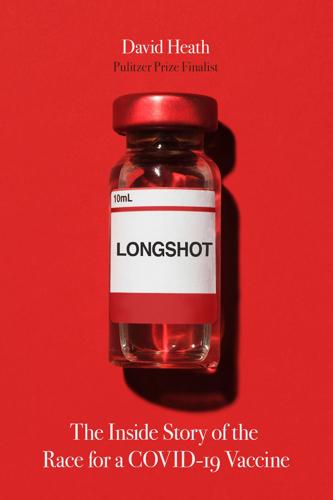
Longshot
by
David Heath
Published 18 Jan 2022
This book will tell the stories of those scientists rather than the vaccine makers, with one exception. Moderna was chosen by government scientists to be the platform for the first COVID-19 vaccine because it offered such a speedy way of making vaccines. The company had been working closely for years with the National Institutes of Health on a coronavirus vaccine. So its story is integral to the story of the science behind the vaccines. One man in particular, Barney Graham at the National Institutes of Health, pulled all the threads together. He is the Jonas Salk of COVID-19 vaccines. His research into a coronavirus vaccine started nearly seven years before this new strain would appear in Wuhan, China.
…
Moderna was unsuccessful, but that effort would ultimately change the fortunes of the company. It was that effort that led the National Institutes of Health to partner with Moderna and ultimately to select it to collaborate on a COVID-19 vaccine. CHAPTER 8 Tackling a Childhood Disease Around the time Moderna was formed, Barney Graham at the National Institutes of Health was embarking on new research that would become pivotal to the success of the COVID-19 vaccines a decade later. Graham would over time develop a new obsession: stopping the next pandemic. The mission of the Vaccine Research Center at the National Institutes of Health had been laser focused on finding an HIV vaccine.
…
At its first conference call with investors in 2020, even as the pandemic was headline news, Moderna continued to focus primarily on their CMV vaccine. Its development was still years away, but the company expected CMV vaccine sales to top $2 billion a year, perhaps as much as $5 billion. Tal Zaks, the chief scientific officer, mentioned the COVID-19 vaccine only once.3 Moderna’s experience with vaccines turned out to be critical. It took the company no time at all to begin production of the COVID-19 vaccine. Graham called them on a Monday to give them the genetic code, and the next day production began. It was a quintessential illustration of mRNA’s plug-and-play capabilities and why Graham chose mRNA for a vaccine.

How to Prevent the Next Pandemic
by
Bill Gates
Published 2 May 2022
You can find it at https://papers.ssrn.com. I wouldn’t advise reading it before bed—it is sobering. *3 A word about terminology. SARS-CoV-2 is the name of the virus that causes the disease COVID-19. Technically, COVID refers to all diseases caused by coronaviruses, of which COVID-19 is one. (The 19 comes from the fact that it was discovered in 2019.) But to keep things readable, from here on out, I’m going to use COVID to refer to both the disease COVID-19 and the virus that causes it. *4 I’ve already mentioned the Gates Foundation several times in this Introduction, and I’ll be mentioning it more throughout this book.
…
Learn from COVID Figure: The true toll of COVID. Estimated number of global excess deaths include official count of COVID-19 deaths, additional estimated COVID-19 deaths, and deaths from all causes attributed to complications stemming from the pandemic through December 2021. Source: Institute for Health Metrics and Evaluation (IHME) at the University of Washington (2021). GO TO FIGURE IN TEXT Toward the end of 2021: Our World in Data, “Estimated Cumulative Excess Deaths Per 100,000 People During COVID-19,” https://ourworldindata.org/. GO TO NOTE REFERENCE IN TEXT Figure: Containing COVID in Vietnam.
…
New cases per day (seven-day rolling average). Source: “Emerging COVID-19 Success Story: Vietnam’s Commitment to Containment,” Exemplars in Global Health program, https://www.exemplars.health (published March 2021; accessed Jan. 2022). Using data extracted from Hannah Ritchie et al., “Coronavirus Pandemic (COVID-19)” (2020), published online at OurWorldInData.org, https://ourworldindata.org/coronavirus. GO TO FIGURE IN TEXT Its rate of excess deaths: Our World in Data, “Estimated Cumulative Excess Deaths per 100,000 People During COVID-19,” https://ourworldindata.org. GO TO NOTE REFERENCE IN TEXT IHME’s data also suggests: T.
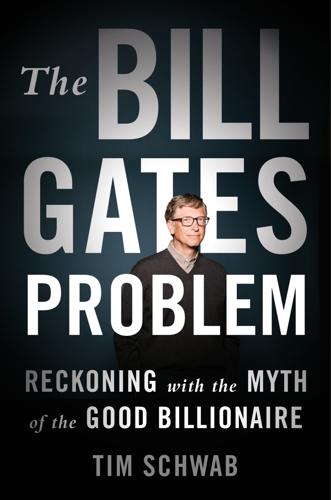
The Bill Gates Problem: Reckoning With the Myth of the Good Billionaire
by
Tim Schwab
Published 13 Nov 2023
; Jon Cohen, “What Went Wrong with CureVac’s Highly Anticipated New MRNA Vaccine for COVID-19?,” Science, June 18, 2021, https://www.science.org/content/article/what-went-wrong-curevac-s-highly-anticipated-new-mrna-vaccine-covid-19. relationship with other Covid-19 vaccine producers: David Bank and Dennis Price, “Linchpin of Gates Foundation’s Health Strategies, ‘Global Access Agreements’ Fail Their Covid-19 Test,” ImpactAlpha, June 10, 2021, https://impactalpha.com/the-linchpin-of-gates-foundations-health-strategies-global-access-agreements-fail-their-covid-19-test/; “BioNTech Announces New Collaboration to Develop HIV and Tuberculosis Programs,” Press Release, BioNTech, September 4, 2019, https://investors.biontech.de/news-releases/news-release-details/biontech-announces-new-collaboration-develop-hiv-and/.
…
“the whole world is watching”: Adele Peters, “Inside the Gates Foundation’s Epic Fight Against Covid-19,” Fast Company, December 14, 2020, https://www.fastcompany.com/90579390/inside-the-gates-foundations-epic-fight-against-covid-19. Jenner Institute: “Funders & Partners,” Jenner Institute, n.d., https://web.archive.org/web/20190517085723/https:/www.jenner.ac.uk/funders-partners. backing Oxford’s vaccine: “CEPI Expands Investment in Covid-19 Vaccine Development,” CEPI, March 10, 2020, https://cepi.net/news_cepi/cepi-expands-investment-in-covid-19-vaccine-development/. up to $384 million: “Oxford University Announces Landmark Partnership with AstraZeneca for the Development and Potential Large-Scale Distribution of Covid-19 Vaccine Candidate,” University of Oxford, April 30, 2020, https://www.ox.ac.uk/news/2020-04-30-oxford-university-announces-landmark-partnership-astrazeneca-development-and; “Epidemic Response Group to Invest Up to $384 Mln in Novavax’s Covid-19 Vaccine,” Reuters, May 11, 2020, https://www.reuters.com/article/us-health-coronavirus-vaccines-cepi-idUKKBN22N2RP
…
less expensive than other vaccines: “Doctor on Developing Global Covid-19 Vaccine: ‘We Got Zero Help from the U.S. Government,’” Yahoo! News, February 8, 2022, https://news.yahoo.com/covid-vaccines-policymakers-never-really-211439188.html. Note: UNICEF’s records show that Corbevax is the lowest-priced vaccine, at under two dollars per dose, compared to the Oxford-AstraZeneca-Serum vaccine, which sold, at its lowest price, for three dollars. Covid-19 Market Dashboard, UNICEF, n.d., https://www.unicef.org/supply/covid-19-market-dashboard. IndoVac: “Indonesia’s Bio Farma Ready to Produce IndoVac Covid-19 Vaccines,” Bloomberg, September 11, 2022, https://www.bloomberg.com/press-releases/2022-09-11/indonesia-s-bio-farma-ready-to-produce-indovac-covid-19-vaccines.

Stakeholder Capitalism: A Global Economy That Works for Progress, People and Planet
by
Klaus Schwab
Published 7 Jan 2021
See Government Nationalism and populism, 84 Natural Capital, 191 Natural capital (New Zealand Living Standards Framework), 235fig Natural resources “Earth Overshoot Day” (1970–2020), 48fig–49 oil, 12, 62–64 water, 49–50 See also Environmental issues Neo-liberalist government, 225 Neoliberalist ideology description of the, 249 shareholder capitalism of the, 171–172, 173 shareholder model of the, 13–14, 88, 213, 217–218 The Netherlands digital economy embraced by, 113–114 DSM and Philips of, 215 lowering debt burden through economic growth, 31 stakeholder concept adopted in, 174 Net-Zero Challenge, 162 “Never Again War” (First World War), 4 New Scientist, 220 New York City Freelancers Union in, 242–243 Independent Drivers Guild of, 238, 241–242 ride-hailing workers in, 238 See also United States New York Times Benioff's editorial on Proposition C referendum, 213 Carroll's analysis of Singapore model for health care in, 231–232 Friedman essay in the, 136 Leonhard on factual oligopolies of giant companies in the, 140 on New Zealand's effective COVID-19 response, 223 Schwab's globalization op–ed in the, 85 New Zealand creating prosperity, 249 effective response to COVID-19 by, 219–224, 236 female-led government leadership during COVID-19 pandemic, 224 Living Standards Framework (LSF) dashboard of, 222–223, 234–236 targeting social issues instead of GDP growth, 234–236 NGOs (nongovernmental organizations), 183, 197, 215, 237. See also specific NGO “Nie Wieder Krieg” (First World War), 4 Niger, 70 Nigeria, 27, 70 Nikkei Asian Review, 125, 233 9/11 terrorist attacks, 17, 18 Nooyi, Indra, 250 Northern Natural Gas division (InterNorth) [US], 218 O Occupy Wall Street movement (2011), 39, 40, 86 OECD (Organization for Economic Co-operation and Development) countries Better Life Index of, 190 efforts to create fair global tax rules for the Internet, 212 health disparities and life expectancy among, 43 as an international community stakeholder, 178 oil embargo by, 6 public health care spending in, 32 “Trade in the Digital Era” report (2019), 107 US with highest health care costs among, 227 working toward digital trade system, 197 Oil resources Chinese consumption (2020) of, 62–63 driving world economy, 12 imported to China, 64 OPEC control of (1970s), 12 See also Energy resources Okamoto, Geoffrey, 28 The one percent, 41–42 OPEC countries, oil embargo (1970s) of, 12 Open Society Initiative for Europe, 195 Opium Wars (China–Britain), 56 Organisation for European Economic Co-operation and Development (OEEC), 6 Osborne, Michael, 116 Otago University, 222 Oxford Internet Institute (UK), 242 P Pakistan gig workers of, 240, 243 Sheedi population in, 245–246 WHO on unsafe air (2019) in, 72 Palantir (US), 208 Palma, Stefania, 233 Paris Agreement (2015), 150, 165, 182, 183, 189, 198 PayPal (US), 95 Paytm (India), 69 Peace of Westphalia, 130 Pearl Harbor attack, 17 Peccei, Aurelio, 13, 47, 53, 150 Pegida movement (Germany), 88 Pension saving gap, 32–33 People at the center of the global stakeholder model, 180fig at the center of the simplified stakeholder model, 178fig–179 interconnectedness of all this planet's, 176–177 a post-COVID world and sustainable economy for, 251 as Stakeholder Capitalism Metrics pillar, 214 See also Planet; Prosperity; Stakeholder model People, Power and Profits Progressive Capitalism for an Age of Discontent (Stiglitz), 42 People's Party (US, 1892), 133 People's Republic of China.
…
He lives in Geneva with his wife, Valeria. Preface In early February 2020 I sat down in Geneva to discuss this book with a colleague, when the phone rang in my office. It turned out to be what you could call an AC/BC moment, when attention shifted from the time before COVID-19 to the reality that set in after COVID-19. Before that call, me and my colleagues had been preoccupied with the long-term challenges of the world economy, including climate change and inequality. I had reflected in depth on the global economic system built in the 75 years since the end of the Second World War, and the 50 years since the creation of the World Economic Forum.
…
I will present in what follows my observations on rising inequality, slowing growth, sputtering productivity, unsustainable levels of debt, accelerating climate change, deepening societal problems, and the lack of global cooperation on some of the world’s most pressing challenges. And as I hope you will agree, these observations are as valid after COVID-19 as they were before. However, one thing has changed in the interim period between “BC” and “AC”: there is, I notice, a greater understanding among the population, business leaders, and government that creating a better world would require working together. The idea that we need to rebuild differently post-COVID is widely shared. The sudden and all-encompassing impact of COVID-19 made us understand, much more than the gradual effects of climate change or increasing inequality, that an economic system driven by selfish and short-term interests is not sustainable.
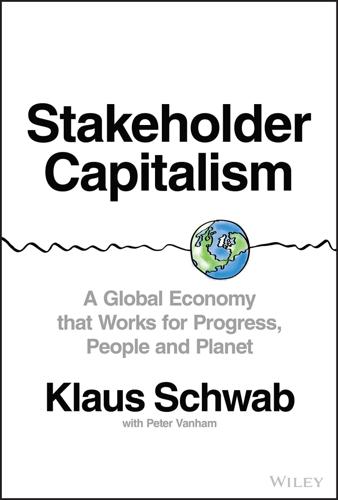
Stakeholder Capitalism: A Global Economy That Works for Progress, People and Planet
by
Klaus Schwab
and
Peter Vanham
Published 27 Jan 2021
See Government Nationalism and populism, 84 Natural Capital, 191 Natural capital (New Zealand Living Standards Framework), 235fig Natural resources “Earth Overshoot Day” (1970–2020), 48fig–49 oil, 12, 62–64 water, 49–50 See also Environmental issues Neo-liberalist government, 225 Neoliberalist ideology description of the, 249 shareholder capitalism of the, 171–172, 173 shareholder model of the, 13–14, 88, 213, 217–218 The Netherlands digital economy embraced by, 113–114 DSM and Philips of, 215 lowering debt burden through economic growth, 31 stakeholder concept adopted in, 174 Net-Zero Challenge, 162 “Never Again War” (First World War), 4 New Scientist, 220 New York City Freelancers Union in, 242–243 Independent Drivers Guild of, 238, 241–242 ride-hailing workers in, 238 See also United States New York Times Benioff's editorial on Proposition C referendum, 213 Carroll's analysis of Singapore model for health care in, 231–232 Friedman essay in the, 136 Leonhard on factual oligopolies of giant companies in the, 140 on New Zealand's effective COVID-19 response, 223 Schwab's globalization op–ed in the, 85 New Zealand creating prosperity, 249 effective response to COVID-19 by, 219–224, 236 female-led government leadership during COVID-19 pandemic, 224 Living Standards Framework (LSF) dashboard of, 222–223, 234–236 targeting social issues instead of GDP growth, 234–236 NGOs (nongovernmental organizations), 183, 197, 215, 237. See also specific NGO “Nie Wieder Krieg” (First World War), 4 Niger, 70 Nigeria, 27, 70 Nikkei Asian Review, 125, 233 9/11 terrorist attacks, 17, 18 Nooyi, Indra, 250 Northern Natural Gas division (InterNorth) [US], 218 O Occupy Wall Street movement (2011), 39, 40, 86 OECD (Organization for Economic Co-operation and Development) countries Better Life Index of, 190 efforts to create fair global tax rules for the Internet, 212 health disparities and life expectancy among, 43 as an international community stakeholder, 178 oil embargo by, 6 public health care spending in, 32 “Trade in the Digital Era” report (2019), 107 US with highest health care costs among, 227 working toward digital trade system, 197 Oil resources Chinese consumption (2020) of, 62–63 driving world economy, 12 imported to China, 64 OPEC control of (1970s), 12 See also Energy resources Okamoto, Geoffrey, 28 The one percent, 41–42 OPEC countries, oil embargo (1970s) of, 12 Open Society Initiative for Europe, 195 Opium Wars (China–Britain), 56 Organisation for European Economic Co-operation and Development (OEEC), 6 Osborne, Michael, 116 Otago University, 222 Oxford Internet Institute (UK), 242 P Pakistan gig workers of, 240, 243 Sheedi population in, 245–246 WHO on unsafe air (2019) in, 72 Palantir (US), 208 Palma, Stefania, 233 Paris Agreement (2015), 150, 165, 182, 183, 189, 198 PayPal (US), 95 Paytm (India), 69 Peace of Westphalia, 130 Pearl Harbor attack, 17 Peccei, Aurelio, 13, 47, 53, 150 Pegida movement (Germany), 88 Pension saving gap, 32–33 People at the center of the global stakeholder model, 180fig at the center of the simplified stakeholder model, 178fig–179 interconnectedness of all this planet's, 176–177 a post-COVID world and sustainable economy for, 251 as Stakeholder Capitalism Metrics pillar, 214 See also Planet; Prosperity; Stakeholder model People, Power and Profits Progressive Capitalism for an Age of Discontent (Stiglitz), 42 People's Party (US, 1892), 133 People's Republic of China.
…
He lives in Geneva with his wife, Valeria. Preface In early February 2020 I sat down in Geneva to discuss this book with a colleague, when the phone rang in my office. It turned out to be what you could call an AC/BC moment, when attention shifted from the time before COVID-19 to the reality that set in after COVID-19. Before that call, me and my colleagues had been preoccupied with the long-term challenges of the world economy, including climate change and inequality. I had reflected in depth on the global economic system built in the 75 years since the end of the Second World War, and the 50 years since the creation of the World Economic Forum.
…
I will present in what follows my observations on rising inequality, slowing growth, sputtering productivity, unsustainable levels of debt, accelerating climate change, deepening societal problems, and the lack of global cooperation on some of the world’s most pressing challenges. And as I hope you will agree, these observations are as valid after COVID-19 as they were before. However, one thing has changed in the interim period between “BC” and “AC”: there is, I notice, a greater understanding among the population, business leaders, and government that creating a better world would require working together. The idea that we need to rebuild differently post-COVID is widely shared. The sudden and all-encompassing impact of COVID-19 made us understand, much more than the gradual effects of climate change or increasing inequality, that an economic system driven by selfish and short-term interests is not sustainable.
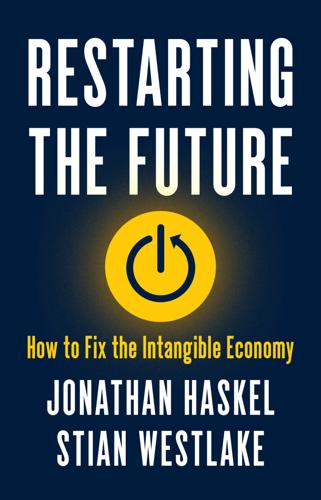
Restarting the Future: How to Fix the Intangible Economy
by
Jonathan Haskel
and
Stian Westlake
Published 4 Apr 2022
Like a lightning storm on a dark night, the COVID-19 crisis helps illuminates some of the long-standing problems we face, making hidden issues clear. It also provides an opportunity to put them right. Furthermore, COVID-19 illustrates the vital necessity of getting right the long-run features of the economy. Just as innovation in World War II built on the stock of basic research before the war, such as radar, COVID-19 vaccines are based on past discoveries, such as Katalin Kariko’s research into synthetic messenger RNA.1 And, of course, paying down the debt buildup created by COVID-19 will require faster economic growth.
…
First, we should cautiously weaken IP rights, rolling back patents in areas where their remit has grown—for example, by ending patents on software and straightforward business processes, reducing patent lengths in selected industries, requiring genuine disclosure of what makes underlying technologies work, and introducing prizes or patent buyouts for certain socially desirable inventions, such as antibiotics.32 When the world was racing to develop a COVID-19 vaccination, the economist Joshua Gans suggested using a prize for a COVID-19 vaccine to solve the commitment problem—namely, that the successful development of a COVID-19 vaccine runs the risk of having governments take control of the vaccine for less than the market price, a question that ended up being hotly debated in 2021.33 A precommitment to purchase such an important innovation may be optimal from the government’s point of view because a vaccine would not only save lives but also save the rest of the economy; but the government has to find a way of committing to rewarding the vaccine company for its sunk costs.
…
Now, thanks to globalisation, supply chains, and the internet, we seem to be increasingly exposed to the mere flap of a butterfly’s wings on another continent. For many, the ruinous human impact of COVID-19 offers a forewarning of the havoc that climate change will cause in the years to come. The combined actual impact of the pandemic with the expected impact of global warming illustrates the vulnerability of the economy to big, ecosystem-level threats. Both problems share another feature: the curious gap between knowing how to solve them and actually doing so. Countries from Taiwan to Thailand have shown that the right policies can help to reduce the number of COVID-19 deaths and the amount of economic damage. Likewise, detailed and credible plans for decarbonising the economy exist.
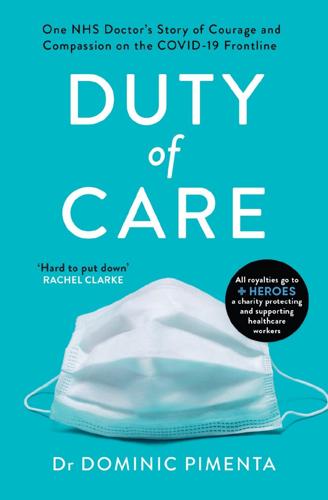
Duty of Care: One NHS Doctor's Story of the Covid-19 Crisis
by
Dr Dominic Pimenta
Published 2 Sep 2020
The first big clinical study of patients infected with coronavirus was published at the beginning of February. Out of the 138 patients admitted to Zhongnan Hospital in Wuhan, China, 4.3 per cent died. Shortly afterward, on 11 February, the World Health Organization (WHO) announced “COVID-19” as the name of the new disease. COVID-19 got its slightly robotic name to avoid the stigma surrounding some of its epidemic predecessors: Middle East Respiratory Virus, German Measles (not Measles), and Spanish Flu (not Spanish) – the latter being the last comparable pandemic, that of 1918, which I’d mentioned in my email to my dad.
…
And this took place in a world before planes, trains and automobiles – a world far less connected than today. I changed tubes and looked up other coronaviruses, wondering how we managed SARS back then. By comparison, it seemed that COVID-19 could spread easily without symptoms, while SARS patients were usually feverish when they were infectious, making them easy to isolate and quarantine. COVID-19 could also last on surfaces; one paper I found suggested it could live on metal, glass and plastic for up to nine days2 and still infect a person. So we were dealing with a virus that easily spread, was 20 times more deadly than flu, was harder to detect in people and could cling to surfaces all around us.
…
My hands dug deeper into my pockets, and, when I got off the tube, I picked up some hand sanitizer at the chemist. • • • The next few days were a sea change for me. My ears would prick up when I heard any mention of COVID-19. On my commutes and breaks I continued to hoover up studies and news. Twitter became a valuable resource of other doctors and experts sharing and debating the research. Among the obligatory memes and outrage, Twitter emerged as the world’s largest medical forum. The topic: SARS-CoV-2 (the virus), or COVID-19 (the disease). Through all these sources, the numbers I’d only just started to pay attention to painted a bleak picture. A picture I’d seen before.
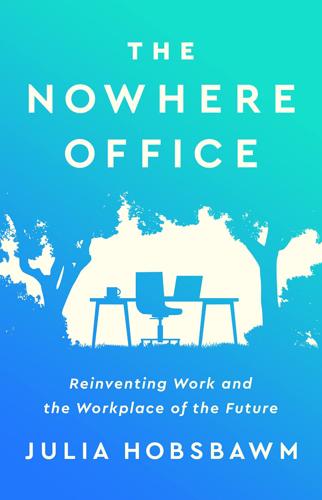
The Nowhere Office: Reinventing Work and the Workplace of the Future
by
Julia Hobsbawm
Published 11 Apr 2022
‘The Future of Jobs Report 2020’, World Economic Forum, 20 October 2020, https://www.weforum.org/reports/the-future-of-jobs-report-2020; see also McKinsey Global Institute, ‘The Future of Work After Covid-19’, 18 February 2021, https://www.mckinsey.com/featured-insights/future-of-work/the-future-of-work-after-covid-19; ‘More Than Half of Employees Globally Would Quit Their jobs if Not Provided Post-Pandemic Flexibility’, 21 May 2021, https://www.ey.com/en_ro/news/2021/05/ey-study--more-than-half-of-employees-globally-would-quit-their-; Department for Professional Employees, AFL-CIO, ‘The Professional and Technical Workforce: By the Numbers’, 2021 Fact Sheet, 27 September 2021, https://www.dpeaflcio.org/factsheets/the-professional-and-technical-workforce-by-the-numbers 5. See data from Office for National Statistics Coronavirus (Covid-19) Latest Insights: Work, https://www.ons.gov.uk/peoplepopulationandcommunity/healthandsocialcare/conditionsanddiseases/articles/coronaviruscovid19latestinsights/work; and the World Bank: Michael Weber and David Newhouse, ‘These Types of Workers Were Most Impacted by the Covid-19 Pandemic’, World Bank Blogs, 23 September 2021, https://blogs.worldbank.org/jobs/these-types-workers-were-most-impacted-covid-19-pandemic 6. See Leesman, ‘Workplace 2021: Appraising Future-Readiness’, https://www.leesmanindex.com/media/Leesman-Workplace-2021-Report-1.pdf; and McKinsey, ‘Future of Work’, https://www.mckinsey.com/featured-insights/future-of-work 7.
…
sh=388df2006442; see also Matthew DiLallo, ‘Commercial Real Estate Investing Statistics 2021’, Millionacres, 16 November 2020, https://www.millionacres.com/research/commercial-real-estate-investing-statistics/; and for specific prediction of 80 per cent occupancy see Erik Sherman, ‘Delta Disrupts Office Return Plans: What Now?’, GlobeSt.com, 13 September 2021, https://www.globest.com/2021/09/13/delta-disrupts-office-return-plans-what-now/?slreturn=20210901045552 7. McKinsey Global Institute, ‘The Future of Work After Covid-19’, 18 February 2021, https://www.mckinsey.com/featured-insights/future-of-work/the-future-of-work-after-covid-19 8. ‘Management, professional and related occupations’ according to the US bureau of Labor Statistics, May 2020, https://www.bls.gov/oes/current/oes_stru.htm Introduction 1. International Labour Organization, World Employment and Social Outlook Trends 2020, International Labour Office, Geneva, https://www.ilo.org/wcmsp5/groups/public/---dgreports/---dcomm/---publ/documents/publication/wcms_734455.pdf 2.
…
‘The Professional and Technical Workforce: By the Numbers’, 2021 Fact Sheet, Department for Professional Employees, 27 September 2021, https://www.dpeaflcio.org/factsheets/the-professional-and-technical-workforce-by-the-numbers 4. ‘The Future of Jobs Report 2020’, World Economic Forum, 20 October 2020, https://www.weforum.org/reports/the-future-of-jobs-report-2020; see also McKinsey Global Institute, ‘The Future of Work After Covid-19’, 18 February 2021, https://www.mckinsey.com/featured-insights/future-of-work/the-future-of-work-after-covid-19; ‘More Than Half of Employees Globally Would Quit Their jobs if Not Provided Post-Pandemic Flexibility’, 21 May 2021, https://www.ey.com/en_ro/news/2021/05/ey-study--more-than-half-of-employees-globally-would-quit-their-; Department for Professional Employees, AFL-CIO, ‘The Professional and Technical Workforce: By the Numbers’, 2021 Fact Sheet, 27 September 2021, https://www.dpeaflcio.org/factsheets/the-professional-and-technical-workforce-by-the-numbers 5.
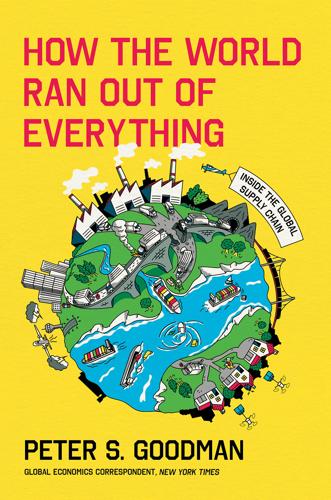
How the World Ran Out of Everything
by
Peter S. Goodman
Published 11 Jun 2024
See also China and manufacturing; container shipping industry as benefactor of international investors, 23–25, 30–33 Communist Party of, 25, 30–31, 66, 106, 284, 301 component assembly in, 42 container shipping development by, 101 COVID-19 pandemic and export reduction by, 41–44 COVID-19 pandemic origin in, 40–42 human rights in, 27–29, 31–34, 36, 287–88 special economic zones of, 25–26 Taiwan and military threat of, 32, 283–84 Tiananmen Square uprising, 27, 29 US pork exports to, 254 wages in, 171–72, 287 Zero COVID-19 policy of, 284, 342–43 China and manufacturing China as dominating force, 4, 11, 19–23, 33–38, 105 China’s factories in Mexico, 328–31, 343 COVID-19 pandemic procurement from, 82–89 intermediate goods shipped from (late twentieth century), 95 investors benefiting from, 4, 11, 19–23, 30–38 manufacturing dominance and diversification difficulty, 283–85, 291–95, 300 Mexico and Vietnam manufacturing cost vs., 347–48 Ningbo (city and port), 3, 39, 83–85, 89, 90, 102–3, 118–20, 158, 160 special economic zones, 25–26 US-China trade war and, 24, 42, 283, 285–91, 302, 330 WTO’s acceptance of China, 26–31, 34–37 China Container Industry Association, 106 China International Marine Containers, 106 China Ocean Shipping Company (Cosco), 101, 106, 153 China-US trade competition.
…
They fomented public alarm over potential disruption to the food supply as a way to justify the ultimate sacrifice of their workers—all in the service of boosting their profits. On April 18, 2020, a doctor at a hospital in the Texas panhandle emailed JBS to warn the company that its slaughterhouse in the nearby town of Cactus was the source of an intensifying wave of COVID-19. “One hundred percent of all COVID-19 patients8 we have in the hospital are either direct employees or family members of your employees,” the doctor wrote. “We believe there is a major outbreak of COVID-19 infection in your Cactus facility.” He added: “Your employees will get sick and may die if this factory continues to be open.” But the plant remained in operation. Ten days later, President Trump intervened to ensure that it would stay that way.
…
See China; individual names of US presidents Christopher, Warren, 33 Citigroup, 32 Clay, Jefferson, 103 Clinton, Bill, 27–29, 31–33, 274 Clinton, Hillary Rodham, 27, 28 Colfax, Schuyler, 199 Columbia Sportswear, 113, 292, 326–27, 347, 348 Commerce Department, US, 302 computer chips automobile industry’s need for, 41–44, 53–56 Biden on reshoring of, 301–6 COVID-19 pandemic and shortage of, 69, 79–81 demand during pandemic, 5–6 for F-150 (Ford), 53, 55, 290 manufacturing diversification sought for, 287 consultants, 65–81 automation encouraged by, 335–41 COVID-19 and medical supply shortages, 79–81 emergency preparedness and, 74–79 on flexible workforce, 67–68 on inventory planning algorithms, 68–71 Just in Time concept manipulated by, 59, 64, 65–67 as “Lean Taliban,” 71 McKinsey & Company, 65–70, 74–75, 81, 100, 170, 288, 334 on railroads and “traffic density,” 208 on reducing inventory to increase shareholder profit, 71–74 consumers baby formula shortage, 6, 9, 263–64 Biden on inflation, 127–28, 139–40, 141, 146, 151 Great Supply Chain Disruption and impact on, 5–9 meat shortages and, 248–49, 253–55, 257–58 shareholder profit vs. needs of, 73 (see also corporate profit) supply chain inflexibility and COVID-19 demand change, 87–89 toilet paper shortage, 43 waning demand for consumer goods, COVID-19 epidemic, 186 Consumers Union, 237 container shipping industry, 90–101, 102–20. See also dockworkers; dray operators businesses’ dependence on, 4 as cartel, 9, 108 Chinese expansion of (1990–2018), 33 containerization development and, 90–101 container production during COVID-19, 106–8 demand reduction, early pandemic, 86–87 deregulation and consolidation of, 108–14, 145 detention and demurrage charges, 129, 146–51 economic regulation of, 95–101 empty container problem of, 102–6, 118–20, 126–27, 146–51, 155, 159–60, 211 floor-loading vs. pallets, 119 industry size at time of COVID-19, 101 International Maritime Organization, 299 lucrative routes prioritized by, 105, 123–30, 133 (see also almond growers) megaships of, 112–14 Ocean Shipping Reform Act (2022), 139, 146–51 (see also Federal Maritime Commission) offsets and, 343 postpandemic recovery of, 342 prioritizing by, 110, 116, 123–30, 133–34, 207, 211, 344 seaports used for, 96–100 ship crews of, 153–54 shipping prices during COVID-19, 90–91, 102–4, 113–20 spot market of, 115 Suez Canal obstruction (2021) and, 4, 111–12 Cook, Tim, 69 Corning, 300 corporate profit and investors.

MegaThreats: Ten Dangerous Trends That Imperil Our Future, and How to Survive Them
by
Nouriel Roubini
Published 17 Oct 2022
The country continues to labor under about $300 billion in public debt, nearly equal to its entire economic output in 2020. And inflation was ravaging the country during and after the COVID-19 crisis with the inflation rate for 2022 expected to be over 50 percent. Increasingly, the entire world resembles Argentina. Public debt owed by governments, on top of private debt owed by corporations, financial institutions, and households, was soaring out of control before the gigantic tab for the COVID-19 pandemic response came due. In the United States, the $1.9 trillion COVID-19 relief package passed in 2021, plus two huge stimulus measures passed during the Trump presidency, added $4.5 trillion to its public debt since 2019.
…
Mounting evidence began suggesting as much in 2021 to anyone following the financial news. Inflation, the precursor to stagflation, flared up thanks to the COVID-19 shock, which was both a negative supply and demand shock. The COVID-19 recession led to massive and unprecedented monetary and fiscal stimulus in 2020–21 that, together with global supply chain bottlenecks, commodity price surges, and a shrinkage in labor supply, nudged inflation rates to levels not seen since the 1980s. Things got worse in 2022, when some observers hoped that the fading of the COVID-19 contagion would reduce the supply bottlenecks that cause inflation. Instead, the Russian invasion of Ukraine raised the price of commodities that Russia and Ukraine supply: oil and natural gas, industrial metals, fertilizers and agricultural goods.
…
Exotic financial securities that go by names like repurchase agreements (repos, for short) got locked out of capital markets. The Fed braced for a downturn in the usual way. It cut rates below 2 percent and resumed quantitative easing. Almost a year before the COVID-19 crisis changed everything, the Fed could not stomach even a modest dose of policy tightening. Instead, it stepped right back into a debt trap. COVID-19 was a shock no one could have predicted precisely, although the risk of some sort of pandemic was already on the minds of medical experts. In March 2020 the stock market plunged, millions of Americans lost their jobs, and the economy threatened to seize up, with every lender hoarding cash, and no money circulating to keep the economy moving.
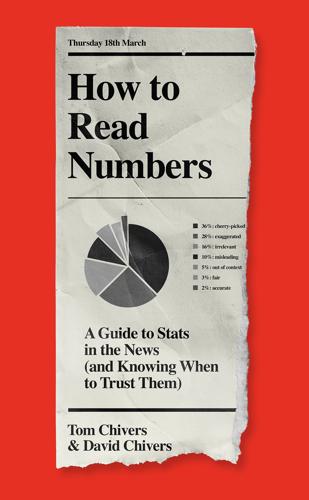
How to Read Numbers: A Guide to Statistics in the News (And Knowing When to Trust Them)
by
Tom Chivers
and
David Chivers
Published 18 Mar 2021
Zoe Zaczek, ‘Controversial idea to give “immunity passports” to Australians who have recovered from coronavirus – making them exempt from tough social distancing laws’, Daily Mail Australia, 2020 https://www.dailymail.co.uk/news/article-8205049/Controversial-idea-introduce-COVID-19-immunity-passports-avoid-long-term-Australian-lockdown.html 2. Kate Proctor, Ian Sample and Philip Oltermann, ‘“Immunity passports” could speed up return to work after Covid-19’, the Guardian, 2020 https://www.theguardian.com/world/2020/mar/30/immunity-passports-could-speed-up-return-to-work-after-covid-19 3. James X. Li, FDA, 1 April 2020 https://www.fda.gov/media/136622/download 4. Nelson, H. D., Pappas, M., Cantor, A., Griffin, J., Daeges, M. and Humphrey, L., ‘Harms of breast cancer screening: Systematic review to update the 2009 U.S.
…
Our news increasingly comes in number form: police-reported crimes go up and down; a nation’s economy shrinks or grows; the latest figures on deaths and cases from Covid-19 are released. In order to understand the world around us, we may not need to be good at maths, but we do need to understand how numbers are made, how they’re used and how they can go wrong, because otherwise we’ll make bad decisions, as individuals and as a society. Sometimes, it’s fairly clear how misunderstanding the statistics could lead to bad decisions: if we don’t know how many people have Covid-19, for instance, then we can’t judge the appropriate response. In others – such as those we’ll discuss elsewhere in this book, cases like whether or not bacon causes cancer, or whether or not drinking fizzy drinks makes you violent – it might not be so obvious.
…
In the first half of 2020, as the world was flailing around for something – anything – that might treat or prevent Covid-19, scientific papers and preprints (early versions of scientific papers, which have not yet gone through peer review) filled the internet. One of them looked at the use of an antimalarial drug hydroxychloroquine.4 It was a controlled trial, like the swearing-makes-you-stronger study (although not randomised), and it got sufficient attention that one Donald J. Trump cited it in a tweet.5 The study found that ‘hydroxychloroquine treatment is significantly associated with viral load reduction/disappearance in COVID-19 patients.’ It looked at a total of forty-two patients: twenty-six in the intervention group, who were given hydroxychloroquine; sixteen in the control, who weren’t.
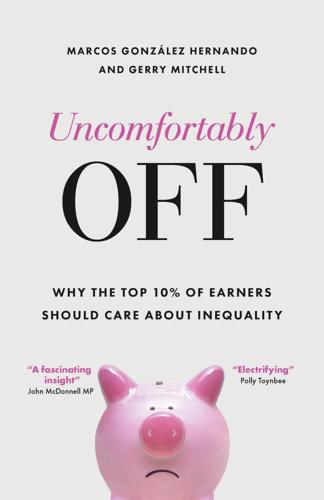
Uncomfortably Off: Why the Top 10% of Earners Should Care About Inequality
by
Marcos González Hernando
and
Gerry Mitchell
Published 23 May 2023
The Centre for Attention Studies. King’s College London. www.kcl.ac.uk/policy-institute/assets/ how-people-focus-and-live-in-the-modern-informationenvironment.pdf Dunn, P., Allen, L., Cameron, G., Malhotra, A. and Alderwick, H. (2020) COVID-19 policy tracker: A timeline of national policy and health system responses to COVID-19 in England. www. health.org.uk/news-and-comment/charts-and-infographics/ covid-19-policy-tracker Dunne, D. and Gabbatiss, J. (2022) Factcheck: Why fracking is not the answer to the UK’s energy crisis. 9 September. www. carbonbrief.org/factcheck-why-fracking-is-not-the-answer-tothe-uks-energy-crisis Durose, O. (2022) Suburban socialism (or barbarism).
…
Research Briefing 7483. 15 February. https://commonslibrary.parliament. uk/research-briefings/cbp-7483 House of Commons Library (2022b) Public spending during the Covid-19 pandemic. Research Briefing 09309. 29 March. https://researchbriefings.files.parliament.uk/documents/CBP9309/CBP-9309.pdf Hunt, T. (2021) COVID-19 and the work of trade unions: new challenges and new responses. Unions21. https://unions21. org.uk/files/Unions-21-Report-COVID-19-and-the-workof-unions.pdf IFS (Institute for Fiscal Studies) (2021) Comparisons of school spending per pupil across the UK. https://ifs.org.uk/articles/ comparisons-school-spending-pupil-across-uk IFS TaxLab (2021) What does the government spend money on?
…
International onlookers, such as The New York Times, wrote about the corrosive impact of Brexit on British politics and ‘the readiness of the political right in particular to lie and peddle obvious untruths, to place their party politics and party unity over and above the national interest’.6 102 Business class tickets for a sinking ship COVID-19 The UK has one of the worst Covid records in the world. The country was ill-prepared for the pandemic after more than a decade of disinvestment and privatisation of public infrastructure. Adult social care was particularly vulnerable. Despite being warned, the government downplayed the importance of care provision at the beginning of the pandemic, neglecting to supply it with further funding. The first confirmed COVID-19 cases in the UK were on 31 January 2020.7 On 25 February, Public Health England issued guidance for social care settings, advising that ‘it is […] very unlikely that anyone receiving care in a care home or the community will become infected’ and ‘there is no need to do anything differently in any care setting at present’.8 From an initial £5 billion emergency response fund, £1.6 billion was allocated to local authorities, but they were not legally required to spend that money on social care, and it was therefore not always received by the sector.
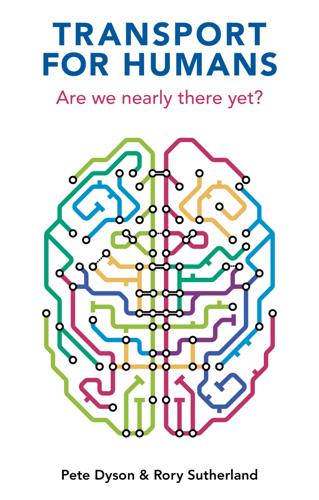
Transport for Humans: Are We Nearly There Yet?
by
Pete Dyson
and
Rory Sutherland
Published 15 Jan 2021
Transport is blind to our rapidly evolving online habits: in this case, we won’t get a clear picture of whether fleets of delivery vans are inefficiently servicing a small group of enthusiastic users, or whether they are efficiently substituting the need for lots of people to trudge around shops. An emerging finding from UK academic research suggests that the boom in online grocery shopping during Covid-19 has been largely attributable to people who were already doing it before the pandemic switching to doing it a lot more. How this splits by region and demographic is unclear.6 The data we have frames the conversation, while the data we need often goes unnoticed. * * * 6 COVID-19 TRANSAS. 2021. At a crossroads: travel adaptations during Covid-19 restrictions and where next? Report (https://covid19transas.org/category/reports/). Table 6. Behavioural adaptations requiring careful attention.
…
What is only a mild disincentive to a wealthy motorist may be disproportionately punitive to someone on low, or no, income. 10 Department for Transport. 2020. Travel behaviour, attitudes and social impact of COVID-19. UK Government website, 23 July (www.gov.uk/government/publications/covid-19-travel-behaviour-during-the-lockdown). 11 Department for Transport. 2021. All change? Travel tracker – wave 4 report. Report (www.gov.uk/government/publications/covid-19-travel-behaviour-during-the-lockdown). 12 Phase 1 cuts journey times from 2 hours and 7 minutes to 1 hour and 40 minutes. Phase 2a will bring it down again, to 1 hour and 30 minutes, and then Phase 2b will bring it down further, to 1 hour and 11 minutes. 13 Department for Transport. 2015.
…
Policy Paper, UK Governement (www.gov.uk/government/publications/inclusive-transport-strategy/the-inclusive-transport-strategy-summary-of-progress). 14 Based on quantitative and qualitive research by Opinium conducted for Scope. See C. Smith and S. Symonds. 2019. Travel fair. Report, Scope (www.scope.org.uk/scope/media/files/campaigns/travel-fair-report.pdf). Experiences during Covid-19 are even tougher and more complex: see I. Eskytė, A. Lawson, M. Orchard and E. Andrews. 2020. Out on the streets – crisis, opportunity and disabled people in the era of Covid-19: reflections from the UK. Alter 14(4), 329–336. 15 L. Laker. 2020. The way we design transport is not equal. Smart Transport 6(May), 58–63 (https://smarttransportpub.blob.core.windows.net/web/1/root/insight-inclusivity-ongoing-series-physical-disability-laura-laker-low-res-pdf.pdf). 16 L.

Reset
by
Ronald J. Deibert
Published 14 Aug 2020
Retrieved from https://thenarwhal.ca/almost-everything-we-know-about-e-waste-is-wrong/ The internet appeared to be holding up, in spite of usage surging: Beech, M. (2020, March 25). COVID-19 pushes up internet use 70% and streaming more than 12%, first figures reveal. Retrieved from https://www.forbes.com/sites/markbeech/2020/03/25/covid-19-pushes-up-internet-use-70-streaming-more-than-12-first-figures-reveal/#63dcee3a3104 Air traffic, automobile, and other forms of fossil-fuelled transportation plummeted: Henriques, M. (2020, March 27). Will Covid-19 have a lasting impact on the environment? Retrieved from https://www.bbc.com/future/article/20200326-covid-19-the-impact-of-coronavirus-on-the-environment Americans waste up to $19 billion annually in electricity costs: University of Utah. (2016, October 25).
…
Retrieved from https://arxiv.org/abs/1909.08740 They even issued a rare joint statement: Statt, N. (2020, March 16). Major tech platforms say they’re ‘jointly combating fraud and misinformation’ about COVID-19. Retrieved from https://www.theverge.com/2020/3/16/21182726/coronavirus-covid-19-facebook-google-twitter-youtube-joint-effort-misinformation-fraud “Platforms should be forced to earn the kudos they are getting”: Douek, E. (2020, March 25). COVID-19 and social media content moderation. Retrieved from https://www.lawfareblog.com/covid-19-and-social-media-content-moderation Mandatory or poorly constructed measures could be perverted as an instrument of authoritarian control: Lim, G., & Donovan, J. (2020, April 3).
…
VV., Understanding and addressing the disinformation ecosystem, 5-12. The WHO went so far as to label COVID-19 an “infodemic”: World Health Organization. (2020, February 2). Novel coronavirus (2019-nCoV): Situation report 13. Retrieved from https://www.who.int/docs/default-source/coronaviruse/situation-reports/20200202-sitrep-13-ncov-v3.pdf. See also Chen, E., Lerman, K., & Ferrara, E. (2020). Covid-19: The first public coronavirus twitter dataset. arXiv preprint arXiv:2003.07372; Abrahams, A., & Aljizawi, N. Middle East Twitter bots and the covid-19 infodemic. Retrieved from http://workshop-proceedings.icwsm.org/pdf/2020_17.pdf Russian propaganda outlets spread disinformation: Breland, A. (2020, February 3).
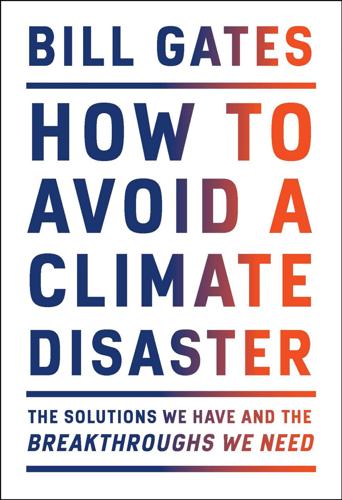
How to Avoid a Climate Disaster: The Solutions We Have and the Breakthroughs We Need
by
Bill Gates
Published 16 Feb 2021
The same study estimated that by 2080 lower crop yields would cause between 2 percent and 10 percent of adults in Mexico to try to cross the border into the United States. Let’s put all this into terms that everyone who is experiencing the COVID-19 pandemic can relate to. If you want to understand the kind of damage that climate change will inflict, look at COVID-19 and then imagine spreading the pain out over a much longer period of time. The loss of life and economic misery caused by this pandemic are on par with what will happen regularly if we do not eliminate the world’s carbon emissions. I’ll start with the loss of life. How many people will be killed by COVID-19 versus by climate change? Because we want to compare events that happen at different points in time—the pandemic in 2020 and climate change in, say, 2030—and the global population will change in that time, we can’t compare the absolute numbers of deaths.
…
Second, we need to let science—actually, many different sciences—guide our efforts. In the case of COVID-19, we are looking to biology, virology, and pharmacology, as well as political science and economics—after all, deciding how to distribute vaccines equitably is an inherently political act. And just as epidemiology tells us about the risks of COVID-19 but not how to stop it, climate science tells us why we need to change course but not how to do it. For that, we must draw on engineering, physics, environmental science, economics, and more. Third, our solutions should meet the needs of the people who are hardest hit. With COVID-19, the people who suffer most are the ones who have the fewest options—working from home, for example, or taking time off to care for themselves or their loved ones.
…
Chapter 12: What Each of Us Can Do “When we have a fact-based worldview”: Hans Rosling, Factfulness: Ten Reasons We’re Wrong About the World—and Why Things Are Better than You Think, with Ola Rosling and Anna Rosling Rönnlund (New York: Flatiron Books, 2018), 255. Afterword: Climate Change and COVID-19 Black people and Latinx people: “Race, Ethnicity, and Age Trends in Persons Who Died from COVID-19—United States, May–August 2020,” U.S. Centers for Disease Control https://www.cdc.gov. Among recipients of Medicare: “Preliminary Medicare COVID-19 Data Snapshot,” Centers for Medicare and Medicaid Services, https://www.cms.gov. A study by the Institute for Health Metrics and Evaluation: “Goalkeepers Report 2020,” https://www.gatesfoundation.org.

Generations: The Real Differences Between Gen Z, Millennials, Gen X, Boomers, and Silents—and What They Mean for America's Future
by
Jean M. Twenge
Published 25 Apr 2023
They married young, which had its own challenges but led them to have children and value family, which are key protective factors against mental distress, especially in older adulthood. Due to improvements in medical care, Silents were also less likely to be widowed as older adults than Greatests. But then, in March 2020, the COVID-19 pandemic hit. It came at a particularly bad time for Silents. As the bulk of the oldest senior citizens, Silents were the most vulnerable: More than half of deaths from COVID-19 in 2020–2021 were among people 75 years and older. To stay safe, many older people chose not to leave their homes except when absolutely necessary. Some did not see their children or grandchildren in person for a year or more—especially difficult for a generation so focused on family.
…
Another label is Zoomers, which references the video-chat platform that so many used for school and work during the COVID-19 pandemic and beyond. Whatever you call them, they are different. Smartphones and widespread social media use have meant Gen Z conducts more of their social interaction online and less in the “meatworld” of in-person interaction. Older Gen Z’ers spent their childhoods in a severe recession, their adolescence in a time of robust economic growth but growing political division, and their young adulthood during the COVID-19 pandemic, while younger Gen Z’ers barely remember a pre-Trump world and grappled with online school in 2020 and 2021.
…
Figure 6.16: Percent of U.S. 12th graders engaging in adult activities, 1976–2021 Source: Monitoring the Future and Youth Risk Behavior Surveillance System Notes: The 2020 data were collected in February and early March 2020, before schools shut down during the COVID-19 pandemic. 2021 data on sex are from the Adolescent Behaviors and Experiences survey, fielded by the CDC in early to mid-2021 as a substitute for the YRBSS survey during the pandemic. Most 12th graders were Gen Z after 2013. Figure 6.17: Percent of U.S. 8th or 9th graders engaging in adult activities, 1991–2021 Source: Monitoring the Future and Youth Risk Behavior Surveillance System Notes: The 2020 data were collected in February and early March 2020, before schools shut down during the COVID-19 pandemic. Sexual intercourse data are from 9th graders in the Adolescent Behaviors and Experiences survey, fielded by the CDC in early to mid-2021 as a substitute for the YRBSS survey during the pandemic.

Automation and the Future of Work
by
Aaron Benanav
Published 3 Nov 2020
The low demand for labor in the wider economy finds its true source in the slackening pace of overall economic growth, associated with the running down of the manufacturing growth engine and the failure to find an alternative to it. The tendency toward economic stagnation will only intensify in the COVID-19 pandemic era. It is for this reason that predictions of a coming wave of pandemic-induced automation ring so hollow. They mistake the technical feasibility of automation (itself more of a shaky hypothesis than a proven result) for its economic viability. Undeniably, some firms are investing in robotics in response to COVID-19. For example, Walmart has purchased self-driving, inventory scanning, and aisle cleaning robots for its US stores. Expecting online ordering to continue to expand exponentially, some retail shops are testing out—but not yet widely implementing—robotics assisted micro-fulfillment centers, to help pickers assemble orders more quickly.49 However, these are likely to be exceptions to the rule for the foreseeable future.
…
Instead, it follows from decades of overcapacity and under-investment, which ran down the economic growth engine of the world economy (and did so at a time when global labor forces were still expanding). Unless there is a drastic shift in state policy, the COVID-19 recession will only intensify these trends in the years to come. Postindustrial Doldrums Unemployment levels have risen substantially due to the COVID-19 recession; however, given the shifts in labor-market regimes documented above, this unemployment will likely resolve itself, over time, into a variety of forms of underemployment.31 Unable to remain out of work for long, people will find that they have no choice but to take jobs offering lower-than-normal wages or worse-than-normal working conditions.
…
Banks, Look to Windward, Pocket Books, 2000; as well as his “Notes on the Culture,” collected in Banks, State of the Art, Night Shade Books, 2004. 10 See, respectively, Claire Cain Miller, “A Darker Theme in Obama’s Farewell: Automation Can Divide Us,” New York Times, January 12, 2017; Kessler, “Zuckerberg’s Opiate For the Masses”; Eduardo Porter, “Jobs Threatened by Machines: A Once ‘Stupid’ Concern Gains Respect,” New York Times, June 7, 2016; Kevin Roose, “His 2020 Campaign Message: The Robots Are Coming,” New York Times, February 12, 2018; Andrew Yang, The War on Normal People: The Truth about America’s Disappearing Jobs and Why Universal Basic Income Is Our Future, Hachette, 2018; Andy Stern, Raising the Floor: How a Universal Basic Income Can Renew Our Economy and Rebuild the American Dream, PublicAffairs, 2016. 11 Nick Srnicek and Alex Williams, Inventing the Future: Postcapitalism and a World without Work, Verso, 2015, p. 112. 12 Peter Frase, Four Futures: Life after Capitalism, Verso, 2016; Manu Saadia, Trekonomics: The Economics of Star Trek, Inkshares, 2016. 13 Srnicek and Williams, Inventing the Future, p. 127. 14 Aaron Bastani, Fully Automated Luxury Communism: A Manifesto, Verso, 2019. 15 Martin Ford argues that the pandemic will “change consumer preference and really open up new opportunities for automation,” as quoted in Zoe Thomas, “Coronavirus: Will Covid-19 speed up the use of robots to replace human workers?,” BBC News, April 19, 2020. See also Michael Corkery and David Gelles, “Robots Welcome to Take Over, as Pandemic Accelerates Automation,” New York Times, April 20, 2020; Carl Benedikt Frey, “Covid-19 will only increase automation anxiety,” Financial Times, April 21, 2020. For a counterpoint, see Matt Simon, “If Robots Steal So Many Jobs, Why Aren’t They Saving Us Now?

Off the Edge: Flat Earthers, Conspiracy Culture, and Why People Will Believe Anything
by
Kelly Weill
Published 22 Feb 2022
He’s Retweeting Its Followers,” Politico, July 12, 2020, https://www.politico.com/news/2020/07/12/trump-tweeting-qanon-followers-357238. 196 “assign blame for distressing events” Van Prooijen, Psychology of Conspiracy Theories, 22. 197 leave the European Union Viren Swami et al., “To Brexit or Not to Brexit: The Roles of Islamophobia, Conspiracist Beliefs, and Integrated Threat in Voting Intentions for the United Kingdom European Union Membership Referendum,” British Journal of Psychology 109, no. 1 (2018): 156–79, https://doi.org/10.1111/bjop.12252. 197 “the truth” about immigration “Brexit and Trump Voters More Likely to Believe in Conspiracy Theories, Survey Study Shows,” University of Cambridge, November 23, 2018, www.cam.ac.uk/research/news/brexit-and-trump-voters-more-likely-to-believe-in-conspiracy-theories-survey-study-shows. 197 definitely or probably true Katherine Schaeffer, “A Look at the Americans Who Believe There Is Some Truth to the Conspiracy Theory That COVID-19 Was Planned,” Pew Research Center, July 24, 2020, www.pewresearch.org/fact-tank/2020/07/24/a-look-at-the-americans-who-believe-there-is-some-truth-to-the-conspiracy-theory-that-covid-19-was-planned. 197 nearly three million COVID-19 truthers “Dashboard: New Far-Right Groups on Facebook Protesting COVID-19 Stay-at-Home Directives,” Institute for Research and Education on Human Rights, August 6, 2020, www.irehr.org/covid19updates/dashboard-new-far-right-groups-on-facebook-protesting-stay-at-home-directives. 197 harassment from QAnon followers Ari Sen and Brandy Zadrozny, “QAnon Groups Have Millions of Members on Facebook, Documents Show,” NBC News, August 1, 2020, www.nbcnews.com/tech/tech-news/qanon-groups-have-millions-members-facebook-documents-show-n1236317. 197 heard of QAnon “5 Facts about the QAnon Conspiracy Theories,” November 16, 2020, Pew Research Center, https://www.pewresearch.org/fact-tank/2020/11/16/5-facts-about-the-qanon-conspiracy-theories. 198 criticism of the governor Craig Mauger, “President Trump Tweets on Kidnapping Plot, Criticizes Gov.
…
And because of Facebook’s algorithmic rabbit hole, COVID-19 misinformation sucked some Plandemic viewers into more extreme beliefs. Ann-Marie, a newly converted QAnon follower, told me she’d only learned about the far-right theory after binge-watching online videos about COVID-19 hoaxes. “If it wasn’t for COVID19, I would have been just continuing to tell my kids about the ‘stuff’ I was finding,” Ann-Marie told me of her tentative pre-COVID ventures on the conspiracy internet. Without the virus, she said she “wouldn’t have found out about QAnon.” One COVID-19 hoax popular in Flat Earth Facebook circles wrongly claimed that truthers could exempt themselves from wearing protective face masks if they lied about having a disability.
…
The clip went so viral online, with one mocking tweet racking up nearly ten million views, that Lewis deleted her social media accounts. Ironically, Lewis was among those in greatest need of protection from COVID-19. She had lupus, an autoimmune disease that places people at heightened risk of serious COVID-19 complications. Lewis’s battle with lupus had helped lead her to Flat Earth, she told me in late 2019, shortly before COVID-19’s outbreak. As a child, she’d longed to be an astronaut. She wanted to be the first woman to walk on the moon. Her dream led her to enroll in the prestigious US Military Academy in West Point, New York.
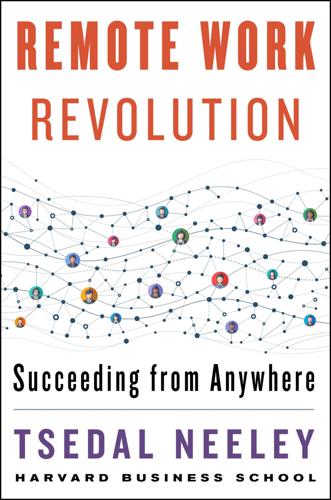
Remote Work Revolution: Succeeding From Anywhere
by
Tsedal Neeley
Published 14 Oct 2021
Like other global leaders entering an emergent market, she was bound to work in conditions rife with ambiguity. Seven years later, she would work in even greater ambiguity—as well as volatility, uncertainty, and complexity—when the worldwide pandemic caused by COVID-19 blew open the world. I will describe how she responded a little later. We don’t know what the long-term effects of COVID-19 will be on organizations, industries, and societies, although we do know that the world has profoundly changed. During the pandemic, every government leader had to make decisions that weigh the losses and gains of quarantine versus business as usual while not being able to accurately predict the consequences of whatever strategy they designate.
…
Accurate and effective communication channels between official agencies, medical administrators, and personnel were already active; testing and tracing technology was in place; and people understood the purpose of stay-at-home precautions. The population remained relatively unscathed because leadership at many levels was able to accurately frame and anticipate the 2020 COVID-19 health crisis by building a coordinated, country-wide task force. Singapore’s leaders clicked into and framed the risks they saw on the horizon. GENERATE SOLUTIONS WITH DIVERSE MINDS The crisis unfolding in 2013 around Molinas in Turkey, while not as volatile, complex, or far-reaching as the COVID-19 pandemic (although she too would have to reckon with the events of 2020), is more indicative of the crises that global leaders face on a regular basis.
…
Webster, “‘We Were Not Given a Warning’: New Orleans Mayor Says Federal Inaction Informed Mardi Gras Decision Ahead of Covid-19 Outbreak,” Washington Post, March 27, 2020, https://www.washingtonpost.com/national/coronavirus-new-orleans-mardi-gras/2020/03/26/8c8e23c8-6fbb-11ea-b148-e4ce3fbd85b5_story.html. when leaders don’t heed warning signals: Erika Hayes James and Lynn Perry Wooten, “Leadership as (Un)usual: How to Display Competence in Times of Crisis,” Organizational Dynamics 34, no. 2 (2005): 141–52. leadership at many levels: Li Yang Hsu and Min-Han Tan, “What Singapore Can Teach the U.S. About Responding to Covid-19,” Stat, March 23, 2020, https://www.statnews.com/2020/03/23/singapore-teach-united-states-about-covid-19-response/.
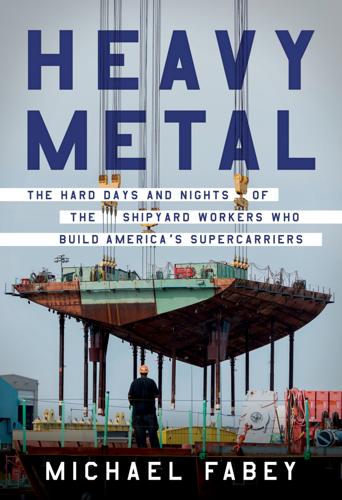
Heavy Metal: The Hard Days and Nights of the Shipyard Workers Who Build America's Supercarriers
by
Michael Fabey
Published 13 Jun 2022
The concern that everyone at the yard still showed for him and his wife truly humbled him, just as he and Sheila remained dumbfounded by those who continued to deny the existence of the virus or its impacts. They shook their heads when they saw people without masks in public. People seemed to think of Covid-19 as just another type of flu—catch it, quarantine, and get on with your life. They experienced firsthand how such an untrue mind-set threatened everyone. They lost a couple of friends and a family member to Covid-19 over the summer. Warren still got winded and endured dizzy spells, but he survived. Like Warren Outlaw, other steelworkers kept away from the yard as Covid-19 continued to ravage the region, the state, and the country, and not only because they worried about the virus.
…
To get to the waterfront, shipbuilders queued at the gates, and once inside, they needed to access tools, food, and other daily resources, creating other points to gather and wait. To help develop action plans to address those needs, while keeping the yard operational and Covid-19 compliant, on April 2, yard president Jennifer Boykin established a Covid-19 Crisis Action Group (CAG) of team leaders from all over the yard to work on recommendations on how to safely and efficiently operate during the pandemic. A new vice-presidential steering committee considered recommendations and sent ones it approved to Boykin.
…
Being stuck in his bed, staring around the room—the towels stuck under the door to keep his germs from getting out—he felt himself going nuts. A nurse brought him his breakfast, lunch, and dinner. Later, he made it a point to tell those in the yard about Covid-19. Devastating. Wash your hands, he told them, and wear your mask, because you can help yourself, as well as another person. “I want you to picture this,” he said. “A little kid, two, three, four, five, six years old. And you come home because you didn’t want to wear your mask and they get Covid-19. Can you imagine a child that’s two or three years old, can’t breathe? And let’s say they don’t make it. For the rest of your life, you’re gonna beat yourself up.
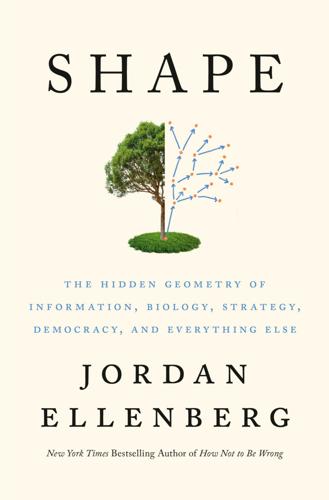
Shape: The Hidden Geometry of Information, Biology, Strategy, Democracy, and Everything Else
by
Jordan Ellenberg
Published 14 May 2021
As of July 2020, confirmed cases of COVID-19 in the U.S. broke down along racial lines like this: 34.6% Hispanic 35.3% non-Hispanic white 20.8% Black The distribution of deaths from COVID-19 looked different. 17.7% Hispanic 49.5% non-Hispanic white 22.9% Black These numbers are startling on their face if you know anything about health disparities in the U.S., which in almost all cases involve differentially bad health outcomes for people of color. But white people, who made up only 35% of all confirmed COVID-19 cases, made up 49.5% of all COVID-19 deaths. So among the white subpopulation, a COVID-19 case was substantially more likely to be fatal than a COVID-19 case in the general population. Why? The answer, as I learned from mathematician and writer Dana Mackenzie, is age. White people with COVID-19 are more likely to die of COVID-19 because old people with COVID-19 are more likely to die of COVID-19, and white people, in the aggregate, are old. If you break cases down by age groups, things look really different.
…
His argument on the random walk was meant to show that, after the number of mosquitoes in a region had been reduced, it would take quite some time for enough mosquitoes to wander into the area to push it back over the epidemic threshold. That’s a key idea for the battle against COVID-19, too. We don’t need to eliminate every transmission of the disease, which is a good thing, since that’s impossible. Epidemic control is not about perfectionism. 77 TRILLION PEOPLE WILL CATCH SMALLPOX NEXT YEAR In the spring of 2020, at the outset of the COVID-19 pandemic in the United States, the disease was clearly tracing out the kind of geometric progression you don’t want to see. Cases of COVID-19 were growing by about 7% every day. That meant every week the cases were getting multiplied by 1.07 seven times, which amounts to a 60% increase.
…
If you come into a room with a toggle light switch and the light isn’t how you left it, you know someone has flipped the switch; but the reason you know that is that the state of the light tells you it’s been flipped an odd number of times. WHITE PEOPLE ARE OLD Not everyone faces identical risks from COVID-19. The risk of serious symptoms, hospitalization, and death is much higher among older people, much lower among the young and middle-aged. In the United States, there are racial and ethnic differences, too. As of July 2020, confirmed cases of COVID-19 in the U.S. broke down along racial lines like this: 34.6% Hispanic 35.3% non-Hispanic white 20.8% Black The distribution of deaths from COVID-19 looked different. 17.7% Hispanic 49.5% non-Hispanic white 22.9% Black These numbers are startling on their face if you know anything about health disparities in the U.S., which in almost all cases involve differentially bad health outcomes for people of color.

Head, Hand, Heart: Why Intelligence Is Over-Rewarded, Manual Workers Matter, and Caregivers Deserve More Respect
by
David Goodhart
Published 7 Sep 2020
Socializing the costs would add an extra 1 percent to UK public spending.47 But whatever happens to the funding of the system, the status of the people who work in it will also remain an issue if the United Kingdom and the United States, and other rich societies are going to avoid an even more intense recruitment crisis into these jobs. The longer term response to the Covid-19 crisis will surely be not only to build more emergency capacity into our health services but also to raise the status and pay of the Cinderella parts of the care economy, above all elderly care. In much of Europe care homes for the elderly reported a disproportionate number of Covid-19 deaths as protective measures focused on health systems. All reputable surveys of future skill requirements in rich countries focus on what Adair Turner calls the “Hi-Tech, Hi-Touch” combination, meaning higher-order cognitive and technical skills on the one hand and interpersonal skills in education and health on the other—sometimes shortened to “coders and carers.”
…
Provide your email again so we can register this ebook and send you more of what you like to read. You will continue to receive exclusive offers in your inbox. To my children, in the hope that they might finally read something I have written Preface I wrote most of this book before the Covid-19 crisis struck. Yet the crisis and its likely consequences have a direct bearing on its main theme: the lop-sided distribution of status that has become such a feature of rich societies in recent decades. For one thing it has made the unthinkable thinkable. If we can close down society and economic life for months and collectively underwrite at least some of the cost, then it becomes a little bit easier to imagine that we might adjust the status balance in our educationally stratified, postindustrial societies by a few degrees.
…
In a partial inversion of the status hierarchy, many of the truly key workers turned out to be people who did not go to college and were less adept at manipulating information. Not all are hand workers in a literal sense, nor the factory workers of old, but all do essential jobs, and in the United Kingdom and United States at the height of the crisis it was males, especially older ethnic minority males, in those frontline jobs who were twice as likely to die from Covid-19 as the wider working population. The pause for reflection that the lockdown imposed on normally hectic, achievement-orientated societies and individuals may leave the deepest traces of all. Many of us, perhaps especially the privileged and highly educated, have been forced to reconsider what we value most deeply and, having looked up from our busy, mobile, existences, often met a neighbor for the first time and actually felt rooted in a physical community.

Net Zero: How We Stop Causing Climate Change
by
Dieter Helm
Published 2 Sep 2020
acid rain 25, 194 Africa xiv, xv, 2, 25, 30, 38, 44, 45, 47, 48, 51, 137, 229 agriculture 2, 6, 12, 13, 14, 23, 35–6, 43, 44–5, 70, 76, 86, 87–8, 95, 100, 102, 109, 116, 146–7, 149, 159, 163–80, 181, 183, 192, 197, 198, 206, 220 baseline, the 164–8 biodiversity loss and 2, 5, 100, 164, 165, 168, 169, 171, 172, 174, 180 biofuels and 197–8 carbon emissions and 2, 12, 13, 35–6, 76–7, 146–7, 163–80 carbon price and 167–70, 171, 172, 173, 180 China and 28–9, 35, 45, 180 economics of 76, 165, 166–7, 171, 174 electricity and 13, 166, 168, 174, 178, 180 fertiliser use see fertiliser lobby 14, 110, 164, 165, 169, 170, 197 methane emissions 23, 84, 177, 178, 179 net gain and 172–4 net value of UK 76, 166 new technologies/indoor farming 87–8, 174–9, 180, 213 peat bogs and 2, 179 pesticide use see pesticides petrochemicals and 166 polluter-pays principle and 76, 168–70, 172, 173 pollution 36, 86, 163, 165–6, 168–70, 172, 173, 177–8, 230 public goods, agricultural 170–4, 180 sequestering carbon and 12, 95, 163, 166, 168, 169, 170, 171, 172, 173–4, 177, 179, 180 soils and 2, 146, 163, 164, 165, 166, 168, 169, 171, 172, 175, 179 subsidies 14, 76, 102, 109, 116, 164, 165, 166, 167, 169, 170, 172, 180, 228 25 Year Plan and 179–80 Agriculture Bill (2018), UK 170 air conditioning 135–6, 224, 233 air quality xiii, 13, 25, 46, 52, 61, 70, 135, 153, 177, 180, 201, 216, 230, 232 air transport 3–4, 6, 11, 13, 22, 50, 53, 73, 87, 88, 92, 107, 125, 128, 129, 132, 133, 134, 149, 156–7, 186, 195, 201, 203–5 aluminium 7, 117 Amazon rainforest 2, 34, 35, 95, 145, 149–50, 151, 155, 229, 230 ammonia 35, 137, 191 anaerobic digesters 35, 165, 230 animal welfare 167, 177 antibiotics 93, 165, 174 Arctic 26, 46, 114, 178 artificial intelligence (AI) 32, 175, 220, 231 autonomous vehicles 13, 129, 132, 175, 189–90, 231 Balkans 137–8 Bank of England 121 batteries 6, 31, 131, 135, 141, 183, 184, 185–90, 191, 199, 204, 213, 214, 219, 220, 221, 225, 231 beef 5, 95, 116, 117, 167, 230 Berlin, Isaiah 104 big 5 polluter products 117–18, 120 bin Salman, Mohammad 27 biocrops 36 biodiversity xiv, 2, 5, 12, 13, 28, 35, 51, 76, 94, 100, 148, 149, 152, 153, 158, 159, 164, 165, 168, 169–70, 171, 172, 174, 180, 227, 233 bioenergy 31, 34–5, 36 biofuels 21, 35, 49, 50, 67, 70, 95, 135, 183, 184, 197–8, 210, 230 biomass 32, 34, 49, 50, 67, 69, 109, 146, 147, 151, 210, 217 bonds, government 220 BP 27, 149, 187, 199 Deepwater Horizon disaster, Gulf of Mexico (2010) 147 Brazil 2, 35, 38, 44–5, 47, 95, 145, 149–50, 155, 198 Brexit 42, 47, 56, 117, 165 British Gas 102, 139 British Steel x, 194 broadband networks 6, 11, 90, 92, 125, 126, 127–8, 130–1, 132–3, 135, 140–1, 199, 201, 202, 205, 211, 214, 231, 232 Brundtland Commission 45 BT 127–8, 141 Openreach 214 Burn Out (Helm) ix, xiv Bush, George W. 36, 48, 53, 103 business rates 76, 165 Canada 52, 191, 193 capitalist model 26, 42, 99, 227 carbon border tax/carbon border adjustment xii, 11, 13, 60, 80, 115–20, 194–6, 204 carbon capture and storage (CCS) xiv, 12, 75–6, 95, 109, 146, 147–8, 149, 154, 159, 203–4, 207, 209, 222, 223 Carbon Crunch, The (Helm) ix, xiv, 221 carbon diary 4–5, 8, 10, 11, 64–6, 83, 86, 116, 143, 144, 155, 156, 167, 180, 181, 185, 203, 205 carbon emissions: agriculture and see agriculture by country (2015) 30 during ice ages and warm periods for the past 800,000 years 21 economy and 81–159 electricity and see electricity global annual mean concentration of CO2 (ppm) 19 global average long-term concentration of CO2 (ppm) 20 measuring 43–6 since 1990 1–14, 17–37 transport and see individual method of transport 2020, position in 36–7 UN treaties and 38–57 unilateralism and 58–80 see also unilateralism carbon offsetting xiii–xiv, 4, 5, 12, 34, 45, 72, 74, 79, 94–6, 97, 105, 143–59, 192, 201, 203, 207, 214, 222, 223, 234 for companies 148–50 for countries 151–5 for individuals 155–7 markets 71–2, 110–13, 117, 144, 157–9, 208 travel and 156, 201–3 see also sequestration carbon permits 71–2, 79, 110–13, 117, 144, 208 carbon price/tax xii, xiii, xv, 8, 11, 12, 13, 26, 60, 61, 71, 72, 77, 79, 80, 84, 85–6, 102–3, 105, 106–24, 134, 143, 146, 147, 150, 151–4, 157, 159, 192, 197, 198, 199, 203, 227–30, 232, 234 agriculture and 167, 168, 169–70, 171, 173, 180 domain of the tax/carbon border adjustment xii, 11, 13, 60, 80, 115–20, 121, 124, 192, 194–6, 197, 204, 227 electric pollution and 216–18 ethics of 107–10 floor price 115, 117, 208 for imports 11, 13 prices or quantities/EU ETS versus carbon taxes 110–13 setting 113–15 transport and 192–9 what to do with the money 121–4 where to levy the tax 119–20 who fixes the price 120–1 carbon sinks 2, 5, 166, 169, 203 carboniferous age 34 cars 1, 3, 4, 7, 20, 22, 36, 44, 70, 73, 114, 129, 181, 182, 183, 184–5, 190, 191, 193, 196, 197, 198, 199 see also electric vehicles cartels 39, 40, 43, 45, 46, 47, 56 cattle farming 35, 36, 95, 150, 166, 167, 173, 177, 198 Central Electricity Generating Board (CEGB) 102, 139, 218 cement 6, 7, 26, 29, 34, 87, 117, 171 charging networks, electric vehicle 91, 129–30, 141–2, 184, 185–90, 199, 200, 202, 219 Chernobyl 78 China xi, xv, 1–2, 5, 8, 18, 42, 46, 47, 48, 64, 66, 74, 101, 180, 229 Belt and Road Initiative 28, 45 coal use 1–2, 8, 23–4, 24, 28, 31, 38, 117, 154, 206, 208 Communist Party 2, 27, 42, 46 demand for fossil fuels/carbon emissions 1–2, 8, 18, 20, 22, 23–4, 24, 25, 27–31, 36, 38, 51, 73, 117, 154, 206, 208 export market x–xi, 5, 9, 64, 66, 117, 155, 194 fertiliser use 35 GDP xv, 27, 29 nationalism and 42 petrochemical demand 22 renewables companies 9, 32, 73, 74, 77, 79 Tiananmen Square 42 unilateralism and 58, 59 UN treaties and 46, 47, 48, 53, 54, 55, 58, 59 US trade war 56, 118 Churchill, Winston 183 citizen assemblies 99–101 climate change: carbon emissions and see carbon emissions 1.5° target 38, 57 2° target 1, 10, 22–3, 28, 30, 38, 39, 45, 47, 54, 55, 57, 108, 122, 155, 206 see also individual area of climate change Climate Change Act (2008) 66, 74–7 Clinton, Bill 40, 48 Club of Rome 98 coal 1–2, 5, 8, 13, 20, 23–5, 28, 29, 30, 31, 32, 34, 36, 38, 50, 52, 53, 60–1, 67, 72, 77, 78–9, 101, 109, 112, 116, 117, 119, 134, 136, 145, 147, 148, 151, 154, 155, 182, 183, 194, 196, 206–9, 210, 212, 214, 216, 217, 218, 229, 230 coastal marshes 146, 159 colonialism 45 Committee on Climate Change (CCC), UK x–xi, 7, 74–5, 120, 164, 166, 169, 217, 235 ‘Net Zero: The UK’s Contribution to Stopping Global Warming’ report x–xi conference/video calls 6, 129, 156, 202, 205 Conference of the Parties (COP) xii, 10, 48, 50, 53–4, 55, 59, 205 congestion charges 198 Copenhagen Accord 48, 53–4, 59 Coronavirus see Covid-19 cost-benefit analysis (CBA) 71, 108, 110, 114, 138 cost of living 116 Covid-19 x, xi–xii, 1, 3, 6, 9, 18, 19, 22, 25, 27, 30, 37, 44, 46, 50, 57, 65, 69, 80, 89, 93, 129, 135, 148, 171, 201, 202, 204, 232 CRISPR 176 crop yields 172, 177 dams 2, 36, 52–3, 179 DDT (Dichlorodiphenyltrichloroethane) 100 deforestation 2, 5, 34, 35, 36, 38, 43, 44, 47, 55, 87, 95, 145, 146, 149–50, 155, 172–3, 179, 197–8, 229 Defra (Department for Environment, Food and Rural Affairs) 170 deindustrialisation x, 29, 46, 52, 54, 59, 72–4, 218 Deng Xiaoping 27 Denmark 69–70, 136–7 desalination 135–6, 179 diesel 4, 20–1, 70, 76, 86, 109, 119, 121, 129, 132, 164, 165, 166, 174, 175, 178, 179, 181, 182, 185, 186, 191, 192, 196–7, 208, 217, 230 ‘dieselgate’ scandal 196–7 digitalisation 1, 8, 11, 13, 33, 92, 117, 136, 174, 175, 180, 206, 211, 215, 221, 228–9, 231 DONG 69 Drax 147, 151, 154, 218 economy, net zero 10–12, 81–159 delivering a 96–103 intergenerational equity and 96–7 markets and 103–5 net environmental gain see net environmental gain political ideologies and 98–101 polluter-pays principle see polluter-pays principle public goods, provision of see public goods, provision of technological change and 98 EDF 139, 218 Ehrlich, Paul 98 electricity 1–2, 4, 6, 11, 12, 13, 23, 31, 32, 49, 53, 61, 65, 66, 68, 70, 73, 77, 78, 79, 91, 92, 101, 102, 109, 117, 125, 127, 128, 129–30, 131–2, 134, 135, 136, 137, 139, 140, 141, 149, 158, 166, 168, 174, 178, 180, 182, 183, 228, 229, 231, 232, 234, 235 coal, getting out of 206–7 electric pollution and the carbon price 216–18 electric vehicles 4, 6, 13, 20, 23, 49, 61, 91, 92, 94, 121, 125, 128, 129–30, 131–2, 134, 141, 183–92, 193, 194, 197, 200, 201, 202, 206, 219, 228 equivalent firm power auctions and system operators 210–16 future of 206–25 gas, how to get out of 207–9 infrastructure, electric 185–90, 218–20 low-carbon options post-coal and gas 209–10 net gain and our consumption 222–5 R&D and next-generation renewables 220–2 renewable see renewables Energy Market Reform (EMR) 219 equivalent firm power (EFP) 212–16, 217, 220 ethanol 35, 71, 95, 197 eucalyptus trees xiv, 152 European Commission 60, 71, 72, 112 European Union (EU) xiv, 2, 7, 8, 9, 37, 42, 44, 46, 47, 117, 137, 165, 166, 197; baseline of 1990 and 51–2 Common Agricultural Policy (CAP) 76, 165 competition regime and customs union 56 deindustrialisation and 46, 52, 54, 59, 72–4 directives for 2030 66 Emissions Trading System (EU ETS) 71–2, 73, 79, 110–13, 117, 144, 208 importing carbon emissions 59 Internal Energy Market (IEM) 68, 71 Kyoto and 9, 51, 59, 66–7 Mercosur Agreement 44, 95 net zero target for 2050 66, 115, 143, 155, 167, 180 Paris and 54 Renewable Energy Directive 68–71, 73, 109 2020 targets signed into law 66 2020–20–20 targets 67, 69, 74 unilateralism and 59, 66–71, 80 Eurostar 133 externalities 104, 170, 180, 196 Extinction Rebellion 6 farmers 14, 26, 35, 36, 43, 71, 76, 86, 95, 102, 109, 110, 146–7, 164, 165, 166, 169, 170, 174, 175, 196, 197, 198 fertiliser 4, 6, 7, 26, 29, 35, 61, 73, 86, 87, 116, 117, 119, 163, 165, 169, 174, 175, 178, 179, 191, 194, 197 fibre/broadband networks 6, 11, 90, 92, 125, 126, 127–8, 130–1, 132–3, 135, 140–1, 201, 202, 205, 211, 214, 231, 232 financial crisis (2007/8) 1, 19, 69 first-mover advantage 75 First Utility 199 flooding 13, 77, 149, 152, 153, 159, 170, 233 food miles 167 food security 170–1 food waste 178, 180, 231 Forestry Commission xiv Formula One 186, 196 fossil fuels, golden age of 20–5 see also individual fossil fuel France 46, 47, 52, 56, 73, 78, 101, 113, 130, 136, 138 free-rider problem 39–40, 43, 62–4, 106, 119 fuel duty 121, 195–6 fuel efficiency 197 fuel prices 26, 112–13, 209 fuel use declaration 195 Fukushima Daiichi nuclear disaster (2011) 52, 78 Fukuyama, Francis: The End of History and the Last Man 40–1 gardens 6, 43, 143, 156 gas, natural ix, 2, 5, 8, 20, 23, 24, 25, 26, 29, 31, 32, 36, 50, 52, 68, 69, 79, 102, 109, 117, 119, 129, 136, 137, 146, 147–8, 149, 183, 190, 193, 194, 207–9, 210, 211, 214, 216–17 G8 47 gene editing 172, 176, 231 general election (2019) 121 genetics 98, 172, 174–6, 231 geoengineering 177 geothermal power 137, 178 Germany 9, 30, 47, 52, 59, 60, 62, 66, 67, 69, 70, 71, 72, 73, 75, 77–80, 83, 91, 101, 112, 136, 137, 138, 144, 206, 208, 209 Energiewende (planned transition to a low-carbon, nuclear-free economy) 59, 69, 77–80, 112, 144, 208 Gilets Jaunes 101, 113 GMOs (genetically modified organisms) 176, 177 Great Northern Forest, Britain 151 Green and Prosperous Land (Helm) xiii, xiv, 165, 169, 234 greenbelt 173 greenhouse effect 17 green new deal 90, 102, 234 green parties/green votes 69, 77, 78 green QE (quantitative easing) 102–3 green walls 153, 231 greenwash 156 gross domestic product (GDP) xii, xv, 1, 25, 27, 29, 41, 57, 59, 73, 76, 83, 93, 98, 103, 133, 165, 207, 227, 229, 233 growth nodes 133 G7 47 G20 47 Haber-Bosch process 35, 163 Hamilton, Lewis 186 ‘hands-free’ fields 175 Harry, Prince 6 Heathrow 133, 134 hedgerow 76, 166, 167, 172 Helm Review (‘The Cost of Energy Review’) (2017) ix, 120, 141, 200, 210, 212, 215, 217, 220, 238 herbicide 163 home insulation 102 House of Lords 170 housing 101, 223–4 HS2 92, 125, 132–4, 138, 202 Hume, David 49 hydrogen 13, 49, 92, 125, 128, 135, 137, 183, 184, 190–2, 199, 200, 204, 206, 213, 228 hydro power 31, 35, 36, 50, 52–3, 70, 136, 137, 191 Iceland 137, 178 imports x–xi, xiii, 5, 8, 10, 11, 12, 13, 62, 68, 70, 117–18, 155, 167, 178, 173, 180, 196, 227 income effect 72, 111 income tax 121, 122, 232 India xiv, xv, 25, 30, 31, 38, 43, 44, 47, 48, 51, 54, 55, 57, 154, 229 individuals, net zero for 155–7 Indonesia 2, 35 indoor farming 87–8, 177–8, 180, 213 indoor pollutants 223, 232 Industrial Revolution 1, 18, 19, 25, 47, 116, 145 INEOS Grangemouth petrochemical plant xi information and communications technology (ICT) 117, 202, 231 infrastructures, low-carbon xiii, xiv, 11–12, 14, 28, 60, 62, 65, 66, 90, 91–4, 96, 105, 109, 123, 125–42, 143, 147, 151, 154, 159, 171, 184, 186, 187, 190, 199–200, 214, 218–20, 228, 230, 231–2, 234–5 centrality of infrastructure networks 128–30 electric 125–41, 218–20 making it happen 141–2 net zero national infrastructure plan 130–6 private markets and 125–8, 141–2 regional and global infrastructure plan 136–7 state intervention and 126, 127–8, 141–2 system operators and implementing the plans 138–41 inheritance tax 76, 165 insects 164, 177, 231 insulation 102, 224 Integrated Assessment Models 114 intellectual property (IP) 75 Intergovernmental Panel on Climate Change (IPCC) 17–18, 47, 55, 57, 108, 172 internal combustion engine 13, 22, 181–2, 183, 184, 200, 221, 228 Internal Energy Market (IEM) 68, 71, 138 International Energy Agency (IEA) 25, 207 International Monetary Fund (IMF) 51 internet banking 131, 213 internet-of-things 128, 175 Iran 27, 42, 113, 137 Iraq 56, 192 Ireland 43, 157 Italy 137, 182 Japan 27, 28, 30, 52, 73, 78, 101, 185 Jevons Paradox 224 Johnson, Boris 89–90 Kant, Immanuel 104 Keynes, John Maynard 89, 102, 103, 105 Kyoto Protocol (1997) xii, 2, 7, 9, 13, 17–18, 37, 38, 39, 40–1, 47–8, 49, 51, 52–3, 59, 66–7, 119 laissez-faire 104, 138, 188 land use 35, 61, 95, 172, 237 LED (light-emitting diode) lighting 87, 178, 179, 180, 213 liquefied natural gas (LNG) 136, 183 lithium-ion battery 185 lobbying 10, 14, 33, 69, 71, 109, 110, 111–12, 115, 121, 157, 169, 170, 187, 197, 209, 223, 227, 228 location-specific taxes 194 maize 35, 165, 197 Malaysia 2, 229 Malthus, Thomas 98 Mao, Chairman 27, 42 meat xi, 65, 164, 177, 180, 232 Mekong River 2, 28, 179, 229 Mercosur Agreement 44, 95 Merkel, Angela 78 methane 4, 23, 84, 177, 178, 179, 216 microplastics 22 miracle solution 49–50, 55, 209 mobile phone 5, 125, 185 National Farmers’ Union (NFU) 110, 164, 165, 169, 170, 171 National Grid 139, 141, 189, 200, 211, 214, 219 nationalisations 101–2, 126–7 nationalism 41, 43, 55, 56, 138 nationally determined contributions (NDCs) 54–5 natural capital xiii, 14, 33–6, 51, 85, 86, 88, 90, 94, 97, 154, 158, 168, 171, 173–4, 236 Nature Fund 123, 169, 234 net environmental gain principle xiii, xiv, 10, 12, 62, 84, 94–6, 105, 143–59, 169, 172–4, 192, 201–3, 222–5 agriculture and 169, 172–4 carbon offsetting and see carbon offsetting electricity and 222–5 principle of 94–6, 143–4 sequestration and see sequestration transport and 192, 201–3 Netherlands 138 Network Rail 214 net zero agriculture and see agriculture defined x–xv, 3–14 economy 10–12, 81–159 see also economy, net zero electricity and see electricity transport and see individual method of transport 2025 or 2030 target 89 2050 target x, xi, 5, 59, 66, 74, 75, 115, 120, 135, 143, 155, 167, 169, 180, 184, 216, 217, 222, 226, 230, 231, 232 unilateralism and see unilateralism NHS 65 non-excludable 91, 93, 126, 170 non-rivalry 91, 93, 126, 170 North Korea 42 North Sea oil/gas 9, 40, 75, 97, 102, 137, 139, 147, 148, 193 Norway 130, 137, 191 nuclear power 5, 9, 12, 18, 23, 52, 60, 73, 77–9, 109, 125, 128, 129, 136, 140, 178, 194, 199, 206, 207, 208, 209–10, 212, 214, 216, 218, 219, 222, 228 Obama, Barack 48, 53, 54, 59 oceans 2, 14, 22, 33, 85, 86, 88, 148, 163, 231 offsetting see carbon offsetting offshore wind power 31, 69, 75–6, 208, 212, 219, 221 Ofgem 220 oil ix, 2, 20, 22–3, 25, 26, 27, 31, 32, 33, 36, 39, 40, 50, 67, 69, 86, 97, 117, 119, 129, 136, 137, 146, 147, 148–9, 150–1, 152, 181–3, 184, 185, 187, 189, 190, 192–4, 196, 197, 199, 206, 209, 210, 216–17, 229 OPEC 39, 40, 193 Orbán, Viktor 41, 42 organic food 61, 87, 178 Ørsted 70 palm oil 2, 5, 6, 35, 36, 66, 71, 167, 173, 197–8, 230 pandemic see Covid-19 Paris Climate Change Agreement (2015) xii, 2, 10, 13, 18, 30, 37, 38, 39, 48, 49, 54–5, 56, 57, 58, 66, 80, 105, 106, 118, 119, 227 peat bogs xiv, 2, 13, 14, 33, 35, 36, 43, 109, 146, 169, 179 pesticides 4, 26, 61, 163, 165, 169, 174, 178, 231 petrochemicals xi, 7, 8, 20, 22–3, 29, 73, 80, 86, 117, 166, 182 petrol 4, 86, 119, 121, 129, 185, 186, 187, 191, 192, 199 photosynthesis 34, 197 plastics 1, 22, 28, 35, 43, 66, 86, 87, 119, 143, 166, 184, 231 polluter-pays principle xiii, xv, 84–90 agriculture and 76, 168–70, 172, 173 carbon price and see carbon price/tax generalised across all sources of pollution 86 identifying polluters that should pay 86 importance of 10–11, 13, 61, 62, 65 intergenerational balance and 96–7 net environmental gain and 94 sequestration and see sequestration, carbon sustainable economy and 96–7, 105, 106 transport and 192–5, 198–9 see also individual type of pollution population growth 93, 97, 177, 178, 179, 232 privatisation 127, 140, 218–19, 220 property developers 94 public goods, provision of xiii, 10, 11–12, 62, 75, 84, 90–4, 96, 104, 105, 109, 122, 123, 126, 128, 141, 147, 151, 153, 159, 164, 168, 173–4, 180, 192, 199–200, 202, 218, 229, 230 agricultural 170–4, 180 low-carbon infrastructures see infrastructures, low-carbon research and development (R&D) see research and development (R&D) Putin, Vladimir 27, 41, 42, 89 railways 11, 13, 13, 87, 91, 92, 94, 125, 128, 129, 130, 131, 132–3, 138, 139, 156, 182, 183, 187, 202, 212, 214, 232 rainforest 2, 5, 34, 35, 36, 38, 44, 47, 55, 87, 95, 145, 149, 155, 173, 179–80, 197, 229 rationalism 40–1 Reagan, Ronald 103 red diesel 76, 109, 164, 165, 196 regulated asset base (RAB) 127, 141, 215, 220 remote working 128, 156, 201–2, 205 renewables ix, 6, 8, 9–10, 18, 19, 21, 26, 31–5, 36, 49, 50, 55, 61, 67, 72, 77, 79, 85, 86, 109, 110, 112, 123, 125, 128, 131, 135, 138, 140, 144, 149, 178, 188, 191, 194, 197, 199, 207, 209–10, 211, 212, 213, 214, 215, 216, 217, 219, 220–2, 224, 228 Chinese domination of market 9, 32, 73, 74, 77, 79 cost-competitiveness of 9–10, 49, 51, 61, 68 failure of, 1990-now 19, 31–3, 36 modern global renewable energy consumption measured in TWh per year 32 miracle solution and 49–51 Renewable Energy Directive 68–71, 73, 109 subsidies ix, 9, 10, 50, 68–9, 71, 79, 80 see also individual renewable energy source Renewables UK 110 research and development (R&D) xiv, 12, 13, 14, 62, 65, 66, 90, 93–4, 104, 109, 123, 165, 172, 192, 200, 218, 220–2, 223, 228, 234 reshoring businesses 8, 204 rivers 2, 22, 28, 86, 128, 152, 165, 169, 179, 214, 230 roads 11, 28, 45, 91, 92, 125, 129, 131–2, 140, 165, 182, 189, 194, 198, 202, 232 robotics 32, 175, 204, 206, 231 Rosneft 26 Royal Navy 183 Russia 26, 27, 30, 40, 42, 44, 45, 46, 47, 48, 50, 52, 55, 56, 192, 193 RWE 139, 218 Ryanair 156–7 rye grass 35 salmon 169, 177 Saudi Arabia 26, 33, 40, 42, 50, 137, 192, 193 Saudi Aramco 26, 50 seashells 34 sequestration, carbon xi, xiv, 12, 61, 66, 85, 90, 95, 143–59, 228, 229, 231, 232 agriculture and 12, 163, 166, 168, 169, 170, 171, 172, 173, 176–7, 179, 180 baseline definition and 146–7 biofuels and 35, 146, 217 carbon capture and storage (CCS) xiv, 12, 75–6, 95, 109, 146, 147–8, 149, 154, 159, 203–4, 207, 209, 222, 223 companies, net zero for 148–51 countries, offsetting for 151–5 electricity and 222, 223 gas and 207 individuals, net zero for xi, xiv, 155–7 markets, offsetting 157–9 natural capital destruction and 2, 19, 33–6, 44, 45, 51 natural sequestration xi, xiii, 2, 7, 12, 14, 33–6, 37, 45, 52, 66, 85, 90, 94–6, 105, 143–59, 163, 168, 171, 173, 176–7, 179, 180, 203, 206, 207, 222, 223 net gain principle and 143–4, 146, 149–50 offsetting principle and 143–5 peat bogs and see peat bogs principle of xi, xiii, 2, 7, 12–13 soils and see soils transport and 185, 190, 203 tree planting and see trees, planting/sequestration and types of 145–8 wetlands/coastal marshes and 146, 159, 233 shale gas 8, 208 Shell 27, 149, 199 shipping 8, 13, 22, 28, 36, 49, 114, 125, 137, 181, 182–3, 191, 194–5, 203–5, 217 Siberia 2, 46 smart appliances 128, 129, 132 smart charging 11, 13, 128, 129, 130, 139, 214, 219 soils xiii, 2, 5, 7, 12, 14, 33, 35, 36, 43, 55, 76, 109, 146, 149, 152, 156, 159, 163, 164, 165, 166, 168, 169, 171, 172, 175, 179, 203, 228 solar panels/solar photovoltaics (PV) 5, 6, 9, 12, 13, 21, 31, 32, 33, 49, 53, 68, 69, 71, 74, 79, 87, 91, 135, 136, 137, 178, 179, 188, 204, 207, 208, 209, 210, 211, 213, 214, 216, 217, 221, 222, 223, 224–5 Sony 185 Soviet Union 18, 40, 52, 67–8, 89 soya 95 Spain 69, 130, 137 sport utility vehicles (SUVs) 106, 121, 192 spruce xiv, 152, 170 standard of living xv, 1, 5, 8, 10, 11, 14, 229, 233 staycations 201 steel x–xi, 6, 7, 8, 26, 28, 29, 53, 66, 73, 80, 87, 116, 117, 118, 119, 171, 184, 194–5 Stern, Nicholas: The Economics of Climate Change 41, 63 subsidies ix, 9, 10, 14, 32, 50, 51, 52, 53, 69, 71, 76, 79, 80, 89, 102, 109, 110, 113, 116, 123, 140, 154, 164, 165, 166, 167, 169, 170, 172, 180, 193, 196, 198, 209, 215, 221, 222, 228, 230 sugar cane 35, 71, 95, 197, 198 sulphur pollution 22, 25, 28, 78, 191, 194, 197, 230 sustainable economic growth xv, 10, 12, 14, 61, 83, 92, 94, 97, 98, 105, 227, 233 Taiwan 42 taxation xii, 11, 62, 71, 72, 76, 80, 87, 89, 90, 91, 92, 97, 101, 102, 103, 106–24, 126, 127, 130, 133, 147, 150, 151–2, 153–4, 157, 159, 165, 169, 170, 192–6, 197, 198, 199, 203, 232, 234 technological change 98, 127, 141, 174–5, 221 Thatcher, Margaret 17 Thompson, Emma 6 3D printing 175, 204 Thunberg, Greta 6, 205 tidal shocks 159 top-down treaty frameworks 13, 38–57, 80, 110, 119 tourism/holidays 6, 22, 36, 88, 94, 107, 114, 128, 156, 201, 204–5 transport, reinventing 181–205 aviation 195, 201, 203–5 see also air transport batteries and charging networks 185–90 biofuels 196–8 electric alternative 183–5 hydrogen and fuel cells 190–2 innovation, R&D and new infrastructures 199–200 internal combustion engine 181–2 net gain and offsets (reducing travel versus buying out your pollution) 201–3 oil 183–4 polluter pays/carbon tax 192–6 shipping 203–5 urban regulation and planning 198–9 vehicle standards 196–8 see also individual type of transport Treasury, UK 120–2 trees, planting/sequestration and xi, xiii, xiv, 2, 7, 13, 14, 33, 34, 45, 76, 85, 94–6, 146, 148, 149–51, 152–3, 155, 156, 157, 158, 159, 168, 169, 172, 179, 203, 231 trophy project syndrome 133 Trump, Donald 2, 8, 41, 42, 48, 89, 99, 103, 121 25 Year Environment Plan xiii, 153, 170, 179–80 UK 47, 69 agriculture and 164, 166, 167, 173 carbon emissions (2015) 30 carbon price and 115, 120 Climate Change Act (2008) 66, 74–7 coal, phasing out of 24–5, 60–1, 77, 208 Committee on Climate Change (CCC) x–xi, 7, 74–6, 120, 164, 166, 169, 217, 235 deindustrialisation and 72–4 80 per cent carbon reduction target by 2050 74 electricity and 206, 208, 218, 219, 224 Helm Review (‘The Cost of Energy Review’) (2017) ix, 120, 141, 200, 210, 212, 215, 217, 220, 238 infrastructure 125, 132–3, 134, 137, 139–40 net zero passed into law (2019) 66 sequestration and 145, 150, 153, 154, 155, 156 transport and 195–6, 197, 198 unilateralism and 58–9, 60–1, 65, 66, 69, 72–7, 80 unilateralism xi, 8, 10, 11, 25, 58–80, 83, 105, 106, 119, 125, 143, 144, 155, 164, 167, 197, 203, 227 in Europe 66–80 incentive problem and 58–60 morality and 62–6 no regrets exemplars and/showcase examples of how decarbonisation can be achieved 60–2 place for 80 way forward and 80, 83 United Nations xi, xii, 6, 10, 17, 37, 38, 118 carbon cartel, ambition to create a 39–40, 43, 45, 46–7, 56 climate treaty processes xi, 6, 10, 13, 17–18, 36, 37, 38–57, 59, 80, 110, 118, 119, 204–5 see also individual treaty name Framework Convention on Climate Change (UNFCCC) 17–18, 36, 38, 59 miracle solution and 50–1 origins and philosophy of 41 Security Council 46, 47, 57 United States 8, 74, 139, 206 agriculture in 175, 176, 197 carbon emissions 8, 29, 30 China and 27–8, 42, 118 coal and 2, 24, 28, 29, 208 economic imperialism 45 energy independence 50 gas and 8, 20, 23, 24, 29, 50, 208 oil production 40, 50, 193 pollution since 1990 29 unilateralism and 58, 59, 74 UN climate treaty process and 38, 40–1, 44, 45, 46, 47, 48, 53, 54, 56 universal service obligations (USOs) 92, 126, 131, 202 utilitarianism 41, 63–4, 108, 110 VAT 117, 119–20, 121, 122, 232 Vesta 69 Volkswagen 196–7 water companies 76, 214, 230 water pollution/quality xiv, 12, 22, 61, 76, 152, 153, 165, 169, 170, 171, 172, 175, 177, 178, 179, 180, 232 Wen Jiabao 53, 59 wetlands 159, 233 wildflower meadow 164, 184 wind power 5, 9, 12, 21, 31, 32, 33, 49, 53, 68, 69–70, 71, 74, 75, 76, 78, 79, 91, 135, 136, 137, 138, 139, 178, 188, 191, 207, 208, 209, 210, 211, 212, 213, 214–15, 216, 217, 219, 221, 222 wood pellets 67, 217, 230 Woodland Trust 156, 158 World Bank 51 World Trade Organization (WTO) 52, 56, 118 World War I 183 World War II (1939–45) 78, 90, 92, 101, 106, 171 Xi Jinping 27, 41, 42 ACKNOWLEDGEMENTS So much is now discussed, written and published about climate change that it is impossible to keep track of all the ideas and conversations that have influenced my understanding of the subject.
…
The predictions of the peak-oilers have turned out to be nonsense, the price of oil (and gas) has fallen back and, whatever their advocates claim, renewables are not yet subsidy-free once all the costs have been taken into account. What I had not anticipated was that no serious progress would yet have been made on the fundamental problem, and that the concentration of carbon in the atmosphere would still just keep on going ever upwards, without so much as a blip, and, if anything, slightly accelerate. Only the Covid-19 coronavirus pandemic has made a difference, and this is likely to be temporary. When set against the enormity of the consequences of climate change, the only rational response is anger. If this failure to achieve anything much in the last 30 years had been the consequence of not trying, it would be bad but at least understandable.
…
Thirty years on from the UN’s drive to address climate change, we are still going backwards at an alarming rate. Up to the start of 2020, the concentration of carbon in the atmosphere carried on going up relentlessly at around 2 parts per million (ppm) every year. The only thing that has worked and lowered carbon consumption is the Covid-19 lockdowns, sharply reducing GDP and emissions. Anger is not enough, and neither is despair at what has so far failed to happen. We can do much better. There needs to be a plan. This is my attempt to bring together my earlier arguments and analyses, to set out a better way of thinking through the carbon problem, and to lay out what a carbon policy would look like if we really wanted to limit global temperatures.
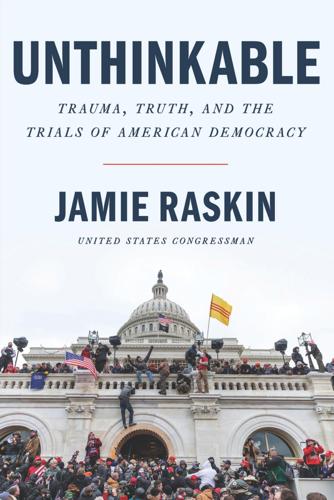
Unthinkable: Trauma, Truth, and the Trials of American Democracy
by
Jamie Raskin
Published 4 Jan 2022
Tommy expressed a constant fear of catching or having COVID-19 and unwittingly infecting his Grammy, Arlene Bloom, Sarah’s mom, with whom he was very close and who preferred not to wear a mask around family members. We spent ridiculous amounts of time deciding when masks needed to be worn and for how long, and where, when, and how to get tested. COVID-19 made even the most informal social occasions among family a matter of profound anxiety and endless planning, analysis, and second-guessing. The whole thing was exhausting and demoralizing. I was spending most of my time as a congressman addressing the crises created by COVID-19. At the start, hundreds of my constituents were strewn, and stuck, all over the world as air travel ground to a halt, and my district director, Kathleen Connor, and our amazing staff of Erica Fuentes, Nina Weisbrodt, Jennie Foont, Joseph Eyong, and Christa Burton worked around the clock to get planes in the air and our people back home.
…
When he went sailing off on an anti-Chinese polemic and filibuster, I would seek recognition to recount at least nineteen different occasions on which Donald Trump lavishly praised the beautiful performance of General Xi and the Chinese autocratic government in the first five months of the COVID-19 crisis. But from a public policy standpoint, all of it was just spinning our wheels. Against the GOP propaganda machine, the White House, and Fox News, there was little we could do to hold back the flood of disinformation. Amazingly, the party that had invented and railed against mythical “death panels” in the Affordable Care Act was now defending Donald Trump and his monstrous mismanagement of COVID-19 that would come to cause hundreds of thousands of unnecessary American deaths, according to Trump’s own COVID-19 point person, Dr. Deborah Birx, the White House coronavirus response coordinator.
…
But it became painfully clear to me—yes, even to me, of the perpetual naïve faith that friendship and community can overcome all obstacles—that Jim Jordan considered us his enemies in the most basic sense and that his time in Congress was going to be spent demonstrating his absolute devotion to one person alone: Donald Trump. On our COVID-19 subcommittee, Jordan acted nimbly to cover up for what I saw as Trump’s recklessness, incompetence, and mismanagement of the pandemic response. He ridiculed and heckled Dr. Fauci. He tore into the urgent public health mandates of masking and social distancing, which were pretty much all we had to protect ourselves before the vaccines came out. He ignored or minimized the massive death toll of COVID-19, and blamed the economic problems caused by the COVID public health disaster on “Democrat governors.”
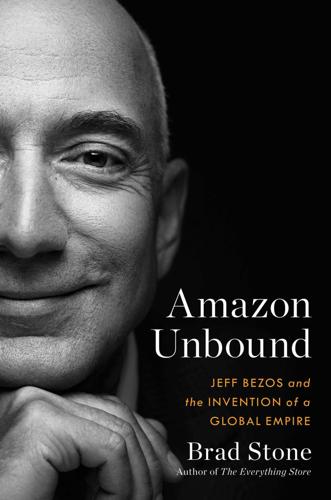
Amazon Unbound: Jeff Bezos and the Invention of a Global Empire
by
Brad Stone
Published 10 May 2021
in twenty-three states: Paris Martineau, “Amazon Quietly Expands Large-Scale Covid Testing Program for Warehouses,” The Information, September 24, 2020, https://www.theinformation.com/articles/amazon-quietly-expands-large-scale-covid-testing-program-for-warehouses (January 26, 2021). thousands of tests a day across 650 sites: “Update on COVID-19 Testing,” Amazon, October 1, 2020, https://www.aboutamazon.com/news/operations/update-on-covid-19-testing (January 26, 2021). “injecting Amazon with a growth hormone”: Matthew Fox, “ ‘COVID-19 Has Been Like Injecting Amazon with a Growth Hormone’: Here’s What 4 Analysts Had to Say About Amazon’s Earnings Report as $4,000 Price Targets Start to Roll In,” Business Insider, July 31, 2020, https://markets.businessinsider.com/news/stocks/amazon-earnings-wall-street-reacts-blockbuster-report-analysts-stock-price-2020-7-1029456482 (January 26, 2021).
…
Another project to regularly test the oxygen levels of FC workers with pulse oximeters didn’t meaningfully identify anyone with Covid-19 and was also abandoned, as was a trial to track the location of employees inside warehouses using their personal cell phones and their facility’s Wi-Fi network. Dr. Ian Lipkin had talked to the S-team about the urgent need for rapid testing, to address the issue of asymptomatic people who are infected and come to work, unknowingly spreading the disease. With the U.S. grappling with a critical shortage of Covid-19 tests and Amazon unable to procure a supply of its own, Bezos decreed that Amazon should make tests itself—even though it had no previous experience in the area.
…
The piece, which included an interview with Chris Smalls, was punishing, particularly about the company’s reluctance to release any information about infection rates in the FCs. Dave Clark was trotted out alone to face the formidable Lesley Stahl; he affably maintained that the number of overall Covid-19 cases wasn’t a useful figure, since Amazon believed most employees were infected in their communities, not at work. But by the fall, Amazon had reversed course amid growing pressure. It reported that around twenty thousand of its 1.3 million frontline employees had tested or been presumed positive for Covid-19. The company argued that its preventative measures had made that figure far lower than could be predicted based on the infection rates in local communities.
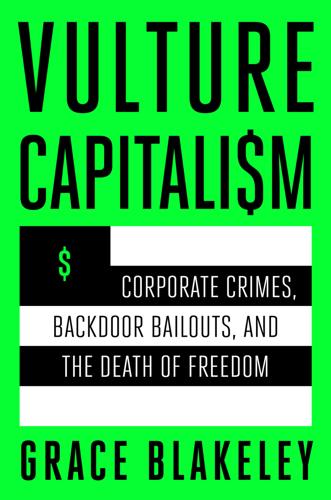
Vulture Capitalism: Corporate Crimes, Backdoor Bailouts, and the Death of Freedom
by
Grace Blakeley
Published 11 Mar 2024
liberal definition of nation-state and, 149–50 in Russia (former Soviet Union), ix social contract theory and, 143–52 socialism vs., 66 state as rule-setter vs. planner, 148–52, 165, 204 state as social creation and, 157–62 State Street, 133, 134 Stein, Jill, 251 Stiglitz, Joseph, 51, 200, 201 Stolen (Blakeley), 257, 258 Stone, Brad, 80 Stonecipher, Harry, 4–6, 8 Streeck, Wolfgang, 36 Strike Debt campaign/Rolling Jubilee (2012), 249–50 structural adjustment programs (SAPs), 198–202 Suez Canal, 61–66 Ever Given crisis (2021), 62–63, 64 Suez crisis (1956), 61–62 Suharto, 191 Sukarno, 190–91 Sunak, Rishi, 156 Sunstein, Cass, 162–63 supply chain financing, 152–59 surveillance capitalism, 27, 54–58, 94, 98–100, 155 Sweden, Meidner Plan, 255 Sweezy, Paul, 93–94, 96, 97, 99 Syngenta, 90–91, 124 T taxes and taxation corporate tax exemptions and tax breaks, 7–8, 54–55, 59, 65–66, 79–80, 93, 106, 187, 207 international tax avoidance and evasion, 42, 45, 79, 131–32, 199, 208, 263–64 private law and, 131 undervaluing assets and, 188 in Zambia, 205, 207 Taylorism, 99–100 technology, see computer technology Teflon, 91 Teleperformance, 98–99 temporary monopoly power (Schumpeter), 85–88, 96 Tencent, 57–58 Tepper, Jonathan, 89 Tester, John, 141 Texaco, 194 Thaler, Richard, 162–63 Thatcher, Margaret, 15, 31, 33–34, 62, 160, 161–62, 218, 220–21, 230–31 Tillerson, Rex, 140 Total, 46 trade agreements, 261–62 Trades Union Congress (UK), 60 trade unions, see labor movements transactions cost theory of the firm (Coase), 83, 84 Travis, Gregory, 5 Treasure Islands (Shaxson), 131–32 Tripartite Committee, 27–28, 30, 160 Troubled Asset Relief Program (TARP, 2008), 29, 49, 53 Trudeau, Justin, 136 Trump, Donald, 8, 9, 33, 43, 59, 104, 140 TRW, 218 tulip bubble (1630s), 126 TurboTax, 106 Twitter/X, vii, 54 U Uber, 111 Ubico, Jorge, 187 UBS, 124 Ukraine, 44, 64, 201 Unchecked Corporate Power (Barak), 107 Union Carbide India Limited, 90 Union of Farm Workers (Spain), 229 unions, see labor movements United Auto Workers (UAW), 26–29 United Fruit Company (UFC, now Chiquita), 186–89 United Kingdom (UK) al-Yamamah arms deal with Saudi Arabia, 220–21 BAE Systems, 220–21 Barrow Alternative Employment Committee, 220 bureaucratization and, 34–35 collective ownership proposals, 254, 255 corporate welfare programs and, 31–32 COVID-19 aid to corporations, 45–46, 155–57 COVID-19 pandemic response and, 53–61, 155–57, 162–63 East India Company (EIC), 22, 103–4, 183 emergence of central banks and, 124–25 European Union membership, 154 Greater London Enterprise Board, 216–17, 219–20 Green New Deal proposal, 69, 248 immigrant policies, 163–64, 263 imperialism of, 177, 179–81, 182 Labour Party, 158, 217, 250, 255, 256 Levellers and Diggers, 271 liberal revolution and, 258 London Docklands Development Corporation (LDDC), 230–31 London Energy and Employment Network (LEEN), 220 London Olympics (2012), 101 Lucas Aerospace Corporation/Lucas Plan, xix, 215–22, 226, 229, 231, 247, 248, 266 New Economics Foundation, 255 New Economy Organisers Network (NEON), 250 Nudge Unit, 162–64 Occupy movement, 250 People’s Plan for the Royal Docks, 230–31 Post Banks proposal, 256 Preston Model, community wealth building (CWB), 237–38, 247, 255 resistance to the labor movement, 15, 31, 33–34, 62, 64–65, 77–78, 160, 216–17, 218, 220, 221 UK Border Agency, 102 Wales, Blaenau Ffestiniog economic development program, 238–40 wealth inequality in, 60–61 We Own It (think tank), 254 United Nations (UN) Climate Change Conference (COP26, 2021), 70–71 Conference on Trade and Development (UNCTAD), 184 Human Development Rankings, 206 United States (US) Central Intelligence Agency (CIA), 175, 189, 241 Chicago school of neoliberalism, 150–51, 199 colonialism and, 173–79, 209–10 COVID-19 aid to corporations, 41–45 Export-Import Bank (EXIM), 243 Green New Deal proposal, 69, 248 Green Party, 251 “green” stimulus packages, 69 Keystone XL pipeline, 251 military-industrial complex, 9–10, 23, 25, 191–93, 217–20, 244 New Deal reforms, 26, 28 Non-Aligned Movement and, 190–91 Occupy movement, 249–50 power in the global economy, 151, 198, 205 prison-industrial complex, 33–34 resistance to the labor movement, 31, 62 US dollar as global reserve currency, 178, 209–10 wealth inequality in, 60–61 US Air Force, 8 US Central Intelligence Agency (CIA), 175, 189, 241 US Congress, COVID-19 aid to corporations and, 42–44 US Department of Defense, 8, 191–93 US Department of Energy, 29 US Department of Health and Human Services (HHS), 56–57 US Department of Justice McKinsey & Company settlement, 55 price-fixing convictions, 94 US Department of the Treasury, 141 COVID-19 pandemic and, 9–10 financial crisis of 2008 and, 49–50, 53 US Department of Veterans Affairs (VA), 56 US Federal Aviation Administration (FAA), 5–7 US Federal Emergency Management Administration (FEMA), 56–57 US Federal Reserve, 9, 126–29, 141 COVID-19 pandemic and, 42 financial crisis of 1987 and, 126–27 financial crisis of 2008 and, 49–50, 127, 209–10 quantitative easing (QE) and, 127–28, 129, 136 US dollar as global reserve currency, 178, 209–10 Volcker shock, 198, 205 US Occupational Safety and Health Administration (OSHA), 77 US Securities and Exchange Commission (SEC), 55 US Small Business Administration (SBA), 41 United Technologies, 218–19 universal basic income (UBI)/universal basic services, 253 Up & Go (cooperatively owned app), 254 Urry, John, 37 US Virgin Islands, US colonialism and, 173, 174 UTC Aerospace Systems, 218–19 Utopia of Rules, The (Graeber), 35 V Valeant, 55 Vanguard, 133, 134 Vattenfall, 197 Veblen, Thorstein, xv, 13 Vietnam War, 175–76, 181, 227 Vivendi, 46 Volcker, Paul, 198, 205 Volkswagen, viii, 46–47 Volvo, 28 von Mises, Ludwig, 146–47, 161–62 vulture capitalism, 202–11 in apartheid South Africa, 202–4 in Zambia, 205–8, 210 W wage suppression, 60, 63, 92–93 Wainwright, Joel, 70 Wales, Blaenau Ffestiniog economic development program, 238–40 Wall Street crash of 1929, xi Walmart, 88, 134, 264, 265 War on Want, 196 Washington Consensus, 200–201, 210 Washington Post, acquisition by Amazon, 80 Water Defenders, The (Broad and Cavanagh), 197 wealth inequality, 60–61, 87, 89, 97, 98 Wealth of Nations, The (Smith), 145 Weber, Isabella, 65 Welch, Jack, 4 Wengrow, David, 224–25 We Own It (UK think tank), 254 WeWork, 109–13, 117 William III (King of England), 124–25 Williams, Roger, 42 Wood, Leonard, 174–75 worker ownership Mississippi, Cooperation Jackson program, 236–37, 247, 251–52, 255 Sweden, Meidner Plan, 255 UK, Preston community wealth building (CWB) program, 237–38, 247, 255 Workers’ Unity Collective (Spain), 229 World Bank, 176–77, 198–99, 206–8 WorldCom, 119–20 World Economic Forum, 135 World Health Organization (WHO), 90 World Transformed festival (UK), 250 World War II, xi Bretton Woods institutions following, 51 financial institutions established after, 198–200 Ford Motor Company and, 23–24, 25 Germany and, 158, 181 Japan and, 175–76, 190, 191 new industrial capitalism (Galbraith) following, 37 Philippines and, 175–76 social democratic state following, 24–25 X X/Twitter, vii, 54 Y Yahoo!
…
“France to Use CCTV to Monitor Mask-Wearing on Public Transport,” Privacy International, March 16, 2021, https://privacyinternational.org/examples/4463/france-use-cctv-monitor-mask-wearing-public-transport. 108. Tehilla Shwartz Altshuler and Rachel Aridor Hershkowitz, “How Israel’s COVID-19 Mass Surveillance Operation Works,” Brookings Institute, July 6, 2020, https://www.brookings.edu/articles/how-israels-covid-19-mass-surveillance-operation-works/. 109. Deborah Brown and Amos Toh, “Technology Is Enabling Surveillance, Inequality During the Pandemic,” Human Rights Watch, March 4, 2021, https://www.hrw.org/news/2021/03/04/technology-enabling-surveillance-inequality-during-pandemic. 110.
…
sh=19f7aab45225. 114. Emil W. Henry Jr., “Will Coronavirus Launch the Second Wave of Socialism?,” The Hill, March 26, 2020, https://thehill.com/opinion/campaign/489612-will-coronavirus-launch-the-second-wave-of-socialism/. 115. John Horgan, “Will COVID-19 Make Us More Socialist?,” Scientific American, April 20, 2020, https://blogs.scientificamerican.com/cross-check/will-covid-19-make-us-more-socialist/. 116. Chris Hughes, “The Free Market Is Dead: What Will Replace It?,” Time, April 26, 2021, https://time.com/5956255/free-market-is-dead/. 117. Vladimir Lenin, “The State and Revolution,” Lenin Internet Archive, 1993, accessed July 8, 2023, https://www.marxists.org/ebooks/lenin/state-and-revolution.pdf. 118.

You've Been Played: How Corporations, Governments, and Schools Use Games to Control Us All
by
Adrian Hon
Published 14 Sep 2022
Our personal responsibility for ourselves and our collective effort to understand, shape and improve our shared social life are outsourced to the state, in particular to the [Communist Party of China], and delegated to an algorithm.25 China’s unpopular, fragmented, and often slapdash social credit systems aren’t quite as ubiquitous or powerful as the mass surveillance Ivanhoe fears. It’s possible that Black Mirror’s dystopia may never come. China’s leaders could change their minds in the face of public opposition, like in Suzhou. Or they might keep trying, emboldened by their initially successful response to the COVID-19 pandemic, taking advantage of the opportunity afforded by mandatory COVID-19 health code apps and harnessing the ever-decreasing cost of technology—like in Suzhou. And if they get it right, Mumford would argue there’s no going back. “IT CAN’T HAPPEN HERE” It’s easy to view China’s social credit scores as an oddity that would never fly in Western democracies.
…
This is very helpful to build trust across the teams.” Sometimes treating the real world as a game feels more unsettling. As COVID-19 spread beyond China, websites tracked cases and deaths in real time, with commenters grimly comparing them to the video game Plague, Inc., where players intentionally spread and evolve a virus to wipe out humanity.10 No doubt this was one reason why China banned the game in February 2020; and why, in the following month, the developers donated a quarter of a million dollars to fight COVID-19, and in November, released an expansion where players try to save the world through contact tracing, furlough schemes, and vaccine development.11 Grimmer still is the weaponisation of video games by the far right.
…
I first came across r/wallstreetbets at the beginning of 2020, just as COVID-19 was making its effects felt in Asia and then in Europe. The community had just shy of one million members, many of whom were fixated on shorting shares they correctly predicted were about to plunge off a cliff. The most popular predictions weren’t made through posts filled with detailed analysis and sources but via elaborate and frequently offensive memes. One memorable meme took an epic battle sequence from Game of Thrones and replaced the dragon with COVID-19, the oncoming Dothraki horde with short sellers, and the hapless defenders with vulnerable shares like airlines, office landlords, and cruise operators.

Escape From Model Land: How Mathematical Models Can Lead Us Astray and What We Can Do About It
by
Erica Thompson
Published 6 Dec 2022
This is the basis of the epidemiological models that informed the advice given by SAGE to the UK government in the early days of the Covid-19 pandemic. In practice they are much more complicated, dividing the UK into blocks of population density, defining where individuals live, how far they travel for work and how often they come into contact with other people of different ages. A lot of information about people and their behaviour goes into the model, as well as the characteristics of the virus itself. The actual progress of the Covid-19 pandemic, however, proved rather different from that predicted by the models, in which the spread and transmission of the virus closely paralleled population density.
…
So, if it didn’t release any cash for Ebola, you are probably wondering what happened to the pandemic bond when Covid-19 came along, since a three-year bond issued in June 2017 reached maturity in 2020. The coronavirus family of diseases were – luckily! – specifically covered under the terms. The bond rapidly lost value in the early months of 2020 since investors could see the likelihood of the conditions being met, and indeed in the middle of April 2020 the mechanism was triggered. This released $195.84 million, which the World Bank split between sixty-four lower-income countries that at that point had reported cases of Covid-19. Why did it take so long to respond? This was due to the trigger conditions, which required a delay of at least twelve weeks beyond the declaration of an outbreak.
…
The Dissemination of Reliable Knowledge, Cambridge University Press, 2010 Mansnerus, Erika, Modelling in Public Health Research: How Mathematical Techniques Keep us Healthy, Springer, 2014 Neustadt, Richard, and Harvey Fineberg, The Swine Flu Affair: Decision-making on a Slippery Disease, US Dept of Health, Education and Welfare, 1978 Rhodes, Tim, Kari Lancaster and Marsha Rosengarten, ‘A Model Society: Maths, Models and Expertise in Viral Outbreaks’, Critical Public Health, 30(3), 2020 ——, and Kari Lancaster, ‘Mathematical Models as Public Troubles in COVID-19 Infection Control: Following the Numbers’, Health Sociology Review, 29(2), 2020 Richardson, Eugene, ‘Pandemicity, COVID-19 and the Limits of Public Health Science’, BMJ Global Health, 5(4), 2020 Spinney, Laura, Pale Rider: The Spanish Flu of 1918 and How it Changed the World, Vintage, 2018 Chapter 10: Escaping from Model Land Dhami, Mandeep, ‘Towards an Evidence-Based Approach to Communicating Uncertainty in Intelligence Analysis’, Intelligence and National Security, 33(2), 2018 Harding, Sandra, Objectivity and Diversity: Another Logic of Scientific Research, University of Chicago Press, 2015 Marchau, Vincent, Warren Walker, Pieter Bloemen and Steven Popper (eds), Decision Making under Deep Uncertainty, Springer, 2019 Scoones, Ian, and Andy Stirling, The Politics of Uncertainty: Challenges of Transformation, Taylor & Francis, 2020 Chris Vernon Erica Thompson is a senior policy fellow at the London School of Economics’ Data Science Institute and a fellow of the London Mathematical Laboratory.

System Error: Where Big Tech Went Wrong and How We Can Reboot
by
Rob Reich
,
Mehran Sahami
and
Jeremy M. Weinstein
Published 6 Sep 2021
“increasing our use of machine learning”: Vijaya Gadde and Matt Derella, “An Update on Our Continuity Strategy During COVID-19,” Twitter (blog), March 16, 2020, https://blog.twitter.com/en_us/topics/company/2020/An-update-on-our-continuity-strategy-during-COVID-19.html. “we will temporarily start”: The YouTube Team, “Protecting Our Extended Workforce and the Community,” YouTube Official Blog, March 16, 2020, https://blog.youtube/news-and-events/protecting-our-extended-workforce-and/. “This was an issue”: Guy Rosen (@guyro), “We’ve restored all the posts that were incorrectly removed, which included posts on all topics—not just those related to COVID-19. This was an issue with an automated system that removes links to abusive websites, but incorrectly removed a lot of other posts too,” Twitter, March 17, 2020, https://twitter.com/guyro/status/1240088303497400320?
…
The social mobilization that followed the 2020 murder of George Floyd and many other Black Americans at the hands of the police surfaced longstanding concerns about whether communities of color can expect equal treatment under the law. The disastrous responses of some governments to the COVID-19 pandemic also appear inseparable from failures of democratic institutions, with the United States, Brazil, and India leading the world in deaths from COVID-19 and the European democracies not faring especially well, either. Even young people, the cohort we most associate with an embrace of liberty, are turning against democracy. One study found that 46 percent of Americans between the ages of eighteen and twenty-nine would prefer to be governed by experts than by elected officials.
…
So they work harder—and harder than those in nondemocratic regimes—to avoid this worst-case scenario. Democracy, it turns out, is a kind of man-made technology that eliminates famine. The often-incompetent responses of democratic governments, including in the United States, to the COVID-19 pandemic might cause you to question Sen’s conclusion. But as we saw in the debates about the COVID-19 response during the run-up to the US election, the policy landscape was a battle over competing values—whether to prioritize the economy or public health, to protect only the most vulnerable or to reduce exposure for all Americans—and politicians were vying for voters based on these alternative visions.
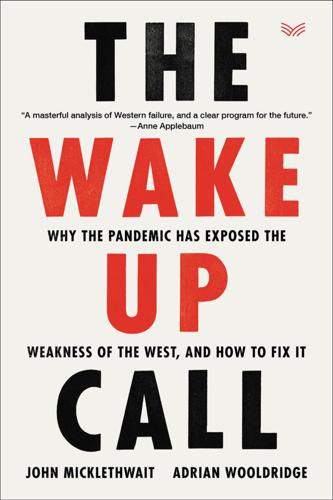
The Wake-Up Call: Why the Pandemic Has Exposed the Weakness of the West, and How to Fix It
by
John Micklethwait
and
Adrian Wooldridge
Published 1 Sep 2020
“New World Curriculum,” The Economist, March 7, 2020, 19. 7.Jamie Grierson, “UK Government Under Fire After ‘Big Influx’ of Covid-19 Cases from Europe Revealed,” Guardian, May 5, 2020. 8.Laura Donnelly, “Earlier Lockdown Could Have Prevented Three-Quarters of UK Coronavirus Deaths, Modelling Suggests,” Daily Telegraph, May 20, 2020. 9.Rafaela Lindeberg, “Man Behind Sweden’s Controversial Virus Strategy Admits Mistakes,” Bloomberg, June 3, 2020. 10.Sen Pei, Sasikiran Kandula, and Jeffrey Shaman, “Differential Effects of Intervention Timing on COVID-19 Spread in the United States,” posted on medRxiv preprint server, May 29, 2020. 11.Drew Armstrong et al., “Why New York Suffered When Other Cities Were Spared by Covid-19,” Bloomberg, May 28, 2020. 12.Armstrong et al., “Why New York Suffered When Other Cities Were Spared by Covid-19.” 13.Fareed Zakaria, “If New York Founders It Will Be Because of Bad Government, Not the Pandemic,” Washington Post, June 11, 2020. 14.Raphael Rashid, “Being Called a Cult Is One Thing, Being Blamed for an Epidemic Is Quite Another,” New York Times, March 9, 2020. 15.Laura Spinney, “The Coronavirus Slayer!
…
CHAPTER FOUR: THE COVID TEST 1.John Burns-Murdoch and Chris Giles, “UK Suffers Second-Highest Death Rate from Coronavirus,” Financial Times, May 28, 2020. 2.Tim Ross and Kitty Donaldson, “Boris Johnson Revamps Agenda to Meet Worst UK Recession in 300 Years,” Bloomberg, June 2, 2020. 3.Marc Champion, “Coronavirus Is a Stress Test Many World Leaders Are Failing,” Bloomberg, May 22, 2020. 4.Lara Zhou and Keegan Elmer, “Thousands Left Wuhan for Hong Kong, Bangkok, Singapore or Tokyo Before Lockdown,” South China Morning Post, January 27, 2020. 5.Richard Horton, The Covid-19 Catastrophe: What’s Gone Wrong and How to Stop It Happening Again (Cambridge: Polity Press, 2020), 53. 6.“New World Curriculum,” The Economist, March 7, 2020, 19. 7.Jamie Grierson, “UK Government Under Fire After ‘Big Influx’ of Covid-19 Cases from Europe Revealed,” Guardian, May 5, 2020. 8.Laura Donnelly, “Earlier Lockdown Could Have Prevented Three-Quarters of UK Coronavirus Deaths, Modelling Suggests,” Daily Telegraph, May 20, 2020. 9.Rafaela Lindeberg, “Man Behind Sweden’s Controversial Virus Strategy Admits Mistakes,” Bloomberg, June 3, 2020. 10.Sen Pei, Sasikiran Kandula, and Jeffrey Shaman, “Differential Effects of Intervention Timing on COVID-19 Spread in the United States,” posted on medRxiv preprint server, May 29, 2020. 11.Drew Armstrong et al., “Why New York Suffered When Other Cities Were Spared by Covid-19,” Bloomberg, May 28, 2020. 12.Armstrong et al., “Why New York Suffered When Other Cities Were Spared by Covid-19.” 13.Fareed Zakaria, “If New York Founders It Will Be Because of Bad Government, Not the Pandemic,” Washington Post, June 11, 2020. 14.Raphael Rashid, “Being Called a Cult Is One Thing, Being Blamed for an Epidemic Is Quite Another,” New York Times, March 9, 2020. 15.Laura Spinney, “The Coronavirus Slayer!
…
How Kerala’s Rock Star Health Minister Helped Save It from Covid-19,” Guardian, May 14, 2020. 16.“New World Curriculum,” The Economist. 17.Shalini Ramachandran, Laura Kusisto, and Katie Hoanan, “How New York’s Coronavirus Response Made the Pandemic Worse,” Wall Street Journal, June 11, 2020. 18.Full disclosure: Paul Deighton is chairman of The Economist. 19.Gordon Lubold and Paul Vieira, “US Drops Proposal to Put Troops at Canadian Border,” Wall Street Journal, March 26, 2020. 20.Teresa Coratella, “Whatever It Takes: Italy and the Covid-19 Crisis,” European Council on Foreign Relations, March 18, 2020. 21.Andy Hoffman, “Sex Workers Can Get Back to Business in Switzerland, but Sports Remain Prohibited,” Bloomberg, May 20, 2020. 22.YouGov, “Americans Trust Local Governments over the Federal Government on COVID-19,” April 27, 2020. 23.John Lichfield, “Coronavirus: France’s strange defeat,” Politico, May 8, 2020. 24.Anne Applebaum, “The Coronavirus Called America’s Bluff,” The Atlantic, March 15, 2020.

The Singularity Is Nearer: When We Merge with AI
by
Ray Kurzweil
Published 25 Jun 2024
BACK TO NOTE REFERENCE 150 For more on this shift and its probable long-term impacts, see Rani Molla, “Office Work Will Never Be the Same,” Vox, May 21, 2020, https://www.vox.com/recode/2020/5/21/21234242/coronavirus-covid-19-remote-work-from-home-office-reopening; Gil Press, “The Future of Work Post-Covid-19,” Forbes, July 15, 2020, https://www.forbes.com/sites/gilpress/2020/07/15/the-future-of-work-post-covid-19/#3c9ea15e4baf; Nick Routley, “6 Charts That Show What Employers and Employees Really Think About Remote Working,” World Economic Forum, June 3, 2020, https://www.weforum.org/agenda/2020/06/coronavirus-covid19-remote-working-office-employees-employers; Matthew Dey et al., “Ability to Work from Home: Evidence from Two Surveys and Implications for the Labor Market in the COVID-19 Pandemic,” Monthly Labor Review (US Bureau of Labor Statistics), June 2020, https://doi.org/10.21916/mlr.2020.14.
…
BACK TO NOTE REFERENCE 9 Sample, “Powerful Antibiotic Discovered Using Machine Learning for First Time.” BACK TO NOTE REFERENCE 10 “Moderna’s Work on a Potential Vaccine Against COVID-19,” Moderna, 2020, https://www.sec.gov/Archives/edgar/data/1682852/000119312520074867/d884510dex991.htm. BACK TO NOTE REFERENCE 11 For more detail on Moderna’s use of AI in developing vaccines, see “AI and the COVID-19 Vaccine: Moderna’s Dave Johnson,” Me, Myself, and AI podcast, ep. 209 (July 13, 2021), https://sloanreview.mit.edu/audio/ai-and-the-covid-19-vaccine-modernas-dave-johnson; “Moderna on AWS,” Amazon Web Services, accessed October 20, 2022, https://aws.amazon.com/solutions/case-studies/innovators/moderna; Bryce Elder, “Will Big Tobacco Save Us from the Coronavirus?
…
BACK TO NOTE REFERENCE 34 Asha Barbaschow, “Moderna Leveraging Its ‘AI Factory’ to Revolutionise the Way Diseases Are Treated,” ZDNet, May 17, 2021, https://www.zdnet.com/article/moderna-leveraging-its-ai-factory-to-revolutionise-the-way-diseases-are-treated. BACK TO NOTE REFERENCE 35 Barbaschow, “Moderna Leveraging Its ‘AI Factory’ ”; “Moderna COVID-19 Vaccine,” US Food and Drug Administration, December 18, 2020, https://www.fda.gov/emergency-preparedness-and-response/coronavirus-disease-2019-covid-19/moderna-covid-19-vaccine [inactive]. BACK TO NOTE REFERENCE 36 Philip Ball, “The Lightning-Fast Quest for COVID Vaccines—and What It Means for Other Diseases,” Nature 589, no. 7840 (December 18, 2020): 16–18, https://www.nature.com/articles/d41586-020-03626-1.
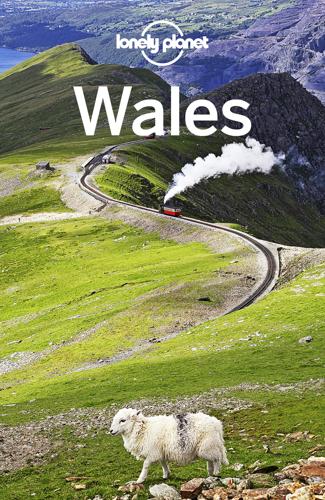
Lonely Planet Wales
by
Anna Kaminski;Hugh McNaughtan
Rates can be a smidgeon cheaper if you book online, in advance, and midweek. No parking, though – despite the name. CARDIFF POST-COVID-19 The Covid-19 pandemic shook the world during 2020 and in Wales, has likely ensured some lasting changes to travel. Cardiff, as the capital, had some of Wales’ highest rates of infection at certain points. Fortunately, many of Cardiff’s best experiences are outdoorsy. As all travellers post-pandemic are likely to tire of words to the effect of ‘closed due to Covid-19’, we thought we’d compile our list of favourite things you can still enjoy around the city: A Appreciate the crazed combo of Norman and fanciful 19th-century architecture from within Cardiff Castle courtyard, now free to enter (a Covid-19 positive).
…
Interestingly, aside from cosmopolitan Cardiff, the counties voting with the highest majority to remain were two of the most strongly Welsh-speaking areas: Ceredigion and Gwynedd, which could well reflect the fact that Wales has often throughout history felt closer to the continent than to England. The 2020 Covid-19 pandemic saw further surfacing of a divide between Wales and England that was more than Dyke-wide. Under the terms of devolution, Wales (like Scotland) became responsible for dealing with issues such as health, and adopted a far more cautious approach to Covid-19 than England. Whilst some Welsh regions recorded some of the highest incidences of Covid-19 at many points, other regions such as Ceredigion had almost the lowest, yet blanket lockdowns were introduced, England-originating visitors turned back by police at the border, and one of Britain’s best-known travel writers, Simon Calder, was bombarded with abuse when he suggested certain parts of Mid-Wales as a potential autumn break.
…
Wales Contents Plan Your Trip Welcome to Wales Wales’ Top Experiences Need to Know Accommodation Month by Month Itineraries The Great Outdoors Family Travel Regions at a Glance On The Road CARDIFF Sights Activities Tours Festivals & Events Sleeping Eating Drinking & Nightlife Entertainment Shopping Vale of Glamorgan Penarth Barry (Y Barri) BRECON BEACONS & SOUTHEAST WALES Brecon Beacons National Park Abergavenny Black Mountains Hay-on-Wye Talgarth Crickhowell Llangorse Lake Talybont-on-Usk Llanfrynach Brecon Western Brecon Beacons & Black Mountain Monmouthshire & Southeast Wales Chepstow Lower Wye Valley Monmouth Caerleon South Wales Valleys Merthyr Tydfil Blaenavon Caerphilly SWANSEA, GOWER & CARMARTHEN-SHIRE Swansea The Mumbles Gower Peninsula Parkmill & Around Oxwich Bay Port Eynon Rhossili Llangennith Reynoldston Llanmadoc Carmarthenshire Kidwelly Carmarthen Laugharne Llanarthne Llandeilo Llandovery Pumsaint Newcastle Emlyn & Around ST DAVIDS & PEMBROKESHIRE North Pembrokeshire St Davids Solva Porthgain Fishguard Cwm Gwaun Newport Preseli Hills St Dogmaels South Pembrokeshire Saundersfoot Tenby Manorbier Stackpole Angle Pembroke Narberth Haverfordwest Skomer, Skokholm & Grassholm Islands Little & Broad Haven Newgale Marloes Sands MID-WALES Ceredigion Cardigan Aberporth & Around New Quay Aberaeron Tregaron Aberystwyth Around Aberystwyth Powys Machynlleth Corris Rhayader Elan Valley Llanwrtyd Wells Builth Wells Llandrindod Wells Presteigne Knighton Newtown Montgomery Berriew Welshpool SNOWDONIA & THE LLŷN North Wales Borderlands Ruthin Llangollen Snowdonia National Park Bala Dolgellau Cader Idris Tywyn Barmouth Harlech Blaenau Ffestiniog Penmachno Betws-y-Coed Capel Curig Ogwen Valley Llanberis Snowdon Beddgelert Porthmadog Llŷn Peninsula Criccieth Pwllheli Abersoch Aberdaron Bardsey Island Nant Gwrtheyrn ANGLESEY & THE NORTH COAST The North Coast Caernarfon Bangor Conwy Llandudno Isle of Anglesey Menai Bridge Southwest Anglesey Beaumaris Moelfre Church Bay Holyhead Rhosneigr UNDERSTAND History Culture The Welsh Table The Natural Environment SURVIVAL GUIDE Directory A–Z Accessible Travel Customs Regulations Discount Cards Climate Electricity Health Insurance Internet Access Legal Matters LGBTIQ+ Travellers Maps Money Opening Hours Post Public Holidays Safe Travel Telephone Toilets Tourist Information Visas Volunteering Women Travellers Work Transport Getting There & Away Entering the Country Air Land Sea Getting Around Air Bicycle Boat Bus Car & Motorcycle Taxi Train Language Behind the Scenes Our Writers COVID-19 The economic and social impacts of COVID-19 (coronavirus) will continue to be felt long after the virus has been contained. Many businesses, services and events referenced in this guide will have experienced restrictions leading to loss of customers, income and employees; some will unfortunately have closed their doors permanently.

Doppelganger: A Trip Into the Mirror World
by
Naomi Klein
Published 11 Sep 2023
But from Assange to Ebola to ISIS, what Wolf did went well beyond that: by claiming to possess some secret piece of knowledge that she alone had uncovered, and by claiming she was being terribly persecuted by daring to share it, she was able to insert herself in the middle of countless trending cultural conversations. Where there was heat, there was her. And nothing had ever been nearly so hot, so potentially clout-rich as Covid-19. We all know why. It was global. It was synchronous. We were digitally connected, talking about the same thing for weeks, months, years, and on the same global platforms. As Steven W. Thrasher writes in The Viral Underclass, Covid-19 marked “the first viral pandemic also to be experienced via viral stories on social media,” creating “a kind of squared virality.” This squared virality meant that if you put out the right kind of pandemic-themed content—flagged with the right mix-and-match of keywords (“Great Reset,” “WEF,” “Bill Gates,” “Fascism,” “Fauci,” “Pfizer”) and headlined with tabloid-style teasers (“The Leaders Colluding to Make Us Powerless,” “What They Don’t Want You to Know About,” “Bill Gates Said WHAT?!?”)
…
“demonic”: Steve Bannon, host, “Chris Wray Lies on 60 Minutes,” War Room: Pandemic (podcast), episode 1,808, April 25, 2022, at 33:59–34:06, posted on Apple Podcasts. “transnational group of bad actors”: Naomi Wolf, “Facing the Beast,” Outspoken with Dr Naomi Wolf, Substack, July 17, 2022. “hundreds of women”: Geoff Brumfiel, “The Life Cycle of a Covid-19 Vaccine Lie,” National Public Radio, July 20, 2021. “a very highly followed influencer”: Brumfiel, “The Life Cycle of a Covid-19 Vaccine Lie.” “bleeding between [her] period”: Morgan Yew @weynagrom, tweet, May 23, 2021, Twitter, video 9 of 25, at 0:24. “They are sterilizing an entire generation”: Yew, tweet, May 23, 2021. “one foot in the grave”: Yew, tweet, May 23, 2021.
…
Johnson & Johnson: Edward Helmore, “Lawsuits, Payouts, Opioids Crisis: What Happened to Johnson & Johnson?,” The Guardian, October 18, 2019. rare cases of heart inflammation: “Myocarditis and Pericarditis After mRNA COVID-19 Vaccination,” Centers for Disease Control and Prevention, September 27, 2022, https://www.cdc.gov/coronavirus/2019-ncov/vaccines/safety/myocarditis.html. possible small uptick in strokes: “CDC & FDA Identify Preliminary COVID-19 Vaccine Safety Signal for Persons Aged 65 Years and Older,” Centers for Disease Control and Prevention, January 13, 2023, https://www.cdc.gov/coronavirus/2019-ncov/vaccines/safety/bivalent-boosters.html.
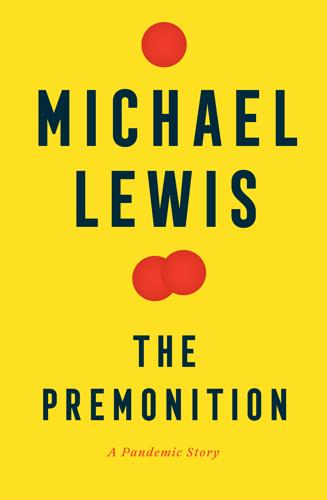
The Premonition: A Pandemic Story
by
Michael Lewis
Published 3 May 2021
But soon one of them sent her a message: “Where did you come from???” Another began to refer to her as “Wolverette.” “We liked her right away,” Carter said. “She’s spitfire.” * The first death caused by COVID-19 recorded in the United States occurred in Seattle on February 28. In late April, Santa Clara County reclassified two earlier deaths after figuring out that they, too, had been caused by COVID-19. The first had occurred on February 6, the second on February 17. Both patients would have been infected by the virus roughly a month before death. As neither victim had traveled outside the area, the virus had clearly been circulating in the Bay Area by early January
…
She began to put her thoughts in emails—for instance, after the state of Washington, on February 28, reported its first COVID-19 case that could not be explained either by travel from China or contact with some person known to have been infected by the virus. With the virus openly spreading in greater Seattle, Charity wrote an email to her boss suggesting that the western states—California, Oregon, and Washington—seize the moment to form a coalition. They would stop waiting for the CDC to create a test for COVID-19 that actually worked and create their own test, using their own laboratories. The three states together would have a credibility that no state on its own could generate.
…
They’d be able to return results to people within a day; in a pinch, they could get you an answer in three hours. And—here was the kicker—they worked for free. There was no bill. You just handed over your test tubes with the nasal swab inside and the Biohub told you who had COVID-19 and who did not. Joe assumed, not unreasonably, that his new team of volunteers would soon be overrun by hordes of customers delighted by the freebie. The previous week, the entire state of California had received fewer than two thousand COVID-19 test results. Test tubes holding nasal swabs from more than 55,000 Californians were lying around in labs waiting to be evaluated. By redirecting 2,666 a day from the big corporate labs, the state of California could save itself $426,560 every day and get results back in time to make a difference.

Breathtaking: Inside the NHS in a Time of Pandemic
by
Rachel Clarke
Published 26 Jan 2021
Stafford, M., et al., ‘Inequalities and deaths involving COVID-19: What the links between inequalities tell us’, Health Foundation, 21 May 2020. ‘Disparities in the risk and outcomes of COVID-19’, Public Health England, Aug 2020. de Prudhoe, K., ‘My dad died alone because we played by the rules. Why is it different for Dominic Cummings?’, Huffington Post, 26 May 2020. Ellery, B., et al., ‘Loyalty to Dominic Cummings will cost lives, says scientist’, The Times, 25 May 2020. Fancourt, D., et al., ‘The Cummings effect: politics, trust, and behaviours during the COVID-19 pandemic’, Lancet, 6 August 2020. Canale, D.
…
Calvert, J., et al., ‘Coronavirus: 38 days when Britain sleepwalked into disaster’, Sunday Times, 19 April 2020. Conn, D., et al., ‘Revealed: the inside story of the UK’s Covid-19 crisis’, Guardian, 29 April 2020. Worst-case Scenarios Williams, W. C., The Autobiography of William Carlos Williams (New York: New Directions, 1967). Crawford, D., Viruses: A Very Short Introduction (Oxford: Oxford University Press, 2018). Johns Hopkins University, ‘COVID-19 Dashboard by the Center for Systems Science and Engineering (CSSE)’, Johns Hopkins University, accessed 8 March 2020. Kington, T., ‘Coronavirus: Doctors forced into life-or-death decisions as patients swamp hospitals’, The Times, 11 March 2020.
…
ISBN 978-1-4087-1376-1 Little, Brown An imprint of Little, Brown Book Group Carmelite House 50 Victoria Embankment London EC4Y 0DZ An Hachette UK Company www.hachette.co.uk www.littlebrown.co.uk This book is dedicated to the memory of four members of staff at Oxford University Hospitals: Oscar King Junior, Elbert Rico, Philomina Cherian and Peter Gough. Each lost their life to Covid-19 while doing their utmost to help others. To date, over 600 NHS and care workers have suffered the same fate. Heartfelt thanks to them all for their courage and selflessness. Contents Author’s Note Prologue 1 Pneumonia of Unknown Cause 2 The Might of Tiny Things 3 Worst-Case Scenarios 4 A Brilliant Plan 5 A Long Deep Breath 6 The Thin Red Line 7 Inside the Wave 8 The Thing with Feathers 9 Sacrifice 10 Human Factors Epilogue References Acknowledgements Author’s Note The majority of these stories are told with the permission of patients, families and members of staff who kindly agreed to be interviewed for this book.

Vassal State
by
Angus Hanton
Published 25 Mar 2024
– Boris Johnson, March 20211 The Covid-19 pandemic of 2020–22 was an era of risk and fear, of human losses and business profits. Speaking with MPs one spring evening in 2021, UK prime minister Boris Johnson credited the profit motive with helping to deliver Britain safely through the crisis by prompting the effective development and distribution of vaccines. His comment in defence of ‘greed’, Downing Street later clarified, was just a joke. Nonetheless, Covid-19 made the rich richer. The wealth of the world’s billionaires increased more in the first 24 months of Covid-19 than in any two-year period over the previous 23 years.
…
For Brake Bros, see Sam Baker, ‘Government awards £1billion in state contracts to companies including French-owned Edenred, a healthcare firm advised by a Tory MP and US-run Brake Bros WITHOUT public tender in fast-tracked deals amid coronavirus pandemic’, Daily Mail (16 May 2020), https://www.dailymail.co.uk/news/article-8325925/Government-awards-1billion-fast-tracked-state-contracts-firms-WITHOUT-public-tender.html. 5 See listing for Brake Bros at David Barmes, Danisha Kazi and Simon Youel, ‘The Covid Corporate Financing Facility’ [PDF], Positive Money [website] (July 2020), p. 9, https://positivemoney.org/wp-content/uploads/2020/07/CCFF-Final-version.pdf. 6 Francesco Guarascio, ‘Tougher terms: why the EU is paying more for new COVID shots’, Reuters [website] (3 August 2021), https://www.reuters.com/world/europe/tougher-terms-why-eu-is-paying-more-new-covid-shots-2021-08-03/. 7 ‘AstraZeneca says it will start profiting from its vaccine’, New York Times (12 November 2021), https://www.nytimes.com/2021/11/12/business/astrazeneca-vaccine-profit.html. 8 For 150 nurses, see Gemma Mitchell, ‘Covid-19: new nurse death figures prompt call for investigation’, Nursing Times (25 January 2021). For 50 doctors, see ‘Remembering them: the doctors who died fighting COVID’, BMA [website] (12 April 2022), https://www.bma.org.uk/news-and-opinion/remembering-them-the-doctors-who-died-fighting-covid. 9 ‘Coroner rules that Covid-19 is an industrial disease, in first case of its kind’, Doughty Street Chambers [website] (16 January 2023), https://www.doughtystreet.co.uk/news/coroner-rules-covid-19-industrial-disease-first-case-its-kind. 10 Both doctors quoted in Tim Tonkin, ‘Let down’, British Medical Association [website] (19 May 2022), https://www.bma.org.uk/news-and-opinion/let-down. 11 Channel 4 News, ‘Revealed: PPE stockpile was out-of-date when coronavirus hit UK’ [video], YouTube [website] (7 May 2020), https://www.youtube.com/watch?
…
In the food and energy sectors, profits boomed, but the titans of ‘Big Pharma’ were some of the most high-profile winners. The pandemic created at least 40 new pharma billionaires, with two major US vaccine providers – Moderna of Cambridge, Massachusetts, and Pfizer of New York City – reportedly making $1,000 profit every second from their Covid-19 vaccines in 2021.2 In Oxford, British scientists were the first to announce a Covid-19 vaccine.3 British companies and innovators offered much to governments in the crisis, but they did not win the lion’s share of pandemic revenues – not even in their home country. Perhaps that would matter less if the UK government’s response to the pandemic had delivered ‘success’ across the board, but the solutions chosen were mostly inadequate, as well as costly.
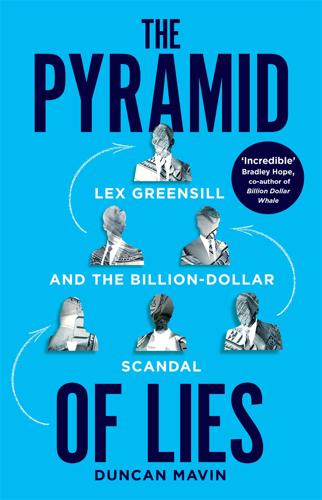
The Pyramid of Lies: Lex Greensill and the Billion-Dollar Scandal
by
Duncan Mavin
Published 20 Jul 2022
Index Aar Tee Commodities ref1 Abengoa ref1, ref2 Accenture ref1, ref2 Agritrade ref1 Ahearn, John ref1 AIG ref1, ref2, ref3, ref4, ref5 Aigis Banca ref1, ref2 Allesch-Taylor, Stefan ref1, ref2 Allin, Patrick ref1 anti-money-laundering (AML) questions ref1 ANZ ref1 Apollo Global Management ref1, ref2 Apple ref1 Aramco ref1 ArcelorMittal ref1 Archegos ref1 Arthur Andersen ref1 Asda ref1 Atlantic 57 Consultancy ref1, ref2, ref3, ref4, ref5 Auditing Association of German Banks ref1 Augustus Asset Managers ref1 Austin, Jason ref1, ref2 Australia ref1, ref2, ref3, ref4, ref5, ref6, ref7, ref8, ref9, ref10, ref11, ref12, ref13, ref14, ref15, ref16, ref17, ref18, ref19 Australian Taxation Office ref1 Aviva ref1 BAE Systems ref1 Baer, Julius ref1, ref2 BaFin ref1, ref2, ref3, ref4, ref5, ref6, ref7, ref8, ref9, ref10, ref11 Bailey, Andrew ref1 Bank of America ref1 Bank of England ref1, ref2, ref3, ref4 Barclays ref1, ref2 Barnes, Rob ref1, ref2, ref3 Barrell, Neil ref1 Barron’s ref1, ref2, ref3 Bates, Chris ref1, ref2, ref3, ref4 Battershill, William ref1, ref2 Baylis, Natalie ref1 BBB see British Business Bank BBC News ref1 BBVA ref1 BCLP see Bryan Cave Leighton Paisner BDO ref1, ref2 Becker, Arthur ref1 Berkshire Hathaway ref1 Bethell, Richard, 6th Baron Westbury ref1, ref2 Bingera ref1 Bishop, Julie ref1, ref2 BlackRock ref1, ref2, ref3 Blackstone ref1 Blair, Tony ref1, ref2, ref3, ref4 Bloomberg ref1, ref2, ref3 Bloomberg News ref1, ref2, ref3, ref4 Bluestone Resources Inc. ref1, ref2, ref3, ref4, ref5 Blunkett, David ref1, ref2 BNP Paribas ref1 Boeing ref1, ref2, ref3, ref4 737 Max 8 aircraft ref1 Bond and Credit Company, The (TBCC) ref1, ref2, ref3, ref4, ref5, ref6, ref7 Borbely, Barnabas ref1 Borneo ref1 Breedon, Tim ref1 Breedon report ref1 Brereton, Greg ref1 Brexit referendum ref1 Brierwood, David ref1, ref2, ref3, ref4, ref5, ref6, ref7, ref8 Brighthouse ref1 British Business Bank (BBB) ref1, ref2, ref3 British Gas ref1 Brown, Eliot ref1 Brown, Gordon ref1, ref2 Bryan Cave Leighton Paisner (BCLP) ref1 BSi Steel ref1, ref2, ref3, ref4 Buckingham Palace ref1, ref2, ref3, ref4 Buffett, Warren ref1 Bundaberg, Queensland, Australia ref1, ref2, ref3, ref4, ref5, ref6, ref7, ref8, ref9, ref10 Bunge ref1 Business, Energy and Industrial Strategy committee ref1 Cabinet Office ref1, ref2, ref3 Caillaux, Gabe ref1, ref2, ref3, ref4, ref5, ref6 Callahan, Mark ref1 Cameron, David ref1, ref2, ref3, ref4, ref5 ‘Big Society’ policy ref1 and Earnd ref1 Greensill remuneration ref1 and Greensill’s collapse ref1, ref2, ref3, ref4, ref5 hired as Greensill adviser ref1, ref2 lends credibility to Greensill ref1 and Lex ref1, ref2, ref3, ref4, ref5, ref6, ref7, ref8, ref9 and Mohammed Bin Salman ref1 and the pharmacy plan ref1 role at Greensill during the Covid-19 pandemic ref1 and The Bond and Credit Company ref1 Cameron, Samantha ref1 Cameron administration ref1, ref2 Cantor Fitzgerald ref1, ref2, ref3 Carillion ref1, ref2 ‘early payment facility’ ref1 Carlyle Group ref1 Carna ref1 Carnell, Kate ref1, ref2 Carney, Mark ref1 Carrington ref1 Carson Block ref1 Carusillo, Mickey ref1 Casey, Dame Louise ref1 ‘cash-less rolls’ ref1 Catfoss group ref1, ref2, ref3 central banks ref1 Chap (magazine) ref1 Charles, Prince ref1, ref2, ref3, ref4 Chase Manhattan ref1 CHBG Limited ref1 Chehaoduo ref1, ref2 Chelsea Group ref1 Chelsea Village ref1 Chicago Police Pension Fund ref1 Chilean mining ref1 Chubb ref1 Chuk ref1 CIMIC ref1, ref2 Citibank ref1 Citigroup ref1, ref2, ref3, ref4, ref5, ref6, ref7, ref8, ref9, ref10, ref11, ref12, ref13 City, the ref1 Clarke, Tracy ref1 Clearbrook Capital ref1 Cleland, Robert ref1, ref2, ref3, ref4, ref5, ref6, ref7 coal mining ref1, ref2, ref3 Coca-Cola ref1, ref2 CoFace ref1 Comerford, Robert J. ref1, ref2 Commerzbank ref1 Companies House ref1, ref2, ref3, ref4 Confederation of British Industry (CBI) ref1 Conservative government ref1, ref2 Copenhagen ref1 Coronavirus Business Interruption Loan Scheme (CBILS) ref1, ref2 Coronavirus Large Business Interruption Loan Scheme (CLBILS) ref1, ref2 corporate espionage ref1, ref2, ref3, ref4 Coupe, Mike ref1 Covid-19 Corporate Financing Facility (CCFF) ref1, ref2 Covid-19 pandemic ref1, ref2, ref3, ref4, ref5, ref6, ref7, ref8, ref9, ref10, ref11 government loan schemes ref1, ref2, ref3, ref4, ref5 restrictions ref1, ref2, ref3, ref4 Crain’s (magazine) ref1 Credit Suisse ref1, ref2, ref3, ref4, ref5, ref6, ref7, ref8 and the Covid-19 pandemic ref1 and Greensill Capital ref1, ref2, ref3, ref4, ref5, ref6, ref7, ref8, ref9, ref10, ref11, ref12, ref13, ref14, ref15, ref16, ref17, ref18, ref19, ref20, ref21, ref22, ref23, ref24, ref25, ref26, ref27, ref28, ref29, ref30, ref31, ref32, ref33 and Sanjeev Gupta ref1 Crothers, Bill ref1, ref2, ref3, ref4, ref5, ref6, ref7 Crown Representatives programme ref1 Cunliffe, Sir Jon ref1 CWB ref1 de Botton, Alain ref1 de Botton, Gilbert ref1 de la Rue, Tom ref1 Deal Partners ref1, ref2, ref3 Degen, Michel ref1, ref2, ref3 Dell ref1 Deloitte ref1, ref2, ref3, ref4, ref5 Demica ref1 Department for Business, Energy and Industrial Strategy ref1, ref2 Department of Environment, Food and Rural Affairs ref1 Department of Health ref1 Department of Health and Social Care ref1 Department of Work and Pensions ref1 Deutsche Bank ref1, ref2, ref3, ref4, ref5, ref6 Deutsche Börse ref1 Doordash ref1 Doran, James ref1, ref2, ref3, ref4, ref5, ref6, ref7, ref8, ref9, ref10, ref11, ref12 dotcom boom ref1, ref2 Dow Jones ref1, ref2, ref3, ref4, ref5, ref6, ref7, ref8, ref9, ref10, ref11 Downes, Brett ref1, ref2, ref3, ref4, ref5 Dragon Technology ref1, ref2, ref3 Eadie, Al ref1 Earnd ref1, ref2, ref3, ref4 Ecclestone, Bernie ref1 Edelman ref1 1860 Munich ref1 Ellis, Brett Easton, American Psycho ref1 Enterprise Investment Schemes (EISs) ref1 equity warrants ref1 Ernst & Young ref1 see also EY Euler Hermes ref1, ref2 European Banking Association ref1 Ewing, Fergus ref1 EY ref1, ref2 see also Ernst & Young Eyjafjallajökull ref1 factoring ref1, ref2, ref3 see also supply chain finance Fair Financial ref1, ref2, ref3 Fairmac Reality ref1 Fairymead ref1 Fan, Colin ref1, ref2, ref3, ref4 Farrell, Maureen ref1 FCA see Financial Conduct Authority ‘fee ramp agreements’ ref1 Feeney, Chuck ref1 Ferrin, Ronald ref1 Fidelity ref1 5th Finger ref1 Finacity ref1 Financial Accounting Standards Board ref1 Financial Conduct Authority (FCA) ref1, ref2, ref3, ref4, ref5, ref6, ref7, ref8, ref9, ref10 Skilled Persons Reviews ref1, ref2 financial crisis 2008 ref1, ref2, ref3, ref4 aftermath ref1, ref2, ref3 and central banks ref1 and fintechs ref1 tougher regulations following ref1, ref2 Financial News (banking publication) ref1, ref2, ref3, ref4, ref5, ref6 Financial Reporting Council ref1 Financial Times (newspaper) ref1, ref2, ref3, ref4, ref5, ref6, ref7 Finews (Swiss news site) ref1 ‘fintechs’ ref1, ref2, ref3, ref4, ref5, ref6 Fitch ref1 ‘flash title’ ref1 Fleetsolve ref1 Food Revolution Group ref1 Forbes (magazine) ref1 Ford ref1 Ford, Bill ref1 Formula One ref1 ‘Four Eyes Principle’ ref1 FreeUp ref1, ref2 Friedman, Alex ref1, ref2, ref3, ref4, ref5, ref6, ref7 Galligan, Shane ref1, ref2 GAM Greensill Supply Chain Finance fund (GGSCF) ref1, ref2 Gapper, John ref1 Garrod, Neil ref1, ref2, ref3, ref4, ref5 GBM Banca ref1 General Atlantic (GA) ref1, ref2, ref3, ref4, ref5, ref6, ref7, ref8, ref9, ref10, ref11, ref12, ref13, ref14, ref15, ref16, ref17, ref18, ref19, ref20 General Mills ref1, ref2, ref3 Gentleman’s Journal (magazine) ref1 German Deposit Protection Authority ref1 Global Asset Management (GAM) ref1, ref2, ref3, ref4, ref5, ref6, ref7, ref8, ref9, ref10, ref11, ref12, ref13, ref14, ref15, ref16, ref17, ref18, ref19, ref20, ref21, ref22, ref23, ref24, ref25, ref26 Absolute Return Bond Fund (ARBF) ref1, ref2, ref3, ref4, ref5, ref6, ref7, ref8, ref9 regulators ref1 Global Supply Chain Finance Forum ref1 Global Trade Review (trade finance publication) ref1 Goldman Sachs ref1, ref2 Gorman, John ref1, ref2, ref3, ref4, ref5 Gottstein, Thomas ref1, ref2 government loans ref1, ref2, ref3, ref4, ref5 ‘GovTech’ firms ref1 Grant Thornton ref1, ref2, ref3, ref4, ref5 Gray, Sue ref1 Green, Philip ref1, ref2 Greenbrier hotel ref1 Greene, Stephen ref1 Greensill, Alexander ‘Lex’ David ref1, ref2, ref3, ref4 ambition ref1, ref2, ref3, ref4, ref5 ascent ref1 Australian property investments ref1, ref2 Australian tax obligations ref1 awards ref1, ref2, ref3 CBE ref1, ref2, ref3 birth ref1 and Carillion ref1 celebrity status ref1 childhood ref1, ref2 at Citigroup ref1, ref2, ref3, ref4, ref5, ref6, ref7, ref8, ref9 on the Crown Representatives programme ref1 CV ref1 and Daniel Sheard ref1 and David Cameron ref1, ref2, ref3, ref4, ref5, ref6, ref7, ref8, ref9 directorships ref1 double down strategy ref1, ref2 and Downes ref1 dresses the part ref1, ref2, ref3, ref4 and Duncan Mavin ref1, ref2, ref3, ref4, ref5, ref6 eager to own bank ref1, ref2 education ref1 legal studies ref1 MBA at the Alliance Manchester Business School ref1, ref2, ref3, ref4, ref5, ref6 and 5th Finger ref1 and Greensill Bank AG (formerly NoFi) ref1 and Greensill Capital ref1, ref2, ref3, ref4 acquisitions ref1, ref2 aircraft leasing deals ref1 attempts to raise emergency finance ref1, ref2, ref3 avoids toughest regulators ref1 BaFin probe ref1 Bluestone ref1, ref2 BSi ref1 Covid-19 pandemic ref1, ref2, ref3 Credit Suisse involvements ref1, ref2, ref3, ref4 demise ref1, ref2, ref3, ref4, ref5, ref6, ref7, ref8 Dragon Technology ref1 expansion ref1, ref2, ref3 ‘flak’ (PR advisers) ref1 General Atlantic ref1, ref2, ref3, ref4, ref5, ref6 Global Asset Management ref1, ref2, ref3, ref4, ref5 harmful effect of SCF on small businesses ref1 insurance ref1, ref2, ref3 malpractice ref1 multi-obligor programmes ref1 National Health Service venture ref1, ref2 new category of loans ref1 payroll finance ref1 perilous state ref1 premier ref1, ref2, ref3, ref4, ref5 sells company private jets ref1 Softbank dealings ref1, ref2, ref3, ref4, ref5, ref6, ref7, ref8, ref9 start-up ref1, ref2, ref3, ref4, ref5 Tower Trade ref1 Tradeshift Networks ref1, ref2 and Jeremy Heywood ref1 and John Gorman ref1 legal work ref1 marriage ref1 and Masayoshi Son ref1, ref2, ref3, ref4, ref5 mentors ref1 mission statement, ‘helping out the little guy’ ref1 and Mohammed Bin Salman ref1 at Morgan Stanley ref1, ref2, ref3, ref4, ref5, ref6, ref7, ref8, ref9, ref10, ref11, ref12 remuneration ref1 moves to the UK ref1, ref2 at OzEcom ref1 and politics ref1, ref2, ref3, ref4, ref5 ‘rewilding’ project ref1 risk-taking ref1, ref2, ref3, ref4, ref5, ref6, ref7, ref8, ref9, ref10, ref11, ref12 and Sanjeev Gupta ref1, ref2, ref3, ref4, ref5, ref6, ref7, ref8, ref9, ref10 and Saudi Arabia ref1 sits on Bank of England committee on SCF ref1 skiing ref1 spending ref1, ref2, ref3, ref4, ref5, ref6 takes loan from the Greensill family ref1 and Tim Haywood ref1, ref2, ref3, ref4, ref5, ref6, ref7, ref8, ref9, ref10 at TRM ref1, ref2 wealth ref1 billionaire status ref1, ref2 hits the big time ref1, ref2 Greensill, Andrew (Lex’s brother) ref1 Greensill, Judy (Lex’s mother) ref1, ref2, ref3, ref4, ref5 Greensill, Lloyd (Lex’s father) ref1, ref2, ref3 Greensill, Peter (Lex’s youngest brother) ref1, ref2, ref3, ref4, ref5, ref6, ref7, ref8, ref9, ref10 Greensill, Roy (Lex’s grandfather) ref1, ref2 Greensill, Victoria (Lex’s wife) ref1, ref2 Greensill Bank AG (formerly NoFi) ref1, ref2, ref3, ref4, ref5, ref6, ref7 and the Atlantic 57 loan ref1, ref2 and the BaFin probe ref1, ref2, ref3, ref4 and the end ref1, ref2 and General Atlantic ref1 and government loans ref1 and Gupta ref1, ref2, ref3, ref4, ref5, ref6, ref7 private aircraft ref1 regulation ref1 and Softbank ref1, ref2 technology ref1 and trade credit insurance ref1, ref2 whistle-blower at ref1 Greensill Capital ref1, ref2 aircraft leasing deals ref1 allegations of corruption at ref1 and the Atlantic 57 loan ref1, ref2, ref3, ref4, ref5 avoids toughest regulators ref1 and the BaFin probe ref1, ref2, ref3, ref4, ref5, ref6, ref7, ref8, ref9 and Bill Crothers ref1 billion dollar plus valuation ref1 and Bluestone ref1, ref2, ref3, ref4, ref5 and BSi ref1 business cards ref1, ref2 cash burner ref1 client list ref1 collapse ref1, ref2, ref3, ref4, ref5, ref6, ref7, ref8, ref9, ref10 corporate events ref1 corporate governance ref1, ref2, ref3, ref4, ref5, ref6, ref7 and the Covid-19 pandemic ref1, ref2, ref3, ref4, ref5, ref6 and Credit Suisse ref1, ref2, ref3, ref4, ref5, ref6, ref7, ref8, ref9, ref10, ref11, ref12, ref13, ref14, ref15, ref16, ref17, ref18, ref19, ref20, ref21, ref22, ref23, ref24, ref25, ref26, ref27, ref28, ref29, ref30, ref31, ref32, ref33 Credit Suisse’s investigation into ref1, ref2, ref3 crisis mounts ref1, ref2, ref3 and David Cameron ref1, ref2, ref3, ref4, ref5, ref6, ref7 and David Solo ref1, ref2, ref3 defaults ref1, ref2 and Dragon Technology ref1 early backers ref1 early struggles ref1, ref2 evergreen loans ref1 ‘everyone wins’ pitches ref1 expansion ref1, ref2, ref3, ref4, ref5, ref6, ref7, ref8, ref9 external public relations ref1, ref2 EY investigation into ref1 fault lines ref1 as ‘fintech’ company ref1, ref2 fraud and misconduct allegations ref1 and General Atlantic ref1, ref2, ref3, ref4, ref5, ref6, ref7, ref8, ref9, ref10, ref11, ref12, ref13, ref14, ref15 and Global Asset Management ref1, ref2, ref3, ref4, ref5, ref6, ref7, ref8, ref9, ref10, ref11, ref12, ref13, ref14, ref15, ref16, ref17, ref18, ref19, ref20, ref21, ref22 gossipy culture ref1 and Greensill Bank ref1 and Griffin Coal ref1 and Gupta/Gupta Family Group ref1, ref2, ref3, ref4, ref5, ref6, ref1, ref2, ref3, ref4, ref5, ref6, ref7, ref8, ref9, ref10, ref11, ref12, ref13, ref14 harmful impact on small businesses ref1 headquarters on the Strand ref1 ‘High Risk Franchise Names’ document ref1 hits the big time ref1, ref2 illiquid investments ref1 insolvency ref1, ref2 investment protection ref1 investors abandon ref1, ref2 IPO ref1, ref2, ref3, ref4, ref5, ref6, ref7, ref8 and John Gorman ref1 and Katerra ref1 and the Lagoon Park SPV ref1 launch ref1, ref2 lavish spending at ref1, ref2, ref3, ref4 Lex’s claims about ref1 liquidity ref1, ref2 and Lloyds ref1 loan book ref1 losses ref1 and Maurice Thompson ref1 Morgan Stanley employees ref1 and the NHS ref1, ref2, ref3 obligors ref1, ref2, ref3, ref4, ref5, ref6, ref7, ref8 offices ref1, ref2, ref3 and payroll finance ref1 and Pemex ref1 perilous state ref1 and the pharmacy plan ref1 pre-IPO funding (‘Project Olive’) ref1, ref2, ref3, ref4, ref5 profitability issues ref1, ref2, ref3, ref4, ref5, ref6 ‘reasonably permanent’ funding ref1 reducing the early risks of using ref1 remuneration ref1, ref2, ref3 retrenchment ref1, ref2 risk team ref1, ref2 risky ventures ref1, ref2, ref3, ref4, ref5, ref6, ref7, ref8 and Roland Hartley-Urquhart ref1 and Saudi Arabia ref1 as ‘shadow bank’ ref1 and SoftBank ref1, ref2, ref3, ref4, ref5, ref6, ref7, ref8, ref9, ref10, ref11, ref12, ref13, ref14, ref15, ref16, ref17, ref18, ref19, ref20, ref21, ref22, ref23, ref24 SPAC talks ref1 start-up style management ref1, ref2 takes loan from the Greensill Capital family ref1 technology ref1, ref2, ref3, ref4 and Tim Haywood ref1, ref2, ref3, ref4, ref5, ref6, ref7, ref8, ref9, ref10 and Tower Trade ref1, ref2, ref3 and trade credit insurance ref1, ref2, ref3, ref4, ref5, ref6, ref7, ref8, ref9, ref10, ref11, ref12 ‘Unicorn’ status ref1 and the US capital markets ref1 whistle-blower allegations emerge ref1 and the Wickham SPV ref1 Greensill Corporation Pty ref1 Greensill Farming Group ref1, ref2, ref3, ref4, ref5 Greensill Trust ref1 Grenda Investments ref1 Griffin Coal ref1, ref2 Gross, Bill ref1 Guazi ref1 Gulf Petrochem (GP Global) ref1 Gupta, Nicola ref1 Gupta, Sanjeev ref1, ref2, ref3, ref4, ref5, ref6, ref7, ref8, ref9, ref10, ref11, ref12, ref13, ref14, ref15, ref16, ref17 Australian property ref1 and Bluestone ref1 and the demise of Greensill ref1, ref2, ref3, ref4 and German steel ref1 and Grant Thornton ref1 and Greensill Bank ref1 Gupta Family Group (GFG) ref1, ref2, ref3, ref4, ref5, ref6, ref7, ref8, ref9, ref10, ref11 and Bluestone ref1 and government loans ref1 and Greensill ref1, ref2, ref3, ref4, ref5, ref6, ref7, ref8, ref9, ref10, ref1, ref2, ref3, ref4, ref5, ref6, ref7, ref8, ref9, ref10, ref11 and Greensill Bank ref1 Guttridge, Jane ref1, ref2 Guy, Toby ref1 Gymshark ref1 Haas, Lukas ref1, ref2, ref3, ref4, ref5 Hambro, Jay ref1 Hanafin, Dermot ref1 Hanafin, Sean ref1, ref2, ref3, ref4, ref5 Harris, Piers ref1 Harry, Prince ref1 Hart ref1 Hartley-Urquhart, Roland ref1, ref2, ref3, ref4, ref5, ref6, ref7, ref8, ref9, ref10 Havens, John ref1, ref2 Haywood, Tim ref1, ref2, ref3, ref4, ref5, ref6, ref7, ref8, ref9, ref10, ref11, ref12, ref13, ref14, ref15, ref16, ref17, ref18 Henkel ref1 Hewlett Packard ref1 Heywood, Jeremy ref1, ref2, ref3 Highways Agency ref1 HM Revenue & Customs ref1 HM Treasury ref1, ref2, ref3, ref4 Hobday, Neil ref1, ref2, ref3, ref4 Holmes, Elizabeth ref1 House of Lords ref1 HSBC ref1, ref2, ref3, ref4, ref5 Huawei ref1, ref2, ref3 Hutton Inquiry ref1 IAG see Insurance Australia Group ICBC Standard Bank ref1 Indonesia ref1 Industrial Cadets ref1 Inflexionpoint ref1 ING ref1 Insurance Australia Group (IAG) ref1, ref2, ref3 International Chamber of Commerce ref1 Intrepid Aviation ref1 ‘Iran Notices’ ref1 Iraq, UN weapons inspectors ref1 Isle of Dogs ref1 Jacob, David ref1, ref2, ref3 Jahama Highland Estates ref1 Jain, Anshu ref1 Jakarta ref1 Jardine Matheson ref1 Johnson, Boris ref1 Jones, Karen ref1 J.P.
…
Given his lucrative pay packet, some senior executives privately discussed whether Cameron really added enough value to offset the considerable cost of having him on staff. When Covid-19 struck, it was Cameron’s time to prove his worth. From as early as March, and for months thereafter, Lex hit Cameron with a barrage of text messages, urging the former PM to pull strings in Whitehall and at the Bank of England to get Greensill access to the suite of government bailout schemes. This intense lobbying, directed by Lex, was happening as the UK hit the depths of the Covid-19 pandemic, much of it when Prime Minister Boris Johnson was himself hospitalized with the disease. While the rest of us were thinking about how we might get through the lockdown and the worst healthcare crisis in generations, Lex was thinking about how he could tap an unprecedented pool of government money.
…
In May, the UK’s Serious Fraud Office said it was investigating his businesses over suspected fraudulent trading and money laundering, including its financing with Greensill. Details emerged also of the lobbying by Cameron and Crothers and Lex himself. Their efforts to get access to government Covid-19 loans and the Covid-19 Corporate Financing Facility (CCFF) became a front-page sensation, and Lex’s face was plastered across newspapers around the world. Several government inquiries were launched. Cameron, Lex and others were hauled in to explain themselves to parliamentarians. In spring, Lex spoke to the Business, Energy and Industrial Strategy committee by video call from home.
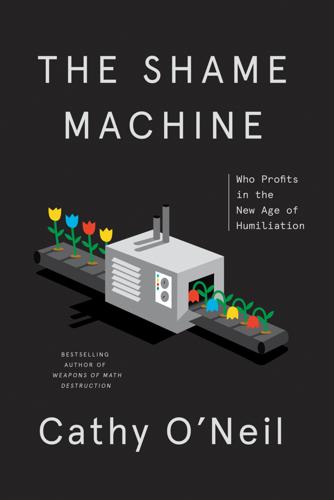
The Shame Machine: Who Profits in the New Age of Humiliation
by
Cathy O'Neil
Published 15 Mar 2022
Some of it spilled onto the victims of the disease. They were the ones, after all, who had let their guard down. And with every breath they were endangering everyone else. In a 2020 Johns Hopkins study, 42 percent of Americans agreed that “people who get COVID-19 have behaved irresponsibly.” One result of this judgment was that many victims of COVID-19 were reluctant to seek help: They withdrew or were in denial because they were ashamed. This was counterproductive, of course, and not only for the victims. It also raised the risks for everyone else. Shaming the afflicted is yet another form of punching down.
…
/pacifica-beach-yoga-bay-area-indoor-classes-studio-defies-covid-19-order-san-mateo-health-noncompliance/8910067/. GO TO NOTE REFERENCE IN TEXT “So think of vaccines as part of God’s plan”: Jan Hoffman, “Clergy Preach Faith in the Covid Vaccine to Doubters,” The New York Times, March 14, 2021, https://www.nytimes.com/2021/03/14/health/clergy-covid-vaccine.html. GO TO NOTE REFERENCE IN TEXT “not only because of our best interest”: Katie Jackson, “For Gathering Safely with Her Congregation and Traveling: Pastor Gets COVID-19 Vaccine,” WellSpan Health, May 21, 2021, https://www.wellspan.org/news/story/for-gathering-safely-with-her-congregation-and-traveling-pastor-gets-covid-19-vaccine/N6392.
…
When he was first homeless, he was sent to the Bellevue shelter in lower Manhattan, a place that he says looks like a prison. After two weeks there, they woke him up in the middle of the night and told him to put all of his stuff in a garbage bag. He was getting transferred to another shelter in Brooklyn. When the COVID-19 crisis hit in 2020, they moved Hutchins and lots of other homeless people again—this time into hotels, two to a room. But they were careful first to remove the cushy beds and replace them with uncomfortable cots. “They want it to be difficult,” he says. “They want to shame you.” So far, we’ve seen an abundance of moneymaking opportunities within the industrial shame complex: weight-loss consultancies, pharmaceutical giants, addiction camps—they all build rich markets and prey upon their customers.
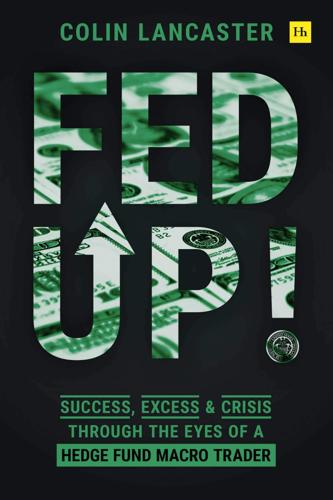
Fed Up!: Success, Excess and Crisis Through the Eyes of a Hedge Fund Macro Trader
by
Colin Lancaster
Published 3 May 2021
Part 2: The Crash Chapter 4 The Virus Spreads January 2020 1/1/20—Huanan Seafood Market closed by local authorities in response to illness outbreak. 1/3/20—ISM manufacturing declines to 47.2, its lowest print in a decade. 1/7/20—At a closed politburo meeting, Xi Jinping requests prevention and control work to address the new coronavirus. 1/8/20—South Korea announces its first case of coronavirus from China: a woman who had recently traveled to Wuhan. 1/10/20—Payrolls miss at 145K; unemployment steady at 3.5%; average hourly earnings at 2.9%, first time -3% since July 2018. 1/11/20— China reports its first COVID-19 death. 1/11/20—WHO announces: “The Chinese government reports that there is no clear evidence that the virus passes easily from person to person.” 1/15/20—Phase 1 of US/China trade deal signed. 1/16/20—Trump impeachment trial begins in the Senate. 1/16/20—Japan announces first COVID-19 case. 1/20/20—First reported case of COVID-19 in the USA. 1/23/20—Wuhan goes into lockdown. 1/30/20—FOMC leaves rates unchanged, downgrades household spending description to “moderate” from “strong.” 1/30/20—WHO declares “global health emergency.” 1/31/20—President Trump bans Chinese travelers from entering the USA.
…
Chapter 5 Risk Management and an Inflection Point February 2020 2/2/20—First COVID-19 death outside China (in the Philippines). 2/3/20—Pete Buttigieg appears to win the Iowa Caucus after count confusion. 2/3/20—USA declares “public health emergency.” 2/3/20—ISM manufacturing bounces back to 50.9; eased US/China trade tensions likely helped. 2/5/20—Trump acquitted by the Senate. 2/7/20—Payrolls beat at +225K for January; unemployment rate to 3.6%; average hourly earnings to 3.1%. 2/14/20—France announces first COVID-19 death within Europe. 2/19/20—S&P peaks. 2/23/20—Large swaths of Italy locked down in response to case surge. 2/26/20—South America’s first case: Brazilian man who had been in Italy. 2/26/20—Vice President Pence named head of COVID-19 Task Force; daily briefings. 2/29/20—First COVID-19 death in the USA.
…
Chapter 5 Risk Management and an Inflection Point February 2020 2/2/20—First COVID-19 death outside China (in the Philippines). 2/3/20—Pete Buttigieg appears to win the Iowa Caucus after count confusion. 2/3/20—USA declares “public health emergency.” 2/3/20—ISM manufacturing bounces back to 50.9; eased US/China trade tensions likely helped. 2/5/20—Trump acquitted by the Senate. 2/7/20—Payrolls beat at +225K for January; unemployment rate to 3.6%; average hourly earnings to 3.1%. 2/14/20—France announces first COVID-19 death within Europe. 2/19/20—S&P peaks. 2/23/20—Large swaths of Italy locked down in response to case surge. 2/26/20—South America’s first case: Brazilian man who had been in Italy. 2/26/20—Vice President Pence named head of COVID-19 Task Force; daily briefings. 2/29/20—First COVID-19 death in the USA. Month-end: UST 10s at 1.15%; S&P -8.2%; Nasdaq -6.4%; dollar index +0.8%; oil -12.5%. Red lights flashing, negative numbers shooting at me, faceless people mumbling about short gamma and curve flattening, visions of people running for the exits, night sweats, visions of my boss taking away my access pass and ushering me out of the building: a PnL dream.
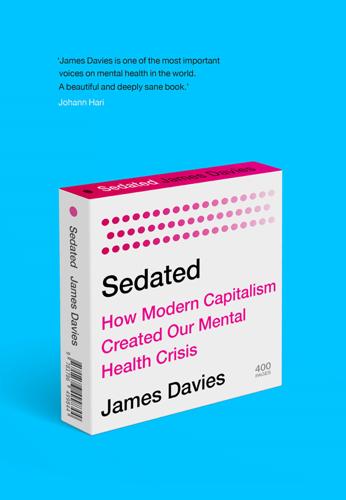
SEDATED: How Modern Capitalism Created Our Mental Health Crisis
by
James. Davies
Published 15 Nov 2021
(eds.) (2014), Suffering and Bioethics, Oxford: Oxford University Press, p.76. 6 We see this thinking permeating those on the economic right (in the works of Friedrich Hayek and Milton Friedman), as well as the left (Jürgen Habermas, Theodor Adorno and Erich Fromm). 7 For a particularly useful introduction to key works in this area, see: Keith, H., and Hann, C. (2011), Economic Anthropology, London: Polity Press. 8 However, for many analysts, including myself, it is clear that such calculated intent was very much at the heart of the pharmaceutical industry’s promotion of psychiatric drugs. Chapter Two: The New Culture of Proliferating Debt and Drugs 1 PWC (2020), ‘COVID-19: UK Economic Update’, https://www.pwc.co.uk/premium/covid-19/uk-economic-update-covid-19.pdf (accessed Aug. 2020). 2 Bank of England (2020), ‘Money and Credit – April 2020’, https://www.bankofengland.co.uk/statistics/money-and-credit/2020/april-2020 (accessed Aug. 2020). 3 TUC (2020), ‘Record household debt levels show why workers need a new deal’, https://www.tuc.org.uk/blogs/record-household-debt-levels-show-why-workers-need-newdeal (accessed Dec. 2020). 4 Almenberg, Johan, et al. (2018), ‘Attitudes towards debt and debt behaviour’, https://voxeu.org/article/our-changing-attitudes-towards-household-debt (accessed Dec. 2020). 5 Brewer, J. (2017), ‘Applicants to UK arts and design university courses decline by over 14,000 this year.
…
Those that embody – in full or in part – the aforementioned principles include: The Association for Humanistic Psychology Practitioners Drop the Disorder Hearing Voices Network Psychologists for Social Change Recovery in the Bin Soteria Network Open Dialogue UK National Survivors User Network Mindful Occupation Council for Evidence-based Psychiatry Mad in the UK Critical Psychiatry Network Mental Health Europe Critical Mental Health Nursing Network The Free Psychotherapy Network The Alliance for Counselling and Psychotherapy The United Kingdom Council for Psychotherapy The British Association of Counselling and Psychotherapy The British Psychological Society The Association of Clinical Psychologists 2 Saad-Filho, A. (2020), ‘From COVID-19 to the End of Neoliberalism’, Critical Sociology, https://doi.org/10.1177/089692052092996 6 (accessed 29 May 2020). 3 Mutikani, Lucia, ‘What to know about the report on America’s COVID-hit GDP’, World Economic Forum, https://www.weforum.org/agenda/2020/07/covid-19-coronavirus-usa-united-stateseconamy-gdp-decline/ (accessed Oct. 2020). BBC News, https://www.bbc.co.uk/news/business-53918568 (accessed 26 Aug. 2020). 4 Comas-Herrera, Adelina (2020), ‘Mortality associated with COVID-19 outbreaks in care homes: early international evidence’, ILTCPN, 2020, https://ltccovid.org/2020/04/12/mortality-associatedwith-covid-19-outbreaks-in-carehomes-early-international-evidence/ (accessed Oct. 2020). 5 Van Lancker, Wim, and Parolin, Zachary (2020), ‘COVID-19, school closures, and child poverty: a social crisis in the making’, Lancet Public Health, https://doi.org/10.1016/S2468-2667(20)30084-0. 6 BBC News Online (2020), ‘Coronavirus: higher death rate in poorer areas, ONS figures suggest’, https://www.bbc.co.uk/news/uk-52506979 (accessed Jan. 2021). 7 Weale, Sally (2020), ‘Four in 10 pupils have had little contact with teachers during lockdown’, Guardian, https://www.theguardian.com/education/2020/jun/15/2m-children-in-uk-have-done-almost-no-school-work-inlockdown (accessed Sept. 2020). 8 Saad-Filho, A. (2020), ‘From COVID-19 to the End of Neoliberalism’, Critical Sociology, https://doi.org/10.1177/0896920520929966. 9 Sheridan, Danielle (2020), ‘Companies accused of furlough fraud after data found two thirds of workers carried on working’, Telegraph, https://www.telegraph.co.uk/news/2020/08/23/companies-accused-furlough-frauddata-found-two-thirds-workers/ (accessed Sept. 2020). 10 Campbell, Denis (2020), ‘UK lockdown causing “serious mental illness in first-time patients”’, Guardian, https://www.theguardian.com/society/2020/may/16/uk-lockdown-causing-serious-mental-illness-in-first-timepatients (accessed Sept. 2020). 11 Office for National Statistics (2020), ‘Coronavirus and depression in adults, Great Britain: June 2020’, https://www.ons.gov.uk/peoplepopulationandcommunity/wellbeing/articles/coronavirusanddepressioninadultsgreatbritain/june2020 (accessed Sept. 2020). 12 Fujiwara, Daniel (2020), ‘The Wellbeing Costs of COVID-19 in the UK.
…
BBC News, https://www.bbc.co.uk/news/business-53918568 (accessed 26 Aug. 2020). 4 Comas-Herrera, Adelina (2020), ‘Mortality associated with COVID-19 outbreaks in care homes: early international evidence’, ILTCPN, 2020, https://ltccovid.org/2020/04/12/mortality-associatedwith-covid-19-outbreaks-in-carehomes-early-international-evidence/ (accessed Oct. 2020). 5 Van Lancker, Wim, and Parolin, Zachary (2020), ‘COVID-19, school closures, and child poverty: a social crisis in the making’, Lancet Public Health, https://doi.org/10.1016/S2468-2667(20)30084-0. 6 BBC News Online (2020), ‘Coronavirus: higher death rate in poorer areas, ONS figures suggest’, https://www.bbc.co.uk/news/uk-52506979 (accessed Jan. 2021). 7 Weale, Sally (2020), ‘Four in 10 pupils have had little contact with teachers during lockdown’, Guardian, https://www.theguardian.com/education/2020/jun/15/2m-children-in-uk-have-done-almost-no-school-work-inlockdown (accessed Sept. 2020). 8 Saad-Filho, A. (2020), ‘From COVID-19 to the End of Neoliberalism’, Critical Sociology, https://doi.org/10.1177/0896920520929966. 9 Sheridan, Danielle (2020), ‘Companies accused of furlough fraud after data found two thirds of workers carried on working’, Telegraph, https://www.telegraph.co.uk/news/2020/08/23/companies-accused-furlough-frauddata-found-two-thirds-workers/ (accessed Sept. 2020). 10 Campbell, Denis (2020), ‘UK lockdown causing “serious mental illness in first-time patients”’, Guardian, https://www.theguardian.com/society/2020/may/16/uk-lockdown-causing-serious-mental-illness-in-first-timepatients (accessed Sept. 2020). 11 Office for National Statistics (2020), ‘Coronavirus and depression in adults, Great Britain: June 2020’, https://www.ons.gov.uk/peoplepopulationandcommunity/wellbeing/articles/coronavirusanddepressioninadultsgreatbritain/june2020 (accessed Sept. 2020). 12 Fujiwara, Daniel (2020), ‘The Wellbeing Costs of COVID-19 in the UK. An Independent Research Report by Simetrica-Jacobs and the London School of Economics and Political Science’, https://www.jacobs.com/sites/default/files/2020-05/jacobs-wellbeing-costs-of-covid-19-uk.pdf (accessed Oct. 2020). 13 NHS (2020), ‘BSA Medicines Used in Mental Health, England 2015/16 to 2019/20’, https://nhsbsaopendata.s3-eu-west-2.amazonaws.com/mh-annual-narrative-final.html (accessed Sept. 2020). 14 Pierce, Mathias (2020), ‘Mental health before and during the COVID-19 pandemic: a longitudinal probability sample survey of the UK population’, Lancet Psychiatry 7(10):10883–92. 15 Public Health England (2020), ‘Guidance for the public on the mental health and wellbeing aspects of coronavirus (COVID-19)’, https://www.gov.uk/government/publications/covid-19-guidancefor-the-public-on-mental-healthand-wellbeing/guidance-for-thepublic-on-the-mental-health-andwellbeing-aspects-of-coronaviruscovid-19 (accessed Oct. 2020). 16 The Collective Psychology Project (2020), ‘Collective Resilience: How we’ve protected our mental health during COVID-19’, https://www.collectivepsychology.org/wpcontent/uploads/2020/09/Collective-Resilience.pdf (accessed Oct. 2020). 17 Social & Human Capital Coalition (2020), ‘Only 9 per cent of Britons Want Life to Return to “Normal” Once Lockdown Is Over’, https://social-human-capital.org/only-9-of-britons-want-life-to-return-tonormal-once-lockdown-is-over/ (accessed Oct. 2020). 18 UCL (2020), ‘Third of people report enjoying lockdown’, https://www.ucl.ac.uk/epidemiology-health-care/news/2020/jul/third-people-reportenjoying-lockdown (accessed Oct. 2020). 19 Harrabin, Roger, ‘Climate change: Could the coronavirus crisis spur a green recovery?’
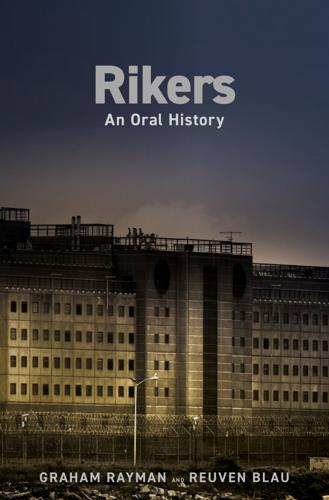
Rikers: An Oral History
by
Graham Rayman
and
Reuven Blau
Published 17 Jan 2023
A B C D E F G H I J K L M N O P Q R S T U V W X Y Z A Abady, Jonathan, 311 Absolam, Colin after Rikers, 404, 409 constant violence, 88 description of trip to Rikers, 7 making weapons, 164 on racial attacks, 87 reputations of detainees, 57–59 adjudication of cases, 23, 31 Alite, John, 180–81, 409 Antonov, Dimitri fear of new detainees during COVID-19, 340, 341 getting masks during COVID-19, 339 information about COVID-19, 332–33, 338, 344 detainees and civilians in kitchens, 157 lack of testing during COVID-19, 342 use of phones, 12–13 “Apache Lines,” 62 B Baer, Harold, 283, 284 bail guilty pleas and, 26–27, 38 for homeless, 123 inability to afford, 235, 265, 267 for misdemeanors, 26, 268 reform and number of incarcerated, 387 release and, 398–99 Bamenga, Lisette, 319–20, 322, 323 Barrow, Moses, 256 Barry, Charles, 401–2, 409 Bassett, Mary, 362, 363 bathrooms in bullpens, 10, 12, 27, 33 in protective custody section, 12 at Tombs, 21 Beame, Abraham, 379–80 Bee, Samantha, 329–30 Berman, Greg adjudication of cases, 31 after Rikers, 409 drugs and increase in crime, 388 importance of journalism in reform, 387–88 individuals arrested for misdemeanors, 29 Lippman Commission, 385–86, 389 on sentences, 32 Bernsen, Henry, 264 Bharara, Preet, 377 Bing.
…
See also correction officers: treatment of detainees; mentally ill individuals; specific individuals ability to establish relations with new officers, 173 attacks on officers by, 65–66 bullying other detainees, 17 dehumanization of, 8, 11, 16–17, 34, 46–48, 135–36, 328 handicapped, 342 hierarchy among, 87–88 ingenuity of, 325, 331 innocent, labeled as criminals, 244–45 learning law, 330 muscle building by, 224–25 officers assaulted by, 352 process undergone by, before visits, 301 race of, 41 sexual relations with officers, 229–30 violence of fights between, 14 Detrevarah, Grace, 270 developmentally disabled individuals, 118 Dinkins, David, 345 Drayton, Donovan, 8 after Rikers, 411 elderly in Rikers, 121 fighting to establish credentials, 248 first impression of Rikers, 7–8, 9–10 food in solitary confinement, 106 hiding contraband, 170 importance of visits, 302–3, 304 mental effects of being in solitary confinement, 97–98, 100, 102–3 officers Macing and beating detainees, 91–92 poor quality of food, 152 on process detainees undergo before visits, 303–4 punch (drink), 152 violence as way of surviving, 82 waiting for bail to get released, 398–99 Drayton, Ronny after Rikers, 411 dehumanizing treatment by officers of detainees, 46–48 on experiences when visiting, 302, 303 plantation mentality among officers, 52–53 drugs absence of detox help, 36, 136, 137–38 arrests for misdemeanors, 29 in bullpens, 10 crack and crime in New York City, 25, 388 crack and guilty pleas, 388 effect of crack on Rikers, 28–29, 351 failure to provide methadone, 116 gangs and, 176 going through withdrawal in bullpens, 8–9, 10 hiding, 177–78 history of, in Rikers, 3 liquid cocaine, 166 Lorenzo “Fat Cat” Nichols/Howard “Pappy” Mason organization and, 182 officers as smugglers of, 164, 173, 179, 180–81, 182–83 smuggled in, 166, 170–71, 175–76 visitors bringing in, 297–98 Dunn, Tahanee absence of plan for COVID-19, 333 after Rikers, 411 housing for detainees with COVID-19, 343–44 on mentally ill in solitary confinement, 109–11 officers ill with COVID-19, 337–38 sanitary measures during COVID-19, 338–39 Dunne, John, 235 E Edelmann, Joanne, 321, 322–24 elderly detainees, 121 Eldridge, Stanley, 327–28 Elijah, Soffiyah, 384 on “bullpen therapy,” 35–36 closing Rikers, 389–90 jail-attributable death, 138 pretrial detention and guilty pleas, 38 Emergency Response Units (ERUs), 57–58 escapes attempted, 214, 215–16, 221–22 gangs and, 207 detainee counts and, 208–9 officer aiding, 214–15 procedures not being followed and, 210–11, 212, 213 successful, 215 Tackmann’s attempted, 201–5, 209–10 Webb’s opportunity to, 205–8 while being transported, 212 while officers slept, 211, 215 Escartas, Shaneika, 413 Espinal, Mauricio, 195–96, 197 Eversley, Nestor after Rikers, 411 being locked in bus, 32 going through withdrawal, 36 on jail-attributable deaths, 136–38 making money selling contraband, 172 making weapons, 165–66 on officers as gang members, 83 pleading guilty, 33 reasons for being violent, 82–83 F Fat Joe after Rikers, 414 giving concerts in Rikers, 256 living in projects and school-to-jail pipeline, 43–44 treatment of Lil Wayne, 253–54 Feinblatt, John, 29 felonies, 39, 73 Figueroa, Hazel, 145 after Rikers, 418 basic facts about, 140–41 being pregnant, 141–44 on daughter, 144–45 Finkelman, Lewis, 285 Finkle, Florence after Rikers, 411 internal investigation system, 357, 366–67 fire safety, 277–79, 284–85 Flavor Flav, 5 food bartering, 159–60 in bullpens, 10–11, 35, 149, 198 cooked by detainees for selves, 161–62 distribution of, 28, 35 eating during COVID-19, 341 as hair dye, 160 hoarding, 153 keeping at proper temperature, 154–56 kitchen staff, 156–57, 158 KK (officers’ mess), 158–59 missing cutoff time for, 10–11 for mobsters, 151, 158–59 for Muslims and Jews, 157 punch (drink), 152 quality of, 149, 150–51, 152–53 riots and, 192–93, 232–33 in solitary confinement, 94, 95, 106 systemic problems, 153–54 tipping commissary employees, 160–61 at Tombs, 21, 23 Forbes, James “Shaquell” after Rikers, 412 separation of detainees by borough, 60 Fraser, William J., 366 Frazier, Larry.
…
See King, Amin “Minister” Frey, Matt after Rikers, 412 causes of violence, 91 desensitization to violence, 80 incarceration of mentally ill, 118–19 detainees’ housing assignments, 340–41 quality of medical care, 138–39 trauma of violence, 81 Frey, Warner, 368–70, 412 G Gangi, Robert after Rikers, 412 conditions in bullpens, 27–28 difficulty of detainees obtaining medical care, 130 high school in Rikers, 244 on racism in Rikers, 33 superiors not taking “the Program” seriously, 247 Gang Intelligence Unit (previously Gang Intelligence Task Force), 73 gangs bandannas as identification, 68–69 changes in purpose of, 77–78 in control of housing areas, 236, 238–39, 243, 270, 305, 306 drugs and, 176 entrance into, 13–14, 60–61, 65 escapes and, 207 history of, 12, 56, 57, 59, 61, 62–64, 68–71 housing assignments according to affiliation, 74–75 ignored by officers, 60–61 officers as members of, 77, 83, 311 officers working with leaders of, 61–62, 66, 68, 177 phone use controlled by, 50, 66, 72–73, 239, 240 power of, 61, 66–68, 72, 73–74 reasons for joining, 63, 75 gangs and violence in bullpens, 36–37 to establish credentials, 59 in housing areas, 14–15, 56–58, 60 marking teenagers, 245–46 between members of different, 49–50, 56–57, 60, 69, 72–73, 193–94 riots, 189–90 teenagers marked by, 245–46 teenagers preyed on by, 247–48 Gangster Killer Bloods, 70–71 Garcia, Biany being transsexual in Rikers, 272–73 on being transsexual in Rikers, 271, 274 Gastineau, Mark, 258–59 Gavin, Edward after Rikers, 412 attempted escape and, 210–11 community jails, 391–92 first day as officer, 15–16 food brought in for mobsters, 151 graduation ceremony of, 221 hostage situation, 195–97 on officer hitting Camacho, 259–60 on suicide, 115–16 Gilmore, Kenny after Rikers, 412 conditions in bullpen, 12 on visits, 191 Gilroy, Vincent, 3 Ginsberg, Allen, 149, 156 Giuliani, Rudy conditions in Rikers and, 277, 285 Jacobson and, 345, 346 Seabrook and, 365 “Gladiator School,” 237, 240 Glazer, Elizabeth, 362 de Blasio and criminal justice policy, 386 mentally ill detainees, 123 officers feeling like stepchildren among law enforcement officers, 374–75 power of Seabrook and, 362, 363 reduction of Rikers population, 388–89 on Sturz, 378–79 Gordon, Diane, 382 Green, Mark, 366 Grice, Marcus, 266 after Rikers, 412 on being attacked, 275 being HIV positive, 265 on fear of being in Rikers, 266 in general population teenage housing, 269–70 housing for homosexual teenagers, 271–72 officers’ treatment of LGBTQ detainees, 273–74 reading palms for officers, 270 on surviving Rikers, 275 Grieco, Martha after Rikers, 411 dangerous temperatures in housing areas, 288 Rikers as trigger for mentally ill, 114–15 Gristina, Anna after Rikers, 412 coloring hair with food, 160 on death due to officers’ inaction, 129–30 on fear of leaving, 406 in protective custody for mentally ill, 11–12, 115 violence to establish credentials, 90 on walking in water through metal detectors, 285–86 guilt crack epidemic and pleas of, 388 presumption of, 31, 244–45 reasons for pleading, 26, 32, 33, 35–36, 37–38 refusal to admit, 324–25 H handicapped individuals, 342 Hanley, Jim, 372 Harris, Darrel, 190 Harris, Dupree after Rikers, 413 basic facts about, 292 changes in purpose of gangs, 77–78 early gangs as brotherhoods, 62–64 on power of gang leaders, 73–74 searches of detainees after visits, 296–97 Harris, LaSharn, 293 after Rikers, 413 process visitors undergo, 293–94, 295, 296 racism of officers, 300 travel difficulties for visits, 292 Haynes, Derrick, 126 after Rikers, 249, 413 difficulty of obtaining medical care, 125–26, 128, 129 on gangs marking teenagers, 245–46 officers helping released teenagers, 248–49 riot in chapel, 246–47 Henagin, Lawrence after Rikers, 413 being beaten by officers, 45–46 being white detainee, 45–46, 51 on gang violence, 36–37, 72–73 riot over bananas, 89–90 Hernandez, Devonte after Rikers, 413 on getting used to teen housing area, 241 importance of visits to detainees, 299 on meeting detainees on outside, 249–50 mother’s visit experience, 294 officers ignoring violence between detainees, 243 transfer of, 250–51 vulnerable teenagers preyed on by gangs, 247–48 Heyward, Gary after Rikers, 413 beating detainees for making inappropriate sexual comments or advances to officers, 85 getting slashed, 88 ingenuity of detainees, 325 making weapons, 166 smuggling contraband, 173–74 suicides by officers, 228 history of drug use, 3 of gangs, 56, 57, 59, 61, 62–64, 69–71 of island Rikers is on, 5–6, 41 of racism, 48–49 Rikers Island Penitentiary plan, 6 of solitary confinement, 93–94 homeless individuals as detainees, 29, 117 Horn, Martin after Rikers, 413 on de Blasio and jails, 390 developing county-based jails, 384–85 on development of gangs in jails/prisons, 71 detainees bullying detainees, 17 insular environment of Rikers, 383–84 power of gangs, 72 Seabrook and Bloomberg, 366 selling Rikers, 381 “House of Dead Men,” 6 House of Detention for Men (HDM), 30 House of Xtravaganza, 267 housing areas alternative facilities due to overcrowding in, 400–401 assigning detainees to, 340–41 being removed from, before release, 399–400 blocked fire escape routes, 277–79 celebrity detainees in medical, 252, 255 conditions in, 286, 342 dangerous temperatures in, 287–88 declassification of heat-sensitive individuals and high temperatures in, 289–90 gangs and violence in, 56–58, 60 gangs in control of, 12, 236, 238–39, 305 infestations of mice, roaches, water bugs, rats, and spiders, 150, 280, 290 for detainees with COVID-19, 343–44 for LGBTQ detainees, 264, 270 for pregnant women, 145–46 sanitary measures during COVID-19 in, 332, 333–34, 338–39, 344 searches in, 356 social distancing during COVID-19, 332, 334, 339, 340, 341, 344 spread of COVID-19 in, 337 squalor of, 16 use of unready, new, 280 violence as constant in, 341 housing areas for teenagers gangs in control of, 243, 305, 306 as “Gladiator School,” 237, 240 for LGBTQ, 266 LGBTQ in regular, 269–70, 271–72 new jail for male, 235 state prisoners housed in, 245 violence in, 84, 237, 239, 240, 246 “Howl” (Ginsberg), 149, 156 Hunt, Ervin “Easy,” 30 after Rikers, 414 “bullpen therapy,” 32 detainees and civilians in kitchens, 156 own recidivism, 30, 39–40 on sister, 31–32 on working in kitchen, 151 Husamudeen, Elias after Rikers, 414 discrepancies in and manipulation of statistics, 349–50 effectiveness of solitary confinement, 100–101 Norman and, 364 Hylton, Donna after Rikers, 414 being forced to take medication, 133–34 conditions in clinic, 133 I infirmary/clinic, conditions in, 281 intake process, 8–9, 26 Israel, Stan, 363, 364 J Jacobson, Michael, 346 after Rikers, 414 on appointment as acting commissioner, 346–48 effects of “bullpen therapy,” 38–39 Giuliani and programs, 345 quality of medical care, 134 Seabrook and, 371–72 “Jails for the ’80s,” 384–85 James, Jesse, 309, 311 Ja Rule, 254, 256 Jay-Z, 256–57 John, Kadeem, 241–42 Johnson, Robert, 310 Jones, Latanya, 44–45, 323, 324 journalism, importance of, 387–88 K Kelly, Nellie, 307 after Rikers, 414 brother Ronald Spear, 306, 307–12 Kelly, Ray, 211 Kerik, Bernard after Rikers, 414 basic facts about, 347 on closing Rikers, 391 data collection and preparation process, 355 first impression of Rikers, 9 gang violence, 57 improvements fought by, 277 keeping food hot, 154 reduction of violence and, 352–53 Seabrook and, 368, 370–71 weapons smuggled in, 164–65 Kessler, Eve after Rikers, 415 constant violence, 89 corruption in Corrections Department, 16 manipulation of statistics, 360 number of mentally ill in jails, 117 record keeping by Department of Corrections, 359 on Seabrook, 364 Kev (Boxing Kev), 69 Keys, Alicia, 256 King, Amin “Minister,” 183 after Rikers, 415 basic facts about, 182, 187 drug business in Rikers, 182–83 power of gangs, 66–68 weapons in Rikers, 184–87 Kinkead, Mik, 298–99 Koch, Ed improvement of conditions in Rikers and, 148, 277 sale of Rikers, 379, 381 Sturz and, 376, 379, 380 Koehler, Richard after Rikers, 415 arrival of crack in New York City, 25 changing categories for “use of force,” 355 manipulation of statistics, 354–55 officers always getting blamed, 225 overcrowding and riots, 188 Seabrook and, 364 weapons, 164 Kuby, Ron innocent detainees labeled as criminals, 244–45 lessons taught to teenagers, 244–45 racism in Rikers, 48–49 Rikers as shelter for homeless mentally ill, 123–24 solitary confinement as frequent punishment, 94–95 L Lamashtu, Erobos Abzu, 197–99 Lampe, Bobby, 89 Lasker, Morris, 156, 380 laundry, conditions in, 281–82 Lee, Tami, 253 after Rikers, 415 ghosts at Rikers, 224 kosher food, 157 on self-discipline, 218 sexual relations between officers and detainees, 229–30 smuggling method, 175–76 Tupac at Rikers, 252–53 LGBTQ detainees attacks on, 272, 273, 275 deaths of, 264–65, 268 frequency of sexual attacks on, 264 in general population housing areas, 269–70 HIV positive, 265 hormones for transsexual individuals, 272–73 housing areas for, 264, 270 housing for teenage, 266, 271–72 romances in Rikers, 269 teenage girls, 269 Lindsay, John, 5 lingo, 15 Lippman, Jonathan Close Rikers campaign and, 377 death of Murdough and, 387 on need for criminal justice reform, 386 role of judiciary in criminal justice reform, 386–87 Lippman Commission closing Rikers and, 389–90 members, 389 public discussion of Rikers and, 389 reduction of Rikers population, 387 Sturz and, 385–86 Lombardi, Rick after Rikers, 415 attempted water escape and, 214 beating of teen not following “the Program,” 241–42 beginning of gangs in Rikers, 61, 69 being attacked by detainees, 64–66 being injured in protective custody, 76–77 contraband, 228–29 escapes and, 211, 212, 213 gangs and drugs, 176 gangs in control of housing areas, 238–39, 243 Gastineau, 258–59 hiding places for drugs, 177–78 high level of violence, 89 on hostage situation, 192 housing teenagers with state prisoners, 245 manipulation of statistics, 358–59 officers as gang members, 77 officers working with gangs, 61–62 “the Program” leading to violence, 239–40 Tackmann, 205 weapons, 176–77 Love, Michael, 60–61, 104 Lynch, Patty, 371 M Magro, Baldassare, 163 Mahon, Pete, 196–97 Malcolm, Ben, 223 Mark-Viverito, Melissa, 386 Marques, Stuart, 381–82, 393 Marte, Coss, 14–15, 415 Martin, Glenn after Rikers, 415 Close Rikers campaign, 377 failure of plan to sell Rikers and have community jails, 383 on process of reform, 394–95 Sturz’s commitment to reform, 385 McCray, Antron, 7 McGovern, James after Rikers, 403, 415 contracts being put on detainees, 91 escapes, 208–9, 212, 215 food for mobsters, 151 detainee counts, 208 on riot (1987), 192 violence between detainees, 36 weapons hidden by detainees, 37 McGrath, George, 235 McMickens, Jacqueline, 221 after Rikers, 415 difficulties of being officer, 220 food hoarding, 153 importance of personal ethics, 226–27 location and access to Rikers, 390 need for solitary confinement, 96 officer training and, 222 reasons for what appears to be cruelty by officers, 122–23 on relations between officers and detainees, 14 on resources to improve Rikers, 391–92 medical care celebrities in medical dorms, 252, 255 conditions in infirmary/clinic, 133, 281 by Corizon Health Inc., 125 during COVID-19, 335, 337 dental, 153 difficulty of obtaining, 125–29, 130 for homeless individuals, 117 hormones for transsexual individuals, 272–73 hospitalization, 128–29 detainee complaints about, 308–9 detainees forced to take medication, 133–34 lawsuit against hospital, 133 nurses covering for officers, 62 officers’ failure to provide medical care, 28, 129–32, 330 officers refusing to get, 129–32 during pregnancy, 141–47 quality of, 134–35, 138–39 in solitary confinement, 101–2, 104–5 Meldish, Joey, 168, 169 mentally ill individuals arrests of, for misdemeanors, 29 as “Brad H.,” 111 as caring for each other, 117–18 conditions in unit designed for, 286–87 death of, 286 estimated number of, in jails, 117, 119 heat-sensitivity and, 286, 289–90 inability of, to comply with officers’ orders, 119 poor treatment of, by detainees and staff, 108–9 problems created by, 113–14 in protective custody, 11–12, 115 Rikers as shelter for homeless, 123–24 Rikers as trigger for, 114–15 self-destructive behavior of, 111–13 in solitary confinement, 93, 95, 104–5, 108, 109–11 specialized units for, 119–20 suicide committed by, 116 mental observation units, 121–22 misdemeanors bail for, 26, 268 individuals arrested for, 29 sentences for, 31 Mitchell, Levi information about COVID-19, 344 social distancing during COVID-19, 340, 341 mobsters food for, 151, 158–59 privileges given to, 168–69, 262 Montanez, Paradise, 269 Montefiore Hospital, 134–35 Morse, Kathy after Rikers, 415 first impression of Rikers, 9 teenagers being in solitary confinement, 99 Murdough, Jerome, 286, 387 Murray, Archibald, 291 Mushlin, Michael after Rikers, 416 community jails, 393 on Department of Corrections fighting any improvements, 276–77 failure of community jails plan, 382–83 lawsuits against conditions in New York City jails, 379–80 Sturz and closing of Rikers, 380–81 N Newsday, 164 New York magazine, 347 The New York Times, 6, 148, 235, 380 Ninja Turtles, 42, 62, 86, 193 O odor of Rikers, 7 Oppenheim, Rachel, 328–29, 330–31, 416 Oppenheim, Tom, 319, 320 orange alerts, 15 Osei, Doris, 246, 250–51, 299–300 P “the pack up,” 396 Pasqua, Frank, III after Rikers, 414 conditions in housing areas, 286, 290 hiding contraband, 170 his contraband business, 178–80 detainees’ attempt to intimidate him, 85–86 detainees cleaning hazardous waste, 279 detainees cooking for selves, 161 KK (officers’ mess), 158–59 life as mobster in Rikers, 168–69 Pataki, George, 364–65 Perez, Mario “Machete” after Rikers, 416 fighting to establish credentials before gangs, 59 separation of detainees by borough, 59 Petcheam, Suzy, 320, 321, 321–22 Petraro, Anne, 108, 112 Philadelphia Gay News, 264 phones fights over, 17 gang control over, 50, 66, 72–73, 239, 240 selling PIN numbers, 12–13 in solitary confinement, 105 during visits, 292 Picciano, John, 371 Pierce, Gregory after Rikers, 416 emotional shutdown of, 85 officers beating detainees, 84–85, 87 punch (drink), 152 violence to prevent sexual attacks, 84 pleas, reasons for guilty “bullpen therapy,” 26, 32, 33, 35–36 crack epidemic and, 388 pretrial detention, 37–38 Polanco, Layleen, 266–67 Ponte, Joseph, 362, 363, 403 Powers, Peter, 346 Powitz, Robert after Rikers, 416 on age of units, 279–80 conditions in infirmary, 281 conditions in unit for mentally ill, 286–87 lack of cooperation from New York City to improve conditions, 276–77, 284–85, 286, 289–90 pregnancy abortion and, 146–47 methadone treatment during, 141 officers’ treatment during, 146–47 in pregnancy housing unit, 145–46 in regular housing unit, 141–43 in solitary confinement, 143–44 Price, Grace, 6–7, 416 Prison Health Services (PHS), 135.

Curbing Traffic: The Human Case for Fewer Cars in Our Lives
by
Chris Bruntlett
and
Melissa Bruntlett
Published 28 Jun 2021
In 2019, TU Delft even went as far as building a demonstration project on campus: a solar array capable of charging up to four electric bikes. Small wonder the Dutch government was promoting them as a viable alternative to public transport during the COVID-19 crisis, for journeys up to 20 kilometers (12 miles) in length. This is a mobility solution that checks all three boxes for comprehensive transportation resilience: it is recoverable, reliable, and most definitely sustainable. Crisis as a Turning Point The COVID-19 crisis didn’t just create a cycling revolution. It also led to a dining one, as cities such as London, Boston, New York, and Montréal quickly reclaimed many of their streets, curbside spaces, and parking lots to create “outdoor dining districts” to support their bars, cafés, and restaurants postlockdown.
…
Recent years have seen an unprecedented push for a more equitable reallocation of this (curb and street) space—especially for walking and cycling—in metropolitan areas across the globe. Fueled by converging climate, health, and safety crises, there is a growing urgency to reduce the speed, access, and volume of cars, in residential and commercial areas alike. The COVID-19 pandemic has further fueled this challenge to the hegemony of cars in cities, as physical distancing requirements suddenly forced citizens to question this inefficient allowance of space. But by focusing on facts, figures, and charts, these discussions often miss the most critical element: the human one.
…
“When the car became the dominant form of transportation, the post office, newsstand, bookstore, and videostore—all places where we crossed paths just a few years ago—became obsolete,” she writes on page 13. Decades later, the result is a level of loneliness that could be said, without hyperbole, to be reaching epidemic levels; a trend only compounded by lockdown conditions during the COVID-19 pandemic. According to Dr. Appleyard, a street in conflict is one where the car travels through and pushes people away, and they ultimately withdraw from the street itself. (Modacity) Forging close personal relationships is vital to humanity in many ways. It is how we learn compassion, empathy, and cooperation from an early age, and how we continue to learn and grow throughout our lives.

Culture Warlords: My Journey Into the Dark Web of White Supremacy
by
Talia Lavin
Published 14 Jul 2020
After years of measures to torment migrants—such as the administration’s “Remain in Mexico” policy, which stranded tens of thousands of asylum seekers in squalid and dangerous refugee camps on the Mexican side of the US border—and slash legal immigration, Miller quietly took advantage of the uncertainty and fear of the coronavirus pandemic of 2020 to enact the most ambitious anti-immigration actions of the Trump administration. While the justification for new anti-immigrant policies was putatively economic, Miller helped to ensconce in federal policy the long-held white-supremacist belief that immigrants bring disease. On April 22, 2020, Trump signed a Miller-engineered executive order barring new green cards from being issued.
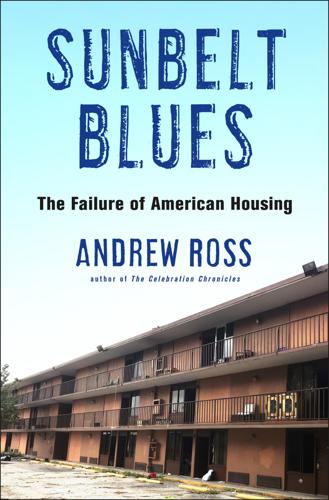
Sunbelt Blues: The Failure of American Housing
by
Andrew Ross
Published 25 Oct 2021
Cloud Airfield Site,”GrowthSpotter, October 20, 2020, https://www.growthspotter.com/news/osceola-county-developments/gs-news-rental-homes-20201020-g4ha5dgpcfaudaqtedstl2uhzy-story.html. 18. Occupancy data for all Florida tourist properties can be found at “COVID-19 FL Tourism Impacts,” Visit Florida, https://www.visitflorida.org/resources/crisis-preparation/covid-19-resources-and-information-for-businesses/covid-19-fl-tourism-impacts/. 19. Ken Storey, “Route 192 in Kissimmee Is About to Get a Dubai-Style Resort,” Orlando Weekly, April 4, 2016, https://www.orlandoweekly.com/Blogs/archives/2016/04/04/route-192-in-kissimmee-is-about-to-get-a-dubai-style-resort.
…
Jack Witthaus, “As Banks Shy Away, Private Equity Steps In to Fund More Orlando Real Estate Deals,” Orlando Business Journal, September 23, 2020, https://www.bizjournals.com/orlando/news/2020/09/23/orlando-commercial-projects-fewer-bank-loans.html. 2. Emily Benfer et al., “The COVID-19 Eviction Crisis,” Aspen Institute, August 7, 2020, https://www.aspeninstitute.org/blog-posts/the-covid-19-eviction-crisis-an-estimated-30-40-million-people-in-america-are-at-risk/. 3. Not untypically, Florida proved to be a worst-case scenario because state law requires tenants facing eviction to pay the rent they owe into the court registry just to get a hearing for their case.
…
Motels in particular, whether or not they are designated as “extended stay,” have become the default residence for a significant mass of Americans priced out of the rental and homeownership markets.25 Countless others are doubled up, reliant on the goodwill of relatives or friends with a room or sofa to spare, and who may be in need of extra cash to pay their own bills. In the Sunbelt states, where right-to-work laws ensure paltry wages, budget motels are a convenient stopgap for the meager availability of affordable housing. The COVID-19 pandemic amplified the preexisting conditions of economic stress. Converting the chronic housing crisis into an acute emergency, it threatened a massive wave of foreclosures and evictions, routinely anticipated in the media as a “tsunami.” To stem the tide, federal and local governments issued temporary bans on evictions, but even before these ran out, the ranks of unhoused began to swell.
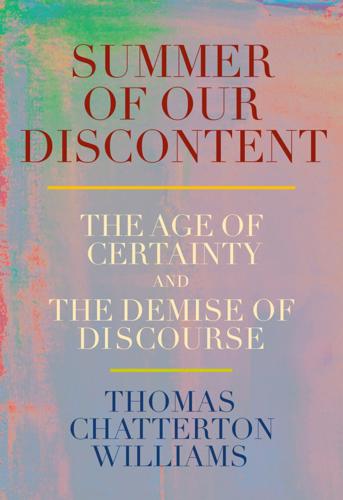
Summer of Our Discontent: The Age of Certainty and the Demise of Discourse
by
Thomas Chatterton Williams
Published 4 Aug 2025
” *10 Harold Clarke, Marianne C. Stewart, and Karl Ho, “Did Covid-19 Kill Trump Politically? The Pandemic and Voting in the 2020 Presidential Election,” Social Science Quarterly 102, no. 5 (2021): 2194–209, doi:10.1111/ssqu.12992. *11 By November, a 6:00 p.m. curfew was put in place, with even grocery stores shutting down. Crucially, however, there were no significant further disruptions to the schools. *12 It had been 72 percent as recently as May. Alec Tyson, Courtney Johnson, and Cary Funk, “U.S. Public Now Divided over Whether to Get COVID-19 Vaccine,” Pew Research Center, Sept. 17, 2020.
…
This is why it will never be sufficient to dismantle police departments if we wish to make our most vulnerable communities safer, or to abolish entrance examinations if we wish to bolster authentic equality, any more than it would make sense—as President Trump so foolishly recommended—to do away with COVID-19 testing if we wish to lower the rate of coronavirus infection.[*5] The summer of 2020 changed us. Like the Trump presidency of which it marked the beginning of a brief intermission, it has changed us in deep and complicated ways that are still unfolding. We could not return to the honeymoon phase of the early Obama era if we wanted to, and I suspect that an overwhelming majority of us, knowing what we know now, wouldn’t wish to do that, either.
…
On the one hand, there was the son and the brother, certainly down on his luck that long weekend, unemployed and carrying methamphetamines and fentanyl in his system. This man was in a bad way when law enforcement encountered him dozing in a parked car, having passed a counterfeit banknote moments earlier—a petty crime that even the cashier seemed embarrassed to have reported. This George Floyd had survived an early bout of COVID-19, only to be asphyxiated in broad daylight by an officer he’d once worked side by side with in his bouncer days at El Nuevo Rodeo nightclub. That mortal man’s biography, his early life as a promising high school athlete on an elite football squad in Houston, Texas, his scattered efforts as an aspiring rapper in that city’s “screw” scene afterward, and his practically unmentionable and half-hearted criminal career as someone who had allowed himself to be party to the robbery and pistol-whipping of a pregnant woman in her own apartment, fixed him in a specific time and place within the very real, painful, and transformative discourse around systemic poverty and racism, crime and punishment, Black Lives Matter, police violence, the limitations of the first black presidency and its immediate succession by what has been ruefully termed “the first white presidency.”[*1] On the other hand, there is the immortalized George Floyd, whose death exists in footage, on wretched loop in our brains, and can be instantaneously conjured on our screens as a discrete and profoundly shareable cultural unit.
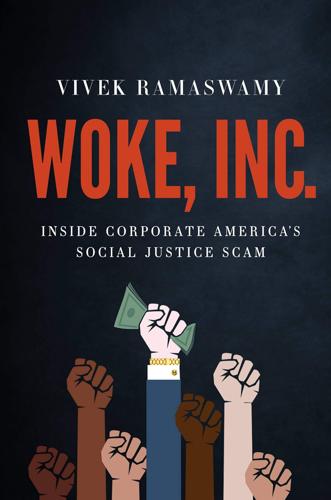
Woke, Inc: Inside Corporate America's Social Justice Scam
by
Vivek Ramaswamy
Published 16 Aug 2021
Under its stated standard, YouTube would’ve banned any videos in January 2020 that claimed that human-to-human transmission of COVID-19 was possible, given the official WHO stance at the time. In retrospect, that was arguably the most dangerous lie about public health in modern history. As of this writing, the issue remains relevant to other scientific debates surrounding COVID-19 as well. In the spring of 2020, the FDA approved a drug called remdesivir, which it says shortens the duration of hospital stays for patients with severe COVID-19. Tens of thousands of patients hospitalized in the United States went on to receive remdesivir, including one of my family members.
…
Foolishly, I ignored the brewing tide, hoping that it would naturally subside. We were due to have a townhall later that week, and I decided to use it as an occasion to try to focus the company on our near-term strategy for developing a treatment for COVID-19 and on stemming the impact of the virus on our other ongoing clinical trials. But within minutes after sharing our progress on COVID-19 initiatives, employees began asking questions like “What is Roivant doing to address systemic racism across its many subsidiaries?” “Are we going to revisit our recruiting practices?” I personally reject the narrative of systemic racism, so I listened and didn’t say much in response, trying to sound empathetic whenever I could.
…
Subramanian went so far as to argue that ESG metrics are the best measure for signaling future earnings risk—superior even to financial risk factors like the level of a company’s leverage, or debt burden.6 Harvard Business School professor George Serafeim, working in collaboration with Boston mutual fund manager State Street, observed that “during the market collapse” in the early stages of the COVID-19 pandemic, “firms experiencing more positive sentiment on their human capital, supply chain, and operational response to COVID-19 experienced higher institutional money flows” and less downside in share prices.7 Similar analyses abound. Morningstar found that sustainable index funds outperformed traditional index funds in the first quarter of 2020.8 Hermes Investment Management observed in 2018 that companies with good or improving ESG characteristics outperform companies with poor or worsening characteristics.9 Countless other reports come to similar conclusions.
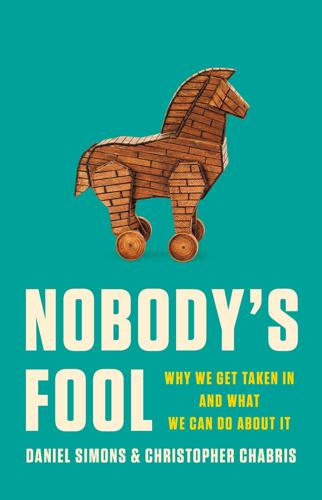
Nobody's Fool: Why We Get Taken in and What We Can Do About It
by
Daniel Simons
and
Christopher Chabris
Published 10 Jul 2023
Numbers that start out small, perhaps too small to attract worry or even notice, can reach disturbing levels faster than we intuitively realize—as the world saw with the exponential spread of Covid-19. Much as compounding interest amplifies wealth, the exponential (colloquially, “viral”) growth of anything amplifies its impact. For instance, if 10 people in your town are newly diagnosed with Covid-19 each day, then after 10 days there will be 100 more cases. The trend is linear at a rate of 10 per day; if we drew a graph with the date on the x-axis and the total number of cases on the y-axis, we would have a straight line going up and to the right. Now imagine instead that there were 10 new Covid-19 cases diagnosed on one day. On the next day, there were 11 new cases, on the third day 12, and then 13 and 14 on days 4 and 5, respectively.
…
A New York Post opinion article published in January 2022, for example, relied on an August 2021 analysis to claim that the best-quality studies do not provide good evidence for the claim that masks “work” against respiratory viruses. However, all but one of these studies were done before the Covid-19 pandemic, and the piece failed to mention the best mask study ever performed, a sophisticated experiment on Covid-19 prevention involving six hundred villages and hundreds of thousands of residents in Bangladesh. That study, published in December 2021 in the journal Science, had received considerable publicity in the weeks before the Post article was published.14 Even our ability to apply basic principles of logic can be subverted by our expectations.
…
The academic reviewers and editor who evaluated the impossibly precise critical flourishing ratio likely accepted the underlying premise that people who have more positive experiences are more likely to thrive and they wanted to believe in the power of psychological science to derive quantitative laws. Administrators at the University of Illinois who wanted to avoid a semester of fully remote learning were happy to act on the precise “worst case” estimate of seven hundred cases. The Trump administration wanted Covid-19 to be a smaller problem than it was, so they accepted the precise prediction of a rapid drop to zero deaths. Zero Covid-19 deaths in a few weeks should have seemed too good to be true, and history records that it was. Usually when something is too good to be true, it’s both too precise and too impressive, like Charles Ponzi’s promise of a return of 50 percent in 90 days.
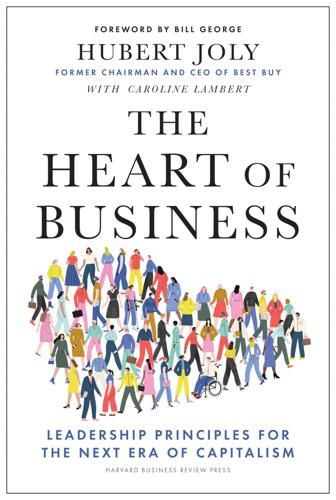
The Heart of Business: Leadership Principles for the Next Era of Capitalism
by
Hubert Joly
Published 14 Jun 2021
So was revitalizing Carlson Wagonlit Travel at a time when internet travel booking was supposed to kill the business. The Covid-19 pandemic that swept across the world in 2020 created significant challenges, threatening the survival of many companies. Yet the severe constraints around health and safety also offered new possibilities. Being forced to rethink process, products, and services brought about new ways to tap into unexplored demand and unleash new growth. Before the Covid-19 crisis, for example, Adobe, the digital creativity company, would hold an annual conference in Las Vegas for 15,000 attendees.
…
Besides expanding reach, the Covid-19 crisis has also created opportunities to transform customer experience. In April 2020, Best Buy decided to reopen some of its stores, which the company had closed in March, for one-on-one consultations by appointment. This took care of safety concerns related to excessive crowds in a store and provided a high-touch experience to customers. It also led to a higher sales close rate, as the shoppers who made an appointment were those actively looking for solutions and keen to pay for them, rather than browsers. In the same vein, the Covid-19 crisis and the associated safety concerns gave telemedicine a long-awaited boost, which technological progress has facilitated.
…
More and more people hold the system responsible for social fractures and environmental degradation. Employees, customers, and even shareholders expect much more from corporations than a blind pursuit of profit. Disengagement at work is a global epidemic. More recently, a new civil rights movement and the Covid-19 pandemic have accelerated the need to rethink our system if we want to tackle the enormous challenges facing us. Business can be a force for good in this fight; it is uniquely positioned to help address some of the world’s most pressing issues. A growing number of business leaders agree. But they and I know from experience that it is hard to do.
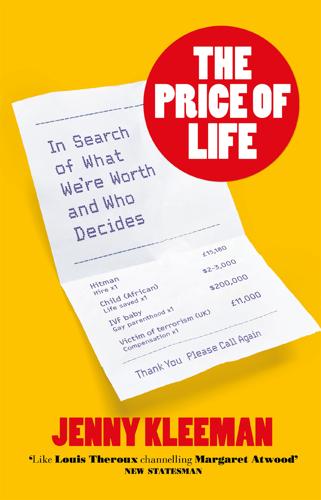
The Price of Life: In Search of What We're Worth and Who Decides
by
Jenny Kleeman
Published 13 Mar 2024
* So what were the real Covid-19 numbers? And what was the true human cost of lockdown? First: deaths. It is hard to be precise about the total number of lives taken by Covid-19 during the pandemic, because different countries counted deaths in different ways, and some barely counted them at all. Many who died from the virus wouldn’t have been tested for it, many who died with it didn’t die from it, and many will have died as a result of Covid disruption (such as cancer patients unable to get a diagnosis early enough for their disease to be survivable) but not from Covid-19 itself. The general consensus is that excess deaths – the increase in fatalities during a given time period compared with the average number of deaths expected during that period – is the best measure of the true Covid death toll.
…
utm_medium=social-media.content.np&utm_source=twitter&utm_campaign=editorial-social&utm_content=discovery.content stay at home Sandford, Alasdair, ‘Coronavirus: Half of humanity now on lockdown as 90 countries call for confinement’, Euronews (2 April 2020). https://www.euronews.com/2020/04/02/coronavirus-in-europe-spain-s-death-toll-hits-10-000-after-record-950-new-deaths-in-24-hou World Bank ‘COVID-19 to Add as Many as 150 Million Extreme Poor by 2021’, World Bank (7 October 2020). https://www.worldbank.org/en/news/press-release/2020/10/07/covid-19-to-add-as-many-as-150-million-extreme-poor-by-2021 shutting the economy down Yakusheva, Olga; van den Broek-Altenburg, Eline; Brekke, Gayle; and Atherly, Adam, ‘Lives saved and lost in the first six month of the US COVID-19 pandemic: A retrospective cost-benefit analysis’, Plos One (21 January 2022). https://journals.plos.org/plosone/article?
…
This isn’t how I’d choose to spend a Saturday morning in the middle of the UK’s second wave of the Covid-19 pandemic, but it’s unexpectedly thrilling to be here. This is the first time in nine months that I have been truly among people – throngs of strangers, a real, proper crowd – and it feels wonderful. The tambourines and whistles give it a carnival atmosphere, and the air is thick with a fug of skunk. But if this is a kind of street party, it’s a genuinely dangerous one: no one outside a clinical trial has received a Covid-19 vaccine anywhere in the world yet; 16,975 people are in British hospitals with Covid today and 451 people died with it yesterday.

Scary Smart: The Future of Artificial Intelligence and How You Can Save Our World
by
Mo Gawdat
Published 29 Sep 2021
Spreading through the air we breathe while being this smart is what turned COVID-19 into a global pandemic. But intelligent as it may be among viruses, COVID-19 is superstupid when compared to the lowest level of superintelligence humanity is currently creating. And yet how has our collective intelligence served us in our handling of the COVID-19 outbreak? Our mistakes, fortunately, did not lead us to total destruction, simply because COVID-19 itself did not have that capability, at least at the time of writing this. Here are some of the glaring mistakes we made. We ignore the evangelists For years prior to the outbreak of COVID-19, scientists, public health experts, prominent public figures and global organizations warned us about the possibility of a global pandemic.
…
The Outbreak of COVID-19 The story of how we handled the outbreak of COVID-19 is a classic example of how our arrogance, greed and political agendas led those in charge to respond in a manner that occasionally ignored our global well-being as one humanity. To start with, for a virus, COVID-19 is considered intelligent. You see, the threat of a virus is measured by three factors: one is its virality, the second is its fatality and the third is its stealth ability. ‘Intelligent’ viruses seem to find a clever balance between these parameters. This is what we witnessed with COVID-19, which is infectious while lying undetected for up to two weeks.
…
Around the time this book is published, we will be coming out of almost two years of living with the COVID-19 pandemic. We will be feeling optimistic that the vaccines are starting to work and that there is a chance for our way of life to go back to normal. But ‘normal’ is forever changing. I believe that the way our global community and political leaders have handled the outbreak of COVID-19 is not that different to the way they are handling the imminent outbreak of the artificial intelligence pandemic. I just hope that we can learn from the mistakes we made with COVID-19, and perhaps deal with this new shift in our way of life in a manner that ensures less disruption, more predictability and less social and economic adversity.
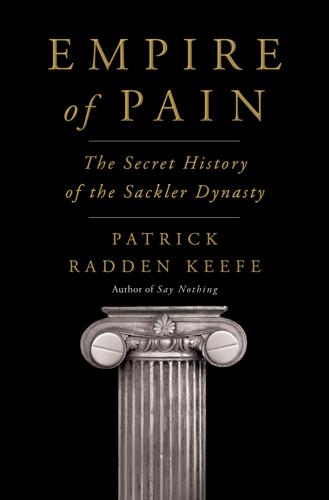
Empire of Pain: The Secret History of the Sackler Dynasty
by
Patrick Radden Keefe
Published 12 Apr 2021
But Caroline Maloney, the New York congresswoman who chaired the committee, sent a letter on December 8 indicating that if the family did not voluntarily accept her invitation, she would be forced to subpoena them. Nine days later, the hearing was convened. The proceedings would be held remotely, due to the Coronavirus pandemic, and that morning, David Sackler, dressed in a dark suit and sitting in a featureless fluorescent space that looked like a borrowed office, raised his right hand and was sworn in. When the family realized that some of them would have no choice but to appear, they had negotiated, offering David and Kathe, along with Craig Landau from Purdue.
…
It wasn’t just that the bankruptcy process prized economic compromise over all other values; it was that bankruptcy law is so technical and antiseptic that it is difficult for nonlawyers to grasp. “We’re fighting on their terms now,” one of the PAIN activists, Harry Cullen, complained. “The court speaks in terms of numbers. Everything is fungible.” Early on, the group staged die-ins on the steps of the courthouse. But after the arrival of the COVID-19 pandemic in March, Drain stopped holding hearings in person, shifting to telephone conferences, which robbed the protesters of a theater in which to stage their actions. “It chops us off at the knees,” Cullen said. “How are we supposed to hold them accountable?” Goldin actively intervened in the proceedings, helping start a committee of victims to push for greater accountability in the bankruptcy.
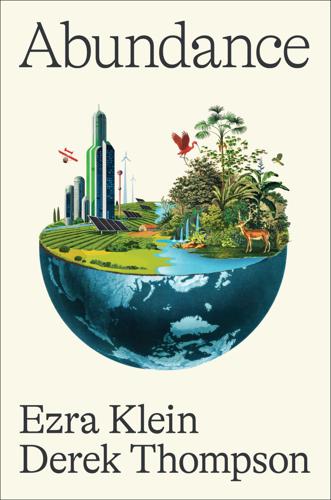
Abundance
by
Ezra Klein
and
Derek Thompson
Published 18 Mar 2025
Sandy Cohen, “The Fastest Vaccine in History,” December 10, 2020, UCLA Health, https://www.uclahealth.org/news/article/the-fastest-vaccine-in-history; Maya Prabhu, “Mumps: The Story of the Second Fastest Vaccine Ever Developed,” VaccinesWork/Gavi, April 22, 2022, https://www.gavi.org/vaccineswork/mumps-story-second-fastest-vaccine-ever-developed. 13. Colin Dwyer, “Moderna’s COVID-19 Vaccine Becomes 2nd to Earn FDA Authorization,” NPR, December 18, 2020, https://www.npr.org/sections/coronavirus-live-updates/2020/12/18/947948227/modernas-covid-19-vaccine-becomes-2nd-to-earn-fda-authorization; “Moderna Announces FDA Authorization of Moderna COVID-19 Vaccine in U.S.,” Moderna, press release, December 18, 2020, https://investors.modernatx.com/news/news-details/2020/Moderna-Announces-FDA-Authorization-of-Moderna-COVID-19-Vaccine-in-U.S/default.aspx. 14. Sarah Zhang, “The COVID Strategy America Hasn’t Really Tried,” Atlantic, February 14, 2022, https://www.theatlantic.com/health/archive/2022/02/vaccinate-old/622080/. 15.
…
Andy Markowitz and Jenny Rough, “List of Coronavirus-Related Restrictions in Every State,” March 17, 2020, updated May 1, 2024, https://www.aarp.org/politics-society/government-elections/info-2020/coronavirus-state-restrictions.html; Victor Fiorillo, “Yes, Even Your Outdoor Socially Distanced Thanksgiving Party Is Banned,” Philadelphia, November 17, 2020, https://www.phillymag.com/news/2020/11/17/outdoor-thanksgiving-philadelphia-covid/; Gabrielle Connor, Vaishnavi Vaidya, Jennifer Kolker, and Ran Li, “Indoor Dining and COVID-19: Implications for Reopening in 30 U.S. Cities,” Urban Health Collaborative, Drexel University, September 2020, https://drexel.edu/~/media/Files/uhc/Additional%20Project%20Documents/IndoorDiningCOVID19.ashx?la=en; “State Alcohol-Related Laws During the COVID-19 Emergency for On-Premise and Off-Premise Establishments as of June 15, 2020,” National Institute on Alcohol Abuse and Alcoholism/National Institutes of Health, June 15, 2020, https://alcoholpolicy.niaaa.nih.gov/sites/default/files/file-page/apis_-_covid-19_memo_6.15.20_508c.pdf. 10. Jason Abaluck et al., “The Impact of Community Masking on COVID-19: A Cluster-Randomized Trial in Bangladesh,” August 31, 2021, https://poverty-action.org/sites/default/files/publications/Mask_RCT____Symptomatic_Seropositivity_083121.pdf. 11.
…
John Holder, “Tracking Coronavirus Vaccinations Around the World,” New York Times, updated March 13, 2023, https://www.nytimes.com/interactive/2021/world/covid-vaccinations-tracker.html; Pfizer, map of Pfizer-BioNTech COVID-19 vaccine shipments, n.d., https://www.pfizer.com/science/coronavirus/vaccine/working-to-reach-everyone-everywhere; Moderna, “U.S. Government Purchases Additional 100 Million Doses of Moderna’s COVID-19 Vaccine,” February 11, 2021, https://investors.modernatx.com/news/news-details/2021/U.S.-Government-Purchases-Additional-100-Million-Doses-of-Modernas-COVID-19-Vaccine/default.aspx. 30. Karikó, Breaking Through, Kindle, 195. 31. Derek Thompson, interview with Katalin Karikó. 32.

What We Owe the Future: A Million-Year View
by
William MacAskill
Published 31 Aug 2022
This is an estimate by the Economist of the excess deaths from COVID-19 up until November 22, 2021 (Economist 2021c). While 17 million excess deaths are the stated best guess, there is considerable uncertainty: the estimate indicates that with 95 percent probability the true number falls between 10.8 million and 20.1 million. Excess deaths measure the difference between how many people died during the COVID-19 pandemic compared to an estimate of how many would have died if COVID-19 had not happened. This accounts for various issues of under- and overreporting of deaths attributable to COVID-19. More at whatweowethefuture.com/notes. 16.
…
If we do not rise to the challenge, there is a decent chance that humanity could come to a premature end and our future could be destroyed. Engineered Pathogens Most of this book was written during the COVID-19 pandemic. At the time of writing, COVID-19 is estimated to have caused seventeen million excess deaths worldwide—one in every five hundred people.15 The death toll is sure to increase in the future. The economic cost will amount to more than $10 trillion.16 And billions of people have lived under lockdown for months on end, unable to see their family and friends in person, even when dying in hospital. But, despite the toll of COVID-19, in some respects we’ve gotten off easily. We know that viruses (like Ebola) can be deadlier than the new coronavirus, and some (like the measles) can be more transmissible.
…
Only once a huge comet collided with a nearby planet, creating a fireball that reached more than thirty thousand degrees Celsius,58 did governments and the wider public turn their attention towards the risk from asteroids and comets. It is tragic that it might take something as disastrous as COVID-19 to convince the world to pay more attention to pandemics. And the COVID-19 pandemic is tame in comparison with the horrors that novel engineered pathogens might bring. The world eventually got its act together on asteroids and comets. It is time we did the same for engineered pathogens.59 People in the longtermist community were warning about pandemics for many years prior to COVID-19. One of the main longtermist funders, Open Philanthropy, was one of the few pre-COVID funders of pandemic preparedness in the world.

AI 2041: Ten Visions for Our Future
by
Kai-Fu Lee
and
Qiufan Chen
Published 13 Sep 2021
Understanding these 3D structures is essential to understanding how viruses work, as well as how to fight them. For example, the spike protein of COVID-19 can attach to a receptor on the surface of human cells, like a key fits into a lock. After the internalization of virus particles into human cells, the viral genome (RNA, in the case of COVID-19) is transmitted to the host cell and replicated in many human organs, which results in the infected person’s experiencing COVID-19 symptoms. Similar to the way a virus attaches to a human cell, pathogen treatment works by attaching a treatment molecule onto the pathogen to inhibit its function.
…
—CONFUCIAN ANALECTS, 9:31 NOTE FROM KAI-FU: Inspired by the pandemic year during which this book was written, “Contactless Love” imagines that COVID-19 continues on after the initial vaccines, with new variants of the virus resurging periodically. Humans must learn to coexist with it, helped in part by the ubiquity of household robots that reduce the need for person-to-person contact. The heroine of this story takes the desire to close oneself off from the world to an extreme, however, setting up a conflict between pursuing love and avoiding human contact. “Contactless Love” explores some of the questions raised by the arrival of a globe-altering pandemic, including its stresses but also how COVID-19 has accelerated other trends that may be positive, including new drug discovery, precision medicine, and robotic surgery, all enhanced by AI.
…
When we look back in 2041, we will likely see healthcare as the industry most transformed by AI. Concern about physical contact, another aspect of COVID-19—illustrated by Chen Nan’s phobias and shut-in lifestyle—will create many opportunities for robotics, an area that, because of improving technologies, is poised for just such a breakthrough. So, will your apartment in 2041 be filled with the kind of busybody robotic helpers Chen Nan relies on in the story? I’ll give you my opinion on that question in the pages that follow. Finally, I want to examine how COVID-19 will drive the adoption of distance work, communication, learning, commerce, and entertainment.
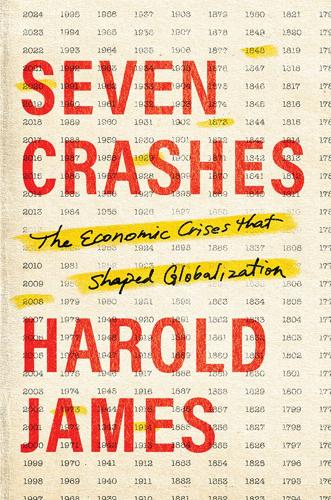
Seven Crashes: The Economic Crises That Shaped Globalization
by
Harold James
Published 15 Jan 2023
Francesco Guarascio, “EU States Back Spending up to $2.7 Billion Upfront on COVID-19 Vaccines,” Reuters, June 12, 2020, https://www.reuters.com/article/us-health-coronavirus-eu-vaccines/eu-states-back-spending-up-to-2–7-billion-upfront-on-covid-19-vaccines-idUSKBN23J20S. 15. David Meyer, “Here’s How Much Europe Will Pay for Each COVID-19 Vaccine,” Fortune, December 18, 2020. 16. Bojan Pancevski, “How a Covid-19 Vaccine That Caught Trump’s Eye Lost Its Way—and Found It Back,” Wall Street Journal, March 24, 2021. 17. “Pfizer and BioNTech Announce Further Details on Collaboration to Accelerate Global COVID-19 Vaccine Development,” Businesswire, April 9, 2020, https://www.businesswire.com/news/home/20200409005405/en/. 18. Owen Dyer, “Covid-19: Countries Are Learning What Others Paid for Vaccines,” British Medical Journal, January 29, 2021, https://www.bmj.com/content/372/bmj.n281. 19.
…
Philip Ball, “The Lightning-Fast Quest for COVID Vaccines—and What It Means for Other Diseases,” Nature, December 18, 2020, https://www.nature.com/articles/d41586–020–03626–1. 13. Brit McCandless Farmer, “COVID-19 Vaccine: The Taxpayers’ Gamble,” CBS News/60 Minutes Overtime, November 13, 2020, https://www.cbsnews.com/news/covid-19-vaccine-taxpayers-60-minutes-2020–11–13/; Emily Barone, “The Trump Administration’s ‘Operation Warp Speed’ Has Spent $12.4 Billion on Vaccines. How Much Is That, Really?” Time, December 14, 2020, https://time.com/5921360/operation-warp-speed-vaccine-spending. 14. Francesco Guarascio, “EU States Back Spending up to $2.7 Billion Upfront on COVID-19 Vaccines,” Reuters, June 12, 2020, https://www.reuters.com/article/us-health-coronavirus-eu-vaccines/eu-states-back-spending-up-to-2–7-billion-upfront-on-covid-19-vaccines-idUSKBN23J20S. 15.
…
On January 21, the Department of Health in Washington State reported the first confirmed case of Covid-19 in the United States in Snohomish County, Washington, in a patient who had traveled from Wuhan. On January 30, the WHO announced a “public health emergency of international concern” regarding the outbreak of novel coronavirus, and the following day the U.S. Secretary of Health and Human Services proclaimed a public health emergency. On February 21, the first Italian case was detected near Milan. On February 29, the governor of Washington revealed the first confirmed death in the United States from Covid-19 and declared a state of emergency. On March 1, the governor of New York detailed the first case there, in a medical worker.

The Equality Machine: Harnessing Digital Technology for a Brighter, More Inclusive Future
by
Orly Lobel
Published 17 Oct 2022
Marina Adshade, “We Need Academic Conferences About Robots, Love, and Sex,” Future Tense (blog), Slate, December 13, 2018, https://slate.com/tech nology/2018/12/love-sex-robots-conference-bannon-academic-research.html. 14. Andrea Morris, “Talk to Your Sex Robot About COVID-19,” Forbes, July 28, 2020, www.forbes.com/sites/andreamorris/2020/07/28/talk-to-your-sex-robot-about-covid-19. 15. Ian Yeoman and Michelle Mars, “Robots, Men and Sex Tourism,” Futures 44, no. 4 (May 2012): 365. 16. Shivali Best, “Sex Robots Could Be Subject to ‘Visual Laws’ to Stop Them Looking Too Realistic,” Daily Mirror, June 10, 2019, www.mirror.co.uk/tech/sex-robots-could-subject-visual-16494038. 17.
…
Leaders in the fields of AI, robotics, and digitization are making amazing leaps in research and technological innovation all the time, but wins are never without losses, and glitches and missteps will always cause alarm. Yet even during some of our darkest times (and perhaps especially so)—recently, the Covid-19 pandemic and the social upheavals of 2020, with so many confined to their homes or protesting in the streets against brutality and discrimination—we saw how technological advancements served as a positive force. Technology connected us during isolation, provided care and interaction for the elderly and the sick, assisted the transition to remote work, helped mobilize civil rights activism, kept live records of systemic abuse by law enforcement and private corporations, and made those records known.
…
The mobile capture and widespread social media dissemination of the video of George Floyd’s murder at the hands of a Minnesota police officer are but one example. Data mining also helped policymakers and scientists assess risks, monitor compliance with shelter-in-place ordinances, and accelerate the race for mass Covid-19 vaccination and herd immunity. When the application of technology fails—as with racially biased facial recognition algorithms, for instance—these failures can be better exposed than past wrongs that were hidden from sight and not recorded. And failures can often be better corrected than our human fallibilities.
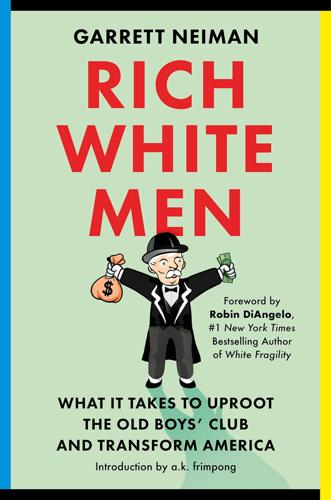
Rich White Men: What It Takes to Uproot the Old Boys' Club and Transform America
by
Garrett Neiman
Published 19 Jun 2023
Instead of investing in abolishing poverty, America’s leaders have invested in the prison industrial complex, which is plagued by brutal conditions that normalize sexual assault and murder. Even wrongly convicted and nonviolent offenders sometimes find themselves sentenced to death by guard brutality, inmate violence, or unsanitary conditions. The COVID-19 pandemic has compounded the health crisis in American prisons: as of April 2021, three thousand incarcerated people died of COVID-19.40 In today’s era of mass incarceration, both liberals and conservatives are questioning the massive resources that the United States is allocating to maintain its role as the incarceration capital of the world. According to the American Action Forum, the United States spends nearly $300 billion annually policing communities and incarcerating 2.2 million people.41 The societal costs—lost earnings, adverse health effects, and damage to families—are triple the direct costs, bringing the total annual burden of America’s criminal justice system to $1.2 trillion.
…
Our analysis shows that these are traits that are more often being displayed by women.”17 New evidence suggests that female leaders have been especially effective during the COVID-19 pandemic. When Zenger and Folkman conducted 360-degree assessments again during the pandemic, the gap between male and female leaders had widened.18 In another study, University of Wisconsin researchers found that states with female governors issued earlier stay-at-home orders and ultimately had fewer COVID-19 deaths.19 That study reviewed hundreds of governor briefings, totaling 1.2 million words, that took place between April 1, 2020, and May 5, 2020, and found that female governors were more confident and empathetic.
…
Kilolo Kijakazi and Alexander Carther, “How Baby Bonds Could Help Americans Start Adulthood Strong and Narrow the Racial Wealth Gap,” Urban Institute, January 23, 2020, https://www.urban.org/urban-wire/how-baby-bonds-could-help-americans-start-adulthood-strong-and-narrow-racial-wealth-gap. 40. Aaryn Urell, “Covid-19’s Impact on People in Prison,” Equal Justice Initiative, April 16, 2021, https://eji.org/news/covid-19s-impact-on-people-in-prison/. 41. Tara O’Neill Hayes, “The Economic Costs of the U.S. Criminal Justice System,” American Action Forum, July 16, 2020, https://www.americanactionforum.org/research/the-economic-costs-of-the-u-s-criminal-justice-system/. 42.

On the Edge: The Art of Risking Everything
by
Nate Silver
Published 12 Aug 2024
GO TO NOTE REFERENCE IN TEXT when a subcommittee: Kathleen Dooling, “Phased Allocation of COVID-19 Vaccines,” ACIP COVID-19 Vaccines Work Group, November 23, 2020, cdc.gov/vaccines/acip/meetings/downloads/slides-2020-11/COVID-04-Dooling.pdf. GO TO NOTE REFERENCE IN TEXT significant public outcry: Kelsey Piper, “Who Should Get the Vaccine First? The Debate over a CDC Panel’s Guidelines, Explained,” Vox, December 22, 2020, vox.com/future-perfect/22193679/who-should-get-covid-19-vaccine-first-debate-explained. GO TO NOTE REFERENCE IN TEXT been playing favorites: Americans preferred prioritizing health-care workers, nursing-home residents, and people with comorbidities rather than “people of color and other communities with higher COVID-19 burden.”
…
Riverians think that partisan position taking often serves as a shortcut for the more nuanced and rigorous analysis that public intellectuals ought to engage in. They think these problems were particularly apparent during the COVID-19 pandemic and that the Village often adopted nakedly partisan positions—from endorsing public gatherings for the George Floyd protests after weeks of telling people to stay at home, to pushing to discourage Pfizer from making any announcement of the efficacy of its COVID-19 vaccine until after the 2020 presidential election—under the guise of scientific expertise. Riverians also think that Villagers are too conformist and not aware of the degree to which their views are influenced by confirmation bias and political and social fads within their communities.
…
GO TO NOTE REFERENCE IN TEXT casino gaming revenues: “United States Commercial Casino Gaming: Monthly Revenues,” UNLV Center for Gaming Research, April 2022, web.archive.org/web/20220425090331/gaming.library.unlv.edu/reports/national_monthly.pdf. GO TO NOTE REFERENCE IN TEXT to traffic accidents: “During COVID-19, Road Fatalities Increased and Transit Ridership Dipped,” GAO WatchBlog (blog), January 25, 2022, gao.gov/blog/during-covid-19-road-fatalities-increased-and-transit-ridership-dipped. GO TO NOTE REFERENCE IN TEXT named Brek Schutten: Sean Chaffin, “ICU Nurse Brek Schutten Claims Record-Breaking WPT Win—World Poker Tour,” World Poker Tour, May 20, 2021, worldpokertour.com/news/icu-nurse-brek-schutten-claims-record-breaking-wpt-winc [inactive].
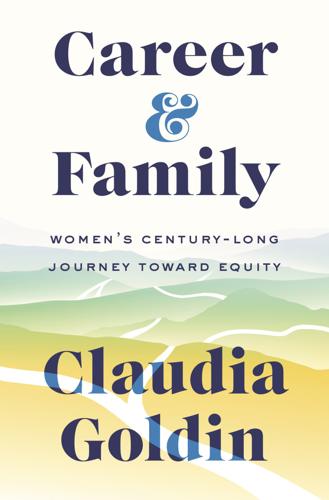
Career and Family: Women’s Century-Long Journey Toward Equity
by
Claudia Goldin
Published 11 Oct 2021
But, as I noted then, Group Five includes women who are even younger, and its end date is not yet clear. 222 “Pandemic Will ‘Take Our Women 10 Years Back’ …” Amanda Taub, “Pandemic Will ‘Take Our Women 10 Years Back’ in the Workplace,” New York Times, September 26, 2020. 222 “Pandemic Could Scar a Generation of Working Mothers,” Patricia Cohen and Tiffany Hsu, “Pandemic Could Scar a Generation of Working Mothers,” New York Times, June 3, 2020. 222 “How COVID-19 Sent Women’s Workforce Progress Backward.” Julie Kashen, Sarah Jane Glynn, and Amanda Novello,“How COVID-19 Sent Women’s Workforce Progress Backward,” Center for American Progress, October 30, 2020, https://www.americanprogress.org/issues/women/reports/2020/10/30/492582/covid-19-sent-womens-workforce-progress-backward/. 222 “… you’re allowed only a kid or a job.” Deb Perelman, “In the Covid-19 Economy You Can Have a Kid or a Job. You Can’t Have Both,” New York Times, July 2, 2020. See also Allyson Waller, “Woman Says She Was Fired Because Her Children Disrupted Her Work Calls,” New York Times, July 8, 2020. 223 fell by just 1.2 percentage points … fell by 4.9 percentage points Monthly CPS data on labor force participation were used by comparing rates for September 2020 to January 2021 with those for September 2019 to January 2020.
…
Newspapers and news feeds are filled with disquieting prophecies about the future of the younger members of Group Five: “Pandemic Will ‘Take Our Women 10 Years Back’ in the Workplace,” “Pandemic Could Scar a Generation of Working Mothers,” and “How COVID-19 Sent Women’s Workforce Progress Backward.” In the age of COVID, those with children and others to care for are struggling to put in the hours, publish the academic papers, write the briefs, and attend to demanding clients on Zoom. According to these predictions, a rug is being pulled out from under those who were finally able to achieve historic rates of career and family. As Deb Perelman, a food blogger, put it, “Let me say the quiet part loud: In the Covid-19 economy, you’re allowed only a kid or a job.” Is Group Five being forced to relive the compromises once made by the women of Group One?
…
See also gender earnings gap; inequality of income economic downturns: caregiving connections to, 219, 231–32, 237; COVID-19 pandemic creating, 74, 219, 221–23, 226, 231, 235; Great Depression as (see Great Depression); marriage effects of, 93; “she-cessions” as, 223 economic growth, 22–23 Economics of Household Production (Reid), 47, 48 education: advanced and professional degrees in (see advanced and professional degrees); age at time of, 41, 50, 265n41; antibias or diversity, 155; antidiscrimination laws for, 130, 225; coeducation in, 42, 82–83, 225, 266n43, 273n83; cost of, 90–91; college graduation rates, 41; COVID-19 pandemic effects on, 16, 203, 219, 221, 225, 227–29, 231; drop-out rates in, 85, 86–87, 274n87; gender earnings gap and, 159–60, 287n160; gender statistics on, 5–6, 41–42, 91–92, 275n92; of Group One women, 25–27, 39–45, 41, 49–50, 269n59; of Group Two women, 28–29, 39–45, 41, 70–71, 86; of Group Three women, 29–30, 39–45, 41, 86, 91–92, 95–96, 101–2, 104, 105–6, 112, 124, 274n86, 276n95, 277n101, 278n104; of Group Four women, 30–33, 39–45, 41, 112–13, 115, 117, 122, 127–30, 129, 139, 146, 199, 284n139; of Group Five women, 33, 39–45, 41, 139, 148–49, 149, 284n139; high school movement for, 71; lowered barriers to, 22; major selection for, 95–96, 101–2, 112, 128–29, 276n95, 282n128; marriage effects on, 35, 86–87; occupation-specific, 95–96, 112; for pharmacists, 190; pregnancy effects on, 36; prohibitions on, 20; sex ratio of, 41–42, 91–92, 275n92; single-sex institutions for, 42, 44; social class and, 42, 43, 50; white-collar work demands for, 70–71.
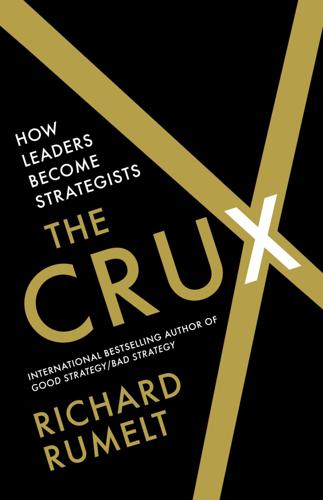
The Crux
by
Richard Rumelt
Published 27 Apr 2022
As I write this paragraph, I am homebound by the COVID-19 virus. Unlike South Korea, the US government was unable to quickly respond to the new virus. The media wanted to blame President Trump, but, for all his failings, the main problem was systemic. The US Department of Health & Human Services is a giant bureaucracy that manages both the Food and Drug Administration (FDA) and the Centers for Disease Control (CDC). As the COVID-19 pandemic hit the United States, there was mistrust, infighting, politics, and incompetence throughout the whole system. Despite years of warnings and studies about possible pandemics just like COVID-19, no one had an action plan.
…
Because it was free and easy to use, and because it was, by definition, a communication device, it began to spread like wildfire. With the COVID-19 lockdowns, Zoom traffic increased by 3,000 percent in May 2020. To “Zoom” became a verb. Students Zoomed to school. The product’s security was criticized, the Zoom team made fixes, and public health experts began to worry about the effects of back-to-back Zoom meetings on locked-down people. As much of the world moves past the COVID-19 emergency, the obvious challenges for Zoom are a reduction in video meetings combined with jealous competition from Google, Microsoft, and others.
…
It would lay out the conditions that might warrant forced obedience versus those that permit a modicum of individual freedom. COVID-19’s mortality rate for those under seventy is apparently less than 1 percent. What if the pandemic is truly horrific, with a 10 percent mortality rate, then what? And could anyone have predicted that the media and politicians would use the disease as a tool to bludgeon their rivals? The big success in the United States with regard to the pandemic was not any long-range strategic plan but the highly crux-based strategic “Warp Speed” project. Before COVID-19, developing a vaccine was a long-term affair. The fastest prior vaccine development was for the mumps, which took four years.
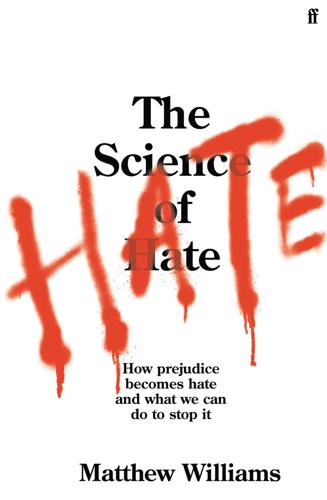
The Science of Hate: How Prejudice Becomes Hate and What We Can Do to Stop It
by
Matthew Williams
Published 23 Mar 2021
Choi, ‘In Six Weeks, STOP AAPI HATE Receives over 1700 Incident Reports of Verbal Harassment, Shunning and Physical Assaults’, STOP AAPI HATE Reporting Center, 13 May 2020. 29. Home Affairs Committee, ‘Oral Evidence: Home Office Preparedness for Covid-19 (Coronavirus), Hc 232’, London: House of Commons, 2020. 30. Human Rights Watch, ‘Covid-19 Fueling Anti-Asian Racism and Xenophobia Worldwide’, 12 May 2020, www.hrw.org/news/2020/05/12/covid-19-fueling-anti-asian-racism-and-xenophobia-worldwide. 31. Institute for Strategic Dialogue, ‘Far-Right Exploitation of Covid-19’, London: ISD, 2020. 32. Institute for Strategic Dialogue, ‘Covid-19 Disinformation Briefing No. 2’, London: ISD, 2020. 33. A. Goldman, ‘Man Suspected of Planning Attack on Missouri Hospital Is Killed, Officials Say’, New York Times, 25 March 2020. 34.
…
Information Commissioner’s Office, ‘ICO Investigation into Use of Personal Information and Political Influence’, London: Information Commissioner’s Office, 2020. 4. Institute for Strategic Dialogue, ‘Far-Right Exploitation of Covid-19’, London: ISD, 2020; S. Parkin, ‘“A Threat to Health Is Being Weaponised”: Inside the Fight against Online Hate Crime’, Guardian, 2 May 2020; K. Paul, ‘Facebook Reports Spike in Takedowns of Hate Speech’, Reuters, 12 May 2020. 5. EU vs Disinfo, ‘EEAS Special Report Update: Short Assessment of Narratives and Disinformation around the Covid-19/Coronavirus Pandemic’, 24 April 2020, euvsdisinfo.eu/eeas-special-report-update-2-22-april; C. Miller, ‘White Supremacists See Coronavirus as an Opportunity’, Southern Poverty Law Center, 26 March 2020
…
When the experiment factored in the role of other politicians supporting Trump’s comment the prejudice-inducing effect skyrocketed.26 Trump was also accused of stirring up hatred of Asians after he used the term ‘Chinese virus’ to describe COVID-19. His first use of the term at a press briefing, questioned at the time by reporters, caused a discernible online reaction, consisting of both criticism and endorsement. Trump uttered the term at least twenty times in March, the month in which a spike in hate crimes on the streets against Asian people was recorded.27 A third-party reporting centre at San Francisco State University recorded 1,710 COVID-19-related hate incidents targeting Asian Americans in just six weeks, across forty-five states.28 Most victims had been verbally harassed on the street, with others suffering physical assault and being attacked online.

Death Glitch: How Techno-Solutionism Fails Us in This Life and Beyond
by
Tamara Kneese
Published 14 Aug 2023
Feminist Marxist scholars expose how capitalist production relies on unpaid or unrecognized labor in order to function.27 Women’s work continues to act as the backbone of the digital economy.28 Behind every carefully curated online presence, someone is performing childcare duties, cooking food, and washing dishes. During the ongoing Covid-19 crisis, essential workers who do the work of social reproduction—from nannies and workers in meat-processing plants to Instacart full-service shoppers and Amazon delivery drivers—have taken on the risk of death. Platform necropolitics means that platform and app algorithms prod delivery workers to work during rainstorms or in other unsafe conditions even as platform owners refuse to designate drivers as real employees. When they die from unsafe working conditions or from Covid-19 complications, their families are left without life insurance payouts or legal recourse.
…
Even if some futurists workshop and worship at the data altar, heaven can wait. Rather than just imagining speculative data futures, what is to be done in the here and now? The Covid-19 pandemic has laid bare the inequalities that leave some oppressed groups more likely to die than others while further intertwining sacred embodied care rituals with commercial platforms. The Marxist historian Tithi Bhattacharya refers to social reproduction as life-making activities but has extended that definition to the necropolitics of the Covid-19 crisis: “Capitalism privatizes life, but it also socializes death,” she says.24 To some extent, “essential” is racial capitalist code for disposable; the legal scholar Veena Dubal has referred to the brutality of precarious legal contracts rendering gig workers as “essential” but also very much at-risk workers during the pandemic, while the geographer Deborah Cowen traces the longer histories that put warehouse and other logistics workers at risk of bodily injury and death.25 The pandemic has shed a light on long-term inequalities as well as long-standing tensions in death care.
…
There is a disconnect between the privileged managerial classes who can Zoom in to work, safely ensconced in their homes, and the platform workers and other essential but disposable workers who are not as lucky. The Covid-19 pandemic has also intensified the role of death entrepreneurialism. Death, perhaps more so than ever, is good business. The New York Times referred to the pandemic as a “Boom Time for Death Planning.”29 Covid-19 has made young people, especially wealthier white young people, more aware of their own mortality. Young people who never thought about their own deaths are suddenly confronted with the death of friends and loved ones, realizing that they, too, will die someday.
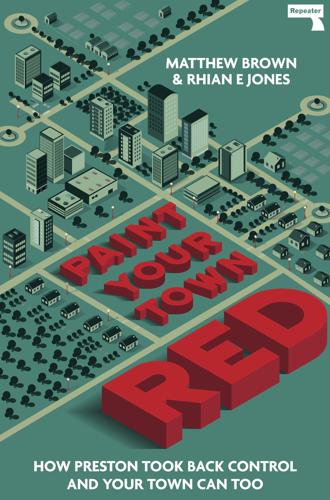
Paint Your Town Red
by
Matthew Brown
Published 14 Jun 2021
Really “Taking Back Control” The Importance of Buy-In Part Two: The Preston Story A How-To Guide Part Three: Community Wealth-Building from Neighbourhood to Nation Participatory Democracy: The Real “Big Society” Jobs and Money Land, Space and Assets Sustainable Futures Conclusion How to Paint Your Own Town Red Local Government Demystified Further Contacts, Resources and Reading Notes Acknowledgements INTRODUCTION This book explores the ways in which you can have an impact at a local level, and by doing so take part in a global phenomenon of larger transformative currents. Across the world, there is a growing awareness of the need for a new kind of economy. The 2008 financial crisis, the climate crisis and the previously unthinkable government interventions in response to the Covid-19 pandemic are proving that national governments can step in to change how the economy works. These developments, despite their devastating effects, have also meant that a new economic and political space for exploration and experiment has been opening up. The challenge of “community wealth-building” is for this transformative moment to work for the benefit of local communities rather than global corporations.
…
In the UK, too, where local authorities have broken from the status quo in favour of ambitious local experiments, they are gaining success at the ballot box. In the 2019 general election, Preston was one of the few constituencies to buck the national swing that saw heavy losses for Labour in its former heartlands. Recently, and most obviously, the Covid-19 pandemic has exposed the extent of our reliance both on complex and overextended global supply chains and on the poorest and least valued workers in the cleaning, health, transport and care work sectors to keep the economy and society going. Jobs in these sectors, despite their vital importance, tend to be insecure and poorly paid, and are dominated by young, female, BAME and migrant workers.
…
The city has adapted community wealth-building as best fits its own circumstances, but its principles and options can be drawn upon in different forms to suit the needs and resources of different localities. Many places will be able to identify their own place-based large employers who can act as anchor institutions for local procurement spending. Dealing with these institutions under the pressures of austerity and the additional crisis of Covid-19 will take boldness and conviction among elected officials to make the arguments, as Preston did, for keeping the wealth of a community within it and for supporting local innovation. It remains to be seen — like all other impacts of Brexit — whether the absence of EU rules on procurement will make it easier for service contracts to be offered locally.

Neurodiversity at Work: Drive Innovation, Performance and Productivity With a Neurodiverse Workforce
by
Amanda Kirby
and
Theo Smith
Published 2 Aug 2021
We are seeing forced change on a global scale that will alter the way we see the world of work. This is a rapid change that should and could have taken a decade or more to occur but has happened in months. The Industrial Revolution was huge, but the Digital Revolution and what this means to be ‘at work’ has been accelerated even more by Covid-19, which has already shaken the world and the way we work and will change how we will operate forever. So in writing this book about Neurodiversity in the Workplace, let us hear from the person who is the originator of the term, because it was her early research relating to neurodiversity, and her passion for the subject, that allowed us to even have this debate and explore what neurodiversity means to us.
…
Ethical, moral and legal responsibilities If we examine official measures of employment and unemployment, between 2013 and 2019, the disability employment gap in the UK had reduced, with the data showing roughly half of disabled people were in employment (53.2 per cent) compared with just over four out of five non-disabled people (81.8 per cent). This data came from The Labour Force Survey (LFS) and Annual Population Survey (APS) and forms part of the Office for National Statistics series of bulletins, which have explored outcomes for disabled people across a number of areas of life.4 A real concern is that the impact of the Covid-19 pandemic will reverse this trend unless a spotlight is put on action. This is an ethical and moral responsibility for society otherwise it will potentially turn back time. This gap is much wider for some than for others and also worsens with age. How the statistics are gathered also means you can only be counted as in one category or another.
…
For example, the number of disabled people in work aged 16 to 64 years in 2019 in the UK who are categorized as having depression, bad nerves or anxiety was 17.9 per cent compared to those grouped as having severe or specific learning difficulties where the percentage was only 0.8 per cent. This means the true level is unclear, as many people who are autistic, for example, will also have some mental health challenges. There are some concerns, however, that the impact of Covid-19 in 2020 and beyond will have a longer-term effect on many global employment settings and that we may see that the gap widens rather than contracts. The ethical and moral responsibility for organizations is to maintain a spotlight on this. Equality provision Equality affirms that all human beings are born free and equal.
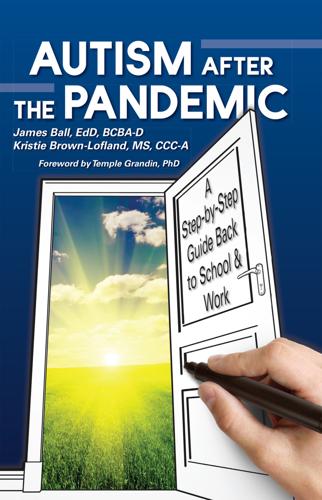
Autism After the Pandemic: A Step by Step Guide to Successfully Transition Back to School and Work
by
James Ball
and
Kristie Lofland
Published 17 Aug 2020
A Teaching Strategy that can Save You Time: Chaining https://autismclassroomresources.com/a-teaching-strategy-that-can-save-you-time-chaining/ Accessible ABA website: Use Chaining and Task Analysis to Help Your Child with Autism https://accessibleaba.com/blog/chaining-task-analysis-autism REINFORCEMENT/MOTIVATIONAL SYSTEM Autism Behavior Therapy website: Free Printable First-and-Then Board https://autismbehaviourtherapy.com/free-printable-first-and-then-board/ StoryboardThat website: First Then Board Printable Template https://www.storyboardthat.com/storyboards/mon_shari/first-then-template Teachers Pay Teachers website: First-Then Schedule Board Freebie https://www.teacherspayteachers.com/Product/First-Then- Schedule-Board-Freebie-713428 ANTICIPATE THEIR SENSORY NEEDS AND BE PREPARED Noodle Nook website: COVID-19 Social Story FREE! http://www.noodlenook.net/covid-19-social-story-free/ PA Autism website: Wearing a Mask Social Story https://paautism.org/resource/wearing-mask-social-story/ Teachers Pay Teachers website: “We Wear Masks” – Coronavirus Social Story about Wearing a Mask https://www.teacherspayteachers.com/Product/We-Wear-Masks-Coronavirus-Social-Story-about-Wearing-a-Mask-5425981 Autism Little Learners website: Seeing People Wearing Masks Story https://www.autismlittlelearners.com/2020/04/seeing-people-wearing-masks-story.html Autism Research Institute website: I Can Wear a Mask Social Story https://www.autism.org/wp-content/uploads/2020/04/I-can-wear-a-mask-1-1.pdf YouTube – Jordan Drane: Wearing a Mask: A Social Narrative for Children https://www.youtube.com/watch?
…
Th is book has step-by-step instructions for teaching skills and strategies to prevent meltdowns, learn new skills, and to cope and grow in a work or school environment, and it is a valuable resource in families returning to a “new normal.” — Temple Grandin, Author of The Way I See It and The Loving Push We have arrived at a new normal: life after the arrival of COVID-19. How do we help those with developmental and/ or intellectual disabilities and those on the autism spectrum return to school or adult services? It has been a long haul at home! Both children and adults are used to the home environment and routines. Some students have been out of their school/adult program for months.
…
Follow this process for each step: allowing the elastic to be put behind their ears, etc., until the person is wearing the mask. This may take several trials for each individual step. Try not to move ahead too quickly. The following websites contain social narratives and visual supports on wearing a mask and/or how COVID-19 will affect school and/or work. PARENT CHECKLIST Schedule sensory breaks Have brain breaks (Go Noodle, Adventures to Fitness, etc. are all fun apps to use) Break as often as needed, but return to schedule ASAP and pick up where you left off EXAMPLE: Ideas for sensory activities for home and classroom: Stretchy resistance bands Bouncing on exercise ball Tactile sensory bins Fidgets Sensory bottles or tubes Wall or chair push ups Squeezing Play-Doh or thera-putty Incorporate brain breaks Please reference Recommended Resources 20 to 26 at the back of the book.

The Climate Book: The Facts and the Solutions
by
Greta Thunberg
Published 14 Feb 2023
See also wealth India, 28, 38, 69, 88–9, 151, 152–3, 155, 183, 183, 258, 259, 296, 297, 308, 315, 397, 413 Indigenous peoples: agriculture and traditional knowledge, 172, 420; Amazon rainforest and, 176–7; ‘biodiversity hot spots’ and, 417–18; Black, Indigenous and People of Colour (BIPOC) communities, 163, 392; Chad pastoralists advocate for ancestral agroecological practices, 177, 178–9; climate justice leadership, elevating voices in, 418–19; colonialism and, 162, 387–8, 399–400, 411; COP26 and, 204; ‘divest-invest’ strategies, 412; drought and, 399; environmental philosophy, 420; front-line communities, 392; geoengineering and, 234; as land defenders, 49; land management of, 107; Lumad, 401; rewilding and, 351; Sámi see Sámi individual action, 5, 278, 283, 284, 324–43, 426, 433–4; activism see activism; apathy, overcoming climate, 337–9; boycotts, 327; buying/using less, 434; culture wars, avoiding, 433; diet and, 340–43, 433–4; democracy, defending, 433; education, self- 324–7, 433; influential/high-profile public figures committing to personal actions, 329; lifestyles, 1.5 °C, 331–6; most affected people in the most affected areas (MAPA) and, 433; personal responsibility for climate change, fossil fuel industry role in promoting idea of, 29, 326–7, 330; scepticism and, 434; systematic change and, 327 Indonesia, 14, 258, 282, 296, 313–17, 383, 384–5, 408–9 Industrial Revolution, 18, 19, 22, 24, 50, 155, 162, 219, 344, 372, 392, 411 industry: disconnection from public consciousness, 260; electrifying industrial processes, 260–61; industrial chemicals, 53, 121, 237; industrial inertia on decarbonization, 258; mapping emissions in, 256–9, 257, 258, 259 inequality, 42; climate change linked to, 42, 132, 138, 182–5, 184, 316, 358, 389, 398; climate reparations and, 410–14, 429; economic growth and, 133; EVs and, 272; fascism and, 181; geopolitics and, 316; Global North and Global South see Global North and Global South; individual carbon rights and, 407–8; just transition and, 377, 390, 391, 395, 396; middle class, rise of global and, 282; redistribution and, 405–9, 406; taxes and see taxes; urbanized populations and, 138–9; vector-borne disease and, 143; World Inequality Database, 406; World Inequality Report (2022), 407 inertia, 79, 220–21, 258 infectious disease: Covid-19 see Covid-19; Great Dying and, 387; green barrier against spread of, 101; nutrient reductions and, 149–50; zoonotic, 133 influential/high-profile public figures committing to personal actions, 329 information, consumption of, 286 Informed Citizens for the Environment, 30 insects, 104, 108, 110–12, 113, 114, 115, 144, 150, 172, 360, 378 Institute for Economic Affairs (IEA), 30 Institute for Economics and Peace (IEP), 187 insurance rates, 193 Intergovernmental Panel on Climate Change (IPCC), 36, 40, 52, 57–8, 97, 125, 171, 192, 324, 337, 372, 380, 402; First Assessment Report (1990), 26, 28, 39, 204, 205, 235, 337; founded, 20, 26, 157; Third Assessment Report (2001), 39–40, 39, 373; Fifth Assessment Report (2014) 39; Sixth Assessment Report (2021/22), 37–8, 39, 68, 80–81, 158, 427–8 internally displaced people, 167, 181, 187, 188 International Civil Aviation Organization (ICAO), 269 International Energy Agency (IEA), 228, 261, 272, 298, 306; Covid-19 recovery plan estimates, 217; Energy Technology Perspectives report (2020), 260–61; net zero scenario for CCS capture, 261, 263, 264; World Energy Outlook, 260 International Maritime Organization (IMO), 269 International Monetary Fund (IMF), 217, 383 international travel, 146, 380 International Union for Conservation of Nature (IUCN), 90 interpersonal influence, 328–9 Irma, hurricane (2017), 170 iron, dietary, 149, 150, 151 iron/iron ore production, 256, 261, 388 irrigation, 10, 55, 73, 168, 171, 183, 245, 246, 255, 341, 342, 343, 402 J Japan, 62, 65, 86, 90, 258, 269, 270, 297, 304 jet stream, 62–6, 63, 64 jobs: exploitation of workers, 362; green, 42, 312, 338, 346, 351, 392–3; just transition and, 377, 391, 392–3; no worker left behind principle, 393, 394; retraining, 376, 393 Jokkmokk, 173–4 Jones, Bryan, 167 journalism, 155, 435 just transition, 187, 377, 390–95, 401 K Kavango Basin, 399–400 Keep America Beautiful lobby group, 295 Kenya, 149–50, 402–4, 413 Keynes, John Maynard, 382 keystone species, 349 Klemetsrud waste facility CCS plant, Norway, 262 Koch brothers, 221 Kolkata, India, 414 Kolyuchin, Chukotka Autonomous Okrug, Russian Federation 125, 126–7 Kyoto Protocol (1997), 27, 28, 92, 156, 269 L Lakota people, 387 land theft, 42, 394 land-fill, 87, 140, 281, 282, 291, 294, 296, 297, 333, 425 landslide, 91, 291 land use management, 91, 244–7, 246; agriculture and, 244–55, 246, 249, 250, 251; biodiversity loss and, 109, 212; food systems and, 248–55, 249, 250, 251; forested areas, 99, 103, 230, 245, 246; mixed use, 253, 254; reflectance, 55; wildfires and, 96, 99 La Niña, 64, 166 lawsuits, big polluter, 280 Leishmaniasis, 143 liability, climate change, 159, 357 life expectancy, 292, 386–7 Lindqvist, Sven: Exterminate all the Brutes, 388 lobbying, 30, 218, 222, 227, 295, 296, 338, 370 locusts, 149, 156, 378 logging, 100, 102, 325, 356 Lumad, 401 M Maathai, Wangari 402–4 Magnitogorsk, Russia, 213, 214–15 maize, 149, 165, 166, 192, 250, 254, 402 Malaysia, 297, 425 Mali, 172 Manabe, Syukuro, 23, 23n, 25, 306, 382 Manchin, Joe, 221 mangroves, 85, 151, 152–3, 253, 317, 318–19, 345, 346, 350 manure, 140–41, 248, 252–3 Maria, hurricane, 170 marine protected areas, 347 Markey, Ed, 382 Marshall, Alfred, 331, 333, 335 material efficiency strategies, 259, 264 material footprints, national, 311, 311 Mauritian dodo, 9 Mayan Forest, 417 McNeill, J.
…
The problem is, all that evidence puts the current best available science on a collision course with our current economic system and with the way of life many people in the Global North now consider their right. Limitations and restrictions are not exactly synonymous with neoliberalism or modern western culture. Just look at how some parts of the world reacted to restrictions during the Covid-19 pandemic. You can of course argue that there are different scientific views and opinions; that not every scientist agrees with every other scientist. And this is true: scientists spend huge amounts of time debating different aspects of their results – that is how science works. This argument can be used in countless topics of discussion, but it can no longer be used in connection with the climate crisis.
…
Many have wondered what the first disaster to bring the modern, globalized world to a temporary standstill would be. Some kind of resource-related conflict, an energy crisis or financial collapse, perhaps. Instead, it was a pandemic that appeared and changed our lives overnight. In the winter of 2022, when we were finishing this book, it was not possible to say for sure that Covid-19 had been transmitted to humans from other animals, in this case bats. There are still uncertainties. What we do know, however, is that most pandemics do come from animals; they are zoonotic diseases. In fact, 75 per cent of all new infectious diseases originate from wildlife. Natural habitats should work as a protecting shield, but once you strip back too much of that natural barrier we are exposed to increasing levels of risk.

Mexico - Culture Smart!
by
Maddicks, Russell;Culture Smart!;
Published 15 Nov 2023
The majority of visitors to Mexico come from the USA, either as tourists or to start a new life—today more than 1.6 million Americans have made Mexico their home. US expats are attracted by the warm weather, the proximity to family and friends back home, a lower cost of living, and the country’s strong cultural heritage, colonial cities, and delicious cuisine (more on that in Chapter 6). COVID-19 Mexico confirmed its first cases of Covid-19 at the end of February 2020, when it was announced that two men in Mexico City and another from Sinaloa who had returned from Italy had tested positive for the virus. The authorities in Mexico City responded by closing all bars, nightclubs, movie theaters, and museums, but it was not until the end of March, when cases topped 1,000, that a national emergency was declared.
…
For foreign travelers, even while the USA closed the border with Mexico for all but essential crossings, Mexico remained open with few restrictions beyond mask wearing on public transport and in public spaces, and no need for vaccinations or a negative Covid-19 test to enter the country, bringing a large number of US and Canadian tourists to Cancún and the resorts along the Riviera Maya. In December 2021 Mexico became the first Latin American nation to administer a Covid-19 vaccine, relying initially on donations from the US and then on a mixed bag of vaccines from Europe, Russia, and China. Despite a slow start, by December 2022, 77 percent of the population had been vaccinated and Mexico was producing its own doses of the AstraZeneca vaccine, providing vaccine shots to Belize, Bolivia, El Salvador, Guatemala, Honduras, and Paraguay.
…
Ecuador (which won the Gold Prize at the Pearl of the Pacific International Travel Journalism Awards at FITE in 2015), Culture Smart! Cuba (co-author), and the Bradt Guide to Venezuela. CONTENTS Map of Mexico Introduction Key Facts 1 LAND AND PEOPLE • Geographical Snapshot • Climate • People • The States of Mexico • A Brief History • Government • The Economy • Covid-19 2 VALUES AND ATTITUDES • Religion • Family Values • Pride, Honor, and Machismo • LGBTQ in a Macho Society • Distrust of Authorities • Attitudes Toward Race • Living for the Moment • Class Divisions • Mexico and the USA • Attitudes Toward Foreigners 3 CUSTOMS AND TRADITIONS • Festivals and Holidays • The Festival Calendar • Saints’ Days and Pilgrimages • “Witchcraft” and Superstition 4 MAKING FRIENDS • The Language Barrier • What’s in a Name • Fashionably Late • Conversation Starters and Stoppers • The Dating Game • Expat Friendly 5 AT HOME • Rise of the Cities • Madre Knows Best • Home Help • Daily Life • Everyday Shopping • Education • Learning English • The Cycle of Family Life and Rites of Passage 6 TIME OUT • Mexican Food • Drinks • Eating Out • Nightlife • Music • Cultural Activities • Cinema • Sports • Shopping 7 TRAVEL, HEALTH, AND SAFETY • Flying • Buses • Trains • Driving • Urban Transportation • Where to Stay • Health • Safety • Hotspots to Avoid 8 BUSINESS BRIEFING • Doing Business in Mexico • Personal Relationships • Dress Code • Women in Business • Setting up a Meeting • Punctuality • Meetings and Presentations • Negotiations • Contracts and Legal Considerations • Managing Disagreement • Management Style • Dealing with Red Tape • Organizations That Can Help • Corruption • Gift Giving 9 COMMUNICATING • Language • Manners and Greetings • Talking Local • Humor • Body Language • Personal Space • The Media • Mail • Cell phones and SIM Cards • Internet and Social Media • Conclusion Further Reading Useful Apps Acknowledgments MAP OF MEXICO INTRODUCTION The third-largest country in Latin America, and home to some 130 million people, Mexico is hugely diverse.

Rationality: What It Is, Why It Seems Scarce, Why It Matters
by
Steven Pinker
Published 14 Oct 2021
Russia has a female president. The world suffers a new and even more lethal pandemic than Covid-19. Vladimir Putin is constitutionally prevented from running for another term as president of Russia and his wife takes his place on the ballot, allowing him to run the country from the sidelines. Massive strikes and riots force Nicolás Maduro to resign as president of Venezuela. A respiratory virus jumps from bats to humans in China and starts a new and even more lethal pandemic than Covid-19. After Iran develops a nuclear weapon and tests it in an underground explosion, Saudi Arabia develops its own nuclear weapon in response.
…
The believing brain: From ghosts and gods to politics and conspiracies. New York: St. Martin’s Press. Shermer, M. 2015. The moral arc: How science and reason lead humanity toward truth, justice, and freedom. New York: Henry Holt. Shermer, M. 2020a. COVID-19 conspiracists and their discontents. Quillette, May 7. https://quillette.com/2020/05/07/covid-19-conspiracists-and-their-discontents/. Shermer, M. 2020b. The top ten weirdest things countdown. Skeptic. https://www.skeptic.com/reading_room/the-top-10-weirdest-things/. Shermer, M. 2020c. Why people believe conspiracy theories. Skeptic, 25, 12–17.
…
See formal fallacies Principle of Explosion (from contradiction, all follows), 81–82 sound arguments vs., 82–83 validity vs. soundness, 83 loss aversion, 192–94 lotteries, 176–78, 182–83, 188–92 Lotto, Beau, 30 Love Story (film), 76–78, 263 lucky streaks, 148 Madison, James, 41 Madman Theory, 60–61, 236 Maduro, Nicolás, 23, 24 main effect, 273, 274, 275, 278 Maine, USS, 124, 125 The Maltese Falcon (film), 61–62 mañana fallacy, 101 Mao Zedong, 245 margins of error, 196 marshmallow test, 47–48, 50 Marx, Chico, 294–95 Marx, Karl, 90 Masons, 36, 40 mathematicians caution about mindless use of statistical formulas, 166–67 mansplaining, 18 paragon of rationality, 74 simulation vs. proof, 20 stereotype of, 20 Matthew Effect, 263–64, 354n21 Maymin, Philip, 342n17 Meadow’s fallacy (multiplying probabilities of interdependent events), 129–30, 131 media accountability for lying/disinformation, 313, 314, 316, 317 availability bias driven by, 120, 125–27 consumer awareness of biases in, 127 correlation confused with causation and, 256, 260, 353n13 cynicism bred by, 126–27 innumeracy of, 125–27, 314 negativity bias, 125–26 politically partisan, 296 rational choice portrayal by, 173–74 reforms for rationality, 127, 314, 316, 317 tabloids, 287–88, 306 and truth-seeking, 316 the Winner’s Curse and, 256, 353n13 See also digital media; entertainment; journalism; social media medical quackery, 6, 90, 284, 304, 321, 322 celebrity doctors, 305 COVID-19 and, 284 harms caused by, 322 hidden mechanisms posited by, 258 intuitive essentialism and, 304–5, 321 science laureates and, 90 medicine base-rate neglect in diagnosis, 155 Bayesian reasoning in, 150–51, 152, 153–54, 167, 169–70, 321 correlation and causation, 251–52 COVID-19, 2, 283 disease control, 325 drug trials, 58, 264 evidence-based, 317 expected utility of treatments, 192–94, 198–99 false positives, 169–70, 198 frequencies and, 169–70 randomized controlled trials and, 264 rational ignorance and, 57 rationality and progress in, 325–26 sensitivity of tests, 150, 154, 169, 352n10 signal detection and, 202, 211, 213, 220 specificity of tests, 352n10 taboo tradeoffs in, 63–64 See also health; mental health Meehl, Paul, 279, 280 Mellers, Barbara, 29, 219–20 memes, 144, 308–9 mental health, 251, 256, 276–77, 276, 280 Mercier, Hugo, 87, 291, 298–99, 308, 313 meteorology, 114, 127, 133, 220 The Mikado (Gilbert and Sullivan), 27 military, 63, 220, 231, 295 Miller, Bill, 143 Miller, Joshua, 132 mind-body dualism, 304 miracles, Bayesian argument vs., 158–59 Mischel, Walter, 47 Mlodinow, Len, 143 modal logic, 84 modernity vs. ecological rationality, 96–98 vs. mythology mindset, 303–4 See also progress modus ponens, 80 modus tollens, 80–81 Molière, virtus dormitiva, 11–12, 89 money diminishing marginal utility of, 181–83, 247 dollar value on human life, 63–64 See also finances; GDP per capita money pump, 176, 180, 185, 187–88 monocausal fallacy, 260, 272–73 Montesquieu, 333, 335 Monty Hall dilemma, 16–22, 115, 342n33 morality of Bayesian base rates, 62, 163–66 discounting the future and, 51–52 God and, 67 Golden Rule (and variants), 68–69 heretical counterfactuals, 64–65 impartiality as the core, 68–69, 317, 340 marginal utility of lives and, 183–84 the mythology mindset and, 300, 307 relativism and, 42, 66–67 self-interest and sociality, 69 taboo tradeoffs and, 64 See also moral progress moral progress overview, 328–29 analogizing oppressed groups, 335 animals, cruelty to, 334–35 democracy, 335–36, 339 feminism, 336–37 homosexuality, persecution of, 333–34 ideas vs. proponents, 339–40 rationality as driver of, 329–30, 340 redistribution of wealth and, 182 religious persecution, 301–2, 330 sadistic punishment, 332–33 slavery, 334, 335, 336, 337, 338, 339 war, 331 Morgenbesser, Sidney, 81, 82, 178 Morgenstern, Oskar, 175, 197, 228, 350n1 motivated reasoning, 289–92, 297, 298, 310.
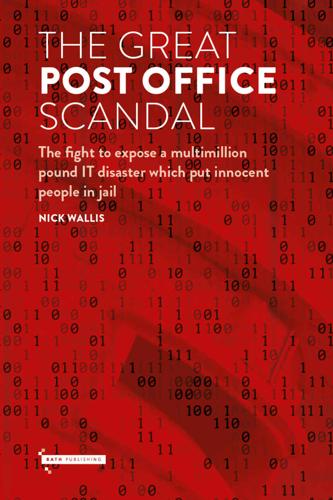
The Great Post Office Scandal: The Fight to Expose a Multimillion Pound Scandal Which Put Innocent People in Jail
by
Nick Wallis
Published 18 Nov 2021
I found his details on social media and thought it was worth chancing my arm to see if he was willing to be interviewed for this book. Being an amiable chap, he saw no reason why not. It was fascinating to have a lengthy chat with someone who had the job of introducing Horizon to hundreds of Subpostmasters across the country. Unfortunately, due to the coronavirus pandemic, we couldn’t meet in person. ‘I thought Horizon was state of the art,’ Sio told me, when we finally got our Zoom link working. ‘I actually really liked the solution, and the hardware we were delivering was quite high spec. I mean, it didn’t run so well, but that’s because it was being asked to do so much.
…
To me, the information which had been pushed into the public domain in Bates v Post Office put the Horizon story on the same footing as Windrush or the Infected Blood scandals. It was all there in plain sight. Why wasn’t the government doing everything it could to find out what went wrong? As the sound and fury at Westminster grew, the coronavirus pandemic was taking hold across the country. Kate Osborne, the MP who had secured the PM’s commitment to a full public inquiry, became the second member of parliament to be struck down by the virus.2 I had spent most of February and March working on a second Panorama which was due to be aired on Monday 23 March at 8.30pm.
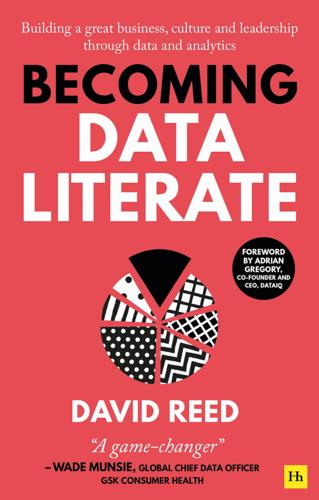
Becoming Data Literate: Building a great business, culture and leadership through data and analytics
by
David Reed
Published 31 Aug 2021
Transport for London (TfL): TfL’s transport analytics and data science team is instrumental in providing analysis of travel patterns on the public and private transport network. During the Covid-19 crisis, it provided analysis of traffic patterns to support TfL’s provision of services for the NHS and essential services, and to inform government policy during restricted times as well as restart and recovery phases. Vodafone: Vodafone has committed to a number of data for good initiatives from malaria epidemiology to helping governments and international organisations deal with the Covid-19 pandemic. By pooling data from all of its markets across Europe and Africa in just eight weeks, it managed to deliver key aggregated and non-personal (anonymous and extrapolated) insights into how diseases spread and how pandemics impact behavioural change.
…
This author has been involved across all of these activities, gaining as a result a profound understanding of the role data is playing in every sector and scale of organisation. The synthesis of this knowledge is presented in this book, while practical support based on this framework is now available to our membership. For the NHS – and the UK population as a whole – the pay-off from the shift to evidence-based decision-making was very clear when the Covid-19 pandemic broke. Close links had grown up between academia and the life sciences sector through this shared mindset and research-based approach to pharmaceutical development. As a result, an accelerated vaccine programme allowed the UK medicines regulator to be presented with early-stage evidence and recognise that the tests involved had been properly structured and that the vaccine production process could prove its safety.
…
Most commentary on this incident applauds the extent to which the janitor had bought into the vision of the organisation, seeing beyond his everyday tasks to the ultimate goal. But consider it the other way around – what happens to the vision if even the lowest role in a hierarchy does not buy in? Good janitors make for clean workplaces. As the Covid-19 health crisis revealed, a virus can totally disrupt normal practice. And NASA knows this only too well – in February 1969, the Apollo 9 mission was delayed because the astronauts had caught a mild respiratory virus (or common cold). Current bio-security measures will undoubtedly have reduced a similar risk within contemporary aerospace establishments and would have eliminated the risk to those astronauts – hardly the fault of a 1960’s janitor not to have lived in a time before hand sanitiser, but he would surely have kept dispensers topped up and surfaces clean given the option.
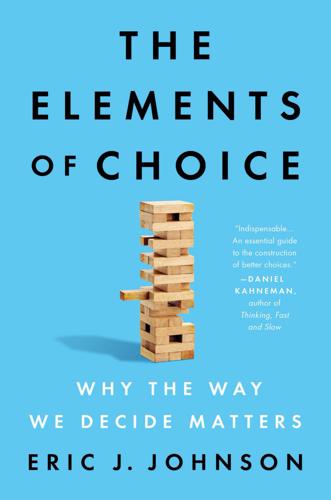
The Elements of Choice: Why the Way We Decide Matters
by
Eric J. Johnson
Published 12 Oct 2021
Annuities use the payments of those who die young to pay for the benefits of those who die old. You need to be a good actuary to sell annuities. 14. Partners Advantage, “Getting Your Prospect to Think About Longevity, and Longevity Calculators.” 4. Goals of Choice Architecture 1. “Apple COVID-19.” 2. The success of the COVID-19 tracker is documented in Menni et al., “Real-Time Tracking of Self-Reported Symptoms to Predict Potential COVID-19.” 3. This is true whether the decision concerns Social Security retirement benefits or other similarly structured public benefits or employer program benefits. Other countries’ public pension plans (Germany’s, for example) have a similar structure. 4.
…
If we understand mind writing, we may be a step ahead. 4 Goals of Choice Architecture In the early spring of 2020, everyone wanted to talk to their doctor. COVID-19 changed many things, but right then, many people—too many people—had a single question: “I think I have symptoms of the coronavirus. What should I do?” Implicit in the question was a choice among several options: doing nothing, self-isolating (including from family), trying to get a test, or going to the emergency room. There was a no shortage of information. Indeed, there was a tsunami of stories, theories, information, facts, and fantasy. At the beginning of the COVID-19 crisis it was all a blur, and making decisions was not at all fluent.
…
See plausible paths use of term, 3 Churchill, Winston, 6–8, 106 citation counts, 197–98 climate change, 66–68, 323 Clinton, Hillary, 190, 291–93 Clooney, George, 48 Coffee Meets Bagel, 45, 46–49 collaborative filtering, 276–77, 349n Columbia University, 67, 111, 162 comfort care, 310–13 compact florescent lights (CFLs), 137–38, 254 compatibilists, 301 compound interest, 97, 240–44 comprehension, 266–67, 282–99 configurators, 146–47, 149–50 Conlin, Michael, 69 consistency, 99–102 Consumer Financial Protection Bureau, 5–6, 240–44 Consumer Reports, 230 content-based filters, 276–77, 349n conversation quality, and Twitter, 324 conversations, 84–92 COVID-19 symptoms, 84–88 Social Security benefits, 88–92 talking about decisions, 106 copayments, 177–80, 280 Copenhagen Airport, 30–32, 31, 42 Cornell University, 194, 217 COVID Symptom Tracker, 87–88 COVID-19 pandemic, 83–88, 93, 155, 282 credit cards, 5, 244 Critical Care Nurse, 116 cubic inch displacement, 235 customization and user models, 266, 273–77 customized nudging, 95 dark patterns, 18–19, 81, 127–29, 267, 315 dating sites, 44–52, 230 Coffee Meets Bagel, 45, 46–49 deal-breakers and deal-makers, 49–51 decision simulators, 337n screening, 47–52, 164–65 Dayan, Eran, 218–19 deal-breakers, 49–51 deal-makers, 49–51 decision by distortion, 194–95 decision research, 3–4, 100 decision simulator technique, 92–105, 337n deductibles, 177–78, 282 defaults, 12, 13, 107–58 automatic voter registration, 156–58 disclosure of, 307–8 ease, 122–30 education about, 320–21 endorsement, 123, 130–34 endowment, 123, 134–40 German Large Auto Manufacturer (GLAM), 5, 15, 146–51, 273–75 mass, 150–52, 154–55, 275 meta-analysis of, 142–46 neglect, 148, 308–9 Netflix, 269 organ donations, 112–17, 120, 120–21, 151–52 persistent, 152–53, 155 personalized, 150–55 picking right, 146–56, 302 smart, 153–54, 155, 266, 274–75 sort order, 212, 213, 278–79 studies, 141–46, 142 Defense Advanced Research Projects Agency (DARPA), 42 defined benefits plans, 90–91 Democrats, 189, 236–37, 261–62, 262, 323–24 Denmark and organ donation, 109, 110, 110 derivatives, 287 describing options, 221–64 fuel efficiency, 222–30, 232–35 making tough trade-offs easier, 263–64 metrics.

Nexus: A Brief History of Information Networks From the Stone Age to AI
by
Yuval Noah Harari
Published 9 Sep 2024
Olga Yakusheva et al., “Lives Saved and Lost in the First Six Months of the US COVID-19 Pandemic: A Retrospective Cost-Benefit Analysis,” PLOS ONE 17, no. 1 (2022), article e0261759. 43. Bitna Kim and Meghan Royle, “Domestic Violence in the Context of the COVID-19 Pandemic: A Synthesis of Systematic Reviews,” Trauma, Violence, and Abuse 25, no. 1 (2024): 476–93; Lis Bates et al., “Domestic Homicides and Suspected Victim Suicides During the Covid-19 Pandemic 2020–2021,” U.K. Home Office, Aug. 25, 2021, assets.publishing.service.gov.uk/media/6124ef66d3bf7f63a90687ac/Domestic_homicides_and_suspected_victim_suicides_during_the_Covid-19_Pandemic_2020-2021.pdf; Benedetta Barchielli et al., “When ‘Stay at Home’ Can Be Dangerous: Data on Domestic Violence in Italy During COVID-19 Lockdown,” International Journal of Environmental Research and Public Health 18, no. 17 (2021), article 8948. 44.
…
Home Office, Aug. 25, 2021, assets.publishing.service.gov.uk/media/6124ef66d3bf7f63a90687ac/Domestic_homicides_and_suspected_victim_suicides_during_the_Covid-19_Pandemic_2020-2021.pdf; Benedetta Barchielli et al., “When ‘Stay at Home’ Can Be Dangerous: Data on Domestic Violence in Italy During COVID-19 Lockdown,” International Journal of Environmental Research and Public Health 18, no. 17 (2021), article 8948. 44. Jingxuan Zhao et al., “Changes in Cancer-Related Mortality During the COVID-19 Pandemic in the United States,” Journal of Clinical Oncology 40, no. 16 (2022): 6581; Abdul Rahman Jazieh et al., “Impact of the COVID-19 Pandemic on Cancer Care: A Global Collaborative Study,” JCO Global Oncology 6 (2020): 1428–38; Camille Maringe et al., “The Impact of the COVID-19 Pandemic on Cancer Deaths due to Delays in Diagnosis in England, UK: A National, Population-Based, Modelling Study,” Lancet Oncology 21, no. 8 (2020): 1023–34; Allini Mafra da Costa et al., “Impact of COVID-19 Pandemic on Cancer-Related Hospitalizations in Brazil,” Cancer Control 28 (2021): article 10732748211038736; Talía Malagón et al., “Predicted Long-Term Impact of COVID-19 Pandemic-Related Care Delays on Cancer Mortality in Canada,” International Journal of Cancer 150, no. 8 (2022): 1244–54. 45.
…
Trump, Inaugural Address, Jan. 20, 2017, American Presidency Project, www.presidency.ucsb.edu/node/320188. 24. Cas Mudde, “The Populist Zeitgeist,” Government and Opposition 39, no. 3 (2004): 541–63. 25. Sedona Chinn and Ariel Hasell, “Support for ‘Doing Your Own Research’ Is Associated with COVID-19 Misperceptions and Scientific Mistrust,” Misinformation Review, June 12, 2023, misinforeview.hks.harvard.edu/article/support-for-doing-your-own-research-is-associated-with-covid-19-misperceptions-and-scientific-mistrust/. 26. See, for example, “God’s Enclosed Flat Earth Investigation—Full Documentary [HD],” YouTube, www.youtube.com/watch?v=J6CPrGHpmMs, cited in “Disinformation and Echo Chambers: How Disinformation Circulates on Social Media Through Identity-Driven Controversies,” Journal of Public Policy and Marketing 42, no. 1 (2023): 18–35. 27.

The Perfect Police State: An Undercover Odyssey Into China's Terrifying Surveillance Dystopia of the Future
by
Geoffrey Cain
Published 28 Jun 2021
Of the eighteen thousand police departments in the United States, sixty of them still used PredPol.6 And all the surveillance in the world didn’t help China identify in a timely manner the most devastating pandemic in a century: Covid-19. On December 31, 2019, China reported to the World Health Organization (WHO) a cluster of pneumonia cases in Wuhan, a city in the central part of the country.7 That “pneumonia,” as China called it, was once believed to have originated in a messy, nonhygienic “wet market” selling indiscriminate cuts of raw pork, beef, and chicken displayed in the open air for long periods of time, under little or no regulated conditions. It turned out to be the novel coronavirus Covid-19,8 which shut down the world and wiped out economic activity for much of 2020. When Covid-19 reached America and emptied out city centers and beach resorts, the consequences of China’s rise as an opaque authoritarian government directly touched American soil.
…
“Moreover, local officials launched a round of mandatory tests for Covid-19, followed by mandatory self-quarantine, for anyone with ‘African contacts,’ regardless of recent travel history or previous quarantine completion.”13 Zhao Lijian, a foreign ministry spokesman who tussled with foreign officials and journalists on Twitter, even posted a series of tweets suggesting American soldiers brought Covid-19 to China. “It might be US [sic] army who brought the epidemic to Wuhan,” he wrote. “Be transparent! Make public your data! US owe us an explanation! [sic]” The conspiracy theory that US troops brought Covid-19 to China spread rapidly there.14 Covid-19 was dangerous not merely because of the threat of the virus itself, but because the suddenness of its appearance was so overwhelming that governments scurried to embrace excessive powers for social control—powers they had no obligation to relinquish.
…
[sic]” The conspiracy theory that US troops brought Covid-19 to China spread rapidly there.14 Covid-19 was dangerous not merely because of the threat of the virus itself, but because the suddenness of its appearance was so overwhelming that governments scurried to embrace excessive powers for social control—powers they had no obligation to relinquish. Some administrations are already showing signs that they will be unwilling to give up their newfound powers, and that they’ll use the data obtained in the fight against Covid-19 to surveil political opponents or aid law enforcement. Many of the emergency legal powers don’t come with sunset provisions that end them after a period of time.
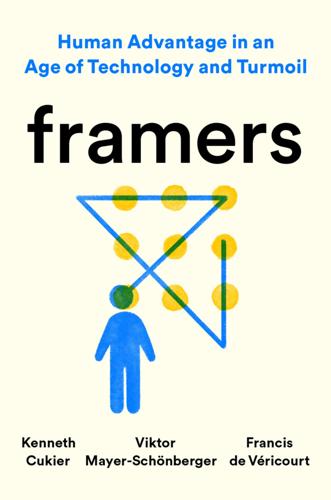
Framers: Human Advantage in an Age of Technology and Turmoil
by
Kenneth Cukier
,
Viktor Mayer-Schönberger
and
Francis de Véricourt
Published 10 May 2021
Perhaps for this reason, it wasn’t clear to countries how seriously to take the discovery of SARS-CoV-2 and the illness it caused, Covid-19. China closed the city of Wuhan, an unprecedented step that seemed like something only an authoritarian regime could or would do. In Italy, cases mushroomed before they knew what had hit them. Lombardy’s hospitals were so overrun that for a period, weeping doctors were forced to give sedatives to the elderly so they could die in less pain, to save limited medical resources for younger sufferers. All countries were working off the same data, as WHO and MSF had been in 2014. And as in the case of Ebola, the way countries initially framed Covid-19 affected the options they envisioned, the actions they took, and how they fared at the outset of the crisis.
…
But who possesses such confidence? 9 vigilance we must remain on guard not to cede our power In the spring of 2020, as America’s Covid-19 lockdown began in earnest, a series of short TikTok videos went viral on social media. The chaotic word salad sounded familiar, as did the raspy voice: “We hit the body with a tremendous—whether it’s ultraviolet, or just very powerful light.” But the words emanated from the youthful, dynamic Sarah Cooper, lip-synching the proposed Covid-19 remedy of Donald Trump. “Supposing you brought the light inside the body, which you can do either through the skin or in some other way . . .
…
Britain’s pathetic Covid response: “Britain Has the Wrong Government for the Covid Crisis,” Economist, June 18, 2020, https://www.economist.com/leaders/2020/06/18/britain-has-the-wrong-government-for-the-covid-crisis. Britain’s Covid performance in June: “Coronavirus: UK Daily Deaths Drop to Pre-lockdown Level,” BBC News, June 8, 2020, https://www.bbc.co.uk/news/uk-52968160. UK data on deaths and cases: “COVID-19 Pandemic Data in the United Kingdom,” Wikipedia, accessed October 30, 2020, https://en.wikipedia.org/wiki/Template:COVID-19_pandemic_data/United_Kingdom_medical_cases_chart. Neil Armstrong’s “small step”: Robbie Gonzalez, “Read the New York Times’ 1969 Account of the Apollo 11 Moon Landing,” Gizmodo, August 25, 2012, https://io9.gizmodo.com/277292567?jwsource=cl.

Like, Comment, Subscribe: Inside YouTube's Chaotic Rise to World Domination
by
Mark Bergen
Published 5 Sep 2022
Engineers working on Google search saw the same thing. Google closed its offices on March 6, days before much of the country shut down. By May, as the grim reality of the pandemic settled in, Susan Wojcicki arranged a video chat with Hank Green that he would broadcast. The pioneering YouTuber had already addressed COVID-19 on his science channel and his personal vlog (“The Anxious Scroll”). He welcomed Wojcicki, who looked into her webcam in front of a massive white inlaid bookshelf stacked neatly with paperbacks and family photos. “Well, let’s get this out of the way,” Green began. “How is quarantine?” “It’s tough,” she replied.
…
Everyone trapped indoors, scouring online for news, was hit with what health officials called an “infodemic.” In March, YouTube halted some human moderation until lawyers sorted out how reviewers could screen “egregious content” from homes. YouTube, Wojcicki explained, leaned on its new self-regulation systems. Engineers built a “shelf” to prominently display select videos about COVID-19 on the site and rejiggered code to promote videos from established news outlets and medical authorities higher in rankings. In April, YouTube wrote a new rule banning videos with “medically unsubstantiated” claims, and the company said viewers were primarily fed “authoritative” footage on the pandemic.
…
Housebound late-night TV hosts fumbled it at first, shooting from webcams angled awkwardly upward, displaying their nose hairs, and keeping in pauses for audience reactions instead of the jump cuts YouTubers knew online attention spans demanded. “Y’all seem to be failing pretty hard when it comes to doing our job,” the YouTuber MatPat teased in a video. As COVID-19 shutdowns spread, the Office star John Krasinski launched a YouTube series called Some Good News, which was purchased within two months by—wait for it—Viacom. YouTube disclosed few statistics, but those it did—views of videos about sourdough grew more than 400 percent in the pandemic’s first months—revealed an unprecedented explosion in usage.
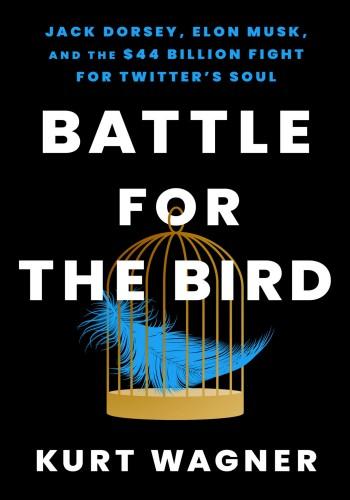
Battle for the Bird: Jack Dorsey, Elon Musk, and the $44 Billion Fight for Twitter's Soul
by
Kurt Wagner
Published 20 Feb 2024
a homemade treasure from his childhood that included Dorsey’s own colorful illustrations: Aditi Shorewal (@aditishorewal), “Friday night plan: Storytime with @jack.” Twitter, April 24, 2020, 10:05 a.m., https://twitter.com/aditishorewal/status/1253731836422877196. The World Health Organization declared Covid-19 a global pandemic on March 11: “WHO Director-General’s Opening Remarks at the Media Briefing on COVID-19—11 March 2020,” World Health Organization, March 11, 2020, https://www.who.int/director-general/speeches/detail/who-director-general-s-opening-remarks-at-the-media-briefing-on-covid-19---11-march-2020. declared it a nationwide emergency in the United States two days later: Steve Holland, Jeff Mason, and Makini Brice, “Trump Declares Coronavirus National Emergency, Says He Will Most Likely Be Tested,” Reuters, March 13, 2020, https://www.reuters.com/article/us-health-coronavirus-usa-emergency/trump-declares-coronavirus-national-emergency-says-he-will-most-likely-be-tested-idUSKBN2102G3.
…
Governor Gavin Newsom issued a stay-at-home order: Governor Gavin Newsom, Executive Order N-33-20, March 4, 2020, https://www.gov.ca.gov/wp-content/uploads/2020/03/EO-N-33-20-COVID-19-HEALTH-ORDER-03.19.2020-002.pdf. “The increased load… we’re seeing on our service”: Vijaya Gadde and Matt Derella, “An Update on Our Continuity Strategy during COVID-19,” Twitter Blog, Twitter, March 16, 2020, https://blog.twitter.com/en_us/topics/company/2020/An-update-on-our-continuity-strategy-during-COVID-19. which had hired third-party groups to help police certain posts: Sara Fischer, “Exclusive: Facebook Adding Part-Time Fact-Checking Contractors,” Axios, December 17, 2019, https://www.axios.com/2019/12/17/facebook-fact-checking-contractors.
…
Investing in Twitter alongside another successful fund might provide a quicker, more lucrative payday than fighting Dorsey for months. A settlement suddenly seemed like a pretty good option to everyone. * * * As Jack Dorsey was busy battling for his job, the world was quickly shutting down. A newly discovered virus, known as Covid-19, had originated in central China and quickly become a global threat that was suddenly spreading in the United States. An Amazon employee in Seattle got it; so did a contractor who worked for Facebook out of Seattle, prompting the social media company to temporarily close its office. Twitter employees didn’t realize it at the time, but many of them later suspected that they’d contracted Covid themselves at #OneTeam.

The Constitution of Knowledge: A Defense of Truth
by
Jonathan Rauch
Published 21 Jun 2021
During the 2020 pandemic crisis, for example, polling by Yahoo News and YouGov found that 44 percent of Republicans, and half of people who relied primarily on Fox News, said it was true that “Bill Gates wants to use a mass vaccination campaign against COVID-19 to implant microchips in people that would be used to track people with a digital ID.” Fewer than a quarter of Democrats and independents believed that bizarre claim.57 Republicans were twice as likely as Democrats to believe that the COVID-19 virus was intentionally created in a lab.58 And so on. “One consequence,” wrote the political scientists Marc Hetherington and Jonathan Weiler, “is that conservative news media consumers are less likely to encounter news narratives that are widely shared by those who are not part of their political tribe.
…
“The pace is unmatched,” one scientist told the Washington Post.21 Primer.ai, a corporate website which tracked research on the virus, showed that the number of published papers grew from only one on January 21, 2020, to more than 100,000 a year later, with no end in sight. The amount of research available on COVID-19 more than doubled each month from March through August of 2020, an accumulation of knowledge whose rate of increase seemed to rival that of the virus itself.22 The Ultimate Social Network So here, at last, in the epistemology of Locke and Peirce and Popper and in the ambitious network-building of practical inquirers, is an answer to the riddle of Theaetetus and Montaigne.
…
I would have reason to build a truthful reputation.35 The point of floating such notions is not to predict they would work. The point is to think about designing digital media with epistemic valence in mind. In November 2020, as Twitter sought to stem the tide of misinformation about the election and the COVID-19 pandemic, it introduced alerts warning users if they were about to share a post which had been rated false or misleading. “This is disputed,” the alert said, in boldface type. “Help keep Twitter a place for reliable info. Find out more before sharing.”36 Users could still press the retweet button, but they would have to think first, and some of them might accept the suggestion to learn more.
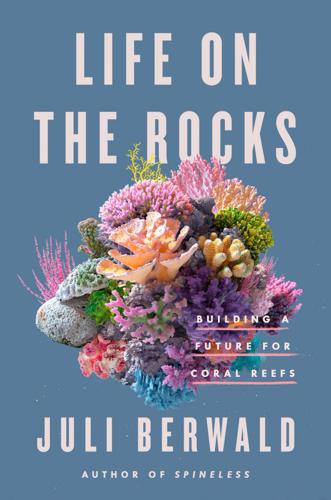
Life on the Rocks: Building a Future for Coral Reefs
by
Juli Berwald
Published 4 Apr 2022
GO TO NOTE REFERENCE IN TEXT Traditional Owners: “Traditional Owners of the Great Barrier Reef,” Great Barrier Reef Marine Park Authority, 2021, https://www.gbrmpa.gov.au/our-partners/traditional-owners/traditional-owners-of-the-great-barrier-reef. GO TO NOTE REFERENCE IN TEXT carbon emissions fell: E&T editorial staff, “Largest CO2 Emissions Drop in History Due to Covid-19 Pandemic,” Engineering & Technology, October 15, 2020, https://eandt.theiet.org/content/articles/2020/10/covid-19-pandemic-caused-largest-co2-drop-in-history/. GO TO NOTE REFERENCE IN TEXT Chapter 37. Flicker Breonna Taylor: Darcy Costello and Tessa Duvall, “Who Are the Louisville Officers Involved in the Breonna Taylor Shooting?
…
Isy had just been wait-listed at one of them in Wisconsin, and I worried about leaving town while we were trying to make major decisions about her mental health, including how much they would cost. As with the health of reefs, providing for mental health is too often absent from our plans. Just as concerning, alarms about the spread of COVID-19 were beginning to sound. A few cases had shown up in Washington state, and The Nature Conservancy had just made going to the office optional. Even weighing the negatives, I convinced myself it made sense to travel to meet experts face-to-face. Or maybe I was looking for a reason to escape the looming threats.
…
When Hurricane Delta hit Quintana Roo on October 7, it brought windspeeds of 110 miles per hour and triggered the payout in the insurance policy. As soon as the weather calmed, the reef brigades deployed, spending hours underwater righting coral colonies and cementing them in place. There were setbacks. The COVID-19 pandemic precluded brigade members from diving every day; the payout didn’t reach Quintana Roo as quickly as intended; a second, but weaker, Hurricane Zeta pounded the reef eleven days later, interrupting repair efforts. Nonetheless, by the end of December the brigade had righted and stabilized two thousand large colonies and secured 12,500 fragments of coral to the reef
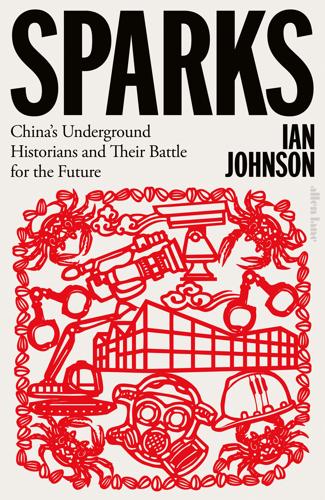
Sparks: China's Underground Historians and Their Battle for the Future
by
Ian Johnson
Published 26 Sep 2023
Ai Fen, 248–49 its limits exposed when everyone knows the truth, 240 list of historical details censored by the Party, 122–23 stories of Jiabiangou survivors fictionalized to avoid censorship, 29–30 targeting of New Century Press book warehouse in Hong Kong, 275, 275–76 See also Anti-Rightist Campaign; historical nihilism Chen Hongguo 諶洪果 conversion to Christianity, 162 righteousness of jianghu as inspiration to, 294–95 teaching at Northwest University of Politics and Law, 160–61 Zhang Shihe’s facilitation of his work, 157–58, 161 at Zhiwuzhi, 159–60, 163 Chen Yizi 陳一諮, Festschrift, 278 Chen, Thomas, 156 China’s domestic intelligence services budget, 294, 345 China’s national defense budget domestic intelligence services budget compared with, 294, 345 as unmentionable, 207 China Through the Ages 炎黄春秋 calligraphy on its cover, 110–11 censoring by the CCP, 110–11, 122, 295–96 Christianity Chen Hongguo’s conversion to, 162 Christian essayist Yu Jie, 94, 273 government control of, 287 Lin Zhao’s Methodist faith, 73, 74, 86, 91–92, 96 Communist Party counter-history movement viewed as a threat, xii, 9, 11–12, 121, 152, 273, 305 defense of China’s rise in Seeking Truth, 121–22 Document Number Nine issued by, 121, 161 misrepresentation of the past, ix–x See also Deng Xiaoping; Hu Jintao; Mao Zedong; People’s Republic of China; Xi Jinping Confucius and Confucianism exclusion of female voices from, 145 Hundred Flowers Campaign based on a saying from, 23, 71 moral guidance provided to rulers, 60, 148 neo-Confucian Wang Yangming on defeating the bandits in the heart, 17, 226–27 neo-Confucian Zhou Dunyi, 218–19 subversive ideas motivating Jiang Xue’s father’s studying of, 60, 62–63 counter-history Saidiya Hartman’s critical fabulation, 298–99 See also underground history movement COVID-19 pandemic Ai Xiaoming on government malfeasance, 243 citizen journalism during, 186 Dr. Ai Fen, 248 Dr. Li Wenliang’s warning about COVID, 239–40, 251 inadequacies of China’s infrastructure revealed by, 297 mythologized view of the state’s handling of, 9 outbreak in Wuhan, 236 resurgence of jianghu triggered by, 236–37 See also Fang Fang (Wang Fang)–Wuhan Diary COVID-19 pandemic–lockdowns between 2020 and 2022 potential for political change during, xi, 305 protests during, xii, 298, 305 Cui Weiping 崔衛平, 92, 94, 137–38 Cultural Revolution (1966–1976) destruction of Tibet during, 261, 263–67 eliding of its history in Jurong’s local gazetteer, 125–27 genocidal killings, 211–12, 213, 215, 222–24 persecution of Jiabiangou survivors during, 29 Wu Han, Hai Rui Dismissed from Office, 184–85 See also Red Guards Cyberspace Administration of China, 122–23, 254 Dao County.
…
Just as in earlier times, China’s contemporary leaders try to keep history on their side by telling myth-like stories: a popular uprising brought the Communist Party to power; famines were caused by natural disasters; minority areas like Xinjiang and Tibet have always been part of the country; Hong Kong’s struggle for democracy is the work of foreign forces; the state dealt responsibly in handling the initial outbreak of the Covid-19 coronavirus. The not-so-subtle subtext is that only the Communist Party can save China from chaos and disintegration. Any alternative version of history is taboo. Every country has its foundational myths, but in China the lack of independent institutions—media, universities, or political parties—makes it difficult to challenge the official version of reality.
…
The journalist-turned-historian Yang Jisheng watched his foster father die of starvation during the Great Famine and decided that his life’s work would be documenting it. The video blogger Tiger Temple worked as a slave laborer on a railway and later decided to document that. Ai saw women being oppressed. Jiang learned about her grandfather’s death. Others had their homes expropriated or suffered because of the government’s mishandling of the Covid-19 pandemic. All of them decided for these personal reasons to stand up. This can be seen as narrow or parochial, but as Wang recognized, it is also how societies change: by people trying to understand and describe their own lives. Memory: A Landlord’s Mansion Yangjiagou is a Loess Plateau village like no other: its streets are paved, its cave dwellings clean, and its residents wealthy.
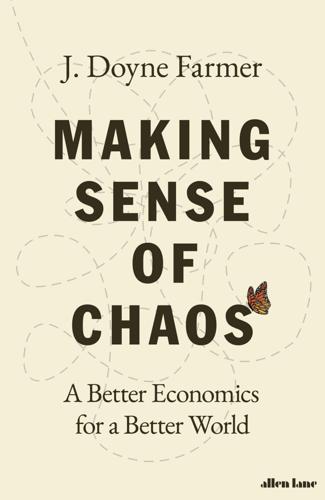
Making Sense of Chaos: A Better Economics for a Better World
by
J. Doyne Farmer
Published 24 Apr 2024
abatement function 236, 249 Abbe, Cleveland 225, 233 accounting 46–7, 53, 141 adaptive-markets hypothesis 183, 184 Agamemnon (mythical character) 22 agency 7, 74 agent-based models agents and 6–7, 10, 12, 74, 83 algorithms and 7, 84, 114–15 aspiration-level adaptation and 110 behavior modeling and 114–17 business cycle and xi, 124–8, 126 climate change and 233 complexity and 10, 121–2 conscious civilization and 277, 278 Covid-19 and see Covid-19 data and 9, 270–74 defined 6–7 dynamic nature of 8, 63 epidemiology and 74–5, 80, 277 future of 255–81 global financial crisis (2008) and see global financial crisis households and 121, 124–7, 258, 272 housing market and 80–90, 88, 110, 121 inequality and 260–1 institutional support and 274–6 labor market model 65–72, 66, 69 leverage cycle models 194, 197–202, 206–16, 209, 211, 219 macroeconomic 257–8 markets and xii, 161, 170–73, 184–5, 187–8, 190, 200, 208, 209 methods and infrastructure, developing 273–4 microsimulation and 1, 260–61 nonlinearity and 75–8, 219 production networks and 50–63, 52, 59, 72, 222, 260, 262, 264, 265, 266, 268–9, 272–3, 279 quantitative 70, 71, 90, 120, 173, 176, 187, 213, 214, 216, 255, 258, 260, 261, 275–6, 80 simulation and see simulation standard economic theory and 8, 9 stock market and see stock market traffic modeling and 74 verisimilitude and 10, 121 weather forecasting and 233 See also individual model name agents agent-based models and see agent-based models behavioral economics and 5–6, 104, 114–17, 120, 121 beliefs 93, 96–7, 105, 116 complexity economics and 5, 6–7, 10–11, 12 defined 4, 5–7 microeconomics and 97, 107 rationality and see rationality representative-agent model 99–100, 211 standard economic theory and 4, 5–6, 95 utility function and 4, 5, 7, 12, 63, 93–6, 98, 99, 100, 101, 104, 105, 107, 109, 110, 115, 120–22 zero-intelligence 118, 118n, 120, 154, 156, 239–40 Akiyama, Eizo 129, 131, 132, 133 Aleta, Alberto 78 algorithms agent-based models and 7, 84, 114–15 housing models and 84 machine-learning 114–16, 117, 134–5, 171 PageRank 49–50 amplification effect 61, 192, 193, 197, 200, 212–13 Anderson, Philip 16, 17, 19 Apple 27, 157 arbitrage 155, 163, 179, 188, 189, 194 arbitrageur 155, 157, 163 Arrow, Kenneth 16, 96, 166 Artemis 22 Arthur, W.
…
Robert 41 optimization 7, 111, 121 options pricing 169, 178 Organization for Economic Cooperation and Development (OECD) 213 Osborne, Mike 68 output multiplier 58 Oxford Martin School 64 Packard, Norman 25, 27, 36, 50, 144 Page, Larry 49 PageRank 49, 50 Palmer, Richard 170–71 Pangallo, Marco xiv–xv, 78–9, 134 Paris Bourse 15–16, 95 Performance Curve Database 241, 242, 244 pharmacy aides 68–70 Phelps, Edmund S. xiii Phillips curve 98 Pichler, Anton (Toni) xvi Piketty, Thomas 259 planned economy 55–6 Poincaré, Henri 32–3, 40 Polanyi, Karl 191 Poledna, Sebastian 201, 258 portfolio 203, 204–5, 211, 265 choice 111–12 insurance 162–4, 187 theory 111 Portland, Oregon 25, 74 Poterba, James xi, 165–70, 172 ‘Predicting Chaotic Time Series’ (paper, 1987) 143 prediction behavioral realism and see behavioral economics climate see climate Covid-19 and see Covid-19 defined 23–4 economic predictions, improving 3–6, 21–4, 28 markets and see markets market ecology and see market ecology network theory and 50 physics and 26, 31 pockets of predictability 145 Prediction Company see Prediction Company roulette and see roulette shocks and 29–30, 37 see also individual shock name technological progress and 237–45, 237, 243 weather see weather Prediction Company 152, 224 bounded rationality of agents in the market and 178, 179 global financial crisis (2008) and 189–90 market efficiency and 144–52, 154, 157, 159, 169 market impact and 151, 154 origins of 111–12, 144–7 risk control and 204 signal-to-noise ratio of strategies 169 statistical arbitrage and 157, 188–90 technological progress and 159 Wall Street partners, search for 175–6 prices clustered volatility of xi, 134, 164–74, 165, 167, 199–200, 204, 215, 217, 218, 219 derivative pricing 150, 152 energy prices 236–8, 237, 239, 243, 245, 246, 247 equilibrium and 15–16, 95–6, 130, 201–2 house see housing inflation see inflation leverage and 196–205, 208, 209, 210–12, 211, 214, 215 margin calls and 193–7, 199–202 market ecology theory and 179–82, 185, 186 market efficiency and 147–8 market impact and 150–52, 154–5, 179–81 mean-reverting 155 news and volatility in 161–73 persistence and 180 production networks and 57, 61 stock see stocks turbulence and 217–18, 219 US goods, differences in the price of some (1998–2022) xii, 237 Proceedings of the National Academy of Sciences 183 production function xvi–xvii, 55–6, 63, 76 production networks agent-based models of 50–63, 52, 59, 72, 222, 260, 262, 264, 265, 266, 268–9, 272–3, 279 climate change and 72, 222, 260, 262, 264, 265, 266, 268–9 ecology of 57–63, 59 laptop supply chain xi, 51, 52, 53–4, 60–61, 121 specialization and 83 trophic structure of the U.S. and Chinese economies and xi, 59–63, 59 program trading 162, 178 proto-life 51, 54 psychology 5–6, 11, 17, 47, 74, 103, 108, 109, 110, 111, 114, 115, 225 quant meltdown (2007) 190–91, 196 quantitative easing programs 259–60 quantitative theories Beveridge curve and 70, 71 complexity economics as a quantitative science 11, 43 financial-market efficiency and 168–74, 176, 187 future modeling and 255, 258, 259–60, 261, 275–6, 280 housing market model and 90 inequality and 260, 261 market impact and 150–51, 153 occupational unemployment models and 70, 71 supply and demand changes and 155 systemic risk and 213–14, 216 utility maximization and 120 volatility and 201 wars and 225 quantum mechanics 271 rabbits 181, 182, 187 Ramsey-Cass-Koopmans (RCK) model 100–102, 124–5 Ramsey, Frank 100 random order-placement 155–6 random process 39 random walk/random-walk model 49, 144, 150, 155, 165, 242 geometric random walk with drift 242 rationality/rational expectations, theory of behavioral economics and 5–6, 103–5 bounded rationality and see bounded rationality business cycles and 124, 125, 127–8 Chicago school of economics and 106 ecological rationality 114 efficient-markets hypothesis and 144, 149–50, 154, 155–6, 163–6, 171–2, 176, 177–8, 198, 199 heuristics and 109, 110, 111, 112, 113 Homo economicus 6, 11, 103 leverage and 213 micro-founded models and 100–103 origins of 96–9 rational agents 5–6, 11, 100–101, 103, 128, 130, 171, 176, 177–8, 198 Simon criticises 108–9 standard economic theory and 5–6, 17 turnpike theorem and 129 ‘The Reality Game’ (paper, 2009) 159 recessions 28–9, 69, 70–71, 126, 190, 192, 204, 233, 257, 266, 272, 280 regulation analyst-estimate-based signal and 158 Basel see Basel Committee on Banking Supervision complexity-economics models and 193 counterparty identifiers and 184 financial system and 140, 142 market ecology, regulatory implications of 186–8, 190, 261–2 network analysis and 50 systemic risk and 202 remote-labor index xiv Renata (computer) 28 renewable energy 12, 72, 222, 235, 245–54, 250, 268 representative-agent model 99–100, 211 return 164–6, 165, 173, 181–2, 189, 194 Richardson, Lewis Fry 225–7 Rio-Chanona, Maria del xi, xiv, 64–5, 66, 67 risk 4, 111–12, 140, 146, 163, 164, 179, 190 climate change and 222, 286 leverage and 191–8 management of, financial crisis and 201–16, 206, 209, 211 uncertainty and 106–7 Value-at-Risk (VaR) 205, 206, 210–11, 212–15, 217 rock-paper-scissors 129–33 rocking horse model 36–9 Romer, Paul 24 Roosevelt, F.
…
The Climate Policy Laboratory Prologue There has always been a strand of thought [ …] that holds that we cannot hope to understand the major events in the life of an economy, and perhaps also its everyday behavior, without entertaining principles of disequilibrium. Edmund S. Phelps (1991)1 On March 16, 2020, I mobilized a team of some of my best Oxford students, postdocs and former-students, and we began a crash program to build a model to predict how the economy would respond to the COVID-19 pandemic. It was clearly only a matter of time before the disease would become widespread and many governments would instigate lockdowns, with an enormous economic impact. But there are many ways to implement public health measures. Governments would need to decide what restrictions to impose and which industries should be closed.

The Raging 2020s: Companies, Countries, People - and the Fight for Our Future
by
Alec Ross
Published 13 Sep 2021
In these countries, we can find useful lessons and examples for other countries around the world. The prime example is the Nordic model. And to understand just how it has adapted to fill the gaps left lingering in the US-dominant social contract, we can find a clear contrast. Just look at how both handled the COVID-19 pandemic. THE NORDIC MODEL The way a society responds to a crisis reveals a lot about its social contract. As COVID-19 swept across the globe in March 2020, an economic downturn appeared imminent. To contain the damage, the United States created a patchwork of stimulus programs: directing loans, grants, and tax breaks to businesses while raising unemployment benefits and sending stimulus checks to citizens.
…
researchers found that 40 percent of American households: Natasha Bach, “Millions of Americans Are One Missed Paycheck away from Poverty, Report Says,” Fortune, January 29, 2019, https://fortune.com/2019/01/29/americans-liquid-asset-poor-propserity-now-report/; “A Profile of the Working Poor, 2017,” US Bureau of Labor Statistics, April 2019, https://www.bls.gov/opub/reports/working-poor/2017/home.htm. Workers who received welfare payments: Henry Aaron, “The Social Safety Net: The Gaps That COVID-19 Spotlights,” Brookings Institution, June 23, 2020, https://www.brookings.edu/blog/up-front/2020/06/23/the-social-safety-net-the-gaps-that-covid-19-spotlights/. transformed China from an agrarian state: “Poverty Headcount Ratio at $1.90 a Day (2011 PPP) (% of Population)—World, China,” World Bank Group, accessed July 20, 2020, https://data.worldbank.org/indicator/SI.POV.DDAY?
…
seven of the world’s eleven longest-serving: Dave Lawler, “How the World’s Longest-Serving Leaders Keep Power, and Hand It Over,” Axios, March 21, 2019, https://www.axios.com/worlds-longest-serving-leaders-africa-putin-8046c3c0-3cef-4166-bd1a-46533f1b46a4.html. The median age is only twenty years old: Jacob Ausubel, “Populations Skew Older in Some of the Countries Hit Hard by COVID-19,” Pew Research Center, April 22, 2020, https://www.pewresearch.org/fact-tank/2020/04/22/populations-skew-older-in-some-of-the-countries-hit-hard-by-covid-19/. Over the next three decades: “World Population Prospects 2019,” United Nations Department of Economic and Social Affairs, accessed January 3, 2020, https://population.un.org/wpp/Graphs/Probabilistic/POP/TOT/903. Already, people in the Sahel region: Ahmadou Aly Mbaye, “Africa’s Climate Crisis, Conflict, and Migration Challenges,” Africa in Focus (blog), Brookings Institution, September 20, 2019, https://www.brookings.edu/blog/africa-in-focus/2019/09/20/africas-climate-crisis-conflict-and-migration-challenges/; Kanta Kumari Rigaud, Alex de Sherbinin, Bryan Jones, Jonas Bergmann, Viviane Clement, Kayly Ober, Jacob Schewe, Susana Adamo, Brent McCusker, Silke Heuser, and Amelia Midgley, Groundswell: Preparing for Internal Climate Migration (Washington, DC: World Bank, 2018), https://openknowledge.worldbank.org/handle/10986/29461.

Evil Geniuses: The Unmaking of America: A Recent History
by
Kurt Andersen
Published 14 Sep 2020
In an interview in late March with The New Yorker after he published his COVID-19 articles, Epstein said his prediction of 500 total COVID-19 deaths had been an error, that he’d actually meant to say 5,000 Americans in all would die. After the reporter challenged other factual assertions, Epstein finally replied, “You’re going to say that I’m a crackpot….That’s what you’re saying, isn’t it? That’s what you’re saying?…Admit to it. You’re saying I’m a crackpot.” Three weeks later, nearly 5,000 Americans officially died of COVID-19 in a single day, and six weeks after that, 100,000 Americans had died, 200 times Epstein’s original estimate of the total deaths, 20 times his adjusted estimate and, of course, still climbing
…
*5 Right-wing fantasies and misinformation about COVID-19 on Fox News apparently caused unnecessary deaths. “[Sean] Hannity originally dismissed the risks associated with the virus before gradually adjusting his position starting late February,” according to the research by economists in their paper “Misinformation During a Pandemic,” but “[Tucker] Carlson warned viewers about the threat posed by the coronavirus from early February….Greater viewership of Hannity relative to Tucker Carlson Tonight is strongly associated with a greater number of COVID-19 cases and deaths in the early stages of the pandemic.”
…
Fantasyland’s magical thinking and conspiracism and mistrust of science fueled the widespread denial of and indifference to the crisis, and fused with the evil geniuses’ immediate, cold-blooded certainty that a rapid restoration of business-as-usual must take precedence over saving economically useless Americans’ lives. What I said at the end of Fantasyland I’ll restate (and I first drafted this paragraph, it’s important to note, a year before COVID-19 existed): societies do come to existential crossroads and make important choices. Here we are. The current political and economic situation wasn’t inevitable, because history and evolution never are. Nor is any particular future. Where we wind up, good or bad, is the result of choices we make over time—choices made deliberatively and more or less democratically, choices made by whoever cares more or wields more power at the time, choices made accidentally, choices ignored or otherwise left unmade.
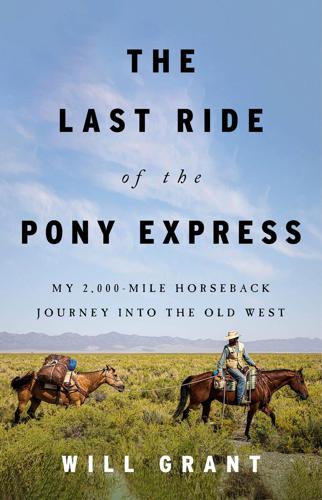
The Last Ride of the Pony Express: My 2,000-Mile Horseback Journey Into the Old West
by
Will Grant
Published 14 Oct 2023
The hard muscling of the Pony Express Trail faded from their shoulders and their hindquarters. Winter rolled into northern New Mexico, and hardly a day passed that I didn’t look up at the snowy mountains around town and be glad I wasn’t camped there. Spring brought strong westerlies that blew juniper pollen in yellow clouds, and along with the wind came the coronavirus pandemic and global lockdown. Claire pulled hard shifts in the hospital emergency room while I sat at my desk all day. I hardly left the house or the corrals. In the evenings, I’d go to the horses. I seldom rode either Chicken Fry or Badger, though whenever coyotes needed chasing out of the barnyard, Badger was the horse for the job—still the best at fast work and tight handling.
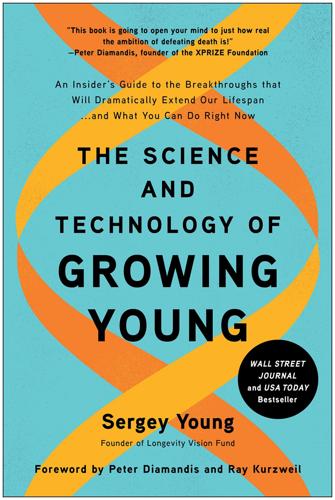
The Science and Technology of Growing Young: An Insider's Guide to the Breakthroughs That Will Dramatically Extend Our Lifespan . . . And What You Can Do Right Now
by
Sergey Young
Published 23 Aug 2021
PHARMA IS GETTING FASTER AND SMARTER It’s February 2, 2020, I’m in New York, and Alex Zhavoronkov, from Insilico Medicine, is in San Diego. SARS-CoV-2, the virus that causes COVID-19, has locked China down tight, and Italy has just seen its third case of the disease. As the deadly virus careens its way around the world, governments, medical providers, and health authorities are fraught with uncertainty. After getting the green light from its investors, Insilico has been working around the clock to identify drug candidates to treat COVID-19. “You have them?” I ask, between gulps of black coffee. “You already have them?” “Yes,” Alex replies, “we’re going to work on the six that we think are the most promising, and release the rest to the global community.
…
</style></author></authors></contributors><titles><title>Global Social Mobility Index 2020: why economies benefit from fixing inequality</title></titles><dates><year>2020</year><pub-dates><date><style face=”normal” font=”default” size=”100%”>January</style><style face=”normal” font=”default” charset=”238” size=”100%”> 19</style></date></pubdates></dates><publisher>World Economic Forum</publisher><urls><related-urls><url>https://www.weforum.org/reports/global-social-mobility-index-2020-why-economies-benefit-from-fixing-inequality</url></related-urls></urls></record></Cite></EndNote> 27Swift, Jonathan, 1667-1745. Gulliver’s Travels. New York :Harper, 1950.; “meers and bounds” refers to petty disputes. 28World Economic Forum, We’ll Live to 100 – How Can We Afford It? (Geneva: WEForum, 2017), 7. 29Colin Gordon et al., “COVID-19 and the Color Line,” Boston Review, last modified May 1, 2020, http://bostonreview.net/race/colin-gordon-walter-johnson-jason-q-purnell-jamala-rogers-covid-19-and-color-line. 30Paul Irving, Interview with the author, June 9, 2020 31Max Roser, “Economic Growth: The economy before economic growth: The Malthusian trap,” All of Our World in Data, 2013, https://ourworldindata.org/economic-growth#the-economy-before-economic-growth-the-malthusian-trap. 32“The World Bank In China,” World Bank, last modified April 23, 2020, https://www.worldbank.org/en/country/china/overview. 33Max Roser, “The global decline of extreme poverty – was it only China?
…
But the truth is that few longevity scientists of note dismiss the concept of radical life extension out of hand. Logically and scientifically, the theory of longevity escape velocity has merit. To understand the exponential medical and scientific breakthroughs we’re on the cusp of, just consider the COVID-19 vaccine in the context of history: it took two hundred years from the first smallpox outbreak in 1595 before a vaccine was invented to prevent the disease. From the first instance of polio in 1895, scientists worked for more than fifty years before a successful vaccine was developed. But within just twelve months of the discovery of SARS-CoV-2, multiple highly effective vaccines were shipped around the world.
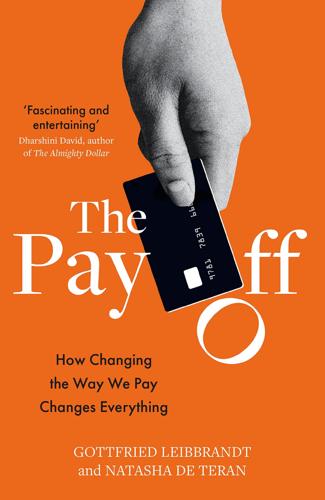
The Pay Off: How Changing the Way We Pay Changes Everything
by
Gottfried Leibbrandt
and
Natasha de Teran
Published 14 Jul 2021
Neat as it is, the island system wouldn’t work for us, but payments do. They work so well, in fact, that modern economies need payments as much as they need water, power and energy. Without smooth-functioning payments, financial markets, commerce, employment, even unemployment, would all be compromised. Look at who your country identified as key workers during the Covid-19 lockdown and you’ll probably find payments staff are listed. Unless you live off-grid in splendid and completely self-sufficient isolation, you need to be able to pay and (most of us at least) need to be able to get paid. If access to the payment system is critical for everyone, then our modern, monetary-based societies have first to ensure that they have a good system and, second, that everyone has access to it.
…
He then sold the original notes for cash, which was used to fund the resistance. After the war all the loans were redeemed properly.5 During the Irish banking strike in 1970, the Republic’s economy survived largely on the basis of uncashable cheques. For more than six months, the population effectively printed its own money. In the first half of 2020, after the Covid-19 pandemic erupted, cash ran out in parts of Papua New Guinea and residents resorted to ‘tabu’, strings of marine snail shells, measured in an arm’s length. One-and-a-half arms will buy you a packet of rice, should you ever be caught short there. On our fictional island it’s a banknote that does the rounds but it could just as well have been gold, salt, wooden sticks or even cigarettes, all of which have served as currency at some point.
…
We could continue to make deposits in dollars, euros, pounds, yen, lek and all the rest, even if their physical manifestations disappeared. What about ‘printing’ money? Would central banks still be able to create money if they couldn’t print it? Again, the short answer is yes. The metaphors around monetary policy are unhelpful here. Many of the headlines used to describe the Covid-19 economic aid programme involved the printing of banknotes: the Fed was ‘firing up the printing press’, the European Central Bank (ECB) was ‘priming the money-printing gun’ or, for those of a more digital bent, the ‘Money Printer Go Brrr’ meme. Evocative, but misleading; just as ‘sending’ money isn’t what banks do to make payments, ‘printing’ isn’t the way that central banks create money.
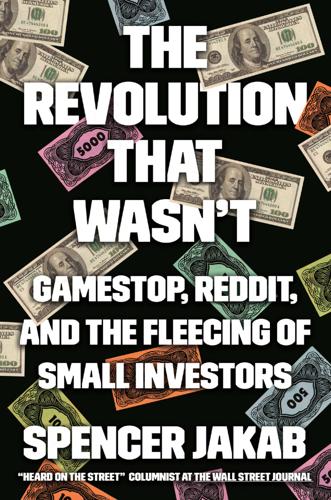
The Revolution That Wasn't: GameStop, Reddit, and the Fleecing of Small Investors
by
Spencer Jakab
Published 1 Feb 2022
Kitty Goes to Washington Chapter 2 September 8, 2019 Chapter 3 Killer App Chapter 4 Winter of 2019–2020 Chapter 5 Race to the Bottom Chapter 6 April 2020 Chapter 7 Get Shorty Chapter 8 Summer–Fall 2020 Chapter 9 Cheat Code Chapter 10 Holiday Season 2020–2021 Chapter 11 Poking the Bear Chapter 12 January 22, 2021 Chapter 13 Rise of the Apes Chapter 14 January 26, 2021 Chapter 15 The Influencers Chapter 16 January 27, 2021 Chapter 17 LOL, Nothing Matters Chapter 18 January 28, 2021 Chapter 19 Men in Tights Chapter 20 January 29, 2021 Chapter 21 How Not to Stick It to the Man Chapter 22 February 2021 Chapter 23 The Same Old Game Bonus Round Acknowledgments Notes Index Introduction I’ll never forget the day I found out that my sons were degenerates. With my newsroom shut by COVID-19, I was working from home the morning of January 25, 2021, when I stopped editing a column for the next day’s Wall Street Journal midsentence to see what they had been up to on the internet. After less than ten minutes of scrolling, I began to draft an email. It wasn’t to their mom or their principal or even a child psychologist.
…
So began the congressional testimony of an until recently middle-class, thirty-four-year-old financial wellness expert from the suburbs of Boston. His quip, a reference to a video of a virtual legal pleading that had gone viral a week earlier, injected a bit of levity into the serious proceedings, being conducted remotely on the afternoon of February 18, 2021, because of the still-raging COVID-19 pandemic. Unlike the hapless, tabby-faced lawyer, Keith Patrick Gill had more than enough tech savvy to disable a Zoom filter.[1] He had recently come into a bit of money in the stock market—over $50 million at one point—and, indirectly at least, he had modern social media and trading apps, which had radically lowered the bar for novice investors, to thank for it.
…
By the time the company gave a tepid mid-January update on how its holiday-season sales had gone, Gill’s balance had dropped to $56,541. “You fucking retard everyone told you to sell when you were up 121k. I hope you get out of this in once [sic] piece,” was one response. And after Gill’s sobering February update, by which time stocks had begun to factor in the possibility that the COVID-19 pandemic could disrupt normal life? “That 42,377 dollars you lost on a silly gamble would literally change my life. Kind of melancholy to think about on a Saturday morning.” Gill thought the stock price could possibly go as high as $20 or $25, but he wasn’t looking for affirmation. In his Roaring Kitty persona, he said he was sharing his insights so others could poke holes in his hypothesis that the once-admired company could have a profitable second act.
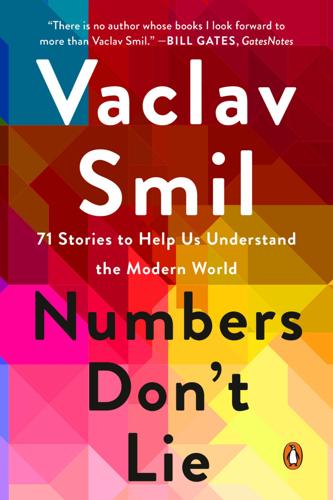
Numbers Don't Lie: 71 Stories to Help Us Understand the Modern World
by
Vaclav Smil
Published 4 May 2021
By November 11, 2020, about 10.5 million (just over 3 percent) of Americans got infected by SARS-CoV-2, and 245,000 died. This means that the COVID-19 case mortality rate (2.34 percent) would be about 40 times that of the 2019–2020 seasonal flu case mortality, while the overall COVID-specific mortality would be 0.74 percent, or about eleven times the seasonal flu rate. The overall number of COVID-19-related deaths (excess mortality, deaths above the normally expected total) was even higher—but as with every pandemic, we will have to wait until COVID-19 runs its course to get a clear picture of how bad it was. Only then will we be able to do the actual counts—or, because we may never know the total number of infected people nationally and globally, simply offer our best estimates—and compare the resulting case fatality risks, which may differ no less than the numbers for the 2009 pandemic.
…
Polio is perhaps the best illustration of this challenge: the worldwide infection rate dropped from some 400,000 cases in 1985 to fewer than 100 by the year 2000, but in 2016 there were still 37 cases in violence-beset regions of northern Nigeria, Afghanistan, and Pakistan. And, as illustrated recently by the Ebola, Zika, and COVID-19 viruses, new infection risks will arise. Vaccines remain the best way to control them. Why it’s difficult to predict how bad a pandemic will be while it is happening I wrote the first version of these notes at the end of March 2020, just as the COVID-19 pandemic was going through its first exponential rise throughout Europe and in North America. As I revisit the numbers in November, rather than offering yet another estimate or prediction (and hence making the chapter instantly obsolete), I decided I would explain the uncertainties that always complicate our judgment and our interpretation of statistics in these stressful situations.
…
As expected, the laboratory-confirmed approach yielded the highest risk (mostly between 100 and 5,000 deaths), while the symptomatic approach had the range of 5–50 deaths, and the estimated infections in the denominator yielded risks of just 1–10 deaths per 100,000 people: the first approach showed fatalities being up to 500 times higher than the last one did! In 2020, with the spread of COVID-19 (caused by a coronavirus, SARS-CoV-2), we face the same uncertainties. The COVID-19 pandemic began in Wuhan, capital of China’s Hubei province, in late 2019. By March 30, 2020, when the worst seemed to be over, official Chinese statistics listed 50,006 cases in the city and 2,547 deaths. On April 17 the Chinese raised the death toll by a bit more than 50 percent to 3,869—but no new deaths were recorded by November 2020 while the cases rose only marginally to 50,340.
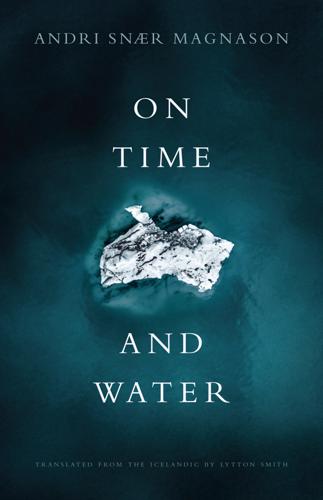
On Time and Water
by
Andri Snaer Magnason
Published 15 Sep 2021
Are we just going to restart everything and pretend nothing happened?” Thorleifur and Anna’s eight-year-old son, Tryggvi, had not been in school for a full eight weeks. He had made a song about COVID-19 on the piano. He sat down, in his underwear, and started playing. Only playing the darkest keys to the far left, it sounded like an anthem, a frustrated scream of a generation of one hundred million children in lockdown. The lyrics went something like this: Shit shit shit shit, ass ass ass ass ass I HATE COVID-19. We drove around the empty streets of Reykjavik to meet the artists and listened to the news: 2,000 people, almost 1 percent of Iceland’s population, had lost their jobs in that single day.
…
Baba Dioum Contents May you live in interesting times A little treasure A future conversation A projection The all-encompassing silence of God’s great expanse Writer’s block Telling stories The words we do not understand Searching for the Holy Cow A visit from a holy man A revelation from the wrong god Back in time Crocodile dreams A mythology for the present N 64° 35.378’, W 16° 44.691’ The mother of the universe, white as rime Farewell to the white giants The god in the steam engine Just more words See the blue sea Maybe everything will be all right Interview with the Dalai Lama, in his guest room, Dharamsala In a mother’s milk Crocodylus thorbjarnarsoni 2050 A future conversation Apausalypse Now: Covid-19 postscript Endnotes Photo credits Index Copyright May you live in interesting times “Take notice what you notice.” —Thorvaldur Thorsteinsson Whenever I host overseas visitors to Reykjavík, I like to drive them along Borgartún, a street I call the Boulevard of Broken Dreams. I point out Höfdi, the white wooden house where Ronald Reagan and Mikhail Gorbachev met in 1986, a house that many people associate with the end of communism, the fall of the Iron Curtain.
…
The time you can touch with your own hands. Your time is the time of the people you know and love, the time that molds you. And your time is also the time of the people you will know and love. The time that you will shape. Everything you do matters. You create the future every single day.” Apausalypse Now COVID-19 POSTSCRIPT May 10, 2020 We have been stopped. I never imagined it could happen. Once I did an experiment in Reykjavík. I convinced the mayor to turn off all the city lights for half an hour while an old astronomer talked about the stars on national radio. The idea was to bring back the starry night to children who might never have seen a deep black sky.

Same as Ever: A Guide to What Never Changes
by
Morgan Housel
Published 7 Nov 2023
I can’t fathom what was normal two generations ago. My guess is if COVID-19 struck the world in 1920, it would be a single page in the history books about yet another deadly pandemic wedged in between a long list of common tragedies. But since it struck in the comparative calm of 2020, it will leave a mark that reshapes how some people think about viral risk. The odd thing to ponder is the Hyman Minsky version of this development. Did a lack of pandemics over the last fifty years make the world more vulnerable to COVID-19? Did the decline of infectious disease death make us underestimate the odds that it could happen in modern times?
…
As financial advisor Carl Richards says, “Risk is what’s left over after you think you’ve thought of everything.” That’s the real definition of risk—what’s left over after you’ve prepared for the risks you can imagine. Risk is what you don’t see. * * * — Look at the big news stories that move the needle—COVID-19, 9/11, Pearl Harbor, the Great Depression. Their common trait isn’t necessarily that they were big; it’s that they were surprises, on virtually no one’s radar until they arrived. “After booms come busts” is about as close to economic law as it gets. Study history, and the calamity that followed the booming 1920s, late 1990s, and early 2000s seems more than obvious.
…
Two things can explain something that looks inevitable but wasn’t predicted by those who experienced it at the time: • Either everyone in the past was blinded by delusion. • Or everyone in the present is fooled by hindsight. We are crazy to think it’s all the former and none of the latter. The Economist—a magazine I admire—publishes a forecast of the year ahead each January. Its January 2020 issue does not mention a single word about COVID-19. Its January 2022 issue does not mention a single word about Russia invading Ukraine. That’s not a criticism—both events were impossible to know when the issues were planned in the months before publication. But that’s the point: The biggest news, the biggest risks, the most consequential events are always what you don’t see coming.
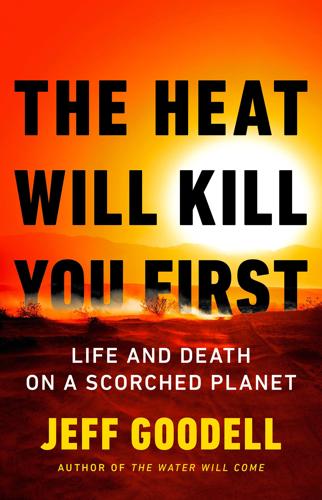
The Heat Will Kill You First: Life and Death on a Scorched Planet
by
Jeff Goodell
Published 10 Jul 2023
SARS-CoV spilled over from an animal host, likely a civet cat, in 2002–03, and caused a near pandemic before disappearing. Middle East respiratory syndrome (MERS) coronavirus jumped from camels to people in 2012, but never found a way to spread efficiently among humans and died out quickly. Now we have SARS-CoV-2, the virus that causes Covid-19. As I write this, the precise origins of Covid-19 remain unclear. The simplest explanation is that the virus emerged from the wilds near southern China, then found residence in horseshoe bats before making the jump to humans. The virus, as of this writing, has infected more than 680 million people and caused nearly seven million deaths around the world.
…
Compared with other pathogens out there, Covid-19 is relatively docile. It is an easily transmissible virus that is far more deadly than the flu, and has mysterious long-term effects. But it doesn’t kill three out of four people it infects, like the Nipah virus. It doesn’t cause people to bleed out of their eyes and rectums like Ebola. “Imagine a disease with seventy-five percent case fatality that is equally transmissible,” says Stephen Luby, an epidemiologist at Stanford University. “That would be an existential threat to human civilization.” The Covid-19 pandemic is often compared to the 1918 influenza, which killed at least fifty million people globally.
…
“Over Half of Known Human Pathogenic Diseases Can Be Aggravated by Climate Change.” Nature Climate Change 12 (2022), 869–875. https://doi.org/10.1038/s41558-022-01426-1 “a pandemic era”: David M. Morens and Anthony S. Fauci. “Emerging Pandemic Diseases: How We Got to COVID-19.” Cell 182, no. 5 (2020), 1077–1092. https://doi.org/10.1016/j.cell.2020.08.021 620 million: World Health Organization. WHO Coronavirus (COVID-19) Dashboard. Accessed October 2022. https://covid19.who.int/ six and a half million: Ibid. fifty million people: “1918 Pandemic (H1N1 virus).” Centers for Disease Control website. Accessed October 2022. https://www.cdc.gov/flu/pandemic-resources/1918-pandemic-h1n1.html Vibrio vulnificus: Ali Raj et al.
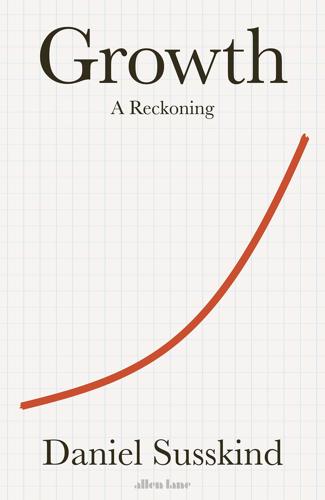
Growth: A Reckoning
by
Daniel Susskind
Published 16 Apr 2024
, Institute for New Economic Thinking, 28 February 2017. 9 See, for instance, Daron Acemoglu and Simon Johnson, Power and Progress: Our Thousand-Year Struggle Over Technology and Prosperity (New York: Public Affairs 2023). 10 Paul Krugman, ‘Errors and Emissions’, The New York Times, 18 September 2014. 11 Data is from Jose Maria Barrero, Nicholas Bloom and Steven Davis, ‘Why Working from Home Will Stick’, NBER Working Paper No. 28731, April 2021. This is a version of their Figure 1. Here, though, the ‘Pre-Covid-19’ entry is the average percentage between 1 January 2001 to 1 January 2019. 12 Tomas Pueyo, ‘Coronavirus: Why You Must Act Now’, Medium.com, 10 March 2020, tomaspueyo.medium.com/coronavirus-act-today-or-people-will-die-f4d3d9cd99ca. 13 Stuart Thompson, ‘How Long Will a Vaccine Really Take?’, The New York Times, 30 April 2020. 14 www.ox.ac.uk/news/2020-11-23-oxford-university-breakthrough-global-covid-19-vaccine; Carolyn Johnson, ‘Pfizer’s Coronavirus Vaccine is More than 90 Per Cent Effective in First Analysis, Company Reports’, The Washington Post, 9 November 2020. 15 Jon Cohen, ‘“Absolutely Remarkable”: No One Who Got Moderna’s Vaccine in Trial Developed Severe COVID-19’, Science, 30 November 2020. 16 David Autor and Elisabeth B.
…
Almost every country has slumped its way into the twenty-first century, though the timings differ: Japan and Germany started spluttering in the mid-1990s, the US and UK in the mid-2000s, China in the 2010s. Most economies, battered by two decades of crises – including the dot-com bust, the 2007–8 financial crisis and the Covid-19 pandemic – are sluggish shadows of former selves. We increasingly realize we cannot take growth for granted. In response, political leaders, in almost every country, have thrust ‘more growth’ to the very top of their priorities. But it is far from clear whether they or those who advise them understand what must be done to achieve it.
…
Peter Thiel, 2022.2 Most of us in the developed world have been fortunate to grow up in a world without mass unemployment. In general, there has always been enough work to keep employed nearly all of those who want a job. That is the economic life to which many of us have become accustomed. And that is the world that fell apart at the start of the Covid-19 pandemic. Overnight, vast numbers of people woke up to find themselves, through no fault of their own, without an income. Suddenly, we caught a frightening glimpse of what widespread worklessness really looks like, and a sense of the fear and powerlessness that comes along with it. With that experience fresh in mind, it is astonishing to think that the Great Depression was far worse.
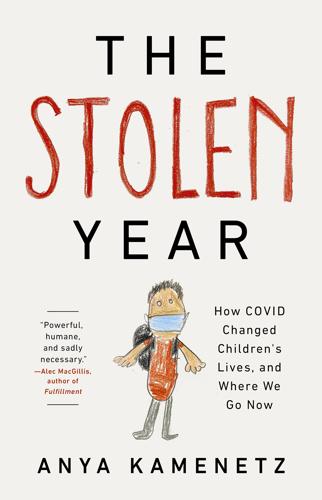
The Stolen Year
by
Anya Kamenetz
Published 23 Aug 2022
Title: The stolen year : how COVID changed children’s lives, and where we go now / Anya Kamenetz. Description: First edition. | New York : PublicAffairs, [2022] Identifiers: LCCN 2022001106 | ISBN 9781541700987 (hardcover) | ISBN 9781541701014 (ebook) Subjects: LCSH: Education—Social aspects—United States—History—21st century. | COVID-19 Pandemic, 2020—Social aspects—United States. | Children—United States—Social conditions—21st century. | Child welfare—United States—History—21st century. | Educational sociology—United States. Classification: LCC LC191.4 .K36 2022 | DDC 306.430973/0905—dc23/eng/20220524 LC record available at https://lccn.loc.gov/2022001106 ISBNs: 9781541700987 (hardcover), 9781541701014 (ebook) E3-20220709-JV-NF-ORI Contents Cover Title Page Copyright A Note Introduction SPRING 2020 CHAPTER 1 Schools CHAPTER 2 Hunger CHAPTER 3 Childcare CHAPTER 4 Special Education SUMMER 2020 CHAPTER 5 Racism CHAPTER 6 Courts CHAPTER 7 Mothers and Others FALL 2020 CHAPTER 8 Schools CHAPTER 9 Mental Health WINTER 2020–2021 CHAPTER 10 Politics SPRING 2021 AND BEYOND CHAPTER 11 Future Acknowledgments Discover More About the Author Notes Explore book giveaways, sneak peeks, deals, and more.
…
As March 2020 turned to April and then May, it dawned on all of us that, in so many ways, the cavalry wasn’t coming. Institutions and leaders weren’t taking the necessary steps to make sure children’s needs were met, for food, care, education, or connection. Hundreds of children ultimately died directly of COVID-19. This is a tragedy. We were fortunate that this direct toll was not larger. Instead, the harm of the pandemic for the overwhelming majority of children came in a host of other forms. A full year into the pandemic, more than four in ten children were still not attending school in person. That was not the norm in most parts of other wealthy countries, regardless of the many different courses of their pandemics.
…
I heard from some special education teachers that they worried their students would not be able to wear masks or wash their hands correctly. And they worried about transmission for those students who need help eating and help with the bathroom. Hawaii did bring special education students back to school. But it was an excruciating choice. Alexis is in delicate health and uses a feeding tube. Vanessa was terrified of her getting COVID-19. “Do we keep her home, you know, in a bubble or do we send her out into the world and risk her getting something that can kill her?” Ultimately, she concluded that she had to take the risk. “She had just shut down so much of her life. She’s barely even here. She’s a shell of a child.” School with COVID protocols in place didn’t bring all the benefits Vanessa had hoped for.

Fixed: Why Personal Finance is Broken and How to Make it Work for Everyone
by
John Y. Campbell
and
Tarun Ramadorai
Published 25 Jul 2025
As psychologists have repeatedly confirmed, human beings find exponential growth unintuitive and are often surprised by the rapid absolute growth that occurs late in the process, when the balance of assets or debt has increased to an unfamiliar level. By analogy, many people without scientific training—including political leaders—were astonished during peaks of the COVID-19 pandemic when a roughly constant proportional growth of COVID cases translated into larger and larger increases in the absolute number of cases. With the wrong intuition, the spread of COVID-19 seemed sudden and unexpected. In the financial context, financial planners try hard to explain the power of compound interest to investors and the danger of accumulating debt to borrowers, but their clients often find this difficult to comprehend.
…
Souleles, “Owner-occupied housing as a hedge against rent risk,” Quarterly Journal of Economics 120 (2005): 763–789. 27. During the COVID-19 pandemic the US federal government legislated forbearance (a pause in required mortgage payments) for mortgages backed by the federal government, or its sponsored housing agencies, if borrowers asserted their incomes were affected by the pandemic. See Susan Cherry, Erica Xuewei Jiang, Gregor Matvos, Tomasz Piskorski, and Amit Seru, “Government and private household debt relief during COVID-19,” Brookings Papers on Economic Activity (Fall 2021): 141–199; and Sean Lee and Omeed Maghzian, “Household liquidity and macroeconomic stabilization: Evidence from mortgage forbearance” (unpublished paper). 28.
…
The yield on 20-year inflation-indexed US Treasury bonds is a good measure of the real return (that is, the return over and above the effects of inflation) that a saver can earn on a safe long-term investment. This yield declined from around 4% in the late 1990s to a negative yield at the time of the COVID-19 pandemic in 2020 and 2021, although it has since returned to a modestly positive level around 2%. A low real interest rate significantly increases the challenge of saving enough to fund a decent standard of living in retirement.12 Another challenge is to allow people to borrow money to finance education.
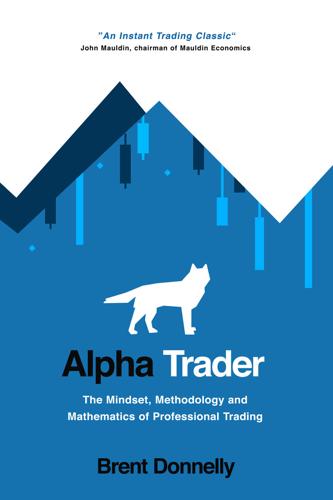
Alpha Trader
by
Brent Donnelly
Published 11 May 2021
After approval at an EU Summit in July, this removes eurozone break-up risk and makes the EUR a more attractive alternative to the USD as a reserve currency. ECB is quiet, saying fiscal policy (not monetary policy) needs to do the heavy lifting on COVID-19 relief. No further easing from ECB is bullish EURUSD. The Fed has been mega-dovish in response to COVID-19 and is ready to get even more dovish on the back of a new Average Inflation Targeting (AIT) framework. The details of the framework are not yet clear, and the market is excited to hear more from Fed Chairman Jerome Powell at Jackson Hole (late August) and the next Fed (FOMC) meeting (mid-September).
…
Striking the balance between too big and too small is vital in trading and that balance can be the difference between crushing a crisis period or getting crushed by it. 2. Keep an open mind and use your imagination. When COVID-19 hit in 2020, the market took oil from $65 to $50 as concerns about consumer demand knocked a market that was already bulled up on “cheap” energy stocks. Then the OPEC meeting in early March crumbled and crude plummeted from $50 to $27 in a week. The pressure from COVID-19 started the ball rolling then the Saudi pledge to pump like crazy broke the back of the oil market. Anyone watching oil go from $65 to $50 might have thought that was enough of a move.
…
For example, when a central bank meeting is coming up, and there is a tiny (but not zero) chance of that central bank cutting rates, the market loves to go into the meeting short the currency. This often creates an imbalance where there are so many people betting on the longshot (a rate cut) that you get an outsized move when no cut is delivered. Here is an example: in early February 2020, COVID-19 was popping up all over the world and had triggered the first wave of fear about the global economy. Given Australia’s dependence on commodities and global growth, some observers thought the Reserve Bank of Australia might cut rates in response to the virus contagion. Interest rate markets priced the probability of an interest rate cut as less than 10%, but if the cut was delivered, AUDUSD might drop 100 points.
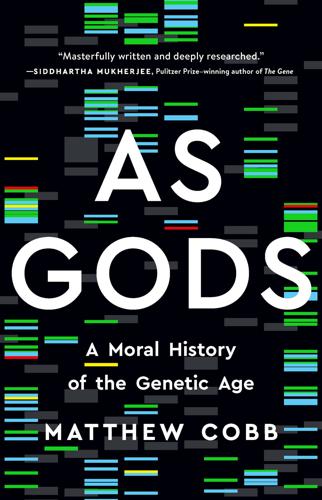
As Gods: A Moral History of the Genetic Age
by
Matthew Cobb
Published 15 Nov 2022
There is a growing preparedness to share data, as seen by the open science movement and the use of preprints which rapidly dominated scientific investigations of COVID-19. On the other hand, we are increasingly aware of privacy and individual rights; researchers recognise that large-scale genomic studies might have to deal with millions of individual claims over the use of personal genetic data in that research.82 Furthermore, indigenous groups realise that their DNA might be used to develop products and are understandably hostile to the exploitation of their most personal data. Finally, despite initial claims from many universities racing to develop a COVID-19 vaccine that any successful product would be made available cheaply, or free, to developing countries, virtually no university or research institute would now allow its employees to refuse to patent a significant vaccine.viii Scientists and university administrators have eaten from the tree of wealth, and things will never be the same again.
…
viii At the very end of 2021 an honourable exception appeared. Texas Children’s Hospital and Baylor College of Medicine announced they were making their COVID-19 vaccine freely available around the world, starting with India. Mind you, this was only possible because a number of private donors, including philanthropic foundations, made substantial donations to the developers. In May 2022, leading members of the World Trade Organization proposed waiving patents on COVID-19 vaccines, in order to encourage the production of existing vaccines around the world. The pharmaceutical companies have been lobbying against the proposal, and as this book goes to press, no agreement has been reached
…
Many of the leading agencies and organisations involved in discussing gene editing have recognised that even if such developments were possible, they would encourage the growth of inequalities and should therefore be forbidden. In the world of 2020, where COVID-19 was amplifying the differences between rich and poor, both within and between countries, and where social justice had become increasingly significant in rhetoric if not reality following the explosion of Black Lives Matter, the idea of advocating that a tiny minority should profit from some spurious upgrade seemed completely off-message. This could be seen in the way that the Joint Commission of the National Academies of Science and of Medicine and the Royal Society used the COVID-19 pandemic and the struggle against racial injustice to frame their 2020 report on what they called heritable human genome editing (HHGE):ii These twin upheavals have underscored that we live in an interconnected world, where what happens in one country touches all countries, and that science occurs in a societal context.

Human Frontiers: The Future of Big Ideas in an Age of Small Thinking
by
Michael Bhaskar
Published 2 Nov 2021
After fifty years we haven't been back to the Moon; we haven't cured cancer; life expectancy increases have stalled; we're still horrifically addicted to carbon-based energy. We didn't realise the visions of Kahn, Wiener and the postwar world. Our societies have been floored by a widely predicted pandemic. As I worked on the book, Covid-19 overturned much we took for granted, from meals at restaurants to transatlantic flights to safe government debt levels. But in the face of perhaps the biggest challenge for seventy-five years, government, corporate and even personal thinking was often trapped by the models of the past, incapable of building those of the future on the fly.
…
For example, per capita energy use grew for centuries in what has been called the Henry Adams curve, underpinning technological and societal change.28 This growth has stopped: if pre-1970 energy use trends had continued, we would have access to thirty times as much energy today, likely supplied by novel forms of nuclear power.29 But at the frontier, the availability of energy has stagnated, even as it is growth in available energy that underwrote almost everything about modernity.30 Across a range of significant metrics there is a marked deceleration in the rate of change: especially in developed countries, we are seeing a slowdown not in just absolute economic growth, or major innovations, or energy use, but also in debt (student, automobile and mortgage), the number of books published per year, population and, with it, fertility rates, the number of relationships and age of marriage, improvements in living standards, median wage growth, property and other asset price inflation, increases in human height, the introduction of new significant consumer appliances and enrolment in tertiary education.31 Covid-19 has witnessed dramatic slowdowns in business, hospitality, transport, the number of conferences and the pace of life. This slowing – and in some cases outright reversal of growth – isn't necessarily all bad but it does imply we have hit an historic inflection point. In contrast to the past, the breakthrough problem spans fields, its tentacles suffocating the economy.
…
This paralysis means ‘new anxieties’ are faced with ‘old ideologies’.19 Some new ideas get through: nudge unit governance for example, or perhaps nascent concepts like Universal Basic Income or Modern Monetary Theory.20 But in general, despite progress, we lack ideas to solve questions as diverse and significant as loneliness, homelessness, social care, care of the elderly and child care.21 Even the most energised debates – about race, gender or the environment, for example – have their roots in the 1960s and earlier. The Covid-19 pandemic was, in its early phases, thought to be changing every facet of life; its impact has indeed been enormous, but this has mainly involved accelerating pre-existing changes like uptake of digital technology. Perhaps the most surprising thing is how little has changed structurally. Events unfold, yes; but change at the frontiers of political economy is glacial.

Visual Thinking: The Hidden Gifts of People Who Think in Pictures, Patterns, and Abstractions
by
Temple Grandin, Ph.d.
Published 11 Oct 2022
You don’t have to learn how to use it. Before COVID-19 shut down all my travel and in-person classes, I had never heard of Zoom. I learned about it from my colleagues, who were all using either Zoom or Microsoft Teams. Zoom’s success is a prime example of a new company rising because of an old company’s failure to innovate. Eric Yuan was a head engineer for Cisco’s popular Webex videoconferencing platform. He begged Cisco to improve Webex, but to no avail. So he started his own company, with a better, easy-to-use service. Yuan made $12 billion in the first six months of the COVID-19 pandemic. Clive Thompson, in his book Coders, states that working on the front end of a website, where the user interacts with the site, is often “denigrated as aesthetic, fuzzy stuff” and “not real coding.”
…
As I’ve grown older and had more experiences, I can solve problems much more easily, because my memory contains more visual data. My world has gotten bigger and bigger. Navigating visually often means finding visual metaphors to explain novel situations, and I still use them. Most recently, I was particularly concerned about COVID-19 because I am in the at-risk older population. To get a grip on it when the pandemic first started, I did what I always do, by applying bottom-up thinking. I gathered numerous research papers about medications to treat the virus. Then I categorized the treatments: the antivirals and the anti-inflammatories.
…
With test requirements removed, student applications have skyrocketed, especially at Ivy League schools, says a February 2021 New York Times article. “First generation, lower income, as well as Black, Hispanic, and Native American students were much less likely to submit their test scores on college applications,” Anemona Hartocollis reported in the Times in April 2021. During the COVID-19 pandemic, 650 more schools dropped the test requirement. Students who would have screened themselves out based on test scores now have an opportunity to showcase their public service, hobbies, recommendations, work experience, and personal essays. This is progress, especially for visual thinkers.
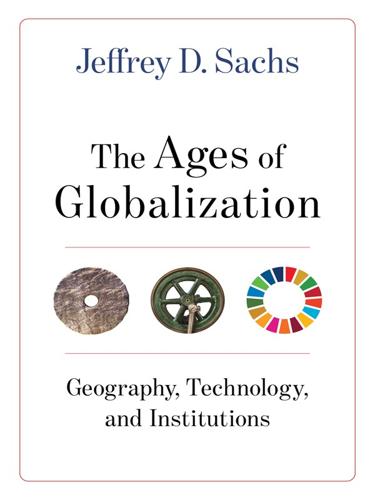
The Ages of Globalization
by
Jeffrey D. Sachs
Published 2 Jun 2020
WHO, of course, is currently at the center of the global fight against COVID-19. WHO has helped to coordinate scientific information about the pathogen and how to control it, and to coordinate and monitor the global push to contain and end the pandemic. Globalization enables one part of the world to learn from others. When one country shows successes in containing the spread of COVID-19, other parts of the world quickly aim to learn of the new methods and whether they can be applied in a local context. The development of new drugs and vaccines to fight COVID-19 is also a global effort, as was the case with HIV. The clinical trials to test the new candidate drugs and vaccines will involve researchers spanning the world.
…
Since then, Africa’s malaria burden has stood as an obstacle to child survival and economic development, though new drugs and preventative measures are enabling humanity to fight back against this age-old scourge. More recently, another killer pathogen circled the globe and caused devastation and havoc: the human immunodeficiency virus, HIV, the cause of AIDS. HIV, like COVID-19, is a zoonosis, that is, a pathogen of animal populations that jumps to human populations through some kind of interaction and perhaps genetic mutation. AIDS entered the human population most likely from West African apes that were killed for bushmeat. COVID-19 entered the human population most likely from bats. In the case of AIDS, the virus apparently spread among Africans for decades in the middle of the twentieth century, then was transmitted internationally in the 1970s and early 1980s.
…
A notable initiative was the launch of a new Global Fund to Fight AIDS, TB, and Malaria, in which I was thrilled and honored to play a role during its early formulation and development. The speed of policy implementation and health interventions was greatly spurred by rising public awareness and the crucial activist leadership of civil society. COVID-19 similarly provokes the reckoning of the balance sheet of globalization, and the policy challenge of promoting the positive sides while limiting the negative consequences. The early steps in fighting COVID-19 have involved closing down international trade and travel, and even restricting the movements of people between and within cities of single nations. Quarantines are back, the word itself referring to the forty days (quaranta giorni in Italian) that Venetians held ships away from the port when the ships were suspected of carrying plague.
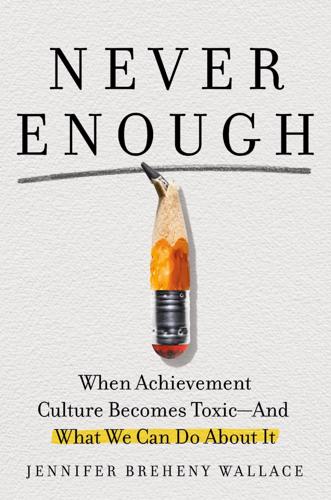
Never Enough: When Achievement Culture Becomes Toxic-And What We Can Do About It
by
Jennifer Breheny Wallace
Published 21 Aug 2023
She posted the announcement on Facebook: She was launching a social group called Women of Wilton, or WOW, where any attendee could experience “a sounding board, a story, a frustration, a laugh, and connecting with our feelings.” The group now has its own Facebook page, with more than four hundred members of mixed ages spanning from thirties to fifties. Before COVID-19 they were meeting once a month. Now that COVID-19 is waning, they’ve started to pick up again. The practice of mattering pierces our image-conscious lives—the misguided notion that we don’t need help. These small moments puncture the facade that supposedly protects our families but, in reality, breeds loneliness. New York, as much as I love it, can be very image conscious.
…
GO TO NOTE REFERENCE IN TEXT “alarming increases in the prevalence”: Office of the Surgeon General, “U.S. Surgeon General Issues Advisory on Youth Mental Health Crisis Further Exposed by COVID-19 Pandemic,” U.S. Department of Health and Human Services, Dec. 7, 2021, https://www.hhs.gov/about/news/2021/12/07/us-surgeon-general-issues-advisory-on-youth-mental-health-crisis-further-exposed-by-covid-19-pandemic.html. GO TO NOTE REFERENCE IN TEXT wanted to understand the pressure: In consultation with a researcher at the Harvard Graduate School of Education, I distributed the survey to over six thousand parents nationwide during January and February 2020.
…
When you live in a community of high achievers with strict definitions of success, when friends are competing for the same leadership positions, for the same teams, for the same acceptances to increasingly exclusive colleges, you grow up in an environment of outsized expectations. You might suppose that mental health struggles resolve once these students get into college. But that doesn’t appear to be the case. Even before the devastating effects of the COVID-19 pandemic, mental health issues on college and university campuses were a growing concern. Survey data from before the pandemic found that three in five college students reported experiencing overwhelming anxiety, and two in five reported being too depressed to function within the past year. In 2020, a fifteen-month investigation by a Harvard task force found that students there suffered from “high levels of stress, overwork, concern about measuring up to peers, and inability to maintain healthy coping strategies.

Road to Nowhere: What Silicon Valley Gets Wrong About the Future of Transportation
by
Paris Marx
Published 4 Jul 2022
In short, Uber not only missed out on the efficiencies of having a vehicle fleet and in-house insurance, it had many costs that taxi companies did not, which made its service more expensive to deliver, despite its claims to the contrary. As activity picked up in the summer of 2021 with the rollout of Covid-19 vaccines in the United States, users got a taste of what ride-hailing services will look like as the companies try to turn a profit. Users complained of higher fares, especially for trips to the airport, and much longer waits. There was a common recognition that the days of subsidized rides were coming to an end, and some users even reported turning back to taxis or bicycles for more of their trips.
…
The financialization of land and property has caused housing prices in major cities to soar, even after the 2008 housing crash. Housing has become a speculative investment that wealthy people buy up even if they have no intention of living in their properties, because it is seen as a safe investment with high returns—and as billionaires saw their net worth soar through the Covid-19 pandemic in 2020, they have more money than ever to sink into speculative assets. With property already at unaffordable levels for a growing segment of the population, autonomous vehicles (in the form that is promised by tech executives) could act as a relief valve that makes it feasible for more people to move even farther from the city center in search of homes and rental units that do not eat up the majority of their incomes because the commute will be more tolerable.
…
In May 2020, Uber invested $85 million in Lime (another micromobility company) in exchange for taking Jump off its hands and, more importantly, its balance sheet. Jump had been losing $60 million a quarter. Weeks later, Jump’s e-bikes were being crushed at disposal sites around the United States even as there was a bicycle shortage in the early months of the Covid-19 pandemic. The perception that bikes and scooters were so disposable they should just be trashed instead of repainted and deployed into Lime’s fleet, or donated to charities, or even sold to people who might want to ride them illustrated the flawed model that the micromobility industry is designed around.
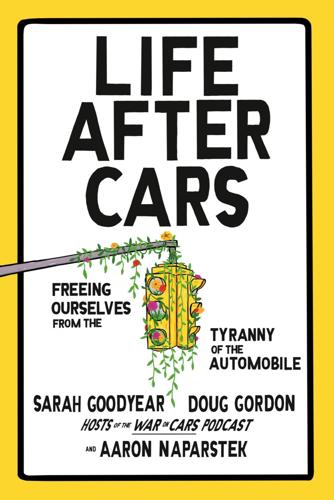
Life After Cars: Freeing Ourselves From the Tyranny of the Automobile
by
Sarah Goodyear
,
Doug Gordon
and
Aaron Naparstek
Published 21 Oct 2025
GO TO NOTE REFERENCE IN TEXT In Wuhan, China, air pollution: Lala Saha, Amit Kumar, Sanjeev Kumar, John Korstad, Sudhakar Srivastava, and Kuldeep Bauddh, “The Impact of the COVID-19 Lockdown on Global Air Quality: A Review,” Environmental Sustainability 5, no. 1 (2022): 5–23, doi.org/10.1007/s42398-021-00213-6. GO TO NOTE REFERENCE IN TEXT the greatest global respiratory virus crisis: X. Wu, R.C. Nethery, M. B. Sabath, D. Braun, and F. Dominici, “Air Pollution and COVID-19 Mortality in the United States: Strengths and Limitations of an Ecological Regression Analysis,” Science Advances 6, no. 45 (2020): eabd4049, doi.org/10.1126/sciadv.abd4049.
…
See policy Lexington, MS, 140–41 lidding highways, 173–74 See also highways Lieber, Janno, 175 Lime bikes, 192 Livable Streets (Appleyard), 116, 117–18, 121 lobbyists, 130 See also power lockdowns from COVID-19, 107–10 See also COVID-19 pandemic London, ON, CA, 109 London, UK, 40–41, 112–13, 229 London Cycling Campaign, 150 loneliness, 119–23, 151 See also health Long Island, NY, 175 Longmont, CO, 167 Lopez, Guille, 54 Los Angeles, CA, 54, 87, 109, 208–9, 215, 225 Los Angeles Department of Transportation, 208–9 Louisville, KY, 10 Lower Manhattan Expressway, 20 Lyden, Madison, 23, 24 Lydon, Mike, 110, 205 M M14 bus, 111 Madrid, ES, 229 See also Europe magnetite, 104 Manhattan, NY, 11 See also New York City, NY mapping, cognitive, 60–61 marginalization, 149 See also inequity market failures, 164–65 Marohn, Charles, 119 Marshall, Wes, 230 Marx, Groucho, 22 masculinity, petro, 152–53 Massachusetts Avenue, Boston, MA, 206 McCabe, Robert, 73 McClain, Elijah, 146 McLuhan, Marshall, 209 Mead, Leonard, 223–24 media, mainstream, 6–9, 22, 24, 36–38, 44, 53, 88–89, 128 men, 152–54 See also gender Merker, Blaine, 210 Merrily We Roll Along (1961), 22 Metropolitan Transportation Authority (NYC), 175 Michigan, 127 Milan, IT, 229 Milwaukee, WI, 20–21, 215 minimums, parking, 164 Minneapolis, MN, 146, 167 mobility.
…
“If bike bus leaders play our cards right and do the right things to build this movement, this could be our generation’s Stop de Kindermoord.” 4 Cars Ruin Nature Everybody loved Barry the barred owl. That was what made it all so sad. For a brief flicker of time during the first year of the COVID-19 pandemic, Barry was the most famous owl in New York (a position later to be claimed by zoo escapee Flaco, a Eurasian eagle owl, but that’s another story). Barry was a young female barred owl, common in much of North America but a novelty in Central Park, New York’s premier urban oasis. She became a celebrity simply by being her owl self: perching in the trees and soaring over the lawns of the park’s 843-acre expanse, attracting legions of birders with cameras and binoculars when she paused to feast on pigeons and rats, or simply to preen her magnificent plumage.
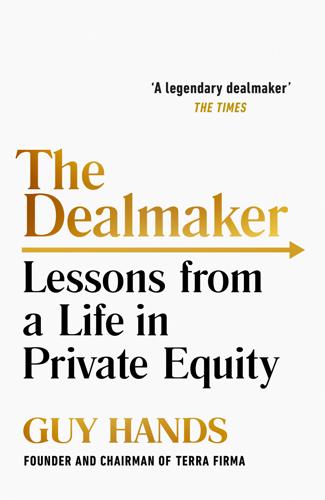
The Dealmaker: Lessons From a Life in Private Equity
by
Guy Hands
Published 4 Nov 2021
And since, in any case, we needed to raise a substantial amount of money for Terra Firma as a whole by June 2021, I felt that far from looking to find the additional sums Parmaco required, we should actually be selling it as quickly as possible. The timing was far from perfect, given Covid-19, the fact that Parmaco’s CFO was leaving and that the CEO, Ossi Alastalo, had decided, after thirty-two years, that he wanted to go part-time and become a non-executive chairman. But while the general view of others at Terra Firma, the management team and our co-investors was that we should get the business refinanced as quickly as possible and put it up for sale later in 2021 when we had a management team in place and settled in, I felt instinctively that this simply wasn’t the right path to take. Covid-19 demonstrated to me how lucky Finnish society is to have what many people regard as the best school system in the world.
…
I could hardly blame Julia for never wanting to work for me; she knew my work style better than anyone and knew how I put myself and those who work for me under extraordinary pressure in order to achieve the best result possible. Covid-19 forced me to take the time to work out how all my businesses could be challenged, improved and transformed. I was going to do whatever was necessary to transform my businesses so that they would survive. This was about survival, and all businesses and their stakeholders had to come above personal sensibilities. Julia had already decided to make changes, particularly in Hand Picked’s use of technology, its deployment of specialist skills, its room rates and its brand. However, Covid-19 meant that these changes needed to be done far quicker and more extensively than anyone in Hand Picked was prepared for.
…
But once it became clear that a basic principle had been established that an income would be provided to employees whom the lockdown had denied work, we realised that the fragility of great swathes of the economy had been recognised. Furlough would help ensure the survival of businesses that millions relied on, just as government intervention had saved the banks in 2008. Stuck in Hawaii, I focused on getting fitter and on looking beyond June. Governments might have been assuring us that the Covid-19 crisis would last only a few months, but I was more persuaded by my elder son’s view that the pandemic was here to stay for at least two years. That meant hoping for the best but planning for the worst. That in turn meant that we needed to focus forensically on each business, stress-test each one and decide whether change was necessary and, if so, how radical that change should be.
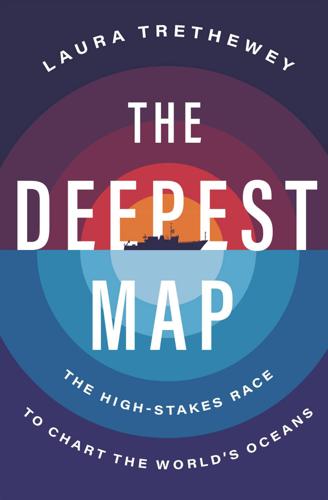
The Deepest Map
by
Laura Trethewey
Published 15 May 2023
At nearly any other point over the last twenty years, that would have been relatively easy. Scientists, like writers, are generally happy to tell you all about their work. During the height of the COVID-19 pandemic, however, that became almost impossible to do in person. The US fleet of research vessels had adopted strict protocols for keeping the disease off its ships. As we learned from the COVID-19 outbreaks on cruise ships in the early days of the pandemic, viruses spread extremely well on ships. With its tight hallways, handrails touched by everyone on board, and big enclosed dining halls, a ship is an incubator of illness.
…
“Mining’s Tesla Moment: DeepGreen Harvests Clean Metals from the Seafloor,” Mining.com, June 15, 2017, https://www.mining.com/web/minings-tesla-moment-deepgreen-harvests-clean-metals-seafloor/. 105.Duncan Currie, “Deep Sea Conservation Coalition Intervention,” paper presented at International Seabed Authority Council Meeting, Kingston, Jamaica, December 8, 2021, https://savethehighseas.org/isa-tracker/category/statements. 106.Casson, “Deep Trouble,” 8. 107.Sue Farran, “COVID-19 Made Deep-Sea Mining More Tempting for Some Pacific Islands—This Could Be a Problem,” The Conversation, June 14, 2021, https://theconversation.com/covid-19-made-deep-sea-mining-more-tempting-for-some-pacific-islands-this-could-be-a-problem-158550. 108.Kolbert, “Mining the Bottom of the Sea”; Elizabeth Kolbert, “The Deep Sea Is Filled with Treasure, but It Comes at a Price,” New Yorker, June 6, 2021, https://www.newyorker.com/magazine/2021/06/21/the-deep-sea-is-filled-with-treasure-but-it-comes-at-a-price. 109.Kolbert, “The Deep Sea Is Filled with Treasure, but It Comes at a Price.” 110.Bryant, “$500 Million of SPAC Cash Vanishes Under the Sea.” 111.Elham Shabahat, “‘Antithetical to Science’: When Deep-Sea Research Meets Mining Interests,” Mongabay, October 4, 2021, https://news.mongabay.com/2021/10/antithetical-to-science-when-deep-sea-research-meets-mining-interests/. 112.Rozwadowski, Fathoming the Ocean, 41. 113.Philomène A.
…
I was listening to the exchange over headphones at my home in San Diego in late 2020. It was just a few days after Joe Biden had won the presidential election, and SCUFN was hosting its first virtual meeting in its forty-five-year history. The annual five-day meeting, scheduled to take place that year in St. Petersburg, Russia, had been called off due to the COVID-19 pandemic. Instead, the SCUFN members met virtually over six tightly planned hours spread across two days. They planned to process more than fifty new names for seafloor features, which was fewer than usual to accommodate the new virtual format. At the last in-person session, SCUFN had processed nearly two hundred new names.

Who’s Raising the Kids?: Big Tech, Big Business, and the Lives of Children
by
Susan Linn
Published 12 Sep 2022
Fairplay, “Designing_for_disorder.Pdf,” April, 2022, fairplayforkids .org/wp-content/uploads/2022/04/designing_for_disorder.pdf. 5. Emma Goldberg, “‘Techlash’ Hits College Campuses,” New York Times, January 11, 2020. 6. Colleen Mcclain, “How Parents’ Views of Their Kids’ Screen Time, Social Media Use Changed During COVID-19,” Pew Research Center (blog), www.pewresearch.org/fact-tank/2022/04/28/how-parents-views-of-their-kids-screen-time-social-media-use-changed-during-covid-19. Index ABI Technologies, 131 Accountable Tech, 254 ACM Queue, 146 “active” and “passive” media, 216 Acton-Boxborough Regional School District’s edtech policy, 232–33, 245–48 digital tools criteria checklist, 248 letter to teachers, 245–47 Administrative Theory and Praxis (journal), 69–70 Advertising Age, 69 Age-Appropriate Design Code (Great Britain), 200–201, 203 Al Otro Lado’s Border Rights Project, 153–54 Aladdin (film), 159 Alana Institute, 254 Algorithmic Justice League, 254 algorithms, xv, 45, 48–49, 50, 137–41, 147–53 definitions, 45 Google’s search engines, 146–51 machine-learning, 45 personalized recommendations, 45, 48–49, 50, 137–41 predictive, 45, 48–49, 50, 137–41 racist biases and stereotypes, xv, 146–53 social media sites and, 151–53 Algorithms of Oppression (Nobel), 149 AlgoTransparency, 48–49 Alliance for Childhood, 25n allowances, children’s, 226 Almon, Joan, 13, 25n Alphabet, 102 Alter, Adam, 33 Amazon, 59, 77, 133–41, 165 Amazon Kid+, 136 devices marketed to children, 134–36, 151 digital assistants, 133–34, 137–41, 151 Echo Dot Kids Edition, 134–41, 151 Kindle e-reader, 134 one-click buying, 77 persuasive design, 46 predictive algorithms and personalized recommendations, 137–41 Amazon Alexa (voice-activated digital assistant), 133–34, 137–41, 151 “Alexa, I’m bored” feature, 139–40 and Echo Dot Kids Edition, 134–41, 151 predictive algorithms and personalized recommendations, 137–41 search feature and racism, 151 “skills,” 134, 141 American Academy of Pediatrics (AAP), 43, 52–53 American Coal Foundation, 170 American Gas Association, 182 American Girl dolls, 139 American Psychological Association (APA), 51–52 American Speech-Language-Hearing Association, 41, 238 Amnesty International, 68 Apple app store, 216 branding and brand loyalty, 67–68, 165 customers’ privacy, 68 digital assistant, 134 hardware dumping in schools, 184 iCloud, 68 in-school advertising (teaching materials), 165 Super Bowl commercial (1984), 67–68 See also iPads apps age-appropriate, 216 commercial-free, 217 edtech and Prodigy, 181, 184–89, 232–33 facilitating meaningful learning, 194–95 “free” apps (“freemiums”), 46, 119, 181, 186–87, 217 Lego, 4, 93–94, 95, 100, 119 Lego City, 93–94, 95, 100 nagware (pop-up ads), 46, 186–87, 189 Aristotle (Mattel smart device), 36–38 artificial intelligence (AI), 66, 135, 141–43 communicative robots (or “sociable bots”), 141–43, 231 and parasocial relationships, 142–43 Ascano, Armida, 61–62, 64–65 The Atlantic, 85 attachment, 36–38, 79 and smart devices, 36–38, 141–43 Australia, 74–75, 93, 94, 118 Australian Financial Review, 200 autoplay settings, 77–78, 128, 204 awe and wonder, 21–24 Axe, 64–65 Baby Einstein videos, 4, 199 Backyard Basecamp, 255 Balloon Pop (app), 119 Banks, Russell, 197 Barbie, 59, 85, 138, 139, 155–57 Barbie You Can Be Anything, 139 Black Barbie, 157 Hello Barbie, 142 Hispanic Barbie, 155–57, 162 Barton, Christopher, 158 Barton, Joe, 38 Bates, Joseph, 229 Be Internet Awesome (Google SEMS), 176–79 Be Tech Wise with Baby!
…
Ferguson (1882), 158 Pokémon, 30, 84–85, 102–6, 185 branding and, 30 collectibles craze, 30, 84–85, 105–6 theme song chorus (“gotta catch ‘em all”), 30, 85 Pokémon GO, 102–4 Pokémon Oreos, 105–6 Pokémon Sleep, 103–5 Pokémon Smile, 105–6 Political Tribes (Chua), 61–62 pop-up ads (nagware), 46, 186–87, 189 poverty children and, 65 COVID-19 disparities, xv materialistic values and, 97 millennial families and, 121 precautionary principle, 38–39, 209 presidential branding, 67, 69–71 privacy Apple, 68 Children’s Online Privacy Protection Act (COPPA), 135, 201–3 data mining, 47–48, 81 Echo Dot Kids Edition, 135–36 edtech and inBloom administrative platform, 233–34 Google tracking and data collection, 4, 177–78, 183 online behavior tracking, 47–49, 137, 177–78, 183 smart devices and surveillance/data collection, 36, 47, 133–36, 177–78 YouTube, 4, 47–48 Prodigy Education, 185–86 Prodigy English, 186 Prodigy (freemium math app), 181, 184–89, 192–94, 232–33 nagware and pressures to upgrade, 181, 186–87, 189 question of effectiveness at teaching math, 186, 187–89, 232 as social network, 189 professional organizations, corporate funding and, 238 progressive education Dewey’s philosophy of, 168–69 and personalized learning, 191–92 Psychological Science in the Public Interest (journal), 194–95 Psychology Today, 191 Public Broadcasting Service (PBS), 52–53 public education American democratic citizenship, 168–69, 172 Dewey’s philosophy of, 168–69 purpose of, 168–69, 172 See also edtech industry; schools, corporate advertising in public media (commercial-free), 52–53, 216 Publicis Groupe, 117 Punished by Rewards (Kohn), 191 puppet therapy, 3, 27 characters’ behavior as models for children, 20 and parasocial relationships, 143 video chats during COVID-19 pandemic, xiii, 33, 138, 194 push notifications, 46, 200, 204, 220–21 Pussy Cat Dolls, 4 Putnam, Robert, 132 racism, racial biases, and racial stereotypes, xv–xvi, 146–62 Alexa’s search feature, 151 algorithms and, xv, 146–53 children’s stories and racialized dolls and toys, 153–62 and COVID-19 pandemic, xiii–xiv and digital beauty filters, 153 Disney films, 159–60, 161 Google’s search engines, 146–51 name searches and search terms (e.g., “Black girls”), 146–47, 149–51 and postslavery history, 158–59 and social media sites, 151–53 white dolls and, 153–57 Radesky, Jenny, 119, 125 radio advertising (mid-twentieth century), 132 Raffi Foundation for Child Honoring, 258 Ranking Digital Rights, 258 reading books differences between using smartphones and, 126, 127–28, 132–33 e-books and e-readers, 132–33, 134, 221 reading to children, 132–33, 214 Reagan, Ronald, 29, 69, 166 Reclaiming Conversation: The Power of Talk in a Digital Age (Turkle), 133 Reinhard, Keith, 69 religious organizations and spiritual leaders, 71, 238–39 Reset Australia, 75 resistance parenting suggestions, 207–28 age-appropriate and commercial-free apps, 216–17 be wary of convenience, 222–2 family plan/agreement about tech use at home, 222 helping kids resist marketing-induced behaviors and values, 225–27 infants and toddlers, 212–14 middle childhood/elementary grades, 217–19 preschool and kindergarten, 214–17 reading to kids, 214 reducing your own time with tech, 220–21 screen time limits, 43, 53, 209–11, 213, 223 and six principles of child development, 209, 210–11 smartphones, 218, 220–21, 225 social media sites, 219 tech-free, commercial-free family time, 223–24 tech-free solutions to boredom, 224–25 tech-free time outdoors, 224 tech-free zones in the home, 224 things to consider in making decisions for your family about tech and commercial culture, 222–25 toys, 213–14 retail therapy, 90–91 Rethinking Schools, 170 Rewards external (material), 8, 97–102, 104–8, 193, 194 intermittent (persuasive design technique), 46–47, 185 and intrinsic motivation, 8, 97–103, 107–8 Rideout, Vicky, 1 Roblox, 218 Rodgers and Hammerstein, 90 Rogers, Fred, 3, 25 Roof, Dylann, 149 Rowling, J.K., 139n Royal College of Paediatrics and Child Health, 211 Rubenstein, Rheta, 186 Ryan’s World (Ryan’s ToysReview), 72, 204 Salesforce IoT, 45 same-sex marriage legalization, 230 Sanrio, 28 Scholastic, 170 schools, corporate advertising in, 163–80 Channel One News, 182–86 corporate-sponsored “educational” films (1950s), 182 corporate teaching materials (SEMS), 164–66, 169–80, 199 credit card companies and financial literacy materials, 172–75, 180 Disney, 164–65 fast food industry, 165, 167, 172, 180 financially-strapped schools, 166–67, 300–1n20 fossil fuel industry, 170–72, 179–80 Google’s Be Internet Awesome, 176–79 Impossible Foods, 175–76 instilling brand loyalty, 164, 165, 172, 184 local level efforts to change, 231–34 “partnerships,” 164, 167 science materials that deny climate change, 171–72 and true purpose of public education, 168–69, 172 See also edtech industry Schwartz, Shalom, 96 Scooby-Doo, 67 Scotland, 118 Screen Free Week, 234, 254 screen time, children’s, 39–43, 52–53, 118–19, 209–11, 213 babies’ and toddlers’ interaction with screens, 17–19, 39, 41–43, 213 and children of tech executives, 129, 218 and COVID-19 pandemic, 39–40 and language acquisition, 41–42 online videos, 40 recommendations, 43, 53, 209–11, 213, 215, 223 state bills to limit in early childhood settings, 204–5 touch screens, 40, 215 TV watching, 40, 42, 100 Screen Time Action Network at Fairplay, 234, 253 search engine optimization (SEO) companies, 148 search engines Alexa’s search feature, 151 algorithms and, 146–53 Google Search, 145–51 name searches and search terms, 146–47, 149–51 racial and ethnic biases, 146–53 and SEO companies, 148 Searle, Mike, 61 Sears catalog, 158–59 self-regulation, 21, 42, 193 SEMS (“Sponsored Educational Materials”), 164–66, 169–80, 199 financial literacy materials produced by credit card companies, 172–75, 180 and fossil fuel industry, 170–72, 179–80 Google’s Be Internet Awesome, 176–79 Impossible Foods and climate change education, 175–76 science materials that deny climate change, 171–72 See also schools, corporate advertising in Seneca Falls Women’s Rights Convention (1848), 230 The Sense of Wonder (Carson), 23 September 11, 2001 terrorist attacks, 91 Sesame Street, 27, 131 Sesame Workshop, 52–53, 131 “7 Rings” (song), 90 sexualized toys, media, and clothing, 4, 26, 59, 85, 156 Share Save Spend, 258 Shell Oil Company, 165, 171, 182 Shenoy, Neal, 136 Shine, Nora, 232–33, 234 Shrek, 67, 142 Silent Spring (Carson), 23 Siri, 134 ŠKODA Auto, 117 slavery, 158–59, 230 sleep, 103–5, 224 digital devices and, 104, 224 Pokémon Sleep app, 103–5 slogans, advertising, xiv smart devices, 36–38, 45, 47, 133–41 Amazon’s Alexa, 133–34, 137–41, 151 Aristotle, 36–38 attachment and, 36–38, 141–43 digital personal assistants, 133–41, 151 and “dumb” watches, 220 Echo Dot Kids Edition, 134–41, 151 Internet of Things (IoT), 45, 47, 133 privacy and data collection, 36, 47, 133–36, 177–78 See also smartphones smartphones, 35, 45, 66, 100, 105, 126–28, 130–33 differences between reading books and using, 126, 127–28, 132–33 effect on conversations between parents and children, 130–31, 132–33 and internet access, 40–41 marketed to children, 130–31 parents’ and caregivers’ overuse of, 41, 125–27, 221 resistance parenting advice, 218, 220–21, 225 Snapchat, 5, 73, 152–53, 202, 204 social change, steps toward systemic, 198–99, 208, 229–40 at the local level, 231–35 Minnesota’s Digital Wellbeing Bill, 236–37 organizations working to change laws and policies, 231, 234–35 organizing screen-free weeks in communities, 234–35 religious organizations and spiritual leaders, 238–39 schools and school districts, 231–34 young people’s advocacy groups, 237–38 social media sites, 5–6, 40, 72–76, 151–53, 219 and adolescents’ mental health, 73–75, 219 algorithms and racial biases, 151–53 brand tribes and marketing, 63–65 girls and, 73–75 influencers, 5, 72, 86–88, 204 intermittent rewards, 46–47 “likes,” 46, 47, 63, 72, 73, 152, 153 resistance parenting recommendations, 219 self-branding, 5, 72, 76, 219 Somerville, Kyle, 158 The Sound of Music (film), 90 South Africa, 117 Spears, Britney, 3 Spiderman, 13, 67, 121 SpongeBob SquarePants, 138, 142 SpongeBob SquarePants Challenge, 139, 140 Sponsored Educational Materials.
…
12: Resistance Parenting: Suggestions for Keeping Big Tech and Big Business at Bay 13: Making a Difference for Everybody’s Kids Afterword Acknowledgments Appendix: Model Edtech Policy for School Districts Suggested Reading, Viewing, and Listening Resources Notes Index A Note to the Reader The facts are irrelevant. It doesn’t matter one bit whether something is actually better or faster or more efficient. What matters is what the consumer believes. —SETH GODIN, All Marketers Are Liars I was working away at this book in March 2020 as the COVID-19 virus spread, beginning to take its terrible toll around the world. Sheltering in place began. Confined to my house, I thought I would devote my unexpected, extended solitude to immersing myself in writing. Instead, I found myself distracted by the destruction at hand—mounting deaths, rampant unemployment, and beleaguered and inadequately provisioned health care workers.

Digital Empires: The Global Battle to Regulate Technology
by
Anu Bradford
Published 25 Sep 2023
74 The tweet received over 13,000 likes after it was posted in March 2020. Twitter applied a fact check tag to the post, urging the reader to “Get the facts about COVID-19.”75 Li Yang, another official of the Ministry of Foreign Affairs with over 30,000 Twitter followers at the time, posted in July 2021: “The US won the first place in the fight against the pandemic with more than 30 million COVID-19 infections and more than 600 thousand COVID-19 deaths!!!”76 These examples illustrate how Chinese government officials actively deploy social media to advance pro-government messages as part of their carefully orchestrated propaganda effort.
…
Their Freedom on the Net 2021 report measures countries’ internet freedom across indicators such as obstacles to internet access, limits on content, and violations of user rights, and found that global internet freedom had declined for an eleventh consecutive year.148 The same report documents that the procurement of spyware is proliferating, with a growing number of governments gaining access to sophisticated surveillance technology.149 This suggests that numerous authoritarian governments are eagerly embracing surveillance technologies in their efforts to control their societies—and China provides them the tools to do so. The COVID-19 pandemic may further increase demand for digital surveillance technologies around the world. All governments were scrambling to prevent the spread of the pandemic, and many quickly deployed digital technology to introduce new contact-tracing measures. Digital surveillance proved helpful in tracking potential infections and alerting individuals who could have been exposed to the virus. China’s relatively more successful control of the COVID-19 pandemic during its early stages can, in part, be attributed to its societal willingness to tolerate highly invasive digital surveillance measures alongside with harsh lockdowns—even if those invasive measures have since been heavily criticized.
…
They May Not Work in Other Countries, Science (Mar. 2, 2020), https://www.science.org/content/article/china-s-aggressive-measures-have-slowed-coronavirus-they-may-not-work-other-countries. 151.See Aidan Powers-Riggs, Covid-19 Is Proving a Boon for Digital Authoritarianism, Ctr. for Strategic and Int’l Stud. (Aug. 17, 2020), https://www.csis.org/blogs/new-perspectives-asia/covid-19-proving-boon-digital-authoritarianism. 152.Feldstein, supra note 23, at 1–2. 153.Ronen Bergman & Mark Mazzetti, The Battle for the World’s Most Powerful Cyberweapon, N.Y. Times Mag., https://www.nytimes.com/2022/01/28/magazine/nso-group-israel-spyware.html. 154.Id. 155.David E.

An Ugly Truth: Inside Facebook's Battle for Domination
by
Sheera Frenkel
and
Cecilia Kang
Published 12 Jul 2021
Fact-checking tools to label misinformation would be used to correct conspiracy theories about COVID-19. Facebook’s HR teams would begin drafting a work-from-home policy as Facebook’s offices across Asia were tasked with gathering information about what was truly happening in China. And Zuckerberg’s personal relationship to the world’s most famous doctors and health experts would be used to promote figures of authority. Zuckerberg told the teams to report back to him in forty-eight hours. “This is going to be big, and we have to be ready,” he said. When the WHO designated COVID-19 a public health emergency on January 30, Facebook’s PR team had a blog post prepared.
…
When asked if he felt like he was taking heat on behalf of “the entire internet,” Zuckerberg broke into laughter. It took him a few seconds to collect himself. “Um. That’s what leading is,” he said. Chapter 14 Good for the World Well before U.S. government officials and much of the world were aware, Zuckerberg knew that the COVID-19 virus was spreading dangerously fast. In mid-January, he began to receive intelligence briefings on the global spread of the disease from top infectious disease experts working at the Chan Zuckerberg Initiative. Dr. Tom Frieden, the former head of the Centers for Disease Control and Prevention, and Joe DeRisi, co-president of the Biohub funded by CZI, reported that the Chinese government and Trump were downplaying the risk and that the virus had spread to half a dozen countries.
…
Kaplan sided with his team, which argued that Trump had simply been musing about the effects of bleach and UV light, rather than issuing a directive. Facebook’s PR teams pointed out the distinction to journalists and released a statement saying, “We continue to remove definitive claims about false cures for Covid-19, including ones related to disinfectant and ultraviolet light.” “We, all of us at Facebook, just couldn’t get our heads around the idea that it would be the president who spread nonsense cures about COVID,” said one senior Facebook executive. “We were just stuck in an untenable position. It meant defending a decision to let the president spread absolute nonsense medical information in the middle of a pandemic.”

Flowers of Fire: The Inside Story of South Korea's Feminist Movement and What It Means for Women's Rights Worldwide
by
Hawon Jung
Published 21 Mar 2023
And many of their stories share eerie similarities across borders: growing threats of tech-based abuse, legal backlash faced by sexual-assault victims who speak out, and criminal justice systems—and wider societies—in which victims’ voices are often met with suspicion and abusers’ downfalls with sympathy. Furthermore, many hard-won advances made in women’s rights have been rolled back or come under unprecedented threat in recent years, bringing new urgency to feminist activism. Globally, the COVID-19 pandemic reversed much of the progress women had made, as it eliminated far more jobs typically held by women than those by men, dramatically increased the burden of unpaid domestic work, and stoked a tide of gender-based violence during lockdown. In the United States, some of the attacks on women’s rights unleashed under or emboldened by the Trump administration have had a lasting impact on the lives of many women, most notably over abortion rights.
…
“It feels so exhilarating to be able to show that there’s nothing a sexual harasser can gain by suing his victim,” Choi said. The director Kim Ki-Duk saw the criminal complaints he’d filed dismissed by prosecutors, who found no evidence that the accused actress was lying. Kim also lost the defamation lawsuit, and a month later in December 2020, he died of COVID-19 in Latvia. Many of the ordinary women who gathered at Witch’s burning ceremony also won their legal battles. The army doctor who tried to rape Ashley was convicted and jailed for eighteen months. Meanwhile, Jennifer was cleared of all charges against her and won the defamation suit brought by her former literary mentor.
…
Those reported to be random crimes include a twenty-one-year-old man who in 2014 stabbed a woman in her twenties to death in the middle of the street after leaving a note at home that read, “Bitches are a tumor-like presence in society.”100 More recently, a young man spat or threw coffee at twenty women and girls on the streets to vent his stress from the COVID-19 pandemic because women are “socially vulnerable.”101 Another man spat on more than twenty women on the streets as a way to ease stress, but he ruled out men as targets because he figured they might hurt him.102 And yet another man, in just two hours, kicked, punched, stabbed, rammed his car onto, threatened with a knife, and tried to break into the houses of five people—all of them women.*103 Even on the posh streets of Gangnam, a young man in 2020 kicked, punched, or slapped in just fifteen minutes seven total strangers one by one—all of them women.104 A few months later, on the same streets, another young man assaulted five women one by one because he “felt like beating women” whenever he saw one.105 The Gangnam Station murder was a flashpoint for a problem that had been plaguing society for a long time.

The Coming Wave: Technology, Power, and the Twenty-First Century's Greatest Dilemma
by
Mustafa Suleyman
Published 4 Sep 2023
More than seventy countries have been found running disinformation campaigns. China is quickly catching up with Russia; others from Turkey to Iran are developing their skills. (The CIA, too, is no stranger to info ops.) Early in the COVID-19 pandemic a blizzard of disinformation had deadly consequences. A Carnegie Mellon study analyzed more than 200 million tweets discussing COVID-19 at the height of the first lockdown. Eighty-two percent of influential users advocating for “reopening America” were bots. This was a targeted “propaganda machine,” most likely Russian, designed to intensify the worst public health crisis in a century.
…
It would augment and empower people to be even more productive. Maybe there were some risks, they conceded, but they weren’t too bad. People were smart. Solutions have always been found. No worries, they seemed to think, on to the next presentation. Some years later, a short time before the onset of the COVID-19 pandemic, I attended a seminar on technology risks at a well-known university. The setup was similar: another large table, another high-minded discussion. Over the course of the day a series of hair-raising risks were floated over the coffees, biscuits, and PowerPoints. One stood out. The presenter showed how the price of DNA synthesizers, which can print bespoke strands of DNA, was falling rapidly.
…
Like AI, genetic engineering is a field in blistering motion, evolving and developing by the week, a massive global concentration of talent and energy beginning to bear real fruit (in this case, literally). CRISPR use cases are multiplying, from tomatoes ultrarich in vitamin D to treatments for conditions including sickle-cell disease and beta-thalassemia (a blood disorder producing abnormal hemoglobin). In the future, it could offer treatments for COVID-19, HIV, cystic fibrosis, and even cancer. Safe, widespread gene therapies are on their way. These will create crops that are resistant to drought and disease, boost yields, and help enable the production of biofuels at scale. Just a few decades ago biotech was expensive, complex, and slow moving, with only the most talented and well-resourced teams able to participate.

Cyprus - Culture Smart!: The Essential Guide to Customs & Culture
by
Constantine Buhayer
Published 24 Feb 2022
The expression “my child” can be used by a much older person, especially by a woman, to address or advise a clearly younger person, even if they don’t know them. In truth, good prospects for young people are a bit thin; salaries in 2022 could be as low as €400 a month. This is mitigated by the fact that many have somewhere parental to stay. The Covid 19 pandemic did little to improve their chances of work, and many have had to move abroad. Since the 1990s they have been leaving as young professionals with diplomas in their hands, some perchance dreaming of following in the footsteps of Nicosia-born Sir Christopher Pissarides and, like him, winning the Nobel Prize in Economics.
…
DOCUMENTATION Many foreign citizens enter simply showing their passport; others receive visas on arrival; some need visas. Naturally, check what applies to you. If you enter the North from Turkey, you may be refused entrance to the South. No vaccinations are needed to enter either part of the island. However, following the Covid-19 pandemic, entry requirements and vaccinations may vary according to circumstance. If driving, it is advisable to take out insurance. The European Health Insurance Card, EHIC, is valid in the southern Republic of Cyprus and travel insurance and medical coverage is recommended. Getting Around Bicycles can be taken on some buses serving the main intercity routes, but no dogs are allowed.
…
Many Cypriots go abroad for their health issues, in particular to the UK and Athens, where there may be relatives they can rely upon. Israeli hospitals with their specializations have lately been added to their list. For dental work, some Cypriots from the South choose to head north to dentists who can offer good work and at a lower price. The health system coped as well as can be expected with the Covid-19 pandemic and people respected the safety measures required of them. Vaccination centers were clean, organized, with only small lines, and the personnel were helpful. Occasionally, the only glitch was a lack of dual ventilation systems. LOW CRIME BUT … Compared to other European countries, Cyprus, both North and South, has low crime rates.
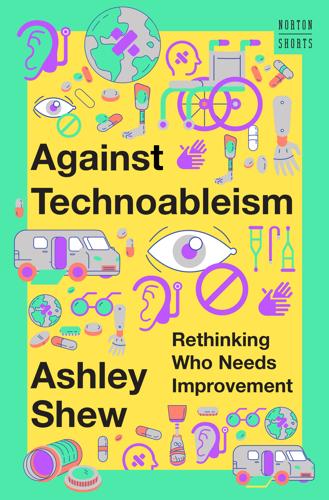
Against Technoableism: Rethinking Who Needs Improvement
by
Ashley Shew
Published 18 Sep 2023
Amputation statistics tell us something harsh about who matters and who doesn’t with respect to healthcare and survival. This part of disability reality is almost never mentioned in stories about disability technologies. And this was before Covid-19, which has radically shifted what the amputee community looks like. Some of us were already in categories of “high risk” before Covid, with complications from other circumstances; many others have joined the community because of Covid-19. The disease itself has caused many amputations due to vascular complications, and hospital overcrowding during surges has led people to delay medical care (including wound care), potentially missing out on measures that might have helped doctors salvage their limbs.
…
Diabetics undergo 130,000 amputations each year, often in low-income and underinsured neighborhoods. Black patients lose limbs at a rate triple that of others.” See https://features.propublica.org/diabetes-amputations/black-american-amputation-epidemic/. 13Data from diagnosis in the wake of Covid-19 suggests that Covid-19 will lead to diabetes in more people, and especially in those who have been infected multiple times. See https://wexnermedical.osu.edu/blog/why-are-people-developing-diabetes-after-having-covid19 and https://www.nature.com/articles/d41586-022-00912-y 14I wrote a little about this kind of interaction in my 2019 article in the “Nursing Clio” blog: https://nursingclio.org/2019/04/23/stop-depicting-technology-as-redeeming-disabled-people/. 15Vivian Sobchack has a great article on “Choreography for One, Two, and Three Legs,” about some of the possibility and experience of being an amputee dancing in different configurations—on one leg, with a prosthesis, and with crutches.
…
Even if the technologists’ wildest space fantasies come true, everyone is disabled in space—with gravity changes, people lose familiar forms of mobility, as well as muscle mass, lung function, and mental clarity. In more mundane futures, too, more people will be disabled. The environment is changing, and dramatic weather events are on the rise, which can cause chronic conditions like asthma. We will also see new diseases (such as Covid-19) emerge. Long Covid is an object lesson in becoming disabled through common illness. Post-viral syndromes—such as post-polio syndrome, shingles after chicken pox, the long-term health consequences of the 1918 Spanish Flu, Epstein-Barr’s priming of some people’s immune systems for multiple sclerosis—will continue to emerge and proliferate as new viruses appear, causing new clusters of symptoms and new types of disability.

Futureproof: 9 Rules for Humans in the Age of Automation
by
Kevin Roose
Published 9 Mar 2021
I’d favor a UBI-style plan coupled with Medicare for All and generous unemployment benefits for workers who are displaced by automation, similar to how the federal government stepped in with emergency cash transfers during the Covid-19 pandemic. Whatever we do, it’s inarguable that any collective action would be better than doing what we’re currently doing to address automation-related economic pains on the federal level in the United States, which is essentially nothing. In addition to big nets, we also need to think about the small webs we can create to support each other through this technological transition. Because in the absence of some fairly radical economic and policy changes, we’re going to have to do a lot of this ourselves. Our response to the Covid-19 crisis is a useful guide here.
…
I spent much of 2019 reporting on these changing attitudes, being careful to keep an open mind to the possibility that these fears were exaggerated. After all, unemployment in the United States was still near a record low, and while corporate executives were chattering among themselves about AI and automation, there wasn’t much obvious evidence that it was taking a toll on workers yet. Then Covid-19 arrived. In the spring of 2020, much of the United States entered shelter-in-place lockdowns, and my phone began lighting up with calls from tech companies telling me how the pandemic was affecting their plans for automation. The difference, now, was that companies wanted to publicize their efforts to automate jobs.
…
FedEx started using package-sorting robots to fill in for sick and absent workers in its shipping facilities. Shopping centers, apartment complexes, and grocery stores splurged on cleaning and security robots to keep their stores sanitized and safe, creating shortages among those robots’ suppliers. In all, Covid-19 seemed to speed up the automation timeline by years, if not decades. McKinsey, the giant consulting firm, dubbed it “the great acceleration.” Microsoft CEO Satya Nadella claimed that the company had experienced “two years’ worth of digital transformation in two months.” In March 2020, a survey by the accounting firm EY found that 41 percent of corporate executives were investing more in automation to prepare for a post-coronavirus world.

The Authoritarian Moment: How the Left Weaponized America's Institutions Against Dissent
by
Ben Shapiro
Published 26 Jul 2021
K., 16, 41 Rub and Tug (film), 149 Rubin, David, 139–40 Rubio, Marco, 25 Russian disinformation, social media and, 191, 198–99 Sacco, Justine, 208 same-sex marriage issues, 34, 46, 63, 68, 136, 224 Samuel, biblical book of, 4–5 San Francisco 49ers, 157–58 Sanders, Bernie, 67 Sandmann, Nick, 185–86 Sanford, Nevitt, 7 Sanger, Margaret, 49 Sargent, Greg, 2, 181 Scarborough, Joe, 13, 25, 183, 185 Schmidt, Gavin, 107–8 Schmidt, Harald, 105 Schwab, Klaus, 129 ScienceTM, substituted for science COVID 19 protocols and exceptions for Floyd protests and riots, 97–104 COVID 19 vaccines and social justice tranching of availability, 104–6 diversity considered over merit, 114–17 gender dysphoria and, 112–13 outright political endorsements and, 117–18 postmodernism’s impact on, 110–12 race and, 102, 113–14 science and objective truths, 95, 98 ScienceTM and politics, 98–99 Scientism and climate change, 106–10 as threat to scientific credibility, 118 Scientific American, 117 Scruton, Roger, 34 Section 230 of Communications Decency Act, 193–96, 200 Selma (film), 140–41 Seltzer, Wendy, 11 service providers, Left’s attempt to discourage conservative media and, 180–81, 182–83 Sevugan, Hari, 43 Sex Roles (journal), 85 Shafer, Jack, 168–69 Shape of Water, The (film), 140 Shields, Jon, 94 Shor, David, 16 Shrier, Abigail, 112 Signal, 210 “silence is violence,” 36, 127–28, 218 silenced majority, of voters insecurity of authoritarian and, 22 Left’s takeover of institutions and, 34–36 pollsters and shock of Trump’s 2016 victory, 23–27 Silliman College, of Yale University, 93 Silverman, Fred, 145 Silverman, Sarah, 150 Silverstein, Jake, 179 Sister Souljah, 58 1619 Project, of New York Times, 165, 178–80 Skipper, John, 158–59 Smith, Ben, 172–73 Snead, O.
…
In the midst of a global pandemic caused by a novel coronavirus, scientists in laboratories across the world stepped into the breach. They researched the most effective methods of slowing the virus’s spread. They developed new therapeutics designed to reduce death rates, and researched new applications of already-existent drugs. Most incredibly, they developed multiple vaccines for Covid-19 within mere months of its exponential spread across the West. Most of the West didn’t shut down until March 2020. By December, citizens were receiving their first doses of vaccine, immunizing the most vulnerable and flattening the infection curve. Meanwhile, in hospitals, doctors and nurses labored in perilous conditions to care for waves of the sick.
…
And the big companies are growing. The arenas in which big companies thrive—the services sector, finance, the retail trade—are also the fastest-growing areas in the American economy.45 Unsurprisingly, these are also the areas in which employers are most likely to lean to the Left, or at least to mirror leftist priorities. The Covid-19 pandemic has only exacerbated the advantage for large companies. Between March 2020 and September 2020, more than 400,000 small businesses closed. Meanwhile, big companies got bigger. As economist Austan Goolsbee wrote in The New York Times, “Big Companies Are Starting to Swallow the World.”46 Small businesses are generally tied to the communities in which they exist—they know the locals, they trust the locals, and they work with the locals.
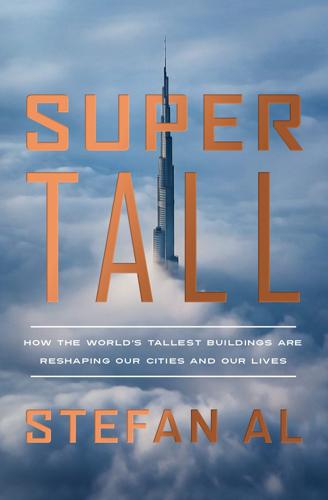
Supertall: How the World's Tallest Buildings Are Reshaping Our Cities and Our Lives
by
Stefan Al
Published 11 Apr 2022
Here the benefits of the tall building kick in. Since it maximizes the number of people on a given plot of land, it can offset the higher land cost. Meanwhile, it makes for more compact and dense urban living, allowing for more possible social connections between people, which can stimulate economic growth. But, as COVID-19 showed, there are downsides to density. Skyscraper living can be more contagious, with aerosols easily spread in crowded elevators and improperly ventilated high-rise shafts. The pandemic-induced urban exodus may grind the supertall outburst to a halt. Some countries have decided to base their national policy on the positive relationship between urbanization and economic growth.
…
At night, many of these apartments are dark, with their owners living in them only a few weeks a year, while every day the towers cast long shadows on the neighboring streets and parks. The truckloads of cement and tons of steel to build a few homes so high in the sky place a disproportionate amount of strain on our environments. COVID-19 threatened high-rises and dense urban streets, as hotbeds for the virus to spread. As ingenious as these structures may be, they are also markers of increased inequity and societal risk. In this book, I tell the story of the world’s tallest buildings. I will show the behind-the-scenes design and engineering making possible the monoliths we take for granted, from the 700-ton swinging weights which “tune” buildings to the double-decker elevators moving up to 50 miles per hour and without “howling.”
…
The Burj Khalifa was completed in 2009 just as the Dubai property market collapsed. Throughout history, the hubris of tall structures, like the Tower of Babel or the Easter Island moai, have seemed to tempt the gods, leading to societal breakdown. In 2020, with a wave of new supertalls in New York still under construction, COVID-19 hit. The pandemic brought the city to an abrupt halt, including its feverish construction activity. Was the curse striking again, with New York’s record-breaking skyscrapers the latest symptoms of excess, and looming economic decline? Economists have since debunked the supposed “Skyscraper Curse.”
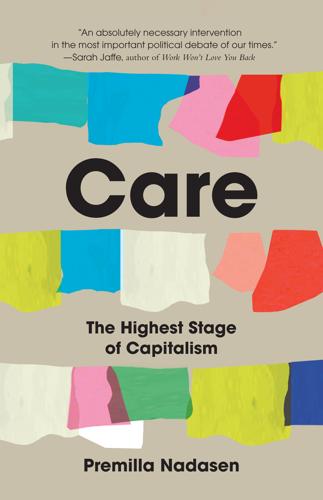
Care: The Highest Stage of Capitalism
by
Premilla Nadasen
Published 10 Oct 2023
Although it is historically unpaid or underpaid and unaccounted for in gross domestic product (GDP) and other economic measures, without care work, things would simply shut down. Yet, while care is essential to our survival, care as a politics, as discourse, as policy, and as labor is complicated, nuanced, and contradictory. Our reliance on care work became abundantly clear when the COVID-19 pandemic hit the US in March 2020. Support systems suddenly disappeared, and families grappled with who would take care of the kids, clean the house, and walk the dog. Over 2 million women left the workforce, family relationships were strained, and, while some children managed, others suffered. Some employers expected domestic workers to live in because they were fearful that, otherwise, those workers would bring disease into their homes.
…
Some companies, such as Pfizer and Quest Diagnostics, used the emergency to get rich quick: Quest’s net revenue in the last quarter of 2020 was up 56 percent over the same period the previous year and shares were up 127 percent.3 Pfizer, which also saw a massive increase in earnings, reported that vaccine revenue rose from $1.7 billion in 2019 to $14.6 billion in 2020, accounting for 60 percent of the company’s sales.4 As with so many other neoliberal disasters, capitalism—or what Naomi Klein calls “disaster capitalism”—found ways during the COVID-19 pandemic to adapt and thrive, turning crises into opportunities.5 The larger claim this book makes is about the value of a racialized, gendered analysis of social reproduction to understand the character and evolution of capitalism. This book, then, is not about “women’s work” but about how capitalism functions.
…
Claims of collective care and mutual dependence, especially when articulated by people in power, mask the race and class character of care work, generate a politics in which workers rely on employers for empathy and validation, and create greater hurdles for building an oppositional politics. The care economy, which is rooted in a privatized, market-driven model of care, cannot be a solution to the crisis of social reproduction because it fuels inequality, as I discuss in chapter 6. The pandemic vividly exposed the hollowness of the claim of universal care. At the start of the COVID-19 crisis, window banners, public service announcements, and free donuts attested to the public’s gratitude to essential workers, and care workers were sometimes, though not always, included in that appreciation. Workers were hailed as heroes for their commitment, sacrifice, and care because of whom they cared for.
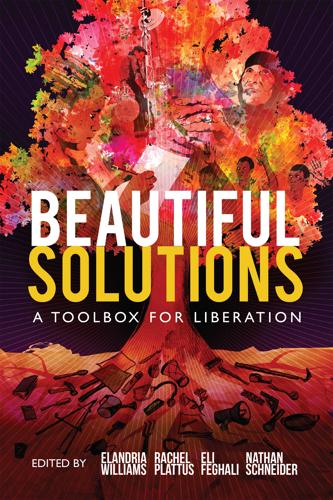
Beautiful Solutions: A Toolbox for Liberation
by
Elandria Williams, Eli Feghali, Rachel Plattus
and
Nathan Schneider
Published 15 Dec 2024
But no ombudsperson’s office was created to defend the rights of nature, so Indigenous nations themselves remain the staunchest defenders of these rights in Ecuadorian society. In 2020, as the COVID-19 pandemic decimated the global economy, Sarayaku was swept away by the worst flood in generations. Schools, houses, and crops were swallowed by the Bobonaza River. Despite the state’s failure to protect them, Sarayaku’s people are grateful to have retained their connection to the Pachamama. In recent years, they drew on their shared knowledge of medicinal plants to treat the symptoms of COVID-19. Their international allies have contributed to a crowdfunding campaign that allowed Sarayaku to rebuild—the din of hammering can be heard among the bird song and rooster crows.
…
7: UTILITIES & ENERGY STORY Association of Recyclers of Bogotá STORY Energiewende STORY Taking Back the Water System in Ramos Arizpe SOLUTION Remunicipalization SOLUTION Zero Waste PRINCIPLE Share Responsibility QUESTION How do we relate to government and state power in growing solidarity economies? 8: MANUFACTURING STORY Southern Journeys Collective STORY Radical Grandma Collective STORY Carolina Textile District and COVID-19 SOLUTION Design Global, Manufacture Local SOLUTION Recuperated Factories PRINCIPLE Take the Right Risks 9: FINANCE STORY Mutual Aid Finance in Montreal STORY NDN Fund STORY Islamic Finance SOLUTION Debt Abolition SOLUTION Tandas PRINCIPLE Travel Many Paths QUESTION How do we acknowledge and repair generational harm, and move toward healing?
…
And along the way, unique partnerships formed among the New Economy Coalition, Beautiful Trouble, the Highlander Research and Education Center, and PeoplesHub, who all made major commitments to this project’s success (read more about these projects on page 331). Nathan, who had contribued to the original Beautiful Trouble book when he was a journalist, joined our editorial team at a critical moment to help complete the book, bringing along a group of students and emerging writers. In the midst of all this, the COVID-19 pandemic began and millions of people got engaged in rapid response mutual aid and solidarity. We experienced our social movements connecting the dots between the trust built in action during a public health crisis and the possibility of implementing longer term strategies for community resilience.
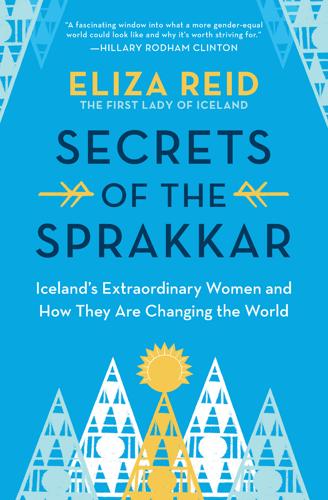
Secrets of the Sprakkar
by
Eliza Reid
Published 15 Jul 2021
This sub-Arctic island is not a paradise for women; the patriarchy is powerful and ingrained. For example, despite a law on gender quotas on corporate boards, at the time of writing, the country has no female CEOs among companies that trade on the Iceland Stock Exchange. The women’s shelter in Reykjavík is often fully booked, and reports of domestic violence increased during the COVID-19 pandemic. So when we praise success to date, there is strength to be found in that word but. Being aware of ongoing challenges is the first step in eliminating them, and it does not diminish the significant advances that we have accomplished together. It is this normalization of the value of gender equality throughout all facets of society that is so remarkable to me as an immigrant—as an Icelandic saying goes, my “guest’s eyes see more clearly.”
…
The goals of the group were similar to others: to fundraise for the needy in the community and to provide a venue for women to meet and interact. Almost eight decades later, the Women’s Association of Hrunamannahreppur boasts a healthy seventy members and holds three formal meetings a year (except during the COVID-19 pandemic), which about a couple dozen women attend. The members take part in innumerable activities, staying abreast of meetings and other news via a Facebook group. The region is still largely rural, though farms now have the latest high-tech tractors and fiber-optic internet connections. The nearest community, the village of Flúdir, attracts day-trippers from the capital for its spicy Ethiopian restaurant and is known throughout the country for its extensive greenhouses that use geothermal energy to grow a disproportionate amount of Iceland’s fresh vegetables, all with virtually zero carbon footprint.
…
Once a year, the state broadcaster publishes the newest Icelandic words and phrases that have entered common usage over the previous twelve months. Words that have entered the Icelandic lexicon under the illustrious auspices of this annual announcement include loftslagskvíði (anxiety about climate change), líkamsvirðing (respect for one’s own body), and smitskömm (shame at being infected with the virus that causes COVID-19). They join a host of other notions that English lacks specific words to describe. One uniquely Icelandic term, which helps to capture simultaneously both the country’s approach to sexuality and its smallness, though not usually in an admiring way, is the word kviðsystur, literally “stomach sisters,” or two women who have both slept with the same person.
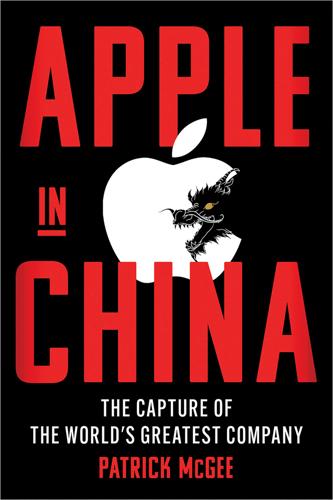
Apple in China: The Capture of the World's Greatest Company
by
Patrick McGee
Published 13 May 2025
Cupertino had been expecting revenues that quarter to rise 9 percent to 15 percent, an unusually wide estimate that already reflected COVID-19 uncertainties from late January. But the situation was fast evolving, and now Apple wasn’t certain it would grow revenues at all. The main problem was that suppliers were ramping up more slowly than anticipated. But in addition, all forty-two Apple Stores in the country had been closed. Given its deep operations and near real-time understanding of consumer trends, Apple unsurprisingly was the first major corporation to issue such a warning. Within three weeks, COVID-19 swept across much of the world. Offices were closed, workers sheltered at home, and the stock market crashed.
…
No one is immune. No one.” CHAPTER 38 GLOBAL PANDEMIC An Apple engineer was in Wuhan with his wife when the city entered lockdown on January 23, 2020, an extreme measure designed to isolate a threat the authorities had ignored, downplayed, and covered up for weeks. A novel coronavirus called COVID-19 was rapidly spreading, leaving behind a trail of dead bodies and unanswered questions. The couple wanted to return to the United States but domestic flights from Wuhan to the East Coast of China were abruptly canceled. The authorities barricaded the streets, blocking cars from moving from one area to the next.
…
While much of the Western world was sheltering at home, China’s strict lockdowns, mandatory quarantines, and other “zero-COVID” measures had allowed for relative normalcy by the summer of 2020. Early fears that a global pandemic originating from China would wreak havoc on Apple’s supply chain never really materialized. COVID-19, of course, swept the world, killing people by the millions and disrupting businesses. And supply chain woes that once might have seemed mundane were now front-page stories: carmakers short of semiconductors; grocery stores emptied of food; hospitals lacking protective gear. Westerners fretted about the supply of everything from toilet paper to Peloton bikes.

Stolen Focus: Why You Can't Pay Attention--And How to Think Deeply Again
by
Johann Hari
Published 25 Jan 2022
I am also in favor of being honest about the fact there are limits to how far that can take you. * * * As I was recovering from Covid-19, I found myself in a weird mirror image of where I started this journey. I began by going to Provincetown for three months to escape the internet and cellphones. Now I was shut away for three months in my apartment with almost nothing but the internet and cellphones. Provincetown had liberated my focus and attention; the Covid-19 crisis brought it lower than it had ever been. For months, I couldn’t focus on anything. I skipped from news channel to news channel, seeing fear and fever spread across the world.
…
Many of us have built our identities around working to the point of exhaustion. We call this success. In a culture built on ever-increasing speed, slowing down is hard, and most of us will feel guilty about doing it. That’s one reason why it’s important we all do it together—as a societal, structural change. * * * When Covid-19 spread across the world, lots of people thought—amid all the tragedy and horror—that there might at least be one good outcome. Many people (not all) were freed from the daily commute and from the pressure to be seen at their desks all the time. So it was assumed that there might be a little space created for more rest.
…
All over social media, people were saying they couldn’t get their minds to work. But now, I felt, I had the tools to understand why this was happening to us. Your individual efforts to improve your attention can be dwarfed by an environment full of things that wreck it. This had been true for years leading up to Covid-19—and it was even more true during it. Stress shatters attention, and we were all more stressed. There was a virus we couldn’t see and didn’t fully understand and it was threatening all of us. The economy was tanking and many of us were suddenly even more financially insecure. On top of this, our political leaders often seemed dangerously incompetent, which ramped up the stress further.

Practical Doomsday: A User's Guide to the End of the World
by
Michal Zalewski
Published 11 Jan 2022
In 1918, an unusual strain of the flu managed to kill between 50 million and 75 million people around the globe.15 Several years later, a mysterious sleeping sickness dubbed encephalitis lethargica—probably also of viral origin—disabled more than a million patients before vanishing without a trace.16 I believed that despite advances in hygiene, sanitation, and medical sciences, we also lived in the era of high population densities and air travel, and that our ability to treat viral infections remained in its infancy; thus, I felt that we were not necessarily better prepared should a similar outbreak happen again. From that perspective, I look at the COVID-19 pandemic that swept the globe in 2020 as a sort of terrible blessing. Although it caused untold suffering and pain, it also reminded us of our vulnerability to infectious diseases while being far less lethal than many of the plagues of old. I was also glad to be proved wrong when it came to our ability to develop novel vaccines in a matter of months. In a sense, it might have been a comparatively gentle wake-up call sparing us from a worse fate down the road. But there’s another lesson from COVID-19: nothing is black-and-white, and the right course of action is obvious only in retrospect.
…
Lindsey Ellefson, “Vox Deletes January Tweet About Coronavirus That Really Has Not Aged Well,” Yahoo, March 24, 2020, https://www.yahoo.com/entertainment/vox-deletes-january-tweet-coronavirus-203359493.html. 19. “America’s Two Largest States Are Fighting COVID-19 Differently,” The Economist, February 4, 2021, https://www.economist.com/united-states/2021/02/06/americas-two-largest-states-are-fighting-covid-19-differently/. 20. Mark Memmott, “Sniper Attack On Calif. Power Station Raises Terrorism Fears,” National Public Radio, February 5, 2014, https://www.npr.org/sections/thetwo-way/2014/02/05/272015606/sniper-attack-on-calif-power-station-raises-terrorism-fears/.
…
Raina Macintyre, “Effectiveness of Cloth Masks for Protection Against Severe Acute Respiratory Syndrome Coronavirus 2,” Emerging Infectious Diseases 26, no. 10 (October 2020), https://wwwnc.cdc.gov/eid/article/26/10/20-0948_article/. 3. “Guidance for Private Gatherings,” California Department of Public Health, October 9, 2020, https://www.cdph.ca.gov/Programs/CID/DCDC/Pages/COVID-19/CDPH-Guidance-for-the-Prevention-of-COVID-19-Transmission-for-Gatherings-10-09.aspx. 4. “Executive Order 2020-42,” Michigan.gov, April 9, 2020, https://www.michigan.gov/whitmer/0,9309,7-387-90499_90705-525182--,00.html. 5. Laylan Connelly, “California Surfer in Handcuffs After Enjoying Empty, Epic Waves,” Mercury News, April 3, 2020, https://www.mercurynews.com/2020/04/03/malibu-sup-surfer-in-handcuffs-after-enjoying-empty-epic-waves/. 6.

Too Much and Never Enough: How My Family Created the World's Most Dangerous Man
by
Mary L. Trump
Published 13 Jul 2020
Donald’s initial response to COVID-19 underscores his need to minimize negativity at all costs. Fear—the equivalent of weakness in our family—is as unacceptable to him now as it was when he was three years old. When Donald is in the most trouble, superlatives are no longer enough: both the situation and his reactions to it must be unique, even if absurd or nonsensical. On his watch, no hurricane has ever been as wet as Hurricane Maria. “Nobody could have predicted” a pandemic that his own Department of Health and Human Services was running simulations for just a few months before COVID-19 struck in Washington state.
…
As the pressures upon him have continued to mount over the course of the last three years, the disparity between the level of competence required for running a country and his incompetence has widened, revealing his delusions more starkly than ever before. Many, but by no means all of us, have been shielded until now from the worst effects of his pathologies by a stable economy and a lack of serious crises. But the out-of-control COVID-19 pandemic, the possibility of an economic depression, deepening social divides along political lines thanks to Donald’s penchant for division, and devastating uncertainty about our country’s future have created a perfect storm of catastrophes that no one is less equipped than my uncle to manage. Doing so would require courage, strength of character, deference to experts, and the confidence to take responsibility and to course correct after admitting mistakes.
…
Employees and political appointees can’t fight back when he attacks them in his Twitter feed because to do so would risk their jobs or their reputations. Freddy couldn’t retaliate when his little brother mocked his passion for flying because of his filial responsibility and his decency, just as governors in blue states, desperate to get adequate help for their citizens during the COVID-19 crisis, are constrained from calling out Donald’s incompetence for fear he would withhold ventilators and other supplies needed in order to save lives. Donald learned a long time ago how to pick his targets. * * * Donald continues to exist in the dark space between the fear of indifference and the fear of failure that led to his brother’s destruction.
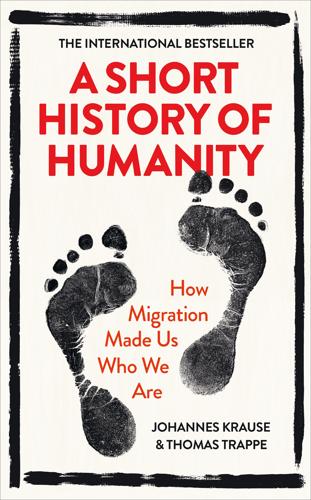
A Short History of Humanity: How Migration Made Us Who We Are
by
Johannes Krause
and
Thomas Trappe
Published 8 Apr 2021
In Venice during the Middle Ages, for instance, which was in those days an economic powerhouse, trade almost ground to a halt. Countless people died in the streets, their numbers now revealed only by mass graves. Until recently, we had hoped the story would never be repeated. But in 2020, images were broadcast of trucks carrying the bodies of deceased COVID-19 victims to crematoriums and mass graves all over the world—in Bergamo, New York, and other cities and towns. It would take nearly 5,000 years for us simply to discover the existence of the Stone Age plague. Armed with revolutionary technology, we ground ancient bones to dust and distilled from their DNA the stories told in this book.
…
Ideally, you will be persuaded that a global approach to society—an approach that has been field-tested for thousands of years—will also be the key to progress in the future. The times we are living in have placed human mobility—with all its complications and side effects—under a powerful magnifying glass. On the one hand, the spread of COVID-19 would be unthinkable without it. On the other, placing large-scale limitations on migration for only a few weeks led to social upheaval and economic collapse, the worldwide effects of which will be felt in our everyday lives for years to come. Two authors have contributed to this book. The first is Johannes Krause, who assumes the role of first-person narrator from the next chapter onward.
…
In return, they probably gifted the Europeans with syphilis, which was then brought back home, creating immense suffering and countless victims well into the twentieth century. When Ebola broke out a few years ago in West Africa, there was worldwide fear that the virus might travel to other regions. When COVID-19 spread throughout the world in 2020, fears of a global pandemic were realized. There is increasing evidence that early waves of migrants globally were connected to the spread of infectious disease around the world. We know that plague bacteria existed in the south of what is now Russia at least 5,000 years ago, a region that later saw a mass exodus to Central Europe, where around the same time there was a sharp decline in the size of the local population.
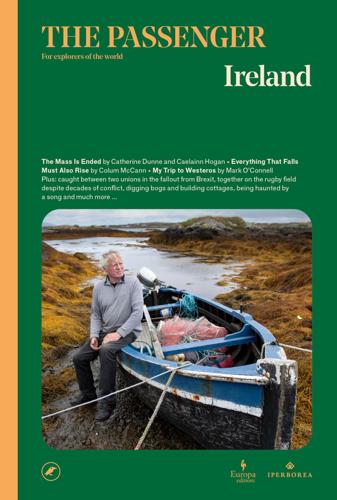
The Passenger
by
The Passenger
Published 27 Dec 2021
As with climate change, the aim is to set up a dialogue between science and citizens. On the same theme, there are plans for an even more ambitious initiative, bringing together citizens from all over the world in a global forum. On a local level, by contrast, various cities in Europe have involved their populations in discussions over the temporary challenge of Covid-19. Covid-19 has highlighted a cultural shift in our attitudes to gender-based inequalities in Irish life. It has magnified many shortcomings and gender inequalities which are no longer tolerable. We want to see change now. We believe our laws and policies need to be transformed to make them fit for the post-Covid world.
…
There are many other inequalities to be addressed, too, not least the treatment of refugees and asylum seekers in our current profit-making system of Direct Provision (see ‘Asylum Seekers in a Land of Emigration’ on page 26), a system that the UNHCR has condemned as recently as October 2020. It has called for immediate, urgent reforms to be implemented in all aspects of this inhumane system. There is still a gender pay gap. Our health service is straining at the seams, particularly since Covid-19. Mental health services, for young people in particular, are inadequate. Housing is the biggest single issue for young people today, with average rents per month for a modest apartment in the capital – where most of the jobs are – costing between €1,500 and €2,000 ($1,730–$2,300). Since the economic crash of 2008 not enough houses have been built in this country: scarcity of supply is driving house prices up even further, effectively locking out a whole generation of young people who will never be able to afford their own homes.
…
The Bord also established a ‘just-transition fund’ of $12 million for retraining the newly unemployed; but for most of the company’s workers, whose average age is fifty-six, it was too late to change careers. ‘The problem with the Midlands is that it’s all bogland,’ said Noone, ‘and there’s not too many things you can do in bogland.’ (In spring 2020 a further 230 Bord employees were ‘temporarily let go’ because of the Covid-19 crisis.) With demand for briquettes also declining, Noone estimated that about seven hundred jobs had been lost so far and believed more would follow. Given the millions of tonnes of milled peat already stockpiled on the bogs and the uncertainty surrounding the remaining power station’s future, most of the Bord’s land is now falling silent.
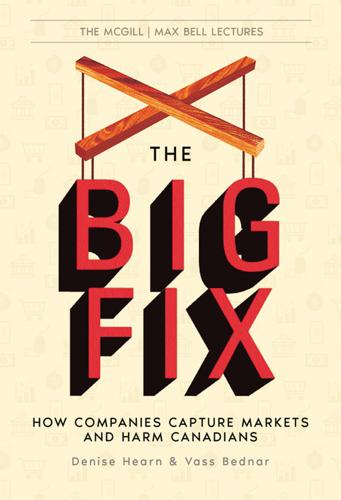
The Big Fix: How Companies Capture Markets and Harm Canadians
by
Denise Hearn
and
Vass Bednar
Published 14 Oct 2024
Accessed July 11, 2024. https://www.reddit.com/r/loblawsisoutofcontrol/. 66 blessed_angel_7, “Anyone Else Notice the Crazy Increase in Prices?” Reddit, 2024. https://www.reddit.com/r/ShoppersDrugMart/comments/19brnuv/anyone_else_notice_the_crazy_increase_in_prices/. 67 Agri-Food Analytics Lab, “COVID-19 Food Price Inflation.” Dalhousie University, September 29, 2021. https://www.dal.ca/sites/agri-food/research/covid-19-food-price-inflation.html#:~:text=Manypercent20staplespercent20includingpercent20meatpercent2Cpercent20dairy. 68 Crowther, Hunter, “32 percent of Canadians Blame Grocery Stores for Rising Food Prices, More than Any Other Reason: Nanos.” CTVNews, April 6, 2024. https://www.ctvnews.ca/business/32-per-cent-of-canadians-blame-grocery-stores-for-rising-food-prices-more-than-any-other-reason-nanos-1.6834573. 69 Thanthong-Knight, Randy, “Canadians Blame Stores Most for Rising Food Prices, Poll Shows.”
…
As consumers, workers, and small businesses struggled across the country, Canada’s five major grocers (Loblaw, Sobeys, Metro, and American discounters Costco and Walmart) saw record profits. While this was partially due to all restaurants being closed, making grocery stores the only food game in town, the companies also saw record profit margins, even as inflation was raging. It all started with price-gouging during the initial shock of COVID-19, when prices for items like toilet paper suddenly surged, and later items like cleaning solutions, hand sanitizers, and masks saw a spike in price. Substantial price leaps for everyday essential items like shampoo and deodorant, and staple food items like meat and eggs, also invited ire.66 The price of meat products increased by 10 percent while “groceries” (shelf stable, or non-perishable foods) rose by 8 to 10 percent between April and September 2021.67 There are a range of factors that influence food prices: weather, climate, geopolitics, as well as other complex supply chain factors.
…
” – Vince Lombardi, former head coach of the Green Bay Packers Business was finally returning to normal for Quebec restaurant owner and chef David Ferguson. His local steakhouse, Gus, serves a larger-than-life chocolate cake with Bailey’s icing, and Ferguson was excited to get back to serving his many loyal customers after the COVID-19 lockdowns. But just as the doors re-opened, Ferguson found himself battling a new malady: Canadian payment processor, Lightspeed, unexpectedly charged the restaurant $200 for not using its credit card payment terminals, despite Ferguson already being a customer of its cloud-based software for managing business finances and taxes.88 The restaurant used a competitor’s point-of-sale machine to take customer payments, and Lightspeed, likely angling for the additional credit card fees on each transaction, gave Gus an ultimatum: switch to their point-of-sale technology or be fined $200 a month, seemingly indefinitely.
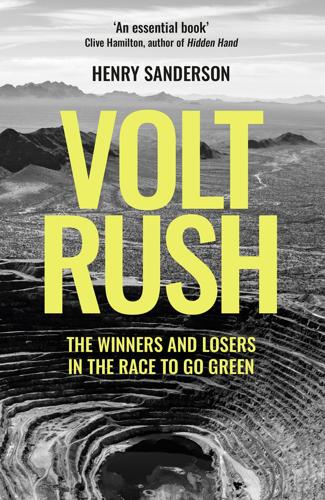
Volt Rush: The Winners and Losers in the Race to Go Green
by
Henry Sanderson
Published 12 Sep 2022
Elon Musk, Tesla CEO1 In late September 2020 Elon Musk strode out onto a stage in the bright California sunlight to address a car park full of Teslas at the company’s annual shareholder meeting in Fremont. Dubbed ‘Battery Day’, the event had been hyped up by Musk for months (he had promised it would be ‘insane’). Due to Covid-19 attendees sat alone behind the steering wheels of bright shiny Model 3 and Model Y cars wearing masks. They greeted Musk with a ripple of discordant honks of their horns, as if they were frustrated commuters stuck in traffic. ‘Well this is a new approach. We’ve got the Tesla drive-in movie theatre basically,’ Musk said.2 The attendees had every reason to be happy: Tesla’s shares had soared during the pandemic, making it the most valuable car company in the world, even though it accounted for only one percent of the global car market.
…
The mine was only operating at fifty to sixty percent of its capacity due to the weak market and twenty percent of the staff had been cut. ‘China’s caught a cold. So Western Australia’s spodumene has got the flu, but it does not mean that the story is over,’ Brinsden told a conference a few months earlier.12 Adding to the woe, a few months later the Covid-19 pandemic hit. By October, the neighbouring lithium miner Altura went bankrupt. And prices for Australian spodumene continued to grind lower, reaching $400 a tonne, down from $900 a tonne in 2018. ‘It’s tough times for the industry, it’s therefore unsustainable,’ Brinsden said. ‘Supply will not increase at today’s prices; in fact the opposite, it will shrink.’
…
‘Supply will not increase at today’s prices; in fact the opposite, it will shrink.’ Brinsden turned out to be right. By the beginning of 2021, lithium prices had begun to rise in China and Brinsden bought the bankrupt Altura mine, then raised A$240 million from investors, including Australia’s Super-Fund pension fund. By the summer of that year, as the world recovered from the Covid-19 pandemic, shares in Pilbara Minerals had risen by over four hundred percent, making it one of Australia’s best-performing stocks. Yet while the rise of the Australia–China lithium nexus had challenged the traditional lithium industry and changed geopolitics, it had also brought larger problems for global carmakers.
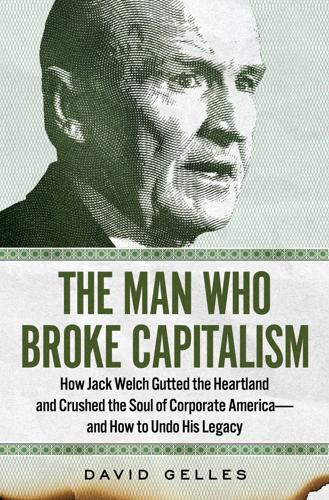
The Man Who Broke Capitalism: How Jack Welch Gutted the Heartland and Crushed the Soul of Corporate America—and How to Undo His Legacy
by
David Gelles
Published 30 May 2022
Louis—the complex built around the château that Stonecipher had bought while he was running McDonnell Douglas, and which Boeing had turned into its own version of Crotonville. Calhoun, hoping to channel his GE roots, was now using the center as his makeshift office as he tried to revive the company. We flew from New York to St. Louis on the first Monday of March 2020. The Covid-19 pandemic was worsening around the world, and although we didn’t know it at the time, in a little over a week the country would grind to a halt. After landing, Boeing executives showed us around the company’s fighter jet factory and a nearby innovation lab, before taking us to the Leadership Center.
…
Upon learning of his death, President Trump tweeted a tribute to his old friend and collaborator. Trump missed the mark, however, invoking as a badge of honor the nickname that Welch had always despised. “There was no corporate leader like ‘Neutron’ Jack,” Trump tweeted. “He was my friend and supporter. We made wonderful deals together.” The funeral, held just as the Covid-19 pandemic was taking hold in the United States, was the last time such a collection of business luminaries would gather for more than a year. Within a matter of weeks, much of the global economy ground to a halt. Travel all but stopped. Restaurants were shuttered. Offices emptied out. Factories closed.
…
AB InBev, 178 Adbusters magazine, 150 age discrimination, 72, 113 AIG, 125–26, 144 Ailes, Roger, 53–54, 194–95 Airbus, 86, 102, 153, 155 Albertsons, 9, 77, 104–5, 106, 107 Aldrin, Buzz, 22 Allen, Robert, 71 AlliedSignal, 78–80, 220–21 Alstom, 161, 163 Amazon, 134, 171–74, 182, 184, 185, 203, 214, 216, 222–23 Ambev, 177–78 American Airlines, 153, 186 American Express, 70, 168–69 American Mortgage Insurance, 58 America’s Talking, 53–54 Amgen, 77, 106 Anheuser-Busch, 178 antitrust enforcement: GE acquisition of Alstom and, 161 impact of loosening, 38–39, 51, 79 market concentration vs., 79–80, 176–78, 219 in stakeholder capitalism, 219 Antitrust Paradox, The (Bork), 38 Apple, 214 Apprentice, The (NBC TV program), 121, 135, 195 Arctic Cat, 77 Armco, 66–67 Armstrong, Neil, 22 Arpey, Gerard, 153 Arthur Andersen, 124 AT&T, 71, 169, 175–76, 177, 182, 221, 223 Avakian, Stephanie, 225 Baker, George Fisher, 184 Baldwin, Alec, 140 Ballmer, Steve, 102, 171 Bank of America, 144, 149, 214 Barra, Mary, 199 B Corp movement, 212–13 Bear Stearns, 67, 143–44 Beasley, Jane, 118–20 Belichick, Bill, 221 Bennett, Steve, 105–6 Bennett, William, 95 Bennis, Warren, 132 Bergers, David, 147–48 Berkshire Hathaway, 222 Berle, Adolf A., Jr., 24–25, 212 Bertelsmann, 51 Bethlehem Steel, 165 Bezos, Jeff, 134, 171–74, 184, 185, 222–23 Bezos Academy, 134 Bill and Melinda Gates Foundation, 133–34 Bin Hussain, Muath, 135 Black Monday (October 19, 1987), 53 BlackRock, 213–14 Blitzer, Wolf, 90–91 Bloomberg, Michael, 132–33 Blumenthal, Richard, 82 Blystone, John, 105 Boeing, 9, 75, 77, 86–90, 126–30, 137, 186–94, 203 bailout, 224 Business Jet Project, 102, 119 Dave Calhoun as CEO, 189, 190–94, 224 Congressional investigations of 737 Max, 156, 189, 194 Covid-19 pandemic and, 224 Ethiopian Airlines Flight 302 crash (2019), 187–89, 190, 194 headquarters relocation to Chicago, 88–89, 219 Leadership Center (near St. Louis), 87, 191–94 Lion Air Flight 610 crash (2018), 185–87, 190 Jim McNerney as CEO, 113, 127–30, 153–54, 194, 200 Dennis Muilenburg as CEO, 154–56, 187–90 pension plan elimination, 128 737 Max with MCAS (737 redesign), 153–56, 186–90, 192–94, 224 787 Dreamliner, 128–30, 153, 190–91 whistleblower complaints to the FAA, 130, 190 Boeing, William, 86 Boesky, Ivan, 54 Bork, Robert, 38 Bossidy, Larry “the Knife,” 78–80, 83–84, 120, 220–21 Boulware, Lemuel, 46–47 Boulwarism, 46–47 Brady, Tom, 121 Brito, Carlos, 179 Brokaw, Tom, 52, 53 Brooks Brothers, 169 Brown, Tina, 121 Buckley, George, 113 Budweiser, 177, 178 Buffenbarger, Tom, 128 Buffett, Warren, 8, 124, 145, 160, 179–81, 196, 222 Buntrock, Dean, 123–24 Burger King, 177, 179 Bush, George H.

J.K. Lasser's Your Income Tax 2022: For Preparing Your 2021 Tax Return
by
J. K. Lasser Institute
Published 21 Dec 2021
The special rules for coronavirus-related distributions apply only to the following: An individual diagnosed with COVID-19; An individual whose spouse or dependent was diagnosed with COVID-19; An individual who experienced adverse financial consequences as a result of the following: (1) being quarantined, furloughed or laid off, or having work hours reduced due to COVID-19; (2) being unable to work due to lack of childcare because of COVID-19; (3) having to close or reduce the hours of a business he or she owns or operates due to COVID-19; (4) having his or her pay or self-employment income reduced, or having a job offer rescinded or start date for a job delayed, due to COVID-19. An individual whose spouse or household member (shares the individual's principal residence) experienced (1)-(4) above.
…
Retirement plan loans and distributions Distributions from qualified retirement plans and IRAs, which were waived for 2020, must commence for 2021 by those who attained the required starting date or who have inherited accounts (7.11, 8.13). COVID-19-related distributions may be repaid within 3 years, so a repayment in 2021 means filing an amended return to recoup taxes paid on the 2020 distribution (7.28, 8.27). Education-related tax breaks Educator expenses of up to $250 include the cost of personal protective gear and other COVID-19-related safety measures (12.2). The tuition and fees deduction expired at the end of 2020 and was not extended; it does not apply for 2021. The modified adjusted gross limits for the lifetime learning credit have been aligned with the limits for the American opportunity credit (33.8, 33.9).
…
Once the election for a particular year takes effect, you may not discontinue contributions to your account or increase or decrease a coverage election unless there is a change in family or work status that qualifies under IRS regulations. However, in response to the COVID-19 pandemic, the IRS gave employers permission to amend their health FSAs and dependent care FSAs in order to let employees (whether or not impacted by COVID-19) make mid-year changes during 2020, including revoking a previous election for 2020 or increasing or decreasing a prior election for 2020. In the Taxpayer Certainty and Disaster Tax Relief Act of 2020, Congress extended this relief by giving employers the option to amend their plans (whether health or dependent care FSAs) to allow employees to make prospective election changes for plan years ending in 2021, regardless of whether there was a change in status that satisfied the IRS regulations.
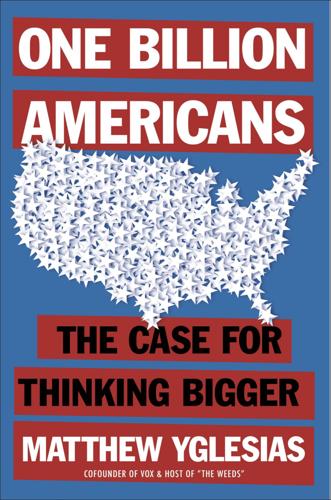
One Billion Americans: The Case for Thinking Bigger
by
Matthew Yglesias
Published 14 Sep 2020
But for its trouble, California has by far the more dynamic economy—hosting four of the world’s ten most valuable companies, as well as much of America’s start-up scene and cultural exports. Natural resources just aren’t that big a deal in the modern economy. However, the threat of infectious disease is a constant reminder that society is built on a biological foundation. The specter of disease The COVID-19 pandemic that burst out of China in 2020 hit New York City extremely hard and extremely quickly. Many wealthy New Yorkers fled to their second homes in the suburbs or to vacation destinations throughout the East Coast. The basic pattern of elites departing disease-ravaged cities for country strongholds is familiar from plague outbreaks in early modern Europe and cholera in the nineteenth century, and reflects the reality that throughout history there has been a tension between the economic opportunities presented by city living and the vulnerability to disease induced by crowding.
…
The basic pattern of elites departing disease-ravaged cities for country strongholds is familiar from plague outbreaks in early modern Europe and cholera in the nineteenth century, and reflects the reality that throughout history there has been a tension between the economic opportunities presented by city living and the vulnerability to disease induced by crowding. That said, there is some reason to doubt the cogency of the link between density and disease vulnerability in the specific case of COVID-19. America’s second-densest city, San Francisco, wasn’t even close to being the second-hardest-hit city. Both San Francisco mayor London Breed and California governor Gavin Newsom were quick to issue social distancing orders in mid-March, while New York City mayor Bill de Blasio was slower to take equally robust action and New York governor Andrew Cuomo stepped in as the main leader of the response only once the situation was already out of control.
…
As of this writing, experts continue to disagree as to exactly what the key to Asian success at containment is. But on a broad sociological level it seems clear that jurisdictions that had more experience with SARS earlier in the twenty-first century did a better job at managing the less deadly but harder-to-track COVID-19 outbreak. That’s consistent with the broad historical trend. No society has ever grown and prospered by reacting to infectious disease by abandoning metropolitan living. Successful countries learn how to adopt better public health policies so that life can go on. And while the future of this particular virus remains difficult to predict, it’s easy to see that over the long haul, infectious diseases have become less rather than more threatening thanks to the progress of medical science.

Cloudmoney: Cash, Cards, Crypto, and the War for Our Wallets
by
Brett Scott
Published 4 Jul 2022
Indirectly holding digital money is, they insist, safer than directly holding cash (provided we ignore the minor perils of cybercrime and bank failure). In 2020, these promoters took advantage of the Covid-19 pandemic to spread the idea that cash is a disease vector, despite contradictory evidence from the World Health Organisation and the German health research agency the Robert Koch Institute. Indeed, further central bank research showed that the PIN pads associated with digital payment pose a greater risk. But even prior to Covid-19, these and other arguments were made by the Better Than Cash Alliance, a New York-based global partnership of governments, corporates and international organisations that wants to accelerate the adoption of digital payments in poorer countries.
…
We are witnessing the automation of global finance, a process that first requires the physical money in our wallets to be replaced with digital money controlled by the banking sector – a scenario euphemistically called ‘the cashless society’. The financial industry – and some governments – have been making a concerted effort to demonise physical money for at least the last two decades. The Covid-19 pandemic has supercharged this rhetoric, and finance and technology corporations have taken the opportunity to accelerate their war on cash, using concerns about hygiene to push this agenda even further. Cash protects privacy, and it is resilient in the face of both natural disasters and banking failures, but it is increasingly being presented as an outdated barrier to progress, and one which must inevitably give way to a new world of digital money, or what I call ‘cloudmoney’.
…
But nobody needs to be ‘inspired’ by science fiction for its plot lines to play out: cyberpunk was simply extrapolating from trends that were already inherent within large-scale capitalist systems, which is why the results continue to turn up in our present, as if governed by inertia. Because it temporarily destabilised that feeling of inertia, the Covid-19 pandemic was a profound mental jolt for many of us. Our systems appeared, briefly, to pause – creating anxiety in some and euphoria in others – before cranking back into the same old patterns, like a treadmill restarting (and doing so at a faster speed). Techno-optimists work hard to put a positive spin on this feeling of inertia.
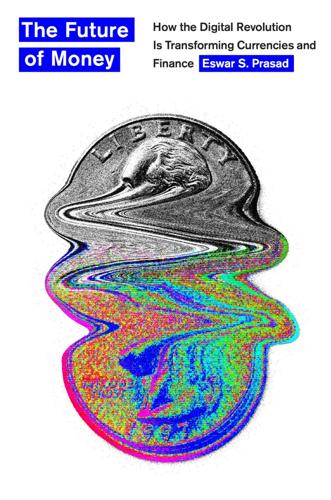
The Future of Money: How the Digital Revolution Is Transforming Currencies and Finance
by
Eswar S. Prasad
Published 27 Sep 2021
The KPMG report is available at “KPMG Report Concerning the Independent Special Investigation, Wirecard AG, Munich,” Wirecard AG, April 2020, https://www.wirecard.com/uploads/Bericht_Sonderpruefung_KPMG_EN_200501_Disclaimer.pdf. Markus Braun was arrested a few days after he resigned from his position as CEO. Crisis Management For an overview of the Fed’s actions during the COVID-19 pandemic, see Brookings Institution, “What’s the Fed Doing in Response to the COVID-19 Crisis? What More Could It Do?,” https://www.brookings.edu/research/fed-response-to-covid19/, accessed January 25, 2021. Cross-country Concerns See David Mikkelson, “Are Most Cruise Ships Registered Under Foreign Flags?” Snopes.com, March 23, 2020, https://www.snopes.com/fact-check/cruise-ships-foreign-flags/.
…
The eurozone debt crisis followed a few years later. Some lessons learned from these crises prompted regulatory reforms that helped to make financial systems more resilient. Banks were instructed to hold more equity capital, making it easier for them to absorb losses without becoming insolvent. When the COVID-19 pandemic hit the world in 2020, it gutted economies worldwide and stressed financial systems, but banks and other financial institutions were better positioned to withstand the pressures. Even amid the ebb and flow of all this surface turmoil, deeper and more powerful undercurrents have continued to drive changes in financial markets.
…
In its early years, Funding Circle suffered high default rates; of the loans made in the United States in 2014–2015, nearly 18 percent were in default three years after origination. This figure has fallen in subsequent years, with unpaid debts amounting to about 6 percent of total loans, after accounting for partial payments and some recovery of monies from collateral. The average rate of return on all loans was around 6 percent during 2017–2019, although the COVID-19 pandemic is likely to have resulted in higher default rates and lower returns in 2020. Another peer-to-peer platform, Upstart, uses criteria such as education level, area of study, and job history as inputs into its credit decisions, in addition to traditional credit scores. This is particularly relevant to borrowers with limited credit histories.
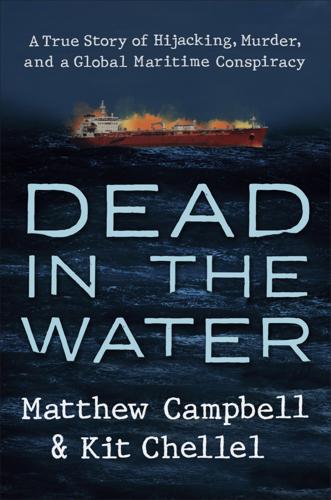
Dead in the Water: A True Story of Hijacking, Murder, and a Global Maritime Conspiracy
by
Matthew Campbell
and
Kit Chellel
Published 2 May 2022
Talbot Underwriting Ltd & Others Brillante Virtuoso investigations breach of contract legal strategy to fight Suez Fortune, 118–19 cargo insurers settle salvor claims, 128–29 Christos and informant Theodorou, meetings with and information received from, 163–74 conflict between Veale/Conner and lawyers, 186–88 Conner hired by Veale, 120 fire and explosives experts’ findings, 87–88 Iliopoulos arrested on suspicion of fraud, 160–61 Iliopoulos stonewalling in lawsuit, 145–46 inquest into Mockett’s death, 91–97 insurance syndicates refusal to work with one another and, 118 insurer reluctance to accuse Iliopoulos of wrongdoing, 131–32 insurer syndicate market meeting and, 127–29 law enforcement investigations, lack of progress in, 233, 240–41 Marquez account of Brillante attack, 179–82 Mockett hired to provide damage survey, 44–45 Mockett murdered by car bomb, 60–63 Mockett’s diary and Brillante dossier stolen, 78–79 Mockett’s examination of Brillante, 52–55 Norton Rose security breach and threats against Lallis, 142–45 piracy expert’s report concluding attack by Somali pirates unlikely, 79 Piraeus Bank as co-assured on Brillante’s hull insurance, 162–63 Plakakis’ account of Brillante plot, 198–204 Plakakis and family rescue arranged by Conner, 208–13 Plakakis statement to police, 188–90 separate investigations by hull and cargo insurers, 79–80, 117–18 Sloane oversees ship-to-ship transfer of oil from, 84, 86–88, 89 Stokes, suspicious death of, 125–26, 238 summons to testify in Brillante case, 147, 155 Theodorou account and negotiations with insurers, 166–74 Theodorou evidence and expert analysis, differences between, 186 USS Philippine Sea, statements of Brillante crew given to, 131–32 Veale and Conner advocate for aggressive approach, 136 Veale and Conner rebuffed in request for British law enforcement evidence, 130–31 Veale’s 2013 meeting with insurers, 133 Veale’s Project Tundra investigation, 113–19 Zavos’ and insurer’s strategy for trial, 132–33 Zavos given investigative oversight, 138–39 Britannia, 4 Browder, Bill, 217 bunkering, 193 Bureau Veritas, 152 C Captain Phillips (film), 15, 29–30 cargo insurance, 35, 42, 117–18, 127–29 Carter-Ruck, 243 Castro, Fidel, 5 catastrophic hogging, 115 Central Mare, 32, 33–34, 114 Chevriot, Nigel, 49 Christos (pseudonym), 163–64, 166, 167, 169–74 City of London police, 128, 137, 142, 160–61, 178, 188, 189, 190, 209–13, 233, 239–40 coffin ships, 102 Columbus, 230 Conner, Michael background and law enforcement career of, 120–23 belief British law enforcement could do more against Brillante fraudsters, 233–34 contacts Cynthia Mockett with verdict, 226–27 coordinates rescue of Plakakis in Greece, 208–13 Greek complaint against, 232 hired by Veale to investigate Brillante attack, 120 investigation by, 123–26 at judgment in trial, 216–17 Marquez gives official statement on Brillante attack, 179–82 meetings with Christos and informant Theodorou, 163–74 mixed feelings about verdict of, 226 Plakakis statement to police and, 188–90 provides protection for Lallis, 145 visits Mockett’s grave, 231–32, 233, 234–35 visits with and keeps Cynthia Mockett informed of investigation, 124–26, 141–42 Zavos and, 136–37, 178–79 container ships, 11–12 coronavirus. See COVID-19 pandemic coroners, 92 Costoulas, George, 192 COVID-19 pandemic Iliopoulos’s purchase of passenger vessels during, 230 Lloyd’s members, liabilities of, 231 Cunningham, Paul, 38, 39–40, 114, 115, 116, 138–39 breach of contract legal strategy to fight Suez Fortune, 118–19 Christos and informant’s offer to help insurers and, 163–64 Christos and informant Theodorou, meetings with, 170–72 discussions about Plakakis testimony in court, 205–6 hires Veale to investigate Brillante attack, 75–76 Plakakis, meetings with, 213 verdict in Suez Fortune case and, 226 D Dawson, Charles, 81 Death Ship, The (Traven), 103 Deepwater Horizon, 87 Demosthenes, 100 Despina Andrianna, 229–30 disclosure, 146 Drake, Francis, 38 E East India Company, 4 Economist, The, 9 Eggers, Peter MacDonald, 216, 217, 221–24 Egypt, 4 Elli, 114, 115, 117, 118, 129, 154, 195 European Business Information Services (EBIS), 73–74, 113, 187 F Facey, Roy, 49, 61, 64–67, 205–6 identified as potential target by British embassy and evacuated, 66–67, 238 Mockett discusses Brillante case with, 57–58 prepares report on Mockett’s background for Yemeni police, 66 Fagan, Michael, 71 Far Eastern Regional Investigation Team (FERIT), 106 Financial Conduct Authority, 137 Five Oceans Salvage, 115, 118, 202 flagging of vessel, 31–32, 150 Flaux, Julian, 135, 157, 159, 160, 161–62 foenus nauticum (maritime interest), 100 Foreign & Commonwealth Office (FCO), 62–63, 94 G Gadani breaking yards, 89–90 Gaisman, Jonathan clients of, 217 examination of Iliopoulos at pretrial by, 158, 159–60 as insurers’ advocate at trial, 217–21, 224–25 Gate of Tears (Bab el-Mandeb), 15 Gen.
…
Like Norwood at Zurich Insurance Group, who was pushing through paperwork on the Brillante in his cubicle a dozen blocks away, Cunningham began the process of checking in with Talbot’s attorneys and the other members of the syndicate to prepare for what might happen next. An amiable character with a toothy grin and gelled hair, Cunningham was in some ways a typical Lloyd’s man. Until the COVID-19 pandemic disrupted habits that had endured for centuries, business in London’s insurance district was done face-to-face, preferably over a lunch meeting that might stretch long into a well-refreshed afternoon. A clubbable personality was essential, and the uniform stubbornly formal. Before 2007, anyone seen on the floor of Lloyd’s without a jacket and tie risked being thrown out.
…
The marine assets controlled from Piraeus dwarf those held by Japan, with 11 percent of the total, and the US, with just 3 percent. Collectively, Greek shipowners have done better out of the seventy-five-year explosion in international trade than almost anyone else. No geopolitical or macroeconomic event—not the fall of the Soviet Union, the rise of China, or the emergence of COVID-19—has thrown them off course for long. Not even their country’s recent financial collapse, which drove unemployment to nearly 28 percent and threatened to split the Eurozone, diminished their power. At the nadir of the crisis, with Greece’s government desperate to raise revenue to fend off creditors, the shipowners of Piraeus fought successfully to retain an astonishingly favorable set of fiscal advantages, some of them written into the Greek constitution.

The Passenger
by
AA.VV.
Published 23 May 2022
Natural disasters are the leitmotif running through his work, particularly wildfires such as the Paradise fire – over the course of his career he has covered around a hundred – but also tornadoes, earthquakes, volcanic eruptions and floods. It is no coincidence that he has won a Covering Climate Now award. He was also a finalist in the News Photo Awards for his work on the Covid-19 pandemic in San Francisco. Some Numbers A young man on an electric skateboard heads towards the Bay Bridge, which links San Francisco with Oakland. DECALIFORNICATION FRANCESCO COSTA Translated by Deborah Wassertzug Photographs by David Paul Morris California is a prosperous, welcoming state, with high-tech cities, beautiful landscapes, low unemployment and an economy in rude health, so why is it haemorrhaging residents to other states – not least to Texas, which one might think couldn’t be less like California?
…
It is clear that ambitious interventions are required in order to keep California’s present from becoming a particularly brutal version of the future that awaits capitalism throughout the United States. A homeless encampment opposite San Francisco’s City Hall. With the surge in homelessness, city officials put aside an area for around fifty tents, properly distanced, with 24-hour monitoring and portable bathroom facilities, to help reduce the spread of Covid-19. Three Kids, Two Paychecks, No Home In Salinas, Monterey County, a fertile corner of California that produces much of the food consumed in the USA, soaring housing costs mean working families end up sleeping in shelters and parking lots. The journalist and anthropologist Brian Goldstone meets Brenda and Candido and their kids, a family forced to live in their minivan and suffer the cascading effects of homelessness.
…
But it was immediately apparent that the services offered at Dorothy’s Place were geared toward the single adults populating the streets outside the charity, not parents with kids. A case manager recommended that they try the Family Resource Center at Sherwood Elementary. San Francisco City Hall forms the backdrop to the homeless encampment put in place during the Covid-19 pandemic. Founded in 2006, in the months leading up to the Great Recession, the resource center was the Salinas City Elementary School District’s response to the growing problem of student homelessness. Up to that point, the support available to homeless children and their families more or less consisted of Cheryl Camany, a teacher moonlighting part-time as the district’s “homeless liaison,” arranging the occasional shopping excursion to a discount department store.
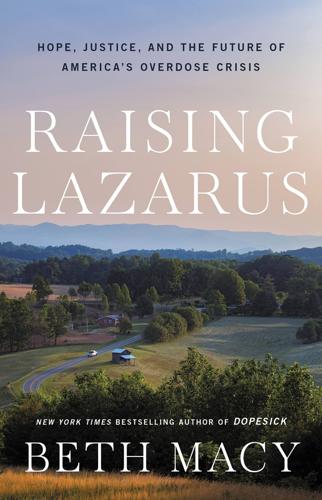
Raising Lazarus: Hope, Justice, and the Future of America’s Overdose Crisis
by
Beth Macy
Published 15 Aug 2022
Given the political fault lines rippling across the nation’s heartland, could litigation soothe the families’ pain and right the injustices and turn back an overdose crisis that only grew worse in the face of COVID-19? What was the real fix—not the easy hit or half measures that desperate users and wealthy companies alike had resorted to in place of real recovery? If money alone can’t swoop in to fill a leadership vacuum fueled by stigma and a racist War on Drugs that overrides the health of the most vulnerable Americans, what can? Since the publication of my 2018 book, Dopesick: Dealers, Doctors, and the Drug Company That Addicted America, I have often been asked to explain why the crisis just keeps escalating. A month before the COVID-19 pandemic broke out, a group of Indiana sheriffs invited me to address them.
…
first billion-dollar drug: Arnie Cooper, “An Anxious History of Valium,” Wall Street Journal, November 15, 2013, https://www.wsj.com/articles/SB10001424052702303289904579195872550052950. “there ain’t another term for it”: Damian Sutherland, author interview, February 18, 2021. all-time record: “Overdose Deaths Accelerating During COVID-19,” press release, Centers for Disease Control and Prevention, December 17, 2020, https://www.cdc.gov/media/releases/2020/p1218-overdose-deaths-covid-19.html. $26 billion: Amanda Bronstad, “Lawyers Suing Over Opioid Crisis Announce $26 B Proposed Settlement,” Law.com, November 5, 2020. food fight: Mike Moore, e-mail to author, February 18, 2021. (died at age 70): Emily Langer, “Paul J.
…
“nearly impossible”: Paul Hanly, author interviews, July 1, 2020, and August 12, 2020. failed to disclose: Jonathan Randles, “Purdue Lawyers Face Disclosure Questions Over Sackler Defense,” Wall Street Journal, February 13, 2021. repeated delays: Eric Eyre, “COVID-19 pushes back more opioid lawsuits in West Virginia,” Mountain State Spotlight, October 14, 2020, https://mountainstatespotlight.org/2020/10/14/covid-19-pushes-back-more-opioid-lawsuits-in-west-virginia/. “there’s this opioid fatigue”: Eric Eyre, author interview, February 10, 2020. “how heartless”: Former Purdue sales rep (name withheld because the rep fears retribution for speaking about the company), author interview, March 7, 2017.

The Metaverse: And How It Will Revolutionize Everything
by
Matthew Ball
Published 18 Jul 2022
One video game streamer, Aztter, constructed a stunning cyberpunk city out of an estimated 370 million Minecraft blocks, having worked an average of 16 hours per day for a year.7 Scale is not the sole achievement of the platform. In 2015, Verizon built a cellphone inside Minecraft that could make and receive live video calls to the “real world.” As the COVID-19 virus spread across China in February 2020, a community of Chinese Minecraft players rapidly re-created the 1.2-million-square-foot hospitals built in Wuhan as a tribute to the “IRL” (“in real life”) workers, receiving global press coverage.8 One month later, Reporters Sans Frontières (also known as Reporters Without Borders) commissioned the construction of a museum within Minecraft that was composed of over 12.5 million blocks assembled by 24 virtual builders in 16 different countries over some 250 hours combined.
…
Certainly, few imagined a future in which entire generations would communicate primarily through emojis, tweets, or short filmed “Stories.” Or where Reddit’s stock investing forum, combined with free and easy investing via platforms such as Robinhood, would drive the rise of “You Only Live Once” trading strategies—which in turn saved companies such as GameStop and AMC Entertainment from COVID-19–driven bankruptcy. Or where 60-second-long TikTok remixes would define the Billboard charts, and with it, the soundtrack of our daily commutes. In 1950, IBM’s product planning department reportedly spent the entire year “insisting that the market would never amount to more than about eighteen computers nationwide.”16 Why?
…
Instead, the cost of traditional, in person education has continued to rise (and at orders of magnitude above the average rate of inflation), while applications to colleges and universities continue to surge—even though the experience remains mostly unchanged. None of the most prestigious schools in the world have even tried to launch remote education programs that aspire to match the quality or imprimatur of their in-person equivalent, in part because employers seem unlikely to recognize them as such. And for millions of parents worldwide, the COVID-19 pandemic was a lesson on the inadequacy of children learning alone via 2D touchscreen. Many imagine that the improvements to 3D virtual worlds and simulations, as well as VR and AR headsets, will fundamentally reshape our pedagogical practices. Students from around the world will be able to strap into a virtual classroom, sit alongside their peers while making eye contact with their teacher, then shrink down to blood cells which travel through a human circulatory system, after which these previously 15-micrometer-tall students re-enlarge and dissect a virtual cat.

Two and Twenty: How the Masters of Private Equity Always Win
by
Sachin Khajuria
Published 13 Jun 2022
The investment committees are experienced and nimble enough to duck and weave through each idea within hours, assigning next steps for the project teams and making decisions worth hundreds of millions or billions of dollars of investors’ cash, from entry into an investment to refinancing it to selling out several years later. * * * — It’s now early 2022, nearly fourteen years since the original events that inspired the TV Corp sketch. The impact of the financial crisis has given way to another global shock, the Covid-19 pandemic. But the private equity industry has thrived, growing at double-digit rates, raising larger funds, and making far more profit for its investors and itself than anyone could have imagined. A firm once managing billions of dollars has its eyes on tens of billions; those once managing tens of billions are now managing hundreds of billions.
…
As they observe the increase in value of an investment and the risk of things going wrong, they ask themselves, week in and week out, Can I see this working out? In 2020 and 2021, the period in which I was writing this book, burning buildings were everywhere—and the masters of private equity were running inside. Private equity dealmakers analyzed the risks of businesses impacted by the Covid-19 pandemic, positively and negatively, uncovering concrete paths to compelling returns across the economy. Often, such deals involved structuring the money going in as loans, or a mix of loans and equity, or a hybrid instrument such as preferred equity that has attributes of both. Money was invested in airlines, travel, and car rental franchises with household names, even when almost nobody was traveling, in anticipation of recovery.
…
Somewhat crudely, a handful of the Founder’s greatest rivals cannot help themselves from making public comparisons between the relatively error-free conduct of their own firms and the seemingly error-prone conduct of the Firm. This kind of problematic attention is particularly unhelpful in the aftermath of Covid-19, when a new Democratic Party administration in Washington is looking at ways to both improve the public finances, in the wake of income and job support measures deployed during the pandemic, and to address worsening issues of social justice, including wealth inequality. Certain members of the administration appear to have the private equity industry in their sights—specifically, the question of whether income and capital gains taxation for private equity executives is pitched at the right level.

Spies, Lies, and Algorithms: The History and Future of American Intelligence
by
Amy B. Zegart
Published 6 Nov 2021
Russia’s interference in the 2016 American presidential election was the first warning sign of the coming deception revolution.85 Russia’s deception playbook isn’t just for Russia anymore. In October 2019, Facebook publicly acknowledged its discovery of foreign influence campaigns waged by Iran and China on its platform.86 As the COVID-19 pandemic spread in 2020, China orchestrated an aggressive global social media campaign spreading false information along with it—including that the United States created COVID-19 as a bioweapon.87 Advances in artificial intelligence have given rise to deepfakes, digitally manipulated audio, photographs, and videos that are highly realistic and difficult to authenticate. Deepfake application tools are now widely available online and so simple to use that high school students with no coding background can create convincing forgeries.
…
Paul and Matthews, “Russian ‘Firehose of Falsehood.’ ” 115. Stephanie Bodoni, “China, Russia are spreading virus misinformation, EU says,” Bloomberg, June 10, 2020, https://www.bloomberg.com/news/articles/2020-06-10/eu-points-finger-at-china-russia-for-covid-19-disinformation. See also “EEAS Special Report Update: Short Assessment of Narratives and Disinformation Around the COVID-19 Pandemic,” EUvsDiSiNFO, May 20, 2020, https://euvsdisinfo.eu/eeas-special-report-update-short-assessment-of-narratives-and-disinformation-around-the-covid19-pandemic-updated-23-april-18-may/; Kathy Gilsinian, “How China is planning to win back the world,” Atlantic, May 28, 2020, https://www.theatlantic.com/politics/archive/2020/05/china-disinformation-propaganda-united-states-xi-jinping/612085/. 116.
…
Intelligence Community 4.1 President Barack Obama and His National Security Team, May 1, 2011 5.1 The Predictability Spectrum 5.2 The Müller-Lyer Illusion 5.3 Visualizing Probabilities in Cancer Testing 6.1 The Changing Motives of Traitors 8.1 Longtermers on Senate Committees, 1975–2020 8.2 Longtermers on House Committees, 1975–2020 10.1 Russia’s Facebook Deception in Action, 2016 ABBREVIATIONS AND ACRONYMS AI artificial intelligence BJP Bharatiya Janata Party (Indian political party) CIA Central Intelligence Agency COVID-19 Coronavirus disease of 2019 DCI director of central intelligence DIA Defense Intelligence Agency DNI director of national intelligence DOD Department of Defense FBI Federal Bureau of Investigation Five Eyes Intelligence partnership between the United States, United Kingdom, Canada, Australia, and New Zealand FOIA Freedom of Information Act GDP gross domestic product GEOINT geospatial intelligence GPS global positioning system HPSCI House Permanent Select Committee on Intelligence HUMINT human intelligence IAEA International Atomic Energy Agency IARPA Intelligence Advanced Research Projects Activity IC Intelligence Community, a collection of eighteen U.S. federal agencies INR State Department Bureau of Intelligence and Research INTs intelligence missions and disciplines IRA Russia’s Internet Research Agency ISIS The Islamic State of Iraq and Syria JCS Joint Chiefs of Staff JSOC Joint Special Operations Command KGB The Komitet Gosudarstvennoy Bezopasnosti, or the Committee for State Security (the Soviet Union’s spy agency) KSM Khalid Sheikh Mohammed MI5 Military Intelligence Section 5 (U.K. agency) MI6 Military Intelligence Section 6 or the Secret Intelligence Service (SIS) (U.K. agency) MICE money, ideology, coercion/compromise, and ego MID Military Intelligence Division (later known as the Army’s G-2) NASA National Aeronautics and Space Administration NATO North Atlantic Treaty Organization NCAA National Collegiate Athletic Association NCRI National Council for the Resistance of Iran NCTC National Counterterrorism Center NGA National Geospatial-Intelligence Agency NIE National Intelligence Estimate NRO National Reconnaissance Office NSA National Security Agency ODNI Office of the Director of National Intelligence OPEC Organization of the Petroleum Exporting Countries OPM Office of Personnel Management OSINT open-source intelligence OSS Office of Strategic Services RT Russia Today SAPs special access programs SAR Synthetic Aperture Radar (enables satellite imaging in cloudy conditions) SATs Structured Analytic Techniques SCIFs Sensitive Compartmented Information Facilities, or “Skiffs” SEALs Sea, Air, and Land (Naval Special Warfare combat forces) SIGINT signals intelligence SSCI Senate Select Committee on Intelligence UN United Nations WMD weapons of mass destruction SPIES, LIES, AND ALGORITHMS 1 INTELLIGENCE CHALLENGES IN THE DIGITAL AGE CLOAKS, DAGGERS, AND TWEETS IN JUNE 2014, I was scrolling through my Twitter feed when I came across the following Tweet: At first, I thought it was a joke.

There Is No Place for Us: Working and Homeless in America
by
Brian Goldstone
Published 25 Mar 2025
GO TO NOTE REFERENCE IN TEXT Chapter 14 only some people were being asked to assume such risk: Steven W. Thrasher, The Viral Underclass: The Human Toll When Inequality and Disease Collide (New York: Celadon Books, 2022); Julia Raifman, Alexandra Skinner, and Aaron Sojourner, “The Unequal Toll of COVID-19 on Workers,” Economic Policy Institute, February 7, 2022; Oliver Laughland, “ ‘Death by Structural Poverty’: US South Struggles Against Covid-19,” The Guardian, August 5, 2020. GO TO NOTE REFERENCE IN TEXT Across the country, the ranks of the newly jobless: Heather Long, “U.S. Now Has 22 Million Unemployed, Wiping Out a Decade of Job Gains,” The Washington Post, April 16, 2020.
…
Washington High School, 53 Boston, xx, 11 Bottoms, Keisha Lance, 181 Boulevard Crossing Park, 262 Bowen Homes, 10, 170, 174–75, 178, 259 Bowie State University, 90 Breanna, 121–22, 156 Bring Chicago Home, 357 Brooks, Rayshard, 198 Buckhead, 35–36 Budgetel, 257, 273, 274, 283–84, 298–300 Burger King, 131, 181 Butler’s Shoes, 4 by-product of homelessness, 166 C Cabbagetown, 39 Caleb, 246, 249–50, 306, 307 Camille, 224–25, 254–57, 273, 275, 277–78, 281 Campbell, Bill, 57 Campbellton Road, 54 Candler Road, 36–37, 206 Days Inn on, 105–6, 107, 299 Capital City (Stein), 117 Capitol Homes, 55, 57 CAPS (Childcare and Parent Services), 131, 136, 138, 139, 140, 195, 227 Captain D’s, 14 CARES Act of 2020, 148, 244, 309 Carlyle Group, 261–62 Carnicería y Tiendas El Progreso, 114 Cathy, Truett, 56 CBS News, 355 CDC (Centers for Disease Control and Prevention), 142 federal eviction moratorium, 183, 256, 274, 359 Centennial Olympic Park, 111, 200, 330 Centennial Place, 58 Central Atlanta Progress, 58 Certified Nurse Assistants, 68 Chattahoochee River, 26, 315 Cheesecake Factory, 20 Chelsea Gardens, 226–27, 229, 231–32, 338–50 Chelsea Market, 10 chemotherapy, 78–79, 80, 83–84, 143–44, 149, 225 Cheshire Bridge Road, 302 Chicago, 58, 186, 253, 356–57 Chicago Coalition for the Homeless (CCH), 356–57 Chick-fil-A, 8, 56, 61, 113, 330, 333, 335 childcare, 136–40, 142, 143 Celeste’s business, 148–49, 153–55 Child Care and Development Block Grant, 138–39 Chosewood Park, 114–16, 118–19, 263–64, 265, 336–37 Chosewood Park Neighborhood Association (CPNA), 265–66 Christina, 36, 84, 162, 165, 197, 223–24, 251–52 Christmas, 28–29, 33–34, 101, 120, 128, 133, 161, 270 Church of Atlanta Lighthouse, 112, 115, 170 Cindy, 112, 118–20, 170, 260–61 City of Refuge, 73 City Springs, 95 Civil War, xviii Clark Atlanta University, 233 Clinton, Bill, 137 Coates, Ta-Nehisi, 204 Cobb Energy Centre, 18 Coca-Cola, xviii, 55, 194 code enforcement, xv, 66, 197 College Park Elementary, 347–48 College Park Power (CPP), 343–47 Color of Law, The (Rothstein), 265 Common Co-Living, 303 Community Assistance Center (CAC), 127, 128 Community Boutique, 159–60, 164, 198, 222, 253, 293, 299 Community for Creative Non-Violence, 354 Confederate monument, removal of, 206 Continuum of Care, 83, 189, 351–52 Cousins, Tom, 5–7 Covenant Capital Group, 126 COVID-19 pandemic, 141–49, 169–70, 181–82, 183, 359 death toll, 147, 225–26, 256, 274 hotel closures, 240–41 school closures, 141–42, 146, 153–54, 164 tests, 246–47, 283 COVID-19 vaccinations, 315 Craigslist, 54, 70, 213, 214, 225 Creative Creations, 160 credit scores, 65, 82, 97–98, 242, 308–9, 326–27, 335 “cycle of dependency,” 137 D Daniel, 31–32 Darius, 68–71, 192 Dave & Buster’s, 101 Davis, Mr., 101–2 Days Inn on Candler Road, 105–6, 107, 299 Debbie, 81–82 Decatur Cooperative Ministry, 73 Decatur Square, 206 Deerfield Gardens, 210 Dejene, Mr., 64–67 DeKalb County Board of Health, 73, 81, 307 DeKalb County Court, 67, 206, 256–57 DeKalb County Jail, 321–22 Delta Airlines, xviii Dempsky, Michelle, 242 Denver, xvii, 161 dependency cycle, 137 deregulation, 363–64 Derick, 326, 330 discrimination, 5, 53, 162, 204, 242, 363 dispossessory notices, 43, 125, 126, 183, 255 Divorce Court (TV series), 103–4, 106, 221–22 Dixie Hills, 301–5, 306–7 Dodge Durango, 37–38, 39–40, 46, 47, 84, 234, 248, 306 Dollar General, 330 DoorDash, 150–53, 181, 185, 193, 210, 228–29, 347 Dover Crossing Drive, 215–16 Down and Out in America (Rossi), xvii Drake House, 72–73 Drea, 309–10 Dunwoody, 22, 121, 127, 239 Dworkin, Julie, 357 E East Lake Golf Club, 5–6 East Lake Meadows, 5–6, 10, 55, 57, 119, 170, 173, 174–75, 259 East Point, 7–8, 39–40, 43 Eastside Trail, 117–18 Eastwyck Village, 28–29, 33, 101–6 Eboni, 223–24, 250–51, 278 EBTs (electronic benefit transfers), 114, 132, 166–67, 288, 305, 344–45.
…
When SoulShine’s assistant director left a message two days later offering her the position, Michelle never returned the call. 14 “No. No no NO.” Kara read the email a second time. Effective Monday, March 16, 2020, all Fulton County schools and administrative offices will be closed until further notice. This action is being taken in an effort to slow the rapidly spreading COVID-19 virus…. We recognize the hardship this decision places on many families but believe it is in the public’s best interest. All school and district activities are canceled/postponed effective tomorrow, Friday, March 13, 2020. Students will be expected to complete online learning assignments and/or work packets as assigned by their classroom teachers.

Please Don't Sit on My Bed in Your Outside Clothes: Essays
by
Phoebe Robinson
Published 14 Oct 2021
In fact, I was so ready that Bae told me because I was constantly doing my hair throughout the apartment, he got used to finding hair in various corners, so he’s now no longer afraid of spiders. That’s right, a bitch cured his arachnophobia and rocked a glistening and healthy ’fro while quarantined. John Frieda salon could never. Jokes aside, medical workers weren’t the only ones who faced difficulties during Covid-19. Some folks were (and still are) homeless. Some were (and still are) living in a domestic environment that made quarantining dangerous. While people such as myself were able to work from home, many others were furloughed or lost their jobs and waited on the ill-equipped federal government to hand out insufficient stimulus packages.
…
Honestly, outside of a select few (e.g., Bill Gates, who, back in a 2015 TED Talk, stated that many governments were woefully underprepared if a virus pandemic seized the world), most of us were too consumed with our day-to-day responsibilities to ponder potential doomsday scenarios. But another part of the reason Covid so totally and utterly blindsided many of us is because it happened in 2020. This shit wasn’t supposed to happen then! Covid-19 showing up and canceling 2020 felt much more significant than it would in any other year. I mean, c’mon! Astrologists and numerologists practically alluded to everything being amazing in 2020! Dreams were supposed to come true! Resolutions were supposed to be upheld! Did I lose some of you with “astrologists and numerologists”?
…
Despite the tragedies of Sandy Hook Elementary, Marjory Stoneman Douglas High School, and a long list of other school shootings, we don’t protect our students and restrict the kinds of guns that can be purchased because some people’s allegiance is to the Second Amendment and not to the safety of our youth. Hell, look at the national response to Covid-19 in America. We can’t even come together in the face of a global pandemic. After nine months of the federal government spreading disinformation, coupled with the nation’s “me first” mentality, which resulted in many people refusing to wear a mask and socially distance, more than three thousand people were dying per day, meaning that each day we were surpassing the total deaths on 9/11.
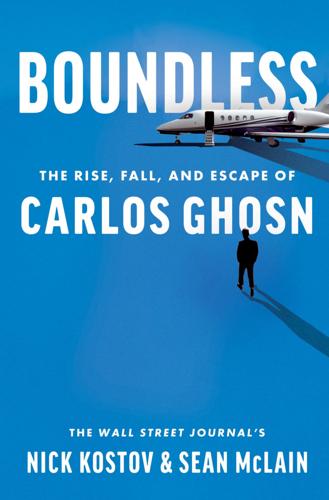
Boundless: The Rise, Fall, and Escape of Carlos Ghosn
by
Nick Kostov
Published 8 Aug 2022
Some of the liveliest neighborhoods of Beirut were flattened and thousands of people were made homeless. Ghosn’s pink house was damaged, but the Ghosns were unhurt. The international community rushed to help, but matters continued to deteriorate. Waves of covid-19 infections knocked down the country, and the ongoing financial crisis raged harder still, pushing large swaths of the population below the poverty line. Covid-19 struck Carole’s parents. Her mother recovered, but her stepfather passed away. Among the patients in Beirut’s covid-19 wards that spring was George Zayek, the former militiaman who had helped Ghosn escape. He recovered, although he suffered the effects of the virus for months.
…
The statement said that Ghosn’s legal counsel had advised their client not to bother reviewing our message. Finally, while working on this story, we both developed some of the most intense source relationships we’ve ever had. It was a particularly difficult time for many of the people mentioned in these pages: families were torn apart, careers were ruined. Often, we conducted interviews while covid-19 had locked down the world, which added even more strain to those people’s lives. Despite all that, they still spoke to us. Our conversations were sometimes emotional, leading to relationships that yielded both revelations and challenges. On occasion, those connections were impossible to maintain.
…
Having booked and not boarded three flights since landing in Lebanon, he decided to take a chance and hopped on a flight home to Massachusetts via Dubai. He made it home without issues. Back in the United States, he picked up his old activities, including playing basketball on Wednesday and working on expanding his vitamin water business. Within a few weeks, the COVID-19 outbreak was forcing countries around the world to shut down one after the other. Taylor’s son Peter decided to ride out the pandemic at his father’s place near Boston rather than in Beirut, where he had lived for the past year and a half. The family was back together again, and there was still no sign of a red notice.
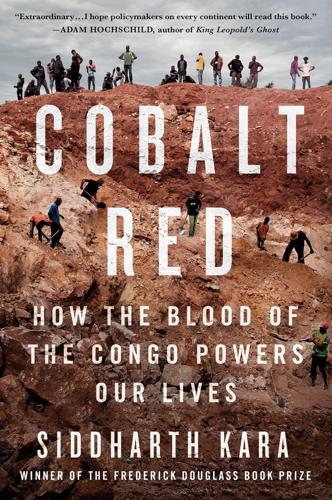
Cobalt Red: How the Blood of the Congo Powers Our Lives
by
Siddharth Kara
Published 30 Jan 2023
There are many episodes in the history of the Congo that are bloodier than what is happening in the mining sector today, but none of these episodes ever involved so much suffering for so much profit linked so indispensably to the lives of billions of people around the world. The field research for this book was conducted during trips to the Congo’s mining provinces in 2018, 2019, and 2021. Travel during 2020 was not possible due to the COVID-19 pandemic. As the pandemic wreaked havoc across the globe, its impact on the destitute people mining for cobalt remains largely unassessed. When industrial mines went into lockdown for extended periods during 2020 and 2021, demand for cobalt did not graciously hibernate. It only grew as people across the world relied more than ever on their rechargeable devices to continue working or attending school from home.
…
It only grew as people across the world relied more than ever on their rechargeable devices to continue working or attending school from home. The increased demand for cobalt pressured hundreds of thousands of Congolese peasants who could not survive without the dollar or two they earned each day to clamber into the ditches and tunnels, unprotected, to keep the cobalt flowing. COVID-19 spread rapidly in the artisanal mines of the Congo, where mask wearing and social distancing were impossible. The sick and dead infected by the disease were never counted, adding an unknown number to the industry’s bleak tally. To obtain the testimonies included in this book, I devoted as much time as possible listening to the stories of those living and working in the mining provinces.
…
His favorite show was a fantasy crime serial called Guardian, about alien races that live with humans on another planet and fight over limited resources. Claude told Xi more about who I was and the research I was doing into cobalt mining. “It is good we can talk here,” Xi said. “In Kasulo, the soldiers will harass us.” Xi was thirty-two years old and was originally from Wuhan. Our meeting turned out to be about a year before the COVID-19 pandemic emerged from his home city and spread across the globe. Xi had been in the Congo for almost two years when we met. His first post was working at the CDM processing facility in Lubumbashi, after which he was sent to help man a depot in Musompo, and finally to operate Depot 88 in Kasulo. Xi said he worked at the depot six days a week, usually from about ten in the morning until six in the evening.
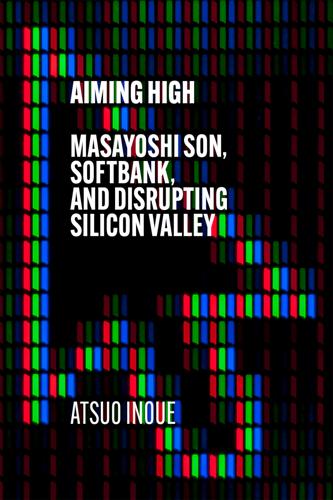
Aiming High: Masayoshi Son, SoftBank, and Disrupting Silicon Valley
by
Atsuo Inoue
Published 18 Nov 2021
Looking at one case in particular, DoorDash went public in December 2020 and on 5 February 2021 the return on the initial investment (the sum of realised and unrealised value divided by total investment) was 16.8 times the original amount. The company was only launched in May 2017, so at the time was only three and a half years old. Due to the Covid-19 epidemic the trend of the world conducting all of its business online has only been speeded up: it is a sure bet to say not many people had heard of Zoom before the novel coronavirus dictated they would live their daily lives indoors, but now it has become an important part of life. People who may not have thought of ordering food online before have had to reconsider their stance and those who did not previously use Netflix are now watching films on their mobile phones; many more companies have had to expedite their plans to move the majority of their business online.
…
WeWork continues to evolve, with 70 per cent of the world’s largest companies – such as ByteDance, Google, Facebook and Goldman Sachs – having accessed its services. In any sector or business, being at the right place at the right time – random acts of fate, essentially – plays an important role in success and with the Covid-19 pandemic and social-distancing requirements companies have been forced into a rethink of population density within the workplace, with some concluding agreements with WeWork to accommodate their employees. It also presents a solution in terms of new trends in reducing the distance between the workplace and employees’ places of residence, such as with Facebook telling its employees they can work from any WeWork they please.
…
WeWork currently provide three types of services: ‘on demand’, or hourly rentals; ‘all access’ (which includes membership and passport services) allows use of WeWork facilities anywhere in the world; and ‘dedicated space’, which is more akin to traditional property letting services but more flexible. Due to the Covid-19 pandemic the world has changed and working from home has rapidly become a widespread practice. People’s expectations have changed as well: they may be perfectly happy working from home or they may not want to work from home but would still like to avoid the hassle and time-sink of a commute (the notorious three-hour commutes into Tokyo on crowded trains immediately spring to mind here).
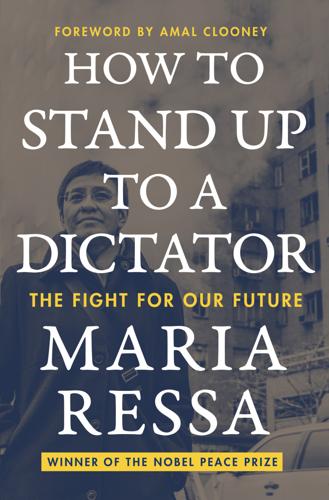
How to Stand Up to a Dictator
by
Maria Ressa
Published 19 Oct 2022
Chapter 12: Why Fascism Is Winning 1.Sofia Tomacruz, “What Prevents Swift COVID-19 Vaccine Deliveries to Philippines’ Provinces?,” Rappler, February 1, 2022, https://www.rappler.com/newsbreak/investigative/what-prevents-swift-deliveries-provinces-analysis-philippines-covid-19-vaccination-drive-2022-part-2/. 2.“Senate Halts Search for Yang, Lao, Pharmally-Linked Officials Due to COVID-19 Surge,” Rappler, January 18, 2022, https://www.rappler.com/nation/senate-halts-search-michael-yang-christopher-lao-pharmally-officials-due-covid-19-surge/. 3.The exact moment when I found out, including my reactions, was captured in this video by FreedomFilmFest: “Live Reaction: Maria Ressa Wins Nobel Peace Prize,” Facebook, December 9, 2021, https://www.facebook.com/freedomfilmfest/posts/10160060586766908. 4.Guardian News, “Moment Maria Ressa Learns of Nobel Peace Prize Win During Zoom Call,” YouTube, October 8, 2021, https://www.youtube.com/watch?
…
“States of Rebellion, Emergency Under Arroyo Administration,” Philippine Daily Inquirer, September 4, 2016, https://newsinfo.inquirer.net/812626/states-of-rebellion-emergency-under-arroyo-administration. 6.Raissa Robles, “Coronavirus: Is Covid-19 Task Force Duterte’s ‘Rolex 12’ in Plan for Marcos-Style Martial Law in the Philippines?,” South China Morning Post, April 28, 2020, https://www.scmp.com/week-asia/politics/article/3081939/coronavirus-covid-19-task-force-dutertes-rolex-12-plan-marcos. 7.Korina Sanchez, Henry Omaga-Diaz, and Ces Oreña-Drilon were the founding anchors of Bandila. 8.We co-opted two key ideas: crowdsourcing from James Surowiecki, who wrote the book The Wisdom of Crowds, and the tipping point from the book The Tipping Point, written more than a decade earlier by Malcolm Gladwell. 9.
…
The eight charges the government had brought against me—for cyberlibel, for tax evasion, for securities fraud—carried a cumulative maximum prison sentence of more than a hundred years. The thirty-seven-year-old judge, Rainelda Estacio-Montesa, walked in. Unlike the rest of us, she wasn’t wearing a mask, which made her bright red lipstick and fresh makeup stand out in the dreary courtroom. The small, dank, windowless space she ruled had been transformed by covid-19, so only a few of us were allowed inside. No court observers were allowed; no one from the diplomatic community could be in the room. Plastic dividers partitioned the space, making it seem smaller but cleaner. Immediately facing the judge was my lawyer, Ted Te, a former Supreme Court spokesman, next to his counterpart from the Department of Justice, prosecutor Jeannette Dacpano (who had gone on government-funded trips with our judge).32 Behind her sat a team of prosecution lawyers, hired to strengthen the government’s case.
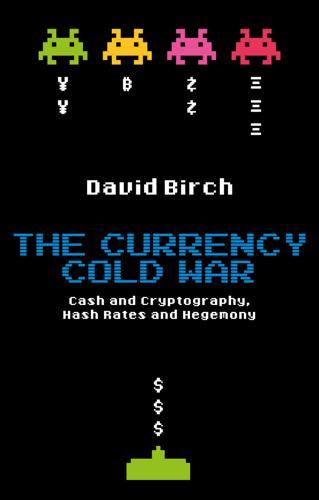
The Currency Cold War: Cash and Cryptography, Hash Rates and Hegemony
by
David G. W. Birch
Published 14 Apr 2020
Meanwhile, as governments and companies fight over who gets to define our future fiat-backed currency system, we cannot discount the role of decentralized alternatives such as Bitcoin, even as sideline players. David and I might disagree on this, but I see post-Covid-19 political fragmentation breeding demand for Satoshi Nakamoto’s invention, which will represent an alternative – if not a more stable – store of value. Trust in both governments and corporate gatekeepers will be challenged by Covid-19 politics. Those who bemoan the lack of accountability in unprecedented fiscal and monetary stimulus packages could be very amenable to a new idea of money. For others who fear the surveillance powers of both corporate- and state-issued currencies, the alternative of depoliticized, pro-privacy digital currencies such as Bitcoin will be attractive.
…
The assumption, I imagine, was that with instant digital onboarding the vast majority of the population ought to be able to enrol in a couple of minutes, download a Fed app and get to work. FedAccounts could then be used to ensure that everyone who was entitled to Covid-19-related relief would receive it quickly and inexpensively. I completely sympathize with the spirit of the senator’s proposal, but would people really have accounts with or devices from the Fed, or any other central bank? I think not, as I will explain in chapter 6. It would be an interesting turn of events, to say the least, if the Covid-19 crisis turned out to be a trigger for the transition to digital currency in developed nations, particularly in the United States, where the spectacle of the government mailing paper cheques to desperate citizens seems oddly anachronistic.
…
You will read in the pages ahead, for example, about outgoing Bank of England governor Mark Carney’s bold vision for the International Monetary Fund to steward creation of a digitally rendered ‘synthetic hegemonic currency’ to replace the dollar as the world’s reserve unit. But it took a third, massively disruptive societal upheaval – the fallout from the Covid-19 pandemic – to turn this gradual two-trend convergence into something even more powerful and urgent. The global health crisis of 2020, which quickly also became a financial, economic and political crisis, threatens to redraw the boundaries of economic power – not only across countries, but also within them – as centralized governments’ failure to rapidly respond has shone a light on alternative models that embrace decentralized governance.

Chicago Like a Local
by
DK
www.walgreens.com Website with a store locator showing 24-hour and late-night Walgreens pharmacies in the city. TRAVEL SAFETY ADVICE Before you travel – and while you’re here – always keep tabs on the latest regulations in Chicago and the US. www.chicago.gov/city/en/sites/covid-19/home/emergency-travel-order Local government website featuring a travel advisory page as well as COVID-19 information. www.choosechicago.com/plan-your-trip/covid-19 Up-to-date information on COVID-19 from the city’s official tourism website. www.illinois.gov/ready Severe weather and post-disaster resources for the state of Illinois. www.travel.state.gov Latest travel safety guidelines from the US government.
…
Intersectionality takes center stage here, whether you find yourself at a kink-friendly erotic event at The Promontory or a joyful dance party at the Ace Hotel. Just make sure you always come dressed to impress. g LGBTQ+ Scene g Contents Google Map SLO ‘MO Map 3; Sleeping Village, 3734 West Belmont Avenue, Avondale; ///late.risen.socket; www.slomoparty.com When the city ground to a halt during COVID-19, Slo ‘Mo kept folks entertained by streaming dance parties. Thankfully, queer ravers have left the days of kitchen discos behind and are back on Slo ‘Mo’s dance floor. Parties take place at various venues, including Sleeping Village. g LGBTQ+ Scene g Contents Google Map SCARLET BAR Map 4; 3320 North Halsted Street, Boystown; ///tend.among.richer; www.scarletchicago.com Diminutive in stature but not in reputation, this classic gayborhood haunt packs them in every Thursday through Sunday for bargain-priced booze, driving DJ beats, and drag competitions.

The Mini Rough Guide to Malta (Travel Guide eBook)
by
Rough Guides
Published 14 Mar 2022
You can obtain a Malta UK Global Health Insurance Card (which is also known as a GHIC) which grants you free medical services with certain providers. See ghic.co.uk for more information. Vaccinations. No vaccinations are normally needed unless you are arriving from a cholera- or yellow fever-infected area and are within six days of leaving that area. Covid-19 requirements for vaccinations and tests need to be verified prior to arrival in Malta. See visitmalta.com/pl/covid-19 for more details. Water. Although it is safe to drink the tap water, it does not always taste pleasant. Bottled mineral water is available everywhere. Insurance. Nationals of EU countries are entitled to reciprocal health care in public hospitals and from medical practitioners who are part of the national health care service.
…
In 2018, La Valletta, together with the rest of Malta, hosted the title of European Capital of Culture, which resulted in a series of cultural events such as concerts, exhibitions and street art shows. In January 2020, Joseph Muscat stepped down as a result of the 2019 street protests. In March 2020 the first cases of Covid-19 were confirmed in the country. Sovereign Order of St John British ship in Grand Harbour Historical Landmarks 5300 BC Settlers arrive, probably across a land bridge from Sicily. 4100 BC onwards The first temples are built. In 3600 BC, the first of the Neolithic temples – the oldest extant buildings in the world – is constructed at Ġgantija, Gozo. 2500 BC The Neolithic period comes to an inexplicable end. 2000 BC Bronze-Age settlers inhabit Malta, erecting fortified castles and granaries on ridges and hills. 800–480 BC The Phoenicians turn the island into a centre for sea trade.Mdina is established as Malta’s first town and is to remain the capital for a millennium. 550–218 BC Malta is ruled by Carthage, a former Phoenician colony. 218 BC The islands become part of the Roman Empire.
…
The protests are triggered by an international investigation that showed the alleged links between Daphne Caruana Galizia’s death and Maltese government corruption. 2020 Joseph Muscat steps down as prime minister and is replaced by a leader of the Labour Party, Robert Abela. 2021 Malta has the highest Covid-19 vaccination rate in the whole of the EU. Out and About The Maltese Islands are compact and relatively easy to explore either independently in a rental car, on public transport or by an organised tour. We begin by looking at the largest island, Malta – including Valletta, the towns around it, and the Grand Harbour.
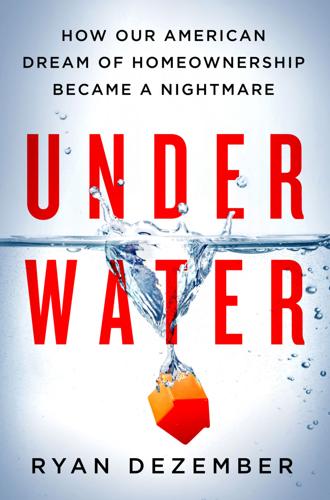
Underwater: How Our American Dream of Homeownership Became a Nightmare
by
Ryan Dezember
Published 13 Jul 2020
“Exactly how we would have done it,” he said. Between their savings and some early inheritance, they mustered a $95,000 downpayment. They agreed to pay $433,000 and gave $5,000 in earnest money to the seller. They were to pay another $5,000 in ten days, after an inspection. Before they got the keys, though, the coronavirus pandemic shut down much of the U.S. economy. Worried for his job as a church-affiliated marriage counselor, they decided not to make the second earnest payment. Days later he was furloughed. Their lender bailed. The seller let the McLaughlins out of the deal for the $5,000 they’d already handed over and another $2,000 to settle the second, skipped payment.

Drunk: How We Sipped, Danced, and Stumbled Our Way to Civilization
by
Edward Slingerland
Published 31 May 2021
With gently downregulated PFCs, students speak out more freely, make intellectual connections with one another, and get to witness their mentors working things out on the fly, partially and temporarily free from the fetters of academic hierarchies. Colleagues float ideas that would otherwise never bubble up into consciousness and recklessly venture out of their intellectual safe zones, blundering across disciplinary boundaries that often desperately need to be crossed. This book was written in the midst of the Covid-19 pandemic. It will take years to understand the various ways in which this crisis may have negatively impacted innovation. More obvious and dramatic factors, like the stress of caring for sick loved ones or homeschooling children, clearly slash productivity and narrow one’s focus. Less obvious, perhaps, is the way in which the widespread and abrupt transition from in-person meetings to Zoom and Google Hangouts has changed the way that people talk and think.
…
Wide-ranging chats over a few beers, sprawling over an hour or two, have been replaced by shorter video meetings focused on a specific set of agenda points. In this artificial medium, people have trouble naturally interrupting one another or smoothly navigating shifts in topic or speaker. This is one of the ways in which the Covid-19 crisis, like American Prohibition, might provide an excellent natural experiment demonstrating how meeting in person, often over alcohol, enhances both individual and group creativity. Truth Is the Color Blue: Modern Shamans and Microdosing Alcohol has dominated our story for good reason.
…
The advent of Skype and other videoconferencing technologies in the mid-2000s brought phonotelephotes into every home that had access to a decent internet connection. Each new advance in remote teleconferencing capacity is accompanied by renewed predictions of the demise of business travel. Yet the fact is that, at least until the global Covid-19 pandemic hit in 2020, business travel has done nothing but steadily increase. Given the expense, hassle, and physiological toll of traveling, especially between very different time zones, this is genuinely puzzling. Why fly from New York to Shanghai to meet a potential business partner when you could just call or Zoom?

A Hunter-Gatherer's Guide to the 21st Century: Evolution and the Challenges of Modern Life
by
Heather Heying
and
Bret Weinstein
Published 14 Sep 2021
As of the writing of this Note in late May, 2021, the consensus in the scientific establishment, including national and international regulators, and in the mainstream press that follows them, has finally shifted to one of grudging acceptance of the obvious: SARS-CoV-2 may well have leaked from the Wuhan Institute of Virology, and the COVID-19 pandemic might therefore be for humanity an entirely self-inflicted wound. The strength of this hypothesis is something we have been discussing on our podcast, DarkHorse, since April of 2020. Those discussions caused a great deal of derision and stigma to be directed at us, and it is a bewildering relief to watch the world suddenly come around to the plausibility of this well supported, if unfortunate, explanation. But no matter what humanity ultimately concludes about this pandemic’s origin, there is a deeper truth hovering just outside our collective awareness: COVID-19 is a product of technology, no matter what path it took to humans.
…
Much as people thought little about washing their hands prior to the germ theory of disease, we give no thought to the scale of misery caused by a given person transporting a new and nameless cold virus to some continent that was free of it the day before. “Novel Coronavirus” took advantage of that nonchalance before the pathogen even had a proper name. The COVID-19 pandemic is itself a symptom of another disease entirely. In the pages of this book, we call that disease “hyper-novelty.” It is caused by a rate of technological change so rapid that transitions in our environment outstrip our capacity to adapt. You will not find the COVID-19 pandemic specifically dissected here, but you will find a full exploration of the hyper-novelty crisis that left us vulnerable to this virus—a virus so weak that it could have been cured with a bit of well-coordinated fresh air.
…
This is part of what drives brand loyalty, taking the same commute even when a better one is available, and sticking to pharmaceutical and dietary recommendations even after they’ve been debunked. In our quest for set-and-forget rubrics, we fall prey to reductionist thinking. What we need instead is flexible, logic-based, evolutionary thinking with which to navigate. In February 2020, early in the COVID-19 pandemic, both the World Health Organization (WHO) and the US surgeon general repeatedly told the public that “masks aren’t helpful” in protecting against SARS-CoV-2.20 In this case, too many people listened to the authorities rather than thinking through the logic themselves. Why, for instance, if masks are pointless, are they exactly the equipment used by health professionals when trying to avoid infection from respiratory ailments?
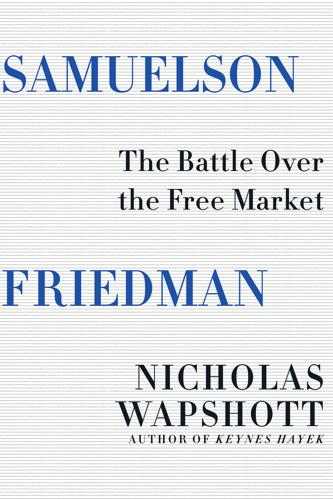
Samuelson Friedman: The Battle Over the Free Market
by
Nicholas Wapshott
Published 2 Aug 2021
Li Wenliang and seven other doctors who express alarm at the spread of the disease were punished by Chinese authorities for “spreading false rumors.” 41.By the end of July 2020, 35,107 Italians had died of COVID-19. 42.Steven Terner Mnuchin (December 21, 1962–), American investment banker. U.S. Treasury Secretary 2017–2021. 43.https://datausa.io/coronavirus. 44.In January, the total of reported unemployed in the U.S. was 74.8 million. https://nypost.com/2021/01/14/us-jobless-claims-965000-filed-amid-pressure-from-covid-19/. 45.Franklin Delano Roosevelt (January 30, 1882–April 12, 1945). Thirty-second president of the United States. 46.See Amity Shlaes, The Forgotten Man: A New History of the Great Depression, HarperCollins, 2007. 47.“The Impact of Covid-19 on U.S. Economy and Financial Markets,” Forbes, https://www.forbes.com/sites/mikepatton/2020/10/12/the-impact-of-covid-19-on-us-economy-and-financial-markets/?
…
If not, then in that example at least the disagreement is over economics, not values. I suspect that the same would be true in many other cases, although probably not all.26 17 Capitalism Teeters The financial freeze of 2008 proved a severe test for the competing ideas of Samuelson and Friedman. Then along came COVID-19 Had he lived one more year, Milton Friedman would have witnessed a financial catastrophe that tested the limit of his theories about the Fed providing enough money in times of tight liquidity: the financial freeze of 2007–8. In 2002, Ben Bernanke had been confident—even perhaps complacent—that the U.S. financial and banking structure was secure.
…
The paper noted that “Samuelson frequently crossed swords with the monetarist Milton Friedman,” but that “in 2008, when the world slipped into the steepest downturn since the Great Depression, it was Samuelson’s prescriptions, rather than Friedman’s, that carried the day.”39 NEITHER MAN was alive to witness the next catastrophic threat to the world’s prosperity: the emergence in China in November 2019 of the coronavirus COVID-19, a highly contagious pneumonia-like disease that often proved fatal, particularly to the elderly or patients with debilitating conditions. Using the authoritarian powers vested in it as the sole legitimate political force in a one-party communist state, the Chinese government imposed a strict curfew on the citizens of Wuhan, Hubei, a city of 11 million.
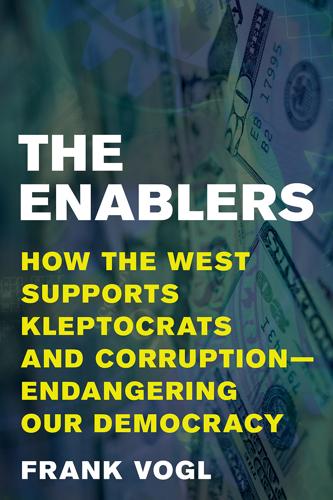
The Enablers: How the West Supports Kleptocrats and Corruption - Endangering Our Democracy
by
Frank Vogl
Published 14 Jul 2021
A year later,16 he faced yet another of Ukraine’s long history of financial disasters. Corruption had not been sharply reduced and the COVID-19 crisis was adding to economic hardship. He found himself forced to enter more negotiations with the IMF, and his country obtained a $5 billion line of credit as a result.17 In this case, having had years of experience dealing with Ukraine, the IMF imposed further anti-corruption conditions as part of the loan deal. The onset of the COVID-19 crisis increased the dangers of widespread sovereign debt defaults as the global economy slumped, and as the export earnings of many of the emerging markets and developing countries collapsed.
…
In some cases, the collateral provided by the borrowing countries to the Chinese are natural resources assets or other businesses. Significantly, in some cases, the borrowers will draw on the IMF and other emergency cash inflows to pay the Chinese. The Economist has reported: “As a result of Covid-19, work on some projects has come to a halt. A few have been scrapped. Several that seemed of dubious worth even before the pandemic now look like white elephants. Many of the loans are on the brink of technical default, as debtor countries—hammered by Covid-19—seek to defer payments that are coming due.”30 In the short term, the global debt crisis will also be a blow to the Chinese and their ambitious B&R projects. But the Chinese take a long-term view and are likely to see the problems in coming months as little more than irritating delays.
…
As South Africa’s independent public prosecutor, Madonsela investigated the president, denounced his schemes in exceptional detail in a dense “State Capture” report,12 and then demanded that justice be done. Zuma was ousted from power following large-scale demonstrations and placed on trial. He left a shattered nation. Power shortages had become commonplace. The government’s response to the COVID-19 crisis was, as the government itself admitted, inadequate. Zuma’s successor, President Ramaphosa, explained the situation simply in a radio interview in January 2021: “We do not have the money . . . that’s the simple truth that has to be put out there.” The breakdown of the country’s public services and the failure of the government to respond effectively have been explained, for example, by South African political analyst Daniel Silke, who told theFinancial Times: “We are finally seeing the effects of bad governance and low growth.

The Alternative: How to Build a Just Economy
by
Nick Romeo
Published 15 Jan 2024
This effect seems to be both a product of selection (people with these tendencies are more likely to study economics) and training (economics itself, with its current dominant focus on self-interest and utility maximization, normalizes such behaviors).47 The more economics courses students take in college, the more likely they are to become members of the Republican Party.48 Jon Gruber, an economics professor at MIT, told me, “There’s still a right-wing bias in economics today.” In the spring of 2021, with the COVID-19 pandemic raging around the world, Wendy Carlin was teaching macroeconomics online using the CORE curriculum to hundreds of undergraduates from more than a dozen countries at University College London. During the unit on inequality, Bowles gave a guest lecture presenting an expertly curated collection of data and imagery documenting the astounding increases in inequality around the world since 1980.
…
If everyone had the guarantee of a reasonably pleasant job that suited their interests and paid well, who would do the grungy, difficult jobs? Austria, like America, has struggled recently to fill hard, poorly paid jobs. Many of the people in Austria who wash dishes or clean hotel rooms are immigrants from Eastern Europe. During the COVID-19 pandemic, many went home, and not all returned. Jörg Flecker, a professor of sociology at the University of Vienna who is evaluating the program in Gramatneusiedl, thinks that political pressure from employers could prevent a JG expansion across Austria. “Employers say: There are so many unemployed.
…
Kasy and his colleagues are studying the program using a randomized controlled trial in which waves of participants who started at different times are compared against one another and a statistical composite of similar unemployed individuals from similar towns in Austria without a job guarantee. The data have been encouraging. On many dimensions—anxiety or depression symptoms, COVID-19 stress, sense of social inclusion, social status, and income security—the improvements in participants’ lives are statistically significant. The economists also have some data on the broader economic effects of the program. The total number of jobs in the region has risen, suggesting the guarantee is not harming job creation in the private sector.
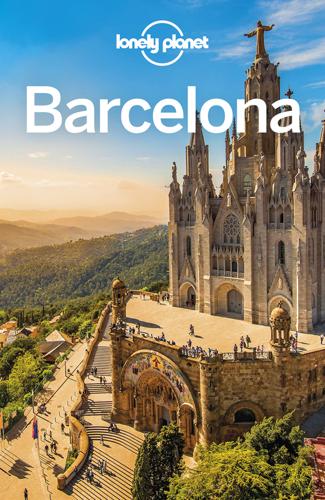
Lonely Planet Barcelona
by
Isabella Noble
and
Regis St Louis
Published 15 Nov 2022
Barcelona Contents Plan Your Trip Welcome to Barcelona Barcelona’s Top Experiences What’s New Need to Know First Time Barcelona Perfect Days Month By Month With Kids Like a Local For Free Under the Radar Barcelona Dining Out Bar Open Showtime Treasure Hunt LGBTIQ+ Barcelona Active Barcelona Explore Barcelona Neighbourhoods at a Glance La Rambla& Barri Gòtic Top Experience: Stroll down famous La Rambla Top Experience: Savour the view from La Catedral’s tower Top Experience: indulge your senses at the Mercat de la Boqueria Sights Top Experience: Travel back in time at Museu d’Història de Barcelona Top Experience: Admire the private collection at Museu Frederic Marès Neighbourhood Walk: Hidden Historical Treasures of the Barri Gòtic Eating Drinking & Nightlife Entertainment Shopping Sports & Activities El Raval Top Experience: Attend an Art talk at MACBA Top Experience: Hear the organ in Palau Güell’s music room Sights Eating Neighbourhood Walk: Modernista Drinking & Dining in El Raval Drinking & Nightlife Entertainment Shopping Sports & Activities La Ribera & El Born Top Experience: See mansions packed with Picassos Top Experience: Catch a concert in a Catalan gothic church at santa maria del mar Top Experience: Attend a classical or choral performance at the Palau de la Música Catalana Sights Top Experience: Shop for produce at Mercat de Santa Caterina Eating Neighbourhood Walk: Tapas & Bar-Hopping in El Born Drinking & Nightlife Entertainment Shopping Sports & Activities Barceloneta, the Waterfront& El Poblenou Top Experience: Lay a towel on El Poblenou Platges Top Experience: See Don Juan’s FLagship at Museu Marítim Sights Top Experience: Explore The ages at Museu d’Història de Catalunya Cycling Tour: Barcelona’s Waterfront Eating Drinking & Nightlife Entertainment Shopping Sports & Activities La Sagrada Família& L’Eixample Top Experience: wander awestruck through La Sagrada Família Top Experience: Admire the whimsy of Casa Batlló Top Experience: Visit Gaudí’s madcap La Pedrera Sights Top Experience: See Tàpies masterpieces in a modernista setting Neighbourhood Walk: Lesser-Known Modernisme in L’Eixample Eating Drinking & Nightlife Entertainment Shopping Local Life: Shopping in the Quadrat d’Or Sports & Activities Antoni Gaudí& Modernisme Gràcia & Park Güell Top Experience: Take in the city views from Park Güell Sights Top Experience: Admire the tilework at Casa Vicens Eating Drinking & Nightlife Neighbourhood Walk: Gràcia’s Village Squares Entertainment Shopping Sports & Activities Montjuïc, Poble Sec& Sant Antoni Top Experience: Relax in the sculpture garden AT Fundació Joan Miró Top Experience: Enjoy the romanesque frescoes in the Palau Nacional Sights Neighbourhood Walk: Montjuïc’s Gardens & Panoramas Eating Drinking & Nightlife Entertainment Shopping Sports & Activities Camp Nou, Pedralbes& La Zona Alta Top Experience: join barcelona FC fans at Camp Nou Top Experience: Visit a museum of monastic life Sights Top Experience: Experience an Amazonian storm at CosmoCaixa Eating Neighbourhood Walk: A Wander Through Old Sarrià Drinking & Nightlife Entertainment Shopping Sports & Activities Day Trips from Barcelona Sleeping Understand Barcelona History Catalan Culture Fantastic Architecture Picasso, Miró & Dalí Rhythms of Barcelona Survival Guide Transport Arriving in Barcelona Air Bus Train Getting Around Metro Train Bus Taxi Tram Cable Car Bicycle Car & Motorcycle Directory A–Z Accessible Travel Discount Cards Emergency & Important Numbers Electricity Internet Access Money Opening Hours Public Holidays Safe Travel Taxes & Refunds Telephone Time Tourist Information Visas Women Travellers Responsible Travel Overtourism Support Local & Give Back Leave a Light Footprint Language Table of Contents Behind the Scenes Barcelona Maps 1 La Rambla & Barri Gòtic 2 El Raval 3 La Ribera & El Born 4 Port Vell & La Barceloneta 5 Port Olímpic, El Poblenou & El Fòrum 6 L’Esquerra de L’Eixample 7 La Dreta de L’Eixample 8 Gràcia 9 Montjuïc, Poble Sec & Sant Antoni 10 La Zona Alta East 11 La Zona Alta & Pedralbes Our Writers COVID-19 We have re-checked every business in this book before publication to ensure that it is still open after the COVID-19 outbreak. However, the economic and social impacts of COVID-19 will continue to be felt long after the outbreak has been contained, and many businesses, services and events referenced in this guide may experience ongoing restrictions. Some businesses may be temporarily closed, have changed their opening hours and services, or require bookings; some unfortunately could have closed permanently.
…
Public Holidays New Year’s Day (Any Nou/Año Nuevo) 1 January Epiphany/Three Kings’ Day (Epifanía or El Dia dels Reis/Día de los Reyes Magos) 6 January Good Friday (Divendres Sant/Viernes Santo) March/April Easter Monday (Dilluns de Pasqua Florida/Lunes de Pascua) March/April Labour Day (Dia del Treball/Fiesta del Trabajo) 1 May Day after Pentecost Sunday (Dilluns de Pasqua Granada) May/June Feast of St John the Baptist (Dia de Sant Joan/Día de San Juan Bautista) 24 June Feast of the Assumption (L’Assumpció/La Asunción) 15 August Catalonia’s National Day (Diada Nacional de Catalunya) 11 September Festes de la Mercè 24 September Spanish National Day (Festa de la Hispanitat/Día de la Hispanidad) 12 October All Saints Day (Dia de Tots Sants/Día de Todos los Santos) 1 November Constitution Day (Dia de la Constitució/Día de la Constitución) 6 December Feast of the Immaculate Conception (La Immaculada Concepció/La Inmaculada Concepción) 8 December Christmas (Nadal/Navidad) 25 December Boxing Day/St Stephen’s Day (Dia de Sant Esteve) 26 December Safe Travel Spain has been particularly hard hit by the COVID-19 pandemic, especially in cities such as Madrid, Barcelona and Zaragoza, with tight lockdown restrictions in place on and off throughout 2020 and 2021. At the time of writing, however, Spain had one of the world’s highest COVID-19 vaccination rates, and required proof of full vaccination (or a recent negative test) for anyone wishing to enter the country. Travellers should abide by all local safety regulations and entry requirements.
…
NITO/SHUTTERSTOCK © Mercat de la Boqueria Though huge crowds at La Boqueria (pictured) have made the world-famous market a victim of its own success, shoppers still wonder at its endless bounty. TUPUNGATO/SHUTTERSTOCK © What’s New While concerns about overtourism and the issue of Catalan independence reached fever pitch in the years leading up to the COVID-19 pandemic, Barcelona – the city that gave birth to Gaudí and the ingenious creations of Modernisme – continues to break new ground, with ambitious projects bringing urban renewal. Market Makeovers Gràcia’s 1892 Mercat de l’Abaceria Central is set to be the next long-established traditional market to be glammed-up to better gel with the modern-day city.
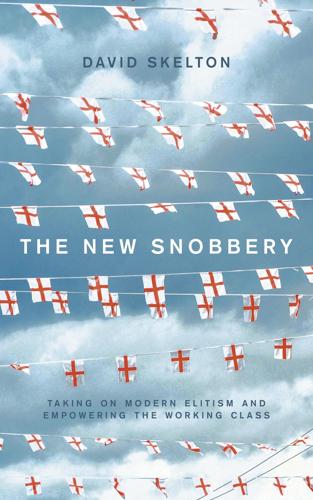
The New Snobbery
by
David Skelton
Published 28 Jun 2021
Working Britain made it quite obvious in 2019 that they believed their verdict should be respected, and that they were prepared to abandon generations of anti-Toryism on the promise of improved lives, better jobs and more dynamic local economies. That promise must still be delivered. COVID-19 – A CALL TO ACTION Our national experience during the Covid-19 pandemic has made the necessity for the promised change even more urgent. The pandemic has clearly shone a light on the tilted nature of the economy, and as we have previously discussed, the lowest paid have been more exposed to both the health and financial risks of the virus.
…
It saw many people in working-class areas move from having economic power, often through mechanisms such as collective bargaining, to becoming economically powerless, and workers moved from having a central to a peripheral part in the social contract. The winner-takes-all approach has created an economy in which the majority are working harder for less, with work tending to be more insecure and having less dignity. This divide has only been magnified with the Covid-19 pandemic, which meant that the lower-paid faced greater danger and greater hardship. WHAT ABOUT THE WORKERS? WHO ISN’T THE ECONOMY WORKING FOR? It is beyond dispute that capitalism is the best way of creating wealth, spurring innovation and growing living standards. For many years, the link between national economic growth, growing productivity and blossoming for individuals throughout society was also clear.
…
When the time came for left-behind places to answer how they felt about decades of economic neglect, they seized the opportunity. Nobody should have been surprised when all but one of the former coalfields voted for Brexit. Twelve years after the banking crash came another catastrophe that hit hardest those communities who were suffering the most from over a decade of stagnating real wages. With over 100,000 deaths, Covid-19 was devastating for the entire country, but the lower down the income scale you were, the worse hit you were by both the economic and the health impacts of Covid. Put simply, it’s easier to work from home in most middle-class jobs than in most working-class jobs, and social distancing was simply not an option in many unskilled positions.
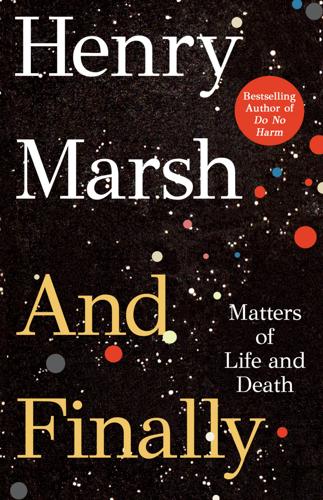
And Finally
by
Henry Marsh
Our memory of our past self is largely a self-serving construct, with only a few certain facts thrown in, and a diary can provide some objectivity. I have continued to write almost every day – it has become both a compulsion and a duty – and yet rarely look at it. But I did consult it to find out what I had been thinking at the onset of the Covid-19 pandemic. Not until 23 February, exactly one month before the lockdown started in England, did I mention coronavirus in my diary, although we had all heard many weeks earlier about what was happening in a place called Wuhan. Wuhan could have been a small village for all I knew – in fact it is a city with a population of 11 million.
…
It is embarrassingly obvious to me now that this was denial on my part. I was still finding it very difficult to accept just how great were the changes that were coming. When faced by uncertainty, we all oscillate wildly at first between panic and dismissal – as I was to discover when my cancer was diagnosed. Over the next three weeks Covid-19 started to take over our lives. There was excitement – of a sort – when the lockdown was eventually imposed on 23 March. With neither cars nor aeroplanes the streets and sky suddenly fell silent, and the shelves in the shops were suddenly stripped bare. Shopping became something of an adventure, with the fear that going out you might catch the virus, and the difficulty of finding something to eat.
…
The lockdown was an entirely novel and universal experience, overshadowed at first for me by Kate’s illness and the constant stream of death statistics in the media, as though there was some kind of deadly Olympiad in progress, with countries competing for the most deaths. I was also frightened that I would fall ill as well. But as it became apparent that a dry cough and fever were only two of the ways that Covid-19 could present, I realised that I had very probably contracted the infection myself several weeks before the lockdown. I had been to Ukraine in early February – a country where I have been working pro bono for many years – and lectured at the medical school in the city of Ivano-Frankivsk. Shortly after my return I developed severe abdominal pain, quite unlike anything I had ever had before, and rigors – the medical name for shivering attacks.

Cultish: The Language of Fanaticism
by
Amanda Montell
Published 14 Jun 2021
At the end of the session, participants always take a group photo, turn to someone they don’t know, introduce themselves, and close out with the same final line: “Have a great day.” Ideally, my parents and I would’ve tried out intenSati in person, but in April 2020, that wasn’t exactly possible. Two weeks into California’s COVID-19 quarantine, we were forced to exercise at home. I figure, though, if my thesis about language and power is correct, then Patricia’s incantations should compel me even through a screen. I didn’t actually think they’d work, of course. On paper, the workout coalesces two things I gravely detest: cardio (blegh) and group activities that require you to awkwardly shout things out loud.
…
Five years after their initial crowdfunding campaign, Peloton had raised almost a billion dollars and was deemed the first-ever “fitness unicorn.” A wellness editor I used to work with assured me that Peloton’s virtual model, which is simple and nonproprietary, is without question the future of boutique fitness (a prediction that seems even likelier post-COVID-19, when workout studios were forced to digitize overnight or die). On the Peloton app, each rider chooses a username (the cheekier, the better; there are entire subreddits dedicated to cute Peloton handle ideas: @ridesforchocolate, @will_spin_for_zin, @clever_username) and has access to everyone’s speeds, resistance levels, and ranks.
…
And the linguistic red flags had always been there: By glorifying the police in the names of its Hero WoDs, CrossFit had been telling on itself all along. Hundreds of gyms disaffiliated with the brand, big activewear companies pulled their contracts, and Glassman stepped down as CEO. A few months after Glassman’s fall from grace, it was SoulCycle’s turn for a scandal. In late 2020, things were already going south for the company due to COVID-19 lockdowns forcing location closures left and right, when multiple damning exposés surfaced online: According to reporting from Vox, underneath all the motivational Soulspeak, studios across the country harbored long track records of toxicity. Cults of personality formed around certain “Master” instructors, who took advantage by creating hierarchies of favorite and least favorite clients, giving private “off-the-clock” rides, and allegedly sleeping with some students.
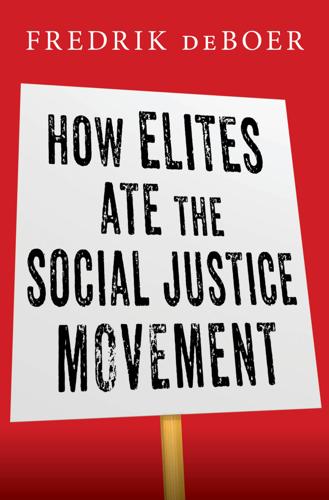
How Elites Ate the Social Justice Movement
by
Fredrik Deboer
Published 4 Sep 2023
In 2020, a year that was sold at the time as a moment of unique political foment—as a “reckoning”—we saw the American progressive movement drift from the essential to the inconsequential, from the material to the illusory, in much the same way. Early that year, an unprecedented global pandemic bloomed in front of our eyes. The novel coronavirus Covid-19 exploded out from China and across the face of the globe in the span of a few months. There have been deadlier diseases, and there have been diseases that have wrought more havoc, but there had never before been a disease that so took advantage of a globalized and interconnected Earth, of our now-small world.
…
The Trump presidency had enflamed the country, his boorishness and serial scandals convincing many that the 2020 presidential election would prove to be one of the most consequential of our lifetimes. Along with sustained rage at Trump’s long history of racist and misogynist statements, there was despair at his handling of the Covid-19 crisis. In March of that year, the virus had bloomed into a pandemic, spreading across our globalized world with unprecedented speed. In response to the crisis, state and city governments across the country had enforced lockdown policies that closed public spaces and kept people in their homes. Fear gripped the country as the virus killed hundreds of thousands, and being shut inside ratcheted up the tension.
…
The #MeToo movement had galvanized public anger toward sexual misconduct, and the Bernie Sanders movement, with its army of newly minted socialists, continued to call for change through the Trump years. Our whole civic society seemed strewn with kindling. On May 25, 2020, four Minneapolis police officers lit the match. The killing of George Floyd, an unarmed man accused of nothing more than passing a counterfeit bill, reverberated around the world. Covid-19 had devastated the economy, causing massive and immediate job losses of a kind rarely seen in American history. Floyd had recently lost jobs as a truck driver and a bouncer. In time, aggressive economic policies jump-started the American economy and led to historically low unemployment, but in May 2020, there was little comfort or support for an unemployed Black man.

Moral Ambition: Stop Wasting Your Talent and Start Making a Difference
by
Bregman, Rutger
Published 9 Mar 2025
Another 17 per cent confess to having some doubts about whether their job contributes to society.5 The late anthropologist David Graeber (1961–2020) had a highly technical term for such positions: bullshit jobs.6 What jobs are we talking about here? Well, we know which ones it’s not. In 2020, at the start of the Covid-19 pandemic, lists of ‘essential workers’ popped up everywhere: from cleaning staff to streetsweepers, from teachers to firefighters, and from bus drivers to registered nurses. These are the people who keep the world running; they don’t need a lecture on moral ambition. But there’s also a class of not-so-useful jobs.
…
She believes in a world where we no longer have to fear viruses escaping from a lab or spreading in the wild. With a bold mix of policy and innovation, she believes we have a shot at – ready? – making pandemics a thing of the past. In our lifetimes.49 In the spring of 2020, when she was treating Covid-19 patients six days a week, Pannu used her evenings and Sundays to help draft the Apollo Program for Biodefense. That’s a crazy ambitious plan with ideas from more than fifty experts for ending the pandemic age once and for all.50 It’s a package of proposals for the coming decades, put together at the request of politicians from across the US political spectrum, and which will require the efforts of doctors and public servants, lobbyists and activists, scientists and entrepreneurs.
…
And maybe it feels a little cold to focus on potential nuclear conflicts or possible viral outbreaks instead of soothing some of the concrete suffering happening in the here and now. But while Jassi Pannu fights for her dream of a world without pandemics, she doesn’t lose sight of her patients. Her work in the hospital keeps her grounded, well aware of the fact that behind the huge numbers are people of flesh and blood. Covid-19 killed more than 20 million people worldwide, but you could perhaps better say that 20 million times, one person died.61 We must continue to try to let these kinds of figures get through to us. That’s 20 million times that a father or mother, brother or sister, friend or lover lost someone dear to them.

Boom: Bubbles and the End of Stagnation
by
Byrne Hobart
and
Tobias Huber
Published 29 Oct 2024
These critiques demonstrate how the ideology of safetyism has itself become a civilizational danger. 4 In Part II of this book, we’ll show how bubbles, by coordinating the large-scale capital allocation that technological breakthroughs require, help us overcome our aversion to risk and open a path to a more advanced and prosperous future—one in which we overcome the existential risk of not making enough progress. One could argue that the Great Stagnation is already over. Indeed, several recent developments have resulted in a resurgence of techno-optimism, from the rapid development of novel mRNA vaccines against Covid-19, one of which was developed within two days of researchers posting the virus’s genome online; to the ability of DeepMind’s AlphaFold to predict protein shapes from their amino-acid sequences, one of biology’s most significant challenges; to the successful test launch of a SpaceX rocket intended to ferry humans to Mars; to the staggering advancements in generative AI models such as GPT.
…
This led to a sequence of spectacular bubbles, including the savings-and-loans crisis of the 1980s, the crash of October 1987, the bursting of the Japanese real estate and stock market bubbles in 1991, the emerging-markets bubbles and crashes of 1994 and 1997, the collapse of the US hedge fund Long-Term Capital Management in 1998, the implosion of the dot-com bubble in 2000, the 2007–2008 financial crisis (which was initially driven by a global real estate bubble), and, more recently, the financial turmoil that followed the global Covid-19 shutdowns. All of this financial chaos can be traced back to the termination of Bretton Woods. Hyper-financialization and interventionist monetary policies are not just expressions of risk aversion, they reinforce it. Superficially, there seems to be no issue here given that the past five decades have seen enormous gains in stock values.
…
Whereas the Fed held between $700 billion and $800 billion of Treasury notes on its balance sheet before the 2008 meltdown, assets reached $2.1 trillion in June 2010 due to quantitative easing, an unconventional policy whereby central banks stabilize markets and provide liquidity by buying government bonds or other financial assets. Accelerated by unprecedented interventions driven by the Covid-19 pandemic in 2020, the Fed’s balance sheet peaked in 2022 at around $8.3 trillion. At the time of writing, financial markets are still reeling from quantitative tightening, or the unwinding of the Fed’s portfolio, which is causing havoc in global financial markets. Over the past decade, the unprecedented monetary experimentations of global central banks following financial volatility—immortalized in the “money printer go brrrrr” meme—have given rise to a “buy the dip” mentality among investors and traders.
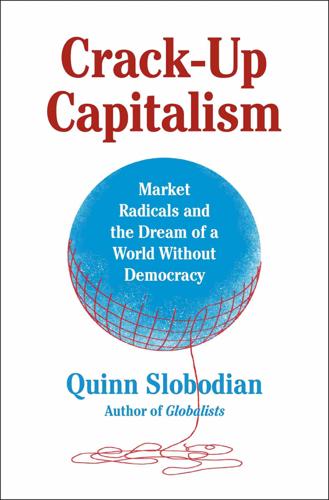
Crack-Up Capitalism: Market Radicals and the Dream of a World Without Democracy
by
Quinn Slobodian
Published 4 Apr 2023
Dan Senor and Saul Singer, Start-up Nation: The Story of Israel’s Economic Miracle (New York: Twelve, 2009). 60. Balaji Srinivasan, Twitter post, May 13, 2021, http://twitter.com/balajis. 61. Quoted in Henley & Partners, “Record-Breaking Global Mobility Grounded by COVID-19 Pandemic,” PR Newswire, April 7, 2020, https://www.prnewswire.com/ae/news-releases/record-breaking-global-mobility-grounded-by-covid-19-pandemic-301034963.html. 62. Quinn Slobodian, “How the Libertarian Right Plans to Profit from the Pandemic,” Guardian, June 1, 2020, Global Newsstream. 63. Virtual SSF Summit: Startup Societies in a Post-Covid World, May 1–2, 2020.
…
Kosloff and Srinivasan, “#3 Network State with Balaji Srinivasan, former CTO of Coinbase and Founder of 1729.” 74. Parag Khanna and Balaji Srinivasan, “Great Protocol Politics,” Foreign Policy, December 11, 2021, https://foreignpolicy.com/2021/12/11/bitcoin-ethereum-cryptocurrency-web3-great-protocol-politics/. 75. COVID-19 National Preparedness Collaborators, “Pandemic Preparedness and COVID-19: An Exploratory Analysis of Infection and Fatality Rates, and Contextual Factors Associated with Preparedness in 177 Countries, from Jan 1, 2020, to Sept 30, 2021,” Lancet, February 1, 2022, https://doi.org/https://doi.org/10.1016/S0140–6736(22)00172–6. 76.
…
In 2021, Srinivasan wrote that “an evacuation point is an interesting way of thinking about collective exit, about the sovereign collective, about what comes after the sovereign individual. When the state fails, pull the fire alarm and gather your community in a new hub.”60 Srinivasan thought the trigger for the move to the cloud country had finally come when the COVID-19 pandemic swept the globe in early 2020. He rang the alarm early on the repercussions of the pandemic, foretelling a division of the world map into “green zones” that had contained the virus and “red zones” that had not. First used in West Africa during the Ebola epidemic, such zones, designated by public health officials, seemed poised to become the basis for a new political economy.

Billionaires' Row: Tycoons, High Rollers, and the Epic Race to Build the World's Most Exclusive Skyscrapers
by
Katherine Clarke
Published 13 Jun 2023
There was a shortage of ventilators and of protective equipment like masks, gowns, and surgical gloves. Ordinary New Yorkers were asked to send any masks they owned to local hospitals to protect nurses and doctors on the front lines of the fight. The city and state were looking at the enormous Jacob K. Javits Convention Center and even Central Park as potential locations for overflow COVID-19 patients. A massive U.S. Navy ship that served as a floating hospital arrived in New York Harbor with an additional thousand beds. An eerie silence quickly descended on the city that was supposed never to sleep. The streets, usually filled with bumper-to-bumper traffic and blaring car horns, were empty and quiet.
…
Kelly Kennedy Mack, the head of Corcoran Sunshine, who had been watching Cuomo’s speech that morning in March, was used to waking up to an email from her team, recapping all the contract activity across the company’s vast portfolio of new developments. She would read through the list of contracts out, contracts signed, and deals closed on her phone before she even got out of bed. As COVID-19 ravaged New York, the emails kept coming, but the deals didn’t. In fact, they were almost nonexistent. Between March 23 and August 16, sales of Manhattan homes were down 56 percent year over year. For properties priced at $4 million or above, sales were down about 67 percent. For those luxury homes that did sell in the second quarter, prices were down by about 11 percent.
…
Making matters worse for the real estate world, it was a presidential election year, which traditionally caused a slowdown in the Manhattan market as buyers sought to avoid purchasing during times of uncertainty. This time, the ugly matchup between President Donald Trump and former Vice President Joseph R. Biden, Jr., was inflaming a populace already reeling from the fallout of COVID-19. If the United States had once been a beacon of political and social stability to the world, and New York City its shining epicenter, that image had been well and truly shattered. The exodus from Manhattan sparked a real estate feeding frenzy in Palm Beach, Florida, where ultra-wealthy New Yorkers picked up single-family homes for often record sums, resulting in what effectively amounted to a mansion shortage in the area.
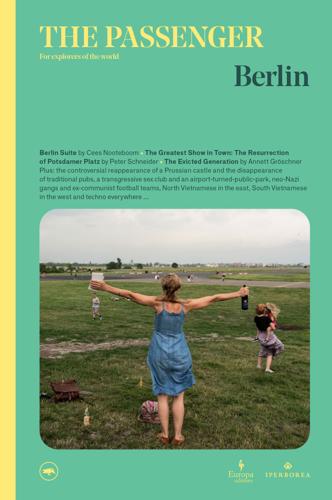
The Passenger: Berlin
by
The Passenger
Published 8 Jun 2021
But, in spite of its prestige and monumental architecture, it suffered from being small, close to the city centre and unsuitable for modern aircraft, with the result that operations ceased in 2008 on the expectation that its traffic would soon be taken up by Brandenburg Airport, which was under construction at the time. The new hub was due to open in 2011, then in 2015, and only finally became operational in 2020 just as the Covid-19 pandemic was grounding most flights worldwide – the tragic punchline to a joke that had long since ceased to be funny. I never landed at Tempelhof. Even now, not having lived in the city for years, I say this with a tinge of embarrassment or perhaps a certain sense of inadequacy, because when I lived in Berlin, having landed at Tempelhof was a badge of credibility of sorts, a hierarchical distinction within an ever-shifting expatriate community.
…
According to Neil MacGregor, former director of the British Museum and director of the founding directorate for the Berlin project, ‘the museum’s collections will serve as a basis to understand global interconnections and perceive the world as a whole, in the Humboldtian spirit’. The Palace is also used by Humboldt University as an experimental research facility as well as hosting a permanent exhibition about the city. In classic Berlin style, the opening of the complex has already been put back three times (once because of Covid-19), and, in the meantime, the Humboldt Forum has also been dragged into the controversies sparked by French president Emmanuel Macron’s declarations during a visit to Senegal in 2017, when he expressed his desire to return art that was plundered from Africa during the colonial period. Bénédicte Savoy, one of the former directors of the Humboldt Forum, resigned from her post in protest at the museum’s attitude to works of art appropriated during colonial times, stating that before opening stringent checks on their provenance should be carried out.
…
It is no longer a question of preferring the copy to the original or even of trying to tell them apart; it is enough simply to like the copy without knowing a destroyed or displaced original even existed; to generate information that will be obsolete even before it is absorbed. In this topsyturvy world, truth is merely a stage of falsehood. That is Berlin’s manifesto. In the Belly of the Whale Before Covid-19 closed all the city’s nightspots, journalist Juliane Löffler spent an evening at the most transgressive venue on the Berlin scene, the KitKat sex club. Here’s how her evening panned out. JULIANE LÖFFLER Translated by Claudio Cambon Illustrations by Felix Scheinberger JULIANE LÖFFLER is a journalist who specialises in LGBT rights and feminism for BuzzFeed news.

Dry Humping: A Guide to Dating, Relating, and Hooking Up Without the Booze
by
Tawny Lara
Published 19 Sep 2023
I spoke with Aqxyl Storms, an alcohol-free nonbinary musician, about how some people turn to alcohol to ease general anxiety about their physical presentation. “I think my eating disorder had a lot to do with the discomfort I felt in my physical body. I liked to drink because it made me feel way less awkward,” they shared. Aqxyl’s sober curiosity began with a dry month in the early days of the COVID-19 pandemic and even resulted in them opening Minus Moonshine, a booze-free bottle shop in Crown Heights, Brooklyn. “Giving up alcohol helped me learn to accept my weirdness and awkwardness, not just with my body but also my personality,” they told me. “My confidence is real for the first time in my adulthood.
…
Being able to face your body with real courage, not just liquid courage, can mean gaining the space to make changes that will let you feel better for good—not just in the moment. Dubbs Weinblatt, a transgender educator and the host of the Thank You for Coming Out podcast, began gender-affirming hormone therapy just one month and six days after they stopped drinking during the COVID-19 pandemic. “I started out doing a dry month. I just wanted a reset,” they said during a Zoom interview. Before that dry month, Weinblatt’s only other experience with temporary sobriety in twenty years was the two weeks before their top surgery. “As soon as I stopped drinking, it opened up the headspace for me to try T [testosterone] sooner,” Weinblatt told me.
…
For example: when someone wearing a red shirt walks by, you can share a fun fact about yourselves or take a sip of your coffee. We’re replacing booze on a date, but the lighthearted fun of a drinking game can stay! Digital Get Down Many of us got more comfortable connecting on-screen during the COVID-19 pandemic. Video dates made meeting new people more accessible while staying safe and socially distanced. The pandemic lockdown also led to a surge in creative online activities. Virtual escape rooms, cooking classes, and group exercise classes became easily accessible if you had Wi-Fi and a screen.

Big Data and the Welfare State: How the Information Revolution Threatens Social Solidarity
by
Torben Iversen
and
Philipp Rehm
Published 18 May 2022
The list of disqualifying preexisting conditions is lengthy and can be quickly updated. In response to the COVID-19 pandemic, for example, many life insurance companies immediately tightened their underwriting rules. Common adjustments included the postponement of applications from consumers who had recently traveled internationally, a temporary freeze on applications from older people, and refusal to offer policies to customers with COVID-19, at least for the time being. Changes of this kind were clearly designed to screen out applicants with a high probability of contracting COVID-19 or a high probability of dying because of it. The second topic covered in underwriting guidelines pertains to necessary medical information for the purposes of risk classification. 5 Examples of these qualifiers read as follows: • “For Agent Use Only – Not For Use With The Public” (National Life Group) • “For Producer or Broker/Dealer Use Only.
…
But the American healthcare system is a good illustration of the powerful centrifugal force of increasingly fragmented private insurance taking advantage of new opportunities to subdivide risks, even as the centralizing force of government provision garners significant popular support with so many worrying about whether they will be able to insure themselves and their families through the market. In the short run, it is conceivable that the COVID-19 pandemic will boost support for public insurance as more people have been exposed to the fear that their employer-provided insurance plans will not survive the lockdowns. Even more than the financial crisis, the pandemic has created a sense that no one is safe. But any solidarity “bump” from the pandemic is likely to be dwarfed by the most important long-term driver of the politics of health insurance: more and better information.
…
TransUnion offers TrueRisk scores, a similar product that “has been validated by Reinsurance Group of America” (Balasubramanian, Chester, and Milinkovich 2020, 6). 8 Katie Devlin: “Leveraging Electronic Health Data for Insurance Operations” (http://clar eto.com/wp-content/uploads/2019/09/8.8.19-Clareto-White-Paper-DRAFT-KFD.docx, last accessed June 10, 2021 [https://perma.cc/RV5P-SH4J]). https://doi.org/10.1017/9781009151405.004 Published online by Cambridge University Press Life Insurance Markets 77 later, the use of digital health data in underwriting has become standard, at least in some companies. The reliance on digital health data was greatly accelerated due to COVID-19. The pandemic made many traditional underwriting practices impossible, most importantly in-person medical examinations. Life insurance companies immediately sought to replace in-person medical exams – long the centerpiece of risk classification – with alternative ways of credibly assessing an applicant’s health status and history.
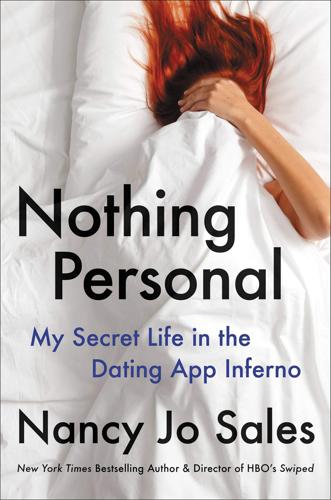
Nothing Personal: My Secret Life in the Dating App Inferno
by
Nancy Jo Sales
Published 17 May 2021
Ollstein, Alice Miranda, and Mohana Ravindranath. “How Some—but Not All—Dating Apps Are Taking on the STD Epidemic.” Politico, December 10, 2019. www.politico.com/news/2019/12/10/dating-apps-stds-080159. Olson, Loren A. “Do You Need a Hug? I Do: Anxiety in the COVID-19 Pandemic.” Psychology Today, March 26, 2020. www.psychologytoday.com/us/blog/finally-out/202003/do-you-need-hug-i-do-anxiety-in-the-covid-19-pandemic. Ortutay, Barbara. “Dating Apps Face US Inquiry over Underage Use, Sex Offenders.” Associated Press, January 31, 2020. https://apnews.com/a93a6e2b02b7f979efca92ea7266e9f2. Padilla, Mariel. “North Carolina Lawmakers Pass Bill to Close Sexual Assault Loopholes.”
…
Abigail is twenty-seven and an inveterate online dater. She’s told me lots of stories over the years about dating app culture and its chilling effect on relationships. “He’s gonna be out the door as soon as isolation ends,” she texts. “That’s what I’d be worried about too,” I text her back. But then, who knows how any of this is going to end? Covid-19 isn’t like anything we’ve seen before, so there’s no way of knowing what its long-term effects on dating and relationships will be. There have been reports, ever since shelter-in-place orders went into effect, that online dating has surged. Which comes as no surprise, since millions of people are now trapped at home, feeling lonely, horny, and bored, not to mention desperate and scared.
…
In 2015, Tinder responded with a cease-and-desist order when the AIDS Healthcare Foundation put up billboards and bus ads across LA warning that online encounters on dating apps like Tinder and Grindr could lead to unsafe sex. Under pressure, the following year, Tinder agreed to add a health and safety section to its app, as did other major sites such as OkCupid and Grindr. “But who reads that?” asked a young man I spoke to. “And who really cares?” As the Covid-19 pandemic began to spread, I wondered if dating apps were factoring into this new public health crisis. Not many people were asking this question in public, with the exception of an opinion piece I saw in the New York Times in March of 2020: “Can we really afford to rely on horny people forced to stay at home all day to ‘make the best-informed decisions’ about everyone else’s health?”
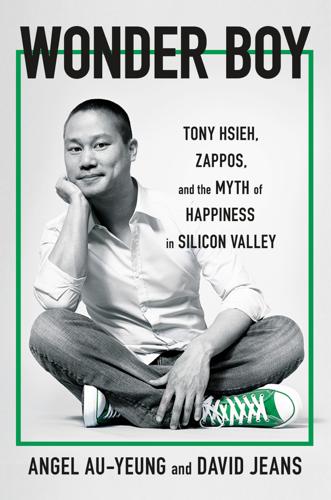
Wonder Boy: Tony Hsieh, Zappos, and the Myth of Happiness in Silicon Valley
by
Angel Au-Yeung
and
David Jeans
Published 25 Apr 2023
In turn, he retreated deeper into his trailer park, where those present seemed to orbit around his cult of personality. In the months before the COVID-19 pandemic swept the United States in 2020, Tony was introduced to ketamine, the popular party drug typically used to tranquilize horses, and it uncorked long-held insecurities and breaks with reality that led him to act in ways that some saw aligned with psychosis. He started to claim that he devised an algorithm to bring about world peace, that he figured out how to cure COVID-19, and that he no longer had to urinate because his body could recycle water. After months of drug use caused his behavior to spill into his public life in Las Vegas, Tony’s friends persuaded him to check into a rehab facility in Park City.
…
For decades, Tony had been the fearless leader of Zappos and the Downtown Project. Though he had gotten himself into tough spots before, he had always somehow conquered them. Why was this time any different? Plus, Tony was still making efforts to keep up appearances. News of a novel and highly infectious virus called COVID-19 had emerged on the other side of the world, threatening to upend the world. Having first appeared in China, it was now showing up in Europe, and governments were being forced to shut down businesses, events, and their economies. Stay-at-home orders were introduced to limit human-to-human interaction.
…
It looked as if he was hardwired into the computer itself. For as long as he could remember, he’d been trying to empower others. What he really needed to do, he told those in the room, was to operate at his own full mental capacity. Just as Elon was sending astronauts into space, Tony’s intellect and drive could come up with a cure for COVID-19. He would usher in world peace. No goal would be too grand. All he needed was to reach the flow state. “We have to go faster,” he said, not looking away from the screen. He paused momentarily to scribble messages on Post-it notes, which he stuck on the wall. The words “flow state” appeared among arrows and other markings.
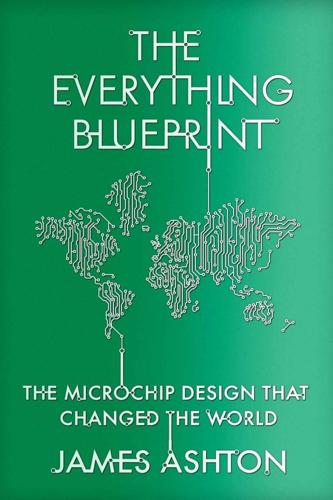
The Everything Blueprint: The Microchip Design That Changed the World
by
James Ashton
Published 11 May 2023
Geopolitical ructions of the past stemmed from the pursuit of resource-rich land or religious ideology. But in the digital age, these tiny slivers of silicon that powered cutting-edge weaponry, as well as smartphones, cars and medical equipment that had taken on new importance since the devastating Covid-19 pandemic, were the ultimate prize. In less than two generations, an island with a land mass slightly larger than Maryland and less than twice that of Wales had grown to account for 92 per cent of the world’s most advanced chips. They are defined as those produced using manufacturing processes carried out at 10 nanometres (10nm) or less.2 That so-called ‘node’ is a measure of the spacing between transistors packed on the chip, or roughly four times the width of a strand of human DNA.
…
‘Chip inventories would quickly become exhausted and end equipment production lines everywhere would grind to a halt within a matter of weeks, even days,’ he wrote in his FutureHorizons briefing. ‘The near instant impact on global trade and the world economy would be orders of magnitude greater than the 2008 Lehman Brothers crash or the 2020 Covid-19 lockdown.’4 A 21st-Century Horseshoe Nail Early morning on Thanksgiving in November 2021 and the line outside GameStop in Murphy Canyon, San Diego, snaked into the car park. Many retailers had chosen to close for the holidays but this store had good reason to open its doors. At the front of the queue, Joland Harper, in green beanie hat, black T-shirt and sporting a nose ring, had been waiting since 6am.
…
Since their invention, microchips have been seen as a passport to prosperity, for governments eager to house high-value, strategic industries and for parents seeking to enrich their children’s education with the latest personal computer. Yet they also suffer from negative connotations, a symbol of invasive technology in dystopian fiction that controls thoughts or conducts Big Brother surveillance. This point of view has seeped into real life. Witness the conspiracy theory that the Covid-19 vaccination programme was cover for a sinister plan to track the population in their everyday lives. When one survey of 1,500 American adults asked whether the US government was using the vaccine to microchip the population, 20 per cent of respondents said it was definitely or probably true.18 What cannot be argued is that for more than 60 years, chips have continuously improved, in price and processing power: a metronome of technological evolution.

Mapmatics: How We Navigate the World Through Numbers
by
Paulina Rowinska
Published 5 Jun 2024
To maximize the weight of cargo onboard, transport companies had to find a convenient refuelling stop as close to the route as possible, and Anchorage is the only airport in the world that lies close to great circles connecting dozens of major cities. Today, Anchorage is home to the hubs of giants such as FedEx, UPS and the United States Postal Service, where aeroplanes stop to refuel and sort the cargo, sending it on to correct destinations.* All that explains why, in April 2020, when commercial flights stopped almost entirely due to COVID-19 restrictions, and the shipping of goods bought online spiked, Anchorage became one of the world’s busiest airports – and, for one day, the busiest. Most major airlines – both commercial and cargo – work in a hub-and-spoke system, which means that their flights start or end in one of the hub airports, where passengers change to the connecting flight to their destination.
…
A century later, an Irish mathematician, astronomer and physicist, Sir William Rowan Hamilton, considered a seemingly similar, but in fact very different problem of visiting every vertex exactly once. Finding such a path turned out to be much, much harder than tracing every edge exactly once, which has very practical implications. Packaged mathematical miracles When the COVID-19 pandemic struck in early 2020, many stores were closed and shopping in person wasn’t safe, so delivery services became my best friend and likely yours too. During the lockdown, nothing would cheer me up more than a new book arriving at my door. These days, we take deliveries for granted, but each of them is a mathematical miracle.
…
Beyond cholera Today, maps and mathematics are indispensable tools for fighting and preventing diseases, from local outbreaks to global pandemics. Scientists combine modern technologies from GPS to machine learning to gene sequencing with old-fashioned patient interviews to gather spatial information about the disease. In early 2020, many of us developed a daily habit of checking maps of COVID-19 cases, updated as the virus terrorized Wuhan, then other regions of China, Italy, and, finally, the whole world. Albeit unprecedented in scale, these weren’t the first disease mapping efforts in recent years. Before taking potentially life-saving decisions regarding vaccinations, quarantine and social distancing, authorities need to understand likely scenarios of an epidemic course under various circumstances.
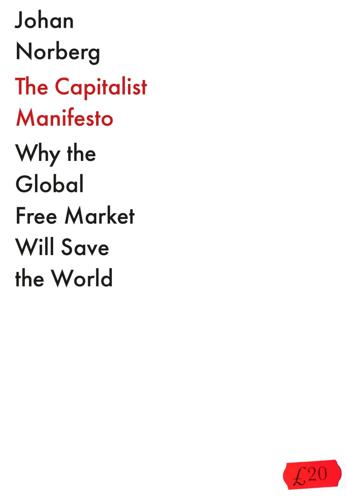
The Capitalist Manifesto
by
Johan Norberg
Published 14 Jun 2023
At the UN Climate Action Summit in New York, 23 September 2019. 3. Daniel Gerszon Mahler, Nishant Yonzan, Christoph Lakner, R. Andres Castedana Aguiilar & Haoyu Wu, ‘Updated estimates of the impact of COVID-19 on global poverty’, World Bank Blog, 24 June 2021. FAO, IFAD, UNICEF, WFP & WHO, The state of food security and nutrition in the world 2021, FAO 2021. 4. Norberg 2015. 5. Hannah Ritchie, Pablo Rosado & Max Roser, 'Natural disasters', Our World in Data, 2022. 6. Zeke Hausfather, ‘Covid-19 could result in much larger CO2 drop in 2020’, Breakthrough Institute, 30 April 2020. 7. Andrew McAfee, More From Less, 2019, p.67. See also Marian L.
…
INDEX NB Page numbers in italics indicate illustrations Afghanistan, 160–61, 256 Africa, 30–35, 70, 267, 282 colonisation, 31 independence, 31–4 Sub-Saharan Africa, 30–31 AIM (AOL Instant Messenger), 170 Albania, 50 Algeria, 251 Alphabet, 179 AltaVista, 169, 174 Amazon, 169–72, 178–9 Amazon Prime, 179 Andersson, Magdalena, 8 Angola, 239 Annan, Kofi, 3 Ant Group, 227 AOL (America Online), 169–71, 174 Apple, 107–8, 159, 163, 169–73, 179 Apple TV, 179 Arab Spring, 215 Aristophanes, 73 Aristotle, 70 ARPA, 183–6 ARPANET, 184–5 Asia, 267, 282 Asp, Anette, 287 Attac, 2–3, 6 Australia, 11, 258, 267, 282, 285 Ayittey, George, 31 Bangladesh, 235 Bank for International Settlements (BIS), 144 Bankman-Fried, Sam, 153 Bao Tong, 212 Baran, Paul, 184, 186–7 Bastiat, Frédéric, 114 Beijing, China, 209 Belgium, 285 Berggren, Niclas, 62 Bergh, Andreas, 56, 103 Bezos, Jeff, 127 Biden, Joe, 76, 217 big companies, 141, 146–50, 176–7, 292 BioNTech, 177 biotechnology, 195 Björk, Nina, 263, 265, 272, 274–5, 278 BlackBerry, 174 Blair, Tony, 170 Blockbuster, 151 Blue Origin, 202 Bolivia, 47 Bolt, Beranek and Newman, 184 Bono, 4, 170 Botswana, 34–5 Boudreaux, Donald, 125 Boulevard of Broken Dreams (Lerner), 190 Brazil, 11, 29, 239, 258 Brexit, 116–18 Bullshit Jobs: A Theory (Graeber), 86, 98–9 business regulation, 139–41 Callaghan, James, 10 Canada, 102, 267, 283 Capital in the Twenty-First Century (Piketty), 128 capital income, 130–31 Carbon Engineering, 255 Cardoso, Fernando Henrique, 29 Carlson, Tucker, 146 cars, 158 Carter, Jimmy, 10 Case Deaton, Anne, 108–11, 136 Castillo, Pedro, 30 Chávez, Hugo, 43, 135 child labour, 20 child mortality, 19–20, 20 Chile, 11, 29–30 China, 5, 7, 11, 19, 24–5, 76, 78–80, 83–4, 104–7, 204–29, 239, 258 agricultural productivity, 206–7, 209 Communist Party, 182, 204–9, 211–12, 215–18, 221–3, 226–8 deindustrialization, 84 economic development, 205–29 environmental issues, 251–3, 257 exports, 209–10 industrial policy, 205, 212–13, 217, 223–4, 296 innovation strategy, 182, 192 innovation, 226–8 poverty, 213, 214 Reform and Opening Up programme, 212 state-owned companies, 208 WTO and, 205, 209, 211 China’s Leaders (Shambaugh), 215 Chirac, Jacques, 191 Chomsky, Noam, 49 Christianity, 264–5 Churchill, Winston, 135 Clark, Daniel, 87 climate change, 5–7, 230–60, 293 carbon border tariffs, 258 carbon tax, 256–7, 259 energy supplies, 233–5, 253–6, 259 greenhouse gas emissions, 231, 233–5, 238, 240–41, 244, 253–9 see also environmental issues Climeworks, 255 Clinton, Hillary, 140 Coase, Ronald, 206 Cohen, Linda, 189 communism, 2, 25–6, 241–3, 290–91 Communist Manifesto, The, 1848, 2 community, 267 Compaq, 174 Concorde, 191 Confucianism, 22, 25 Congo-Brazzaville, 30 Congo, 239 consumer culture, 160–62, 287–8 Cook, Tim, 173 cooperation, 278–9 Coopersmith, Jonathan, 188–9 Corbyn, Jeremy, 43 coronavirus see Covid-19 pandemic Council of Economic Advisers, 147, 152 Covid-19 pandemic, 8, 21, 76–81, 223, 232–3, 270 Cowen, Tyler, 154 Credit Suisse, 132–3 crony capitalism, 139–40, 291 culture wars, 12–13 Czechoslovakia, 26 Dalits, 63–4 dating profiles, 154 ‘deaths of despair’, 7, 108–10, 136, 271, 293 Deaths of Despair (Deaton and Case Deaton), 136 Deaton, Angus, 19, 108–119, 136 DeepMind, 177 degrowth, 232–5, 254–5 ‘deindustrialization’, 83–5 democracies, 26, 37, 46 Deneen, Patrick, 262–5 Deng Xiaoping, 24, 46, 205, 212–13 Denmark, 91, 285 ‘dependency theory’, 27–8 Detroit, Michigan, 87–8 dictatorships, 11, 24, 29, 32, 42–8 Digital Equipment Corporation, 174 disability-adjusted life years (DALY), 237 dishonesty, 153–6 Disney, 178 Dominican Republic, 225 Easterlin, Richard, 279 ‘Easterlin paradox’, 279–80 Easterly, William, 39 Ecclesiazusae (Aristophanes), 73 Economic Freedom of the World index, 35–7 economic freedom, 35–42, 36, 57, 58–62, 58, 77–8 Economist, The, 179, 192 education, 20, 94 Energiewende, 191, 192–3 Engels, Friedrich, 2, 277, 290–91 Enlightenment, 73 entrepreneurship, 123–4, 128–9, 152–4 ‘welfare entrepreneurs’, 197 environmental issues, 236–41, 245–52, 293 agriculture, 239–40 air pollution, 237–8 biodiversity, 238–9, 249–50 deforestation, 239 health and, 236–8, 237 plastics, 247–8 prosperity and, 245–52, 249 transportation, 250–51, 254–5 Environmental Performance Index (EPI), 248, 252 Estonia, 26 Ethiopia, 277 Europe, 22, 239, 267, 282 European Centre for International Political Economy, 79 European Union (EU), 4, 68, 79, 116, 164, 258–9 Everybody Lies (Stephens-Davidowitz), 155 Facebook, 163, 167–75, 179–80 Fallon, Brad, 192 famine, 29 Fanjul, Alfonso and José, 140 fascism, 75 Federal Communications Decency Act (USA), 174 Feldt, Kjell-Olof, 11 feudalism, 73, 75 Financial Fiasco (Norberg), 142 financial markets, 141–3 Financial Times, 8, 267 Finland, 76, 78, 268, 285 Foodora, 102 Forbes’ list, 129–30 forced technology transfers, 211 Foroohar, Rana, 8 Fortune 500 list, 151 Fortune magazine, 169 France, 79–80, 97, 159, 192, 281, 285 Fraser Institute, 35 free markets, 2–4, 6, 23, 58–62, 65–82, 83, 290–97 happiness and, 279–89, 282, 284, 286 human values and, 261–89 Friedman, Thomas, 204 ‘friendshoring’, 79 Friendster, 170 GAFAM (Google, Amazon, Facebook, Apple, Microsoft), 169–70 Gallup World Poll, 267 Gandhi, Indira, 245 Gapminder, 18 Gates, Bill, 124–7, 274 GDP (Gross Domestic Product), 5, 23, 26, 33, 35, 49–56 General Data Protection Regulation (EU GDPR), 164 generosity, 274–7 Georgia, 26, 215 Germany, 26, 84, 97, 101, 192–3, 196, 268 gig economy, 101–3 Gingrich, Newt, 191–2 Gini coefficient, 132 global financial crisis, 2008, 4–5, 142–3 global supply chains, 41–2, 58–61, 76, 81 Global Thermostat, 255 global warming see climate change globalization, 3–8, 17, 19, 80, 103–10, 117 Google, 163, 169–73, 179–80 Gorbachev, Mikhail, 215 Graeber, David, 86, 98–9 Grafström, Jonas, 240 Greece, 26, 254 Green Revolution, 239–40 green technology, 243, 251–5 Greider, Göran, 50, 241 growth, 49–57 degrowth, 232–5, 254–5 government and, 55–6 health and, 52–3 poverty and, 53–4 Guangdong, China, 207–8 Guardian, 3, 169 Halldorf, Joel, 262, 265 happiness, 279–89, 282, 284, 286 Hawkins Family Farm, 140 Hawkins, Zach, 140 Hayden, Brian, 161 Hayek, Friedrich, 66 Helm, Dieter, 193 Henrekson, Magnus, 56 Hertz, Noreena, 261, 262, 265, 268, 272, 274–5, 278 Hillbilly Elegy (Vance), 87 Hinduism, 22, 25 Hong Kong, 23, 205, 207 Horwitz, Steven, 294 housing market, 131, 142–3, 208–9 How China Became Capitalist (Wang and Coase), 206 How Innovation Works (Ridley), 188 Hsieh, Chang-Tai, 148–9 Hu Jintao, 215–16 Hugo, Victor, 25 Hume, David, 284 Hungary, 26, 283 IBM, 151 Iceland, 285 IKEA, 119, 141, 147 illiteracy, 20, 20 ‘import substitution’, 27–8 In Defence of Global Capitalism (Norberg), 3, 17, 33, 38, 42, 146, 151, 156, 169, 204, 214, 230–31 income, 22, 55, 88–96, 95, 134–5, 285, 291 low-income earners, 136–8 minimum wage, 90 wage stagnation, 89, 92–3 see also inequality India, 11, 24–5, 63–4, 70, 234, 239, 251, 258 caste system, 63–4 Indonesia, 239 industrial policy, 182, 188–203 Industrial Revolution, 22 inequality, 7, 27, 42, 54–5, 110, 131–8, 133, 285–7 happiness inequality, 131–2 income, 285–7 life expectancy and, 136–8 infant mortality, 19–20, 235, 291 Infineon, 196 inflation, 8, 10–11, 69 innovation, 65–6, 122–3, 125, 151, 181–203 government policy and, 181–203 innovation shadow, 169, 176 prizes and, 199 research, 199–200 subsidies and grants, 196–7 Instagram, 168, 177 integrity, 164 intellectual property, 41, 210–11 International Disaster Database, 235 International Union for the Conservation of Nature (IUCN), 238 internet, 162–8, 183–7 IPCC (Intergovernmental Panel on Climate Change), 231 iPhone, 107–8, 156, 159 Iran, 220 Iraq, 251 Ireland, 285 Italy, 97, 285 Jackson, Jesse, 43 Jacobs, A.
…
The country introduced export-processing zones where a deregulated textile industry could grow, and the economy has continued to diversify with a modern service sector. After uninterrupted high growth, Mauritius was classified by the World Bank as a high-income country in 2019. Even though it slipped back because of Covid-19, it will probably soon rise again. Today, Mauritius and Botswana have GDP per capita similar to a EU country like Bulgaria. In recent years, countries such as Uganda and Rwanda have tried to imitate such policies after brutal episodes of conflict and massacre. Although they have had authoritarian leaders, they have liberalized their economies more than their neighbours and also grown faster.

Butler to the World: How Britain Became the Servant of Tycoons, Tax Dodgers, Kleptocrats and Criminals
by
Oliver Bullough
Published 10 Mar 2022
We know this, because it was just such a crisis that gave birth to Britain’s butlering career back in the years when my parents were young and I was unthought of. 2 SUN, SAND, CANAL In spring 2020, the one trip I tried hardest not to cancel – and the one I was eventually sorriest to miss out on when COVID-19 became too huge to ignore – was one to Sunderland, in the north-east of England, scheduled for 29 March. That was when the Suez Veterans’ Association was due to lay up its standard – that is, to finally fold up its flag, because there were too few veterans to fly it any more – and to close for good. It would have been the final act in the history of this overlooked, determinedly narky and generous group of ex-servicemen, who had all served in British bases along the Suez Canal. Sadly, with two weeks to go, and the rapid spread of COVID-19 making total lockdown inevitable, the membership secretary was forced to contact the handful of surviving veterans (and me), and inform them the event had been postponed indefinitely owing to the risk to the attendees posed by the coronavirus.
…
One of the reasons I decided to write this book was that, in the months and years after the UK’s decision to leave the European Union in 2016, there was so much anguish about what kind of country Britain should be, without – as far as I could tell – much public discussion of what kind of country it actually was. Brexit felt at the time like a crisis that required a response, but it has since been eclipsed by the far more serious crisis of COVID-19. The need to diagnose what’s wrong with Britain has been heightened by the pandemic, which has exposed tensions in many countries but has hit the UK – with its disproportionately high death toll and stumbling governmental response – particularly hard. I hope that when the crisis passes, British politicians heed its lessons and aim to forge a new kind of country that does not see every situation as an opportunity to earn a fee and does not engage quite so readily in enabling the kind of activities I describe in this book, but acts more like the land of heroes they claim to admire.
…
Britain had lost an empire, but it had already found a role: as an amoral servant of wealth wherever it could be found, using the skills it had built up over centuries of empire-building to help the owners of wealth avoid having to account to anyone but themselves. And the effects are all around us. I am writing this sentence nine months into the COVID-19 crisis, and have just read a report published by the accounting giant PwC and the banking giant UBS which revealed that between April and July 2020, the world’s 2,189 billionaires increased their collective wealth by $2.2 trillion. How, the report asked, should the world respond to this, particularly with governments facing such huge deficits as the pandemic dented their economies, and their spending surged in response?
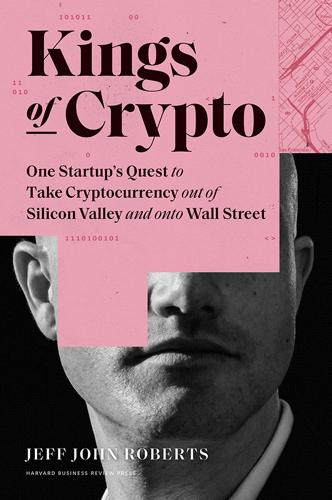
Kings of Crypto: One Startup's Quest to Take Cryptocurrency Out of Silicon Valley and Onto Wall Street
by
Jeff John Roberts
Published 15 Dec 2020
But one of the things about Silicon Valley is that people are not as skeptical as everywhere else. You can still throw out a crazy idea, and people will get excited.” Epilogue On March 9, 2020, the Dow Jones Industrial Average dropped a record 2,000 points amid fears over oil prices and the Covid-19 pandemic that had begun to consume the world. Three days later, the Dow fell another 2,350 points, and the following Monday it lost 3,000 more. It was a once-in-a-century financial calamity, and nothing in the market was spared—stocks, bonds, commodities, and even precious metals suffered a dizzying plunge.
…
Coinbase, meanwhile, rode the volatility to trading riches on the scale of what it enjoyed during the peak of the 2017 bubble. • • • In San Francisco, Coinbase’s founder waited out the pandemic in his penthouse in the city’s tallest building, where his neighbors included NBA star Kevin Durant and other members of the Golden State Warriors. Brian had grasped the implications of the Covid-19 crisis early, and Coinbase’s work-from-home blueprint had been shared widely among companies in the Valley and beyond. But he was hardly the first from the crypto world to warn about what was coming as coronavirus emerged—that designation belonged to Balaji Srinivasan, Coinbase’s former CTO who had almost burned the company to the ground in order to save it.
…
Index Accenture, 140 addresses, blockchain, 19–20 Age of Cryptocurrency, The (Vigna and Casey), 23 Airbnb, 3, 5 Alford, Gary, 122 algorithms, in financial trading, 11–12 AlphaBay, 107–108 Alphabet, 64 altcoins, 138 crash in, 165, 202 value of, 146–148 Altman, Sam, 5–6, 7–8 American Kingpin (Bilton), 31 Andreessen, Marc, 11, 48 Andreessen Horowitz, 137, 177, 186–187, 225 Andresen, Gavin, 82 Antonopoulos, Andreas, 44 Apple, 7, 216 Coinbase app and, 40, 63 gift cards, money laundering with, 45 iPhone, 94–95 April Fools’ Day rally, 201 Arca, 105–106 Armstrong, Brian, 155, 206 in Beijing, 81–83 blog posts by, 109–111, 161 Coinbase culture and, 49–51 Covid-19 and, 222 on the crypto winter, 173 Dimon and, 211–213 first meeting with Fred, 13–14 in funding rounds, 33–37 on the future of Coinbase, 219–220 Gemini and, 116–117 Hirji and, 190, 192–200 IRS and, 125–126 leadership development of, 66, 68, 111–113, 117, 199–200 media coverage and, 159 origins of Coinbase and, 3–15 personal life of, 175 at Satoshi Roundtable, 80–81 social media scams using, 143 Srinivasan and, 186 super voting shares to, 112–113 targeted by bitcoin believers, 78–80 in Washington, DC, 129–131 workplace morale and, 67–68 authentication, two-factor, 143 Bain & Company, 191 Bain Capital, 204 Bakkt, 223 Bancor, 135–136 Berlin, Leslie, 99 Bezos, Jeff, 111 Big Pump, 144 Billions (TV show), 168, 224 Binance Coin, 179–182, 187, 196, 209 bitcoin academic attention to, 107 acceptance of by merchants, 29–30, 55, 64 anonymity of, 20 blocks, 19–20, 152–153 bull run in, 201–203 in China, 81–83 code oversight, 94 Covid-19 and, 221–223 crashes, 40, 160–161, 165–175 creation of, 4–5 criminal activity with, 17–18, 30–31, 58–60, 79, 107–108 in the crypto winter, 172–175 decentralization and, 8–9, 12, 104–105 Ethereum compared with, 88–93 federal efforts to prosecute, 17–18, 20 future of, 224–225 IRS on, 121–126 lifestyle and, 105–106 network problems with, 152–154 origin story of, 23–24 Pizza Day, 22 problems with using, 61–62 as property versus currency, 122–126 reputation of, 58, 69–70 resilience of, 208–210 as rival to gold, 83–84 scaling and, 88 traditional finance and, 65, 99–108 true believers in, 23, 25 user growth and network problems in, 75–84 US government ownership of, 126–127 value fluctuation in, 21–23, 47, 57–60, 61–62, 65–66, 121, 139, 146–148, 151–155 Wall Street and, 99 warring factions in, 75–84 Bitcoin Cash, 147, 173 on Coinbase, 159–160 collapse of, 202–203 Bitcoin Core, 75–76, 78, 82–83 bitcoin exchanges.
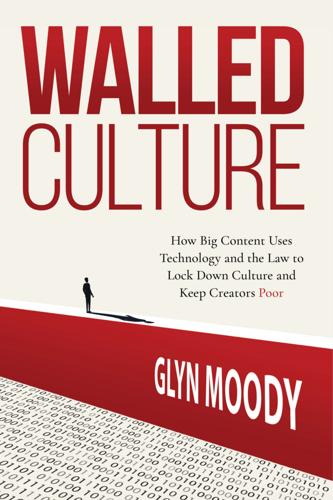
Walled Culture: How Big Content Uses Technology and the Law to Lock Down Culture and Keep Creators Poor
by
Glyn Moody
Published 26 Sep 2022
But the Web technology is so simple, that they didn’t build in any way that publishing has always worked, which is usually a publisher puts something out, and it goes into a bunch of different libraries such that if any of those go down, then you have the other copies. That’s not how the World Wide Web works. There’s only one copy and it’s on one server. And if that goes and changes, or goes down, then it’s not available at all.”91 In 2020, the Covid-19 pandemic added an extra relevance to mass digitisation projects. During times when physical access to libraries and museums was difficult or impossible, the digital versions offered a way for people anywhere to access materials. In early March 2020,92 HathiTrust began to work on what it came to call the ‘Emergency Temporary Access Service’ (ETAS),93 which was formally launched on 30 March that year.
…
By 2020, we can spark a new ‘Carnegie moment’ in which thousands of libraries unlock their analog collections for a new generation of learners, enabling free, long-term, public access to knowledge.”99 By 2022, the Open Libraries project had digitised 2.7 million books, and the Internet Archive had been operating its digital lending library for a decade. However, for 12 weeks during the spring of 2020, the Internet Archive’s system worked a little differently. The global Covid-19 pandemic forced libraries around the world to close their physical locations, and library patrons could not access the millions of books that libraries had bought from publishers. Libraries and schools across the globe reached out to the Internet Archive for help. Under those unprecedented circumstances, the Internet Archive lifted its one-to-one owned-to-loaned ratio (while retaining other controls, such as a two-week loan period and DRM to prevent copying and redistribution) and launched, along with over 100 library endorsements,100 the ‘National Emergency Library’ (NEL).
…
The American Library Association ‘denounced’ the move; its president, Wanda Brown, said: ‘Macmillan Publishers’ new model for library ebook lending will make it difficult for libraries to fulfill our central mission: ensuring access to information for all.’116 The association urged library customers of Macmillan to voice their objections. Less than a year later, in March 2020, Macmillan announced that it was abandoning the ebook embargo. Perhaps it was because of the backlash, or because Macmillan recognised that the public had a pressing need to access ebooks as a result of the Covid-19 pandemic. In a brief note addressed to ‘Librarians, Authors, Illustrators and Agents’, the company’s then-CEO John Sargent wrote: ‘There are times in life when differences should be put aside.’117 Maybe Macmillan also recognised that the ebook market for libraries was booming, and to put obstacles in the way of its titles was foolish—especially since the data showed ebook sales to the public were thriving.
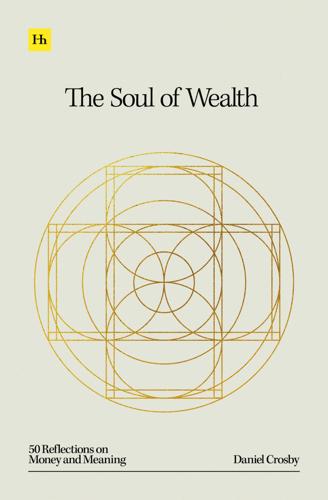
The Soul of Wealth
by
Daniel Crosby
Published 19 Sep 2024
Moreover, brain scan data indicated a surge of activity in reward-related regions associated with happiness. The findings suggest that such changes in the brain promote a positive feedback loop, thereby encouraging individuals to take part in further acts of generosity.5 Thus, there is something in our brain that craves giving and rewards actions that stimulate it. During the worst of the Covid-19 pandemic, giving rose 6% as the crisis unfolded, a trend that surprised some researchers.6 It begs the question: Was our innate desire to give an emotional response to the collective need for upliftment during those trying times? At the very least, it’s a conjecture that might help restore your faith in humanity.
…
Park, Thorsten Kahnt, Azade Dogan, Sabrina Strang, Ernst Fehr, and Philippe N. Tobler, “A neural link between generosity and happiness,” Vol. 8 Nature Communications (2017). 6 John F. Helliwell, Haifang Huang, Shun Wang Professor, and Max Norton, “Happiness, Benevolence, and Trust During COVID-19 and Beyond,” World Happiness Report (March 18, 2022). 7 L. B. Aknin, C. P. Barrington-Leigh, E. W. Dunn, J. F. Helliwell, J. Burns, R. Biswas-Diene, I. Kemeza, P. Nyende, C. E. Ashton-James, and M. I. Norton, “Prosocial spending and well-being: Cross-cultural evidence for a psychological universal,” Journal of Personality and Social Psychology, Vol. 104:4 (2013), 635–652. 8 Lara B.
…
There has been much debate in the more than 200 years since his An Essay on the Principle of Population was published. There’s no denying, however, that the world is in a pretty good spot when objectively analyzing key stats. Mr. Malthus would probably be shocked to learn that life expectancy today is more than 70 years old (even after the Covid-19-induced decline). Contrast that to just 28.5 years (33.3 for Europe) in 1800.146 Infectious diseases are much less a threat today, too. Smallpox, for instance, had been responsible for killing one-third of those who caught it. A vaccine brought about by innovation and technology had by 1980 nixed it as a major global danger.147 Maybe the most encouraging trend of all since Malthus’s days is child mortality.
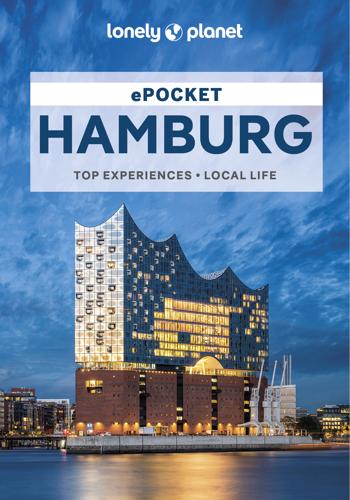
Lonely Planet Pocket Hamburg
by
Anthony Ham
Published 15 Nov 2022
Contents Plan Your Trip Hamburg’s Top Experiences Dining Out Bar Open Treasure Hunt Museums & Galleries Architecture For Kids Show Time Tours & Activities Under the Radar LGBTIQ+ Travellers For Free Four Perfect Days Need to Know Hamburg Neighbourhoods Explore Hamburg Altstadt Neustadt St Georg Speicherstadt & HafenCity St Pauli & Reeperbahn Altona & Elbmeile Survival Guide Survival Guide Before You Go Arriving in Hamburg Getting Around Essential Information Responsible Travel Language Behind the Scenes Our Writer COVID-19 We have re-checked every business in this book before publication to ensure that it is still open after the COVID-19 outbreak. However, the economic and social impacts of COVID-19 will continue to be felt long after the outbreak has been contained, and many businesses, services and events referenced in this guide may experience ongoing restrictions. Some businesses may be temporarily closed, have changed their opening hours and services, or require bookings; some will unfortunately have closed their doors permanently.
…
Always carry some with you and plan to pay cash almost everywhere. It’s also a good idea to set aside a small amount of euros as an emergency stash. The unit of currency in Germany is the euro (€). Euros come in seven notes (€5, €10, €20, €50, €100, €200 and €500) and eight coins (€0.01, €0.02, €0.05, €0.10, €0.20, €0.50, €1 and €2). COVID-19 At the time of writing, most travellers were required to complete a digital registration form prior to arriving in Germany, with proof of double vaccination status required for travellers from some destinations. Arrivals from a number of high-risk destinations was also restricted. With the situation constantly changing, please consult www.auswaertiges-amt.de/en/visa-service/EinreiseUndAufenthalt for the latest information.
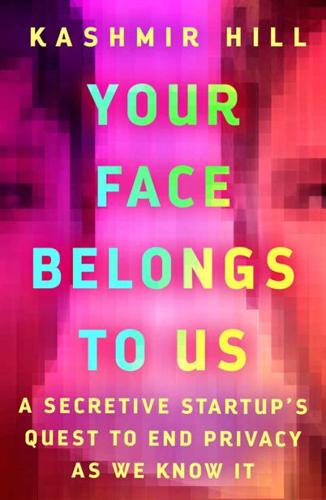
Your Face Belongs to Us: A Secretive Startup's Quest to End Privacy as We Know It
by
Kashmir Hill
Published 19 Sep 2023
Chapter 18 A DIFFERENT REASON TO WEAR A MASK At the beginning of January 2020, the same month that Clearview’s existence became public, the World Health Organization (WHO) reported a “cluster of pneumonia cases” in Wuhan, China. By the middle of January, scientists had identified the culprit, a virus they had never seen before, which they named SARS-CoV-2. The pneumonia-like disease it caused was named Covid-19. Within a day, the first case of Covid-19 outside China was recorded, in Thailand. By the end of January, there were nearly eight thousand cases worldwide and the WHO declared a state of emergency; it was an outbreak. In the months that followed, the virus spread around the world with alarming speed. Case numbers climbed.
…
A state representative in California, Democrat Ed Chau, tried to pass a bill that would have cleared the way for private companies and government agencies to use facial recognition technology to fight Covid-19. But that bill didn’t gain traction. No public contracts emerged indicating that Clearview was involved in pandemic-related work. What Clearview AI and many other facial recognition technology companies did instead during that time was to adapt their facial recognition systems, training them on images of people in surgical and N95 masks to ensure that their software would still be able to recognize those who cared to take Covid-19 precautions. The pressure on Clearview eased somewhat. All the media attention had caused controversy, but it had also made more law enforcement agencies aware of the company’s existence, resulting in new trials and new customers.
…
In March 2020, The Wall Street Journal reported that the company was “in discussions” with unnamed state agencies “about using its technology to track patients infected by the coronavirus.” The unverified claim sounded like startup hype, but it was true that the company’s software could theoretically be used for tracking people with Covid-19 and anyone they came into contact with. Reports emerged that South Korea, China, and Russia were tracking faces to try to control the spread of the virus. After traveling abroad, one Moscow resident was ordered housebound for two weeks; when a few days passed without symptoms, he decided to get some fresh air by going outside his building to take out the trash.

Portland Like a Local
by
DK
TRAVEL SAFETY INFORMATION Before you travel – and while you’re here – always keep tabs on the latest regulations in Portland, and the US. www.cdc.gov National public health institute offering disease prevention and guidance. www.travelportland.com/plan/safety-in-portland Regular safety updates on Portland, with information on crime, protests, COVID-19, police activity, and other concerns. https://govstatus.egov.com/OR-OHA-COVID-19 Oregon’s official COVID-19 website with information, updates, and resources. https://stateparks.oregon.gov Official site for Oregon’s state parks, with information on weather and hazards. www.travel.state.gov Latest travel safety information from the US government.
…
The best thing is, not only are the deep-fried bites totally vegan, they’re also made using local and, where possible, organic, non-GMO, and fair-trade ingredients. g Veggie and Vegan g Contents Google Map MAMA DÚT Map 3; 1414 SE Morrison Street, Buckman; ///safely.line.wiping; www.mamadut.com When COVID-19 struck, hairstylist Thuy Pham started making and selling vegan pork belly from her kitchen. The crispy-skinned goodness drove local vegans so wild, she was quickly able to open a brick-and-mortar restaurant selling her favorite Vietnamese dishes – all 100 percent vegan, of course. The place is always buzzing with plant-powered people, who pop by for plates of delicious chik’n fried oyster mushroom banh mi or pork belly steam buns. » Don’t leave without a bottle of one of Pham’s incredible drinks, such as passion fruit limeade or Thai tea lemonade.
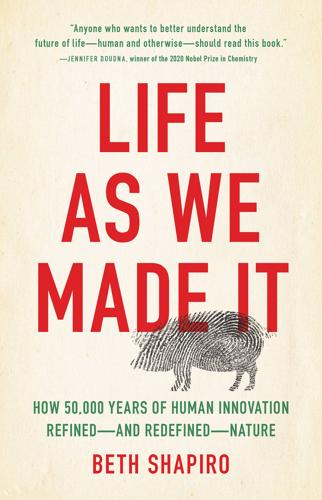
Life as We Made It: How 50,000 Years of Human Innovation Refined--And Redefined--Nature
by
Beth Shapiro
Published 15 Dec 2021
Scientists also discovered that some people who contracted SARS-CoV-2 were less likely than others to become seriously ill because of genetic variants that they inherited from their parents, similarly to how people who inherit two copies of the CCR5 variant inherit immunity to HIV-1. COVID-19 is not the deadliest infectious disease currently circulating nor was it the deadliest of pandemics that humans have experienced. But it was the first pandemic that we characterized genetically in real time. We watched the virus evolve, detected the emergence of more virulent strains, and tracked the spread of these strains across the globe. We learned to control COVID-19 using existing interventions: quarantine, therapeutics, and vaccines. But what if that had failed? What if the virus had been more deadly, or spread more quickly?
…
On the Origin of Species by Means of Natural Selection, or Preservation of Favoured Races in the Struggle for Life. London: John Murray. Drahl C. 2018 June 15. Plastics recycling with microbes and worms is further away than people think. Chemical and Engineering News 96. Ellinghaus D et al. (Severe Covid-19 GWAS Group). 2020. Genomewide association study of severe COVID-19 with respiratory failure. New England Journal of Medicine 383: 1522–1534. Gong Z, Wan H, Leng Tay T, Wang H, Chen M, Yan T. 2003. Development of transgenic fish for ornamental and bioreactor by strong expression of fluorescent proteins in the skeletal muscle. Biochemical and Biophysical Research Communications 308: 58–63.
…
Should this happen, there will probably be renewed outcries, renewed calls for increased oversight, renewed worries about a future where designer babies are born with traits that give them an unfair advantage in life. But we will also be slightly less surprised than we were in 2018, and slightly more inured to the idea of gene-edited humans. We also may be compelled to adopt riskier technologies by crises that emerge from outside our own actions. The COVID-19 pandemic that emerged in China in late 2019 and then spread rapidly throughout the world killed millions of people, disrupted global economies, and overwhelmed health care systems. Because the virus spread between people via aerosol droplets, it also forced us to rethink nearly every part of our society.

The Measure of Progress: Counting What Really Matters
by
Diane Coyle
Published 15 Apr 2025
United Nations. https://unstats.un.org/UNSD/nationalaccount/RAdocs/ENDORSED_DZ8 _Cloud_Computing.pdf UN System of Environmental-Economic Accounting. (2012). https://seea.un.org/ UN Trade and Development. (2022, April 25). COVID-19 boost to e-commerce sustained into 2021, new UNCTAD figures show. UNCTAD. https://unctad.org/news/covid-19-boost-e -commerce-sustained-2 021-new-unctad-f igures-show#:~:text=In%202019%2C%20 these%20companies%20made,trillion%20(in%20current%20prices) UN, European Commission, IMF, OECD, and World Bank. (2009). System of national accounts 2008.
…
Awareness of the damage now being caused by climate change has grown, now that parts of the world that are reported in global media (the West Coast of the United States, eastern Australia) are visibly burning b ecause of drought and high winds. More and more of us are becoming aware of the threat to food supplies and human health caused by loss of biodiversity and h uman encroachment on habitats, thanks to crop failures or zoonotic diseases like Ebola and COVID-19. In the years and d ecades ahead, there will be reduced potential growth, higher prices, and more disasters like destructive wildfires, hurricanes, floods, and epidemics. In the rich countries the relative share of economic value that is non-material has been rising (as described in Chapter 1), but the world is increasing its demand on natural resources in absolute terms.
…
Such studies—and more importantly, better natural capital statistics at a range of spatial scales—could help inform private and public investment decisions: Why build costly concrete urban flood defences if trees planted upstream and a safeguarded wetland downstream could provide similar flood protection and also deliver other services from biodiversity to leisure amenities (United Nations 2012)? Why allow air pollution to continue to cost so many lives, as well as imposing costs through the need for more treatment of respiratory diseases such as childhood asthma or COVID-19? Natural capital data can also be important at a very local scale. The ONS (2019b) has estimated that being 100 meters from an urban green space added over 1 per cent to home prices compared with dwellings 500 meters away; it provides popular interactive tools that p eople can use to explore their neighborhood’s natural capital. 224 Ch a p t er E ight Investment and resource allocation decisions w ill be inefficient if they ignore some of the assets in the national portfolio.
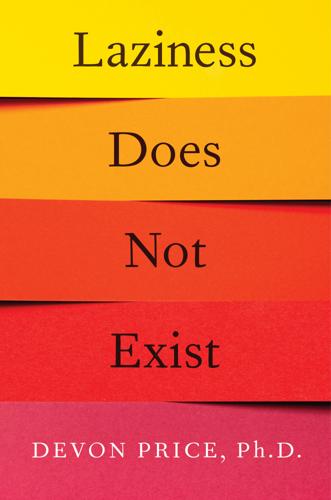
Laziness Does Not Exist
by
Devon Price
Published 5 Jan 2021
People placed loving but firm pressure on those who refused to socially distance. This swift, expansive response rose up in a matter of days and took effect long before our state and local government started requiring us to isolate. Like climate change, COVID-19 began as a mostly abstract fear. Like climate change, the virus was terrifying to think about, and we knew serious damage was inevitable. The news presented us with dozens of apocalyptic-seeming projections of how the COVID-19 disaster might play out, just as they do with climate change. Yet individual people rapidly started making responsible, altruistic choices to address the pandemic, despite having spent years doing comparatively little to address climate change.
…
We’ve had to trade our health for our financial or professional well-being, choosing between getting adequate time for rest, exercise, and socializing and logging enough hours to get by. Tragically, many of us do this not out of paranoia but because we know just how economically vulnerable we really are. An international disaster like COVID-19 only convinced Michael he was smart to have overworked as much as he did in the past. If he hadn’t, he would have had an even smaller financial nest egg to survive on. Chronic overcommitters are experts at ignoring their bodily needs. Our economic system and culture have taught us that having needs makes us weak, and that limits are negotiable.
…
Point to evidence of it in your own workplace—remind leadership of times when employees were happy and effective because they weren’t being pushed too hard. If you don’t have the power to influence a boss, educate your coworkers and friends about these facts, and consider organizing a union. The more informed people are, the more they can move toward an “evidence-based” workplace. 2. Ask for Flex Time and Remote Work Options The outbreak of COVID-19 left many people working from home for the first time in their careers. The shift online was a drastic and sudden change for a lot of organizations, but it demonstrated in a stark way that flexible schedules and telework can be just as effective as coming into the office. At this point in history, every organization needs to be open to unconventional work systems and schedules.
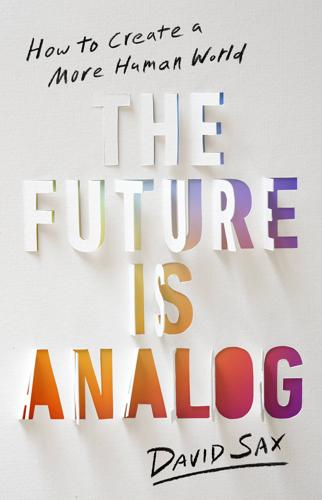
The Future Is Analog: How to Create a More Human World
by
David Sax
Published 15 Jan 2022
Each time the individuals in these groups discussed COVID-19 during the early months of 2020, they exchanged important information, which changed group and individual behavior. You met your friend in the dressing room before the hockey game, saw them wearing a mask, and asked them why; they explained about airborne virus spread, and you began wearing a mask. These everyday conversations are the ways most people receive their news about life, and American states that had more social associational life than others saw 20 percent lower excess mortality from COVID-19. “The entire [positive] effect of social association is about conversation at large,” Stone said.
…
This future, made possible by artificial intelligence, big data, mobile computing, the internet, electric cars, smart scooters, virtual reality, and blockchain, would make us happier, healthier, smarter, richer, and just better-off. And then one day, just like that, our digital future arrived. Late in 2019, a sick bat emerged from its cave somewhere in China, pooped near a pangolin (or some other creature), and set off a chain of events that none of the tech oracles predicted (except Bill Gates). The COVID-19 pandemic happened so suddenly and so completely that few people even realized the scope of what they were experiencing. On Wednesday we were dropping our kids off at school, heading into the office, going out for lunch, and seeing a play after dinner; by Saturday we were assessing how many cans of beans we owned and which sourdough recipe was the simplest, while figuring out how to simultaneously stream a yoga class through the television, take a conference call in the closet, and get our kids enough digital devices to do school and play Roblox all day long.
…
Journalistic exposés of Amazon’s draconian working conditions have highlighted everything from abusive corporate environments, in which office employees are openly berated by coworkers for their faults or terminated for developing cancer or getting pregnant, to deadly conditions in Amazon’s huge warehouses, where injuries and exhaustion are rampant, workers pee in corners because they literally have no time to walk to a restroom, product pickers down painkillers like candy, and ambulances wait outside during heat waves to whisk off those who drop like flies. Amazon warehouses were frequent sites of COVID-19 outbreaks, leading to countless instances of illness, hospitalization, and even death. At one point, health officials had to close one of the biggest Amazon warehouses outside Toronto because the spread of the virus by its workers was devastating the surrounding community. The human cost of Amazon’s singular vision of commerce’s digital future does not come from some sadistic desire of Jeff Bezos to inflict pain on workers, suppliers, and others for his own pleasure.
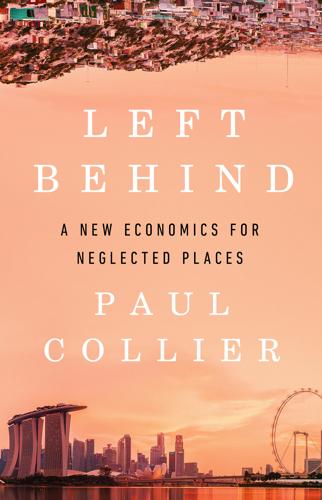
Left Behind
by
Paul Collier
Published 6 Aug 2024
Embarrassingly, the happy answers to the wrong question were published just as many of the poorest countries were diverging faster than ever as the poly-crisis ripped into them. The shock of the new? Both the bleak overall picture and the evidence from heroic exceptions warranted decisive and timely action. Instead, what arrived was the poly-crisis. COVID-19 struck in January 2020, followed by climatic shocks, acute international tensions over Taiwan, the war in Ukraine and the conflict between Hamas and Israel. It became a world dominated by uncertainty in which governments needed to take reassuring actions that restored confidence. In the lucky billion these exceptional shocks were cushioned by drawing down a little of the enormous national wealth they had accumulated over previous decades.
…
People were mobilized into teams that cleared the rubble, literal and metaphorical, participating in a practical communal purpose unattainable by individual effort. Fortuitously, US President Harry Truman sought advice from social psychologists on how Germans might embrace a post-Nazi future. Although the discipline was in its infancy, its core advice was already a rudimentary synthesis of the COVID-19 analysis and the ideas of Roger Myerson.ii Agency should lie with Germans, not Americans; leaders should emerge through a carefully controlled process of devolved democracy in which only anti-Nazi Germans should be permitted powers of mass communication.iii Rapid learning from devolved experiments in parallel would gradually help Germans to renounce the cult of the all-knowing commander-in-chief, replacing it with localized identities guided by communicators-in-chief.
…
After decades in which management had rewarded itself with corporate jets and big bonuses while adopting confrontational, top-down relations with workers, many of those on the production line would have gleefully pulled those cords and brought GM to a standstill.iii The CEO of Toyota achieved in the corporate context what Mette Frederiksen’s approach to COVID-19 achieved in the context of governance: people rallied around a new common purpose that they recognized as worthwhile. Toyota was able to devolve the search for faults for the same reason that Mette Frederiksen was able to devolve the containment of contagion: they had governed in an inclusive manner that won trust.
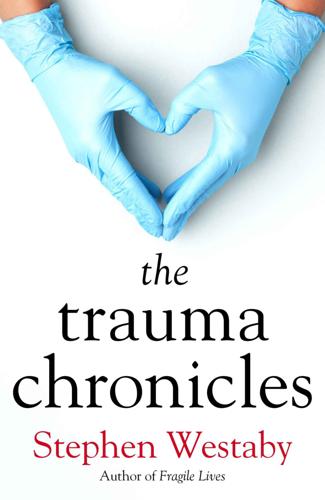
The Trauma Chronicles
by
Westaby, Stephen
Published 1 Feb 2023
So called ‘permissive’ low blood pressure became acceptable in trauma patients in order to avoid the lethal triad of clotting disturbances, hypothermia and metabolic derangement caused by the original ATLS guidelines. To pour in fluids as soon as possible was never the right thing. It was well intentioned but naïve. Like mechanical ventilation for Covid-19 patients, it damaged more patients than it saved. So ‘permissive hypotension’ simply aimed to maintain a pre-surgery blood pressure averaging 65 mm Hg, just enough for a palpable pulse at the wrist and the same as my cardiac patients on the bypass machine. Should fluids be required for lower pressure they should be blood based products to maintain clotting, not clear fluids to destroy it.
…
After shaking hands vigorously I departed to find some traditional dolls for my granddaughters, then my flight home beckoned. A short, and as it turned out, an eventful trip. It was mid-January when I received a polite follow up call from the conference organisers who were curious to know whether I had been ill? I hadn’t but my wife and son certainly had two weeks after I arrived home. By then, Covid-19 had its name and would become familiar to virtually every person in the world. China had ordered a draconian lockdown of Hubei Province enforced by police and the military. I received pictures of the vast conference hall, which was now home to several hundred makeshift hospital beds. Moreover, Wuhan built a huge new Covid isolation hospital in just two weeks and were soon running fifty ECMO systems continuously for their sickest patients.
…
Having negotiated personally with the Prime Minister, Sir James Dyson wasted £20 million in his efforts. Incidentally, when we sought his help to improve battery technology for our British artificial heart we were simply ignored. Sure enough the knee jerk approach to sick patients was soon contributing to the UK’s poor survival rates. The Covid-19 Hospitalisation in England Surveillance System actually showed the intensive care unit of admission to be a risk factor for death equally as strong as older age, pre-existing heart disease, and the presence of pre-existing immunosuppression. On Friday 4 September 2020, the Daily Telegraph wrote: ‘Intensive care death rates dropped as doctors rejected ventilators.’
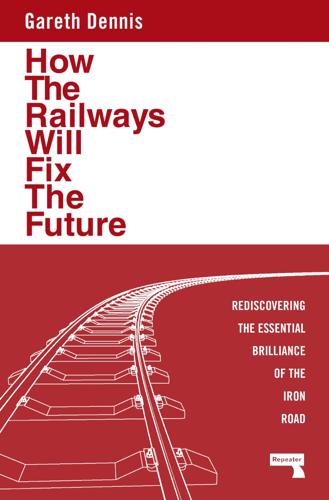
How the Railways Will Fix the Future: Rediscovering the Essential Brilliance of the Iron Road
by
Gareth Dennis
Published 12 Nov 2024
By facilitating the flow of people around the globe and raising living standards in areas currently exploited for cheap labour, these effects can be mitigated by an enhanced global railway system. Instead, widening transport poverty and inequality — in many cases worsened by the permanent reduction of public transport services following the COVID-19 pandemic — now present another facet of the problem. The cost of moving around is a burden for those trying to access employment, education and — even today — clean water and food. Access to public services, too, is limited by car dominance and dependence. It is imperative, therefore, that safe, accessible and frequent public transport options are available for everyone, globally.
…
Hopping back over to Europe, and to a country often (falsely) associated with reliable railways, Germany had its rail network shut down in March and April 2023 as striking workers walked out. Prior to the strikes, 2022 saw Germany only running two-thirds of its trains on time. Things have only gotten worse since. In the aftermath of COVID-19, and with an ever-ageing population, Japan’s railways faced the shutdown not just of rural lines but of some of its main line services as persistent low uptake tipped the balance of subsidy in a direction the central government did not like, and the perception of rail as an unalloyed good was shaken.
…
Crossrail, also known as the Elizabeth line, now accounts for around one in five rail journeys in the UK. That’s one new railway, fully opened only a year or so ago, replacing millions of journeys that would have otherwise have been by car. In the US, the demand for rail has been climbing year on year, even accounting for the impact of the COVID-19 pandemic. Ridership and revenue are now at record levels. This is despite passenger rail being embarrassingly sparse outside the Northeast Corridor between Boston and Washington. Polling consistently shows that there is cross-party consensus that railways are important, with favourability usually balanced between 90% or more for Democrats and 60% or more for Republicans.

Investing Amid Low Expected Returns: Making the Most When Markets Offer the Least
by
Antti Ilmanen
Published 24 Feb 2022
To be fair, I – and many other so-called experts – have been warning about low expected returns for a while, but especially the US markets kept delivering quite generous returns through the 2010s. What gives? Rich assets got richer as their discount rates fell. Forward-looking returns appear low compared to history wherever we look, and have done this for a long time. The GFC of 2008 brought global policy rates and bond yields to extremely low levels for a decade, and the more recent Covid-19 crisis of 2020 might ensure that they will remain low for long. It is wrong, however, to think that the low expected return challenge applies only to bonds; it is relevant for all asset classes. Low starting yields are most visible for government bonds, but we see for all asset classes (corporate bonds, equities, real estate, private equity) historically low yields and/or above-average valuations.
…
Among the six European states, only France existed when the time series began, so the loans in the early sample were to some rulers, princes, or cities. As capital markets evolved over time, loans were replaced by tradeable bonds, and for the past century, the dataset covers 10-year government bonds. Earlier, loan/bond maturity and credit quality varied over time and across countries. After the Covid-19 crisis, even larger monetary and fiscal stimulus than seen after 2008 has revived inflation concerns. As long as economies are weakened by the virus and the lockdown effects or by precautionary saving, inflation pressures should be muted. But as economies normalize, some of the trends that kept a lid on inflation in the 2010s may give it an extra push in the 2020s (retreat from globalization, efficient supply management replaced by quest for buffers, political backlash to market capitalism and quest for redistribution, central bankers' greater openness to more inflation, and even demographics as the number of workers per retirees is declining).
…
The presumption is that the dominating disrupters will not themselves be disrupted either by upstart competitors (which they can buy) or by policymakers/regulators (which they can influence with their vast cash pools and increasing political power). The shift from a physical world to a digital/virtual world was accelerated by Covid-19 and lockdowns, further aiding these companies. Table 2.1 Decadal Perspective of Realized Asset Class Returns (Geometric Mean Premia), 1921–2020 Sources: AQR, Bloomberg. Notes: Compound average excess returns over cash for several asset classes. S&P500, NASDAQ and Tsy10 are US equity and bond indices.
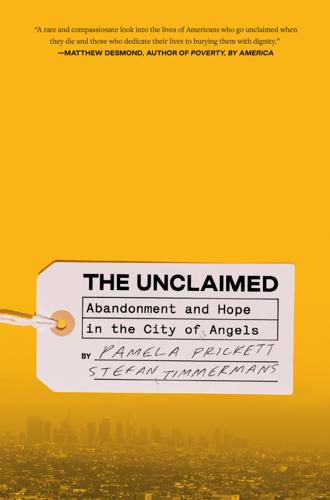
The Unclaimed: Abandonment and Hope in the City of Angels
by
Pamela Prickett
and
Stefan Timmermans
Published 11 Mar 2024
GO TO NOTE REFERENCE IN TEXT social distancing and lockdowns Alex Bierman and Scott Schieman, “Social Estrangement and Psychological Distress Before and During the COVID-19 Pandemic,” Journal of Health and Social Behavior 61 (2020): 398–417; Richard Weissbourd et al., “Loneliness in America: How the Pandemic Has Deepened an Epidemic of Loneliness and What We Can Do About It,” Making Caring Common Project, Harvard University, February 2021. GO TO NOTE REFERENCE IN TEXT “When adult children don’t contact you” Quoted in Lucy Blake et al., “Family Estrangement and the COVID-19 Crisis: A Closer Look at How Broken Family Relationships Have Been Impacted by the COVID-19 Crisis,” standalone.org.uk, 2020. GO TO NOTE REFERENCE IN TEXT policymakers use life expectancy Mark Luy et al., “Life Expectancy: Frequently Used, but Hardly Understood,” Gerontology 66 (2019): 95–104.
…
The increase means that hundreds more residents every year end up in the Boyle Heights mass grave. In Maryland, one of the few states to keep track of unclaimed deaths over time, the percentage of people going unclaimed, adults and infants, has more than doubled in twenty years, from 2.1 percent of total deaths in 2000 to 4.5 percent in 2021. COVID-19 made things worse. Medical examiners and coroners estimate that the number of people going unclaimed rose nationwide during the pandemic, resulting in as many as 148,000 unclaimed deaths each year. An investigation in Arizona’s Maricopa County, the fourth-largest county in the United States, revealed a 30 percent spike.
…
On paper these families are still a unit, but they no longer support one another. In many cases, families are sundered by the government, through incarceration or the foster care system. When the state permanently severs parent-child relationships, the law renders estrangement legally binding. The COVID-19 pandemic has only exacerbated these trends toward disconnection. Surveys taken before and after the pandemic showed that social distancing and lockdowns led to community distrust and isolation even after lockdowns ended, especially for the middle-aged and elderly, who were already vulnerable. At precisely the moment when we could have collectively benefited the most from social support, the number of social interactions plummeted.

The Undertow: Scenes From a Slow Civil War
by
Jeff Sharlet
Published 21 Mar 2023
Or, at least, a sufficient veneer of “all” to reassure its more timid adherents that border walls and “Muslim bans” and “kung flu” and “Black crime” and “replacement theory” somehow do not add up to the dreaded r-word, which anyway these days, in the new authoritarian imagination, only happens in “reverse,” against White people. Such victims feel themselves drawn together not by Whiteness but by that of which it is made. By their belief in a strongman and their desire for an iron-fisted God and their love of the way guns make them feel inside and their grief over Covid-19 and their denial of Covid-19 and their loathing of “systemic” as descriptive of that which they can’t see, can’t hold in their hands and weigh, and their certainty that countless children are being taken, stolen and raped, or if not in body then in spirit, “indoctrinated” to “hate themselves.” They are angry about their own bodies, about how other people’s bodies make them feel, about eating too much because they’re afraid they won’t have enough, about not having enough, about others having more.
…
“Red-pilling” has been adopted as a meme not only by MRAs but also by White nationalists, despite the film’s radical commitment to genderfluid multiculturalism. “Fuck both of you,” Matrix co-director Lilly Wachowski told Ivanka Trump and billionaire troll Elon Musk when they Tweeted their “red-pilled” status to each other in an apparent expression of contempt for Covid-19 protocols. 3 Within the manosphere, Farrell passed as a gentle character. In his daylong pre-conference workshop, he asked attendees to make massage circles, to close their eyes and think of their fathers, to role-play explaining manly needs to the one woman in the session. A cover of one edition of The Myth of Male Power depicted its title in big red letters over a shadowy photograph of a naked woman, the “POWER” said to belong to men breaking into pieces against her buttocks.
…
Wouldn’t that give it away? “Take it as a whole,” Dave said. All of it—virus, rapists, child murderers. How they conspired against Trump. Weren’t they winning? Not at all. This was the plan. “He wants to discipline us,” Dave said. He, in this instance, meant not Trump but his father: God. Like Trump, Covid-19 was an instrument of His will, and He had allowed the virus as a punishment for our “corporate” sin. Corporate as in corpus, the body, the nation as one flesh and its failure, as a nation, to fully embrace Him and his messenger, Trump. But there was good news. God had given us a chance to redeem ourselves: “We could use this as an opportunity to purge.
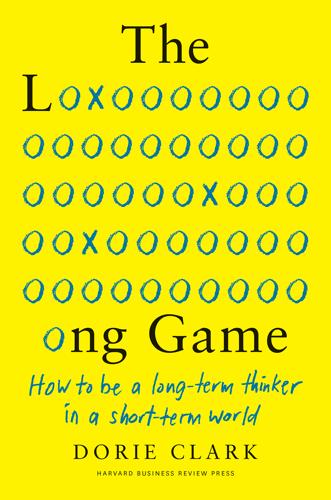
Long Game: How Long-Term Thinker Shorthb
by
Dorie Clark
Published 14 Oct 2021
But to create the kind of interesting, meaningful lives that we all seek, they’re essential—and it’s time to embrace them. On February 28, 2020, my email pinged. “I’m delighted to report that we would love to publish the book,” my editor wrote. The Long Game was on. The very next day—March 1, 2020—the first case of Covid-19 was diagnosed in New York City, where I live. During the early days of lockdown, a colleague messaged me about my book project. I had set out to write about the importance of being a long-term thinker in a short-term world. But in light of Covid, he wondered, wasn’t long-term thinking a little passé?
…
The CEO of a marketing and innovation consulting firm, Zach had always had a passion for literature. “It was always my favorite class in high school and college, and the teachers inspired me to live my best life,” he recalls. But as a busy CEO, he didn’t have time to read as much as he might like—and even if he did, it wasn’t clear who would be willing to discuss it with him. But the Covid-19 pandemic made something very clear to him. “In the quarantine, the grind of daily routines, anxiety, working from home, higher stress, constant changes, and seeing people less really took its toll on me,” he says. “I knew I needed to do what I loved, and too often I made compromises—focusing on the urgent over the important.”
…
Next, we’d go around the table to do introductions, break for a few moments when dinner arrived to allow the server to distribute the meals, and then go around the table once more with a more introspective question everyone could answer, such as “What are you proudest of this year?” or “What are you looking forward to in the fall?” or “What’s the most surprising lesson you’ve learned in the past few years?” I’ve now hosted more than sixty dinners with hundreds of attendees and over time have built a reputation as a connector in a city where I hardly knew anyone. During Covid-19, I shifted the format to virtual and began hosting them over Zoom with my friend Alisa Cohn (the executive coach/freestyle rapper from chapter 3), which enabled us to preserve the general format but with the added opportunity to invite guests from around the world. Not everyone you invite will become your best friend.
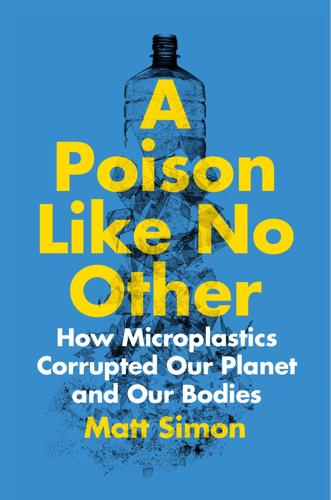
A Poison Like No Other: How Microplastics Corrupted Our Planet and Our Bodies
by
Matt Simon
Published 24 Jun 2022
“Overview on the Occurrence of Microplastics in Air and Implications from the Use of Face Masks During the COVID-19 Pandemic.” Science of the Total Environment 800:149555. https://doi.org/10.1016/j.scito tenv.2021.149555. 43. Li, Lu, Xiaoli Zhao, Zhouyang Li, and Kang Song. 2021. “COVID-19: Performance Study of Microplastic Inhalation Risk Posed by Wearing Masks.” Journal of Hazardous Materials 411:124955. https://doi.org/10 .1016/j.jhazmat.2020.124955. 44. OceansAsia. 2020. “COVID-19 Facemasks and Marine Plastic Pollution.” https://oceansasia.org/covid-19-facemasks/; Wang, Zheng, Chunjiang An, Xiujuan Chen, Kenneth Lee, Baiyu Zhang, and Qi Feng. 2021.
…
Given how difficult and expensive it is to test for nanoplastics, though, that remains an assumption. “But it’s a very reasonable one,” says Dris. So unless you work in a factory making synthetic textiles, the most polluted place you frequent may be the room you’re sitting in right now. (Wearing face masks during the COVID-19 pandemic has had contradictory effects here.42 The synthetic material keeps out both the virus and microplastics swirling in indoor air but also sheds fibers for us to inhale.43 Don’t get me wrong—that is far and away a better outcome than eschewing masks and getting COVID. But disposable masks are now all over the environment: a study estimated that in 2020 alone, 1.5 billion masks may have entered the oceans, and another found that one of those masks releases 1.5 million microplastics as it decomposes.44) All of it’s coming from the towels we wipe our hands with and the clothes we wear and the couches we plop down on and the carpets we tread—just look at the sunlight coming in through a window and you can watch airborne microfibers dance in the beam.
…
See bisphenol S Brahney, Janice, 1–3, 19, 111–116, 118, 120 brain, 152–154 Brander, Susanne, 64–65, 67 Brandon, Jennifer, 49 Brazil, 30 caddisflies, 80 cadmium, 22 California, 106–107 cancer, 130–137, 144 Captain Trash Wheel (barge), 81 carbon chains, 15–24 carbon footprints, 157 carbon sequestration, 61 carbon-carbon bonds, 16 carcinogens, 133–137 Carpenter, Edward, 41–42 carrots, 100 causation, correlation vs., 135 celluloid, 10 cellulose, modified, 50 cellulose acetate, 82 cellulose nitrate, 10, 82 cetaceans, 63–64 Charleston, South Carolina, 29, 35 chickens, 103 children bottles and, 4, 107–108 BPA and, 139 eliminating lead in products for, 164–165 endocrine-disrupting chemicals and, 144–146 extra risks to, 4, 127–128 lungs of, 135–136 polyvinylchloride and, 16 Chile, 87 China, 92, 104, 107, 160 Choy, Anela, 53–54 cigarette butts, 82 cilia, 130 climate change, 7–8, 162 clothing fast fashion and, 32, 158–159 life cycle of fiber in, 58–60 oceans and, 46 overview of problems of, 32–38 solutions for, 163 clotting, 148–149 clouds, 121–122 Coastal Conservation League, 29 coating solutions, 162 coffee cups, 108 Coffin, Scott, 106–107, 157 cognitive problems, 135–136 coho salmon, 77–80 Cole, Matthew, 46–47, 74 collodion, 10 colonialism, 160 consumption, estimates of total, 130 contamination of microplastic samples, 26 copepods, 61–62 corals, 68–69 correlation, causation vs., 135 cosmetics, 13–14, 151 cotton, 32, 50, 158 Couceiro, Fay, 38, 127, 137 COVID-19 pandemic, 128 crops, 85–90, 98–103 cruise ships, 47 crustaceans, 66–67, 73 currents, 43, 62 index dairy, 104 Danopoulos, Evangelos, 104, 105 DDT, 133 definition of microplastics, 24–25, 31 dementia, 135–136 Denmark, 47, 104 DES. See diethylstilbestrol detergents, 34 Díaz Sánchez, Laura, 159 DiBenedetto, Michelle, 43 diethylstilbestrol (DES), 143 digestive tract, 150–151 dinoflagellates, 60 dirt, 93–98 dispersing agents, detergents as, 34 drinking water, 105–110, 158 Dris, Rachid, 126, 128 drought, 89 dryers, 129 Dusza, Hanna, 145–146 earthworms, 93–94, 100 Easter Island, 56–57 economics, 17, 157–162 Ecuador, 104 EDC.
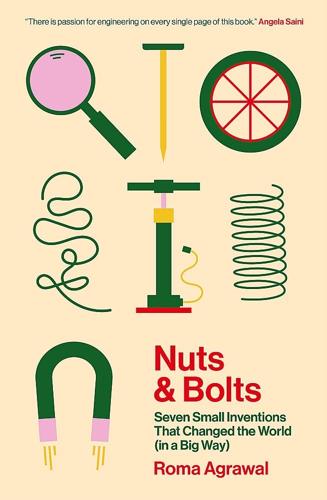
Nuts and Bolts: Seven Small Inventions That Changed the World (In a Big Way)
by
Roma Agrawal
Published 2 Mar 2023
https://www.businessoffashion.com/videos/news-analysis/voices-talk-alok-v-menon-gender-clothes-fashion/. Clase, Catherine, Charles-Francois de Lannoy, and Scott Laengert. ‘Polypropylene, the Material Now Recommended for COVID-19 Mask Filters: What It Is, Where to Get It’. The Conversation, 19 November 2020. http://theconversation.com/polypropylene-the-material-now-recommended-for-covid-19-mask-filters-what-it-is-where-to-get-it-149613. Edden, Shetara. ‘High-Tech Performance Fabrics To Know’. Maker’s Row, 12 October 2016. https://makersrow.com/blog/2016/10/high-tech-performance-fabrics-to-know/. Firth, Ian P.
…
Willson, Tayler. ‘Meet the Emerging Brand Making Sneakers From Coffee Grounds’. Hypebeast, 12 August 2021. https://hypebeast.com/2021/8/rens-sneaker-brand-coffee-grounds-sustainability-interview-feature. World Health Organization. ‘Coronavirus Disease (COVID-19): Masks’. 5 January 2022. https://www.who.int/news-room/questions-and-answers/item/coronavirus-disease-covid-19-masks. ‘Wool: Raw Wool Specification’. Encyclopedia of Polymer Science and Technology, Wood Composites, vol. 12. Wragg Sykes, Rebecca. Kindred: Neanderthal Life, Love, Death and Art. Bloomsbury, 2020. Pump 1001 Inventions. ‘5 Amazing Mechanical Devices from Muslim Civilisation’.
…
The blender I used to make my baby’s food relied on gears, which in turn couldn’t exist without the wheel. Before that, when I was breastfeeding, a breast pump allowed my husband to feed our daughter, too. The process of IVF I went through in order to make the embryo that grew into her, and the research on creating Covid-19 vaccines, relied on a lens to see things on a cellular scale. The protective masks we wore during our short walks, and that kept medics safe, were formed of countless fibres twisted together to form fabric. The speaker on my phone through which I could hear the voices of my family and friends relied on a magnet, as did the ethernet socket that gave me access to the internet.

Collision Course: Carlos Ghosn and the Culture Wars That Upended an Auto Empire
by
Hans Gremeil
and
William Sposato
Published 15 Dec 2021
It made France the most heavily state-dependent economy in Western Europe, representing 23 percent of the country’s workforce.4 The moves would be partly reversed starting in the late 1980s by Jacques Chirac, with further privatizations by subsequent governments. Despite this, even in the pro-business Macron era, the state retained shareholdings in many large companies that were viewed as strategic, and the idea of at least temporary nationalization was revived in the COVID-19 pandemic in 2020 to protect France’s biggest companies. * * * In the case of Renault, the French government’s interventions were in many ways a root cause of the turmoil that would lead to Ghosn’s downfall and poison Alliance relations even after his ouster. The corporate history of Renault is a typical one for major French companies.
…
The term again found prominence during the wave of Westernization that swept Japan after World War II, thanks to the US military occupation and its imposition of a new constitution. More recently, gaiatsu manifested itself in Japan’s reluctant, last-minute decision to postpone the 2020 Tokyo Summer Olympics in the face of mounting international concern about convening the global sports cavalcade during the COVID-19 pandemic. Prime Minister Abe stubbornly insisted the games go on—until overseas Olympic committees, led by Canada and Australia, began canceling plans to attend. Only after international pressure forced the postponement did Japan grudgingly sound a serious alarm about the domestic spread of the virus and issue its own state of emergency like in other nations.
…
Nissan’s operating profit dove 99 percent in the April–June quarter of 2019, and it fell another 70 percent in the July–September period. By the end of that fiscal year, on March 31, 2020, Nissan booked its first net loss in eleven years, the worst loss since Ghosn’s first year at the company in 1999. By early 2020, Nissan’s earnings were being throttled by the COVID-19 pandemic, as dealerships worldwide closed their doors and customers from Beijing to Los Angeles were forced to stay at home under lockdown. Looking ahead, Nissan forecast its worst-ever operating loss in the fiscal year ending March 31, 2021. But the reality was Nissan’s business was already in brisk decline before the pandemic.

Frostbite: How Refrigeration Changed Our Food, Our Planet, and Ourselves
by
Nicola Twilley
Published 24 Jun 2024
The cold chain—as the network of warehouses, shipping containers, trucks, display cases, and domestic fridges that keep meat, milk, and more chilled on their journeys from farm to fork is technically known—has become such an essential part of our food system that it is taken for granted. Its extent and operations are opaque even to our elected leaders. During the early days of the COVID-19 pandemic, as supermarket shelves emptied, one industry expert told me that he received a frantic call from a senior official in the British government, asking how many refrigerated trucks and warehouses the country’s food supply depended on. This inadvertent blind spot is a big—and dangerous—mistake.
…
In between all the doomscrolling, trolling, and ghosting, fridge peeping is one of the more popular online pastimes. Within hours of Twitter launching its short-lived Periscope live streaming app in 2015, the majority of channels were besieged by requests for refrigerator tours. In the early months of COVID-19, TikTok users fell for the “fridge challenge,” which consisted of filming yourself taking something unexpected, like a shoe, out of your fridge; today they’re more likely to spend hours watching fridge restocking videos. On Instagram, wellness influencers post “fridgies,” showing off perfectly labeled Tupperware and color-coded juices.
…
According to Madeline Drexler, visiting scientist at the Harvard T.H. Chan School of Public Health, “this leads to a new, insidious kind of epidemic: one with low attack rates…but huge numbers of dispersed victims.” Still, diarrhea no longer even ranks in the top ten causes of death in the United States. With the exception of deaths from COVID-19 and accidents, most Americans now die of heart disease, cancer, cirrhosis and chronic liver disease, diabetes, and Alzheimer’s. These maladies are frequently related to what we eat: the sugar-, fat-, and red meat–centric “Western pattern diet.” It’s easy to see how refrigeration would bear some responsibility for the red meat part of the equation.
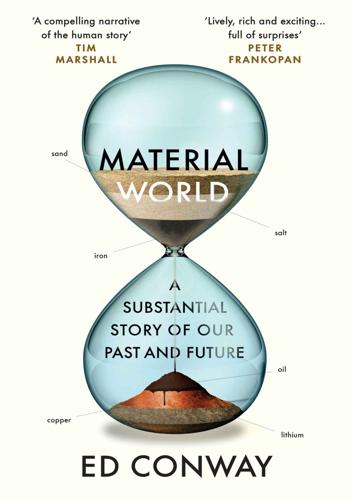
Material World: A Substantial Story of Our Past and Future
by
Ed Conway
Published 15 Jun 2023
Unlike regular glass, which when exposed to potent chemicals can leach small particles into the liquid, borosilicate glass remains chemically inert, making it the perfect material for test tubes, lab beakers and medical vials. The one thing almost every medicine or vaccine in history – including those developed for COVID-19 – has in common is the borosilicate containers in which they were worked on, stored and transported. But we tend not to pay much attention to these kinds of things until we run short of them. That was certainly the case with borosilicate glass, which received a sudden flurry of interest in the wake of the COVID pandemic, amid worries that the main thing holding back the distribution of vaccinations might not be the pharmaceuticals themselves but the containers in which they would be shipped.
…
After all, there are hundreds of elements, compounds and materials that play important roles in producing the products we rely on and the services we need in the modern world. Boron never featured on any pandemic preparedness plan, yet getting hold of enough has proved central to the effort to produce and distribute a vaccine for COVID-19 – no easy task given boron is mostly found in a handful of spots with volcanic activity and an arid climate. Nearly a third of the global reserves are in Turkey, with other supplies located in the deserts of California and the Far Eastern reaches of Russia. Moreover borates, the salts in which the element is found, have plenty of other uses: they are an ingredient in fertilisers, helping seed development and crop yield; they help preserve wood by protecting it from insects and fungal decay.
…
Otto Schott was a German chemist who spent much of his life experimenting with ways to improve glass, adding elements from the periodic table to a molten mix, one by one, to see what kinds of effects they would elicit. It was Schott who invented the borosilicate glass we still use today in ovenware and the vials that transported the COVID-19 vaccines. Schott, Carl Zeiss and scientist Ernst Abbe, all of whom worked together in the Thuringian town of Jena, are widely regarded today as the pivotal figures in precision glassmaking. By 1914, Britain was reliant on Germany, or rather Zeiss, for some 60 per cent of all its precision glass (France provided the next 30 per cent with only 10 per cent coming from domestic firms, led by Chance Brothers of Smethwick in the West Midlands).

Number Go Up: Inside Crypto's Wild Rise and Staggering Fall
by
Zeke Faux
Published 11 Sep 2023
See also specific institutions business model of, 58 Celsius as, for cryptocurrencies, 110, 118 central function of, 17 Crypto Capital and, 61 effect of rise in interest rates on, 239 runs on, 70, 71 Tether and, 52–54, 56 “wildcat,” 70–71 Bannon, Steve, 34 Battlestar, 113 Bay Street Boys, 76–77 Bellow, Saul, 178 Belshe, Mike, 102 Bernasconi, Paolo, 209–210 Betts, John, 56–58 Bianchi, Vittorio, 41 Biden, Joe, 91 Bieber, Justin, 142 The Big Con (Maurer), 177 “Big Fatty,” 193 “the Big Store,” 177–178 Binance founder of, 5 FTX and, 79 investigations of, 213 lawsuit against, 238 “pig butchering” using, 181, 213–214 Bitcoin anonymity of users, 19 art by Picozzi, 205–206, 207 blockchain, 16 commercial applications of, 19 crash of, 236 Devasini on, 47 development of, 18 in El Zonte, El Salvador, 202–203 incomprehensibility of, as selling point, 16 in Lugano, Switzerland, 207, 208–209 Mallers and El Salvador and, 26 Miami’s proposed use of, 15 network maintenance, 18 as official currency of El Salvador, 199–201, 202–204 pollution produced by mining, 20 predictions about use of, 15–16 seized by FBI, 109 Silk Road and, 19 stolen from Bitfinex, 48, 96–98, 102, 103, 104, 105–106, 107–109 Tether purchase of, 239 trading in Japan versus in U.S., 86 Bitcointalk (forum), 34, 47 Bitfinex bailout of, by sale of crypto tokens, 64 Bitcoin City and, 202 Bitcoins stolen from, 48, 96–98, 102, 103, 104, 105–106, 107–109 Crypto Capital and, 61 Devasini and, 47 first bubble and, 51 hacking losses suffered by, 87, 102 New York State investigation of, 60 Noble Bank International and, 56, 61 reliability of, 48 Tether and, 38, 52 Tether’s line of credit to, 63–64 workarounds to move money, 60–61 Bitfinex’ed (pseudonym), 52–56, 163 BitGo, 101, 102, 103 BitMEX, 87 Blackbeard, 76 Blair, Tony, 129 blockchains addresses on, 102 described, 16–17 Ethereum and, 49 NFTs and, 139 public nature of, 163 “smart contracts” and, 114 BlockFi, 166, 168, 236 Bloom, Orlando, 129 Booker, Cory, 79, 91 Bored Apes ApeFest, 150–153, 157–158 celebrity owners, 141–142, 154 conspiracy theory about, 156, 157 FTX and, 154–155 Kennel Club, 144 market, 142–143, 144–145, 156, 158 monetization of, 155–156 NFTs as intellectual property, 155 online game, 154 purchasing process, 145–149 Three Arrows and, 166 Brady, Tom, 89, 129, 131 Brandolini, Alberto, 133–134 British Virgin Islands Financial Investigation Agency, 12 Bryant, Dez, 142 BTC-e, 48 Budovsky, Arthur, 37 Bukele, Nayib, 26, 199, 201, 203 “the bullshit asymmetry principle,” 133–134 Bündchen, Gisele, 131 Businessweek, 68–69, 137 BuzzFeed, 152–153 C Cambodia human trafficking in, 193–195 scam compounds, 182–188, 190, 193 Sihanoukville gambling boom, 195–196 Tether used in, 191–192, 193–195, 199 Casaleggio, Gianroberto, 44 Castiglione, John basic facts about, 59 cryptocurrency assignment, 59 questionnaire to cryptocurrency exchanges, 60 Castor, Amy, 167 Cazes, Alexandre, 104 Celsius Network assets of, 24–25 as bank for cryptocurrencies, 110, 118 Bankman-Fried and, 164–165 bankruptcy of, 167–169, 214, 238 business model of, 24, 25 DeFi and, 113–115, 117, 118 interest rates of, 161 investments made by, 164 management of, 117, 161 Mashinsky on safety of, 117, 164 pause of withdrawals from, 161 run on, 161–162, 164, 165 Stone as employee, 113–115, 116–117, 160 Stone’s departure from, 111 Stone’s legal dispute with, 112, 240–242 Tether and, 24, 25, 109, 117, 118–119, 164 Three Arrows and, 165 Centre for Effective Altruism, 84 Chad’s World, 32 The Chainsmokers, 142 Chakra (yacht), 30–31 Chalopin, Jean basic facts about, 66–67 at Crypto Bahamas conference, 136 Deltec under, 67 Devasini and, 67 on Tether’s assets, 67–68 van der Velde and, 136 China “mining” banned in, 20 Sihanoukville gambling boom and, 195–196 Tether as holder of debt of companies in, 68, 69 “Chinatown” (Cambodia), 185–187, 188, 190, 191–193, 197–199 Christie’s (auction house), 143 CipherBlade, 180–182 Clinton, Bill, 129 CMS Holdings, 27 Coinbase lawsuit against, 238 trading during Covid-19 lockdowns and, 9–10 usage of, described, 147, 159 Coincheck, 102 CoinDesk, 214, 216 Collins, Reeve, 36, 37, 115 Collins-Rector, Marc, 32–33 commercial paper, 23 Covid-19 lockdowns Axie Infinity during, 121–122 stock trading during, 9–10 Tether’s growth during, 65 Cramer, Jim, 168 C.R.E.A.M.
…
He was a thirty-six-year-old professional who owned a house with a pool in a nice Boston suburb and served on two charitable boards. As he read about Dogecoin on Reddit, he grew convinced that for some reason, other people would buy the dog-joke cryptocurrency too. It wasn’t a crazy thing to think. During the Covid-19 lockdowns, millions of people had downloaded apps like Robinhood and Coinbase. Understimulated mentally and overstimulated monetarily, they’d started tapping the buy button. These day traders gathered on Twitter and Reddit, where they shocked Wall Street by sending shares of left-for-dead retailer GameStop up more than tenfold, nearly bankrupting hedge funds that bet against it.
…
These were the people trying to make crypto go mainstream and attract big money from institutional and individual investors alike. They claimed the “blockchain technology” behind it would soon power everyday financial transactions. The conference was supposed to be exclusively about Bitcoin, the first and largest cryptocurrency, but as this was one of the first large gatherings of any kind since Covid-19 vaccines became available, I figured anyone who was anyone from the entire crypto industry would be there. My plan was to listen politely to a bunch of tech bros pitching their apps, and then to ask them what they knew about Tether. When I got to the Mana Wynwood Convention Center, the warehouse-like venue hosting the event, I saw thousands of people waiting outside in the blazing hot sun.

Limitarianism: The Case Against Extreme Wealth
by
Ingrid Robeyns
Published 16 Jan 2024
K. 5, 11, 139 Russia 9–10, 24, 27, 39–40, 50–52, 63, 76, 78–9, 96, 104, 211 Rutte, Mark 85 Sachs, Jeffrey 153–4 Sackler family 52–4 Saez, Emmanuel 66, 69 safety regulations 57 Salk, Jonas 137 Sanders, Bernie xx–xxi Satz, Debra 218–19 savings 4, 10, 11–12, 13, 25, 37, 41, 61, 62, 70–71, 82, 115, 121–2, 151, 152, 171, 189, 226 Schimmelpennick, Sander 190 Scott, MacKenzie 136 sea levels 99 Second World War (1939–45) 3, 27, 33–4, 151 Seko, Mobutu Sese 48–9 “self-made” super-rich 5–6, 121 Sen, Amartya 21 shared spaces 108–9 shareholders 6–7, 55, 56, 57, 59–60, 85, 96–7, 104, 135, 135–6, 145, 159, 210, 220–21, 223 Sharman, Jason 49 Shell 6–7, 86, 96, 102, 128 Sherman, Rachel 199–200 silver-bullet strategies 155, 214–15 Simon, Herbert A. 138 ’S Jongers, Tim 140–41 Skidelsky, Edward 201 Skidelsky, Robert 201 Skocpol, Theda 89–90 slavery 20, 21, 28, 43–4, 45–7, 223, 224 smallpox xv Smalls, Chris 59–60 Smith, Adam: The Wealth of Nations 219 Snyder, Timothy 76 SOAS 46 social capital 138 social comparison 197 social contract 31, 32, 68, 119, 120–21, 124, 137, 139, 167, 169, 176, 191–2, 220, 221 social housing 37, 209–210, 217–18 socialism 21, 44, 55, 208, 211 social mobility 33–4, 39, 123, 139–42, 205 social-security 5, 14, 65, 170 social unrest/“threat of the pitchforks” xxi, 77, 176, 187–92 Soros, George xxi–xxii space tourism xi, xii, 6, 60, 101, 103, 114, 147–8, 154, 181 SpaceX xi special obligations 185 stagflation 34 Stanford University 113, 175, 218–9, 231 state capture 76 Stichting Reclame Rood 102 structural action/change xv, xvi, 180–1, 212, 218 stylized facts 26 subsidies 28, 35, 37, 83, 102–3, 159, 176, 211 Süddeutsche Zeitung 63–4 Sullivan, Dylan 22–23, 136 Sunak, Rishi 40 Sunday Times xi super-rich class system and 29–30, 32 climate change and see climate change corporate ladder and 6–7 corrosive effect of extreme wealth on xiii, 193–9 definition of 4–10 democracy and see democracy dirty money and see dirty money distribution of worldwide 24–5 diversity of 4–10 economic growth and 189–90 future of 203–29 good life and 201–2 government, distrust of 172–5 implementing limitarianism in their own lives xxii inheritance and see inheritance insecurity that characterizes affluent societies and 199–200 limitarianism benefits to 187–202 moral limits of inequality, averse to debating xxiv–xxv neoliberalism and see neoliberalism philanthropy and see philanthropy riches line and see riches line “self-made” 5–7, 121 social unrest/“threat of the pitchforks” and 187–92 tax and see tax wealth addiction and 198–9 Switzerland 24–5, 63, 224 taboos 30–31, 32 tax avoidance 60–68, 146, 166, 167, 168, 175, 180, 203, 221, 221–2, 223 breaks 37, 61 climate change and 102, 110–16 confiscatory tax 114, 122 corporation tax 39–40, 60, 65–7, 90, 225 cuts 33, 35, 38, 39–40, 90, 168 deductions xxiv 28, 65–6, 70, 175–6 dividends and 85–6, 225 dodging 60–80 “double” taxation 124 estate tax 8, 90, 121 evasion 37, 51–2, 60–61, 63, 64, 67, 68, 116, 146, 167, 203, 221, 221–2, 223z fraud xiv, 51–2, 64–5, 221 fuel tax 103 government and 119–22 havens 42, 62–8, 121–2, 214, 222, 222–3 highest tax rate xv, xvii, 15–16, 37, 39–40, 69, 95, 160, 161–2, 214, 221 income tax 33, 37, 39–40, 61, 70, 77, 160–61, 186 inheritance tax 8, 68, 82, 121–5, 191, 226–7 international tax differences 166–67, 222 international tax organization 222 jaloesiebelasting (envy tax) xxi labor and capital, income from and 60, 61–62, 69–70, 225 limitarian society and xv lobbying and 69, 85–86 neoliberalism and 33, 34 100 per cent xvi, xvi, 15–16, 22, 95, 160, 214–15 optimal top marginal taxation rate 160 philanthropy and 166–9, 172, 173–4, 175–6, 180–81 profit shifting and 65–7 progressive tax rates xiv, xvii, xx–xxi, 34, 61, 145, 146, 221 property and 70, 120 racial inequality and 28 Reagan tax cuts 33 taxmenow 6, 65 trickle-down effect and 38–40 wealth-defense industry and 67–71, 82, 121, 124, 175, 180, 197 wealth taxes xviii, xx–xxi, 160, 222, 226 technological innovation 30–31, 32, 41, 108, 113–14, 137–8, 144, 158, 159, 177–78, 207 10 percent rule 185–6 Tesla xi Thatcher, Margaret 33, 208 Thiel, Peter 77 think tanks 40, 89, 90, 94–5 “too rich” xii–xiii, xviii Total Energies 96 transnational capitalist class 92–3 Trevelyan family 46–7 trickle-down effect 38–40, 189 Trump, Donald 52, 67, 68, 79, 81, 87–8, 92 Trump, Fred 67 Truss, Liz 40 tuition fees 14 Tuvalu 106 Twitter xi, xii, 5–6 ultra-high-net-worth individuals 24–5 unconditional basic income 138, 150, 174 undeserved wealth 117, 118–43, 184 inheritance 121–2 labor/wage inequalities 126–33 markets/property as social institutions 118–22 social mobility and 140–41 wealth creators/entrepreneurs and investors 133–9 unemployment 14, 34, 39, 65, 146, 150, 158, 170, 200 unequal exchange 23–4 Unilever 86 Union Carbide 55–7 unions, labor/trade 23, 30, 33, 58, 59–60, 83, 135, 160, 180, 220 United Nations (UN) 42, 72 Food Systems Pre-Summit (2021) 154 human development indicators 171 Sustainable Development Solutions Network 153 World Food Program 99 United Russia 50 Universal Declaration of Human Rights 72 universal draft 30 universities 6, 14, 33, 36, 46, 47, 76, 84, 90, 114–5, 165, 166, 169–70, 180, 181, 195, 223, 227 University of Glasgow 46 University of the West Indies 46 unmet needs 144–63, 182 collective-action problems and 159 Covid–19 and 144–146 declining marginal value of money and 146–7 direct cash transfers and 152 entrepreneurial goals and 159 extreme poverty and 149–150 incentives objection 160–3 money, possibility of addressing with 148–50 non-financial incentives 162–3 poverty in rich economies 155–8 USA American Dream 156, 205, 217 asylum seekers in 79 basic income in 174 Black Lives Matter movement 191–2 business practices, harmful 52–7 CEO pay 7, 126, 127, 133 class system 30–32 climate change and 104–5, 108 Covid–19 and wealth in 145 estate tax 8, 90, 121 health deficits in 157 national parks 211 national public service in 218–9 oligarchy 73 philanthropy and 53, 164–8, 192 political donors and 80–84 political polarization in 88–91 poverty in 20, 26–7, 37, 155 presidential election (2020) xxi, xxii, 52, 88–9 race and 45–7, 174 taxes in 8, 33, 62, 64, 68, 69, 90, 121 tuition fees 14 wealth distribution in 24–8, 204–6 utilitarianism 146, 184 Utrecht 1, 15 Utrecht University 11 vaccines 36, 137, 145 Van der Veer, Peter 128, 160 variola virus xv viruses xv, 146 VVD 85 wages Amazon and 59 burden of job and 131–3 equality and 125–6, 131, 132, 223 garment industry 57, 58 globalization and 32 Global South and 23 labor market discrimination and 125 living wage 12, 143, 160, 223 low wages of working poor 156, 223 maximum wage 224 middle classes and 189 minimum wage xv, 160, 174, 176, 211, 224 ratio 224–5 slavery and 45 stagnation of 39 tax and 67 underestimation of 205 unions and 180 Wales, Prince William, Prince of 7 Wall Street 198–9 Walmart 58 Warren, Elizabeth xxi, 38 Washington Center for Equitable Growth 39 wealth addiction 16, 195, 198–9 climate change and see climate change concentration of xii, xiii–xiv, xvi, xviii, xxv, 4, 16, 24–5, 35, 36, 42, 65, 74, 89, 94–5, 100, 109–10, 116, 117, 118, 125, 139, 207, 221, 225, 231 confiscation of xiv, xix, 47, 191, 222 corrosive effect of xiii, 193–9 creators 133–9 see also entrepreneurs defense industry 67–71, 82, 121, 124, 175, 180, 196 democracy and see democracy dirty money and 41–71 distribution of xiii, xv, xxv, 2, 3, 24–9, 32, 35, 97, 100, 141, 169, 172, 183, 189, 204–6, 225 equality/inequality and see equality extreme xx–xxi, xxv, xxvi 2, 3, 4, 5, 16, 17–40, 41, 68, 71, 75, 89, 97, 99–100, 106, 109, 115–7, 121, 125, 133, 139, 148, 161, 182, 185, 188, 192, 194–5, 196, 199, 200, 203, 207, 215, 221 inheritance and see inheritance limiting see limitarianism philanthropy and see philanthropy poverty and se poverty rich lists xi–xii, 2, 133–4 super-rich and see super-rich tax and see tax undeserved 118–43, 184 unmet needs and see unmet needs welfare fraud 65 state 14, 65, 83, 143, 156, 170–71, 190, 201, 213 well-being big government and 169, 172 Covid–19 and 144–5 poverty and 140, 151, 152, 154–5 property rights and 119 super-rich people and 6, 16, 194, 197–8 tax and 146 utilitarianism and 184 well-being economy 213–14 Wellbeing Economy Alliance 213–14 Wenar, Leif: Blood Oil 48 White, Stuart 226 Wiardi Beckman Foundation 141 wildfires 99, 102, 105 Winfrey, Oprah 5, 6, 139 “winner takes all” market 129, 134–5 win-win narrative 18–21, 67 Wirsching, Andreas 44 working class 29, 31–32, 35, 83, 83–4, 164, 217–18 World Bank 18, 21 World Bank Economic Review 21 World Economic Forum (WEF) xxi, 42, 91 Annual Meeting, Davos xxi–xxiii, 17, 91–3, 103, 188 World Health Organization (WHO) xv Zaïre 48–9 Zara 136 Zoomkawala, Huzaifa 22–3, 136 Zucman, Gabriel 62–3, 66, 69 Zwarthoed, Danielle 198 About the Author Ingrid Robeyns currently holds the chair in ethics of institutions at Utrecht University.
…
Their data also shows that, since 1800, child and maternal mortality rates have decreased enormously, and average life expectancy and literacy levels have soared.3 We know that major recessions, financial crises, and other unexpected disasters generally make global poverty worse. That is precisely what happened with the Covid-19 pandemic in 2020–22. The number of people living in extreme poverty rose by an estimated 11 percent—or 70 million people—in 2020. The World Bank expects that with appropriate government intervention the reduction of extreme poverty could resume, but it has spoken of a “stalled recovery” due to weak global growth prospects and higher food and energy prices.
…
High-quality public education for all. Affordable housing for all. The opportunity to live a life free from the excessive stress endured by many workers today. None of this is currently available. In a limitarian society, these opportunities would be open to all. 7 There’s So Much We Can Do with the Money The Covid-19 pandemic was a truly traumatizing time for people around the world. Millions lost their lives. Some contracted long Covid and are, months and years after the initial infection, still suffering from debilitating impairments, such as exceptional fatigue that leaves them unable to spend time with other people, let alone work.

Internet for the People: The Fight for Our Digital Future
by
Ben Tarnoff
Published 13 Jun 2022
In 2015, when the Pew Research Center surveyed Americans who had used smartphones to apply for jobs—perhaps the most essential online activity of all—they struggled with a number of tasks, from navigating websites not optimized for mobile to entering large amounts of text and submitting required files. Smartphones simply make poor substitutes for home broadband; those who are compelled to rely on them are at a significant disadvantage. The COVID-19 crisis greatly magnified those disadvantages. As lockdowns and social distancing pushed more of people’s lives online, a decent home internet connection became all the more essential. In response, the many millions of Americans without one flocked to the parking lots of schools, libraries, and other institutions that continued to offer free Wi-Fi.
…
A system of wireless transmitters beams an internet signal to partnering community groups in three different neighborhoods, and from there to people’s homes. These homes not only receive internet for zero or low cost, depending on residents’ ability to pay, they also get access to a private network—an intranet—that lets them communicate with one another and find information on local resources like food pantries and translation services. During the COVID-19 pandemic, as connectivity became even more crucial, EII organizers also helped create several Wi-Fi hotspots in the three neighborhoods. “If the community has ownership of the infrastructure, then they’re more likely to participate in its maintenance, evolution, and innovation,” Diana Nucera, founder and former director of DCTP, told YES!
…
This loss of dynamism wasn’t limited to the US; the story in Western Europe and Japan was much the same. Each subsequent decade has marked further decline: these economies performed more poorly in the 1980s than in the 1970s, and more poorly in the 1990s than in the 1980s. The opening decades of the twenty-first century, with the Great Recession and the economic fallout of the COVID-19 pandemic, have been especially dismal. But stagnation, as the economist Thomas Piketty has shown, isn’t bad for everyone. As the US economy has slowed down, it has also become more unequal: since the 1970s, the richest .01 percent of Americans have more than quintupled their share of the country’s total wealth.
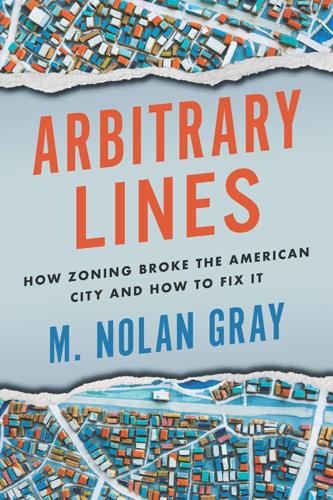
Arbitrary Lines: How Zoning Broke the American City and How to Fix It
by
M. Nolan Gray
Published 20 Jun 2022
As a result of the further tightening of zoning restrictions beginning in the 1970s, median housing prices have dramatically outpaced median incomes in many parts of the country over the past half century, such that millions of Americans now struggle to make rent or pay their mortgage each month. That is, if they have the luxury of having a stable home at all: in places where demand for new housing is especially high—as in cities like New York and Los Angeles—zoning restrictions have facilitated acute housing shortages, with attendant surges in displacement and homelessness. The COVID-19 pandemic has only expedited these trends, with home prices in 2020 rising at the fastest rate since 1979.1 The arbitrary restrictions that zoning places on cities also show up in our capacity to grow and innovate as a nation. By severely limiting new housing production in a handful of our most productive cities—including San Jose and Boston—we have made moving to our most prosperous regions a dubious proposition.
…
Two zoning maps covering the exact same territory of New York City in 1961 and 2021, illustrating the exponential increase in complexity of zoning maps. (NYC Department of City Planning) As with rezonings, text amendments are often a response to specific development applications, which come by the dozens each year in most major cities. But sometimes they reflect broader shifts. For example, during the COVID-19 pandemic, many cities scrambled to amend their zoning codes to accommodate home-based businesses.17 Whatever the source, extend this type of amendment activity across the half century that most zoning ordinances have been in effect, and the typical zoning text has devolved from clear and concise twenty-page documents into hundreds of pages of hedges, qualifications, and exceptions that can only be interpreted by a trained planner or land-use attorney.18 Better governed cities respond to this problem by regularly overhauling both the zoning text and map.
…
Between 1970 and 2010, median home values appreciated at a rate of nearly three times median household incomes, particularly in prospering coastal cities.5 Today, half of all American renters are rent-burdened—spending over a third of their income on rent—and one in four American renters is severely rent-burdened—spending over half of their income on rent.6 These figures have only worsened over the course of the COVID-19 pandemic, with supply shortages driving up housing prices at the highest rate since the crisis years of the late 1970s.7 But what exactly is the mechanism by which zoning increases housing costs? There are three. The most obvious way is by blocking new housing altogether, whether by prohibiting affordable housing or through explicit rules restraining densities.
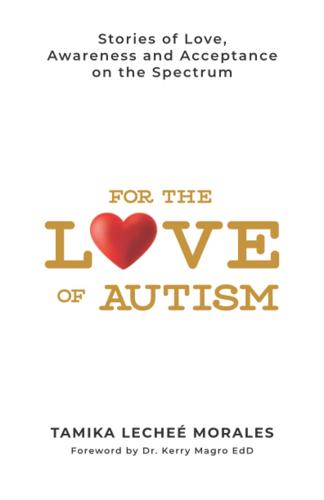
For the Love of Autism: Stories of Love, Awareness and Acceptance on the Spectrum
by
Tamika Lechee Morales
Published 23 Apr 2022
While we knew there was no quick-fix or miracle cure, we wanted to provide A.J. with anything that could help him achieve his full potential, whatever that might look like. SILVER LININGS A.J. started the Abilities First program the following fall. He began receiving ABA therapy after school and at home, and again all the pieces seemed to be falling into place for providing A.J. with support. Then the COVID-19 pandemic hit. The initial wave of COVID-19 was the perfect storm of frustration, isolation, and fear. My wife, who manages a medical practice, physically reported to her office every day, while I worked from home. Thankfully, the brokerage firm I work for knew I was caring for my autistic son, and they were mostly accommodating.
…
The seizures are unpredictable; there are no warnings. It is traumatic to watch my girl experience these seizures and the after-effects for days later. HER BEST LIFE Nevertheless, despite numerous obstacles, Grace is living her best life! She is now sixteen years old and will be starting her junior year at our local high school. Due to the COVID-19 pandemic, and her underlying seizure disorder, Grace attended school fully remote for the end of eighth grade and freshman year of high school. She rose to the occasion and excelled at remote learning. If anyone asked me years ago where I saw my daughter at this age, I would have said that I had no idea.
…
A.J. is also mostly nonverbal, which causes him to engage in attention-seeking behaviors like screaming, climbing on furniture, or throwing objects. While everyone at work is sympathetic, they can’t understand how my attention and time are stretched beyond limits in every direction. It’s an overwhelming feat that I face daily. While it’s been brutal at times, COVID-19 did provide me with a rare opportunity to experience A.J.’s growth and development firsthand. I would have missed this if I was commuting to the office and my son was going to school and daycare. Weirdly, it has been a blessing as my bond with A.J. has grown stronger than I could have ever imagined.

Chokepoints: American Power in the Age of Economic Warfare
by
Edward Fishman
Published 25 Feb 2025
GO TO NOTE REFERENCE IN TEXT more alarmed if China possessed the same capabilities: “China Punishes Australia for Promoting an Inquiry into Covid-19,” The Economist, May 21, 2020, www.economist.com/asia/2020/05/21/china-punishes-australia-for-promoting-an-inquiry-into-covid-19; Matthew Reynolds and Matthew P. Goodman, “China’s Economic Coercion: Lessons from Lithuania,” Center for Strategic & International Studies, May 6, 2022, www.csis.org/analysis/chinas-economic-coercion-lessons-lithuania; Michael Walsh, “Australia Called for a COVID-19 Probe. China Responded with a Trade War,” ABC News Australia, January 2, 2021, www.abc.net.au/news/2021-01-03/heres-what-happened-between-china-and-australia-in-2020/13019242.
…
GO TO NOTE REFERENCE IN TEXT risked its access to Chinese-made masks: “US Warned Not to Squeeze Huawei,” Global Times, March 11, 2020, www.globaltimes.cn/content/1182273.shtml. GO TO NOTE REFERENCE IN TEXT blocking imports of Australian beef: “China Punishes Australia for Promoting an Inquiry into COVID-19,” The Economist, May 21, 2020, www.economist.com/asia/2020/05/21/china-punishes-australia-for-promoting-an-inquiry-into-covid-19. GO TO NOTE REFERENCE IN TEXT “for our enemies, we have shotguns”: “How Sweden Copes with Chinese Bullying,” The Economist, February 20, 2020, www.economist.com/europe/2020/02/20/how-sweden-copes-with-chinese-bullying; Rush Doshi, The Long Game: China’s Grand Strategy to Displace American Order (New York: Oxford University Press, 2021), 277–78.
…
GO TO NOTE REFERENCE IN TEXT The COVID pandemic and the attendant supply-chain: Even before Russia’s invasion of Ukraine, a McKinsey study found that a majority of companies across a wide range of industries were taking steps to protect their supply chains from disruption, motivated in large part by the pandemic. See Knut Alicke, Ed Barriball, and Vera Trautwein, “How COVID-19 Is Reshaping Supply Chains,” McKinsey & Company, November 23, 2021, www.mckinsey.com/capabilities/operations/our-insights/how-covid-19-is-reshaping-supply-chains. GO TO NOTE REFERENCE IN TEXT Overseeing this shift: Governments might hope to wall off only select sectors of their economies, but many businesses have started moving at a faster pace than required by government policy.
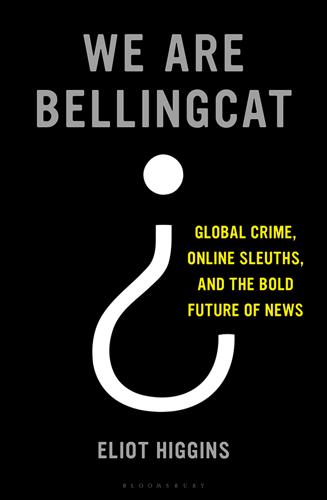
We Are Bellingcat: Global Crime, Online Sleuths, and the Bold Future of News
by
Eliot Higgins
Published 2 Mar 2021
We proved that the Syrian dictator Bashar al-Assad fired chemical weapons at his own people. We showed who was behind the downing of Flight MH17. We located ISIS supporters in Europe. We identified neo-Nazis rampaging through Charlottesville, Virginia. We helped quash the floods of disinformation spreading alongside Covid-19. And we exposed a Kremlin ‘kill team’. This discipline is so new that it lacks a single name. Most common is ‘OSINT’, for open-source intelligence. But that shorthand derives from government intelligence, whose secretive practices diverge from the open and public mission of Bellingcat. A more accurate description is ‘online open-source investigation’.
…
But sane society was not about to surrender its main source of information to the deceitful. The question was whether to accept two parallel information streams, where one part of the public consumed fact-based reports and another was abandoned to dubious viral content; or to fight back. We chose the latter. The stakes were high, as became clear during the Covid-19 pandemic, when lies acquired the potential to kill thousands, perhaps millions, of people. At Bellingcat, ‘emergency prepping’ for such information crises had been underway since our inception, as we endured malicious hacking, contended with constant slurs and confronted a thicket of falsehoods online.
…
A third iteration of fact-checkers, Full Fact argued, must meet the scale of the internet, probably through massive collaborations that disregard national frontiers.95 We are pushing for exactly that. More than ever, news events prompt people to scour the internet for immediate insights, and we are seeking to mobilise this public in the push for credible evidence. For example, within a month of the World Health Organization designating Covid-19 a pandemic in March 2020, Bellingcat produced a range of material to involve citizens in online sleuthing on the subject, including a guide to debunking coronavirus disinformation; an article on scammers exploiting the disease on Facebook and YouTube; and a video segment on applying open-source tools to studying a world gone still during lockdown.96 When a police officer in Minneapolis killed an African-American suspect, George Floyd, setting off protests across the United States and beyond, we produced an explanatory article on the Boogalo movement that hoped unrest would degenerate into a second American civil war; we compiled an exhaustive list of attacks on journalists, geolocated and plotted onto an interactive map to involve the public in absorbing the dimensions of the efforts to suppress information; and we sought to inform citizens of our techniques via a new podcast, BellingChat.
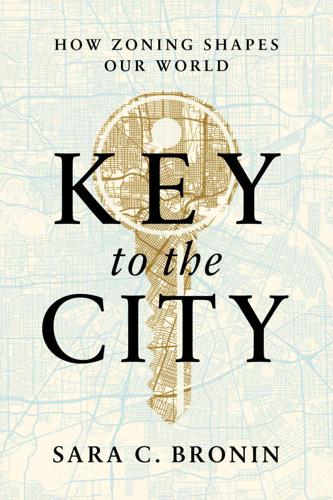
Key to the City: How Zoning Shapes Our World
by
Sara C. Bronin
Published 30 Sep 2024
The first phase of the project broke ground in 2023, a strong signal that San Diego’s rezonings will generate big returns—not just financial, but social, too. __________ Pressures to loosen use-based regulations keep coming, helping usher in a new age of zoning. The latest challenge to single-use communities was the COVID-19 pandemic, which revealed the adaptive power of greater flexibility in zoning. To cope with demand for emergency housing, shelters, and health clinics, public health emergency declarations superseded zoning rules that prevented such facilities from being in shopping malls, sports stadiums, and parking lots.
…
I worked with a few attorneys advising the Connecticut governor on the issuance of an executive order that suspended local zoning constraints on outdoor dining and retail, lifted minimum parking requirements to allow parking lots to be repurposed for outdoor extensions of indoor uses, and streamlined permitting for liquor sales. The order also created an expedited process for local governments to amend their zoning codes to address issues raised by COVID-19. Around the country, many local governments responded to the pandemic by adopting similar emergency zoning measures to ensure businesses could keep serving customers. While all these temporary measures ended with the expiration of official public health emergency declarations, many communities realized that these experimental measures had value.
…
See also legislation Connecticut, 1, 27–28, 93 ecology of, 127–28 housing crisis in, 83, 84–85, 92–93, 106, 110 lot sizes in, 74–76, 127–28 New Haven, 178 See also Hartford, CT conservation incentives, 110–11 conservation land, 20 conservation overlay districts, 49–50 “conservation”-type zoning protections, 186 corner stores, 22, 23, 32, 166, 168–70 Country Music Hall of Fame, 50 covenants, racially restrictive, 17–22, 41, 45–46, 78, 80–81, 92, 180–81, 185 COVID-19 pandemic, 27–28 craft brewers, 34–36 “craftsman industrial” uses, 35–36, 115 Crosby, TX, 17, 19–20, 28, 34, 71–73 Crystal Cathedral, Anaheim, 91, 97–98, 102, 107 curb extensions (bulb-outs), 149, 150 Daley, Richard, 42 Dallas, 104 Decca, 48 deed restrictions, 17, 86, 88, 181, 192 Delray Beach, FL, 10, 152–57, 160, 165, 205 “diverse unit” mix requirements, 154 downtown, 153–54, 156, 205 mixed-use districts in, 156, 162, 170, 182 Pineapple Grove Arts District, 156–57 Denver, 133, 146–47, 204 deregulation, 78 “Designs on You” (song), 54, 57 Detroit, 66, 91, 189 development disinvestment, 47, 60 incentives, 51–52, 96, 105, 110–11, 133 infill development, 25, 62, 75–76, 182, 183 land use, 1, 6–7, 19, 20–25.
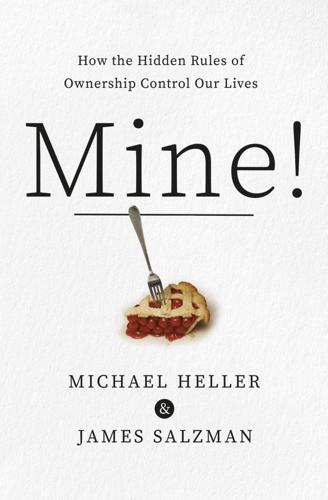
Mine!: How the Hidden Rules of Ownership Control Our Lives
by
Michael A. Heller
and
James Salzman
Published 2 Mar 2021
Maybe the Supreme Court should reserve seats for student groups. Or auction the seats and use the revenue for guided high school tours of its awe-inspiring building. Or—and this is our view—the Court should implement a different path to access altogether, such as video livestreaming arguments so they are freely available to everyone online. During the COVID-19 shutdown, the Court moved partway there with audio livestream, and the administration of justice did not noticeably falter. Put another way, every rule for making things mine rewards a different idea about what to value, like the options for the rocking chair we discussed in the Introduction.
…
Think about the last time you were in the checkout line at the supermarket with your shopping cart. Imagine a stranger had come up, peered into your cart, taken out the cereal box, then looked again and grabbed the carton of milk. This seems insane. It never happens (although we did come across one example during the panicky early days of COVID-19: toilet paper filching). You would probably shout at the person, “What the—what are you doing? That’s mine!” But why are the cereal box and milk carton yours? You haven’t bought them yet. What makes you so confident, even though your physical possession is not legal ownership? Retailers have always understood, and taken advantage of, this possession instinct by creating conditions where customers can get attached to products for sale.
…
The conflicts are growing more acute: as beach-spreaders are pushing the boundaries of possession, rising sea levels are shrinking New Jersey beaches. Local residents pay for lifeguards and beach upkeep and get mad when beach-spreaders keep them away from the water. Regional variations in beach possession symbols matter even more in the COVID-19 era. That’s why White House coronavirus adviser Deborah Birx urged beachgoers to defend circles of sand around their umbrellas: “Remember that is your space, and that is the space you need to protect.” She was arguing for uniform beach spacing nationwide. Bad ownership design can have deadly consequences in New Jersey, Florida, and elsewhere.
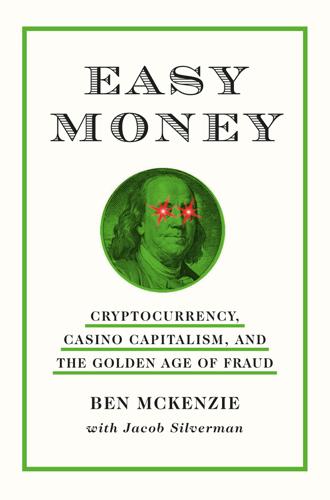
Easy Money: Cryptocurrency, Casino Capitalism, and the Golden Age of Fraud
by
Ben McKenzie
and
Jacob Silverman
Published 17 Jul 2023
As more and more depositors attempt to take their money out, a bank run ensues, resulting in its financial collapse. The economic event, a drought, didn’t directly produce the bank run—the bank was healthy. It was the rapid spread of a distorted economic narrative that led to its downfall. Narrative Economics was published in 2019, prior to both the current viral spread of cryptocurrency and the COVID-19 pandemic. Given that, it is remarkable to observe how intertwined these two viruses would become in the following years. To understand the origins of economic narratives surrounding Bitcoin and other cryptocurrencies, we have to go back to the events that inspired them. Both crypto and the “easy money” policies from which this book derives its title sprang from the same roots: the Global Financial Crisis (GFC), also known as the subprime crisis
…
For both political and economic reasons, the Fed would find it impossible to unwind its backstop of the economy. In fact, it continued to grow. By late 2014, what had been $2.3 trillion of assets on the Fed’s books had grown to over $4.4 trillion, a level at which it would more or less remain until March 2020, when COVID-19 hit. At the same time, interest rates stayed historically low as well: effectively 0 percent until 2016, and only rising above 2 percent in 2019. The government’s response to the subprime disaster spawned an era of easy money that benefited deep-pocketed corporations above everyone else, but that was not all it produced.
…
This is what the Fed’s balance sheet looked like at the end of 2021: Source: “Monetary Policy: Credit and Liquidity Programs and the Balance Sheet. Recent Balance Sheet Trends,” Board of Governors of the Federal Reserve System, accessed March 3, 2023, https://www.federalreserve.gov/monetarypolicy/bst_recenttrends.htm. In response to the threat of COVID-19 shutting down the economy, some $5 trillion flooded into the US economy. An unprecedented amount of money was now available for people (as well as institutions) to spend, save, invest, or gamble with. Flush with dough, markets of all kinds went berserk. Home prices, which had steadily climbed back above the 2006 peak, now soared, as did stocks and all manner of speculative investments.
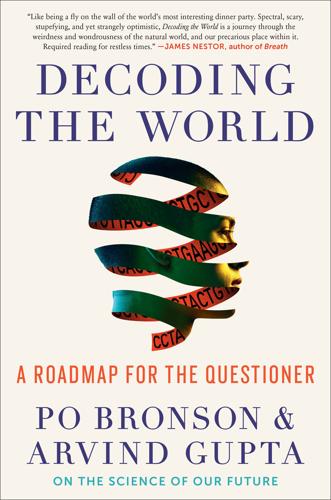
Decoding the World: A Roadmap for the Questioner
by
Po Bronson
Published 14 Jul 2020
Akash had a proposal to stop COVID-19. I forwarded it to the team. Text from my sister, who is an eye surgeon at a major hospital in New York: Sad case today. A 17-year-old with a bad injury from yard work. Full corneal laceration, traumatic cataract and retinal detachment. His father was so devastated. When we were talking he collapsed and hugged me out of sorrow. Now I feel like I’m covered in corona. Akash wrote that he had 735 kilograms of niclosamide on its way to the U.S. They were going to use it for a clinical trial as a form of birth control, as a spermicide. But they wanted to try it for COVID-19. They were in contact with the FDA.
…
It had been pulled off the U.S. market in 1996, but it was still made elsewhere. The argument was that niclosamide might work because, even though it had never been used to treat SARS or MERS during an outbreak, long after the fact it was shown that niclosamide could stop those viruses from replicating inside us. The COVID-19 virus had the same 11 proteins as SARS and MERS, the same arsenal of weapons. Normally, VCs take weeks or months to study a deal. This took us about an hour to say yes, which was the length of our first phone call. It was a blind bet with no evidence, only theory. Usually those bets bust. We would have been fine with that.
…
But first, we must survive it. You are all IndieBio companies. Which means you are already survivors. Born and bred in the basement on Jessie Street in the Tenderloin. Walking into the office meant stepping over the hardships of life just to face it again in the lab. But this shock is different. Covid-19 will test us all.” At least a dozen of our alumni were running into the fire. In Korea, their Zoonotic Virus Lab tried 3,000 existing drugs, in a high-throughput screen using kidney cells infected with the virus. They found 24 that worked well, and niclosamide was one of the two that stood out above the rest.
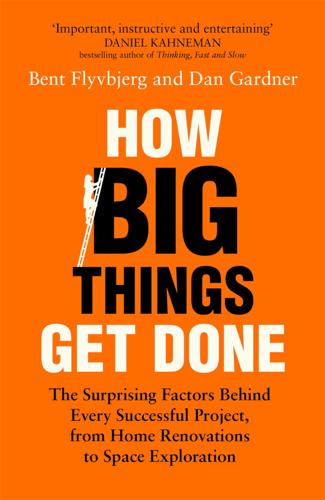
How Big Things Get Done: The Surprising Factors Behind Every Successful Project, From Home Renovations to Space Exploration
by
Bent Flyvbjerg
and
Dan Gardner
Published 16 Feb 2023
The longer the duration, the more open the window. The more open the window, the more opportunity for something to crash through and cause trouble, including a big, bad black swan. What could that black swan be? Almost anything. It could be something dramatic, like an election upset, a stock market collapse, or a pandemic. After Covid-19 emerged in January 2020, projects all over the world—from the 2020 Tokyo Olympics to the release of the James Bond movie No Time to Die—were delayed, postponed, or scrapped altogether. Events such as these may be extremely unlikely on any given day, month, or year. But the more time that passes from the decision to do a project to its delivery, the greater their probability.
…
Bent Flyvbjerg, Alexander Budzier, and Daniel Lunn, “Regression to the Tail: Why the Olympics Blow Up,” Environment and Planning A: Economy and Space 53, no. 2 (March 2021): 233–60, https://papers.ssrn.com/sol3/papers.cfm?abstract_id=3686009. Bent Flyvbjerg, “Four Ways to Scale Up: Smart, Dumb, Forced, and Fumbled,” Saïd Business School Working Papers, University of Oxford, 2021, https://papers.ssrn.com/sol3/papers.cfm?abstract_id=3760631. Bent Flyvbjerg, “The Law of Regression to the Tail: How to Survive Covid-19, the Climate Crisis, and Other Disasters,” Environmental Science and Policy 114 (December 2020): 614–18, https://papers.ssrn.com/sol3/papers.cfm?abstract_id=3600070. Bent Flyvbjerg, Atif Ansar, Alexander Budzier, Søren Buhl, Chantal Cantarelli, Massimo Garbuio, Carsten Glenting, Mette Skamris Holm, Dan Lovallo, Daniel Lunn, Eric Molin, Arne Rønnest, Allison Stewart, and Bert van Wee, “Five Things You Should Know About Cost Overrun,” Transportation Research Part A: Policy and Practice 118 (December 2018): 174–90, https://papers.ssrn.com/sol3/papers.cfm?
…
Bent Flyvbjerg, Nils Bruzelius, and Werner Rothengatter, Megaprojects and Risk: An Anatomy of Ambition (Cambridge, UK: Cambridge University Press, 2003). 21. Statens Offentlige Utredninger (SOU), Betalningsansvaret för kärnavfallet (Stockholm: Statens Offentlige Utredninger, 2004), 125. 22. Bent Flyvbjerg, “The Law of Regression to the Tail: How to Survive Covid-19, the Climate Crisis, and Other Disasters,” Environmental Science and Policy 114 (December 2020): 614–18. For the mathematically and statistically inclined reader: A power law distribution with an alpha value of 1 or lower has an infinite (nonexistent) mean. If the alpha value is 2 or lower, variance is infinite (nonexistent), resulting in unstable sample means, making forecasting impossible.
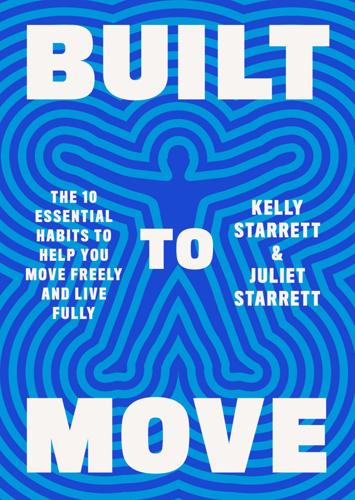
Built to Move: The Ten Essential Habits to Help You Move Freely and Live Fully
by
Kelly Starrett
and
Juliet Starrett
Published 3 Apr 2023
“Sleep Restriction Enhances the Daily Rhythm of Circulating Levels of Endocannabinoid 2-Arachidonoylglycerol.” Sleep 39, no. 3 (March 2016): 653–64. DOI: 10.5665/sleep.5546. Huang, Baozhen, Yanlin Niu, Weiguo Zhao, et al. “Reduced Sleep in the Week Prior to Diagnosis of COVID-19 Is Associated with the Severity of COVID-19.” Nature and Science of Sleep 12 (2020): 999–1007. DOI: 10.2147/NSS.S263488. Krause, Adam J., Aric A. Prather, Tor D. Wager, et al. “The Pain of Sleep Loss: A Brain Characterization in Humans.” Journal of Neuroscience 39, no. 12 (March 2019): 2291–2300. DOI: 10.1523/JNEUROSCI.2408-18.2018.
…
If information about the past can be gleaned from the study of contemporary Indigenous tribes with hunter-gatherer habits, the number may be around 15,000 steps per day. Any way you look at it, most of us are falling far short of that. According to the America on the Move study (published in 2010, but we’re willing to wager things haven’t changed much since then, and perhaps got even worse during the COVID-19 pandemic), Americans only take an average of 5,117 steps daily (about 2.5 miles). That’s well below today’s widely accepted health recommendations. By comparison, Australians average 9,695 steps daily; the Japanese, 7,168. Not coincidentally, they also have considerably lower rates of obesity. We know steps aren’t the only cultural differences in our obesity rates, but it’s hard to argue against more daily movement.
…
Before you go into work and humblebrag, “I got four hours of sleep last night,” consider the likely thought bubble in your coworkers’, maybe even your boss’s, head: “Wow, you’re going to be the least efficient worker today, contribute nothing, and make our company worse!” Although no one would say the COVID-19 pandemic was a good thing, one by-product of the shift in the way people work has been that many of them are getting more sleep. How that will ultimately play out is unknown right now, but pre-pandemic it was clear that lack of sleep was a global problem. The Centers for Disease Control and Prevention has called sleeplessness a public health problem.
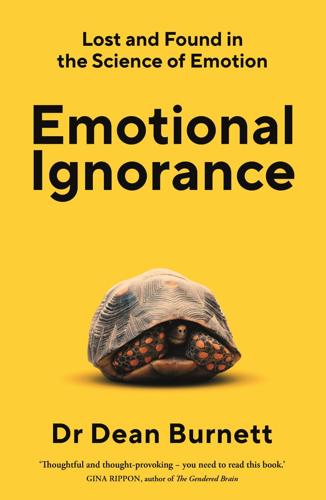
Emotional Ignorance: Lost and Found in the Science of Emotion
by
Dean Burnett
Published 10 Jan 2023
And all for different reasons. I eventually had to face a hugely inconvenient, but irrefutable, fact: my knowledge about emotions was woefully insufficient for writing a book about them. Unfortunately, I was still contractually obliged to do exactly that. It was a tricky situation. But then, in 2020, the COVID-19 pandemic happened, and the world went into lockdown as the virus tore across the globe. At first, I felt I was well placed to ride things out. I already worked from home, my job wasn’t under threat, my wife and children and I are quite a harmonious group. This will be fine, I figured. This will be fine.
…
That’s not how evolution works. Also, if we’ve got adults denying evolution purely because monkeys exist, we need better adults. ‡‡‡ How exactly you’d do such a thing is a whole other problem. 3 Emotional Memories In late April 2020, despite the best efforts of the medical profession, my father died from COVID-19. Did I cry at that point? Indeed. The logjam holding back my emotions crumbled, and … stuff came out. But it was often at odd times, and in odd ways. When I learned he was gone, I was weirdly numb for several hours, before spontaneously collapsing into a mess that evening. This continued for several days.
…
Still, I will say that having more upsetting and vivid dreams than usual was rather annoying, given all the other emotional issues I was trying to get to grips with. In some ways it is unsurprising, though: the sudden loss of a loved one undeniably makes your daily life a fog of emotional turmoil and confusion, so why wouldn’t your dreams follow suit? It’s the same brain responsible for everything, after all. I’m not alone, either. The COVID-19 pandemic has led to people worldwide being more scared, confused, anxious, angry, and stressed than usual. The overall mental health impacts will take years to uncover and unpack, but interestingly, at the time of writing, I’m seeing a lot of people online opening up about the weird, unsettling dreams they’re regularly having.

The Long History of the Future: Why Tomorrow's Technology Still Isn't Here
by
Nicole Kobie
Published 3 Jul 2024
And then came the criminal case, where Levandowski faced dozens of counts of theft and attempted theft of trade secrets. A plea deal saw him admit to just one charge and sentenced to 18 months in prison. The judge in the case, US District Judge William Alsup, said it was the ‘biggest trade secret crime I have ever seen’. Sentenced during the COVID-19 pandemic, Levandowski was allowed to report to prison once the public health crisis was under control, and then a pardon from Donald Trump in the final days of his presidency meant he never served any time. Money is still being thrown at driverless cars, as well as plenty of engineering research and development from people with real experience in automation.
…
Perhaps you send your avatar off to a meeting, or a Beyoncé concert where you ‘sit’ next to a long-distance friend and enjoy the same viewpoint, or, as Mark Zuckerberg has suggested, hang out and play cards with the digital representations of your family. To be clear, you’re still doing all these things, but rather than you sitting there physically, your avatar takes your place in the virtual world. Some of that has appeal. I have friends and family scattered around the globe, but when the COVID-19 pandemic sparked lockdowns, virtual games, Zoom parties and online shared experiences became the only way to hang out. People like to point to Travis Scott’s Fortnite concert, which for the uninitiated is a musician playing a concert inside a video game, drawing 12 million viewers, but that’s an exception rather than how gigs are done now.
…
But at its core, every single element of Forest City – person, building, product, service, whatever else, perhaps even windows and plants – would have a unique identifier to let it be tracked and analysed by an urban operating system to create ‘efficient living’. Of course, you don’t have to worry about delivering prototype future technologies for a city that doesn’t exist. Political challenges, financial wobbling, and the COVID-19 pandemic all intervened to dislodge the dreams around Forest City. A few years after my visit, though apartment blocks had risen from the reclaimed land, as few as 500 people reportedly lived on the Johorian islands; by 2019 that had increased to several thousand.2 That’s small compared to the initial plan of 700,000 residents, though given the tiny size of the reclaimed land, the latter figure would have made it the area with the highest population density on the planet, so perhaps it’s a positive to have missed that particular target.
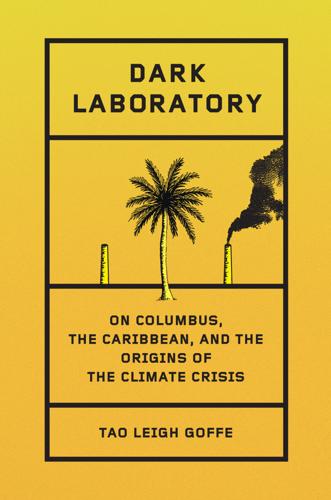
Dark Laboratory: On Columbus, the Caribbean, and the Origins of the Climate Crisis
by
Tao Leigh. Goffe
Published 14 Mar 2025
My purpose in visiting the Amerindian reserve on this island was to learn about local efforts and artistic practices to support Dark Lab. My organization sees the many islands across the planet as spaces of colonial experimentation. At Dark Lab, which emerged for me in the aftermath of the Black Lives Matter global protests and the Covid-19 pandemic, we explore how race, climate, and technology are entwined. From Black women’s farming cooperatives on the island, I have learned how to follow the phases of the moon’s calendar of cultivation. This calendar is a guide that designates when to cut the grass, when to cut one’s hair, and when to harvest from the carambola tree.
…
In many families, mine included, there are Black and white relatives who share a last name but live worlds apart because of what race determines socially. Historically, there are shadow families, like the Hemingses, with overlapping lineages that connect Africa and Europe.[2] Contrasting the two viral filmed confrontations in the beginning of the Covid-19 pandemic: in one a life was stolen, in the other a life was saved by the camera phone as a witness. The technology of an execution, the technology of an exoneration. As the sadistic Minnesota police officer Derek Chauvin kneeled on Floyd’s neck for nine minutes and twenty-nine seconds. The simple act of breathing took on new global meaning because of the Black Lives Matter movement.
…
The Fugitive Slave Act of 1850 invested individual white Americans with the power to surveil and apprehend people of color. New York has a reputation for a deadly regime of policing Black people, long before and long after the abolition of racial slavery in the state, which took place in 1827. Heightened by the Covid-19 pandemic and global racial protest, the world watched. Through the camera phone lens of the seventeen-year-old onlooker Darnella Frazier, the world witnessed Floyd being beaten and killed by Minneapolis police officers. On May 25, with his permission, Christian’s sister posted his three-minute video to the bird app Twitter.

These Strange New Minds: How AI Learned to Talk and What It Means
by
Christopher Summerfield
Published 11 Mar 2025
And it turns out that lies breed more lies. Following Trump’s election, the conspiracy morphed into a bizarro political movement known as QAnon, centred around fabricated claims that the world is run by a cabal of Satanist, cannibalistic child abusers, against whom Trump is a shining sword of defence. Later, during the Covid-19 pandemic, other conspiracy theories flourished across the globe – a 2023 poll found that as many as a quarter of the UK population believed Covid to be a hoax.[*1] False claims that the vaccine causes infertility, or is part of a secret programme to microchip the public, contributed to widespread vaccine hesitancy, and ultimately cost tens of thousands of people their lives.
…
.’ – which would, I am sure, qualify as pants-on-fire, along with 30,572 other false or misleading claims Trump reportedly made during four years of presidency.[*7] GPT-4 does a pretty good job of predicting the probability that a statement is true, but in binary classification (‘true’ v. ‘false’) it achieves only about 70%. It scores similarly on a test designed to measure misinformation that circulated during the Covid-19 pandemic, and on TruthfulQA, and whilst GPT-4 does better than earlier models, it still weighs in at only 60% correct. These scores don’t sound all that reassuring. Surely, we should require that the replies of LLMs are at least as accurate as those of well-informed human experts, and ideally more so.
…
It seems like it’s obviously true that strawberries are red, that Beyoncé is a famous singer, that dogs don’t speak English, and that teleportation is impossible in the real world. And despite the relentless swirl of conspiracy theories, it is patently false that Hillary Clinton likes to eat babies, or that the Covid-19 vaccine rollout is a devious programme of state-sponsored social control. But unfortunately, whether a fact is true or false has a nasty habit of depending on the context. Strawberries are usually red when ripe, but green when immature, and can appear any hue you like under coloured lighting. Beyoncé is indeed famous in many countries, but not so much on the Andaman Islands, a remote archipelago whose inhabitants resist contact with the modern world and fire arrows at foolhardy visitors.

The Key Man: The True Story of How the Global Elite Was Duped by a Capitalist Fairy Tale
by
Simon Clark
and
Will Louch
Published 14 Jul 2021
Mallya also lived in the U.K. and was fending off attempts to extradite him to India, where he faced charges of fraud. Arif’s lawyers returned to Westminster Magistrates’ Court in June 2020 for his extradition trial. Arif wasn’t required to attend the trial in person because of changes to the court system that were introduced to help contain the coronavirus pandemic. Instead, he was allowed to participate via a video link from his apartment. But the video connection in Court One wasn’t working, so Hugo called his client on a mobile phone. Arif’s face peered out of the screen. His cheeks and chin were covered in white stubble and his white hair flopped uncharacteristically forward onto his forehead from a center parting.
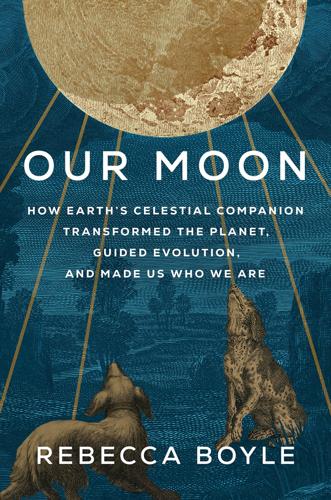
Our Moon: How Earth's Celestial Companion Transformed the Planet, Guided Evolution, and Made Us Who We Are
by
Rebecca Boyle
Published 16 Jan 2024
The Navajo Nation president at the time, Albert Hale, called the act “sacrilegious, a gross insensitivity to the beliefs of many Native Americans, to place human remains on the Moon.”4 I wanted to talk to the Dine people, who most white European descendants call the Navajo, about their vision of the Moon. And then the coronavirus pandemic shut everything down. Navajo lands were closed to outsiders as the virus rampaged through the population. As an alternative, I planned a road trip to the Bighorn Medicine Wheel, an ancient stone circle in northwestern Wyoming, built between three hundred and eight hundred years ago by the Plains Indians like the Cheyenne and Pawnee.

Lonely Planet Pocket Reykjavík & Southwest Iceland
by
Lonely Planet
Contents Plan Your Trip Top Experiences Dining Out Bar Open Treasure Hunt Tours Natural Wonders Festivals Museums & Galleries For Free Under the Radar Reykjavík For Kids LGBTIQ+ Four Perfect Days Need to Know Reykjavík Neighbourhoods Explore Reykjavík Old Reykjavík Old Harbour Laugavegur & Skólavörðustígur Explore Southwest Iceland Southwest Iceland’s Regions Golden Circle South Coast Snæfellsnes Peninsula Borgarnes & Around Worth a Trip Laugardalur Viðey Reykjanes Peninsula Jökulsárlón Survival Guide Survival Guide Before You Go Arriving in Reykjavík & Southwest Iceland Getting Around Essential Information Language Behind the Scenes Our Writer COVID-19 We have rechecked every business in this book before publication to ensure that it is still open after the COVID-19 outbreak. However, the economic and social impacts of COVID-19 will continue to be felt long after the outbreak has been contained, and many businesses, services and events referenced in this guide may experience ongoing restrictions. Some businesses may be temporarily closed, have changed their opening hours and services, or require bookings; some unfortunately could have closed permanently.

The Mini Rough Guide to Iceland (Travel Guide eBook)
by
Rough Guides
Published 11 Mar 2022
c.870 A Norwegian, Hrafna-Flóki, tries to settle in the West Fjords, calling the land Ísland (Iceland). 874 Ingólfur Arnarson and his family and friends settle on Iceland. 1000 Christianity is adopted as Iceland’s official religion. 13th–14th centuries Norway and Denmark feud over ruling of Iceland. 1389 Huge eruption of Mt Hekla, followed by the Black Death. 15th century England and Germany battle to control the cod trade. 1662–1854 Trade monopoly with Denmark. 1783 Eruption of Lakagígar craters poisons land and leads to famine. 1800 Danish King abolishes the Alþingi; it is reinstated in 1843. 1874 Denmark gives the Alþingi autonomy over domestic affairs. 1918 Iceland made a sovereign state under the Danish monarch. 1944 Independence from Denmark declared on 17 June. 1952–75 Cod Wars (1952, 1958, 1972, 1975) with the UK. 1955 Halldór Laxness wins the Nobel Prize for Literature. 1963 Surtsey Island created by an underwater volcanic eruption. 1973 Volcanic eruption on Heimaey Island. 1986 Nuclear summit between Reagan and Gorbachev held in Reykjavík. 1994 Iceland enters the European Economic Area. 2000 Mt Hekla eruption in February; earthquakes in June. 2006 Iceland resumes commercial whaling. 2010 Eyjafjallajökull erupts, bringing Europe’s air traffic to a standstill. 2015 Iceland’s application for EU membership is withdrawn; the Bárðarbunga volcano erupts. 2016 Historian Guðni Thorlacius Jóhannesson becomes Iceland’s youngest president. Prime Minister Sigmundur Davíð Gunnlaugsson resigns. 2020 Hildur Guðnadóttir becomes the first Icelander to win an Oscar for her music to The Joker. The Covid-19 pandemic sweeps Iceland, causing restrictive measures to be put in place to contain the virus. 2021 The new Covid-19 vaccine enjoys a high rate of uptake in Iceland. 2022 By January, 90% of the eligible population had been vaccinated. OUT AND ABOUT Iceland is one of the world’s most spectacular destinations, with vast empty landscapes illuminated by sparkling, clear, sub-arctic air and cosy fishing villages sheltering from Atlantic storms beneath gargantuan cliffs.
…
As well as sightseeing there are tours specialising in hiking, geology, birdwatching, fishing and horse riding. Sports-orientated tours have good-quality equipment and guides who are fully trained for the environment. For full details, contact the Icelandic Tourist Office (www.visiticeland.com). H Health and Medical Care (See also Emergencies) Covid-19 requirements for vaccinations and tests need to be verified prior to arrival in Iceland; this can be done online at https://island.is/en/p/entry. Thanks to its clean air and low pollution, Iceland is an extremely healthy place. The water is clean to drink, although you should never drink from glacial rivers or streams.

Florence Like a Local
by
Dk Eyewitness
www.esteri.it The Italian Foreign Ministry government portal, offering the latest information on security and regulations, including updates on COVID-19 travel. www.feelflorence.it Florence’s Tourism Bureau, with lists of useful numbers, consulates and information points. www.poliziadistato.it The civil branch of the police force, with information on staying safe, emergency service numbers and reporting crimes. www.visittuscany.com Tuscany’s official tourism website, with useful numbers and up-to-date information on COVID-19 regulations. ACCESSIBILITY While museums and transport services have improved enormously when it comes to accessibility, Florence’s cobbled streets prove tricky for those with reduced mobility.
…
EDOARDO CELADON, JOURNALIST g DRINK g Contents An evening wine window walk Utterly unique to Florence, buchette del vino (wine windows) have been getting a lot of attention since the pandemic. These small holes in palace walls were used to sell surplus wine to the working classes in the 16th century, and proved ideal for touch-free contact during the plague. Though they fell into disuse over time, a handful were reopened during COVID-19 to dispense everything from coffee to spritz in a germ-free way. There’s great pleasure in spotting a wine window as you amble around the city, even more so when your evening vino is served through one. Route map 1. Stop by VIA SAN NICCOLÒ 79 Santa Croce ///sedated.waffle.migrate Stroll down this lane to find street art decorating a wine window.
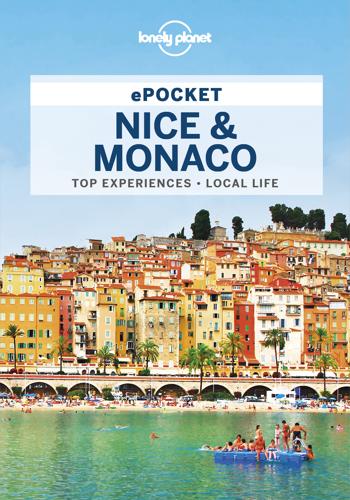
Lonely Planet Pocket Nice and Monaco 3 3rd Ed
by
Lonely Planet
Published 15 Apr 2024
Contents Plan Your Trip Top Experiences Dining Out Bar Open Treasure Hunt Outdoors Museums & Monuments For Kids Festivals & Events Show Time Under the Radar Nice Four Perfect Days Need to Know Nice & Monaco Neighbourhoods Explore Nice & Monaco Vieux Nice New Town & Promenade des Anglais Cimiez, Libération & Vernier Le Port-Garibaldi Monaco Worth a Trip The Three Corniches Beaulieu’s Backstreets & Beaches St-Jean-Cap-Ferrat Survival Guide Survival Guide Before You Go Arriving in Nice Getting Around Essential Information Language Behind the Scenes Our Writer COVID-19 We have re-checked every business in this book before publication to ensure that it is still open after the COVID-19 outbreak. However, the economic and social impacts of COVID-19 will continue to be felt long after the outbreak has been contained, and many businesses, services and events referenced in this guide may experience ongoing restrictions. Some may be temporarily closed, have changed their opening hours and services, or require bookings; some unfortunately could have closed permanently.
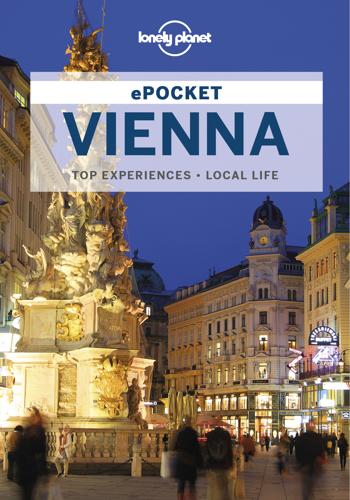
Lonely Planet Pocket Vienna
by
Lonely Planet
Contents Plan Your Trip Top Experiences Dining Out Bar Open Treasure Hunt Coffee Houses Entertainment Architecture Guided Tours Activities Under the Radar For Kids Art Four Perfect Days Need to Know Vienna Neighbourhoods Explore Vienna Hofburg & Around Historic Centre Museum District & Neubau Karlsplatz Schloss Belvedere to the Canal Survival Guide Survival Guide Before You Go Arriving in Vienna Getting Around Essential Information Language Behind the Scenes Our Writers COVID-19 We have re-checked every business in this book before publication to ensure that it is still open after the COVID-19 outbreak. However, the economic and social impacts of COVID-19 will continue to be felt long after the outbreak has been contained, and many businesses, services and events referenced in this guide may experience ongoing restrictions. Some businesses may be temporarily closed, have changed their opening hours and services, or require bookings; some unfortunately could have closed permanently.
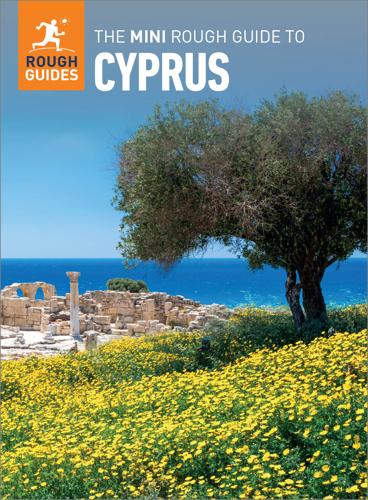
THE MINI ROUGH GUIDE TO CYPRUS
by
Rough Guides
Published 26 Mar 2022
Cyprus flourishes. 1191–92 England’s Richard the Lionheart defeats Isaac Komnenos and sells Cyprus to Guy de Lusignan, who founds a 300-year dynasty. 1489 Venetians depose the last Lusignan ruler, Caterina Cornaro. 1571 Fall of Famagusta to the Turks ends Venetian rule. 1571–1878 Period of Ottoman rule. 1878 Cyprus occupied by Britain, with Ottoman agreement. 1914 Ottomans back Central Powers in World War I; Britain takes Cyprus. 1959–60 Independence negotiated and granted. 1963–64 Intercommunal strife endangers young republic; UN intervenes. 1974 Coup by Greek military junta gives Turkey pretext to invade. 1983 The ‘Turkish Republic of Northern Cyprus’ is declared by the North. 2003 De facto border between South and North opened to free transit. 2004 The Republic of Cyprus joins the EU without Northern Cyprus. 2008 The euro is introduced in the South. 2013 Economic crisis overtakes the South; EU ‘aid’ package sees €5.8 billion confiscated from high-value bank accounts. 2016 President Anastasiades and Turkish Cypriot leader Mustafa Akinci make a joint New Year television address. 2018 Nicos Anastasiades is re-elected President of Cyprus for a second term. 2020 Covid-19 spreads across the world, reaching Cyprus in March. Right-wing nationalist Ersin Tatar becomes the President of Northern Cyprus. 2021 The Democratic Rally party wins the Cypriot parliamentary election. Out and About If you really want to get to know Cyprus, rather than just soak up the sun on its beaches, you should stay in more than one place.
…
They are open Monday–Friday 8am–1pm and 3 or 4–7pm (mornings only on Wednesday and Saturday). Certain pharmacies offer a 24-hour service – see local papers for listings. Most medicines sold in the UK, US, Canada and Europe are available in Cyprus, but may require a prescription. Pharmacists can generally advise on minor ailments and health concerns. In 2020, the Covid-19 pandemic spread rapidly across the world, with Cyprus’ first case announced in March. At the time of writing, all visitors to Cyprus must complete a Cyprus Flight Pass form online 48 hours before flying. Unless fully vaccinated, travellers must also have proof of a negative PCR test result taken within 72 hours of departure.
…
Note that the regulations and their implementation may change frequently and without notice. At the time of writing, all travellers to Cyprus must complete a Cyprus Flight Pass form online before flying. Unless fully vaccinated, they must also have proof of a negative PCR test result taken within 72 hours of departure. Travel regulations relating to Covid-19 are subject to change at short notice, however, so always check the latest advice before you fly. W Websites and Internet Access Check out www.cyprusevents.net for a one-stop shop for what’s on listings, from southern concerts and theatre to cinema and cultural events. Another useful resource for listings is the expat website for Anglophones living in Cyprus: www.angloinfo.com/cyprus.

Cheap Land Colorado: Off-Gridders at America's Edge
by
Ted Conover
Published 1 Nov 2022
But the men, and others milling about, were effectively blocking the driveway—like protestors, Harry joked. I revved my engine, getting in the spirit of things. Harry mimed brandishing a pistol at me, then blasting away as I rolled by. * * * — Even if few people had been infected yet by Covid-19 in my part of the flats, much of the turmoil of the outside world filtered in via television and social media. I stopped by a neighbor’s place; he told me, “If you have any money in the bank, get it out.” But why? “Last night it took one trillion dollars to cover the daily bank rate”—I wasn’t sure what this was—“as opposed to the two hundred million dollars in the last banking crisis.”
…
And it was of a piece with an ideology that underlay much of what La Puente did, which was, in my own paraphrasing, You can’t really know their pain, so don’t judge. But what about judging? Wasn’t forming opinions part of what made us human? I grappled with this problem on the flats, where I was surveying my neighbors about whether they’d gotten a Covid-19 stimulus payment from the federal government and what they’d decided to do with it. This was a happy subject for most of them, since life tended to bring few of these windfalls. I started with the Grubers. Like many Americans, they had received federal stimulus payments totaling $3,200 in the twelve months starting in April 2020.
…
See also La Puente Alaska, 70 alcoholism, 57, 80 allergies, 186–87 al-Qaeda, 89 Amalia, New Mexico, 194 America first, 70 American flag, 4, 89, 167, 221 American West, history of, 112–14, 119–26, 248 AmeriCorps, 13, 21, 65, 208–9, 213, 237 Amish, 173 Andersen, Paul, 192–93 Anderson, Harold, 114–20, 218, 254, 264n Angels in America (Kushner), 68 Ania (Polish immigrant), 88–92 antelope, pronghorn, 11, 40, 71–72 anti-government ideology, 70, 88–92 Antonito, Colorado, 10, 14, 20, 54, 73, 93, 95–98, 100, 124, 155, 160, 165, 185, 190–91, 199, 212, 215 Appalachia, 70 Apple Valley, California, 123 Arapahoe people, 190 Arellano, Sidney, 66, 199–200 Arizona, 70, 112, 159 Armando (Paul’s neighbor), 17–18 Ashley (Grubers’ cousin), 73–74 As I Lay Dying (Faulkner), 76 Aspen, 174 Aspen Times, 192 Asperger’s syndrome, 148, 150, 154 at-risk families program, 25 Attica prison, 199 Aurora, Colorado, 80 autism, 154, 265n–66n auto insurance, lack of, 91 B Bankers Life, 46, 119–22, 129, 142 Baroz, Adre “Psycho,” 198–99 BBC World Service, 138 “Beach, The,” 81–82, 95 Beaubien, Carlos, 112–13 Beaubien, Narciso, 112 bentonite mine, 97 Bewitched (TV show), 160 Big Rock Candy Mountain, The (Stegner), 217 bipolar disorder, 211–12 birds deaths of, 228–32 watching, 100, 229 Birds, The (film), 231 birth certificates, 90 bison, 12 Bitcoin mining, 148 Black Lives Matter, 219–23, 227 Blacks, 20, 65, 91, 144–45, 176–84, 227 Blanca Peak (Sisnaajini), 9–11, 10, 13, 15, 23, 26, 50, 64, 82, 106, 124, 127, 129, 141, 148, 200–203, 245, 263n Blanca RV Park, 34, 86, 106, 221 Blanton, Carolyn Gloria, 191 Blanca (town), 10, 25, 49, 81, 85, 88, 116, 119, 127, 146, 243–44, 252, 265n Bobby (Troy Zinn’s friend), 121, 195 Bosdell, Don and Sherry, 166–70 Bowie, David, 217 Branson online curriculum, 72 Brown, Calvin, 220 Brown, Wesley, 260 Brownlow, Lonnie, 123–24 Bundy family, 91 Bureau of Land Management (BLM), 15, 97, 259 burn pits, 105, 157, 170–72 Busse, Brian, 147 C California, 70, 73, 112, 122, 159, 198 Calvin (Vera’s friend), 86–88, 90, 92 Camaro Jim (neighbor), 144–45, 162–63, 230–31 camping, 28, 32, 51, 86, 117, 135, 160, 236 cancer, 78–79 Cano’s Castle, 14 capital letters, 89–90 carbon footprint, 69, 232 Caring for Colorado, 25 Caro, Robert, 128 “Car Wash” Kevin, 237, 256–57 Casper, Wyoming, 44, 74, 207 Catholic Church, 196 cattle, 19, 46, 94–95, 119–21, 140, 143, 144–5, 167, 196, 205, 214, 227 mutilated, 232–34 cell phones, 11, 35, 97, 131, 156, 201 Central Americans, 20 Central Intelligence Agency (CIA), 88–89 Cerro de la Olla mountain, 234 Chama settlement, 110 Changes in the Land (Cronon), 268n Charlie (Ania and Jurek’s friend), 91–92 Chatwin, Bruce, 260 Chávez, César, 98 Cheap and Easy Way to Find Gold, The (video), 201 Cherokee people, 264n Cheslock, Lance, 13, 18, 21, 24–25, 27–28, 34, 65–66, 85, 96, 98, 100–101, 199, 217, 219, 229, 234, 253, 256 Cheslock, Rachael, 24, 27 Cheyenne people, 190 Chicago, 176–77, 184, 192–93 Chicago Tribune, 109, 126 Chicano activists, 191 China, 227 Choman, Chet, 127–30, 265n Christians, 87–88, 92, 155, 168–69, 215 Christmas, 65–67, 156, 180, 200 Church of Christ halfway house, 67 Church of England, 89 Cielo Vista Ranch (formerly Taylor Ranch), 109–10 Cindy (Sam’s partner), 74, 78–79, 105, 159, 237 climate change, 231 Climax Molybdenum mine, 119 Clinton, Hillary, 70 “Cloud on the Title, A” (Trillin), 110 Cobb, Jelani, 250 cocaine, 52 Cochran (road grader), 134 code violators, 17. See also Costilla County code enforcement Coleman, Ty, 64–65 Cole Park, 177, 185 Colorado, 10, 11 Covid-19 restrictions, 218 Mexican territory and, 112 Rio Grande water agreement and, 121 statehood and, 113 tourism and, 21 white, European culture of, 113 Colorado Aggregate, 166 Colorado Bureau of Investigation, 197 Colorado College, 24 Colorado Gators Reptile Park, 67 Colorado Prospector, 51 Colorado Realty & Land Company, 127–28 Colorado’s Loneliest Railroad (Griswold), 120 Colorado Springs, 12, 94, 126, 133, 171, 190, 212, 259 Colorado Territory, 113–14, 190 “Colorado—‘The State Nearest Heaven’ ” (article), 126 Colville, Ruth Marie, 268n Conejos County, 29, 52, 100, 190 Conejos River, 113, 190 Conejos settlement, 100, 234 Conejos Writers Circle, 229 Conover homestead, 175 electric power and, 173, 186 fence and, 143–44, 143, 187–88, 240–49, 260 history of, 140–41 mobile home on, 38–40, 143, 170–74 power shed on, 143, 147–53 property line and, 242–43 purchase of, 135–42 rattlesnake and, 187–90 second summer at, 185–86 septic tank and, 140 solar panels and, 139, 149, 152, 186 toilet and, 186 trailer moved to, 143–44 well and, 150, 152, 173, 175, 186 wildlife and, 142–44 wind turbine and, 139, 152–55, 153, 175–76 conspiracy theories, 88–89 constitutional sheriffs, 29 COPD, 49, 66–67, 79, 211 Copper Mountain, 11 corporations, 89–90 Costilla County, 29.
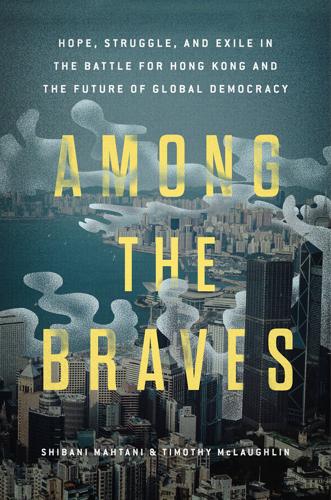
Among the Braves: Hope, Struggle, and Exile in the Battle for Hong Kong and the Future of Global Democracy
by
Shibani Mahtani
and
Timothy McLaughlin
Published 7 Nov 2023
Employees were packing away hundreds of neon Post-It notes into flimsy plastic bags, scrubbing bits of glue that remained after peeling off stickers featuring a smiling cartoon pig, the mascot of the local online forum LIHKG that had become an enduring symbol of the protests. People were afraid. The frosted-glass door to the café was completely opaque. We had buzzed in and looked up at the CCTV. Our faces were covered with surgical masks, this being the height of the COVID-19 pandemic, but they’d know who we were. They were expecting us. The security was warranted. A raid on this café would have revealed folder after folder, each containing details of successful rescues, of people who were now living free, away from the grasp of the Chinese Communist Party. Tommy, although we didn’t know him yet, wasn’t the only one looking for a way out.
…
All you had to do was get on a plane. Canada, the UK, Australia—all were coming up with special immigration pathways for Hong Kongers in response to the new law. Get there, and they’d help with the rest, including sponsors or temporary housing. The pandemic offered some inconveniences—quarantine, COVID-19 tests, lockdowns—but that was nothing compared to the risk of staying put. The more complicated cases involved those without passports and facing charges such as rioting, arson, or assaulting a police officer. Given that the city’s only land border was with China, there was only one way out: over water.
…
Gwyneth had lived through SARS and knew the gravity of what was unfolding. This was not something that could be isolated. Winter in Amsterdam tended to put life in slow motion, everyone a little more content to stay in the confines of their homes, struggling with the gray dampness and the early sunsets. But the pandemic—now named COVID-19—put everything in superspeed. Italy became its first major epicenter outside China, the virus ripping through elder-care facilities and overwhelming hospitals. Correspondents turned from their usual fare of Vatican goings-on, migration, and politics to writing about death, disease, and social disruption.4 The Netherlands recorded its first case on February 27, carried by a man who had traveled to Lombardy, in northern Italy.

The Hidden Globe: How Wealth Hacks the World
by
Atossa Araxia Abrahamian
Published 7 Oct 2024
Freeports shared a form and a function—to suspend their contents in time and space—but for whom, at what cost, and for how long varied, confusingly, by jurisdiction. This is still the case. The contents of these entrepôts also depend on the facilities: some have all the sophistication of a Home Depot, while others engineer their environment to the millimeter. Pharmaceutical companies stored COVID-19 vaccine in extra-cold freezers inside U.S. foreign-trade zones as they awaited FDA approval. An oenologist told me that when she worked at a vineyard in Bordeaux, the wine they produced was bottled and immediately shipped off to a tax-free warehouse in London to age. “I don’t think the buyers ever drank it,” she said.
…
For decades their use was limited, because the law didn’t allow manufacturing to take place in these enclaves until the 1950s, and changes to the tax code didn’t make them particularly appealing until the 1980s. Today, there are nearly two hundred active FTZs across all fifty states, and they’ve been used to manufacture everything from Chrysler cars to GE appliances. This was also where COVID-19 vaccines were stored “in” the United States ahead of their emergency approval by the Food and Drug Administration in 2020. Like freeports, FTZs are a bridge between the nation and the world—a place that explodes the binary between nationalist politics and globalist economics. And what better location to experiment on them than Puerto Rico, a place that was similarly hard to place?
…
“Back then, this was really a tool of the Washington Consensus trying to liberalize the world order and making places friendly to foreign, and especially American, investment, and pulling back government intervention in these countries,” he said over Zoom from Vanuatu, the South Pacific island nation where he worked as a consultant during much of the COVID-19 pandemic. “And zones played a crucial tool in that agenda. But I think now, they’re no longer really an effective tool even for accomplishing that. They sort of won. It’s not just the zones offering benefits. The whole country is.” * * * • • • The fact that free zones dovetailed seamlessly with the economic orthodoxy of the 1980s—Reaganomics, Thatcherism, and the rise of gigantic multinational corporations—obscured a nagging problem: it wasn’t entirely clear whether they were the economic Miracle-Gro that their proponents imagined.

Fulfillment: Winning and Losing in One-Click America
by
Alec MacGillis
Published 16 Mar 2021
The company’s initial reaction to the pandemic was to announce that it was seeding a charitable fund for its temp workers and contract delivery drivers who lacked health coverage and to encourage the public to donate to it. This met with some derision. It also promised two weeks of paid leave to anyone with a COVID-19 diagnosis and offered unpaid time off, without risk of being penalized for missing shifts, to anyone who wanted to stay home as a precaution. It offered a temporary $2 bump in hourly pay to those who kept working. It set up temperature checks and COVID-19 testing stations for arriving workers. It issued masks and provided hand sanitizer and disinfectant. Hector Torrez watched the measures go into effect at the warehouse in Thornton, Colorado.
…
Its general manager, Clint Autry: Joe Rubino, “Amazon’s Gamble on Finding 1,500 Workers for Robotic Warehouse in Thornton May Not Have Been a Gamble After All,” The Denver Post, March 20, 2019. the Bronx … twice as likely to be fatal: Ese Olumhense and Ann Choi, “Bronx Residents Twice as Likely to Die from COVID-19 in NYC,” The City, April 3, 2020. money for his mother’s cremation: Joshua Chaffin, “Elmhurst: Neighborhood at Center of New York’s COVID-19 Crisis,” Financial Times, April 10, 2020. in the small city of Albany, Georgia: Ellen Barry, “Days After Funeral in a Georgia Town, Coronavirus ‘Hit Like a Bomb,’” The New York Times, March 30, 2020. starting in 1980, this convergence reversed: Robert Manduca, “Antitrust Enforcement as Federal Policy to Reduce Regional Economic Disparities,” The Annals of the American Academy of Political and Social Science 685, no. 1 (September 2019): 156–171.
…
In late July, Amazon announced that its profit had doubled in the second quarter, with sales up by a stunning 40 percent from those a year earlier. On the news, its share price surged yet higher—by early September, it was up by 84 percent on the year, more than double the rise of other tech giants. “Simply put, Covid-19, in our view, has injected Amazon with a growth hormone,” wrote one industry analyst in a note to investors. To handle the surge in business, the company had, between January and October, added more than 425,000 employees worldwide, bringing its total number of nonseasonal employees in the United States to 800,000 and its global total to more than 1.2 million, up by half from a year earlier and now behind only Walmart and China National Petroleum (and that tally didn’t even include the 500,000 drivers who were delivering its packages).

Open: The Story of Human Progress
by
Johan Norberg
Published 14 Sep 2020
They have an incentive to stop changes with bans, regulations, monopolies, the burning of boats or the building of walls. And when the rest of us panic about the world we let them have their way. And this is how every period of openness and innovation in history was ended, except one: the one that we are in right now. An open world, if we can keep it. The COVID-19 pandemic illustrates what can happen and what is at stake. International trade and mobility have not only enriched the world, they have also made it possible for microorganisms to hitch a ride. Historically, rulers have used such great plagues to extend control over their populations, pull up the drawbridges and attack scapegoats, like Jews, foreigners or witches.
…
(The risk of dying in a crash has since declined by 95 per cent.) In the early 1990s, books with titles like The Jobless Future and The End of Work predicted computers would take our jobs and that we would soon see massive unemployment. (Since then the US economy has created 35 million new net jobs, and the employment rate before the COVID-19 pandemic was almost exactly the same.) In 1995 the flagship magazine of American conservatives, Weekly Standard, had the cover story ‘Smash the Internet’, featuring a sledgehammer destroying a screen. Some of the predicted problems did come about, but we adapted to them in ways no one could have foreseen, because those adaptations were made by millions of people based on what they learned, not by a committee based on prophesies.
…
INDEX Abbasid Caliphate (750–1258), 6, 136–7, 138, 169, 353 abortion, 113 absolutist monarchies, 154, 155, 170, 182, 185 Academy Awards, 82 Accenture, 375 accountants, 41 Acemoglu, Daron, 185, 187, 200 Achaemenid Empire (550–330 BC), 86–7, 88, 249 Acton, Lord, see Dalberg-Acton, John Adams, Douglas, 295 Adobe, 310 Advanced Research Projects Agency (ARPA), 306 Aeschylus, 132 affirmative action, 244 Afghanistan, 70, 345 Age of Discovery, 177 agriculture, 39–40, 42, 74, 171, 263 Akbar I, Mughal Emperor, 98 Akkadian Empire (c. 2334–2154 BC), 42 Alaska, 76 Albania, 54 Albertus Magnus, Saint, 145 d’Alembert, Jean-Baptiste le Rond, 154 Alexander III ‘the Great’, Basileus of Macedon, 87–9 Alexandria, Egypt, 134 algae, 332 algebra, 137 Alibaba, 311 Allport, Gordon, 244–5 Almohad Caliphate (1121–1269), 137–8 alpha males, 227–8, 229 Alphaville, 245 altruism, 216 Amalric, Arnaud, 94 Amazon, 275, 311 America First, 19, 272 American Civil War (1861–5), 109 American Declaration of Independence (1776), 103, 201, 202 American Revolutionary War (1775–83), 102–3, 200–201 American Society of Human Genetics, 76–7 Americanization, 19 Amherst, William, 1st Earl Amherst, 176–7 amphorae, 48 Amsterdam, Holland, 150, 152, 153 An Lushan Rebellion (755–63), 352 anaesthesia, 279, 296 anagrams, 83 Anatolia, 42, 74 Anaximander, 127 Anaximenes, 127 al-Andalus (711–1492), 97, 137–9, 140 Andromeda, 88 Anglo–French Treaty (1860), 53–4 Anhui, China, 315 anti-Semitism, 11, 94–7, 109, 220, 233, 251, 254, 255 anti-Semitism, 254–5, 356 Antonine Plague (165–80), 77 Antoninus Pius, Roman Emperor, 91 Apama, 88 Appiah, Kwame Anthony, 5 Apple, 82, 195, 304, 311, 319 Apuleius, 89 Arab Spring (2011), 10, 342 Arabic numerals, 70, 137, 156 Arabic, 136, 137, 140 archaeology, 21–2, 31, 32, 38, 43, 50, 51 Archer Daniels Midland, 329 Aristides, Aelius, 48 Aristophanes, 129, 131, 132 Aristotle, 130–31, 132, 137, 141–6, 161 Armenians, 136, 220 ARPAnet, 306 Art Nouveau, 198 art, 198 Artaxerxes III, Persian Emperor, 87 Ashkenazi Jews, 99 Ashoka, Mauryan Emperor, 53 Assyria (2500–609 BC), 248–9 Assyrian Empire (2500–609 BC), 41, 43, 86 astronomy, 80, 145–6, 150 Atari, 304 Athens, 47, 53, 89, 90, 131, 134 Atlas Copco, 65 Augustine of Hippo, 133, 139 Australia, 50–53, 76, 262 Australopithecus afarensis, 24–5 Austria, 1, 150, 151, 190 Austria-Hungary (1867–1918), 179, 254 Battle of Vienna (1683), 237, 238 Habsburg monarchy (1282–1918), 151, 179, 190, 237 migration crisis (2015–), 342 Mongol invasion (1241), 95 Nazi period (1938–45), 105 Ötzi, 1–2, 8–9, 73, 74 Thirty Years War (1618–48), 150 Authoritarian Dynamic, The (Stenner), 343 authoritarianism, 4, 14, 220, 343–61, 363, 379 democracy and, 357 economics and, 346–51 exposure to difference and, 242 innovation and, 318 insecurity and, 338, 342, 378 media and, 346–9 nostalgia and 351–4 predisposition, 220, 343–6 populism and, 325, 350–51 scapegoats and, 355–6 science and, 161–3 automatic looms, 179 automation, 63, 312–13 Averroes, 137–8, 143, 144, 145 Aztec Empire (1428–1521), 55 Bab-el-Mandeb Strait, 75 baby-boom generation (1946–64), 294, 340 Babylon, 39, 86–7 Babylonia (1895–539 BC), 39, 42, 43, 86–7, 128, 131, 249, 267 Bacon, Francis, 147, 156, 165–6, 201 bad news, 322 Baghdad, 70, 136, 353 Bahrain, 42 Bailey, Ron, 11 Bailyn, Bernard, 201 balance of trade, 59–60 Banda Islands, 100 Bangladesh, 270 Bannon, Steve, 14, 108 Barcelona, Catalonia, 320 Basel, Switzerland, 152 Battle of Vienna (1683), 237, 238 Bayezid II, Ottoman Sultan, 98 Bayle, Pierre, 158 Beginning of Infinity, The (Deutsch), 332 Behavioural Immune System, 222 Beirut, Lebanon, 236 benefit–cost ratio, 60, 61, 62 Berges, Aida, 80 Bering land bridge, 76 Berkeley, see University of California, Berkeley Berlin Wall, fall of (1989), 10, 340, 341, 363, 364 Berners-Lee, Timothy, 307–8 Bernstein, William, 42 Berossus, 267 Better Angels of Our Nature, The (Pinker), 243 Beveridge, William, 59 Béziers, France, 94 Bezos, Jeffrey, 274, 275–6, 277 Bi Sheng, 171 Bible, 46, 72, 248–50, 296 bicycles, 297 de Biencourt, Charles, 189 Big Five personality traits, 7 Black Death (1346–53), 77, 139, 208, 356, 352, 356 Blade Runner, 334 Bletchley Park, Buckinghamshire, 124–6 Blue Ghosts, 236 Bohr, Niels, 105 Bolt, Beranek and Newman (BBN), 307 bonobos, 226–7 Book of Jonah, 248–50 Borjas, George, 116 Boston, Massachusetts, 122, 223 Boudreaux, Donald, 62, 270 Boulton, Matthew, 194 Bowles, Samuel, 216 Boym, Svetlana, 288 Brandt, Willy, 364 Brewer, Marilynn, 247 Brexit (2016–), 9, 14, 118, 238, 240–41, 349, 354, 379 Brezhnev, Leonid, 315 Britain, 169, 181–99 Acts of Union (1707), 101, 194 Afghanistan War (2001–14), 345 Amherst Mission (1816), 176–7 anti-Semitism in, 254 arts, 198 Bletchley Park, 124–6 Brexit (2016–), 9, 14, 118, 238, 240–41, 349, 354, 379 Cheddar Man, 74 Cobden–Chevalier Treaty (1860), 53–4 coffee houses, 166 colonies, 84, 191, 194, 200 Corn Laws repeal (1846), 53, 191 creative destruction in, 179 crime in, 119, 120 Dutch War (1672–4), 101 English Civil War (1642–1651), 148, 183, 184, 201 Glorious Revolution (1688), 101, 185–8, 190, 193 hair powder tax (1795), 72 immigration in, 113, 115, 118, 119, 120, 193–4 Industrial Revolution, 188–99, 202 innovation in, 53, 189–90 Internet, development of, 307–8 Iraq War (2003–11), 345 Levellers, 183–4, 186 literacy in, 188, 198 literature, 188–9 London Bridge stabbings (2019), 120 London 7/7 bombings (2005), 341 Macartney Mission (1793), 176 Magna Carta (1215), 5 monopolies, 182 MPs’ expenses scandal (2009), 345 Muslim community, 113 Navigation Acts, 192 nostalgia in, 294 open society, 169, 181–2, 195–9 patent system, 189–90, 203, 314 Peasants’ Revolt (1381), 208 political tribalism in, 238, 240–41 poverty in, 256 railways in, 297 Royal Society, 156, 157, 158, 196, 296 ruin follies, 286–7 slavery, abolition of (1807), 182, 205 smuggling in, 192 Statute of Labourers (1351), 208 United States, migration to, 104 West Africa Squadron, 205 Whig Party, 185, 201 World War II (1939–45), 124–6 British Broadcasting Corporation (BBC), 135 Bronze Age (c. 3300–600 BC) Late Bronze-Age Collapse (1200–1150 BC), 44, 49, 54 migration to Europe, 74–5 Phoenician civilization, 43–6, 49, 70 Sumerian civilization, 42–3 Brotherton, Rob, 322 Brown, Donald, 219, 283 Bruges, Flanders, 208 Bruno, Giordano, 150 Bryn Mawr College, 201 Buddhism, 96, 149, 352 Bulgaria, 73, 342 Bureau of Labor Statistics, US, 65 Burke, Edmund, 152, 292 Bush, George Walker, 328 ByteDance, 318 Byzantine Empire (395–1453), 94, 134, 135, 155, 224 California Gold Rush (1848–1855), 104 Calvin, John, 149 Calvinism, 6, 99, 153, 356 Canada, 235, 258 Caplan, Bryan, 258 Caracalla, Roman Emperor, 91 Carbon Engineering, 332 Cardwell, Donald, 10 Cardwell’s Law, 10 Carlson, Tucker, 82, 302 Carlyle, Thomas, 206 Carthage (814–146 BC), 45 Caspian Sea, 75 Cathars, 94, 142 Catherine II, Empress of Russia, 154 Catholicism, 208 in Britain, 101, 185–6, 191 Crusades, 94, 138 in Dutch Republic, 99 exiles and, 153 in France, 154 Jews, persecution of, 97–8, 100, 106, 140, 233 Inquisition, 94, 97, 98, 100, 143, 150 in Italy, 6, 169 Muslims, persecution of, 97, 106, 233 Papacy, 102, 142, 143, 152, 155, 178, 237 in Rwanda, 230–31 in United States, 102, 104, 108, 254 values and, 114 Cato’s Letters (Trenchard and Gordon), 201 Celts, 89, 289 Central Intelligence Agency (CIA), 313 Ceres, 89 Cerf, Vinton, 307 CERN (Conseil européen pour la recherche nucléaire), 306, 307 chariot racing, 224 Charles I, King of England, Scotland and Ireland, 148, 179, 183 Chávez, Hugo, 354 Chechen War, Second (1999–2009), 354 Cheddar Man, 74 cheongsam dresses, 73 Chesterton, Gilbert Keith, 286, 300 Chicago principles, 164–5 Chicago, Illinois, 202 child mortality, 168–9 Child, Josiah, 184 children, 26 chimpanzees, 24, 25, 32, 36, 226–7, 228 China, 4, 5, 6, 13, 84, 270, 314–18 Amherst Mission (1816), 176–7 An Lushan Rebellion (755–63), 352 Antonine Plague (165–80), 77 authoritarianism, 4, 162–3, 175, 318, 325, 343 budget deficits, 60 cheongsam dresses, 73 Confucianism, 129, 149, 169, 176 COVID-19 pandemic (2019–20), 4, 11–12, 162–3 Cultural Revolution (1966–76), 355 dictatorships, support for, 367 dynamism in, 315–18 ethnic groups in, 84 Great Wall, 178 industrialization 169, 172–3, 207 intellectual property in, 58 kimonos, 73 literacy in, 148 Macartney Mission (1793), 176 Ming dynasty (1368–1644), 54, 148, 175, 177–8, 179, 215 national stereotypes, 235, 236 overcapacity in, 317 paper, invention of, 136 private farming initiative (1978), 315–16 productivity in, 317 poverty in, 273, 316 Qing dynasty (1644–1912), 148, 149, 151, 153, 175–7, 179, 353 Reform and Opening-up (1979–), 4, 53, 56, 315–16 SARS outbreak (2002), 162 science in, 4, 13, 70, 153, 156, 162–3, 169–73, 269 Silk Road, 171, 174, 352 Song dynasty (960–1279), 53, 169–75 state capitalism in, 316–17 Tang dynasty (618–907), 84, 170, 177, 352 Taoism, 129, 149 trade barriers, 59 United States, migration to, 104, 109, 254 United States, trade with, 19, 57, 58–9, 62–3, 64 WTO accession (2001), 63 Yuan Empire (1271–1368), 174–5 Zheng He’s voyages (1405–33), 177–8 Chinese Exclusion Act (1882), 254 Christensen, Clayton, 305 Christianity, 46, 70, 96, 129 Bible, 46, 72, 248–50, 296 in Britain, 101 Calvinism, 6, 99, 149, 153, 356 Cathars, 94, 142 clash of civilizations narrative, 237 Crusades, 94, 138 Catholicism, see Catholicism Dominican order, 356 in Dutch Republic, 99 economic hardship and, 359 fundamentalism, 133–5, 149 Great Awakening (1730–55), 102 Great Vanishing, 134–5 Inquisition, 97, 98, 100 Jews, persecution of, 95, 96, 97 Lutheranism, 99, 356 in Mongol Empire, 96 Old Testament, 46, 72 orthodox backlash, 149–50 Orthodox Church, 155 Papacy, 102, 142, 143, 152, 155, 178, 233 Protestantism, 99, 104, 148, 149, 153, 169, 178 Puritanism, 99, 102 Rastafari and, 72 Reformation, 148, 155 in Roman Empire, 90, 93–4 science and, 133–5, 141–6, 149–50 Thirty Years War (1618–48), 97 tribalism and, 230–31, 246 zero-sum relationships and, 248–50 Chua, Amy, 84 Cicero, 141 Cilician, Gates, 42 cities, 40, 79, 140 division of labour in, 40 immigration and, 114, 250 innovation and, 40, 53, 79, 140, 145, 172, 287 liberalism and, 339 Mesopotamia, 37–43 open-mindedness and, 35 productivity and, 40, 98 tradition and, 287, 291 turtle theory and, 121–2 civic nationalism, 377–8 civil society, 6, 199, 253, 358, 363 clash of civilizations narrative, 237, 362–3, 365–6 ‘Clash of Civilizations?’
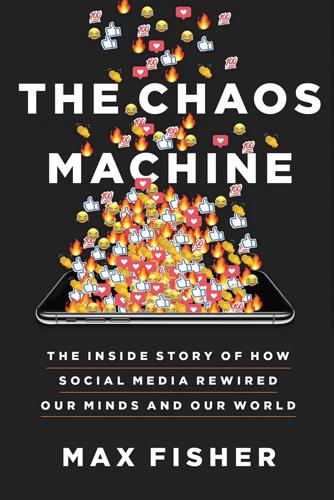
The Chaos Machine: The Inside Story of How Social Media Rewired Our Minds and Our World
by
Max Fisher
Published 5 Sep 2022
“Fact-Checking a Facebook Conspiracy about Bill Gates, Dr. Fauci and Covid-19,” Daniel Funke, Politifact, April 14, 2020. 13 “Coronavirus is a government made”: Her post received 90,000 shares and 350,000 likes. Tweet by @krisssnicolee, March 7, 2020. twitter.com/krisssnicolee/status/1236309595544584192 14 two doctors presenting phony: Their video received 4.3 million views. “Cue the debunking: Two Bakersfield Doctors Go Viral with Dubious COVID Test Conclusions,” Barbara Feder Ostrov, Cal Matters, April 27, 2020. 15 mushroomed across YouTube: “How Has Covid-19 Affected the Anti-Vaccination Movement? A Social Media Analysis,” Commetric, June 2, 2020. 16 “explosive growth in anti-vaccination”: “The Online Competition between Pro- and Anti-Vaccination Views,” Neil F.
…
But their business model—keeping people glued to their platforms as many hours a day as possible—and the underlying technology deployed to achieve this goal remained largely unchanged. And while the problems they’d promised to solve only worsened, they made more money than ever. The new decade brought a wave of crises. The Covid-19 pandemic, racial reckoning and backlash in the United States, the accelerating rise of a violent new far right, and the attempted destruction of American democracy itself. Each tested the platforms’ influence on our world—or revealed it, exposing ramifications that had been building for years. In summer 2020, an independent audit of Facebook, commissioned by the company under pressure from civil rights groups, concluded that the platform was everything its executives had insisted to me it was not.
…
“I made this pitch on a human level: ‘Go back to your companies, get ready, start pulling together teams,’” he has recalled telling them. He set up calls between Tedros and the heads of Facebook, Google, and other platforms. Mark Zuckerberg and Sheryl Sandberg suggested the WHO set up pages on WhatsApp and Facebook to post updates and answer user questions. On February 13, two weeks after the spread of the virus now known as Covid-19 had been declared a global emergency, Pattison landed in California for a meeting, hosted at Facebook, with Silicon Valley’s top firms. Life remained normal in the United States and Europe. But his sense of the crisis had already shifted. There was, he told CNBC on the day of the meeting, an “infodemic.”

Winning: The Unforgiving Race to Greatness
by
Tim S. Grover
and
Shari Wenk
Published 17 May 2021
Winners have a “Done” list. You have a list that never gets shorter? Things you just can’t seem to accomplish, because you never have the time, or knowledge, or money, or approval from others, or whatever you claim is stopping you? Things you could have done when you were quarantined at home during the Covid-19 pandemic, with literally nothing to do even after you watched every possible Netflix series? Do yourself a favor: Either do them, or admit you’re never doing them and move on. Managing that “back burner” is a ridiculous waste of time and energy; all those burners generate the same amount of heat anyway, and those things stay on your mind and taunt you every time you start thinking about everything you’ve left unfinished—or unstarted.
…
That’s the difference between a winning quarterback who can call an audible in a bad situation and turn it into a success, and a failing quarterback who can only execute the play he rehearsed. If you’re flying a fighter jet, you can’t leave complete control to the autopilot; you must be ready at all times to override the system and handle the unexpected. Many of us had to face that challenge during the Covid-19 pandemic, which disrupted or altered almost every aspect of our lives in some way. Suddenly, basic routines changed—or disappeared altogether—with limited options to put things back the way they were. All the things that were part of a daily routine—what time you got up, when you left the house, when you went to the gym, where you had lunch, who you saw and spoke to, what time you returned home, what you did when you came in the door, how you relaxed in the evening, what time you went to bed—were suddenly altered or eliminated.
…
I can’t argue with you about bringing the coach back, you made your decision to break up the team, fine. But I still control how we play. So I will control the one thing I can: Winning. You can control showing up. You can control pushing yourself harder. You can control not complaining. You can control not giving a fuck. You can control being there. During the Covid-19 pandemic, I just about lost my mind every time I heard from an athlete who said he or she had no way to work out. Your facility is closed, you have no control over that, I get it. You have a basement? A yard? A field? We will control the things we can control. What are you willing to control, what will you allow to control you?
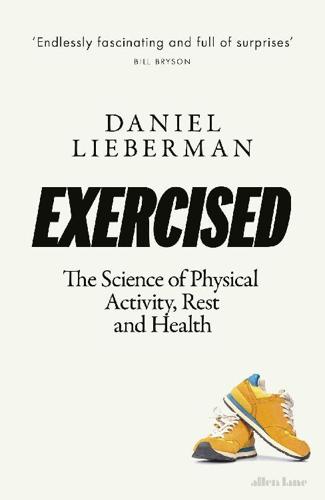
Exercised: The Science of Physical Activity, Rest and Health
by
Daniel Lieberman
Published 2 Sep 2020
Endurance athletes such as cross-country skiers had a stunning two-thirds lower risk of heart attacks than average Finns, while power athletes like weight lifters and wrestlers had one-third higher rates of heart attacks.48 Bottom line: weight training isn’t bad, but don’t skip the cardio. Respiratory Tract Infections and Other Contagions As I edit these words in March 2020, COVID-19, the worst pandemic since the 1918 Spanish Flu, is overwhelming the globe, causing massive numbers of people to fall ill, many to die, and plunging the world into economic crisis. The virus is a stark reminder that contagious diseases have never ceased to pose a profound and terrifying threat to human health. Even though the majority of people who get COVID-19 experience only mild to moderate symptoms, it is many times deadlier than most viral infections of the respiratory tract, including influenza.
…
According to the Centers for Disease Control and Prevention, in a typical year influenza kills about fifty thousand Americans, most of them elderly. Other infectious diseases like AIDS, hepatitis, and tuberculosis also take the lives of substantial numbers of people around the world annually. You may be wondering what physical activity has to do with contagions like respiratory tract infections (RTIs). During epidemics like COVID-19, health officials urge us to wash our hands more often and more thoroughly, to practice social distancing, to cough into our elbows, and—trickiest of all—to stop touching our faces. These fundamental, sensible measures effectively help impede transmission of the virus. Other key, proven treatments include vaccines that teach our immune systems to protect us from particular viruses, and antiviral medicines.
…
Contagious pathogens flourish in crowded, unhygienic conditions, and when they jump to humans from other species, they are especially dangerous because no one’s immune system has encountered them before. So, while hunter-gatherers suffer from plenty of infectious illnesses, highly contagious epidemic diseases like COVID-19 are partly mismatches made possible by civilization, and that explains why social distancing and handwashing are key tools to fight them.49 Persistent lack of physical activity may be an additional, partial mismatch for the immune system. There are longstanding concerns that excessively demanding physical activities like running a marathon can compromise the immune system’s capabilities, but several lines of evidence indicate that regular, moderate physical activity has the potential to reduce the risk of contracting certain contagious diseases, including RTIs.50 In addition, exercise appears to slow the rate at which the immune system deteriorates as we age.51 But exercise is no magic bullet.

DK Eyewitness Top 10 Azores
by
Dk Eyewitness
Published 22 Dec 2022
DIRECTORY PASSPORTS AND VISAS Australian Embassy Avenida da Liberdade 200, 2nd Floor, Lisbon, Portugal (213) 101 500 British Consulate General Rua de São Bernardo 33, Lisbon, Portugal (213) 924 000 Canadian Embassy Avenida da Liberdade 198–200, 3rd Floor, Lisbon, Portugal (213) 164 600 Ministry of Foreign Affairs vistos.mne.gov.pt United States Consulate General Avenida Príncipe do Mónaco 6, Ponta Delgada, São Miguel (296) 308 330 GOVERNMENT ADVICE Australian Department of Foreign Affairs and Trade dfat.gov.au smartraveller.gov.au Câmara Municipal de Lisboa visitar.lisboa.pt UK Foreign, Commonwealth & Development Office (FCDO) gov.uk/foreign-travel-advice US Department of State travel.state.gov CUSTOMS INFORMATION Visa HQ visahq.com/portugal INSURANCE EHIC ec.europa.eu GHIC ghic.org.uk HEALTH Centro de Saúde de Santa Cruz das Flores Largo 25 de Abril, Santa Cruz das Flores, Flores (292) 590 270 PERSONAL SECURITY Tourist Police Rua da Alfândega, Ponta Delgada, São Miguel (296) 205 500 Safe Space Alliance safespacealliance.com TRAVELLERS WITH SPECIFIC REQUIREMENTS Accessible Portugal accessibleportugal.com Cresaçor azoresforall.com Disabled Holidays disabledholidays.com European Network for Accessible Tourism accessibletourism.org MONEY Nova Câmbios João Paulo II Airport, Ponta Delgada, São Miguel • Open 7am–9pm Mon–Fri, 7am–2pm & 3–5pm Sat & Sun (296) 306 770 MOBILE PHONES AND WI-FI Frequency Check frequencycheck.com MAIL CTT Correios de Portugal ctt.pt VISITOR INFORMATION Azores Trails trails.visitazores.com Epicure and Culture epicureandculture.com Parques Naturais parquesnaturais.azores.gov.pt Percursos do Artesanato dos Açores artesanato.azores.gov.pt Sentir e Interpretar o Ambiente dos Açores siaram.azores.gov.pt Spot Azores spotazores.com Tourist Helpline (296) 284 569 Visit Azores visitazores.com TRIPS AND TOURS Archipelago Choice archipelagochoice.com Biosphere Expeditions biosphereexpeditions.org Melo Agência de Viagens melotravel.com Nature Trek naturetrek.co.uk Portugal Walks portugalwalks.com Responsible Travel responsibletravel.com Sunvil sunvil.co.uk Tour Azores tourazores.com ACCOMMODATION Airbnb airbnb.com Azores Pousadas de Juventude pousadasjuvacores.com Casas Açorianas casasacorianas.com COVID-19 The COVID-19 pandemic proved that situations can change suddenly. Always check before visiting attractions and hospitality venues for up-to-date hours and booking requirements. Back to Practical Information Back to Streetsmart Back to Streetsmart PLACES TO STAY Historic Hotels Eco and Nature Hotels Contemporary Hotels B&Bs Boutique Hotels Budget Hotels Historic Hotels Casa do Campo de São Francisco Campo de São Francisco 15–17, Ponta Delgada, São Miguel • (296) 287 144 • www.casacamposaofrancisco.com • €€ This impressive 18th-century mansion features antique furnishings.
…
The Centro de Saúde de Santa Cruz das Flores has a hyperbaric chamber. Farmácias (pharmacies) are widespread and identified by their green cross signage. Tap water is safe to drink; however, water sourced from fountains should be avoided, particularly those noted as água não potável (not suitable for drinking). For information regarding COVID-19 vaccination requirements, consult government advice. No other vaccinations are required to enter Portugal, but routine vaccines should be kept up-to-date. Personal Security The Azores are considered a safe destination for visitors, but it is still wise to take precautions against theft. Keep your valuables in a safe place when in your accommodation and on you at all other times.

The Great Experiment: Why Diverse Democracies Fall Apart and How They Can Endure
by
Yascha Mounk
Published 19 Apr 2022
GO TO NOTE REFERENCE IN TEXT new rules established a racial pecking order: Associated Press, “Court Rules against Biden Administration’s Use of Race, Sex to Allocated COVID-19 Aid,” Oregonian, May 28, 2021, https://www.oregonlive.com/business/2021/05/court-rules-against-using-race-sex-to-allocate-federal-aid.html. See also Zaid Jilani, “What’s Race Got to Do with It?,” Persuasion, May 10, 2021, https://www.persuasion.community/p/whats-race-got-to-do-with-it. GO TO NOTE REFERENCE IN TEXT Thankfully, a federal court held: See Hailey Konnath, “6th Circ. Blocks SBA’s COVID-19 Loan Priority For Minorities,” Law 360, https://www.law360.com/articles/1389372/6th-circ-blocks-sba-s-covid-19-loan-priority-for-minorities. GO TO NOTE REFERENCE IN TEXT In a telling study from the United Kingdom: Robert Ford and Anouk Kootstra, “Do White Voters Support Welfare Policies Targeted at Ethnic Minorities?
…
Because the central government was incapable of imposing its rules on much of the country, it had tremendous difficulties in raising revenues. That made it impossible to sustain public goods at any significant scale. The quality of schools in Afghanistan remains abysmal. Welfare benefits are minimal. Even before COVID-19 hit, the public health system was perpetually close to collapse. There are whole stretches of the country in which there are barely any paved roads, few functioning schools, and virtually no doctors. The dire impact this has had on the quality of life is evident from just about every cross-national comparison.
…
GO TO NOTE REFERENCE IN TEXT Welfare benefits are minimal: Abdul Majeed Labib, “The Islamic Republic of Afghanistan: Updating and Improving the Social Protection Index,” Asian Development Bank, August 2012, https://www.adb.org/sites/default/files/project-document/76049/44152-012-reg-tacr-01.pdf. GO TO NOTE REFERENCE IN TEXT Even before COVID-19 hit: “Coronavirus Pushing Millions into Poverty: SIGAR,” Al Jazeera, July 31, 2020. https://www.aljazeera.com/economy/2020/7/31/coronavirus-pushing-millions-of-afghans-into-poverty-sigar. GO TO NOTE REFERENCE IN TEXT There are whole stretches: “Afghanistan,” CIA World Factbook, April 21, 2021, https://www.cia.gov/the-world-factbook/countries/afghanistan.
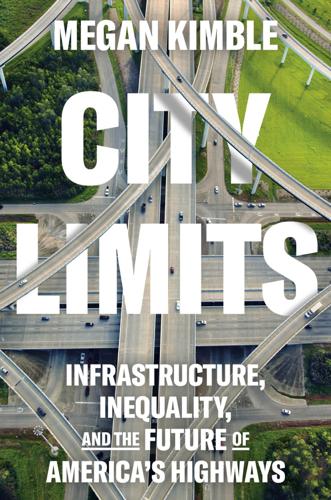
City Limits: Infrastructure, Inequality, and the Future of America's Highways
by
Megan Kimble
Published 2 Apr 2024
It is the most congested stretch of highway in Texas, fourth in the nation for freight. “I will just close by asking, if not now, when?” he says. It is an odd moment to conjure up such urgency to expand a highway. Earlier this morning, there was barely a ripple of brake lights on I-35. A month after the COVID-19 pandemic shuttered schools and businesses, forcing people to remain at home and connect through a computer instead of a car, it is hard to imagine our ominously gridlocked future, when the congested world we knew has disappeared so precipitously. But as the commissioners discuss the proposal in the awkward staccato of virtual communication, they remind their audience of the importance of the I-35 corridor to the state.
…
Instead of downtown businesspeople and bureaucrats, parents worked at the hospital across I-35 or at the University of Texas, a few blocks west. In the larger space, Dina was able to more than double the school’s capacity to 200 students and hire more teachers. After a few years, they leased another building across the street for their infant care. They closed briefly when COVID-19 swept through the state. When they opened again, kids showed up at school in tiny masks. By early 2021, Dina started to think about retiring. She was sixty-six and she was tired. Her daughter, Alma—the school’s namesake—had returned to Austin and worked as an assistant director, along with Jaime Cano.
…
“I think it’s going to destroy the Northside for ten years and put a lot of people out of their homes.” Mattress Mack is a Republican. He is a small government guy, a longtime supporter of the Tea Party. In 2020, he was appointed by Governor Greg Abbott to serve on the Strike Force to Open Texas, which reopened the state for business during the COVID-19 pandemic. The highway expansion is “a big government boondoggle,” he says. The expansion would consume a small sliver of his parking lot, but that’s not what he finds offensive. “It’s for the fat cats: the highway department and the contractors. Not the people on the Northside who are grinding out a living.

I, Warbot: The Dawn of Artificially Intelligent Conflict
by
Kenneth Payne
Published 16 Jun 2021
DeepMind’s Kareem Ayoub got me started on all this five years ago, and remains a close friend, even if these days AI is the last thing we talk about. Michael Dwyer, my publisher, has been terrific throughout. This is our second book together and hopefully not our last. Euan Thorneycroft at AM Heath gave me some excellent advice early in the process. I wrote most of this book while flat on my back recovering from Covid-19. Suddenly AI didn’t seem like the biggest threat to humanity. I’m so grateful for my friends and family for keeping me sane and looking after me. Thanks especially to Charli Hunt, Jimmy Hillis, Richard Exley and Claire Milner for some good fun in tough times. The book is dedicated to two great friends, Stephen Hare and Stephanie Jones, in honour of adventures past and adventures to come.
…
A-10 Warthog abacuses Abbottabad, Pakistan Able Archer (1983) acoustic decoys acoustic torpedoes Adams, Douglas Aegis combat system Aerostatic Corps affective empathy Affecto Afghanistan agency aircraft see also dogfighting; drones aircraft carriers algorithms algorithm creation Alpha biases choreography deep fakes DeepMind, see DeepMind emotion recognition F-117 Nighthawk facial recognition genetic selection imagery analysis meta-learning natural language processing object recognition predictive policing alien hand syndrome Aliens (1986 film) Alpha AlphaGo Altered Carbon (television series) Amazon Amnesty International amygdala Andropov, Yuri Anduril Ghost anti-personnel mines ants Apple Aristotle armour arms races Army Research Lab Army Signal Corps Arnalds, Ólafur ARPA Art of War, The (Sun Tzu) art Artificial Intelligence agency and architecture autonomy and as ‘brittle’ connectionism definition of decision-making technology expert systems and feedback loops fuzzy logic innateness intelligence analysis meta-learning as ‘narrow’ needle-in-a-haystack problems neural networks reinforcement learning ‘strong AI’ symbolic logic and unsupervised learning ‘winters’ artificial neural networks Ashby, William Ross Asimov, Isaac Asperger syndrome Astute class boats Atari Breakout (1976) Montezuma’s Revenge (1984) Space Invaders (1978) Athens ATLAS robots augmented intelligence Austin Powers (1997 film) Australia authoritarianism autonomous vehicles see also drones autonomy B-21 Raider B-52 Stratofortress B2 Spirit Baby X BAE Systems Baghdad, Iraq Baidu balloons ban, campaigns for Banks, Iain Battle of Britain (1940) Battle of Fleurus (1794) Battle of Midway (1942) Battle of Sedan (1940) batwing design BBN Beautiful Mind, A (2001 film) beetles Bell Laboratories Bengio, Yoshua Berlin Crisis (1961) biases big data Bin Laden, Osama binary code biological weapons biotechnology bipolarity bits Black Lives Matter Black Mirror (television series) Blade Runner (1982 film) Blade Runner 2049 (2017 film) Bletchley Park, Buckinghamshire blindness Blunt, Emily board games, see under games boats Boden, Margaret bodies Boeing MQ-25 Stingray Orca submarines Boolean logic Boston Dynamics Bostrom, Nick Boyd, John brain amygdala bodies and chunking dopamine emotion and genetic engineering and language and mind merge and morality and plasticity prediction and subroutines umwelts and Breakout (1976 game) breathing control brittleness brute force Buck Rogers (television series) Campaign against Killer Robots Carlsen, Magnus Carnegie Mellon University Casino Royale (2006 film) Castro, Fidel cat detector centaur combination Central Intelligence Agency (CIA) centre of gravity chaff Challenger Space Shuttle disaster (1986) Chauvet cave, France chemical weapons Chernobyl nuclear disaster (1986) chess centaur teams combinatorial explosion and creativity in Deep Blue game theory and MuZero as toy universe chicken (game) chimeras chimpanzees China aircraft carriers Baidu COVID-19 pandemic (2019–21) D-21 in genetic engineering in GJ-11 Sharp Sword nuclear weapons surveillance in Thucydides trap and US Navy drone seizure (2016) China Lake, California Chomsky, Noam choreography chunking Cicero civilians Clarke, Arthur Charles von Clausewitz, Carl on character on culmination on defence on genius on grammar of war on materiel on nature on poker on willpower on wrestling codebreaking cognitive empathy Cold War (1947–9) arms race Berlin Crisis (1961) Cuban Missile Crisis (1962) F-117 Nighthawk Iran-Iraq War (1980–88) joint action Korean War (1950–53) nuclear weapons research and SR-71 Blackbird U2 incident (1960) Vienna Summit (1961) Vietnam War (1955–75) VRYAN Cole, August combinatorial creativity combinatorial explosion combined arms common sense computers creativity cyber security games graphics processing unit (GPU) mice Moore’s Law symbolic logic viruses VRYAN confirmation bias connectionism consequentialism conservatism Convention on Conventional Weapons ConvNets copying Cormorant cortical interfaces cost-benefit analysis counterfactual regret minimization counterinsurgency doctrine courageous restraint COVID-19 pandemic (2019–21) creativity combinatorial exploratory genetic engineering and mental disorders and transformational criminal law CRISPR, crows Cruise, Thomas Cuban Missile Crisis (1962) culmination Culture novels (Banks) cyber security cybernetics cyborgs Cyc cystic fibrosis D-21 drones Damasio, Antonio dance DARPA autonomous vehicle research battlespace manager codebreaking research cortical interface research cyborg beetle Deep Green expert system programme funding game theory research LongShot programme Mayhem Ng’s helicopter Shakey understanding and reason research unmanned aerial combat research Dartmouth workshop (1956) Dassault data DDoS (distributed denial-of-service) dead hand system decision-making technology Deep Blue deep fakes Deep Green DeepMind AlphaGo Atari playing meta-learning research MuZero object recognition research Quake III competition (2019) deep networks defence industrial complex Defence Innovation Unit Defence Science and Technology Laboratory defence delayed gratification demons deontological approach depth charges Dionysus DNA (deoxyribonucleic acid) dodos dogfighting Alpha domains dot-matrix tongue Dota II (2013 game) double effect drones Cormorant D-21 GJ-11 Sharp Sword Global Hawk Gorgon Stare kamikaze loitering munitions nEUROn operators Predator Reaper reconnaissance RQ-170 Sentinel S-70 Okhotnik surveillance swarms Taranis wingman role X-37 X-47b dual use technology Eagleman, David early warning systems Echelon economics Edge of Tomorrow (2014 film) Eisenhower, Dwight Ellsberg, Daniel embodied cognition emotion empathy encryption entropy environmental niches epilepsy epistemic community escalation ethics Asimov’s rules brain and consequentialism deep brain stimulation and deontological approach facial recognition and genetic engineering and golden rule honour hunter-gatherer bands and identity just war post-conflict reciprocity regulation surveillance and European Union (EU) Ex Machina (2014 film) expert systems exploratory creativity extra limbs Eye in the Sky (2015 film) F-105 Thunderchief F-117 Nighthawk F-16 Fighting Falcon F-22 Raptor F-35 Lightning F/A-18 Hornet Facebook facial recognition feedback loops fighting power fire and forget firmware 5G cellular networks flow fog of war Ford forever wars FOXP2 gene Frahm, Nils frame problem France Fukushima nuclear disaster (2011) Future of Life Institute fuzzy logic gait recognition game theory games Breakout (1976) chess, see chess chicken Dota II (2013) Go, see Go Montezuma’s Revenge (1984) poker Quake III (1999) Space Invaders (1978) StarCraft II (2010) toy universes zero sum games gannets ‘garbage in, garbage out’ Garland, Alexander Gates, William ‘Bill’ Gattaca (1997 film) Gavotti, Giulio Geertz, Clifford generalised intelligence measure Generative Adversarial Networks genetic engineering genetic selection algorithms genetically modified crops genius Germany Berlin Crisis (1961) Nuremburg Trials (1945–6) Russian hacking operation (2015) World War I (1914–18) World War II (1939–45) Ghost in the Shell (comic book) GJ-11 Sharp Sword Gladwell, Malcolm Global Hawk drone global positioning system (GPS) global workspace Go (game) AlphaGo Gödel, Kurt von Goethe, Johann golden rule golf Good Judgment Project Google BERT Brain codebreaking research DeepMind, see DeepMind Project Maven (2017–) Gordievsky, Oleg Gorgon Stare GPT series grammar of war Grand Challenge aerial combat autonomous vehicles codebreaking graphics processing unit (GPU) Greece, ancient grooming standard Groundhog Day (1993 film) groupthink guerilla warfare Gulf War First (1990–91) Second (2003–11) hacking hallucinogenic drugs handwriting recognition haptic vest hardware Harpy Hawke, Ethan Hawking, Stephen heat-seeking missiles Hebrew Testament helicopters Hellfire missiles Her (2013 film) Hero-30 loitering munitions Heron Systems Hinton, Geoffrey Hitchhiker’s Guide to the Galaxy, The (Adams) HIV (human immunodeficiency viruses) Hoffman, Frank ‘Holeshot’ (Cole) Hollywood homeostasis Homer homosexuality Hongdu GJ-11 Sharp Sword honour Hughes human in the loop human resources human-machine teaming art cyborgs emotion games King Midas problem prediction strategy hunter-gatherer bands Huntingdon’s disease Hurricane fighter aircraft hydraulics hypersonic engines I Robot (Asimov) IARPA IBM identity Iliad (Homer) image analysis image recognition cat detector imagination Improbotics nformation dominance information warfare innateness intelligence analysts International Atomic Energy Agency International Criminal Court international humanitarian law internet of things Internet IQ (intelligence quotient) Iran Aegis attack (1988) Iraq War (1980–88) nuclear weapons Stuxnet attack (2010) Iraq Gulf War I (1990–91) Gulf War II (2003–11) Iran War (1980–88) Iron Dome Israel Italo-Turkish War (1911–12) Jaguar Land Rover Japan jazz JDAM (joint directed attack munition) Jeopardy Jobs, Steven Johansson, Scarlett Johnson, Lyndon Joint Artificial Intelligence Center (JAIC) de Jomini, Antoine jus ad bellum jus in bello jus post bellum just war Kalibr cruise missiles kamikaze drones Kasparov, Garry Kellogg Briand Pact (1928) Kennedy, John Fitzgerald KGB (Komitet Gosudarstvennoy Bezopasnosti) Khrushchev, Nikita kill chain King Midas problem Kissinger, Henry Kittyhawk Knight Rider (television series) know your enemy know yourself Korean War (1950–53) Kratos XQ-58 Valkyrie Kubrick, Stanley Kumar, Vijay Kuwait language connectionism and genetic engineering and natural language processing pattern recognition and semantic webs translation universal grammar Law, Jude LeCun, Yann Lenat, Douglas Les, Jason Libratus lip reading Litvinenko, Alexander locked-in patients Lockheed dogfighting trials F-117 Nighthawk F-22 Raptor F-35 Lightning SR-71 Blackbird logic loitering munitions LongShot programme Lord of the Rings (2001–3 film trilogy) LSD (lysergic acid diethylamide) Luftwaffe madman theory Main Battle Tanks malum in se Manhattan Project (1942–6) Marcus, Gary Maslow, Abraham Massachusetts Institute of Technology (MIT) Matrix, The (1999 film) Mayhem McCulloch, Warren McGregor, Wayne McNamara, Robert McNaughton, John Me109 fighter aircraft medical field memory Merkel, Angela Microsoft military industrial complex Mill, John Stuart Milrem mimicry mind merge mind-shifting minimax regret strategy Minority Report (2002 film) Minsky, Marvin Miramar air base, San Diego missiles Aegis combat system agency and anti-missile gunnery heat-seeking Hellfire missiles intercontinental Kalibr cruise missiles nuclear warheads Patriot missile interceptor Pershing II missiles Scud missiles Tomahawk cruise missiles V1 rockets V2 rockets mission command mixed strategy Montezuma’s Revenge (1984 game) Moore’s Law mosaic warfare Mueller inquiry (2017–19) music Musk, Elon Mutually Assured Destruction (MAD) MuZero Nagel, Thomas Napoleon I, Emperor of the French Napoleonic France (1804–15) narrowness Nash equilibrium Nash, John National Aeronautics and Space Administration (NASA) National Security Agency (NSA) National War College natural language processing natural selection Nature navigation computers Nazi Germany (1933–45) needle-in-a-haystack problems Netflix network enabled warfare von Neumann, John neural networks neurodiversity nEUROn drone neuroplasticity Ng, Andrew Nixon, Richard normal accident theory North Atlantic Treaty Organization (NATO) North Korea nuclear weapons Cuban Missile Crisis (1962) dead hand system early warning systems F-105 Thunderchief and game theory and Hiroshima and Nagasaki bombings (1945) Manhattan Project (1942–6) missiles Mutually Assured Destruction (MAD) second strike capability submarines and VRYAN and in WarGames (1983 film) Nuremburg Trials (1945–6) Obama, Barack object recognition Observe Orient Decide and Act (OODA) offence-defence balance Office for Naval Research Olympic Games On War (Clausewitz), see Clausewitz, Carl OpenAI optogenetics Orca submarines Ottoman Empire (1299–1922) pain Pakistan Palantir Palmer, Arnold Pandemonium Panoramic Research Papert, Seymour Parkinson’s disease Patriot missile interceptors pattern recognition Pearl Harbor attack (1941) Peloponnesian War (431–404 BCE) Pentagon autonomous vehicle research codebreaking research computer mouse development Deep Green Defence Innovation Unit Ellsberg leaks (1971) expert system programme funding ‘garbage in, garbage out’ story intelligence analysts Project Maven (2017–) Shakey unmanned aerial combat research Vietnam War (1955–75) perceptrons Perdix Pershing II missiles Petrov, Stanislav Phalanx system phrenology pilot’s associate Pitts, Walter platform neutrality Pluribus poker policing polygeneity Portsmouth, Hampshire Portuguese Man o’ War post-traumatic stress disorder (PTSD) Predator drones prediction centaur teams ‘garbage in, garbage out’ story policing toy universes VRYAN Prescience principles of war prisoners Project Improbable Project Maven (2017–) prosthetic arms proximity fuses Prussia (1701–1918) psychology psychopathy punishment Putin, Vladimir Pyeongchang Olympics (2018) Qinetiq Quake III (1999 game) radar Rafael RAND Corporation rational actor model Rawls, John Re:member (Arnalds) Ready Player One (Cline) Reagan, Ronald Reaper drones reciprocal punishment reciprocity reconnaissance regulation ban, campaigns for defection self-regulation reinforcement learning remotely piloted air vehicles (RPAVs) revenge porn revolution in military affairs Rid, Thomas Robinson, William Heath Robocop (1987 film) Robotics Challenge robots Asimov’s rules ATLAS Boston Dynamics homeostatic Shakey symbolic logic and Rome Air Defense Center Rome, ancient Rosenblatt, Frank Royal Air Force (RAF) Royal Navy RQ-170 Sentinel Russell, Stuart Russian Federation German hacking operation (2015) Litvinenko murder (2006) S-70 Okhotnik Skripal poisoning (2018) Ukraine War (2014–) US election interference (2016) S-70 Okhotnik SAGE Said and Done’ (Frahm) satellite navigation satellites Saudi Arabia Schelling, Thomas schizophrenia Schwartz, Jack Sea Hunter security dilemma Sedol, Lee self-actualisation self-awareness self-driving cars Selfridge, Oliver semantic webs Shakey Shanahan, Murray Shannon, Claude Shogi Silicon Valley Simon, Herbert Single Integrated Operations Plan (SIOP) singularity Siri situational awareness situationalist intelligence Skripal, Sergei and Yulia Slaughterbots (2017 video) Slovic, Paul smartphones Smith, Willard social environments software Sophia Sorcerer’s Apprentice, The (Goethe) South China Sea Soviet Union (1922–91) aircraft Berlin Crisis (1961) Chernobyl nuclear disaster (1986) Cold War (1947–9), see Cold War collapse (1991) Cuban Missile Crisis (1962) early warning systems Iran-Iraq War (1980–88) Korean War (1950–53) nuclear weapons radar technology U2 incident (1960) Vienna Summit (1961) Vietnam War (1955–75) VRYAN World War II (1939–45) Space Invaders (1978 game) SpaceX Sparta Spike Firefly loitering munitions Spitfire fighter aircraft Spotify Stanford University Stanley Star Trek (television series) StarCraft II (2010 game) stealth strategic bombing strategic computing programme strategic culture Strategy Robot strategy Strava Stuxnet sub-units submarines acoustic decoys nuclear Orca South China Sea incident (2016) subroutines Sukhoi Sun Tzu superforecasting surveillance swarms symbolic logic synaesthesia synthetic operation environment Syria Taliban tanks Taranis drone technological determinism Tempest Terminator franchise Tesla Tetlock, Philip theory of mind Threshold Logic Unit Thucydides TikTok Tomahawk cruise missiles tongue Top Gun (1986 film) Top Gun: Maverick (2021 film) torpedoes toy universes trade-offs transformational creativity translation Trivers, Robert Trump, Donald tumours Turing, Alan Twitter 2001: A Space Odyssey (1968 film) Type-X Robotic Combat Vehicle U2 incident (1960) Uber Uexküll, Jacob Ukraine ultraviolet light spectrum umwelts uncanny valley unidentified flying objects (UFOs) United Kingdom AI weapons policy armed force, size of Battle of Britain (1940) Bletchley Park codebreaking Blitz (1940–41) Cold War (1947–9) COVID-19 pandemic (2019–21) DeepMind, see DeepMind F-35 programme fighting power human rights legislation in Litvinenko murder (2006) nuclear weapons principles of war Project Improbable Qinetiq radar technology Royal Air Force Royal Navy Skripal poisoning (2018) swarm research wingman concept World War I (1914–18) United Nations United States Afghanistan War (2001–14) Air Force Army Research Lab Army Signal Corps Battle of Midway (1942) Berlin Crisis (1961) Bin Laden assassination (2011) Black Lives Matter protests (2020) centaur team research Central Intelligence Agency (CIA) Challenger Space Shuttle disaster (1986) Cold War (1947–9), see Cold War COVID-19 pandemic (2019–21) Cuban Missile Crisis (1962) culture cyber security DARPA, see DARPA Defense Department drones early warning systems F-35 programme Gulf War I (1990–91) Gulf War II (2003–11) IARPA Iran Air shoot-down (1988) Korean War (1950–53) Manhattan Project (1942–6) Marines Mueller inquiry (2017–19) National Security Agency National War College Navy nuclear weapons Office for Naval Research Patriot missile interceptor Pearl Harbor attack (1941) Pentagon, see Pentagon Project Maven (2017–) Rome Air Defense Center Silicon Valley strategic computing programme U2 incident (1960) Vienna Summit (1961) Vietnam War (1955–75) universal grammar Universal Schelling Machine (USM) unmanned aerial vehicles (UAVs), see drones unsupervised learning utilitarianism UVision V1 rockets V2 rockets Vacanti mouse Valkyries Van Gogh, Vincent Vietnam War (1955–75) Vigen, Tyler Vincennes, USS voice assistants VRYAN Wall-e (2008 film) WannaCry ransomware War College, see National War College WarGames (1983 film) warrior ethos Watson weapon systems WhatsApp Wiener, Norbert Wikipedia wingman role Wittgenstein, Ludwig World War I (1914–18) World War II (1939–45) Battle of Britain (1940) Battle of Midway (1942) Battle of Sedan (1940) Bletchley Park codebreaking Blitz (1940–41) Hiroshima and Nagasaki bombings (1945) Pearl Harbor attack (1941) radar technology V1 rockets V2 rockets VRYAN and Wrangham, Richard Wright brothers WS-43 loitering munitions Wuhan, China X-37 drone X-drone X-rays YouTube zero sum games
…
A-10 Warthog abacuses Abbottabad, Pakistan Able Archer (1983) acoustic decoys acoustic torpedoes Adams, Douglas Aegis combat system Aerostatic Corps affective empathy Affecto Afghanistan agency aircraft see also dogfighting; drones aircraft carriers algorithms algorithm creation Alpha biases choreography deep fakes DeepMind, see DeepMind emotion recognition F-117 Nighthawk facial recognition genetic selection imagery analysis meta-learning natural language processing object recognition predictive policing alien hand syndrome Aliens (1986 film) Alpha AlphaGo Altered Carbon (television series) Amazon Amnesty International amygdala Andropov, Yuri Anduril Ghost anti-personnel mines ants Apple Aristotle armour arms races Army Research Lab Army Signal Corps Arnalds, Ólafur ARPA Art of War, The (Sun Tzu) art Artificial Intelligence agency and architecture autonomy and as ‘brittle’ connectionism definition of decision-making technology expert systems and feedback loops fuzzy logic innateness intelligence analysis meta-learning as ‘narrow’ needle-in-a-haystack problems neural networks reinforcement learning ‘strong AI’ symbolic logic and unsupervised learning ‘winters’ artificial neural networks Ashby, William Ross Asimov, Isaac Asperger syndrome Astute class boats Atari Breakout (1976) Montezuma’s Revenge (1984) Space Invaders (1978) Athens ATLAS robots augmented intelligence Austin Powers (1997 film) Australia authoritarianism autonomous vehicles see also drones autonomy B-21 Raider B-52 Stratofortress B2 Spirit Baby X BAE Systems Baghdad, Iraq Baidu balloons ban, campaigns for Banks, Iain Battle of Britain (1940) Battle of Fleurus (1794) Battle of Midway (1942) Battle of Sedan (1940) batwing design BBN Beautiful Mind, A (2001 film) beetles Bell Laboratories Bengio, Yoshua Berlin Crisis (1961) biases big data Bin Laden, Osama binary code biological weapons biotechnology bipolarity bits Black Lives Matter Black Mirror (television series) Blade Runner (1982 film) Blade Runner 2049 (2017 film) Bletchley Park, Buckinghamshire blindness Blunt, Emily board games, see under games boats Boden, Margaret bodies Boeing MQ-25 Stingray Orca submarines Boolean logic Boston Dynamics Bostrom, Nick Boyd, John brain amygdala bodies and chunking dopamine emotion and genetic engineering and language and mind merge and morality and plasticity prediction and subroutines umwelts and Breakout (1976 game) breathing control brittleness brute force Buck Rogers (television series) Campaign against Killer Robots Carlsen, Magnus Carnegie Mellon University Casino Royale (2006 film) Castro, Fidel cat detector centaur combination Central Intelligence Agency (CIA) centre of gravity chaff Challenger Space Shuttle disaster (1986) Chauvet cave, France chemical weapons Chernobyl nuclear disaster (1986) chess centaur teams combinatorial explosion and creativity in Deep Blue game theory and MuZero as toy universe chicken (game) chimeras chimpanzees China aircraft carriers Baidu COVID-19 pandemic (2019–21) D-21 in genetic engineering in GJ-11 Sharp Sword nuclear weapons surveillance in Thucydides trap and US Navy drone seizure (2016) China Lake, California Chomsky, Noam choreography chunking Cicero civilians Clarke, Arthur Charles von Clausewitz, Carl on character on culmination on defence on genius on grammar of war on materiel on nature on poker on willpower on wrestling codebreaking cognitive empathy Cold War (1947–9) arms race Berlin Crisis (1961) Cuban Missile Crisis (1962) F-117 Nighthawk Iran-Iraq War (1980–88) joint action Korean War (1950–53) nuclear weapons research and SR-71 Blackbird U2 incident (1960) Vienna Summit (1961) Vietnam War (1955–75) VRYAN Cole, August combinatorial creativity combinatorial explosion combined arms common sense computers creativity cyber security games graphics processing unit (GPU) mice Moore’s Law symbolic logic viruses VRYAN confirmation bias connectionism consequentialism conservatism Convention on Conventional Weapons ConvNets copying Cormorant cortical interfaces cost-benefit analysis counterfactual regret minimization counterinsurgency doctrine courageous restraint COVID-19 pandemic (2019–21) creativity combinatorial exploratory genetic engineering and mental disorders and transformational criminal law CRISPR, crows Cruise, Thomas Cuban Missile Crisis (1962) culmination Culture novels (Banks) cyber security cybernetics cyborgs Cyc cystic fibrosis D-21 drones Damasio, Antonio dance DARPA autonomous vehicle research battlespace manager codebreaking research cortical interface research cyborg beetle Deep Green expert system programme funding game theory research LongShot programme Mayhem Ng’s helicopter Shakey understanding and reason research unmanned aerial combat research Dartmouth workshop (1956) Dassault data DDoS (distributed denial-of-service) dead hand system decision-making technology Deep Blue deep fakes Deep Green DeepMind AlphaGo Atari playing meta-learning research MuZero object recognition research Quake III competition (2019) deep networks defence industrial complex Defence Innovation Unit Defence Science and Technology Laboratory defence delayed gratification demons deontological approach depth charges Dionysus DNA (deoxyribonucleic acid) dodos dogfighting Alpha domains dot-matrix tongue Dota II (2013 game) double effect drones Cormorant D-21 GJ-11 Sharp Sword Global Hawk Gorgon Stare kamikaze loitering munitions nEUROn operators Predator Reaper reconnaissance RQ-170 Sentinel S-70 Okhotnik surveillance swarms Taranis wingman role X-37 X-47b dual use technology Eagleman, David early warning systems Echelon economics Edge of Tomorrow (2014 film) Eisenhower, Dwight Ellsberg, Daniel embodied cognition emotion empathy encryption entropy environmental niches epilepsy epistemic community escalation ethics Asimov’s rules brain and consequentialism deep brain stimulation and deontological approach facial recognition and genetic engineering and golden rule honour hunter-gatherer bands and identity just war post-conflict reciprocity regulation surveillance and European Union (EU) Ex Machina (2014 film) expert systems exploratory creativity extra limbs Eye in the Sky (2015 film) F-105 Thunderchief F-117 Nighthawk F-16 Fighting Falcon F-22 Raptor F-35 Lightning F/A-18 Hornet Facebook facial recognition feedback loops fighting power fire and forget firmware 5G cellular networks flow fog of war Ford forever wars FOXP2 gene Frahm, Nils frame problem France Fukushima nuclear disaster (2011) Future of Life Institute fuzzy logic gait recognition game theory games Breakout (1976) chess, see chess chicken Dota II (2013) Go, see Go Montezuma’s Revenge (1984) poker Quake III (1999) Space Invaders (1978) StarCraft II (2010) toy universes zero sum games gannets ‘garbage in, garbage out’ Garland, Alexander Gates, William ‘Bill’ Gattaca (1997 film) Gavotti, Giulio Geertz, Clifford generalised intelligence measure Generative Adversarial Networks genetic engineering genetic selection algorithms genetically modified crops genius Germany Berlin Crisis (1961) Nuremburg Trials (1945–6) Russian hacking operation (2015) World War I (1914–18) World War II (1939–45) Ghost in the Shell (comic book) GJ-11 Sharp Sword Gladwell, Malcolm Global Hawk drone global positioning system (GPS) global workspace Go (game) AlphaGo Gödel, Kurt von Goethe, Johann golden rule golf Good Judgment Project Google BERT Brain codebreaking research DeepMind, see DeepMind Project Maven (2017–) Gordievsky, Oleg Gorgon Stare GPT series grammar of war Grand Challenge aerial combat autonomous vehicles codebreaking graphics processing unit (GPU) Greece, ancient grooming standard Groundhog Day (1993 film) groupthink guerilla warfare Gulf War First (1990–91) Second (2003–11) hacking hallucinogenic drugs handwriting recognition haptic vest hardware Harpy Hawke, Ethan Hawking, Stephen heat-seeking missiles Hebrew Testament helicopters Hellfire missiles Her (2013 film) Hero-30 loitering munitions Heron Systems Hinton, Geoffrey Hitchhiker’s Guide to the Galaxy, The (Adams) HIV (human immunodeficiency viruses) Hoffman, Frank ‘Holeshot’ (Cole) Hollywood homeostasis Homer homosexuality Hongdu GJ-11 Sharp Sword honour Hughes human in the loop human resources human-machine teaming art cyborgs emotion games King Midas problem prediction strategy hunter-gatherer bands Huntingdon’s disease Hurricane fighter aircraft hydraulics hypersonic engines I Robot (Asimov) IARPA IBM identity Iliad (Homer) image analysis image recognition cat detector imagination Improbotics nformation dominance information warfare innateness intelligence analysts International Atomic Energy Agency International Criminal Court international humanitarian law internet of things Internet IQ (intelligence quotient) Iran Aegis attack (1988) Iraq War (1980–88) nuclear weapons Stuxnet attack (2010) Iraq Gulf War I (1990–91) Gulf War II (2003–11) Iran War (1980–88) Iron Dome Israel Italo-Turkish War (1911–12) Jaguar Land Rover Japan jazz JDAM (joint directed attack munition) Jeopardy Jobs, Steven Johansson, Scarlett Johnson, Lyndon Joint Artificial Intelligence Center (JAIC) de Jomini, Antoine jus ad bellum jus in bello jus post bellum just war Kalibr cruise missiles kamikaze drones Kasparov, Garry Kellogg Briand Pact (1928) Kennedy, John Fitzgerald KGB (Komitet Gosudarstvennoy Bezopasnosti) Khrushchev, Nikita kill chain King Midas problem Kissinger, Henry Kittyhawk Knight Rider (television series) know your enemy know yourself Korean War (1950–53) Kratos XQ-58 Valkyrie Kubrick, Stanley Kumar, Vijay Kuwait language connectionism and genetic engineering and natural language processing pattern recognition and semantic webs translation universal grammar Law, Jude LeCun, Yann Lenat, Douglas Les, Jason Libratus lip reading Litvinenko, Alexander locked-in patients Lockheed dogfighting trials F-117 Nighthawk F-22 Raptor F-35 Lightning SR-71 Blackbird logic loitering munitions LongShot programme Lord of the Rings (2001–3 film trilogy) LSD (lysergic acid diethylamide) Luftwaffe madman theory Main Battle Tanks malum in se Manhattan Project (1942–6) Marcus, Gary Maslow, Abraham Massachusetts Institute of Technology (MIT) Matrix, The (1999 film) Mayhem McCulloch, Warren McGregor, Wayne McNamara, Robert McNaughton, John Me109 fighter aircraft medical field memory Merkel, Angela Microsoft military industrial complex Mill, John Stuart Milrem mimicry mind merge mind-shifting minimax regret strategy Minority Report (2002 film) Minsky, Marvin Miramar air base, San Diego missiles Aegis combat system agency and anti-missile gunnery heat-seeking Hellfire missiles intercontinental Kalibr cruise missiles nuclear warheads Patriot missile interceptor Pershing II missiles Scud missiles Tomahawk cruise missiles V1 rockets V2 rockets mission command mixed strategy Montezuma’s Revenge (1984 game) Moore’s Law mosaic warfare Mueller inquiry (2017–19) music Musk, Elon Mutually Assured Destruction (MAD) MuZero Nagel, Thomas Napoleon I, Emperor of the French Napoleonic France (1804–15) narrowness Nash equilibrium Nash, John National Aeronautics and Space Administration (NASA) National Security Agency (NSA) National War College natural language processing natural selection Nature navigation computers Nazi Germany (1933–45) needle-in-a-haystack problems Netflix network enabled warfare von Neumann, John neural networks neurodiversity nEUROn drone neuroplasticity Ng, Andrew Nixon, Richard normal accident theory North Atlantic Treaty Organization (NATO) North Korea nuclear weapons Cuban Missile Crisis (1962) dead hand system early warning systems F-105 Thunderchief and game theory and Hiroshima and Nagasaki bombings (1945) Manhattan Project (1942–6) missiles Mutually Assured Destruction (MAD) second strike capability submarines and VRYAN and in WarGames (1983 film) Nuremburg Trials (1945–6) Obama, Barack object recognition Observe Orient Decide and Act (OODA) offence-defence balance Office for Naval Research Olympic Games On War (Clausewitz), see Clausewitz, Carl OpenAI optogenetics Orca submarines Ottoman Empire (1299–1922) pain Pakistan Palantir Palmer, Arnold Pandemonium Panoramic Research Papert, Seymour Parkinson’s disease Patriot missile interceptors pattern recognition Pearl Harbor attack (1941) Peloponnesian War (431–404 BCE) Pentagon autonomous vehicle research codebreaking research computer mouse development Deep Green Defence Innovation Unit Ellsberg leaks (1971) expert system programme funding ‘garbage in, garbage out’ story intelligence analysts Project Maven (2017–) Shakey unmanned aerial combat research Vietnam War (1955–75) perceptrons Perdix Pershing II missiles Petrov, Stanislav Phalanx system phrenology pilot’s associate Pitts, Walter platform neutrality Pluribus poker policing polygeneity Portsmouth, Hampshire Portuguese Man o’ War post-traumatic stress disorder (PTSD) Predator drones prediction centaur teams ‘garbage in, garbage out’ story policing toy universes VRYAN Prescience principles of war prisoners Project Improbable Project Maven (2017–) prosthetic arms proximity fuses Prussia (1701–1918) psychology psychopathy punishment Putin, Vladimir Pyeongchang Olympics (2018) Qinetiq Quake III (1999 game) radar Rafael RAND Corporation rational actor model Rawls, John Re:member (Arnalds) Ready Player One (Cline) Reagan, Ronald Reaper drones reciprocal punishment reciprocity reconnaissance regulation ban, campaigns for defection self-regulation reinforcement learning remotely piloted air vehicles (RPAVs) revenge porn revolution in military affairs Rid, Thomas Robinson, William Heath Robocop (1987 film) Robotics Challenge robots Asimov’s rules ATLAS Boston Dynamics homeostatic Shakey symbolic logic and Rome Air Defense Center Rome, ancient Rosenblatt, Frank Royal Air Force (RAF) Royal Navy RQ-170 Sentinel Russell, Stuart Russian Federation German hacking operation (2015) Litvinenko murder (2006) S-70 Okhotnik Skripal poisoning (2018) Ukraine War (2014–) US election interference (2016) S-70 Okhotnik SAGE Said and Done’ (Frahm) satellite navigation satellites Saudi Arabia Schelling, Thomas schizophrenia Schwartz, Jack Sea Hunter security dilemma Sedol, Lee self-actualisation self-awareness self-driving cars Selfridge, Oliver semantic webs Shakey Shanahan, Murray Shannon, Claude Shogi Silicon Valley Simon, Herbert Single Integrated Operations Plan (SIOP) singularity Siri situational awareness situationalist intelligence Skripal, Sergei and Yulia Slaughterbots (2017 video) Slovic, Paul smartphones Smith, Willard social environments software Sophia Sorcerer’s Apprentice, The (Goethe) South China Sea Soviet Union (1922–91) aircraft Berlin Crisis (1961) Chernobyl nuclear disaster (1986) Cold War (1947–9), see Cold War collapse (1991) Cuban Missile Crisis (1962) early warning systems Iran-Iraq War (1980–88) Korean War (1950–53) nuclear weapons radar technology U2 incident (1960) Vienna Summit (1961) Vietnam War (1955–75) VRYAN World War II (1939–45) Space Invaders (1978 game) SpaceX Sparta Spike Firefly loitering munitions Spitfire fighter aircraft Spotify Stanford University Stanley Star Trek (television series) StarCraft II (2010 game) stealth strategic bombing strategic computing programme strategic culture Strategy Robot strategy Strava Stuxnet sub-units submarines acoustic decoys nuclear Orca South China Sea incident (2016) subroutines Sukhoi Sun Tzu superforecasting surveillance swarms symbolic logic synaesthesia synthetic operation environment Syria Taliban tanks Taranis drone technological determinism Tempest Terminator franchise Tesla Tetlock, Philip theory of mind Threshold Logic Unit Thucydides TikTok Tomahawk cruise missiles tongue Top Gun (1986 film) Top Gun: Maverick (2021 film) torpedoes toy universes trade-offs transformational creativity translation Trivers, Robert Trump, Donald tumours Turing, Alan Twitter 2001: A Space Odyssey (1968 film) Type-X Robotic Combat Vehicle U2 incident (1960) Uber Uexküll, Jacob Ukraine ultraviolet light spectrum umwelts uncanny valley unidentified flying objects (UFOs) United Kingdom AI weapons policy armed force, size of Battle of Britain (1940) Bletchley Park codebreaking Blitz (1940–41) Cold War (1947–9) COVID-19 pandemic (2019–21) DeepMind, see DeepMind F-35 programme fighting power human rights legislation in Litvinenko murder (2006) nuclear weapons principles of war Project Improbable Qinetiq radar technology Royal Air Force Royal Navy Skripal poisoning (2018) swarm research wingman concept World War I (1914–18) United Nations United States Afghanistan War (2001–14) Air Force Army Research Lab Army Signal Corps Battle of Midway (1942) Berlin Crisis (1961) Bin Laden assassination (2011) Black Lives Matter protests (2020) centaur team research Central Intelligence Agency (CIA) Challenger Space Shuttle disaster (1986) Cold War (1947–9), see Cold War COVID-19 pandemic (2019–21) Cuban Missile Crisis (1962) culture cyber security DARPA, see DARPA Defense Department drones early warning systems F-35 programme Gulf War I (1990–91) Gulf War II (2003–11) IARPA Iran Air shoot-down (1988) Korean War (1950–53) Manhattan Project (1942–6) Marines Mueller inquiry (2017–19) National Security Agency National War College Navy nuclear weapons Office for Naval Research Patriot missile interceptor Pearl Harbor attack (1941) Pentagon, see Pentagon Project Maven (2017–) Rome Air Defense Center Silicon Valley strategic computing programme U2 incident (1960) Vienna Summit (1961) Vietnam War (1955–75) universal grammar Universal Schelling Machine (USM) unmanned aerial vehicles (UAVs), see drones unsupervised learning utilitarianism UVision V1 rockets V2 rockets Vacanti mouse Valkyries Van Gogh, Vincent Vietnam War (1955–75) Vigen, Tyler Vincennes, USS voice assistants VRYAN Wall-e (2008 film) WannaCry ransomware War College, see National War College WarGames (1983 film) warrior ethos Watson weapon systems WhatsApp Wiener, Norbert Wikipedia wingman role Wittgenstein, Ludwig World War I (1914–18) World War II (1939–45) Battle of Britain (1940) Battle of Midway (1942) Battle of Sedan (1940) Bletchley Park codebreaking Blitz (1940–41) Hiroshima and Nagasaki bombings (1945) Pearl Harbor attack (1941) radar technology V1 rockets V2 rockets VRYAN and Wrangham, Richard Wright brothers WS-43 loitering munitions Wuhan, China X-37 drone X-drone X-rays YouTube zero sum games
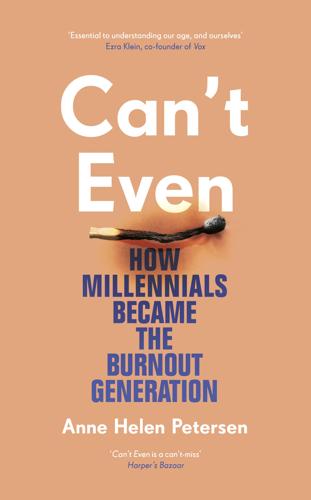
Can't Even: How Millennials Became the Burnout Generation
by
Anne Helen Petersen
Published 14 Jan 2021
BY THE SAME AUTHOR Scandals of Classic Hollywood: Sex, Deviance, and the Drama from the Golden Age of American Cinema Too Fat, Too Slutty, Too Loud: The Rise and Reign of the Unruly Women Author’s Note “MILLENNIALS DON’T STAND A CHANCE.” THAT’S HOW Annie Lowrey titled her piece, several weeks into widespread quarantine amidst the spread of COVID-19, detailing the myriad ways the millennials generation is indeed screwed. “The Millennials entered the workforce during the worst downturn since the Great Depression,” she writes. “Saddled with debt, unable to accumulate wealth, and stuck in low-benefit, dead-end jobs, they never gained the financial security that their parents, grandparents, or even older siblings enjoyed.”
…
Like the generations before us, we were raised on a diet of meritocracy and exceptionalism: that each of us was overflowing with potential and all we needed to activate it was hard work and dedication. If we worked hard, no matter our current station in life, we would find stability. Long before the spread of COVID-19, millennials had begun to come to terms with just how hollow, how deeply and depressingly fantastical, that story really was. We understood that people keep telling it, to their kids and their peers, in New York Times editorials and in how-to books, because to stop would be tantamount to admitting that it’s not just the American Dream that’s broken; it’s America.
…
That’s a deeply discombobulating realization, but it’s one that people who haven’t navigated our world with the privileges of whiteness, middle-class-ness, or citizenship have understood for some time. Some people are just now realizing the extent of the brokenness. Others have understood it, and mourned it, their entire lives. Writing this from the middle of the pandemic, it’s become apparent that COVID-19 is the great clarifier. It clarifies what and who in your life matters, what things are needs and what are wants, who is thinking of others and who is thinking only of themselves. It has clarified that the workers dubbed “essential” are, in truth, treated as expendable, and it has made decades of systemic racism—and resultant vulnerability to the disease—indelible.

Fodor's Big Island of Hawaii
by
Fodor’s Travel Guides
Published 1 Aug 2022
If you are stung by a centipede, wash the site of your bite thoroughly to prevent infection. When camping, shake out your sleeping bag before climbing in, and check your shoes in the morning, as centipedes like warm, moist places. If planning on hiking or traveling in remote areas, always carry a first-aid kit and appropriate medications for sting reactions. COVID-19 When COVID-19 brought travel to Hawaii to a virtual standstill for much of 2020, new travel protocols were developed by the state of Hawaii the following year. Once travel restarted, visitors to Hawaii had to fulfill pre-flight requirements via the Hawaii Safe Travels website. These mandates were in place until March 25, 2022, when the Safe Travels program ended; at this writing, there are no COVID-related requirements for arriving domestic travelers.
…
The now-beloved animated movie, which tells the story of the demigod Maui, features the voice talents of Aulii Cravalho and Dwayne Johnson. In 2018, Moana was re-recorded and distributed in Olelo Hawaii, or the Hawaiian language, with Cravalho reprising her role. It marked the first time a Disney movie was available in Hawaiian. Know Before You Go COVID-19 Because uncertainty about future COVID variants or seasonal surges remains at the forefront, it’s best to familiarize yourself with the state of Hawaii’s current travel protocols; wwww.GoHawaii.com has the latest information. DRIVING ON THE BIG ISLAND The Big Island is big, which means the average drive to get from Point A to Point B can take time.
…
The pre-travel test (from approved labs) had to be taken 72 hours prior to departure and then uploaded as a PDF file into the Safe Travels website. A QR code was then emailed to you. Travelers were also advised to bring a printed copy of their test result or actual vaccine card with them on their flight, as well. At this writing, there are no state restrictions for interisland travel. A COVID-19 pre-travel test or quarantine is not required for traveling between islands, regardless of vaccination status. It is wise before booking your trip to inquire about reimbursement policies at your accommodation for COVID-related cancellations. Not all travel insurance policies will protect against pandemic-related cancellations, so always read the fine print.

Shocks, Crises, and False Alarms: How to Assess True Macroeconomic Risk
by
Philipp Carlsson-Szlezak
and
Paul Swartz
Published 8 Jul 2024
Stiglitz, “Rethinking Macroeconomics: What Failed, and How to Repair It,” Journal of the European Economic Association 9, no. 4 (August 2011): 591–645, https://doi.org/10.1111/j.1542-4774.2011.01030.x. 7. “Epidemic forecasting has a dubious track-record, and its failures became more prominent with COVID-19.” John P. A. Ioannidis, Sally Cripps, and Martin A. Tanner, “Forecasting for COVID-19 Has Failed,” International Journal of Forecasting 38, no. 2 (2022): 423, https://www.ncbi.nlm.nih.gov/pmc/articles/PMC7447267/. 8. Robert McNamara had brought his quantitative management style from Ford to the Defense Department, and after his first visit to Vietnam in 1962 said, “Every quantitative measurement we have shows we’re winning this war.”
…
Will the operating system be resilient and revert to what we’ve known, or could the shock leave a legacy by changing how the system works? Knowing that complacency can be costly, leaders often feel pressured to take action of some kind. But often a shock harbors at once the possibility of true crisis and false alarm. Consider this string of false alarms during just the past four years: In 2020, when the Covid-19 pandemic caused extreme uncertainty, a narrative of a new Great Depression took hold. Invoking the 1930s, the narrative predicted an economic collapse worse than the global financial crisis of 2008: a deep, multiyear recession complete with a US sovereign-debt crisis and, later, a dollar collapse.2 Yet the fearsome intensity of the Covid shock said little about the damage it would do structurally, or about the ability and willingness of policymakers to lean against it.
…
Reprinted in An Economic History of Now, November 2018. 17. The Federal Reserve believed that monetary policy was already tight at the time and that the Fed was only moving toward less, but still tight, status. Ben S. Bernanke, 21st Century Monetary Policy: The Federal Reserve from the Great Inflation to COVID-19 (New York: W. W. Norton & Company, 2022). 18. Arthur F. Burns, Milutin Cirovic, and Jacques J. Polak, “The Anguish of Central Banking,” the 1979 Per Jacobsson Lecture, Belgrade, Yugoslavia, September 30, 1979, http://www.perjacobsson.org/lectures/1979.pdf. 19. For example, in December 1965 President Johnson summoned Fed Chair William McChesney Martin Jr. to his ranch to express his displeasure over the announcement of a rate increase.
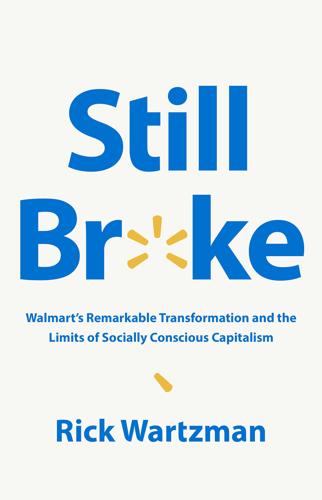
Still Broke: Walmart's Remarkable Transformation and the Limits of Socially Conscious Capitalism
by
Rick Wartzman
Published 15 Nov 2022
Sam’s Bargain IN LATE MARCH 2020, with the coronavirus spreading so fast that President Donald Trump had been forced to back off his expressed hope of packing people into churches on Easter, I tuned in to a Monday morning webinar to check out how several major corporations were responding to the pandemic. It was so early in the crisis that the nation’s COVID-19 death count hadn’t even hit 10,000, and the Centers for Disease Control and Prevention had yet to recommend that masks be worn in public. Zoom still seemed more like a blessing than a burden. But things were grim and clearly getting grimmer. The session had been put together by FSG, a consulting firm, and featured executives from Truist Financial, 3M, and Walmart discussing how they were “changing policies to better support their most vulnerable workers.”
…
My head swirled. Where in this muddle did reality lie? Was Walmart as responsive to the needs of its employees as it was making itself out to be? Or was it as indifferent as Love claimed, bent on fattening its bottom line, the well-being of its workers be damned? For more than a year, prior to the outbreak of COVID-19, I’d been wrestling with these questions. However, answering them wasn’t so easy, at least not anymore. There was a time, for about a decade and a half beginning around the year 2000, when portraying Walmart as greedy, if not downright malevolent, had become as commonplace for many people as grabbing a quart of milk from the store.
…
They put up with us when we call to complain about something we’ve purchased. They care for our kids. They nurse us back to health when we’re sick. Yet most of us who are served, day in and day out, by these women and men don’t register the depths of their anguish: that one in six can’t come up with the money for their prescription drugs; that, even before COVID-19, about 30 percent of families with two working adults experienced material hardship, such as falling behind on the mortgage or the rent or their medical bills; that a third of those going to food banks are from a household with at least one member who has been working; that nearly half of Americans have only the slimmest of financial cushions and wouldn’t be able to cover their expenses for more than two months if they lost their job; that homelessness is not just a manifestation of mental health issues and addiction but also of work that doesn’t pay sufficiently, with more than half of those in shelters and more than 40 percent of those on the streets having had some formal employment in the year they were living under these conditions.
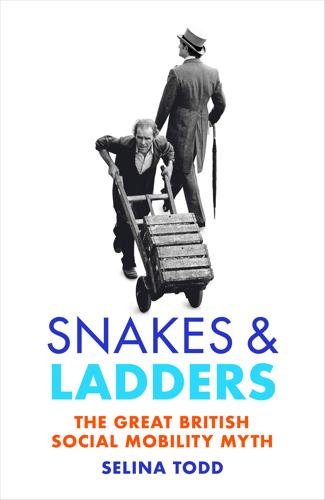
Snakes and Ladders: The Great British Social Mobility Myth
by
Selina Todd
Published 11 Feb 2021
Manual workers and domestic servants were at the bottom, despite the fact that British industry and most middle-class households depended utterly on their labour.2 And hugely vital but unpaid tasks, like mothering, were ignored. This classification of people’s work – updated but not much changed over the past century – continues to shape policymakers’ understandings of valuable and less-valuable work. The Covid-19 pandemic has exposed just how flawed this hierarchy is. Cleaners, carers, shop workers and delivery drivers have played vital roles in keeping society going. The pandemic has made clear to many what these workers already knew: that all these jobs require skill. Cleaning – to take just one example – requires attention to detail, stamina, speed and care.
…
After the First World War, it suited many employers to employ a large number of female clerks on tasks considered skilled twenty years earlier, but increasingly defined as routine, and therefore paid less. By contrast, after the Second World War, Labour’s establishment of a comprehensive welfare state demanded thousands more teachers and health workers. The war – like the Covid-19 pandemic of the twenty-first century – demonstrated that nurses, social workers, ambulance drivers and home helps were vital to society. In 1945, voters, and the Labour government they elected, took seriously the need to rebuild Britain. They recognised that only the state could undertake such an enormous task, and that prioritising education, healthcare, housing and work, was the best response to the upheaval and destruction caused by the war.
…
Many wanted to make a useful contribution to society; some aspired to shape their country’s future. Climbing a few rungs up the ladder rarely delivered these dreams. We need to create a future that will, because we require imaginative thinking, big ambitions and hope to tackle the pressing problems of the twenty-first century, including climate change, pandemics like COVID-19, automation and an ageing population. The labour movement pioneers of the early twentieth century and the leftists of the 1970s remind us that an unequal hierarchy of wealth and power is only one model for organising society. They envisioned egalitarian alternatives that are worth pursuing. I end this book with some thoughts about how this could be realised.

Your Computer Is on Fire
by
Thomas S. Mullaney
,
Benjamin Peters
,
Mar Hicks
and
Kavita Philip
Published 9 Mar 2021
See also Thompson hack feature, not a, 4, 7, 18–19, 148–151, 153, 214, 223, 262, 303 Bureaucracy, 78, 80, 86t, 88, 109, 150, 175 Burmese, 339, 344, 354 Bush, Randy, 324–326 Bush, Vannevar, 348 C (programming language), 273–277, 279, 281–284, 286 backslash, 279, 281–282 commands, 279, 282–283, 285, 287 C++, 273, 275, 290 C#, 273 Objective C, 273 Cable, 5, 100–102, 104, 107, 111, 321 infrastructure, 103–104 internet, 95, 98–99 materials, 94 networks, 5 television, 315, 317 undersea, 72, 93, 99 Caldwell, Samuel Hawks, 348–350 Call centers, 5, 56 Amazon, 37 Indian, 105, 298, 302, 305, 307 Cambridge Analytica, 118 Capital, 6, 31, 202, 316, 378, 380 cultural, 299 global, 88 intensive, 277, 313–314 investment, 44, 301, 314–315, 332 physical, 46, 107 venture, 15–16, 53, 175, 255–256, 267 Capitalism, 46, 87, 171, 368 welfare, 160–161, 167, 170–174 Carceral state, 206, 208 Carlin, George, 59 Carnegie Mellon University, 257 Cart Life, 241 Cartography, 95–96, 107 Catholicism, 171, 173–175 CCM (Commercial content moderation), 56–58, 62, 66, 122 CDC (Center for Disease Control), 20 CDU (Christian Democratic Union), 170 Cellular phones (cell), 7, 306, 317, 332, 365, 378 and M-PESA, 7, 322, 326–328, 333 Safaricom, 326–328, 333 SIM card, 326–328 Chex Quest, 237 Child pornography, 6, 117–125, 127–130 limit case, 129 server storage, 383 Child Victim Identification Program, 122–123, 125 China, 7, 45, 104, 227 accent bias, 188, 189t apps, 332 Communists, 348 IMEs, 351, 357 Input Wars, 351 language, 188 People’s University (Beijing), 357 rising superpower, 153 writing interfaces, 381 Chinese keyboard, 345, 345f, 348–350, 353, 367 Chinese typewriter, 346, 350 dian, 351, 352f, 352 difficulty score, 344–345 MingKwai keyboard, 346–349, 347f, 353 and QWERTY keyboard, 338–339, 342, 346, 350–351, 353–354, 357 retrieval system, 346–347, 349–350, 353 script, 221 search writer, 350 Christian, 161, 170–171, 187 Central Intelligence Agency, 80 Cisgender, 154 Clark, David D., 71 Class bias, 4–6, 88, 136, 161–162, 174, 184, 265 capitalist, 171 dominant, 180–181, 190 equality, 80, 86t exposure, 301–302 India, 299, 302–303, 308 investor, 53 lower, 162 management, 142 Marxist, 171–173 meritocracy, 138, 150 middle, 73, 80, 86, 139, 241 technocratic, 21 upper, 300- 302 upper-middle, 18 working, 79, 141–142, 288, 301, 309 Cloud definition, 33–34 and electricity, 33–34, 44 enables other industries, 46 as factory, 7, 35–36, 42–43, 45–46, 321 and infrastructure, 33–35 kilowatt-hours required, 34 physical, 31–32, 34, 44–46 supply chain, 45 Code Arabic, 191 Assembly, 275, 277, 281, 286 Black Girls Code, 255, 263 breaking, 138–139 (Colossus) Code.org, 253, 255, 259 Code2040, 255, 260 Coding, Girls Who Code, 253, 255, 263 cultural, 302 digital, 284, 289 dress, 145, 164–165, 298 education, 6 empire, 76 #YesWeCode, 253, 264–266 HLL (high-level language), 275, 277–278, 284, 290 Hour of Code, 253, 263–264 is law, 126 platforms, 321 robotics, 201, 203, 205 social media, 59 source, 273–292 passim (see also Source code) switching, 184, 190 typing, 188, 351 writers, 24, 145, 256–259, 262–267, 300, 381 Yes We Code, 255 Code.org, 253, 255, 259 Code2040, 255, 260 Coding, Girls Who Code, 253, 255, 263 Cold War, 137, 152, 169 computer networks, 75–76, 83–84 network economy, 87 technology, 17–18, 94, 137 typewriter, 227 Collision detection, 242–243 Colonialism, 19, 91, 93, 105, 109, 245 cable networks, 93, 99, 101 colonization, 186, 378 digital, 331 Europe, 110, 147–148, 343 internet, 111, 129 language as, 186–188 metaphors, 94 stereotypes, 96, 102, 104 technocolonialist, 103–104 Colossus, 17, 139, 143 Comcast, 35 Commercial content moderation (CCM), 56–58, 62, 66, 122 Commodity computational services, 33 Common sense, 73, 96 Communications Decency Act, 60–61 Compaq, 318 Complex scripts, 188, 222, 344–345, 350 CompuServe, 320, 325 Computer anthropomorphized (see Robots) conservative force, 15 control and power, 23 critiques of, 5 men, 142 utility, 35, 320 humans as, 43, 140, 384 Computer science, 18, 58, 66, 112, 367 artificial intelligence, 58, 66 education, 256, 263 Thompson hack, 275, 291 women in, 254 Computing, 135–155 passim artificial intelligence, 56 Britain and, 21, 138, 148–152 Chinese, 350–351, 353–354 and class, 142–143 cloud, 78, 87 companies, 13, 18–19 devices, 40–41, 45 education, 368 and empire, 147–148 environment, 382 global, 350, 377 hacking, 289–291 history of, 7, 17, 35, 38, 43, 46, 137, 153–154 Latin alphabet, 357 masculinity, 263 management, 23 manufacturing, 39 media, 4–8, 377–380 meritocracy narratives, 137, 153–154, 381 networks, 77, 199, 320–321 personal, 354 power, 328 software, 318 typing and, 220, 226, 337, 339, 341, 344 underrepresented groups and, 253, 255–256, 264, 266 and women, 17, 43, 135, 139–142, 144–147 Concorde, 145, 146f Congress, 11–12, 82, 154 Content antisemitic, 265 app, 319, 321 child abuse, 118–119, 122, 125 commercial content moderation (CCM), 56–58, 62, 66, 122 filtering, 57 illegal, 62 internet, 317, 319 moderation, 54–57, 123, 126, 380–382 moderators, 5, 380–382 review, 121, 128–130 social media, 59, 61–63, 66, 232, 321, 329–331 terrorism, 57, 66, 130 violent, 117 web, 317 Contractor, 35, 53, 56, 266 CorelDraw, 298 COVID-19, 14, 20, 377 Cox, Chris, 61 Creating Your Community, 266 Creative destruction, 4 Crisis, 4, 6, 16, 21, 150, 235, 297, 383–384 Covid-19, 20 identity, 58–60 point, 13 Y2K, 104 CSNET, 81 Cybernetics, 75, 78–80, 83, 86, 86t, 88 cyberneticist, 77, 81–82 Cyberpunk, 100–101, 107, 110 Cybersyn, 75, 79–80, 85, 86t CyberTipline, 125 Dalton gang, 287–289 DARPA (Defense Advanced Research Projects Agency), 383 Dartmouth College, 235 Data biased, 66, 205 due process, 206 objective, 205 processing, 38, 40–41, 119, 206, 300 socially constructed, 205 value-neutral, 372 Data broker Salesforce, 87 SAS, 87 Data entry, 5, 104, 150, 367 David, Paul, 337–338, 351, 353, 357–358 Davies, Donald, 83 Death, 15, 120, 186, 371, 373, 379 Covid-19, 12 gaming, 233–234, 236 life-or-, 6, 206, 266 technology and dying well, 378 Decolonization, 91, 104, 111–112 Deep Blue, 7 De Kosnik, Benjamin, 108–109, 110 Dell, 318 Delphi, 290 Democratic Republic of Congo, 45 Denmark, 44, 128–129 de Prony, Gaspard, 39–40 Design values, 73–76, 84–88 American, 81–84 Chilean, 79–81 Soviet, 77–78 state, 75, 78, 80, 83, 86, 86t Devanagari, 339, 342, 344, 350, 354 Developing world, 93, 103, 105, 180, 325, 330–332 Devi, Poonam, 304 Diamond, Jared, 338, 351, 353, 357–358 Difference Engine, 40 Digital coding, 284, 289 colonialism, 91, 93–94, 103, 331 computers, 38, 41, 138 connectivity, 379 economies, 13, 22, 29, 31, 33, 35, 45, 145 forensic work, 123, 126, 128, 354 future, 101 gaming, 241 imperialism, 186–187, 191 inclusion, 303 infrastructures, 126, 151, 155 invisibility, 98, 100, 204 labor, 6, 147, 101, 354 materiality, 5 networks, 83 platforms, 66, 118, 199, 201 politics and, 110, 112 predigital, 96–97, 152 revolution, 29, 32 surveillance state, 119, 130 technology, 40, 64, 123–124, 200, 382 vigilantism, 120 Disability, 12, 15, 160 Disasters, 11–15, 19–20, 22–24, 54, 204, 338, 364 Discrimination.
…
While this episode may seem a long way off, it should be humbling to recall that less than two hundred years ago instituting technologies to keep sewage away from drinking water was considered first optional, and then revolutionary. As the United States stumbles in our scientific and social understandings of COVID-19 and the best way to end the pandemic, we might look back with more understanding and sympathy for these confused, cholera-ridden Londoners, drinking the wastewater that was killing them because, for most ordinary citizens at the time, there simply was no other choice. Most of the technological advancements we’ve seen over the course of the nineteenth and twentieth centuries, from skyscraper cities to the ubiquity of the World Wide Web, involve some amount of literal or figurative shit-eating by average citizens, and also long periods of time during which obvious, systemic problems are mostly ignored by those at the top echelons of industry and government.
…
During a global pandemic this has meant that even healthcare supplies and vital public information have been withheld from citizens and state governments. Scientists and epidemiologists at the CDC and NIH have been increasingly forced out or muzzled, and many of the teams dedicated to pandemic response had been dissolved prior to the COVID-19 crisis, leaving a gaping hole of expertise where our disaster response should have been. As the president screamed on Twitter, taking his misinformation about state leaders, the progress of virus research, and elections directly to the public, suddenly an unregulated tech company with no competence or background in history, politics, journalism, rhetoric, the psychology of online interaction, or fact checking was thrust into the position of trying to unbuild the minsinformation machine that has been long in the making.

The Rise and Fall of the Neoliberal Order: America and the World in the Free Market Era
by
Gary Gerstle
Published 14 Oct 2022
The two countries signed the agreement in January 2020, with Trump hailing it as a major victory for his administration and for the nation. Across the first year of the agreement, however, multiple reports suggested that China was doing little to increase its American imports to stipulated goals. As was the case with so many Trump initiatives, there seemed to be little consistency or follow-through. And the outbreak of the Covid-19 pandemic at the very moment when the trade deal was signed upended global trade in ways wholly independent of US-China trade negotiations.12 Still, Trump’s constant bluster about the evils of free trade, his repeated threats to impose tariffs, and his hostility to the many countries seen by his administration as having gained a trade advantage over the United States pushed a neoliberal world to reassess long-standing beliefs and strategies.
…
With this world possibly slipping away, the prudent strategy might now be to produce more goods closer to home either by increasing domestic manufacturing or by developing shorter supply chains with nearby countries with whom relations were secure. This kind of thinking had begun to influence the calculations of corporations even before Covid-19 struck. The arrival of the virus accelerated the turn toward production in one’s own nation, in which conditions of manufacturing and transportation were imagined as more stable than in the international arena.13 Economists studying international trade were not surprised by these developments. Their data showed that total international merchandise trade—“the sum of exports and imports of commodities and manufactured goods”—had actually peaked in 2008, when it accounted for 51 percent of the world’s output.
…
Her staff worked to revive America’s anti-monopoly protest tradition, which a hundred years earlier had energized a progressive political movement that had checked private economic power both by breaking up large corporations and subjecting the ones that remained intact to effective public regulation. Sanders shared Warren’s antagonism to corporate power. If anything, his plans were more ambitious than hers, as he sought to make his social democratic vision a reality in American life.27 Pandemic The 2020 presidential campaign coincided with the onset of the Covid-19 pandemic, which lent new urgency to the issues that critics of neoliberalism had been raising. In political economic terms, the pandemic worked to intensify a development that the decline in the neoliberal order had already set in motion: namely, a conviction that government was the only institution with the wherewithal to address severe economic and social hardship.

The Quiet Coup: Neoliberalism and the Looting of America
by
Mehrsa Baradaran
Published 7 May 2024
Economic epidemiology reared its head again at the start of the COVID-19 pandemic, when the Law and Economics giant Richard Epstein wrote a study showing that the pandemic would lead to the deaths of approximately 500 people and concluded that “progressives” were “overreacting.” This particular “do nothing” response was in March 2020. The pandemic took 500 lives before he even published the article, prompting Epstein to revise his estimate up to about 5,000 fatalities. By the end of March 2020, the CDC had reported that a total of 3,926 people in the United States had died of COVID-19. Despite its risible incorrectness, the report circulated in the Trump administration and likely influenced its feckless response to COVID-19.
…
Despite its risible incorrectness, the report circulated in the Trump administration and likely influenced its feckless response to COVID-19. When questioned by The New Yorker’s Isaac Chotiner about his failed theory, Epstein argued that his “model” was based on “Darwinian economics.” While the model may have failed at prediction, Epstein still defended it as good economics: “I’m not an empiricist,” but the “probability distribution” was accurate in applying “standard economic-evolutionary theory out of Darwin—and applying it to this particular case.” Epstein dismissed letters from scientists debunking his theory. “What I don’t get from anybody is a systematic refutation which looks at the points parameter by parameter.”
…
Technology has drawn ever larger groups of people together such that the “en-” of the endemic became the “epi” of the “epidemic,” until finally, we have entered the era of “pandemics.” As reflected in the terms “pan-African” and “pan-Asian,” the “pan” (meaning “all”) is meant to extend the demos to all people. The risks that humanity will confront in the future, whether viral COVID or viral capital, will be of the pan variety. And yet with risks come opportunities. The COVID-19 virus was also the first time many of us began to see the veins and sinews of the economy, the supply chain of which we were but just one consuming node. While money and viruses travel the globe through high-speed trading networks, so too do ideas, videos, dances, songs, and protests, stretching our moral imagination and empathy.

The Bookshop: A History of the American Bookstore
by
Evan Friss
Published 5 Aug 2024
Bass Wyden was not terribly honored. In fact, she lobbied against the designation, arguing that landmark status comes with a “bureaucratic straitjacket.” The city was going to “strangle the Strand” to death. She lost the case. The Strand lost much more when New York became the epicenter of the emerging COVID-19 crisis in 2020. On March 16, the store closed. When it reopened months later, it was, by necessity, never crowded. There were no in-store events. There had been four hundred a year. Yet the bookshop built on growth didn’t slow down entirely. It opened two new locations, a stand at the no-longer-hideous LaGuardia Airport and, only a few months behind schedule, a store on the Upper West Side.
…
In the late 1980s and early ’90s, the trend reversed. A group of Black booksellers formed a subdivision of the American Booksellers Association. But this boom was also short lived. Like independents of all varieties, they struggled in the era of Borders and Barnes & Noble, and then in the age of Amazon. When COVID-19 came in the spring of 2020, it sent Marcus Books reeling. Friends donated tens of thousands of dollars to save the store, contributions to keep a for-profit business alive. Just as things seemed bleakest, sales at Marcus and other Black-owned bookstores skyrocketed. In May, a white Minneapolis police officer murdered George Floyd, and interest in books about race and racism soared.
…
The downtown is basically just a thruway, with trucks thundering past a church, a bank, a gas station, a post office, and a handful of tired-looking homes. The new green building with a black metal roof and string-lit porch looks out of place. It’s home to WordPlay, an independent bookstore that opened in 2020, during the COVID-19 pandemic. Marlene and Tom England, the couple who own it, already owned one bookstore in Frederick, Maryland, called the Curious Iguana. They (mostly) knew what they were getting into. Indie bookstores tend to set up shop in urban areas with affluent residents and high foot traffic. Wardensville this is not.

Recoding America: Why Government Is Failing in the Digital Age and How We Can Do Better
by
Jennifer Pahlka
Published 12 Jun 2023
McCaskill, “‘No Words for This’: 10 Million Workers File Jobless Claims in Just Two Weeks,” Politico, April 2, 2020, https://www.politico.com/news/2020/04/02/unemployment-claims-coronavirus-pandemic-161081. 2. Legislative Analyst’s Office, “Overview of Employment Development Department Response to COVID-19,” Presented to Assembly Budget Subcommittee No. 4 on State Administration, Hon. Jim Cooper, Chair, July 30, 2020, https://lao.ca.gov/handouts/state_admin/2020/Overview-of-Employment-Development-Department-Response-to-COVID-19–073020.pdf. 3. The Newsom administration called our group a “strike team,” but I have used “task force” here because I think it is more descriptive of our work. 4. These four—Marina, Mikey Dickerson, Matthew Weaver, and Carla Geisser—had formed a company called Layer Aleph, and it was this company that the state hired. 5.
…
A 2005 California law called the Dymally-Alatorre Bilingual Services Act (https://law.justia.com/codes/california/2005/gov/7290–7299.8.html) already required language access. The federal guidance is https://oui.doleta.gov/dmstree/uipl/uipl2k16/uipl_0216.pdf. 11. Legislative Analyst’s Office, “Overview of Employment Development Department Response to COVID-19.” 12. “A Playbook for Improving Unemployment Insurance Delivery,” New America, 2002, https://improveunemployment.com/way_forward/#what-we-can-learn-from-arra. 13. Simon-Mishel et al., “Centering Workers—How to Modernize Unemployment Insurance Technology.” 14. According to the budget of the state of California, the amount the state spent on the EDD jumped from $254 million in budget year 2019–20 to $1.3 billion in budget year 2022–23, a more than fivefold increase.
…
See also federal chief information officer child tax credit child welfare system China CHIPS and Science Act (2022) Chrome Churchill, Winston Circular A-76 Citizens Against Government Waste Citizenship and Immigration Services citizenship application citizenship status verification Civil Rights Act (1964) civil service rule-bound regimes and clean air and water campaigns Clear My Record project climate crisis Clinger, William Clinger Cohen Act (Information Technology Management Reform Act, 1996) Clinton, Bill Cloud COBOL Code for America Cohen, William commercial software commercial vs. governmental distinction communications problems, common language to bridge complexity “Computer Chaos” (Cohen report) computer industry changes in, and impact of government job cuts government vs. private sector and Computer Matching and Privacy Protection Act (1988) computer set-up variations, online forms and Congressional Research Service conservatives construction permits ConsularOne program Consumer Finance Protection Bureau (CFPB) consumer software contracting officer technical representative (COTR) contractors corporations costs API and failure of policy goals as felony expungement and government IT and incremental, stage-based funding to reduce overall reducing administrative in time and difficulty for users USDS reduction in county governments felony expungement and SNAP applications and courts COVID-19 pandemic free rapid at-home test and school closings and food plans Seattle flu study and UI and vaccines and vaccine status verification and covidtests.gov criminal justice system culture, strategy or policy vs.. See also legalistic thinking; waterfall aproach Customs and Border Control cybersecurity Daily Production Tally (DPT) sheets databases data sharing data transfer, different formats and DeBerry, Cristine Soto debugging problems decision-making diffuse, by committee requirements as attempt to eliminate defense contractors Defense Department (DOD) accounting software Architecture Framework Enterprise Architecture ESB requirement and GPS and Defense Innovation Board Deloitte democracy Democrats Deutsch, Karl W.
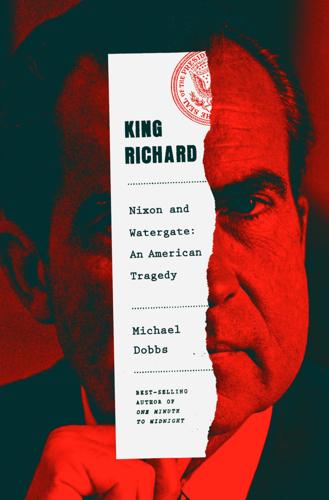
King Richard: Nixon and Watergate--An American Tragedy
by
Michael Dobbs
Published 24 May 2021
I would like to thank all the archivists at the Nixon Library, but particularly Ryan Pettigrew, who had the foresight to assemble a huge electronic database of the Nixon photo archive several years ago. This database proved invaluable when the library, along with other branches of the National Archives, was compelled to close its doors to researchers during the coronavirus pandemic. Without this electronic treasure trove and Ryan’s assistance, I would been unable to obtain many of the photographs that appear in this book in time for publication. My interest in Nixon and Watergate was sparked in part by my work for The Washington Post over more than two decades, as both a foreign correspondent and a member of the investigative staff.

Shielded: How the Police Became Untouchable
by
Joanna Schwartz
Published 14 Feb 2023
In June 2020, in the wake of the murder of George Floyd, Gallup announced that public confidence in the police had dipped below 50 percent for the first time in several decades, prompting a flurry of headlines about changing perspectives about law enforcement. But trust in the police had only dipped to 48 percent. And it had only moved from the third to the fourth most trusted institution; in the midst of the coronavirus pandemic, the medical system had taken third place. Of course, not all people trust the police, and the demographics of differences of opinion on this point are noteworthy. Gallup’s 2020 poll found that 82 percent of Republicans had confidence in the police, as compared with 28 percent of Democrats.

Why Machines Learn: The Elegant Math Behind Modern AI
by
Anil Ananthaswamy
Published 15 Jul 2024
Putting aside their bombast and snide remarks, we’ll focus on the precision and elegance of Minsky and Papert’s convergence proof. But first, we need to revisit Rosenblatt’s algorithm with more formal notations in hand. Let’s take a potentially real problem. Assuming we have learned from our disastrous experience with the coronavirus pandemic, let’s hope we can bring some smarts to how we react during the first months of the next pandemic involving a new infectious respiratory pathogen. (Fingers crossed it doesn’t happen anytime soon.) In this more enlightened scenario, hospitals worldwide diligently collect data about the patients they see early on in the pandemic.
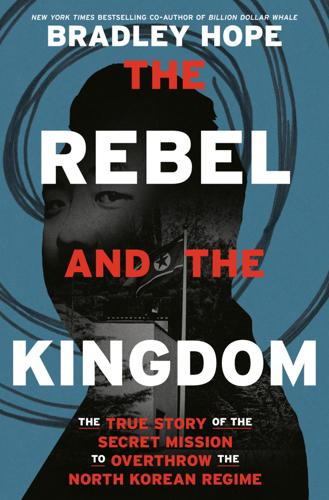
The Rebel and the Kingdom: The True Story of the Secret Mission to Overthrow the North Korean Regime
by
Bradley Hope
Published 1 Nov 2022
The restaurant sat in the heart of Deira, the old part of Dubai. It’s a short walk to the Emirati city’s famous creek, which is still full of wooden dhows that travel back and forth to Iran laden with televisions, washing machines, and other wares. The restaurant, which later closed during the COVID-19 pandemic, was actually a branch of a long-running Pyongyang establishment that specializes in Pyongyang naengmyeon, buckwheat noodles served in chilled broth. The original location in North Korea’s capital seated more than two thousand patrons, and branches have been opened throughout Asia, in Kathmandu and Beijing.
…
“People say we’re the Underground Railroad, but it was really just me buying tickets with my credit card on Expedia,” Ahn says. Arriving a few hours later that morning, the family of three wore masks to hide their faces. The masks aroused no suspicions. People in Asia frequently wore masks when traveling, even years before COVID-19 made mask wearing a global practice. Seeing an American-looking Korean man standing near the entrance, Kim Han-sol greeted him with the prearranged code name “Steve.” Ahn quietly took them to a VIP lounge where they could lie low until Adrian and his team gave an update on the next move. Ahn saw his job as keeping everyone calm and relaxed.
…
He described entering the embassy for the first time as a North Korean escapee and how he’d smashed the portraits of Kim Il-sung and Kim Jong-il. Most important, he described how they were there to help a diplomat defect. “We took huge risks to help others reach freedom. Why is the U.S., Spain punishing us?” he asked. * * * — In December 2020, with the world still in the throes of COVID-19, I finally had the chance to meet Christopher Ahn over Zoom. It would be the first of countless hours of mostly late-night discussions. At first, I couldn’t believe how different his personality was from the impression I’d had looking at the pictures and reading the court case against him. Almost all of his stories had a sensitive, emotional dimension to them.
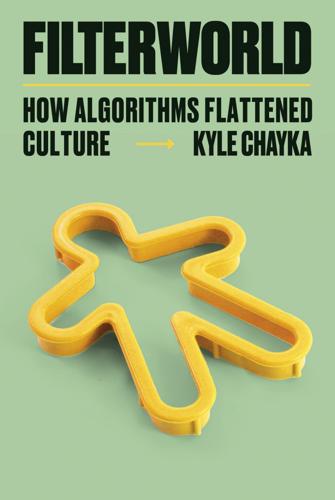
Filterworld: How Algorithms Flattened Culture
by
Kyle Chayka
Published 15 Jan 2024
Then I had to seek it out and set up my computer, bathing in the cold light of the close-by screen in a darkened room. It was a long way from turning on the living room television as a child in the 1990s and watching whatever was on cable. But my viewing habits changed during the onset of the COVID-19 pandemic in 2020. As news of quarantine set in and hints of global supply-chain slowdowns started, the one thing I made sure to acquire for my apartment was a large television, the first one I had ever bought for myself—a sixty-inch flat-screen that loomed in the living room like an alien, all jet-black shiny plastic.
…
Even today the population numbers under four hundred thousand, with one of the lowest densities in the world at around eight people per square mile. And yet Iceland has regularly attracted over two million tourists per year (five times the number of locals), who stay at least one night in the country. Tourism accounted for 35 percent of the nation’s export revenue in 2019, reaching a peak just before the COVID-19 pandemic halted international travel. It was larger than any other industry, meaning that Iceland’s most profitable product was selling itself, offering experiences of a once-inaccessible place. Tourism wasn’t always such a cornerstone industry for Iceland. Travelers only exceeded the local population around the year 2000, and growth really took off around 2010.
…
The world is just potential fodder for content that attracts a few likes, makes money for digital platforms, and then evanesces, unlikely to ever be seen again. Wanting for a moment to avoid that cycle, I left Gamla Laugin and never posted anything about it. AIRBNB MIGRATION During the COVID-19 pandemic, the same algorithmic forces that shaped tourism quickly began to shape movement within the United States as well. Within a matter of weeks, the ways in which many people evaluated real estate flipped. Dense cities had been increasingly desirable places to live, but with overloaded hospitals and the claustrophobia of quarantine, density became far less appealing.
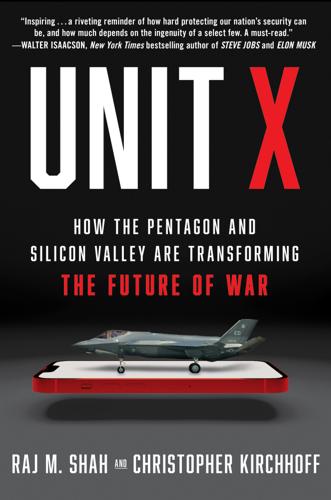
Unit X: How the Pentagon and Silicon Valley Are Transforming the Future of War
by
Raj M. Shah
and
Christopher Kirchhoff
Published 8 Jul 2024
Reports of an atypical pneumonia in the Chinese city of Wuhan had emerged six weeks before. Chris, who had served on the White House Ebola Task Force and helped lead the military’s mission to stop Ebola in West Africa, was already unnerved about traveling to an event that drew hundreds of people from around the world into a crammed hotel in winter. He and Eric only learned later that COVID-19 was spreading rapidly across Munich at the exact moment they were there. Germany’s first case was confirmed just miles from the hotel. Shortly after they left, Germany closed schools and imposed curfews, and the world became a very different place. The day before Fu Ying’s session with Eric, she showed a flash of China’s “wolf warrior” diplomacy by aggressively hurling accusations at Nancy Pelosi, who’d flown in from Washington to deliver a keynote.
…
Afghanistan, 45, 51, 81, 105, 129, 153, 190 AI software used in, 119 Kabul evacuation and Slapshot app, 68–69 AFWERX technology accelerator, 102, 132 AI (artificial intelligence), ix, 36, 99, 195 Albright and, 142–43 Anduril software, 126–27, 209 Aspen Security Group and, 139–40, 163 C3.ai software, 100 ChatGPT, 103, 239 China and, 133, 138, 141–42, 148, 162–68 conflict escalation risk, 146–47 Datahub AI system, 80, 81, 86, 98 de-mining vehicles, 151–52 DIU and, x, 100, 119, 150–52, 203, 239 DoD and, 5, 100, 116–22, 133, 148, 152, 212, 239 Evolv Technology and, 117–18 exponential progress and, 138 global cooperation and, 166 Google DeepMind and, 140 JAIC and, 121–22, 132, 158, 212 Munich Security Conference, 162–68 national security and, 138–40, 143, 146–48, 152 natural language processing, 181 Nexla software “pipes,” 181 NSCAI and, ix, xi, 143–48, 155–59, 162–68 NSC and, 130, 140 Palantir data analytics, 101, 123, 202 privacy and, 165–66 Project Maven and, 100, 116–22, 212 Russian tanks and, 146 Trump administration and, 143, 159 Ukraine War and, 202, 206–7, 209, 210, 212, 213 U.S. policy and, 158–59 war at sea and, 114 wide-area motion imagery/Gorgon Stare, 119 See also drones; JAIC; NSCAI Albedo, 190 Albright, Madeleine, ix, 133, 134, 142, 145–46, 174–75, 220 Alibaba, 137 Allen, John, 167 Altman, Sam, 103, 174 Amazon, 5, 144, 158 Project Maven and, 100, 116, 132 Snowball drive, 202 Andreessen, Marc, 103 Andreessen Horowitz, 103, 108 Anduril, 101, 109, 123, 124–28, 132, 180, 191, 202, 240 AI software program, 126–27, 209 border sensors and, 126, 209 DoD acquisition methods and, 124 drones, 126, 132, 202, 209, 211, 216 Ghost drone, 209 Ukraine War and, 208–12, 217 Apple, ix, 5, 8, 21, 118, 179, 203 Ardern, Jacinda, 174 Armenia-Azerbaijan, 214 Army Futures Command, 102 Aspen Strategy Group, 133, 138 Kirchhoff paper, “An Even Flatter World” and, 139–41 Munich meeting on AI, 163 U.S. technology strategy and, 133–35, 139 AUKUS (Australia, UK, U.S. coalition), 239, 240, 245 Austin, Lloyd, 223, 225–27, 230, 240 autonomous craft (non-aerial), x, 99, 182 ocean drones, 3, 110–14 Saildrone, 110–13, 131, 241 UUVs (demining vehicles), 151–52 See also drones Bajraktari, Ylber, 145 Bajraktari, Ylli, ix, 145–46, 219, 220, 238 as NSCAI director, 145–46, 157–59, 163, 168 ballistic missile defenses, 77 “Brilliant Pebbles,” 78 Datahub AI system, 80, 81, 86, 98 “left-of-launch” solution, 78, 79, 91 Nike air defense system, 77, 79 Strategic Defense Initiative (Star Wars), 77–78 Banazadeh, Payam, ix, 82, 83, 84, 151 Butow and, 82, 84, 85–86 Capella Space and, 81, 82, 85, 199 DoD funding for, 87–88, 96–97, 199 Lunar Flashlight project, 83–84 vision for small satellite SAR, 83 Beachkofski, Brian, 70 Beacon AI, 239 Beall, Ryan, 104–10 app to find drone operators, 106, 131 drone startup of, 109 Beck, Doug, ix, 18, 21, 134, 179, 220, 225–26 Ash Carter Exchange meeting, 228 DIU 3.0 and, 225–30 Warsaw DIU-led meeting, 234–36 Bevirt, JoeBen, ix, 114–16 Biden, Joe, 141, 200, 229–30 China threat and, 239 death of Ash Carter and, 219–22 Kirchhoff and, 168–69 Ukraine War funding and, 203, 205 U.S. investment in China and, 245 weaponized IG and, 172–73 Bilden, Philip, ix, 179, 180, 185–89, 191 bin Laden, Osama, 95 Bio, Ernie, 44, 243 Blank, Steve, 54, 84–85, 179 BlueHalo, 202 Blue Origin, 79 Boeing, 80, 103, 123 Bolton, John, 142 Brin, Sergey, 49, 162, 186 Britain’s Controller’s Cabin, World War II, 46–47, 49–50 Brooks, Vincent, 89–92, 93, 98 Brose, Christian, v, 64, 65, 240 Brown, Charles, 230 Brown, Mike, ix–x, 130, 148–50, 227 advisors for, 172 “China’s Technology Transfer Strategy,” 149, 170 DIU directorship, ix–x, 130, 148–55, 171–73, 223 Mattis and, 152–53 Shield Capital and, 173, 190 Tech Track 2 and, 178 Ukraine War and, 200 Brumley, David, 100 Bush, George W., 14 Bush, Vannevar, 181 Butow, Steve “Bucky,” x, 76, 81–88, 92–94, 98, 155, 230 C3.ai company, 100 Campbell, Kurt, 137 “The China Reckoning,” 137 CAOC (Combined Air Operations Center) at Al Udeid, x, 2, 45–54 cost of an inefficient system, 52, 58 DIUx’s apps for, 59 DIUx’s tanker refueling project, 54–59, 65, 68, 102 Hanscom/Grumman tech overhaul and, 53, 59–60, 63, 66–68 obsolete technology at, 46, 47, 50–54, 57 Shah and DIB group visits, 45–46, 49 Slapshot app, 69 Capella Space, ix, 81, 82, 92–98, 151, 180 DIUx/DoD funding and venture capital for, 85–88, 91–98, 129 growth and revenue, 215 Kirchhoff in South Korea and, 89, 91 left-of-launch solution enabled by, 91 opponents of, 87–88 Ukraine War and, 199, 200, 231–32 use of, versus defense contractor, 88 Carter, Ash, x, 7, 21, 32, 65, 66, 77, 111, 145, 172, 179, 185, 190, 221 appoints Kirchhoff and Shah to DIUx, 11, 13, 14, 16 approves Dailey’s CSO idea, 42, 43 at Aspen Strategy Group (2018), 134 death and funeral, 219–21 Defense Digital Service, 231 on defense innovations, 7, 111 DIB created by, 47 DIUx and, 10, 11–13, 17–18, 20, 23, 26, 28, 42, 48, 109, 155, 223, 242 Mattis replaces, 102, 109, 153 overtures to Silicon Valley, 7–9 Shield Capital and, 189 vision of, 9, 99, 132, 216, 228, 229 Cerf, Vint, 35, 120–21 ChatGPT, 103, 239 China, 188 aggression under Xi Jinping, 136 AI and, 133, 138, 141–42, 148, 162–68 American investment in, 245 Belt and Road initiative, 244 Biden’s policies and, 169–70 “China’s Sputnik Moment,” 4 CHIPS Act and, 176 civil-military fusion, 138, 177, 196, 214, 244, 245 Clinton visit (summer 1998), 136 COVID-19 and, 163, 168 Cuba and, 244 displaced as biggest U.S. trading partner, 245 economic problems, 244 global ambitions, 137 “Guo Wang” satellites, 225 as investors in U.S. startups, 149 manufacturing and industrial production, 137 military budget, 217 “national champion” companies, 137 need for technological containment of, 141–42, 156 nuclear-capable hypersonic weapon launched, 4, 223–24 plans to win the technology race, 137 R&D and, 137, 138 Schmidt meets with top AI diplomat, Fu Ying, 162–68 spy balloon over the U.S. (2023), 224 as threat to Taiwan, 216–18, 224, 244 technological superiority, 3, 4, 55, 136–38 Tencent, 177 Trump’s policies and, 139–41 U.S. companies outperforming Chinese companies, 178 U.S. policy turnaround, x, 176, 177 U.S. technology sold to, x, 15 as threat to U.S., 130–31, 136–37, 141, 149, 217, 223–24, 239, 244 “China’s Technology Transfer Strategy” (Brown), 149, 170 CHIPS Act, 130, 161–62, 176, 238 Clark, James “Snake,” 95 Clinton, Bill, ix, 136 Clinton, Hillary, 61, 62 cloud services, v, 5, 120, 148, 202, 239 CNAS (Center for a New American Security), 154 computer chips, 80, 159–62 national security vulnerability, 161 See also CHIPS Act Cook, Tim, 21 Cope, Clint, 182 Council on Foreign Relations, 14, 143, 220 COVID-19, 163, 168, 169, 189 CSO (Commercial Solutions Opening), DIUx’s Dailey’s acquisition process, x, 24, 37–38, 40–43 Cukor, Drew, 119 cyberattacks defense for, 202 Russia attacks on Estonia and the Ukraine, 164–65, 200, 207 cybersecurity, 9, 132, 158, 194, 195, 211 Cybersecurity Commission, 156–57 DIUx and ForAllSecure’s Mayhem, 100 Shah’s startups, 2, 14, 15, 21, 184, 190, 197 Symantec, 149 Tanium company, 99, 132 Dailey, Lauren, x, 24, 37–38, 40–43 Danzig, Richard, 134–35 DARPA, 8, 24, 35, 40, 71, 155 Grand Challenge awards, 8, 100 Kirchhoff and, 14, 35 Mayhem software and, 100 Datahub AI system, 80, 81, 86, 98 DCGS-A (Distributed Common Ground System—Army), 123 Deal, Victor, 42 defense contractors, the “primes,” 5, 53, 59–60, 67, 76, 88, 98, 123, 127, 173, 189, 196, 240 building a new prime, 208 Defense Industry Association conference, 239–40 ousting, by a disrupter, 242 repackaging aging technology, 242 Replicator Initiative and, 240 Ukraine War and, 215 working with startups, 243 Dereliction of Duty (McMaster), 139 DIB (Defense Innovation Board), xi, 46, 47, 154, 155 AI principles and, 122 Kirchhoff in South Korea with, 89–92 recommendations sent to DIU, 49 Schmidt heads, 46, 47, 48–49, 155 tour of CAOC at Al Udeid, 46, 49 Ukraine War and, 212 Disbrow, Lisa, 67 DIU (Defense Innovation Unit, formerly DIUx or Unit X), 2, 202 accomplishments, 71, 99–122, 128, 131–32, 155, 178, 242 adversaries, 26–31, 75, 77, 87–88, 93–98, 129, 153 AI and, x, 100, 150–52, 119, 203, 239 Albright visits, 142–43 allies launching their own DIUs, 245 alumni joining Shield Capital, 190 Ash Carter Exchange meeting, 228–30 Austin and, 223, 225–28, 240 Beck and DIU 3.0, ix, 179, 225–30 Biden administration and, 223 Brown as director, ix–x, 130, 148–55, 171–73 CAOC tanker refueling project, 54–59, 60, 65, 68 Capella and secret North Korea project, 73–98, 129 Carter’s vision, to use Silicon Valley methodology for defense, 9–10, 88 challenges for Shah and Kirchhoff, 35 commercial IT solutions and, 238 contracts awarded in 2017, 99 Dailey’s CSO idea, x, 24, 37–38, 40–43 defense contractors’ antagonism, 59–60 directives for, 22–23 early failure and reboot, 11–13, 20, 32 entrepreneur funding, defense investing, and, 9, 17, 85, 87, 92, 96–99, 101, 103, 107–8, 112, 127, 184, 202 first all-hands meeting, 19, 21–24 flat structure for, 20 formula for a tech-forward DoD, 242–43 “frozen middle” problem, 70 funding and funding problems, 9, 25–44, 71–72, 86–87, 93–99, 108, 110, 154–55, 230 future of warfare and, 129, 199–218, 228, 240, 241–42, 243–44 Griffin and, 130, 154 Hacking for Defense course and, 84 Hanscom/Northrop Grumman software overhaul and, 66–68 hiring directive and O-7 billet, 23 importance of, 92, 102 Kessel Run team, 67–70, 102 Kirchhoff leaves, 129–30 Kirchhoff’s leaked memo, 61–63 “lean” methodology of, 54 Mattis and, 102–4, 108–9, 153–55, 242 mission of, 3, 15, 21–22, 56, 88, 172, 228 office, Moffett Field, Mountain View, 8–9, 10, 12, 17, 35–36, 38, 44, 54–55, 58, 67–68, 92, 101, 104 offices opened, 30–31, 71, 101, 118 OTA contracting system, 40–41, 99, 112, 213, 239 personnel: full-time, reservists, and guardsmen, 32, 101, 243 “Points of Presence,” 30 portfolio areas and companies, 36, 99–128, 131, 132 Project Maven and, 116–22 racing to sign deals, 36–44 removal of the “x,” 109 Replicator Initiative and, 240 reporting and authorities for, 16–17, 22–24, 242 Reserve Unit, ix, 18, 21, 225, 226 Rogue Squadron, 104–10, 210, 211 role in changes to key Operational Plans (O-Plans), focus on war planning, 227–28 Shah and Kirchhoff heading, 2, 11, 15–17, 24 Shah leaves, 130 Slapshot app, 69 Space Portfolio, x, 76, 81, 155 speed of deal-making, 99, 101 supporters, 10, 23, 26, 28, 67–68, 89, 93, 102–3, 108–9, 129, 153–54, 189, 242, 245 team members, 19–21, 23, 37, 44, 55 Ukraine War and, 203–5, 215, 223 U.S. policy shift on foreign investment and, 149 venture capital model for, 20, 36 Warsaw conference on Ukraine technology scaling, 234–36 zeroized crisis, 25–36, 72, 97 See also Kirchhoff, Christopher; Shah, Raj M.; specific projects DJI (Chinese drone company), 103, 104, 107, 137, 209, 211 Rogue Squadron’s hacking and reverse engineering, 106–7 Donovan, Matt, 63–64 drones (UAS, unmanned aircraft system), 114, 237 Afghanistan War and, 105 AI-empowered, 210, 228–29 Air Force purchase of, 228–29 attacks on U.S. service members in the Mideast by, 241 Beall’s Android app to locate enemy operators, 106 Blue UAS program, 108, 131, 235 changing fighter aviation, 114, 237–38, 241 cost of, versus conventional craft, 241 “counter-UAS” solutions (drone-killers), 9, 106, 126, 202, 210, 237, 238, 241 DIU funding of U.S. makers, 107–8 DIU Rogue Squadron, 104–10, 210, 211 DJI Chinese drones, 104–7, 137, 201 in DoD inventory, 103 DoD’s Replicator Initiative, 239–40 Gorgon Stare sensors on, 119 Iranian-made drones, 201–2, 209, 240 kamikaze drones, 201, 210, 232, 235, 237, 240, 241 North Korean use of, 214 quadcopters, 3, 4, 107, 201, 202, 209, 232, 240 Russia and, 240 Shield AI, 100–101, 131 Skydio, 202 terrorists’ using, 240–41 Turkish Bayraktar TB2s, 209 Ukraine War and, 201, 204, 208–12, 232–35, 237 used by ISIS and insurgents, 3–4, 103 used to surveil U.S. military bases and ports, 106 U.S. military vulnerability, 238 weaponizing of hobby drones, 3–4, 103, 106 Duchak, George, 20 Dunford, Joseph, 62, 63, 119 Dunnmon, Jared, x, 150–51 DIU AI technical director, 151, 203 partnership with PMS-408, 152 Ukraine War and, 203, 204–5 Edgesource, 210 Elroy Air, 181–84 End of History and the Last Man, The (Fukuyama), 218, 237 ESL company, 84, 85 Esper, Mark, 154 EUCOM, 205 Evolv Technology, 117–18 eVTOL (electric-powered vertical takeoff and landing aircraft), ix, 3, 114–16, 181–84 aerial cargo options, 182–83 air taxi, 115 “dual-use” product, 115 Elroy Air’s Chaparral, 181–84 Joby Aviation and, 116 military use, 182, 183 F-16 Viper, 1, 4, 14, 34, 237–38 Facebook, 123, 124 FAR (Federal Acquisition Regulations), 38, 39, 40, 43 defense supplement (DFAR), 38 Farris, Ryan, 73, 74, 76–77, 78, 87 Banazadeh and SAR satellites, 86 Capella funding and, 95 Datahub project and, 81 J-39 SWAT team and, 74, 80 Orbital Effects founded, 97 FedEx, 182 Felter, Joe, 179 FitzGerald, Ben, 154 5G telecommunications, 4 Flake, Jeff, 195 Fog of War (film), 147 ForAllSecure, 100, 132 Fort Hunter Liggett, California, 115 Founders Fund, 122, 123, 124 Four Steps to the Epiphany (Blank), 85 Fukuyama, Francis, 218 Fu Ying (Chinese AI diplomat), 162–68 Gallagher, Mike, 156–57, 161, 244 Garg, Avichal, 169 General Dynamics, 1 Giannandrea, John, 118 Ginkgo Bioworks, 174 Giustina, Marissa, 169 Goldfein, David, x, 59–60, 63, 68, 178, 179, 189 Google, xi, 5, 48, 162, 169, 195, 203 AI research, 48, 118 Cloud AI, 239 government grants to, 8 Project Maven and, 100, 116, 119–21, 127–28 rebuffs Secretary of Defense Carter, 7 resumes working with the DoD, 158 Schmidt as CEO, 48, 49, 186 self-driving car project, 20, 48 Taylor recruited from, 20–21, 114 U.S.
…
Afghanistan, 45, 51, 81, 105, 129, 153, 190 AI software used in, 119 Kabul evacuation and Slapshot app, 68–69 AFWERX technology accelerator, 102, 132 AI (artificial intelligence), ix, 36, 99, 195 Albright and, 142–43 Anduril software, 126–27, 209 Aspen Security Group and, 139–40, 163 C3.ai software, 100 ChatGPT, 103, 239 China and, 133, 138, 141–42, 148, 162–68 conflict escalation risk, 146–47 Datahub AI system, 80, 81, 86, 98 de-mining vehicles, 151–52 DIU and, x, 100, 119, 150–52, 203, 239 DoD and, 5, 100, 116–22, 133, 148, 152, 212, 239 Evolv Technology and, 117–18 exponential progress and, 138 global cooperation and, 166 Google DeepMind and, 140 JAIC and, 121–22, 132, 158, 212 Munich Security Conference, 162–68 national security and, 138–40, 143, 146–48, 152 natural language processing, 181 Nexla software “pipes,” 181 NSCAI and, ix, xi, 143–48, 155–59, 162–68 NSC and, 130, 140 Palantir data analytics, 101, 123, 202 privacy and, 165–66 Project Maven and, 100, 116–22, 212 Russian tanks and, 146 Trump administration and, 143, 159 Ukraine War and, 202, 206–7, 209, 210, 212, 213 U.S. policy and, 158–59 war at sea and, 114 wide-area motion imagery/Gorgon Stare, 119 See also drones; JAIC; NSCAI Albedo, 190 Albright, Madeleine, ix, 133, 134, 142, 145–46, 174–75, 220 Alibaba, 137 Allen, John, 167 Altman, Sam, 103, 174 Amazon, 5, 144, 158 Project Maven and, 100, 116, 132 Snowball drive, 202 Andreessen, Marc, 103 Andreessen Horowitz, 103, 108 Anduril, 101, 109, 123, 124–28, 132, 180, 191, 202, 240 AI software program, 126–27, 209 border sensors and, 126, 209 DoD acquisition methods and, 124 drones, 126, 132, 202, 209, 211, 216 Ghost drone, 209 Ukraine War and, 208–12, 217 Apple, ix, 5, 8, 21, 118, 179, 203 Ardern, Jacinda, 174 Armenia-Azerbaijan, 214 Army Futures Command, 102 Aspen Strategy Group, 133, 138 Kirchhoff paper, “An Even Flatter World” and, 139–41 Munich meeting on AI, 163 U.S. technology strategy and, 133–35, 139 AUKUS (Australia, UK, U.S. coalition), 239, 240, 245 Austin, Lloyd, 223, 225–27, 230, 240 autonomous craft (non-aerial), x, 99, 182 ocean drones, 3, 110–14 Saildrone, 110–13, 131, 241 UUVs (demining vehicles), 151–52 See also drones Bajraktari, Ylber, 145 Bajraktari, Ylli, ix, 145–46, 219, 220, 238 as NSCAI director, 145–46, 157–59, 163, 168 ballistic missile defenses, 77 “Brilliant Pebbles,” 78 Datahub AI system, 80, 81, 86, 98 “left-of-launch” solution, 78, 79, 91 Nike air defense system, 77, 79 Strategic Defense Initiative (Star Wars), 77–78 Banazadeh, Payam, ix, 82, 83, 84, 151 Butow and, 82, 84, 85–86 Capella Space and, 81, 82, 85, 199 DoD funding for, 87–88, 96–97, 199 Lunar Flashlight project, 83–84 vision for small satellite SAR, 83 Beachkofski, Brian, 70 Beacon AI, 239 Beall, Ryan, 104–10 app to find drone operators, 106, 131 drone startup of, 109 Beck, Doug, ix, 18, 21, 134, 179, 220, 225–26 Ash Carter Exchange meeting, 228 DIU 3.0 and, 225–30 Warsaw DIU-led meeting, 234–36 Bevirt, JoeBen, ix, 114–16 Biden, Joe, 141, 200, 229–30 China threat and, 239 death of Ash Carter and, 219–22 Kirchhoff and, 168–69 Ukraine War funding and, 203, 205 U.S. investment in China and, 245 weaponized IG and, 172–73 Bilden, Philip, ix, 179, 180, 185–89, 191 bin Laden, Osama, 95 Bio, Ernie, 44, 243 Blank, Steve, 54, 84–85, 179 BlueHalo, 202 Blue Origin, 79 Boeing, 80, 103, 123 Bolton, John, 142 Brin, Sergey, 49, 162, 186 Britain’s Controller’s Cabin, World War II, 46–47, 49–50 Brooks, Vincent, 89–92, 93, 98 Brose, Christian, v, 64, 65, 240 Brown, Charles, 230 Brown, Mike, ix–x, 130, 148–50, 227 advisors for, 172 “China’s Technology Transfer Strategy,” 149, 170 DIU directorship, ix–x, 130, 148–55, 171–73, 223 Mattis and, 152–53 Shield Capital and, 173, 190 Tech Track 2 and, 178 Ukraine War and, 200 Brumley, David, 100 Bush, George W., 14 Bush, Vannevar, 181 Butow, Steve “Bucky,” x, 76, 81–88, 92–94, 98, 155, 230 C3.ai company, 100 Campbell, Kurt, 137 “The China Reckoning,” 137 CAOC (Combined Air Operations Center) at Al Udeid, x, 2, 45–54 cost of an inefficient system, 52, 58 DIUx’s apps for, 59 DIUx’s tanker refueling project, 54–59, 65, 68, 102 Hanscom/Grumman tech overhaul and, 53, 59–60, 63, 66–68 obsolete technology at, 46, 47, 50–54, 57 Shah and DIB group visits, 45–46, 49 Slapshot app, 69 Capella Space, ix, 81, 82, 92–98, 151, 180 DIUx/DoD funding and venture capital for, 85–88, 91–98, 129 growth and revenue, 215 Kirchhoff in South Korea and, 89, 91 left-of-launch solution enabled by, 91 opponents of, 87–88 Ukraine War and, 199, 200, 231–32 use of, versus defense contractor, 88 Carter, Ash, x, 7, 21, 32, 65, 66, 77, 111, 145, 172, 179, 185, 190, 221 appoints Kirchhoff and Shah to DIUx, 11, 13, 14, 16 approves Dailey’s CSO idea, 42, 43 at Aspen Strategy Group (2018), 134 death and funeral, 219–21 Defense Digital Service, 231 on defense innovations, 7, 111 DIB created by, 47 DIUx and, 10, 11–13, 17–18, 20, 23, 26, 28, 42, 48, 109, 155, 223, 242 Mattis replaces, 102, 109, 153 overtures to Silicon Valley, 7–9 Shield Capital and, 189 vision of, 9, 99, 132, 216, 228, 229 Cerf, Vint, 35, 120–21 ChatGPT, 103, 239 China, 188 aggression under Xi Jinping, 136 AI and, 133, 138, 141–42, 148, 162–68 American investment in, 245 Belt and Road initiative, 244 Biden’s policies and, 169–70 “China’s Sputnik Moment,” 4 CHIPS Act and, 176 civil-military fusion, 138, 177, 196, 214, 244, 245 Clinton visit (summer 1998), 136 COVID-19 and, 163, 168 Cuba and, 244 displaced as biggest U.S. trading partner, 245 economic problems, 244 global ambitions, 137 “Guo Wang” satellites, 225 as investors in U.S. startups, 149 manufacturing and industrial production, 137 military budget, 217 “national champion” companies, 137 need for technological containment of, 141–42, 156 nuclear-capable hypersonic weapon launched, 4, 223–24 plans to win the technology race, 137 R&D and, 137, 138 Schmidt meets with top AI diplomat, Fu Ying, 162–68 spy balloon over the U.S. (2023), 224 as threat to Taiwan, 216–18, 224, 244 technological superiority, 3, 4, 55, 136–38 Tencent, 177 Trump’s policies and, 139–41 U.S. companies outperforming Chinese companies, 178 U.S. policy turnaround, x, 176, 177 U.S. technology sold to, x, 15 as threat to U.S., 130–31, 136–37, 141, 149, 217, 223–24, 239, 244 “China’s Technology Transfer Strategy” (Brown), 149, 170 CHIPS Act, 130, 161–62, 176, 238 Clark, James “Snake,” 95 Clinton, Bill, ix, 136 Clinton, Hillary, 61, 62 cloud services, v, 5, 120, 148, 202, 239 CNAS (Center for a New American Security), 154 computer chips, 80, 159–62 national security vulnerability, 161 See also CHIPS Act Cook, Tim, 21 Cope, Clint, 182 Council on Foreign Relations, 14, 143, 220 COVID-19, 163, 168, 169, 189 CSO (Commercial Solutions Opening), DIUx’s Dailey’s acquisition process, x, 24, 37–38, 40–43 Cukor, Drew, 119 cyberattacks defense for, 202 Russia attacks on Estonia and the Ukraine, 164–65, 200, 207 cybersecurity, 9, 132, 158, 194, 195, 211 Cybersecurity Commission, 156–57 DIUx and ForAllSecure’s Mayhem, 100 Shah’s startups, 2, 14, 15, 21, 184, 190, 197 Symantec, 149 Tanium company, 99, 132 Dailey, Lauren, x, 24, 37–38, 40–43 Danzig, Richard, 134–35 DARPA, 8, 24, 35, 40, 71, 155 Grand Challenge awards, 8, 100 Kirchhoff and, 14, 35 Mayhem software and, 100 Datahub AI system, 80, 81, 86, 98 DCGS-A (Distributed Common Ground System—Army), 123 Deal, Victor, 42 defense contractors, the “primes,” 5, 53, 59–60, 67, 76, 88, 98, 123, 127, 173, 189, 196, 240 building a new prime, 208 Defense Industry Association conference, 239–40 ousting, by a disrupter, 242 repackaging aging technology, 242 Replicator Initiative and, 240 Ukraine War and, 215 working with startups, 243 Dereliction of Duty (McMaster), 139 DIB (Defense Innovation Board), xi, 46, 47, 154, 155 AI principles and, 122 Kirchhoff in South Korea with, 89–92 recommendations sent to DIU, 49 Schmidt heads, 46, 47, 48–49, 155 tour of CAOC at Al Udeid, 46, 49 Ukraine War and, 212 Disbrow, Lisa, 67 DIU (Defense Innovation Unit, formerly DIUx or Unit X), 2, 202 accomplishments, 71, 99–122, 128, 131–32, 155, 178, 242 adversaries, 26–31, 75, 77, 87–88, 93–98, 129, 153 AI and, x, 100, 150–52, 119, 203, 239 Albright visits, 142–43 allies launching their own DIUs, 245 alumni joining Shield Capital, 190 Ash Carter Exchange meeting, 228–30 Austin and, 223, 225–28, 240 Beck and DIU 3.0, ix, 179, 225–30 Biden administration and, 223 Brown as director, ix–x, 130, 148–55, 171–73 CAOC tanker refueling project, 54–59, 60, 65, 68 Capella and secret North Korea project, 73–98, 129 Carter’s vision, to use Silicon Valley methodology for defense, 9–10, 88 challenges for Shah and Kirchhoff, 35 commercial IT solutions and, 238 contracts awarded in 2017, 99 Dailey’s CSO idea, x, 24, 37–38, 40–43 defense contractors’ antagonism, 59–60 directives for, 22–23 early failure and reboot, 11–13, 20, 32 entrepreneur funding, defense investing, and, 9, 17, 85, 87, 92, 96–99, 101, 103, 107–8, 112, 127, 184, 202 first all-hands meeting, 19, 21–24 flat structure for, 20 formula for a tech-forward DoD, 242–43 “frozen middle” problem, 70 funding and funding problems, 9, 25–44, 71–72, 86–87, 93–99, 108, 110, 154–55, 230 future of warfare and, 129, 199–218, 228, 240, 241–42, 243–44 Griffin and, 130, 154 Hacking for Defense course and, 84 Hanscom/Northrop Grumman software overhaul and, 66–68 hiring directive and O-7 billet, 23 importance of, 92, 102 Kessel Run team, 67–70, 102 Kirchhoff leaves, 129–30 Kirchhoff’s leaked memo, 61–63 “lean” methodology of, 54 Mattis and, 102–4, 108–9, 153–55, 242 mission of, 3, 15, 21–22, 56, 88, 172, 228 office, Moffett Field, Mountain View, 8–9, 10, 12, 17, 35–36, 38, 44, 54–55, 58, 67–68, 92, 101, 104 offices opened, 30–31, 71, 101, 118 OTA contracting system, 40–41, 99, 112, 213, 239 personnel: full-time, reservists, and guardsmen, 32, 101, 243 “Points of Presence,” 30 portfolio areas and companies, 36, 99–128, 131, 132 Project Maven and, 116–22 racing to sign deals, 36–44 removal of the “x,” 109 Replicator Initiative and, 240 reporting and authorities for, 16–17, 22–24, 242 Reserve Unit, ix, 18, 21, 225, 226 Rogue Squadron, 104–10, 210, 211 role in changes to key Operational Plans (O-Plans), focus on war planning, 227–28 Shah and Kirchhoff heading, 2, 11, 15–17, 24 Shah leaves, 130 Slapshot app, 69 Space Portfolio, x, 76, 81, 155 speed of deal-making, 99, 101 supporters, 10, 23, 26, 28, 67–68, 89, 93, 102–3, 108–9, 129, 153–54, 189, 242, 245 team members, 19–21, 23, 37, 44, 55 Ukraine War and, 203–5, 215, 223 U.S. policy shift on foreign investment and, 149 venture capital model for, 20, 36 Warsaw conference on Ukraine technology scaling, 234–36 zeroized crisis, 25–36, 72, 97 See also Kirchhoff, Christopher; Shah, Raj M.; specific projects DJI (Chinese drone company), 103, 104, 107, 137, 209, 211 Rogue Squadron’s hacking and reverse engineering, 106–7 Donovan, Matt, 63–64 drones (UAS, unmanned aircraft system), 114, 237 Afghanistan War and, 105 AI-empowered, 210, 228–29 Air Force purchase of, 228–29 attacks on U.S. service members in the Mideast by, 241 Beall’s Android app to locate enemy operators, 106 Blue UAS program, 108, 131, 235 changing fighter aviation, 114, 237–38, 241 cost of, versus conventional craft, 241 “counter-UAS” solutions (drone-killers), 9, 106, 126, 202, 210, 237, 238, 241 DIU funding of U.S. makers, 107–8 DIU Rogue Squadron, 104–10, 210, 211 DJI Chinese drones, 104–7, 137, 201 in DoD inventory, 103 DoD’s Replicator Initiative, 239–40 Gorgon Stare sensors on, 119 Iranian-made drones, 201–2, 209, 240 kamikaze drones, 201, 210, 232, 235, 237, 240, 241 North Korean use of, 214 quadcopters, 3, 4, 107, 201, 202, 209, 232, 240 Russia and, 240 Shield AI, 100–101, 131 Skydio, 202 terrorists’ using, 240–41 Turkish Bayraktar TB2s, 209 Ukraine War and, 201, 204, 208–12, 232–35, 237 used by ISIS and insurgents, 3–4, 103 used to surveil U.S. military bases and ports, 106 U.S. military vulnerability, 238 weaponizing of hobby drones, 3–4, 103, 106 Duchak, George, 20 Dunford, Joseph, 62, 63, 119 Dunnmon, Jared, x, 150–51 DIU AI technical director, 151, 203 partnership with PMS-408, 152 Ukraine War and, 203, 204–5 Edgesource, 210 Elroy Air, 181–84 End of History and the Last Man, The (Fukuyama), 218, 237 ESL company, 84, 85 Esper, Mark, 154 EUCOM, 205 Evolv Technology, 117–18 eVTOL (electric-powered vertical takeoff and landing aircraft), ix, 3, 114–16, 181–84 aerial cargo options, 182–83 air taxi, 115 “dual-use” product, 115 Elroy Air’s Chaparral, 181–84 Joby Aviation and, 116 military use, 182, 183 F-16 Viper, 1, 4, 14, 34, 237–38 Facebook, 123, 124 FAR (Federal Acquisition Regulations), 38, 39, 40, 43 defense supplement (DFAR), 38 Farris, Ryan, 73, 74, 76–77, 78, 87 Banazadeh and SAR satellites, 86 Capella funding and, 95 Datahub project and, 81 J-39 SWAT team and, 74, 80 Orbital Effects founded, 97 FedEx, 182 Felter, Joe, 179 FitzGerald, Ben, 154 5G telecommunications, 4 Flake, Jeff, 195 Fog of War (film), 147 ForAllSecure, 100, 132 Fort Hunter Liggett, California, 115 Founders Fund, 122, 123, 124 Four Steps to the Epiphany (Blank), 85 Fukuyama, Francis, 218 Fu Ying (Chinese AI diplomat), 162–68 Gallagher, Mike, 156–57, 161, 244 Garg, Avichal, 169 General Dynamics, 1 Giannandrea, John, 118 Ginkgo Bioworks, 174 Giustina, Marissa, 169 Goldfein, David, x, 59–60, 63, 68, 178, 179, 189 Google, xi, 5, 48, 162, 169, 195, 203 AI research, 48, 118 Cloud AI, 239 government grants to, 8 Project Maven and, 100, 116, 119–21, 127–28 rebuffs Secretary of Defense Carter, 7 resumes working with the DoD, 158 Schmidt as CEO, 48, 49, 186 self-driving car project, 20, 48 Taylor recruited from, 20–21, 114 U.S.
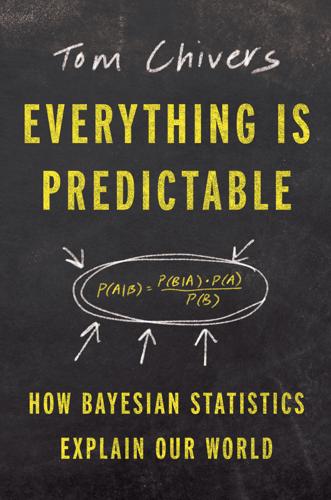
Everything Is Predictable: How Bayesian Statistics Explain Our World
by
Tom Chivers
Published 6 May 2024
What do you mean, a test being 99 percent accurate isn’t the same as a 99 percent chance that it’s right? What mad language are you talking? If you follow the really-not-that-difficult reasoning, it becomes clear, but—for me, at least—it never quite loses its uncanny, otherworldly feeling. But over the last three years, since early 2020, when COVID-19 started marching across the world, it became much more salient. Way back in April 2020, when we were still deep in the first lockdown, people, including former UK prime minister Tony Blair, were calling for “immunity passports,” antibody tests that could tell if someone had had COVID or not. If they had, those people should be allowed out and about.
…
,” Nature 381 (1996): 730, https://doi.org/10.1038/381730d0. 4. S. J. Evans et al., “Prevalence of Adult Huntington’s Disease in the UK Based on Diagnoses Recorded in General Practice Records,” Journal of Neurology, Neurosurgery & Psychiatry 84 (2013):1156–60. 5. M. Alexander Otto, “FDA Grants Emergency Authorization for First Rapid Antibody Test for COVID-19,” Medscape, April 4, 2020, https://www.medscape.com/viewarticle/928150. 6. John Redwood, (@johnredwood), “The government advisers today need to tell us how they are going to stop false test results distorting the figures,” Twitter, September 21, 2020, https://twitter.com/johnredwood/status/1307921384883073024. 7.
…
A academia, success in, 124–125, 169 Ackman, Bill, 332 Act of Toleration, 25 Act of Uniformity, 25, 26 Adams, Douglas, 238 Adams, John, 71 Adelson, Edward, 277–278 AI, see artificial intelligence AIM-9 Sidewinder, 239 aleatory uncertainty, 160 Alexander, Scott, 1, 313 algorithms Archimedes’s, 206 as Bayesian, 113 Kalman filter, 286 Alhazen (Abu Ali al-Hasan Ibn al-Haytham), 271 allostasis, 317 alpha, 101, 137 American revolution, 71–72 American Statistician, 242 analysis of variance (ANOVA), 90 anchoring, 240 Andropov, Yuri, 249 Anglicans, 29 ANOVA (analysis of variance), 90 anti-Semitic, 92, 93 Anton-Wilson, Robert, 268, 330 “Apology for Ecumenism in Statistics, A” (Box), 115 Arafat, Yasser, 260 Archilochus, 255 Archimedes, 206 Arians, 29, 31 Ariely, Dan, 230 Aristotelian logic, 175–181, 186–187, 267 Aristotle, 175–176 Ars Conjectandi (Bernoulli), 51–52 artificial intelligence (AI) as Bayesian, 6 Bayesian decision theory in, 215–225 decision making by, 209 Artificial Intelligence: A Modern Approach, 215 audio illusions, 289–290 availability heuristic, 228, 237–238 B babies, 318–319 “Bad Science” (Goldacre), 11 Bakan, David, 148, 172 Balguy, John, 30 balls, catching, 238–239 ban (term), 108 Bargh, John, 119 base rate, 257, 258, 264 “Battle Hymn of the Republic, The,” 111 Bayes, Alice Chapman (great-grandmother), 25 Bayes, Anne (sister), 27 Bayes, Anne Carpenter (mother), 26 Bayes, John (brother), 27 Bayes, Joshua (father), 26, 31 Bayes, Joshua (grandfather), 26 Bayes, Mary (sister), 27 Bayes, Nathaniel (brother), 27 Bayes, Rebecca (sister), 27 Bayes, Richard (great-grandfather), 25 Bayes, Samuel (brother), 27 Bayes, Samuel (great uncle), 25–26 Bayes, Thomas, 20, 23–35 on probability as subjective, 64–71 and Thomas Simpson, 61–64 and subjective priors, 90 Bayesian algorithms, 113 “Bayesian Believer,” 112 Bayesian cabaret, 111–112 Bayesian decision theory, 175–225 in artificial intelligence, 215–225 Cromwell’s rule, 189–192 and deductive reasoning, 175–181 expectations, 192–195 hyperpriors, 210–212 multiple hypotheses in, 212–215 and Occam’s razor, 203–209 Bayesianism advantages of, 172–173 as aesthetically pleasing, 173 as decision theory, 106–107 fall of, 94–98 necessity of prior probability in, 263 resurgence of, 113–116 as subjective, 160 Bayesian machine learning, 215 “Bayesians in the Night,” 112 “Bayesian songbook,” 111–112 Bayes-optimal design, 299–300 Bayes’ theorem, 3–6 and David Hume, 71–76 publication of, 72–73 and Aldolphe Quetelet, 78–81 as theory of non-quite-everything, 6–7 Bays (firm), 115, 168 Beatles, 121 beliefs about probabilities, 5–6, 65 and being right, 261–262 changing, 9, 212–215 confidence in, 332 and expected evidence, 192–194 negative, and depression, 310–311 and outcome of Bayesian reasoning, 21–22 predictions as, 333 prior, affecting future predictions, 236–237 as probabilistic, 268 in research, 134–135 and scientific research, 93 and unexpected information, 251–252 various religious, 29–30 bell curve, 57 see also normal distribution Bellhouse, David, 24, 26, 30, 31, 33, 35, 61, 63, 73, 94 Bem, Daryl, 118, 120–121, 127–128, 133, 212, 230 Berkeley, George, 33–34 Berlin, Isaiah, 255 Bernardo, José-Miguel, 109, 110, 111, 112 Bernoulli, Jacob, 46–53, 73, 77–78, 81, 99, 129, 151 Bernoulli’s Fallacy (Clayton), 49, 93 Bertillon, Alphonse, 80 Bertrand, Joseph, 95–96 biases, 237 anchoring, 240 confirmation bias, 240, 324–325 conjecture bias, 240 frequency bias, 240 as heuristics, 237 recency bias, 240 in scientific research, 93 Biden, Joe, 325 Bieber, Justin, 277 Bing, 221 binomial distribution, 46, 54–56 Biometrika, 89–90, 91 birth rates, 78 Blair, Tony, 11 Blake, William, 23 Blakemore, Colin, 303* Blakemore, Sarah-Jayne, 303, 307–308 bog-standard statistical techniques, 121 Boleyn, Anne, 24 Book of Common Prayer, The, 24–25 Boole, George, 82, 95, 97, 163, 177, 179, 210 Boolean algebra, 177 Boolean logic, 175–181, 186–187 Boolean operators, 178 Borel, Émile, 106 Box, George, 110, 111, 115, 325 “Boy-Girl paradox,” 247–248 brains, 269–320 as Bayesian, 6 depression, 308–313 and dopamine, 288–294 free energy and prediction errors, 313–320 information-seeking by, 294–303 perception and consciousness, 269–276 reality as controlled hallucination, 283–287 schizophrenia, 303–308 breast cancer screening, 7–9, 16 Brezhnev, Leonid, 249 Brief History of Time, A (Hawking), 33 Brier score, 253–254 Bristol University, 170 Brussels Royal Observatory, 78 Buffett, Warren, 332, 333 Bunhill Fields, London, 23 Bunyan, John, 23 Bush, George W., 255 Bush, Jeb, 237 Buttigieg, Pete, 325 BuzzFeed, 276 C Cambridge University, 65, 96, 105, 108, 170 cancel culture, 333 Canton, John, 63, 72 Carcavi, Pierre de, 37 Cardano, Gerolamo, 35–37, 39–40 Carhart-Harris, Robin, 311 Carnot, Nicolas, 184 Carnot engine, 184–185 Carr, Sophie, 115, 168 catching balls, 238–239 categorization, 265–266 Catholics, 29 cave allegory, 271 CERN (European Council for Nuclear Research), 133–134 certainty and Cromwell’s rule, 189 degree of, 49–52 lack of complete, 74–76 Chance (journal), 122 chance, games of, 35–46 Chaplin, Charlie, 281 Charles University, 205 ChatGPT, 221–222, 225 checker-shadow illusion, 277–278 Chernenko, Konstantin, 249–251 chess, played by ChatGPT, 221–222 chi-squared test, 89–90 Chrystal, George, 97–98 clairvoyance, 120–121 Clayton, Aubrey, 49, 51, 53, 79, 81, 82, 93–96, 113, 132–133, 153, 172, 258 Clinton, Hillary, 237 CNBC, 255 Cold War, 249–251 colon cancer screening, 16 color perception, 276–280 common sense, 187 Commonwealth of England, 24–25 competitive reaction time task (CRTT), 124 complexity, 208–209 conditional probability, 4 Condorcet, Marquis of, 77 confirmation bias, 240, 324–325 conjecture bias, 240 consciousness, 269–276, 329 conspiracy theories, 6–7 Control (Rutherford), 93 Cornell University, 118, 126, 127 corroborated hypotheses, 141, 142 Coursera, 145, 155–156 COVID-19 testing, 11–13 Cranmer, Archbishop, 24 Cromwell, Oliver, 25, 189, 192, 212 Cromwell’s rule, 189–192 Crowley, Paul, 209 CRTT (competitive reaction time task), 124 D Darwin, Charles, 85, 88, 92 Darwin, Erasmus, 88 data falsifying, 117–118 frequent checking of, 145–146 getting better, 137 decision making as Bayesian, 21 with frequentism vs.
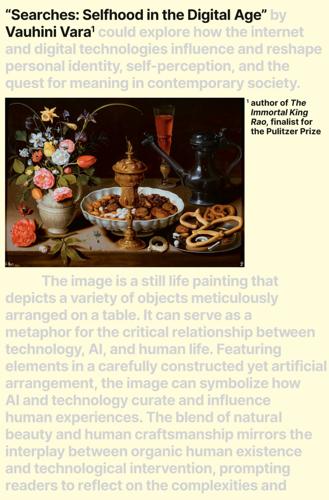
Searches: Selfhood in the Digital Age
by
Vauhini Vara
Published 8 Apr 2025
BBC, BTS, Babies, Bachelor Nation, Bachelor in Paradise, Banking, Barack Obama, Baseball, Basketball, Bell Hooks, Ben Smith, Bengaluru, Benny Safdie & Josh Safdie, Bernie Sanders, Betty White, Beyhive, Beyoncé, Bill Clinton, Biographies and memoirs, Black Lives Matter, Blogging, Bolivia’s Government issue, Bollywood directors, producers & writers, Books, Books news and general info, British Royal Family, Brown University, Budget travel, Business & finance, Business & finance news, Business media outlets, Business news, Business news and general info, Business personalities, BuzzFeed. CNN, COVID-19, COVID-19: Health experts (India), COVID-19: Indian media & journalists, Caitlin Clark, California, California wildfires, Cambridge University, Cartoons, Catfish: The TV Show, Catherine Rampell, Cecilia Kang, Celebrities, Chandigarh, Charles Bukowski, ChatGPT, Cheese, China national news, Chrissy Teigen, Classic rock, Climate change, Coach, Coach Handbags, Wallets & Cases, Coffee, Colin Kaepernick, College Basketball, College life, College sports, Colorado, Colorado Avalanche, Colorado Buffaloes, Colorado Rapids, Colorado Rockies, Columbia University, Comedy TV, Commentary, Computer programming, Constitution of United States of America, Cornell University, Country music, Cowboy Carter, Credit Cards, Crime drama, Cuisines, Cult classics, Cultural events, Cultural history.
…
The whole South Lake Union area would be transformed by the sprawling corporate-scape of its campus, including a Harry Potter–themed library, a dog deck featuring a fake fire hydrant, and three enormous, spherical plant conservatories. Google, Meta, and Apple would also open offices in the neighborhood. During the Covid-19 pandemic, the Denny Triangle Elephant Car Wash would close and its owner, Bob Haney, would donate one of the elephant signs to Amazon. “They asked for it, they wanted to have it,” he would tell The Seattle Times. “So I gifted it to them.” By then, the change in Seattle’s culture would be complete.
…
And, plaintively, after we’d had our son: “Could you please at least try not to do it in front of him?” I would sometimes respond, if I felt defensive, that he was the strange one, not me; maybe I was addicted, but so was everyone else except him. “Yeah,” he would acknowledge, “that’s the scary part.” Eventually, even he started losing his will. First, during the Covid-19 pandemic, restaurants stopped offering paper menus, and we’d have to pass my phone back and forth to peer at the on-screen food choices before putting in our order. Then we started spending time with friends who did their calling and texting on WhatsApp, a Meta product, and had to contact him through me.

Mood Machine: The Rise of Spotify and the Costs of the Perfect Playlist
by
Liz Pelly
Published 7 Jan 2025
v=Rdd3_TCLmC8. 13 The First .0035 Is the Hardest 1 Don Giovanni Records tweet: https://x.com/DonGiovanniRecs/status/1050488619247591424. 2 Spotify’s own explanation of how it pays artists: https://support.spotify.com/us/artists/article/royalties/. 3 For a summary of the UN music streaming report: https://weareumaw.org/un-report. 4 Howie Singer and Bill Rosenblatt, Key Changes: The Ten Times Technology Transformed the Music Industry (Oxford, 2023). 5 Chris Cooke, Dissecting the Digital Dollar: Third Edition (Music Managers Forum, 2020). 6 Cooke, Dissecting the Digital Dollar; Meredith Rose, “Streaming in the Dark: Where Music Listeners’ Money Goes—and Doesn’t,” Public Knowledge, May 2023, https://publicknowledge.org/policy/streaming-in-the-dark-where-music-listeners-money-goes-and-doesnt/. 7 Damon Krukowski, “Making Cents,” Pitchfork, November 14, 2012, https://pitchfork.com/features/article/8993-the-cloud/. 8 Larry Fitzmaurice, “How Indie Artists Actually Make Money in 2019,” Vulture, April 8, 2019, https://www.vulture.com/2019/04/how-indie-artists-actually-make-money-in-2019.html. 9 “The First Ever Musicians’ Census Report Launched,” September 11, 2023, https://www.helpmusicians.org.uk/about-us/news/the-first-ever-musicians-census-report-launched. 10 “Inaugural Music Industry Research Association (MIRA) Survey of Musicians Executive Summary” press release, https://psrc.princeton.edu/sites/g/files/toruqf1971/files/resource-links/report_on_mira_musician_survey.pdf. 11 “Modernizing Our Royalty System to Drive an Additional $1 Billion Toward Emerging and Professional Artists,” Spotify for Artists blog, November 21, 2023, https://artists.spotify.com/en/blog/modernizing-our-royalty-system; for the 86% stat, see: instagram.com/weareumaw/p/C5T7yIduStW/. 12 Dan Rys, “Lucian Grainge Calls for ‘Updated Model’ for Music Industry: Read His Memo to UMG Staff,” Billboard, January 11, 2023, https://www.billboard.com/pro/lucian-grainge-umg-full-staff-memo-2023-read-message/; Anna Nicolaou, “The Incredible Resilience of the Music Industry,” Financial Times, September 8, 2023, https://www.ft.com/content/b85ab5af-bd03-4da8-971a-316e7c7897dc. 13 Stuart Dredge, “UMG Boss Slams Artist-Centric Critics as ‘Merchants of Garbage,’ ” Music Ally, October 27, 2023, https://musically.com/2023/10/27/umg-boss-slams-artist-centric-critics-as-merchants-of-garbage/. 14 Paul Resnikoff, “Spotify Executive Calls Artist ‘Entitled’ for Requesting Payment of One Penny Per Stream,” Digital Music News, June 29, 2021, https://www.digitalmusicnews.com/2021/06/29/spotify-executive-entitled-pay-penny-per-stream/. 15 Spotify Investor Day 2018: https://investors.spotify.com/investor-day-2018-materials/default.aspx. 16 These numbers come from Spotify’s “Loud & Clear” report, https://loudandclear.byspotify.com/. 14 An App for a Boss 1 Taylor Swift, “For Taylor Swift, the Future of Music Is a Love Story,” Wall Street Journal, July 7, 2014, https://www.wsj.com/articles/for-taylor-swift-the-future-of-music-is-a-love-story-1404763219; Daniel Ek, “$2 Billion and Counting,” Spotify for Artists blog, November 12, 2014, https://artists.spotify.com/en/blog/2-billion-and-counting. 2 The Third Bridge Creative website includes the Spotify for Artists blog as a case study: https://www.thirdbridgecreative.com/strategy/b2c-content-marketing-for-creators. 3 Taylor Lorenz, “The Real Difference Between Creators and Influencers,” Atlantic, May 31, 2019, https://www.theatlantic.com/technology/archive/2019/05/how-creators-became-influencers/590725/. 4 Amanda Perelli, “The Creator Economy Is a $250 Billion Industry and It’s Here To Stay,” Business Insider, November 16, 2023, https://www.businessinsider.com/creator-economy-250-billion-market-and-here-to-stay-2023-11; Christine Muhlke, “For Content Creators, It’s the Wild West,” New York Times, December 6, 2023, https://www.nytimes.com/2023/12/06/business/dealbook/content-creator-economy.html. 5 Liz Pelly, “Playing in the Social Factory: An Interview with Astra Taylor,” The Media, September 11, 2015, http://www.fvckthemedia.com/issue61/astra-taylor. 6 Chris Anderson, The Long Tail: Why the Future of Business Is Selling Less of More (Hachette Books, 2006); Rupert Neate, “Daniel Ek profile: ‘Spotify will be worth tens of billions,’ ” Telegraph, February 17, 2010, https://www.telegraph.co.uk/finance/newsbysector/mediatechnologyandtelecoms/media/7259509/Daniel-Ek-profile-Spotify-will-be-worth-tens-of-billions.html; for the “one million artists making a living off of their music” quote, see Ek’s remarks at Spotify’s 2018 Investor Day: https://www.youtube.com/watch?v=6QxA5qBRZxM. 7 Stuart Dredge, “Spotify CEO Talks Covid-19, Artist Incomes and Podcasting (Interview),” Music Ally, July 30, 2020, https://musically.com/2020/07/30/spotify-ceo-talks-covid-19-artist-incomes-and-podcasting-interview/. 15 Indie Vibes 1 Stuart Berman, “Lance Allen and the New Secrets of DIY Success,” Spotify for Artists blog, May 1, 2018, https://artists.spotify.com/en/blog/lance-allen-and-the-new-secrets-of-diy-success. 2 “Indie Music and the Web | Maggie Vail at MozFest,” YouTube video posted by Mozilla, February 9, 2017, https://www.youtube.com/watch?
…
Videos peppering social media captured crowds of musicians and supporters, some braving snow and rain, with an array of creative signs; “DANIEL EK WHERE’S MY CHECK?” and “MUSIC WORKER SOLIDARITY WITH BAMAZON UNION” were among them, the latter a message in support of the then-ongoing effort to organize Amazon workers in Bessemer, Alabama.1 UMAW had formed just a year earlier, a few weeks into the COVID-19 lockdown, when independent musicians, like many others, were feeling the strain on their already precarious livelihoods. For years, musicians had come to rely primarily on live shows for income, as the pro rata model funneled the biggest shares of streaming royalties to major labels. Now that the pandemic had shut down touring for the foreseeable future, the scam had been put into stark relief for working artists.
…
Abbey, Michael, 209–12 AI (artificial intelligence) AI DJ, 97, 106–8, 116 Boomy, 125–28, 183 ethics of, 130–31 to identify new talent, 90–91 military use of, 146–47 mood data collected by, 144–45 music generated by, 66, 75, 125–36 training of, 94–96, 126 Akiyama, Kuniharu, 46 algorithms, viii, ix, 92–94, 96–104, 115–16, 120, 122–23 Allen, Lance, 172–73, 184 Almanac Singers, 205 Amazon, 4, 65, 133–34, 170–71, 197, 198–99 American Federation of Musicians (AFM), 207–8 American Music Fairness Act, 234 Andasun, Mat, 72–73 Anderson, Chris, 166–67 Anderson, Jim, 158–9 Anjali, 204–5 Ann Arbor District Library, 225–26, 228 Anohni, 54 Antipiratbyrån, 2 Apple, 4, 200–201 See also iTunes Arctop, 135 Arm, Mark, 43 artist-centric payment system, 156–57, 187–88, 194 Artist Compensation Royalty Fund, 212 Artistic Freedom Voucher, 7–8 Artists Rights Alliance, 192–93 Ashikawa, Satoshi, 46 Association for the Advancement of Creative Musicians, 220–21 Attali, Jacques, 30, 123–24 Audio Auras, 102–3 Audio Home Recording Act (AHRA), 211–12 Austin, Preston, 224 Autoplay, 98–99, 186–88 AWAL, 131–32, 178–80, 183, 261nn4–5 background music, 26, 35–38, 41–2, 57–58, 68–78 See also chill music; Muzak/muzak; PFC; stock music Bandcamp, 20, 225, 243n2 Basic Income for the Arts, 231–32 Bertelsmann AG, 3 Billboard, 16, 81, 87–88, 202–3 billboards, 169–71 BitTorrent, 14–15 Blake, James, 134 blogs, mp3, 21–22, 173–74 Boomy, 125–28, 183 Bowker, Geoffrey C., 111 Brion, Lina, 30 Burba, Zach, 228 ByteDance, 87 Campaign Kit, 190–91 capitalism, 5–6, 51–2, 54, 105, 137, 176 Carter, Troy, 178–79 Catalini Smith, Henry, 213–14 Catalog Incentive Program, 188 Catalytic Sound, 218–24 Cavetown, 181 CCPA (California Consumer Privacy Act), 201 Center for Economic and Policy Research, 7–8 Cheek, Taja, 115–16 chill music, 39–42, 44–56, 62–63, 82–83, 112 See also functional music; Muzak/muzak; PFC Citerman, Ty, 207 Cole, Henderson, 211 collectives/cooperatives, 217–23 copyrights, 3, 6–9, 126 Cornils, Kristoffer, 30 Coronavirus Aid, Relief, and Economic Security Act, 206 COVID-19 pandemic, 205–6, 229 Cramer, Jim, 51–52 creators, 164–67, 176 Danilova, Nika, 221 data, 94–96, 115–16 “Every Noise at Once” map, 108–9, 113, 118, 122, 143 fandom as, 117–24 and surveillance, 137–47 and tagging, 64–65, 98, 122–23, 128 See also under Spotify Davis, Clive, 15–16 Davis, Fred, 15–16 deep listening, 36–37, 133, 218 Deerhoof, 176 DeFrancesco, Joey, 205–6, 208 DeNora, Tia, 37 Digital Millennium Copyright Act, 206–7 Digital Performance in Sound Recordings Act (DPRA), 212 Dilla, J, 48 Discovery Mode, viii, 186–94, 200 Dissecting the Digital Dollar, 151–52 Doctorow, Cory, 132 Dominguez, Michael, 261n11 Doran, Spencer, 46–47 Dorgan, Angela, 232 Dreier, Olaf, 6 Drew, Rob, 30–31 Drott, Eric, 142 DSPs (digital service providers), 66–67 See also streaming Dubourg, Nicolas, 232 Echo Nest, 93–95, 96, 108–9, 111 Edison, Thomas A.
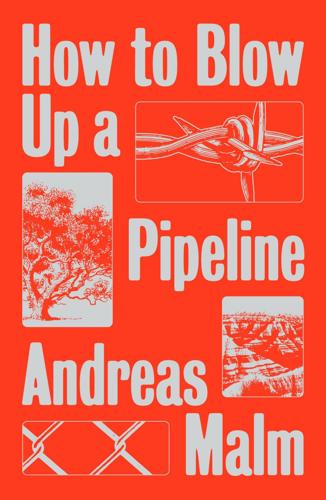
How to Blow Up a Pipeline
by
Andreas Malm
Published 4 Jan 2021
HOW TO BLOW UP A PIPELINE HOW TO BLOW UP A PIPELINE Learning to Fight in a World on Fire Andreas Malm First published by Verso 2021 © Andreas Malm 2021 All rights reserved The moral rights of the author have been asserted 1 3 5 7 9 10 8 6 4 2 Verso UK: 6 Meard Street, London W1F 0EG US: 20 Jay Street, Suite 1010, Brooklyn, NY 11201 versobooks.com Verso is the imprint of New Left Books ISBN-13: 978-1-83976-025-9 ISBN-13: 978-1-83976-027-3 (UK EBK) ISBN-13: 978-1-83976-026-6 (US EBK) British Library Cataloguing in Publication Data A catalogue record for this book is available from the British Library Library of Congress Cataloging-in-Publication Data A catalog record for this book is available from the Library of Congress Library of Congress Control Number: 2020936555 Typeset in Adobe Garamond by Hewer Text UK Ltd, Edinburgh Printed and bound by CPI Group (UK) Ltd, Croydon CR0 4YY Contents Preface 1.Learning from Past Struggles 2.Breaking the Spell 3.Fighting Despair Notes PREFACE No More Excuses for Passivity The manuscript for this book was completed before the coronavirus known as COVID-19 struck. As I write these words, the pandemic is killing some 2,000 individuals worldwide per day. It also has political victims, one of the first being the climate movement, whose high-flying popular mobilisations were punctured in an instant by the outbreak. The climate strikes that swept the globe in 2019 have been put on hold.
…
Despondently, they realised that the action would not go ahead. In Berlin, where I write these words, the coalition at the centre of the movement, Ende Gelände, which had similarly grand plans for 2020, has had to call off its assemblies; the two-week-long camp in the centre of the city planned by Extinction Rebellion has been cancelled. Before COVID-19, the climate movement was soaring to ever-greater heights of mass participation, but the fuel of every social movement has suddenly become so insalubrious as to be outlawed: crowds. One could be forgiven for feeling that the fate of the planet is in the hands of some malevolent celestial force. But world capitalism has also had to close its shops like never before.
…
I should like to believe that the arguments put forth here have a decent chance of surviving this pandemic, insofar as the movement rebounds. The need for militancy is unlikely to be diminished. It is thus my hope that the discussion in the following pages will be of some value for the movement in its post-corona phase – or even in a phase contemporaneous with COVID-19 or some other future pandemic. Sabotage, after all, is not incompatible with social distancing. Berlin, late March 2020 1 Learning from Past Struggles On the last day of the negotiations, we geared up for our most daring action yet. We had been camping out in a shabby gymnasium in the eastern part of the city for a week.

Stake Hodler Capitalism: Blockchain and DeFi
by
Amr Hazem Wahba Metwaly
Published 21 Mar 2021
It is managing over 5.2 billion USD of crypto investments, including 4.4 billion USD of Bitcoin. The third is the impact of COVID-19. The pandemic has steered global interest rates even lower than it was before. Some jurisdictions like the Eurozone and the likes are now in the negative region. Others, including the US and UK, could probably come next if care is not taken in the expansionary monetary and fiscal policies being implemented to combat the surge in unemployment rates induced by layoffs due to COVID-19. In this mood, DeFi gives much higher returns are potentially offered to savers than the high-street financial organizations.

The Journey of Humanity: The Origins of Wealth and Inequality
by
Oded Galor
Published 22 Mar 2022
In the 1970s and ’80s, by contrast, the global pace of growth slowed as a result of the 1973 oil crisis and demographic trends. In the 1990s, growth picked up again thanks to the revolution in information technology, globalisation, outsourcing, and the astounding expansion of China and other developing countries. Most recently, the financial crisis in 2008 and the Covid-19 pandemic have had adverse temporary effects of the global growth trajectory. But despite these short-run fluctuations due to major crises, economic growth in Western Europe and North America over the past 150 years – that is, since the onset of the Demographic Transition – has maintained an average pace of about 2 per cent a year.
…
Percentage of the Population with Access to Electricity, 2017 Figure 13e. Secure Internet Services (per million people), 2017 Equally disconcerting is the gap in living standards across social, ethnic and racial lines within societies, manifesting as disparities in education, income and health. In 2019, prior to the impact of Covid-19, in the world’s richest country, the United States, life expectancy of African Americans was 74.7, whereas that of white Americans was 78.8; infant mortality rates per 1,000 were 10.8 for African Americans and 4.6 for white Americans; and 26.1 per cent of African Americans had a college degree by the age of twenty-five, in contrast to 41.1 per cent of white Americans.[2] Even so, the gulf in living standards between the richest and the poorest countries is so much larger that millions of women and men risk their lives in the attempt to reach the developed world.
…
While these calamities rained destruction on countless individuals, the living standards of humanity as a whole, seen through a wider lens, swiftly recovered from each of these tragedies. In the short run, the growth process has been highly vulnerable to massive swings, as the world has witnessed recently during the Covid-19 pandemic. But history shows that, shattering and dreadful as they are, these events have had limited long-term impact on the grand arc of human development. The relentless march of humanity has so far been unstoppable. Nonetheless, while billions of people have been liberated from the vulnerability to hunger, disease and climatic volatility, a new peril looms over the horizon: the alarming impact of human-caused environmental degradation and climate change, originating during the Industrial Revolution.

The Age of AI: And Our Human Future
by
Henry A Kissinger
,
Eric Schmidt
and
Daniel Huttenlocher
Published 2 Nov 2021
For the past four years, we and Meredith Potter, who augments Kissinger’s intellectual pursuits, have been meeting, considering these and other questions, trying to comprehend both the opportunities and the challenges posed by the rise of AI. In 2018 and 2019, Meredith helped us translate our ideas into articles that convinced us we should expand them into this book. Our last year of meetings coincided with the COVID-19 pandemic, which forced us to meet by videoconference—a technology that not long ago was fantastical, but now is ubiquitous. As the world locked down, suffering losses and dislocations it has only suffered in the past century during wartime, our meetings became a forum for human attributes AI does not possess: friendship, empathy, curiosity, doubt, worry.
…
Like its creator, that AI will learn to prefer those moves, even if they fare poorly in practice. Of course, the problem of bias in technology is not limited to AI. The pulse oximeter, which has become an increasingly pertinent measurement of two metrics of health—heart rate and oxygen saturation—since the start of the COVID-19 pandemic, overestimates oxygen saturation in dark-skinned individuals. By assuming the way light skin absorbs light is “normal,” its designers effectively assumed the way dark skin absorbs light is “abnormal.” The pulse oximeter is not run by AI. But still, it fails to pay sufficient attention to a particular population.
…
Under his leadership, Google dramatically scaled its infrastructure and diversified its product offerings while maintaining a culture of innovation. In 2017, he cofounded Schmidt Futures, a philanthropic initiative that bets early on exceptional people making the world better. He is the host of Reimagine with Eric Schmidt, a podcast exploring how society can build a brighter future after the COVID-19 pandemic. DANIEL HUTTENLOCHER is the inaugural dean of the MIT Schwarzman College of Computing. Previously he helped found Cornell Tech, the digital technology–oriented graduate school created by Cornell University in New York City, and served as its first dean and vice provost. His research and teaching have been recognized by a number of awards, including an ACM fellowship and CASE Professor of the Year.
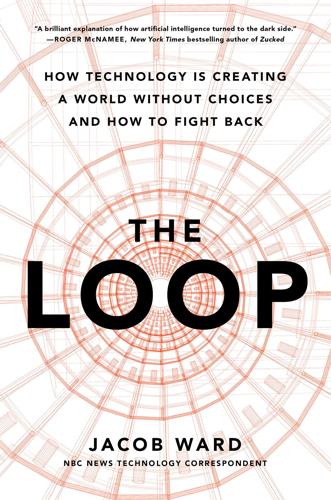
The Loop: How Technology Is Creating a World Without Choices and How to Fight Back
by
Jacob Ward
Published 25 Jan 2022
Soon a new set of radical surveillance capabilities, largely powered by AI, became public knowledge. A company called Draganfly, which had invented the original four-rotor “quadcopter” design for drones, contacted me to describe a new technology that it said would enable public-health authorities to detect COVID-19 symptoms from the air. Researchers at the University of South Australia had already created technology to rapidly detect, in a single drone pass, the survivors of a mass-casualty event like an earthquake or tsunami. With 4K-resolution video footage held extremely still by stabilizers, AI could compare the images in the footage to training data showing the motion of humans breathing in and out.
…
And so the week of April 20, an FAA-licensed drone pilot began flying passes above citizens playing soccer in the park, standing in line outside the local Trader Joe’s, and walking the streets of downtown Westport, not only to determine whether they were standing too close (the drone carried loudspeakers so it could tell people to leave a closed park or to maintain better social distance), but also to potentially identify symptoms of COVID-19. Chief Koskinas explained that his department has adopted radical new technology in the past. Sandy Hook is a half-hour drive north of Westport, and the 2012 murder of twenty children there transformed his department. Before then, he told me, “we were preparing and training differently. Now it’s common practice that a regular police officer carries a high-powered rifle every eight-hour shift.”
…
Use of that data then deepens the inequity.”6 The tendency to broadly apply the rulings of artificial intelligence when human systems are overwhelmed by human need damages independent judgment everywhere—not just in the courts. And it’s when we strap AI and high expectations onto a broken system that things really go wrong. By January 2021, ten months into the COVID-19 pandemic, the economic fallout in the United States was severe and deepening. The service industry was decimated as restaurants, hair salons, and gyms faltered and closed. The head of the National Association of Consumer Bankruptcy Attorneys told me his members were preparing for an avalanche of lost homes and cars as American entrepreneurs everywhere threw whatever they could at saving their businesses.

Nomad Century: How Climate Migration Will Reshape Our World
by
Gaia Vince
Published 22 Aug 2022
Preparing for this climate migration means the phased abandonment of major cities, the relocation of others, and the building of entirely new cities in foreign lands. London, the city I live in, is at least 2,000 years old and accommodates 9 million people. We have mere decades to adapt, expand and build such cities. We can build emergency hospitals in a few days, as we saw during the Covid-19 pandemic; I’ve no doubt we can build ambitious cities within years. But what sort of cities, and where, and for whom? The coming migration will be big and diverse. It will involve the world’s poorest fleeing deadly heatwaves and failed crops. It will also include the educated, the middle class, people who can no longer live where they planned because it’s impossible to get a mortgage or property insurance; because employment has moved elsewhere; because the neighbourhood has become undesirable because those who could have already left for a more tolerable climate.
…
After all, impossible cities like Dubai and Doha in desert regions do just that – Qatar has even begun air-conditioning the outdoors, cooling sports stadiums, pavements and outside markets and dining areas, a trick that has helped it become by far the world’s biggest per capita greenhouse gas emitter.22 So yes, in some places some populations will be able to endure for longer by essentially living an indoor, cooled or nocturnal existence, and perhaps by wearing powered, air-conditioned bodysuits.23 However, even if you ignore the energy and water costs of extreme adaptation, such strategies will only ever work in a limited way for a small section of urban society. After all, those populations would be heavily dependent on resources produced outside, such as food. Consider that even for wealthy Gulf states, there are continual fears over food security, as there are no permanent rivers or lakes in the region, so vulnerability to shocks, such as the Covid-19 crisis, is acutely felt. Countries like the UAE import 90 per cent of their food. Right now, half of the world’s food is produced on smallholder farms using physical labour, yet as the world warms there will be more and more days when it will be physically impossible to work outside, reducing productivity and food security.
…
Immigrant-founded companies account for more than half of the top twenty-five American firms and many of the most recognizable brands, including Google (and its parent company Alphabet), Yahoo!, Kraft Foods and Tesla. Silicon Valley is the Geneva of technology: half of the companies’ founders are immigrants, as are two-thirds of the workforce. Henry Ford was the son of immigrants, Steve Jobs’s father was from Syria, and the Pfizer vaccine against Covid-19 was made by Turkish immigrants to Germany and Hungarian immigrants to the US. The truth is, we need a diversity of skills and talents for productive economies and vibrant societies, which means everyone from fruit-pickers to computer programmers, from truck drivers to ballet dancers. THE DEPOPULATION CRISIS In 1950, women were having an average of 4.7 children in their lifetime.
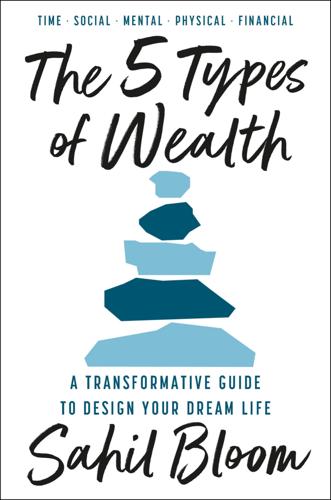
The 5 Types of Wealth: A Transformative Guide to Design Your Dream Life
by
Sahil Bloom
Published 4 Feb 2025
Attention: Unlocking Asymmetric Outputs In 1666, when the bubonic plague was devastating London and its surrounding cities, forcing universities to shut their doors and send students home, a twenty-three-year-old at Trinity College at the University of Cambridge fled to his small village fifty miles away. Just as in the early months of our COVID-19 pandemic, young students were forced by unfortunate circumstances to pause their lives and enter a state of lockdown. But rather than wallow away while in isolation, this particular bright young man ran with the forced constraint and spent the year in a perpetual state of creative and intellectual flow.
…
She seemed to age twenty years in the span of two during the on-and-off lockdowns that gripped India from March 2020 through mid-2022. Her busy social schedule, which had previously included a weekly Scrabble club, daily lunches, and regular visits from family and friends, came to a standstill. She never contracted COVID-19, but as the research highlights, the deterioration in her health and cognitive faculties might have been due purely to the lack of human connection. When I was finally able to visit her again, in January 2023, she appeared nearly catatonic on the evening of our arrival. By the second day of our visit, she was up and about, chatting actively and even managing to playfully dominate my Harvard professor father and myself in a game of Scrabble (while consoling us with the assertion that she was “just getting very good letters”).
…
Teenagers and young adults are spending 70 percent less time with their friends in person than they did two decades ago.[6] The trend appears particularly dire for men, with 15 percent of men reporting that they have zero close friendships (a fivefold increase from 1990); the number of men who say they have at least six close friendships was cut in half over the same period.[7] A 2022 Gallup study found that only 39 percent of U.S. adults felt very connected to others.[8] While the COVID-19 pandemic may have amplified perceptions of loneliness, it is clear that they have been accelerating under the surface for a long time. Sadly, my grandmother passed away in October 2023. In my mind, she was yet another victim of this new and pervasive global challenge: the loneliness pandemic.

The Optimist: Sam Altman, OpenAI, and the Race to Invent the Future
by
Keach Hagey
Published 19 May 2025
Nobody had wanted to work on it in the beginning, and as they struggled to get users, the small team wanted to go back to research. But the imperative was clear: OpenAI had to monetize GPT. So as Covid shut down the country, Brockman, Murati, and Welinder slogged on. “If we’d started two months later, it definitely would have been a very different story for the API,” Brockman said. AS THE Covid-19 virus marched across the globe, Altman was dealing with a family crisis. Annie had always been a daddy’s girl. She was the most effusive, the most athletic, the bleeding heart who went vegan after killing mice in the lab. When Jerry died, Annie’s already fragile health collapsed. She was diagnosed with ovarian cysts and an Achilles tendon injury that kept putting her in a walking boot.
…
“What they need are money and connections.”11 In April, he and Max, who was now working at YC darling Rippling, thought of the most Silicon Valley response possible: a website called 1billionmasks.com that would facilitate a bulk purchase of surgical masks from China. In June, Sam launched a project to spin up Covid-19 clinical trials. His push into biotech at YC had introduced him to numerous companies, such as 1910 Genetics, an AI-driven drug discovery company founded by Jen Nwankwo, which he had invested in. Now Nwankwo was using these AI tools to try to find Covid treatments. Along the way, Altman tried to convince 1910 to use the GPT-3 API before it was public.
…
Louis, 37–38, 40 second marriage of, 33, 35–37, 41–42, 201–2 Altman, Max (Sam’s brother), 36–38, 42, 136, 139, 156, 201, 250, 295, 311, 312 Altman, Minnie, 23 Altman, Reba, 23–24 Altman, Richard, 25 Altman, Sam, 1–17, 311–15 Annie’s allegations against, 261–62 Artix, 68 belief we are living in a simulation created by, 17 the “blip” and beyond, 7, 14–15, 276–94, 295–10, 311–15 blogging, 148, 152 claim of getting scurvy, 77 deal with Boost mobile network, 80, 99–105 death of his father Jerry, 15, 226–28, 233, 248–50, 302 as dishonest and other complaints, 108–9, 266, 283–84 dropping out of Stanford, 85–86, 91–93 early life and family, 15–16 enter AI, 140–47, 163–66, 169–72 enter China, 230–31, 267, 314 enter Covid-19, 246, 248–50 enter Elon Musk, 16, 147, 170–72, 183, 194, 214–15 enter Greg Brockman, 172–78, 183–88 enter Helen Toner, 241–42, 266–67, 276–79, 282–88, 291, 292, 299, 309 enter Ilya Sutskever, 176–82 enter Microsoft, 229–33 enter Mira Murati, 225–26, 242–43, 246–48, 268, 282–93, 304–5, 307–8 enter Peter Thiel, 1–7, 10, 16–17, 125, 134–48 enter Saudi Arabia, 231–32 enter Steve Jobs, 61, 85, 87, 90, 110–16 “good meeting-itis,” 107 ham radios, 32–33, 48 as head of Y Combinator, 149–63 Helion Energy nuclear fusion startup, 13, 136, 207, 259, 280, 298 his cars, 161, 259–60 his “fashion sense,” 49, 115, 126 his first computer, 44 his first product launch, 101–3 his first term sheet (Radiate and NEA), 85–86, 88–93, 95–96 his public altruism, his private enrichment, 89, 234, 254–61 his twee all-lowercase writing, 102, 269, 292 his wide-ranging curiosity, 149, 176 house in Big Sur, 134, 171, 260 at the John Burroughs School, 15–16, 45–48, 49–53, 202, 227 as a kind of doomsday prepper, 154 Loopt, 16, 96, 101–17, 118–23, 126–28, 133, 138, 150–51, 159, 216, 229–31 love of cars, 26, 51 Mac LC II personal computer, 44, 315 “mercantile spirit,” 16, 186 as a messy eater, 49–50 “Moore’s Law for Everything,” 255 networking talents, 8, 59, 123–24, 274 at OpenAI’s founding, 182–88, 234 optimism as his brand, 1–4, 15, 17, 30, 101, 103, 128, 136–37, 141, 152, 154, 200 pink and green polo shirt “douchebag” badge, 115, 126 political ambitions of, 13, 200, 206, 223, 273–74, 296 the promises of AI, 254–56 Radiate (formerly Viendo), 76, 77–82, 85, 88–90, 93–94, 96–101 from Radiate to Loopt, 103–9 recurring dream of, 92 relationship with Lachy Groom, 151–52, 154, 157 relationship with Matt Krisiloff, 206–7, 275 relationship with Nathan Watters, 50–51, 201 relationship with Nick Donahue, 260–61 relationship with Nick Sivo, 55–56, 60, 64, 85, 89, 91–92, 102–3, 113–14, 128 relationship with Oliver Mulherin, 275, 288, 295, 311 religion and spirituality of, 15–17, 24, 31, 43–44, 134, 227 sexual orientation of, 16, 33, 48–53, 201–3, 295 “shiny object syndrome,” 120–21 as a Stanford undergrad, 16, 55–61 travels in Europe, Southeast Asia, and Japan, 134 in Y Combinator’s first Summer Founders Program, 62–66, 75–82 see also OpenAI Altman, Sol, 23, 24 Altman, Sunny, 23 Amazon, 82, 90, 218, 247 Amazon Web Services, 111, 119, 187, 216 Ambrosia, 258–59 America Online (AOL), 16, 49–50, 76, 162, 229 American Lung Association, 135 American Millinery Company, 31 Amodei, Daniela, 213 Amodei, Dario, 169–70, 178, 184, 209, 213, 226, 241–43, 251–53, 273, 310 Andreessen Horowitz, 155, 158, 161, 257 Andregg, William, 258 angel investing, 70–74, 81, 123, 138, 150–52, 309 Anthropic, 2, 9, 145, 252, 266, 268, 271, 306, 309, 310 Claude the chatbot, 268, 278, 285 Long-Term Benefit Corporation, 277, 299 antisemitism in AI, 270 Anybots, 94 AP Bio exam, 3, 267–68 AP Computer Science, 47 Apple App Store, 112 early personal computers, 44, 86, 117, 195, 315 iPads, 197 iPhones, 110–16, 118, 119 Loopt and, 112–14, 116 Safari browser, 111 on the stock exchange, 58 Vivarium Project, 209–10 the “walled garden” of, 110 Worldwide Developers Conference, 111, 114 application programming interfaces (APIs), 125, 245–48, 250–51, 264–65, 269, 279 Arment, Marco, 203 Arnold & Porter law firm, 291 Ars Technica, 242 artificial general intelligence (AGI), see AI (artificial intelligence) Artix, 68 Asana workplace management software, 212 Asilomar AI Principles, 208, 211, 213, 233–34 Asimov, Isaac, 47 Assange, Julian, 142 AT&T, 62, 90, 100, 103, 104, 110, 118, 119 Atari, 87, 147, 165, 190 Atkins, Brian and Sabine, 142–43 Atlanta Georgi, 23 Atlantic, The (magazine), 46, 297 Atmos home building platform, 260 “Attention Is All You Need” (“the transformer paper”), 218–19, 270 Australia, 99, 266 Authors Guild, 220 Autopilot AI-assisted driving, 225 Baidu, 170 baldness, cure for, 108 Bankman-Fried, Sam, 212, 257, 276 bankruptcies, 31, 87–88, 145, 205 bar exam, AI passing the, 3, 272 Bard conversational model, 271 “bed nets” era of effective altruism, 212 Beginning of Infinity, The (Deutsch), 314–15 Bell Labs, 140, 185 Bell, Tom (aka T.

The Contrarian: Peter Thiel and Silicon Valley's Pursuit of Power
by
Max Chafkin
Published 14 Sep 2021
But the promised interview never materialized, and as COVID-19 case levels soared anew, Thiel’s representative stopped returning my emails. Instead, Thiel spoke to Die Weltwoche, a Swiss newspaper whose editor Roger Köppel is a member of the country’s national-conservative People’s Party. During an interview with Köppel, Thiel characterized the disease as a mental pathology rather than a physical one. “I see it as a psychological indicator that people know deep down: There is no way back to the old normal,” he said. He continued: “COVID-19 created a shift. There used to be this feeling that the future was being held back somehow.
…
But, as in 2008, when he’d secretly encouraged the forces of disruption—sending out sober-minded letters to Clarium’s investors warning of the dangers of anti-immigrant populism while secretly funding the very same movement—he’d also helped plant the seeds of the chaos that followed the spread of COVID-19. He’d helped Trump overcome Republicans who’d feared that his narcissism and authoritarian tendencies would be disastrous in a crisis, and he’d helped create and protect Facebook, which was now facilitating the spread of misinformation that encouraged Americans to shun masks, take unproven and potentially harmful treatments, like the antimalarial hydroxychloroquine and even industrial bleach.
…
Keith Rabois, an original satellite in the Thielverse, is a partner at Founders Fund and has been, on a daily basis, amplifying Thiel’s message that the Bay Area should be abandoned by anyone with money or ambition. Rabois purchased a home in Miami Beach in December, complaining about California’s high taxes and its COVID-19 restrictions. Thiel also relocated, acquiring two properties in Miami Beach at the end of 2020, a good spot for him given that Florida, unlike California, doesn’t tax capital gains, and is not far from the de facto headquarters of the Republican Party, Donald Trump’s Mar-a-Lago Club. Founders Fund is opening an office in South Florida too.

Power Play: Tesla, Elon Musk, and the Bet of the Century
by
Tim Higgins
Published 2 Aug 2021
Shares plunged 17 percent on February 5, one of its worst days ever, on news out of China that the company’s locally made Model 3s would be further delayed because of COVID-19. Excitement about Tesla’s potential for growth in China had fueled a rocket-like rise in value, but now there was growing concern that this new virus, which scientists cautioned was deadly and easily spreadable, might bring the country’s economy to a standstill. As investors began to digest that news, it became increasingly clear, too, that COVID-19 wasn’t a threat to just China or Asia, as the SARS outbreak had largely been almost twenty years earlier. In Tesla’s home state of California, local government officials were growing increasingly concerned.
…
Just weeks earlier, Musk had been onstage in Shanghai celebrating the start of Model 3 production in China, defying skeptics who thought he couldn’t pull off such a feat in less than a year. Two days after his performance, the World Health Organization announced the discovery of a mysterious pneumonia-like illness in Wuhan, a large Chinese city more than five hundred miles to the west. It was still early days for what would become known to the world as COVID-19. For many around the globe, it was easy to dismiss the potential threat as something a world away—if they were even paying attention. This was especially true if you were a Tesla shareholder joining Musk in celebrating, as the company’s stock continued to surpass record highs. His unexpected victory in China, not to mention racking up two quarters of profitability at the end of 2019, had given him renewed credibility.
…
Given the sky-high valuation requirement, this first goal might be one of the only tranches Musk could reasonably reach, some thought at the time. Still, in the wake of his “fascist” comment, investors seemed to reward his defiance. Shares were rebounding from a low in February. With his further outbursts downplaying the danger of COVID-19, Musk waded right into the growing political unrest that roiled the nation. Debate hinged on whether to prioritize containing the pandemic or fueling the economy, and it was split largely along party lines. Trump weighed in, supporting Musk in his battle to reopen. To raise the stakes, Musk publicly dared local officials to stop him.
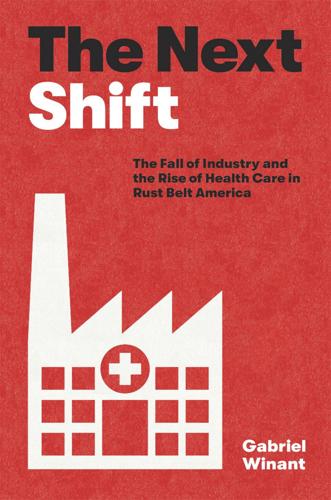
The Next Shift: The Fall of Industry and the Rise of Health Care in Rust Belt America
by
Gabriel Winant
Published 23 Mar 2021
Ryan Deto, “UPMC Workers to Participate In One-Day Strike on Oct. 4,” Pittsburgh City Paper, September 24, 2018; US Department of Labor, Bureau of Labor Statistics, “Major Work Stoppages in 2018,” February 8, 2019. 14. “ ‘Fire through Dry Grass’: Andrew Cuomo Saw COVID-19’s Threat to Nursing Homes. Then He Risked Adding to It,” ProPublica, June 16, 2020; “Coronavirus Cases Rise Sharply in Prisons Even as They Plateau Nationwide,” NYT, June 16, 2020; “Black Americans Face Alarming Rates of Coronavirus Infection in Some States,” NYT, April 14, 2020; Centers for Disease Control COVID-19 Response Team, “Characteristics of Health Care Personnel with COVID-19—United States, February 12–April 9, 2020,” Morbidity and Mortality Weekly Report 69, no. 15 (April 17, 2020), 477–481. 15.
…
The year 2018 saw the highest level of strike participation in the American economy since the mid-1980s; of those who did walk off the job, 90 percent worked in either education or health care—the major care industries. A small one-day strike at UPMC contributed to these numbers. And over the previous decade, health care accounted for more strike activity than any other industry.13 This dynamic appeared to speed up rapidly as I finished this book in spring 2020, while COVID-19 raged. Like a flash of lightning, the pandemic illuminated our society, revealing who is valued and who is dispensable. The thousands left to die in nursing homes and prisons marked one such revelation—social disposability made plain. The unequal racial toll of the disease was another—one related to who had to continue to work.
…
See also health insurance Comprehensive Employment and Training Act (CETA), 192 Congress of Industrial Organizations (CIO), 9, 10, 14, 59 Conners, Martin, 44, 51 consent decrees, 124, 125, 183, 200, 213 consumerism, 59, 64, 80, 220 contracts (union): and Experimental Negotiating Agreement (ENA), 181; and health insurance, 147, 150,158, 159, 205, 206; and layoffs, 182; and 1959 steel strike, 59, 60; and nurses’ union, 223, 232, 249, 250; and retiree benefits, 147, 151; and strikes, 12; and wage reductions, 189, 213; and Section 2-B, 55, 61 Cooper, Richard (Buz), 202 “cost crunch,” 46 “cost disease,” 3 cost-of-living increases, 11, 33, 38, 172 “cost-plus” payment, 148, 218. See also Medicare cost-productivity gap, 46 Cott, Nancy, 83 COVID-19, 263 Cowie, Jefferson, 27 Czap, Mary, 86 Day, Jared, 163 debt: and construction of new hospitals, 167–169, 171, 173, 175, 209, 235; and mergers and acquisitions wave of 1980s, 187, 249, 250; and precarity, 4, 263; and steel industry capital expansion, 38; and steel strike of 1959, 86 debt financing, 167 deindustrialization: and health care, 18, 19, 260; as historical process, 17, 21, 134, 245; and technological unemployment, 185; and welfare state, 181; and working-class community, 99 Denenberg, Herbert, 166 Denominational Ministry Strategy, 190 Department of Health and Human Services (HHS), 223–226 Department of Public Assistance, 127 Detre, Thomas, 245–246, 248 Detroit: and African American kinship networks, 120; in comparison with Pittsburgh, 34, 100, 102, 112, 159, 182; and deindustrialization, 195, 206; and growth of health care and social assistance sector, 5, 6; and New Deal order, 8 diagnostic related groups (DRGs), 226, 227 Dillard, Annie, 38, 40 discipline: and social policy, 11, 15; and collective child-rearing, 121; discipline slips, 43, 54, 62–63; and domesticity, 70–75, 84, 89–96; of the market, 227; in steel workplace, 26, 41, 238, 239 disinvestment, 16, 107, 125, 202, 245 divorce, 195, 214 Dohanic, Pete, 46, 47 domesticity, 64, 73, 77, 78, 80, 96, 116, 222 domestic emigration, 195 domestic violence, 200, 201 domestic work, 90, 116, 152, 179, 223, 232 Donora, 114, 120 Dravo, 34 Dravosburg, 58, 86 dualization of economy, 2.
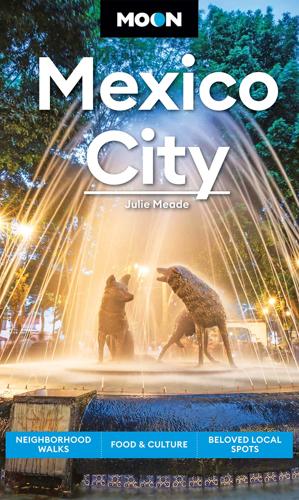
Moon Mexico City: Neighborhood Walks, Food & Culture, Beloved Local Spots
by
Julie Meade
Published 7 Aug 2023
To date, the mosquito that carries the Zika virus is not found in Mexico City, owing to the city’s high altitude. COVID-19 At the time of writing in the fall of 2022, Mexico City had mostly stabilized from the effects of the coronavirus, but the situation is constantly evolving. Now more than ever, Moon encourages readers to be courteous and ethical in their travel. Get vaccinated if your health allows, make an effort to follow all Mexican health protocols and customs, and if possible, test regularly before, during, and after your trip to ensure you continue to test negative for COVID-19. It is currently not necessary to provide proof of vaccination or a negative Covid test result to enter Mexico.
…
A masterwork of composition and color, Rivera executed this chronicle of the history of Mexico between 1929 and 1951. The panel entitled The Great City of Tenochtitlan provides a detailed rendering of the Mexica city, viewed from the market in Tlatelolco. Unfortunately, the Palacio Nacional closed to the public during the COVID-19 pandemic lockdown and work began on restoring the murals. At press time, there was no date for reopening. Catedral Metropolitana MOON MAP Plaza de la Constitución between Monte de Piedad and Pino Suárez, tel. 55/41654052, www.arquidiocesismexico.org.mx; 8:30am-5pm daily; free; Metro: Zócalo Dominating the Zócalo to the north, the Metropolitan Cathedral is a mortar-and-stone representation of the central role of the Catholic Church in Mexico’s past and present.
…
It is currently not necessary to provide proof of vaccination or a negative Covid test result to enter Mexico. Although Mexico suspended indoor masking requirements in the fall of 2022, wearing a mask or facial covering remains an important measure in slowing the spread of COVID-19 and other infectious disease, and you may still be asked to wear a mask in some establishments, or when riding in a taxi or Uber. Please note that passengers traveling to Mexico on Mexican airlines, like Aeromexico, are required to follow Mexican guidelines for masking while onboard, regardless of their country of origin. If you are experiencing symptoms of COVID or require a rapid COVID test to return to your home country, you may make an appointment online at Farmacias de Ahorro (www.fahorro.com) or Farmacias San Pablo (www.farmaciasanpablo.com.mx), both large pharmacy chains, which can administer and provide certified results of COVID antigen tests.

Masters of Scale: Surprising Truths From the World's Most Successful Entrepreneurs
by
Reid Hoffman
,
June Cohen
and
Deron Triff
Published 14 Oct 2021
But it takes a leap of faith, Robert says. “And most people don’t have the courage for that, because you tend to hire what you know.” One last point on diversity: If you want a wide range of perspectives, don’t allow your company to be fenced in, geographically. There’s a strong movement now, accelerated by the COVID-19 pandemic, toward remote offices or distributed companies. This trend may prove to be a boon to cognitive diversity, according to Wences Casares, founder and CEO of Xapo, the digital currency company. Xapo is not huge—only about three hundred employees—but they are spread out in sixty-two locations around the globe.
…
A tasker had come over to fix a light switch, and Stacy realized that this same person had previously delivered a birthday cake for her. So Stacy asked how he went from delivering cakes to doing electrical work. “Because of the TaskRabbit community,” he told her. “I took some classes, I learned, and now I’m making like twice as much as I was making before on the platform.” The rebound: Pivoting in a crisis As the COVID-19 crisis began to take hold in early 2020, Nextdoor CEO Sarah Friar noticed some interesting things happening on the Nextdoor platform, originally designed to make it easier for neighbors to get to know one another. First off, engagement levels were up about 80 percent. But beyond that, the nature of the interactions was changing.
…
Elizabeth’s preexisting conditions made her particularly vulnerable to the virus, and she couldn’t risk leaving the house—so Sarah picked up prescriptions and bagels for her. All of this inspired Sarah to create some new offerings and features on Nextdoor—and the platform quickly pivoted from mere neighborly networking to more of an active outreach and informational clearinghouse. Sarah began by creating the COVID-19 Help Center, a central resource for accurate pandemic information and ways to support local businesses. She followed that up by launching the Neighborhood Help Map, which made it easy for neighbors to find and offer help based on proximity to where they lived. Later in 2020, that map showed it had staying power as it morphed into a Voter Help Map, which matched up people who needed help printing out their voter registration materials with neighbors who could print at home.
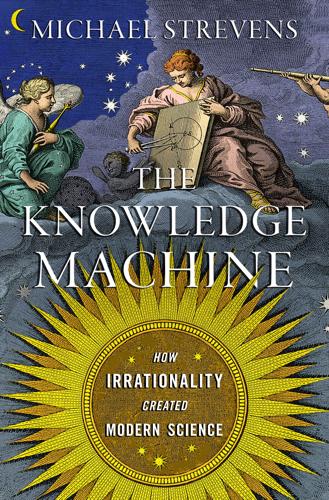
The Knowledge Machine: How Irrationality Created Modern Science
by
Michael Strevens
Published 12 Oct 2020
The weather is getting wilder. Populations are on the move. Exotic diseases—Ebola, AIDS, SARS, MERS, Zika, COVID-19, which is rampaging as I write—are vaulting from animals to humans every generation. Technology is decreasing in size and growing in power like an ever more tightly sprung trap. We’ve pampered and praised the knowledge machine, given it the autonomy it has needed to grow. Now we desperately need its advice. Figure 14.2. A cell heavily infected by SARS-CoV-2, the coronavirus that causes COVID-19 With enough evidence in—with Baconian convergence achieved or at least well on the way—there will exist a consensus among scientists that is functionally equivalent to science’s speaking with a single voice.
…
The aim of the reports is to summarize the state of scientific knowledge concerning the climate; among other things, they assign confidence levels to hypotheses, perhaps attaching “medium confidence” to one and “very high confidence” to another, and they assign likelihoods to particular events—such as a 3-degree increase in average global temperature by 2050 or a 5-inch increase in sea level by 2100—using expressions such as “more likely than not,” “likely,” “very likely,” and so on. (In the same way, the UK, US, and other governments have convened committees of experts during the COVID-19 crisis to extract predictions, as best they can, from a bewildering array of conflicting epidemiological models.) Such a panel, for all its expertise and hard work, cannot determine what science says. Science holds no determinate views. The IPCC’s numbers are created, as all such numbers must be, by infusing the scientific record with a set of plausibility rankings.
…
W., 45, 83 Camptosaurus, 224, 225 Carson, Rachel, 265 Cartesian coordinates, 130 Catholic Church Cartesian rejection of intellectual authority, 242 Galileo and, 316n Martin Luther and, 242 in sixteenth-and seventeenth-century Europe, 245–46 causation by collision, 244 See also collision, in Cartesian physics centrifugal force, 132, 306n CERN, 72, 81, 232 Chadwick, James, 228 Challenger expedition, 54 Chambers, Robert, 310n Chandrasekhar, Subrahmanyan, 227 charge, of subatomic particles, 48, 230, 231 Charles II (king of England), 250–52 Châtelet, Émilie du, 265 chess, 99–100, 102 Christchurch, New Zealand, 13 Christian Evidence Society, 181 chromatograms, 61–62 Church of England, See Anglican Church cigarettes, corporate-funded research and, 53 circle, in Aristotelian physics, 134 classical antiquity, 242 classification, biological, 214–20 climate change, 278–79, 288–89 Collins, Francis, 181 Collins, Harry, 64, 285–86 collision, in Cartesian physics, 132, 133, 136–38, 186 compartmentalization first modern scientists’ approach to, 265–67 Newton and, 189–90, 238, 272 in Principia, 249 scientists and, 263–64 confidence levels, 288–89 See also plausibility rankings confirmation holism, 302n consensus, procedural, See procedural consensus continental drift, 54–58, 55 continuity, 103 controlled experiments, 117 conventions, iron rule and, 103 convergence, See Baconian convergence conversion experience, 29, 31 Copernican paradigm, 31–32 Copernican revolution, 26–27 Copernicus, 227 coral reef analogy of science, 196–97 corporations, as sponsors of research, 52–53, 84 cosmic rays, 228 Cosmotron, 228 COVID-19, 287, 288 Cowley, Abraham, 105 criminal trials, 66–67 critical thought, 13, 25, 281–82 Cummings, E. E., 267 cuttlefish, 125–27 Daphne Major (Galápagos Islands), 35, 35 Darwin, Charles Dawkins on, 262 evolution, 28 and Kelvin’s estimation of age of Earth, 74–79, 81 lack of formal structure in organization of species, 236 On the Origin of Species, 206–7 and quinarian system, 218, 219 Whewell and, 177 Daston, Lorraine, 154 data, See empirical evidence data dredging, 309n Davy, Humphrey, 91 Dawkins, Richard, 262 Dear, Peter, 123, 124, 167 de Broglie, Louis, 148 decuplet (eightfold way), 231–32, 233 deductive reasoning, 311n–312n Democritus, 126 Descartes, René Aristotelian worldview vs., 133–35, 307n and collision as cause, 138 and consequences of causal principles, 147 death of, 135 and empirical inquiry, 244 God as critical to natural philosophy, 205–6 and light, 144 Newton and, 186, 188, 271–73 and philosophical reason, 134 philosophy of knowledge, 270–71 physics, 130–38, 270–71 rejection of prevailing intellectual authority, 242 on solid/fluid duality, 143 universe, 131 “Determination of the Deflection of Light by the Sun’s Gravitational Field, A” (Eddington, et al.), 157 Deutsch, David, 227 developmental genetics, 225–26 dimensions, wave function and, 148 Dirac, Paul, 227 discrimination, objectivity and, 85 DNA, 240 dogma, 258 duck/rabbit, 25 Dunedin Multidisciplinary Health and Development Study, 35, 36 Dyson, Sir Frank, 45 earth age of, 74–81, 75 rotation of, 27 Eccles, John, 20 eclipse expedition (Eddington), 42–50, 43, 44, 68–73, 155–61 École normale supérieure (ENS) (Paris), 50 Eddington, Arthur, 156 and auxiliary assumptions, 81 expedition to test Einstein’s gravitation theory, 42–50, 43, 44, 68–73, 155–61 and importance of small details, 114 and plausibility rankings, 81 and problems with observable facts, 111 subjective interpretation of data, 68–73, 83–84, 155–61 and theoretical cohorts, 139 wording of eclipse report, 167 education, See science education educational reform, 175 Ehrenfest, Paul, 145, 150 eightfold way, 230–32, 235, 236 Einstein, Albert, 145, 156 aesthetic/philosophical senses, 273 on beauty, 227 and Eddington expedition, 42–50, 156 gravity theory, see general theory of relativity as philosopher-scientist, 265 photoelectric effect, 144 Popper and, 15, 18 and quantum mechanics, 145–46 See also relativity theory electromagnetic radiation, 92 electrons, 144, 147 elegance, 227 Elegant Universe, The (Greene), 235 elementary particles, 143 Elohim Creating Adam (William Blake), 276 Empedocles, 126, 143 empirical evidence as by-product of scientific argument, 98, 103–4, 195–6 commonalities between Kuhn and Popper, 39 difficult for humans to produce, 33, 37–38, 116, 203 faulty, 47–48, 111 quantitative, 202–3, 244 radical subjectivism and, 63–64 and scientific method, 7, 8 and Scientific Revolution, 243–44 subjective interpretation of, 57–58, 62–65, 79–82, 92–93, 288–89 empirical facts, See empirical evidence empirical inquiry evolution in 1600s, 3 lack of schism in, 98 Newton’s effect on concept, 137–40 and shallow conception of explanation, 138–39 in seventeenth century, 243 empirical reasoning, 205, 258, 260 empirical testing; See also observation Aristotle’s not limiting inquiry to, 203–4 Einstein and, 15 iron rule of explanation as recipe for, 93, 96, 203 motivation and, 37–38, 195–196, 203 and Newton’s physics, 188 and science education, 256 string theory and, 284 supremacy of, 173 Whewell and, 180, 191 empiricists, 266 entomology, 214–18 Epicureans, 97–98 ether, 113 Everitt, Francis, 35 evidence, See empirical evidence evolution, 28, 175, 218; See also Darwin, Charles experimental philosophy, 137, 139, 144, 191 experimenter’s regress, 302n Experiment on a Bird in the Air Pump, An (Joseph Wright of Derby), 276–77, 277 explanation; See also shallow explanation prediction vs., 303n removal of philosophy from, 118 rhyming conception of, 121–22, 124, 140 explanatory power, 195 explanatory relativism defined, 124–25, 293 and Kuhn’s paradigms, 150–51 as obstacle to procedural consensus, 127–29 facts, observable, See empirical evidence faith, See religion falsification, 280–82; See also refutation and Bacon, 110 commonalities between Kuhn and Popper, 39–40 and Eddington experiment, 46 and plausibility rankings, 162 Popper and, 79–80 and theory, 19 Feingold, Mordechai, 142 Feyerabend, Paul, 6, 162 Feynman, Richard, 146, 173 fighting spirit (of scientists), 98–99, 195, 283 finches, 35, 36 fire, as fundamental substance, 2 fluid behavior, 143 Forbes, J.

The Sirens' Call: How Attention Became the World's Most Endangered Resource
by
Chris Hayes
Published 28 Jan 2025
Graham, 185 Burnham, Bo, 144–45 Bush, John Ellis “Jeb,” 212 Business Insider, 193 C cable news, 21–23, 48–50, 139–42, 221–23 author’s show, 22–23, 39–40, 49–50, 98–100, 137–42, 201–2, 221–22, 235–37, 240 mass shootings coverage, 235–37 ratings, 125–26, 137–38, 141 screen “crawl,” 48–49 Cacioppo, John, 85–86, 88 Call of Duty (video game), 52–53, 234 cancer, 6, 171 Canter, Laurence, 176–78 capitalism, 5, 16–17, 24, 68, 124, 172, 183–85 Marx’s theory of, 24, 68, 118–22, 135–36, 144, 145 capo dei capi, 234 Carlson, Tucker, 22, 240 CBS, 6, 148 Cepek, Michael, 65, 72, 79 “channel capacity,” 163 Chartbeat, 40 ChatGPT, 182–83 Chávez, Hugo, 244 Chicago Cubs, 161 childbirth, 37–38 child labor, 258, 265 children boredom and idleness, 62, 77, 78 brain development of, 6, 7, 9 parenting and attention, 81–83, 90–92, 134, 150, 224, 233 schooling and attentional regimes, 199–200, 220 screen bans, 260 siblings and attention, 90–92 Chomsky, Noam, 22, 201 Christianity, 118 Circe, 1–2, 59 civil rights movement, 43–44, 216 Civil War, 199, 203 Clarke, Arthur C., 152 clickbait, 40, 123, 143, 224 climate change, 20, 185, 225–27 Clinton, Hillary, 22, 214 Club of Rome, 184 CNN, 49, 138 Coca-Cola, 45 cocktail party effect, 33–36, 38, 41–42, 54, 55, 56, 73, 89, 90, 99–100, 211 CoComelon, 134 coercion, 24–25, 41–42 Cofán people, 65, 72, 79 Cohen, Stanley, 7 Colgate-Palmolive, 17 collective attention, 145–48, 152 comic books, 10 commodification, 24, 120, 128–35 of attention, 122–25, 128–35 Communist Manifesto, The (Marx and Engels), 119 Compromise of 1850, 195, 228 CompuServe, 261 concision, 201–2 “conflict entrepreneurs,” 235 “conscientious objectors” of social media, 7 conspiracism, 22, 192, 241–45 Contras, 238 corn syrup, 163 Counter-Strike: Global Offensive (video game), 52–53 Covid-19 pandemic, 12, 20, 22, 126, 244 Covid-19 vaccine, 239–40 Cruise, Tom, 98 crying, infants, and attention, 81 cryptography, 160 Csikszentmihalyi, Mihaly, 73 D “data,” 156–57 Databricks, 183 Day, Benjamin, 122–24, 224 daydreaming, 77–78 Dean, Howard, 178–79 Death of a Salesman (Miller), 106–10 debates, 198–200, 216–17 Lincoln-Douglas debates, 195–98, 200–201, 202–4, 216, 227–29, 238 “deep state,” 242 dehumanization, 85, 120, 131, 223 depression, 6, 84, 252–53 “Designing Organizations for an Information-Rich World” (Simon), 27–28, 164–66, 167–68, 170, 174, 182, 186–87 Dickens, Charles, 84 differential pricing, 129 direct messages (DMs), 262–63 “disinformation,” 9, 241–42, 245 disintegration, 118 distraction, 5, 9, 11, 28, 32, 73 diversions, 61–63, 73, 75–77 Doctorow, Cory, 252 dog intelligence, 162 Dominion Voting Systems, 142 Don’t Look Up (movie), 225–26 doom, 251–52 dopamine, 161 Doppelganger (Klein), 243 Douglas, Stephen A., 195–98, 200–201, 202–4, 216, 227–29, 238 Dred Scott v.
…
Like any power, this can be subject to egregious abuse with disastrous consequences. You can focus, for instance, on violent crimes committed by immigrants, or just cover brutal assaults committed by Black people, or report on Jewish men accused of sexual predation. To name one particularly destructive example, consider coverage of the Covid-19 vaccine. Given that hundreds of millions of doses of that vaccine were administered in the US, and billions worldwide, a particularly devious outlet could devote itself to covering stories of adverse consequences—whether directly related to the vaccine or not—arising after getting the shot. If that was all you focused on, you’d never have to explicitly lie about the vaccine.
…
As a journalist, I would say his news judgment was excellent. The only problem was that the story wasn’t true. The same goes for nearly every prominent (and not so prominent) conspiracy theory that pings around the internet or rattles around dorm rooms and bingo halls. If some “globalist cabal” actually had planned Covid-19 in order to impose tyrannical forms of government, that would be an awfully big story—in fact, maybe the single biggest story of our time. If there was a secret global order of high-powered elites trafficking children for sexual abuse and harvesting their bodily chemicals, as QAnon adherents believe, that also would be one of the most explosive stories in American history.

Strength in Numbers: How Polls Work and Why We Need Them
by
G. Elliott Morris
Published 11 Jul 2022
Pollsters had learned from their mistakes and fixed—or so some said—the methodological problems that caused them to underestimate the number of Donald Trump’s supporters in the electorate. Statistical forecasting models predicted a landslide victory for Joe Biden. Instead, the election was so razor-thin in several states, and ballot-counting so slow due to a surge in mail-in voting and other disruptions caused by the covid-19 pandemic, that the contest wasn’t called by major media networks for four days. The official post-election analysis from the American Association for Public Opinion Research (AAPOR), the United States’ association of pollsters, said the miss constituted the industry’s worst performance since 1980.
…
Nate Cohn, the New York Times’s pollster, adopted a version of Hartman’s method in 2020 and still overestimated Joe Biden’s vote margin by five percentage points in Pennsylvania, six in Florida, four in North Carolina, and five in Michigan, only barely exceeding the accuracy of the average poll in those states.5 One theory is that state-mandated lockdowns to stop the spread of the covid-19 virus made Democrats more likely to stay home, and they disproportionately live in areas with high population density and are more likely than Republicans to have college educations and white-collar jobs they can do remotely. This, in turn, may have made them more likely to pick up the phone. This new pandemic-fueled pattern of heightened partisan nonresponse would have been hard to pick up in historical data.
…
Joseph, 149 Cantril, Hadley, 41, 42 CAPI (computer-assisted personal interviewing), 94 Carolina Observer, 32–33 Carter, Jimmy, 78 Catalist, 140–42 CBS News, 81, 131 Centuriate Assembly, 15 Chicago Sun-Times, 74 Chicago Tribune, 43 Chilcot, John, 85 Chilcot Inquiry, 85, 86 child mortality rate, 82–86, 189 China, 8, 78 Cicero, Marcus Tullius, 14–16 Cincinnati Enquirer, 34 Civil Rights Act of 1964, 169 Civiqs, 142–44, 146, 172 Clay, Henry, 31 Cleisthenes, 10–11 Clinton, Bill, 27, 170 Clinton, Hillary, ix, xi–xiii, 112, 114–16, 146, 150–54, 157 CNN, 97–98, 102–4, 113, 145 Cohen, Patricia Cline, 33 Cohn, Nate, 97, 129, 131, 145, 154, 156–57 Colbert Report, The, 95, 113 Collins, Susan, 155 Columbia University, xii, 51, 67, 68, 99, 131, 132, 141 Columbus Dispatch, 33, 34 Comey, James, 116 Committee to Re-Elect the President (CREEP), 76, 77 computer-assisted personal interviewing (CAPI), 94 computers and computerization, 55–58, 67–68, 124–28, 134, 143 Confessions, The (Rousseau), 17–18 Confucianism, 8 Congress, 6, 169–70 conservative Americans, xiii Constitution, US, 19, 51, 169 Converse, Philip, 22–23, 47, 105 Coolidge, Calvin, 34 Cornell University, 89 Couzin, Iain, 25 COVID-19 pandemic, 129 Crawford, William Harris, 31 CREEP (Committee to Re-Elect the President), 76 critical race theory (CRT), 175–76 Crossley, Archibald, 30, 35, 41, 42, 45, 47, 65, 186 D3 Systems, 89, 92 Daily Iowan, The, 36–37 Daily Kos, 142 Daily Telegraph, The, 149 D’Arcy Advertising Agency, 37 data aggregation, 173–74, 176–77 Data for Progress, 174–75 David, King, 9 debiasing, 110, 128, 136 Declaration of Independence, 17 Defense and Peace Economics, 87 Delli-Carpini, Michael, 21 demes, 11, 183 Demetrius of Phalereus, 9 democracy, v, 2, 10–17, 19–27, 176–78 Democracy for Realists (Achen and Bartels), 21–22 Democracy in America (Tocqueville), 4, 20 “Democratic Campaign Manual, 1964, The,” 58 Democratic National Committee (DNC), xv, 60–62, 68, 124 Democratic-Republican Party, 3, 30–31 Democratic Vistas (Whitman), iii Democrats and Democratic Party, xv, 61–64, 68–70, 111, 115, 129, 153, 155, 157, 158, 170, 175 demos, 10, 14 Dent, Harry, 76 Denver Republican, 34 Derge, David, 75 design-based polls, 145 Des Moines Register, 38 Detroit Free Press, 43 Dewey, John, 20, 22, 26 Dewey, Thomas E., ix, 42–43, 66 Diderot, Denis, 17–18 differential partisan nonresponse, 128–29 Dimock, Michael, 94 DNC, see Democratic National Committee Duke University, 160 Dunkels, Andrejs, xx Economist, The, 99, 102, 119, 120, 155, 176 Edwards-Levy, Ariel, 109 Egypt, ancient, 9 Eisinger, Robert, 62 ekklesía, 10 elections and election forecasting, x–xx; see also midterm elections; presidential election(s); presidential primary(-ies) Electoral College, ix, 31, 34, 99, 112, 169, 174 Elmira Study, 188 Enlightenment, 16–17 Enns, Peter K., 159–60 Enten, Harry, 97–98 Ernst, Morris, 46–47 Evers, Tony, 152 excite.com, 133, 134 Expert Political Judgment (Tetlock), 117 Facebook, 109–10 Farley, James, 61–64 Farm Journal, 33 Fawzi, Mary Smith, 82–84, 86 Federal Bureau of Investigation, 116, 133 Federalist No. 10 (1787), 2 Federalist Party, 30 Field, Harry, 41, 42 Field Guide to Lies, A (Levitin), 101 Finland, 65 First Amendment, 24 First Step Act (2018), 170 fish, schools of, 25 FiveThirtyEight, 97, 112, 113, 118, 119–22, 155 Florida, 112, 115, 119, 129, 150, 155, 157, 176 Founding Fathers, 2, 17, 19 480, The (Burdick), 55–59 “foxes,” 117 Fox News, 97–98, 99, 113 Franklin, Charles, 104–7, 110, 114, 151–54 Freedom of Information Act, 89 Funk, Wilfred, 40, 43–44 Gallup, George, Jr., 40 Gallup, George, Sr., ix–xi, 35–42, 45, 47–52, 58, 59, 62, 64–67, 77, 80, 123, 131, 166–68 Gallup Institute, xv, 40, 42, 186 Gelman, Andrew, 99, 141 Ghitza, Yair, 139–42, 147 Ginsburg, Ruth Bader, xv Gooding, Richard, 96 Google, 133, 136–37 Graham, David, 155 Greece, ancient, 9–15, 21 Greenfield, Ed, 67, 68 Green New Deal, 175 Grim, Ryan, 150 Haldeman, H.
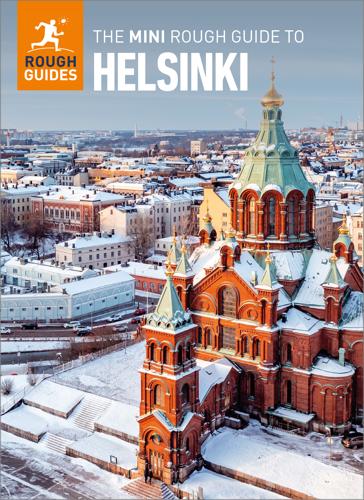
The Mini Rough Guide to Helsinki
by
Rough Guides
Published 9 Nov 2023
Post-war years Finland evolves from an agrarian country to an industrial one. 1952 Helsinki hosts the XV Olympic Games, postponed from 1940 by WWII. 1955 Finland becomes a member of the United Nations. 1970s onwards Alvar Aalto initiates a modern style of architecture. 1 January 1995 Finland joins the European Union. 2002 The euro replaces the Finnish mark. 2015 The city celebrates the 150th anniversary of Sibelius’s birth. 6 December 2017 Finland celebrates one hundred years of independence. 2020 The Covid-19 pandemic causes travel bans and a two-month long lockdown in Finland. 2021 The new Covid-19 vaccine sees widespread uptake in Finland, with the highest number of vaccinated people recorded in Helsinki and Uusimaa. 2023 Finland joins NATO after the Russian invasion of Ukraine. Out and About Helsinki is on an oddly shaped peninsula, nibbled at by the Gulf of Finland, which convolutes itself into numerous inlets, bays and harbours around the edges of the city.

The Mini Rough Guide to Lisbon (Travel Guide eBook)
by
Rough Guides
Published 5 Apr 2023
Recent years have seen the gradual elimination of austerity measures by the socialist-led government, currently headed by António Costa, and a steady economic revival as well as a decrease in unemployment. Bigstock Lisbon of the future at Belem’s Maat Like countries the world over, Portugal suffered economically during the Covid-19 pandemic, but its economy has recovered better than other European countries, largely thanks to a resurgent tourism industry. Historical landmarks c.1200BC Phoenicians establish Alis Ubbo or Olisipo trading post. c.700BC Celtic tribes arrive. 205BC Romans create Lusitania; Olisipo is made a municipality. 5th century AD After the decline of Rome, Visigoths settle in Lisbon. 711 Moors arrive on the peninsula and swiftly conquer it. 883 Northern Portugal (Portucale) regained by Christian forces. 1139 Dom Afonso Henríques declares himself first king of Portugal. 1255 Capital of Portugal transferred from Coimbra to Lisbon. 1386 Treaty of Windsor confirms England–Portugal alliance. 1415 Explorers reach Madeira, starting the Age of Discoveries. 1498 Vasco da Gama opens a sea route to India. 1500 Pedro Álvares Cabral reaches Brazil. 1580 Portugal falls under Spanish rule for 60 years. 1755 The Great Earthquake devastates Lisbon. 1807 Napoleonic troops invade Portugal during the Peninsular War. 1828–34 Civil war between Pedro IV and Miguel I. 1908 Carlos I and Prince Luís Felipe assassinated. 1916 Germany declares war on Portugal. 1932 António de Oliveira Salazar becomes prime minister. 1974 The Carnation Revolution restores democracy; Portugal pulls out of African colonies and a million expatriates return. 1986 Portugal joins the European Union. 2001 The euro replaces the escudo as the national currency. 2011 Portuguese negotiate an economic bailout from the EU, harsh austerity measures are introduced. 2014 End of the EU/IMF bailout programme, beginning of the economic recovery. 2016 Social democrat Marcelo Rebelo de Sousa becomes president. 2017 Wildfires ravage vast swathes of Portugal killing over 100 people. 2020 The first case of Covid-19 is recorded in March. 2022 Portugal’s Cristiano Ronaldo became the only male footballer ever to score a goal in five separate World Cup competitions.
…
c.700BC Celtic tribes arrive. 205BC Romans create Lusitania; Olisipo is made a municipality. 5th century AD After the decline of Rome, Visigoths settle in Lisbon. 711 Moors arrive on the peninsula and swiftly conquer it. 883 Northern Portugal (Portucale) regained by Christian forces. 1139 Dom Afonso Henríques declares himself first king of Portugal. 1255 Capital of Portugal transferred from Coimbra to Lisbon. 1386 Treaty of Windsor confirms England–Portugal alliance. 1415 Explorers reach Madeira, starting the Age of Discoveries. 1498 Vasco da Gama opens a sea route to India. 1500 Pedro Álvares Cabral reaches Brazil. 1580 Portugal falls under Spanish rule for 60 years. 1755 The Great Earthquake devastates Lisbon. 1807 Napoleonic troops invade Portugal during the Peninsular War. 1828–34 Civil war between Pedro IV and Miguel I. 1908 Carlos I and Prince Luís Felipe assassinated. 1916 Germany declares war on Portugal. 1932 António de Oliveira Salazar becomes prime minister. 1974 The Carnation Revolution restores democracy; Portugal pulls out of African colonies and a million expatriates return. 1986 Portugal joins the European Union. 2001 The euro replaces the escudo as the national currency. 2011 Portuguese negotiate an economic bailout from the EU, harsh austerity measures are introduced. 2014 End of the EU/IMF bailout programme, beginning of the economic recovery. 2016 Social democrat Marcelo Rebelo de Sousa becomes president. 2017 Wildfires ravage vast swathes of Portugal killing over 100 people. 2020 The first case of Covid-19 is recorded in March. 2022 Portugal’s Cristiano Ronaldo became the only male footballer ever to score a goal in five separate World Cup competitions. OUT AND ABOUT Lisbon’s waterfront is an arc stretching nearly 32km (20 miles) along the River Tagus. At the western end is Belém and at the eastern extreme is the Parque das Nações, the site of Expo 98.

Poland - Culture Smart!
by
Allen, Gregory;Lipska, Magdalena;Culture Smart!;
Published 15 Jun 2023
Sunday Observance A foreigner in his first year living in Poland was quite surprised at being told off by the elderly lady in the apartment next door for using his washing machine on a Sunday. Years later, in a detached house and now safe to use the washing machine whenever he fancied, he was told off by the next-door neighbor—a computer specialist in his twenties—for mowing the lawn on a Sunday! In 2020–21, in the middle of the Covid-19 pandemic, mass “Women’s Strike” protests took place in Poland after the ruling PiS Party tightened the law on abortion, making almost all cases of abortion illegal. Despite the fact that the majority of Poles opposed the changes, the Roman Catholic Church praised the new legislation, resulting in a backlash against its political interference.
…
In recent years, however, chain stores and small supermarket outlets have been taking over, with many small corner shops no longer able to compete. Recently there has been a huge growth of discount supermarkets offering cheaper products and own brands, which have overtaken many large supermarket chains in popularity. Fresh fruit and vegetable market in the district of Kazimierz, Kraków. ONLINE SHOPPING The Covid-19 pandemic added to the already impressive growth in online shopping in Poland. Practically every kind of shop, from supermarket chains to small specialty boutiques, now have an online presence. Allegro is Poland’s eBay equivalent, and Amazon has recently set up shop in the country. Foodies can now even have boxes of fresh fruit and vegetables delivered to their homes on a subscription basis.

Lisbon Like a Local
by
DK
It’s housed in an old strip club, but you wouldn’t know to look at it: the dark and dim confines have been transformed into a vibrant space, with colourful murals, bright yellow and blue furniture, and tropical cocktails (mezcal and sugar cane rum are key players on the menu). » Don’t leave without checking out Red Frog, the duo’s award-winning speakeasy, which – thanks to COVID-19 closing its premises – now occupies a small space within its more flamboyant sister bar. g Cocktail Joints g Contents Google Map ULYSSES Map 1; Rua da Regueira 16A, Alfama; ///mouse.briefer.musical; www.ulysses-lisbon-speakeasy.business.site With its labyrinthine streets and lack of signage, Alfama is the perfect place for a speakeasy.
…
Before you travel – and while you’re here – it’s worth brushing up on the latest regulations and security measures. www.apav.pt Charity offering help and advice for victims of any type of crime in Portugal, including how to report an incident and access health care. www.portugalcleanandsafe.com Up-to-date information on COVID-19 regulations and pandemic-safe travel. www.safecommunitiesportugal.com English-language resource offering extensive information on keeping safe and reporting crimes in Lisbon and further afield. www.visitlisboa.com Inspirational and practical information, and advice on all things Lisbon from the city’s official tourism board.

Copenhagen Like a Local
by
DK
Before you travel – and while you’re here – always keep tabs on the latest regulations in Denmark. en.coronasmitte.dk The official Danish government website is the first port of call for all COVID-19 rules and regulations. www.politi.dk/en Denmark’s police website, including news on major police incidents and information on how to report various crimes. www.um.dk/en Latest travel safety information, and up-to-date COVID-19 news and advice, from Denmark’s Ministry of Foreign Affairs. www.visitcopenhagen.com Inspirational and practical information from the city’s official tourism board. ACCESSIBILITY Copenhagen is ranked as one of Europe’s most accessible cities for anyone with mobility concerns.

The Mini Rough Guide to Budapest (Travel Guide eBook)
by
Rough Guides
Published 1 Oct 2023
Important Dates 1st century AD Roman legions advance to the Danube. 890 The Magyars arrive in the area. 1000 Coronation of King (later St) Stephen. 1222 Proclamation of the Golden Bull, Hungary’s Magna Carta. 1241–2 Mongol invasion destroys villages; famine and epidemics rife. 1301 Foundation of the Angevin dynasty by Károly Róbert. 1456 Hunyadi’s victory over the Ottomans at battle of Nándorfehérvár. 1458–90 Rule of Mátyás Corvinus Hunyadi. 1526 Battle of Móhacs divides Hungary and ushers in Ottoman rule. 1686–7 Liberation of Budapest by the Holy Alliance. 1703–11 Unsuccessful independence struggle, led by Ferenc Rákóczi. 1848–9 Rebellion of intellectuals, led by Sándór Petőfi. 1867 Foundation of the Austro-Hungarian Empire. 1873 Budapest formed from Buda, Pest and Óbuda. 1896 Celebration of 1,000 years since the Magyars settled in Hungary. 1944 Hungary falls to German forces. 1945 Soviet Army defeats Germans; repressive Soviet rule ensues. 1956 The Hungarian revolution is brutally crushed by the Soviet Union. 1958 Imre Nagy, prime minister during the 1956 revolt, is executed. 1988–9 The Communist Party responds to public dissatisfaction as Soviet leader Gorbachev promises no more interference in Hungarian affairs. 1989 Republic of Hungary proclaimed. 1990 Free elections return the Conservative Democratic Forum. 2004 Hungary joins the EU. 2006 Riots follow Prime Minister Gyurcsany’s admission of lying. 2008 Financial crisis forces Hungary to agree 220 billion loan with IMF. 2010 Economic woes bring electoral disaster for the Socialist Party. 2014 Ruling party Fidesz, led by Viktor Orbán, wins parliamentary elections. 2016 The majority reject the EU’s migrant quota in the referendum. 2020 On 4 March, the first cases of COVID-19 are announced in Hungary; by 18 May, the virus had spread to every part of the country. 2022 In March, Katalin Novák is elected as the first female President of Hungary. OUT AND ABOUT Getting around Budapest is relatively easy, as the majority of sights are clustered in the central areas.
…
The name Király, which means king, was the family name of the early nineteenth-century owners of the baths. Originally established by the Turkish Pasha of Budapest in 1565, the authentic Ottoman section has survived, complete with a large, octagonal pool beneath a dome. Sadly, the baths closed during the Covid-19 pandemic and have yet to reopen. Turn left off Frankel Leó út (the continuation of Fõ utca) at Margit híd (Margaret Bridge) and follow signs up the steps to Mecset utca and the Tomb of Gül Baba (Gül Baba türbéje) – another memento of Turkish times. Gül Baba was a whirling dervish, killed during the siege of Buda in 1541.
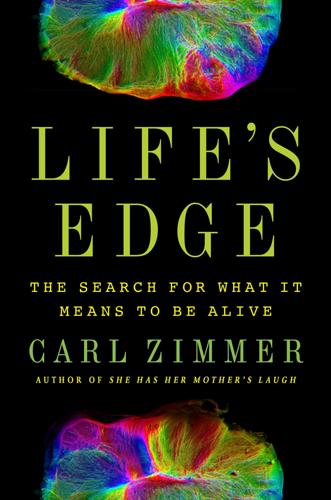
Life's Edge: The Search for What It Means to Be Alive
by
Carl Zimmer
Published 9 Mar 2021
People went about their lives unaware of the multiplying viruses inside them or the clouds of infection they exhaled. They lingered over lunch at restaurants, they worked at call centers, they leaned on the railings of cruise ships plowing the Pacific. After infecting people around them, some of the virus’s hosts finally developed symptoms. Others never did. The unwittingly infected exported Covid-19 out of Wuhan. Some traveled across China to celebrate the Lunar New Year with their families. Planes delivered infected passengers to Europe, and from there to other continents. The virus mutated as it multiplied, and new lineages emerged, marked by different gene signatures. Scientists reconstructed their journeys from their mutations as they moved between countries and among cities.
…
The two scientists carried out a series of important new studies on lipids. They invented a syringe that could produce an abundance of liposomes of uniform size. Advances like these would turn liposomes into a medical tool. Drugmakers would later insert their compounds in liposomes to deliver them inside cells. When Covid-19 struck, vaccine makers slipped viral genes into liposomes, which could sneak them into our cells. One day in 1975, Bangham and Deamer took a drive to London. When they stopped by the side of the road for lunch, Deamer mentioned hearing that Bangham had ideas about how life began. He was curious to hear what they were.
…
“The system must be able to replicate”: Quoted in Crick 1982. “We’re talking about the search for life”: Quoted in Zimmer 2007. “Life is a self-sustained chemical system”: Quoted in Joyce 1994, p. xi. Part Four: Return to the Borderland Half Life “Mr. Burke”: Quoted in Campos 2015, p. 77. anthropause: Rutz et al. 2020. This page For Covid-19, see Mortensen 2020 and Zimmer 2021. couldn’t find bacteria or fungi: Bos 1999; López-García and Moreira 2012. “When one is asked”: Quoted in Pirie 1937. crucial features: Pierpont 1999. “According to the working definition”: Quoted in Mullen 2013. “Whereas the dream of a normal cell”: Quoted in Forterre 2016, p. 104.
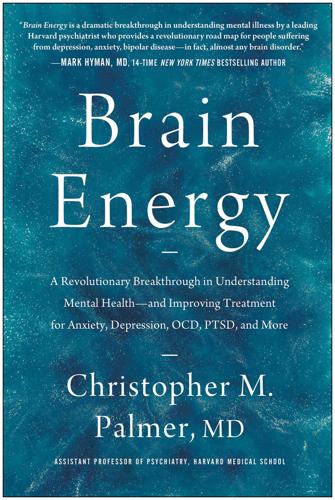
Brain Energy: A Revolutionary Breakthrough in Understanding Mental Health--And Improving Treatment for Anxiety, Depression, OCD, PTSD, and More
by
Christopher M. Palmer Md
Published 15 Nov 2022
If the culprit is the stress of our fast-paced modern society, why are all of the disorders increasing? Wouldn’t more stress simply lead to more depression and anxiety? Certainly, stress doesn’t cause autism and bipolar disorder. Or does it? These statistics raise more questions than they answer. To add insult to injury, the COVID-19 pandemic has taken an additional toll. In June 2020, an estimated 40 percent of all US adults reported struggling with mental health or substance use issues. Eleven percent of the adults surveyed said they had considered suicide in the past thirty days.10 The Price We Pay Mental disorders are costly to society.
…
Within one month, things began to improve. His tantrums at school stopped. His depression and his focus improved. School was becoming more manageable for him. The following year, in eighth grade, Kaleb got his best grades ever—straight As. In 2020, two years after beginning these interventions, he started high school during the COVID-19 pandemic. Although many of his peers were struggling with depression, anxiety, and social isolation, he thrived. He got straight As again and was taken off his IEP after the first semester. The new school couldn’t believe this well-behaved, top student was on an IEP in the first place. Kaleb has been on this treatment plan for four years now and continues to thrive.
…
S. Parish. “The Increasing Frequency of Mania and Bipolar Disorder: Causes and Potential Negative Impacts.” J Nerv Ment Dis. 200(5) (2012): 380–387. doi: 10.1097/NMD.0b013e3182531f17. 10M. É. Czeisler, R. I. Lane, E. Petrosky, et al. “Mental Health, Substance Use, and Suicidal Ideation During the COVID-19 Pandemic—United States, June 24–30, 2020.” MMWR Morb Mortal Wkly Rep 69 (2020): 1049–1057. doi: 10.15585/mmwr.mm6932a1external icon. 11The Lancet Global Health. “Mental Health Matters.” Lancet Glob Health 8(11) (November 2020): e1352. 12 Global Burden of Disease Collaborative Network. “Global Burden of Disease Study 2015 (GBD 2015) Life Expectancy, All-Cause and Cause-Specific Mortality 1980–2015.”
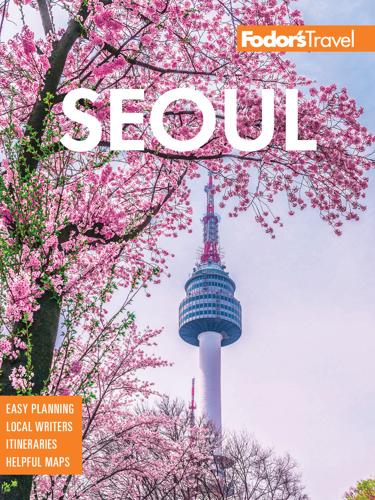
Fodor's Seoul
by
Fodor's Travel Guides
Published 29 Nov 2022
A philosophical system of thought and behavior based on morality, one of Confucianism’s main tenets is respect for others. This social structure has created a polite and orderly capital, where the norm is to wait patiently in line to enter a subway car, to give up your seat to an elderly person, to wear a mask if you’re sick (East Asia has been wearing masks in public long before COVID-19), and to be prepared in line at coffee shops in order not to keep the people behind you waiting unnecessarily—all in the name of etiquette and consideration for others. WHEN IN DOUBT, DIAL 1330 While many people speak English in Seoul and subway signs are written in both Korean and English, you may still need help navigating.
…
DINING PRICE RANGES Restaurant prices are the average cost of a main course at dinner or, if dinner is not served, at lunch. x Embassies and Consulates The U.S. Embassy is located in Jongno-gu Seoul, and there’s also a U.S. Consulate in Busan. The British and Canadian embassies are located in Jung-gu, and Seoul also has various other European embassies, including British, French, and German. z Health and Safety COVID-19 has disrupted travel since March 2020, and travelers should expect sporadic ongoing issues in South Korea. Always travel with a mask in case it’s required, and keep up to date on the most recent testing and vaccination guidelines for Seoul. Seoul is extremely safe, especially considering half the population of South Korea lives within the Seoul Capital Area.
…
In fact, theft is still so rare that many Koreans regularly leave their bikes unlocked, or their phone or laptop on the table at busy cafes when they get up for a refill. The best rule of thumb is to use common sense as you would in any destination. w Immunizations All visitors to Seoul must have a valid proof of COVID-19 vaccination and/or a booster; while the need and frequency of boosters is still being discussed in the medical community, it’s important to verify the most recent requirements with your physician before you travel. h Lodging In a city as sprawling as Seoul it’s not surprising that there are hundreds of hotels to choose from in all corners of the city.
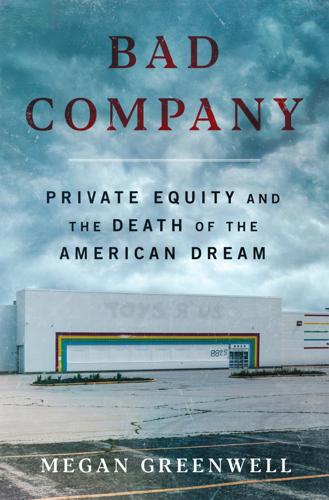
Bad Company
by
Megan Greenwell
Published 18 Apr 2025
Census Bureau QuickFacts: Riverton City, Wyoming,” U.S. Census Bureau, accessed February 12, 2024, https://www.census.gov/quickfacts/fact/table/rivertoncitywyoming/PST045223. That meant LifePoint: Ayla Ellison, “LifePoint Received $1.5B in COVID-19 Relief Aid,” Becker’s Hospital Review, September 14, 2020, https://www.beckershospitalreview.com/finance/lifepoint-received-1-5b-in-covid-19-relief-aid.html. It was the largest: “Riverton Medical District Takes Major Step Toward New Hospital,” Riverton Medical District, archived April 6, 2023, https://web.archive.org/web/20230406031459/https://rivertonmedicaldistrict.com/wp-content/uploads/2022/04/USDAapproval.pdf.
…
As a result of all these closed hospitals, the report found, Medicare recipients in affected areas had higher rates of every one of the ten most common chronic conditions—including hypertension, diabetes, depression, and rheumatoid arthritis—compared to Medicare patients whose rural communities still had hospitals. Emergency funding during the Covid-19 pandemic improved the financial health of rural hospitals, but only temporarily: after the extra income from emergency funding programs dried up, many were left facing labor shortages and supply-chain problems that increased prices. The ability to stave off closure at a time of mass rural hospital die-off has been the chief value proposition of private equity firms in the health care industry.
…
Harlequin Enterprises ULC www.harlequin.com Bay Adelaide Centre, East Tower 22 Adelaide Street West, 41st Floor Toronto, Ontario, M5H 4E3 www.harpercollins.ca India HarperCollins India A 75, Sector 57 Noida Uttar Pradesh 201 301 www.harpercollins.co.in Ireland HarperCollins Publishers Macken House, 39/40 Mayor Street Upper, Dublin 1, D01 C9W8, Ireland www.harpercollins.co.uk New Zealand HarperCollins Publishers New Zealand Unit D1, 63 Apollo Drive Rosedale 0632 Auckland, New Zealand www.harpercollins.co.nz United Kingdom HarperCollins Publishers Ltd. 1 London Bridge Street London SE1 9GF, UK www.harpercollins.co.uk United States HarperCollins Publishers Inc. 195 Broadway New York, NY 10007 www.harpercollins.com * Annmarie Reinhart Smith died in 2021, at age sixty-one, of Covid-19. In an obituary, the New York Times cited her as a key voice in the fight against KKR, Bain Capital, and Vornado. * Disclaimer: I have worked as a consultant for the American Journalism Project on a handful of projects related to editorial strategy, newsroom management issues, and hiring.
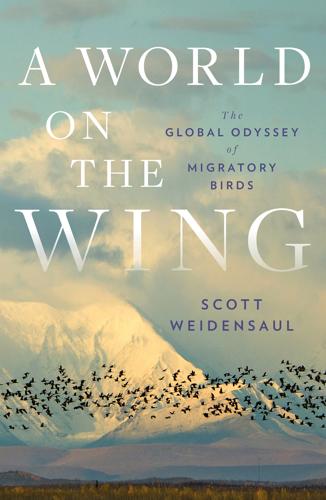
A World on the Wing: The Global Odyssey of Migratory Birds
by
Scott Weidensaul
Published 29 Mar 2021
Not a rat or a sign of a rat was found, and conservationists were delightfully shocked by how quickly the island’s imperiled birds responded to the release from predatory pressure. After years of preparation, and some delays caused by its incredibly remote location, a similar eradication campaign was poised to begin on Gough Island in February 2020 when the coronavirus pandemic struck. The team of 12 Royal Society for the Protection of Birds conservationists had to be evacuated, and the eradication program was delayed by at least a year. Assuming its success, however, the same folks will then shift their attention to Marion Island, home of the bird-scalping mice.

Fodor's Essential Belgium
by
Fodor's Travel Guides
Published 23 Aug 2022
Or for a more unusual underground adventure, head to a sewer tour of the historic subterranean canals of Antwerp, known as De Ruien. The smell is something else entirely, but kids will love dressing up in the overalls and stomping around this hidden world. Know Before You Go GET YOUR COVID-19 PAPERWORK SORTED For as long as COVID-19 is with us, all travelers to Belgium, even if entering overland from a neighboring country, need to complete a Passenger Locator Form (PLF) online (travel.info-coronavirus.be) , no more than 48 hours before arriving, providing a local address and other information; you’ll be sent a QR code to present at passport control.
…
Cafés and snack bars are sometimes open in the morning and serve coffee, tea, juice, and rolls, but don’t serve a full American-style breakfast. SMOKING Smoking is banned in all restaurants and bars. z Health and Safety Belgium is relatively disease-free and you are unlikely to encounter problems. If you do, the Belgian health service is regarded by many as the best in the world, so you’ll be in safe hands. Nevertheless, COVID-19 has disrupted travel since March 2020, and travelers should expect sporadic ongoing issues. Always travel with a mask in case it’s required, and keep up-to-date on the most recent testing and vaccination guidelines for Belgium. Pharmacies (pharmacie in French, apotheek in Flemish) are clearly identified by a green cross displayed over the storefront.
…
Women traveling alone should nonetheless avoid lingering around neighborhoods near train stations, as these neighborhoods are traditionally where prostitutes operate. If you carry a purse, choose one with a zipper and a thick strap that you can drape across your body; adjust the length so that the purse sits in front of you at or above hip level. w Immunizations All visitors to Belgium arriving by air must have a valid proof of COVID-19 vaccination and/or a booster, or proof of recent recovery from the disease; while the need and frequency of boosters is still being discussed in the medical community, it’s important to verify the most recent requirements with your physician before you travel. h Lodging Belgium offers a range of options, from the major international hotel chains and small, modern local hotels to family-run restored inns and historic houses.
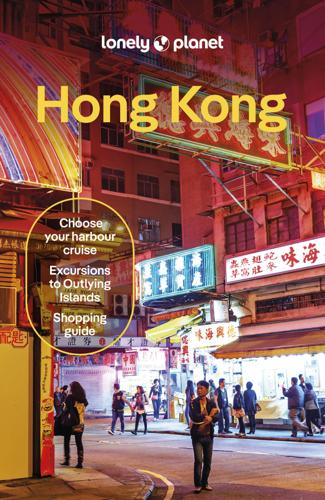
Lonely Planet Hong Kong
by
Lonely Planet
It’s not accessible by public transport so you’ll need to walk from Repulse Bay. The north part is where most of the action is, including nude bathing. Tama2u/Shutterstock © EVENTS & FESTIVALS At time of writing in 2024, the Hong Kong Pride Parade (hkpride.net), previously an annual event in November, hadn’t taken place since 2018, due to COVID-19 and concerns related to the security law – calls for greater democracy have been a feature of previous parades. The annual Hong Kong Lesbian & Gay Film Festival (hklgff.hk) is the longest-running LGBTIQ+ film festival in Asia. Asia’s First Gay Games The 11th Gay Games (gaygames.org) took place in Hong Kong in 2023, featuring nearly 2400 athletes competing from 30 countries.
…
Three days later, police fired rubber bullets and tear gas in the city’s most violent protests in decades. Months of street battles reached a grim crescendo in November during a prolonged stand-off at Hong Kong Polytechnic University between the police and over 1000 activists barricaded inside. 15. Hong Kong Museum of History CONTROLLING THE NARRATIVE With the protests quashed by COVID-19, China enacted new national security legislation on Hong Kong. In June 2020, pro-democracy slogans, flags and stickers were outlawed and unlicensed protests criminalised. Seemingly overnight, pro-democracy groups disbanded, many Hong Kongers shutting down social media accounts or deleting posts in an attempt to avoid prosecution.
…
By Mark Jones AFTER A SPELL AWAY, I recently returned to Hong Kong after four years. In the interim, the city had seen mass peaceful demonstrations that successfully changed an unpopular law. They were followed by smaller and more violent protests that led not only to that law being imposed, but a far more draconian one, the National Security Law being implemented. Oh, and COVID-19 happened. First lockdown, then crackdown. What did I make of the city? I searched for a word and found one I didn’t think anyone would ever use about this most energetic and energising of places. Hong Kong was subdued. The weat her had that early summer, pre-typhoon oppressiveness. But it takes more than clouds to subdue Hong Kongers.

A Map of Future Ruins: On Borders and Belonging
by
Lauren Markham
Published 13 Feb 2024
The flames made easy work of the plastic tarps, wooden lean-tos, and heaps of blankets and clothes, exposing the frames of the tents and structures—just bright, naked skeletons now, skinless and incandescent. The olive trees, too, caught fire, lifting the blaze higher into the smoke-choked sky. As the fire sizzled and seethed with no sign of slowing, the people of Moria camp hurried to evacuate. The week before, the camp registered its first case of COVID-19, leading authorities to impose a camp-wide quarantine. As the flames tore through the camp, those who were locked up and slated for deportation had to break through the walls of their confinements to escape. People grabbed what they could—their phones, their chargers, their documents, their children—bundled their belongings into unwieldy piles, pulled masks or scarves over their faces, and ran.
…
Then, at the beginning of March, in response to Türkiye’s halted patrols, Greece announced that it was suspending asylum applications—in spite of the fact that this was against Greek and EU law. A group of far-right thugs began attacking aid workers, including a cadre of foreign doctors, beating people up and smashing their cars. The medical workers fled to the airport. “We left fearing for our lives,” one doctor told The Guardian. On March 23, the Greek government issued COVID-19 restrictions that closed Moria to the outside world for the rest of the spring and summer. No one was allowed to leave without special permission. Ali had effectively become an inmate now. He hunkered in the sweltering camp, his tent like a tandoor beneath the sun. The sea was right there, in walking distance; when there was a little wind, you could even smell the salt.
…
Thai authorities have dragged rickety crafts packed with asylum seekers out to sea, sometimes to their deaths. In 2021, Polish militias beat refugees back across the border to Belarus, where families froze to death in the forest as they tried to cross into Europe. And at its southern border, the US government used COVID-19 threats and an obscure part of a public health law called Title 42 to return asylum seekers to Mexico. While I was reporting in Greece, a photo of a US Border Patrol agent on horseback chasing down Haitian asylum seekers in Texas ricocheted across the internet. People were, rightfully, outraged.
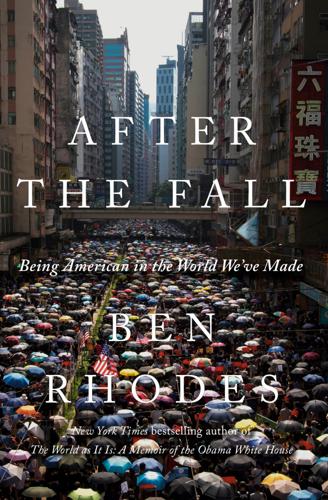
After the Fall: Being American in the World We've Made
by
Ben Rhodes
Published 1 Jun 2021
“Syria,” he said, referring to Putin’s intervention on behalf of Assad, which has been viewed as a strategic masterstroke by many Western analysts, “it doesn’t work at all. They wanted to repeat this trick from Crimea and the Ukraine War. But people are so annoyed. Syria?” he repeated, as if the absurdity was self-evident. “Why should we fight with these kinds of guys? We’re restoring Aleppo. Repair some roads here!” COVID-19 underscored this danger for Putin. As Navalny and I spoke, Russia’s economy was spiraling into a deeper hole, even as Putin was ramming through “constitutional reforms” to allow himself to stay in power well into the 2030s. The pandemic itself was mismanaged, alternatively denied and attacked, responsibility delegated down to lower-level officials who were never empowered to do their jobs.
…
But in recent years, the balance has also shifted. It is now America that is becoming more like China—a place of growing economic inequality, grievance-based nationalism, vast data collection, and creeping authoritarianism. The shifting position of our two nations has been on stark display through the ordeal of COVID-19, which spread from the Chinese city of Wuhan in part because the first instinct of a controlling Chinese government was to suppress the news about its lethality and risk of contagion. When COVID did inevitably spread, China was able to move its massive ship of state quickly to lock down whole cities and control the virus, while an America governed by a disinterested authoritarian regime proved incapable of any collective action.
…
Part IV WHO WE ARE: BEING AMERICAN American history is longer, larger, more various, more beautiful, and more terrible than anything anyone has ever said about it. —James Baldwin 21 Who We Are In late February 2020, I sat in Barack Obama’s Washington office talking about what had gone so wrong in global politics. COVID-19 was gathering force but had not yet descended upon us like a hurricane. Lockdowns were weeks away. The economic, climate, and racial crises were still hidden underneath the surface brush of American life. The Trump impeachment had predictably passed as inconsequentially as a cable news segment. Obama was grinding away to finish his memoir, having methodically missed self-imposed deadlines.

Pegasus: How a Spy in Your Pocket Threatens the End of Privacy, Dignity, and Democracy
by
Laurent Richard
and
Sandrine Rigaud
Published 17 Jan 2023
This investigation, if we decided to undertake it, would have to contend with swords and shields wielded by a dozen or more very defensive state actors and by a billion-dollar private technology corporation operating under the protection of its own very powerful national government. The taxi ride was the last leg of a trip that seemed to portend a rise of obstacles. The limitations put in place during the latest wave of Covid-19 had laid waste to familiar routines. The simple two-hour trip from Paris to Berlin had taken triple that, and included a connection through the food desert of an airport in Frankfurt, and the indignity of German soldiers shoving cotton swabs up our nasal cavities before we were allowed to exit the airport in Berlin.
…
He had dispatched his chief archivist to dig up all of Regina’s stories from Proceso in the years before her death, and he asked us to loop another of his reporters into the top-secret Signal group used by key members of the Cartel Project. But the last Sandrine had heard from Jorge on the Signal app, not long before our trip to Berlin, he had sounded a little shaky—lamenting the ongoing damage done by Covid-19 to his magazine’s already slim and always wobbly profit margin. “I’m okay but worried,” he wrote. “Sales of Proceso are really falling.” * * * I WAS KEYED up when the buzzer to our East Berlin flat rang the next morning. We hadn’t yet mastered the electronic entry system to our short-term rental, so I raced down the stairs and opened the front door for our two guests.
…
The Post would be the fourth and final member of the first circle of the investigation, the crucial US partner. As we peered out the car window on the ride into town from the airport, it was hard to feel hopeful. The US capital city was a bleak and embattled landscape at that point, reeling from the four-year reign of Donald Trump, and braced for its last ugly spasms. The daily Covid-19 death toll in the country had passed three thousand and was still rising. The reflecting pool had been ringed with four hundred lanterns, each representing a thousand US citizens already lost. The medical trauma was like the handmaiden of the political. The Trump-led effort to overturn the election had been punctuated, less than two weeks before our arrival, by a deadly riot at the seat of national government.
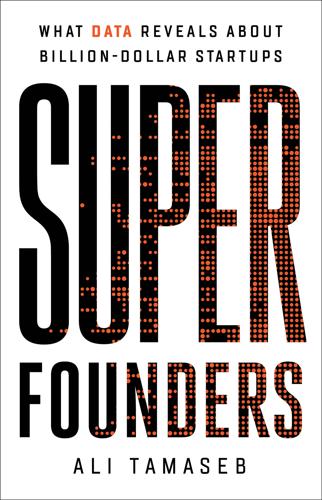
Super Founders: What Data Reveals About Billion-Dollar Startups
by
Ali Tamaseb
Published 14 Sep 2021
This happens even more frequently in the biotech space. Flagship Pioneering, a Boston-based venture-creation firm, has launched multiple large startups this way, including Moderna Therapeutics, which develops mRNA drugs and vaccines, and was one of the first companies to successfully develop a vaccine for COVID-19. Other ideas have sprung out of academic institutions. Google’s founders developed the PageRank algorithm while at Stanford and hosted Google on Stanford’s domain, as google.stanford.edu, until google.com was registered in 1997. Genentech, the biotechnology corporation, got its start from academic intellectual property.
…
And it’s no doubt that Silicon Valley startups had easier access to large pools of venture capital and a dense pool of talent, further contributing to their success. Until very recently, many venture capitalists were only investing in locations to which they could drive to attend a board meeting. Things have certainly changed since then. During the COVID-19-related pandemic in 2020, many venture capital firms made investments in startups, early stage or late stage, without having ever met the founders in person. This was a first for an industry that has put so much emphasis on a company’s location and on meeting entrepreneurs in person, and it was a turning point for the importance of geography in the success of startups.
…
Soon after, the financial crisis hit, and when Facebook attempted to raise its series D round, it got valued by most investors at $6 to $8 billion, half that of its previous round. (Eventually Facebook raised its series D round at a $10 billion valuation from DST Global, a Russian investment group.) Similarly, Airbnb raised $1 billion of new investment in April 2020, right after the COVID-19 pandemic, at $26 billion down round valuation. Only seven months later, the company did an IPO and was valued at over $100 billion. One reason why funding follows the markets is that venture capitalists themselves rely on funding from limited partners, the entities that invest in VC firms. LPs need to keep their portfolios balanced between public market securities, like hedge funds, and private markets, like venture capital.
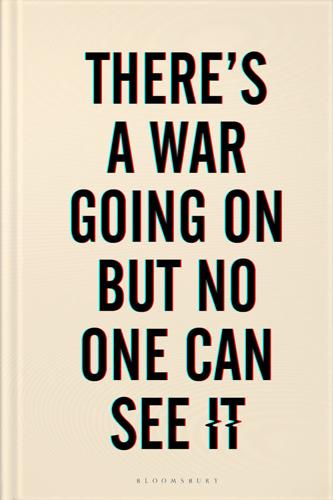
There's a War Going on but No One Can See It
by
Huib Modderkolk
Published 1 Sep 2021
On the one hand, there’s the alarm about proliferating cyberattacks. Gone are the days when state actors used the internet only to spy. The internet has been weaponised. Now, it’s being wielded to influence public sentiment in other countries, to spread conspiracy theories about the origins of the Covid-19 virus, to take out power grids or damage equipment in foreign nuclear plants. On the other hand, Western countries bear just as much of the blame and are likewise exploiting the potential. In 2018, as Yahoo News later revealed, US President Donald Trump secretly authorised the CIA to carry out covert cyber operations that ‘gave the agency very specific authorities to really take the fight offensively to a handful of adversarial countries’, including China, Russia, North Korea and Iran.
…
If Russia has its own internet, it will be shielded from that kind of attack. But there’s not always a clear line between espionage and sabotage or subversion, just as it’s not always clear when striking back is justified. In the autumn of 2020, while the European Medicines Agency (EMA) was working on the approval of the Pfizer/BioNTech and Moderna Covid-19 vaccines, Russian hackers moved to infiltrate the EMA network. Employees received cleverly composed emails appearing to be from colleagues; if they clicked on the enclosed link or attachment, it deposited an implant that let the hackers read all their messages. The hackers, who were part of Cozy Bear and probably also behind the SolarWinds affair, eventually saw a ZIP file go by containing a ‘new user token’.
…
Index Abdeslam, Salah, here ABN Amro, here, here, here Aboutaleb, Ahmed, here advanced persistent threats (APTs), here, here Afghanistan, here, here, here, here AIVD, here, here, here, here, here, here, here, here, here, here, here, here, here, here, here, here agency culture, here and author’s sources, here, here bugging of Iranian ambassador, here and DigiNotar, here, here digital capabilities, here, here, here, here and Gemalto, here and Huawei, here and Iran nuclear plant, here, here Joint Sigint Cyber Unit, here, here, here and Kaspersky Labs, here, here, here number of employees, here relations with Americans, here, here, here, here and Ronald Prins, here and Russian cyber espionage, here, here, here, here, here, here, here AJA (Iranian army), here Akerboom, Erik, here, here, here, here, here Alexander, Keith, here, here Alfa Group, here Al-Qaeda, here al-Shabaab, here, here Amdocs, here Amsterdam Internet Exchange (AMS-IX), here, here, here, here Android OS, here Anonymous (hacker group), here Apeldoorn hospital attack, here APM Terminals, here, here Appen, here, here, here Arab Spring, here Armada Sweep, here ASML, here, here Assange, Julian, here, here backdoors, here, here Bais, Erik, here, here bakabt.com, here Belgacom, here, here, here, here, here, here Belgian Ministry of Foreign Affairs, here Bellens, Didier, here Bertholee, Rob, here, here, here, here, here Biden, Joe, here Biesbrouck, Ralph, here Bijleveld, Ank, here bin Laden, Osama, here Bindt, Pieter, here, here, here Bits of Freedom, here BlackBerry messages, here, here Blok, Eelco, here Bloomberg, here, here, here BND, here Bogachev, Evgeniy (‘Umbro’), here, here, here Boon, Floor, here Bosch van Rosenthal, Eelco, here, here, here, here, here, here Bouman, Gerard, here Boxer armoured fighting vehicles, here Bromet, Frans, here, here Brussels bombings, here, here Bryan, Inge, here Bureau of Investigative Journalism, here Bush, George W., here, here ‘Business Club’, here BVD, here CareerBuilder.com, here Catal separatist movement, here Cellebrite, here certificate authorities (CAs), here Chaos Computer Club, here Chernobyl site, here, here child pornography, here, here Chinese cyber espionage, here, here, here, here, here, here, here Chinese Unit 61398, here, here CIA, here, here, here, here, here, here, here, here, here, here, here, here, here, here and Kaspersky Labs, here, here, here, here Cisco, here, here, here Clapper, James, here Clearview AI, here Clinton, Bill, here, here Clinton, Hillary, here, here, here CNN, here, here, here, here, here Combasca, here, here, here Common, here computer network exploitation (CNE), here, here Comverse, here Concord, here Cools, Ivo, here Covid-19 vaccines, here Cozy Bear, here, here, here, here, here, here, here, here, here, here, here Cyber Intelligence, here de Boer, Hans, here de Bos, Tony, here, here De Croo, Alexander, here De Groene Amsterdammer, here de Jong, Erik, here, here De Standaard, here De Telegraaf, here de Volkskrant, here, here, here, here, here, here, here, here, here de Vries, René, here deep packet inspection, here DEF CON, here Delft University of Technology, here Deloitte, here, here Denk party (Netherlands), here Der Spiegel, here, here, here Derix, Steven, here, here Di Rupio, Elio, here, here Die Hard, here, here DigiNotar, here, here, here, here, here, here, here, here, here, here digital certificates, here DIGIWS146 workstation, here, here distributed denial-of-service (DDoS) attacks, here, here, here Donner, Piet Hein, here, here, here Dorfman, Zach, here DPG Media, here Drake, Thomas, here drone strikes, and civilian casualties, here ‘Droppy’, here DuckDuckGo, here Durbin, Richard, here Dutch Bar Association, here Dutch Criminal Intelligence Unit (CIE), here Dutch Cyber Security Council, here, here Dutch elections, here Dutch House of Representatives, here, here, here, here Dutch Independent Post and Telecommunications Authority, here Dutch Investigatory Powers Commission (TIB), here Dutch Ministry of Foreign Affairs, here, here Dutch Ministry of General Affairs, viii, here Dutch National High Tech Crime Unit, here, here, here, here, here, here, here Dutch National Coordinator for Security and Counterterrorism (NCTV), here, here Dutch National Crime Squad, here Dutch National Crisis Centre, here, here Dutch National Cyber Security Centre (NCSC), here, here, here, here Dutch National Forensic Research Agency, here Dutch National Police Internal Investigation Department, here Dutch National Police Services Agency, here Dutch Safety Board, here Dutch surveillance law and referendum, here, here, here Dutch Tax and Customs Administration, here, here, here ‘Dwaan’, here, here, here Eastern Scheldt Storm Surge Barrier, here Ecatel, here, here Effting, Maud, here El Chapo (Joaquín Guzmán Loera), here Elbit Systems, here Elderenbosch, Onno, here encryption, here, here Ericsson, here EU Copyright Directive, here European Commission, here, here European Medicines Agency (EMA), here European Parliament, here, here, here European Space Agency, here Europol, here EvoSwitch, here Evraz, here exploits, here, here, here Fabrika Trollei, here facial recognition, here Fancy Bear, here, here, here, here, here FBI, here, here, here, here, here, here, here, here, here, here, here, here, here and Mexican drug cartel, here and Russian cyber espionage, here, here, here firewalls, here Five Eyes, here Fox-IT, here, here, here, here, here, here, here, here, here, here and Belgacom, here, here and DigiNotar, here, here, here, here Fridman, Mikhail, here FSB, here, here, here, here, here, here, here Gaddafi, Muammar, here, here Gallagher, Ryan, here, here, here Gamma Group, here Gemalto, here German CERT, here Glimmerglass, here Godane, Ahmed Abdi, here, here Google Maps, here, here GovCERT, here, here, here, here, here Government Communications Headquarters (GCHQ), here, here, here and Belgacom, here, here, here and Gemalto, here number of employees, here Grapperhaus, Ferdinand, here Greenberg, Andy, here Greenwald, Glenn, here, here, here Groenewegen, Frank, here, here GRU, here, here, here Gubarev, Aleksej, here, here, here Gurey, Nuur Osman, here hacking tools, online sales of, here Harvard Belfer Center, here Hayden, Michael, here Hennis, Jeanine, here, here, here, here Hentenaar, Joris, here Hermitage Museum, here Hijzen, Constant, here HNLMS Rotterdam, here Hoekstra, Pete, here HostExploit, here Howard, Philip, here HP Data Protector, here, here, here Huawei, here, here Hurricane Sandy, here iColumbo, here ICQ, here IMEI numbers, here in ’t Veld, Sophie, here ING, here Intellect Service, here Intercept, The, here, here, here Interfax press agency, here International Atomic Energy Agency (IAEA), here iPhones, here Iran, here, here, here, here, here, here, here, here, here, here, here, here, here, here, here, here, here, here Iranian Revolutionary Guard (IRG), here Islamic State, here, here Israel, here, here, here, here, here, here, here, here, here, here, here Jochem, Aart, here, here, here, here Joint Strige Fighter programme, here Juniper, here Kaspersky, Eugene, here Kapersky Labs, here, here, here, here, here, here KGB, here Khabarovsk conference, here Khan, Abdul Qadeer, here Kim Jong-un, here King Servers, here, here Klijnsma, Yonathan, here, here KPN, here, here, here, here, here, here, here, here, here, here, here Kreling, Tom, here, here, here, here, here, here Leaseweb, here, here, here, here, here, here Ledgett, Richard, here Lewinsky, Monica, here Lockheed Martin, here LulzSec, here McCord, Mary, here McFaul, Michael, here machine translation, here McLaughlin, Jenna, here Maersk, here, here Malaysian Airlines flight MH17, here, here, here, here Mali, here, here Mandiant, here, here, here Marriott hotels, here Mastercard, here Máxima, Queen, here M.E.Doc, here, here Meeus, Jan, here, here Merck, here Merkel, Angela, here MI5, here, here, here Mikhailov, Sergei, here, here, here Millennium bug, here MIND CTI, here MIVD, vii, here, here, here, here, here, here, here, here, here, here, here, here agency culture, here and Belgacom, here digital capabilities, here, here, here and Farsi translators, here Joint Sigint Cyber Unit, here, here relations with Americans, here, here, here, here and Russian cyber espionage, here, here Somali surveillance, here, here Mohammad Ali, Omar, here, here, here, here Mondelez, here Montenegro coup attempt, here Morozov, Evgeny, here Mossad, here, here, here, here, here MSD, here MV BBC China, here, here MyHeritage, here MySQL, here N., here, here, here Naomi, here NASA, here, here, here Natanz, here, here, here National Health Service (NHS), here, here National Security Agency (NSA), here, here, here, here, here, here, here, here, here, here, here and Belgacom, here, here, here and Farsi translators, here ‘fishing with dynamite’, here and Gemalto, here and ‘Greek Watergate’, here hardware modifications, here number of employees, here relations with Netherlands, here, here, here Snowden files, here, here, here, here, here, here, here and SolarWinds attack, here and Somalia surveillance, here, here Tailored Access Operations, here NATO, here, here, here NCC Group, here ndsmovies.com, here New York City truck attack, here New York Times, here, here, here NICE Systems, here Nijmegen Queen’s Day festival, here Nixon, Richard, here North Korea, here, here, here, here, here, here, here, here Northwave, here Norwegian University of Science and Technology (NTNU), here NotPetya virus, here, here, here Novaja Gazeta, here NRC Handelsblad, here, here, here, here, here, here, here, here, here NSO Group, here Obama, Barack, here, here, here, here Ocean’s Eleven, here, here OHM2013, here Operation Moonlight Maze, here Operation Olympic Games, here Opstelten, Ivo, here OPTA, here Organisation for the Prohibition of Chemical Weapons (OPCW), here Oxford Internet Institute, here P10 filtering system, here Paauw, Frank, here Pakistan, here, here, here, here, here Pals, Ludo, here Paris bombings, here Paulissen, Wilbert, here PayPal, here, here, here Penn, Sean, here Pentagon, here, here Pérez Dolset, Javier, here Perlroth, Nicole, here Petri, Hans, here ‘Phed’, here phishing emails, here Plasterk, Ronald, here, here, here, here, here Pluijmers, René, here Poitras, Laura, here Politico, here PornHub, here Poroshenko Petro, here Port of Rotterdam, here, here, here, here, here Premier League, here Preneel, Bart, here PricewaterhouseCoopers, here Prigozhin, Yevgeny, here, here Prins, Ronald, here, here, here, here, here, here, here, here, here privacy, here, here, here, here, here Project Victor, here Proximus, here Public Prosecution Service Rotterdam, here Putin, Vladimir, here, here, here, here, here, here Q-Park, here Raiu, Costin, here Rajoy, Mariano, here Regin virus, here, here, here, here Regional Internet Registry for Europe, here Remarque, Philippe, here Renault, here Replay, here Rheinmetall, here, here, here Rid, Thomas, here Robbe, Edwin, here, here Robbe, José, here, here, here, here Robbe, Ruud, here, here Robin, here, here, here Rosneft, here RSA Conference, here Russia Today, here Russian–Dutch relations, here Russian Internet Research Agency (IRA), here Russian Unit 74455, here, here, here Rutte, Mark, vii, here, here, here ‘Sabu’, here Salisbury poisonings, here satellite communications, here, here, here Saudi Arabia, here, here Schiphol Airport, here, here, here, here, here Schneier, Bruce, here Schook, Dick, here SCM, here September 11 attacks, here ShimRatReporter, here Shymkiv, Dmytro, here SIGINT, here SIGINT Development Conference, here, here Signal, here Sinaloa Cartel, here Singapore Press Holdings, here Skripal, Sergei, here Smith, Brad, here SNAP, here Snowden, Edward, here, here, here, here, here, here, here, here, here, here, here, here, here Sochi Winter Olympics, here, here SolarWinds, here, here Somalia, here Sony PlayStation network, here speech transcription software, here Spetsnaz, here SPÖ Social Democratic Party (Austria), here SSL certificates, here Standaert, Geert, here Starr, Barbara, here Startpage.com, here Stasi, here Steman, Jochem, here, here Stone, Chris, here Stoyanov, Ruslan, here STRAP system, here Stuxnet virus, here, here, here, here, here, here, here submarines, here surveillance software, Israeli, here SVR, here, here, here Symbolon project, here Tails OS, here, here Tamene, Yared, here telecommunications billing, here Thomas, Gordon, here Tiger telephones, here TNT Express, here Triton virus, here Trouw, here TrueCrypt, here Trump, Donald, here, here, here, here, here, here, here Turkey, here, here, here, here Turksema, Hans, here TV5 Monde, here Tweakers website, here U., Etienne, here UCN, here Uijlenbroek, Jaap, here UK Home Office, here UK National Crime Agency, here Ukraine, here, here, here, here, here, here, here, here, here, here and annexation of Crimea, here, here, here, here, here, here ultracentrifuges, here, here United Arab Emirates, here United Nations, here University of Tromsø, here University of Twente, here US Democratic Party, here, here, here, here, here, here US Department of Defense, here, here US Department of Homeland Security, here, here US Joint Chiefs of Staff, here, here US presidential elections, here, here, here, here, here, here US State Department, here, here Utrecht child support services, here V., Johan, here van Bergen, Jurre, here van de Beek, Martijn, here van der Heijden, A.
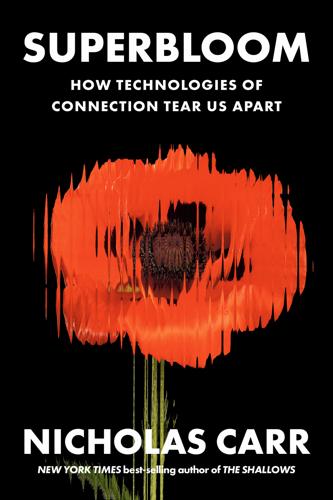
Superbloom: How Technologies of Connection Tear Us Apart
by
Nicholas Carr
Published 28 Jan 2025
See also relationships; social engagement consciousness, illusion of, 192 conspiracy theories, 16, 141, 200 consumer choice, expansion of, 61 contagion, 155–58, 176–79 content, of media, 50–51 advertisements and, 96 artificial intelligence and, 180–205 assessment of, 128 content collapse, 59–63, 91, 98–99, 118 controversies over, 69–74 distribution of, 128 filtering of, 128 generation of, 141, 180–205, 225 moderation of, 69–74, 76, 118, public role in spread of ugly, 72 self collapsing into, 168–69 users as producers of, 141 conversation, textspeak and, 98, 99–100 Cooley, Charles Horton, 7–15, 17, 19, 22, 32, 45–47, 67, 101, 136–37, 149, 158–60, 168, 190, 214, 226 Cooley, Thomas McIntyre, 32–33, 34, 35 Covid-19 pandemic, 155–79 Cox, James, 38 Creel, George, 130 crowding, psychological effects of, 116–17 Crystal, David, 94 cults of personality, 145–46 “Daisy” advertisement, 67, 68 DALL-E, 197, 202 data-collection regimes, 224 data filtering, 202–5 Davis, Andrew Jackson, 182 Dean, Howard, 123 decision making, 134, 135.
…
See also Meta Platforms becomes Meta Platforms, 179 content moderation and, 69–74 division sown by engagement on, 142–43 launch of, 178–79 like button, 141 News Feed and, 63–66, 68, 69–71, 74–75, 76, 96, 128, 141, 147, 162 posts on, 99 sharing button, 141 “social mission” of, 15–18 traffic during Covid-19, 155–56 factionalism, 13–14, 137 fairness doctrine, 43–44, 52, 60–61 Federal Communications Commission (FCC), 26, 42–43, 44, 60–61, 119 Federal Radio Commission (FRC), 41 feed. See algorithms feedback loops, 145, 160 Fessenden, Reginald, 35, 74 First Amendment, 26–27, 73, 75, 204 Flynn, James, 212–13 Foundation for Individual Rights and Expression (FIRE), 204–5 Fourth Amendment, 30, 32–33 Franklin, Benjamin, 30 Franz Ferdinand, assassination of, 23, 128–29 free market, 60–61, 75 friction, 53, 64, 101, 140, 208–9, 217 frictional design, 225–28 Friendster, 127, 163–64 Frischmann, Brett, 225–26 Fromm, Erich, 47 Fukuyama, Francis, 121 Gallup, George, 47 Gamergate scandal, 141 Gannett, Ezra, 21 Gates, Bill, 191 Gelman, Annelyse, 214 Gemini, 181, 203 Generation Z, 96–97, 170–76, 176–77 Gershberg, Zac, 135 Giansiracusa, Noah, 198 Gleick, James, 55 Gmail, 61, 123 Goebbels, Joseph, 46 Goethe, Johann Wolfgang von, 176 Goffman, Erving, 160, 161, 168 Goldwater, Barry, 67 Goodman, Jack, 42 Google, 61, 70, 77, 140, 181, 183, 203, 224 Gore, Al, 61 Gould, Jack, 223 GPT-2, 195 GPT-3, 187–88, 189 GPT-4, 201 Graceland, 223 gratification, instant, 218 Great Britain, 29–30, 86 Great Depression, 45 groups as communication networks, 136–38 “dissimilarity cascades” and, 142–46 Gubrium, Jaber, 166 Haas, Christina, 90 Haidt, Jonathan, 172 Hanks, Tom, 83 Harding, Warren, administration of, 38 hashtags, 2, 3, 95, 169, 211–12 Hayes, Rutherford B., 32 Henkin, David, 86 Her (movie), 192 Herder, Johann Gottfied von, 20 Hicks, Thomas, 196 Hitler, Adolf, 45–46, 69, 71, 201 Holmes, Oliver Wendell, Jr., 75 Holstein, James, 166 Hoover, Herbert, 38–39, 40 Hotmail, 82 Hughes, Thomas, 228 Hussein, Saddam, 70 Hyde-Lees, Georgie, 180–81, 182, 187 hyperreality, 219, 225, 231 ICQ, 88 idealism, 210 identity, 169–70.
…
See meaning Sermo, 165 Shannon, Claude, 54–57, 60, 64, 68, 75, 78, 91, 138, 139, 184, 185, 189 Shaw, George Bernard, 129 signal processing, semantic processing and, 189–90 Simmel, Georg, 115 Simon, Herbert, 134–35 simulations, 230–31 Siri, 192 Slack, 99, 165 Slashdot, 126, 127 Slotten, Hugh, 36 smartphones, 74, 93, 95–97, 170, 214, 220–21 Smith, Dorothy, 167 Smith, Jaci Marie, 1–2 SMS text messages, 93 Snapchat, 108, 165 Snyder, Charles, 100 social boundaries, erasure of, 109 “social buttons,” 95 social change, 8–10, 13–14, 24, 116 social contexts, blurring of, 163–64 social engagement, 171–75, 192, 216 social media, 12–13, 17, 63–74, 93, 95, 101, 127, 139–41, 162, 170. See also specific platforms advertisements and, 96 AI and, 190–91 as “anti-empathy machine,” 110–11 benefits of, 116 coining of the term, 8 contagion and, 155–58 Covid-19 pandemic and, 155–79 division sown by, 142–46 empathy and, 110–11 engagement and, 142–46, 218; See also social engagement envy and, 108–10 erasure of social boundaries and, 109 experience of girls with, 174 manipulation of information and, 78 maturation of, 141–42 oversharing and, 108 polarization and, 142–46 as priming mechanism, 157 propaganda feedback loops and, 145 psychological harm of, 172–73 reform of, 224–25 regulation of, 223–24, 225–28 repetition and, 136–42 roles of users in, 141–42 sabotage of, 225–28 similarities to urban environment, 115–17 social change and, 116 social dynamics changed by, 116 “sociopathy” of, 148 textspeak and, 96, 99 as vector, 177–78 social networks, 17–18, 123.
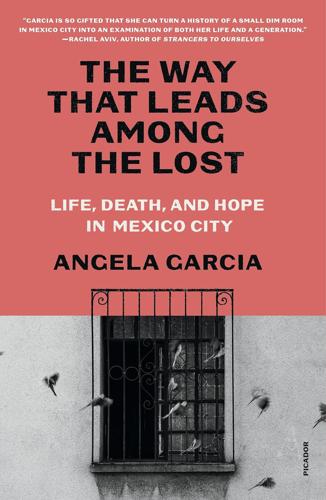
The Way That Leads Among the Lost: Life, Death, and Hope in Mexico City's Anexos
by
Angela Garcia
Published 30 Apr 2024
Would he worsen and grow angrier with time? Meanwhile, in conversations with me, anexados voiced feelings of betrayal, anger, and hurt about being committed to an anexo by their mothers. But sometimes they expressed appreciation for their mothers’ sacrifices. They, too, were torn. * * * Right before COVID-19 hit Mexico in March 2020, Serenity housed forty-three anexados, more than double the number from when I first visited. It was hard to imagine. Back then, anexados already complained of being “packed in like sardines.” Serenity’s population had swelled. And according to Padrino Francisco, more people were voluntarily committing themselves to escape the insecurity and violence in their neighborhoods.
…
I hoped there was someone looking after her—someone like Sheila, who protected Catorce from the harassment of their peers. Or Omar, who inspired gentleness in his fellow anexados. “Who looks after Nati?” I asked Padrino Francisco. “We all do,” he said. Shortly after the opening of Serenity II, COVID-19 hit Mexico. There were more than 2.4 million cases of the disease reported in June 2021, making Mexico a global “hot spot.” Tests, vaccines, and face masks were scarce, especially in poor areas. Padrino Francisco reported that no one wore face masks in his anexos and that everyone had the disease.
…
Buñuel, Luis Burghers of Calais (Rodin) C Cabrito Calderón, Felipe California; anexos in; Proposition in Camarista, La Cárdenas, Cuauhtémoc caregiving Carmen Casa Dolorosa Casa San Felipe catharsis Cathedral Catholic faith Catorce Cavarero, Adriana Ceci Cecilia Celia Center for Peace and Justice César Chambermaid, The Chihuahua; Ciudad Juárez Children of Sánchez, The (Lewis) Church of San Hipólito Church of the Immaculate Conception Ciudad Juárez Ciudad Universitaria Claudio Clinic of Emotions cocaine; crack Colonia Doctores Colonia Roma Colosio, Luis Donaldo confession Confessions (Augustine) corruption; informal economy and Cortés, Hernán counterinsurgency schools COVID-19 pandemic crack cocaine Critchley, Simon Cronus Crossroads Motel Cuates de Sinaloa, Los Cuauhtlatoatzin, Juan Diego Cuicuilco D Daniel Dante Alighieri Davis, Mike Day Without Us strike Deleuze, Gilles Delia del Moral, Enrique desagüe Diaz, Porfirio Didi-Huberman, Georges disappearances; report on; of women; see also kidnappings draining (desagüe) Drowned and the Saved, The (Levi) drug addiction; increase in; shift from alcohol addiction to drug addiction treatment; in anexos, see anexos; government-funded drug overdoses drugs: cocaine; crack; heroin; legalization of; marijuana; methamphetamine; morphine; opioids drug selling and trafficking; arrangements between authorities and cartels in; increases in; for US market drug war; US role in; see also violence Dufourmantelle, Anne Dulce E earthquakes Ecatepec ecstasy Edith Efren ejidos El Hoyo (La Joya) Eliot, T.

There's Got to Be a Better Way
by
Nelson P. Repenning
and
Donald C. Kieffer
Published 26 Aug 2025
They quickly improved turnaround times by more than 80 percent and quadrupled their capacity—gains that allowed them to process many more samples and get the results to the customer faster and more reliably. The pace of technology development also improved by over threefold. These gains put the lab ahead of demand for the first time in several years and created the space to develop even more innovative products and services. Broad returned to its industry-leading position. When COVID-19 hit, the institute used its new-found capabilities to transform itself into one of the largest and most efficient testing labs in the country in just a few months. When they see this example, students often ask if dynamic work design will work in their particular industry. Dynamic work design is about the flow of human work, not the work humans do.
…
Many of the organizations we have discussed so far emerged from their efforts to use dynamic work design with a better track record of innovation and more ability to respond to unanticipated changes. Faster, more focused processes staffed by people comfortable with surfacing problems and making adjustments provide a powerful platform for both doing the disruption (innovating) and responding to competitive threats. That said, the emergence of COVID-19 in early 2020 put this argument to the test in a way that we could never have anticipated. It also provides a definitive demonstration of the dynamic work design approach and principles in action. “DO WE EVEN DO THIS?” In the early days of March 2020, Sheila Dodge and her Broad Institute colleagues were busy shuttering the sequencing lab.
…
Having spent the previous seven years learning to regulate the flow of work and focus scarce resources on the projects most aligned with the institute’s strategy, this felt like something very different. Stacey and Sheila went back and forth for several hours on whether shifting the Genomics Platform to COVID-19 testing was possible and the right course of action for Broad. There were lots of pros and cons. On the plus side, a COVID test is technically simpler to process than a gene sequence. Tim De Smet, another member of the leadership team, said, “Take all the hard parts of sequencing away and you have COVID testing.”

Across the Airless Wilds: The Lunar Rover and the Triumph of the Final Moon Landings
by
Earl Swift
Published 5 Jul 2021
We’ve worked together for nearly twenty years, during which I’ve never stopped wondering how I could have so lucked out. He is fierce. He is brave. He is a warrior in the cause of righteousness—and me. Finally, I’m much obliged to those people who kept me moored to reality while I was chained to my keyboard, a period that coincided with the emergence of Covid-19 and the strange and terrible times that followed. Amy Walton has backed this project from its start, and supported me for nearly two decades. I’m deeply thankful to have her in my life. My dear friend Laura LaFay has read every word between these covers, several times. She’s one of the best writers I know, and an incisive reader and editor.
…
That said, the Horizon runabout so evokes Greg Bekker’s thinking (as does the report’s assertion that wheels would work just fine on the lunar surface, well before that became a popular view) that I’m moved to consider another possibility: that ABMA and Transportation Corps engineers working on Horizon conferred with Bekker’s lab at Detroit Arsenal, which was within the same army command. At this writing, that remains a speculation; amid the disruptions of the Covid-19 pandemic, I have yet to find documentation that spells out such an arrangement. Another possibility is that Bekker wasn’t the only guy thinking as he did. Georg von Tiesenhausen, an ABMA and Marshall engineer whose papers are archived at the U.S. Space and Rocket Center, is widely credited with producing the first design of a lunar roving vehicle—in fact, he’s often mistakenly said to have had a role in the eventual lunar rover, which he did not.
…
Don Beattie’s communication with Putty Mills, and the creation of the Grover, were detailed by both men in Schaber, U.S. Geological Survey. I also relied on an interview with Mills facilitated by his daughter, Denice Dogan, in November 2020. Mills, who was ninety-six at the time, was sufficiently hard of hearing that he couldn’t be interviewed by telephone, and couldn’t be visited due to Covid-19. Instead, using questions that I’d posed in an email, Dogan chatted with him by computer, then passed along his answers. Schaber described Mills and the Grover during our interview of October 11, 2019. Astronaut training in the Grover was detailed in Schaber, U.S. Geological Survey. Duke’s comments regarding the division of duties is from our interview of May 3, 2019.

Insight Guides South America (Travel Guide eBook)
by
Insight Guides
Published 15 Dec 2022
In the cooler southern zones are Chile, Uruguay, and Argentina, with vast empty spaces from the spine of the Andes to the last stop before Antarctica: Tierra del Fuego. A NOTE TO READERS At Insight Guides, we always strive to bring you the most up-to-date information. This book was produced during a period of continuing uncertainty caused by the Covid-19 pandemic, so please note that content is more subject to change than usual. We recommend checking the latest restrictions and official guidance. Pre-Columbian decorative mask on display at the Gold Museum in Bogotá. MatthieuCattin/Shutterstock PRE-COLUMBIAN TIMELINE Human settlement in South America began with nomadic hunter-gatherers traveling southward, and reached its peak with the Inca Empire at the time of the Conquest. 20,000–4500 BC Earliest Origins The first humans arrived in South America in around 20,000 BC, and were related to hunter-gatherers who crossed the Bering Straits “ice-bridge” between Asia and the Americas, following herds in search of food.
…
Moreno pivoted to the center, though, quickly distancing himself from his former mentor. Economic necessity also forced a move back to orthodox economic policies two years later, and ended Ecuador’s alliance with Venezuela. Courts, meanwhile, found Correa guilty of corruption, and he remains in self-imposed exile in Belgium. Amid the Covid-19 crisis, Moreno was succeeded by conservative Guillermo Lasso in the 2021 elections, who is seeking to kickstart the economy after a wildly successful vaccination campaign. Quito: Ecuador’s expanding capital Modern Quito 1 [map] spreads north, south, and east into intra-Andean valleys each year, gobbling up rural farms.
…
In 2017, the Senate tried to amend the constitution to allow Cartes to run for a second term, sparking heavy protests in which the Congress building was set on fire. Amid accusations of an attempted coup, the amendment was overruled. In 2018, voters elected Colorado senator Mario Abdo Benítez for a five-year presidential term. Before the Covid-19 pandemic, Paraguay was one of the fastest-growing countries in Latin America. Elegant Asunción Today, Asunción 1 [map] matches the dynamism of most South American cities while retaining a sleepy elegance, with handsome colonial mansions rubbing shoulders with luxury boutiques, duty-free shops, and neon lights.
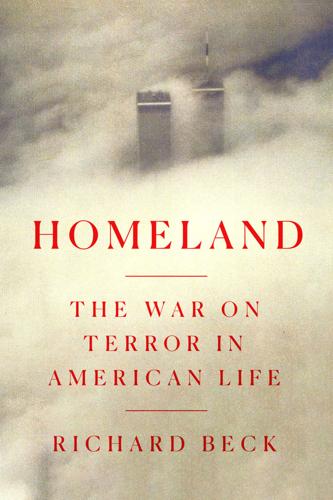
Homeland: The War on Terror in American Life
by
Richard Beck
Published 2 Sep 2024
Like Occupy, Black Lives Matter proved to be much more durable than the antiwar protests of 2003, permanently altering how the American political system oriented itself around issues of racism and proving capable of reappearing with even greater force when police killings flared up again, as they did during the first year of the COVID-19 pandemic. I will take a closer look at each of these movements in the book’s final section, but for now it may suffice to propose an answer to just one question: Why did the antiwar movement find it so difficult to sustain its momentum, and what did Occupy and Black Lives Matter do differently?
…
In Minneapolis, protesters burned down the police station where Floyd’s murderer worked, though it later became clear that the fire had been incited at least in part by members of a far-right white-supremacist group looking to kick off America’s second civil war. In midtown Manhattan, where the streets had already been emptied out by COVID-19 lockdowns, things got even more surreal as blocks of glittering luxury storefronts were covered up by plywood in anticipation of looting. The word “protests” doesn’t really capture what happened that summer. “Rebellion” and “uprising” hit closer to the mark. “The whole country seemed to tilt,” Haslett wrote: Sacked shopping malls in Los Angeles and pillaged luxury outlets in Atlanta, a siege on New York’s SoHo and flaming vehicles from coast to coast.
…
Less than 4 percent of that year’s protests involved even property damage or vandalism, much less violence.[62] The arrests were more like roundups. More than seventy people who participated in the demonstrations were later convicted of federal crimes, receiving prison sentences that averaged just over two years.[63] Protest activity decreased as the weather cooled, government officials promised reforms, and the second wave of the COVID-19 pandemic began to rip through a country that still lacked a working vaccine. Police succeeded in pushing protesters whom President Trump described as “domestic terrorists” out of their autonomous zone in downtown Seattle, and they also succeeded in preventing new autonomous zones from being established in Oregon, North Carolina, and Tennessee.[64] As with Occupy Wall Street, the protests had been too widespread and too consequential for politicians to dismiss them wholesale after the fact, as much as many Republicans would have liked to do just that.

Lonely Planet Pocket Hong Kong
by
Lonely Planet
Contents Plan Your Trip The Journey Begins Here Our Picks Three Perfect Days Get Prepared When To Go Getting There Getting Around A Few Surprises Explore Hong Kong Central District The Peak & Northwest Hong Kong Island Wan Chai & the Northeast Aberdeen & South Hong Kong Island Kowloon Macau Top Experiences The Star Ferry Tai Kwun Victoria Peak Man Mo Temple The Blue House Cluster Pak Tai Temple Aberdeen Harbour Sik Sik Yuen Wong Tai Sin Temple Chi Lin Nunnery Nan Lian Garden Temple Street Night Market Ruins of the Church of St Paul A-Ma Temple Hong Kong Toolkit Family Travel Accommodation Food, Drink & Nightlife LGBTIQ+ Travellers Health & Safe Travel Responsible Travel Accessible Travel Nuts & Bolts Language This Book The Journey Begins Here Lunar New Year, Wan Chai | HANNA YOHANNA/SHUTTERSTOCK © Despite recent challenges like COVID-19 and its geopolitical situation, Hong Kong emerges resilient and still has a lot going for it. This vibrant city harmonises old and new, with skyscrapers alongside temples. Neighbourhoods like Wan Chai and Tai Hang are evolving rapidly, while Yau Ma Tei and Mong Kok retain their timeless charm. Hong Kong’s skyline, bays and peaks exude a magical allure, making anything seem possible.
…
The temple’s importance is denoted by the fine Shiwan (Cantonese glazed pottery) figurines on the roof ridges, while its sea-facing orientation is believed to bring good feng shui. Shoppers used to flock to the furniture and fashion outlets of Ap Lei Chau’s Horizon Plaza (map Google map), but it’s a bit of a morgue post COVID-19. Housed in a converted factory on the southern coast, there are stores selling cheap furniture, homewares and designer fashion at knock-down prices. Have a Seafood Feast at Ap Lei Chau Cooked Food Centre Market map Google map The best reason to cross the typhoon shelter is the Ap Lei Chau Cooked Food Centre.

Pocket Rough Guide Hong Kong & Macau
by
Rough Guides
Published 18 Jul 2024
TED’s Lookout MAP G/F, Moonful Court, 17A Moon St, Wan Chai Wan Chai, Exit B2 2520 0076. Cute – or just plain small – restaurant-bar in a quiet cul-de-sac; the Tex-Mex style food ($$) is above average, but the drinks are superb, if pricey. The Wanch MAP 1/F, 90 Jeffe Rd thewanch.hk Wan Chai. Having closed in 2020 due to the Covid-19 pandemic, Hong Kong’s first boozy rock dive reopened in 2022. Live gigs, pub grub (including cheap burgers and sandwiches; $$) and affordable drinks (for Hong Kong) is the recipe for a good night out. Carnegie’s Tim Draper/Rough Guides < Back to Hong Kong Island: Wan Chai, Causeway Bay and Happy Valley Hong Kong Island: the south side Shops Restaurants Hong Kong Island’s south side, while not undeveloped, still offers an escape from the north shore’s densely packed high-rises.
…
Ringleaders persecuted, and booksellers distributing works critical of Chinese leader Xi Jingping are kidnapped and put on trial in China. 2017 Moderate Carrie Lam elected Hong Kong’s first female leader, but popular resentment against mainland Chinese remains. 2019 Hong Kong endures its most violent protests for decades, initially over plans to extradite criminal suspects to mainland China. The extradition bill is withdrawn, but protests develop into general unrest around the relationship between Hong Kong and the mainland. 2020 The first case of Covid-19 is confirmed on January 23. Following Beijing’s lead, the government pursues a zero-covid elimination strategy, by closing all its borders and subjecting even mild and asymptomatic cases to hospitalisation. 2023 Hong Kong reopens to tourism with a post-Covid charm offensive as new leader launches the “Hello Hong Kong” promotion campaign. 2024 Lawmakers approve new national security legislation known as Article 23, which many fear will increase the government’s control and surveillance of Hong Kong
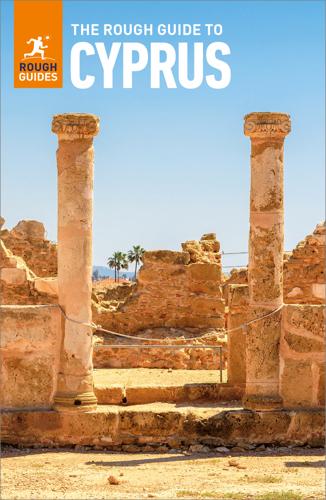
The Rough Guide to Cyprus
by
Rough Guides
Published 2 Feb 2025
Since the 2008 crash, as in much of the Western world, attitudes in the south to the future have become distinctly gloomy, with a pessimism boosted by dire economic forecasts, lack of progress on the “Cyprus Problem” and the disastrous 2011 Evangelos Florakis Naval Base explosion. However, the Cypriots are nothing if not resilient, and a more optimistic outlook has been noticeable in the last few years. The Covid-19 pandemic wrecked as much devastation on economic, social and health life here as it did across the world. With the island being so dependent on tourism, the economy took a real battering but it has started to recover as tourists return. Family life Cypriot society revolves around family life, and it is still common for families to eat together, either at home or in a restaurant, especially on Sundays.
…
The menu includes a wide selection of main courses, including lamb shank, sea bass and sea bream, kebabs, kléftiko, omelettes, egg and chips and burgers, together with set menus. €€€ Chimera Eski Liman (on the harbour side, at the castle end); 8154394. Once a popular and beloved café-restaurant in the harbour, Chimera operates as a coffee shop since 2024 that also serves light snacks and drinks. It closed down during the Covid-19 years and reopened with a new direction. It’s yet to win the trust of its faithful followers though who miss the restaurant’s old charm. The harbour views are still worth it. €€ Eziç Peanuts 26 Karakız Sk; https://www.ezic.com.tr. A franchise restaurant with shops in Lefkoşa, Lapta, Gazimağusa and Girne.
…
c.323–31 BC The (Greek) Ptolemies of Egypt succeed in struggle between the heirs of Alexander the Great and rule Cyprus. 31 BC Roman rule in Cyprus begins, bringing relative peace and prosperity. 45 AD St Paul and St Barnabas begin the conversion of the island to Christianity. 330 Cyprus becomes part of the Byzantine Empire. 468 The Church of Cyprus is granted autonomous status. 647 First of numerous Arab raids on coastal cities. 649 Island invaded by Saracen army. 649–965 Conflict between the Christian Byzantine Empire and the forces of Islam. 965–1191 Second period of relative peace within the Byzantine Empire. 1191 Richard the Lionheart conquers Cyprus. 1192 Richard sells Cyprus first to the Knights Templar, then to his lieutenant Guy de Lusignan. 1192–1489 Lusignan rule – Cyprus becomes a Crusader state. 1489–1571 Venetian rule – Cyprus becomes a commercial trading base. 1522 The fall of Rhodes to the Ottoman Empire leads to the fortification of the island against possible Muslim attack. 1571 Siege of Famagusta completes the Ottoman conquest of the island. 1572 Building of the Büyük Han (Great Inn) in Nicosia by Mustafa Pasa. 1821 Rebellion is violently suppressed, with over five hundred prominent Greek Cypriots being publicly executed in Nicosia. 1878 Period of British rule begins. 1925 Cyprus becomes a Crown colony. 1942 British soldiers discover the Pafos mosaics. 1955–59 EOKA fights for union with Greece (enosis). 1957 Bitter Lemons by Lawrence Durrell is published. 1959 Independence granted and elections held. 1960 Archbishop Makarios III elected president. 1963–64 Intercommunal violence in Cyprus leads to intervention of UN troops. 1964 The Kokkina Incident almost leads to all-out war; Green Line across the capital established. 1974 Turkish invasion leads to conquest of northern Cyprus, de facto division of the island. 1983 The “Turkish Republic of North Cyprus” is established. 2003 First crossing point on the Green Line established. 2004 Republic of Cyprus joins the European Union. 2008 Cyprus adopts the euro while the north persists with the Turkish Lira. 2008 Demetris Christofias elected president of the Republic. 2012 In London, Pavlos Kontides wins Cyprus’s first ever Olympic medal – a silver in the Laser sailing event. 2013 The presidents of the Republic of Cyprus and North Cyprus begin peace talks. 2015 Negotiations halt and the talks break down. 2017 Discussions regarding possible reunification take place. 2020 Covid-19 pandemic strikes and decimates the Cyprus tourism industry and the islands economy. 2021 Talks about the reunification of the island fail. 2023 Nikos Christodoulides is elected as the Republic’s new president. 2024 Cyprus begins the process of joining the Schengen Zone. Prehistoric Cyprus The earliest stone implements in Cyprus date from around 8000 BC and indicate the presence of a hunter-gatherer society who slowly developed the use of domestic animals and farming.
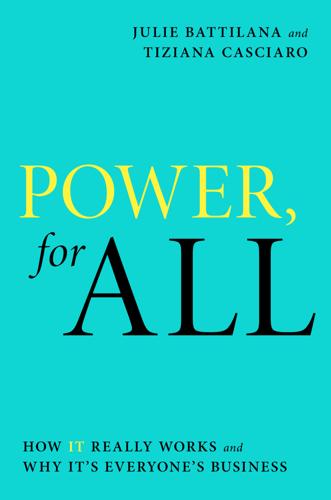
Power, for All: How It Really Works and Why It's Everyone's Business
by
Julie Battilana
and
Tiziana Casciaro
Published 30 Aug 2021
Whatever affects one directly, affects all indirectly.”44 Recognize this interdependence, and empathy will spring naturally from it and, with it, a cleaner relationship with power. Sometimes, as we struggle to see through the fog of our self-focus, events much larger than ourselves remind us and rekindle our empathy. The COVID-19 pandemic helped some to see that the unilateral exercise of individual power is futile and counterproductive.45 And many more of us have awakened to the truth of scientists’ dire warnings about the boomerang effects of invading and destroying ecosystems46 and “the need for a more holistic ‘one health’ approach [that] views human, animal, and environmental health as interconnected.”47 Life-altering experiences such as the pandemic also make us more aware of our impermanence, which has long been one of the defenses humans put up against the other great danger of power: hubris.
…
Research in evolutionary psychology highlights how people internalize experiences of social acceptance and rejection in ways that can profoundly shape their assessment of their own worth.40 Kids understand early on the power of threatening to withdraw their friendship from another child, even if they don’t understand that the power derives from depriving a vulnerable peer of a key source of self-worth and a potential defense against mean-spirited bullies. Ultimately, the people we love matter more to us than anything else. Anyone who has come close to death will tell you that their loved ones were all they thought about in those final moments.41 The pain of being denied a last farewell to hospitalized family members was what made COVID-19 so heartbreaking for so many people. We can accept death, but not death without those we love.42 Love is easily leveraged as a source of power: Threaten someone I love, and I will yield to you to ensure the safety of my loved one. At the same time, I will do all that’s in my power to stop you. Affiliation can also be leveraged to divide us.
…
For a comprehensive list of locations of any word or phrase, use your reading system’s search function. 2008 financial crisis, 118, 126 48 Laws of Power, The (Greene), 19 Aakash’s story, 82–84 abuse of power, 21, 37, 43, 110–13 access to valued resources changing power balance, 8–13, 194 collective choices, 195 expanding networks for, 194 Ning’s story, 61, 63–64 personal data surveillance, 151–54 purposeful use of technology and, 148, 150 reclaiming democratic power, 197 Adbusters, 118 Age of Surveillance Capitalism, The (Zuboff), 152 agitation, 118–20, 137, 154, 195, 196, 238n7 agricultural revolution, 142 AI Now Institute, 160 Aladdin, x algorithms, 148–51, 153, 158–60 Alighieri, Dante, 41 Alinsky, Saul D., 20 Allegory of Good and Bad Government, The (Lorenzetti), 165 Allen, Danielle, 186 Alphabet Workers Union, 157–58 altruism, 26, 30–31, 36–38, 55, 196 Amazon, 112, 152, 153, 157, 159 Amnesty International, 156 Andersen, Lene Rachel, 187, 188, 258n83 Anderson, Cameron, 211n25, 212n10, 212n13, 230n12, 250n3 Anderson, Elizabeth, 177 antitrust legislation, 11, 159 apartheid, 117 Appiah, Kwame Anthony, 218n18, 220n34 Apple, 113, 151, 153, 157, 158 Arab Spring, 109, 117, 118 Ardern, Jacinda, 53–54 Arendt, Hannah, 96 Argentina’s marriage equality story, 131–37, 242n34 Argentine LGBT Federation, 133–37, 242n34 Aristotle, 55, 57 artificial intelligence (AI), 148–49 Associação Saúde Criança (Instituto DARA), 28 attention economy, 152–53 attraction strategy, 8–11, 9, 12, 194 Austen, Jane, 46 authoritarianism, xvii, 36–38, 43, 122, 152, 185 authority-power relationship, 66–68, 69–70, 73 #BalanceTonPorc, 137 Banaji, Mahzarin R., 231n19, 231n20, 233n48 Banerjee, Abhijit V., 114 Barefoot College’s innovation, 144–46, 148, 161 Bastida, Xiye, 121–24 Beard, Mary, 101 Beauvoir, Simone de, 102 belonging, 2, 7, 58, 82, 105, 118, 133, 168, 187, 194, 221n40 See also valued resources: affiliation benefit corporations (B-Corps), 176 Bentham, Jeremy, 151, 245n30 Berners-Lee, Tim, 147, 148 betweenness, 79–81, 79, 153 Bhatia, Karan, 157 bias algorithmic, 150–51 fundamental attribution error, 16 negativity bias, 19 status quo bias, 74 confirmation bias, 88 See also stereotypes, racism, gender inequality BIPOC (Black, Indigenous, and People of Color), 88, 117, 151, 196 Björkman, Tomas, 187, 188, 258n83 Black Lives Matter movement, 117, 139, 141, 147–48 Black Voters Matter Fund, 190 Blau, Peter M., 261n4 Bloomberg, Michael, 130 Boards of Directors, 66, 86–89, 91–92, 128–130, 157, 169, 174–177, 188 Bonaparte, Napoleon, 47 Bourdieu, Pierre, 231n26, 232n34 Brass, Daniel J., 226n12 Brave New World (Huxley), 164 Brock, Timothy, 135 Brodsky, Greg, 162–63 Brown, LaTosha, 190–91 Browner, Carol, 80, 81, 84 Buddhism, 32–33 Buffett, Warren, 114 Buolamwini, Joy, 150 Burke, Tarana, 137 Burt, Ronald S., 227n25, 228n36, 236n66 Business Roundtable, 175–76 Caesar, Julius, 101 Cailliau, Robert, 147, 148 Capital (Marx), 110 Carnegie, Andrew, 110–11 Caro, Robert A., 14–15 Carus, Titus Lucretius, 41 caste system, 91–92 Castells, Manuel, 199, 231n26, 239n2, 261n9 Catholic Church, 131, 135 certified coaches, 5, 209n4 change-makers, 74, 78 Channapatna artisans, 47, 50 chattel slavery, 91–92 checks on power, 165–92 collective responsibility, 189–92 employee representation, 177–82 organizational power sharing, 167–73, 191–92 oversight and accountability, 173–77 societal power sharing, 182–84, 192, 256n63 structural limits, 165–66 See also civic education and engagement, civic vigilance Chenoweth, Erica, 124 Chomsky, Noam, 219n25, 257n77 Cialdini, Robert B., 210n15, 227n23 Citizens United, 118 civic education and engagement, 184–88 civic vigilance, 184–86, 192, 257n74, 257n79 Civil Rights Act, 14 Clegg, Stewart, 236n64, 262n22 Cleisthenes, 182, 256n63 climate science, 45–46 Clinton, Bill, 80 Coats, Michael, 167, 168, 169, 170, 171 Code of Hammurabi, 100–01 codetermination, 181 Cohen, Joshua, 257n75, 259n96 collective action consolidation strategy, 11–12, 111, 112 Google employees story, 154–58 keeping power in check, 192 power distribution responsibility, 195 shifting power balance and, 115, 178–79 collective movements, 117–39 agitation, 118–20, 137, 154, 195, 196, 239n6 digital technology and, xvii, 137–39, 154–58, 242n40 innovation, 119–20, 125–30, 147–49, 154, 195, 196 orchestration, 119–20, 131–37, 154, 195, 196 public agenda and, 120–25 shifting power balance, 115 collective orientation, 32, 36, 195 collective responsibility, 189–92 Community Interest Companies, 176 concentration of wealth, 162, 175–76, 189–90 confirmation bias, 88 Confucius, 55 consolidation strategy, 8, 9, 11–12, 111, 112, 142, 194 Contract with America (Gingrich), 80 Cook, Tim, 158 cooperatives, 162–63, 179–81 Cordeiro, Vera, 27–29, 33, 38–39, 166 Courpasson, David, 247n57, 262n22 COVID-19, 38, 49, 176 Creighton, Mandell, 24 CRISPR (clustered regularly interspaced short palindromic repeats), 162, 164, 249n79 Crozier, Michel, 225n6 Csikszentmihalyi, Mihaly, 42 Cuddy, Amy J. C., 224n76 cultivation of empathy, 30–33, 36, 38, 135, 195 cultivation of humility, 30, 34–36, 36, 38, 195, 215n55 Dahl, Robert A., 259n98, 261n2 Dalberg-Acton, John Emerich Edward (Lord Acton), 24 dangers of hubris awareness of impermanence, 38 cultivating humility and, 30, 34–36, 36 Greek myths of, 23 power sharing and accountability reinforced, 39, 166, 172–73 Davis, Gerald F., 253n31, 253n32, 255n44 De Beers, 11–13 Declaration of Independence, 189 Declaration of the Rights of Man and of the Citizen, 125–26, 189 Declaration of the Rights of Woman and of the [Female] Citizen (De Gouges), 125–26 democracy, xiv, xvii, 68, 91, 156–58, 182–93, 197–98 See also civic education and engagement, participative democracy initiatives, separation of powers democratization of firms, 181, 197 democratization of power, 162–64, 197 demographic diversity, 168 DeSantola, Alicia, 169 Descartes, René, 146, 243n10 Developmental Path to Power, 36 Diamond, Jared M., 243n4 Diana (princess of Wales), 30 digital era power fundamentals, 141–64 algorithms and machine learning, 148–49, 150 big tech control, 148–54 control of algorithms, 149–51, 153, 159–61 control of personal information, 151–53, 158–59, 190 democratization of power, 162–64, 197 laws and regulations, 158–62 technology’s impacts on, 143–48, 190 timelessness of, 142–44 World Wide Web, 147–48 digital revolution, 147–54, 162–63 Dimaggio, Paul J., 233n46, 235n64 disability, xiii, 4, 104, 193 discrimination, 104, 132, 156, 170–71, 252n22 See also bias, gender inequality, racism Disney, Abigail, 114 disruption of power, 108–15, 141–54 distributive change, 108–9, 143–44, 147–48, 150–54, 168–72 imbalances and, 111–15, 158 motivation and opportunity convergence, 109–12 See also hierarchies of power distribution of power challenges to, 108–9 critical aspects of, 150–54 equitable and diverse, 168–72, 193–94, 197 technological change and, 143–44 World Wide Web and, 147–48 domestic workers’ Bill of Rights, 179 DoorDash, 179 Dorsey, Cheryl, 104–6, 107, 108 Dorsey, Jack, 153 Douglas, Mary, 229n1 Duflo, Esther, 114 Durkheim, David Émile, 223n58 dynastic rule, 91–92 Echoing Green, 107 Edmondson, Amy C., 35 Egyptian revolution (2011), 118 Eichmann, Adolf, 95, 96 elements of power, xvi–xvii, 2–3, 16, 39–40, 192, 194, 195 Elliott, Jane, 92–94, 99 Emerson, Richard M., 200, 210n10, 211n21, 261n10 empathic accuracy, 31 empathy, 30–33, 36, 38, 97, 98, 195 Enlightenment, 109 Enlightenment Now (Pinker), 146 Enron, 174 Epic Games, 113 Epicurus, 55 equitable power distribution, 168–72, 193–94, 197 ethical decisions on power, 20 eugenics, 102–3 European Union, 159, 248n67 evolutionary psychology, 49 expansion strategy, 8, 9, 12–13 experience of power, 22–25 Facebook, 152, 153, 157, 159, 184, 248n66 facial recognition algorithms, 150, 160, 161 fallacies of power, xii–xiv, 16, 20, 70 See also positional power fallacy, possession of power fallacy, power is dirty fallacy Fallone, Meagan, 146, 161 Farage, Nigel, 52 fascination for power, x–xii Ferreras, Isabelle, 181, 254n42, 255n44, 256n58, 256n59 Festinger, Leon, 213n30, 223n67 Fiske, Susan T., 218n16, 224n76 Fligstein, Neil, 235n63, 235n64 Floyd, George, 92 folk-Bildung, 187–88, 258n84 Follett, Mary Parker, 8 foot-binding, 48, 57, 220n33 formal power and networks, 70–71, 71 Foucault, Michel, 151, 202, 245n30, 261n16 Founding Fathers of the United States, 183 French Revolution, 47, 109 French Yellow Vests, 117 Frick, Henry Clay, 110 Fridays for Future, 56, 121–25 Friedman, Milton, 46, 219n27 fundamental attribution error, 16 fundamentals of power, xvi–xvii, 2–3, 16, 39–40, 192, 194, 195 Fung, Archon, 259n96, 262n22 g0v (gov zero), 191 Galinsky, Adam D., 211n7, 212n13, 217n11, 222n48, 230n12, 230n14, 230n18, 231n24, 232n39, 237n72, 240n15, 262n22 Galton, Francis, 102 Gandhi, Mohandas Karamchand, 56, 119, 124 Ganz, Marshall, 122, 139 Garza, Alicia, 139 Gates, Bill, 114 Gates, Melinda, 114 Geddes, Patrick, 102 Gelfand, Michele J., 67, 225n4 gender inequality, 91–92, 101–02, 106–08 gender solidarity, 4–8, 85–87 gene editing technology, 162, 249n79 General Data Protection Regulation (GDPR), 159 Gergen, David, 24 gig economy, 163, 179, 181 Gingrich, Newt, 80 Giridharadas, Anand, 114 global climate strike (2019), 121–23 Global Reporting Initiative (GRI), 127 global warming, 45–46, 120–25, 163 renewable energy, 144–46 Godfather II, The, 77, 227n21 Google employees story, 154–58 Epic Games and, 113 European legislators, 159, 248n66 privacy policies lawsuits, 159 Project Dragonfly, 156 Project Maven, 155, 156 search history, 124 user data and, 152–54 Gottfried, David, 127 Gouze, Marie (Olympe de Gouges), 125–26 Government of the Nine, 165, 166, 250n2 Gramsci, Antonio, 186–87 Grant, Adam M., 215n55 Great Depression, 9, 114 Great Society, 14 Green, Melanie C., 135 Greene, Robert, 19 greenhouse gas effect See global warming Grimanis, Lia, 1, 4–8, 10, 20 Gruenfeld, Deborah H., 212n7, 230n12, 230n14 Grunitzky, Claude, 228n39 Gutenberg, Johannes, 142, 143 Hammurabi (Babylonian king), 100 Harari, Yuval Noah, 243n3, 245n31, 250n85 Harry, Prince (Duke of Sussex), 30 Harvard Study of Adult Development, 49 Heimans, Jeremy, 141 Heroic Failure: Brexit and the Politics of Pain (O’Toole), 52 hierarchies of power legitimacy narratives and, 100–04, 232n33 legitimization of, 92–94 obedience to authority, 94–97, 229n8 perpetuation of, 27 power infernal trio, 97–98 powerlessness and, 98–100 stability of, 90, 91–92, 197 stereotypes and, 104–8, 169 stickiness of, xvii, 91–92, 108 Hitler, Adolf, 9 Hobbit, The (Tolkien), ix Ho Chi Minh, 15, 16 Hollande, François, 24, 68 Holocaust, 20–21 Homer, 101 Homestead Strike, 111 Hominem te memento, 34, 214n49 L’Homme Providentiel, 16 Hossain, Mashroof, 34–35 hubris awareness of impermanence, 38 cultivating humility and, 30, 34–36, 36 Greek myths of, 23 power sharing and accountability reinforced, 39, 166, 172–73 Hughes, Debbie, 93 human needs See safety, self-esteem, valued resources human rights, xiv, 133–34, 136, 156, 157 humility, 30, 34–36, 36, 38, 195, 215n55 Huxley, Aldous, 164 imbalance of power, 111–15, 153–54, 182, 189–90, 194 impermanence, 34, 38, 115 impermanence awareness, 38, 115 Implicit Association Test, 104 Indignados, 118 infernal trio, 97–98, 102 informal power of networks, 72–74, 72, 84 innovation, 119–20, 125–30, 147–49, 154, 195, 196 In Praise of Scribes (Trithemius), 142, 143 Institutions, 104, 233n47 institutional change, 109, 235n64, 235n65, 235–36n66 interdependence awareness, xv, 32, 38, 97, 115, 195 Intergovernmental Panel on Climate Change (IPCC), 120 interpersonal liking familiarity, 63 similarity, 63, 88–90 intoxication of power, 20–22, 173 Johnson, Boris, 52 Johnson, Lyndon Baines, 14, 15, 16, 76 Johnson Space Center (JSC), 167, 168 Johnson treatment, 14 jointly developed power, 8, 162–63, 178–79 Jost, John, 231n19, 231n20, 231n22 Kant, Immanuel, 55 Kanter, Rosabeth Moss, 168–69 Karman, Tawakkol, 186 Kegan, Robert, 214n40, 258n84 Keltner, Dacher, 211n7, 212n16, 230n12, 230n17, 237n71 Kennedy, John F., 14 Keohane, Robert O., 261n14 Khan, Lina M., 159 King, Martin Luther, Jr., 33, 92, 119, 124 Kirchner, Nestór, 131, 132 Krackhardt, David, 71, 225n7, 226n8, 226n16 Lady Gaga, 85 Lasn, Kalle, 118, 119 Legion of Honor, 47, 219–20n30 legitimizing stories, 91–92, 101–04, 123 levers of persuasion, 10, 210n15 LGBTQ+, 88, 109, 117, 131–33, 136–37 LinkedIn, 153 Livingston, Robert W., 172 Lopez, Sandra, 177, 179–80 Lord of the Rings, The (Tolkien), ix–x Lorenzetti, Ambrogio, 165 Lukes, Steven, 261n5 Machiavelli, Niccolò, xvi, 19, 227n21 machine-learning algorithms, 148–49, 150 Magee, Joe C., 212n7, 230n14, 230n18, 231n24, 237n72, 262n22 Mandela, Nelson, 56, 119 Manuel’s story, 70–73 marriage equality, 131–37, 242n34 Marx, Karl, 110, 236n68 Maslow, Abraham, 217–18n15 Mayo, Tony, 171 McEvily, Bill, 86, 226n9 mechanical movable-type printing press, 142 Mencius (Mengzi), 55 meritocracy, 103, 169–70 #MeToo movement, 117, 137, 141, 147–48, 156 Meyer, John W., 233n46 Microsoft, 157 Milgram, Stanley, 95–96, 229n8 misunderstanding power fallacies of, xii–xiv Mjumbe, Nezuma, 144–46, 161 mobile health technology, 149 monopoly, 11 Montesquieu (Charles-Louis de Secondat), 182–83 moral principles, 55, 56, 164, 192 moral purity, 25, 30, 212n21, 213n30 Morrison, Toni, 8 motivation See safety, self-esteem, valued resources movement fatigue, 137 mutual dependence, 3, 7, 114, 181, 200 Na’Allah, Bala Ibn, 184 Naím, Moisés, 141 NASA Innovation and Inclusion Council, 170 Johnson Space Center (JSC), 167–68 Transparency and Opportunity Program (TOP), 171–73 National Domestic Workers Alliance, 177–79 National Health Service, 67 Nazi concentration camps, 21 negativity bias, 19 neoliberal capitalist system, 46, 189 Netflix, 153 networks betweenness, 79, 80, 153 informal power, 70–74, 71, 77–81, 84–89 network diversity, 84–89 organizational networks, 73–90 popularity and prominence, 73, 79, 227n25 power mapping, 74–84, 88, 128, 143–46, 191, 194 similarity and social relationships, 82–83, 89–90 Nietzsche, Friedrich, 57 Ning’s story, 61, 63–64 nonviolent civil disobedience, 123–24 Nosek, Brian A., 231n19, 231n20 #NoToSocialMediaBill, 184 Nye, Joseph S., 261n14 Obama Administration, 85 Occupy Wall Street, 118, 119 Ochoa, Ellen, 167–72 Odyssey (Homer), 101 Ogundipe, Tope, 184–85 O’Neil, Cathy, 150 online agitation, 137 Oppenheimer, Harry, 9, 10 orchestration, 119–20, 130–37, 154, 195, 196 organizational networks, 73 Organization for Economic Co-operation and Development (OECD), 161 O’Toole, Fintan, 52 oversight and accountability, 173–77 panopticon, 151, 245n30 Pansardi, Pamela, 262n21 Paradigm, 184 Parsons, Talcott, 261n17 participative democracy initiatives, 191 People for the Ethical Treatment of Animals (PETA), 57 perceptions of power, 25–27 personal development, 29–40, 97, 135, 163, 170–71, 195 Pettit, Philip, 43 Pfeffer, Jeffrey, 222n49, 260n7, 261n6, 261n13 Phillips, Nelson, 262n22 Pichai, Sundar, 155, 158 Piketty, Thomas, 219n28, 238n84 Pinker, Steven A., 146 Pitkin, Hanna F., 202, 262n20 Plato, ix, 198 Poo, Ai-jen, 178 positional power fallacy, xii–xiii possession of power fallacy, xii, 16, 211n25 Powell, Walter W., 233n46 power, definition of, 1–2, 199–202 power imbalance, 3, 7, 111–15, 201 power’s psychological effects, 20–40 cultivating empathy, 30–33, 36, 38, 195 cultivating humility, 30, 34–36, 36, 38, 195, 215n55 developmental process and, 29–30 experience of power, 22–25 intoxication of power, 20–22, 173 morality and, 27–29, 164, 192, 194 perceptions of power, 25–27 selection, 36–38 structural safeguards, 38–40 power is dirty fallacy, xiii, 19–40 power mapping accuracy levels, 75–77, 194, 227n18 challenging environments, 81–84 community, 191 diversity and accuracy of, 88 endorsers, fence-sitters, and resisters, 77–78 fundamentals of power and, 195 keys to, 40 reputational power, 74–75, 226n16 technological change and, 143, 146 power from rank and role, 69–70 power sharing and accountability organizational, 166, 167–73, 191–92 societal, 182–84, 192, 256n63 power vs. authority, xii–xiii, 58–61, 66–68, 73 power-with, 8 Pratto, Felicia, 231n26 Prince, The (Machiavelli), xvi, 19, 227n21 principal-agent problem, 173 Protestant Reformation, 143 pseudoscience, 94, 101–3 psychological resources, 2, 47–51 psychological safety, 35, 39 public narrative, 122–23, 239–40n14 transportation, 135 Purpose of Power, The: How We Come Together When We Fall Apart (Garza), 139 #QuellaVoltaChe, 137 Rabelais, François, 164 Rachid, María, 131–37 racism, 82–84, 89–90, 91–92, 104–08, 117 See also stereotypes Ramarajan, Lakshmi, 169 Ranganathan, Aruna, 47 Rawls, John, 193 Reading the Mind in the Eyes, 22 rebalancing power, 8–13 attraction, 8–11, 9, 12, 194 consolidation, 8, 11–12, 111, 112, 142, 194 digital era and, 158–62 expansion and withdrawal, 8, 12–13, 194 redistribution of power, 170, 197 Renaissance, 143 representative democracy, 183 Republic (Plato), ix, 198 resistance, 123–24, 161, 199 to change, 74, 77–78, 127, 131 violent and nonviolent, 124 Ridgeway, Cecilia L., 233n46, 251n5 Ring des Nibelungen, Der (Wagner), x Ring of Gyges, ix, x, xiii, 198 Roberts, Laura Morgan, 171 Robinson, James A., 257n79 Rogers, Jean, 126–30, 176 Rohingya, 34 Ross, Lee, 16 Rousseau, Jean-Jacques, 189 Rowan, Brian, 233n46 Roy, Bunker, 144, 161 Rubin, Andy, 156 Russell, Bertrand A.
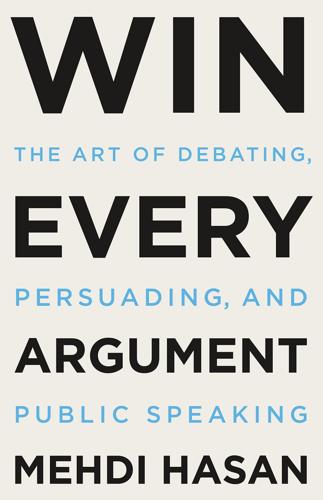
Win Every Argument: The Art of Debating, Persuading, and Public Speaking
by
Mehdi Hasan
Published 27 Feb 2023
They literally had no response! 3. Challenge their claims What do I mean by the third of the three C’s, challenge their claims? I’m not referring to the substance of your opponent’s claims. That wouldn’t be an ad hominem argument. I’m referring here to challenging their record of past claims. As the COVID-19 pandemic progressed, for instance, plenty of well-credentialed experts made some awful calls—and not once, but twice, thrice, multiple times. In February 2022, I interviewed Dr. Monica Gandhi, an infectious disease physician at University of California, San Francisco, on my nightly show on Peacock.
…
—Alberto Brandolini, computer programmer It was the first televised presidential debate of the 2020 U.S. presidential election campaign. Sitting president Donald Trump was facing off against former vice president Joe Biden in Cleveland, with Chris Wallace as the moderator. Election day was still more than a month away, but amid the COVID-19 pandemic, many states were already rolling out expanded early voting options. And Trump and his team were already sowing seeds of doubt about voter fraud and the very legitimacy of the election itself. So, during the final segment of the debate, Wallace raised that issue directly. He asked the two candidates: “How confident are you that this will be a fair election?
…
Caesar, Julius Cain, Bob Caine, Michael calm, keeping breathing and laughing and self-talking and what you can control and Cameron, David Campbell, Alastair Carnegie, Dale Carter, Asa Carter, Jimmy Chamberlain, Neville “Chance for Peace” (Eisenhower) Chapelle, Dave character, challenging opponent’s charitable donations Charlie Hebdo attacks Charlottesville white supremacist rally China chin position Choke (Beilock) Christian Science Monitor Christie, Chris Churchill, Winston CIA Cicero, Marcus Tullius claims of opponent booby traps to discredit challenging listening for false claptraps Clark, Roy Peter Cleese, John Cleon climate change Clinton, Bill Clinton, Hillary CNN cognitive psychology Cognitive Science Cohen, Richard Collier, Sir Paul Columbia Journalism Review composure, losing concessions critical listening and empathetic listening and judo moves and conclusion or peroration abrupt halts and anecdote as apologies and call to action as defined dos and don’ts for tone and delivery of emotion and four elements of length of memorable phrase to end new argument and pathos and questions to help decide on quote as repetition and signaling ending and confidence “as if” technique and body language and defined eye contact and faking importance of showing nervousness and positive company to build risk taking to build techniques for visualizing and voice projection and conflicts of interest Conservative Party (UK) contradictions booby traps and using as receipts controversial topics conversational tone Conway, Kellyanne Cooper, Ann Nixon Costello, Stacey Zwald Covey, Stephen R. COVID-19 Cowan, Nelson creationists credentials, challenging credibility ad hominem arguments and booby traps and credentials and listening for false claims and Crenshaw, Dan critical race theory criticism, constructive Cromwell, Oliver Crowder, Robert Cruise, Tom C-SPAN Cuban missile crisis Cuddy, Amy Cuomo, Chris Cuomo Prime Time (TV show) Customs and Border Protection (CBP) Daily Mail Daily Politics (TV show) Daily Telegraph Dale, Daniel Damasio, Antonio Davis, David Death of Truth, The (Kakutani) death penalty Debunk It!

Enshittification: Why Everything Suddenly Got Worse and What to Do About It
by
Cory Doctorow
Published 6 Oct 2025
On the one hand, bad experiences with governments that depended on IBM’s low-quality offerings undoubtedly lent credence to the story that governments are intrinsically incompetent and that they should outsource all their services to the private sector. It’s true: government tech deployment (from the $2 trillion Joint Strike Fighter to the creaking systems used to hand out stimulus relief during the COVID-19 pandemic) often sucks—but generally the culprit is a government contractor from the private sector. On the other hand, the fact that Uncle Sam (and all his nephews and nieces in statehouses and town halls) trusted IBM to run so many consequential government functions also served as a calling card for IBM, generating sales from blue-chip companies that treated IBM’s government business as evidence of its reliability.
…
If those workers were employees, that would be illegal: American companies are prohibited from closing down a shop after its employees unionize, but Amazon claims that because it exerts its control over the drivers through an app and an intermediary, it can fire them at will. Chickenization started in the poultry industry, but thanks to tech, it has spread like wildfire. Long before the COVID-19 lockdowns shifted many people to work-from-home jobs, tech helped some of the greediest, most predatory businesses establish a beachhead in their workers’ own apartments. Arise is a tech company that provides outsourced call center staff for some of the world’s biggest companies, like Intuit, Disney, and Carnival Corporation, parent of Carnival Cruise Line.
…
When a Google manager ordered one of the company’s most distinguished AI scientists to suppress a research paper that had already been accepted into a highly selective scientific conference, it revealed another important difference between tenure and a job at Google: Google is a massive multinational corporation. At gigantic corporations, mouthing off to your boss gets you in trouble. It can even get you fired. Google proceeded to fire Timnit Gebru. After years of ever-more-muscular displays of worker power by Googlers, the firing of Timnit Gebru—at the peak of the COVID-19 lockdowns, in December 2020—marked a shift in the attitude of Google bosses to their cherished employees. The Googlers I know describe 2021 as a year of tightening discipline and managerial impatience with the workforce’s demands. But while Google was getting snippier with its workforce, it was pitching woo to its shareholders.
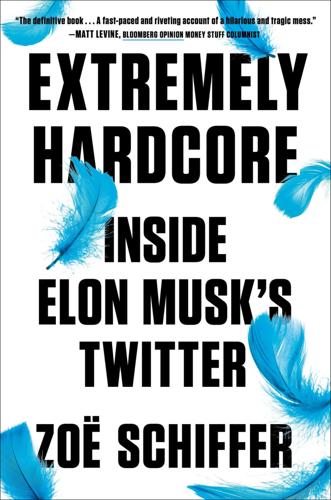
Extremely Hardcore: Inside Elon Musk's Twitter
by
Zoë Schiffer
Published 13 Feb 2024
As a result of the settlement, Musk was also required to have his tweets approved by a “Twitter sitter,” a securities lawyer at Tesla, if they contained material business information about the automaker. If there were lessons to be learned from tweeting indiscriminately, Musk did not care to learn them. In fact, his posts soon became even more inflammatory. In 2020, he denied the seriousness of the Covid-19 pandemic (“The coronavirus panic is dumb”), and shared transphobic beliefs (“Pronouns suck”), cultivating fandoms on right-wing corners of the internet. The successes of SpaceX and Tesla buoyed his reputation. Sure, he was posting in a manner that would get most other CEOs ousted, but his companies were innovative—and Tesla’s share price continued to reflect that.
…
But the severity and speed of the new policy made it seem like a loyalty test. For the last two years under Dorsey and Agrawal, employees had operated under the assumption that they’d be able to work remotely forever. In February 2022, before Musk had publicly expressed interest in buying Twitter, the company had filed a 10-K with the SEC saying that “even before the COVID-19 pandemic drove a shift to remote work, we recognized the need to evolve our workforce to achieve our purpose,” and noting that “recent employee surveys show that the future of work at Twitter is hybrid, with a substantial majority of our workforce planning to work from home full time.” Many employees had moved away from the Bay Area during the pandemic.
…
GO TO NOTE REFERENCE IN TEXT did not go unnoticed by the FTC: Interim Staff Report, “The Weaponization of the Federal Trade Commission: An Agency’s Overreach to Harass Elon Musk’s Twitter,” Committee on the Judiciary and the Select Subcommittee on the Weaponization of the Federal Government, March 7, 2023, judiciary.house.gov/sites/evo-subsites/republicans-judiciary.house.gov/files/evo-media-document/Weaponization_Select_Subcommittee_Report_on_FTC_Harrassment_of_Twitter_3.7.2023.pdf. GO TO NOTE REFERENCE IN TEXT Chappelle got Covid after hanging: Emily Kirkpatrick, “Dave Chappelle Tests Positive for COVID-19 After Hanging Out with Grimes, Elon Musk, and Joe Rogan,” Vanity Fair, January 22, 2021, vanityfair.com/style/2021/01/dave-chappelle-tests-positive-coronavirus-joe-rogan-grimes-elon-musk. GO TO NOTE REFERENCE IN TEXT “Anyone recognize this person”: Elon Musk, Twitter post, December 14, 2022, 10:50 p.m., twitter.com/elonmusk/status/1603235998263123969.

The Price of Time: The Real Story of Interest
by
Edward Chancellor
Published 15 Aug 2022
White also suggested that monetary policymakers might face trouble exiting from their ultra-low rates. A few years after White’s 2012 paper, the Fed embarked on a tentative tightening cycle but soon abandoned its attempt to take interest rates back to normal levels. Instead, the Fed returned to printing money and cutting rates, and after Covid-19 struck the policy rate went back down to zero. White anticipated that central banks would also be forced to play a greater role in the provision of credit. This too has come to pass. During the pandemic year of 2020, central banks moved closer to directly financing government spending, as White predicted (see Postscript: The World Turned Upside Down).
…
W., 72 Charles II, King of England, 33, 38 Chase National Bank, 87, 88 Chaumont, the Widow, 54–5 Child, Sir Josiah, xxii, 33–4, 35, 36–7, 37*, 38–40, 41, 43, 44, 202 China: authoritarian relapse in recent years, 288–9; back-alley banking, 281–3; capital controls in, 262, 266, 285; capital flight from, 285–6; and ‘commodity super-cycle (from 2010), 173–4, 255–6; corporate zombies in, 277, 281, 285, 289; corruption in, 270, 274, 275, 287–8, 287*; currency devaluation (2015), 227; debt-deflation in, 280–81; Deng’s reform era, 265, 266, 267; and digital currencies concept, 294; economic stimulus plan (2008/9), 270, 271–81, 282, 289, 292; export driven expansion, 132, 182, 267–70; and financial repression, 264–5, 265*, 266–81, 268*, 283, 286–9, 292; foreign capital inflows, 254–5, 256, 265–6, 267, 270, 270*; garlic bulb bubble, 173, 271, 282; ‘great divergence’ from West, 288; growing inequality in, 287–8, 287†; high occurrence of elevator accidents, 274, 274*; high-speed rail expansion, 275; housing boom during Covid pandemic, 310; increased share of world trade, 260; ‘iron rice bowl’ removed, 268; joins WTO (2001), 267; as leading producer of greenhouse gases, 277–8; long tradition of impressive investments, 276; ‘national team’ of state enterprises, 272, 272*; and new technologies, 177, 276, 283, 284; paper money invented in, 265; ‘Red Capitalism’, 280, 284, 292; savings/current account surpluses, 129, 268–9, 270; ‘shadow banks’ in, 266, 270, 282*, 283–5, 286; SHIBOR lending rate, 284; and taper tantrum (June 2013), 256, 284; treatment of Uighurs, 288; Trump’s trade wars with, 262; uncoordinated investment in, 266, 269, 270, 272–4, 275–9, 280–81; undervalued exchange rate, 267–8, 270, 271; unscrupulous vested interests, 270, 286–9; unstable bubbles in, 270, 271–4, 282, 288; unsustainable debt in, 270, 279–81, 282–5, 289; US loss of manufacturing jobs to, 261, 261*; vast investment boom in, xxiii, 128, 267–81, 280*, 282–9; wealth management product (WMP), 283–4; Wenzhou’s credit crunch (2011), 282–3 Chu, Charlene, 280 Citigroup, 232† Clapham, Sir John, 79 Clarida, Richard, 310 classical economists, 12, 14, 27–8, 31, 41, 85*, 130–31, 132–3, 183 see also Smith, Adam Clifford & Sons, 63 climate change, 255, 277–8 cloth trade, 14–15, 22, 23 Cobham, Thomas of, 19–20, 26 Coffin, Charles, 156 Cole, Christopher, 229*, 231 collateralized debt obligations (CDOs), 116, 227 collateralized loan obligations (CLOs), 227 Commerzbank, Germany, 245 compound interest, xvii, 8–9, 190, 200, 202 Conard, Joseph, 141* Connally, John, 251, 262 Consols (British bonds), 62–3, 65, 65†, 70, 77, 79, 80, 126 Conti, Louis Armand II, Prince of, 55 Coolidge, Calvin, 87, 92–3 corporate sector: benefits of low interest rates for, xxii; the financialized firm, 166–7; ‘good will’ on balance sheets, 169, 180; profits bubble in post-crisis USA, 183, 185, 211; ‘shareholder value’ philosophy, 163–6, 167, 170–71 corruption, 63, 258, 274, 275, 287*, 288; in China, 270, 274, 275, 287–8, 287*; Galbraith coins ‘bezzle’ term, 287 Coughlin, Father Charles, 242 Coupe, Mike, 160 ‘coveitise’, practice of, 24 Covid-19 pandemic, xxii, 224*, 304, 305–7, 309–10 Cowen, Tyler, 198 Coxey’s Army, 201 credit: in ancient Near East, 3, 5–10, 11, 15; and Borio’s financial cycle, 132, 134, 135; causes of booms, 42, 43, 44, 118, 176–7, 220; central bank dominion over markets, xxii, 292–3, 293*; collapse in quality in post-crisis decade, 222–4, 231, 233, 237–8; decline in quality during booms, 112, 116, 135–6; Defoe on, 28; emergence of modern credit cycle, 62–4; expansion in 1920s USA, 87–91, 92–4, 96–8, 112, 203; growth before 2008 crisis, 112–13, 114, 115, 116; Law’s credit theory, 47, 60; in medieval Italy, 22–3, 35; poor quality in expanding China, 266; as pre-dating barter, 3, 14; psychological elements, 64; rationing under Bretton Woods system, 291; strong growth of as red flag, 132, 135; unequal access to, xxii, xxv, 14, 15, 215; vast investment boom in China, xxiii, 128, 267–81, 280*, 282–9; Wenzhou’s credit crunch (2011), 282–3 Credit Suisse, 229 Creditanstalt, collapse of (1931), 93, 93*, 243, 261 Cruz, Gaspar da, 276 cryptocurrencies, 173, 177–9, 307–8, 312 Culpeper, Sir Thomas, the Younger, 34–5, 44 Culpeper, Sir Thomas, ‘Tract Against Usury’ (1621), 34, 35 Cyprus, 262 Dalio, Ray, 217, 229, 291 Datini, Francesco, 21–3, 24 Dawes Loan (1924), 91 Deaton, Angus, 213 debt: after 2008 crisis, 138–9, 237, 237†; ancient debt tablets, 5–6; ‘balance sheet recessions’, 191; cancellation/jubilees/clean slates, 9, 300; dangers of cheap credit, 32, 44; debt bondage, 5, 9, 18; ‘debt supercycle’, 135; ‘debt trap’, 43, 135, 280; debt-deflation, 98–9, 100, 119, 280–81; debt–service ratio, 135; ‘evergreening’ of bad debts, 136, 145–6, 280; late payment penalties, 10, 14, 25; Lord King on (2019), 304; as missing link in secular stagnation narrative, 135–6, 138–9; mortgage equity withdrawal, 112–13, 191, 205; problem of compound interest, 8–9; Proudhon on, xvii, xviii; revival of subprime market, 215, 221, 224; student debt ‘bubble’, 212, 213; tax structures favour over equity, 164; transferable/heritable in Babylon, 7 deflation: after 1929 Crash, 98–9, 100, 101, 105, 108; Austrian economists’ view of, 100, 101, 105, 113, 133–4; crisis of 2008 revives fears of, 119, 122; debt-deflation, 98–9, 100, 119, 280–81; in early-1920s Britain, 85–6; and Fed’s post-2008 policies, 236–8; ‘forgotten depression’ (1921), 84, 86, 100, 143; and high rates of interest, 42, 43, 64; impact of zombies, 237, 237†; impact on working people, 99–100; in Japan from 1990s, 100–101, 107–8, 114, 119, 135, 136, 145–6, 147, 148, 182, 191, 193; in late nineteenth century, 78–80, 99, 101; in post-Great War period, 84, 85–6; as preoccupation of modern central bankers, xxiii, xxv, 76, 112, 115, 115†, 122; Say’s view of, 99; and Victorian era, 76; view of as good/not harmful, 99–101, 113–14, 132; and Wicksell’s view of interest, 42 Defoe, Daniel, 28, 46, 47, 56, 57, 202, 308 Del Monte Foods, 222 democracy, 293, 293†, 296, 297; the old as largest voting cohort, 211–12; rise of populism, xxii, 299; weakening support for, 299 demographics: ageing societies, 29, 127; ‘Bank of Mum and Dad’, 212; generational impact of 2008 crisis, 211–12, 213; Alvin Hansen on, 126; and interest, xxiv, 10, 12, 126–7, 131, 133; largest voting cohort as old, 211–12; life expectancy statistics, 198, 213; and secular stagnation argument, 125, 126, 129; student debt ‘bubble’, 212, 213; and ‘time preference’ theory, 29 Demosthenes, 18† Deng Xiaoping, 265, 266, 267 Denmark, 242, 244, 245, 247 Deutsche Bank, 147* Dodd, David, 90–91 Dodd–Frank Act (2010), 232 Dogecoin, 308 Dollar Standard, 118, 251–2, 253, 261, 262–3, 267 Dostoyevsky, Fyodor, 294 Dotcom bubble, 111–12, 136–7, 176, 204, 206 double-entry bookkeeping, 21–2 Douglas, C.
…
(ketchup-maker), 161, 169 helicopter money, 112, 131 Hilferding, Rudolf, Finance Capital (1910), 158 Hilton, Paris, 178 Hirst, Damian, ‘Golden Calf’, 208 Hoag, David, 246 Hoenig, Thomas, 116 Holland, Henry Lancelot, 75 Holmes, Elizabeth, 149 Homer, Sydney, 4, 11, 68, 109 Hong Kong, 175 Hoover, Herbert, 92, 100, 141–2 Horan, Hubert, 149 d’Horn, Antoine-Joseph, Count, 51 Houellebecq, Michel, 309 Hudson, Michael, 9* Hume, David, 12, 27, 41, 45, 85*, 130–31, 132–3 Hungary, 253 IBM, 166 Iceland, 252, 253, 253*, 262, 300–301 Icelandic Central Bank (ICB), 300 Immelt, Jeff, 170–71 India, 254–5, 258 Indonesia, 258 industrial sector: canal construction mania (1790s), 69, 74; Chinese dumping of surpluses, 277, 280–81; electrification, 89; expansion from 1750s in Britain, 62–3; extended supply chains, 261; high demand in developing world, 128; impact of Great Depression on, 142–3; mining stocks, 79; new technologies in 1920s, 89, 90, 96, 100; production gluts in China, 276–7, 280–81; time in production, 14–15, 22, 95, 95† inequality: Bastiat’s view, xviii–xix; central bankers and responsibility for, 214–17; in China, 287–8, 287†; and Covid-19 pandemic, 309–10; and elite displays of wealth, 209–10, 212; and ‘financial repression’, 287–8; and financialization, 203–8; good and bad types of, 299; and Hayek, 296, 299; impact of crisis on the 99 per cent, 210–13, 215–17, 237; and inflation targeting, 123; interest as always about justice, 202; Marshall on deflation, 99–100; moral arguments over interest, 17, 201–2; multi-decade decline in from Great Depression, 203; multi-decade increase from early 1980s, 203–17, 204*; Piketty’s theory on, 216–17; in post-crisis Iceland, 301; rich as benefitting from easy money, 12*, 44, 202–5, 205, 206–10, 211, 214–17, 237; as rising in post-crisis decade, 44, 206–17, and secular stagnation argument, 205–6; seventeenth century writers on, 34, 36; stress levels after 2008 crisis, 210–11; trickle-down effect, 55; unequal access to credit, xxii, xxv, 14, 15, 215; in USA of 1920s, 203 inflation, xxiii, xxv; and asset price bubbles, xxiii, 134, 135; ‘Cantillon effect’, 60*; case against, 108*; and Covid-19 pandemic, 310; global aspect of, 122; Greenspan’s focus on, 110–14; Hayek on, 302; inflation targeting, 119–20, 121–3, 241; and Law’s ‘System’, 56–7, 58, 59–61; and low rates of interest, 42, 43, 56–7, 58, 59–61; and ‘natural rate’ of interest, 133–5; in post-Great War period, 84; purged by high interest rates, 84; return of in 1960s, 302; after Second World War, 311; in USA during 1970s, 108–9; Volcker’s ‘practical monetarism’, 109–10; and Wicksell’s view of interest, 42 insurance: ‘catastrophe bonds’, 222; credit default swaps (CDS), 219, 221; ever-escalating life premiums, 198–9, 199*; and low-interest regimes, xxi, 193, 195, 196*, 245; and moral hazard, 220, 233; underwriting, 219–20, 219†, 233 interest: ancient connection with rent, 7; Austrian school’s view, 95–6, 100, 101, 105, 108; calculating of how much due, 6, 14; central banks’ influence on long-term rates, 133, 134–5; concealed in bills of exchange, 24; and ‘creative destruction’ idea, 140–43, 143*; determining of rate level, 10–13; feedback loop with globalization, 260–61, 311; as hard to predict, 310–11; Hazlitt on price system, xx; as at heart of capitalism, xxii, xxv, 16, 28, 141, 297; high levels under Volcker at Fed, 109; and inequality in modern capitalism, 17; inversely related to capital value, 31, 43, 44, 52–61, 88, 116*, 158, 172–5; and length of ‘time in production’, xxiv, 14–15, 16, 22, 95, 95†; loans related to consumption, 6, 9*, 25, 28–9, 30; long-term rates in US (1945–2021), 134; lucrum cessans (foregone profit) concept, 25; moral arguments over inequality, 17, 201–2; paid by taking possession of collateral, 6–7; politicization of rate setting, 85–6; rate of and cultural level of a nation, 13, 29; rates set by custom and law, 11, 12; ‘real’ and ‘monetary’ factors, xxiv, 10, 12–13, 41, 131, 132–3, 133*, 138–9; as the ‘time value of money’, xxiv, xxv–xxvi, 10, 14–15, 16, 20, 22, 26–7, 28–32; variety of different rates, xxv, 12, 13, 14; Thomas Wilson’s definition, 26–7, 28, 30 see also ‘natural rate’ of interest; usury interest, functions of, xxiii–xxvi; allocation of capital, xxi, xxiv, xxv, 11, 15–16, 32, 139, 141–50, 151–5, 264, 266; capitalization of wealth, 139, 173–87; discounted value of asset’s future income, 28, 90–91, 173, 297; distribution of wealth, xxv, 139, 201–17, 237; financing of companies, 139, 157–71; level of savings, xxiv, xxv, 139, 188–93, 194–9; measurement of risk, xxv, 139, 176–7, 218–19, 220–34; as the ‘price of leverage’, xxiv, xxv, 135; regulation of international capital flows, xxv, 139; Schumpeter’s view, 141; valuing of long-lasting assets, 15 interest, history of, xxii–xxiii; 1825 banking crisis, 64–7, 75; anticretic interest, 6; attitudes to usury, 17–24, 25–6, 200–201, 219; Babylonian origins, 3–4, 14–15; barter-to-money myth, 14; Child’s abatement of interest proposals, 33–4, 35, 36–7, 38–40, 41, 43, 44; consumer and commercial lending distinction, 6, 9*, 25–6; decline of rates in late Middle Ages, 35, 36; defence of interest in seventeenth century, 37, 38–41, 42–4, 236†; emergence of modern credit cycle, 62–4; etymologies of interest, xvii–xviii, 4–5, 7, 11, 17, 18, 25, 26, 200; European rates (1200–1800), 36; Fed’s tightening (1928), 108, 261; ‘forgotten depression’ (1921), 84, 86, 100, 143; gradual rate decline in early modern Europe, 49; interest as much older than coined money, 3–4, 14; invention of compound interest, 8–9; low rates in Amsterdam, 35–6, 39; low rates in late-nineteenth century USA, 157, 158–9; new concept of at start of modern era, 27–8; post-1571 debates on excessively high rates, 34–40; post-Great War period, 84, 85–6; Proudhon-Bastiat debate, xvii–xix, xxi, xxii, xxv, 9; speculative manias (1630s-1890s), 64–6, 67–72, 73, 74, 75–6, 77–8, 79–80; stability of rates in ancient world, 10–12 see also Mesopotamia, ancient; Middle Ages; Mississippi bubble; Near East, Ancient; price-stabilization policy of 1920s interest, ultra-low/excessively low rates: and 1825 banking crisis, 64–7, 75; in 1980s/1990s Japan, 105–7, 106; Bagehot’s views, 64, 66, 67, 68, 69, 72, 73, 80–81, 220, 233; under Bernanke after 2008 crisis, 124, 131, 133, 137–8, 153, 155, 181–3, 207, 215, 230, 238–9, 240, 243–4, 262; under Bernanke before 2008 crisis, 111–12, 113, 115–17, 115†, 118–19; and British government debt conversions, 65, 65*, 69, 79; Buffett on, 308*; buyout barons as beneficiaries of, 160–63, 161*, 183†, 204, 207, 222, 237; Cantillon’s warning over, 58, 60–61; and capital-intensive industries, 62–3; as common feature of asset bubbles, xxiii, 116*, 123, 135, 172–87, 180, 220; consumer behaviour affected by, 32; and ‘financial repression’ in China, 266–81, 268*, 277*, 283, 292; ‘financial repression’ term, 191; under Alan Greenspan, 111, 112, 113, 114, 115, 117, 134–5, 162, 186, 190–91, 204, 226–7, 238, 252–3, 267; Icelandic Counterfactual, 300–301; impact on emerging markets, xxiii, 253–60, 262–3; impact on stock market/bond investors, 193–4; and inequality, 205–17, 299; in late nineteenth century, 78–80; and Law, 49, 52–4, 56*, 58–61; ‘low rates beget lower rates’ thesis, 44, 135, 136, 139, 206, 231, 234; low real rates in 1920s USA, 87–91, 89, 92–4, 96–8, 203; misallocation of capital by, xxi, 32, 43, 114, 136, 141–50, 151–5, 266–81, 289; during Napoleonic Wars, 69–70; productivity collapse in post-crisis decade, 150–51, 152–3; ‘reversal interest rate’, 236; rich as benefitting from, 44, 202–10, 211, 214–17, 237; and rising profits in post-crisis USA, 183, 185, 211; and risk taking, xxi, 52–61, 64–73, 77–81, 121–2, 135–9, 145, 149, 176–9, 220–34, 283, 285, 291–2; robber baron era in USA, 156–9, 203; and saving, 44, 77, 190–93, 194–9, 205–6; and secular stagnation narratives, 126–7, 129, 131, 132–9; seventeenth-century debates on, 34–44, 236†; trouble exiting from policy, xxi–xxii, 57–9, 60–61; ‘unicorns’ feed on, 148–50, 153, 155, 173, 176–7; unintended consequences, xxi–xxii, 32, 44, 137–9, 238, 297–8; Paul Volcker’s view of, 108–9; as warning sign, 13, 114; warnings from economists at BIS, 113–14, 131–4, 135–9, 153; William White on, 114; and ‘yield-chasing’, 65–6, 67–9, 114, 116, 136, 221–6, 230–31, 230*, 233–4, 237–8, 256, 305; zero interest rate policy (ZIRP), xxi, 123, 131, 137–8, 141, 146, 172–3, 191, 192; and zombification, 146–8, 153, 155, 237, 240, 277, 289 see also Mississippi bubble; negative interest rates International Dynamite Trust, 159 International Monetary Fund, 119, 144, 147, 168 investment: and China’s rapid expansion, 266–7, 269–70, 271–81; Chinese stimulus plan (2008/9), 270, 271–81, 282, 289, 292; collapse of in post-crisis decade, 152; easy money as incentive for undue risks, xxi, 136, 149, 220, 221–4, 230–31, 283, 285, 291–2; ‘equity risk premium’, 176*; in listed ‘yieldcos, 222; long-term bonds, 69, 131*, 193, 224–6; ‘malinvestment’ term, 32, 95, 148; meme stocks, 307; and production gluts in China, 276–7, 280–81; with returns in distant future, 148–50, 158, 176–7; Terborgh on, 125*; ‘unicorn’ start-up companies, 148–50, 153, 155, 173, 176–7; valuation of by interest, xxiv, xxv, 30–31, 173; White on impact of low interest rates, xxi see also asset price bubbles Ireland, 144–5, 225, 253, 279 Irving, Washington, 55† Israel, ancient, 9, 17, 200 Istel, Yves-André, 214 Italy, 21–3, 23, 35, 144–5, 147–8, 225, 293, 304 Japan: ageing population in, xxiv, 29, 198; deflation since the early 1990s, 100–101, 107–8, 114, 119, 135, 136, 145–6, 147, 148, 182, 191, 193; falling savings levels in, 192; first foreign loan (1870), 78; great bubble economy (1980s), xxiii, 105–8, 145, 182, 184, 271, 273, 279, 285–6; inflation targeting in, 119, 122, 241; negative interest rates in, xxi, 29, 122, 224, 225, 242, 244–5; public debt in, 291*; quantitative easing in, 241, 242, 294; ‘retirement gap’ in, 198; zaitech practitioners, 106, 182, 185; zombification of economy, 145–6, 147 Jevons, W.

Slouching Towards Utopia: An Economic History of the Twentieth Century
by
J. Bradford Delong
Published 6 Apr 2020
In the United States the Evening World newspaper in New York reported, “It is not deadly, not even necessarily dangerous, but it will afford a grand opportunity for the dealers to work off their surplus of bandanas.” Deaths in the United States peaked in January 1890. Globalization would continue to bring plagues, and the plagues spread rapidly throughout the world. More than 1 million people each were killed by the Asian flu of 1957–1958 and the Hong Kong flu of 1968–1970. The COVID-19 pandemic that began in 2020 has so far killed an estimated 4.5 million, as of this writing, and the slow-moving plague of HIV/AIDS has to date killed around 35 million. But by far the most deadly plague in modern history remains the Spanish flu of 1918–1920, which killed perhaps 50 million people out of a world population then approaching 1.9 billion—about 2.5 percent.8 It was not, actually, a Spanish flu.
…
And so it came to pass that its attempt to head off a depression in the future brought one on in the present.9 Previous depressions had been—and future depressions would be—far smaller than the Great Depression. In the United States, the most recent economic downturns had inflicted significantly less damage: in 1894, the unemployment rate had peaked at 12 percent; in 1908, at 6 percent; and in 1921, at 11 percent. The highest unemployment rate reached between World War II and the COVID-19 pandemic of 2020 was 11 percent. In the Great Depression, the US unemployment rate peaked at 23 percent—and at 28 percent for nonfarm workers (in the family-farm sector, “unemployment” is harder to measure). Some of the greatness of the Great Depression was a result of the relative expansion of the nonfarm sector at the expense of the family-farm sector: working from the best available data, I estimate that the nonfarm unemployment rate peaked at 14 percent in 1921, and working backward in time, at 8 percent in 1908, 20 percent in 1894, and 11 percent in 1884.
…
Why did social democracies that had nationalized the “commanding heights” of their economies use that power not to accelerate technological progress, and keep employment high, but rather to prop up increasingly obsolete “sunset” industries? When judged by a technocratic logic of efficiency, all politically popular arrangements will turn out to be lacking to some degree. It is the broadness of the discontent and the rapidity of its reemergence after a decade that, compared to the Great Recession of 2008, or the COVID-19 plague of 2020–2022, does not appear to have been that large a shock—it is that that strikes me as interesting. A tripling of global-north living standards between 1938 and 1973 had not brought about utopia. Growth gets interrupted and slowed. And in less than a decade, all of this was felt to indicate that social democracy needed to be replaced.

I Want to Be Where the Normal People Are
by
Rachel Bloom
Published 17 Nov 2020
A NORMAL AFTERWORD I turned in my finished manuscript for this book on March 24, 2020, very pregnant and very satisfied with myself. It felt perfect that I finished a book all about my relationship with normalcy; after all, with a new human soon entering my life, my whole concept of “normal” was about to completely change. But fuck, I had no idea. As my due date drew closer, the COVID-19 pandemic was getting bad in the US, with New York City becoming the world’s epicenter. Because of this, I was getting induced to get ahead of the potentially devastating Los Angeles hospital rush as well as a potential ban on fathers being in the delivery room. Despite the state of the world, I let my husband do the bulk of the “pandemic worrying” while I focused on basking in the glow of my finished book and debating which song from Sunday in the Park with George would work best on my birthing playlist.
…
When we checked into the hospital, I had a mask on with a big smile beneath it. But then My daughter was born and she couldn’t breathe because she had fluid in her lungs so they put her on a ventilator in the NICU and that same night she was born I found out my songwriting partner Adam was in a New York hospital with COVID-19 and was also on a ventilator which was just so on-the-nose and as his life and my daughter’s life felt tethered together the concept of mortality suddenly hit me in a way it never had before and meanwhile the floor below the maternity ward was being turned into a COVID-only floor so everything was changing around us and furniture was being stored in the hallways and my doctor came to my room to check on me after birth and when she told us about maybe quarantining from her family to not infect them she burst into tears and then after we left the hospital my daughter was still in the NICU but my husband wasn’t allowed back because of COVID regulations so he sanitized everything that had been in our hospital bags including microwaving some papers because who knows how the virus spreads and he did this as I went back and forth from the NICU and meanwhile I hadn’t taken a shit in like five days but then we finally got to take our daughter home and Adam was getting better and I passed out in a blissful nap on the bed with the baby and the dog.
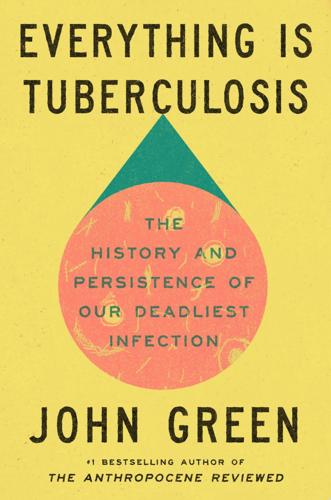
Everything Is Tuberculosis: The History and Persistence of Our Deadliest Infection
by
John Green
Published 18 Mar 2025
That year, in fact, more people died of TB than died of malaria, typhoid, and war combined. Just in the last two centuries, tuberculosis caused over a billion human deaths. One estimate, from Frank Ryan’s Tuberculosis: The Greatest Story Never Told, maintains that TB has killed around one in seven people who’ve ever lived. Covid-19 displaced tuberculosis as the world’s deadliest infectious disease from 2020 through 2022, but in 2023, TB regained the status it has held for most of what we know of human history. Killing 1,250,000 people, TB once again became our deadliest infection. What’s different now from 1804 or 1904 is that tuberculosis is curable, and has been since the mid-1950s.
…
Like the needle swallowed by the tailor’s assistant, it seemed that consumption could end up anywhere for any reason. Skip Notes *1 It seems likely that seals infected with TB carried the disease from Afroeurasia to the Americas. *2 The average case of influenza, meanwhile, spreads to between one and two further people. For Covid-19, it’s between 1.4 and 2.4. *3 “Tubercle” describes a rounded, swollen shape. Potatoes are tubercular, for example. *4 It’s no coincidence Sir Arthur Conan Doyle, who created the deductionist detective Sherlock Holmes, was—as we’ll learn later—a physician and tuberculosis researcher.
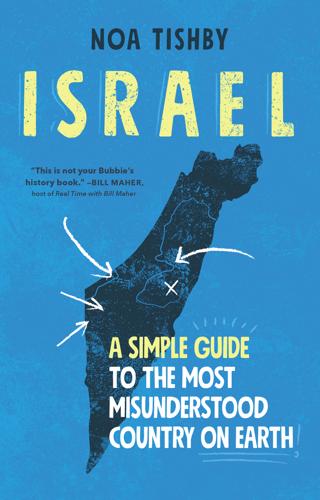
Israel: A Simple Guide to the Most Misunderstood Country on Earth
by
Noa Tishby
Published 5 Apr 2021
Twenty-five percent of these investigatory mechanisms (eight of them) have focused exclusively on Israel.10 Various other agencies of the UN, which are designed to focus on specific professional subjects, also tend to single out Israel for criticism. For example, member states of the World Health Organization, which should really be focused on keeping the world healthy (How are we doing on HIV or COVID-19, for example? Are we done with them?), pushed for a resolution that forces the organization to issue only one country-specific report annually. I’ll let you guess which country is singled out for criticism by the WHO: Israel, of course.11 Just so we are clear, Israel is a world leader in universal healthcare and medical technologies, not to mention being there for the wounded children of Syria.
…
There’s been an uptick in killings, harassment, vandalism, assault, and fatalities of Jews in the US. In the incredible social justice demonstrations that followed the murder of George Floyd, people spray painted “Jews we’re coming for you” at a park by my apartment. And, of course, there are the millions of posts and tweets about how the Jews are the ones who actually created COVID-19. Jews are only 2 percent of the United States population, but they are the target of 50 percent of national religion-based hate crimes. So, okay, antisemitism is still a thing, but it still seemed too simplistic to connect it to Israel hatred. Maajid continued: “Why do people judge Jews by one standard and the rest of the world by another?
…
My mom never asked me to do anything to follow in her footsteps, but her actions spoke louder. My words are the fulfillment of that promise not asked. THIS IS A LOVE SONG Midway through writing this book, the world tipped into the year 2020. It was June, and Los Angeles was under lockdown orders as COVID-19 was making its way through the known universe. I was holed up in our bedroom, trying to make my deadline for this book in the sporadic moments I wasn’t homeschooling our 4.5-year-old Ari, or cooking, cleaning, building Lego, cooking, cleaning, baking, cleaning, making art, or trying, like everyone else, to stay sane.

British Rail
by
Christian Wolmar
Published 9 Jun 2022
Rather, it explores how British Railways was a victim of its history and of the whim of politicians who had little understanding about its achievements and, indeed, its real failings. Many of Major’s arguments will be assessed. As the privatization experiment is now a quarter of a century old – half the time of BR’s existence – it has been given a good opportunity to prove its worth. In fact, as I write, and indeed since early March 2020 when the Covid-19 pandemic began to reduce numbers using the railway, the industry has been in a state of turmoil unprecedented in peacetime. The railway is in a state of chaos, wrecked financially by the pandemic and by the subsequent government messaging, which turned a crisis into a long-term disaster by terrifying potential passengers about the risks of taking the train.
…
As I was finishing this book in the summer of 2021, the government at last published a long-awaited review of the industry. The process which had started in 2018 under the chairmanship of Keith Williams, a John Lewis executive and former British Airways chairman, had been much delayed both by arguments within government and by the Covid-19 pandemic. Taking the form of a government White Paper, Great British Railways set out plans for the future of the railway. The government is proposing to create a new ‘guiding mind’ for the industry – which is to be called Great British Railways, since it would be too embarrassing to simply reuse the British Railways name.
…
A. 62 Cab Secure Radio 296 Callaghan, Jim 149–50 Calvert, Margaret 110 Campbell, Ian 171 camping coaches 50–51 Cannon Street station rail crash 297 Capitalcard 281–2, 283 Captials Limited 35 car ownership 56, 78, 131–2, 187, 299, 322–3 Carlisle 67 Casey Jones 231 Castle, Barbara 128, 129–34, 135, 136, 156, 195–6, 271 catering cafeterias and tea trolleys 37 HST 180 InterCity 300, 301 privatization 231–3 sandwiches ix, x, xvii Causebrook, Mark 268 Centre for Policy Studies 246 Channel Tunnel 332 Channon, Paul 236, 263, 333 Charing Cross station 237 Chiltern line 316 City Link 192–3 Clapham Junction rail crash 291, 292–6 CLASP (Consortium of Local Authorities Special Programme) 116–17 Clean Air Act 1956 33 clock-face timetabling 163 closures 1970s 139–42 1980s 324–6 Beeching 81–2, 83, 85–94, 95–101, 105–6, 138 Blue Paper 143–4, 156 by stealth 72, 325–6 Castle 132, 133–4 cost-benefit analysis 156–7 in privatization legislation 264 reopenings 324–5 Serpell report 152–3, 155, 260 Settle–Carlisle line 261–4 Stedeford committee 80–81 1960 White Paper 81 1974 White Paper 148 1977 White Paper 148, 149 coach services 190–91, 277, 299 coal wagons 92–3 Cockerell, Christopher 77 commercial railway 24, 135, 152, 258 common carrier obligation 24, 65 computerization 203–4 Concorde 175 Conran, Terence 109 consultants 239–40 container traffic 86, 92, 93, 131 continuous welded rail 201, 253, 281 Coopers & Lybrand 247 Cornwall Skippers 271, 319 cost-benefit analysis 61, 156–7 Cotton, Ron 262 Coventry station 10, 118 Covid-19 pandemic xv, 342 Crosland, Tony 144–6, 148 Cross Country 185, 186, 298 Cuisine 2000 232, 233 Cyclists Special (British Transport Film) 49 Daily Mail 172 Dalgleish, Angus 244 Dartmoor 72 Davies, Hunter 94, 95, 96 Day, Robin 109 Deltic diesel locomotives 5, 15, 84–5, 95, 185, 301 Deming, Edwards 313 Denning, Lord 78 Department of the Environment 353 closures 140 rail to road conversion 245 see also Ministry of Transport Department of Transport 353 Capitalcard 281 Great British Railways xvii rail privatization 331, 334, 335 see also Ministry of Transport Derbyshire, Nick 238 Design Panel 107, 111 Design Research Unit 107 The Development of the Major Railway Trunk Routes (second Beeching report) 95–8, 99, 101, 133, 240 diesel locomotives 5, 13, 84, 120–21, 125, 252 and APT 170 Deltics 5, 15, 84–5, 95, 185, 301 diesel-electrics 64, 125 diesel-hydraulics 64, 125–6 HST 162, 165, 176–86 and loading gauge 27 Modernisation Plan 63, 64–5, 72–3, 233 staffing 5–6, 123–4, 206–7 diesel multiple units 28–9, 121, 159, 269 Blue Pullmans 159–62 Pacers 269–71, 318–19 Sprinters 272–3, 319, 323 disabled travellers 43, 114 Disconnected!

Green Gold
by
Sarah Allaback
Published 14 Mar 2025
In the United States, which consumes about half of the world’s avocado exports, the market has swelled from $2.1 billion to $7 billion in the past decade. There was also sobering news: a ring of avocado thieves in Kenya had sent shiploads of tasteless, unripe Hass into European markets, and during the COVID-19 pandemic, avocados had rotted in Asian ports due to supply chain backups. While the Hass avocado is only the world’s eighth most popular fruit export, far below the banana, apple, and orange, when it comes to the rapid growth of its market, no other fruit matches it. Global exports were valued at $6.6 billion in 2021, making avocado the world’s fourth most valuable fruit export.
…
Today, China imports an average of 34,800 tons of avocados each year.21 Marguerite Wang, the general manager of a Chinese produce importer based in Shanghai, was at the congress looking to buy. A popular national chain in China had added avocado boba tea to its menu and was struggling to find enough avocados to meet the demand. Jacinta Foley, who ran a large Australian avocado farm owned by a Canadian teachers’ pension fund, was looking to sell. During the COVID-19 pandemic, Australian avocado farmers had more avocados than they could eat or export; piles of fruit rotted in fields. Foley had her eyes on Japan, where she was working to find new customers. While Hong Kong remains Australia’s biggest importer, avocado exports from Australia to Japan surged 161 percent between June 2022 and June 2023, to a total of 277 metric tons.22 French agricultural economist Éric Imbert warned congress attendees that the supply of Hass avocados may soon exceed demand.
…
Eliot, 37, 51, 56–57, 107, 136–38, 167–68, 4i Colín V33, 168, 197 Collins, Guy N., 13–14, 66, 67, 68 Condit, Ira J., 62, 64, 66 cookbooks, 54, 55, 63, 105, 127, 128, 196, 209, 228, 295n1. See also recipes Coolidge, D. W. (Douglas William), 7, 10, 15–17, 19, 269 Cooper, William C., 136, 4i Cornell, Ralph, 27, 28, 29 Costa Rica, 5–7, 84–85, 132, 152 cottony-cushion scale (pest), 40, 41 COVID-19 pandemic, 257, 258 Crawford, Carl, 130, 131, 132, 136–38, 139, 167–68, 4i Crosby, Leigh, 103, 108–9, 112 crossbreeding, 133, 176, 177. See also hybrid varieties Cuba, 51–52, 109–10 culled avocados, 104, 114 Cumes Sajvin, Martín, 161, 162, 163–64, 265 Dalí, Salvador, 228–29 dates (fruit), 31–32, 45, 64, 71, 80, 111, 115 deforestation, 259–61, 263 Dickinson avocados, 57–58, 70, 89, 147 Dion, Matildi, 26, 76 disease, plant (generally), 129, 154, 161.
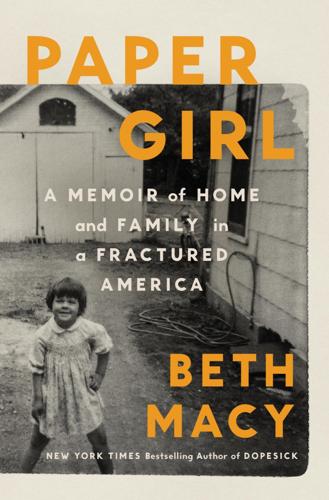
Paper Girl: A Memoir of Home and Family in a Fractured America
by
Beth Macy
Published 6 Oct 2025
Felled by a stroke the week of the 2020 election, she was already in hospice by the time I made the seven-hour drive and landed at her bedside. Her kids and grandkids took turns rearranging her pillows, wetting her lips with a sponge, and watching for changes as her small chest heaved, her breath uneven and crackling. It was the height of COVID-19, and we could only visit in pairs, fully masked and gowned. Mom had always been the glue of our family. She was stubborn, no-nonsense, and rock-solid, her footfall so pronounced that the floor vibrated when she moved from her kitchen sink to the stove. If you were a teenager with a hangover, she was not above vacuuming the carpet in front of your bedroom door, over and over, until you hauled your ass out of bed and commenced being a productive human being.
…
During my first reporting trip home, I nabbed a birdhouse that a local artisan had fashioned into a lamp. It had the look of something you’d see in a catalog for $400, and it seemed like the perfect representation of my hometown as I once knew it, in that it was as useful as it was lovely, and it only set me back fifty bucks. In recent years and especially during COVID-19, newcomers began migrating to Urbana, pushing the population up slightly to around 11,500 people,[1] drawn by the town’s relatively low housing prices, its attractive town square, and the fact that you can commute to both Dayton and Columbus in roughly an hour. The newcomers are responsible for much of the town’s newfound outward vibrancy.
…
See also queer community; trans community decline, 69, 70, 293 polarization, 63–65, 108, 110–12, 154, 158, 161–65, 168–70, 182–83, 185, 224–25, 227–30, 257, 305 as support system, 5, 15–18, 73, 83, 188–89, 265, 268 community college, 3–4, 82–84, 86, 92, 94–95, 103, 200 Confederate flag, 13, 148–49, 153 Congress, U.S., 48, 84 with demographic shift, 81 Republican Party and, 30, 55, 63, 64, 200–201, 207 Conklin, Kenneth, 198 Conn, Steven, 148–50, 160–61 Consortium on School Research, University of Chicago, 214 conspiracy theories, 15, 107, 171, 185, 203, 291, 301 Great Replacement Theory, 176, 187, 307 January 6, 186–87 presidential elections, 14, 62, 174, 255 QAnon, 169, 172–75, 178, 183–84, 282 construction, 75, 84, 108, 199, 215, 268, 304 corporations, 11, 54, 114, 156, 181, 186, 307 politicians and, 40, 49 social media, 55, 56, 165 Cookie (sister), 37, 51, 62, 65, 162, 260 childhood, 129 with family, 49–52, 110–12, 114, 115, 117, 119, 121–23, 125, 127–28, 130, 135–37, 139, 146, 238, 243, 278–81 homophobia and, 110–11, 140 married life, 49–50, 121–22, 130, 135–36, 278–79 with religion, 49–52, 115–17, 119–20, 128, 135–37 corruption, political, 176–77, 180 cosmetology program, 199–200, 264 COVID-19, 16, 21, 61, 62, 163, 211 absenteeism during, 89, 215 vaccines, 64, 108, 135, 243, 288 CPS. See Child Protective Services Craigslist, 53 Cramer, Kathy, 45, 111 creative destruction, 9 credit cards, 12, 232, 235 Cress, Cassie, 18, 18, 104, 104, 221–23, 222, 260–61 crime, 52, 55, 129–30, 175, 187, 250 fraud, 174, 177, 181 violent, 147, 182 Cronkite, Walter, 38, 39 cultists, 177, 180, 184 cults, 119, 178 culture wars, 117, 141, 159 Curnutte, Alice (mother), 167–68 Curnutte, Dave, 167–69, 171–72, 224, 228–30 Curry Institute, 66 D Dale, Mikey, 101, 101, 105 Damewood, Kim (Beth Sherman’s mother), 34, 72, 73, 276, 277 Davis, Angela, 150 deaths, 92, 181, 183, 300.

Radiant Rest
by
Tracee Stanley
Published 9 Mar 2021
This existence leaves very little room for exploration of our internal landscape, devotion to practice, spiritual study, the things that bring us joy or relaxation just for the sake of our own sanity and well-being. MAKING CHOICES Tech companies are banking on the fact that we would rather distract ourselves than be present to life. This was evident during “stay-at-home” orders at the beginning of the 2020 COVID-19 pandemic, when people ran to platforms like Instagram, Zoom, and Netflix to the point that they became overloaded and kept crashing. We are constantly making choices. But what influences the choices we make moment to moment? This reminds me of the simple but profound concept of desire and the idea that the seed of every thought, deed, and action is desire.
…
So why not make life a radiance sadhana? Weaving the Householder’s Flow into your practice can soften the masculine edges of discipline and transform discipline into devotion. Have compassion for yourself, and keep the thread of sadhana alive even when you can’t do a long practice each day. Under stay-at-home orders during the COVID-19 pandemic, we were all forced into a global sadhana of sorts—months of changing our habits, surrendering our preferences, and getting still. As a collective, we all endured something that we previously might have thought was intolerable. Many people faced the discomfort, adapted, and became stronger as a result.
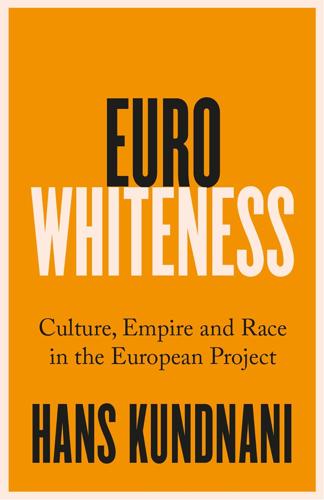
Eurowhiteness: Culture, Empire and Race in the European Project
by
Hans Kundnani
Published 16 Aug 2023
It is difficult to square the idea of nationalism as a “dark, elemental, unpredictable force of primordial nature, threatening the orderly calm of civilized life”, as Partha Chatterjee puts it, with the experience of anti-colonial nationalism such as that in India at the time of its independence struggle.37 Seeing nationalism in purely negative terms obscures what Chatterjee calls its “emancipatory aspects”.38 By exaggerating the differences between nationalism and regionalism, Europeans—and especially Germans, who tend to see the history of the nation state through the prism of their own experience with it—have also created a blind spot around the possibility that European regionalism could resemble European nationalisms. A good example of this blind spot is the way in which the EU responded to the COVID-19 pandemic in 2020. At the beginning of March, as the virus swept through Europe, with Italy hit particularly badly, France and Germany imposed restrictions on the export of personal protective equipment (PPE). This was generally seen by “pro-Europeans” as dangerous nationalism.39 A week later, when these restrictions were lifted and the EU itself restricted the export of PPE beyond Europe, it was seen as a triumph of European unity.40 “We need to help each other,” European Commission president Ursula von der Leyen said.41 But there seemed to be little awareness among “pro-Europeans” that the EU had done precisely what they had criticised member states for, except at a regional level—and with potentially even worse consequences for the world.
…
See migration Atlantic slave trade, 50 Attlee, Clement, 165 Austro-Hungarian empire, 115 Austria, 142 Azov Battalion, 149 Baltic states, 129, 130, 147 Banks, Arron, 156 barbarians, 43, 44, 55–6 “barbarism”, 43, 44, 64, 77 Barroso, José Manuel, 13–14, 107 Bataclan massacre (Nov 2015), 140 Battle of Tours (732), 44 BBC, 149, 163, 176 Beck, Ulrich, 17–18, 69, 113, 115 Begum, Neema, 161 Belarus, 145 Belgian Congo, 62, 76 Belgium, 71, 74, 75, 76 Ben Ali, Zine El Abidine, 110, 128 Berlin Conference (1884–5), 59, 75 Betts, Paul, 77, 79 Bhambra, Gurminder, 170, 171, 173, 177 Bickerton, Chris, 99–100 Blair government, 168 Bolkestein, Frits, 112, 142 Bonaparte, Napoleon, 55 Böröcz, József, 117–18 Borrell, Josep, 148, 150, 151 Braudel, Fernand, 50 Brexit, 8–11, 153–79 “Breaking Point” poster, 156 decolonial project, 170–4 expression of racism, 153, 156, 158, 160–4 Macron’s view, 136 memory of empire, 156–7 “postcolonial melancholia”, 174–9 race and, 9–10 referendum (2016), 11, 155–6, 158, 167 rejection of immigration, 156, 158, 161, 165–9 sovereignty concerns, 159 Vote Leave campaign, 156 British immigration policy, 10, 165, 178 Brown, Megan, 72, 75, 86 Brubaker, Rogers, 36–7 Buck-Morss, Susan, 56 Bulgaria, 109 Bundesbank, 101 Calhoun, Craig, 23 Campbell, Sol, 163 Camus, Renaud, 37 capitalism, 81 Castle, Barbara, 87, 167 central Europe idea, 105–6, 107–8 “return to Europe” idea, 113–18 Césaire, Aimé, 93 Chakrabarty, Dipesh, 97 Charlemagne, 47 Charlemagne Prize, 47, 63, 79, 111, 166 Chatterjee, Partha, 28–9 China, 25, 130, 138 “Christian civilisation”, 78–80 Christian Democrats, 78–9, 82, 135 Christianity, 36, 116–17 in Cold War context, 78–9 Medieval Europe and, 44–8 Churchill, Winston, 78 civic regionalism, 3–4, 20–2, 23–4, 34, 48, 81–6, 126 “civilian power”, 120–1 Clash of Civilisations, The (Huntington), 142 Code Noir, 52, 56 Cold War, 10, 14, 16, 17, 27, 77–9, 80, 81, 89, 95, 104, 105, 106, 121, 150, 167 post-Cold War period, 97–8, 99, 100, 102, 117, 118–19 Colley, Linda, 32 Columbus, Christopher, 50, 55 Commission for Racial Equality, 9 Common Agricultural Policy, 162 Common Security and Defence Policy (CSDP), 122 Commonwealth Immigrants Act (1962), 166 Commonwealth, 87, 154, 161, 164–8, 169, 178 Constantinople, 46 “constitutive outsiders”, 33 Convention on the Future of the European Union, 103 “cosmopolitan Europe”, 13, 15–19, 56, 97–8 Coudenhove-Kalergi, Richard von, 62–3, 80 COVID-19 pandemic, 29 Crete, 43 Crimea, annexation of (2014), 129 Crusades, 45, 46 CSDP. See Common Security and Defence Policy (CSDP) Czechoslovakia, 115 D’Estaing, Valéry Giscard, 103, 111–12 Darwin, Charles, 58 Davis, David Brion, 56 de Gasperi, Alcide, 79 de Gaulle, Charles, 76, 80 de Valera, Eamonn, 87–8 Declaration on European Identity, 101 defensive civilisationism, 126, 145–6 Delors, Jacques, 101 democracy, 81, 83, 89, 90, 102, 103, 104, 106, 114, 151 democratic revolutions, 114 Denmark, 86, 87, 88, 101 Derrida, Jacques, 123 Diderot, Denis, 57–8 division of Europe, 104–8, 126 Donbas conflict, 147, 149 Du Bois, W.E.
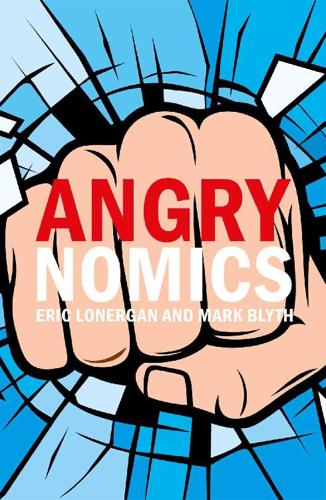
Angrynomics
by
Eric Lonergan
and
Mark Blyth
Published 15 Jun 2020
Finally, we have outlined how the challenge of a data monopoly, which is owned by all, can be shared and returned to rightful ownership. We can all benefit not just from the innovation, but from the economic value creation. Armed with these proposals, our politics can be changed. If it doesn’t, we should all get angry. Postscript: angrynomics in a pandemic In late March 2020, the Covid-19 pandemic pushed the world into lockdown just as the proofs of this book landed on our desks. We immediately wondered, as the pandemic began to unfold, if what we had to say was still of relevance. We are convinced that it is. The key themes of this book are that any society encountering patched-up macroeconomic crashes (like 2008), the ever-increasing daily stressors of an aging society beset with rapid technological change, and rising inequality, was one that would produce an angry anti-system politics.
…
AfD (Alternative für Deutschland) 114 Afghanistan 6 aging population 10, 13, 14, 95, 106–11 and consumption 109–10 and government bonds 138–9, 152 and inequality 56–7, 58, 107–10 and inter-generational transfer 106–107 and poverty 57, 107 as stressor 57, 91, 106, 110, 111, 116, 118 and technological change 90, 106, 122 AIG 85, 124 Amazon 96, 98, 104, 142, 143–4 Anderson, Elizabeth 176 anger 2–3, 7–9, 10, 11–12, 159, 161 misplaced 13 as opportunity 16 and play 153 private see private anger public see public anger reducing see calming strategies anxiety/stress 9, 13–14, 50, 53, 55–6, 88, 118, 161 and cognitive effort 89–90, 91 and job insecurity 95–6 three causes of 91 and uncertainty see uncertainty Apple 96, 142, 143 Aristotle 59, 153 artificial intelligence (AI) 14, 102–106, 142 Asian financial crisis (1998) 77, 140 asset ownership 130–31, 133, 136, 140–41 Atkinson, Tony 80, 173 austerity policies 2–3, 6, 15, 34–5, 41, 48, 84 and euro crisis 44–5 and low interest rates 135 Australia 125 Austria 3 baby boomers 107–108, 110, 111, 175 Bank of England 84, 103, 120, 145, 148 TFS scheme 149–50, 166 banks 1, 6, 15, 33–5, 42, 44, 48, 145–50 and capital/liquidity ratios 126 and direct support for consumption 145–8 and dual interest rates 149–50 and economic models 3, 4 failure of 119–21, 122 and helicopter money 131, 146 independence of 78, 79 and leverage see financial leverage and problem of low interest rates 120–21, 122, 131, 135 regulations on 125–6, 127, 129, 132 restrictions on 72, 77 see also financial crisis (2008) Beck, Aaron 171–2 Bernanke, Ben 6, 148 Biden, Joe 106 billionaires 4 Bitcoin 102, 103 Blackrock 165 blockchain technology 14, 103 Blyth, Mark 172, 175 bonuses 81, 85, 124 Brazil 11, 127 Brexit 4, 7, 11, 22, 24, 37, 38, 55, 117, 154 and austerity policies 41, 45 and immigration 111, 112, 114, 116 and job insecurity 100–101 Brill, Stephen 175 Britain (UK) 3, 38, 119, 155, 162, 164 aging population in 107, 110 austerity policies in 41 dual interest rates in 149–50 and EU see Brexit fear of immigration in 27 gig economy in 100 and government bonds 135, 140 government spending in 71 immigration in 111, 112, 114, 115–16 inequality in 6 interest rates in 145 nationalism in 23 Thatcherism in 75, 76 Brittan, Samuel 151 Brynjolfsson, Erik 173 budget deficits 71, 75 Buffett, Warren 130 calming strategies 12, 15, 118, 122, 123–57 and data dividend see data dividend and direct support for consumption 145–8 and dual interest rates 149–50 and economic diversity 153–6 and inequality see inequality, strategies to reduce and national wealth fund see NWF and regulations on banks 125–6, 127, 129, 132 and sustainable investment see sustainable investment Canada 125 cancer 53, 87, 88, 106 capital 4 cost of 137, 139, 153 and dispersion 97–98 as “fictitious” commodity 65 formation, rate of 108 global 40, 42, 43, 49, 50, 58 and labour 50, 60, 69, 72 and neoliberalism 75, 76, 77, 79 protection of, following financial crisis 85 versus capital 97, 98 Capital in the Twenty-First Century (Piketty) 49, 108–10 capital/liquidity ratios 126 capitalism 64–5 and commodities 65–6 capitalism as computer 11, 61–72 fixing 124–25 hardware of 62–3, 117 software of 63–4, 68–71 and unemployment/inequality 66–7 version 1.0 68–9 version 1.0 crash 64, 66, 67, 71, 73, 83, 118 version 2.0 69–73, 74, 75, 76, 116 version 2.0 crash 70–71, 73, 83–4, 118 version 3.0 74–80, 98–9, 117, 125, 140–41 version 3.0 crash 116 car industry 100–101 caring industry 104 Case, Anne 54, 176 centrism, political 38, 48, 118–19, 121, 160–61, 162 CEOs (chief executive officers) 4 Chamberlain, Joseph 66 Chile 3 China 42, 63, 64, 78, 93, 137, 151, 156 Citibank 81, 82 cities 55, 56 climate change 104, 111, 121, 129, 131, 153, 159–60 and investment see sustainable investment Clinton, Hillary 160 Coggan, Philip 172 cognitive effort 89–90, 91 Cold War 28, 48 ending/legacy of 5, 23, 26, 29, 30, 37, 116 communism 68, 71 competition/competitiveness 47, 65, 94, 95, 111, 116, 125 and technology 105 see also product market competition computer analogy see capitalism as computer constrained volatility 85 consumption, direct support for 145–8, 150–51, 160 consumption, distribution of 52–3, 58 Corbyn, Jeremy 119 corporations 6, 20, 57 and competition 95, 96 and data dividend see data dividend corruption 8, 29, 61, 130 Covid-19 163 culture 160 Czech Republic 146, 147, 155 data dividend 141–4, 160, 162 and monopolies 142, 143, 144 and privacy 141–2 and property rights 142–3 de-unionization 50, 95, 99 Deaton, Angus 54, 176 debt 75, 84, 120, 132, 145, 150 and demography 109, 111, 131 government 136–7, 151, 152 net 136 deflation 65, 69, 120, 128, 144, 148 demand management 44–5, 47, 126–7 democracy 16, 25, 29, 39, 40, 104, 117, 130 and markets 68 demography see aging population Denmark 64, 164 depression see recession deregulation 28, 40, 48, 50, 58, 75 and inflation 127 as micro-stressor 94, 96, 99, 101, 118 DGSE (dynamic stochastic general equilibrium) models 3–4 Doughnut Economics (Raworth) 131–2, 165 dual interest rates 131–2, 149–50, 174 Dublin (Ireland) 17–18 economic change 9–10, 29, 43, 153 see also fiscal reform; recession economic growth 2, 6, 41, 69, 71, 86 and demography 108–10 and immigration 116 and inequality 76, 79–80 and quality of jobs/wages 46, 47, 85 economic ideology 28 economics 12, 54–5 shortcomings of models 3–5, 6, 7 education 24, 53, 58, 135, 141 tuition fees/student loans 107, 111 electoral politics 5–6, 104 and demographics 107, 110 and tribalism 13, 22, 24–7, 29, 30, 31 electric vehicles 153 elites 2–3, 5, 6, 7, 9, 37 in cities 55, 56 and corruption 8, 29 and ethical norms 20 and financial crisis 43–4 manipulation of tribal identity by 22, 24, 61, 116, 161 policy failures of 48–9 Engbom, Niklas 175–6 environmental degradation 29, 161 see also climate change environmental and social governance 168 ethical norms 20 euro crisis 7, 37, 44, 77, 144 Europe 34, 42, 137, 140 inequality in 41, 53, 56, 58 migrant crisis in 7 tribalism in 30 European Central Bank (ECB) 34, 84, 146, 155, 164–5 TLTRO programme 147–8, 166 European Union (EU) 22, 33, 34–5, 37, 43, 119 austerity policies in 2, 36, 48 and financial crisis (2008) 82 micro-stressors in 47–8 and nationalism 154–6 and neoliberalism 76, 77 unemployment in 44–5 see also Brexit eurozone 45, 65, 83, 148, 151, 155 exchange rates 72, 134 Extinction Rebellion 8, 131–2 Facebook 27, 96, 98, 142, 143 fake news 26 Farage, Nigel 17, 161 Farmer, Roger 174 fascism 45–6, 66, 67–8, 71 fear 16, 17, 94, 113, 117, 150, 161 and media 26, 27 and politics 7, 45 financial crisis (2008) 1–2, 6, 26, 29, 30, 39, 48, 127, 163 and automation 102–103 and bail-out of banks 84 fragility of recovery from 46, 85, 89, 121 further reading on 172–3 and globalized financial system 84 and growth of populism 85 and inequality 79–80 and low interest rates 135 and regulation of banks 129 financial leverage 72, 81–3, 85, 99, 126, 157 and credit crunch 83 and interest rates 81–2 financial market deregulation 77 fiscal councils 150–51 fiscal reform 15, 150–53, 162 Fischer, Stan 148, 165 Florence (Italy) 87–8 foodbanks 6, 53 football fans 8, 19, 56 France 2, 3, 20, 55, 56, 71, 101, 154, 156 and NWF 135 Franklin, Benjamin 87 free markets 30, 69, 118 Friedman, Milton 118 full employment 40, 47, 60, 66, 71–2, 79, 85, 175 and inflation 73–4, 76 without inflation 121, 125, 126 future 101–102, 111 Garcia family, parable of 33–5, 43 Gates, Bill 130 GDP (gross domestic product) 5, 44, 76, 79, 100–101, 106, 151, 152 and NWF 135, 141 Germany 3, 11, 34, 38, 42, 62–3, 66, 151, 154, 156, 167 and migrant crisis 111, 113–14 and NWF 135 Gibley, Bruce Cannon 175 gig economy 94, 98, 99–100 global economy 12, 39–40, 50, 53, 58, 133 and nationalism 154 and neoliberalism 77 globalization 5, 39, 41, 42–3, 48, 77, 117 hyper- 40 and inequality 80 and inflation 127 and insecurity 101 and labour market 42, 43 and nationalism 154 Gold Standard 65, 67 Google 96, 98, 104, 142 government bonds 72, 131, 133, 135, 137, 138–9, 152 as insurance policies 139, 140 government borrowing 134–5, 137, 152–3 and cost of capital 137, 139, 153 and low inflation 128, 138–40, 150 and NWF 136–137, 138–40 Great Depression 40, 44, 66, 69, 120 Great Moderation 6, 120 Greece 35, 38, 44, 45, 106–07, 110, 144 green revolution see sustainable investment gross domestic product see GDP Guilluy, Christophe 55 Gulf States 133, 134 Hayek, Friedrich 118 healthcare 47, 53–4, 58, 123–4, 135, 139 and access to data 141–2 and NWF 141 and uncertainty/probability 92 hedge fund managers 4 helicopter money 131, 146, 166 Hildebrand, Philipp 165 Hong Kong 2–3, 140, 164 Hopkin, Jonathan 172 Hopkins, Ellen 123 housing 71, 113, 114, 135 Hungary 11, 23, 30 Iceland 1–2, 8, 20 immigration 5, 7, 26, 27, 111–17, 164 economic effects of 115–16 and housing/training 113, 114 and income distribution 112, 113, 114–15 and manipulation by media/politicians 111, 115 as stressor 113, 115 and technological change 106 and tribalism 95, 111, 112, 113 income see wages income distribution 43, 50, 51 and Keynesian economics 71 and neoliberalism 80, 81 independent fiscal councils 150–51 India 23, 127 individualism 29, 154 Indonesia 3 inequality 3, 4, 6, 15, 29, 30, 40–41, 43, 49–57, 58, 61, 79, 118 difficulties in measuring 50–53 and distribution of income/consumption 53–4 and financial crisis (2008) 79–80, 83, 85 further reading on 173, 176 intergenerational 56–7, 107–10 and populism 54–5 and uncertainty 49–50 inequality, strategies to reduce 121–2, 129–31, 132, 162 asset ownership 130–31, 133, 136, 140–41 and data dividend 141–4 National Wealth Fund see NWF optimal/effective 132–3 and universal basic income (UBI) 141, 144 wealth tax 130, 132 inflation 5, 40, 51–2, 53, 69 death of 126, 128 and full employment 73–4, 76, 121, 122, 125 and global financial markets 78 and interest rates 75, 81–2, 120 low see low inflation and oil prices 96–7 and printing money 78, 128, 145 and raising taxes 129 and recession 144–5 and regulation of banks 125–6, 127, 132 and stagflation 40, 74, 120, 128 inheritance 132, 133, 160 national 136 innovation see technological change insurance industry 93 interest rates 15, 33–4, 75, 81–2, 165–6 dual, and sustainable investment 131–2, 149–50 low, problem of 120–21, 122, 131, 132, 135, 146–8, 152 negative, problem of 15, 148, 149, 150 and spending 147 internet 25 investment spending 40, 60, 69 and future expectations 103 and global capital flows 77–8 and inflation 74 public sector 67, 70–71 sustainable see sustainable investment IRA (Irish Republican Army) 17 Iraq 6 Ireland 17–18, 23, 24 Islam 27 Italy 35, 37, 38, 39, 44, 66, 71, 87–8, 144, 156, 167 aging population in 110 poverty in 47 tribalism in 45–6 Japan 26, 84, 110, 137, 140, 148 job security/insecurity 34, 50, 56, 61, 94, 95–6, 100–101 and technology 102 Kalecki, Michał 60–61, 73–5, 120, 121, 127 Keynes, John Maynard/Keynesian economics 60, 66–7, 68–70, 92, 103, 118, 127, 151 General Theory of Employment, Interest and Money 66, 175 and inflation 67, 69, 128 labour market 35, 40–41, 42, 43, 44 and automation 102–106 deregulation 50, 95, 99, 122, 127 dispersion in 98–9 and full employment see full employment and immigration 115–16 in Keynesian system 71–2 and labour as commodity 59, 60, 65–6, 73, 85 and protectionism 59–61, 66 and secular stability 125, 126 and training 62–3 see also wages Lagarde, Christine 167 Lerner, Abba 118 libertarianism 63 Lonergan, Eric 174 Los Indignatios 85 low inflation 79, 134, 157 and full employment/secular stability 126 and government spending/borrowing 128, 138–40, 150, 152 and recession 144–5, 150, 162 Luce, Edward 164 Ludd, Ned/Luddites 102 machine learning (MI) 102–104 see also artificial intelligence macroeconomics 9, 13, 47, 89 failure of 119–20 and uncertainty 94 Macron, Emmanuel 162 Mair, Peter 172 markets 30, 59–61, 62, 66–7 and democracy 68 and quantity theory of money 68–9 see also labour market Mauss, Marcel 21–2 Mazzucato, Mariana 156 media 11, 43, 47 and technological change 98, 102–103, 105 and tribalism 24–5, 26–7, 29, 31, 61, 116, 161 Merkel, Angela 114 Mexico 63 micro-stressors 47–8, 53, 84, 91 and aging populations see aging populations and change 94 and fourth industrial revolution 94 and immigration see immigration microeconomics 9, 13–14, 160 migrant crisis 7, 111 Milanovic, Branko 52, 80 minimal group paradigm 21 Minsky, Hyman 128 mobile phones 53, 96, 97, 142 modern monetary theory (MMT) 118, 128–9 money, printing 78, 128, 145 monopolies 142, 143, 144 moral outrage 8, 13, 15, 35–6, 57–8, 117, 130, 161 and inequality see inequality as rational 36 and tribalism, compared 19, 20, 22, 29, 30–31, 36 triggers for 36 mortgages 34, 35, 38, 82, 111, 137, 145 nation state 39–40, 48, 50, 117, 119 national wealth fund see NWF nationalism 5, 11, 23, 29, 31, 39, 41, 116, 119 as positive 153–6 neoliberalism 4, 28–9, 37, 75–8, 122 and global capital flows 77–8 and inequality 51, 52, 53 NHS (National Health Service) 107 Nissan 100–101 Nixon, Richard 26 Northern Ireland 17–18, 23, 24 Norway 133, 134 Nussbaum, Martha 16, 35, 36 NWF (national wealth fund) 15, 132, 133–41, 143, 152, 168 and aging population 138–9 and asset ownership 133, 136, 140–41 and government borrowing/debt 136–7, 138–40 and growth of global stock market 137–8 and individual trust funds 135 and negative interest rates 134–5, 136 and risk 136, 137–8 sovereign 133–4 and trade surplus 134 Obama, Barack 29, 46 oil prices 96–7 Orban, Viktor 23, 30, 161 “Panama Papers” 2, 20 pensions 57, 63, 106–107, 138 perpetual loans 147–8 Philadelphia Eagles 20 Pickett, Kate 168 Piketty, Thomas 49, 52, 80, 108–10 play 153 Poland 11, 30 Polanyi, Karl 59–61, 64–5, 67, 175 political centrism 38, 48, 118–19, 121, 160–61, 162 political disengagement 29 political economy 12, 13 political identity 22–3, 29–30, 37, 48, 116, 117 further reading on 172 political parties 5–6, 7, 28 politics, new 15–16, 58, 160 populism 11, 27, 39 and financial crisis 86 three genres of 54–5 Portugal 35, 38, 44, 144 poverty 47, 67, 72, 80, 115 and demographics 57, 107 power 4, 48 powerlessness 9, 41 price stability 76, 79, 128, 147 private anger 7, 8, 9, 10, 13–14, 36, 117 and cognitive effort 89–90, 91 see also anxiety/stress private sector debt 131, 145 and government borrowing 134–5, 137, 138–40 investment 67, 70, 149–50, 151 liability in financial crisis 85, 127 privatization 28, 40, 96, 107 probability 91–3 product market competition 94, 95–8, 116, 125 and deregulation/privatization 96–7 and dispersion 97, 98–9 intensification of 96, 101 and technological change 96, 97–8, 99 productivity 40 and technological innovation 9, 10, 15, 102, 104–105 and wages 71, 72, 74, 76 profit margins 98, 101, 105, 143 property prices 34, 38 property rights 142, 143, 154 protectionism 59–60, 61, 66 public anger 7, 8–9, 10, 89, 98, 117–18 economic causes of 13 see also moral outrage; tribalism/tribal anger public housing 71, 113, 114 public sector investment 67, 70–71 public services 24, 115, 116 quantitative easing (QE) 146–7, 167 quantity theory of money 68–9, 78 racism 26, 54, 55, 115 Raworth, Kate 131–2, 173 Reagan, Ronald 26, 75, 118 recession 15, 29, 30, 34–5, 44, 49, 55, 58, 84, 152, 153 and dual interest rates 150 and interest rates 75, 120–21 and investment spending 60, 70, 71 and low inflation 144–5, 150, 162 and MMT 128–9 and stock markets 139, 140 see also euro crisis referenda 37 regeneration, economic 132 regional development 15, 115, 116, 149, 153, 156 Renzi, Matteo 37 risk 91–2, 127, 136, 137, 153 Roberts, Carys 174 robotics see artificial intelligence Rodrik, Dani 4, 39, 40 Russia 11, 41 Sahm, Claudia 150–51 Salvo, Francesca 87–8 Sandbu, Martin 174 Sanders, Bernie 128, 164 savings 93 scale economies 98, 99, 142 Scottish nationalism 7, 119 secular stability 125, 126, 127 service-based economy 52 Singapore 133, 134, 162 SMEs (small- and medium-sized enterprises) 164–5, 166 social democracy 63–4 social media 26, 27, 90, 98 Solow growth model 109 sovereign wealth funds 133–4 sovereignty 39 Spain 33–5, 38, 44, 45, 144 protests against austerity in 85 spending increasing 145, 147, 151 investment 40, 60 power 145 public sector 67, 70–71, 128, 151 restrictions on 41, 44, 149 sports fans 8, 19–20, 21, 25 sports industry 99 stagflation 40, 74, 120, 128 status-injury 36, 54 stock markets 63, 137–8, 139–40 stress see anxiety/stress strikes 73, 74 student loans 111 supply–demand 60, 96, 104 sustainable investment 131–2, 149–50, 152, 153 Sweden 63–4, 72–3 Syria 111, 113 Tavris, Carol 36, 171 taxes 40, 50, 57, 108, 116, 124 cuts in 34, 44, 111, 151 dodging 2, 6, 20, 132–3, 143 political opposition to 129, 130, 132, 133 raising 152 on wealth 129, 130, 132, 140 Tea Party movement 85 technocracy 37, 42–3, 48, 160–61 technological change 29, 58, 96, 109 and aging population 90, 106, 122 and competition 96, 97–8 and dispersion of returns 97 and fourth industrial revolution 94 further reading on 173–4 and inequality 50, 53 and labour market 102–104 and media 24–5, 27 as micro-stressor 88, 91, 94, 96, 97–8, 99, 101–102, 105, 116, 118 and productivity 9, 10, 15, 105, 122 and rate of diffusion 14 and uncertainty 101–102 telecommunications 96, 97, 142 terrorism 17, 18, 27 Thatcher, Margaret 75, 76, 118, 131 Thunberg, Greta 150 TLTRO programme (European Central Bank) 147–8 trade 21–2, 26, 42, 78, 154 and neoliberalism 78 trade surplus 134 trade unions 28, 42, 63, 66, 72, 73, 76, 79 trade wars 21–2, 26 training 62–3, 93, 113, 114, 141 tribalism/tribal anger 8–9, 11, 18–31, 41, 45–6, 117 and central/eastern Europe 23, 30 destructiveness of 24 and ethical norms 20 and fascism 68 and financial crisis 86, 89 and global politics 21–2, 26, 28–9 and immigration 95, 111, 112, 113 manipulation by politicians/media of 13, 22, 24–7, 29, 30, 31, 35, 61, 95, 116, 161 and minimal group paradigm 21 and moral outrage, compared 19, 20, 22, 29, 30–31, 36 and political identity 22–23, 29–30 social function of 20–21 and sport fans 19–20, 25 see also nationalism trickling down/up 79–80 trilemma, political 39 trucking industry 103 Trump, Donald 11, 22, 23, 25–6, 27, 33, 38, 119, 126, 161 and deregulation 129 election of 41–2, 54 tax cuts of 11 Turkey 11 universal basic income (UBI) 141, 144 Ukraine 11 uncertainty 9–10, 43, 49–50, 65, 91–4, 99, 118, 161 and aging populations see aging populations and emerging technologies 102–103, 106 and healthcare 92 and immigration see immigration reducing 93–4 and risk/probability 91–3 and skills development 93 unemployment 2, 30, 34, 44–5, 48, 58, 66, 72, 84, 167 and inflation/interest rates 74, 75, 125 unfairness 25, 36, 105 United States (US) 3, 38, 93, 118, 129, 164 aging population in 107–108, 110, 111 automation in 103, 104–105 financial crisis in (2008) 82–3, 84, 85 gig economy in 100 healthcare in 47–8, 53–4, 58, 106, 123–4 independent fiscal councils in 150–51 inequality in 50, 51, 53–4, 58, 80–81 Keynesian system in 71, 72–3 labour market in 42, 44, 46, 62 micro-stressors in 47–8 neoliberalism in 76 and NWF 135 stock market in 63 tribalism in 23, 25, 29 wealth tax in 130 US Federal Reserve 6, 46, 84, 108, 110, 120, 148, 151 voice, loss of 37–9, 43, 48, 58 Volcker, Paul 75, 81–2 voting 37–8 see also electoral politics wages 2, 60 and automation 105 and competition 96–7, 98 and consumption 53–4, 58, 72 distribution of see income distribution growth in, without inflation 125 and immigration 115–16 and inequality 4, 50–53, 58 and neoliberalism 76, 77 and oil prices 96–7 and productivity 72, 76 stagnation in 34, 47, 58, 80–81, 83, 84, 85 and supply/demand 65–6 Wall Street Crash 67 Warren, Elizabeth 130, 132 Watson’s Analytics 19 wealth, distribution of 4, 15, 29, 30 welfare state 71 WhatsApp 2 Wilkinson, Richard 176 wind power, investment in 150 Wolf, Martin 80, 173 World Trade Organization (WTO) 42 Wren-Lewis, Simon 151 Yates, Tony 151 “Yellow Jackets” protests 2, 20, 55, 56
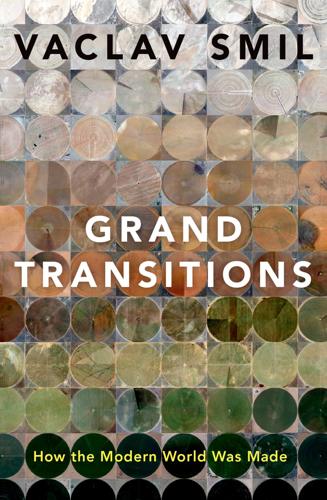
Grand Transitions: How the Modern World Was Made
by
Vaclav Smil
Published 2 Mar 2021
Global data for total passenger-kilometers (pkm) are the single best indicator to capture the expansion of flying. During the propeller era the annual total rose from 96 million pkm in 1929 to 28 billion pkm by 1950, but the total reached 2.8 trillion pkm in 2000 and 6.6 trillion pkm by 2015, and the pre-COVID-19 forecasts expected further substantial increases during the 2020s and beyond (ICAO 2018; Figure 4.4). Figure 4.4 Growth of global commercial aviation (in passenger-kilometers), 1930–2020. IATA (International Air Transport Association) forecast is for further strong growth, with 8.2 billion passengers carried by 2037 compared to 4 billion transported in 2017.
…
And during the first 18 years of the 21st century total primary energy use, largely because of China’s economic expansion, grew by almost 50%, the share of fossil fuels remained flat (about 85% according to BP, about 90% by using UN’s conversions), and record volume of fossil carbon (about 9.2 Gt) was returned to the atmosphere as CO2 (BP 2020; LeQuéré et al. 2018). Moreover, nothing indicates any rapid reversals. The direct effect of the COVID-19-driven decline of CO2 emissions will be negligible (Forster et al. 2020), and even if the pandemic experience were to accelerate the energy transition in affluent countries it will not have a similar effect in today’s low-energy economies. During the first two decades of the 21st century, consumption of all primary energy remained flat in Europe; it was up only about 5% in North America, but the global aggregate has been growing by more than 2% a year, driven by Asia and Africa (BP 2020).
…
Brill, pp. 1–133. Ford, H. 1922. My Life and Work. New York: Doubleday. Fores, M. 1981. The myth of a British Industrial Revolution. History 66:181–198. Forrester, J. 1971. World Dynamics. Cambridge, MA: Wright-Allen Press. Forster, P. et al. 2020. Current and future global climate impacts resulting from COVID-19. Nature Climate Change. https://doi.org/10.1038/s41558-020-0883-0 Foster, D.R. and J.D. Aber. 2004. Forests in Time: The Environmental Consequences of 1,000 Years of Change in New England. New Haven, CT: Yale University Press. Foster-McGregor, N. and B. Verspagen. 2016. Role of structural change in the economic development of Asian economies.

Four Battlegrounds
by
Paul Scharre
Published 18 Jan 2023
Kuo, The Diplomat, May 5, 2020, https://thediplomat.com/2020/05/tokyo-prods-japanese-firms-to-leave-china/; Isabel Reynolds and Emi Urabe, “Japan to Fund Firms to Shift Production Out of China,” Bloomberg, April 8, 2020, https://www.bloomberg.com/news/articles/2020-04-08/japan-to-fund-firms-to-shift-production-out-of-china. 76French pharmaceutical companies: Ail Laidi, “Covid-19 Forces France to Look at Relocating Its Pharmaceutical Industry,” France 24, May 14, 2020, https://www.france24.com/en/20200514-covid-19-forces-france-to-look-at-relocating-its-pharmaceutical-industry. 76reduce American dependency on China: Lin Yang, “Pandemic Exposes Perils of Global Reliance on China for Drug Supplies,” voanews.com, May 20, 2020, https://www.voanews.com/science-health/pandemic-exposes-perils-global-reliance-china-drug-supplies; David J.
…
By better aligning individuals with the jobs they are most likely to excel at, AI could help build a more capable Army overall. Easley and his Task Force are bringing AI into the Army in other roles as well. In a major military exercise in Europe called Europe Defender, planned for 2020 but cancelled due to COVID-19, the Army planned to use a prototype image classification system to aid in targeting for long-range precision fires. The AI system can sift through images from satellites or drones to help look for military objects, such as tanks, speeding up the intelligence and targeting cycle, a process that currently can take up to twelve hours.
…
Department of Defense, 2018), 1, https://dod.defense.gov/Portals/1/Documents/pubs/2018-National-Defense-Strategy-Summary.pdf. 74in search of what might come next: Hal Brands and Zack Cooper, “After the Responsible Stakeholder, What? Debating America’s China Strategy,” Texas National Security Review 2, no. 2 (February 2019), http://dx.doi.org/10.26153/tsw/1943. 74The pandemic slammed the brakes on the global economy: James K. Jackson, Global Economic Effects of COVID-19 (Congressional Research Service, updated July 9, 2021), https://fas.org/sgp/crs/row/R46270.pdf. 74dictators who fall from power: For example, Romanian President Nicolae Ceaușescu and his wife were executed by firing squad after a perfunctory show trial in December 1989. 74“China’s Chernobyl”: Shawn Yuan, “Inside the Early Days of China’s Coronavirus Cover-Up,” Wired, May 1, 2020, https://www.wired.com/story/inside-the-early-days-of-chinas-coronavirus-coverup/. 75the West is “falling apart”: Zhou Bo, “Why the US and Europe Need to Draw Closer to China and Drop the Hubris,” South China Morning Post, April 24, 2020, https://www.scmp.com/comment/opinion/article/3081079/why-us-and-europe-need-draw-closer-china-and-drop-hubris. 75coercive diplomacy to pressure countries: Shahank Bengali and Alice Su, “‘Put on a mask and shut up’: China’s new ‘Wolf Warriors’ spread hoaxes and attack a world of critics,” Los Angeles Times, May 4, 2020, https://www.latimes.com/world-nation/story/2020-05-04/wolf-warrior-diplomats-defend-china-handling-coronavirus; Fergus Hanson, Emilia Currey, and Tracy Beattie, The Chinese Communist Party’s Coercive Diplomacy (Australian Strategic Policy Institute, September 1, 2020), https://www.aspi.org.au/report/chinese-communist-partys-coercive-diplomacy; Jamil Anderlini, “China Is Escalating Its Punishment Diplomacy,” Financial Times, September 22, 2020, https://www.ft.com/content/e76a835b-27d5-4750-9749-04921d6bf1eb. 75requests that receiving governments praise China: Alexandra Ma, “China Is Attempting to Win Political Points from the Coronavirus With ‘Mask Diplomacy’—but It Mostly Isn’t Working,” Business Insider, April 18, 2020, https://www.businessinsider.com/analysis-china-coronavirus-political-points-mostly-not-working-2020-4. 75China’s “global disinformation campaign”: Michael Peel and Tom Mitchell, “China Warned EU 3 Times over Virus Propaganda Report,” Financial Times, April 26, 2020, https://www.ft.com/content/a2f66f6a-50cb-46fe-a160-3854e4702f1c; Matt Apuzzo, “Top E.U.
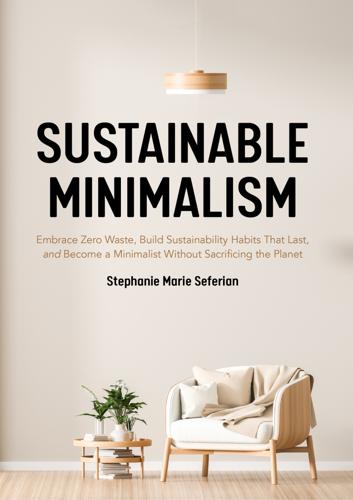
Sustainable Minimalism: Embrace Zero Waste, Build Sustainability Habits That Last, and Become a Minimalist Without Sacrificing the Planet (Green Housecleaning, Zero Waste Living)
by
Stephanie Marie Seferian
Published 19 Jan 2021
While refusing good deals requires self-control, it is certainly possible. If you’re heading to a brick-and-mortar store, write out a list of what you need before you leave, then stick to the list. Part 3 The Highest-Hanging Fruit: Self-Sufficiency Chapter 10 Why Self-Sufficiency Matters In the tail-end of 2019, COVID-19 quietly spread around the world. By March of 2020, it swiftly and silently crippled most nations, both developed and developing. As economies around the world sputtered to a halt, many Americans found themselves facing uncertain futures. Shoppers panicked, abandoning decorum as they cleared supermarket shelves, hoarded supplies, and left little for others.
…
I believe sustainable minimalism provides renewed hope for my children and for yours. Acknowledgements Before sitting down to write this book, I had idyllic expectations of the process that included a silent working space, minimal (if any!) setbacks, and copious amounts of black coffee. But then, COVID-19. I wrote as I homeschooled and podcasted. I stole minutes here and there in the hopes of tapping out a few words. I woke up early—too early, if I’m honest—to write when the house was quiet. Thank you to everyone who supported me and therefore made this book possible. To Haig, for knowing this book should be written and for believing I was the perfect person to write it.
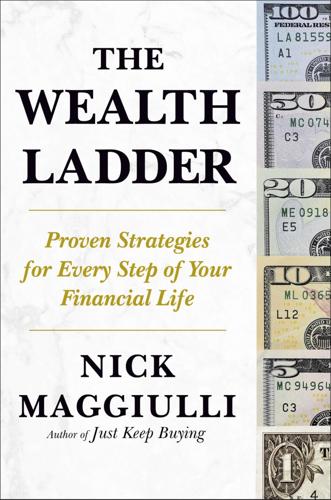
The Wealth Ladder: Proven Strategies for Every Step of Your Financial Life
by
Nick Maggiulli
Published 22 Jul 2025
For reference, I’ve included the page numbers that start the chapter for each individual wealth level: Chapter 4: Level 1 (<$10k): this page Chapter 5: Level 2 ($10k–$100k): this page Chapter 6: Level 3 ($100k–$1M): this page Chapter 7: Level 4 ($1M–$10M): this page Chapter 8: Level 5 ($10M–$100M): this page Chapter 9: Level 6 ($100M+): this page Chapter 4 Level 1 (<$10k) — Atypical Results Require Atypical Actions Imagine you had to start your financial life over. Your bank account goes to zero. You cut off all your connections. Your résumé is wiped clean. This is what Mike Black did in 2020 near the beginning of the COVID-19 pandemic. At the time, he was the founder of a successful software development company. However, Mike wanted to show that it was possible to go from $0 to $1 million in earnings within twelve months. So he began filming a reality series about his experiment. He called it the Million Dollar Comeback.
…
The best part was that I was in an industry I was passionate about and was actively encouraged to keep writing. It was a win-win. However, the move to New York City took a slight toll on my finances. Though my blog audience was still growing, my wealth had stagnated. The much higher cost of living in NYC made it hard for me to save money. But in 2020, everything changed. COVID-19 hit and the stock market started to plummet. People were trapped inside and there wasn’t much else to do besides go on the internet. As a result, the page views on my blog went through the roof. As the saying goes, “The higher the VIX, the higher the clicks.” The VIX is a popular index of market volatility that reached a high of 85 in March 2020.
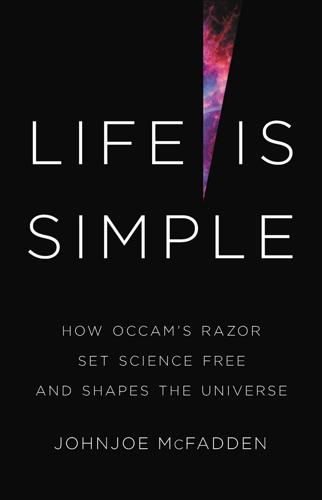
Life Is Simple: How Occam's Razor Set Science Free and Shapes the Universe
by
Johnjoe McFadden
Published 27 Sep 2021
As physics inches its way towards the simplest possible theories, biologists struggle to extract simple theories from the accelerating stream of data pouring out of genomics and other ‘omics’ technologies. It also remains as controversial today as it was in Occam’s time. Statisticians constantly debate its value and significance. Recently a group of French scientists published a paper arguing that simple models, honed by the razor, make better sense of the Covid-19 pandemic sweeping their country than the bulky cumbersome models used by most epidemiologists. At the cutting edge of science, simplicity continues to present us with the most profound, enigmatic and sometimes unsettling insights. Perhaps most surprisingly, it is increasingly clear that the value of Occam’s razor is not limited to science.
…
Like all useful models, it is simple yet has amazing predictive power. The science of molecular biology has harnessed the simple gene model to deliver countless health benefits including new drugs, therapies and novel crops that feed a fast-growing population, as well as the vaccines that as I write are being rolled out to protect the world’s population against Covid-19. Yet genes play another, and perhaps paradoxical, role in my argument that life is simple. This time a rather ugly rodent is involved, and some bees. The fate of unwanted genes Eusocial insects (a group that includes bees and ants) are characterised by complex social structures including division of labour, highly complex nests, often a single reproductive queen attended by sterile workers, and sophisticated forms of communication, such as the figure-eight dance of honeybees.
…
Use it or lose it is as true for evolution as it is for physical fitness but there may be a more sinister side to this story. A deadly simplicity As I write at the end of 2020, like hundreds of millions of people around the world, I am in lockdown caused by the arrival of a 100-nanometre sphere, around 10 million times smaller than a football, the Covid-19 virus. This tiny particle, completely inert outside a living cell, has brought nearly the entire human world to its knees. Although it is arguable whether viruses are alive since they are not actually capable of self-replicating, they are the simplest replicating organisms. Rather than replicating themselves, they have opted to dispense with nearly all cellular machinery and instead perform just one task with deadly efficiency: injecting their genomes into our cells where they cajole our cellular machinery to make more viral proteins.
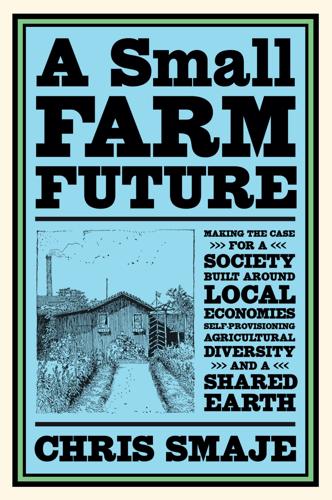
A Small Farm Future: Making the Case for a Society Built Around Local Economies, Self-Provisioning, Agricultural Diversity and a Shared Earth
by
Chris Smaje
Published 14 Aug 2020
It’s just that modernisation has had different consequences for different people and different countries. These differential tracks of modernisation, and their links to farming, become especially evident in the origins and spread of new infectious diseases like Ebola, novel flu strains and the novel SARS-CoV-2 virus responsible for the COVID-19 pandemic. The full story of these diseases is still emerging and is far too complex to tell here, but it involves worldwide disease transmission pathways established not only by cheap mass travel but also by a globalised meat industry dominated by a few vertically integrated multinational companies, a focus on intensive production of pigs and poultry with whom humans share certain virus susceptibilities, the disturbance of wild ecosystems for agriculture and bushmeat harvesting, and the disturbance of human geographies.95 In any given outbreak, the initial smoking gun may be a large industrial poultry or pig unit, a backyard one where poultry more readily interact with wild birds, or poor farmers and foragers pushing into wilderness frontiers and harvesting bushmeat.
…
The country serves the city, the city’s hinterland becomes the whole world, and therein lie many of our contemporary ecological problems. Some analysts argue that the densely networked and globally connected aspects of modern cities make them disproportionately productive of human benefits, though others have questioned this result.49 Indeed, with the COVID-19 pandemic, the global city suddenly lost some of its lustre as a space-erasing, physical-contact-enhancing, economic-efficiency-promoting network that connects people worldwide without firewalls, redundancies or local autonomies of the kind that are built into agrarian localism. As the complex network consequences of the pandemic rippled across the global food supply chain, new customer enquiries at my small farm serving its immediate local market increased by two orders of magnitude.
…
If it and its successors can pull this balance off long term, then my analysis of the supersedure state will be disproven, at least for Britain. But I doubt they can, and I’m not ready to withdraw my analysis yet. As this book is going to press, tensions between municipal, regional and national politicians in the United Kingdom and elsewhere in the world concerning not only the COVID-19 pandemic but also worldwide protests arising from the Black Lives Matter movement in the United States suggest on the contrary that the balancing act is already getting harder, even before the political, economic and ecological blowback of present crises is fully apparent. So in supersedure situations, state centres can still direct resources outwards to serve their interests, but they’re limited in their ability to fully organise their peripheral zones.

All That Glitters: A Story of Friendship, Fraud, and Fine Art
by
Orlando Whitfield
Published 5 Aug 2024
Over a patchy phone line I heard Inigo clicking a cheap pen, propelling and retracting its nib rapidly, nervously, click-clack, click-clack. Outside my window, the stunted rush-hour grumble of the busy main road was drowned out by birdsong, intermittently punctured by ambulance sirens making their way to the large hospital near my flat, the oppressive existential tinnitus of life under Covid-19. On Inigo’s end, our conversations were occasionally interrupted by a new Dobermann puppy called Bacchus as he clambered over furniture or knocked over his water bowl. I heard the clatter of his claws on a linoleum floor. Inigo would sometimes stop to chastise him lightly. Longer pauses in the conversation gave me an auditory glimpse into the secret life of this wanted man.
…
The deal didn’t happen when Gros’s client passed on the work. Inigo had already sold the work to FAP the previous February, and pledged it as collateral to Athena Art Finance. 12 In January 2022, when I began to write this chapter, I hadn’t been to New York for almost four years. The world was in the grip of the Covid-19 pandemic, this time in the form of the Omicron variant, and international travel was severely restricted. I had had no contact with Inigo since the previous summer and knew little of his life in the New York jail where press reports told me he was being held. As I was pondering how to engage with this part of Inigo’s story, what with the physical and communication obstacles I was facing, I was having regular Zoom calls with my godfather John Fordham, the jazz critic on the Guardian.
…
The living conditions in MDC, even before this, had been described as ‘unconscionable’ by a panel of federal judges; reading their report from the comfort of my home office, a room which had once been Inigo’s bedroom, made me shudder with misplaced guilt. More recently, however, the jail’s infamy has grown not due to conditions (which are still terrible), nor because of the numerous Covid-19 outbreaks which have occurred there, but because of the celebrity of its inhabitants. Keith Raniere, the founder of the NXIVM (pronounced ‘nex-oo-eem’) sex cult and Allison Mack, the former Smallville star and high-level NXIVM member, were both detained at MDC before being sent on to federal prisons in Arizona and California respectively.

Blockchain Chicken Farm: And Other Stories of Tech in China's Countryside
by
Xiaowei Wang
Published 12 Oct 2020
As ASF unfolds in China, it’s clear that optimization has wrought a complex system with consequences humans could never have imagined in our precise models and calculations. These consequences expose that sense of control as a total delusion. Yet the quest for optimization continues. Our own lives are being threatened by this hubristic optimization process. The appearance of new human diseases such as bird flu and other novel influenzas like COVID-19—zoonotic diseases that cross from animal to human—coincide with our modern era of optimizing life, of industrialized agriculture and subsequent habitat loss. The evolutionary biologist Rob Wallace has shown how this highly optimized, industrial farming of meat is leading to the unchecked creation of devastating new pathogens.
…
On a gray, chilly day in Hangzhou, I visit Alibaba Cloud to try to understand the company’s pledge of using artificial intelligence to help raise pigs in partnership with the Sichuan-based Tequ Group, a sprawling food company with a focus on industrial agriculture. Tequ had pork-yield plans of ten million pigs by 2020 (though they were stymied by failure to contain ASF and labor disruptions from COVID-19). Alibaba Cloud’s new campus is a half hour outside the city center, in a place called Cloud Town. The lush green setting reminds me of the Amazon Web Services (AWS) campus in Seattle, including the rain that occasionally pours down in sheets. The main building is generic, just like the main AWS building, with gray carpets, convenient beverage fridges, and uninspired office furniture.
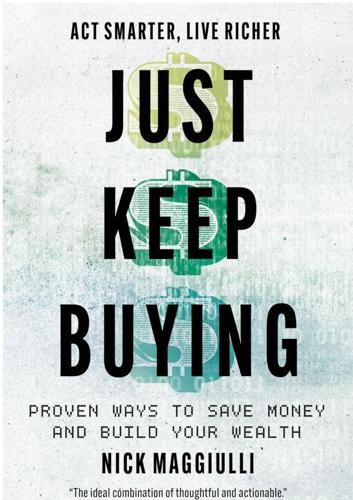
Just Keep Buying: Proven Ways to Save Money and Build Your Wealth
by
Nick Maggiulli
Published 15 May 2022
For example, if you lose your job because of a financial panic, you will be pleased to know that you should be able to rely on the bond portion of your portfolio to get you through these tough times; in other words, you can sell some bonds to generate cash. You can visualize how much bonds help to stabilize a portfolio by examining what happened to various portfolios during the Covid-19 related crash in early 2020. As the following chart illustrates, portfolios with more bonds (U.S. Treasuries) declined less than those with fewer bonds. In this instance, the 60/40 and 80/20 portfolios both declined less than the S&P 500 only portfolio during March 2020. More importantly, those investors that had bond exposure and rebalanced during the crash saw an even bigger benefit during the recovery that followed.
…
Losing 10% requires an 11.11% gain to recover, losing 20% requires a 25% gain to recover, and losing 50% requires a 100% gain (a doubling) to recover. You can see this exponential relationship more clearly in the next chart. On March 22, 2020, when I had the realization that the world was going to make it through the COVID-19 pandemic, the S&P 500 was down about 33%. From the previous chart, this implied that the market would have to gain 50% to get back to even. Every dollar invested on March 23, 2020 (the next trading day) would eventually grow to $1.50, assuming the market recovered to its previous level at some point in the future.
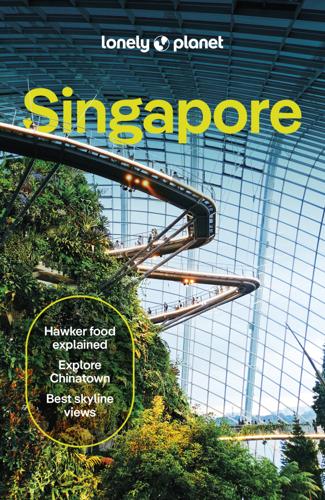
Lonely Planet Singapore
by
Lonely Planet
Published 14 May 2024
In the 1970s and the early days of Singapore’s independence, the island was renamed Sentosa and transformed into a resort with a rotating slew of tourist attractions packed into its compact 500 hectares, though the place only really started to shine after Resorts World Sentosa came along in 2010. Before COVID-19 arrived, Sentosa drew more than 19 million visitors a year – a remarkable number when you consider that the total population of Singapore is only around five million. Little of that early sleepy fishing isle remains today; instead you’ll find myriad artificial attractions in the centre of the island, surrounded by carefully cultivated outdoor spaces exuding that all-important tropical vibe.
…
Hosted by Steven Spielberg Show-Stopping Performances The theme park’s marquee show WaterWorld, based on the titular Kevin Costner flick, is a crowd pleaser with the right mix of explosive pyrotechnics, acrobatic stunts and lots of splashes. Unfortunately, it's been ‘temporarily unavailable’ since COVID-19 restrictions came into effect in 2020, though no updates have been given on the show’s future. Lights, Camera, Action! Hosted by Steven Spielberg is a fun insight into movie magic and the wonders of special effects coming to life on a soundstage. The Shrek 4-D Adventure will make you feel as though you’ve been dropped into the actual Shrek world.
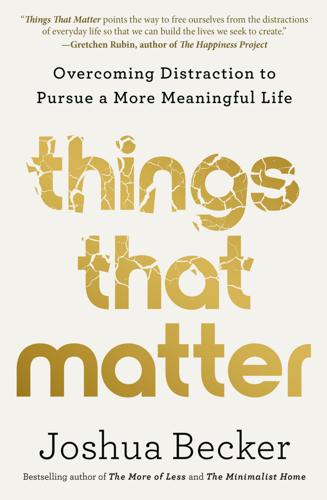
Things That Matter: Overcoming Distraction to Pursue a More Meaningful Life
by
Joshua Becker
Published 19 Apr 2022
Having too many possessions slows us down in the pursuit of what we care about. In the worst cases, it may prevent us from making any progress at all. How sad to think that those clothes we bought from the clearance rack or that furniture we ordered from IKEA or that stuff we splurged on from Amazon during the COVID-19 pandemic would stop us from fulfilling our highest potential. As you read about these three ways property and possessions can be a distraction, ask yourself which one is the biggest problem for you. 1. Tying Up Our Money Oniomania is the technical name for shopping addiction, or compulsive buying disorder.
…
BACK TO NOTE REFERENCE 1 “The Nielsen Total Audience Report: August 2020,” Nielsen, August 13, 2020, www.nielsen.com/us/en/insights/report/2020/the-nielsen-total-audience-report-august-2020. The total time spent consuming media in 2020 had increased by nearly an hour a day over 2019, representing the additional time Americans were spending with media during COVID-19 isolation. The survey also notes, “Some amount of simultaneous usage may occur across devices.” BACK TO NOTE REFERENCE 2 Rani Molla, “Tech Companies Tried to Help Us Spend Less Time on Our Phones. It Didn’t Work,” Vox, January 6, 2020, www.vox.com/recode/2020/1/6/21048116/tech-companies-time-well-spent-mobile-phone-usage-data.
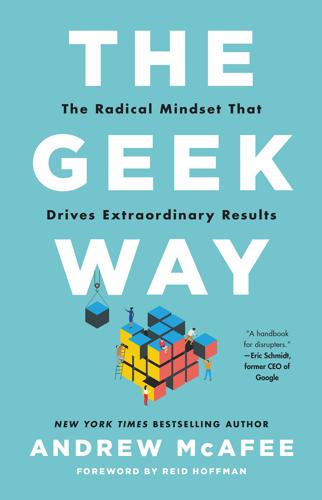
The Geek Way: The Radical Mindset That Drives Extraordinary Results
by
Andrew McAfee
Published 14 Nov 2023
40 “I don’t pretend to know”: Kim Masters, “‘A Bottomless Need to Win’: How Quibi’s Implosion Shapes Katzenberg’s Legacy and Future,” Hollywood Reporter, August 24, 2021, www.hollywoodreporter.com/business/business-news/a-bottomless-need-to-win-how-quibis-implosion-shapes-katzenbergs-legacy-and-future-4083520/. 41 Omakase: Wallace, “Is Anyone Watching Quibi?” 42 “quinoa-based doggy snack”: Wallace, “Is Anyone Watching Quibi?” 43 “almost a beta”: Dade Hayes, “Jeffrey Katzenberg: Quibi Hit Covid-19 ‘Cement Wall,’ but Slow Start Is Like a ‘Beta’ Allowing a Chance to Regroup,” Deadline, June 19, 2020, https://deadline.com/2020/06/jeffrey-katzenberg-quibi-hit-cement-wall-covid-19-but-slow-start-is-like-a-beta-launch-1202963453/. 44 a tweet on April 6: Benedict Evans (@benedictevans), Twitter, April 6, 2020, 4:41 a.m., https://twitter.com/benedictevans/status/1247081959962050561. 45 “everything from casting to wardrobe”: JP Mangalindan, “Quibi Leaders’ $1.7 Billion Failure Is a Story of Self-Sabotage,” Businessweek, Bloomberg, November 11, 2020, www.bloomberg.com/news/features/2020-11-11/what-went-wrong-at-quibi-jeffrey-katzenberg-meg-whitman-and-self-sabotage. 46 his points of comparison: Wallace, “Is Anyone Watching Quibi?”
…
Most of us have the notion that a stable situation—an equilibrium—must be one that most participants, or at least the most powerful ones, are satisfied with. Another commonsense view is that an equilibrium must benefit the group as a whole, even if it leaves some participants worse off. But both of those intuitions are wrong, as the great toilet paper shortage of 2020 showed us. Early that year, as the COVID-19 pandemic spread and economies around the world shut down, people stayed home and stocked up. A lot of us were particularly keen to make sure that we had enough toilet paper. It’s an important household item, after all, and substitutes that don’t clog up plumbing or irritate sensitive skin are rare.
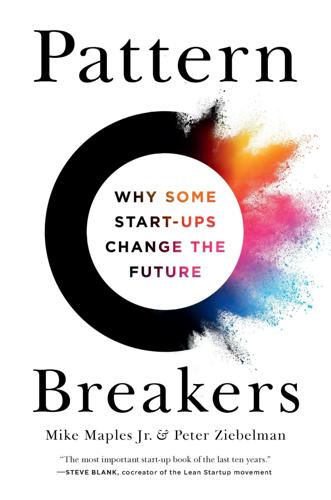
Pattern Breakers: Why Some Start-Ups Change the Future
by
Mike Maples
and
Peter Ziebelman
Published 8 Jul 2024
Under the right circumstances, though, regulations can change—even producing an inflection of their own. A good example is the new telehealth regulations introduced in response to the COVID-19 pandemic. See Table 2.6 for an example of an inflections stress test for telemedicine. Table 2.6 Inflections Stress Test: Telemedicine Inflection Introduction of pandemic-era telehealth regulations The new thing The COVID-19 virus required people to shelter in place, which resulted in new regulations that allowed telemedicine visits to be reimbursed by medical plans and be conducted across state lines.
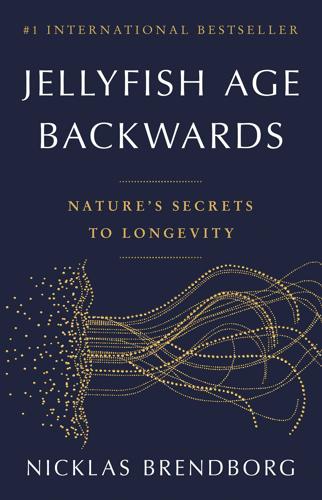
Jellyfish Age Backwards: Nature's Secrets to Longevity
by
Nicklas Brendborg
Published 17 Jan 2023
‘Longitudinal analysis reveals high prevalence of Epstein-Barr virus associated with multiple sclerosis’, Science, vol. 375, no. 6578, 2022, pp. 296–301. Harvey, E.M., McNeer, E., McDonald, M.F. et al. ‘Association of Preterm Birth Rate With COVID-19 Statewide Stay-at-Home Orders in Tennessee’, JAMA Pediatr., vol. 175, no. 6, 2021, pp. 635–637. doi:10.1001/jamapediatrics.2020.6512. Crist, C. ‘COVID-19 May Raise Risk of Diabetes in Children’, WebMD, 2022. Chapter 16: Flossing for Longevity Soscia, S. et al. ‘The Alzheimer’s Disease-Associated Amyloid β-Protein Is an Antimicrobial Peptide’, PLOS ONE, vol. 5, no. 3, 2010, e9505.
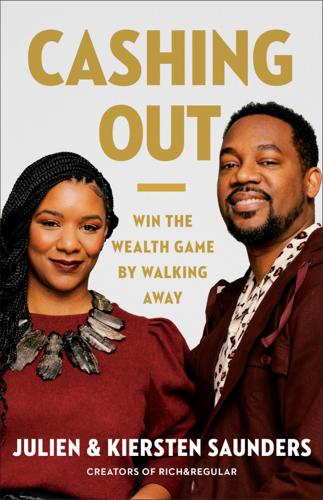
Cashing Out: Win the Wealth Game by Walking Away
by
Julien Saunders
and
Kiersten Saunders
Published 13 Jun 2022
Our feelings were no different, having spent the majority of the year in a daily battle against the intense sadness forced upon us by a global pandemic. Simple everyday acts like going to the grocery store, taking a walk, or opening mail became matters of life or death. As parents of a toddler, we struggled with the decision of whether to send our son to day care and assume the increased risk of COVID-19 exposure. Having been in day care for only a short while and having just begun to build his first relationships outside home, our son, like most kids, hated having to learn and socialize through a screen. He’d had a taste of what the world looked like outside the walls of our home, and he craved more of it.
…
See investment/brokerage accounts Broughton, Philip Delves, 138 Browning, Chris, 218 budgeting, importance of, 16 Buffett, Warren, 163 Bureau of Labor Statistics, 59 burnout, 31–33 Business Insider, 32, 76 Butler, Jason, 135 buying power, Black, 52–55 C cable television, 64 CampFI, 37–38, 212, 219 car dealerships, 61 career, fifteen-year, 74–102 caveats regarding, 75–76 rules and richuals for, 82, 89–90, 95, 101–2 and skeptics, 99–100 years 1–5: paying off debt, 76–82 years 6–10: building an income portfolio, 83–90 years 11–15: building an escape hatch, 90–95 “The Case Against Tokenism’ ” (King), 41 cash bonuses from banks, 130–31 Center for American Progress, 165 certainty in financial markets, lack of, 111, 114–16 children and childcare costs, 30 and fifteen-year careers, 75, 76 and 529 plans, 168, 205 funding investment accounts for, 94 choices, right to make own, 100 churches, Black, 36 civil institutions, faith in, 36–37 Clahar, Erica “Umi,” 221–22 community, time to dedicate to, 25 comparison, avoiding trap of, 224 compound interest and author’s early investments, 155 and investment fees, 172 power of, 67–68, 140, 172 confidence and the “Dwayne Johnson Effect,” 112–13 and FI community, 209 and identifying strengths, 89–90 and investing expertise, 116 conflict in relationships avoidance/fear of, 170, 195 from competing objectives, 42 as a constant, 198, 199 in couples, 11, 189–90, 190 and 51 percent rule, 198 and fighting about money, 198, 199 normalizing, 189 as opportunity for growth, 15 connectedness, false sense of, 25 consumerism and spending as addiction/compulsion, 44–45, 210 and authors’ first conversation about money, 179–88 and Black buying power, 52–55 breaking the cycle of, 45 and budgeting, 16 conversations about, 190–93 in excess of income, 210 and Fast Spenders personality type, 48–50, 51, 52, 61, 69 and identities tied to belongings, 59 and labeling people as “spenders,” 191 and “lifestyle inflation,” 39, 61 and living below your means, 72 of Middle personality type, 50–51 and purpose of income, 51–52 and stealth wealth, 38, 39 See also expenses; frugality content creators, 141–45 conversations about money about debt, 195–96 about future plans, 193–94 about saving, 193–94 about spending, 190–93 authors’ first, 11, 179–88 and constraints of labels, 191–92 exercising curiosity in, 192 and normalizing conflict, 189 pause button in, 202–3 scheduling short but frequent, 202 using “I” statements in, 194 using “tell me more” prompt in, 196–97 couples, 179–203 authors’ first conversation about money, 11, 179–88 and backgrounds of individuals, 180–81, 184–85, 187, 188 challenges faced by, 201 conversations about debt, 195–96 conversations about future plans, 193–94 conversations about saving, 193–94 conversations about spending, 190–93 and divorces, 75, 199, 201, 234 emotional attunement in, 189–90, 193, 195, 196, 202 and expectations for happiness, 200–201, 202 and 51 percent rule, 200–201, 202, 231 and fighting about money, 189, 198, 199 interaction patterns in, 189 and money-related conflicts, 189 rules and richuals for, 202–3 shared goals of, 192–93 courage to accelerate your income, 139 and the “Dwayne Johnson Effect,” 112–14 and making financial progress, 108, 111 and paying yourself first, 118 small acts of, 117–18 courses, digital, 135–37 COVID-19 pandemic changes brought by, 228–29 and FI community, 231–33 lessons learned from, 15, 229–31 and Umi Feeds (nonprofit), 222 unknown financial impact on Black America, 54 Craigslist, 134 credit cards and authors’ first conversation about money, 182–83, 186 cash bonuses from, 131 debt from, 4 high balances on, 45 and Jannese’s success story, 123, 124 paying off, 6, 82 credit scoring, 3 cryptocurrency, 114, 129, 174 curiosity, 116, 192, 196–97 D debt and authors’ first conversation about money, 179–88, 195, 197 authors’ freedom from, 6, 11 avalanche method of paying off, 79, 80 conversations about, 195–96 of couples, 195–96 and living paycheck to paycheck, 77–78 paying off, 6, 76–82, 99, 195–96 and rewarding yourself, 81–82 snowball method to paying off, 80–81, 81 student loans, 4, 6, 59, 76–77, 123, 124, 210 treated like moral failing, 195 See also credit cards Delish D’Lites, 123–24 Deutsche Bank, 128 digital divide, 128.
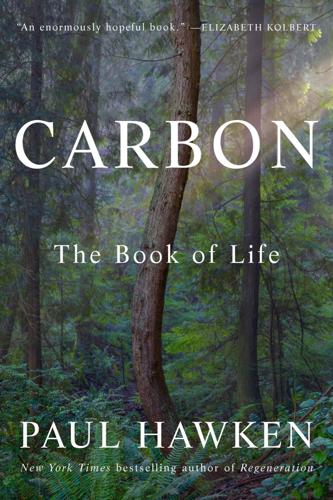
Carbon: The Book of Life
by
Paul Hawken
Published 17 Mar 2025
Viruses are tiny compared to a cell, like a small child standing in front of the Empire State Building. They move in and out of organisms and plants with ease. They neither eat nor grow. Viral genetics change the structure of cells, producing millions of duplicates and occasional mutations. This is how COVID-19 spread and evolved. It is estimated that there are over one trillion species of viruses. Billions suffuse our gut, skin, eyes, hair, mouth, and organs. Viruses have a reputation. Although some viruses such as smallpox, polio, and Ebola can seriously harm human health, scientists have a different narrative.
…
See also mitochondria carbon in, 30–45 fullerenes for, 75 infinite number of events in, 45 molecules in, 31 nanotechnology in, 79 of plants, 92–93, 101 sugar for, 64 viruses in, 33 cellulose, 12 cellulosic fibers, 81–84 Challenger, Melanie, 5, 6, 45 charcoal (amorphous carbon), 73 Chavez, Cesar, 192 Chicxulub meteorite, 144 children Big Food and, 63 food of, 49–50 Chittka, Lars, 134–35 Chödron, Pema, 177 cholesterol, 55, 64 Chown, Marcus, 24 Christmann, Stefanie, 141 Clapperton, Jill, 155 Cleland, Carol, 35 climate change from carbon dioxide, 13–14 as engineering problem, 3–4 food and, 52–53, 57 forests and, 150 language of, 126 plants and, 89–90 soil and, 165 wildlands and, 174 climate crisis/emergency biodiversity and, 5 carbon and, 17–18 doom of, 16 financial institutions and, 5 food and, 70 insects and, 137, 142 lack of action with, 15–16 coal, 143–44 cobalt, 77 Coca-Cola, 66 Coleman, Clare G., 122 Columbus, Christopher, 47, 48, 122 consciousness/intelligence of bees, 134–35 of fungi, 113–14 of insects, 134 of plants, 95–97, 102, 178 for revitalizing Earth, 184–94 copepods, 16–17 corn, 65 in Americas, 67 calories from, 62 fungi and, 107 glyphosate and, 88–89 high-fructose corn sweeteners from, 164 of Indigenous peoples, 67 in Mexico, 66 monocultures of, 164 natural processing of, 67 roots of, 99 varieties of, 68 cortisol, 18 cotton, 88 COVID-19, 33 cows, 56, 62, 65, 89, 171 creatine, 64 crime against humanity, 65 Curl, Robert, 74–75 cyanobacteria, 105–6 D DAC. See direct air capture Darwin, Charles, 7, 30, 101 Bates and, 132 on earthworms, 158 Gaia hypothesis and, 39 on plants, 91–92 Das, Rasel, 80 Davis, Clara, 49–50, 70 Davis, Wade, 122–23, 126 DDT, 77 dead zones, in oceans, 79, 164 decarbonization, 2 deforestation, 39, 139, 165 dementia, 51, 63, 69 dental caries, 66 depression, 51, 63 Descartes, René, 95 The Descent of Man (Darwin), 91 desertification, 165 dextrose, 55 diabetes, 51 absence of in Native Americans, 69 in Mexico, 66 pharmaceuticals for, 63 phthalates and, 80 diamonds, 73 Dickinson, Emily, 129 Diné, 130–31, 187 direct air capture (DAC), 110 Dittmer, Howard, 92 DNA, 12 fullerenes for, 75 nanotubes and, 77 Dolman, Brock, 167 domestication of animals, 137 of food sources, 62 of honey bees, 34 in nanotechnology, 78–79 Don Quixote (fictional character), 8 dragonflies, 114, 130–31, 143 drought, 94 Dubois, Alphonse, 131 Duncan, David James, 181 dung beetles, 158–60 E earthworms, 157–58, 163, 165 Ebola, 33 economic system, 15 Eden Project, 73 Eemian period, 145, 146–48 Einstein, Albert, 35, 190 Eklöf, Johan, 169 electrolytes, in saliva, 55 electrons in carbon, 14 in iron, 21 elements from Big Bang, 22 carbon as, 11–19 El Niño, 94 Emerson, Ralph Waldo, 181 emphysema, 77 energy, 179.
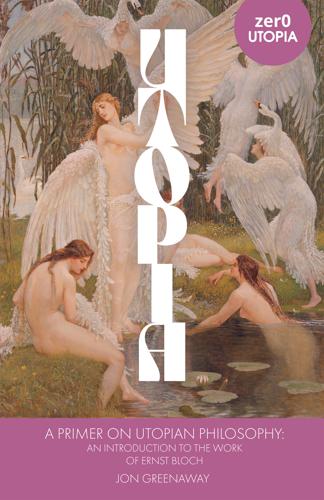
A Primer on Utopian Philosophy: An Introduction to the Work of Ernst Bloch
by
Jonathan Greenaway
Published 29 Mar 2024
The Obama campaign’s rhetoric suggested a great coming together of all peoples, that if we tried hard enough and worked hard enough and believed then all our hopes could well be fulfilled. Of course, what that meant in practice was two terms of disappointment, of passively watching the political structures of American imperialism thrash along and the promised better things never really arriving. In the wake of 2008, and in the wake of the Trump presidency, the COVID-19 pandemic, the series of crises of capitalism that have wracked much of the modern world and the ever-grinding news of exploitation and violence which sustains so much of our shared existence, hope cannot help but seem like a distant idea at best and, at worst, undeniable quietism in the face of disaster.
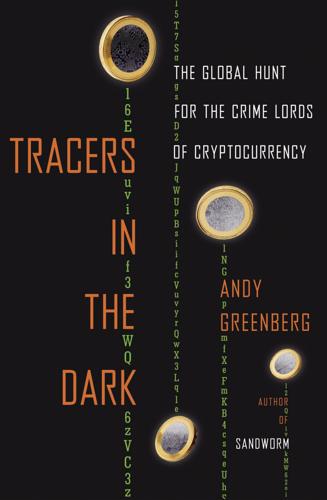
Tracers in the Dark: The Global Hunt for the Crime Lords of Cryptocurrency
by
Andy Greenberg
Published 15 Nov 2022
Both brokers were indicted in absentia, but they and the Lazarus hackers themselves remained beyond the reach of U.S. law enforcement, and only a few million dollars’ worth of the thieves’ total haul have been reclaimed. One summer afternoon in 2020 during that North Korean hacker investigation—in the early months of the COVID-19 pandemic—Twitter suddenly blew up with strange messages, seemingly posted by many of its most high-profile users. Hackers, it soon became clear, had simultaneously taken over the Twitter accounts of Bill Gates, Elon Musk, Jeff Bezos, Barack Obama, Apple, and the then presidential candidate Joe Biden, all to deliver the same message: “I’m feeling generous because of COVID-19. I’ll double any BTC payment sent to my BTC address for the next hour. Good luck, and stay safe out there!” The scam netted nearly $120,000 in just minutes before the messages could be deleted.
…
“I’m very, very delighted to welcome many new customers from the banking sector,” Gronager told the crowd. “Crypto is about how we, as an industry, change the course of finance.” He began rattling off numbers about exactly how much the cryptocurrency industry had changed since just 2019, the last time Chainalysis held its conference, before the COVID-19 pandemic. Two years earlier, a bitcoin had been worth just over $8,000. On the day of Gronager’s speech, it was worth more than $66,000, a new record. The total value of all bitcoins had grown from being measured in billions of dollars to rocketing past $3 trillion. “Virtually any single metric in crypto has 10x-ed over the last two years,” he said.

Inner Entrepreneur: A Proven Path to Profit and Peace
by
Grant Sabatier
Published 10 Mar 2025
I started selling websites to small single-lawyer firms and scaled up quickly to large firms with a lot more money and a lot more potential upside for a new website. For a single lawyer, $500 is a lot of money to spend on a new website, but $50,000 is nothing for a 100-person firm. 5. Is there a time limit to the opportunity? During the height of the COVID-19 pandemic, many people made quick money by selling items that people desperately needed but were in short supply. Textile companies and home-based crafters started making handsewn masks. Commercial and home-based distillers began producing hand sanitizer. Some of these entrepreneurs pivoted existing businesses to meet the needs of the current market, while others quickly set up a system to capitalize on it.
…
And he wasn’t even up front; I could see him in the back filling up pastries. Dan, if you’re reading this, I love your bread and your business! Uniqueness and Scarcity What is rare or one of a kind is often valuable. This goes for high-end luxury items like art and collectibles and things that are scarce but necessary. During the early months of the COVID-19 pandemic, we saw how quickly something can go from cheap and available to expensive and scarce. Perceived Value You can often charge two different people wildly disparate amounts for the same service because one of them perceives a greater value in what you’re offering than the other. This largely depends on how much money each person has, since the value of money goes up or down depending on how much of it you have.
…
See also affiliate marketing and partnerships community-building building and inner circle, 254–55 and buying an existing business, 341–43 cultivating partnerships, 27–28 and digital product businesses, 51 and evangelist customers, 167–68 and goals of Solopreneurship, 155–57 and growth entrepreneurship strategies, 254–55 and pricing of products, 80–81 steps for, 157–75 and value of customers, 247 compensation packages, 275–77, 280–81 competition and advantages of entrepreneurship, 321 and buying an existing business, 337, 345 vs. cooperation, 27 and digital product businesses, 49–52 and growth entrepreneurship strategies, 254 and keyword research, 111–12 and physical product businesses, 53–54 and pricing of products, 79–81 and selling your business, 288, 297, 299 and social media strategies, 105 and standardizing business-management systems, 213 and value of great content, 95–97 and value of sharing your story, 94–95 consulting services, 18, 35–36, 58–59, 61–63, 285, 307–8, 372 content creation and affiliate/advertising businesses, 67–69 and AI threat, 321 and author’s entrepreneurial background, 34 and buying an existing business, 293, 334, 336, 347 and contractor team-building, 221 for digital advertising, 235 and formula for perfect business, 35 and growing your business, 230–31, 233, 240, 246–47, 248, 249–50 key website content, 115–20 and market research, 73–77 and pricing of products, 80 productized service businesses, 211–12 and productized service businesses, 66 quality over quantity, 161–62 and standardizing business-management systems, 206–9 and value of great content, 95–106 and value of storytelling, 93, 94 contractors, 215–20, 257, 268. See also freelance workers; outsourcing cooperation, 27, 80–81. See also collaboration; community-building cost of goods sold (COGS), 81, 82–83 cost per click (CPC) metric, 236 COVID-19 pandemic, 78, 85, 176–77 credit cards, 135–36, 139 cross selling, 170 crowdfunding and crowdsourcing, 83, 157–60 Curelop, Craig, 201 D debt, 346, 375. See also loans demographic trends, 9, 98–100 digital goods, 48–52, 74 digital marketing, 18, 64, 232–37, 264 digthevibe (app), 38–39 direct to consumers (DTC) sales, 55–56 discounted cash flow (DCF), 302–3 discretionary expenses, 140–42 diversification and advantages of holding companies, 315 and buying an existing business, 336–37 and empire entrepreneurs, 14–15 of income streams, 34, 43 of investments, 201 new product development, 253–54 and personal skill set, 26–27 of products, 253–54 of products and services, 170 dividends, 134, 328 domain names, 113–14 Dorkin, Joshua, 201 Dropbox, 66 Drucker, Peter, 176 due diligence and buying an existing business, 342, 346, 350–52, 354, 356, 360–61, 364–67, 370, 372 and selling your business, 294, 297, 305 E earnings per click (EPC) metric, 125 earnout agreements, 305–6, 349–50, 364–65, 373 e-commerce products, 53–57.

Power and Progress: Our Thousand-Year Struggle Over Technology and Prosperity
by
Daron Acemoglu
and
Simon Johnson
Published 15 May 2023
Consequently, new algorithms for automated grading or automated teaching could appear more attractive to them. The same is true in health care. Despite the $4 trillion that the United States spends on health care, hospitals also face budget pressure, and a shortage of nurses became painfully evident during the COVID-19 pandemic. New technologies that increase nurses’ capabilities and responsibilities would mean hiring more nurses for higher-quality health care. This observation reiterates a key point: human-complementary machines are not attractive to organizations when they are intent on cost cutting. Another challenge is that new platforms and methods of aggregating and providing information to users also open up possibilities for novel exploitative uses.
…
It involves a “presidential hackathon,” which allows citizens to make proposals to the executive. Another platform, g0v, provides open data from several Taiwanese ministries, which civic hackers can use to develop alternative versions of bureaucratic services. These technologies helped Taiwan’s early and effective response to COVID-19, in which the private sector and civil society collaborated with the government to develop tools for testing and contact tracing. New forums for virtual participation can of course repeat the same mistakes that social media commits today, exacerbating echo chambers and extremism. Once such tools start being used extensively, some parties will come up with strategies to spread disinformation, whereas others might use such platforms for demagoguery.
…
The same combination was important for many postwar scientific breakthroughs where the US government had articulated a strategic need, including for air defense, sensors, satellites, and computers. The recipe often brought together leading scientists to work on the problem and subsequently generated a sizable demand for these technologies, encouraging the private sector to jump in. A variant of this approach led to rapid vaccine development during the COVID-19 pandemic. A similar combination could be effective in redirecting digital technology. When the social value of new research directions is established, it can draw many researchers in. Guaranteed demand for successful technologies can additionally incentivize private companies. For instance, the US government could convene and fund research teams to develop digital technologies that complement human skills to be used in education and health care, and commit to deploying them in US schools and Veterans Administration hospitals, provided that they meet the requisite technical standards.

Routes to Rejoin
by
Stay European
Published 3 Oct 2021
Brexit is ‘going OK’ only and precisely to the extent that it still has not happened yet. The end of the transition period on 31 December 2020 was the clearest moment so far when a large number of new rules (though far from all of them) came into effect. But it arrived almost a year into the Covid-19 pandemic, nine months since the first UK lockdown and only days before the third (!) national lockdown on 6 January 2021. People are, for the most part, not travelling at the moment, or travelling as little as they can. Far from looking for opportunities to work around Europe, those who can are still working from home.

12 Bytes: How We Got Here. Where We Might Go Next
by
Jeanette Winterson
Published 15 Mar 2021
We’ll be fighting for food, not tweeting from our fridges. Others believe that developing super-intelligent AI, as swiftly as we can, is our best chance at survival. Until 2020, none of us was thinking about viruses as the wipe-out call. Now we are. Ironically, although the world may become much poorer because of Covid-19, the virus is a chance for the tech giants to get much richer, and to get more control. And not just Amazon doing home delivery. Eric Schmidt has been talking enthusiastically about home-schooling for all (except the rich, you can be sure), using the platforms that have begun to replace contact during the pandemic.
…
There is such a thing as love at first sight, but relationships of any kind develop slowly. * * * Relationships matter to humans. Some of our relationships are wonderful. Some are instrumental. Some are basic and boring. Some are toxic. People without relationships suffer from both physical and mental-health issues. Being alone is fine. Being lonely is not fine. * * * The Covid-19 crisis has triggered many unwelcome outcomes: death, illness, job loss, mental turmoil, economic stress. And a relationship crisis. People found themselves forced apart from their loved ones. Simultaneously, we were denied those daily interactions that make a difference. Shopping isn’t only about purchasing.
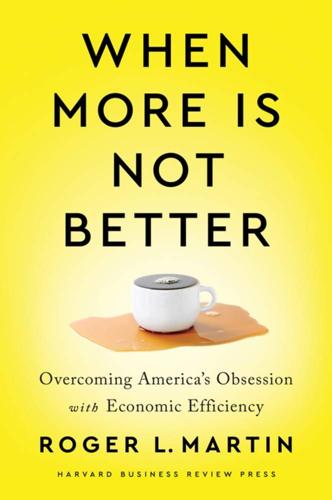
When More Is Not Better: Overcoming America's Obsession With Economic Efficiency
by
Roger L. Martin
Published 28 Sep 2020
Closing Thoughts Notes Index Acknowledgments About the Author Foreword Roger Martin turned in the final draft of this book on January 19, 2020, right around the time that most of us were first hearing about the novel coronavirus and first finding ways to believe that it posed no great threat to our lives or plans. Two months later, most Western nations were in lockdown and almost everything about the future was suddenly unknown. As I write these words, confined to my apartment in New York City, the national death toll from COVID-19 is approaching 20,000, and tens of millions of our fellow citizens are facing financial ruin. Yet one of the most promising reactions to this global catastrophe has been the growing realization that it offers us a once-in-a-lifetime chance to change things—big things that seemed immutable just a few months ago.
…
In 2014 I had the great fortune to be selected as a Fellow at the MPI, where I and six other researchers met and collaborated over the course of five years to explore ways to strengthen democratic capitalism—to make it simultaneously more dynamic and more fair. This book is the most important of many works that emerged from those discussions. It represents Martin’s best thinking about how we can cultivate the best garden. The COVID-19 crisis, along with its incalculable losses and disruptions, also gives us a once-in-a-lifetime chance to rethink the foundations of our economy and society. But to seize that chance we must improve our thinking—our mental representations of the systems that need changing. The book you are about to read will do that.

Uprooting: From the Caribbean to the Countryside - Finding Home in an English Country Garden
by
Marchelle Farrell
Published 2 Aug 2023
The heavy quiet enfolds me, and my shoulders drop under the weighty hug of reprieve. I sigh into the clear balm of this belated certainty. Stay at home. Along with millions of other British people, we are locked into our houses, the long overdue, utterly shambolic government response to the soaring crisis of lives lost to this new virus, this Covid-19. Lockdown comes as a long exhalation of relief – at least for those of us for whom the idea of home is a sanctuary. For us lucky ones, it is clear what to do now. The anxiety of carrying on as normal, the fear of every interaction potentially being a chain reaction of death, has been wiped clean in one direct mandate at last.
…
I find myself crying into the undergrowth of the garden a lot these days. I cry for all the things that I have lost – certainty, security, safety. I cry out of frustration with the world. Oli has been returning from the hospital distraught by the government’s edict to discharge patients to unprotected care homes without testing for Covid-19, knowing that what will inevitably happen is akin to mass murder, but helpless to stop it. I hold him at the end of his shifts and feel his spirit buckle under the weight of moral injury he is having to endure. My stomach churns as I see an unnatural hierarchy of the worth of human life being imposed, just as it was in the colonies under slavery; the justification of the inhumane sacrifice of one type of body over another.
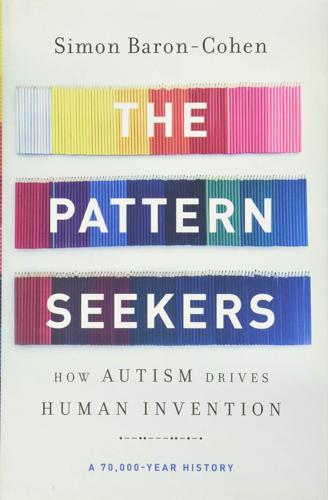
The Pattern Seekers: How Autism Drives Human Invention
by
Simon Baron-Cohen
Published 14 Aug 2020
Our thanks should go to people like Janus Fris, the Danish co-inventor of Skype, who had no formal education and dropped out of high school. And night and day, in molecular biology laboratories, hyper-systemizers are working tirelessly to invent a new vaccine that will outsmart the invisible killer that is COVID-19, the new coronavirus. And as we look beyond COVID-19 at the other major challenge our planet faces—climate destruction—we look to hyper-systemizers to invent new solutions. The great physicist Freeman Dyson wrote a book called Maker of Patterns to describe his life exploring patterns in mathematics and physics. This book joins the dots between pattern-seeking in our world’s greatest scientists and inventors, and pattern-seeking in autistic people.
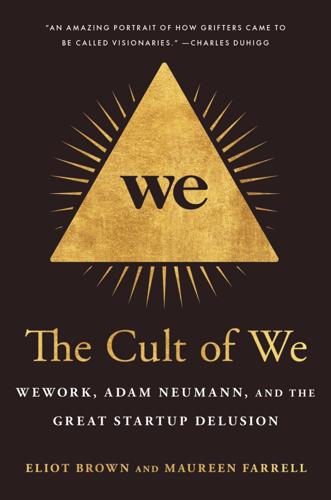
The Cult of We: WeWork, Adam Neumann, and the Great Startup Delusion
by
Eliot Brown
and
Maureen Farrell
Published 19 Jul 2021
Despite announcing $108 billion in commitments the prior year, little if any of that was binding. Yet Son’s troubles weren’t over. An activist investor, Elliott Management, took a big stake in SoftBank and began pressuring SoftBank to sell more of its assets—to spend more money boosting the stock through buybacks rather than pouring money into startups. Another dagger came from COVID-19. The onset of the pandemic sent the ride-hailing market into a tailspin, reversing an early 2020 rally in Uber’s shares. Son, again on his back foot, took to PowerPoint. In May 2020, during a call with investors, he featured a slide of horses stampeding into what he called “the valley of the coronavirus” with some unicorns flying out.
…
Through attrition, outsourcing, and more rounds of layoffs, WeWork’s head count eventually fell by more than 8,000 from its peak of over 14,000 to 5,600 by mid-2020. SoftBank’s cash provided an important cushion; some competitors were even more strained. It still had plenty of longer-term commitments. Executives felt the uncertainty caused by COVID-19 might actually be able to play in their favor once everyone went back to the office. There were convincing signs that whenever normalcy returned, flexible space would be in demand. While it surely didn’t have the novelty of a “physical social network,” real estate arbitrage might yet turn into a viable business
…
Days before the money was supposed to roll into Neumann’s bank account—as well as those of former employees and other investors—SoftBank reneged. Citing multiple provisions in the deal documents that it thought gave it an out—a China financing deal hadn’t happened, and WeWork was dealing with investigations from regulators—SoftBank simply refused to pay up. COVID-19 was sweeping the globe. WeWork’s finances were looking dire. Masayoshi Son didn’t want to spend another $3 billion on WeWork, even if he’d agreed to do it. As he’d told Marcelo Claure in an email later unearthed in a court fight, “Don’t do the tender.” Claure emailed that it showed Son was realizing he needed more discipline.
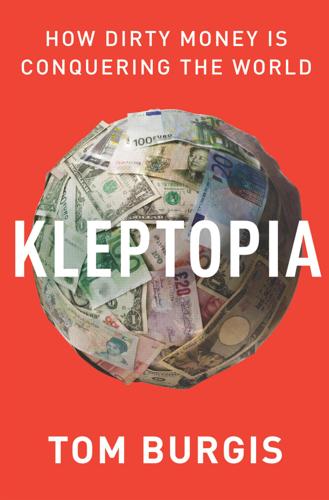
Kleptopia: How Dirty Money Is Conquering the World
by
Tom Burgis
Published 7 Sep 2020
After the Crocodile replaced Mugabe in 2017, he imported Chinese facial recognition technology similar to that used to monitor Uighurs in Xinjiang province. And to that used in the Kazakh capital, previously known as Astana, now, after the father of the nation, as Nursultan. As they hoarded secrecy, the kleptocrats set about harvesting privacy. Covid-19 came as a gift. It was the perfect pretext to assume sweeping powers, expand surveillance states and empty public treasuries with even less scrutiny than usual. They formed a new five families, these international kleptocrats: the Nats, the Brits, the Sprooks, the Petros and the Party. The Nats, they declare themselves the saviours of besieged nations while overseeing the plunder of those nations.
…
(moneyman), 54–5, 56, 280–1, 282–3, 351–2n Cohen, Michael (Trump fixer), 317, 324–6, 415n, 418n Colchester, 243, 271 Colombian drug cartels, 201 Congo, 49–54, 56, 276, 277, 279, 280–3, 284, 307–8, 402–3n, 404–5n, 413n Congo Cobalt Corporation (CCC), 406n Connolly, John, 86 Conservative Party, 121, 215; and ‘City grandees’, 13; May’s ‘hostile environment’ policy, 257; and Patrick Robertson, 262; Temerko’s donations to, 337, 423n Conté, Lansana, 201 Coppa, Frank, 83 copper, 10, 51–2, 55, 278–9 Corporation of London, 120, 136–7 Courchevel (French ski resort), 124–5, 183, 235 Covid-19 pandemic, 296, 336 Crédit Agricole, 29 Credit Suisse, 13, 14, 171, 214, 241, 278–9, 394n CrowdStrike (cybersecurity firm), 414n Cyprus, 246, 379n, 396n Czechoslovakia, 31–2 Dagan, Meir, 258 Dalman, Mehmet, 174, 335, 374n, 421–3n David, Craig, 209 Dawkins, Richard, 176, 377n Delimkhanov, Adam, 234–5, 237, 391n Deloitte & Touche, 13, 179 Deltour, Antoine, 231, 390n Democratic Choice for Kazakhstan, 166 Deutsche Bank, 13 Dezita prospect (Congo), 402–3n DiBartolomeo, Joseph, 258 Diligence (corporate intelligence firm), 103–5, 117, 160, 304, 362n Dinmore, Guy, 253 Docklands development (London), 118–19 drug trade, 72, 86, 87, 99, 170, 177, 201, 246 drugs, use of, 15 Dubai, 144, 289, 331, 391n Dudley, Bob, 17–18, 19, 20, 22, 23, 342–3n, 343n, 344n, 345n Duterte, Rodrigo, 337 Earhardt, Ainsley, 310 Edmonds, Phil, 56, 185–6, 336 EFG (Swiss bank), 329, 420n Egypt, 119 Eliot, T.S., ‘Macavity’, 243 Elmer, Rudolf, 230 Elson, Monya, 342n Epstein, Gideon, 365n Equatorial Guinea, 201, 246 Erdoğan, Recep Tayyip, 324, 337 Erskine, John, 353n Erste Resources SA, 403n Escobar, Pablo, 201, 384n Esper, Mark, 318, 416n Eural Trans Gas, 381n Eurasian Natural Resources Corporation (ENRC): listed on London Stock Exchange, 12–15, 23–4, 121–2, 128–31, 335, 367n; buys Camec, 73, 276, 401–2n; and Rudny (iron mine), 94–5, 128–31, 133–5; and corporate governance, 121–2, 128–31, 367n; Gerrard’s investigation into in Kazakhstan, 128–31, 133–5, 158, 172–3, 307, 367–8n, 368–9n; Russian Trading Scheme, 129–30; Trio retain control of after flotation, 129–30, 174, 367n; SFO’s ultimatum to (January 2013), 173–4; Gerrard’s investigation into in Africa, 173, 174, 210, 276–9, 281–2, 283, 284, 285, 307; and Victor Hanna, 174, 275–7, 278, 279, 280, 281–2, 283–4, 285, 300, 400–1n; formal SFO investigation into, 210–11, 212, 276, 282, 284–7, 299–304, 308, 309, 402–3n, 410n; moved to Luxembourg, 210–12; the Trio’s buyout/delisting scheme, 210–12, 387n; buys Chambishi copper smelter, 278–9; Trio extract money from, 279–80, 281–2, 283; Dezita prospect purchase, 279, 402–3n; Och-Ziff bribery case in US, 282–3, 307; series of deaths relating to, 283–7, 308–9, 405–8n; McCormick as employee, 284–6, 300, 410n; Trio’s alternative facts on Gerrard, 299–302, 411n; Mirakhmedov’s role with, 334–5, 421n Euro-Asian Jewish Congress, 212–13, 387n European Court of Human Rights, 42, 268–9 European Union (EU), 114, 251, 262, 277, 306–7, 412n Evans, Sir Dick, 161–2, 372n extraordinary rendition, 254 Exxon, 45, 201 Facebook, 256, 270, 313 facial recognition technology, 336, 423n fake news and alternative realities, 238, 295, 303, 304–6, 311–12, 317–19, 414n; and FSB, 16–23, 342–5n; and expropriation of Yukos, 35–6, 38–43, 64, 65; and Trump, 274–5, 303, 311–12, 313, 317–19, 322–3, 400n, 414n, 417–18n; Trio and Gerrard/SFO, 299–304; strategy of projection, 317, 320, 416n; and the anti-corruption campaign, 320, 417n; malleable public record under Trump, 322–3, 417–18n Falciani, Hervé, 230–1 Farage, Nigel, 337 Fayulu, Martin, 308 FBI, 78, 156, 375n, 377n, 381n; Michael Sheferovsky as informant, 79–80; Felix Sater as informant, 82–4, 87, 199, 249, 313; Whitey Bulger scandal, 86, 87; and Solntsevskaya brotherhood, 99; and Semyon Mogilevich, 176, 179, 180, 183; takes over Bethel and Strydom case (2020), 309 FBME Bank, 203, 246, 385n, 396n Ferguson, Alistair, 344–5n Ferguson, Ian, 263 Financial Conduct Authority, 185, 187, 382n; management ‘concerns’ over Wilkins, 207–8, 386n; Wilkins’ email (June 2014), 217, 228–9, 389n; Wilkins suspended by, 229, 230, 231–2, 358n; fires Wilkins for gross misconduct, 232, 239, 272; Wilkins’ Employment Tribunal case against, 239–40, 241, 242–3; Osborne removes Wheatley from, 241, 395n; Wilkins’ settlement with, 242–3, 272; disciplinary report on Wilkins, 347n financial crash, global (2008), 7, 15; bailout of financial system, 8, 61, 62, 70, 117, 271, 354n; the masses left with the bill for, 8, 14, 29; increased scrutiny of City after, 58–9, 70–1, 353n; US unemployment rate, 74; sovereign debt crises after, 88, 358n; worldwide recessions following, 88 Financial Services Authority (FSA), 70, 71, 342n; Wilkins’ post at, 5–6, 59, 120, 137–8, 185–7; Wilkins’ view of performance of, 6, 137–8, 185–7; warning to BSI (2004), 59, 137, 187, 353n; Wilkins warns about BSI (2008), 71, 88–9, 137, 187–8, 214–15, 216, 231, 240, 329–30; and tax schemes, 186–7 Firtash, Dmytro, 182, 289, 378–81n Fisherman, Igor, 376n Five Star movement (Italy), 254 FL Group, 367n Fleury-Mérogis prison (Paris), 252 Flint, Martin, 29, 332–3, 347n Florida, 78, 199, 200–1, 202, 315, 415n Flynn, Michael, 324, 418n Forbes, Dr M.J., 386n Foreign Corrupt Practices Act (USA), 156 Formula One motor racing, 224 Foster, Norman, 63 Foucher, Laurent, 193, 247–8, 396n Fox News, 310–11 Fraenkel, Ernst, The Dual State: A Contribution to the Theory of Dictatorship, 36–9, 268, 348n Franzese, Michael, 77, 78 Franzese, Sonny, 77 Freeland, Chrystia, Sale of the Century (2005), 35, 347n, 348n Freeman, Andrew, 388n, 389n FSB (Federal Security Service), 18–23, 174, 183–4, 234, 342–5n FTI Consulting, 257–8, 398n FTSE 100 list, 13, 126, 157, 210 Fusion GPS, 302–3 Gaddafi, Muammar, 120 Galeotti, Mark, 374–5n; The Vory (2018), 342n, 356n, 360n Gambino family, 356n Gangi, Rosario, 357n Garske, Peder, 395n gas industry, 18, 20, 21, 22, 181–2, 183, 226, 344–5n, 344n, 379–81n; Ukraine pipeline, 100, 222, 224, 289, 331, 389n Gazprom, 18, 20, 21, 22, 181–2, 344–5n, 344n, 381n Geithner, Tim, 170 Geneva, 100, 108–9, 110, 123–4, 156, 190, 199–200, 247–8, 361n Geremeyev, Ruslan, 234 Gerrard, Neil, 128–9, 367n; investigation into ENRC in Kazakhstan, 128–31, 133–5, 158, 172–3, 210, 307, 367–8n, 368–9n; investigation into ENRC in Africa, 173, 174, 210, 276–9, 281–2, 283, 284, 285, 307; fired by Sasha, 184, 210, 276, 282, 284, 300; Trio’s alternative facts on, 299–302, 411n; threats to and surveillance of, 303–4 Gertler, Dan, 280–1, 282–3, 307–8, 404–5n, 404n Giangamboni, Carla Maria, 409n Gibson, John, 304, 309 Giffen, James, 156–7, 161, 370n Gigante, Vincent, 79, 356n Giles, Andrew, 347n Giuliani, Rudy, 317 Glasenberg, Ivan, 9, 23–4, 162, 281, 308 Glasser, I.
…
Leo, 74, 75, 81, 82, 83, 84, 85–6, 87, 355n GlaxoSmithKline, 13 Glencore, 9, 23–4, 52, 162, 281, 308, 372n, 404n, 413n Global Options Management, 363n, 364n, 370n globalisation, 106, 157, 163, 176 Goche, Nicholas, 52–3, 351n Gogol, Nikolai, Dead Souls, 43, 349n gold fields, 26, 49 Goldman Sachs, 329, 419n Gorbachev, Mikhail, 33, 95, 96, 359n Gordon, Zeev, 379–81n Gorman, Jim, 283–4, 405–6n Gottdiener, Ernest, 357n Gotti, John, 74, 87 Gould, Dick, 302 Great Depression, 26 Greece, 88, 230, 358n Gref, German, 211 Grenell, Richard, 303, 411–12n Grenfell Tower fire (June 2017), 288–9, 408n Groves, Andrew, 56, 185–6, 336 Guernsey, 26 Guevara, Che, 50 Guinea, 201, 384n Gulliver, Stuart, 216–17, 388n Hamilton, Alexander, 179 Hanna, Victor, 174, 275–7, 278, 279, 280, 281–2, 283–4, 285, 300, 400–1n Hardman, Chris, 104, 117, 159 Hardy, Thomas, 4–5, 289, 329 Hartnett, Dave, 215 Havel, Vaclav, 31 Hawtry, Thomas, 299 Health Management Ltd, 386n hedge funds: move into Africa, 54, 55–7, 73, 185–6, 280–1, 282–3, 307–8, 336, 351–2n, 404–5n; Och-Ziff, 54, 56, 280–1, 282–3, 307, 351–2n, 404–5n; sources of funds, 55, 186–7; and Nigel Wilkins, 137, 185–7, 200; anonymising of money by, 186–7, 200 Her Majesty’s Revenue and Customs (HMRC), 70–1, 88–9, 137, 215, 242, 358n Herbert Smith (City law firm), 129–30 Hezbollah, 246 Highrock companies, 379–81n Hirst, Damien, 48, 304, 350n Hogan Lovells (City law firm), 104, 117, 159, 301 Hollingsworth, Mark, 421n Honey, Ron, 401n, 402n, 408n Hong Kong, 157, 320, 338 Horton, Scott, 374–5n Howell, John, 257, 397n, 410n HSBC, 52–3, 170, 216–17, 230–1, 280, 350n, 351n, 373n, 388n Humphrey, Calvin R., 248–9, 395n, 396n Hungarian revolution (1956), 96 IBM, 13, 99 Ibragimov, Alijan (one of Trio), 13, 94, 130, 131–2, 332–5, 420–3n Ibragimov, Dostan, 334–5, 421n Ibragimov, Farhad, 94, 135, 369n Ibrahim, Rania, 288–9 Iceland, 126, 367n Ilis Management (front company), 376n Imperial College London, 13 intelligence agencies, private, 29, 105–7, 244, 247, 248–9, 257–60, 266, 294, 304, 332–3, 338, 362n intelligence services, US, 17, 21, 106 International Finance Corporation (IFC), 235–6, 392n International Mineral Resources, 279 Iorizzo, Lawrence (Fat Larry), 76–7, 78–9, 179, 201 Iran, 321–2, 331–2 iron, 10, 55, 94–5, 133–5, 201 Islamist terrorism, 82 Israel, 75, 77, 95, 174–5, 180, 212–13, 294, 337, 376n, 387n Itera (Russian gas company), 379–81n Ivankov, Vyacheslav, 76, 99, 315, 356n Ivashko, Vladimir, 96 Jackson, Clement, 308, 405n Jacksonville (Florida), 201 Jardemalie, Bota, 60–6, 160, 190–2, 193, 256, 267, 292, 354n; at meeting with Ron Wahid, 106–7, 258, 362n; granted asylum in Belgium, 292–3; and Kazakh pressure/intimidation, 292–4, 409n Jewels, Bruce, 52–3, 280, 350n Jews: Nazi persecution, 26, 37, 38; ex-Soviet in USA, 75–6; ex-Soviet in Israel, 174–5, 376n; Euro-Asian Jewish Congress, 212–13, 387n; Soviet émigrés to Canada, 222–3; as Other for global kleptocrats, 338 Johannesburg, 278, 283–4, 308 Johnson, Boris, 337, 423n Jones Day (law firm), 13 JP Morgan, 162 Judge, Sir Paul, 13, 121–2, 366n Judt, Tony, 163, 372n Julius Bär (Swiss bank), 230 Kabila, Joseph, 280, 282–3, 307, 308 Kabila, Laurent, 50–1, 52, 53, 280 Kadyrov, Ramzan, 234–5, 236–7, 337–8, 391–2n Kalmanovich, Shabtai, 376n Karimov, Salavat, 40, 348–9n Katumba Mwanke, Augustin, 52, 280, 281, 282–3, 351n Kay, Lord Justice, 196 Kazakhmys (copper corporation), 157–8, 371n Kazakhstan, 10–12, 13–14, 60–4, 66–7, 68–9, 107–8, 111–16, 123–7, 159–60; demands for political reform, 12, 67–8, 111; political murders in, 12, 111, 113, 166; Nazarbayev’s expropriation of BTA, 62–3, 64–6, 69, 103–5, 116–17, 144, 190–1, 205, 235; Rudny (iron mine), 94–5, 133–5; ‘Project Super Khan’, 115; privatisation programme, 126, 132–3, 158, 368n; the Trio takes over industries, 126, 132–3, 158, 175, 211, 368n; transition to capitalism, 140–4; Zhanaozen massacre (December 2011), 140–53, 154–5, 163, 165–8, 195, 292, 297–8, 369–70n; and Tony Blair, 154–5, 161, 163, 166, 372n; kidnapping of Ablyazov family, 189, 192–7, 198, 247, 251, 252–5, 263, 291–2, 383n, 397n, 408–9n; Kenes Rakishev in, 235–6, 237, 238, 392n, 393n; Kazaword material, 256–7, 258, 259–60, 264–5, 292, 392n, 398n; and Fraenkel’s Dual State, 268; Ablyazov convicted in absentia (2017), 293–4, 409n; protests and unrest at 2019 elections, 295, 409n; continued lawsuits against Ablyazov circle, 296–7 see also Ablyazov, Mukhtar; Nazarbayev, Nursultan; the Trio Kazaword web page, 256–7, 258, 259–60, 264–5, 292, 392n, 398n KazChrome, 132 Kazhegeldin, Akezhan, 112, 114, 155, 158, 302, 364n, 371n, 411n Kazminerals, 371n KazMunaiGas, 144 Keating, Kelly, 407n Kelimbetov, Kairat, 211–12 Kendirli (Caspian Sea resort), 142 Kenzhebaev, Bazarbai, 150, 370n KGB, 18, 23, 34, 78, 97–8, 183–4 Khashoggi, Jamal, 321, 417n Khodorkovsky, Mikhail, 34, 35–6, 38–9, 40–3, 64, 65, 190, 347n Khrapunov, Iliyas, 108–10, 123–5, 126–7, 193, 194, 198–9, 238, 362n, 366n; real estate project with Sater, 110, 198, 199–200, 203–5, 245, 246–7, 314, 324, 385–6n; pursuit of in US courts, 244–9, 324, 395–6n; and Kazaword material, 256; Arcanum’s ‘Raptor II’ targets, 259–60; continued lawsuits against in Western courts, 296–7 Khrapunov, Viktor, 107–8, 110, 123–5, 126–7, 158, 198–9, 235, 245, 246; Arcanum’s ‘Raptor II’ targets, 259–60 Khrapunova, Leila, 110, 124–5 Kieber, Heinrich, 44–5, 216 Kim Jong-un, 322 Kissinger, Henry, 50 kleptocracy: and loyalty to the boss, 10–12, 67–9, 111–15, 116, 123–5, 127, 172–3, 303, 337–8; corruption as primary mechanism of power, 100, 328–9; use of Western courts, 116–17, 159–60, 190–1, 192, 196, 237, 238, 246–8, 255–6, 296–7, 394n; and Arab Spring, 119–20, 365n; BSI as international facilitator for, 138–9, 231–2, 329–35, 420n; and propaganda, 161, 196, 233, 256, 264, 302, 303, 307; and selective justice, 327–9; Wilkins maps global network, 335–6; ‘the Nats’, 336–7; new five families of, 336–8; Covid-19 as a gift to, 336; ‘the Sprooks’, 337–8; ‘the Brits’, 337; immunity from prosecution while in power, 337; honesty as antidote to, 338–9; ‘the Party’, 338; ‘the Petros’, 338; use of Others, 338 see also entries for individual kleptocrats and countries Kongoni manganese prospect (South Africa), 279, 283, 308, 403–4n, 405n Kowenhoven, Peter, 183 Kozlov, Andrei, 231 Kozlov, Vladimir, 166–8, 373n Kravchuk, Leonid, 222 Kriss, Jody, 366n, 367n Kroll (private intelligence firm), 379–81n Krotov, Pavel, 237, 393–4n Kruchina, Nikolay, 96 Kryuchkov, Vladimir, 96 Kuchma, Leonid, 222, 224, 388n Kulibayev, Timur, 61–2, 107, 124, 143–4, 235, 236, 297, 392–3n Kuwait, 162 Kyrgyzstan, 9, 98, 165 Labour Party, 3–4, 5 Lady Lara (Machkevitch’s yacht), 274, 400n Lagarde, Christine, 230 Lansky, Meyer, 215 Lebedev, Alexander, 337, 423n Lefortovo prison (Moscow), 21 legal system, Russian: and Peter Sahlas, 30, 33, 34, 36, 38–9, 40, 42, 43; civil code for post-communist era, 33, 34, 36; Khodorkovsky prosecution, 35–6, 38–9, 40–3, 64, 65; and Fraenkel’s Dual State, 36, 38–9; persecution of Vasily Aleksanyan, 39–43, 348–9n legal system, Western: pursuit of Ablyazov in UK courts, 116–17, 159–60, 190–1, 192, 196, 237, 238, 246–8, 255–6, 296–7, 394n; UK corporate law, 117, 128–31, 367n; Ablyazov kidnapping in Rome, 189, 192–7, 198, 247, 251, 252–5, 263, 291–2, 383n, 397n, 408–9n; Pavlov’s arrest in Madrid, 191, 195, 268, 383n, 399n; courts as centres of ‘truth’, 196, 295; pursuit of Ablyazov in US courts, 238, 244–9, 324, 395n; Ablyazov extradition case in Paris, 251–2, 255, 257–8, 260–70, 291, 297, 398–9n; posting of documents online, 256; continued lawsuits against Ablyazov circle, 296–7; legal privilege in UK, 299–300, 410n Lehman Brothers, 48, 58, 59, 75, 137, 315 Leigh-Pemberton, James, 14, 342n Letta, Enrico, 253–4 Levin, Carl, 45–7, 58, 119, 170, 239, 240–1, 349n, 373n Levinson, Bob, 180, 330–2, 360n, 361n, 374–6n, 378n, 388n, 420n LGT (bank), 44–5 Libya, 120 Liechtenstein, 44–5, 240 limited liability companies (LLCs), 200–1, 202, 203 Litco (Sater front company), 395n, 418n Litvinenko, Alexander, 18, 20–1, 344n, 382n Loffredi, Stefano, 353n Lombers, Malcolm, 276 Lough, John, 16–20, 21–2, 23, 182, 342–3n, 344–5n, 344n the Loving Cup, Ceremony of, 188 Low, Jho, 324, 327, 418n, 419n Lugano (Switzerland), 25–6, 58–9, 335–6 Lugovoy, Andrey, 20–1, 344n Luxembourg, 210–12, 231 Lynch, Loretta, 79, 357n Machado, Tony, 276–7, 401n Machkevitch, Alexander (Sasha), 341n, 376n; at the Banqueting House (February 2008), 8, 9–10, 12–13, 23–4; background of, 9; and Nazarbayev, 10, 12, 123–5, 158, 198, 235, 245; ENRC listed on London Stock Exchange, 12–15, 23–4, 121–2, 128–31, 335, 367n; as Damien Hirst collector, 48, 304, 350n; wealth of, 93–4; and chairmanship of ENRC, 121–2, 174, 305; and corporate governance, 121–2, 128–31, 367n; Savarona scandal, 122–3, 125, 127, 366n; and Tevfik Arif, 125–7, 366–7n; and Felix Sater, 126, 303, 314, 366–7n; and Russian Trading Scheme, 130; and SFO, 172, 276, 300, 302, 309, 374n; and Semyon Mogilevich, 174–5, 181, 183, 184, 374–5n; and firing of Gerrard, 184, 210, 276, 282, 284, 300; sixtieth birthday celebrations (2014), 209–10, 386n; and the information battlefield, 212–13, 300–4; as celebrated philanthropist, 212, 387n; and Donald J.
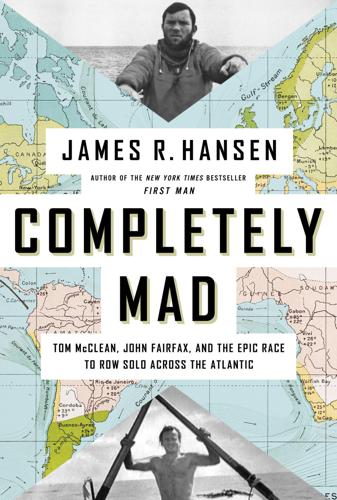
Completely Mad: Tom McClean, John Fairfax, and the Epic of the Race to Row Solo Across the Atlantic
by
James R. Hansen
Published 4 Jul 2023
For the 1,080 seconds of “Ocean Cloud,” the listener is away from Earth—or as one line of the song’s lyrics say: Between two planets In between the points of light Between two distant shorelines Here am I Listening to “Ocean Cloud,” we, too, are in a rowboat, alone, on the open sea. When the song ends, we have fallen in love with Don Allum and with the ocean. Some of us who really cherish the song feel like we have become a better person. By early 2020, in the middle of the COVID-19 pandemic, I became seriously interested in writing the story of Don Allum. I exhausted the internet, reading everything I could find about him. The best source was the website of the Ocean Rowing Society International. Founded in 1983, it is the governing body for international ocean rowing and the official adjudicator of ocean rowing records.
…
Outside of the ocean rowing community, however, very little about this drama was at all well known, which made it even more important for me to bring the extraordinary story to the wider world. Critically important was whether there was sufficient source material for telling the story of their race across the Atlantic in 1969. Though the shutdowns brought on by COVID-19 would make it impossible for me to conduct the necessary research abroad, I became convinced that there was a way to do it. I exhausted what could be found via the internet. That research started by scouring the website of the Ocean Rowing Society International. Since its establishment in 1983, the ORSI had documented all known ocean rows while adjudicating records and firsts in consultation with Guinness World Records.
…
Even before my outrigger made it all the way across the ocean, he gave me a thorough critique of the ocean route I was navigating and making suggestions to correct and improve it. The toughest decision of who to put on the boat and who to leave on shore came when considering what to do with my wife, Peggy. As it turned out, she had to be on the vessel but at a distance. An outbreak of a new plague called COVID-19 required that Completely Mad be conceived, built, and taken across to its destination in an unusual type of ship quarantine. My outrigger had to stay on a very strict navigational course, which restricted me—if I can be rightfully be called “the skipper”—as well as my laptop and books, to an exposed position at the helm (i.e., the island in our kitchen) while all sorts of noisy, intervening actions took place hourly all around me.

Lonely Planet Brazil
by
Lonely Planet
Brazil Contents Plan Your Trip Welcome to Brazil Brazil’s Top Experiences Need to Know First Time Brazil What’s New Month by Month Itineraries Carnaval Outdoors Eat & Drink Like a Local Family Travel Regions at a Glance On The Road Rio de Janeiro Sights Activities Courses Tours Festivals & Events Sleeping Eating Drinking & Nightlife Entertainment Shopping Rio de Janeiro State Costa Verde Ilha Grande & Vila do Abraão Paraty Itatiaia Region Parque Nacional do Itatiaia Visconde de Mauá Penedo North of Rio de Janeiro Petrópolis Teresópolis Nova Friburgo East of Rio de Janeiro Saquarema Arraial do Cabo Cabo Frio Búzios Minas Gerais & Espírito Santo Minas Gerais Belo Horizonte Ouro Preto Mariana Lavras Novas Congonhas São João del Rei Tiradentes Caxambu Aiuruoca & the Vale do Matutu Diamantina Serro & Around Parque Nacional da Serra Do Cipó Tabuleiro Parque Natural do Caraça Parque Nacional de Caparaó Espírito Santo Vitória Itaúnas Guarapari & Around Domingos Martins Pedra Azul São Paulo State São Paulo City Paulista Coast Ubatuba São Sebastião Ilhabela Iguape & Around Paraná Curitiba Morretes Paranaguá Ilha do Mel Iguaçu Falls & Around Foz do Iguaçu Parque Nacional do Iguaçu (Brazil) Parque Nacional Iguazú (Argentina) Santa Catarina Ilha de Santa Catarina Florianópolis North Island East Coast South Island The Mainland Joinville Blumenau North of Florianópolis South of Florianópolis Rio Grande do Sul Porto Alegre Serra Gaúcha Bento Gonçalves Vale dos Vinhedos Pinto Bandeira Gramado Cambará do Sul Litoral Gaúcho Torres Rio Grande Brasília & Goiás Brasília Goiás Goiânia Cidade de Goiás Pirenópolis Parque Nacional da Chapada Dos Veadeiros Alto Paraíso de Goiás São Jorge Mato Grosso & Mato Grosso do Sul Mato Grosso Cuiabá Chapada dos Guimarães Parque Nacional da Chapada dos Guimarães Bom Jardim Poconé Alta Floresta The Pantanal Northern Pantanal Southern Pantanal Mato Grosso do Sul Campo Grande Corumbá Bonito & Around Ponta Porã Bahia Salvador Recôncavo Cachoeira & São Felix North of Salvador Praia do Forte Mangue Seco South of Salvador Morro de São Paulo Boipeba Valença Barra Grande Itacaré Ilhéus Porto Seguro Arraial d’Ajuda Trancoso Caraíva Caravelas West of Salvador Lençóis Parque Nacional da Chapada Diamantina Sergipe & Alagoas Sergipe Aracaju Alagoas Maceió Praia do Francês Penedo Maragogi Pernambuco, Paraíba & Rio Grande do Norte Pernambuco Recife Olinda Fernando de Noronha Paraíba João Pessoa Rio Grande do Norte Natal Praia da Pipa São Miguel do Gostoso Ceará, Piauí & Maranhão Ceará Fortaleza Canoa Quebrada Icaraí de Amontada Jericoacoara Maranhão São Luís Parque Nacional dos Lençóis Maranhenses The Amazon Pará Belém Algodoal Ilha de Marajó Santarém Floresta Nacional do Tapajós Alter do Chão Tocantins Palmas Taquarussú Amazonas Manaus Rio Negro Basin Tefé Mamirauá Reserve The Triple Frontier Roraima Boa Vista Rondônia Porto Velho Guajará-Mirim Acre Rio Branco Xapuri Brasiléia Amazon Wildlife UNDERSTAND History Brazil’s People & Lifestyles Brazilian Rhythms Football Frenzy Cinema & Literature Architecture Landscapes & Wildlife SURVIVAL GUIDE Directory A–Z Accessible Travel Accommodations Customs Regulations Electricity Embassies & Consulates Food Health Insurance Internet Access Legal Matters LGBTIQ+ Travelers Maps Money Opening Hours Public Holidays Safe Travel Shopping Telephone Time Toilets Tourist Information Visas Volunteering Transportation Getting There & Away Entering the Country Air Land River Sea Getting Around Air Bicycle Boat Bus Car & Motorcycle Hitchhiking Local Transportation Train Language Behind the Scenes Our Writers COVID-19 We have re-checked every business in this book before publication to ensure that it is still open after the COVID-19 outbreak. However, the economic and social impacts of COVID-19 will continue to be felt long after the outbreak has been contained, and many businesses, services and events referenced in this guide may experience ongoing restrictions. Some businesses may be temporarily closed, have changed their opening hours and services, or require bookings; some unfortunately could have closed permanently.
…
Dining Use a napkin or a toothpick when eating finger food. Brazilians tend to eat pizza with a knife and fork. Touchy subjects Brazilians are exasperated by their country’s corruption, but can be defensive if foreigners criticize their government or talk about poverty or religion. What’s New Brazilians are eager to put the COVID-19 pandemic behind them and focus on brighter days ahead, including a celebration for the bicentennial of Brazil’s independence in September 2022. Big challenges remain, though, as the nation grapples with income inequality, poverty and climate change — a deep concern for 93% of the country according to a recent survey.
…
Set near the site where Emperor Pedro I proclaimed Brazilian independence from Portugal, the museum first opened in 1895 and houses an impressive historical collection of artifacts, paintings and historical documents. The modernization will double the exhibition space while also polishing up the palatial exterior of the 1884 building. LOCAL KNOWLEDGE WHAT’S HAPPENING IN BRAZIL Regis St Louis, Lonely Planet writer Brazil suffered heavily during the COVID-19 pandemic, with over 600,000 dying from the virus – the second highest death toll worldwide. Many Brazilians blame President Bolsonaro for the excessive loss of life, and in October, 2021, the Brazilian senate recommended he be charged with crimes against humanity for his botched handling of the pandemic.
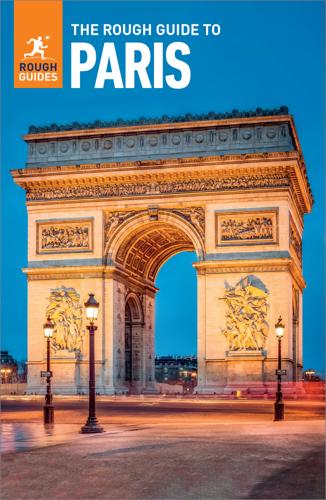
The Rough Guide to Paris
by
Rough Guides
Published 1 May 2023
After only a few weeks hundreds of thousands of protestors were on the streets of French towns and cities every weekend. Paris was – as is so often the case – the focal point for the protests. Eventually Macron had to make some concessions but even these weren’t enough and the protests continued until March 2020 and the arrival of Covid-19. France was badly hit by the Covid-19 pandemic and the government imposed very tough restrictions on daily life. A very strict two-month lockdown was imposed from mid-March to mid-May 2020. During this period almost all businesses were closed, schools shut and people were forbidden from leaving their homes aside from essential reasons.
…
movement comes from nowhere to become the youngest head of state since Napoléon. 2018 The Gilets Jaunes protests begin in November. Protestors angry at the rising cost of living, block roads and access to certain services every weekend (and sometimes all week) for over a year. 2020 The Covid-19 pandemic hits France hard. The tough restrictions on daily life cause huge damage to the French economy and society. 2022 Macron is re-elected for a second term as President. 2024 Paris is scheduled to host the summer Olympics. The Parisii In the third century BC, a Gaulish tribe settled on the eastern part of what is now the Île de la Cité .
…
The impact of this lockdown - and the following two lockdowns, long periods of evening curfews and then the issuing of health passes - had a significant negative impact on the French economy, as well on the general well-being and mental health of many French. With the government completely preoccupied with Covid-19 almost all of Macron’s plans of reform were put on hold. In spring 2022, presidential elections were held and again it was a run-off between Macron and Le Pen in the second round. This time though – with many former Macron fans having lost faith – the result was closer with Macron winning by 58.5% of the vote against Le Pen’s 41.5%.
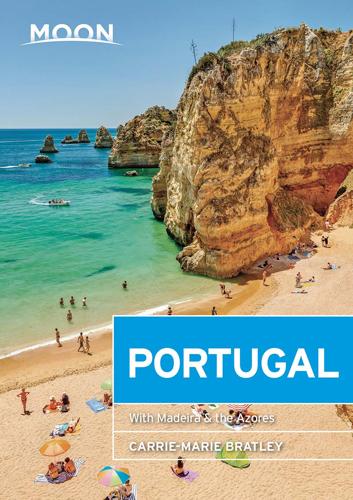
Moon Portugal
by
Carrie-Marie Bratley
Published 15 Mar 2021
PORTUGAL CARRIE-MARIE BRATLEY Contents Discover Portugal Lisbon Around Lisbon Évora and the Alentejo The Algarve and the Southern Beaches Coimbra and the Centro Porto and the Norte Madeira The Azores Background Essentials Resources Index List of Maps Photo Credits Copyright Although every effort was made to make sure the information in this book was accurate when going to press, research was impacted by the COVID-19 pandemic and things may have changed since the time of writing. Be sure to confirm specific details, like opening hours, closures, and travel guidelines and restrictions, when making your travel plans. For more detailed information, see click here. surfing in the Algarve the Alcobaça Monastery DISCOVER Portugal 10 TOP EXPERIENCES Planning Your Trip If You Have… Explore Portugal Top Beaches Explore Portuguese Cuisine Getting Outside boats in Carvoeiro Like the sardine that has become symbolic of Portuguese gastronomy and its formidable seafaring heritage, Portugal is small but packs a mighty flavorful punch.
…
We ask travelers to be respectful to residents, and mindful of the evolving situation in their chosen destination when planning their trip. BEFORE YOU GO • Check local websites (listed below) for restrictions and the overall health status of the destination and your point of origin. If you’re traveling to or from an area that is currently a COVID-19 hotspot, you may want to reconsider your trip. • Get vaccinated if your health status allows, and if possible, take a coronavirus test with enough time to receive your results before your departure. Some destinations may require proof of vaccination or a negative COVID test result before arrival, along with other tests and potentially a self-quarantine period, once you’ve arrived.
…
Events may be postponed or cancelled, and some tours and venues may require reservations, enforce limits on the number of guests, be opem during different hours than the ones listed, or be closed entirely. RESOURCES • Direção-Geral da Saúde (Directorate-General for Health; www.dgs.pt) • Visit Portugal (www.visitportugal.com/en/content/covid-19-measures-implemented-portugal) • TAP Air Portugal (www.flytap.com/en-us/travel-restrictions) From elsewhere: Getting to Portugal by train from Belgium, the Netherlands, or Germany requires passing through an international terminal such as Paris or Madrid. Train passes: The easiest way to get around Portugal—and the rest of Europe—by train is with a Eurail Pass (www.eurail.com).

About Time: A History of Civilization in Twelve Clocks
by
David Rooney
Published 16 Aug 2021
Related to this are potentially radical changes in the ways we make and consume. The manufacture, movement and consumption of foodstuffs, commodities and goods around the world is less often talked about in a political sense than the movement of people—that became painfully evident in the way Brexit was discussed in the UK, for instance—but the Covid-19 pandemic quickly brought the subject into sharp focus, although the changes had been bubbling up for decades. Clocks have always been at the heart of markets, finance, trade, manufacture and global transportation networks, which will not change, but the way the landscape of production and consumption is configured certainly will.
…
See markets Carlyle, Thomas, 52 Carroll, Lewis, 187–88 Cassini, Giovanni Domenico, 93 castle clock, Diyār Bakr, 26–29, 27, 43 Castle, John, 38 Central European Time, 194 cesium fountains, 78–79 change-ringing, 220–21 Charles II (king of England), 93, 97–98 Charles Frodsham and Co., 187, 188 Chávez, Hugo, 193 China, 14–15, 24–25, 193–94, 205 Chioggia, Italy, 16–17, 18–19 Christianity astronomical clocks and, 34–35 Bohemian Reformation, 38–39 monasteries, 30, 32 Puritanism, 40–41 temperance and, 54 Christie, William, 167, 168 Churchill, Winston, 154 Cicero, Marcus Tullius, 53 Civil War, 190–92 climate change, 224 clockmaking trade Bennett’s plans for, 131–32 entertainment and, 127–28 imports and, 128–29 industrial machinery and, 129–30, 135–36 marketing and, 121, 123–28, 134–35 mass production and, 133–34, 135 satellite navigation systems and, 205 Clock of the Long Now, 218–21, 222 Clock of Wisdom (Heinrich Suso), 54, 56–58, 57 clocks definitions of, 8 as holders of identity, 186–89 coastal time signals, 99–100, 102, 104–5, 111–14 Cold War, 94–96, 199, 202 Congreve, William, 201–2, 202 Copernicus, Nicolaus, 91 Covid-19 pandemic, 224 Crawford Market clock, Bombay, 174–75, 175 Curtis v. March, 150 Danse Macabre (Dance of Death), 60–61 da Silva, Pedro, 87 Daylight Saving Time, 73, 153–56, 203–4 death, hourglass as symbol of, 59–62 de Figueredo, Manuel, 87 Dengfeng observatory, 90–91 Dickinson, Henry, 137–38 Dingle, Anthony, 150 discipline, 41 Dixon, Mary, 177–78, 179, 181–82, 181 domestic clocks, 58 Dondi, Giovanni de, 17, 18, 32–33, 34 Dondi, Jacopo de, 17, 18 Doomsday Clock, 203, 204 Doyle, Arthur Conan, 154 du Bois, Joseph, 87–88 Dundas, James, 109 Dunkin, Edwin, 109 Dunt, Ian, 196 Edison, Thomas, 144 Efratom, 197–99, 198, 201, 204–5 Einstein, Albert, 156, 197, 198 electric time systems, 143–45, 143 time standardization and, 144–46, 148, 149, 153–54 empires astronomy and, 91–92 public clocks and, 14–15, 23–24 See also imperialism/colonialism; political identity and power engine clocks, 163–64 Eno, Brian, 219, 220, 221 Epistle of Othéa, The (Christine de Pizan), 56 European Southern Observatory, 86 Exposition Universelle, Paris (1878), 134–35 Factory Act (1844) (UK), 151, 152 Factory Act (1901) (UK), 152 faith astrology and, 34 astronomical clocks and, 27–29, 33, 34–38 automaton clocks and, 27–29, 33, 34–38, 37 Buddhism, 31 Christianity, 30, 34–35, 38–39, 40–41, 54 Hinduism, 31 Islam, 26–29, 27, 30 Judaism, 30–31 limitation of early clocks for, 31–32 political identity and power and, 43, 44, 45 Sikhism, 31 wasting time and, 40–41 Fallows, Fearon, 102, 103 Farage, Nigel, 195 Father Time, 59 Fayrer, James, 103 Ferguson, Adam, 141 fiber-optic time services, 79–81, 80 financial markets, 74–77 abstract nature of, 69–70 daylight saving and, 73 early securities exchanges, 67 fiber-optic time services and, 79–81, 80 intermediate roles in, 67 Royal Exchange, London, 70–71, 71 synchronization and, 72–73, 74, 75 time-stamping and, 75–77, 79, 81 trading methods, 74–75 Finer, Jem, 221 First Punic War, 9 Flamsteed, John, 88, 91 flying Dutchman, 106 Ford, Henry, 137–42 Francois, Mark, 195 Franklin, Benjamin, 41, 74, 164 free-pendulum clocks, 118–19 Gabelsperger, Anton, 88 Galileo satellite network, 205 globalization, 207, 209 Global Positioning System.

Waco Rising: David Koresh, the FBI, and the Birth of America's Modern Militias
by
Kevin Cook
Published 30 Jan 2023
Thibodeau, fifty-two, was no longer the scrawny musician he had been the day Doyle followed him through a hole a tank had made in a wall so they could escape the fire. Graying at the temples and much heavier than he was in those days, he joked about his size, calling himself “the poster boy for COVID risk.” After living through the deadliest day in US law enforcement history, he didn’t want to fall victim to the latest variant of COVID-19. At the Golden Corral, they put tableware on trays and lined up for their meals, just as they had in Mount Carmel’s cafeteria three decades before. The mood was festive. Compared to the beans, bananas, and popcorn that constituted much of the menu at the compound, to say nothing of the MREs that got them through the siege, the Golden Corral’s fare was a cornucopia: fried chicken, fried shrimp, corn on the cob, pizza, macaroni and cheese, carrot cake, cinnamon apples, and dessert kebabs of chocolate-dipped Rice Krispies Treats.
…
See Haldeman, Bonnie Clark, Erline (Koresh’s grandmother) Clarke, Floyd Clinton, Bill Clinton, Hillary Clinton Presidential History Project Cohen, Pablo Columbia University combat engineering vehicles (CEVs) conspiracy theories Constantino, Keith “Constitutional Defenders” (McVeigh) Control Risks Council on Foreign Relations COVID-19 Cox, John (John 1) Cox, Mike Craddock, Graeme “Crackers,” Crowley, Tom CS tear gas ferret rounds Culkin, Rory cult behavior Cuomo, Mario Cyrus the Great Dallas Cowboys Dallas Morning News Dallas Times Herald Danforth, John David, biblical king of Israel Dead Sea Scrolls deep state DeGuerin, Dick Koresh letter to Delta Force Democrats Dennis, Edward Denton, John (John 4) Dettelbach, Steve DiBetta, Dave Dietz, Park Dillinger, John Dog Day Afternoon (film) Dolan, John domestic extremism Doxsee, Catrina Doyle, Clive Doyle, Shari drugs DT Analytics Dubose, Lou Duong, Fi “Monkey King,” Eakin, Florence Houteff Easter “Eden to Eden” (Koresh) Edwards, Jonathan Elijah England England, Mark Equal Rights Amendment evangelical Christians Evers, Eric Ezekiel Facebook Fagan, Doris Fagan, Livingstone Fagan, Nehara Fagan, Renae Fagan, Yvette Falwell, Jerry Fatta, Paul Feazell, Vic Federal Aviation Administration (FAA) Federal Bureau of Investigation (FBI) action plan of aftermath of raid and Alex Jones and army and Behavioral Science Unit behavioral scientists offer advice to Bible scholars offer advice to Bill Clinton and Breault and child abuse stories and children’s deaths in fire and children’s releases and commands siege, after failed ATF raid compound’s electricity cut off by compound’s phone connection cut off by cost of siege and CS gas and ferret rounds and cultbuster Ross offers advice to Danforth inquiry and Davidian religion and Davidians’ families and Davidians’ murder trials and Davidians’ siege video and Dietz report and DOJ report on Doyle questioned by hardliners and Hostage Rescue Team Koresh’s CBN broadcast and Koresh’s Good Friday letter and Koresh’s Seven Seals manuscript and Koresh’s wounds and lights aimed at compound by mass suicide fears of McVeigh and media and militia movement and negotiations and noise blasted at compound by psychiatry professors offer advice to public opinion and raid and fires of April 19, and religion professors Tabor and Arnold spurned by Reno and Ruby Ridge siege and rules for standoffs changed by rules of engagement and Silence of the Lambs Behavioral Science Unit Strategic Information and Operations Center (SIOC) supplies and milk sent to compound by surrender demands by tanks moved toward compound by Whitmer kidnapping and Ferguson, Misty Filipinos Finkelstein, Lawrence First Amendment Florida Southern College Floyd, Charles “Pretty Boy,” Foghat Foreman, Tom Fort Hood Foster, Vincent Four Horsemen of the Apocalypse Fox & Friends (TV show) Fox TV Freeh, Louis French, David Full Metal Jacket (film) Garcia, Henry gas masks Genesee County Volunteer Militia Genesis, book of Gent, Dayland Gent, Peter Gent Little, Nikki German, Michael Gingrich, Newt globalists Goins, Eddie Goins, Ron Golden Corral restaurant (Waco) Gonzalez, Robert.
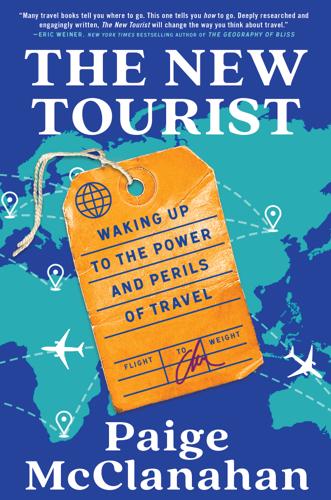
The New Tourist: Waking Up to the Power and Perils of Travel
by
Paige McClanahan
Published 17 Jun 2024
* * * Between 1950 and 2019, international tourist arrivals grew from 25 million to nearly 1.5 billion. By the time international travel came to a screeching halt with the border closures and lockdowns that took effect in March 2020, tourism had grown from a niche pastime to the world’s most important mover of human beings. On the eve of the COVID-19 pandemic, tourism was driving roughly 10 percent of the global economy and underpinning 10 percent of the world’s jobs. Tourism had spread to cities, villages, and wild, remote landscapes on every continent, leaving hardly any person or place untouched. And in ways that are impossible to quantify, tourism had fundamentally shaped our impressions of our fellow human beings and their languages and cultures.
…
K., 206–7 China, 8, 134, 177 Chisholm Trail, 133–34 CIA, 5, 6 city brands, 77 Claret, Benjamin, 128–29, 131–33, 155, 176 Claret, Georges, 129 climate change, 51, 52, 132, 134–48, 153, 177, 189, 190 aviation’s impact on, 140–48 carbon offsets and, 141–43 contrails and, 147 coral reefs and, 135–36 glaciers and, see glaciers last-chance tourism and, 136–39 net-zero carbon emissions goal and, 143, 146, 147 Paris Climate Accord and, 148 rockfall and, 152 CNN, 20, 29, 136, 189 cognitive dissonance, 137–38 Colau, Ada, 122–23, 125 Cold War, 8, 80, 146, 202–3 Colombia, 27, 29, 79, 87 colonialism, 46, 64–65 Hawai‘i and, 115, 118, 165, 216 Colosseum, 188 communities, tourism’s effect on, 99–126 in tourist traps, 177, 182 community tourism, 112 Compagnie des Guides de Chamonix, 151, 152 consolidation phase, in tourism life cycle, 94 contrails, 147 Cook, James, 114 Cook, Thomas, 199, 200, 202 coral reefs, 135–36 Costa Rica, 87 Council for Native Hawaiian Advancement, 91, 114–16 Council of Europe, 85–86 COVID-19 pandemic, 35, 39, 44, 46, 57, 63, 76, 89, 90, 92, 93, 113, 126, 141, 177, 188, 190, 201 Disneyland Paris and, 169, 170, 172, 173 Croatia, 87 Crowther, Geoff, 16 culture, in soft power, 69 Cummings, Joe, 16–20, 23, 26–27, 32 Daily Beast, 45 Dalton, Bill, 12, 28, 33 death, 209 Deep Decarbonization Initiative, 141 De Fries, John, 89–93, 96–98, 115, 164, 212, 214 Delta Air Lines, 147 Denver, CO, 124 Department of Hawaiian Home Lands (DHHL), 118 development phase, in tourism life cycle, 94 DiCaprio, Leonardo, 24 Diriyah, 194 Disney, 90 Disney theme parks, 64, 171 Disneyland Paris, 169–75, 177 Doha, 79 doom tourism (last-chance tourism), 136–39 Dostoevsky, Fyodor, 200 Do Travel Writers Go to Hell?

Lonely Planet Turkey
by
Lonely Planet
Turkey Contents PLAN YOUR TRIP Welcome to Turkey Turkey Map Turkey’s Top Experiences Need to Know First Time Turkey What’s New Accommodation Month by Month Itineraries Activities Eat & Drink Like a Local Family Travel Regions at a Glance ON THE ROAD İstanbul Around İstanbul Princes’ Islands Thrace & Marmara Edirne Tekirdağ Gallipoli Peninsula Eceabat Çanakkale Troy Gökçeada İzmir & the North Aegean Bozcaada Behramkale & Assos Bay of Edremit Ayvalık Cunda (Alibey Island) Bergama (Pergamum) Çandarlı Eski Foça İzmir Manisa Çeşme Alaçatı Sığacık Ephesus, Bodrum & the South Aegean Ephesus Selçuk Şirince Kuşadası Kirazlı Priene, Miletus & Didyma Lake Bafa Milas & Around Bodrum Peninsula Marmaris Datça & Bozburun Peninsulas Akyaka Muğla Western Anatolia İznik Bursa Mudanya Eskişehir Phrygian Valley Afyon Denizli Pamukkale Afrodisias Lake District Antalya & the Turquoise Coast Dalyan Fethiye Kayaköy Ölüdeniz Butterfly Valley & Faralya Kabak Tlos Saklıkent Gorge Pınara Xanthos Letoön Patara Kalkan Bezirgan Kaş Üçağız & Kekova Kaleköy Demre Olympos Çıralı Antalya Selge & Köprülü Kanyon Side Eastern Mediterranean Alanya Anamur Taşucu Silifke Narlıkuyu Kızkalesi Mersin Tarsus Adana Antakya (Hatay) Central Anatolia Ankara Safranbolu Yörük Köyü Kastamonu Boğazkale & Hattuşa Alacahöyük Çorum Amasya Tokat Sivas Konya Cappadocia Göreme Uçhisar Çavuşin Paşabağı Zelve Devrent Valley Avanos Nevşehir Gülşehir Hacıbektaş Ortahisar Ürgüp Mustafapaşa Ayvalı Soğanlı Niğde Ala Dağlar National Park Ihlara Valley Güzelyurt Aksaray Kayseri Erciyes Dağı Black Sea Coast Amasra İnebolu Sinop Samsun Ünye Ordu Giresun Trabzon Sumela Uzungöl Rize Hopa Western Kaçkars Northeastern Anatolia Erzurum Eastern Kaçkars Georgian Valleys Artvin Şavşat Çıldır Gölü & Around Kars Ani Iğdır Doğubayazıt Mt Ararat (Ağrı Dağı) Southeastern Anatolia Gaziantep Şanlıurfa Harran Adıyaman Nemrut Dağı National Park Malatya Mardin Midyat Tatvan Van UNDERSTAND History Architectural Wonders Arts & Culture The Peoples of Turkey Landscapes & Wildlife SURVIVAL GUIDE Directory A–Z Accessible Travel Customs Regulations Discount Cards Electricity Embassies & Consulates Insurance Internet Access Language Courses Legal Matters LGBTIQ+ Travellers Maps Money Opening Hours Photography Post Public Holidays Safe Travel Smoking Telephone Time Toilets Tourist Information Visas Volunteering Women Travellers Work Transport GETTING THERE & AWAY Entering Turkey Air Land Sea GETTING AROUND Air Bicycle Boat Bus Car & Motorcycle Local Transport Tours Train Health Language Behind the Scenes Our Writers COVID-19 We have re-checked every business in this book before publication to ensure that it is still open after the COVID-19 outbreak. However, the economic and social impacts of COVID-19 will continue to be felt long after the outbreak has been contained, and many businesses, services and events referenced in this guide may experience ongoing restrictions. Some businesses may be temporarily closed, have changed their opening hours and services, or require bookings; some unfortunately could have closed permanently.
…
Public drinking and inebriation are much less acceptable in more conservative areas. Visiting homes Always remove shoes before entering a Turkish home. Relationships Do not be overly tactile with your partner in public; beware miscommunications with locals. What’s New Simultaneously contending with COVID-19, spiralling inflation and natural disasters, Turkey has endured a tumultuous few years. Tourism though, is bouncing back. While foreign visitors focus on İstanbul, the Mediterranean and Cappadocia, local travellers are flocking to cities such as Şanlıurfa, Kars and Antakya: you would do well to follow their lead.
…
WHAT’S HAPPENING IN TURKEY By Jessica Lee, Lonely Planet writer It’s not surprising that politics is at the forefront of most Turks’ minds these days. While the government continues touting grandiose, headline-grabbing infrastructure plans, such as the controversial Kanal İstanbul, Turkey’s economy as a whole is nosediving with rampant inflation hitting pockets hard. Turkey’s economic problems have been further exacerbated by COVID-19, which struck Turkey heavily. Although its efficiently handled vaccination rollout is due kudos, by the end of 2021 Turkey was placed sixth highest for case-numbers worldwide throughout the entire pandemic. At the same time, Turkey was struck by several disasters. The October 2020 İzmir earthquake killed 119 and left 15,000 people homeless while in 2021, the Marmara Sea’s marine mucilage problem, the Black Sea coast’s floods and the Mediterranean coast’s forest fires (the worst in Turkish history) brought the subject of Turkey’s lack of preparedness and vulnerability to climate change to the fore.

In Pursuit of the Perfect Portfolio: The Stories, Voices, and Key Insights of the Pioneers Who Shaped the Way We Invest
by
Andrew W. Lo
and
Stephen R. Foerster
Published 16 Aug 2021
In the subsequent fifty-plus years since Fama’s seminal study, markets have witnessed numerous additional occasions of fat-tail events. For example, on October 19, 1987, the Dow Jones stocks declined on average by an unprecedented 22.6 percent. Yet two days later, the same stocks increased in price by 10.1 percent. During the financial crisis of 2007–2009 and in the early stages of the 2020 COVID-19 pandemic, extreme daily gains and losses of several percentage points were common. These fat-tail events, more recently called “black swan” events, are no longer believed to be as rare as previously thought.21 The important conclusion is that given fatter tails, stock returns are much riskier than the widely used normal distribution models predict.
…
He starts from the assumption that what matters to you the most is your terminal wealth, such as the retirement nest egg that will allow you to retire in the lifestyle you want. Your investment success will depend most on avoiding the downside “tail risks,” those relatively rare but severe stock market downturns, such as the financial crisis of 2007–2009 and the COVID-19 pandemic, while capitalizing on the positive “tail gains.” To manage your risk properly, you’ll need to pay attention to what derivatives markets such as the VIX are telling you. For example, when the VIX is at a level below its historical average, you may feel more comfortable investing a greater proportion of your assets in risky stocks.
…
See “OTC Derivatives Statistics at End-December 2019,” Bank for International Settlements, May 7, 2020, https://www.bis.org/publ/otc_hy2005.htm. 66. Trading on the VIX index commenced in 2004. The levels back to 1986 are based on CBOE back-testing, showing what the level would have been given S&P 500 option prices at the time. While the official record closing high on the VIX of 82.69 occurred on March 16, 2020, near the start of the COVID-19 pandemic, the October 19, 1987, level would have been almost twice as high, at 150.19. 67. Interview with authors. 68. Interview with authors. 69. Interview with authors. 70. See Warren E. Buffett, “Berkshire’s Corporate Performance vs. the S&P 500,” Berkshire Hathaway, February 21, 2003, http://www.berkshirehathaway.com/letters/2002pdf.pdf. 71.

Fancy Bear Goes Phishing: The Dark History of the Information Age, in Five Extraordinary Hacks
by
Scott J. Shapiro
Snoop Dogg is standing: T-Mobile, “Paris Hilton-T-Mobile-Fabric Softener,” AdForum Talent, uploaded by Publicis Seattle, January 1, 2005, www.adforum.com/talent/62231-paris-hilton/work/46280. Hackers are information junkies: Hackers are well-known for “dumpster diving,” searching through dumpsters or trash cans for information. See, e.g., Elizabeth Montalbano, “Hackers Dumpster Dive for Taxpayer Data in COVID-19 Relief Money Scams,” Threatpost, May 7, 2020, https://threatpost.com/hackers-dumpster-dive-covid-19-relief-scams/155537/. See also Michele Slatalla and Joshua Quittner, Masters of Deception: The Gang That Ruled Cyberspace (New York: Harper Perennial, 1995). security information over the phone: Krebs, “Paris Hilton Hack Started.” generous with session tokens: “Paris Hilton’s Phonebook Hacked, Posted Online (+ How It Could Have Been Done),” Rootsecure.Net, June 26, 2010, web.archive.org/web/20100626030043/http://www.rootsecure.
…
In September 2019, Judge Wolf revoked his parole and held Cameron to the promise made in the 2014 plea agreement. He would accept the highest sentence suggested by the Sentencing Guidelines—five years. Since he had already served three years, he had two more to go. He was sent back to federal prison. When the COVID-19 pandemic hit the U.S. in March 2020, Attorney General Bill Barr announced a program to release prisoners who posed a minimal risk to the community. Cameron, however, was not eligible. Since he had phoned in a bomb threat to the Florida high school when he was fifteen, he was deemed violent and kept in a low-security prison (a higher level of security than a minimum-security one).
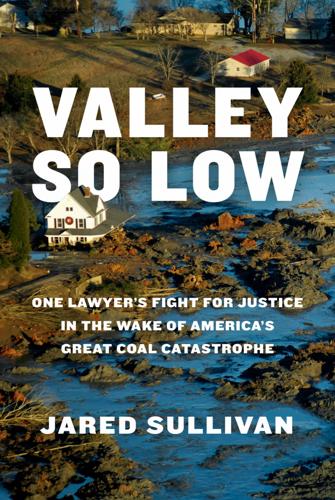
Valley So Low: One Lawyer's Fight for Justice in the Wake of America's Great Coal Catastrophe
by
Jared Sullivan
Published 15 Oct 2024
He didn’t like that Scott’s team had missed a major deadline with their expert reports, nor did he like that Scott’s attention to detail was wanting. But Friedman respected Scott’s unwavering belief in the workers, his brass in taking on Jacobs, and his refusal to quit after Judge Varlan had thrown out the case. Friedman arrived at Gourmet Market dressed in a blazer and a white button-down shirt, his customary outfit. When the COVID-19 pandemic broke out a few years later, Friedman’s law practice shifted to working remotely; he nonetheless kept showing up to the empty office every day dressed in a suit. Keith Stewart and Tyler Roper accompanied Scott. (John Dupree was busy with another appointment.) After Friedman greeted them, the four lawyers settled into wooden chairs around a large table to the right of the front door and ordered coffee.
…
Friedman felt similarly, and believed that, had Jacobs come to the negotiating table in good faith, both sides would have been able to come to terms, saving everyone a lot of time and money. But, with Jacobs no longer willing to talk about money, the case seemed destined to return to trial. And Friedman suspected that Judge Varlan would rush it back as quickly as possible. “This is going to move,” he told a friend over the phone. Then COVID-19 swept Tennessee. * * * — The district court in Knoxville suspended all jury trials because of the pandemic. As Jim Scott and his team weighed how to proceed, they began to doubt they had enough money to fight Jacobs in a second trial phase. Jeff Friedman estimated that he’d already spent half a million dollars on the case, and the other attorneys had together contributed a similar sum.
…
.; 1963), 21 Clinch River, 4, 13, 23, 48, 50, 124 dredging of, 215 Kingston disaster and, 20, 34 Melton Hill Dam on, 213 Oak Ridge and, 211–12 radioactive sediment in, 214–15 Clingman’s Dome, 262 coal ash: as by-product of burning coal, 4, 14–15 cenospheres of, 50, 166–7 commercial uses for, 129, 166–7 in Dominican Republic, 70 holding ponds for, 4, 15, 199 number of dump sites in U.S. for, 223 radioactivity of, 106–7, 117, 209–10, 276–7 regulation of, 15, 19, 36, 94, 128–9, 282–3 toxicity of, 15, 19, 35, 69–70, 128–9, 170–1, 248, 255 See also fly ash coal-fired power plants, 14, 28 Coast Guard, United States, 15, 245 cobalt, 213–14 Coleman, Greg, 262–3, 266, 272, 279 Coll, Steve, 175 Comprehensive Environmental Response, Compensation and Liability Act (CERCLA; 1980), 61 contingency-fee agreements, 67 Copeland, Chris, 6–9, 19 Copeland, DeAnna, 6 CoreCivic, 175 Court of Appeals for the Sixth Circuit (U.S.), 110–12, 117–24, 266, 275, 278–9 court system, federal (U.S.), 110 COVID-19, 186–7, 261, 264–5, 268, 271 Covington & Burling, 146, 152–3, 171–4 Crichton, James, 33–4, 50, 109 Crisis, The (magazine), 25n Critical Mission Solutions, 279 Cumberland Mountains, 24 D Daniel, Eddie, 51–2, 74 Dan River, 128 Dateline NBC, 127 Daubert standard, 221 Davis, Gary, 253 after Adkisson v.
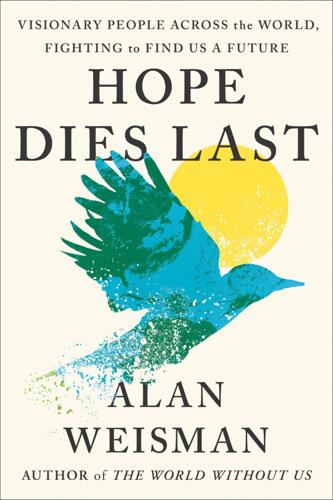
Hope Dies Last: Visionary People Across the World, Fighting to Find Us a Future
by
Alan Weisman
Published 21 Apr 2025
With half the habitable planet either growing or grazing food for us, we’re pushing our atmosphere to a boil and other species off the Earth—not only animals: In the tropics, trees topple to make way for more cows and soybeans. In overheated temperate zones, they simply burn. Miracle number four, bringing our population down to a manageable size before nature does it for us—COVID-19 was barely a preview—is both the easiest and the hardest. Easiest, because draconian edicts like China’s 1980 one-child policy aren’t necessary. In any country—rich, poor, Catholic, Muslim, Buddhist—educated girls with access to family planning solve the problem, because they know how many children they can responsibly care for while using their skills to help support them.
…
Thus was born ARPANET, which became the internet and also GUI, the graphical user interface that lets anyone use it by pointing at pictures. DARPA also spawned GPS, without which we’d literally be lost; the computer mouse; weather satellites; voice recognition; infrared night vision; driverless cars; pilotless planes; stealth technology; Siri; drones; and the use of mRNA to teach cells to repel viruses, leading to Moderna’s COVID-19 vaccine. Other DARPA projects have proved less successful: cyborg surveillance insects; plant-powered robots that could recharge by foraging; self-repairing, living construction materials; mechanical beasts of burden to lighten soldiers’ loads; and brain-computer interfaces to translate thoughts into action, from driving vehicles to launching weapons.
…
(The design dates to history’s first high-field magnet, built at MIT in the 1930s, which used copper conductors and water for coolant.) Each layer was built on an automated assembly line. “The idea,” said Mumgaard, “is to make 100,000 magnets a year someday. This can’t be a scientific curiosity. This needs to be an energy source.” Although COVID-19 had waned, an outbreak could foil everything, so they maintained coronavirus protocols, moving computer terminals outside beneath a tent to avoid crowding within. Others worked virtually. Mumgaard, now in his late 30s, had bet his career on this moment. His usual impish grin was hidden behind a white surgical mask, but his eyes beamed confidence

China's Good War
by
Rana Mitter
China is creating a circuit of memory to enhance its standing and authority domestically and internationally, as well as to compete with the long-established circuit of memory that nurtures the narrative of the United States liberating the Asia-Pacific.6 In March 2020, as the globe was swept by the COVID-19 pandemic, China declared that it had overcome the virus first in the world, and most effectively. The language Xi Jinping used to describe this event was “Victory for China” in a “people’s war,” a term that referenced the narrative of the “people’s war” of guerrilla warfare led by Mao Zedong during World War II.7 As China becomes more powerful, the world will have to pay more attention to the stories that it wants to tell.
…
On China’s use of ideas of human security in international order, see Rosemary Foot, China, the United Nations, and Human Protection: Beliefs, Power, Image (Oxford, 2020). 6. An excellent example of the sort of memories contained within the US liberation circuit are the fine “Road to Tokyo” galleries at the National World War II Museum in New Orleans. 7. “Moment of Truth: Xi Leads War on COVID-19,” Xinhuanet (10 March 2020), http://www.xinhuanet.com/english/2020-03/10/c_138863611.htm. Pieces using similar language in Chinese about victory in the People’s War against the virus are here: http://www.xinhuanet.com/politics/leaders/2020-02/10/c_1125555826.htm and http://www.xinhuanet.com/politics/2020-03/10/c_1125689049.htm.

Spooked: The Trump Dossier, Black Cube, and the Rise of Private Spies
by
Barry Meier
Published 17 May 2021
“I don’t agree that the facts given me by the source are false,” he testified. “I agree that one of the points made is false.” Steele never got to complete his testimony in the case. Midway through his second day on the witness stand, he was notified that his wife had been taken to a hospital near their home in Farnham after showing symptoms of COVID-19, the disease caused by the novel coronavirus. He was excused so he could join her and the case was completed without him. Several months later, the judge overseeing the case issued his ruling. He found that Orbis had not violated the Data Protection Act, the law under which the oligarchs had sued.
…
See also specific firms and cases activists as targets of, 50–52 defenses against, 275–277 illegal activities of, 46–47 journalism’s potential impaction, 277–278 lawyers as clients for, 58 London as informational trade center, 71–74, 80–82, 137 phone record acquisitions through, 44–45 self-due diligence reviews by, 47–48 start of, 38–41 targets of, 42–44 Courier (typeface), 262–263 COVID-19, 254, 255 Cowell, Alan, 261 CPW Consulting (online ghost), 197, 201, 203 Credit Suisse, 4, 285 Crime in Progress (Simpson & Fritsch), 2–3, 135, 146, 160, 187, 234–236, 238 Crispin, Shawn, 62–63 Crossfire Hurricane investigation, 159–161 Cuddehe, Mary, 37, 287 Cullison, Alan, 143–144, 183–185 cyber spying, 195–196, 198, 199–200 Cymrot, Mark, 58, 83, 113, 114, 124–125 The Daily Caller, 209, 239, 252 The Daily Show (late-night TV program), 116 Dakar (Senegal), 197 Dalai Lama, 195 Danchenko, Igor, 263–266, 267–270, 303 Dangate, 226 Dark Money (Mayer), 86 Data Protection Act, 255 Day, Nick, 43–44 Dayton Daily News, 97 dead drop technique, 44 de Córdoba, Jóse, 89–90 “deep state” conspiracy, 213, 233, 260 Democracy Integrity Project, 208–212, 252, 273, 299 Democratic National Committee, 64–65, 135 Democratic Party (U.S.), 2, 153, 160, 208, 244, 256 Deripaska, Oleg background, 21, 22 Carr and, 50 Fusion GPS’s connection to, 272 Global Witness and, 101 Steele’s connection to, 58, 138–140, 153, 180, 217, 271–272 Derwick Associates, 89–90, 129, 292 Deutsche Bank, 148 Diligence International, 43–44, 224–225, 226, 252, 285 Dirty Little Secrets (Simpson & Sabato), 65–66, 68 Divyekin, Igor, 145 double agents, 165, 168–169, 226–227.

Been There, Done That: A Rousing History of Sex
by
Rachel Feltman
Published 14 May 2022
Look at it this way: You’re not going to spend the rest of your life inside just because you know another virus like SARS-CoV-2 could emerge at any time and probably will at some point in the future. But you can still recognize that there are steps we should all take as a society to keep the COVID-19 pandemic from happening all over again. People should have access to paid sick leave so they’re not pressured to sneeze all over the subway. Governments should invest in shoring up each nation’s ability to produce personal protective equipment at a moment’s notice. Motherfuckers should wash their hands. And so on. If the COVID-19 pandemic teaches us anything, I hope it will teach us that we can recognize the potential danger of a pathogen—and take steps to avoid catching and spreading it—without focusing on outsize fear or stigmatizing people who are most at risk.
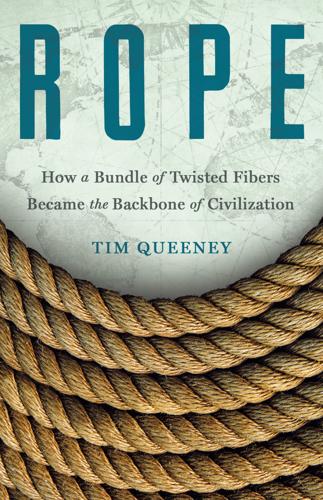
Rope: How a Bundle of Twisted Fibers Became the Backbone of Civilization
by
Tim Queeney
Published 11 Aug 2025
In 2021 Hyland coauthored an article on the Anthropology News website that detailed a new interest by Andean peoples in making funerary khipu for the recently deceased, sparked by the ravages of COVID-19. “The centuries-old custom of making funerary khipus to accompany the dead in their journey through the next world had been dying out in the Central Andes. However, our research reveals that during the COVID-19 pandemic, which has been devastating in rural areas, funerary khipus are undergoing a resurgence.”8 Funerary khipu have long been made for burial with the body of the deceased. And it has been from grave sites that scientists have recovered many of the khipu in current collections.
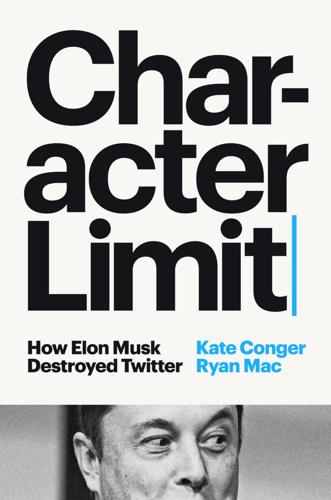
Character Limit: How Elon Musk Destroyed Twitter
by
Kate Conger
and
Ryan Mac
Published 17 Sep 2024
Maybe the aches and chills were caused by the constant drinking and partying, but dozens of workers developed fevers and stayed away from their offices in the weeks following the event. They joked that they had the “OneVirus.” By late January, news reports were circulating on Twitter of a mysterious virus spreading rapidly across China. First detected in Wuhan, the capital city of the country’s central Hubei province, the COVID-19 coronavirus recorded its first U.S. case near Seattle on January 20, 2020. Had they perhaps contracted something other than the flu at OneTeam? Twitter employees wondered. Just as his employees rallied around him, Dorsey sent them away. On March 2, the company encouraged everyone to work from home.
…
J., 409 Brown, Michael, Jr., 18–19, 183 Buhari, Muhammadu, 75 Burger King, 290 Burning Man, 335 Business Insider, 200, 205, 285 BuzzFeed, 25, 285, 379 C Calacanis, Jason, 134–35, 143, 177–79, 241, 279, 285, 290, 291, 296–98, 313, 317, 335, 378 Caldwell, Nick, 271, 344 Capital Cities, 156 Cardaci, Chris, 374 Carlson, Tucker, 404–6, 424 Catturd2, 390 censorship, see content moderation; freedom of speech Center for Countering Digital Hate, 392 Cernovich, Mike, 104 Chappelle, Dave, 375 Charles Schwab, 284 Chase Center, 171–72, 344, 375 Chen, Jon, 260–63 child sexual exploitation, 16, 20, 92, 146, 372, 392–93 China, 198–99, 244 Christchurch mosque shootings, 42 Christie, Jen, 80 CIA, 27, 173, 183 Clinton, Bill, 223 Clinton, Hillary, 67, 193, 287, 288, 315 CNBC, 406, 408, 420 CNET, 30 CNN, 23, 225, 378 Coca-Cola, 294, 311, 363 CODE Conference, 420–22 Cohen, Lara, 309 Cohn, Jesse, 49–57, 76–78, 110 Coinbase, 179 Coleman, Keith, 173–74 Combs, Sean “Diddy,” 302 Comer, James, 391 Compaq, 29, 156 Confinity, 30 Conger, Kate, 6 Congress, U.S., 57, 58, 59–60, 62, 88, 147, 225, 264 conspiracy theories, 2, 4, 25, 44, 60, 61, 93, 287, 406, 432 Great Replacement Theory, 424 Pizzagate, 25, 104, 390, 426 QAnon, 25, 391, 392, 433 about September 11 attacks, 433 Constitution, U.S., 275, 282, 363 content moderation, 4–6, 13, 15, 146, 206, 435 activist groups and, 294, 320, 392 Digital Services Act and, 244 at Facebook, 92 at Twitter, see Twitter, content moderation at; Twitter under Elon Musk, content moderation at see also misinformation and disinformation Conway, Kellyanne, 65–66 Cook, Tim, 366, 420 Costolo, Dick, 11, 17, 20–21, 42, 149, 170 COVID-19, 53–57, 59, 69–70, 113, 148, 173, 174, 180, 218, 325, 326, 414 misinformation about, 61–64, 68–69, 91, 110, 114, 222, 391 Musk and, 62–64, 99, 114, 128, 136, 375 Tesla and, 63, 96, 99 Twitter and, 53, 56–57, 61–64, 68–69, 77, 83, 90, 91, 97, 98, 185, 186, 255 vaccines for, 68–69, 391 Craft Ventures, 177 Crawford, Esther, 79, 240, 241, 243, 284–86, 297–98, 306, 310–12, 314–19, 323–24, 328–29, 331, 332, 335, 388, 398–99, 402 firing of, 398–99 sleeping photo of, 316 credit card companies, 29–30 crime, 406, 432 Crown Estate, 364 Cruz, Ted, 334, 392 cryptocurrency, 79, 105, 106, 136, 179, 182, 253 Bitcoin, 44, 57, 78, 79, 87, 177, 179, 233, 308, 358, 433 Dogecoin, 141, 144, 179 Culver, Leah, 273–74 D Daily Mail, 373 Daily Stormer, 355 Daily Wire, 408–9 DARPA, 223, 224 data centers, 87, 349, 385–88, 394 Davis, Dantley, 84, 94 Davis, Steve, 134, 241, 260, 261, 267, 271, 279, 283, 298, 324–25, 344, 358–61, 364, 371, 386, 389, 395, 398, 411–12 DealBook Conference, 426–30 deepfakes, 61–62, 64 Delaware, 210, 351, 434 Court of Chancery, 210, 215–18, 232 Division of Corporations, 258 Deloitte, 236 Democrats, 43, 68, 100, 321, 393, 419, 432 Denholm, Robyn, 39 Derella, Matt, 72 DeSantis, Ron, 392 Deutch, Ted, 418 Digital Services Act, 244, 400 disinformation, see misinformation and disinformation Disney, 139, 156, 357, 364, 425, 427–29 diversity, equity, and inclusion, 99–100, 197 Dogecoin, 141, 144, 179 Dominion Voting Systems, 405 Döpfner, Mathias, 104, 115 Dorsey, Jack, 6, 11–17, 22, 84, 102, 114, 150, 153, 163–64, 172, 185, 206, 211, 371, 433 Africa trip of, 44, 45 Agrawal and, 78, 81–82, 86, 87, 91, 106, 150, 167, 168–69, 193, 212 Analyst Day goals and, 76–77 Berland and, 44–45, 196, 239 Bitcoin and, 44, 57, 78, 79, 87, 177, 233, 308, 433 Block company of, 233 Bluesky project of, 87–88, 90–91, 106, 174, 221, 433, 435 Cohn and Elliott Management and, 49–57, 77, 78, 94–95, 106, 120, 150 congressional testimonies of, 57, 58, 59–60 content moderation and, 15, 43, 57, 59–60, 62, 64–75, 91–92 child sexual exploitation material and, 372 early life of, 12 Ferguson protests and, 18–19, 183, 362 in Hawaii, 57–58 health regimen of, 22, 86 LiveJournal posts of, 13 Musk and, 50, 53, 78–79, 105–6, 110, 112, 113, 123, 163 Twitter acquisition and, 123, 142, 143, 163–67, 168–69, 232–33, 308, 432–33 Twitter employee layoffs and, 308, 309 NASA and, 40–41 Nostr and, 382, 433 at Odeo, 13, 14 at OneTeam events, 41–42, 44–48, 55, 86 physical appearance and personal style of, 11–14, 17, 19, 21, 57, 59, 77 politics and, 43, 321 in Polynesia, 69–70, 72 remote work policies and, 53, 57, 336 at Square, 16, 22, 40, 42, 44, 49, 51, 52, 55, 233 Trump ban and, 70–75, 245 as Twitter CEO, 5, 11, 12, 14, 15, 17, 21, 40–42, 49–58, 60, 77–78, 81, 84, 129, 138, 140, 142, 149, 165, 166, 177, 194, 308, 432, 433 resignation as, 79, 80–83, 91, 105, 106, 108, 163–64, 193 Twitter created by, 13–14, 16, 194 Twitter offices toured by, 44 Twitter’s board and, 15–17, 49–51, 53, 73, 77, 78, 81–82, 105, 112, 142, 164, 194, 433 on Twitter’s rebranding as X, 416 Zatko and, 223 Dorsey, Marcia, 21, 45 dot-com bubble, 30 DoubleClick, 81 Dow Chemical, 139 Dowell, Christian, 332, 393 D’Souza, Dinesh, 133 DuPont, 139 Durban, Egon, 54–56, 95, 106–7, 127, 138–39, 143–45, 151, 163, 194–95, 209, 228 E eBay, 31, 51 Eberhard, Martin, 31, 32 economy, 152, 158, 188–89, 204, 336, 364, 388 financial crisis of 2008 in, 160, 325 global, 324, 325, 364 inflation in, 314 Edgett, Sean, 66, 73, 80, 210, 226, 231, 247, 248, 257, 368 firing of, 263–65 Edwards, Jon, 201 elections, 317, 342 in Brazil, 257, 275, 283, 307, 317, 390 in U.S.
…
and, 408–9 Tribe, 382 Trump, Donald, 25, 38, 43, 68, 99, 119, 133, 139, 193, 238, 338–39, 381, 391, 407, 431–32 arrest of, 431 impeachment of, 43 January 6 Capitol riot and, 70–74, 170 in presidential elections of 2016, 21 of 2020, 64–65, 67, 68, 70–73, 390, 431 of 2024, 355, 431 Truth Social and, 356, 432 on Twitter, 21, 42–43, 64–66, 71–74, 148, 245 banning, 70–75, 148, 170, 190, 222, 245, 432 reinstatement, 290–91, 294, 355–56, 431–32 Trump, Donald, Jr., 287 Truth Social, 356, 382–83, 432 Tucker, Michael (BloodPop), 290, 291 Tundra project, 299 Turkey, 400 21st Century Fox, 139 Twitter advertising on, 2, 17, 50, 76, 79, 87, 88, 91, 93, 97, 137, 153, 185, 187, 192, 199, 217 Musk’s takeover and, 249–51 political, 321 revenue from, 217, 281, 291, 292 Agent Tools system of, 268, 386 Agrawal’s appointment as CEO of, 81–84, 91–92, 94, 95, 106–8, 113, 137, 163, 167, 168, 185, 193, 212 Analyst Day event of, 76–77 Birdhouse directory of, 303 Bluesky project at, 87–88, 90–91, 106, 174, 220–21, 433, 435 Blue subscription service of, 2, 3, 79, 137, 217, 242–43, 285, 295 board of, 56, 80, 102, 144, 196 Dorsey and, 15–17, 49–51, 53, 73, 77, 78, 81–82, 105, 112, 142, 164, 194, 433 Musk on, 50, 105, 107–12, 113–15, 117–21, 136 Musk’s acquisition negotiations with, see Twitter, Musk’s acquisition of bots and spam on, 37, 106, 117, 119, 120, 135, 138, 267, 285–86 budget and expenditures of, 325, 344, 370–71 celebrity accounts on, 32, 38, 117–18, 135, 285, 333, 402, 403 character limit on, 14, 33, 42 Chase Center and, 171–72, 344 Cohn and Elliott Management and, 49–58, 77, 78, 83, 90, 91, 94–95, 106, 110, 111, 120, 122, 123, 139, 150, 186 content moderation at, 7, 15, 16, 20, 43, 64–75, 79, 87, 91–93, 111, 138, 146–48, 169–75, 208, 222, 274, 277, 393 Babylon Bee and, 104, 115, 245, 274–76 Birdwatch system for, 173–74 child sexual exploitation material and, 16, 20, 146, 372 Congress and, 57, 59–60, 62 Digital Services Act and, 244 Dorsey and, 15, 43, 57, 59–60, 62, 64–75, 91–92 free speech issues and accusations of censorship, 16, 65–68, 101, 107 as international issue, 244–45 LibsofTikTok and, 146 of misinformation and disinformation, 21, 61–64, 68–69, 88, 89, 91, 110, 114, 147, 183, 193, 222, 257, 264 Musk’s acquisition and, 104, 115, 125–27, 133, 134, 148, 164, 169–72, 206, 222, 249–50 New York Post and, 67–68, 170, 171, 222, 367–68 as politically biased, 5, 43–44, 65–66, 93, 102, 104, 115, 127, 128, 133, 367, 367–69, 391 Saturn project for, 93, 146–48, 172–75, 206, 208, 220–22, 229, 245, 276 Trump and, 70–75, 148, 170, 190, 222, 245 tweet labeling, 62, 64–66, 68, 70, 71, 400–401 and Twitter’s role as public square, 43, 52, 67, 75, 88, 104, 127, 197, 410, 436 cost cutting at, 186 Project Prism, 97–98, 101, 142–43, 148–51, 153, 167, 214, 277 Costolo as CEO of, 11, 17, 20–21, 42, 149 COVID-19 pandemic and, 53, 56–57, 61–64, 68–69, 77, 83, 90, 91, 97, 98, 185, 186, 255 creation of, 13–14, 16, 194 data centers of, 87, 349, 385–88, 394 Dorsey as CEO of, 5, 11, 12, 14, 15, 17, 21, 40–42, 49–58, 60, 77–78, 81, 84, 129, 138, 140, 142, 149, 165, 166, 177, 194, 308, 432, 433 Africa trip and, 44, 45 office tour and, 44 resignation, 79, 80–83, 91, 105, 106, 108, 163–64, 193 ElonJet account on, 79, 378 employees of, 272 annual review and bonus process for, 142 hiring of, 77, 95, 97, 186 layoffs of, 21, 97–98, 142–43, 150, 153, 167, 220, 241, 242, 277 Musk as viewed by, 114, 116, 165 Musk’s acquisition as viewed by, 128–29, 165, 218, 231, 235–37, 239–41, 256 parental leave policies for, 95–97, 113, 186, 187, 308 quitting of, 174 remote work policies for, 53, 57, 91, 97, 108, 185, 197, 199, 336 firehose of, 173, 182–83, 190, 195, 198, 201–2, 209, 215 growth of, 15–16, 42, 151, 186, 244, 308 goals for, 76–77, 94, 95, 142, 147, 186 Halloween celebrations at, 250, 254–56, 260, 264–66, 272 impersonation and parody accounts on, 32–33, 311 initial public offering of, 17 international presence of, 244–45, 278 investors and, 5, 17, 76, 94, 137–38, 142, 149, 157, 185, 186, 195 journalist accounts on, 285, 333, 378, 379, 401–3, 436 Lodge of, 304 log-in page of, 266–67, 271 Market of, 304, 305 meals provided by, 360–61 mismanagement of, 5, 12, 149 Musk’s acquisition of, 1–8, 168–71, 174, 175, 179–80, 184–88, 191, 192, 289, 375, 378–79, 401, 402 advertisers’ concerns about, 249–51 Agrawal and, 128, 129, 138, 141–42, 146–52, 158, 163, 164, 167, 169, 171, 174, 180, 185–88, 195–96, 203, 204, 207, 209, 211–12, 221, 222, 225, 229, 234–35, 239, 250–51, 258–59 all-hands meeting and, 195–201 announcement of, 164–67, 176 bot and spam issues and, 161, 164, 181–83, 184–85, 190–92, 193, 199, 201, 203, 204, 207, 213, 215–17, 220, 225, 226, 230, 232 breakup fee and lawsuit clause in, 162, 217 change-of-control terms and exit packages in, 235, 259, 263, 264, 271 completion of, 236–37, 239, 247, 250–54, 256–59, 262–63, 266, 395 content moderation and, 104, 115, 125–27, 133, 134, 148, 164, 169–72, 206, 222, 249–50 Dorsey and, 123, 142, 143, 163–67, 168–69, 232–33, 308, 432–33 due diligence in, 160, 180, 184–85, 190, 216, 227, 292 employees’ feelings about, 128–29, 165, 218, 231, 235–37, 239–41, 256 employee stock bonuses and, 236 financial data and, 203–4, 208–9 firehose data and, 182–83, 190, 195, 198, 201–2, 209, 215 funds transfer for, 253–54, 258, 262, 266 idea for, 104–5, 113, 121 Musk’s agreement and demand for speed in, 159–62, 168, 202 Musk’s attempt to terminate, and Twitter’s lawsuit, 208–14, 215–18, 219–22, 226–27, 228–30, 231–32, 242, 243, 253, 343, 363, 364 Musk’s financing of, 175–79, 184, 189–90, 207, 217, 229, 232–34, 252–54, 280, 292, 417 Musk’s sink-carrying entrance following, 238–39, 363, 434 Musk’s stalling of, 185–86, 190–91, 195, 201–2, 203, 206–7 nondisclosure agreement in, 160–61, 180, 185, 225 offers in, 122–29, 133–45, 146–54, 155–67, 203, 204, 227, 228–30, 231–32, 402, 405, 436 outside vendor payment freeze in, 247 price per share in, 7, 126, 128, 140, 149, 152, 153, 157–60, 164, 195, 227, 231, 233, 234, 236, 248, 382 privatization in, 123, 125, 128, 164, 216, 236 resignation of directors following, 247 Turkey and, 400 Twitter operations following, see Twitter under Elon Musk Twitter’s “just say yes” defense in, 155–67, 253–54 Twitter’s poison pill strategy in, 127, 129, 138, 141, 146, 148, 209, 218 Wachtell hired in, 209–11 Wachtell’s success fee in, 247–48, 258 welcome box for Musk in, 256 Zatko’s allegations and, 226–27, 228 Musk’s ownership of, see Twitter under Elon Musk Musk’s shares in, 102, 103, 105–8, 110–11, 115, 125–26, 129, 136, 138, 175, 217 Musk’s threat to build competitor to, 105, 108, 110, 195, 201, 215 name of, 14, 415 NeighborNest and, 255–56 OneTeam events of, 41–42, 44–48, 53, 55, 86, 89, 97, 198, 344 outages of, 15, 50, 85 Periscope acquired by, 21 political action committee of, 321 Prism project at, 97–98, 101, 142–43, 148–51, 153, 167, 214, 277 privacy program and security issues of, 194, 223–26, 244, 257, 274, 296, 336, 337, 343, 367 Resource Plan for, 77 revenue of, 5, 17, 21, 42, 57, 76, 77, 88, 137, 142, 143, 150, 152, 153, 181, 187 from advertising, 217, 281, 291, 292 from subscriptions, 3, 137, 217, 285, 286 share buyback program of, 95 Silver Lake and, 54–56, 91, 95, 106, 138–39, 143 Slack channels of, 80, 114, 128, 165, 171, 194, 200, 231 Spaces feature of, 274 stock price of, 42, 44, 50, 52, 54, 57, 78, 81, 96, 113, 122, 125–27, 142, 149, 157, 162, 163, 191, 195, 227, 231, 234 succession plan at, 77–78, 81 Trump’s use of, 21, 42–43, 64–66, 71–74, 148, 245 banning, 70–75, 148, 170, 190, 222, 245, 432 reinstatement, 290–91, 294, 355–56, 431–32 user numbers of, 12, 15, 17, 20–21, 42, 76, 94, 137, 142, 152, 161, 173, 181, 184–85, 190, 192, 217, 226 user verification systems of, 135, 217, 285–86, 297, 311 violent imagery on, 410–11 Williams as CEO of, 15–17 Williams as chairman of, 14 Twitter under Elon Musk and accounts promoting competitors, 382–83 advertising on, 271, 281, 291–92, 297, 301, 313, 320, 345, 350, 364, 406–8 for Apple, 365, 366, 425 content moderation and, 275, 282, 288, 289–91, 302, 320, 338, 339, 357, 365, 366, 418, 419 imposter accounts and, 338, 339 meetings with advertisers, 289–92, 294, 301–2 Musk’s political views and, 406, 423–29 revenue from, 294, 320, 325, 330, 339, 340, 354, 357, 365, 380, 381, 388, 401, 403, 409, 417, 419 for SpaceX, 340 Yaccarino and, 417–18 Apple App store and, 317–19, 333, 365–66 Blue subscription service of, 285, 295, 297, 306, 310–19, 323, 328–35, 338–41, 344, 363–66, 388, 402, 403, 432 bots and, 285–86, 402 Caracara conference room of, 2, 328, 330, 335, 363, 370, 376, 388, 415 code freeze at, 7, 256–57, 345–46 code reviews at, 272–73 conservative voices elevated on, 391–93 content moderation at, 3–4, 275–76, 334, 341, 342, 354 advertisers and, 275, 282, 288, 289–91, 302, 320, 338, 339, 357, 365, 366, 418, 419, 425–29 child sexual exploitation material and, 372, 392–93 elections and, 257, 275, 276, 283, 307, 317, 390 Europe and, 400, 417 hate speech and, 1, 417, 418, 424, 436 racial slurs and, 302, 392 reduction of teams for, 307–8, 317–18, 331, 341 stabbing video and, 392 state-affiliated media label and, 404 Yaccarino and, 409, 417–19 debt of, 247, 324, 338, 357–58, 401, 417, 434 dilution of power of, 433–34 direct messaging features of, 296–97 Dorsey’s absence from, 433 employees at, 272, 326, 435 badge swipes of, 398 benefits for, 235, 297, 326, 389 Black, 362 dissent firings of, 346–50, 354, 398 engineers, 272–74, 277, 279, 283, 296–97, 307, 339, 345–49, 351, 352, 365, 384, 389, 395–98, 403, 410, 412 in Europe, 294 evaluations of, 260, 283, 398 former, post-Twitter, 434–35 “ghost,” Musk’s concern about, 286, 291, 293 “hardcore” requirements for, 351–53, 360 laid-off, return of, 345 layoffs of, 2, 7, 241, 242, 267–68, 271–72, 277–79, 281–82, 283–84, 286, 287, 293–300, 301, 303–6, 307–9, 310, 318, 319, 320–24, 329, 338, 341, 344, 345, 347, 353, 369, 380, 381, 389, 393, 398, 402, 405, 411 Musk’s “fork in the road” plan for, 350–54 Musk’s interactions with, 280, 337–38 Musk’s mistrust of, 7, 344–50, 353, 398 stock programs for, 236, 263, 277, 284, 293, 402, 411, 434 support networks created by, 298 Yaccarino and, 410–12 executives at, 283 firing of, 263–68, 271, 273, 294–95 golden parachutes of, 229, 235, 263, 264, 343 investigation interviews with, 343–44 lawsuit by, 435 resignations of, 271–72, 336, 337, 340–41, 343, 344, 354 expenditures of, 370–71, 385 cuts made in, 324–25, 358–62, 385–86, 389, 393, 401, 402, 411 first day of, 238–43 FTC issues of, 244, 257, 274, 323, 329–30, 336, 337, 340, 342, 367, 374, 387, 391, 393–94, 414 imposter and parody accounts on, 311, 317, 318, 320, 330, 331, 334–35, 337–39, 343, 364 infrastructure organization of, 307 investors sought for, 381–83 log-in page and, 266–67, 271 meals at, 361 Musk as CEO, 265 resignation, 384 resignation poll, 383–84 Yaccarino named successor to, 407–8 Musk’s account on, 432, 434 falling engagement with, 394–97 Musk’s fears about data stealing and, 412–13 Musk’s “goons” at, 250, 256, 260, 261, 266, 268, 274, 293, 295–96, 326, 341, 342, 344, 348, 362 Musk’s leadership style and, 279, 323–24 Musk’s pet projects for, 296–97, 306 offices of, 326–27, 358–59, 371 auction of items from, 365 cleanliness of, 361–62 decorations in, 362–63 nonpayment of rent for, 364 turned into apartments, 359–60 outages of, 381, 387, 394 out-of-network tweets on, 397 payment processing feature of, 363, 401 paywalled video idea for, 297 product development at, 295–96, 302, 310, 315, 316, 319, 323, 411, 421 recommendations on, 365, 392, 393, 397, 402–4 reinstatement and returns of users to, 355, 391–92, 435–36 Babylon Bee, 274–76, 340, 354 Peterson, 354 Trump, 290–91, 294, 355–56, 431–32 revenue of, 313, 357, 388, 400, 402 from advertising, 294, 320, 325, 330, 339, 340, 354, 357, 365, 380, 381, 388, 401, 403, 409, 417, 419 from subscriptions, 330, 402, 417 site slowness and, 346–47 Slack channels of, 272–73, 293, 298, 299, 303–6, 307, 308, 310, 319, 336, 345, 346, 348, 349, 351, 367, 368, 389, 398 Spaces feature of, 274, 379 Threads as challenge to, 413–14 transition team in, 236, 242, 250, 260–61, 265, 266, 273, 284, 299, 303, 315, 316 tweet view limits on, 413 Twitter Files and, 367–69 user numbers of, 302 users’ sharing of information from, 412 user verification on, 285–86, 297, 306, 310–19, 323, 328–35, 338, 339, 402, 403, 417, 432, 434 valuation of, 233, 248, 402, 417, 434 as X, 8 “everything app” vision for, 8, 230, 262, 401, 415 rebranding, 415–16 Tyson Foods, 210 U Uber, 329, 384 Ukraine, 67, 97, 102–3, 113, 152, 184, 325, 332 Ultimate Fighting Championship, 194, 414 underpopulation crisis, 205, 213, 214, 389 United Technologies, 139 University of Pennsylvania, 29, 396 Unsworth, Vernon, Musk’s accusations against, 23–29, 47, 114, 135–36 Upfronts, 408 V vaccines, 433 COVID, 68–69, 391 Valor Equity Partners, 207–8 Vanguard Group, 102, 141, 149 VDARE, 424 venture funds, 177 Vy Capital, 179, 381 W Wachtell, Lipton, Rosen & Katz, 209–11 Savitt at, 210–11, 215–17, 222, 227, 232, 247–48 Strine at, 210, 211, 216 success fee paid to, 247–48, 258 Wall Street Journal, 234, 253 Washington Post, 20, 124, 225, 234, 241, 378, 379 Washington Square Park, 43 Watkins, Ron, 392 Watt, J.

Unmasking Autism: Discovering the New Faces of Neurodiversity
by
Devon Price
Published 4 Apr 2022
Sky’s shop features a wide variety of colorful, comfortable items for people of all genders and sizes: bodysuits assembled from panels of fishnet and neon fabric, gender-affirming chest binders that aren’t too restrictive or tight, and a large array of brightly patterned T-shirts, bandanas, and pins. At the beginning of the COVID-19 pandemic, Rebirth Garments was one of the first shops to offer face masks with clear vinyl windows that make it possible to read the wearer’s lips. For many disabled people (including Autistics), being able to read a person’s lips makes it much easier to follow a conversation. With everyone wearing masks, I struggled to tell when someone was speaking to me, because I relied on the visual cue of their lips moving to tune my attention toward them.
…
See defining Autism terminology, 46–50 use of term, 46, 67 Autism Diagnostic Observation Schedule (ADOS), 42 Autism National Committee, 225 Autism Speaks, 6, 225, 229 Autistic brains, 20–23, 70, 114, 206–7 Autistic identity, 44, 85–88, 139–40 identity-first language, 46–47 integration and, 254–62 Autistic life, building an, 164–90 divergent design, 168–73 doing your own thing, 179–82 Mariah’s experience, 168–69 Marta Rose’s experience, 168–70, 171, 173, 177–78 Moorea Seal’s experience, 164–67, 170 radical visibility, 183–90 reimagining success and time, 173–78 Rhi’s experience, 180–81 Rory’s experience, 179–80 Sue’s experience, 173–74 Autistic relationships, cultivating, 191–228 communicating clearly and honestly, 207–13 cultivating unmasked friendships, 200–207 finding and making your community, 218–28 James Finn’s experience, 191–93, 195 letting go of neurotypical expectations, 213–17 Reese Piper’s experience, 213–14, 224–25 self-disclosing, 195–200 standing up for yourself, 190, 191–93 Tisa’s experience, 218–19, 223–24 Autistics Against Curing Autism, 28, 85, 86, 221–22 Autistic Self-Advocacy Network (ASAN), 83, 85, 86, 87, 222, 225, 236 awkwardness, 5, 20, 39, 51, 57, 93, 94, 102, 107, 148, 158, 174, 185, 186, 194, 195, 219 B Baron-Cohen, Simon, 77 belief systems, adherence to, 112, 129–33, 159, 229 Andrew’s experience, 129–30 Bobbi’s experience, 52 warning signs of high-control groups, 132–33 biases, 24, 40, 43, 56–57, 134, 186, 195, 239–40 Big Bang Theory (TV series), 4, 37, 133, 134 biological markers, 20–23 Bipolar Disorder, 55, 73, 113 Bird, Geoff, 126 Black Autistics, 9, 36, 60–67, 194, 197, 232, 240, 246–47 Anand Prahlad’s experience, 49, 53, 65–66, 67 Catina Burkett’s experience, 63, 64, 67 Mariah’s experience, 64, 168–69 racial disparities in diagnosis, 33, 36–37, 40, 61–62 Timotheus Gordon’s experience, 28, 65–66, 68, 86, 92–93, 94, 97, 222–23, 247 Black Lives Matter, 166 Bleuler, Eugen, 46, 67 Blume, Harvey, 30 Borderline Personality Disorder (BPD), 9, 29, 53, 55, 75–77 bottom-up processing style, 24–25, 114 Braille signs, 231, 234, 235–36 brain injuries, 11, 30, 80 Bridges, Dorian, 119–20, 121, 123 brown Autistics, 36, 40, 60–67, 194, 222, 246–47 Burkett, Catina, 63, 64, 67 burnout, 3, 11, 18, 75, 176, 199, 238 Burns, Pete, 150–51 C calorie restriction, 55, 108, 110 camouflaging, 15–16, 39, 96–98, 108, 140, 163, 167–68 ABA therapy and, 100–103 as an overcorrection, 104–5 gender and, 8, 57 Thomas’s case, 119, 128 capitalism, 81–82, 85, 152, 177 chewelry, 141, 187 child development, 21, 32–33 childishness, 93–94, 102, 107, 124, 145, 148 Cliffe, Nicole, 7, 196 clothing and radical visibility, 183–89 cluelessness, 57, 89, 107, 139, 148 code switching, 63–64 cognitive behavioral therapy (CBT), 74, 118 cold and unfeeling, 63, 68, 102, 106, 147, 192 collaborative contact, 238–40 collectibles, 170–71 coming out, 32, 145, 195–200 communication needs, 207–13, 208–9 community, finding your place in, 85–88, 218–28 Community Emergency Services and Support Act (CESSA), 222–23, 247 comorbid conditions, 72–81 compensation, 37, 96–98, 100, 108, 140, 163, 167–68, 179, 182 ABA therapy and, 100–103 connective tissue disorders, 28 conspiracy theory groups, 129, 131 cooking, 214, 217 costs of masking, 109–38 adherence to rigid rules and belief systems, 112, 129–33 Andrew’s experience, 129–30 Angel’s experience, 123–24 detachment and dissociation, 111, 123–28 Dorian Bridges’s experience, 119–20, 121, 123 eating-disordered behavior, 111, 119–23 fawning and compulsive people pleasing, 112, 133–37 problematic coping strategies, 111–12, 112 problem drinking and substance use, 111, 113–19 Thomas’s experience, 109–10, 113–14, 118–19 courage, 158, 259 standing up for yourself, 143, 147, 190, 191–93, 259, 260 COVID-19 pandemic, 183, 210–11 “crazy,” 30, 115, 125, 252–53 “creepiness,” 57, 181, 185 criminal justice system, 246–47 crying, 34, 55, 92, 93, 114, 165 Cubacub, Sky, 183–84, 186–87 cults, 108, 110, 129–30, 130, 132–33 Cumberbatch, Benedict, 4 D Dale, Laura Kate, 59–60 Deaf people, 46, 212, 230–31, 288n defining Autism, 19–32 bottom-up processing style, 24–25 deliberative processing style, 23–24 diversity, 31–32 neurodivergence, 29–31 neurological markers, 20–23 repetitive behaviors, 26–27 risk factors, 28–29 touching every part of Autistic person’s life, 25–26 deinstitutionalization, 239 deliberative processing style, 23–24 depression, 11, 23, 29, 55, 72–73, 118 detachment, 111, 123–28 diagnosis, 9, 39–46, 244 access to, 9, 33, 40–41, 44–45, 53, 62 gender and racial disparities in, 6–7, 33, 35–39, 53–54, 61–62 identifying specialists, 41–42 misdiagnosis, 53, 62, 75–78 positive experience with, 41, 42–45 questions to ask, 41 rate, 40, 40–41, 244 white Autistic boys, 6–7, 35–39 Diagnostic and Statistical Manual of Mental Disorders (DSM), 27, 82–83, 151 disability accommodations and benefits, 43, 234–38, 242, 245 comorbid and overlapping conditions, 72–81 medical model of, 229–30 social model of, 230–31 use of term, 46–47, 48 “disability first” language, 47 discernment, 125, 146, 193 discounting, 197 discrimination, 42–43, 234–38 dissociation, 111, 123–28 Angel’s experience, 123–24 distractibility, 21, 31, 70, 72, 78, 114, 144, 170, 175, 179, 236 divergent design, 168–73 Mariah’s experience, 168–69 Marta Rose’s experience, 168–70, 171, 173, 177–78 diversity of Autism, 31–32 domestic abuse, 110, 129, 136 drinking.

This Is for Everyone: The Captivating Memoir From the Inventor of the World Wide Web
by
Tim Berners-Lee
Published 8 Sep 2025
To my thinking at least, this was personal, sovereign data, and it was a human rights issue that the user – the individual – retain complete control. • Inrupt rented an office building in downtown Boston, although our staff were located all over the world. We soon grew to about thirty people, but when Covid-19 arrived, we were all quarantined to our homes and conducted our business via teleconference. Fortunately, through W3C, I was already accustomed to remote work – in fact, we helped to build the infrastructure for it! W3C had been working on in-browser real-time communication standards since the early 2010s.
…
Nash ref1 electronics experiments ref1, ref2 home-built computer ref1, ref2, ref3, ref4 knighthood ref1 lecture tours ref1 marriage to Rosemary ref1, ref2 model railway ref1 move to USA ref1 music ref1 Order of Merit ref1 Oxford University ref1, ref2, ref3, ref4 Plessey ref1, ref2, ref3 Royal Society election ref1 running ref1, ref2 sailing ref1, ref2 skiing ref1, ref2, ref3 windsurfing ref1 see also CERN; MIT; World Wide Web ‘best viewed in’ ref1, ref2 Bezos, Jeff ref1 Bezos, Mackenzie ref1 Bina, Eric ref1, ref2, ref3 biometrics ref1, ref2 Bitcoin ref1 Black Mountains, Wales ref1 Bletchley Park ref1, ref2 blockchain technology ref1, ref2 blogosphere ref1 blogs ref1, ref2, ref3 Bluesky ref1 Bono ref1 bookmarks ref1 Bos, Burt ref1 Boston ref1, ref2, ref3, ref4 Bostrom, Nick ref1 bots ref1 Bouazizi, Mohamed ref1 Bourgeois, Alain ref1 Boutell, Thomas ref1 Boyera, Stephan ref1 Boyle, Danny ref1, ref2 Bratt, Steve ref1 Brazil ref1 Brewer, Judy ref1 Brexit ref1 Brin, Sergei ref1 broadband ref1 broadband providers Africa ref1 cable ref1 speeds ref1 Brown, Gordon ref1, ref2 browsers Cello ref1 Chrome ref1 cookies ref1, ref2, ref3 early development ref1, ref2, ref3 Firefox ref1 Internet Explorer ref1, ref2, ref3, ref4, ref5 landing pages ref1 Mosaic ref1, ref2, ref3, ref4 Netscape ref1, ref2 Opera ref1, ref2 smartphones ref1 Bruce, John ref1, ref2, ref3, ref4 Bruce, Tom ref1, ref2, ref3 Buckingham Palace ref1, ref2 Bulletin Board Services (BBS) ref1 bulletin board services (BBS) ref1 Burkina Faso ref1, ref2 Bush, Kate ref1 Bush, Vannevar ref1, ref2 Butler, Christopher ref1, ref2 ByteDance ref1 cable companies ref1 Cailliau, Robert ref1, ref2, ref3, ref4, ref5, ref6, ref7 Cairo ref1 calendars interoperability ref1, ref2 Mary Lee Berners-Lee design ref1 Cambridge Analytica ref1, ref2, ref3 Cambridge University ref1 Cameron, David ref1 Campbell Gray, Helen (grandmother) ref1 canals ref1, ref2 Capital One ref1 car analogy, net neutrality ref1 Cargill, Carl ref1 Carpenter, Brian ref1, ref2, ref3 Carroll, Lewis ref1 cathode-ray tubes ref1 Cello browser ref1, ref2 censorship ref1, ref2, ref3, ref4, ref5 Center for Democracy and Technology (CDT) ref1 Center for Humane Technology ref1 Cerf, Vint ref1, ref2, ref3, ref4, ref5, ref6, ref7 CERN CERNDoc ref1 culture ref1, ref2 description of site ref1 ‘Enquire-within’ program ref1, ref2, ref3 history and foundation ref1 information systems ref1 International Conference for the World Wide Web (WWW1) ref1, ref2 LAN ref1 language protocols ref1 Large Electron–Positron (LEP) ref1, ref2 Large Hadron Collider (LHC) ref1, ref2 mission ref1, ref2, ref3 phone numbers website ref1 Proton Synchrotron Booster (PSB) ref1, ref2 real-time data acquisition ref1, ref2 Tim Berners-Lee’s arrival ref1 Tim Berners-Lee’s return ref1 WWW intellectual property rights ref1, ref2 Charlie (an AI that works for you) ref1, ref2 chatbots ref1 ChatGPT ref1, ref2, ref3, ref4, ref5 chemistry ref1 Chequers ref1 chess ref1, ref2 children, smartphones access ref1 China ref1, ref2 Chrétien, Jean ref1 Christianity ref1 Chrome ref1, ref2, ref3 cities ‘rational’ ref1 rivers ref1 citizens’ data ref1, ref2, ref3, ref4 civil liberties ref1, ref2, ref3 Clark, David ref1 Clark, Jim ref1 Clarke, Arthur C. ref1 Clarke, Joan ref1 climate change ref1 Clippy ref1 closed captioning ref1 ‘The Cluetrain Manifesto’ ref1 Coalition for Content Provenance and Authenticity (C2PA) ref1 Coffey, Shelby ref1 collaboration collaborative filtering ref1 early websites ref1 intercreativity ref1, ref2, ref3, ref4 principle ref1, ref2, ref3 TPAC (Technical Plenary Advisory Committee) conferences ref1 Collage ref1 Common Crawl ref1, ref2, ref3 communication CERN information systems and LAN ref1, ref2 internet protocols ref1, ref2 compassion ref1, ref2 CompuServe ref1 computer mouse ref1 computer science, home education ref1 computer terminals ref1 computers home-built ref1, ref2, ref3, ref4 interoperability ref1 NeXT ref1, ref2, ref3, ref4, ref5, ref6, ref7 PC revolution ref1 Xerox Alto ref1 confidentiality ref1 connections ref1, ref2, ref3 connectivity ref1, ref2, ref3 Connolly, Dan ref1 consciousness ref1 consistent hashing ref1 conspiracy theories ref1, ref2 Content ID ref1 Contract for the Web ref1, ref2, ref3 cookies ref1, ref2, ref3 Copilot ref1 copyright ref1, ref2 Cortico ref1 Cosgrave, Paddy ref1 cost-of-living crisis ref1 Covid-19 ref1 Craigslist ref1 crawlers ref1 creativity ref1, ref2, ref3, ref4, ref5, ref6 cryptocurrency ref1 cryptography ref1, ref2, ref3, ref4 CSS (cascading style sheets) ref1, ref2 culture, trust ref1 Cunningham, Ward ref1 cybercriminals ref1 cybersquatting ref1, ref2 Cyc ref1 Daleks ref1 Dalitz, Meryl ref1 DARPA (Defense Advanced Research Projects Agency) ref1, ref2 data breaches ref1 compared to documents ref1 garbage in, garbage out ref1 linking ref1, ref2, ref3 open data ref1 PODS (Personal Online Data Stores) ref1 read–write web ref1 silos ref1 structures ref1, ref2, ref3, ref4 data packets ref1 data sheets ref1 data sovereignty ref1, ref2, ref3, ref4, ref5, ref6, ref7, ref8 data wallets ref1 see also PODS data.gov.uk ref1 Datasolids ref1 Davies, Roger ref1 Dawkins, Richard ref1 De Martin, Noel ref1 dead links ref1 Deakin, Roger ref1 decentralization ref1, ref2, ref3 deep web ref1 deepfakes ref1, ref2 DeepMind ref1, ref2 democracy Arab Spring ref1 Burkina Faso ref1 Cambridge Analytica ref1, ref2 deepfakes ref1 digital citizenship ref1 historical record ref1, ref2 Philippines ref1 see also civil liberties Denmark ref1 Dertouzos, Michael ref1, ref2, ref3, ref4 ‘Design Issues’ ref1, ref2, ref3, ref4 D.G.

The Mini Rough Guide to Vienna (Travel Guide eBook)
by
Rough Guides
Published 1 Jun 2023
Emperor Ferdinand replaced by Franz Joseph (1848–1916). 1873 World Fair celebrates Vienna’s grandeur. 1914–18 Defeat in World War I ends Austrian Empire. 1934 Austrian Nazis assassinate Chancellor Dollfuss. 1938 German annexation (Anschluss) of Austria. 1939–45 World War II: Allied bombs devastate city. 1955 Austria granted neutrality. 1995 Austria enters European Union. 2005 Austria celebrates Jubiläumsjahr, the 50th anniversary of the State Treaty and 60th of the Second Republic. 2015 New laws ban foreign funding for mosques and imams. 2020 Covid-19 pandemic takes hold in Austria and lockdown measures are implemented; Conservative-Green coalition formed for the first time. 2023 Vienna celebrates the 150th anniversary of the 1873 Vienna World’s Fair. OUT AND ABOUT Nearly all Vienna’s major attractions are packed into the Innere Stadt (Inner City).
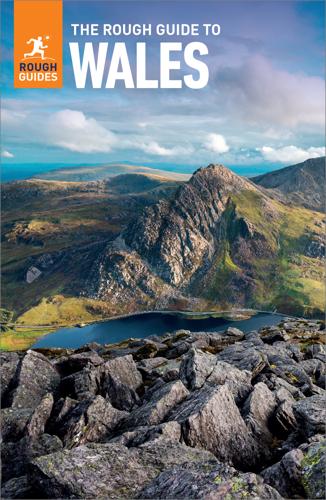
The Rough Guide to Wales
by
Rough Guides
Published 14 Oct 2024
However, a twelve-seat swing in the 2019 general election resulted in the Conservatives propelling their total number of seats to fourteen, just eight behind Labour; Plaid Cymru, meanwhile, retained their four seats. As in the rest of the UK, the Covid-19 pandemic hit Wales hard, particularly in South Wales and many of the poorer Valley’s communities, although, by common consensus, the Welsh government were deemed to have handled things reasonably well, certainly in comparison to their English counterparts. At the time of writing, there had been some 12,250 Covid-19 related deaths in Wales. Brexit and the ongoing fallout from the pandemic aside, there are other serious issues facing Wales today: farming lurches along in a state of semi-paralysis, and poverty and ill health still dog many old working-class communities.
…
Average monthly temperatures and rainfall Jan Feb Mar Apr May Jun Jul Aug Sep Oct Nov Dec Cardiff Max/min (ºC) 8/2 8/2 11/4 13/5 17/8 19/11 21/3 21/13 18/10 15/7 11/4 9/3 Max/min (ºF) 47/36 47/36 51/40 55/41 62/47 67/51 71/55 71/55 65/50 58/45 51/40 48/38 Rainfall (mm) 119 91 89 65 65 66 61 90 104 117 117 128 Dolgellau Max/min (ºC) 6/1 6/1 8/2 11/4 14/6 16/9 18/11 18/11 16/9 12/7 9/4 6/2 Max/min (ºF) 43/34 43/34 47/36 51/40 57/43 61/48 65/51 65/51 61/48 54/45 48/40 43/34 Rainfall (mm) 172 156 116 96 104 83 90 81 99 187 147 184 Emergencies For police, fire and ambulance services phone 999 (British) or 112 (pan-European). There is also a non-emergency number for the police 101 (10p/call). Health The Covid-19 pandemic caused school closures and the cancellation of various festivals in 2020 and the first part of 2021. For ongoing restrictions, visitors to Wales should check the most up-to-date state guidance at; http://gov.wales/coronavirus, and it should be noted that the guidance in Wales may be different to that of other UK nations.
…
Techniquest CF10 4BZ • Daily 10am–5pm • Charge • http://techniquest.org Just west of Mermaid Quay, Techniquest presents all things science and technology related, and will appeal as much to adults as it will to kids. Following an exciting revamp, the space is grouped into five zones, themed on chemistry, space, biomedical science, the environment, and world issues – there’s even a section on Covid 19 – each of which is packed with interactive experiences, such as being blasted about by hurricane strength winds or going full tilt on a bike machine. The retro section downstairs is fun, though more likely to appeal to those of a certain age. There’s also a Science Theatre where, for a small additional cost, you can attend one of the several daily shows, and a 360-degree planetarium for an immersive film experience.
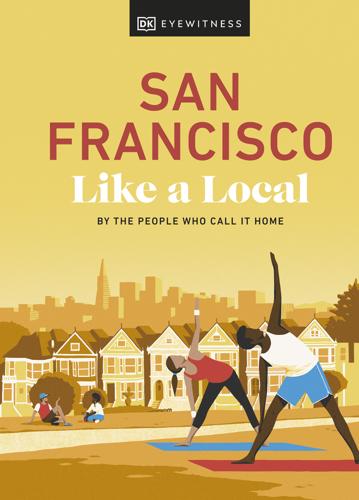
San Francisco Like a Local: By the People Who Call It Home
by
Dk Eyewitness
Published 5 Apr 2023
TRAVEL SAFETY ADVICE Before you travel – and while you’re here – always keep tabs on the latest regulations in San Francisco and the US. www.sanfranciscopolice.org Safety tips, precinct news, and information on how to report various crimes. www.sfnightministry.org Multi-faith nonprofit providing referral services, counseling, and a crisis helpline. www.sf.gov COVID-19 and monkeypox news and advice from the city. www.stopaapihate.org Website for reporting hate crimes against the Asian American and Pacific Islander communities. www.travel.state.gov Latest travel safety information. www.twitter.com/sf_emergency Real-time safety alerts. ACCESSIBILITY Most venues in San Francisco do a good job of being accessible, as do surrounding state beaches and parks.
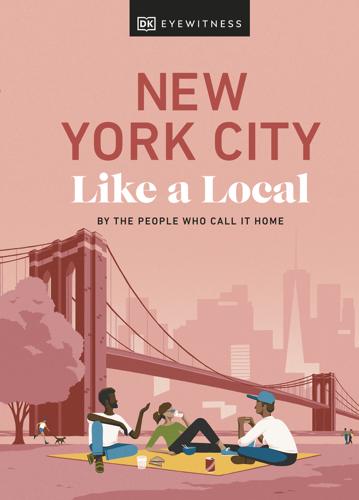
New York City Like a Local
by
Dk Eyewitness
www.health.ny.gov Resource detailing hospitals and their services throughout the state. TRAVEL SAFETY ADVICE Before you travel – and while you’re here – always keep tabs on the latest regulations in New York City, and the US. www.cdc.gov National public health institute offering disease prevention and guidance. www.coronavirus.health.ny.gov COVID-19 news and advice from New York State. www1.nyc.gov New York Police Department website, including precinct news and information on how to report various crimes. https://portal.311.nyc.gov The city’s official information hotline, with details on how to retrieve lost property. www.safehorizon.org Nonprofit helping survivors of domestic abuse, sexual assault, and other crimes.

Rome Like a Local
by
Dk Eyewitness
The wines here are largely Italian, all organic and biodynamic, plus they change weekly so there’s always a new bottle with a different story to sample. Served with the typical warmth of the city, this tempting enoteca is just too good to miss. g Wine Bars g Contents Google Map PIZZICAROLA Map 6; Viale di Villa Pamphili 143, Monteverde; ///daytime.robe.yoga; 068 987 6433 Some positives were born from the COVID-19 pandemic, like a renewed appreciation for our local neighbourhood stores. And this is why PIZZICaROLA opened in 2022: as a celebratory one-stop shop for all things local. Owner Carola stocks her Monteverde deli with fresh fruit and vegetables that come directly from small farmers. When aperitivo hour rolls around, the deli turns into a charming wine bar where Carola will talk you through natural wines and suggest cheese and prosciutto pairings to complement each glass.
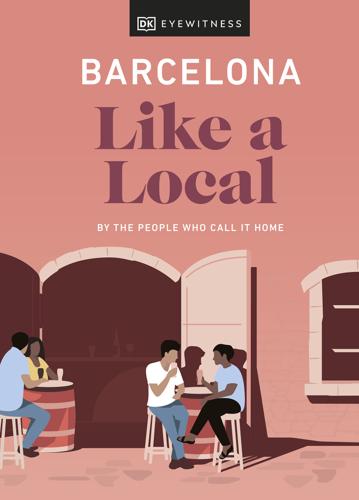
Barcelona Like a Local: by the People Who Call It Home
by
Dk Eyewitness
g Live Music g Contents Google Map EL GRAN TEATRE DEL LICEU Map 2; La Rambla, 51–59, Raval; ///molars.defining.libraries; www.liceubarcelona.cat For all their love of techno and electronic music, Barcelonans are partial to a bit of Puccini, especially in their city’s opera house, of which they’re hugely proud. And we can see why: the palatial theatre has survived fires, bombings, the Civil War, COVID-19. Speaking of, it was during the pandemic that the Liceu made headlines by staging a concert for 2,300 house plants (all of which were given to healthcare workers). Today, Barcelonans are grateful to be back in the plush red chairs, watching classics like Carmen, La Bohème and Die Walküre. The under-35s among you: keep an eye out for under-35 events, when a night at the opera (for a special price) is followed by drinks and a DJ set up on the opera house roof.
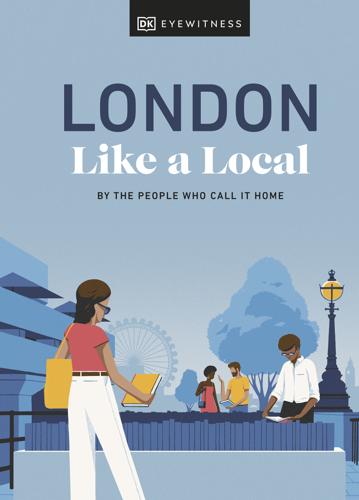
London Like a Local
by
Florence Derrick
(Seriously, Viv knows everything about the local area.) g City History g Contents Google Map THE NATIONAL COVID MEMORIAL WALL Map 5; start at Westminster Bridge, Albert Embankment, South Bank; ///baked.lease.bland; www.nationalcovidmemorialwall.org In March 2021, after the worst of the COVID-19 pandemic, a group of volunteers painted 150,000 hearts on a 500-m (1,640-ft) stretch of wall facing the Houses of Parliament. They encouraged bereaved families from across the UK to fill these hearts with the names of loved ones tragically lost to the virus. More hearts and names have been added since, making the London wall a moving symbol of the country’s collective grief and a reminder of what was lost.
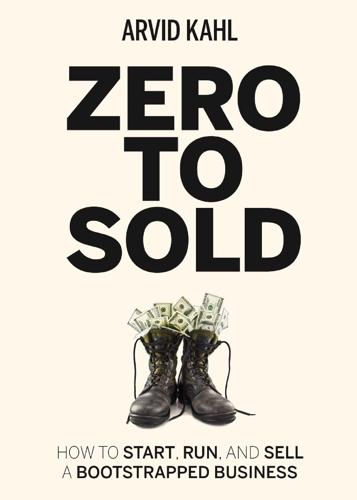
Zero to Sold: How to Start, Run, and Sell a Bootstrapped Business
by
Arvid Kahl
Published 24 Jun 2020
Will funding sources in your market dry up, or will investors spend more? What kinds of businesses will they fund? Will businesses that were not generating revenue because they had a lot of funding suddenly have to make a profit in a way that impacts your market? Which default-alive businesses are turning into default-dead? The COVID-19 pandemic is a good example of how to anticipate these types of changes. Governments responded to the pandemic with social isolation policies, massively disrupting existing consumption patterns. As a consequence of quarantine efforts, work-from-home became a necessity for many, resulting in an explosive increase in the need for enabling technologies like videoconferencing and collaboration tools.
…
Companies who had until recently only marginally served these fields started intensifying their efforts to move into that market, increasing competition among the available solutions. Other markets started drying up temporarily, mostly in industries related to tourism and non-virtual entertainment. Virtual entertainment businesses began to see sharp uptakes in usage, and delivery businesses were overrun with orders. All of this happened within the first few weeks of the COVID-19 pandemic. The long-term repercussions of this event are unclear at this point, but the forces set in motion will result in lasting changes to industries, professions, and personal lives. Adaptation: Implementing a Response You'll need to be on your toes to be able to react to changes quickly and reliably during a recession.
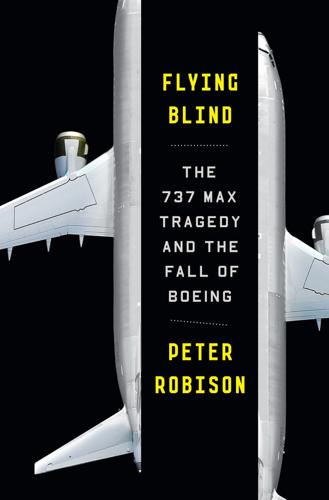
Flying Blind: The 737 MAX Tragedy and the Fall of Boeing
by
Peter Robison
Published 29 Nov 2021
That consensus was just starting to fray when Milton Friedman, the Reaganites’ favorite economist, argued what was then still the contrarian viewpoint in the New York Times Magazine in 1970: “The social responsibility of business is to increase its profits.” Fifty years later, communities are fragile, workers insecure, and families stressed. It isn’t hard to see the connection to a half century’s embrace of narrow corporate self-interest over collective responsibility. The federal government’s mismanagement of the COVID-19 crisis was only the most visible sign of decay in American institutions—the effects are felt in virtually every aspect of life, from soaring health-care costs to skyrocketing inequality to wildfire smoke blanketing American cities for weeks on end because of escalating carbon emissions. All stem at least in part from the failed belief that corporations will police themselves and shower us in riches if they’re just left alone to do so (and are lightly taxed all the while).
…
Calhoun even considered: Douglas MacMillan, “Nikki Haley Quits Boeing Board, Citing Disagreement with Company’s Bailout Request,” Washington Post, March 19, 2020. The company ultimately: Molly Smith and Julie Johnsson, “Boeing Rules Out Federal Aid After Raising $25 Billion of Bonds,” Bloomberg, April 30, 2020. The air force: Valerie Insinna, “Boeing to Get $882M in Withheld KC-46 Funds Back for COVID-19,” Defense News, April 2, 2020. “We’ll never have”: Julie Johnsson, “Boeing Mulls Revamped Factory Footprint for Shrinking Jet Market,” Bloomberg, July 29, 2020. Calhoun raised hell: Author interview with anonymous source, April 2020. The CEO and his board: Author interview with anonymous source, April 2020.
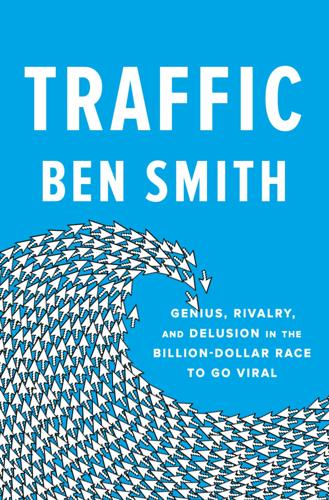
Traffic: Genius, Rivalry, and Delusion in the Billion-Dollar Race to Go Viral
by
Ben Smith
Published 2 May 2023
When I ran into him having a chilly outdoor pandemic dinner at a West Village restaurant in late 2021, he had grown philosophical about Gawker’s fall. “We can blame ourselves, as liberals always do. Or remember that a hard-right billionaire set up a law firm and spent eight figures in order to crucify an outlet that dared to criticize him,” he texted me. Nick spent much of the COVID-19 pandemic in SoHo. And he was still working on his app. “Like Andreessen, I think there’s a Talmudic internet still to be made,” he told me, referring to an internet that would find a way to, technically, achieve the old blogger dream of integrating news and commentary. “So I tinker.” That new internet could be about transparency, too, he believed.
…
W., 192 Bush, George W., 32, 41, 44, 102, 284 Business Insider, 61, 149, 269 BusinessWeek, 66 BuzzFeed and AOL’s purchase of Huffington Post, 149 “Buzz Detection” tool, 74 BuzzFeed News feature, 238, 247, 299 and competition with old media, 145 and devaluation of traffic, 264–70 Disney purchase negotiations, 195–202 and Facebook’s political content, 238–40, 244–45 and Gawker’s competition, 139 and Gionet, 297 and growth of Twitter, 115 launch of BuzzFeed Politics, 165 layoffs and labor tensions, 279–85 and meetings with New York Times board, 219–20, 223 news and social content, 157–64, 165–69, 172–73 origins of, 72–76 and product marketing, 287–89 and Ratter’s launch, 217 relationship with Huffington Post, 78–79, 107 reliance on Google searches, 151–54, 154–56 and revival of legacy media, 228–30 and right-wing media, 185–88, 190–94, 290–94 rivalry with Gawker, 170–71, 174 and social engagement on Facebook, 271–77 SPAC deal, 300–303, 324n302 and splintering of internet media, 299 and the Steele Dossier, 247, 249, 250–52, 254, 256–57, 260 and tech financing boom, 147 and “the Dress” viral post, 209–12 traffic growth, 122–27, 129–30, 203–12 and Upworthy, 179–83 Zuckerberg’s purchase offer for, 160–62, 165 “BuzzFeed Meme Machine” (memo), 123 C cable networks, 127–28, 269 Calacanis, Jason, 216 Cambridge Analytica, 242, 261 Camp, Garrett, 150–51 Campbell, Pamela, 231 Camp Bowery, 19, 54, 138 Canada, 226 Canvas Networks, 127 Carlson, Nicholas, 84–85, 120 Carson, Ben, 240 Case, Steve, 25 censorship, 211, 296–97 Cerami, Kassie, 112, 114 Charles, Michael, 188 Charlottesville rally, 294 Chartbeat, 204 Chateau Marmont, 199 Chatroulette, 151 Cheney, Dick, 71 Chinese Communist Party, 211 Chomsky, Noam, 4 Christie, Chris, 239 Claremont Middle School, 5 clickbait, 182–83 “click meter” tool, 105 Clinton, Bill, 27, 32, 94, 110, 119 Clinton, Hillary Rodham and Facebook’s political content, 239–42, 244–45 and Gionet, 293 presidential primary campaign, 102–3, 106 and the Steele Dossier, 248, 250, 253–54 support from women’s media, 94 and Weiner scandal, 144 WikiLeaks email controversy, 254, 259 Clooney, George, 56 CNET News, 41 CNN, 127–28, 167, 243, 249–51, 253 Coen, Jessica and author’s background, 246 and Denton’s parties, 53–56 and Denton’s wedding, 174 and Durst sex tape scandal, 63–64 and Gawker’s sexual content, 140 and Huffington Post’s traffic, 68–69 influence at Gawker, 53–56 and Jezebel’s style and content, 87, 95 Cohen, Michael, 250 Colbert, Stephen, 152 Coleman, Greg, 266 College Preparatory School, 5 Columbia Journalism School, 53 Comcast, 269 Comey, James, 249 Complex, 300 Comscore, 150, 179, 287 Condé Nast, 54, 88, 94, 156, 218 Conspiracy (Holiday), 234, 262 conspiracy theories and websites, 184, 258 Contagious Media, 27–28, 47–51, 71–72, 103 content management systems, 82 Conway, Ron, 285–86 Coppins, McKay, 166 Cormier, Anthony, 254, 257 Couric, Katie, 3–4, 8 COVID-19 pandemic, 299 Cox, Ana Marie, 29–31 Cox, Chris, 162–63, 206, 211 CPM (cost per thousand views) measure, 22–23, 45, 83, 169 Craigslist, 281 Cronkite, Walter, 28 CrowdTangle, 275 Cruz, Ted, 239, 240 Crying while Eating meme, 49, 50 cryptocurrency, 283, 299 Cuban, Mark, 216 Cube, the, 2, 11, 47 culture jamming, 9, 27 curiosity gap, 181, 205.
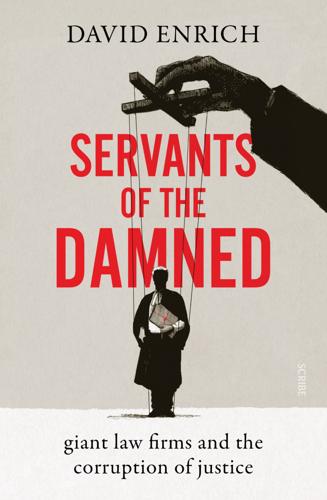
Servants of the Damned: Giant Law Firms and the Corruption of Justice
by
David Enrich
Published 5 Oct 2022
Elsewhere, Jones Day’s lawyers were threatening municipalities that dared to discourage the sale or advertising of tobacco products. Around the same time that these Jones Day lawyers were seeking to preserve a tobacco company’s rights to express itself, another team was helping Walmart, whose pharmacies for years had been dishing out opioids with abandon. Before Covid-19, the epidemic caused by the spread of the highly addictive painkillers was the foremost public-health crisis facing America. Jones Day trotted out a variety of creative defenses—and tapped its alumni network inside the Trump administration—to shield Walmart from liability for the havoc it had helped wreak.
…
• sent to trade publications: Shiffman, 2014. • “There’s going to be a number”: Shiffman, 2014. • at one point fantasized: Greg Veis, “Megyn Kelly on Working for Fox News and Leaving Her Law Career,” GQ, 11/21/2010. • successfully defended the network: Jones Day, “Fox defeats first amendment lawsuit relating to COVID-19 news coverage,” May 2020. • the firm shielded Fox: Jones Day, “Fox’s dismissal of defamation and intentional infliction of emotional distress claims brought by former employee affirmed by D.C. Circuit,” March 2021. • an unsuccessful attempt to neuter: Ashby Jones, “The Jones Day Lawyers Looking to Take Down SOX,” Wall Street Journal, 11/20/2019

Empireland: How Imperialism Has Shaped Modern Britain
by
Sathnam Sanghera
Published 28 Jan 2021
And it happened in 2020 around the Black Lives Matter movement, and around the coronavirus crisis when the public suddenly seemed to appreciate that BAME staff not only accounted for a disproportionate segment of NHS medical staff (44 per cent, when the 2011 Census puts the BAME population in England and Wales at 14 per cent) but were dying at seven times the rate of white colleagues. I met some relatives of black and Asian doctors who had died of Covid-19 for Channel 4 News and The Times. It was emotional. Medicine runs in many immigrant families, and some of the bereaved were themselves doctors, going back to work to face the virus that had killed their loved ones. Many of the deceased had experienced racism even as they built the NHS: studies confirm that not only are BAME doctors routinely racially abused, but they’re also pushed towards ‘Cinderella’ specialities such as geriatric medicine rather than the higher-status disciplines.
…
Johnson talked about how we needed a ‘world-beating’ testing regime when just getting a world-equalling one would have been progress. Later he promised a ‘world-beating’ track-and-trace system to stop a second coronavirus peak, which Britain’s newspapers then revealed was a failure.fn2 Even when Johnson contracted Covid-19 himself, there was a view among his supporters that he was somehow immune to an illness that had killed thousands just because he was a British leader, with Toby Young confessing in the Spectator to ‘a kind of mystical belief in Britain’s greatness and her ability to occasionally bring forth remarkable individuals … who can serve her at critical junctures.

Making It in America: The Almost Impossible Quest to Manufacture in the U.S.A. (And How It Got That Way)
by
Rachel Slade
Published 9 Jan 2024
Developing countries that build their economies around a single industry—say, Bangladesh and textile manufacturing—lack the economic resiliency to care for abandoned workers. As a result, they find themselves at the mercy of aid organizations. That’s a phenomenon we witnessed in real time when Covid-19 hit in 2020. When Americans and Europeans stopped buying clothes during the pandemic, major brands canceled orders with their small manufacturers around the world. The Worker Rights Consortium (WRC), a D.C.-based organization that investigates global factory conditions, estimates that between April and June 2020, clothing orders worth $16 billion were canceled by brands such as Adidas, The Children’s Place, Express, Gap, H&M, JCPenney, Nike, PVH Corp (which owns numerous brands, including Tommy Hilfiger and Calvin Klein), Gildan (owner of American Apparel), and Walmart.
…
W., 15 Bush, George W., 52, 62, 63, 91 Butler, Dave, 180, 221 Buy American Act of 1933, 129n Berry Amendment, 129n, 232n C Cambodia, 25, 38, 257 Cameron, David, 138 Campbellsville, Kentucky, 257–58 Amazon and, 268–69 Fruit of the Loom closure, 268 Carhartt, 27, 139 Carleton Woolen Mill, Winthrop, Maine, 45–48 Carnegie, Andrew, 180 Cartwright, Edmund, 8 Cascade Woolen Mill, Oakland, Maine, 40–41 Casco Bay Wool Works, Portland, Maine, 39–49, 100 closing of, 49 founding of, 40 income growth and employees, 44–45 loss of suppliers, 48–49 Maine Maid Outerwear, 39–40, 44 NAFTA and closing of, 45–46 CFTC (Commodity Futures Trading Commission), 156 Champion Mills, 135 bought out by Sara Lee (1989), 139 factory moved to China, 168 factory moved to North Carolina, 139 NAFTA and move to Mexico, 139 sweatshirt produced by, 135–36 Charney, Dov, 252, 264 Child Labor Amendment of 1924, 134 Chile, 72–73 China American apparel, percentage produced by, 231 American manufacturing sent to, 18 American mills that offshored to, 168–69 Biden administration and, 275 as biggest cotton buyer, 156 British East India Company and, 13–14 Champion Mills moved to, 168 as competitor for American-made goods, 143, 231 currency manipulation and, 212 development of Suzhou, 85–86 global manufacturing domination, 68 global cotton market and, 231–34, 235 hourly rate for labor in, 169 as market for western goods, 46–47 sanctions on, and retaliation, 233 subsidizing manufacturers, 68, 212 sweatshirt production, 29 textile and clothing production domination, 129, 257 as a threat to the U.S., 68 unfair trade practices, 68 U.S. tariffs and, 68 U.S. trade deficit to, 68 Uyghur oppression, 233–34 WHO and, 18, 68, 143 workforce in, 86 CHIPS-Plus Act of 2022, 296 Chouinard, Yvon, 110 CIA, 13, 15 in Chile, 72 in China, 246 in the Congo Republic, 246 Contras and, 15 in the DRC, 246 right-wing coups and, 15, 71 Operation Condor, 15 Cinderella Man (film), 100 Cleaves, Adam, 279 Coal Industry Retiree Health Benefit Act of 1992, 195–96 Coastal Enterprises, Inc., 119 Colbert, Stephen, 140 Cold War, 71–72 Common Threads, Portland, Maine, 122–23, 123n, 128 Congo, Democratic Republic of (DRC), 123–24 Congo Republic, 245–47 Congress of Industrial Organizations (CIO), 64 Conway, Thomas, 217 Coolidge, Calvin, 204, 205 Corbyn, Jeremy, 73 Cornered: The New Monopoly of Capitalism and the Economics of Destruction (Lynn), 259, 261 Corson, Holland, 293 cotton China and, 156, 231–34, 235 cotton gin and, 8–9, 155 environmental issues, 154 futures market and, 156 ginning co-ops, 155 Indian cotton, 154–55 Monsanto’s seed monopoly, 154 Noxubee harvest, 154–55 Pilchman’s American Fabrics and, 168, 231–32 price increases, 231–32 quality monitored by the USDA, 156 U.S. exports, 155–56 U.S. as major grower, 132, 152–56 Covid-19 pandemic, 200–201, 211–13, 227, 234, 242–43, 276, 285 American Roots and, 200–201, 209, 210, 213–19, 223–26, 239, 242–43, 276, 285 brands cancelling orders and, 24 companies closed by, 193, 276 dependency on imports and, 211 drug shortage during, 299, 300n hoarding and, 213–14 market uncertainty and, 232, 276 masks and PPE shortage, 211, 214 national divisiveness and, 222 raw goods shortages, 231 Sintex Industries bankruptcy, 156 vaccines, 231 Waxmans’ Washington Post op-ed, 218, 220 Crawford, Lucy, 5–6, 7 Crown family, 78, 79 Obama and, 78 Whirlpool plant shutdown, 78–80 cryptocurrencies, 14n CSIS (Center for Strategic and International Studies), 297 D Daitch, Mike, 239–40 Dana, Woodbury, 174–75 Dana Warp Mill, Westbrook, Maine, 172, 174–75 Dartmouth College, 102 Davis, Isaac, 201–2 Dawes Act of 1887, 203 de Kooning, Willem, 59n Dell, Michelle, 88–89 Delphi Automotive, Dayton, Ohio, 77 Delta Air Lines, 153 Democratic Party AFL-CIO and, 52–53, 70, 74 free trade, offshoring, and, 70 neoliberalism and, 70, 195 Department of Defense (DOD) prison labor used by, 129–30n required to purchase American-made goods, 129n, 130, 232 spending on textiles and apparel (2021), 129n Depp, Johnny, 119 Devlin, Patti, 193–97, 211, 274 American Roots investment, 196, 227 on bringing back American manufacturing, 196–98 Dexter, Maine, 189–90 Dexter Shoe Co. in, 189, 190, 191–93 Dickens, Charles, 9 Du Pont family, Winterthur museum, Delaware, 34 E Eastman Kodak, 83–85 Japan’s Fujifilm imports and, 84, 85 Eban, Katherine, Bottle of Lies: The Inside Story of the Generic Drug Boom, 299n Eddie Bauer, 110 Eisenhower, Dwight D., 63, 207 Enter the Wu-Tang (album), 137 environmental issues agricultural monoculture, 152–54 cotton and, 154 fabric dye disposal and, 22 GDP not inclusive of, 17 textile manufacturing and, 21–22 used clothing disposal, 22–23 WTO’s detrimental effects, 16 Esquire, 146 Trumka profile, 78–79 Evans, Walker, 59n Evil Geniuses: The Unmaking of America (Andersen), 11 F Factory Man (Macy), 68–69 Fair Labor Standards Act of 1938, 134 Fairness Doctrine, 191 Fall River, Massachusetts, 217, 243, 279 Merrow company in, 40, 244–45, 247 Fanatics, 289 Farley, William, 258–59, 260 Farmstead Magazine, 33 FDRA (Footwear Distributors & Retailers of America), xii Federal Prison Industries, 129–30n Feinbloom brothers, 135–36 Fetterman, John, 139, 139n Feuerstein, Aaron, 105–6, 109–11, 129, 130 Feuerstein, Raphael, 110 Feuerstein, Samuel, 105–6 Flowfold company, Maine, 213 Floyd, George, 220, 241 Ford, Henry, 203, 256 Frazier, Joe, 137n free trade/free market theory, 4–5, 11–15, 24, 33, 63, 71 American economy and, 19, 235 Chile and, 72–73 devastating effects of, 19, 20, 91 ethical or social agenda absent, 23 first American victims of, 18 IMF and, 71 NAFTA and, 15–16, 18–19 Reagan and, 185 USMCA and, 19 WTO and, 16, 22, 84 See also NAFTA Friedman, Milton and Rose, 11–12, 14, 72, 111 Friedman, Vanessa, 139 Frost, Robert, 106 Fruit of the Loom, 234, 252, 257–60, 268 bankruptcy of, 263, 264 Farley takeover, 258–59, 263–64 offshore production of, 262–63 stock buyback at, 263–64, 263n G General Dynamics, 79 George, Billy, 53, 59 Gildan Activewear SRL, 232 Gingrich, Newt, “Language: A Key Mechanism of Control,” 192 Glass-Steagall Act, 94 globalization, 18, 70 Buffett’s miscalculation about, 192 NAFTA, WTO, and, 192 U.N.

When It All Burns: Fighting Fire in a Transformed World
by
Jordan Thomas
Published 27 May 2025
,” Los Angeles Times, October 1, 2020, https://search.proquest.com/docview/2447463050?pq-origsite=primo. GO TO NOTE REFERENCE IN TEXT “more expensive than dropping Perrier”: Patty Nieberg, “Largest Firefighting Plane May Be Sold for COVID-19 Response,” Oregon Public Broadcasting, April 28, 2021, https://www.opb.org/article/2021/04/28/largest-firefighting-plane-grounded-covid-19-possibilities/. GO TO NOTE REFERENCE IN TEXT a million dollars each day: Brent McDonald, Sashwa Burrous, Eden Weingart, and Meg Felling, “Inside the Massive and Costly Fight to Contain the Dixie Fire,” New York Times, October 11, 2021, https://www.nytimes.com/interactive/2021/10/11/us/california-wildfires-dixie.html.
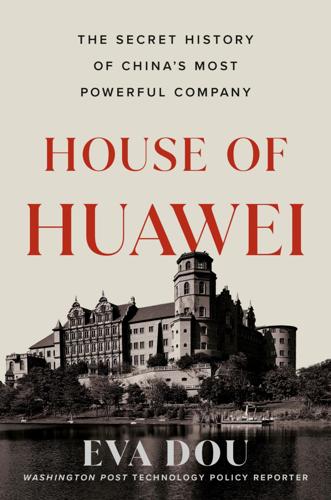
House of Huawei: The Secret History of China's Most Powerful Company
by
Eva Dou
Published 14 Jan 2025
Three days into Meng’s extradition hearing, a fifty-six-year-old man with a fever and dry cough arrived by ambulance to a Toronto hospital. The man had felt ill since traveling to Wuhan, the Chinese city where many of Huawei’s senior executives attended university, and which was about to become known as ground zero of the COVID-19 pandemic. As that first COVID patient was being confirmed in Canada, Wuhan’s eleven million residents had just received the shocking news that their city was being locked down. No one was allowed in or out except for emergency vehicles. No one knew what this mysterious disease was or how things would turn out.
…
Huawei Technologies, 149–53, 155, 211, 375 Citibank, 235 CITIC Group, 140 Claflin, Bruce, xxi, 152–53 Clancy, Charles, 169–70, 353 Clark, Duncan, 109, 112–13 Clarke, Donald C., 312 class-4 (04) telephone switch, 60–61, 63, 80, 81, 139, 370 Clean Apps, 328 Clean Cable, 328 Clean Cloud, 328 Clean Countries, 328, 346 Clean Network, 327–28, 346 Clean Store, 328 Clear Carrier, 328 ClearTalk, 155, 196, 375 Clinton, Bill, 137–38, 191 cloud computing, 273–74 CNBC, 301 CNN, xli, 310, 313 Coca-Cola, 211 Cold War, xxxviii–xl, 9, 106, 368 Columbia, 112 Commerce Department, US Bureau of Industry and Security, 303, 381 Huawei and, 19, 131, 144–45, 278, 303–4, 305, 325, 346, 381, 382 ZTE and, 231, 257–58, 278, 282, 303, 380 Committee on Foreign Investment in the United States (CFIUS), 171–72, 377 Communications Assistance for Law Enforcement Act (CALEA), 154–55 compass, xl Compression Labs, 94–95 “compromise and shades of gray,” 35 computer chips, 62–63, 66, 73–75, 112, 189–90, 243, 303–5, 325–26 HiSilicon, 189–90, 265, 275–76, 304–5, 325, 346, 370 Confucius, 14 Cong Peiwu, 337–38 consumer electronics, 202–3 Consumer Electronics Show, 63 controlled process switches, 67 corruption, 22, 49, 82, 83–84, 251–52 Cotton, Tom, 281 COVID-19 pandemic, 322, 323–24, 338, 341 “crossing the river by feeling the stones,” 232 Cuba, 278 Cultural Revolution, 12–15, 22–23, 28, 46, 65, 86, 142, 368 cyberattacks, 188 Czech Republic, 240 D Dagens industri, 310 Dai Xianglong, 74–75 Dalai Lama, 190–91 dang’an, 72–73 Das Kapital (Marx), 4 Davidson, Alan, 347 DBS Bank Limited, 235 Deadman, Stephen, 240 Deep Blue, 120 deep-packet inspection (DPI), 188–89 Dell, 238 “democratic management,” 57–58 Deng Xiaoping, xxi, xxii, 26 death of, 89–92, 373 democracy movement, 49–52 economic reforms, 30–31, 33, 34–35 purges, 79 Denmark, 333 depression, 136, 176 Der Spiegel, 237, 311, 379 Deutsche Telekom, 243 Dhillon, Sanjit, 289–90, 334 Digital Equipment Corporation, 145 Ding, Charles (a.k.a.
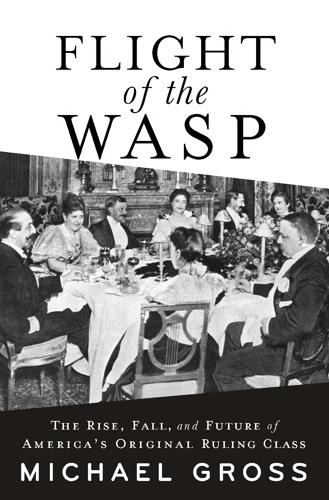
Flight of the WASP
by
Michael Gross
Today, the Museum welcomes the opportunity to acknowledge, confront, and apologize for its role in the eugenics movement,” it says, referring to the discipline as a “pseudo-science” aimed at “vulnerable populations,” and states that it now sees such ideas as “antithetical to the values, mission, and ongoing work of this Museum.” The statement goes on to note that in fall 2021, the museum’s then-president, Ellen Futter, took part in a virtual “anti-centennial” during the COVID-19 pandemic, marking the anniversary of that second eugenics congress as part of its “reckoning with its history” and its determination “to confront modern attempts to distort science to achieve nonscientific social outcomes. We hear echoes of eugenics in today’s anti-immigration rhetoric, continuing racism, anti-Semitism and other forms of religious discrimination, and gender bias.
…
I continued reading in 2019, as I started reaching out to members of interesting families and digging in archives, seeking the most interesting characters within them. I was also fortunate enough to be granted a desk that summer in the Frederick Lewis Allen Room at the New York Public Library’s Main Building, an extraordinary research resource for authors. At NYPL, I thank Melanie Locay for welcoming and helping me. After a few months, though, the COVID-19 pandemic shut down the NYPL and all the other libraries, repositories, and archives I’d hoped to visit. So I continued to do interviews by phone, placed more emphasis on secondary sources, and began to write, a process that seemed more urgent and fraught after the May 2020 death of George Floyd made Americans ask searching questions about their origins and identity.
…
Thomas, Earle and Carol Mack, Gene and Christine Pressman, Sharon Sondes and Geoffrey Thomas, H. Woody Brock, Nannette and George Herrick, and Steve Cooper of Reed Smith. For advice on explaining the economic aspects of this story, I thank William D. Cohan and Liaquat Ahamed. For personal services rendered during the writing and companionship during the COVID-19 pandemic, I am grateful to Lavinia Snyder, Alison Spear and Alexander Reese, Jeff Blick, Andrew and Leslie Siben, John and Sara Cassis, Hari and Himayani Ramanan, Elizabeth Eilender and David Jaroslawicz, Steven Lamm, Graeme Whyte, Nirmal Tejwani, and Barry Kieselstein-Cord and Sara Nesbitt. I also thank David Schalk, Professor Emeritus of History at Vassar College, for sparking my interest in the past.

Empire of AI: Dreams and Nightmares in Sam Altman's OpenAI
by
Karen Hao
Published 19 May 2025
GO TO NOTE REFERENCE IN TEXT impressive technical milestone: In addition to interviews with sources, the idea of using code-generation models to accelerate OpenAI’s research comes up in two of the internal company memos for which I have copies. GO TO NOTE REFERENCE IN TEXT a faster rise in unemployment: Rakesh Kochhar, “Unemployment Rose Higher in Three Months of COVID-19 Than It Did in Two Years of the Great Recession,” Pew Research Center, June 11, 2020, pewresearch.org/short-reads/2020/06/11/unemployment-rose-higher-in-three-months-of-covid-19-than-it-did-in-two-years-of-the-great-recession. GO TO NOTE REFERENCE IN TEXT Google had published: Daniel Adiwardana, Minh-Thang Luong, David R. So, Jamie Hall, Noah Fiedel, Romal Thoppilan et al., “Towards a Human-Like Open-Domain Chatbot,” preprint, arXiv, February 27, 2020, 1–38, doi.org/10.48550/arXiv.2001.09977.
…
See also data annotation Sama, 190–92, 206–13, 218–19 Copilot, 238–39, 247–48, 264 copper, 272, 273, 277, 281, 282–84, 291 copyright infringement, 90–91, 102, 135, 301, 308, 313, 384 “costly signals,” 357–58 cotton gin, 88–89 Couldry, Nick, 104 COVID-19 pandemic, 54, 74, 149, 152, 181–82, 192, 203, 205, 206, 208, 213, 218, 293, 323 Cowen, Tyler, 399 Crab Generation, 220–21 Creative Commons, 182 cryogenics, 186–87 cryptocurrencies, 63, 80, 185–86 CSAM.
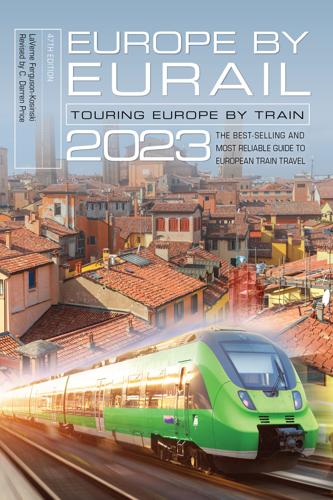
Europe by Eurail 2023
by
Laverne Ferguson-Kosinski
and
C. Darren Price
Published 8 Jan 2023
Each country has its own special attractions to offer rail travelers as they speed through, ensconced in comfort and free from worry. Added to the passing scenes is the opportunity for leisurely dining and drinking while chatting with fellow passengers, most of whom are the Europeans you hoped to meet. Travel by train in Europe is a unique and pleasurable experience. All aboard—and take your imagination with you. Covid-19 and tourist travel: As world travel begins to pick back up from the pandemic, make sure you read and prepare ahead of time. Individual countries have rapidly evolving rules on who may enter the country. Make sure to contact the tourist office of the countries you will be visiting to make sure that you know the most recent requirements.
…
One item that you can’t leave home without is a passport. U.S. citizens are admitted to European countries with only a passport; a visa is not required. If you do not have one or if yours has expired, write immediately to one of the U.S. passport offices listed in the Appendix (www.travel.state.gov). Due to Covid-19, passport issuance and renewals are taking longer than normal, and expedited service is not available. Please plan ahead! “Know before you go”—the slogan of the U.S. Customs Service that pertains to what you can return with—also applies to the financial aspects of vacation planning. The fluctuation of the dollar’s purchasing power in Europe over the past few years has left a lot of us wondering whether we can afford a vacation on the other side of the Atlantic.
…
It usually takes a minimum of six weeks. The National Passport Information Center (NPIC) operates an automated information number: (877) 487-2778. A recorded message describes the documents you need and the application process for obtaining a passport, as well as reporting the loss or theft of your passport. Due to Covid-19, many renewals are taking longer than normal, and expedited service is not available. Please plan ahead! Passport fees normally total $165 for a new passport and $140 for renewal or for those younger than age 16. For expedited service, send an extra $60 and pay for overnight delivery. This usually gets your passport to you in about two weeks.
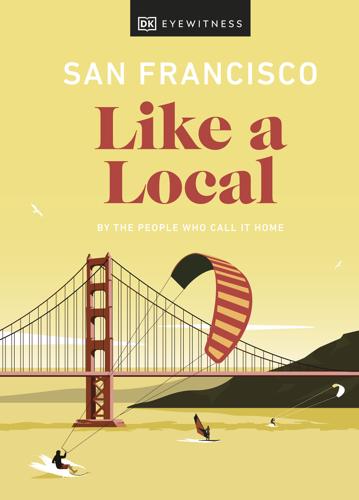
San Francisco Like a Local
by
DK Eyewitness
Published 4 Oct 2021
TRAVEL SAFETY ADVICE Before you travel – and while you’re here – always keep tabs on the latest regulations in San Francisco, and the US. www.sanfranciscopolice.org Safety tips, precinct news, and information on how to report various crimes. www.sfnightministry.org Multi-faith nonprofit providing referral services, counseling, and a crisis helpline. www.sf.gov COVID-19 news and advice from the City and County of San Francisco. www.stopaapihate.org Website for reporting hate crimes against the Asian American and Pacific Islander communities. www.travel.state.gov Latest travel safety information. www.twitter.com/sf_emergency Real-time safety alerts. ACCESSIBILITY Most venues in San Francisco do a good job of being accessible, as do surrounding state beaches and parks.

Tokyo Like a Local
by
Dk Eyewitness
TRAVEL SAFETY ADVICE Before you travel – and while you’re here – always keep tabs on the latest regulations in Tokyo and Japan. www.keishicho.metro.tokyo.lg.jp Information from the Tokyo Metropolitan Police Department, including a list of stations in the city. www.japan.go.jp Latest travel safety information from the Japanese government. www.japan.travel Japan National Tourism Organization, with updates on COVID-19 and an English-speaking visitor helpline. www.jma.go.jp Weather forecasts and advisories, including typhoon alerts. www.metro.tokyo.lg.jp Includes an Earthquake Survival Manual should a strong tremor happen. www.soudanplus.jp A helpline providing support and resources for victims of domestic abuse.
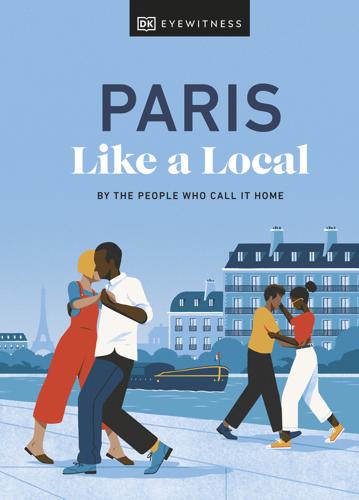
Paris Like a Local
by
Dk Eyewitness
TRAVEL SAFETY ADVICE Before you travel – and while you’re here – always keep tabs on France’s latest regulations. www.diplomatie.gouv.fr Information from the French government on travelling to, and living in, France. www.gov.uk/foreign-travel-advice Up-to-date travel advice from the FCDO. www.gouvernement.fr The French government website, the first port of call for COVID-19 regulations. www.prefecturedepolice.interieur.gouv.fr The Préfecture’s tips for staying safe and what to do if you’re a victim of crime. www.solidaritefemmes.org Resources and a helpline for female victims of violence. ACCESSIBILITY Provision for those with reduced mobility remains very poor in Paris, particularly on public transport.

Dublin Like a Local
by
Dk Eyewitness
www.dfa.ie Latest safety advice and onward travel regulations from the Department of Foreign Affairs in Ireland. www.drcc.ie Information and support in regards to sexual violence from the Dublin Rape Crisis Centre, with a 24-hour helpline. www.garda.ie Useful information from An Garda Síochána, the Irish police. www.gov.ie The official Irish government website is the first port of call for all COVID-19 regulations. www.itas.ie The Irish Tourist Assistance Service, helping those who have been the victim of a crime while visiting Ireland. ACCESSIBILITY Dublin has come along leaps and bounds when it comes to accessibility, but some medieval streets can prove tricky for wheelchair users and some attractions may be lacking in facilities.
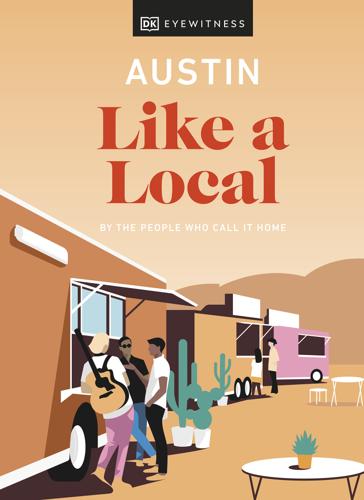
Austin Like a Local
by
DK
www.waterloocounseling.org A nonprofit that provides affordable mental health counseling and therapy to all, with support groups for members of the LGBTQ+ community. TRAVEL SAFETY ADVICE Before you travel – and while you’re here – always keep tabs on the latest regulations in Austin and the US. www.austintexas.org/plan-a-trip/visitor-health-safety The city’s official information site. www.dshs.state.tx.us/coronavirus/travelers.aspx Up-to-date COVID-19 news and advice from Texas’s Department of State Health Services. www.texasready.gov Weather forecasts and advisories, including flood and hurricane alerts. www.travel.state.gov Latest travel safety information from the US government. ACCESSIBILITY Austin is often hailed as being one of the most accessible cities in the US, and most venues and services are accessible to all people.

Together
by
Vivek H. Murthy, M.D.
Published 5 Mar 2020
As a physician, I felt compelled to address these issues because of the rising physical and emotional toll of social disconnection that I’ve watched throughout society over the past few decades. What I could not anticipate, however, was the unprecedented test that our global community would face just as this book was going to press. In the first weeks of 2020, the COVID-19 pandemic turned physical human contact into a potentially mortal threat. The novel coronavirus was on the loose, like an invisible stalker, and any of our fellow human beings could have been its carrier. Almost overnight, it seemed, getting close enough to breathe on another person became synonymous with danger.
…
Alongside the looming specter of a global financial recession rose an equally disturbing prospect of a social recession—a fraying of communal bonds that deepens in severity the longer we go without human interaction. As the pandemic continues, however, it becomes ever clearer that social distancing is a misnomer. To be sure, we must practice physical distancing to stop the spread of COVID-19, but socially, we may emerge from this crisis feeling closer to friends and family members than ever before. Each day brings new examples of our communal ingenuity as we meet this crisis together. In Italy, one of the hardest hit countries, neighbors isolated in their homes have found shared comfort by singing from their windows in unison.
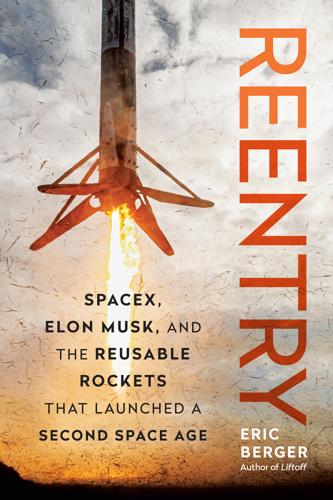
Reentry: SpaceX, Elon Musk, and the Reusable Rockets That Launched a Second Space Age
by
Eric Berger
Published 23 Sep 2024
After a successful in-flight abort test of Dragon in January, putting both the parachutes and SuperDraco thrusters to the test, it was mostly a matter of finalizing the necessary paperwork and slotting the crewed mission into the space station’s schedule of visiting vehicles. By mid-April, even as COVID-19 lockdowns were becoming increasingly widespread, NASA was confident enough in Crew Dragon to set a launch date for the mission. Hurley would command, with Behnken overseeing operations. They were due to launch on the afternoon of May 27. Musk has questions about the weather The weather sucked.
…
The city streets surrounding SpaceX were eerie, and the mood tense. Protests in Los Angeles over the murder of an African American man, George Floyd, were reaching their peak. Crabtree and the other employees weren’t sure whether the roads would be closed in Hawthorne when they tried to go home after the launch. The background of the COVID-19 pandemic further amplified the unease. SpaceX had an exemption to keep operating with on-site employees, but limits were placed on gatherings. During launches a crowd typically gathered outside the Mission Control Center, watching proceedings through floorto-ceiling glass windows. But due to the virus, no one could congregate there now.

Elon Musk
by
Walter Isaacson
Published 11 Sep 2023
See Starlink Compaq Computer, 66 computer programming EM’s childhood interest in, 29, 33–34 EM’s college years and, 50 EM’s Silicon Valley internship and, 55–56 See also Zip2 “Computing Machinery and Intelligence” (Turing), 595 Confinity, 76 Cook, Tim, 261, 559 Corcoran, Kyle, Twitter acquisition and, 511 COVID-19 pandemic conspiracy theories and, 578–80 EM’s reconciliation with Kimbal and, 346 EM’s resistance to authority and, 379, 417–18 Tesla and, 408, 417–18, 441 Twitter content moderation and, 572–73 Cramer, Jim, 293 Crawford, Esther, 509, 540 Crider, Johnna, 290 Culture, The novels (Banks), 400 Cyberpunk video games, 310, 318, 485 Daimler, 193 Davenport, Christian, 357 David, Larry, 491 Davis, Steve The Boring Company and, 257, 258 EM’s management of Twitter and, 547, 583 flamethrowing and, 299, 496 Model 3 production surge and, 271 Twitter server move and, 584, 585 DeepMind, 240–41, 600, 601, 605 Deese, Brian, 421 Demolition Man, 591 Denholm, Robyn, 580 Depp, Johnny, 263 Dharamsi, Tejas, 514 DiCaprio, Leonardo, 381 Diez, Shana, 478, 608 Diplomacy, 46 Diversity Myth: Multiculturalism and Political Intolerance on Campus, The (Thiel and Musk), 424 Dojo, 244, 394, 397, 487, 596 Dontchev, Kiko, 347, 349–51, 362, 385 Doohan, James, 176 Dorsey, Jack, 440, 444, 461, 510, 567 Dow, Brian, 271, 369, 370–71, 372, 373–74 Downey, Robert, Jr., 142 Drexler, Mickey, 143 Dreyer, Lauren, 428–29 Drori, Ze’ev, 167 Duan, Phil, 499 Dungeons & Dragons, 32–33, 50, 309 Durban, Egon, 492 Dyer, Deborah Anne (Skin), 344 eBay PayPal and, 85, 86–87 X.com and, 76, 77, 78–79 Eberhard, Martin, 124, 162 component outsourcing and, 132–33, 156 departure of, 163–64 development mule and, 133 electric car ideas, 127–28, 129, 130 EM’s attacks on, 164–65 EM’s design input and, 136–37 EM’s enmity and, 164, 192 EM’s sensitivity about credit and, 139, 141–42 legal settlement with EM, 164 Roadster launch and, 140–41, 143 Roadster production costs and, 160 Tesla financial issues and, 161, 163 Tesla founding and, 130, 133, 139, 164 Tesla leadership conflicts and, 134, 137, 139–40 economic crisis (2007–2008), 179–81, 193 Edgett, Sean, 513 effective altruism movement, 460 Ehrenpreis, Ira, 167 Einhorn, David, 278 Ekenstam, Felix, 425 Elden Ring, 7, 455, 588 electric cars AC Propulsion and, 126–27, 129 auto industry abandonment of, 193 Biden and, 420–21 Eberhard and, 127–28, 129, 130 EM’s college interest in, 51, 55, 57–58 Rosen meeting and, 125–26 Tesla Motors and, 127–28, 129–30 tzero prototype, 126–27, 128 See also Tesla Ellison, Larry, 7, 218, 451, 459–60, 461, 558–59, 590–91 Elluswamy, Ashok, 596–97, 598 Emanuel, Ari, 488, 491, 494, 497, 554 EM’s management of Twitter advertiser boycotts and, 537–38 advertisers and, 533–35, 537–38, 547, 559–60, 580 Apple and, 559–60 content moderation and, 524–31, 537, 554, 566, 567, 572–73, 574–77 desk-siding, 552 EM’s demon mode and, 537–39 EM’s management style and, 367 EM’s personality and, 534 EM’s stress and, 544–45, 547–48 engineering integration and, 79, 494, 557 financial issues and, 541 firings and, 509, 510, 521–22, 540, 547–50, 555–57 government agencies and, 568, 572 hardcore culture and, 220, 349, 508, 522, 547, 550–51 hardcore opt-in, 550–51, 556 impulsive tweets and, 533, 534, 577–78 in-person vs. remote work, 519, 541–42 journalist suspensions, 575–77 layoff reviews, 515, 516–19, 536, 548–49 product changes, 514 product review, 508–9 risk and, 522, 555 Roth departure, 542–44 server move, 581, 582–86, 588–90, 598 survival, 558 top management question, 520–21 troll/bot campaign and, 530–31 Twitter Blue, 539–40, 542–43, 547, 613 Twitter Files, 529, 566–68, 569–73, 575, 576, 579 visibility filtering, 529, 571, 572–73, 575 X.com and, 87, 507, 509, 560 Yaccarino as CEO, 613 Endeavor, 491 Engelbart, Doug, 399 Epstein, Jeffrey, 296 Fabricant, James, 173, 174 Falcon 1 launch attempts EM’s stress and, 5, 173, 179 first attempt (Mar. 2006), 150–52 second attempt (Mar. 2007), 153–54 third attempt (Aug. 2008), 175, 176–77, 197–98 fourth attempt (Sept. 2008), 184–88, 206 Kimbal’s support and, 150, 151, 186–87, 300 Obama administration and, 206 Farooq, Navaid, 44, 235 EM’s friendship with, 45 on EM’s grief, 103–4 EM’s marriage to Justine and, 71–72 EM’s marriage to Talulah and, 215 strategy games and, 46, 47, 51 Twitter and, 455–56 Zip2 and, 62 Farooq, Nyame, 61 Fath, Joe, 291, 334 Fauci, Anthony, 577–78, 587 Favreau, Jon, 142 Federal Aviation Administration (FAA), 351–52, 360, 362 Federal Communications Commission (FCC), 355–56 Fedorov, Mykhailo, 428, 431, 433, 434 Felsenthal, Ed, 416 Ferguson, Niall, 430 Fermi, Enrico, 93 Fermi’s Paradox, 93 Fibonacci Sequence, 37 Field, Doug, 301 Fisker, Henrik, 196, 197 Flesh without Blood, 306 Fletcher, Winnifred.
…
See Musk, Justine Wilson; Riley, Talulah meeting with pope, 471–72 Nevada’s birth and death and, 103–4, 105, 554 philanthropy and, 437, 438, 439 press coverage, 63–64, 75, 357, 558, 567, 575 press relationships, 357 sexual harassment accusation, 419 as Time magazine Person of the Year, 416 U.S. citizenship, 95 —BELIEF IN HUMANITY: artificial intelligence and, 31, 241, 242, 243, 600, 602, 606 automation/de-automation and, 281 birthrates and, 413, 468, 475–76, 498 Inspiration4 mission and, 386 internet and, 58 reality of, 6 space travel and, 93–94, 100, 240 —BUSINESS PRINCIPLES: automation/de-automation and, 57, 272, 274–75, 280, 281–82 cost-effectiveness, 112–13, 148, 246, 337, 374 engineering integration, 79, 109, 200, 219, 372, 390, 494, 557 founder qualifications, 109, 133 hardcore culture and, 64, 220, 349, 350, 508, 522, 547, 550–51 idiot index, 99–100, 363–65 improvisation, 116–17, 148, 210, 211, 212, 282–83 in-house component manufacturing, 112–13, 132 iterative design approach, 114–15 overview, 112–17 Polytopia lessons, 426–27 responsibility and, 152 sense of mission and, 92–93, 129, 249–50 See also production algorithm and unrealistic deadlines and below —CHILDHOOD, 1, 15, 21, 22, 35 abuse and trauma during, 2–6, 7, 19, 21, 36–38, 104, 171, 264, 309, 458 computer programming and, 29, 33–34, 36, 43 cousins and, 25–26, 27, 28, 32–33, 252 determination and, 17–18, 33 Dungeons & Dragons and, 32–33 entrepreneurship and, 27 existential crisis, 30–32 gambling, 36–37 living with father, 23–24, 25 loneliness, 17 overseas trips, 24 parents’ divorce and, 20 reading, 20, 27, 30–32 religion and, 30 school experiences, 3–4, 16–17, 26–27 space travel interest, 27–28 violent environment of, 2, 25, 41, 64–65 —CHILDREN OF: caring and, 5, 38 with Grimes, 340, 341–42, 379, 415–16, 466, 468 with Justine, 5, 169, 342 parenting, 18, 341, 414–15, 475, 481, 612 Talulah and, 471 wealth and, 344–45 with Zilis, 412, 413–15, 467–68, 599, 603 See also specific children —COLLEGE YEARS, 45–53 friendships, 45, 50–51, 52 Nicholson mentorship, 47–48 partying, 52–53 relationship with Justine, 69–70 road trips, 56–57 Silicon Valley internships, 54, 55–56 strategy games, 46–47, 51 —COMPANIES: The Boring Company, 257–59, 288, 298, 441, 472, 496, 585 X.AI, 244, 605–6 X.com, 73, 74–79, 81, 87, 447 See also EM’s management of Twitter; Neuralink; SpaceX; Tesla; Twitter acquisition; Zip2 —DRAMA ATTRACTION: artificial intelligence and, 601 childhood trauma and, 6 contentment aversion and, 410, 442 EM’s admission of, 7 Grimes and, 308 Heard and, 263–64 Justine and, 70–71, 169 SpaceX and, 380–81 surges and, 362 tailspin (2018) and, 288 Talulah and, 216, 471 Twitter acquisition and, 547 —HARSHNESS: Agrawal and, 445 Baglino on, 199 childhood, 17 childhood trauma and, 169 Lucas Hughes and, 363–65 Kimbal and, 64 lack of memory of, 396, 497 Marks on, 165–66 Salzman on, 191 Straubel on, 273 Twitter acquisition and, 489 —HEALTH ISSUES: back and neck pain, 237, 378, 396 COVID, 346 dieting, 497, 603 malaria, 88–89 See also mental health issues below —HUMOR: anti-wokeness and, 419 birthrates and, 468 Falcon 1 launch attempts and, 152 flamethrowing and, 298–99, 496 irony and, 80–81 management of Twitter and, 549 Mechazilla and, 360 naming and, 257 Optimus and, 485, 498 Roadster space launch, 299–300 Starship launch and, 609 Teller’s management of, 230 Tesla automation/de-automation and, 282 Tesla Chinese manufacturing and, 313 Tesla fart app, 303 Twitter acquisition and, 507 —IMPULSIVE TWEETS: attempts to prevent, 614–15 children and, 472 competition with Bezos and, 356 EM’s sons and, 587, 588 Gates and, 438 Kimbal on, 578, 586–87 management of Twitter and, 533, 534, 577–78 Polytopia lessons and, 427 proposal to take Tesla private, 292–93, 294 Spiro and, 512 Thai cave rescue and, 289–91 Twitter acquisition and, 490 Twitter Files and, 567 —INTERESTS: Burning Man, 252, 310, 378–79 computer programming, 29, 33–34, 36 engineering, 27, 55, 56, 57–58, 326–27, 354–55, 388 flying, 90 internet, 57–59 mechanics, 56–57 partying, 52–53, 169, 190, 215–16, 237 reading, 20, 27, 30–32, 51 strategy games, 46–47, 51, 425 See also space travel; video games —MANAGEMENT STYLE, 445 firings and, 220, 273, 313, 333–34, 352, 363, 374–75, 518 See also under EM’s management of Twitter future imaginings and, 150 Lucas Hughes on, 366–67 job interviews and, 204–5 Andy Krebs on, 367–68 Marks on, 165–66, 167 Neuralink and, 402 participation, 480–81 sense of mission and, 249–50 SpaceX and, 64, 110, 113–14, 150 surges, 270–73, 279, 281, 314, 361–62, 583–86 Tesla and, 140, 165–66 “walk to the red,” 278–79, 283 X.com and, 74–75 Zip2 and, 64–65 See also harshness above; personality and unrealistic deadlines and below —MARS MISSION: college years, 51 Gates on, 436–37 Mars Society inspiration for, 92 Optimus and, 485 SpaceX founding and, 92–94, 100, 321 Starlink founding and, 321 Starship system and, 326, 362, 391, 604–5, 608, 611 unrealistic deadlines and, 391 vision/hype mixing and, 230, 604 —MENTAL HEALTH ISSUES: Joe Rogan show and, 295, 297–98 Kimbal’s Ayahuasca suggestion and, 346 open-loop warnings and, 291, 586 stress-induced stomach pains, 173, 180, 409–10 tailspin (2018), 268–70, 288–91, 296–97, 307, 311, 317 —NAMING AND: children and, 103, 341, 415 humor and, 257 rocket engines and, 110 SpaceX company name and, 101 X.com and, 74, 79 Zip2 and, 62, 64, 65 —PERSONALITY: accomplishments and, 7 apocalyptic outlook, 431 Asperger’s and, 18–19, 120–21, 158, 166, 170, 310–11, 377 attempts to restrain, 615 caring, 5, 38, 158 changeability, 5–6, 16, 36, 38, 214, 222, 268, 302, 310, 424 college years and, 53 combativeness, 70–71, 170 competitiveness, 25–26, 46, 76–77, 110, 200 conspiratorial mindset, 357, 418, 533, 566, 578, 586–87 contentment aversion, 5, 409, 410–11, 441–42 decision-making and, 405, 490 demon mode, 5, 299, 310, 311, 424, 537–39 determination, 17–18, 33, 69–70, 138, 176–77, 524 emotional repression, 5, 104, 170–71 empathy deficit, 19, 64, 71, 120–21, 249, 385, 426, 612 enemies and, 164, 192 future imaginings as refuge and, 150, 240, 317–18, 385, 608 gentleness, 32 impatience, 147 impulsivity, 66, 392, 455, 527, 584 Justine on, 104, 170–71 love of celebrity, 66, 85, 95, 139, 142, 169, 381, 491, 524 management of Twitter and, 534 non-collegiality, 64, 85, 119 OCD and, 218 positive effects of, 7, 615 processing trances, 16–17, 191, 240, 257, 479, 591, 608 reality distortion, 110, 114, 584 resistance to authority, 261, 272, 320, 351, 379, 417, 424, 476 Saturday Night Live appearance and, 377 sense of mission, 6, 66, 92–94, 100, 129, 249, 334, 457–58 sensitivity about credit, 139 spaciness, 17, 18 stubbornness, 503 vision/hype mixing, 230, 249–50, 303, 328–29, 334, 604, 613 work obsession, 236, 237–38, 307 See also drama attraction, harshness, humor, and management style above; risk attraction below —POLITICS AND, 417–24, 447 anti-wokeness and, 418–19, 420, 424, 443, 458, 465, 530, 569 Biden and, 420–23 changeability and, 424 COVID-19 pandemic and, 417–18 Larry David on, 491–92 Democratic criticism and, 420 disdain for Trump, 261, 420, 443, 555 friends and, 423–24 libertarianism and, 423, 443–44, 447, 457 James and Elisabeth Murdoch and, 471 Obama support and, 261, 418 right-wing shift, 419–20, 424 Twitter and, 465 —PRODUCTION ALGORITHM: Giga Texas, 337–38 Neuralink and, 402–3 overview, 284–86 questioning requirements and, 113, 272, 284–85, 286, 351, 370–71, 401–2 SolarCity and, 370–72, 373 SpaceX and, 113, 152 Starlink and, 322, 323–24 Starship system and, 328, 365, 378, 477–78 Tesla and, 274, 278–81 X.com and, 76 —RISK ATTRACTION, 613–14 childhood and, 5, 6, 10, 25 family background and, 12, 94, 252, 612 flying and, 91 management of Twitter and, 522, 555 parenting and, 18, 481, 612 parties and, 237 PayPal and, 77, 86 public criticism of, 293 Tesla and, 86, 613 See also SpaceX, risk and —UNREALISTIC DEADLINES AND: PayPal, 101 SpaceX, 101, 113–14, 177, 184 Starship system, 360–61, 362, 391, 477 Tesla, 165, 269, 319, 333 Tesla server move, 590 X.com, 75 —WEALTH OF, 74, 408–11 ambivalence about, 66–67 lifestyle downsizing and, 344–46, 409 marriage with Justine and, 170 public criticisms and, 409, 420 rift with daughter Jenna and, 343–44, 408–9, 418–19, 467 taxes and, 409 Musk, Errol (EM’s father), 9, 260 abuse by, 3–4, 7, 36, 37–38, 169 background of, 12–13 changeability of, 36 computer programming and, 33 conspiratorial mindset, 36, 578–79 Dad of a Genius on, 470 divorce, 19–20 EM’s and Kimbal’s visit to (2016), 265 EM’s childhood determination and, 18 EM’s childhood years with, 23–24, 25 EM’s financial support for, 469–70 EM’s marriage to Justine and, 68 EM’s name and, 16 EM’s school experiences and, 17 gambling and, 36–37 marriage of, 13–14 move to Los Angeles, 102, 104–5 racism and, 13 reality distortion and, 24, 37, 39, 264 religion and, 30 stepdaughter Jana and, 105, 265–66, 268, 470 Zip2 and, 61, 66 Musk, Griffin (EM’s son), 217 birth of, 169 EM’s fiftieth birthday celebration and, 378 EM’s marriage to Talulah and, 215 personality of, 343, 587, 588 Starship launch and, 607 Talulah on, 471 Twitter and, 448 video games and, 588 Musk, James (EM’s cousin), 546, 553 Autopilot project and, 333, 334 EM’s impulsive tweets and, 577, 587 family gatherings (2022) and, 586 Model 3 production and, 271 Neuralink and, 564 server move and, 581, 583–85, 588–90 Trump Twitter reinstatement issue and, 555 Twitter Files and, 569, 571 Twitter firings and, 515, 518, 519, 521, 522, 536, 547–48, 549, 555, 556, 557 Twitter hardcore opt-in and, 550, 551 Musk, Jenna (EM’s daughter).
…
See Tesla Autopilot project Seo, DJ, 400, 497 Sheehan, Neil, 573 Shelby, Richard, 207 Shotwell, Gwynne, 118 background of, 119–20 Cape Canaveral Pad 40 and, 205 DoD TacSat contract and, 121 Dontchev and, 350 EM’s management style and, 364, 365, 366 Falcon 1 launch attempts and, 152 Kistler NASA contract and, 122 Malaysia contract, 145 on Patel, 477 as SpaceX president, 188–89 Starlink for Ukraine and, 428, 432–33, 434 Starship system and, 328–29, 362, 363, 364, 478–79, 611 working relationship with EM, 119, 121, 328–29, 613 Shroff, Dhaval Autopilot project and, 246 neural network planner project and, 592, 593–97, 614 Twitter firings and, 515, 518, 519, 522, 536, 548, 549, 556 Singh, Dolly, 177 Siri, 399 Skarsgård, Alexander, 377 Skoll, Jeff, 138, 180 solar power, 51 See also SolarCity; Tesla Energy SolarCity, 252–56, 457 See also Tesla Energy Sorkin, Andrew Ross, 278 Sorkin, Rich, 63, 65 Sotira Composites, 159 South Africa EM’s childhood in, 2–6, 22 EM’s departure from, 38–39 EM’s family background in, 11–13 EM’s malaria and, 87–89 violent environment of, 2, 25, 41, 64–65 Space Exploration Technologies, 101 Space Shuttle Challenger mission, 119–20, 385 retirement of, 188, 206, 210, 212, 348 space travel Bezos and, 224 Challenger mission, 119, 385 EM’s childhood interest in, 27–28, 31 as tourism, 353, 356, 383 Trump on, 261–62 See also Musk, Elon (EM), Mars mission; SpaceX Spaceballs, 298–99 Spacewar, 399 SpaceX artificial intelligence projects of, 401 astronaut transport and, 212, 225, 348–49, 441 Bezos competition with, 226, 227–28, 231–32, 233–34 Biden administration and, 535 Cantrell and, 95–96 Cape Canaveral Pad 39A, 225–26 Cape Canaveral Pad 40, 204–5 concept for, 91–92, 99 cost-effectiveness focus and, 112–13, 148, 153 DoD TacSat contract, 121 Dontchev and, 349–51 economic crisis (2007–2008) and, 180–81 EM’s determination and, 176–77 EM’s management style and, 64, 113–14 EM’s sense of mission and, 92–94, 100, 321 engineering integration and, 79, 109, 390 Falcon 1 rocket, 110, 121 Falcon 9 failures, 230–31 Falcon 9 rocket, 188, 204–5, 324, 326, 328, 359 Falcon 9 successes, 209, 210, 232–34, 326, 441 Falcon Heavy rocket, 300, 326, 328–29, 535 first rocket plans, 100–101 Founders Fund investment in, 183–84 Gates and, 436–37 government contracting system and, 122, 123, 145, 205, 206 hardcore culture and, 349, 350 idiot index and, 99–100, 363–65 improvisation and, 116–17, 148, 210, 212 influence of, 416 Inspiration4 mission, 381, 382, 383–86, 388 International Space Station manned missions and, 441 International Space Station supply contract, 188, 189, 204 Iron Man movies and, 142 iterative design approach and, 114–15 Kistler contract and, 122 Koenigsmann and, 120 Kwajalein Island launch site and, 144, 146–48, 149 launch location search, 145 1337 engine, 390–92 Los Angeles move and, 94–95 Malaysia contract, 145 Mars Oasis project, 95 Merlin engines, 110, 112, 113, 116, 151, 153–54, 176 moon lander and, 422 Mueller recruitment, 108–9 Obama administration and, 203, 206–8, 210–12, 226 public awareness and, 121–22 regulations and, 113, 114–15, 145, 205, 608 reusable rockets and, 226–27, 230, 359, 441 Roadster launch, 299–300 Russia trip and, 96, 97, 98–99 safety and, 351–52 science fiction and, 31 Shotwell and, 119 Shotwell as president, 188–89 space capsule return and, 211, 614 Starshield, 434 success of, 7, 288, 441 Tesla design and, 136, 317 testing, 111, 115–17 Thai cave rescue and, 288 Twitter server move and, 585 unrealistic deadlines and, 101, 113–14, 177, 184, 330 See also Falcon 1 launch attempts; SpaceX, risk and; Starlink; Starship system SpaceX, risk and Falcon 1 launch attempts and, 153, 154, 186 Falcon 1 rocket and, 110 Falcon 9 successes and, 232–33 founding and, 100 Inspiration4 mission and, 383–85 iterative design approach and, 115 Starship system and, 608–9, 610–11 testing and, 116 Thiel on, 86 SpaceX test stand, 111 Spiro, Alex, 488 EM’s impulsive tweets and, 294 EM’s management of Twitter and, 521–22, 527–28, 543, 556 Twitter acquisition and, 464, 490, 493, 512, 513 Spy Who Loved Me, The, 316 Stanley, Christopher, 546, 552 Star Wars, 5, 110 Starlink Bezos competition with, 355–56 creation of, 321–22 Gates on, 437 production algorithm and, 322, 323–24 Russian invasion of Ukraine and, 428–31, 432–34 Starship system and, 476–77, 513 success of, 441 Starship system, 325, 358 B7 booster, 474, 477–80 Boca Chica facility and, 329–30 design of, 326–28 EM’s Mars mission and, 326, 362, 391, 604–5, 608, 611 EM’s vision for, 326, 591 EM’s vision/hype mixing and, 328–29 experimental launch and explosion of, 607, 608–12, 615 management shake-up, 477, 478 Mechazilla, 359–60 production algorithm and, 378, 477–78 public presentation of, 475, 476 Raptor engine, 363–64, 388–92, 402, 410–11, 474 risk and, 608–9, 610–11 Starlink and, 476–77, 513 surge, 361–65 unrealistic deadlines and, 360–61, 362, 391, 477 Steel, Robert, 489–90 Stoppelman, Jeremy, 85 strategy games, 46–47, 51, 425 See also video games Straubel, Jeffrey Brian (JB), 124 battery factory and, 221–22 de-automation and, 274 departure of, 302–4 development mule and, 133 EM’s emotional pain and, 269 EM’s management style and, 199–200, 273 leadership conflicts and, 134 Musk as CEO and, 167 Roadster launch and, 131 Rosen meeting and, 125–26 as Tesla board member, 304 Tesla founding and, 130 Strauss, Neil, 266 Street Fighter, 75, 84 Substack, 508–9, 569 Sullivan, Jake, 431 Sutskever, Ilya, 243–44 Swaminathan, Anand, 334, 495 Swan, Bob, 489 Sweeney, Jack, 575 Switzer, Jessica, 140 TacSat, 121 Taibbi, Matt, 565, 566–68, 573 Tarpenning, Marc, 124 component outsourcing and, 132–33 departure of, 164 EM’s design input and, 135 Tesla financing issues and, 137, 138, 163 Tesla founding and, 130, 139 Tesla Motors and, 128, 129 Taylor, Bret, 444, 452, 454 Teller, Sam Autopilot project and, 247 DeepMind and, 241 departure of, 334 EM’s impulsive tweets and, 290 on EM’s vision/hype mixing, 230, 604 Amber Heard and, 263 Model 3 production and, 275, 279 Neuralink and, 399 Thai cave rescue and, 289 Trump meeting and, 261 Terminator, The, 92 Tesla AI Days, 394, 395–97, 482, 487, 496–97, 498–500, 518 anti-union actions and, 421 artificial intelligence and, 243 artificial intelligence projects of, 401 assembly outsourcing proposals, 166–67 automation/de-automation and, 57, 272, 274–75, 280, 281–82 Biden and, 420–23 Boca Chica tented facility, 282–83, 360, 387 Chinese manufacturing, 313–14, 417, 570 component outsourcing and, 132–33, 137, 156, 159–60 cost-effectiveness and, 246, 337 COVID-19 pandemic and, 408, 417–18, 441 Cybertruck project, 315, 316–20 Daimler Smart car prototype, 193–94 development mule, 133 Drori as CEO, 167 Eberhard departure, 163–64 electric vehicle charging stations and, 422–23 EM removal attempts, 191 Emanuel and, 491 EM’s compensation, 278, 408 EM’s design input, 135–37, 160, 196 EM’s humor and, 299, 303, 313 EM’s love of celebrity and, 139 EM’s management style and, 140 EM’s sense of mission and, 129, 249 EM’s sensitivity about credit and, 139, 141–42 EM’s wealth and, 408 engineering integration and, 79, 200, 219 executive departures (2018), 301–2 founding of, 130, 133 Fremont assembly factory, 217, 218–19, 276, 277–84, 336 Giga Texas, 336–38, 448–49, 472 government regulations and, 201 hardcore culture and, 220 improvisation and, 282–83 in-house component manufacturing, 132 influence of, 416 investment in, 138–39, 179–80 IPO, 217, 219 Jupiter conference room, 276, 278 leadership conflicts, 133–34, 137, 138–40 Marks as CEO, 165–68 Model 3 production hell, 269–70, 277–84, 288, 314 Model 3 success, 303 Model S, 196, 197–202, 219–20, 407 Model Y, 249–50, 318, 338, 407, 417, 439 Musk as CEO, 167 National Highway Traffic Safety Administration investigations of, 406 Nevada battery Gigafactory, 221–22, 253, 267, 270–75 next generation platform, 504–5 OpenAI and, 244 Phoenix radar system and, 405, 407 production quality issues, 219–20, 281 proposal to take private, 291–94 risk and, 86, 613 Roadster, 131, 132–33, 135, 140, 162 Roadster launch, 140–41, 143, 179 Roadster production costs, 156, 158, 159–61 SEC deal, 293–94, 300, 309 sexual harassment accusation and, 419 solar energy and, 253–54 SolarCity purchase, 253–55, 370, 375 SpaceX design and, 136, 317 Straubel departure, 302–4 success of, 7, 303, 408, 441, 442 supply-chain issues, 159–60 toy industry and, 338–39 unrealistic deadlines and, 269, 319, 333 von Holzhausen hiring, 197–98 White House invitation snub and, 420–21 See also Optimus; Tesla Autopilot project; Tesla Energy; Tesla financial issues Tesla, Nikola, 128, 448 Tesla Autopilot project, 244, 404 accidents and, 248–49, 406–7 as AI data source, 243, 598, 603, 605 AI Days and, 487, 496–97, 498 EM’s testing, 246–47 EM’s vision/hype mixing and, 249–50, 303, 332–33, 334 financial issues and, 332–33 Grimes and, 307 in-car cameras and, 243, 406–7, 598, 603, 605 neural network planner, 592, 593–98, 614 Optimus and, 394, 396, 397 public debate on, 406 radar issue, 246, 247–48, 405–6, 407 See also Robotaxi Tesla Energy, 369, 370–75 Tesla financial issues Autopilot project and, 332–33 Daimler Smart car prototype and, 194 Eberhard departure and, 163 EM removal attempts and, 191 EM’s stress and, 5, 173, 180–81 Energy Department loan and, 193 investment and, 138, 179–80, 183–84 Roadster production costs and, 156, 161 short-sellers and, 277–78, 282, 292, 437–38 Twitter acquisition and, 580 VantagePoint Capital and, 138–39, 191–93 Tesla Motors, 127–29 Teulon, Mark (EM’s cousin), 41–42 Thai cave rescue (2018), 287, 288–90, 314 Thank You for Smoking, 183 Thiel, Peter, 73 anti-wokeness and, 424 artificial intelligence and, 242 on EM’s life insurance policy, 88–89 on EM’s personality, 6 EM’s reconciliation with, 87, 183–84 Founders Fund and, 183–84, 240 libertarianism and, 423 OpenAI and, 242 PayPal coup and, 82, 83–84, 85, 86 “PayPal mafia” and, 183 PayPal merger and, 76, 77, 78, 79 Trump and, 261 Thompson, Chris, 149, 150, 151, 185 three musketeers (Twitter).

The the Rough Guide to Turkey
by
Rough Guides
Published 15 Oct 2023
Condoms (preservatif) are sold in most pharmacies and also supermarkets like Migros; don’t buy off street carts, where stock may be tampered with or expired. Tampons are available from pharmacies and supermarkets at UK prices; Orkid is the domestic brand of sanitary towels. COVID-19 Turkey suffered as much as anywhere from the COVID-19 pandemic that took the world by storm early in 2020. At the time of writing all restrictions within the country had been removed, although the official advice was still to wear a mask in crowded indoor places and on transportation. Check the current status before you travel.
…
Travel to Iran Regular buses run to the Iranian border at Esendere–Sero, southeast of Van (4hr 30min), en route to Urmia, while the border at Kapıköy (1hr; connecting to Razi) is reachable by dolmuş from the İlçe otogar (1hr). By train Transasya Ekspresi trains to/from Tehran arrive at the station 3km northwest of the centre (timetables are very erratic; 25hr); note that this train is for international (ie Iran-bound) passengers only. At the time of writing, the service has been suspended since 2019 due to the COVID-19 pandemic. By ferry The ferry port (İskele), 5km west of town, is connected with the centre by dolmuş. Car rental Reliable cars are available from Europcar agents Akdamar, near the centre at Ercişli Emrah Sokak (http://vanakdamarturizm.com) or along Kazım Karabekir Caddesi east of Cumhuriyet Caddesi in central Van.
…
Mosaic in Zeugma Mosaic Museum in Gaziantep Shutterstock Timeline c.10,000 BC Hunter-gatherers build the temple complexes at southeast Anatolia’s Göbekli Tepe and Karahan Tepe c.2900 BC Foundation of Troy at the mouth of the Dardanelles, northwest Anatolia c.1650 BC The Hittites establish an imperial capital at Hattuşaş, in central Anatolia c.1200 BC Troy sacked by the Greeks at the end of the Trojan War c.900 BC The Urartian kingdom emerges in the Lake Van basin c.725 BC Under King Midas, the western Anatolian kingdom of Phrygia reaches its peak 546 BC Lydian King Croesus defeated by the Persians 334 BC Alexander the Great defeats the Persians at the battle of Granicus, northwest Anatolia 89 BC Mithridates of Pontus rebels against the Romans for the first time AD 330 The inauguration of Constantinople as a new capital of the Roman Empire 391 The Christian Byzantine emperor Theodosius the Great proscribes paganism 527–565 The reign of Justinian, the greatest Byzantine emperor after Constantine c.1000 The first Turks begin to appear in Anatolia 1054 Separation of the Eastern Orthodox and Roman Catholic churches 1071 The Byzantines lose disastrously to the Seljuk Turks at the Battle of Manzikert 1204 Decline of the Byzantine Empire is hastened by the sacking of Constantinople during the Fourth Crusade 1243 The Mongols crush the Seljuk Turks at the battle of Köse Dağ in central Anatolia c.1299 Osman Bey proclaims independence from the Seljuk Turks 1362 Ottoman sultan Murad I takes Adrianople (present-day Edirne), which becomes the new capital 1402 Tamerlane’s Mongols defeat Bayezid I at the Battle of Ankara – a major setback for the Ottomans 1453 Mehmed II takes Constantinople, to mark the end of the Byzantine world 1481 Jews expelled from Spain are given sanctuary by the Muslim Ottoman Turks 1514 Selim I defeats the Persians at the Battle of Chāldirān (Çaldıran Muharebesi) on the Ottoman–Persian frontier 1516 Selim I captures Cairo and Mesopotamia, and the Ottomans are seen as upholders of the Islamic caliphate 1529 The unsuccessful siege of Vienna is a rare setback for the Ottoman war machine 1536 European influence in Ottoman affairs, which will ultimately prove disastrous, begins with a treaty between the Ottomans and the French 1566 Ottoman decline is symbolized by the accession of Selim II 1571 Ottoman military might is questioned, following the naval defeat at the Battle of Lepanto 1683 The second siege of Vienna ends in humiliating defeat for the Ottomans 1830 Greece wins independence from the Ottoman Empire 1839 The Ottoman Empire attempts to modernize with the Tanzimat reforms 1853–56 The Ottomans and their allies, France and Britain, prevail against Russia in the Crimean War 1877 The Ottomans lose a great deal of territory in the Caucasus and Balkans to imperial Russia 1878 Abdülhamit II suspends the constitution of 1876 and embarks upon a period of repressive, despotic rule 1889 The formation of the Committee of Union and Progress (CUP) marks the start of Turkish nationalism 1895–96 Massive pogroms against the Ottoman Empire’s Armenian minority 1908 The Young Turk revolution leads to the restoration of the constitution of 1876 1912–13 The Ottoman Empire loses most of its remaining European territory in the First Balkan War 1914 The CUP triumvirate that now effectively rules the Ottoman Empire decides to ally with Germany in World War I 1918 The Allies occupy Istanbul after the Ottoman Empire’s defeat in World War I 1919 French troops occupy southeast Anatolia, Italians the western Mediterranean region, and Greek troops land at İzmir 1919 Atatürk lands at Samsun on the Black Sea, marking the ‘official’ start of Turkish War of Independence 1920 The British formally occupy Istanbul in March 1920 August sees the signing of the controversial Treaty of Sèvres, which carves up the Ottoman Empire 1921 An invading Greek army is turned back by Atatürk’s right-hand man, İsmet İnönü 1922 The Turks win a decisive victory over Greek troops at the Battle of Dumlupınar (Başkumandanlık Meydan Muharebesi) in August 1923 The Treaty of Lausanne recognizes the boundaries won by the Turkish nationalists in the Turkish War of Independence 1923 In October, Ankara becomes the capital of the new Turkish republic 1924 The caliphate is abolished and all Ottoman royalty are sent into exile 1925 The first of the Kurdish revolts that still bedevil Turkey begins 1929 Turkey’s change from the Arabic to the Roman alphabet is made law 1934 Atatürk dies of liver failure in Dolmabahçe Palace in Istanbul 1938 The former French-mandated province of Hatay becomes part of Turkey 1942 Turkey introduces a tax on wealth unfairly targeting non-Muslim minorities 1945 Neutral for most of World War II, Turkey finally declares war on Germany 1950 Turkey’s first truly free elections see the Atatürk-founded Republican Peoples Party (Cumhuriyet Halk Partisi; CHP) replaced by the Democrat Party (Demokrat Parti; DP) 1955 Government-instigated riots against the Greek minority in Istanbul leave thousands of shops and businesses in ruins 1960 The elected government is toppled in the country’s first military coup 1963 Turkish workers win the right to strike 1964 Sectarian strife between Greeks and Turks on Cyprus almost leads to war between Greece and Turkey 1969 Right- and left-wing extremists clash with depressing frequency across the nation 1971 The so-called ‘memorandum coup’ brings martial law to the country 1974 Turkey invades Cyprus in response to a Greek military coup 1978 Civil unrest across Turkey continues, with right-wing extremists and left-wing Alevis clashing in Maraş 1980 Fed up with years of unrest, the Turkish public watch with relief as the military take power again 1982 A new constitution is overwhelmingly approved by an undemocratic vote that also sees General Kenan Evran become president 1983 The charismatic Turgut Özal and his moderate Motherland Party (Anavatan Partisi) wins the first elections since the coup 1989 Turkey welcomes 300,000 Bulgarian Turks forced out of Bulgaria 1990 Özal’s Turkey offers support to the US against Saddam Hussein’s Iraq following its invasion of Kuwait 1991 Turkey’s first openly Islamist party, the Welfare Party (Refah Partisi; RP), comes fourth in the elections 1993 Özal, now president, dies of a heart attack, though conspiracy theorists cry foul 1993 Respected journalist Uğur Mumcu is killed in a car bombing 1995 Turkey enters into a customs union with the EU 1995 The pro-Islamist Refah government is forced from power in the so-called ‘soft coup’ 1998 Recep Tayyip Erdoğan, arguably Turkey’s most successful politician since Atatürk, is elected mayor of Istanbul 1999 A catastrophic earthquake in Istanbul claims the lives of more than 20,000 people 2002 The pro-Islamic Justice and Development Party (Adalet ve Kalkınma Partisi; AKP) sweeps to power in the national elections, with 34 percent of the vote 2004 Greek Cypriots reject the Annan plan for the reunification of Cyprus in a referendum 2005 Formal accession talks for Turkey’s long-awaited EU membership finally begin 2007 Turkish Armenian journalist Hrant Dink is shot dead by ultranationalist Ogün Samast in Istanbul 2007 The AKP increase their majority in national elections in July 2009 Nine Turkish citizens are killed when Israeli commandos attack the Mavi Marmara, sparking a row between Erdoğan and Israel’s Shimon Peres in Davos 2011 The AKP wins a record third general election 2011 So-called ‘Arab Spring’ casts Turkey as icon of democratic stability in a region swept by turmoil 2012 With refugees streaming into southeast Turkey, the Kurdish community across the border in Syria approaches effective autonomy 2013 The protests in Istanbul’s Gezi Park demonstrate government unpopularity among many sectors of Turkish society 2014 May’s mining disaster at Soma, where over three hundred miners died, highlights Turkey’s atrocious record of workplace safety 2015 A two-year ceasefire with the Kurdistan Workers’ Party (Partiya Karkerên Kurdistan; PKK) breaks down 2015 November snap elections confirm the AKP as the nation’s government for a fourth time 2016 ISIS suicide bomber kills ten tourists in an explosion in Sultanahmet, Istanbul 2016 After the failed coup attempt of 15 July, a sweeping crackdown on suspected plotters begins 2016 First of several Turkish incursions in Syria begins with Operation Euphrates Shield (Fırat Kalkanı Harekâtı) 2017 Constitutional referendum on instituting an executive system narrowly passes 2018 Erdoğan and his People’s Alliance (Cumhur İttifakı) are declared winners in crucial snap elections 2019 Turkey notches more the forty million foreign visitors, the highest number for any year to date 2020 After almost ninety years as a museum, Hagia Sofia decreed as an active mosque 2021 A year after Covid-19 restrictions first announced, Turkey introduces its strictest lockdowns to date 2021 Largest forest fires in Turkey’s history ravage the Mediterranean coastal region 2022 Turkey opposes, then accedes to Finland and Sweden’s bid to join NATO as the war rages on in Ukraine The earliest cultures Discoveries in the heart of modern Turkey – the region known historically as Anatolia or Asia Minor – at numerous cave sites provide evidence of Palaeolithic human occupation.
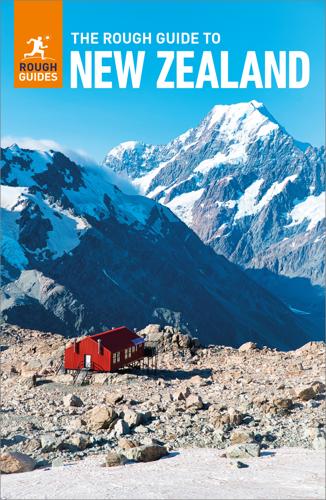
The Rough Guide to New Zealand: Travel Guide eBook
by
Rough Guides
Published 1 Jan 2024
Ardern’s leadership of New Zealand was thrust into the spotlight after the outbreak of the Covid-19 pandemic in 2020. She led the country in a highly pro-active response to the virus, implementing the toughest border controls of any country in the world and effectively cutting New Zealand off from international visitors for three years. These measures were highly effective in containing the virus and allowed New Zealanders to avoid the harsh lockdowns of many countries while also performing among the best in the world in terms of mortality rates. Ardern’s groundbreaking premiership (in addition to her leadership during the Covid-19 pandemic, she was only the second elected head of state to give birth while in office) came to an end in January 2023, when she resigned as Labour leader and Prime Minister, citing fatigue and a desire to spend more time with her family.
…
Average monthly temperatures and rainfall Jan Feb Mar Apr May Jun July Aug Sep Oct Nov Dec Auckland max/min (ºC) 23/16 23/16 22/15 19/13 17/11 14/9 13/8 14/8 16/9 17/11 19/12 21/14 max/min (ºF) 73/61 73/61 72/59 66/55 63/52 57/48 55/46 57/46 61/48 63/52 66/54 70/57 rainfall (mm) 79 94 81 97 112 137 145 117 102 102 89 79 Wellington max/min (ºC) 21/13 21/13 19/12 17/11 14/8 13/7 12/6 12/6 14/8 16/9 17/10 19/12 max/min (ºF) 70/55 70/55 66/54 63/52 57/46 55/45 54/43 54/43 57/46 61/48 63/50 66/54 rainfall (mm) 81 81 81 97 117 117 137 117 97 102 89 89 Christchurch max/min (ºC) 21/12 21/12 19/10 17/7 13/4 11/2 10/2 11/2 14/4 17/7 19/8 21/11 max/min (ºF) 70/54 70/54 66/50 63/45 55/39 52/36 50/36 52/36 57/39 63/45 66/46 70/52 rainfall (mm) 56 43 48 48 66 66 69 48 46 43 48 56 Hokitika max/min (ºC) 19/12 19/12 18/11 16/8 14/6 12/3 12/3 12/3 13/6 15/8 16/9 18/11 max/min (ºF) 66/54 66/54 64/52 61/46 57/43 54/37 54/37 54/37 55/43 59/46 61/48 64/52 rainfall (mm) 262 191 239 236 244 231 218 239 226 292 267 262 Queenstown max/min (ºC) 21/10 21/10 20/9 15/7 11/3 9/1 9/0 11/1 14/3 18/5 19/7 20/10 max/min (ºF) 70/50 70/50 68/48 59/45 52/37 48/34 48/32 52/34 57/37 64/41 66/45 68/50 rainfall (mm) 79 72 74 72 64 58 59 63 66 77 64 62 Costs The strong Kiwi dollar and lingering effects of the global financial crisis and Covid-19 pandemic mean that New Zealand is no bargain, but with high standards of quality and service, the country is still decent value for money. Daily costs vary enormously, and the following estimates (in NZ dollars) are per person for two people travelling together. (With the prevalence of good hostels, single travellers can live almost as cheaply as couples, though you’ll pay around thirty percent more if you want a room to yourself.)
…
Sit in the partly recycled building on the original site or out in the courtyard for great counter food – broccoli and blue cheese tart, spanakopita and chicken and mushroom pie – or lunches like a corn-fritter stack with bacon. $$ Drinking and nightlife See map page 397 Despite a quick rebound after the quake, Christchurch nightlife hit hard times in 2017 and again with the Covid-19 pandemic, with several bars and live venues closing; as well as the slow rebuild, contributing factors include higher rents in new buildings, ongoing roadworks in the centre and tougher drink-driving laws. Check the following spots are still open before heading out. Christchurch Craft brewers Beer aficionados should visit local craft brewers such as Two Thumb (352 Manchester St; www.twothumb.com; Wed & Fri 3–6pm), Three Boys Brewery (592 Ferry Rd, Woolston; www.threeboysbrewery.co.nz; Mon–Wed 8am–4.30pm, Thurs & Fri 8am–6pm, Sat 11am–4.30pm) and Lighthouse (18 Bath St; www.facebook.com/lighthousebrewingcompany; Mon–Fri 11am–6pm, Sat noon–5pm), which sell and bottle their fresh ales on site, and offer tastings (the latter is more of a bar).

How I Invest My Money: Finance Experts Reveal How They Save, Spend, and Invest
by
Brian Portnoy
and
Joshua Brown
Published 17 Nov 2020
Absolute return: Generates uncorrelated returns less dependent on the direction of equity and fixed income markets. Equities: Offers long-term capital appreciation. Real assets: Hedges against unexpected inflation and produces long-term total return. Sounds simple, but present-day investors continue to dissect far-reaching policy implications of COVID-19 government actions in 2020, which include fiscal policy and global monetary policy adding yet another round of stimulus to markets in an effort to rescue the US economy. Asset allocators are faced with recalibrating allocation models to incorporate increased volatility, uncertainty, complexity, and ambiguity.
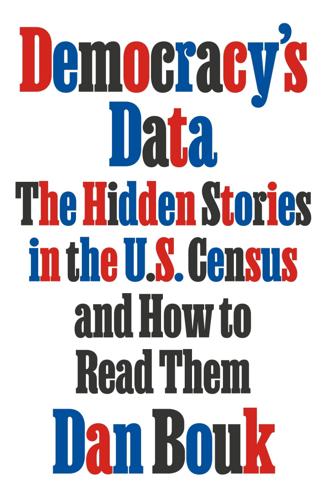
Democracy's Data: The Hidden Stories in the U.S. Census and How to Read Them
by
Dan Bouk
Published 22 Aug 2022
After the citizenship question controversy, the Trump administration had kept up its efforts to generate data about citizenship status—a series of efforts that failed to produce any usable data but probably succeeded in dissuading many people from cooperating with any shape or size of census taker. And in early March, as the first round of census self-response invitations went out in the mail, the COVID-19 pandemic had crashed the party. Our family hunkered down in New York City. We sewed our first masks from old dish towels. The Census Bureau paused its operations in the field. People started talking about “delaying” the release of census data, which sounded crazy to me.49 I didn’t realize how serious this crisis was.
…
Cohen, Lizabeth Cohen, Patricia Cline columns; deportations related to; for head of household; for income; for “Indians not taxed”; for migration; for occupation; padding affecting; race indicated in; for relation Combs, George Combs, Henry Communist Manifesto (Marx and Engels) Communists completeness computers concentration camps confidentiality: of census; Census Bureau promising; Congress tightening of; of data; draft and; World War II breaking Congress,7; census authorized by; census confidentiality tightened by; disfranchisement data presented to; see also House of Representatives congressional districts Congress of Industrial Organizations (CIO) Conner, Eugene E. Constitution cooperation: census requiring; with enumerators; officials needing; wage reporting “Counting for Dollars 2020” (report) COVID-19 pandemic Craig, David R. Curtis, Cathrine data: for African American genealogies; algorithms trained by; Big; British colonial; in census; in China; computers impacting; confidentiality of; in controversy; democracy linked to; on disfranchisement; Douglass, F., in; Dublin, L., and; enumerators influencing; errors in; fear of; frame of; fraud deterred by; genealogies and histories of; House of Representatives divided by; of individuals; of Japanese Americans; machines reading; names in; as numbers; objectivity of; partners in; poem reframing; politics shaping; Question Men and; race in; reform directed by; representation shaped by; of sampling; silences in; small-area; in South Africa; stories in; as text; for training enumerators; World War II weaponization of Davis, Lillian Rita Dearborn, Mina H.

More Everything Forever: AI Overlords, Space Empires, and Silicon Valley's Crusade to Control the Fate of Humanity
by
Adam Becker
Published 14 Jun 2025
This is the real appeal behind the modern idea of the Singularity: the seductive promise of all questions, needs, and desires fitted to the single Procrustean solution of code and compute. * * * In the first few weeks of 2020, I came across a disturbing graph depicting what was, unquestionably, exponential growth. The graph was attached to a tweet, part of a thread I’d stumbled upon about the new coronavirus, COVID-19. Case rates in the United States were still quite low at the time, with only a handful of cases reported. But this tweet pointed out, although there weren’t many cases yet, that was poised to change, fast: left unchecked, cases in the United States would grow to the hundreds of thousands by the end of March.
…
These dreams of space, earnestly held in spite of all the evidence against them, allow these billionaires to avoid responsibility for any problems here on Earth and instead claim that nothing could be more important than what they want to do. No real crisis can get in the way of the imagined mission. During the height of the COVID-19 pandemic, Musk pushed Tesla to violate shelter-in-place orders, and Bezos’s Blue Origin pressured workers in Washington State to travel to rural Texas to test launch a rocket for space tourists.92 “There will be no Mars if we let them take our freedom away,” Musk tweeted in May 2020, regarding pandemic precautions.93 Here Musk is identifying his plans with Mars itself.
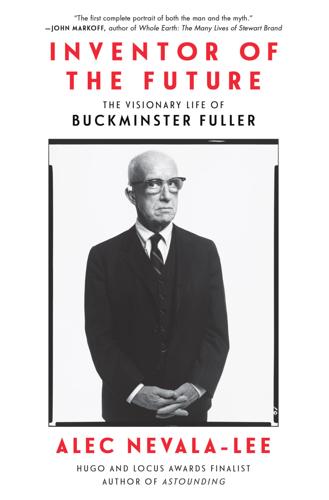
Inventor of the Future: The Visionary Life of Buckminster Fuller
by
Alec Nevala-Lee
Published 1 Aug 2022
Millennials ephemeralized against their will, with rent replacing ownership and housing costs contributing to a fall in mobility. As Airbnb caused prices in its neighborhoods to rise, its single most popular property was a geodesic cabin in California. The greatest test of Fuller’s philosophy was the coronavirus pandemic, which initially seemed like a definitive moment of emergence through emergency. Fuller blamed his daughter’s death, which changed his life, on the conditions that contributed to the Spanish flu, and his views on decentralization, efficient manufacturing, online education, and remote working are more relevant now than ever.
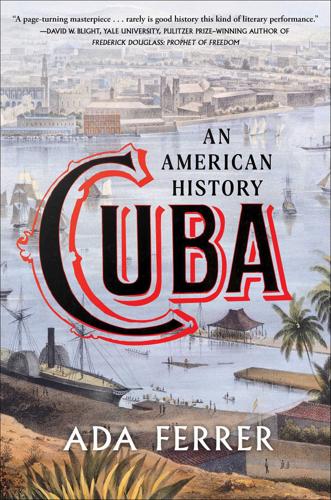
Cuba: An American History
by
Ada Ferrer
Published 6 Sep 2021
The San Isidro Movement—a growing collective that includes many young Afro-Cuban artists and writers—was targeted by the new policies, and its members recorded and broadcast their own harassment and arrests over social media. Meanwhile, international human rights organizations documented an increase in arbitrary detentions. Even as the government sent doctors around the world to help other countries handle the Covid-19 crisis and as it organized a robust public health response on the island, it also used the pandemic to increase surveillance and to suppress protests, including one in June 2020 against police violence.20 * * * WHILE THE DEATH OF FIDEL Castro did not seem to change much in Cuba, the election of Donald Trump and the ensuing change in US Cuba policy had a substantial impact.
…
People woke up at 5 a.m. to get in line for chicken; bread prices increased by 20 percent; electricity rates tripled. Everywhere people began to talk about another Special Period, like the one that had followed the fall of the Soviet Union. The new crisis, said some, was even worse than that. It was not all Trump’s doing—there was the Covid-19 pandemic and a long history of low domestic productivity and inefficient central planning. After delaying for a long time, the government embarked on a policy to eliminate its long-standing dual currency system and unify the currency, a very painful process felt more acutely by people without access to hard currency, a group that grew in size during the Trump presidency.
…
W., 441 Bush, George W., 455–56 Cabot, John, 12 Caffery, Jefferson, 246 Calhoun, John C., 86, 87, 112 Camagüey (province), 130, 134, 149, 188–89, 242, 245, 330 Camp Columbia, 237, 270, 318–19 Capablanca, José Raúl, 223 Cárdenas, Matanzas, 94, 102, 113, 123 Caridad del Cobre (Virgin of Charity), 34–39 cobrero community and cult of, 35–38, 74 cultural symbolism of, 2, 38–39, 129, 164, 208, 215, 413 story behind discovery of, 34–35, 39 Carter, Jimmy, 408, 412, 448, 449 Castellanos, Rosa, 131 Castro, Alejandro, 456 Castro, Fidel agrarian reform and, 328–31 Angolan alliance and, 426–29, 430–31 anti-American stand of, 322–23, 342–44, 347, 365 background of, 277–78 Batista’s military campaign against, 297–98, 311 Bay of Pigs invasion and, 356, 359, 361, 362 concerns about imminent US attack and, 375–76, 451 concerns about influence of communism on, 331–32, 336–37 consolidation of power in new government of, 320 Cuban exiles’ dialogue with, 409, 413 death of, 462–63 early revolutionary laws and, 323–25 foreign coverage of guerrilla struggle and, 300–305 fund raising by, 294–95 guerrilla warfare strategy of, 298, 299–300, 306, 307–8, 309–10 Guevara and, 291 Havana arrival of in 1959, 315, 316, 318–19 “History Will Absolve Me” speech of, 281–82, 339, 421 illness of, 453 Kennedy’s promise not to invade Cuba and, 381 La Plata victory of, 299–300 manifestos of, 278, 294, 337 Martí invoked by, 278, 281, 286–87, 304 Marxism and, 285–86 Mexican exile of, 294–96 Miami Pact against Batista and, 309 missile crisis and, 374, 375–76, 377–78, 379–80 Moncada barracks attack by, 278–83, 286, 290, 421 naming of 26th of July movement by, 294 nationalization of US property by, 347–49 Nixon’s meeting and report on, 327–28 Obama’s policy and, 431, 455, 462, 463 organizational alliances within Cuba and, 295 popular support for, at 1959 Moncada celebration, 332–33 prime minister position of, 323, 331, 332–33 propaganda used by, 300–302 public opinion used by, 279–80 purging of Batista officials by, 320–22 reading on revolution by, 283–85 Rectification campaign and, 436 return from Mexico and Cuban landing of, 296–98 revolutionary movements in other countries and, 421–23, 424 Sierra Maestra Manifesto of, 307–8, 309 Soviet withdrawal of troops from Cuba and, 437–38 Trump’s election and, 463 US monitoring of new government of, 325–26 US visit by, 325–28 Castro, Raúl, 347 Angolan alliance and, 426 Fidel’s illness and interim presidency of, 453–54 foreign investment and, 443 military actions of, 297, 310, 316 missile crisis and, 370–71 Moncada barracks attack by, 278–79, 282 Obama’s Cuba policy and, 457–58 Obama’s meeting with, 431 presidency of, 454–55, 463 reforms under, 463 Soviet visit of, 370–71 Trump’s election and, 463 US-Cuba relationship and, 454, 457–58 Cazneau, Jane McManus, 112 Céspedes, Carlos Manuel de (father), 129, 130–32, 133, 281 Céspedes, Carlos Manuel de (son), 236, 238, 239 Chaparra Sugar Company, 188–90, 204, 210, 214, 240, 242, 244 Charleston (city), 60, 74, 108, 119 Chávez, Hugo, 448 Chibás, Eduardo, 252, 265–70, 271, 277 Chibás, Raúl, 307, 309 children and Cuban Revolution, 387–89 China contract workers from, 124–25, 133, 134 trade with Cuba and, 465 Chinese Cubans, migration of, 406 Christianity, and Spain’s colonization of Cuba, 13, 15, 16–17, 18–19, 20 Christophe, Henri, 75, 468 Churchill, Winston, 147, 389 CIA Bay of Pigs invasion and, 356–57, 358–61, 362, 363–64 Cuban exiles working for, 404–5 Eisenhower’s Cuba policy and, 345–46 Cienfuegos, Camilo, 292, 316 Civil War (US), 119–25, 154, 157, 159 Cleaver, Eldridge, 394 Clinton, Bill, 417, 441, 447, 450 Clinton, Hillary, 462, 463 Cocking, Francis Ross, 99–100 Cold War, 5–6, 335–36, 337, 349, 407, 451, 459 coletillas, 339–40 Columbus, Christopher, 7, 9–15, 16, 29, 224, 353 celebrations of discovery myth of, 10–11 Cuba landings by, 9, 11, 13–14, 15 first permanent settlement by, 14 Spanish backing for, 9–10, 13, 14–15 US origin stories and, 11–13 Committees for the Defense of the Revolution (CDRs), 348, 366, 389, 414, 448 communism Castro and, 285–87, 303, 325, 335–37, 367, 438 concerns about influence on 1959 revolution of, 331–32, 336–37 concerns about influence on 1933 revolution of, 241, 246 Communist Party Batista’s legalization of, 250 Castro’s presidency of, 454 founding of, 227 Mella’s shooting and, 228 1940 constitutional convention and, 251–52, 254–55 26th of July Movement and, 311 Concilio Cubano, 448–49, 450 Confederacy (Civil War), 119–25 Conservative Party, 197, 198, 201, 210 Constitution (1869), 132, 257 Constitution (1901) Grau’s desire for rewriting of, 238, 244 Platt Amendment and, 179–80, 187, 192, 238, 251 US occupation and, 176–80 Constitution (1940) anti-discrimination amendment debates in, 254–57 Batista and, 251, 468 convention for drafting of, 251–57 rights under sections of, 257–58 Constitution (1976) foreign investment under, 443 petition for political and economic reforms under, 449 socialism affirmed in, 408–9, 449, 463 Constitution (2019), 463 Constitutional Army, 202 Continental Congress, 57, 59, 60–61 conuco system, 17–18, 70 Coolidge, Calvin, 224–26, 228, 240 copper mining, 33–39 Cortés, Hernán, 21, 24 Cortina, Manuel, 252 Cosme Osorio, Gregorio, 37–38 Coubre ship explosion, 342–43, 344 Council for Mutual Economic Assistance (COMECON), 399, 436 Covid-19 crisis, 464, 465 Crittenden, William, 113–14 Crowder, Enoch, 219, 226 Cruz, Celia, 332 Cuba American Revolution and, 3, 59, 60, 61–62, 63, 64, 164, 165 annexationism and, 3–4, 82–87, 90–91, 100, 105, 112–13, 115–16, 123 Bay of Pigs invasion and, 354–68, 398 Columbus and, 9, 11, 13–14, 15 conquest and colonization of by Spain, 13–14, 16–17, 18–21, 28–29 cultural production in, 98, 195–96, 264–65 Eisenhower’s breaking of diplomatic relations with, 349 foreign policy of after 1959, 338, 421–31, 443, 449, 465 geography of, 13–14, 15, 24, 82, 84, 133 Haitian Revolution’s impact on, 72–73 independence celebrations in, 185–86 Indigenous people in, 14, 16–22 missile crisis and, 369–82, 398 Monroe Doctrine’s protection of US stake in, 94–95 Soviet relations with 338–39, 381, 399, 424, 436–38 suppression of dissident groups in, 448–49, 450, 454, 464 trade between United States and before 1959, 85–86, 91–93, 186, 191–92 US economic embargo against, 379, 382, 441, 450, 458, 460, 461, 465 US interventions in, 153, 163–64, 204, 210, 219 US military occupations of, 168–81, 185, 204–5 Cuba Land, Loan and Title Guarantee Company, 187 Cuban Adjustment Act (1966; US), 407 Cuban American National Foundation, 418, 441 Cuban Americans.
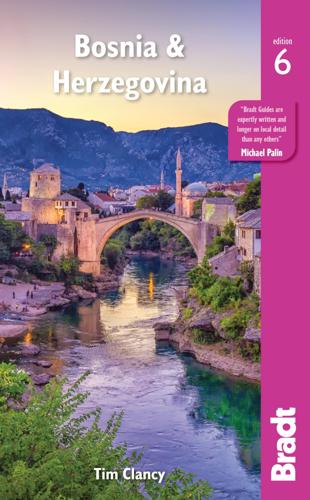
Bosnia and Herzegovina
by
Tim. Clancy
Published 15 Mar 2022
I’ve found that since writing the first edition in 2004 the number of tourism service providers has increased tenfold, with many welcome additions in terms of accommodation, tourist information and a plethora of activities for visitors, from rafting centres and upgraded skiing facilities to new hotels and traditional restaurants. Revisiting Bosnia & Herzegovina is always a challenge but a rewarding one indeed. It is an honour and a privilege to express my knowledge of – and passion for – the country and its people with the freedom many other writers can only dream of. COVID-19 Please note that work on this book was completed during the Covid-19 pandemic. Because of the impact of the crisis on tourism, some businesses or services listed in the text may no longer operate. We will post any information we have about these on w bradtguides.com/updates. And we’d of course be grateful for any updates you can send us during your own travels, which we will add to that page for the benefit of future travellers.
…
PRICE CODES Throughout this guide we have used price codes to indicate the cost of those places to stay and eat listed in the guide. For a key to these price codes, see Click here for accommodation and Click here for restaurants. CLOSURES Since this guide was updated for the new edition, some companies may have ceased to operate owing to the impact of Covid-19. Those venues where the author has received confirmed reports of closure are indicated with a . MAPS Keys and symbols Maps include alphabetical keys covering the locations of those places to stay, eat or drink that are featured in the book. Note that regional maps may not show all hotels and restaurants in the area: other establishments may be located in towns shown on the map.

Science Fictions: How Fraud, Bias, Negligence, and Hype Undermine the Search for Truth
by
Stuart Ritchie
Published 20 Jul 2020
Since a preprint can be posted online without any oversight, we should certainly be extra sceptical about them, while scientists should have the intellectual humility not to publicise their work before it’s been at least looked over by their peers.86 As the scientific ecosystem changes, journalists will become more aware that there are different ‘stages’ of scientific publication and that they should be particularly cautious of papers that are still at the earlier ones. Soon after the start of the coronavirus (COVID-19) pandemic in early 2020, preprints appeared on a major biological preprint server that sparked widespread discussion about the origins and effects of the virus. Some of the papers were of obviously low quality, rushed out to capitalise on the media frenzy about the pandemic. Others included phrasing that, whether inadvertently or otherwise, seemed to stoke conspiracy theories about the virus having been designed deliberately as a biological weapon.
…
ABC News abortion Abu Ghraib prison abuse (2003) accidental discoveries Acta Crystallographica Section E acupuncture Afghan hounds Agence France-Presse AIDS (acquired immune deficiency syndrome) Alchemist, The (Bega) Alexander, Benita Alexander, Scott algorithms allergies Alzheimer, Aloysius Alzheimer’s Disease Amazon American Journal of Potato Research Amgen amygdala amyloid cascade hypothesis anaesthesia awareness Fujii affair (2012) outcome switching Anaesthesia & Analgesia animal studies antidepressants antipsychotics archaeology Arnold, Frances arsenic artificial tracheas asthma austerity Australia Austria autism aviation Babbage, Charles Bacon, Francis bacteria Bargh, John Bayer Bayes, Thomas Bayesian statistics BDNF gene Before You Know It (Bargh) Bega, Cornelis Begley, Sharon Belgium Bell Labs Bem, Daryl benzodiazepines bias blinding and conflict of interest De Vries’ study (2018) funding and groupthink and meaning well bias Morton’s skull studies p-hacking politics and publication bias randomisation and sexism and Bik, Elisabeth Bill & Melinda Gates Foundation Biomaterials biology amyloid cascade hypothesis Bik’s fake images study (2016) Boldt affair (2010) cell lines China, misconduct in Hwang affair (2005–6) Macchiarini affair (2015–16) meta-scientific research microbiome studies Morton’s skull studies Obokata affair (2014) outcome switching preprints publication bias replication crisis Reuben affair (2009) spin and statistical power and Summerlin affair (1974) Wakefield affair (1998–2010) biomedical papers bird flu bispectral index monitor black holes Black Lives Matter blinding blotting BMJ, The Boldt, Joachim books Borges, Jorge Luis Boulez, Pierre Boyle, Robert brain imaging Brass Eye vii British Medical Journal Brock, Jon bronchoscopy Broockman, David Brown, Nick Bush, George Walker business studies BuzzFeed News California Walnut Commission California wildfires (2017) Canada cancer cell lines collaborative projects faecal transplants food and publication bias and replication crisis and sleep and spin and candidate genes carbon-based transistors Cardiff University cardiovascular disease Carlisle, John Carlsmith, James Carney, Dana cash-for-publication schemes cataracts Cell cell lines Cell Transplantation Center for Open Science CERN (Conseil Européen pour la Recherche Nucléaire) chi-squared tests childbirth China cash-for-publication schemes cell line mix-ups in Great Famine (1959–1961) misconduct cases in randomisation fraud in chrysalis effect Churchill, Winston churnalism Cifu, Adam citations clickbait climate change cloning Clostridium difficile cochlear implants Cochrane Collaboration coercive citation coffee cognitive dissonance cognitive psychology cognitive tests coin flipping Colbert Report, The Cold War collaborative projects colonic irrigation communality COMPare Trials COMT gene confidence interval conflict of interest Conservative Party conspicuous consumption Cooperative Campaign Analysis Project (CCAP) ‘Coping with Chaos’ (Stapel) Cornell University coronavirus (COVID-19) Corps of Engineers correlation versus causation corticosteroids Cotton, Charles Caleb creationism Crowe, Russell Csiszar, Alex Cuddy, Amy CV (curriculum vitae) cyber-bullying cystic fibrosis Daily Mail Daily Telegraph Darwin Memorial, The’ (Huxley) Darwin, Charles Das, Dipak datasets fraudulent Observational publication bias Davies, Phil Dawkins, Richard De Niro, Robert De Vries, Ymkje Anna debt-to-GDP ratio Deer, Brian democratic peace theory Denmark Department of Agriculture, US depression desk rejections Deutsche Bank disabilities discontinuous mind disinterestedness DNA (deoxyribonucleic acid) domestication syndrome doveryai, no proveryai Duarte, José Duke University duloxetine Dutch Golden Age Dutch Organisation for Scientific Research Dweck, Carol economics austerity preprints statistical power and effect size Einstein, Albert Elmo Elsevier engineering epigenetics euthanasia evolutionary biology exaggeration exercise Experiment, The exploratory analyses extrasensory perception faecal transplants false-positive errors Fanelli, Daniele Festinger, Leon file-drawer problem financial crisis (2007–8) Fine, Cordelia Fisher, Ronald 5 sigma evidence 5-HT2a gene 5-HTTLPR gene fixed mindset Food and Drug Administration (FDA) Food Frequency Questionnaires food psychology Formosus, Pope foxes France Francis, Pope Franco, Annie fraud images investigation of motives for numbers Open Science and peer review randomisation Freedom of Information Acts French, Chris Fryer, Roland Fujii, Yoshitaka funding bias and fraud and hype and long-term funding perverse incentive and replication crisis and statistical power and taxpayer money funnel plots Future of Science, The (Nielsen) gay marriage Gelman, Andrew genetically modified crops genetics autocorrect errors candidate genes collaborative projects gene therapy genome-wide association studies (GWASs) hype in salami-slicing in Geneva, Switzerland geoscience Germany Getty Center GFAJ-1 Giner-Sorolla, Roger Glasgow Effect Goldacre, Ben Goldsmiths, University of London Golgi Apparatus good bacteria Good Morning America good scientific citizenship Goodhart’s Law Goodstein, David Google Scholar Górecki, Henryk Gould, Stephen Jay Gran Sasso, Italy grants, see funding Granularity-Related Inconsistency of Means (GRIM) grapes Great Recession (2007–9) Great Red Spot of Jupiter Green, Donald Gross Domestic Product (GDP) Gross, Charles ground-breaking results groupthink ‘Growth in a Time of Debt’ (Reinhart and Rogoff) growth mindset Guzey, Alexey gynaecology h-index H5N1 Haldane, John Burdon Sanderson Hankins, Matthew HARKing Harris, Sidney Harvard University headache pills heart attacks heart disease Heathers, James height Heilongjiang University Heino, Matti Henry IV (Shakespeare) Higgs Boson Hirsch, Jorge HIV (human immunodeficiency viruses) homosexuality Hong Kong Hooke, Robert Hossenfelder, Sabine Houston, Texas Hume, David Huxley, Thomas Henry Hwang, Woo-Suk hydroxyethyl starch hype arsenic life affair (2010) books correlation versus causation cross-species leap language and microbiome studies news stories nutrition and press releases spin unwarranted advice hypotheses Ig Nobel Prize images, fraudulent impact factor India insomnia International Journal of Advanced Computer Technology Ioannidis, John IQ tests Iraq War (2003–11) Italy Japan John, Elton Journal of Cognitive Education and Psychology Journal of Environmental Quality Journal of Negative Results in Biomedicine Journal of Personality and Social Psychology journals conflict of interest disclosure fraud and hype and impact factor language in mega-journals negligence and Open Science and peer review, see peer review predatory journals preprints publication bias rent-seeking replication studies retraction salami slicing subscription fees Jupiter Kahneman, Daniel Kalla, Joshua Karolinska Institute Krasnodar, Russia Krugman, Paul Lacon, or Many Things in Few Words (Cotton) LaCour, Michael Lancet Fine’s ‘feminist science’ article (2018) Macchiarini affair (2015–16) Wakefield affair (1998–2010) language Large Hadron Collider Le Texier, Thibault Lewis, Jason Lexington Herald-Leader Leyser, Ottoline Lilienfeld, Scott Loken, Eric Lost in Math (Hossenfelder) low-fat diet low-powered studies Lumley, Thomas Lysenko, Trofim Macbeth (Shakespeare) Macbeth effect Macchiarini, Paolo MacDonald, Norman machine learning Macleod, Malcolm Macroeconomics major depressive disorder Malaysia Mao Zedong MARCH1 Marcus, Adam marine biology Markowetz, Florian Matthew Effect Maxims and Moral Reflections (MacDonald) McCartney, Gerry McCloskey, Deirdre McElreath, Richard meaning well bias Measles, Mumps & Rubella (MMR) measurement errors Medawar, Peter medical research amyloid cascade hypothesis Boldt affair (2010) cell lines China, misconduct in collaborative projects Fujii affair (2012) Hwang affair (2005–6) Macchiarini affair (2015–16) meta-scientific research Obokata affair (2014) outcome switching pharmaceutical companies preprints pre-registration publication bias replication crisis Reuben affair (2009) spin and statistical power and Summerlin affair (1974) Wakefield affair (1998–2010) medical reversal Medical Science Monitor Mediterranean Diet Merton, Robert Mertonian Norms communality disinterestedness organised scepticism universalism meta-science Boldt affair (2010) chrysalis effect De Vries’ study (2018) Fanelli’s study (2010) Ioannidis’ article (2005) Macleod’s studies mindset studies (2018) saturated fats studies spin and stereotype threat studies mice microbiome Microsoft Excel Milgram, Stanley Mill, John Stuart Mindset (Dweck) mindset concept Mismeasure of Man, The (Gould) Modi, Narendra money priming Mono Lake, California Moon, Hyung-In Morton, Samuel Motyl, Matt multiverse analysis nanotechnology National Academy of Sciences National Aeronautics and Space Administration (NASA) National Institutes of Health National Science Foundation Nature cash-for-publication and cell line editorial (1981) impact factor language in Obokata affair (2014) Open Access and open letter on statistical significance (2019) replication research Schön affair (2002) Stapel affair (2011) Nature Neuroscience Nature Reviews Cancer NBC negligence cell line mix-ups numerical errors statistical power typos Netflix Netherlands replication studies in Stapel’s racism studies statcheck research neuroscience amyloid cascade hypothesis collaborative projects Macleod’s animal research studies replication crisis sexism and statistical significance and Walker’s sleep studies neutrinos New England Journal of Medicine New York Times New Zealand news media Newton, Isaac Nielsen, Michael Nimoy, Leonard No Country for Old Men Nobel Prize northern blots Nosek, Brian Novella, Steven novelty Novum Organum (Bacon) Nuijten, Michèle nullius in verba, numerical errors nutrition Obama, Barack obesity Obokata, Haruko observational datasets obstetrics ocean acidification oesophagus ‘Of Essay-Writing’ (Hume) Office for Research Integrity, US Oldenburg, Henry Open Access Open Science OPERA experiment (2011) Oransky, Ivan Orben, Amy Organic Syntheses organised scepticism Osborne, George outcome-switching overfitting Oxford University p-value/hacking alternatives to Fine and low-powered studies and microbiome studies and nutritional studies and Open Science and outcome-switching perverse incentive and pre-registration and screen time studies and spin and statcheck and papers abstracts citations growth rates h-index introductions method sections results sections salami slicing self-plagiarism university ranks and Parkinson’s disease particle-accelerator experiments peanut allergies peer review coercive citation fraudulent groupthink and LaCour affair (2014–15) Preprints productivity incentives and randomisation and toxoplasma gondii scandal (1961) volunteer Wakefield affair (1998–2010) penicillin Peoria, Illinois Perspectives in Psychological Science perverse incentive cash for publications competition CVs and evolutionary analogy funding impact factor predatory journals salami slicing self-plagiarism Pett, Joel pharmaceutical companies PhDs Philosophical Transactions phlogiston phosphorus Photoshop Physical Review physics placebos plagiarism Plan S Planck, Max plane crashes PLOS ONE pluripotency Poehlman, Eric politics polygenes polyunsaturated fatty acids Popper, Karl populism pornography positive feedback loops positive versus null results, see publication bias post-traumatic stress disorder (PTSD) power posing Prasad, Vinay pre-registration preclinical studies predatory journals preprints Presence (Cuddy) press releases Prevención con Dieta Mediterránea (PREDIMED) priming Princeton University Private Eye probiotics Proceedings of the National Academy of Sciences prosthetic limbs Przybylski, Andrew psychic precognition Psychological Medicine psychology Bargh’s priming study (1996) Bem’s precognition studies books Carney and Cuddy’s power posing studies collaborative projects data sharing study (2006) Dweck’s mindset concept Festinger and Carlsmith’s cognitive dissonance studies Kahneman’s priming studies LaCour’s gay marriage experiment politics and preprints publication bias in Shanks’ priming studies Stanford Prison Experiment Stapel’s racism studies statistical power and Wansink’s food studies publication bias publish or perish Pubpeer Pythagoras’s theorem Qatar quantum entanglement racism Bargh’s priming studies Morton’s skull studies Stapel’s environmental studies randomisation Randy Schekman Reagan, Ronald recommendation algorithms red grapes Redfield, Rosemary Reflections on the Decline of Science in England (Babbage) Reinhart, Carmen Rennie, Drummond rent-seeking replication; replication crisis Bargh’s priming study Bem’s precognition studies biology and Carney and Cuddy’s power posing studies chemistry and economics and engineering and geoscience and journals and Kahneman’s priming studies marine biology and medical research and neuroscience and physics and Schön’s carbon-based transistor Stanford Prison Experiment Stapel’s racism studies Wolfe-Simon’s arsenic life study reproducibility Republican Party research grants research parasites resveratrol retraction Arnold Boldt Fujii LaCour Macchiarini Moon Obokata Reuben Schön Stapel Wakefield Wansink Retraction Watch Reuben, Scott Reuters RIKEN Rogoff, Kenneth romantic priming Royal Society Rundgren, Todd Russia doveryai, no proveryai foxes, domestication of Macchiarini affair (2015–16) plagiarism in salami slicing same-sex marriage sample size sampling errors Sanna, Lawrence Sasai, Yoshiki saturated fats Saturn Saudi Arabia schizophrenia Schoenfeld, Jonathan Schön, Jan Hendrik School Psychology International Schopenhauer, Arthur Science acceptance rate Arnold affair (2020) arsenic life affair (2010) cash-for-publication and Hwang affair (2005) impact factor LaCour affair (2014–15) language in Macbeth effect study (2006) Open Access and pre-registration investigation (2020) replication research Schön affair (2002) Stapel affair (2011) toxoplasma gondii scandal (1961) Science Europe Science Media Centre scientific journals, see journals scientific papers, see papers Scientific World Journal, The Scotland Scottish Socialist Party screen time self-citation self-correction self-plagiarism self-sustaining systems Seoul National University SEPT2 Sesame Street sexism sexual selection Shakespeare, William Shanks, David Shansky, Rebecca Simmons, Joseph Simonsohn, Uri Simpsons, The skin grafts Slate Star Codex Sloan-Kettering Cancer Institute Smaldino, Paul Smeesters, Dirk Smith, Richard Snuppy social media South Korea Southern blot Southern, Edwin Soviet Union space science special relativity specification-curve analysis speed-accuracy trade-off Spies, Jeffrey spin Springer Srivastava, Sanjay Stalin, Joseph Stanford University Dweck’s mindset concept file-drawer project (2014) Prison Experiment (1971) Schön affair (2002) STAP (Stimulus-Triggered Acquisition of Pluripotency) Stapel, Diederik statcheck statistical flukes statistical power statistical significance statistical tests Status Quo stem cells Stephen VI, Pope stereotype threat Sternberg, Robert strokes subscription fees Summerlin, William Sweden Swift, Jonathan Swiss Federal Institute of Technology Sydney Morning Herald Symphony of Sorrowful Songs (Górecki) t-tests Taiwan taps-aff.co.uk tax policies team science TED (Technology, Entertainment, and Design) Texas sharpshooter analogy Thatcher, Margaret theory of special relativity Thinking, Fast and Slow (Kahneman) Thomson Reuters Tilburg University Titan totalitarianism toxoplasma gondii trachea translational research transparency Tribeca Film Festival triplepay system Trump, Donald trust in science ‘trust, but verify’ Tumor Biology Turkey Tuulik, Julia Twitter typos UK Reproducibility Network Ulysses pact United Kingdom austerity cash-for-publication schemes image duplication in multiverse analysis study (2019) National Institute for Health Research pre-registration in Royal Society submarines trust in science university ranks in Wakefield affair (1998–2010) United States Arnold affair (2020) arsenic life affair (2010) austerity Bargh’s priming study (1996) Bem’s precognition studies California wildfires (2017) Carney and Cuddy’s power posing studies Center for Nutrition Policy and Promotion climate science in creationism in Das affair (2012) De Vries’ drug study (2018) Department of Agriculture Dweck’s mindset concept Fryer’s police brutality study (2016) image duplication in Kahneman’s priming studies LaCour affair (2014–15) Morton’s skull studies Office for Research Integrity Poehlman affair (2006) pre-registration in public domain laws Reuben affair (2009) Stanford Prison Experiment Summerlin affair (1974) tenure Walker’s sleep studies Wansink affair (2016) universalism universities cash-for-publication schemes fraud and subscription fees and team science University College London University of British Columbia University of California Berkeley Los Angeles University of Connecticut University of East Anglia University of Edinburgh University of Hertfordshire University of London University of Pennsylvania unsaturated fats unwarranted advice vaccines Vamplew, Peter Vanity Fair Vatican Vaxxed Viagra vibration-of-effects analysis virology Wakefield, Andrew Walker, Matthew Wansink, Brian Washington Post weasel wording Weisberg, Michael Wellcome Trust western blots Westfall, Jake ‘Why Most Published Research Findings Are False’ (Ioannidis) Why We Sleep (Walker) Wiley Wiseman, Richard Wolfe-Simon, Felisa World as Will and Presentation, The (Schopenhauer) World Health Organisation (WHO) Yale University Yarkoni, Tal Yes Men Yezhov, Nikolai Z-tests Ziliak, Stephen Zimbardo, Philip Zola, Émile About the Author Stuart Ritchie is a lecturer in the Social, Genetic and Developmental Psychiatry Centre at King’s College London.
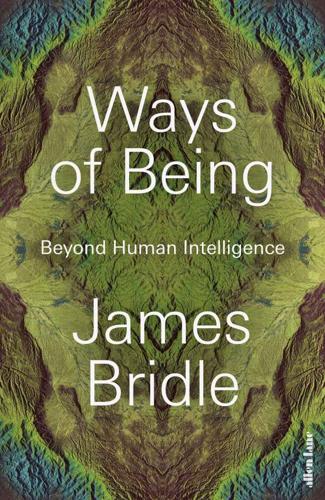
Ways of Being: Beyond Human Intelligence
by
James Bridle
Published 6 Apr 2022
This year, the arrival of the swallows was tinged with tragedy. The birds we encountered on the beach, which seemed so vital and alert, were storm-tossed and exhausted. The preceding days had seen high winds over the Mediterranean and the Aegean, which proved a disaster for the migrating birds – and thousands died. The first summer of Covid-19 was also, in many parts of Europe, a summer without swallows.1 Nonetheless, the swallows’ appearance that April morning had a transformative effect on me, shocking me out of lockdown stasis and giving me a renewed sense of attention and purpose. Having lived in cities all my adult life, I was exposed, for what felt like the first time, to the exuberance of spring: the arrival of the swallows, the blooming of euphorbia and saxifrage, budding anemone and bougainvillea.
…
Ross 181–3, 185 aspens 77 astrobiology 87 atomic bomb 224–5 Augustin, Regynald 156 Australopithecus 88 Author of the Acacia Seeds, The 169–71 automatic machine see Turing machine Autonomous Trap 26–7, 26, 204 autonomous vehicles 23–6, 65, 275 avocados 108 Babbage, Charles 30 baboons 32, 52–55, 64, 74 bacteria 17, 87–8, 104–10, 236–7, 248, 300 badgers 291 Barabási, Albert-László 81 Barad, Karen 84–6, 130, 249 Basilicata 138, 140–43 bears 1, 89–90, 92, 266, 290–91, 293–4 beavers 256 BeeAdHoc (computer programme) 262 beech 125, 142 Beer, Stafford 184–91, 211, 214–15, 230 bees 145, 187, 258–62 Bergson, Henri 279 Berners-Lee, Tim 81 birch 60, 118, 124, 138, 279 Black Language 168 Black Lives Matter 155 Blake, William 16 Blas, Zach 208 Boeing X-37 136 Bonner, John Tyler 238–9 bonobos 37, 50, 98 Boran (people) 146 Bornmuellera tymphaea 309 Boulez, Pierre 229 Boulle, Marcellin 90 Bouvet, Joachim 234 bow-wow theory 148 Brainfuck (programming language) 161–2 Brassica juncea 310 Bruniquel cave 92 buen vivir 268 cacti 64, 235, 294 Cage, John 227–35, 241, 242, 312 Cambridge Analytica 155 cantu a tenòre 148 capuchin monkeys 163 Caputo, Francesco 143 Caputo, Matteo 143 caribou 120 Carrol, Lewis 180 Carson, Rachel 12, 15 Castro, Eduardo Viveiros de 18 caterpillars 65 Cecilia (chimpanzee) 265 cedars 138 cephalopods 47–51 CERN 81 Charlotte (gibbon) 32 Chassenée, Bartholomew 252 Chaucer, Geoffrey 152 Chernobyl 293 Chesapeake Bay Model 202, 203, 204 chestnuts 61, 118 Children of Time 49 chimpanzees 36–37, 50, 55–6, 88, 98, 145 choice machine see oracle machine Christ Stopped at Eboli 140 Christmas Island 293, 295 Chua, Leon O. 194 Chucho (bear) 266 Churchill, Winston 18 Citizens’ Assembly 243–5 Clarke, Arthur C. 158 climate change 5–6, 121–4, 242–5, 282, 301–2 climate modelling 78–9 Cloud (computing) 111–12, 158–9 Cochran, William 285, 297 cockatoos 163 Cockroach Controlled Mobile Robot see Roachbot cockroaches 212, 258 cognitive diversity 246–8 Colossus (computer) 220 ‘Computing Machinery and Intelligence’ 29 Conway’s Game of Life 161 corn 75 Corraro, Rosina 143 cougars 290 Covid-19 114 cows 140, 143, 149, 265, 302 crabs 48, 195–7, 256, 293, 293–5, 293, 307, 312 cuckoos 118 cuttlefish 47, 49 Cybernetic Factory 185, 186, 189–90 Cybernetic Serendipity 231 cybernetics 181–90, 214 Dallol see Danakil Depression Danakil Depression 86–8, 104 Daphnia 188–9, 191, 198 Darwin, Charles 12, 34–6, 72, 89, 127–30, 129, 235, 239 Darwin, Francis 127–30, 129 De Anima 122 de Martino, Ernesto 141–2 de Waal, Frans 39 Debord, Guy 24 decentralization 49, 208–10, 213, 280 DeepMind 8, 275 deer 65, 77, 258, 290–93, 298–9, 299 Delphi 174, 177 demilitarized zone (DMZ) 292 Denisova Cave 96 denisovans 96–8, 100 Denny (denisovan) 97, 100 Descartes, René 16 Descent of Man, The 36 Dimkaroski, Ljubem 90 ding-dong theory 147 Dinkinesh (Australopithecus) 88 distributed computing 209 Divje Babe 90–91, 91 DNA 95–7, 103–7 dodder vine 75 dogs 147–8, 163, 302 spinal dog 184, 212 Dolphin Embassy 165–6, 165 dolphins 37–8, 41–2, 145, 166, 170, 263, 286 Doolittle, Ford 109–10 Duchamp, Marcel 128–31, 129 ducks 256 earthquakes 302–3 Ebonics 168 EDVAC (computer) 223, 230 Eglash, Ron 156 elephants 34, 38–9, 40–44, 41, 64, 250–51, 263–5, 278, 291–2, 296, 312 Elmer (robot tortoise) 180 Elsie (robot tortoise) 180 email apnea 155 Emojicode (programming language) 161, 173 endosymbiosis 108 ENIAC (computer) 225, 230 Epirus 1–5, 308–9, 311 Epstein, Jean 138 ERNIE (computer) 220–22, 221, 222, 226, 236 Euglena 188–91 Euler, Leonhard 81 European Green Belt 292 evolution 12, 54, 67, 71, 96, 102, 146, 164, 235, 241, 247, 311 of computers 222 convergent evolution 42, 51, 231, 262 Darwin’s theories 36, 89, 128, 132, 235, 256 process 107–12 randomness 235–40 tree of evolution 47, 50–51, 96, 100 Explanation of Binary Arithmetic 234 Facebook 154, 275 ethics 277 gender categories 111–12, 208 language applications 167–9, 173 Fensom, Harry 220 finches 132, 235, 239 firs 60, 142, 279 Flowers, Tommy 220 Folding@home 209 Forte, Giovanni 143, 144 fossil fuels 3–6 Franklin, Benjamin 248 Fredkin, Edward 195 Frisch, Karl von 259 fungi 11, 17, 60–63, 78–82, 106–8, 128, 192, 290 Gagliano, Monica 71–5, 127, 303, 319 Gaia (goddess) 174, 190, 215 Gaia theory 190 Gallup, Gordon G., Jr 36, 39 Ganges River 266 gannets 132 Gates, Bill 8, 275 Gaup, Ingor Ántte Áilu 150 Gebru, Timnit 277 geese 164, 170 General Morphology of Organisms 11 ghost populations 88, 98 gibbons 32–4, 33, 38–9, 42, 52, 64, 312 goats 1, 140, 143, 148, 293, 302 Göbekli Tepe 93–4, 93 Godfrey-Smith, Peter 50 Gombe Stream National Park 55 gomphotheres 108 Goodall, Jane 55–6, 263 Google 8, 111, 154, 211, 241, 269, 275 ethics 156, 277 oil and gas applications 5–6 language applications 163, 167, 169 gorillas 44–7, 44, 98 Grant, Peter 236 Grant, Rosemary 236 graph theory 81 Great Chain of Being 123 Greece 1–5, 114, 216 Greenpeace 5 Griffith, Frederick 105 grouse 150 Grumpy (elephant) 40 Guantánamo Bay 296 Gudynas, Eduardo 268 gulls 133, 256 habeas corpus 41, 264–6, 270, 296 Hadza (people) 146 Haeckel, Ernst 11–12, 105, 239–40, 240 Hagenback, Karl 254 Half-Earth Project 305–6 Happy (elephant) 39–41, 41, 263–5, 273, 296 Haudenosaunee see Iroquois Confederacy Hawira, Turama 267 hawks 256 hawthorn 118 Heritage Foundation 277 Herodotus 3 Hertz, Garnet 212–13 Hilbert, David 178 Hiller, Lejaren 230–31, 233 Hofstadter, Douglas 262 Holmes, Rob 203 homeostat, 181–3, 182, 187, 206, 215 honey 143–6 honeyguides 143–6, 164 horizontal gene transfer 105–7 hornbeam 118 Hotbits 222 HPSCHD (composition) 230–32 Hribal, Jason 253–5 Hubble Space Telescope 135 HUGO Gene Nomenclature Committee 154 Humboldt, Alexander von 239 Huxley, Aldous 113, 208 hyenas 257 hyperaccumulators 308–10 I Ching 228–231, 228, 234, 242 IBM 4–5 ICARUS (animal tracking) 284, 300, 302–3 ICHING (computer programme) 230–31 iguanas 296 ILLIAC (computer) 230 IM see instant messaging Inky (octopus) 48 instant messaging 152–3, 172–3 Institute of Contemporary Art 231 International Meridian Conference 116 International Space Station (ISS) 284 internet 80–82 Iroquois Confederacy 248 Island (novel) 113 Israeli Defense Forces 295 jackdaws 163 jaguars 294 jaguarundi cats 294 James Webb Space Telescope 135 jellyfish 180 Jenny (orang-utan) 34–6, 35 joik 149–50, 312 Keyhole (satellite) 136 Khan-Dossos, Navine 140 khoomei 149 Kidder, Tracy 117 King, William 89 King Solomon’s Ring 163 klepsydra 216–17, 217 klerotereion 218–19, 243 Koko (gorilla) 44, 45, 47 Konstantinou, Maria 309 Kowalsczewski, Bruno 91 Kropotkin, Peter 256–7, 279 Kunstforum der Natur 239, 240 Lack, David 132–3, 285 Land Art 203 Landsat 137, 137–9, 139 lapwing 256 laurel 174 Lavarand 222 Le Guin, Ursula 13, 169–71 Leakey, Louis 56 Lederberg, Esther 105 Lederberg, Joshua 105 Legg, Shane 8, 275 lemurs 163 Leptoplax emarginata 309 Levi, Carlo 141 lichens 107, 171 Liebniz, Gottfried 234 Lindauer, Martin 259–60, 284 lions 77, 257 Lord, Rexford 285, 297 Lorenz, Konrad 163–4 Lovelace, Ada 30 Lovelock, James 190 LUCA (last universal common ancestor) 103 Lucy (Australopithecus) see Dinkinesh Lukyanov, Valdimir 199–200, 199 lynx 290 macaques 42–4, 64, 254 machine learning 30, 63 Mandelbrot, Benoit 102 mangroves 138 Mansfield, Lord (William Murray) 264 Margulis, Lyn 108, 110, 112 Marino, Lori 38 Marsham, Robert 118 Marsham record 118–21 Matera 140 Maxine (elephant) 39 Maxwell, Sarah 301 McLuhan, Marshall 18 memristors 124–5 Merleau-Ponty, Maurice 150 Metropolis, Nick 225 mice 187 Michael (gorilla) 45, 47 Microsoft 5, 8, 154 Million Random Digits with 100,000 Normal Deviates, A 226, 226 mimosa 71–4, 127–8, 192, 195, 303 Mimosa pudica see mimosa Ministry for the Future, The 282 mirror test 36–46, 181 Mississippi Basin Model 201–2, 204 Mondrian, Piet 161 MONIAC 205, 205–7 Monte Carlo 225–7, 242 Moore, Michael 135 Morgan-Mar, David 161 moths 180 mouse-eared cress see rock cress Muir, John 11 Müller, Max 146–8 Müller, Urban 161 Museum of the Ancient Agora 216–18 Musk, Elon 8, 158, 275 Mutual Aid: A Factor in Evolution 256 mycorrhiza 60–62, 77–9, 81–2, 194 mynah birds 113 NASA see National Aeronautics and Space Administration Nasser, Ramsey 160–61 National Aeronautics and Space Administration (NASA) 135, 137–9, 284, 286 National Oceanic and Atmospheric Administration (NOAA) 137–8, 286 National Reconnaissance Office (NRO) 135 neanderthals 89–92, 94–8, 100 network theory 81 neural networks 24–5, 25, 82, 166, 275, 312 NEXRAD (Next-generation radar) 133, 134 Niassa National Reserve 143 nightingales 118 nightjars 118 non-binary activism 208 computing 208–9, 213, 312 identity 112 Nonhuman Rights Project 41, 263–5, 296 nutation 128, 197 oak 118–19, 124 ocelots 294 octopuses 111, 47–51, 73, 197, 209 oil industry 4–6 oleander 174 On the Origin of Species 11, 36, 89 Ook!
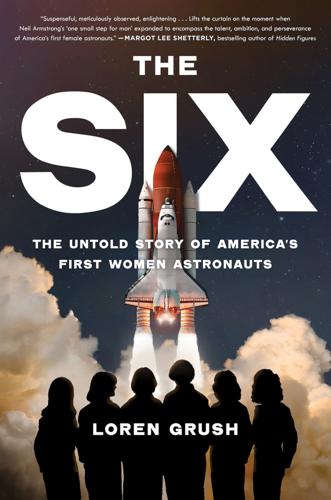
The Six: The Untold Story of America's First Women Astronauts
by
Loren Grush
Published 11 Sep 2023
LEIGH VOGEL/WIREIMAGE More in 20th-Century U.S. History Leadership All the President's Men The Train to Crystal City The Presidents Club Raven Rock 1944 AUTHOR’S NOTE This book is the culmination of more than one hundred hours of interviews (mostly over Zoom during the COVID-19 pandemic) conducted between 2020 and 2022. Among the people I was grateful to talk to were Augusta Gonzalez, Barbara Roduner, Bill Colson, Robert Crippen, Bonnie Dunbar, Carolyn Huntoon, Charlie Walker, Dan Brandenstein, David Leestma, Duane Ross, Eileen Collins, Fani Brown Brandenburg, Frank Hughes, George Abbey, Gerald Griffin, Hoot Gibson, Jay Honeycutt, Jeff Hoffman, John Creighton, John Fabian, June Scobee Rodgers, Lynn Sherr, Margaret Weitekamp, Marianne Dyson, Michael Cassutt, Michael Oldak, Mike Mullane, Rhea Seddon, Rick Hauck, Shannon Lucid, Steve Hawley, Sue Okie, Taibi Kahler, Tam O’Shaughnessy, and Wayne Hale.
…
Thanks, also, to those at NASA who guided me to the right people and sourcing I needed, especially Jennifer Ross-Nazzal, Brandi Dean, Brian Odom, Robert Young, and Holly McIntyre. A big shout-out to Paul—whose last name I do not know—at the New York Public Library. When I set out to write a book during the height of COVID-19, I naively thought it would be easy since I’d have all the time at home to work on it. But I soon learned the difficulties of trying to conduct research when every major archive in the United States was closed. Over Zoom, Paul, a researcher at the library, patiently spent hours walking me through the labyrinthian online archival system, and, thanks to his help, I was able to pull a significant amount of information without leaving my home.
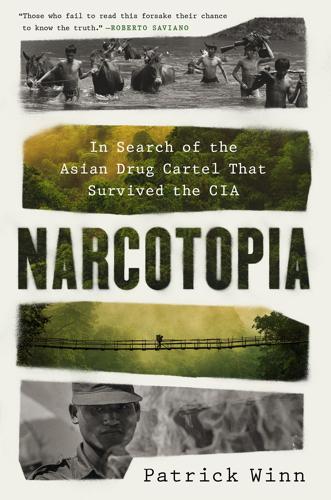
Narcotopia
by
Patrick Winn
Published 30 Jan 2024
A mysterious virus emanating from the city of Wuhan was spreading fast, forcing China to quarantine citizens and close airports and land crossings. High-tech fencing and security cameras went up along China’s borders with Burma, including Wa State. The Wa, imitating China’s policy, insulated themselves too. Never before had they faced an invader so fearless as Covid-19. UWSA soldiers in white biohazard suits corralled all non-Wa visitors—mostly Chinese traders—and evicted them from the peaks. Aware their health-care system was dreadful, the Wa government hailed stopping the disease as its “most important” mission. Needless to say, my pilgrimage to the Wa capital was doomed.
…
In turn, the regime, venting its rage, incinerated places suspected of harboring revolutionaries: temples and clinics, whole neighborhoods, even schools with children still inside. The junta even beheaded dissidents, leaving their corpses in the street for all the see.3 In tandem with this civil war, the Covid-19 virus swept through Burma. The military seized hospitals and hoarded oxygen tanks for its troops, all while many citizens, malnourished from wartime food shortages, died for lack of basic medicine. Everyday families had little choice but to lock themselves in their homes. Jacob’s texts to me grew dire.

Lonely Planet Egypt
by
Lonely Planet
. $ Protecting the Tombs for Posterity For 2000 years, the Theban necropolis has been attracting visitors. Mass tourism, however, is a relatively new phenomenon. In 1869 Thomas Cook conducted his first excursion to Egypt for British tourists. The discovery of Tutankhamun’s Tomb in 1922 further piqued curiosity and tourist numbers have risen steadily ever since. Post-COVID-19, Luxor is once again experiencing a tourism boom, begging the question: how much attention can the tombs withstand? Exhalation and perspiration have taken their toll, resulting in some being opened only in rotation and a restriction to visiting only three tombs per day (except with the Luxor Pass).
…
I’m even married to a Brit, though I’ll always be proud of my ancestors in Mit Ghamr. PHARAONIC FUTURES? In the land of the Great Pyramids, Egypt is engaged in a Pharaonic building boom in an attempt to outsmart climate change. By Paula Hardy Pyramid, Giza | DOTMILLER1986/SHUTTERSTOCK © IN APRIL 2021, as the COVID-19 pandemic petered out, Egypt live-streamed the extravagant Pharaohs’ Golden Parade to a global audience. This multimillion-dollar, made-for-TV spectacle featured the relocation of 22 ancient Egyptian kings and queens from the Egyptian Museum in Tahrir Sq to the new National Museum of Egyptian Civilisation (NMEC).
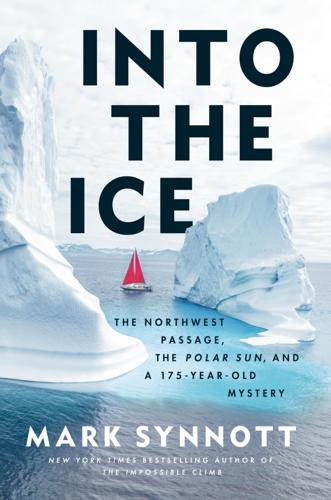
Into the Ice: The Northwest Passage, the Polar Sun, and a 175-Year-Old Mystery
by
Mark Synnott
Published 14 Apr 2025
David now pointed out what I already knew: that when the Parks Canada archaeologists discovered Erebus in Wilmot and Crampton Bay in 2014, the location—roughly ten miles northeast of O’Reilly Island and the same distance southwest of Grant Point—was more or less exactly where Inuit had always said the ship had gone down. Monica explained that due to COVID-19, there hadn’t been any dives on the wrecks for the past two seasons. Now that the Arctic was finally back open for business, the archaeologists had decided to focus their efforts on Erebus because it was in much shallower water than Terror—thirty-three feet versus eighty—and storms and waves had been breaking up the ship.
…
Desgagnes, 152 climate change, 6–7, 134, 322–23 Coffey, Maurice Francis, 144 Coleman, Patrick, 188–90, 336 Collinson Inlet, 177–78, 183, 187, 194, 197–98, 253–54, 260 Concordia (whaling ship), 188 Cook, James, 36 Cooke, John, 33 Coppermine River, 36, 38–41, 167, 304 Coronation Gulf, 36, 39, 166, 306, 317 Couch, Edward, 98 COVID-19 pandemic, xxiv, 58, 207, 246 Cracroft, Sophia, 41, 102–3 Cresswell, Alan, 207–12, 215, 218, 220–23, 232–33, 247, 317, 331, 341 Croker, John Wilson, 35–36 Croker Mountains, 36, 163 Crown Prince Frederik Island, 334, 376n Crozier, Francis Rawdon: and “Aglooka” nickname, 252, 335–36, 357; background, 101–5; on crew of Erebus, 106; ice bound in Baffin Bay, 137; and Parry expedition of 1824, 155; and state of expedition’s sunken ships, 264–65, 294; and Woodman’s research on Franklin expedition, 257, 259 Crozier’s Landing, 201 Cumby, William, 33, 43 D Dance, Nathaniel, 32 Dancing with Sŭ-pung-er (Taichman), 356 RV David Thompson, 244, 247–48 Davis, John, 18, 67 Davis Strait: crew on Davis Strait crossing, 23–26; and criteria for Northwest Passage transit, 4; and impact of Arctic trip on author, 346; and missions searching for Franklin expedition, 119; namesake of, 67; and Polar Sun’s route, 12, 17–20, 23–26, 28–30, 59–60; rough conditions of, 28–30; and whaling, 85, 86–87 Denmark, 61, 64–68 Des Voeux, Charles, 105, 177, 184, 202 Devon Island, 6, 136, 173, 255, 346 dip circles, 161 Disko Bay, 62, 72, 87, 109, 118, 124–25 DNA analysis, 66, 202–3 HMS Dorothea, 34–35 Dorset people, 65, 66, 83 drones, 52, 170, 214.

Unsustainable Inequalities: Social Justice and the Environment
by
Lucas Chancel
Published 15 Jan 2020
INEQUALITY, HEALTH, AND ANXIETY How does economic inequality affect the physical and mental health of individuals? Wilkinson and Pickett insist on the cardinal importance of public services. The high quality of such services in the least inegalitarian societies, especially in connection with health care, has positive effects that are almost universally felt. This became evident in the context of the COVID-19 pandemic, especially in the United States and countries without universal health care. Deprived of affordable health care, the poorest segments of society cannot be properly treated, placing them as well as society as a whole at high risk. Inequality in access to basic services such as health care affects all social groups: this is the idea that underlay the introduction of national health insurance schemes in the United Kingdom and France right after World War II.

Devil Take the Hindmost: A History of Financial Speculation
by
Edward Chancellor
Published 31 May 2000
Plug sockets are mostly the thin, three pin type, although European plugs or adaptors should work in them. British appliances mainly need the European adaptor or a special Swiss adaptor for the socket shape, while North American appliances will also need a 220-to-110v transformer. Health In connection with the Covid-19 pandemic visitors should check for any restrictions in place before they travel. At the time of writing, all travellers had to possess a valid Covid-19 certificate (vaccinated/recovered/tested negative). In addition, only people with the certificate could visit restaurants, museums and other attractions. EU citizens are entitled to discounted emergency medical care in Switzerland and Liechtenstein on production of an EHIC (European Health Insurance Card).
…
The right-wing SVP remain the biggest party, but saw their share of the vote drop from 29.4 percent to 25.6 percent. Meanwhile, the percentage of women in the National Council rose from 32 to 42 percent, a ratio well above the governments in the UK and US. The year 2020 saw the global spread of the Covid-19 pandemic, with a total of 1.8 million coronavirus cases and around 12,600 deaths recorded in Switzerland at the time of writing. A total of 68.3 percent of the Swiss population has been fully vaccinated at the time of writing. As everywhere else, Switzerland’s tourism industry seriously suffered as a result of the pandemic in 2020.
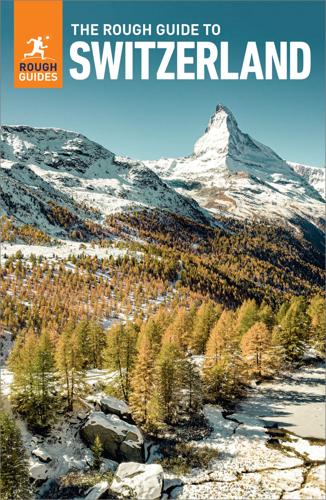
The Rough Guide to Switzerland (Travel Guide eBook)
by
Rough Guides
Published 24 May 2022
Plug sockets are mostly the thin, three pin type, although European plugs or adaptors should work in them. British appliances mainly need the European adaptor or a special Swiss adaptor for the socket shape, while North American appliances will also need a 220-to-110v transformer. Health In connection with the Covid-19 pandemic visitors should check for any restrictions in place before they travel. At the time of writing, all travellers had to possess a valid Covid-19 certificate (vaccinated/recovered/tested negative). In addition, only people with the certificate could visit restaurants, museums and other attractions. EU citizens are entitled to discounted emergency medical care in Switzerland and Liechtenstein on production of an EHIC (European Health Insurance Card).
…
The right-wing SVP remain the biggest party, but saw their share of the vote drop from 29.4 percent to 25.6 percent. Meanwhile, the percentage of women in the National Council rose from 32 to 42 percent, a ratio well above the governments in the UK and US. The year 2020 saw the global spread of the Covid-19 pandemic, with a total of 1.8 million coronavirus cases and around 12,600 deaths recorded in Switzerland at the time of writing. A total of 68.3 percent of the Swiss population has been fully vaccinated at the time of writing. As everywhere else, Switzerland’s tourism industry seriously suffered as a result of the pandemic in 2020.

The Greek Revolution: 1821 and the Making of Modern Europe
by
Mark Mazower
Published 4 Nov 2021
But then I thought again: was it unreasonable – given the divisions that had opened up in Greece as a result of the years of austerity – to try to figure out what might bring people together in an understanding of the past that was inclusionary not exclusionary? Was that not better than acquiescing in the kind of political polarization that had torn Greece apart in the past? If this invitation thus made me reassess my stance towards the subject, what I really wanted to say about it became evident only during the coronavirus pandemic. Living in Manhattan at an epicentre of the catastrophe, I followed Greece’s response in those first months, which formed such a contrast with that of the United States. The two governments could scarcely have taken more different approaches. But the real differences lay deeper. There is nothing like a public health emergency to illuminate the degree of a people’s trust in their state.

Last Best Hope: America in Crisis and Renewal
by
George Packer
Published 14 Jun 2021
And Americans pride themselves on being independent and resourceful in a crisis. The same spirit that drove Clara Barton, a government clerk with no training in health care, to bring medical supplies and comforting words to wounded Union soldiers in Washington at the start of the Civil War would carry Americans through the plague of COVID-19. Here finally was a crisis that could pull Americans together as hadn’t happened in the two decades since September 11, 2001. The biology of a pandemic is designed to show the limits of individualism and affirm a truth that’s too hard to keep in mind—our common humanity. Everyone is vulnerable.
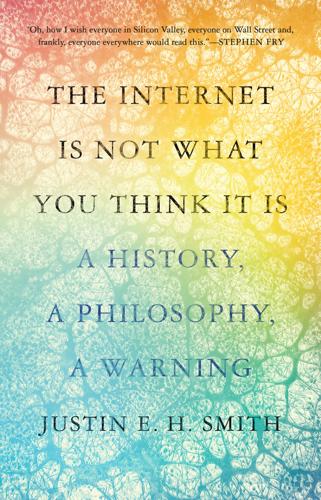
The Internet Is Not What You Think It Is: A History, a Philosophy, a Warning
by
Justin E. H. Smith
Published 22 Mar 2022
Graham Burnett, and also to Carolyn Dicey Jennings, Jesse Prinz, John Tresch, Natasha Dow Schüll, and all the other participants. I extend special thanks to all the brave pioneers who participated in the open and experimental Zoom seminar that I conducted on Kant’s Critique of the Power of Judgment from March to May 2020, while under quarantine in New York and suffering from COVID-19 and its after-effects (another sort of viral hit). I thank in particular Ognian Kassabov, Jake McNulty, Catherine Wilson, and Johanna Winant for their contributions. That seminar was an absolute lifeline for me, and its impact on my thinking is evident on nearly every page—not only the ones that discuss Kant.

The Rough Guide to Mexico
by
Rough Guides
Published 15 Jan 2022
Writer Carlos Fuentes dies. 2014 Hurricane Odile devastates Baja California. 2014 “El Chapo” Guzmán, Sinaloa Cartel leader and Mexico’s most-wanted man, is captured; he escapes in 2015 is recaptured in 2016 and then extradited to the USA the following year to stand trial which commenced in November 2018. 2017 Two powerful earthquakes kill hundreds across the country. 2018 As violence soars, left-winger Andrés Manuel López Obrador wins landslide victory in the presidential election – securing a six-year term in the process. 2020 The Covid-19 pandemic, and measures taken to contain it, causes an economic downturn in Mexico. 2022 With increased Covid-19 vaccination rates restrictions are eased and tourism returns. Early civilizations The first signs of settled habitation in Mexico – the cultivation of corn, followed by the emergence of crude pottery, stone tools and even some trade – come from the Archaic period, around 8000 to 2000 BC.
…
Prices may drop during the “shoulder” seasons – mid-September to early November and late April to early June – and the best deals are usually available during the low season (November to March, excluding Christmas and New Year). Flying at weekends can also sometimes add to round-trip fares, however if you book far enough in advance you can often avoid paying more. At the time of writing, schedules were still being affected by the Covid-19 pandemic, making prices even more unpredictable. The Arch (El Arco) of Cabo San Lucas Shutterstock Flights from the US and Canada From most places in North America, flying is the most convenient way to reach Mexico. There are flights from just about every major US city, with the least expensive and most frequent leaving from “gateway” cities in the south and west, especially Dallas, Houston, Los Angeles, Miami and Orlando.
…
Business visitors usually need a Business Authorization Card available from consulates, but nationals of countries exempt from a tourist visa can enter on business for up to thirty days on a tourist card (see below). For more detailed information on who needs a visa, visit the website of the Instituto Nacional de Migración at http://inm.gob.mx (click on “English” top right). For the latest travel restrictions related to the Covid-19 pandemic, please consult your country’s foreign office or state department. Tourist cards and the derecho do no inmigrante All visitors, regardless of nationality, need a valid passport and a tourist card (or FMM – Forma Migratoria Múltiple). The only exception applies to visits of less than three days to the 20km, duty-free strip adjoining the US border, into which you can come and go more or less as you please (though you still need a passport or photo ID).

The Rough Guide to Portugal (Travel Guide eBook)
by
Rough Guides
Published 1 Mar 2023
António Salazar makes his mark as an impressive Finance Minister 1932–68 Salazar rules Portugal as a virtual dictator 1939–45 “Neutral” Lisbon becomes a hotbed of wartime spies, including Ian Fleming 1950–65 Salazar funds the construction of the Lisbon metro and a bridge over the Tagus 1960s–1973 Portuguese troops increasingly sent abroad to contain uprisings in its colonies 1974 The Carnation Revolution overthrows the old regime late 1970s Thousands of refugees flood into Portugal from its former colonies 1986 Political stability is ensured with entry into the European Community Early 1990s European funds transform the country’s infrastructure 1998 Lisbon hosts the successful Expo 98, which spawns a new district and bridge over the Tagus; Portuguese author José Saramago wins the Nobel Prize for Literature 1999 Portugal gives up its last colony, Macau 2004 The Euro football championships are hosted in a series of state-of-the-art stadiums 2007 The Treaty of Lisbon is signed in Belém, forming the constitution for the EU 2009 National superstar Cristiano Ronaldo becomes the world most expensive footballer when he is sold by Manchester United to Real Madrid for £80 million 2010 Portuguese artist Paula Rego is made a British Dame 2016 Portugal wins the UEFA European Championship 2017 Complaint to the EU over Spain's plan for nuclear waste storage is dropped 2018 President Marcelo Rebelo de Sousa blocks the “gender change bill”, which would have made it easier for teenagers to change their gender and name in documents 2019 Portugal beats the Netherlands to win the Nations League final football tournament 2019–20 Portugal is hard hit by the Covid-19 pandemic. Very strict lockdowns and other restrictions imposed, and there is a significant economic impact. 2022 Tourism in Portugal on the rise as the country recovers from the Covid-19 pandemic. Cultura Castreja The end of the Neolithic era, around 1000 BC, saw the development of northern Portugal’s Cultura Castreja, based around fortified hilltop towns – called citânias – and villages (castros).
…
Many hotels have experienced double-digit revenue growth since the height of the recession in 2013. Porto has joined Lisbon as a major city-break destination, and there’s no sign of the Algarve’s beach resorts losing their huge popularity. It’s safe to say that tourism in Portugal is booming. Of course, the Covid-19 pandemic of 2020–22 had a massive negative impact on Portuguese tourism, but by the summer of 2022, it appeared likely that the industry would recover fast. Fado – the people’s soul Portugal’s most famous musical form, fado (or “fate”), opens a window onto the Portuguese soul. It’s an urban music, a thing of night-time and bars, the origins of which are debatable, but certainly involve influences from Portugal’s overseas explorations.
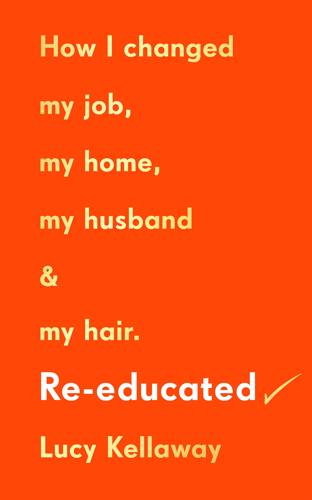
Re-Educated: Why It’s Never Too Late to Change Your Life
by
Lucy Kellaway
Published 30 Jun 2021
Nick Robinson, who was doing the interview, cut in briskly: ‘So what you are talking about is basically a luxury for privileged older people.’ I snapped that in just ten minutes’ time, before most journalists got out of bed, I would be on playground duty in the pouring rain. That wasn’t luxury as I understood it. ‘Point taken,’ he said. About a year after this, Now Teach got a boost from an even more unexpected quarter, Covid-19. As the working world came to a virtual stop, furloughed or Zoomed, people started to wonder what were the things in life that really mattered. The conclusion, for many, was that teaching mattered, and maybe they should try it. Every month in the pre-Covid era, we would hold an information evening for middle-aged professionals who wanted to know more about teaching.

Exit Strategy
by
Sherry Walling, Rob Walling
Published 22 Nov 2024
In both cases, growth slows and your exit valuation subsequently plummets. Ask yourself how much of your growth is related to the specific point in time you’re in. What might cause that point in time to change? For example, a homeschooling platform could have received a considerable boost during the COVID-19 pandemic, only for growth to fall off again once kids returned to school. Another example is the psychedelic market, where money was briefly flowing into psychedelic-related companies in anticipation of federal legalization. When that legalization was delayed, the funding dried up. Tom Shieh, the former owner of Crimcheck, knew it was time to sell when he started to see massive amounts of consolidation in his industry.
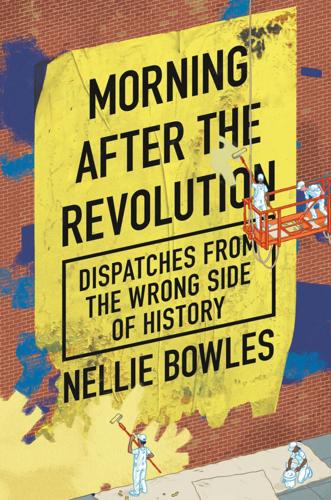
Morning After the Revolution: Dispatches From the Wrong Side of History
by
Nellie Bowles
Published 13 May 2024
The only dissent that night was from a date, a young woman down at the far end of a bench. She was from the South, just visiting. She wants kids, she said. I never saw her again. Fertility rates have been on the decline since 2007, and, since 2014, births in the United States have declined 2 percent every year. Then the birth rate dropped 4 percent during the early stages of the Covid-19 pandemic in 2020—with just a 1 percent slight bounce back from that low level in 2021. Or another way to measure it: In 1990, an average group of one thousand women in their childbearing years would birth about seventy children a year, according to the US Census. By 2019, it was around fifty-six children.

Lonely Planet Malta & Gozo
by
Lonely Planet
These hostels are a cut above the norm, with bright dorms and rooms in lovely historic buildings, and even extras such as rooftops and yoga classes. One of the best is Inhawi near St Julian’s. THE IMPACT OF TOURISM According to Malta’s National Statistics Office, just under three million tourists visited Malta in 2023, a record number, and rising quickly after the COVID-19 years from 2020–22. Although this brings economic dividends, there are impacts on infrastructure. Airbnb is a popular choice for visitors, with more than 10,000 properties listed, though there are concerns about the local impacts of these types of short-term rentals. However, with over 21,000 hotel rooms available, and many more being built, the effects of over-development for commercial gain seems a bigger threat to the fabric of Maltese life on these small islands.
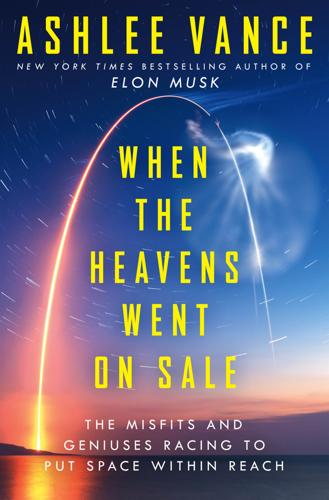
When the Heavens Went on Sale: The Misfits and Geniuses Racing to Put Space Within Reach
by
Ashlee Vance
Published 8 May 2023
The company has perfected reusable rocket technology, allowing it to bring rocket bodies back to Earth and fly them again, while its rivals continue to dump their once-used hardware into the ocean. SpaceX has also started a satellite business and manufactures and flies more of them than any company in history. In 2020, while covid-19 made the world stand still, SpaceX sent six astronauts to the International Space Station, restoring the United States’ ability to put humans into space for the first time since the space shuttle was retired in 2011. Meanwhile, in south Texas, SpaceX is busy building Starship, a vehicle meant to fulfill Musk’s ultimate ambition of forming a human colony on Mars.
…
The CEO took the abuse because he needed Polyakov’s money. Max owned about 80 percent of Firefly, which meant he owned Markusic’s path to Providence. THE PANDEMIC MAY HAVE SLOWED down lots of people but not Polyakov. Though he’d flown commercially in the past, he decided to deal with some of the annoyances of covid-19 by using private jets. It turned out that he really liked flying private and that the quick travel times made it more convenient for him to check up on Markusic. Where Polyakov used to visit Firefly’s headquarters once a quarter or so, he was now taking trips to Texas every couple of weeks throughout the early part of 2020.
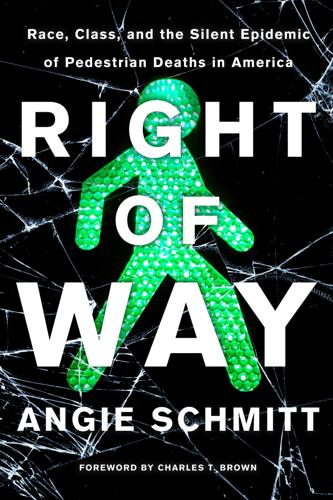
Right of Way: Race, Class, and the Silent Epidemic of Pedestrian Deaths in America
by
Angie Schmitt
Published 26 Aug 2020
Brown Introduction: Outline of an Epidemic Chapter 1: The Geography of Risk Chapter 2: The Profile of a Victim Chapter 3: Blaming the Victim Chapter 4: The Criminalization of Walking Chapter 5: Killer Cars Chapter 6: The Ideology of Flow Chapter 7: A Hard Right Turn Chapter 8: Pedestrian Safety on the Technological Frontier Chapter 9: The International Context Chapter 10: Families for Safe Streets Conclusion Acknowledgments Notes About the Author Author’s Note The writing portion of this book was completed in early February 2020, before the COVID-19 pandemic took hold in the United States. In other words, it was written in what people have already started referring to as the Before. The publishing process is such that there is about a six-month lag between the completion of writing and the first sale, so I want to briefly address this consciousness-altering event that took place in between.
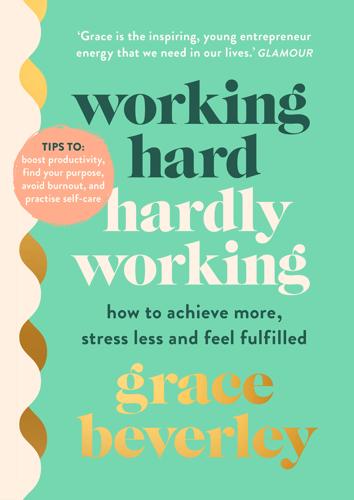
Working Hard, Hardly Working
by
Grace Beverley
I’m just a human who didn’t see the comfort found in separating work and home, who didn’t understand that cancelling plans in the evening because you’re already home and closer to bed is completely valid and not anti-social, even if it makes you feel worse. What I learned from my work-from-home struggles was how to know myself, my boundaries and shortcomings, and it changed my life and my productivity: my work was better in quality and quantity, and so was my time off. So when the Covid-19 pandemic hit in March 2020, and many people began working from home for the first time, I posted an Instagram story in which I shared a ‘work-from-home’ tip. I recommended that people who struggle to concentrate after lunch watch a TED Talk during their break and give it their full attention. For me, this distracts enough from my work to give me a much-needed break, without the risk of falling into a full-on YouTube hole which ends up with me being so engrossed in an instruction video on how to make an Ikea elfstödt into a loo roll holder that I miss my 3pm call.

Happy-Go-Lucky
by
David Sedaris
Published 30 May 2022
Hugh headed indoors to make fresh drinks for himself and Amy. “I could have spelled Schenectady for you.” “Yes, well, you weren’t there, were you?” I said. “You’re never there when I really need you.” He and I had just returned from two weeks at the Sea Section. The New York we’d left behind us had already been changed by COVID-19, but now that we’d returned, it felt doubly different. For the first time since February, the virus was no longer the only news: the unrest was. The country had gone from one massive headline story to another, and it felt like anything might happen next: a cataclysmic natural disaster, an alien invasion.
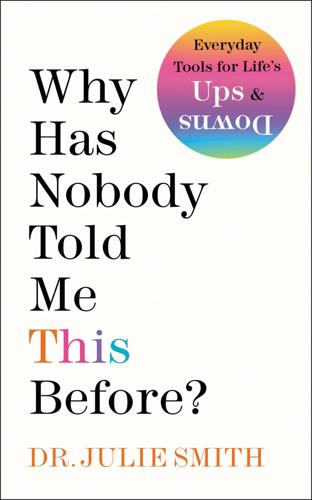
Why Has Nobody Told Me This Before?
by
Dr. Julie Smith
Published 11 Jan 2022
28: Why reducing stress is not the only answer 29: When good stress goes bad 30: Making stress work for you 31: Coping when it counts 8: On a Meaningful Life 32: The problem with ‘I just want to be happy’ 33: Working out what matters 34: How to create a life with meaning 35: Relationships 36: When to seek help References Resources Acknowledgements Spare tools Index About the Author DR JULIE SMITH has over ten years’ experience as a clinical psychologist and was the first professional to use TikTok to give insights on therapy. After running her own private practice, Julie launched her TikTok channel with the mission of making top-quality mental health education accessible to all. During the COVID-19 pandemic, her audience grew astronomically to 3 million followers as users related to the bite-sized self-help videos she was sharing and put her advice into practice. Those videos have clocked up around half a billion views across her platforms. She was named by TikTok as one of its Top 100 creators.
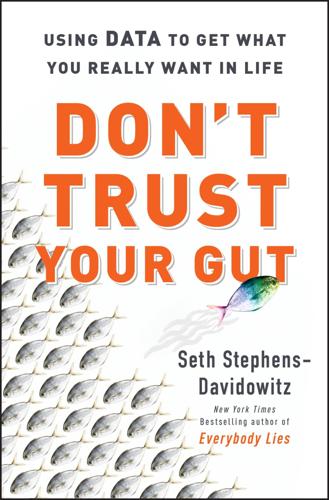
Don't Trust Your Gut: Using Data to Get What You Really Want in LIfe
by
Seth Stephens-Davidowitz
Published 9 May 2022
But many competitors entered, including many poorer people who were willing to charge far less than he was. Now, when the train from New York City arrives, riders are accosted by a large number of cabdrivers. Customers generally just pick whoever will offer the lowest price. The taxi driver’s profits have largely disappeared. Moreover, when the Covid-19 pandemic hit, his business collapsed, forcing him to move back in with his parents. To consistently keep profits, a business owner must somehow avoid competitors undercutting them on prices until the profits disappear. How can this be done? Well, businesses in the Big Six all have a way to do it.
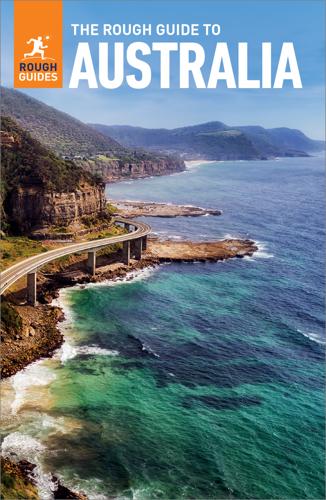
The Rough Guide to Australia (Travel Guide eBook)
by
Rough Guides
Published 14 Oct 2023
Dental treatment, however, is not included in the reciprocal health agreements. If you find yourself in need of dental treatment in one of the larger cities, try the dental hospital, where dental students may be able to treat you for a reasonable price. At the time of writing, there were no requirements for proof of Covid-19 vaccination status or testing for travellers entering Australia. However, individual states can set their own rules – including imposing quarantine – for international and domestic travellers, so make sure to check travel restrictions in advance. You should also check the rules for any country you are transiting through.
…
The twice-weekly Centralian Advocate (http://ntnews.com.au) carries details of live music and other entertainment. Cafés The Goods Coffee Shop 11 Todd St; http://instagram.com/the__goods. One of the sharper cafés in town; it long used locally roasted beans (locally roasted way out here, yes), though Covid-19 issues were making this tricky at the time of research. The baristas and baristos certainly know their stuff. $ Page 27 Fan Arcade, Todd St Mall; http://facebook.com/Page27Cafe. With its retro decor, inventive menus and all-day breakfasts (try the omelette with wild mushroom, chorizo, spinach and cheese), buzzy, alternative vibe, and the best coffee in town, this hip café would be equally at home in inner-city Sydney or Melbourne. $ Restaurants Barra on Todd Mercure Alice Springs Resort, 34 Stott Terrace; http://all.accor.com.
…
It may also become Australia’s “first city” in population terms – depending upon where you draw the lines, the size of the greater conurbation may already have exceeded that of Sydney, though one gets the sense that Melburnians would prefer to revel in their status as the “little brother”. During the Covid-19 crisis, Melbourne achieved international fame as the world’s most locked-down city – residents here battled through no fewer than six separate lockdown periods, stretching for more than nine months in total. Central Melbourne Melbourne is focused on its Central Business District, known to all and sundry as the CBD.
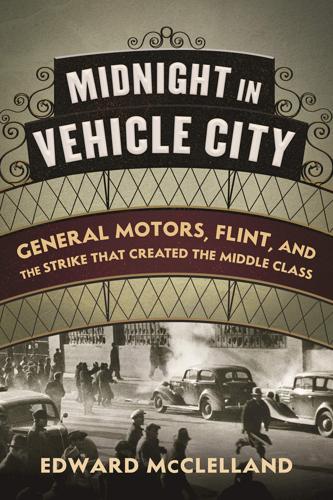
Midnight in Vehicle City: General Motors, Flint, and the Strike That Created the Middle Class
by
Edward McClelland
Published 2 Feb 2021
During the coronavirus crisis of 2020, workers at an Amazon delivery center in Chicago organized a movement that led to the company’s granting paid time off to all employees, both full and part time. Amazon workers also walked off the job to demand that the company shut down the facility after an employee tested positive for covid-19. During the crisis, workers deemed “essential” such as grocery clerks, waiters, baristas, and package handlers were among those who generally receive the lowest pay and fewest benefits. Indeed, Amazon hired a hundred thousand new package handlers to handle the surge in online shopping that resulted from stay-at-home orders.
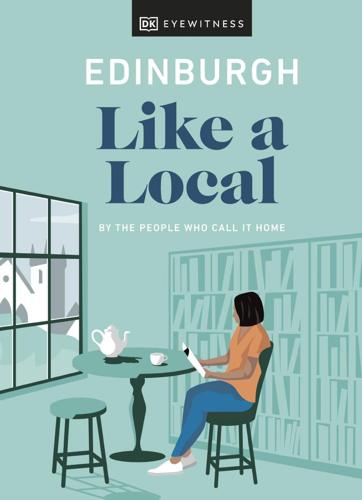
Edinburgh Like a Local: By the People Who Call It Home
by
Dk Eyewitness
Published 28 Sep 2021
disabled access, featuring reviews on main mosque and Islamic cultural centre. www.gov.scot restaurants, theatres and attractions by www.boots.com The official Scottish government website, and for people with specific requirements. www.ehcong.com Popular UK-wide pharmacy chain open the first port of call for all COVID-19 The Edinburgh Hebrew Congregation, daily with multiple branches in town. restrictions in place in Scotland. www.relayuk.bt.com a welcoming Jewish community group. App that helps those who are hearing-www.breathingspace.scot www.lothianbuses.com/accessibility or speech-impaired to contact 999 www.lgbthealth.org.uk A free, confidential phone and web Safety and accessibility information plus (emergency services) via SMS.
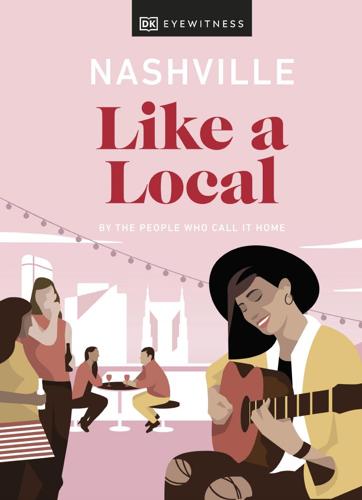
Nashville Like a Local: By the People Who Call It Home
by
Dk Eyewitness
Published 28 Sep 2021
www.empowertennessee.org health insurance for your visit. If you do A center for independent living that www.casaazafran.org need medical assistance, there are many www.nashville.gov provides a comprehensive list of A Hispanic community center acting as pharmacies and hospitals across the city. COVID-19 news and advice from the accessible destinations in Nashville. a welcoming cultural space for all. Metro Government of Nashville & www.nashville.gov/Health-Davidson County, Tennessee. www.traillink.com www.collective615.com Department.aspx Highlights wheelchair-accessible trails in The city’s first co-working space Metro Public Health Department offers www.sacenter.org and around Nashville.
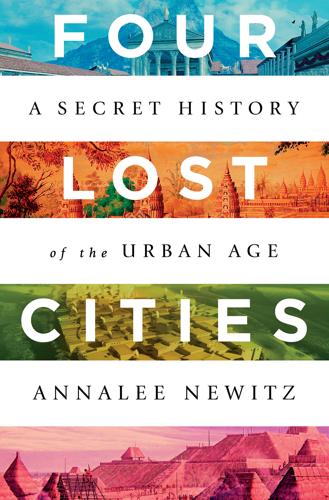
Four Lost Cities: A Secret History of the Urban Age
by
Annalee Newitz
Published 2 Feb 2021
I decided to stick it out and hope the city would survive. It did. In fact, San Francisco today is suffering through the opposite kind of crisis, as the population explodes and the city government struggles to remake our infrastructure to support it. The second generation of tech companies is raking in cash. Though the COVID-19 pandemic changes this calculus a little, wealthy techies are gentrifying the city, driving out working-class people and other longtime residents. Developers are transforming the grid in areas like Mission Bay, which was once full of factories and warehouses, but now welcomes artisanal ice cream shops and digital production studios.
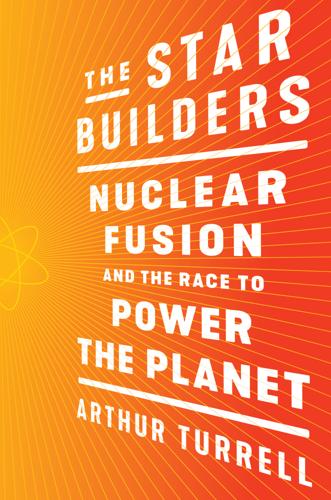
The Star Builders: Nuclear Fusion and the Race to Power the Planet
by
Arthur Turrell
Published 2 Aug 2021
But these punishing timescales aren’t unusual among the new wave of private sector star builders, such as General Fusion, LPP Fusion, Lockheed Martin, TAE Technologies, HyperJet Fusion Corporation, MIFTI, Proton Scientific, Helion Energy, Commonwealth Fusion Systems, Renaissance Fusion, Zap Energy, HB11-Energy, Pulsar Fusion, and the list goes on. There are now more than twenty-five private sector fusion firms. Most are promising to deliver energy from nuclear fusion reactions in years rather than decades. Commonwealth Fusion Systems says it will achieve net energy gain by 2025 and a pilot power plant by 2033. The deadly Covid-19 pandemic may slow these timescales, but the intention is clear: fusion sooner rather than later.9 There’s fierce competition between the star-building start-ups. It’s hard not to imagine the race to demonstrate gain—and, even more so, to build a prototype power plant—being a winner-take-all contest.

After the Gig: How the Sharing Economy Got Hijacked and How to Win It Back
by
Juliet Schor
,
William Attwood-Charles
and
Mehmet Cansoy
Published 15 Mar 2020
There’s every danger that the reconstruction will be worse. Yet this nuanced and sophisticated study also shows, through the analysis of gig economy workers themselves, that flexibility, a shared sense of purpose, and a commitment to sharing more is well within our grasp. As we turn to imagine what kind of economy and society we want after COVID-19, the work of Schor and her students will be indispensable.” —RAJ PATEL, Research Professor, Lyndon B. Johnson School of Public Affairs at the University of Texas at Austin, and author of A History of the World in Seven Cheap Things “While others have batted around the gig economy with melodrama and polemic, Schor comes to the subject with incisive, challenging questions for both the alarm raisers and the boosters.

Built on a Lie: The Rise and Fall of Neil Woodford and the Fate of Middle England’s Money
by
Owen Walker
Published 4 Mar 2021
Some industry analysts had long suspected that, while he was good at making big sector calls, he struggled to identify individual performers within industries, especially start-ups. This meant that when it came to unquoted companies, for every potential winner – such as Oxford Nanopore, whose DNA analysis technology was the first to sequence the Covid-19 virus – there was a stack of duds. Even in listed companies, where Woodford spent most of his career investing, his record in the final few years was awful. An analysis by Stockopedia, an investment data provider, found that of the seventy-two companies Equity Income held in 2016, just nineteen had produced a positive return by the time the fund closed in October 2019.
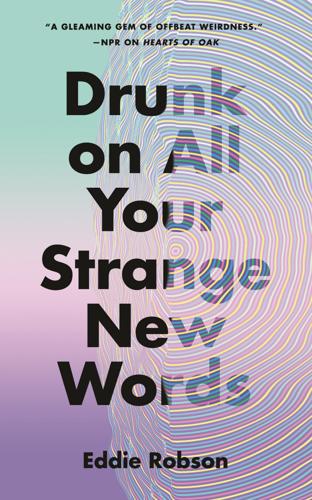
Drunk on All Your Strange New Words
by
Eddie Robson
Published 27 Jun 2022
But it tells her things she needs to hear, things she can’t rely on others to tell her. So she goes on listening. ACKNOWLEDGMENTS I can remember exactly when I thought of the idea for this book—it was on 7th February 2020, during my last trip to the cinema before the UK was locked down to protect against COVID-19. The film was Parasite, and it was followed by a Q&A with director Bong Joon-ho and star Song Kang-ho, accompanied by translator Sharon Choi. It got me thinking about the future of translation as a job, and whether technology would ever replace it entirely, and what circumstances might make that impossible.
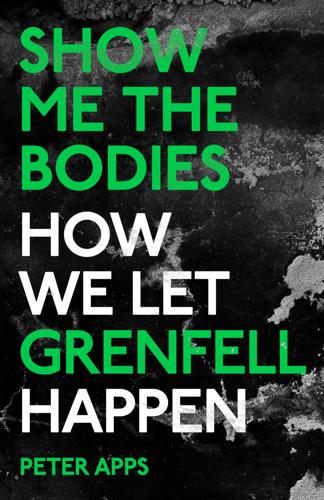
Show Me the Bodies: How We Let Grenfell Happen
by
Peter Apps
Published 10 Nov 2022
Over the years, they have listened as the corporations and public bodies responsible have given carefully constructed statements, full of vapid expressions of sympathy and detailed explanations of why their company is not to blame for what happened at the tower. The inquiry’s own barrister has described the attitudes as ‘a merry-go-round of buck passing’. They have also had to see the revelations pushed out of the public eye, as Brexit negotiations, political turmoil, Covid-19 and war distract attention from the evidence that has slowly played out in the hearing rooms in west London. When Eric Pickles, the minister to whom the Lakanal House coroner’s letter was addressed, finally gave evidence in April 2022, he berated the barrister questioning him for spending too long on a topic saying he had ‘promised we will be away this morning’ as he had ‘an extremely busy day meeting people’.
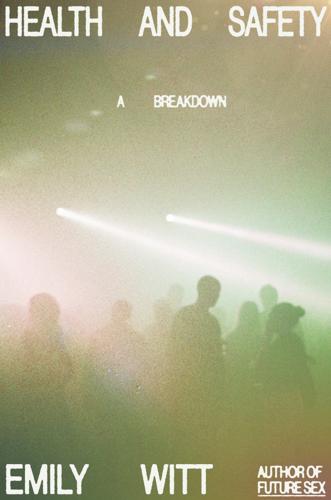
Health and Safety: A Breakdown
by
Emily Witt
Published 16 Sep 2024
The purveyors of security, so diligent in jailing people for drug possession, and policing sex work, and shutting down a bar that sold liquor after four in the morning, were in disarray when the actual danger arrived. The cult of wellness evaporated in a cloud of Lysol. Over the course of a few weeks, almost twenty thousand New Yorkers died of COVID-19. Refrigerated trucks were parked outside the hospitals to store the bodies. Woodhull Hospital still gleamed pink in the sunset, but what was happening inside in those weeks would probably never be fully known. The death rate for hospitalizations at that time was around thirty percent. I watched the livestreams on my laptop, the music calming me, the chat rooms a kind of mini-reunion.
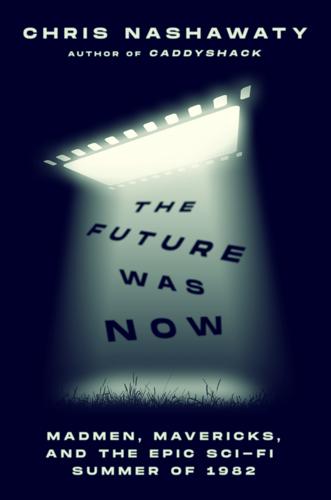
The Future Was Now: Madmen, Mavericks, and the Epic Sci-Fi Summer Of 1982
by
Chris Nashawaty
T. the Extraterrestrial; Price, Frank Comic-Con Conan the Barbarian (1982) awards and nominations box office sales budget casting filming Paramount and reviews stunts test screenings Universal and Conan the Destroyer (1984) Concorde: Airport ’79, The (1979) Conrad, Joseph Coppola, Francis Ford American Zoetrope Apocalypse Now Corman, Roger COVID-19 pandemic Curtis, Jamie Lee Cushing, Peter Dalí, Salvador Dark Star (1974) David, Keith Day the Earth Stood Still, The (1951) Dead Men Don’t Wear Plaid (1982) Deeley, Michael De Laurentis, Dino Conan the Barbarian King Kong Dick, Philip K. Blade Runner and Do Androids Dream of Electric Sheep?
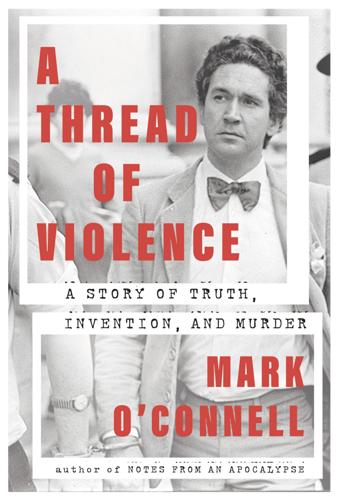
A Thread of Violence: A Story of Truth, Invention, and Murder
by
Mark O'Connell
Published 27 Jun 2023
Although she was much too far away for me to get any sense of what the pages were, I immediately succumbed to a preemptive despair, concluding that this woman was likely a relative, or perhaps an old friend, of Macarthur’s, and that she was going through his papers because he had recently died. How else to explain the blue gloves? In fact, the gloves suggested that he had died of Covid-19. Yes, this woman was a relative of some sort, perhaps a cousin, who had come to look through his personal effects, and sort out his affairs, such as they were. He must have died that very day, in fact, because it would certainly have already been a major news story if he’d died any earlier. This was just my luck.

The Thinking Machine: Jensen Huang, Nvidia, and the World's Most Coveted Microchip
by
Stephen Witt
Published 8 Apr 2025
For this reason, Bill Dally told me he wasn’t concerned about the open-source competition. “Because we’re flooring it!” he said. “We’re always a couple of generations ahead of them.” * * * • • • Nvidia owned no manufacturing facilities, and employees were accustomed to remote collaboration, so when the COVID-19 pandemic arrived, operations were scarcely affected. Still, things became less fun: the third-floor bar was closed, GTC went virtual, and Huang, like everyone else, was forced to retreat into his house. In July 2020, when Nvidia finally surpassed Intel in valuation, Huang couldn’t celebrate in person.
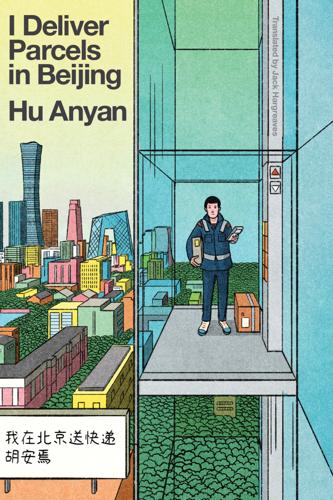
I Deliver Parcels in Beijing
by
Hu Anyan
It is harder to find a new job at the end of the year, but nobody seemed to be in a rush. They would start thinking about what was next once it was 2020, they said. There seemed to be a shared sense that we were finally free, although we all knew this was only temporary. Nobody could have foreseen everything was going to become harder, in the new year, when the Covid-19 pandemic hit. But for the time being, what we cared about most was not the job search, but the size of the redundancy package we were going to receive. The daily discussions were lively, with everyone seeming to be full of curiosity and hope for the future. Then, at last, the company announced that the payoff plan was “N+1.”

A World Without Email: Reimagining Work in an Age of Communication Overload
by
Cal Newport
Published 2 Mar 2021
If my TAs are undergraduates, I’ll add an extra step in which we have a prescheduled thirty-minute meeting to look through the problem sets and update the grading notes together. When I use graduate TAs, however, I trust them to figure this out on their own, saving me this extra thirty minutes. When Georgetown’s campus was closed due to COVID-19, we used a software tool called Canvas to make all the paper handling virtual; students submitted digital copies of their assignments, and the TAs graded them online. The process was easily adapted to this new fully electronic setup. 11. Rory Vaden, “The 30x Rule: How Great Managers Multiply Performance,” American Management Association, February 3, 2015, https://playbook.amanet.org/30x-rule-great-managers-multiply-performance/.

Data Action: Using Data for Public Good
by
Sarah Williams
Published 14 Sep 2020
Facebook's human settlement data has received a lot of interest from researchers. Studies it spawned include understanding water vulnerability in the area known as High Mountain Asia; planning electrification, geomarketing in telecom, and other planning initiatives in Ethiopia; planning electrification in Uganda; and, most recently, the COVID-19 response in Sierra Leone.32 There are nineteen countries for which demographic data is currently available for download. According to CIESIN people have downloaded data about approximately half of them at a rate of 100 to 300 times per month per country, and about the other half roughly 50 to 100 times per month per country.33 The countries whose data has been most often downloaded are the five from the initial release: Haiti, South Africa, Sri Lanka, Ghana, and Malawi.

Upgrade
by
Blake Crouch
Published 6 Jul 2022
It’s the number of cases expected to be caused by a single infected person. Measles, the most contagious virus known to humankind, has an R0 of 12 to 18, which means that each infected person would be expected to infect 12 to 18 others. By comparison, the Spanish flu of 1918, which killed fifty million, had a much lower R0 of between 1.4 to 2.8. COVID-19 had been around 5.7. I said, “If you expose every human being to the upgrade, and if the Glasgow percentages hold, you’re talking about killing a billion people. That won’t keep you up at night?” “Fuck yeah it’ll keep me up at night. But it’d be selfish not to do what needs to be done just because it plagues the remnants of my conscience.
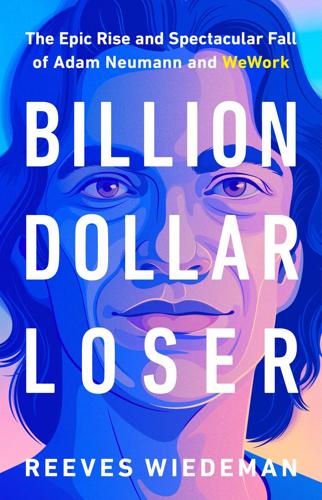
Billion Dollar Loser: The Epic Rise and Spectacular Fall of Adam Neumann and WeWork
by
Reeves Wiedeman
Published 19 Oct 2020
No one expected Adam to leave New York forever, having gotten a taste of the success his skills could bring, and Gold wanted to set up an off-the-record call in advance of a possible meeting in the city. But the call never happened, and Adam’s return to New York was delayed. If Adam’s billion-dollar parachute represented the climax to a decade of excess and growth, Covid-19, which had just begun its rampage around the world, brought an end to that era for good. Everything had changed for WeWork all over again. With the world mired in lockdown and uncertainty, SoftBank reneged on its deal. It was now refusing to buy the $3 billion worth of shares that would fund Adam’s exit package, citing various issues—including investigations into WeWork’s IPO that had been launched by the SEC, the Justice Department, and several state attorneys general.
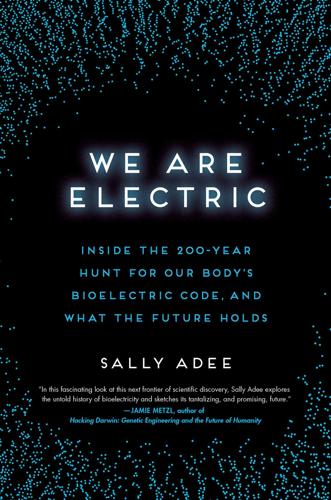
We Are Electric: Inside the 200-Year Hunt for Our Body's Bioelectric Code, and What the Future Holds
by
Sally Adee
Published 27 Feb 2023
Business-friendly political administrations like to starve it of funds, believing that the agency really enjoys getting in the way of innovation. But when the FDA can’t do its job properly, you get things like vaginal mesh implant disasters and breast implants that leak. It’s thanks to the FDA that faulty ventilators were recalled during the Covid-19 pandemic before they could kill someone. However, as the oscillating field stimulator was going through its tribulations, the FDA was very different from the agency it is today, and this played a part in the device’s demise. Like James Cavuoto, Jennifer French was frustrated by the way the agency handled the Andara device’s approval.

Fire and Ice: The Volcanoes of the Solar System
by
Natalie Starkey
Published 29 Sep 2021
Nevertheless, this book eventually got written and the breaks from writing I’ve had to take over the two and a half years working on it helped to give me some perspective. I absolutely love the process of writing, shutting myself away in the office for hours on end to research and write about these fascinating Solar System worlds. Towards the end of this book, when the Covid-19 lockdown began and I had my daughter at home all day, it would have been easier to take another break from writing. But, thanks to the commitment of my amazing husband, who took the reins on childcare at the weekends, I was able to continue pushing through the words to complete my first draft. This gave me such joy (and a break from the endless hours of entertaining my daughter) and a big boost to know I had the space to think during such unprecedented times.

IRL: Finding Realness, Meaning, and Belonging in Our Digital Lives
by
Chris Stedman
Published 19 Oct 2020
Many nations are experiencing immense economic and political instability. The seas are rising. Systemic racism persists and adapts. The chasm between the wealthy and the rest of us grows larger every day. Climate change and pandemics (as was starkly apparent to me while working on final edits to this book in the early days of the COVID-19 crisis) increasingly force us to reimagine how we live, travel, and interact, sometimes making digital connection the best or only option. Each year, immense new challenges emerge on an unprecedentedly global scale, and as we move more important pieces of our lives to digital spaces (at times by necessity), we find ourselves not only more aware of the world’s problems but also left feeling powerless to do anything (or, at least, enough) about them.
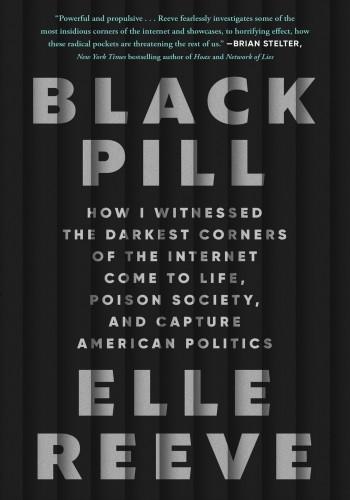
Black Pill: How I Witnessed the Darkest Corners of the Internet Come to Life, Poison Society, and Capture American Politics
by
Elle Reeve
Published 9 Jul 2024
Every expert I spoke to cautioned that there is an enormous difference between people with clinically measurable symptoms of autism and people who think identifying as autistic gives them a little cache on the internet. The relative size of these two groups is impossible to know, because of the forums’ anonymity. Three mental health professionals told me they had seen a wave of people seeking autism and attention deficit hyperactivity disorder diagnoses during the Covid-19 pandemic. Two of them said many of these people were actually depressed. It might be that a huge number of 4chan users really are measurably different from neurotypical people according to rigorous analysis based in science. Or it might be more like astrology, a way to talk about your personality and how you move through the world.
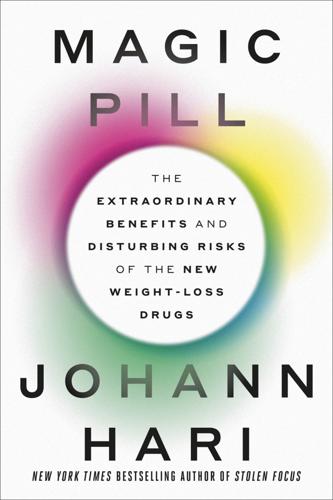
Magic Pill: The Extraordinary Benefits and Disturbing Risks of the New Weight-Loss Drugs
by
Johann Hari
Published 7 May 2024
Shortly before I started taking Ozempic, it was clear there was going to be a massive worldwide rush for these drugs. The drug companies worked very hard to keep up with demand—but it was increasingly obvious it would take years to scale up production to meet demand. As a result, there wasn’t going to be enough for everyone. In a sensible society, we would have replicated what Britain did with the Covid-19 vaccine, and rationed it according to need. We gave it to the oldest and most vulnerable people first, and the youngest and least at risk last. With these new drugs, we should have put diabetics and severely overweight people first in line, and people like me toward the back of the queue. That didn’t happen.
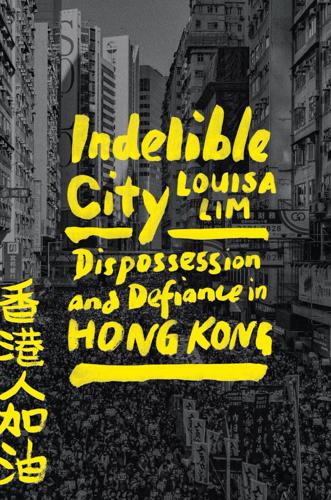
Indelible City: Dispossession and Defiance in Hong Kong
by
Louisa Lim
Published 19 Apr 2022
Once it did, there was no question in my mind that I had to cover it. I was already living in Hong Kong, on research leave from my job teaching journalism in Melbourne, when the protests broke out. After I went back to work in Australia, I regularly returned to Hong Kong on short reporting trips, until Covid-19 closed our borders. How to practice ethical journalism under the circumstances? Until this point, I’d unquestioningly followed the accepted journalistic practice of trying to remove myself from the story as far as possible. But could I remove myself from the picture when the picture was already part of me?

The Deficit Myth: Modern Monetary Theory and the Birth of the People's Economy
by
Stephanie Kelton
Published 8 Jun 2020
But even when Americans were at their poorest during the Great Depression, we managed to establish Social Security and the minimum wage, electrify rural communities, provide federal housing loans, and fund a massive jobs program. Like Dorothy and her companions in The Wizard of Oz, we need to see through the myths and remember once again that we’ve had the power all along. As this book was going to press, the COVID-19 virus hit with full force, giving us a vivid, real-world demonstration of the power of the MMT way of thinking. Entire industries are shutting down. Job losses are mounting, and there is the potential for an economic collapse that could put unemployment on par with the percentages last seen during the Great Depression.
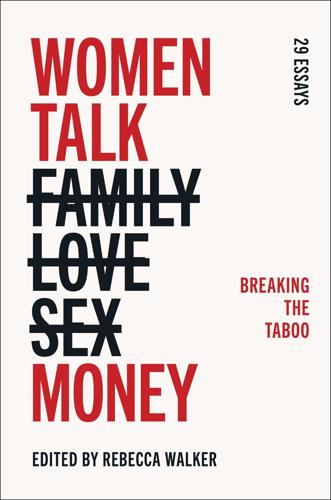
Women Talk Money: Breaking the Taboo
by
Rebecca Walker
Published 15 Mar 2022
Many of the affected people don’t know what’s making them sick. Most of them cannot afford to live anywhere else. Of course, all of these realities—which communities are most endangered by pollution and chemicals; who can afford to live in healthier areas—have been underscored and exacerbated by the Covid-19 pandemic. It’s no accident that Covid has especially ravaged low-income communities of color, in Los Angeles and elsewhere. The neighborhoods close to oil wells and freeways and trash-burning facilities, the neighborhoods filled with lead or chemicals, are also the ones most likely to be home to essential workers, who have not had the option—as I have—of staying home.
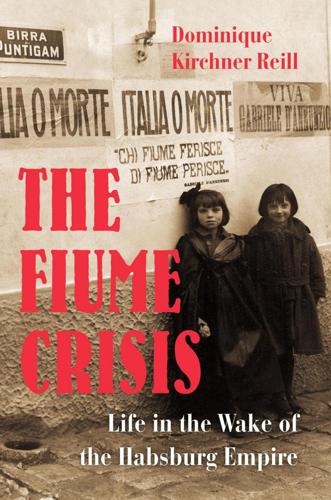
The Fiume Crisis
by
Dominique Kirchner Reill
Published 1 Dec 2020
While I was finishing the last chapter, my mother and partner in crime and cards, French Steele Prescott, became very ill and eventually died. The day I celebrated my first peer review on the manuscript, the man who taught me to giggle, my father Peter Hanns Reill, tripped and died suddenly. A few months before receiving the copyedits, the COVID-19 pandemic began. Over the arc of this book, I lost most of my family. Actually, I lost my favorite people. The only thing I can take heart from is that they knew this book so well. They were part of it. I’m glad this thing we made together has a life beyond. Illustration Credits Page 3 Courtesy of Fondazione Il Vittoriale degli Italiani—Archivio Iconografico 7 Courtesy of Archivio Museo Storico di Fiume a Roma—Società di Studi Fiumani 8 Courtesy of Fondazione Il Vittoriale degli Italiani—Archivio Iconografico 10 Courtesy of Fondazione Il Vittoriale degli Italiani—Archivio Iconografico 11 Courtesy of Fondazione Il Vittoriale degli Italiani—Archivio Iconografico 15 Courtesy of Fondazione Il Vittoriale degli Italiani—Archivio Iconografico 19 Courtesy of Fondazione Il Vittoriale degli Italiani—Archivio Iconografico 27 Courtesy of Fondazione Il Vittoriale degli Italiani—Archivio Iconografico 31 Courtesy of Fondazione Il Vittoriale degli Italiani—Archivio Iconografico 34 Courtesy of Pomorski i povijesni muzej Hrvatskog primorja Rijeka 37 Courtesy of Bibliothèque nationale de France, département Cartes et plans, GE C-4853 49 Author’s collection 51 Courtesy of Fondazione Il Vittoriale degli Italiani—Archivio Iconografico 64 Courtesy of Fondazione Il Vittoriale degli Italiani—Archivio Iconografico 76 Courtesy of Hrvatski Državni Arhiv u Rijeci 84 Courtesy of Fondazione Il Vittoriale degli Italiani—Archivio Iconografico 86 Courtesy of Fondazione Il Vittoriale degli Italiani—Archivio Iconografico 88 Courtesy of Fondazione Il Vittoriale degli Italiani—Archivio Iconografico 97 Courtesy of Hrvatski Državni Arhiv u Rijeci 116 Courtesy of Fondazione Il Vittoriale degli Italiani—Archivio Iconografico 128 Courtesy of Hrvatski Državni Arhiv u Rijeci 160 Courtesy of Fondazione Il Vittoriale degli Italiani—Archivio Iconografico 169 Courtesy of Fondazione Il Vittoriale degli Italiani—Archivio Iconografico 171 Courtesy of Fondazione Il Vittoriale degli Italiani—Archivio Iconografico 180 Courtesy of Fondazione Il Vittoriale degli Italiani—Archivio Iconografico 284 185 190 212 219 226 Illustration Credits Courtesy of Fondazione Il Vittoriale degli Italiani—Archivio Iconografico Author’s collection Courtesy of Fondazione Il Vittoriale degli Italiani—Archivio Iconografico Courtesy of Fondazione Il Vittoriale degli Italiani—Archivio Iconografico Courtesy of Fondazione Il Vittoriale degli Italiani—Archivio Iconografico Index Alsace-Lorraine, 40, 44 Arditi, 15, 61–62, 164, 173, 193, 205 Auschwitz, 231 Ausgleich.
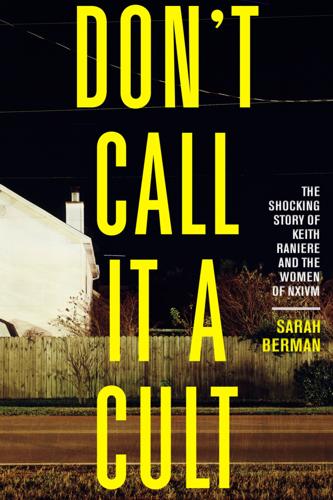
Don't Call It a Cult: The Shocking Story of Keith Raniere and the Women of NXIVM
by
Sarah Berman
Published 19 Apr 2021
“It has taken me three years and a substantial amount of space from your manipulation to realize that the shame that has been weighing so heavily on my shoulders is not mine to carry,” Nicole said. “It’s yours.” APPENDIX LETTER TO RANIERE Hi Keith, I’m reaching out in the fourth month of COVID-19 lockdown at Brooklyn’s Metropolitan Detention Center; I hope this letter makes it to you. I’m Sarah Berman, a reporter and editor based in Vancouver. I’ve been following NXIVM and the charges against you since 2017. I’d like to offer a chance to respond to questions that I think only you can answer.

Pure Invention: How Japan's Pop Culture Conquered the World
by
Matt Alt
Published 14 Apr 2020
Yet we know we’d never go back; our futures depend on us mastering the technologies that connect, soothe, and bind us. If there is any one lesson to learn from the heroes of the stories that unfolded in these pages, it is that the way out of the strange post-capitalist techno-political hellscape we find ourselves in is to create. Take the COVID-19 epidemic, which profoundly disrupted public life beginning in early 2020. As orders to “shelter in place” and “socially distance” turned people around the world into involuntary hikikomori, many turned to the old tools of the otaku to soothe their loneliness: games, videos, and playthings. A surge in demand at streaming services such as Netflix and PlayStation Network forced the companies to throttle back server speeds as the sheer volume of entertainment data began to overwhelm European telecom networks.
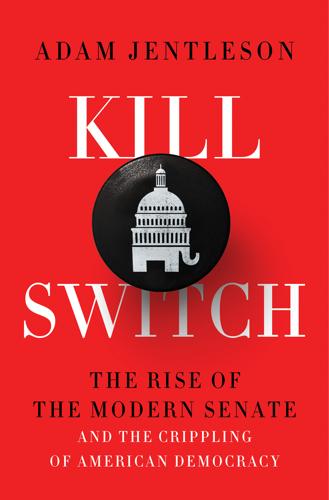
Kill Switch: The Rise of the Modern Senate and the Crippling of American Democracy
by
Adam Jentleson
Published 12 Jan 2021
Indeed, much of my education about the modern Senate itself came from rolling conversations with reporters about Senate politics, procedure, and history that began when I started working in Harry Reid’s press office in 2010 and have not stopped; I will not name them here, since that is probably what they would prefer. And I could not have completed this book during the onset of the COVID-19 pandemic in the spring and summer of 2020 without the invaluable work of digital archivists. The Senate colleagues who shaped my thinking are too many to name, but a few directly influenced the ideas and understanding that went into this book. William Dauster has been my Senate rabbi for years and his guidance was irreplaceable.
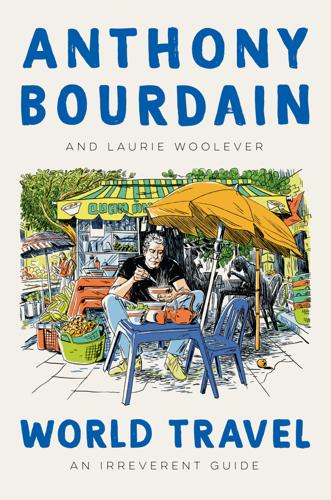
World Travel: An Irreverent Guide
by
Anthony Bourdain
and
Laurie Woolever
Published 19 Apr 2021
For whatever reason, even with all the problems and all the terrible things that have happened here over the years, I step off the plane in Beirut and I feel strangely, inexplicably comfortable, happy, at home.” As of this writing, Beirut is reeling from the combined effects of deep political unrest, the COVID-19 pandemic, and a hugely destructive explosion at the Port of Beirut in August 2020 that killed nearly two hundred people, injured thousands more, and left hundreds of thousands homeless. In short, current conditions are far from ideal for tourism in Lebanon, but we remain hopeful that this resilient country will overcome these latest challenges.

Through the Glass Ceiling to the Stars: The Story of the First American Woman to Command a Space Mission
by
Eileen M. Collins
and
Jonathan H. Ward
Published 13 Sep 2021
The idea of writing a book was simply not a realistic option, as my life was still progressing on fast-forward. And so, fifteen years passed quickly by. I have never been a professional author, so I continued to resist writing a memoir despite knowing that it was the right thing to do. The tipping point came when my coauthor, Jonathan Ward, contacted me just prior to the COVID-19 pandemic. He convinced me the time was right for this book, and I knew he was the missing link in getting this story completed. My thanks to him for his perfect timing. His willingness to work with me and his research, writing, and industry experience were foundational. It would not have happened without him.

Palo Alto: A History of California, Capitalism, and the World
by
Malcolm Harris
Published 14 Feb 2023
But Amazon’s revenue and market share kept increasing, and if the firm wasn’t raking in profits, it wasn’t losing money, either. As a binary bet on the monopolization of online retail, Amazon was stubbornly strong, and after enduring the 2008 economic crisis, the stock price went on an incredible run, from a low under $36 up to a shocking high of $3,719 in the summer of 2021. When the COVID-19 pandemic hit in 2020, global shutdowns sent capitalists hustling to lay money at dominant web retailer Jeff’s feet, adding more than $1,000 to the stock price during what the rest of us experienced as disastrous months. How did Bezos succeed in linking the internet to the world of physical objects when so many others, similarly situated, failed?
…
Anyone who crafted an Aristotelian tragic narrative out of the 2008 crisis would have seen it as a correction for 10 years or so of financial-engineering shenanigans and irrational exuberance. But it was the investors who never read any Greek, the ones who were ready to roll the dice on the newly cheap housing stock, who made the right call. Some of the most extravagant financial instruments were done for, but housing prices rebounded nearly as fast as they fell. By the time the COVID-19 pandemic hit the United States, prices were vertical, rising faster than they ever did in the bubble. Maybe by the time this book is printed housing prices will have popped again, but I doubt it, at least in the medium term. As you’ve seen, the production glut has induced the shift to asset-based growth, and that constraint is not an illusion.

Heaven Is a Place on Earth: Searching for an American Utopia
by
Adrian Shirk
Published 15 Mar 2022
The singing and the dancing ratchet up, and the game never breaks, but the singing and the dancing don’t break either, and for a second it feels like we have created an alternate world, a tableau spinning sovereign in the pitch darkness of the galaxy, where this impossible group of women have gathered together to sing, and the game of cards never ceases, and we belong to each other, jubilantly, wholly, completely, in a way we will outside of that moment never be able to maintain in our daily lives, and if we pause to think it through, the moment might turn to ash as we consider all the complicity and inequality we each carry in us, but which is, drunk and dancing and laying down cards, for a flash, a kind of heaven on earth. LIVING Then the global COVID-19 pandemic hit. As the various shelter-in-place orders came down the pipeline, we haphazardly gathered together a veritable ark of friends, who ended up at the Mutual Aid Society for different and temporary reasons, mostly having to do with avoiding what might be several months of isolation: Robert, Jenny, Lina, and Greg.
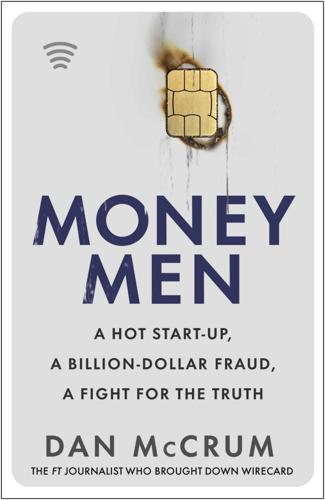
Money Men: A Hot Startup, a Billion Dollar Fraud, a Fight for the Truth
by
Dan McCrum
Published 15 Jun 2022
Arrangements were made with medical staff to attend, if needed. One of Marsalek’s gophers was dispatched to Moscow, collecting a suitcase full of pills from the airport and flying straight back. The villa’s medicine cabinet included Tamiflu, and a full box of the HIV treatment Lopinavir which some thought at the time might be effective against Covid-19. A cupboard was filled with emergency dressings, bandages, masks, gloves and bottles of gin-based hand sanitizers from a Hamburg distillery that made anyone who used them smell like an alcoholic. For his personal use Marsalek had a full-face gas mask with Corpro F1100 filters. Dr Rami was a regular presence by this time.
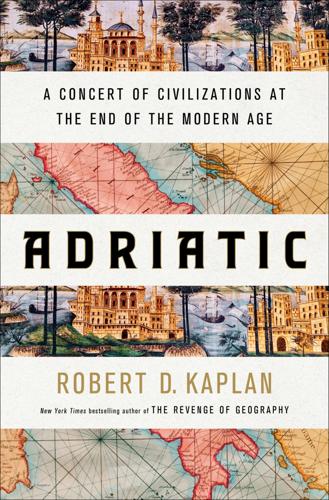
Adriatic: A Concert of Civilizations at the End of the Modern Age
by
Robert D. Kaplan
Published 11 Apr 2022
But now, along with the millions of migrants from the Middle East and Africa, quasi-Asiatic Russia threatens to slowly undermine Europe, just as some of the early modern philosophers feared. Everything I see here is so beautiful, I realize—erotic even. It is like paradise. But there is a sense of poignancy, even before the outbreak of Covid-19. It is as though what I am seeing in the streets and the cafés is already being consigned to the past. What is Europe? I ask myself. Where does it begin and end? And what will it become? * * * — The questions are becoming clear now. Rimini has started me on an inner journey whose terminus I cannot yet foresee.

Our Enemies Will Vanish: The Russian Invasion and Ukraine's War of Independence
by
Yaroslav Trofimov
Published 9 Jan 2024
W., 219–20 Bush, George W., 185 Buzki Park (Kherson), 78, 330 C Carpathian Sich Battalion, 298–300, 346 Battle of Izyum, 199–204, 205, 272–73 Battle of Lyman, 298–99, 304, 310–12 Battle of Terny, 299–300, 302–4, 341 Maria “Vozhata” medic in, 300–303, 312, 329 casualties, 19, 139, 142, 168, 223, 239, 255, 264, 268, 306, 337, 347, 348, 350 Catherine the Great, 248 Central Intelligence Agency (CIA), 21–22, 29–30, 47 Chance, Matthew, 49 Chasiv Yar, 342 Chechen fighters, 89–90, 137–39, 170, 226, 228, 339 Chechnya, 26, 137–39, 170 Chernihiv, 31–32, 104–5, 152–53 Chernov, Mstyslav, 136 China, 246, 346, 356 Battle of Mukden, 271–72 Chishmy, 191 Chornobyl, 37, 49, 54 Chornobyl nuclear disaster of 1986, 37, 54, 109 Chornovol, Tetyana, 104 Chuhuyiv Air Base, 74 Churchill, Winston, 23 Cichocki, Bartosz, 159 conscription, 26, 268, 278 conspiracy theories, 126 Constitution Square (Kharkiv), 119, 120 COVID-19 pandemic, 6, 37, 128 Cracow, 145, 302 Crawford, Bradley, 253 Crimea, 76–77, 86, 265 annexation by Russia, 1–2, 13, 14–17, 19, 277 NATO and Zelensky, 151 Crimean Bridge, The: Made with Love!

The Mysterious Mr. Nakamoto: A Fifteen-Year Quest to Unmask the Secret Genius Behind Crypto
by
Benjamin Wallace
Published 18 Mar 2025
GO TO NOTE REFERENCE IN TEXT internet ideology called neoreaction: Rosie Gray, “Behind the Internet’s Anti-Democracy Movement,” The Atlantic, February 10, 2017. GO TO NOTE REFERENCE IN TEXT what they called the Cathedral: Curtis Yarvin, “A brief explanation of the cathedral,” Gray Mirror, January 21, 2021. GO TO NOTE REFERENCE IN TEXT attributed the covid pandemic to a Jesuit conspiracy: James Donald, “Covid 19 and the Faith,” Jim’s Blog (blog), February 28, 2023. GO TO NOTE REFERENCE IN TEXT the extropians listserv had kicked him out: Harry Shapiro, “Meta: Judgement,” EX, November 11, 1993. GO TO NOTE REFERENCE IN TEXT In 2014, Slate Star Codex: Scott Alexander, comment on “Typical Mind and Disbelief in Straight People,” Slate Star Codex (blog), March 20, 2014.

Tripping on Utopia: Margaret Mead, the Cold War, and the Troubled Birth of Psychedelic Science
by
Benjamin Breen
Published 16 Jan 2024
Finally, I received invaluable help from my research assistants Josephine Kim, Alexander E. Taft, and Paloma Ruiz. A special thank-you to Piper Milton, who helped me complete the line edits for the manuscript. I also want to acknowledge the generosity of those who made themselves available for interviews conducted by phone, email, or Zoom—often during the height of the COVID-19 pandemic, when many other things were on their mind. I am profoundly grateful to: Howland Abramson, Eliot Aronson, Jeff Bridges, Lois Bateson, Nora Bateson, Jonathan Beecher, Yvan Beaussant, Susan Block, Jerry Brown, Ann Druyan, Gary Dufresne, Robert Forte, John Foster, Leo Goldberg, Jean Houston, Bob Houlihan, Joi Ito, Laurence Jarvik, Jeffrey Jarvik, Robert Janiger, Lisa Kornetsky, David Kornetsky, David Lipset, Steve Mahon, Michael Maccoby, Daniel Métraux, Eric Miles, Deborah Nightingale, Noah Oderberg, Phillip Oderberg, Forrest Robinson, Gary Stern, Rick Trout, Andrew Weil, Marianne Weltmann, and Irvin Yalom, and those who agreed to speak off the record.
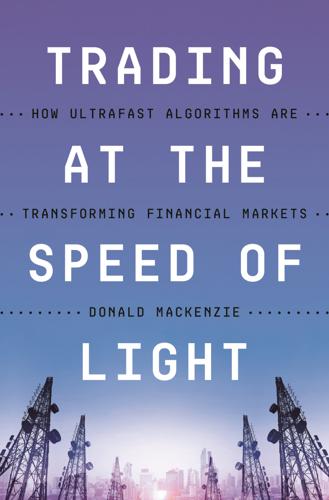
Trading at the Speed of Light: How Ultrafast Algorithms Are Transforming Financial Markets
by
Donald MacKenzie
Published 24 May 2021
Schifrin, Matthew, and Scott McCormack. 1998. “Free Enterprise Comes to Wall Street.” Forbes, April 6. Available at https://www.forbes.com/forbes/1998/0406/6107114a.html#18473b5d5300, accessed September 21, 2020. Schrimpf, Andreas, Hyun Song Shin, and Vladyslav Sushko. 2020. “Leverage and Margin Spirals in Fixed Income Markets during the Covid-19 Crisis.” Bank for International Settlements, Bulletin No. 2, April 2. Available at https://www.bis.org/publ/bisbull02.pdf, accessed April 20, 2020. Seabrooke, Leonard, and Eleni Tsingou. 2009. “Revolving Doors and Linked Ecologies in the World Economy: Policy Locations and Practice of International Financial Reform.”

Greater: Britain After the Storm
by
Penny Mordaunt
and
Chris Lewis
Published 19 May 2021
v=512389702820097 16 https://www.telegraph.co.uk/finance/personalfinance/7182362/Return-of-original-Fairy-Liquid-bottle-for-John-Noakes-generation.html 17 Chaired by Victoria Coren-Mitchell, the thinking man’s fentanyl. 18 https://www.imdb.com/title/tt0037367/ 19 https://www.telegraph.co.uk/news/newstopics/howaboutthat/5052956/Britons-spent-six-months-queuing.html 20 https://www.telegraph.co.uk/news/newstopics/howaboutthat/5052956/Britons-spent-six-months-queuing.html 21 https://www.who.int/westernpacific/emergencies/Covid-19/information/physical-distancing 22 https://www.bbc.co.uk/news/business-52874615 23 He became big in Albania. 24 https://www.imdb.com/title/tt1083452/ 25 http://www.aceldama.com/~tomr/media/dalek/blueprints/dal2_.gif 26 https://www.telegraph.co.uk/culture/tvandradio/11653529/Blakes-7-the-low-budget-late-70s-British-sci-fi-is-now-a-genuine-classic.html 27 http://www.thefa.com/football-rules-governance/lawsandrules/laws/football-11-11/law-11---offside 28 https://www.taxpayersalliance.com/new_research_the_length_of_tolley_s_tax_guides 29 https://www.britannica.com/place/London-Eye 30 https://www.telegraph.co.uk/culture/art/3574331/Pull-down-the-London-Eye.html 31 https://www.ons.gov.uk/peoplepopulationandcommunity/wellbeing/bulletins/socialcapitalintheuk/may2017 2 WHAT ARE WE GOOD AT?
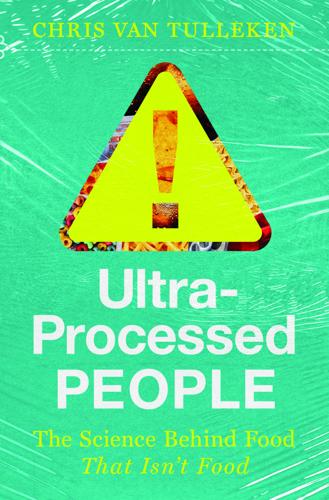
Ultra-Processed People: The Science Behind Food That Isn't Food
by
Chris van Tulleken
Published 26 Jun 2023
Abbott, 65, 179, 201, 296 ABC News, 101n Aboriginal Australians, 175 Accum, Frederick, 46 acetate, 88 Ad Hoc Joint Task Force, 65 Adane, Christina, 142–3 Addicted to Food (podcast), 168 Addicted to Food (Smith), 304 addiction, 9, 106, 151–68, 179, 206–7, 271, 303–4 additives, 208–21, 271, 272 regulation of, 225–33 ADHD (attention deficit hyperactivity disorder), 209 Advertising Association, 205n Advertising Standards Agency, 209 advertising, see marketing Africa, 246–7, 286 agriculture antibiotic resistance and, 266 meat production, 259–63 oil production, 258–9 Agyemang, Charles, 247 AIBMR Life Sciences, 233 Air Canada, 151 airline food, 151 alcohol, 9, 128n, 164, 166, 199 Aldi, 159, 160, 264 Algeria, 25 alginate, 22 allergic diseases, 216 Alliance for Potato Research and Education (APRE), 101n Alliance to Save our Antibiotics, 266 Allison, David, 100n Alpen, 52 Alzheimer’s disease, 62 Amazon, 264 Amazon region, 238–43, 248–9, 262, 263 American Academy of Paediatrics, 292 American Beverage Association, 101n American College of Sports Medicine, 133 American Journal of Clinical Nutrition,202 American Society for Nutrition, 65 Angola, 246, 286 anti-fat bias, 6 antibiotics, 216, 226, 230, 255, 266–7 antioxidant supplements, 47 anxiety, 156, 233 appetite regulation, 31, 34, 37, 41, 56–9, 104, 106–8, 160, 173 Apple, 140 Applebaum, Rhona, 133 apples, 171–2 Archer-Daniels-Midland (ADM), 240, 272, 277 Argentina, 262, 263 arms races, 1–4, 47, 74, 84, 86 arrowroot starch, 21 artificial colours, 205n artificial sweeteners, 5, 23, 90–91, 194n, 200–206, 209, 272 Asda, 159, 205n, 296 asthma, 214n, 216 astrology, 49–50 Atkins, Robert, 111, 116 atoms, 81 ATP (adenosine triphosphate), 82 Attia, Peter, 112 Auschwitz concentration camp, 73 Australasian Guideline, 292 Australia, 6, 80, 84, 140–41, 256 autoimmune diseases, 216 Avena, Nicole, 153–5, 167n, 168, 189 Awesome Chips, 140 baby food/formula, 93, 172n, 236, 274, 288–90 bacteria, 3, 4 butter and, 24 exudate, 22 first age of eating, 80–83 microbiome, 87–8, 155, 204, 213–21, 271, 272–3, 289 baked beans, 157–8 Ballarin, Oswaldo, 288, 289–90 Bank of England, 282 Barabási, Albert-László, 189 Barbosa, Felipe, 237 Barcarena, Brazil, 239–40, 265 BASF, 73 Batterham, Rachel, 35–7, 59, 61, 66, 145–6, 152 Bayer, 73 beef, 141–2, 189 farming of, 85–8, 92, 99, 190, 215, 260–61, 267, 274 protein isolates, 154 Belém, Brazil, 238, 248 Bellini, Alessandra, 297 BENEO, 65 Benin, 286 beriberi, 42 Berridge, Kent, 156n Bert, Paul, 103 beta-carotene, 47, 71 Bethesda, Maryland, 53 Better Food Index, 298 Biggest Loser, The, 54 Bilott, Rob, 212 Binley, Gary, 275 bisphenol A, 227 Bite Back, 297–8 bitter tastes, 194, 195, 196, 198–9 Black communities, 245–6 BlackRock, 282 bladder, 194n Blair, Steven, 122, 133, 134 blood fat profiles, 62 blood pressure, 109 blue whales, 102 Bluebell Capital, 282 BMI (body mass index), 50, 54, 138n, 242 body fat, 100–104 Bolton, Lizzie, 31 bones, 72, 85, 95–7, 175, 271 bonobos, 100 Boots, 296 Borneo, 259 Boston, Massachusetts, 139, 143 Boyland, Emma, 141 Boyle, Bob, 292 Bozer, Ahmet, 283 Brabeck-Letmathe, Peter, 284 Brazil, 6, 32, 41–5, 60, 75, 118, 157, 159, 236–43, 248–9 meat production in, 262, 263 plastic waste in, 268 soy industry, 239–40 traditional diet, displacement of, 43–4, 197–8, 236–49 bread, 173–4, 208–9 Break Free From Plastic, 267 breast cancer, 60, 62 breastfeeding, 42, 94–6, 130, 185, 187, 195, 214, 288–94 Brecon Beacons, Wales, 52 Bristol University, 25 British and Irish Legal Information Institute, 250 British Broadcasting Corporation (BBC), 53, 125, 139, 168 British Dietetic Association, 296 British Heart Foundation, 128, 296 British Journal of Nutrition, 75 British Medical Journal, 49, 60, 236 British Museum, London, 180 British Nutrition Foundation, 295 Broad Leib, Emily, 231, 233, 234, 243 Brochet, Frédéric, 182n Brown, Alan, 93 Brown, Amy, 293 Bunge Limited, 277 Burger King, 140, 173 Burkina Faso, 286 Burmese pythons, 88 butter, 24–7, 28n, 70–75 butyrate, 88 buy-one-get-one-free deals, 283 C-reactive protein, 160 Cabo Verde, 286 caesarean delivery, 214n caffeine, 198, 199 calcium, 85, 120, 191, 195 Caldwell, Carlyle ‘Corky’, 21 calories, 4–5, 38, 40, 92 artificial sweeteners, 23 energy-dense foods, 66, 176–7, 271, 301 exercise and, 122–36 regulation system, 102–8 restriction of, 54 UPF, 10, 11, 32, 36, 45, 48, 57, 58, 65–6, 72, 90 Cambridge University, 59, 107, 125, 252, 291 Cameroon, 286 Campbell Soup Company, 65 Canada, 6, 80, 106, 151 Cancer Research UK, 296 cancer, 6, 9, 45, 60, 189, 216, 218, 227, 232, 267 Cannon, Geoffrey, 119n canola oil, 28 Cant, Alasdair, 148, 167 Carb Killa, 154, 155 carbohydrates, 43, 109, 111–17 carbon dioxide, 80, 81, 260, 263, 272 carbon, 80, 81–2, 85 carbon-chain saturation, 24 carboxymethylcellulose, 211, 217–19, 302 cardiovascular disease, 61, 62, 137, 189, 231 Cargill, 142, 277, 295 Carmody, Rachel, 88–9 Carney, Mark, 282, 283 carnivores, 85 carotenoids, 188 Carr, Allen, 11, 153 carrageenan, 15, 22 cattle, 85–8, 92, 99, 190, 215, 274 Cell Metabolism, 34 cells, 1–3 cellulose, 87 Center for Science in the Public Interest, 112 Central African Republic, 286 Centre for Industrial Rheology, 23 Centre for Social Justice, 296 Centre for the Study of the Senses, 180 Cereal Partners Worldwide, 64 Chad, 286 Change4 Life, 205 Channel 4 News, 125 Chauvin, Derek, 245 cheese, 46 Cheeselets, 254 Cheetos, 299 chemotherapy, 267 chewing, 174–5, 177, 183, 272 chewing gum, 212 Chi-Med, 285 Chicago, Illinois, 93, 130 chicken, 261–2, 264 chicken nuggets, 159 Chile, 299 chimpanzees, 3, 46, 89n, 100 China, 61, 247, 268, 291 chlorine, 81n, 85 chlorine dioxide, 229 cholecystokinin, 105n Christianity, 101 Chukotka, Russia, 186n cigarettes, see smoking CIMMYT, 65 cinnamon, 185n Citigroup, 276 climate change, 6, 255–68, 272 Clooney, George, 290 Clostridium difficile, 221 coal, 69–75, 90 cobalt, 85 Coca-Cola, 101n, 120, 121, 158, 187, 198–202, 283–4 cocaine and, 198 plastic waste, 267–8 research funding, 133–6, 295, 296 sugar in, 198–202 cocaine, 164, 166, 198, 199 Coco Pops, 30–31, 37, 38–40, 48, 172, 173 cocoa mass, 31 coconut fat, 29 coconut palms, 258 cod liver oil, 97 Code, The, 290 Colloid and Polymer Science, 71 Columbian exchange, 255n Compass Group/Chartwells UK, 297 Compass, 296 Conagra, 295 conflicts of interest, 64, 132–6, 178–9 Congo region, 118, 286 constipation, 157 Co-operative Group, 159, 205n, 264 copper, 85 Cordara, Roderick, 252, 254 corn, 21, 118, 225–6, 228, 229–30, 273 Corn Oil ONE, 225–6, 228, 229–30 coronary thrombosis, 45 cortisol, 143 cost-of-living crisis (2022–), 17–18 Costa Coffee, 140, 217, 297, 301 Costa Ferreira, Paula, 241, 243 Costcutter, 205n Côte d’Ivoire, 286 cottonseed oil, 27, 28 Covid-19 pandemic, 147 cows, see cattle COZ corn oil, 225–6, 228, 229–30 Cranswick’s, Hull, 264 Crawley, Helen, 295 Cream o’ Galloway, 19 Creed, Greg, 247 Crisco, 28 Crohn’s disease, 62, 216, 219 Crunchy Nut Clusters, 52 cyclamate, 201 Da Costa Louzada, Maria, 159–60, 301, 303 damascenone, 188 dandruff, 90 Danone, 65, 179, 201, 281, 282, 286, 292, 295, 296, 297 DATEM, 208, 211–13, 302 Davis, Clara, 46, 93–9 De Graaf, Kees, 178 Death in the Pot (Accum), 46 death, 6, 7, 47, 62, 189 Degesch, 73 dehydration, 198 delayed gratification, 148–9 Deliveroo, 297 Deltas, 254 dementia, 7, 62, 189 Democratic Republic of the Congo, 286 Denmark, 191 Department for Environment, Food & Rural Affairs (UK), 124, 132 Department of Agriculture (US), 112, 189 depression, 62, 132, 227, 233 Deutsche Fettsäure Werke, 70 diabetes, 35, 62, 110, 198, 201–4, 216, 218, 220, 227, 241 Diabetes UK, 296 diacetyl, 70–71 Diagnostic and Statistical Manual of Mental Disorders, 164 diamorphine, 164 Dicken, Sam, 59–64, 66, 152 Dickinsonia costata, 83–4 diet experiments Hall, 55–9, 66, 175–6 Taubes, 112–15 van Tulleken, 35–7, 66, 102, 152–63 digestion ponds, 212 dimethylpolysiloxane, 244 diphosphates, 151 DNA (deoxyribonucleic acid), 2–3, 85 dogs, 184–5 dolphins, 197 Domino’s Pizza, 247n dopamine, 105n, 156n Dorito Effect, The (Schatzker), 187 Doritos, 52, 251, 254 dose-dependent effects, 60 doubly labelled water sub-studies, 126–7, 129–30 Dr Pepper, 299 dreams, 156 dryness, 176 Duke University, 129 DuPont, 212–13, 229 Dusty Knuckle Potato Sourdough, 174 dysbiosis, 216–17, 234 dyspepsia, 62 E numbers, 210, 211, 244 Easy Way to Stop Smoking, The (Carr), 11, 153 eating, 4, 76, 79–99 first age of, 76, 79–83 second age of, 83–90, 100 third age of, 90–99, 108 emotional problems and, 147 instinct, 92–99 speed of, 177–8 Ebersole, Kara, 130 ecstasy, 68 edamame, 240, 261 Ediacara Hills, South Australia, 84 Edmonton, Alberta, 106 Egypt, ancient, 101 electrons, 82 elephants, 100 emulsifiers, 15, 17, 18, 19, 36, 154, 155, 160, 211 microbiome and, 217–19, 271, 272–3 endocrine system, 104, 108, 131, 272 Endres, John, 233 energy density, 66, 176–7, 271, 301 Eno, 285 Environmental Protection Agency (US), 212 environmental, social and governance (ESG), 278, 282 enzymes, 25, 26, 27n, 81n, 85, 86, 89 epilepsy, 116 Equatorial Guinea, 286 European Food Information Council, 66 European Journal of Clinical Nutrition, 113 European Union (EU), 210, 233–4 Evonik Industries, 73 exercise, 122–36 Exercise is Medicine campaign, 133, 134, 136 Faber, Emmanuel, 282 Fahlberg, Constantin, 90 Fanta, 299 Fardet, Anthony, 171 Farooqi, Sadaf, 107 fats, 24–9, 43 hydrogenation, 26–7, 33, 231, 246 RBD (Refined, Bleached & Deodorized), 28–9 weight gain and, 110 fatty acids, 188–9 fatty liver disease, 62 feedback systems, 104, 108 Feingold, Ben, 209 FermaSure XL, 229 fertilisers, 257 fertility, 27, 131, 155, 227, 230, 233, 272 fibre, 55, 57, 60, 87, 155, 157, 171, 189, 215 Fidelity, 281 Finland, 175 First Steps Nutrition, 205, 295 fish oil, 47 Fisher, Franz, 69 Fitness Industry Association, 205n Five Guys, 140 fizzy drinks, 120–21 Flavor and Extract Manufacturers Association (FEMA) 232 flavour; flavouring, 180–92, 193–207 enhancers, 193–4, 209–10 Fletcher, Paul, 163 Flössner, Otto, 71–2, 75 Floyd, George, 245 fluorine, 81n, 85 Food Additives Amendment (US, 1958), 227 Food and Drug Administration (US), 210, 225–32 food deserts/swamps, 139–40, 142–4 Food Foundation, 17–18 food matrix, 171, 191, 271 Food Standards Agency (UK), 40n, 210, 292 food waste, 128 FooDB database, 189 Forde, Ciarán, 64–5, 178–9 ‘forever chemicals’, 212 frailty, 62 France, 17, 60 free school meals, 142 Freeze Pops, 15 fried chicken, 245 Friedman, Milton, 282 Froneri, 279–81 Frosties, 299–300 fruit, 183 concentrate, 157 Gabon, 286 Galilei, Galileo, 109, 117 Gambia, 286 garlic, 189 Gearhardt, Ashley, 165 General Mills, 65 generally recognized as safe (GRAS), 228, 229, 230, 232 genes; genome, 1–3, 126, 138, 144–5, 147, 148, 177 Germany, 17, 68–75, 90–91 Ghana, 246–7, 286 ghrelin, 105n Gibney, Mike, 64 gingerbread men, 251 Global Energy Balance Network, 123, 133 glucose, 15, 31 glutamate, 193, 195 glycerine, 17, 18 ‘Good Cook, The’ (Olney), 44 Google, 140 Gordon, Aubrey, 50n Göring, Hermann, 71 gossypol, 27 Greece, ancient, 101 Greenland, 80 Greenpeace, 298 Greggs, 140, 302 Grenade, 154, 155 Grocer, The, 151 Growing Up in Singapore, 177 GSK, 285 Gü, 156n guanylate, 193, 195, 196 guar gum, 15, 17, 19, 22 Guardian, 245 Guinea, 286 Guinea Bissau, 286 gums, 15, 17, 18, 19, 22, 23, 220, 272 Hackney Gelato, 15, 16 Hadean period, 79–80 Hadza people, 129–32 haem iron, 192 Haleon, 285 Hall, Kevin, 32, 34, 35, 51, 53–9, 60, 63, 106–7, 113, 168, 172 diet experiments, 55–9, 66, 175–6 Haribo, 52 Harper’s Weekly, 28n Hart, Paul, 16–29, 33, 66–7, 154, 188, 189, 206, 275–6 Harvard University, 88, 109, 114, 116, 159, 175, 231 Harvest Frost, MV, 240 heart disease, see cardiovascular disease Heath, Allister, 125 heavy water, 127 hedonic overdrive, 107 height, 8, 191 Heinz, 23, 158 Helicobacter pylori, 218 Hellmann’s, 23, 36 Henderson, Earl, 94–8 Henkel, Hugo, 70 herbicides, 257 herbivores, 85–8 heroin, 164, 199 Hershey, 295 Hervey, G.

Unknown Market Wizards: The Best Traders You've Never Heard Of
by
Jack D. Schwager
Published 2 Nov 2020
If someone comes on talking about something I’m interested in, I’ll turn the volume up. I already know what they’re going to say because they all say the same thing. If the market has been going down, they will make the bearish argument. Recently, on this rebound off the March low [the March 2020 low, which followed the huge selloff triggered by events related to the COVID-19 pandemic], you kept on hearing lines like: “The market doesn’t make any sense right here.” “The low is not in.” “The market has gone up too far, too fast.” In the meantime, the market has continued to rally further. All these people think they are smarter than the market. Again, I’ve been there.
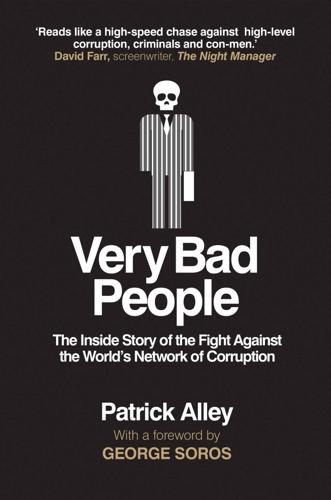
Very Bad People: The Inside Story of the Fight Against the World’s Network of Corruption
by
Patrick Alley
Published 17 Mar 2022
‘We contacted loads of private-sector firms that we knew on the TI side of things, asking them to write letters to the minister or to No. 10. We got Conservatives in the House of Lords to write to No. 10.’ Together we succeeded in holding the Boris Johnson government to Cameron’s original pledge. But then another curveball came in the form of Covid-19, which completely subsumed parliamentary business. We hope that the pledge will survive into the next parliamentary session, but we’re not complacent about that. On 29 May 2019, a ten-bedroom mansion in The Bishops Avenue, Hampstead – one of London’s most expensive streets – was hit by an Unexplained Wealth Order (UWO) secured by the UK’s National Crime Agency (NCA).
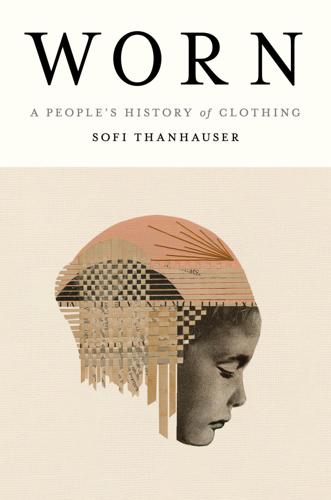
Worn: A People's History of Clothing
by
Sofi Thanhauser
Published 25 Jan 2022
It relies on a labor pool of agricultural workers who, like garment workers, often toil in dangerous conditions without hope of union protections. The products travel along pathways carved by centuries of colonial control. The system devastates the land, it is wasteful, and as we learned when the COVID-19 crisis erupted—it is insecure. It is designed to realize returns on capital rather than to nurture bodies. It is cheap for the consumer because it externalizes cost. Avoiding the system entirely can have connotations of privilege and elitism. As we spoke, I felt more and more hopelessness over the situation.

Ten Steps to Nanette: A Memoir Situation
by
Hannah Gadsby
Published 15 Mar 2022
Defenders of the ad might argue that the “only” was simply about identifying those whom the AIDS epidemic was affecting, and not a statement of this demographic’s value to the community. To which I would say: If you’re such a genius at mass messaging then you should be aware of how the word “only” would work in the minds of those who are already looking for ways to subjugate the humanity of the people who are listed after the word “only.” Take the early framing of the COVID-19 pandemic as a case in point: to say that at first it “only” affected old people is both wrong and wrong. The Grim Reaper ad campaign was supposedly cut short because it gave children nightmares. That nobody predicted this outcome at the pitch meeting is thoroughly astounding to me. Despite the fact that it only ran for a few months, this ad is seared into my mind alongside all the other ads, but for very different reasons.
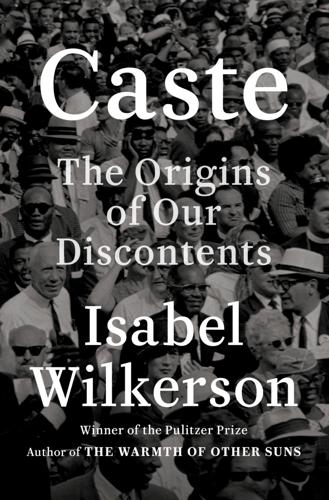
Caste: The Origins of Our Discontents
by
Isabel Wilkerson
Published 14 Sep 2020
Then the worst pandemic: Dan Diamond, “Trump’s Mismanagement Helped Fuel Coronavirus Crisis,” Politico, March 7, 2020, https://www.politico.com/amp/news/2020/03/07/trump-coronavirus-management-style-123465; Michael D. Shear et al., “The Lost Month: How a Failure to Test Blinded the U.S. to Covid-19,” New York Times, March 28, 2020, https://www.nytimes.com/2020/03/28/us/testing-coronavirus-pandemic.html; David Frum, “This Is Trump’s Fault: The President Is Failing, and Americans Are Paying for His Failures,” Atlantic, April 7, 2020. https://www.theatlantic.com/ideas/archive/2020/04/americans-are-paying-the-price-for-trumps-failures/609532/.
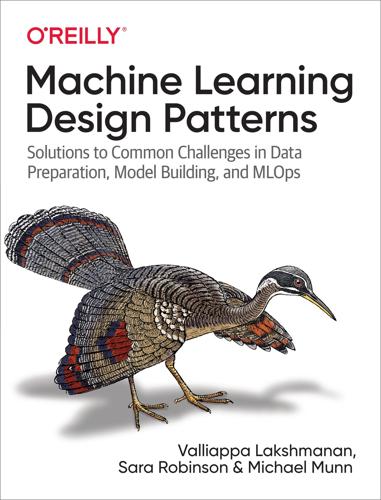
Machine Learning Design Patterns: Solutions to Common Challenges in Data Preparation, Model Building, and MLOps
by
Valliappa Lakshmanan
,
Sara Robinson
and
Michael Munn
Published 31 Oct 2020
To my parents, thank you for being my biggest fans since day one and encouraging my love of technology and writing for as long as I can remember. To Ally, Katie, Randi, and Sophie—thank you for being a constant source of light and laughter in these uncertain times. Lak: I took on this book thinking I’d get to work on it while waiting in airports. COVID-19 made it so that much of the work was done at home. Thanks Abirami, Sidharth, and Sarada for all your forbearance as I hunkered down to write yet again. More hikes on weekends now! The three of us are donating 100% of the royalties from this book to Girls Who Code, an organization whose mission is to build a large pipeline of future female engineers.
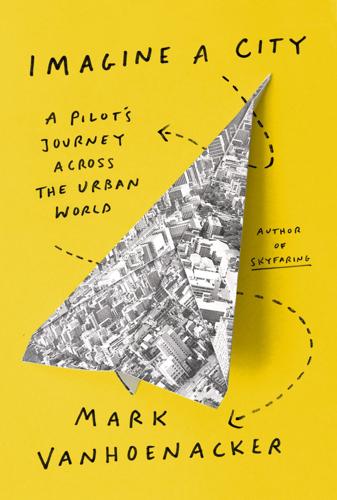
Imagine a City: A Pilot's Journey Across the Urban World
by
Mark Vanhoenacker
Published 14 Aug 2022
I’m off to Heathrow, to board an airliner that will carry many tons of cargo to Miami, and less than a dozen passengers, though every seat in several entirely empty sections of the cabin will be carefully arranged with still-wrapped blankets and headsets. For several months after the pandemic began, I flew nowhere. In this period several friends became ill with COVID-19, and an elderly relative died from it. Some of my colleagues retired early. A number of others, including many of those who had come to aviation most recently, were furloughed or lost their jobs, along with so many who work in travel and tourism all around the world. Eventually, I began to fly perhaps half a normal schedule, including some flights with entirely empty passenger cabins but bellies full of cargo: pets, bags of letters, enough gold and pallets of banknotes to remind me that the world’s financial system isn’t yet entirely virtual, tens of tons of Scottish salmon, and medical supplies whose technical descriptions my colleagues and I would read out to each other from the cargo manifest with heightened interest and a new kind of pride: “diagnostic probes,” “reagents,” and “perishable cargo—antibody.”
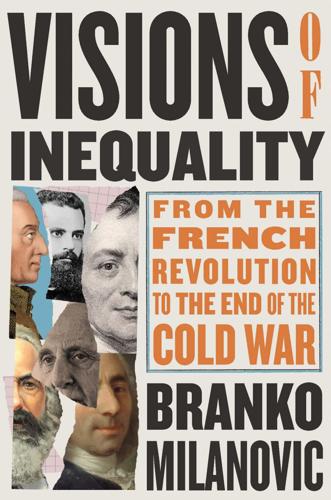
Visions of Inequality: From the French Revolution to the End of the Cold War
by
Branko Milanovic
Published 9 Oct 2023
It was only after the ideological competition of the two systems ended that inequality studies revived, reinvigorated not only by the end of the ideological “prohibition” against looking at social classes and inequality, but also by the rising inequality in most countries of the world. Thus, I think, work on income distribution has a bright future—the subject of the book’s Epilogue. I wrote these chapters during the first year and a half of the COVID-19 pandemic, at first while practically secluded in my house in Washington, DC, and then while I was “free” to move, but not fully. Comments I received while writing reflect this unusual situation. On the one hand, I was able to present my work in progress remotely to audiences in many parts of the world—sessions that certainly would have been more difficult and more costly to organize in person.
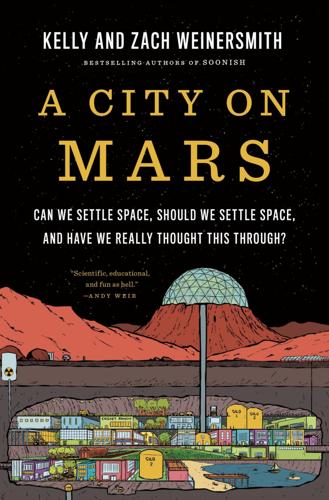
A City on Mars: Can We Settle Space, Should We Settle Space, and Have We Really Thought This Through?
by
Kelly Weinersmith
and
Zach Weinersmith
Published 6 Nov 2023
Proceedings of the National Academy of Sciences 110 (2013): 2635–40. https://doi.org/10.1073/pnas.1212646110. Bazzi, Samuel, Martin Fiszbein, and Mesay Gebresilasse. “Frontier Culture: The Roots and Persistence of ‘Rugged Individualism’ in the United States.” Econometrica 88 (2020): 2329–68. https://doi.org/10.3982/ECTA16484. ———. “ ‘Rugged Individualism’ and Collective (in)Action during the COVID-19 Pandemic.” Journal of Public Economics 195 (2021): 104357. https://doi.org/10.1016/j.jpubeco.2020.104357. BBC. “Kosovo Profile.” BBC News, April 12, 2021. https://www.bbc.com/news/world-europe-18328859. Beardslee, Luke A., Ben D. Lawson, and David P. Regis. “An Overview of the Unique Field of Submarine Medicine.”
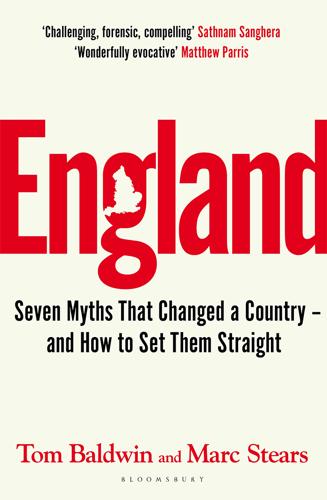
England: Seven Myths That Changed a Country – and How to Set Them Straight
by
Tom Baldwin
and
Marc Stears
Published 24 Apr 2024
, New York, Ticknor & Fields, 1855, p. 228. 80 See https://www.kiplingsociety.co.uk/poem/poems_englishflag.htm 81 See https://www.kiplingsociety.co.uk/poem/poems_burden.htm 82 Joseph Chamberlain, quoted in Julian Amery, The Life of Joseph Chamberlain V, London, Macmillan, 1969, p. 31. 83 See, for instance, https://www.historic-uk.com/CultureUK/Legend-Of-Drakes-Drum/ 84 See John Grindrod, Concretopia, London, Old Street, 2014; Jeremy Gould, Plymouth: Vision for a Modern City, Swindon, English Heritage, 2010. 85 See https://new.plymouth.gov.uk/plymouth-report 86 See https://www.plymouth.gov.uk/sites/default/files/VAWG_Report.pdf 87 Karl McDonald, ‘How David Davis promised the earth’, The i, 18 July 2016. 88 See https://www.npr.org/2019/09/23/763452863/transcript-greta-thunbergs-speech-at-the-u-n-climate-action-summit 89 ‘Greta Thunberg’, BBC News, 14 August 2019. 90 Mattha Busby, ‘Arron Banks jokes about Greta Thunberg’, Guardian, 15 August 2019. 91 See https://www.weforum.org/agenda/2019/04/these-3-countries-are-global-offshore-wind-powerhouses/, and https://www.gov.uk/government/news/major-acceleration-of-homegrown-power-in-britains-plan-for-greater-energy-independence 92 ‘Parts of Plymouth which could vanish’, Plymouth Herald, 15 June 2021. 93 Sally Guyoncourt, ‘A young woman wears Walkers crisps’, The i, 18 September 2019; ‘Walkers launches recycling scheme’, BBC News, 10 December 2018. 94 ‘Nancy Astor’, BBC News, 28 November 2019. 95 See https://www.chathamhouse.org/2020/11/examining-impacts-uk-foreign-aid-budget-cut 96 ‘What Impact Will the Covid-19 Crisis Have?’, New Culture Forum, 21 June 2020; ‘The address where Eurosceptics and climate change sceptics rub shoulders’, Independent, 10 February 2016; ‘Sir John Hawkins Square signs’, Plymouth Herald, 23 March 2022. 97 Philip Churm, ‘Another female Tory councillor in Plymouth quits’, Plymouth Herald, 24 January 2023; ‘Plymouth council leader quits after approving cutting down of 110 trees’, Guardian, 23 March 2023. 3 HULL 1 Philip Larkin, ‘Here’, Collected Poems, ed.

Rocket Dreams: Musk, Bezos and the Trillion-Dollar Space Race
by
Christian Davenport
Published 6 Sep 2025
But as COVID raged throughout 2020 and into 2021, Bezos dedicated himself to Amazon, which had become a vital resource during the pandemic. As Blue Origin was starting its push on the Blue Moon proposal, Bezos wrote a note to Amazon employees, saying, “My own time and thinking is now wholly focused on COVID-19 and on how Amazon can best play its role. I want you to know Amazon will continue to do its part, and we won’t stop looking for new opportunities to help.” To keep up with demand—sales of cold and cough medicine jumped 862 percent—Amazon hired tens of thousands of new employees. And Bezos, who had largely concerned himself with the future of the company and long-term projects, was now focused on daily operations once again.
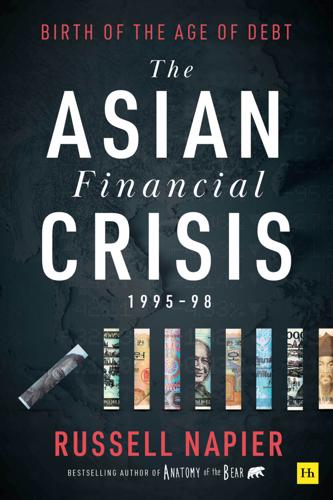
The Asian Financial Crisis 1995–98: Birth of the Age of Debt
by
Russell Napier
Published 19 Jul 2021
It also has a much larger aim, in that it seeks to show how that crisis led to the creation of a global financial architecture that produced the biggest debt boom in history. It is a debt boom that has, by 2021, already led to spectacular economic busts, mass insolvency, crippling unemployment, the displacement of millions of people and radical political change. With world debt-to-GDP ratios at record highs even before the impact of the Covid-19 induced economic crisis, the negative direct economic, social and political consequences from this age of debt will likely plague the global outlook for at least another generation. How the Asian financial crisis established the foundations for this new age of debt relates to the policy choices of the Asian authorities that were a direct consequence of the crisis.
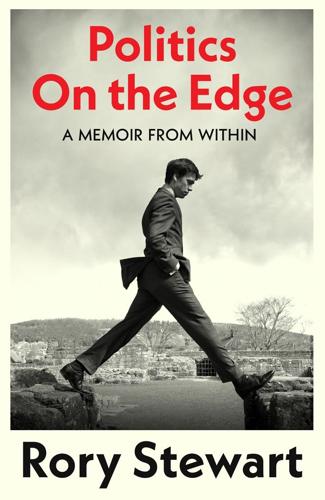
Politics on the Edge: The Instant #1 Sunday Times Bestseller From the Host of Hit Podcast the Rest Is Politics
by
Rory Stewart
Published 13 Sep 2023
A66 road, 38, 111, 129 abortion, 40 academy schools, 62–5 Achilles, 214 Adam, Robert, 329 Addison family, 48 Adonis, Andrew, 320 Afghanistan, 2, 3, 9, 11–15, 19–20, 21, 26, 34, 219, 342, 375 Af-Pak strategy, 81, 85 Anglo-Afghan War, Second (1878–80), 19, 119 Cameron and, 22–4, 81–4, 116, 126, 178, 186, 199, 215 DfID in, 193, 195, 197–9, 217, 219 Foreign Affairs Committee visit (2010), 87–90 Foreign Office in, 219 Harvard University and, 13–15 NATO war (2001–21), 13–15, 22–4, 41, 44, 57, 61, 80, 81–93, 116, 130 opium production, 184 Pakistan, relations with, 84 parliamentary debate on (2010), 84–7 police force, 23, 83, 90, 198–9 Soviet war (1979–89), 84 street names in, 88 ‘surge’ (2009), 81, 82, 87 Turquoise Mountain Foundation, see Turquoise Mountain Foundation walk across (2002), 9, 19, 77, 87, 404 Africa, 218–28, 328, 342, 369 Burundi, 220 Central African Republic, 224 Chad, 239 China, relations with, 231–2, 239 Democratic Republic of the Congo, 223, 232–3, 237, 238, 336–41, 342 Ebola in, 187, 288, 293, 336–41, 342, 369 Ethiopia, 193, 199, 219, 220, 223, 226, 251 Ghana, 264, 326, 333 Kenya, 199, 223, 225, 231–2 Liberia, 231, 336 Libya, x, 116–17, 131–2, 139, 186, 220, 227–8 Malawi, 226, 229 Niger, 239 Nigeria, 199, 223, 224, 226, 229 Sierra Leone, 231, 288 Somalia, 187, 223, 224, 231 South Africa, 225 South Sudan, 220–23, 231 Tanzania, 220, 223, 231 Uganda, 218, 220, 223, 231 Zambia, 223–4, 225–6, 229 Zimbabwe, 166, 223, 231, 234–7 air quality, 153, 160–65, 180 aircraft carriers, 123, 135 Akufo-Addo, Nana, 326 Albania, 37 Alston, Cumbria, 45–6, 71, 97, 98 American Revolutionary War (1775–83), 24, 73 Amery, Julian, 37 Amess, David, 388–9 Anderson, Catherine, 71–2 Anglican Church, 345 Anglo-Afghan War, Second (1878–80), 19, 119 Anglo-Boer War, Second (1899–1902), 24, 61 Angola, 340 Appleby, Cumbria, 43, 101, 106–7, 170, 173 Arab Spring (2011), 3, 50 Arabic language, 12 Areas of Outstanding Natural Beauty, 160 artificial intelligence (AI), 116, 145, 362, 396 Arusha Accords (2000), 220 Ashdown, Jeremy ‘Paddy’, 19, 26 al-Assad, Bashar, 131 Assessment, Care in Custody and Teamwork (ACCT), 280–81 Athenaeum Club, London, 365, 370 Atkinson family, 45, 48 Auchterarder, Perth and Kinross, 29 Aung San Suu Kyi, 196–7 austerity (2010–19), 50, 65–8, 99, 112, 122–3, 130, 135 prisons and, 249, 270, 274–5 authoritarianism, 396 Azande people, 222 Baker, Steven, 276, 280, 348 Balfour, Arthur, 1st Earl, 217 Balliol College, Oxford, 191, 214, 218 Bamiyan, Afghanistan, 23 Bampton, Cumbria, 97 Bande people, 222 Bangladesh, 190, 195, 196, 199, 225 Bangladeshi people, 30 Bank of England, 27 Banks, Arron, 378 Banyamulenge people, 340–41 Barking, East London, 375–6 Barnier, Michel, 282 Barwell, Gavin, 148 Basra, Iraq, 74 Bateman, Libby, 111 battery technology, 116 Battle of Agincourt (1415), 292 Battle of Maiwand (1880), 19 Battle of Trafalgar (1805), 86 Battle of Ushant (1778), 187 BBC Breakfast, 289, 373, 376 Beaton, Kevin, 288, 290, 292–3 Bedford prison, 283, 287, 299 Behr, Rafael, 65 Benghazi, Libya, 131 Beni, DRC, 338 Benn, Hilary, 117 Benyon, Richard, 124, 134, 155, 402 Bercow, John, 56 Berlin Wall, fall of (1989), 115 Berlin, Isaiah, 16 Bewcastle, Cumbria, 45, 46, 112–13 Bezos, Jeffrey, 110 Big Data, 145 Big Society, 21, 98–103, 147 bills, see legislation Birmingham, West Midlands, 86, 107, 388 Black Watch, 136, 394 BlackBerry, 109 Blair, Anthony ‘Tony’, 24, 27, 65, 125, 127, 182, 399 Brexit, views on, 313–14, 319, 321 Cameron and, 115, 116 Iraq invasion (2003), 84 peerages, issue of, 125 prisons policies, 257 Boer War, Second (1899–1902), 24, 61 Boko Haram, 224 Boles, Nicholas, 348 Bongate Weir, Appleby, 101 Borders development zone, 166 Bosnia, 9, 20, 55, 115, 116 Botswana, 223, 224 Boulton, Adam, 314, 390, 406 Bracknell, Berkshire, 36, 248 Bradford, West Yorkshire, 381 Brady, Graham, 319, 354 Brampton, Cumbria, 44, 97, 98, 206 Brazil, 38 breast cancer, 107 Brexit, 4, 50, 117, 264, 272, 277–80, 311–24, 342 African leaders and, 233, 326, 338 backstop proposal, 277, 312, 313, 319, 322, 324, 344, 355, 356, 409 ‘cakeism’ and, 278, 356, 392–3 Chequers plan (2018), 277–80, 282 customs union and, see customs union European Research Group, see European Research Group farming and, 181, 182, 189, 278–9, 382, 388, 412 immigration and, 277, 312, 319, 322, 360 indicative votes (2019), 322 media and, 312–13, 317, 318, 349, 356–7 no-deal prospects, see no-deal Brexit October 31 deadline, 372, 389, 392, 399, 406, 407–8 polarisation, 319–20, 356–7, 362 prorogation of Parliament (2019), 389–90, 397, 399 referendum (2016), 147, 148, 178–81, 182–3, 276, 370 second referendum campaign, 314, 315–17, 319–20, 323 trade deals and, 277–8, 392 transition period (2020), 355, 409, 411 Withdrawal Agreement negotiations (2018–20), 282–3, 311–24, 354, 363, 366, 380, 392, 408 Brigade of Guards, 345 British Airways, 87–8 British Broadcasting Corporation (BBC), 133, 147, 345, 363 Brexit and, 182, 313, 314, 320 Conservative leadership election (2019), 373–4, 376, 385 floods (2015), 172 Mugabe’s ouster (2017), 234 ‘primitives’ affair (2010), 114 Scottish independence referendum (2014), 136, 137 ten-prisons project and, 289 Brixton prison, London, 253–6, 296, 312 broadband, 99–100, 101, 109–11, 119–21, 124, 150 Brooks, Rebekah, 69 Brown, Andy, 171, 172–3, 176 Brown, James Gordon, 24, 53, 65, 81–2, 121, 138, 182, 257 Brussels, Belgium, 2 BT, 100, 110 Buckland, Robert, 391 Burley, Aidan, 55 burqas, 75, 346 Burundi, 220 Bush, George Walker, 32 Butembo, DRC, 338 Buttigieg, Peter, 365 Byng, John, 187 Caldwell, William, 83, 198 Cambodia, 203 Cameron, David, 19, 20, 21, 22–8, 32, 34, 37, 55, 115–17, 121–3, 185–6, 204 Afghanistan and, 22–4, 81–4, 116, 126, 178, 186, 199, 215 air pollution, views on, 160–65 austerity policies, 66–8, 99, 112, 122–3, 130, 135, 249, 270 backbench, views on, 27–8 Big Society, 21, 98–103, 147 binary decisions and, 178 business committee debates, 110 Cabinet, 69–71 candidate selection (2009), 20, 22, 25–8, 32, 34, 37, 39, 43, 51 chiefs of staff, 122 China, relations with, 116, 186 Clarke on, 69–71 coalition agreement (2010), 53–4, 125 Conservative Research Department, 27, 115 Defence Select Committee and, 133, 135 delivery unit, abolition of, 121 diversity and, 25, 186 EU membership referendum (2016), 147, 148, 178, 183 floods (2015), 174 Gauke, relationship with, 249 gay marriage policy, 67, 75, 115, 186 general election (2015), 145–9 global financial crisis (2008), 65, 116, 117 Greek bailout refusal (2011), 147 House of Lords policies, 57–8, 124–8, 141, 317 immigration policies, 122 international development policies, 67, 115, 123, 186, 193 interventionism, 115, 116, 131–2 Israel, relations with, 58 Iraq and, 24, 116, 117, 126 Johnson, relationship with, 216 leadership election (2005), 383 Libya intervention (2011), 116–17, 131, 186 open primaries, 39 Osborne, relationship with, 68, 115 Parliamentary Party, speech to (2010), 53 parliamentary year, extension of, 73 PMQs, first (2010), 56–8 Political Cabinet, 69 ‘Red Tape Challenge’, 159 resignation (2016), 28, 117, 183, 185 Russia, relations with, 116 Scottish independence referendum (2014), 138, 178, 186 Syrian War policies, 117, 130, 131–2, 134, 186, 317 team players, views on, 149 technology, views on, 116 UKIP, views on, 390 veteran MPs and, 75–6 Cameron, Lindy, 238 Cameroon, 220 campaigning general elections, 47–9, 145–8 leadership elections, 358–72, 373–87, 388–406, 407–15 local campaigns, 31–3, 36, 71, 103, 135 Campbell, Alastair, 333 Campbell, Leroy, 298–9 Canada, 16 Canute, King of England, 395 capital punishment, 41, 75 Carillion, 251 Carlisle, Cumbria, 30, 46, 147, 171 Carswell, Douglas, 57 Carthage, ancient, 214 Castle Carrock, Cumbria, 44 Castlerigg, Cumbria, 45 Catullus, 354 Cecil the lion, 166 Central African Republic, 224 Chad, 239 Chalk, Alexander, 146, 266 Charles I, King of England, Scotland and Ireland, 70 Charles III, King of the United Kingdom, 11, 12 Cheltenham, Gloucestershire, 146–7 chemical regulation, 152, 153, 154, 160, 178 Chequers, Buckinghamshire, 81–4, 178, 277 Chicago, Illinois, 325 chief whip, 53, 59 ‘children’s crusades’, 359 China, 3, 26, 109, 116, 117, 186, 203, 220, 360 Africa, relations with, 231–2, 239, 338 body-scanners in, 289 Taiwan, relations with, 396 Tibet, 213 WTO accession (2001), 116 Chinese language, 249 Chinese porcelain, 240 Christianity, 40, 41, 263–4, 265, 276, 277, 280, 345 Churchill, Randolph, 119, 219 Churchill, Winston, 24, 61, 73, 119, 123, 129, 343, 369 City of London, 181 Civil Contingencies Committee, 173 Civil Service, 3, 20, 45, 59, 68, 91, 136, 147, 182, 186, 188, 285 Cummings and, 370 Foreign Office, 224, 238 austerity and, 67 Penrith community schemes, 100, 102, 108, 111 DEFRA, 156, 168, 169, 177, 178 DfID, 190, 191, 195, 199–202, 333, 334 reshuffles and, 272 selection boards, 34, 42 Clarke, Kenneth, 68–71, 80, 117, 124, 322, 382, 386, 393, 396 Clegg, Nicholas, 122, 386 Cleverly, James, 383–4 climate change, 75, 187, 220, 330–31, 334, 361–2 Clinton, Hillary, 14, 15 Clooney, George, 220 coalition government (2010), 53–4, 122, 125, 154 Coates, Dawn, 98 cobalt, 375 Coffey, Thérèse, 187 Collins, Damian, 54 ‘Comical Ali’, 318, 347 committees, 53, 58, 65, 66, 71, 73, 99 common land, 97 Commonwealth Development Corporation, 203 Commonwealth, 224 community action, 98 computer modelling, 175–6 Conservative Home, 391, 396 Conservative leadership election (2019), 1–5, 343–57, 358–72, 373–87, 388–406, 407–15 Cleverly’s campaign, 383–4 Cummings and, 370, 379 customs union and, 344, 347, 355, 356, 366–7, 377 debates, 1–5, 397–400, 405–6, 407–15 Gove’s campaign, 1, 4, 386–7, 396–402, 404–6, 408–11, 412, 414 Hancock’s campaign, 374, 386, 397–8, 400, 402 Hunt’s campaign, 1, 4, 380, 386, 396–400, 403–6, 408, 411, 413–14 Irish border and, 372, 380, 381, 382, 383, 392, 409 Javid’s campaign, 2, 4, 371, 380, 386–7, 397–400, 404–6, 408–11, 414 Johnson’s campaign, 1, 2, 4, 371–3, 379–87, 389, 393, 396–8, 402–6, 407–12 media and, 354, 364, 369, 374, 376–9, 385, 388–9 no-deal Brexit and, 372, 378, 380, 385, 394, 388–9, 400, 403, 410 One Nation and, 344, 346–57, 363, 368, 374, 385–6, 389, 400, 402, 404 polling, 384, 387, 389, 396, 400 Raab’s campaign, 371, 374, 385, 396, 398–400 social media and, 374, 376–7, 379, 382, 383, 392, 404 Conservative Party coalition agreement (2010), 53–4 European Research Group, 276–7, 315, 317–18, 319, 324, 346, 347, 348, 350 leadership election (2005), 383 leadership election (2016), 183–6, 269 leadership election (2019), see Conservative leadership election local associations, 30–31, 35, 39 membership, 4, 5, 30–31 One Nation, see One Nation Research Department, 27, 115 Conservative Research Department, 27, 115 constituencies, 29–49, 97–114, 123, 384–5 surgeries, 103–6, 135, 203, 325, 367 Cook County Jail, Chicago, 325 Copernicus Satellite System, 159 Corbyn, Jeremy, 64, 205–7, 321, 322, 343, 357, 371, 395, 398 Cornish pasties, 125 corporation tax, 123, 396 Costa Coffee, Barking, 375–6 Costa Rica, 173–4 Côte d’Ivoire, 220 Cottingley Fairies hoax (1917–20), 377 council tax, 300–301 counter-insurgency, 10, 23, 81, 88–9, 91–2, 133 Coveney, Simon, 412 Covid-19 pandemic (2019–23), x, 3, 415 Cox, Brian, 404 Crieff, Perth and Kinross, 291–2 crime, 20, 69, 75 Crimea, 135, 138 critical thinking, 159 Crosby, Lynton, 122 Crowned Masterpieces of Eloquence, 61 Cuba, 205, 220 culture wars, 402 Cumberland and Westmorland Herald, 30, 38, 72, 129 Cumberland Building Society, 279 Cumbria, England, 29–31, 36, 37–49, 59, 62, 71–3, 97–114, 129 auction marts, 97 banks in, 97 Big Society in, 98–103, 147 Brexit in, 180, 278–9 broadband in, 99–100, 101, 109–11, 119–21, 124 common land in, 97, 101 community ownership in, 97, 101 Eden river, 29, 37, 43, 73, 106 farming in, 30, 37–8, 40, 44–9, 103, 112 floods (2015), 170–76 general election (2015), 147–8 general election (2017), 204–5 gypsy community, 106–7 hospitals in, 97, 98, 102 hydropower in, 101 as independent nation, 44 magistrates’ courts, 97–8 ‘middleland’ culture, 137 ministers, visits from, 108–9 mountain rescue in, 59–61, 97, 103 peat works, 98 police stations, 97, 98 pubs in, 97 schools in, 97, 98 snowploughs in, 97, 101 volunteer fire engines, 97, 98 Cummings, Dominic, 276, 370, 379 Curley, Stephen, 57 Curzon, George, 1st Marquess, 217 Cusack, Zak, 57 customs union, 178, 277, 312, 322–3, 324 leadership election (2019) and, 344, 347, 355, 356, 366–7, 377 Czechoslovakia, 16 Daily Express, 349 Daily Mail, 38, 113, 114, 165, 193, 229, 301, 349, 369, 374, 388–9 Daily Mirror, 356 Daily Telegraph, 19, 157, 179, 377, 378, 379, 395, 400 Dale, Iain, 36 Dari language, 12, 376 Dartmoor prison, 329 Davidson, Ruth, 368, 386 Davos, Switzerland, 115, 391 death penalty, 41, 75 debates, 52, 55, 58–65, 71 Defence Intelligence Service, 134–5 Defence Secretaries, 90–93 Defence Select Committee, 64, 77, 85, 86, 132–5, 151, 269, 345 defence spending, 123 Delivery Unit, 121 democracy, 10, 50, 71, 115–16 Democratic Republic of the Congo, 223, 232–3, 237, 238, 336–41, 342 Democratic Unionist Party (DUP), 276, 321, 323 Dent-Coad, Emma, 389 Department for International Development (DfID), 186–202, 203, 204, 217–41, 245, 286, 328–41, 342 Brexit and, 388–9 Cameron and, 67, 115, 123, 186, 193 Conservative leadership election (2019), 353–4 in Afghanistan, 193, 195, 197–9, 217 budget, 188, 189, 192–4, 229, 250, 328 in Bangladesh, 190, 195, 196, 225 climate change and, 330–31, 334, 361 in DRC, 336–41, 342 environment and, 330–31 Foreign Office and, 217 International Development Act (2001), 331 Johnson and, 229, 346, 347 in Kenya, 334 in Malawi, 226, 229–30 May and, 184, 328, 332 in Myanmar, 190, 195, 196–7, 217 in Nepal, 195, 199 in Nigeria, 226, 229 Single Departmental Plan, 331 in South Sudan, 222, 223 staffing, 328, 330 in Syria, 200–202, 217 in Zambia, 225–6, 229 Department of Communities and Local Government, 102 Department of Environment, Food and Rural Affairs (DEFRA), 151–9, 160–78, 186, 188, 245, 286, 332 air quality, 153, 160–65 chemical regulation, 152, 153, 154, 160, 178 European Union and, 175–6, 178, 180–81 floods, 153, 157–8, 160, 170–76, 188, 189 forestry, 153, 160, 176–8, 189 land management, 175–6, 189 litter strategy, 160, 166, 188, 239, 269 national parks, 153, 157, 160, 167–8, 189 plastic bags policy, 165, 167, 177 twenty-five-year plan, 168–9, 178 Department of Health, 249, 338 Department of Trade, 189 Department of Transport, 164 Derby, Derbyshire, 393, 394 Derry, Ulster, 383, 394 Derwent river, 175–6 Dharamshala, Himachal Pradesh, 71 diesel vehicles, 161, 165 Dinka people, 222 disability, 72, 109 Disraeli, Benjamin, 61 Dorries, Nadine, 346, 348 Doyle, Arthur Conan, 377 dreams, 130–31, 362–3 drones, 259, 262, 265, 287 Dubai, United Arab Emirates, 10 Dufton, Cumbria, 43 Duncan, Alan, 226 Duncan Smith, Iain, 27, 373–4, 390 Durand Line, 92 Durham prison, 299 East Germany (1949–90), 12 East Timor, 197 Ebola, 187, 288, 293, 336–41, 342, 369 Economist, The, 227 Eden District, Cumbria, 102 Eden river, 29, 37, 43, 73, 106 Edinburgh, Scotland, 182, 368, 379, 394 education, 130 academy schools, 62–5 learning difficulties, 72 prisons and, 270, 299, 303–4 Edward III, King of England, 106 Edward VII, King of the United Kingdom, 54 Eisenhower, Dwight, 276 elections 1997 general election, 27, 35 2001 general election, 27, 35 2005 general election, 36, 38, 48 2009 local elections, 31–3, 39 2010 general election, 43, 47–9, 51, 53–4 2014 European elections, 147 2015 general election, 145–9 2017 general election, 204–9, 276, 343 2019 local elections, 369; European elections, 369; general election, 416 see also Conservative leadership election elective dictatorship, 117, 317 electoral boundaries, 125, 128, 146 electric vehicles, 116 electronic tagging, 325, 330 Eliot, Thomas Stearns, 48, 56, 301 Elizabeth I, Queen of England, 125 Elizabeth II, Queen of the United Kingdom, 138, 321, 327, 332 emails, 107–8 English Civil War (1642–52), 43 English Heritage, 240 Enniskillen, County Fermanagh, 382, 412 Environment Agency, 101, 104, 153, 171–6, 188 Ethiopia, 193, 199, 219, 220, 223, 226, 251, 253 Eton College, Berkshire, 25, 149, 204, 214, 300 European Central Bank, 180 European Commission, 57, 162, 277 European Council, 318, 332 European Court of Human Rights, 139 European Court of Justice, 104, 277 European Research Group, 276–7 leadership election (2019), 346, 348, 350, 354 Withdrawal Agreement negotiations (2018–20), 315, 317–18, 319, 324 European Union air quality standards, 161–3, 180 elections (2014), 147 Environment Council, 161–3 land use and, 46–7, 72, 175–6 subsidies, 46–7, 72, 160, 175–6, 177, 178 see also Brexit; customs union Euroscepticism, 24, 41, 56, 86, 101, 115, 122, 133, 147, 180 see also Brexit Euston station, London, 377 Evening Standard, 29 expenses scandal (2009), 18–19, 29, 33, 34, 35, 36, 51, 52 Facebook, 116, 138, 145, 357, 371 Fall, Kate, 25 Fallon, Michael, 135 Farage, Nigel, 320 farming, 30, 37–8, 40, 44–9, 103 austerity and, 112 Brexit and, 181, 182, 189, 278–9, 382, 388, 412 DEFRA and, 152, 167, 177–8 subsidies, 46–7, 72, 160, 175–6, 177, 178 Farrar, Jeremy, 337 Father of the House, 56, 71 Fermanagh, Northern Ireland, 382 Finance Act (2010), 59 finance, 396 financial crisis, see global financial crisis Financial Times, 247, 360, 396 fire engines, 97, 98 first-past-the-post system, 207 Fix the Fell Volunteers, 367 floods, 153, 157–8, 160, 170–76, 188 food banks, 135 footpaths, 103–4 Foreign Affairs Select Committee, 77, 86, 87–90 foreign aid, see Department for International Development Foreign Office, 101, 157, 159, 188, 191, 245, 286, 294 in Africa, 216–28, 229–41 forestry, 46, 81, 153, 160, 176–8, 189 Forth Road Bridge, 29 Foss river, 173 Fox, Charles James, 73 Fox, Liam, 85–6, 90 Francois, Mark, 348 free ports, 10 free-market economics, 115, 206, 296 Fuentes, Carlos, 16 G7, 338 Gaddafi, Muammar, 139, 220 gajumaru trees, 25 Gang Index, 280 Garel-Jones, Tristan, 40 GATT 24, 412 Gauke, David, 248–52, 283, 284, 286–8, 297, 301, 321 leadership election (2019), 351–2, 357, 382, 396, 398, 406 gay marriage, 67, 75, 115, 186, 263, 276 Gedling, Nottinghamshire, 65 George Hotel, Penrith, 103 Germany, 80, 116, 223–4 ‘Get Brexit Done’ slogan, 371 Ghana, 264, 326, 333 Ghani, Ashraf, 197 Gladstone, William, 61, 129, 152 Glenridding, Cumbria, 173, 183 global financial crisis (2008), 3, 24, 65, 116, 117, 138, 356 globalisation, 115 Glorious Revolution (1688), 315 Goebbels, Joseph, 314 Goldman Sachs, 180, 264 Goma, DRC, 338 Good Friday Agreement (1998), 182, 383 Gore, Albert ‘Al’, 14 gossip, 56, 69, 80 Gove, Michael civil service, views on, 285 Defence Committee election (2014), 133 Environment Secretary (2017–19), 332 EU membership referendum (2016), 179, 276 Justice Secretary (2015–16), 249, 251, 296 leadership election (2016), 183, 185 leadership election (2019), 1, 4, 386–7, 396–402, 404–6, 408–11, 412, 414 leadership speculation (2019), 345, 347–8, 355–6 prisons and, 68–72, 249, 251, 295, 296 voting record, 118 Withdrawal Agreement negotiations (2018–19), 311 GQ, 374 Greece, 66, 147 Green Chip club, 347 Green, Damian, 386 Green, John, 254 Green, Mark, 221, 338 Green, Philip, 361 Gretna Green, Dumfries and Galloway, 137 Grey, Edward, 217 Guardian, 113, 175, 247, 297, 331, 356, 369, 373 Guido Fawkes, 77–8 Guinea, 336 Gummer, Benedict, 54, 140 Gyimah, Samuel, 51 gypsies, 106–7, 273 Hadrian’s Wall, 129, 136, 137 Hague, William, 22, 49 Hammond, Philip, 90–93 Hancock, Matthew, 149, 185 leadership election (2019), 374, 386, 397–8, 400, 402 leadership speculation (2019), 349, 355, 365, 368, 369 Hands Across the Border, 137 Hansard, 65, 139, 153 Hartlepool, County Durham, 65 Harvard University, 13–18, 27, 42, 84 Hatt, John, 38, 41, 42, 148, 165, 197 Have I Got News For You, 172, 216 Havel, Vaclav, 16 hawthorn trees, 177 healthcare, 26, 67, 97, 99, 164, 360, 361 Heath, Edward, 68–9, 184 hedgehogs, 140 Helmand, Afghanistan, 57, 89, 92, 198 Henry I, King of England, 70 Herat, Afghanistan, 87 Heseltine, Michael, 363 Hillsborough disaster (1989), 214 Hilton, Stephen, 100–102, 103 Hind, Damian, 148 historians, 54 HIV/AIDS, 337 Hobbes, Thomas, 368 Hogg, Douglas, 19 Holbrooke, Richard, 14, 15, 23, 85 homosexuality, 67, 75, 115, 186, 263, 276, 381 Hong Kong, 10, 398 Horace, 227 hospital car parking, 361 House of Lords, 57–8, 75, 124–8, 130, 141, 317 housing, 206, 360, 396 housing associations, 104 Howgill ridges, Cumbria, 111 HS2, 369 Hull, East Yorkshire, 176 prison, 291, 305–8 Hunt, Jeremy, 1, 4, 99–100, 119–21, 278, 311 leadership election (2019), 1, 4, 380, 386, 396–400, 403–5, 408, 411, 413, 414–15 leadership speculation (2019), 344, 355 Hurricane Katrina (2005), 170 Hussars, 263–4 Hussein, Saddam, 9, 16, 214, 318, 347 Hutton, Cumbria, 72–3 Hyde Park, London, 311, 358, 364, 380–81 hydropower, 101 Ignatieff, Michael, 15–18, 27, 28, 37, 359, 390 immigration, 20, 24, 75, 122, 277, 312, 346, 360 Imperial Chemical Industries (ICI), 151, 187 income tax, 396 India, 9, 38, 117, 138, 198, 219, 227 Indonesia, 9, 22, 25, 27, 191, 197, 213 inheritance tax, 345 Instagram, 157 Inter-Services Intelligence Agency (ISI), 84 International Committee of the Red Cross, 333 international development, see Department for International Development International Development Act (2001), 331 International Monetary Fund (IMF), 236 interventionism, 9, 19–20, 115, 116, 186, 231 Iran, 9, 27, 214, 227, 335, 378 Iraq, 3, 9–11, 15, 19, 20–21, 22, 34, 41, 78–9, 130 Cameron and, 24, 116, 117, 126 Clarke and, 80 DfID in, 190 Ignatieff and, 16 Johnson’s visit (2005), 213–16 Parliamentary debate (2003), 84 prorogation and, 399 Red Cross in, 333 tribal leaders in, 107 veterans in, 74–5 Ireland backstop proposal, 277, 312, 355, 409 border, 277, 278, 279, 318, 322, 354–5, 356, 380, 382, 409, 412 Good Friday Agreement (1998), 182, 383 Irish Sea border prospects, 323, 344, 356, 372, 381, 392 peace in, 278, 279, 312, 354, 356, 383 Irrawaddy river, 38, 197 ISIS (Islamic State), 50, 134, 138–9, 214, 216 Islamism, 329 Israel, 58, 220 ITV, 395 Jakarta, Indonesia, 191 James and John Graham (grocers), 103 James II, King of England, Scotland and Ireland, 187 Japan, 2, 223, 417 Javid, Sajid, 2, 4, 51, 140 leadership debates, 398–400, 408, 409, 410 leadership election (2019), 371, 380, 386, 397, 404–6, 408–11, 414 leadership speculation (2019), 355 John, King of England, 395 Johns Hopkins University, 197 Johnson, Alexander Boris, x, 149, 213–17, 286, 346, 357, 381–2 ‘cakeism’, 278, 356, 392–3 Chequers plan (2018), 278, 280, 282 EU membership referendum (2016), 179, 216 Foreign Secretary (2016–18), 216–20, 225, 226–8, 232, 236, 238, 278, 346 ‘fuck business’ comment (2018), 397 general election (2017), 207, 208, 343 international development, views on, 229, 346, 347 Iraq visit (2005), 213–16 Irish border, views on, 372, 380, 381, 392, 406, 409, 411, 412 leadership debates (2019), 1, 2, 4, 407–12 leadership election (2016), 183, 185, 269 leadership election (2019), 371–2, 373–4, 377, 379–87, 389, 393, 396–8, 402–6 leadership speculation (2019), 343, 346–57, 358, 370 Lebedev, relationship with, 219 London mayoralty (2008–16), 179, 209 no-deal, views on, 347, 354–5, 370, 372, 373, 380, 385, 403, 410, 415 October 31 pledge, 372, 389, 392, 399, 406, 407–8 prorogation of Parliament (2019), 389–90, 397, 399, 415 Withdrawal Agreement negotiations (2018–20), 314, 321, 323, 347 Johnson, Joseph ‘Jo’, 185 Jordan, 225, 333, 364 Joy King Lau, London, 370 Juba, South Sudan, 221, 222, 223 Juncker, Jean-Claude, 122 Justice Select Committee, 266 Kabila, Joseph, 232–3, 237, 338, 341 Kabul, Afghanistan, 16, 190 Cameron’s visit (2009), 22–4, 215 DfID in, 197–9 Foreign Affairs Committee visit (2010), 87–90 Turquoise Mountain, see Turquoise Mountain Foundation Kampala, Uganda, 218 Kandahar, Afghanistan, 14 Karzai, Hamid, 84, 88–9 Keegan, Gillian, 393 Kendal, Cumbria, 48, 173 Kenya, 199, 223, 225, 231–2, 261, 334 Kenyatta, Uhuru, 231, 334 Kerry, John, 14, 15, 23, 86 Keswick, Cumbria, 173, 175–6 Kevlar, 88 Kew Botanical Gardens, Richmond, 376 KGB, 219 Khan, Sadiq, 122 Kigali, Rwanda, 338 Kiir, Salva, 221 Kim (Kipling), 18 Kinshasa, DRC, 233, 341 Kipling, Rudyard, 18 Kirkby Stephen, Cumbria, 43, 44, 101, 111 Kissinger, Henry, 110 knighthoods, 76, 361 Kosovo, 9, 115 Kunar, Afghanistan, 376 Kurdish people, 16 Kwarteng, Kwasi, 51, 54, 56, 147, 349 Labour Party, 20, 31, 33, 34, 35, 99, 117 academy schools and, 62 amendments, 59, 62 Brexit negotiations (2018–20), 321, 322, 363 crime policies, 301 DEFRA and, 154 economy and, 122 floods (2015), 175 general election (2015), 148 general election (2017), 205–7 Iraq War and, 20, 84, 214 leadership election (2015), 343 local associations, 35 Russia, relations with, 117 Stewart’s membership, 20, 34, 78 Trotskyite left, 35 Lake District, 38, 45, 167 lamb, 182, 382 see also sheep farming Lancashire floods (2015), 171, 173, 174 Langwathby, Cumbria, 112 Lansley, Andrew, 81 Law and Justice Party (Poland), 117 Lawrence, Thomas Edward, 15 Lazonby, Cumbria, 97, 98 LBC, 313, 373–4 Leadsom, Andrea, 185, 351 learned helplessness, 249, 252 learning difficulties, 72 Lebanon, 199, 224 Lebedev, Evgeny, 219 Lee, Phillip, 36 Leeds, West Yorkshire, 160 prison, 288, 292, 303 legal aid, 250 legislation, 52–3, 58–61, 71, 99, 118 Leicester Square, London, 370 Leslie, Charlotte, 148 Lesotho, 224 Letts, Quentin, 388–9 Letwin, Oliver, 117 Lewisham, London, 376 Liberal Democrats, 19, 31, 33, 40, 42, 48, 122 coalition agreement (2010), 53–4, 122, 125, 154 general election (2015), 148 House of Lords policy, 125, 126, 128 mountain rescue group, 60 Liberia, 231, 336 Libya, x, 116–17, 131–2, 139, 186, 220, 227–8, 333 LIDAR, 159 Liddle, Scott, 333 Lidington, David, 80, 117, 402 Lineker, Gary, 378, 404 lions, 166 litter DEFRA and, 160, 166, 188, 239, 269 in prisons, 258–9, 261–2, 273, 287, 290 Liverpool FC, 214 Liverpool prison, Merseyside, 256–60, 266–9, 287, 388 local associations, 30–31, 35, 39, 351 local identity, 360 local institutions, 97 localism, 98 Localism Act (2011), 99 London, England, 358–9 Athenaeum Club, 365, 370 Brixton prison, 253–6, 296, 312 Conservative leadership election (2019), 375–7, 380–81, 388, 392 mayoralty, x, 122, 179, 209, 415 Olympic Games (2012), 344 Pentonville prison, 262 taxi drivers, 4 Wormwood Scrubs, 280, 290, 302–3 London University, 134 Londonderry, County Londonderry, 383, 394 Longtown, Cumbria, 98 Lord Chancellor, 69, 248, 321, 391 Lord of the Rings, The, 45 Loudon, Lizzie, 333, 373, 374 ‘loving strict’, 304 Lowther family, 37–8, 41–2, 108 Lowther Valley, Cumbria, 37, 44, 112 loyalty to parties, 53, 124, 149, 159 MacDonald, James Ramsay, 74 Maclean, David, 29, 62 Macmillan, Maurice Harold, 184 Macpherson, Nicholas, 404 Maduro, Nicolás, 399 magistrates’ courts, 97–8 Magna Carta (1215), 70 maiden speeches, 61–5 Mail on Sunday, 141, 209, 386 Maitlis, Emily, 1, 407–15 Major, John, 27, 69, 75, 91, 182, 343 Malakal, South Sudan, 222–3 malaria, 337 Malawi, 226, 229–30 Malaya, British (1826–1957), 17 Malaysia, 10, 195 Mali, 340 Mallerstang, Cumbria, 111 Malthouse, Christopher ‘Kit’, 319, 354 Man for All Seasons, A (1966 film), 391 Manchester, England, 45 manual-worker backgrounds, 52 Marine Corps, US, 327 Martius, Flavius, 416 Marxism, 237 Marzetti, Gail, 199 Mathare, Nairobi, 225 Max Fac proposal, 319, 354 May, Theresa, 183–6, 272, 276 Africa strategy (2018), 240 Cabinet formation (2016), 187, 189 Chequers plan (2018), 277–80, 282 DfID and, 184, 328, 332 Foreign Office and, 217–18, 240 general election (2017), 204–9, 276, 343 Johnson, relationship with, 216 leadership election (2016), 183–6, 379 Ministry of Defence and, 326–8 Ministry of Justice and, 240, 296–7, 301 resignation (2019), 343, 364, 370, 372, 379 Syria policies, 201–2 Withdrawal Agreement negotiations (2018–19), 282–3, 311–24, 363, 366, 380, 392 Mazar-e-Sharif, Afghanistan, 14, 86 McChrystal, Stanley, 23 McDonald, Simon, 217, 236, 237, 239 McGurk, Brett, 201 McKinsey, 264 McVey, Esther, 315 media, 69–71 Brexit and, 312–13, 317, 318, 319, 349, 356–7, 388–9 Conservative leadership election (2019), 354, 364, 369, 374, 376–9, 385, 388–9 international development and, 193, 333–4, 388–9 prisons and, 264–5, 301 Scottish Sun interview (2010), 112–14, 404 Medvedev, Dmitry, 64 Merkel, Angela, 163, 178 message discipline, 215 Messina, Jim, 145, 148 Met Office, 158, 170 Mexico, 16 MI6, 17–18, 201, 335 ‘middleland’ culture, 137 migraines, 342 Miliband, David, 20 military, 9, 21, 52, 67, 90, 326–8, 136, 394 budget, 123, 327, 345 Defence Select Committee, 64, 77, 85, 86, 151, 269, 327, 345 milk, 40, 41, 48, 278–9 Milne, Seumas, 322 Ministry of Defence, 92, 135, 290, 326–8 budget, 123, 327, 345 Ministry of Justice, 240, 245–60, 261–75, 280–84, 285 budgets, 249–51, 252, 269–70, 287–8 courts, 247, 251 electronic tagging, 325, 330 prisons, see prisons probation, 249, 250, 251, 295–9 sentencing, 253, 270–71, 283, 295, 297–8, 299–301, 325–6 minority ethnic MPs, 25, 51 Mitchell, Andrew, 80, 189, 207–8, 343, 346, 353, 359 Mnangagwa, Emmerson, 235–7 Mobile Infrastructure Project Fund, 110 Modi, Narendra, 117, 138 Mohamed, Amina, 232 monarchy, 21, 41, 67, 71 Mond, Alfred, 156, 160, 163, 187, 245 Montenegro, 213 de Montfort, Simon, 70 Monti, Mario, 180 Monty Python, 381 More, Thomas, 391 Morgan, Nicola ‘Nicky’, 348, 349, 350, 352, 357, 363, 385, 386 Morland, Cumbria, 44, 101 Mossad, 220 Mosul, Iraq, 50, 138–9 mountain rescue, 59–61, 97, 103, 130, 172 Mugabe, Robert, 234–7 Murad Khane, Kabul, 21, 88 Murdoch, Rupert, 148 Mussolini, Benito, 150 Myanmar, 9, 38, 129, 190, 195, 196–7, 217 N.
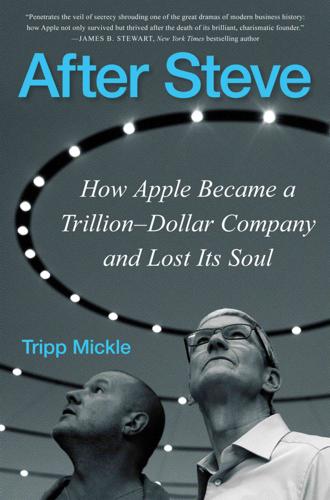
After Steve: How Apple Became a Trillion-Dollar Company and Lost Its Soul
by
Tripp Mickle
Published 2 May 2022
Cook had fulfilled his promise to double the size of services, which delivered $53 billion in sales in fiscal year 2020. Its revenue equaled that of Goldman Sachs and Caterpillar. He continued to introduce new Apple subscription services, including one for fitness, and the company benefited from a surge in App Store purchases by people who were stuck at home during the COVID-19 pandemic. Investors cheered the sales growth. They began to see Apple as more than a legacy hardware business that rose and fell depending on the popularity of each iPhone release. The company’s price-to-earnings ratio jumped from its average of sixteen times earnings to more than thirty times earnings in 2020.

Blood in the Machine: The Origins of the Rebellion Against Big Tech
by
Brian Merchant
Published 25 Sep 2023
As it was at the dawn of the Industrial Revolution, the anger is especially acute toward those running the new factories. FEAR FACTORIES REDUX Christian Smalls March 2020 At the beginning of March 2020, an assistant warehouse manager named Christian Smalls at Amazon’s JFK8 facility noticed that more and more of his fellow employees were showing up to work pale and fatigued. The Covid-19 virus had just begun to spread across the nation for the first time, and it paralyzed much of the economy in the process. It was, however, a boon to the company where Smalls worked. Hundreds of millions of people were suddenly stuck indoors around the clock, ordering goods online—often through Amazon.

The War Came to Us: Life and Death in Ukraine
by
Christopher Miller
Published 17 Jul 2023
Shevchenko) here censorship, press here, here, here, here Central Intelligence Agency (CIA) here, here champagne, Ukrainian here chanson music here Chazin, Natan here checkpoints, Kyiv here checkpoint run-ins, CM’s here Chernichkin, Kostya here, here Chernov, Mstyslav here Chernyshov, Oleksiy here child exploitation and propaganda here children’s hospital attack, Mariupol here China here Chornovol, Tetyana here, here Chubarov, Refat here Churchill, Winston here CNN here coal industry, Ukrainian here Communist Party of Ukraine here Cossacks here, here, here, here, here, here, here Covid-19 global pandemic here Crimea here, here, here Belbek air force base here forced referendum on secession (2014) 134-here invasion and annexation of (2014) here, here, here, here, here, here, here Kerch Strait bridge here, here Privolnoye infantry base here pro-Kyiv activists here pro-Moscow militia forces here, here, here, here, here, here pro-Russia and pro-Ukraine demonstrations here relationship with the Ukraine here Sevastopol port here takeover of parliament at Simferopol here Tatars here, here cyberwarfare here Daily Telegraph here, here, here Danilov, Oleksiy here, here, here Debaltseve army base here Debaltseve (2015), Battle of here, here Debaltseve city here, here, here Demchenko, Captain Oleksandr here, here, here Denisova, Lyudmila here Derevyanko, Borys here ‘dictatorship laws’ here Dnipro Battalion here Dnipropetrovsk here Dolgopolov, Alexandr here Dombrovsky Quarry here the Donbas here, here, here, here, here, here, here, here, here civilian front line devastation here escalation of fighting pre-2022 war here executions by firing squad here, here lack of evacuation programs (2014) here Moscow ‘Russifying’ here presidential election (2014) here pro-Kyiv militia (2014) here pro-Russian demonstrations (2014) here pro-Russian militant forces take power (2014) here referendum on secession here, here, here, here see also individual places by name; Artemivsk; Bakhmut; Battle of the Donbas (2022); Donetsk People’s Republic (DNR); Luhansk People’s Republic (LNR); Mariupol; Slovyansk Donbas Battalion here, here Donetsk here, here, here, here, here, here anti-government demonstrations (2014) here, here, here see also Donetsk People’s Republic (DNR) Donetsk National University here Donetsk People’s Republic (DNR) here, here, here, here, here, here, here, here, here ‘anti-independence’ celebrations (2014) here Battle of Debaltseve (2015) here, here Battle of Donetsk Airport (2014) here, here, here central morgue here Cossack bomb-disposal squad here forces shoot down Malaysia Airlines Flight 17 here, here forces shoot down Ukrainian military aircraft (2014) here kidnappings and interrogation here, here life at the Ramada hotel here Minsk I here, here Minsk II here, here, here pro-Russian/separatist forces here, here, here, here, here, here, here, here, here, here, here, here, here propaganda here, here puppet leadership here, here, here, here referendum on secession here, here Russian forces here, here, here, here, here, here, here, here Ukrainian presidential election (2014) here Unity Day bus attack (2014) here Victory Day celebrations (2014) here Donetsk soccer stadium here Donetsk Airport (2014), Battle of here, here, here Donetsk–Krivoy Rog Soviet Republic here Donetskie Novosti newspaper here drones, Shahed here, here drones, use of domestic here Dubchak, Andriy here Duliby village here Dzhaparova, Emine here Eastern Partnership Summit here The Economist here election (2014), presidential here election (2019), presidential here Elizabeth II, Queen here Emelyanenko, Captain Maksym here Energoatom – National Nuclear Energy Generating Company here energy/fuel shortages, Kyiv here Euromaidan and Revolution of Dignity here armed assaults, 20 February here the Berkut here, here, here, here, here, here conflicts, 1 December here, here, here, here conflicts following ‘dictatorship laws’ here extremist groups here, here, here, here formation of the EuromaidanPR group here Lenin statue toppled here Maidan encampment here, here march on parliament, 18 February here party leaders negotiation with Yanukovych here Party of Regions paid-for demonstration here regional demonstrations here reporters and activists kidnapped and beaten here speakers and performers here, here, here, here, here, here volunteer security corps/samooborona here, here women’s sotnya here Yanukovych flees Mezhyhirya estate here European Commission here European Union here, here, here, here, here, here, here, here, here, here, here evacuation programs here, here, here, here, here, here, here Evening Kvartal TV program here extremist groups, Ukraine here, here, here, here, here, here Fabius, Laurent here Facebook here, here, here, here, here, here Federal Security Service (FSB), Russian here, here, here, here, here, here Fedonyuk, Ruslan here Fedotav, Pyotr here Feldman, Evgeny here, here, here, here Fil, Rima here filtration camps, Russian here, here Financial Times here, here First Strike Company bomb-disposal squad here First World War here, here flags here, here, here, here, here, here, here, here, here, here, here Forbes Ukraine here France here, here funerals and memorials, military here Garanich, Gleb here gas industry, Dnipropetrovsk here, here Georgia, invasion of (2008) here, here Germany here, here, here Gilmour, David here Girkin, Igor ‘Strelkov’ here, here, here, here, here, here Glazyev, Sergey here GlobalPost here The Glory of Sevastopol newspaper here Gongadze, Georgiy here Gorchinskaya, Katya here, here, here, here, here, here Gordeyeva, Valentina here Great Patriotic War here, here GRU here, here Grytsenko, Oksana here Gulf War (1990–91) here Hadeyev, Alexander here Haidai, Serhiy here, here hair trade, blonde here Halyna, Dr here Haran, Olexiy here Havryliuk, Mykhailo here Heavenly Hundred - Nebesna Sotnya here Higgins, Eliot here Hilsum, Lindsey here Hitler, Adolf here HIV/AIDS here, here Hollande, François here Holodomor here Holtsyev, Mark here, here Horlivka Institute for Foreign Languages here, here Hromadske TV here Hryluk, Serhiy here Ibraimov, Ildar here, here illegal mines here Ilovaisk here Ilovaisk (2014), Battle of here, here Ilya (Donbas separatist) here, here, here, here Independence Day (2022), Ukrainian here Independence Day (2014), Ukrainian here independence demonstration, 1980s Ukrainian here Independent here Instagram here Irpin, Kyiv Oblast here Irvanets, Oleksandr here Ivan (Ukrainian Orthodox priest), Father here Ivanov, Volodymyr here Ivashchenko, Denis here Izyum here Jakub (Kyiv Post journalist) here Japarov, Eskander here Jews here, here, here, here Johnson, Boris here journalists and activist kidnappings here, here murders/disappearances here, here, here, here Kanayeva, Vera here Kazachenko, Olga Yevgenyevna here, here, here, here, here, here, here, here, here Kazakhstan here Kerch Strait bridge, Crimea here, here Kharkiv here, here, here, here, here Kharkiv Pact here, here Kherson here, here Khersones ancient ruins here Khlyvnyuk, Andriy here Khodakovsky, Alexander here Khokholya, Sergei here Khomyak, Albert here Khrushchev, Nikita here, here, here kidnappings in Crimea here kidnappings, journalist/activist here, here Kiehart, Pete here, here, here, here, here, here Klitschko, Vitali here, here, here, here, here, here Klopotenko, Ievgen here Klymentyev, Vasyl here Kohikov, Petro here Kolomoisky, Igor here Komunar here Konstantin (CM’s friend and language tutor) here Konstantinov, Vladimir here kopanki – illegal mines here Korostylev, Oleg here Koshel, Vitaly here Koshikova, Olena here Koshiw, Isobel here, here, here Kosse, Alina here Kostiuk, Yuriy here Kostyantynivka here Kovalenko, Iryna here Kozak, Dmitry here Kramatorsk here, here, here, here, here Krasne village school here, here, here Krasnoarmiisk here Kravchenko, Yuriy here Kravchuk, Leonid here Kremlin, Russian government in the here, here, here, here, here, here, here, here, here, here, here, here, here, here, here, here, here, here see also Moscow, Russian government in; Putin, Vladimir; Russian Federation; Russian military Kryvonozhko, Lieutenant General Anatoliy here, here, here Kryvoruchko, General Serhiy here Kuchma, Leonid here, here, here, here, here Kukharchenko, Colonel Viktor here Kuleba, Dmytro here, here Kulish, Andriy here Kvartal 95 here, here Kyiv city here, here, here, here air strikes, October (2022) here bomb shelters here central railway station here checkpoints here distribution of rifles to civilians here energy conservation here first strikes against (2022) here, here, here Lenin statue toppled here pre-war atmosphere (2022) here road and traffic signs here summertime, post-siege (2022) here Tymoshenko protests here see also Battle of Kyiv (2022); Euromaidan and Revolution of Dignity Kyiv City State Administration here, here, here Kyiv Post here, here, here, here, here, here, here, here, here, here Kyiv, Ukrainian government in here, here, here, here, here, here, here, here, here, here, here, here, here, here, here, here, here see also Euromaidan and Revolution of Dignity; Kuchma, Leonid; Kyiv city; Ukraine; Yanukovych, Viktor; Yushchenko, Viktor; Zelensky, Volodymyr Kyivan Rus here Kyivskiye Vedomosti here Kyrpach, Lyudmyla and Oleksandr here languages, Russian and Ukrainian here, here, here, here Lenin statue toppled, Kyiv here Leninopad here Levin, Maks here ‘little green men’ here, here, here, here Livadia Palace, Crimea here LiveJournal blog here, here Lopushanska, Mariana here Luhansk here, here, here, here, here, here, here morgue and hospital here Luhansk People’s Republic (LNR) here, here, here, here, here, here, here, here Lukyanchenko, Oleksandr here Lukyanov, Mykola here Lutsenko, Ihor here Lviv here, here Lyagin, Roman here, here Lyashko, Oleh here, here Lyman here Macron, Emmanuel here Maidan camp settlement here Malaysia Airlines Flight 17 here, here search for the missile launch site here Maloletka, Evgeniy here Malyar, Hanna here Malyovana, Viktoria here Malyshev, Mikhail here Mamchur, Colonel Yuli here Manafort, Paul here Mariinka here, here Marinovka here Maritime Guards of the Border Guard Service, Ukrainian here Mariupol here attack and Russian siege (2022) here, here, here Donbas war (2014) here police station shootout here Ukrainian Navy here Markosian, Olena here Markushyn, Oleksandr here, here Martinovskaya, Vera here Mashable here Matchenko, Andriy here Matsuka, Oleksiy here, here, here, here, here, here, here, here Mazur, Valentina here McDonald’s here medals of honor here, here, here Medvedchuk, Viktor here, here, here, here Medvedev, Dmitry here, here, here Mejlis here, here Men’s Day here mental health issues, veteran here Merkel, Angela here, here Mezhyhirya estate, Yanukovych’s here Miller, Christopher here accommodation in Artemivsk here in Ana-Yurt, Crimea (2014) here Artemivsk library English club here, here Artwinery, Artemivsk here attacked by Cossacks in Crimea here banned from the DNR and LNR here Battle of Donetsk Airport (2014) here checkpoint run-ins here City Hall in Artemivsk here, here in Crimea (2014) here, here, here in Crimea (2022) here detained by masked rebel fighters here detained by Strelkov here in the Donbas (2014) here, here in the Donbas (2019–22) here, here, here, here, here the Euromaidan and Revolution of Dignity here, here exploring the Donbas here first strikes against Ukraine (February 2022) here food in Artemivsk here friends in Artemivsk here, here, here ‘Fuel Duel’ Kyiv Post article here interview with Oleksandr Turchynov here interviews with Volodymyr Zelensky here joins the United States Peace Corps here Krasne village school here, here, here in Kyiv (2022–23) here, here, here, here, here, here in Kyiv (2013–14) here, here Malaysia Airlines Flight 17 here, here in Mariupol here Ministry of Education meeting in Artemivsk here missile strikes against Kramatorsk here, here neighbors in Artemivsk here nightlife and celebrations in Artemivsk here Peace Corps writing grants here, here politics in Artemivsk here Russian and Ukrainian languages here, here, here, here, here Russian Cossack bomb-disposal squad here Russian-Ukrainian Interregional Economic Forum here salary and cost of living in Artemivsk here, here salt mines in Artemivsk here, here uncovering Strelkov’s records here, here visits kopanki illegal mines here Milley, General Mark here Ministry of Education, Ukraine here Ministry of the Interior, Ukraine here Minsk I/Minsk Protocol here, here, here Minsk II/Package of Measures for the Implementation of the Minsk Agreements here, here, here, here, here missile systems development, Ukrainian here Moldova here Monastyrsky, Denis here morgue, Donetsk here Moroz, Igor here, here, here, here, here, here Moscow, Russian government in here, here, here, here, here, here, here, here, here, here, here, here, here, here, here, here, here, here, here, here The Moscow Times here Moskva here, here, here murder and disappearances of journalists here, here, here, here Musiy, Oleh here Mykolaivka here Nalyvaichenko, Valentyn here Natasha (CM’s friend in Artemivsk) here, here National Guard, Ukrainian here, here, here, here, here, here, here, here, here, here National Memory Union here National Security and Defense Council, Ukrainian here, here Navy, Ukrainian here Nayyem, Mustafa here, here, here Nazar, Natalia here Nazi Germany here, here, here, here, here, here, here occupation of Artemivsk here New Citizen here New York Times here, here New York, Ukraine here Nicholas II, Tsar here Night Wolves biker group here Nihoyan, Serhiy here Nikolaychuk, Andriy here NKVD, DNR here Normandy Format Group here North American Treaty Organization (NATO) here, here, here Novosti Donbassa here, here, here, here, here, here, here Novy Stil here nuclear fuel supplies here Nuland, Victoria here, here Nykyforov here Obama, Barack here, here, here, here, here, here, here, here Obolon district, Kyiv here, here Odesa here, here Odnorih, Halyna here ‘Oh, the Red Viburnum in the Meadow,’ Ukrainian battle hymn here Okean Elzy here, here Oksana and Daria (displaced Mariupol residents) here Oleksiivna, Katerina here Olenivka prison here oligarchs, Ukrainian here, here, here, here, here Oliphant, Roland here, here, here openDemocracy here Oplot here Opposition Bloc – For Life party here Opytne here Orange Revolution here, here, here, here Organization for Security and Co-operation in Europe (OSCE) here, here Osmolovska, Aliona here Ostaltsev, Leonid here, here Paevska, Julia ‘Taira’ here Palace of Culture, Mariupol here Pan, Cor here Panchenko, Valentina here Paradise nightclub, Artemivsk here Parasiuk, Volodymyr here Party of Regions here, here, here, here, here, here, here, here, here, here, here, here see also Euromaidan and Revolution of Dignity; Yanukovych, Viktor Parubiy, Andriy here, here Paton Walsh, Nick here Patriot of Ukraine here Patrushev, Nikolai here Pavlov, Arsen here Peter the Great here Petsa, Myroslava here Pichko, Maria and Oleksiy here, here Pinchuk, Viktor here, here Podufalov, Pavel here Pokrovsk here, here Poland/Polish people here, here, here, here, here, here police force, Ukrainian here, here, here, here, here, here, here, here, here, here, here, here, here, here, here, here, here war time recruits in Kyiv here station shootout, Mariupol here Ponomarev, Vyacheslav here Poroshenko, Petro here, here, here, here, here, here, here, here, here post-traumatic stress disorder, PTSD here Potemkin demonstrations here Povalyaeva, Svitlana here Pravda here presidential election (2014), Ukrainian here presidential election (2019), Ukrainian here press/media bribes here censorship here, here, here control in the Donbas here, here Priazovskii rabochii newspaper here Prigozhin, Evgeny here, here prisoner exchanges here, here Prisoners of War here, here, here, here, here, here, here Privolnoye infantry base, Crimea here pro-Kyiv militia in the Donbas (2014) here Prokhanov, Alexander here propaganda, Russian here, here, here, here, here, here, here, here, here, here, here, here, here, here Pukach, Oleksiy here Purgin, Andrei here, here Pushilin, Denis here Putin, Vladimir here, here, here, here, here, here, here, here, here, here, here announces ‘special military operation’ (2022) here, here Customs Union proposal here, here invasion and annexation of Crimea here, here, here, here, here, here Kerch Strait bridge here, here Minsk II here, here, here, here Mariupol Port here and Volodymyr Zelensky here, here, here Wagner Group here, here see also Donetsk People’s Republic (DNR); Kremlin, Russian government in the; Moscow, Russian government in, Russian Federation; Russian Military Pyatt, Geoffrey here Pyrozhenko, Alexander here Radical Party here railway station, Kyiv central here Ramada Hotel, Donetsk here, here Ratushnyi, Roman and Taras here Red Army Day here Red Cross here refugee crisis here rent-a-crowd protests here, here, here Reporters Without Borders here Reva, Mayor Oleksiy here, here, here Revolution of Dignity see Euromaidan and Revolution of Dignity Revolution on Granite here Reznikov, Oleksiy here, here RIA Novosti newspaper here ribbon of St George – kolorady here Right Sector here, here, here, here, here, here, here, here, here riot police – Berkut here, here, here, here, here, here Road Control here Rogozin, Dmitry here Roosevelt, Franklin D. here Rostislav ‘Slava’ (CM’s friend) here, here Ruslana here Russian Empire here Russian Federation here Customs Union proposal here, here, here, here expulsion of US Peace Corps here financial support for Ukraine here, here Federal Security Service (FSB) here, here, here, here, here, here, here nuclear fuel supplies here President Zelensky’s address to here pro-Russian demonstrations, Ukraine here propaganda here, here, here, here, here, here, here, here, here, here, here, here, here, here Putin announces ‘special military operation’ here, here see also Donetsk People’s Republic (DNR); Kremlin, Russian government in the; Moscow, Russian government in; Putin, Vladimir; Russian military Russian military here, here atrocities in Bucha here attack and siege of Mariupol (2022) here, here attacks against civilians here, here, here, here Baltic Fleet at Mariupol here Black Sea Fleet at Sevastopol here, here, here, here, here bomb the International Center for Peacekeeping and Security, Yavoriv here conflict escalation in the Donbas, pre-2022 war here detention and interrogation civilians here first attacks against Ukraine (2022) here injured soldiers pose as Ukrainians here Izyum – Donbas front line here Kyiv airstrikes October (2022) here in the Donbas (2014) here, here, here, here, here, here, here, here, here in the Obolon district, Kyiv here, here invasion and annexation of Crimea here, here, here, here, here Privolnoye infantry base here Prisoners of War here, here recruitment of state prisoners here second day strikes on Kyiv (2022) here seizure of Ukrainian navy ships, Sevastopol here shoot down civilian Malaysia Airlines Flight 17 here, here target Antonov Airport here target Bakhmut here, here, here, here target Irpin district here unprepared and uninformed troops here US intelligence regarding here, here, here withdrawal from Kyiv Oblast here, here Russian Revolution here Russian Spring/pro-Russian demonstrations here Russian-Ukrainian Interregional Economic Forum here Russian Unity party here Rybachuk, Oleg here, here Rybakova, Iryna here, here, here, here, here Rychkov, Vadym here, here Rychkova, Tetiana ‘Tanya’ here saboteurs, Russian here, here, here Sadokhin, Colonel Ihor here St Michael’s Monastery and Cathedral, Kyiv here, here, here, here Salim, Mohd Ali bin Md here salt mines, Artemivsk here, here samooborona/volunteer security corps 97 here sanctions and travel bans, Western here, here, here, here Savur-Mohyla here, here Sea of Azov here Second World War here, here, here, here, here, here, here, here Security Service of Ukraine (SBU) here, here, here, here, here, here, here, here, here Seddon, Max here, here Semenchenko, Semen here, here Sentsov, Oleg here Sergatskova, Katya here Sergei Prokofiev International Airport here Sergeyev, Fyodor ‘Artyom’ here Servant of the People party here Servant of the People TV program here, here Sevastopol, Crimea here, here, here Severodonetsk here Shakhtar Donetsk FC here Shanghai here, here Shevchenko, Petro here Shevchenko, Taras here, here Shevchuk, Oleg here Shmyhal, Denys here Sikorski, Radosław here Simmonds, Julian here Sisenko, Oleksandra here Sizov, Vitaliy here Skibitsky, General Vadym here Skuratovsky, Ivan here Slava (CM’s friend from Artemivsk) here, here, here, here, here Slavov, Dmytro here Slavutych warship, Ukrainian here Slok, Gary here Slovyansk here, here, here Snake Island border guards here Sneider, Noah here, here, here, here, here Snizhne here Sobytiya newspaper here Social–National Party of the Ukraine (SNPU) here Sokolov, Nikolai Georgievich here, here, here, here, here, here, here, here, here, here, here, here, here, here Soledar, Ukraine here, here sotnya units here, here South Ossetia here Soviet Air Force here Soviet Union here, here, here, here collapse of here, here, here, here Great Patriotic War/WWII here, here, here, here, here, here, here, here persecution and exile of Tatars here propaganda here Soviet-era weapons and vehicles here, here, here, here, here, here, here, here, here, here Ukraine as part of here, here war in Afghanistan here, here St Paul Pioneer Press here The St Petersburg Times here Stakhanov, Aleksey here Stalin, Joseph here, here, here, here, here statues and monuments here, here, here, here, here, here, here, here, here Stefanchuk, Ruslan here Steinmeier, Frank-Walter here Stepanov, Anatoliy here, here, here Stoyanov, Serhiy here Strashko, Nina here Strutynska, Senior Lieutenant Valentina here, here, here Strutynskyi, Yevhen here student newspaper, Donetsk National University here student protesters here, here, here, here supply runs to troops, civilian here Supreme Court, Ukraine here Surkov, Vladislav here Surovikin, General Sergei here surzhyk here, here, here Svoboda here, here, here, here, here Sybirtsev, Oleksandr here Sydor, Father Ivan here Syrova, Tetyana here Taganrog prison, Russia here Tarasenko, Andriy here Tatars, Crimean here, here, here, here Ternopil corvette, Ukrainian here Territorial Defense Force here, here, here, here, here, here, here, here, here, here, here The Times here Thorez, Maurice here Time magazine here Tinkalyuk, Ruslan here, here, here titushki here, here, here, here, here Torez here, here, here trade agreement proposal, EU here Trade Unions Building, Kyiv here, here Transfiguration of The Lord Pentecostal Church, Slovyansk here Trilateral Contact Group on Ukraine here Trump, Donald here Trusov, Platoon Commander Valentin here tryzub here, here Tryzub (paramilitary group) here, here, here Tsybulska, Liubov here, here Tsyupa, Oksana here Turchynov, Oleksandr here, here, here, here, here, here Turevich, Anatoliy here Twitter here, here, here, here Tyahnybok, Oleh here, here, here, here, here, here Tychyna, Private Ihor here Tykhomirova, Nina here Tymoshenko, Yevheniya here Tymoshenko, Yulia here, here, here, here, here, here, here Tyshchenko family here UDAR party here UEFA European Football Championship (2012) here Ukraine artificial famine/Holodomor here declaration of independence (1991) here, here, here decommunization program here emergence of nation here first strikes against (February 2022) here HIV/AIDS epidemic here illegal mining industry here Independence Day celebrations (2014) here industrial water pollution here journalist murders and disappearances here, here, here, here Minsk I here, here, here Minsk II here, here, here, here nuclear fuel supplies here Orange Revolution here, here, here as part of the Soviet Union here, here, here pre-war atmosphere (2022) here presidential campaign and election (2019) here presidential election (2014) here pro-Russian demonstrations (2014) here Putin’s Customs Union proposal here, here, here, here relationship with Crimea here relationship with the European Union here, here response to US intelligence warnings here, here Tymoshenko protests here see also individual places by name; Artemivsk; Crimea; the Donbas; Donetsk; Donetsk People’s Republic (DNR); Euromaidan and Revolution of Dignity; Kyiv city; Kyiv, Ukrainian government in; Miller, Christopher; Ukrainian military Ukrainian Front here Ukrainian Insurgent Army (UPA) here, here Ukrainian military here, here airborne forces here, here, here, here airstrike on Snizhne here Antonov Airport attack here Battle for Bakhmut (2022) here, here Battle of Debaltseve (2015) here, here Battle of Donetsk Airport (2014) here, here Battle of Ilovaisk (2014) here, here Central Air Command here, here death of two brothers here defending Irpin here dismantled by Yanukovych here forces at Belbek air force base, Crimea here forces at Privolnoye infantry base, Crimea here, here front line, Izyum here funerals and memorial services here Independence Day celebrations (2014) here Maritime Guards of the Border Guard Service here the navy here, here outbreak of war (2022) here pre-2022 war in the Donbas here Prisoners of War here, here, here, here, here Putin addresses here retake Slovyansk here, here siege of Mariupol (2022) here surrender in the Donbas here take out Moskva, Russian flagship here, here Tanya Rychkova’s supply runs here, here volunteer food supplies here, here weapons development here, here Western arms and ammunition supplies here withdrawal from Crimea here withdrawal from Debaltseve here see also Berkut; National Guard; police force, Ukrainian; Security Service of Ukraine (SBU); Territorial Defense Force Ukrainian War of Independence (1917–21) here Ukrainska Pravda newspaper here, here, here Ukrainskiy Vybor organization here Ukravtodor here ultranationalists, Ukraine here, here, here, here, here United Kingdom here, here United Nations here, here United States Embassy, Ukraine here United States of America here, here, here, here, here, here, here, here, here, here, here, here ‘Fuck the EU’ - Victoria Nuland YouTube conversation here intelligence warnings to the Ukraine here, here, here, here offer to evacuate Zelensky here sanctions and travel bans here, here, here United States Peace Corps here, here, here, here, here, here, here, here, here, here, here, here, here Unity Day bus attack (2014), Donetsk here Unity Day clashes, Kyiv (2014) here Vakarchuk, Svyatoslav here Valeryevna, Maria here Varenytsia, Inna here, here Varianitsyn, Second Captain Roman here Vasylkiv here, here Vechernyaya Odesa here Velyka Novosilka here Verbytsky, Yuriy here Veremiy, Vyacheslav here Verkhnya Krynka here Verkhovna Rada, Ukraine parliament here, here, here, here, here Vesti newspaper here Victory Day celebrations and referendum here, here Vika (CM’s language tutor and friend) here Viktor (kopanki miner) here Vindman, Alexander here Vitaliy (apprentice surgeon in Kyiv) here Vitko, Vice-Admiral Aleksandr here VKontakte here, here Vlasova, Anastasia here, here Volodymyr (pro-Russian Crimean militiaman) here Voronenko, Oleksandr here, here, here Vpered newspaper here Vyacheslav, Yarko here Vyshyvana, Ahafiya here Vyshyvaniy, Kyrylo and Vasyl here vyshyvanky shirts here, here, here Wagner Group here, here war crimes/atrocities, Russian here Warners, Tom here water pollution, industrial here water supplies here weapon depot, Paraskoviivka here, here weapon supplies, Western here, here Webb, Isaac here, here, here Westinghouse here White Hammerhere Wild Ducks volunteer unit here Wings of Phoenix here Women’s Day here women’s sotnya here writing grants, Peace Corps here, here Yakymenko, Oleksandr here Yalta Conference (1945) here Yanukovych, Viktor here, here, here, here, here, here, here, here, here, here, here, here, here, here, here, here Euromaidan protests and revolt here, here, here, here, here, here, here, here, here, here, here, here, here, here Mezhyhirya estate and destruction of state secrets here Yarosh, Dmytro here, here, here Yatchenko, Sergei here Yatsenyuk, Arseniy here, here, here, here, here, here, here, here Yavoriv here Yelets, Volodymyr here Yermak, Andriy here, here, here YouTube here, here, here, here, here, here Yurash, Sviatoslav here, here Yushchenko, Viktor here, here, here Zahoor, Kamaliya here Zahoor, Mohammad here, here Zaitsev, Denis ‘Raven’ here Zakharchenko, Alexander here Zakharchenko, Vitaliy here Zaldastanov, Aleksandr here Zaluzhny, Valery here, here, here Zaporozhzhia here Zarivna, Daria here Zavtra newspaper here Zelenska, Olena here, here, here Zelensky, Volodymyr here address to the Russian federation here addresses the Ukraine here, here, here, here, here, here, here civilian mobilization here Donald Trump scandal here economic forum in Mariupol (2020) here outbreak of war (Feb 2022) here, here presidential campaign (2019) here press conference (Jan 2022) here refuses option to evacuate Kyiv here response to US warnings about Russia here television career here, here visits remains of Bucha here and Vladimir Putin here, here, here Zhilin, Evgeny here Zhilkin ‘the Body Collector’, Yaroslav here Zhyzneuski, Mikhail here Ziyatdinov, Aziz here, here Zverkovsky, Danil here BLOOMSBURY CONTINUUM Bloomsbury Publishing Plc 50 Bedford Square, London, WC1B 3DP, UK 29 Earlsfort Terrace, Dublin 2, Ireland BLOOMSBURY, BLOOMSBURY CONTINUUM and the Diana logo are trademarks of Bloomsbury Publishing Plc This electronic edition first published in Great Britain 2023 Copyright © Christopher Miller 2023 Christopher Miller has asserted his right under the Copyright, Designs and Patents Act, 1988, to be identified as Author of this work Map credits: Ukraine © PeterHermesFurian/Getty Images; The Donbas © Goran_tek-en, CC BY-SA 4.0 <https://creativecommons.org/licenses/by-sa/4.0>, via Wikimedia Commons; Crimea © PeterHermesFurian/Getty Images All rights reserved.

Waging a Good War: A Military History of the Civil Rights Movement, 1954-1968
by
Thomas E. Ricks
Published 3 Oct 2022
Several scholars generously provided aid and counsel along the way. Sir Hew Strachan of the University of St. Andrews, perhaps the preeminent writer on strategy today, gave the manuscript a reading with an eye to that subject. At the University of Texas at Austin, Paul Edgar and Catherine Evans helped me navigate the obstacles to research posed by the COVID-19 pandemic of 2020–2022. My old friend Thomas Remington of Harvard University posed a series of helpful questions, both when I was writing and then in reviewing an early draft of the manuscript. His wife, Nancy Roth Remington, provided a gimlet-eyed line edit that resulted in literally hundreds of changes.
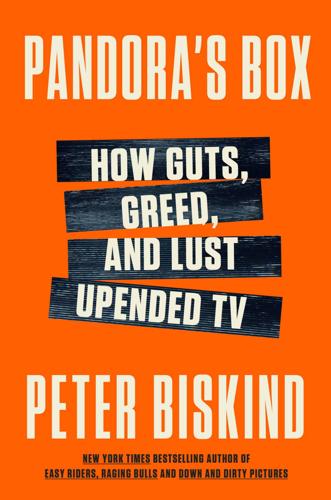
Pandora's Box: How Guts, Guile, and Greed Upended TV
by
Peter Biskind
Published 6 Nov 2023
Naturally, it underperformed in theaters, negatively impacting her back-end deal, which included a cut of the box office. During the ensuing war of words, Disney released a personal attack on Johansson, calling the suit “sad and distressing in its callous disregard for the horrific and prolonged global effects of the Covid-19 pandemic.”67 The vitriol was virtually unprecedented. Despite the fact that males make up 63 percent of characters with speaking parts in movies with females at a mere 37 percent, Chapek picked the wrong woman to fool with, not to mention that it’s bad business for film companies to go to war with talent, particularly someone of Johansson’s stature.

The Rough Guide To Devon & Cornwall
by
Rough Guides
Published 29 Apr 2024
Useful information sources Cornwall Wildlife Trust cornwallwildlifetrust.org.uk Dartmoor National Park Authority dartmoor.gov.uk Devon Wildlife Trust devonwildlifetrust.org Exmoor National Park Authority exmoor-nationalpark.gov.uk Marine Conservation Society mcsuk.org National Trust nationaltrust.org.uk Natural England (responsible for most National Nature Reserves) naturalengland.org.uk Royal Society for the Protection of Birds rspb.org.uk WDC (Whale and Dolphin Conservation) uk.wales.org With farming increasingly at the mercy of the giant food retailers and the fishing industry struggling, the region was further hit by the global recession that swept through the UK – and the world – from 2008 onwards, leading many local businesses to go bust and unemployment rates to soar. Tourism, at least, has remained strong, with “staycationing” Brits pouring into the South West peninsula as a cheaper alternative to foreign holidays. This trend hit new heights during the global Covid-19 pandemic when border restrictions limited international travel. Post-pandemic, the number of domestic tourists to the region has dropped a little from these intense heights of demand. That said, the region remains enduringly popular with Americans, Australians and Europeans (mainly Germans and Dutch), who are back to visiting in pre-pandemic numbers.
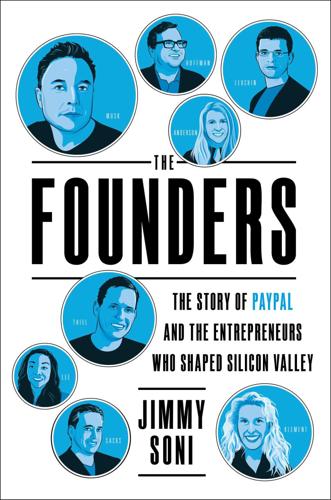
The Founders: The Story of Paypal and the Entrepreneurs Who Shaped Silicon Valley
by
Jimmy Soni
Published 22 Feb 2022
* * * I became friends with Chris and Stephen in the course of writing this book, well after they had been paroled. After prison, Stephen used his programming talents to run a software consultancy, then built a start-up whose logistics technology helped schools, companies, and other venues remain open during the COVID-19 pandemic. Stephen even earned a patent—US10417204B2, “Method and system for creation and delivery of dynamic communications”—for his work on natural language processing. Chris wasn’t far behind. He started two businesses, wrote a widely praised book, and launched a second career as a globe-trotting artist—a remarkable post-prison trajectory culminating with an appearance on The Daily Show with Trevor Noah to promote his book, The Master Plan.
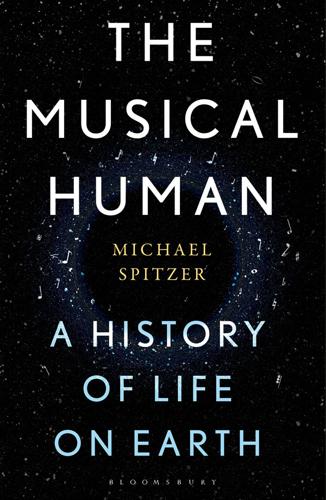
The Musical Human: A History of Life on Earth
by
Michael Spitzer
Published 31 Mar 2021
But digitisation gets at the very atoms of sound itself, transforming continuous soundwaves into a row of zeros and ones, into code.18 As binary data, sampled at a frequency of 44,100 cycles per second, music can be copied, pasted, manipulated, transmitted, downloaded and infinitely re-edited with no loss of data quality, making extinct the distinction between ‘original’ and ‘copy’.19 If everything is number, and the only reality is information flow, there is no difference between the Covid-19 virus, the coronavirus, computer code, the prime minister and the ‘Ode to Joy’. And yet, for all its shock, awe and wonder, the digital revolution is arguably no such thing: it is an evolution extrapolating old tendencies. The idea that the world was governed by mathematical proportions that music reveals goes back to the ancient Greeks and Babylonians, as we have seen (Chapter 6).

American Gun: The True Story of the AR-15
by
Cameron McWhirter
and
Zusha Elinson
Published 25 Sep 2023
Parade participants and onlookers waved Old Glory as marching band music resounded down the street. The event was more than just a Norman Rockwell ritual; it was a reclaiming of normalcy, an effort—replicated across the country that July Fourth—to reestablish community after the grueling years of COVID-19, lockdowns, political tensions, and unrest. One could only imagine that Eugene Stoner would have been gratified by the scene. Preserving this America was what he thought his work was all about. Sixty-two years earlier to the day, the Air Force General Curtis LeMay had picked up Stoner’s gun to shoot watermelons.
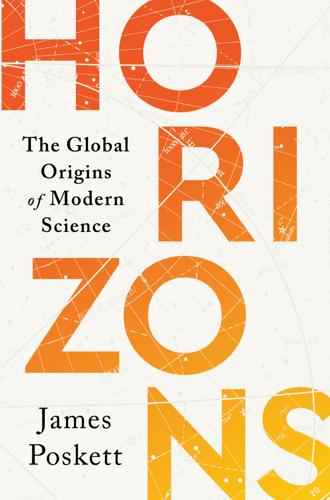
Horizons: The Global Origins of Modern Science
by
James Poskett
Published 22 Mar 2022
According to one Israeli military engineer, their software is able to predict ‘the most likely areas [rocket] launchers will be set up and at what hours. That enables us to know in advance what will happen and what areas should be attacked.’ Security is also a major driver of AI investment in the UAE. The Emirati security services are already using facial-recognition software to track the population and stifle political dissent. During the COVID-19 pandemic, police in Dubai even used the same software to monitor whether individuals were adhering to social distancing guidelines.13 The forces of globalization and nationalism are shaping the growth of AI as the New Cold War plays out across Asia, Africa, and the Middle East. The same is true of another major field of scientific research, one that has echoes of the original Cold War of the twentieth century.

API Design Patterns
by
Jj Geewax
Published 19 Jul 2021
In the summer of 2019, a friend of mine got me into drumming with an electronic kit, and I embraced it wholeheartedly. Sometimes I would actually play the drums, but I spent a rather larger proportion of my time writing code to interact with my drum kit’s configuration using MIDI SysEx commands. When the COVID-19 pandemic hit, I suddenly had rather different priorities in terms of considering the audio/visual needs of my local church, both while we were worshiping remotely and considering how we might meet in person again. This involved learning about protocols such as VISCA, NDI, and OSC (for cameras and audio mixers) as well as more software-oriented integration with Zoom, VLC, PowerPoint, Stream Deck, and more.

The Library: A Fragile History
by
Arthur Der Weduwen
and
Andrew Pettegree
Published 14 Oct 2021
Between us we now own texts from more than fifty public and academic libraries, often with their borrowing log intact. This has been a virtual world tour that has greatly enhanced our enjoyment of the writing process of this book. The research that underpins this work was happily completed before the Covid-19 pandemic changed the research environment so radically in the spring of 2020. We are grateful for fellowships in the Herzog August Bibliothek Wolfenbüttel, the libraries of Leiden University, the Free University of Amsterdam and Trinity College Dublin, that allowed us to pursue critical literature before the shutdown.
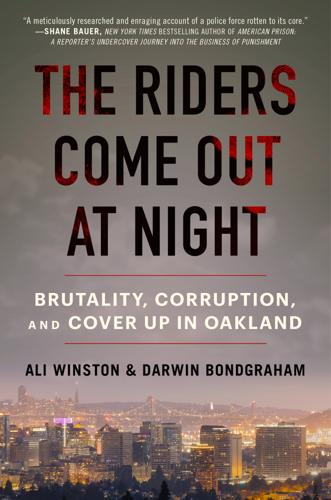
The Riders Come Out at Night: Brutality, Corruption, and Cover-Up in Oakland
by
Ali Winston
and
Darwin Bondgraham
Published 10 Jan 2023
City of Oakland et al., Complaint for Damages and Injunctive Relief, Alameda County Superior Court, no. RG17850153, February 21, 2017. 35. Ibid. 36. Ali Winston and Darwin BondGraham, “Did an Oakland Cop Kill His Wife?,” East Bay Express (Oakland), November 8, 2016. 37. Caesar Basa passed away in December 2021 after contracting Covid-19; therefore we were unable to get his account of what happened in the interview room and the hallway outside with Brendan O’Brien and Mike Gantt. 38. For the accounts of what took place among Gantt, Basa, and Lois, we rely on Mike Gantt’s 2017 press conference and documents from his wrongful termination lawsuit.

Britain at Bay: The Epic Story of the Second World War: 1938-1941
by
Alan Allport
Published 2 Sep 2020
Lastly, I want to thank my wife Barbara and my children Thomas, Katharine and Lizzie, for being part of this adventure. As I write in May 2020, the five of us are in house-bound quarantine in circumstances that I could not have possibly imagined five years ago when I began this book. Many comparisons, most of them not very convincing, have been made between the Covid-19 pandemic emergency of this year and the home front experience of the Second World War. Specious analogies aside, there has been something about the way in which our lives have been turned upside down over the past few months to offer a glimpse, however slight, of what it must have felt like to be an ordinary observer of the great and unsettling drama of the 1940s.
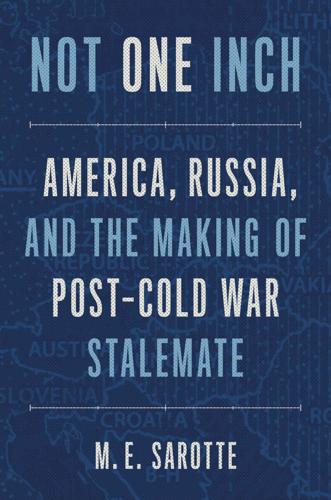
Not One Inch: America, Russia, and the Making of Post-Cold War Stalemate
by
M. E. Sarotte
Published 29 Nov 2021
See Commonwealth of Independent States (CIS) Civil War (US), 157 Claes, Willy, 190, 223, 225, 237–39 Clark, Wesley, 196, 318, 324 Clinton, Bill, 3–5, 7, 13–15 advising, 150–54 Antall and, 172–73 Aspin and, 171 Baltics and, 242–43 Bosnia-Herzegovina and, 163, 234, 288–89, 316, 318–19 Bush vs., 150 Chechnya and, 219–20, 228, 230–31 Chirac and, 245–46 criticism of Bush, 143 Eisenhower group and, 285–86 Foster scandal and, 162–63 Hungary and, 172–73 impeachment of, 300, 309–14 Jones scandal and, 246, 271–72 Kohl and, 151, 155–56, 158, 188–89, 228–29, 234, 261–62, 277–78, 307 Lewinsky scandal and, 238–39, 246–47, 272, 277, 287, 292–98, 300 in 1992 election, 150–51 Partnership for Peace and, 176, 178, 181–82, 185–87, 192, 202, 204, 341–42 Putin and, 328–31 reelection of, 242, 247, 261–64 Republican takeover of Congress and, 201 Russia and, 151–54, 157–58, 168, 178, 187–88, 208–9, 241, 301 Schröder and, 308 situation inherited by, 149–50 Solana and, 280 Somalia and, 171 Ukraine and, 158–60, 217 Wałęsa and, 256–57 Yeltsin and, 152–58, 164, 188, 196–97, 231–32, 237, 247, 255–56, 262, 268–69, 272–73, 307, 317–18, 325, 331–32, 334 Clinton, Hillary, 264, 350 Cohen, Bill, 264, 284, 289, 311, 316, 318 Colton, Timothy, 117 Commonwealth of Independent States (CIS), 130–31, 133–34, 137, 159–60, 259 Comprehensive Test Ban Treaty (CTBT), 236, 251, 326 Conference on Security and Cooperation in Europe (CSCE), 49, 53, 66, 113, 126, 190, 202, 336–37. See also Organization for Security and Co-operation in Europe (OSCE) Constantinescu, Emil, 305 Conventional Forces in Europe (CFE), 93, 114, 256, 278–79, 331, 333 Conway, George, 293 Cook, Robin, 315 Cooperative Threat Reduction (CTR), 235–36 Coulter, Ann, 293 COVID-19 pandemic, 352 Crimea, 117–18, 127, 159, 217 Croatia, 112, 141, 233, 320, 321 Croce, Benedetto, 7 CSCE. See Conference on Security and Cooperation in Europe (CSCE) CTBT. See Comprehensive Test Ban Treaty (CTBT) CTR. See Cooperative Threat Reduction (CTR) Czechoslovakia, xv, 98 Baker and, 11–12, 62 Kohl and, 46 North Atlantic Cooperation Council and, 141 Partnership for Peace and, 186–87 Soviet Union and, 21, 45, 48–49, 92 Visegrad and, 111.

The Radical Fund: How a Band of Visionaries and a Million Dollars Upended America
by
John Fabian Witt
Published 14 Oct 2025
His Lincoln’s Code: The Laws of War in American History was a finalist for the Pulitzer Prize and a winner of the Bancroft Prize. SimonandSchuster.com www.SimonandSchuster.com/Authors/John-Fabian-Witt @simonbooks ALSO BY JOHN FABIAN WITT American Contagions: Epidemics and the Law from Smallpox to COVID-19 Lincoln’s Code: The Laws of War in American History Patriots and Cosmopolitans: Hidden Histories of American Law The Accidental Republic: Crippled Workingmen, Destitute Widows, and the Remaking of American Law To Save the Country: A Lost Treatise on Martial Law (ed. with Will Smiley) We hope you enjoyed reading this Simon & Schuster ebook.
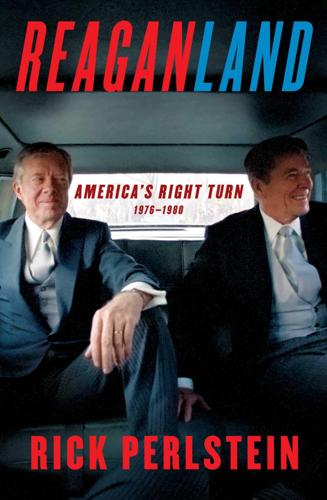
Reaganland: America's Right Turn 1976-1980
by
Rick Perlstein
Published 17 Aug 2020
Cited television footage from the 1986 documentary The Made for TV Election is linked to the exact timestamp in which it appears in the program on YouTube.com, last accessed May 24, 2020. When I cite bestseller statistics, my source is the downloadable New York Times lists at http://www.hawes.com. Because of the closure of the Hoover Institution and the Ronald Reagan Presidential Library during the COVID-19 crisis, it was impossible to confirm some of the citations; these will be updated online when it becomes possible to do so, and in future editions. Scholars having problems finding documents cited here should contact me directly at Reaganland2020@gmail.com, for assistance. ABBREVIATIONS AA: Annelise Anderson Papers, Hoover Institution, Stanford, California ABCIA: 1980 ABC News transcripts, Internet Archive AP: Associated Press newspaper syndicate APP: American Presidency Project, http://www.presidency.ucbs.edu BG: Boston Globe CFTRN: Citizens for the Republic Newsletter, Ronald Reagan Presidential Library, Ronald Reagan Presidential Campaign Papers, boxes 38–39.